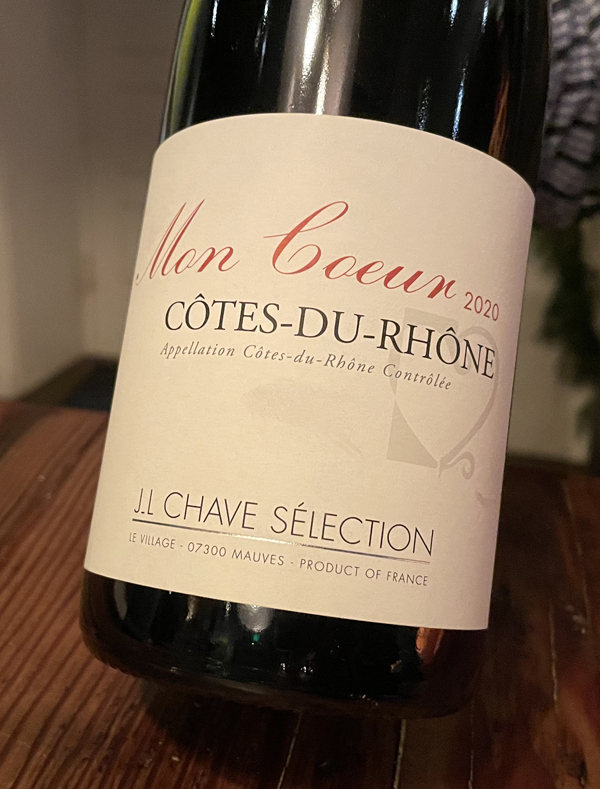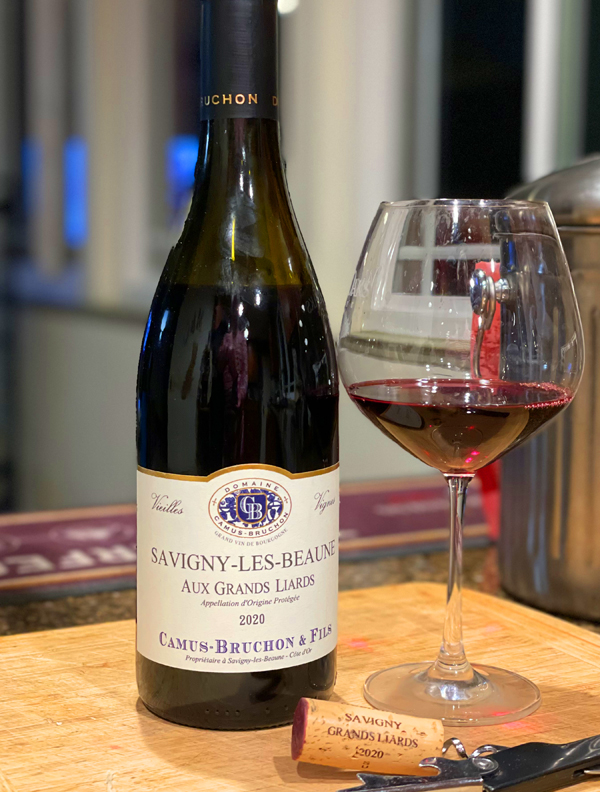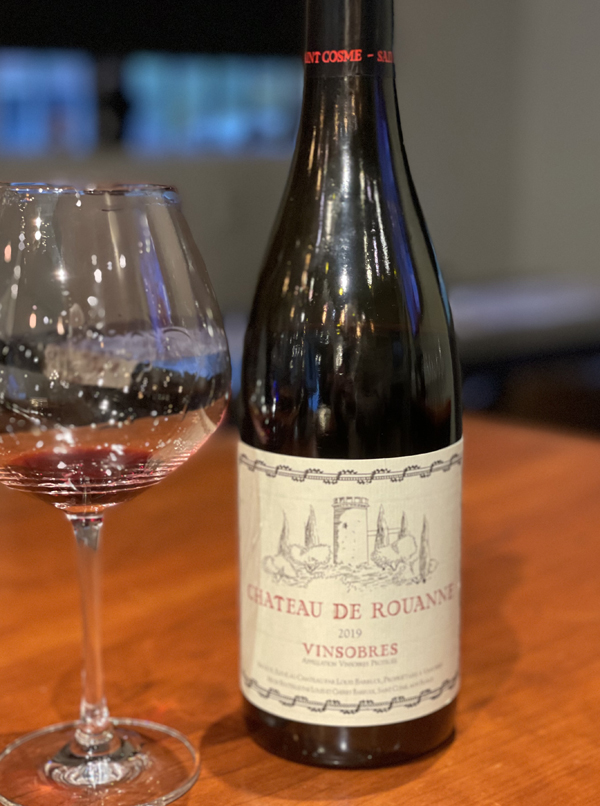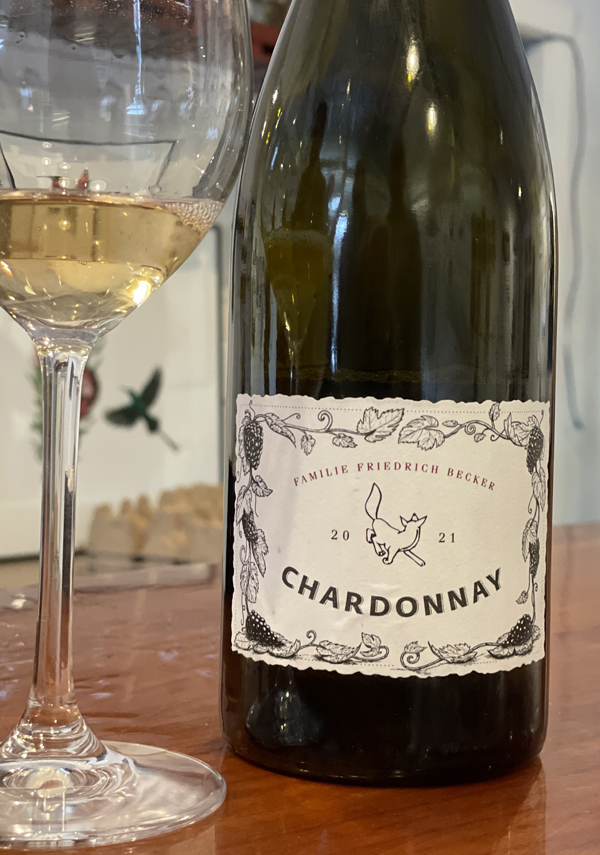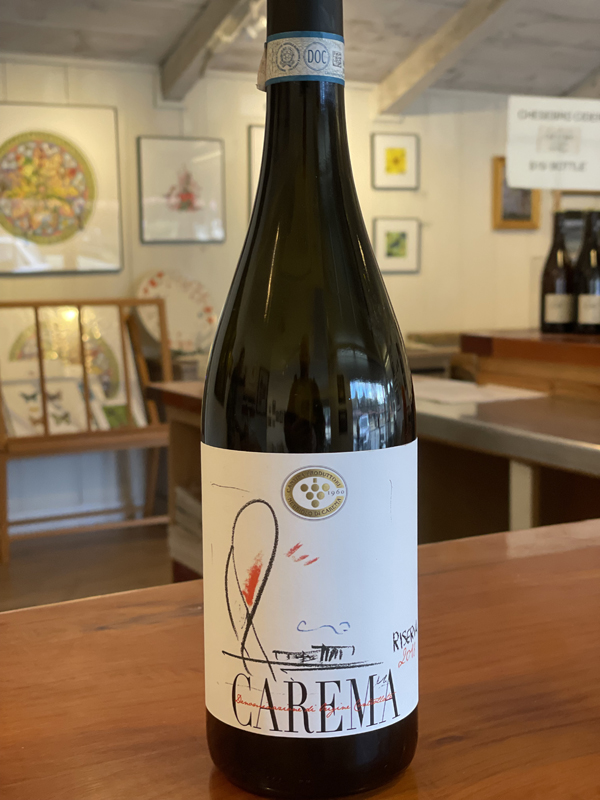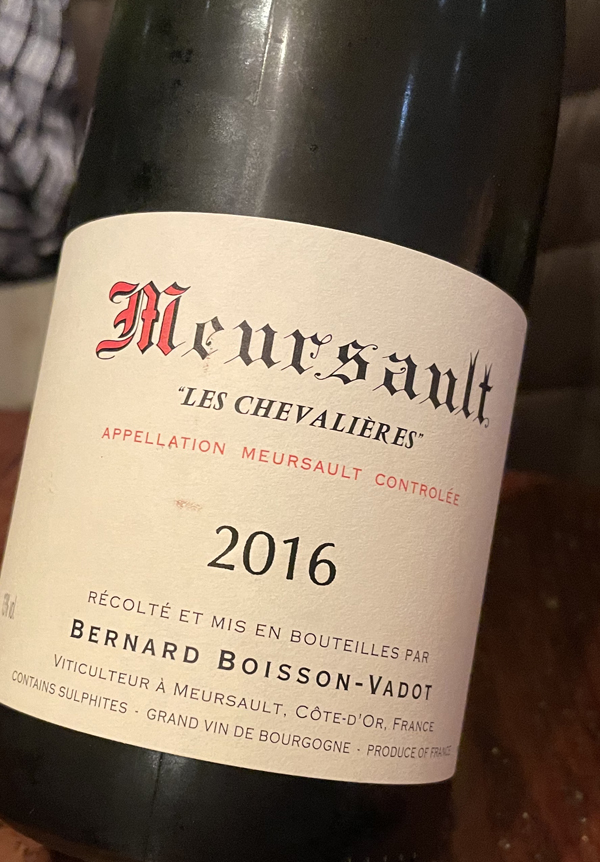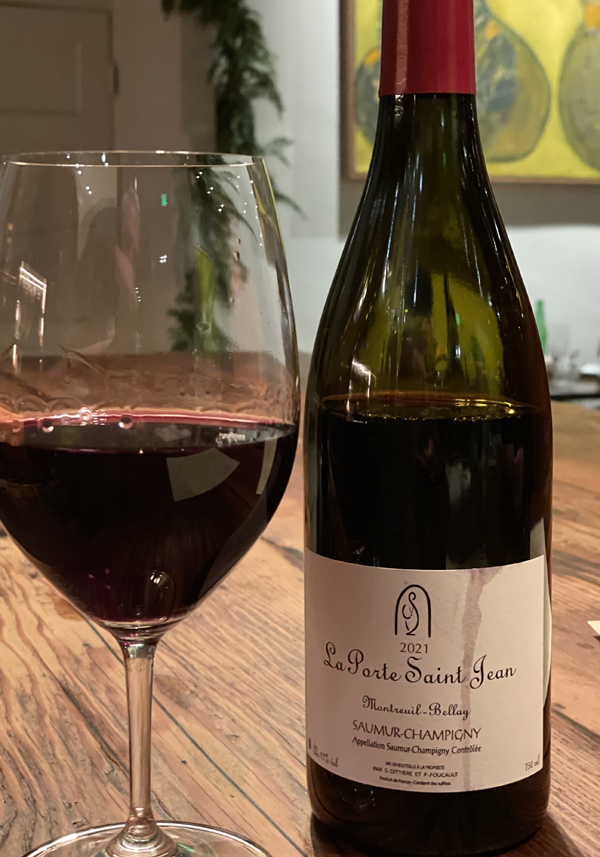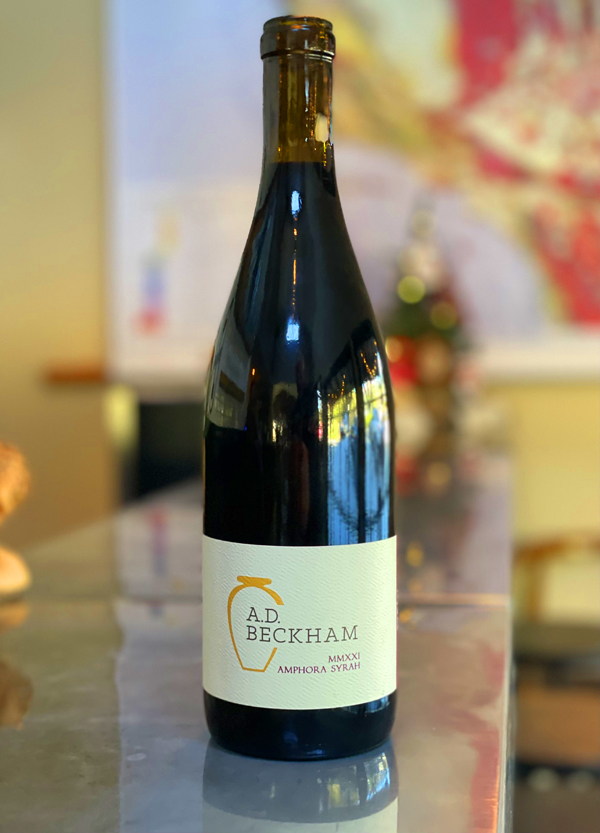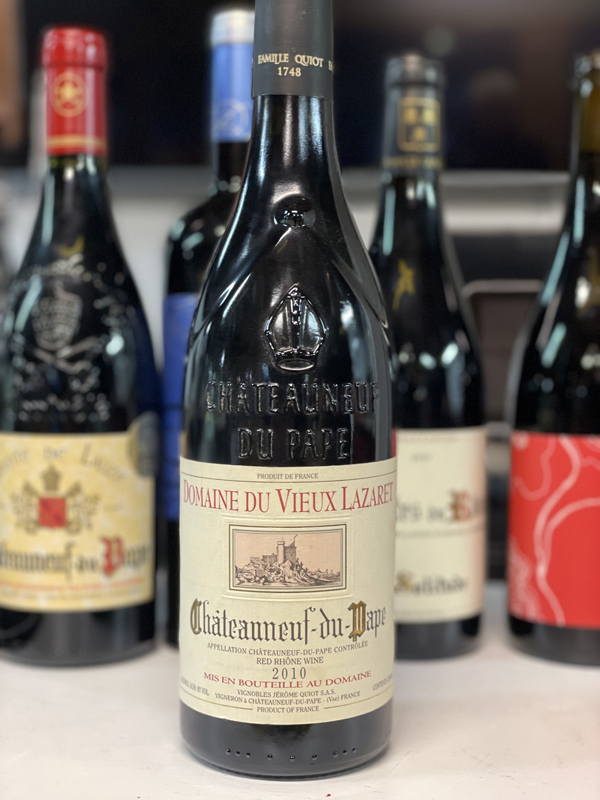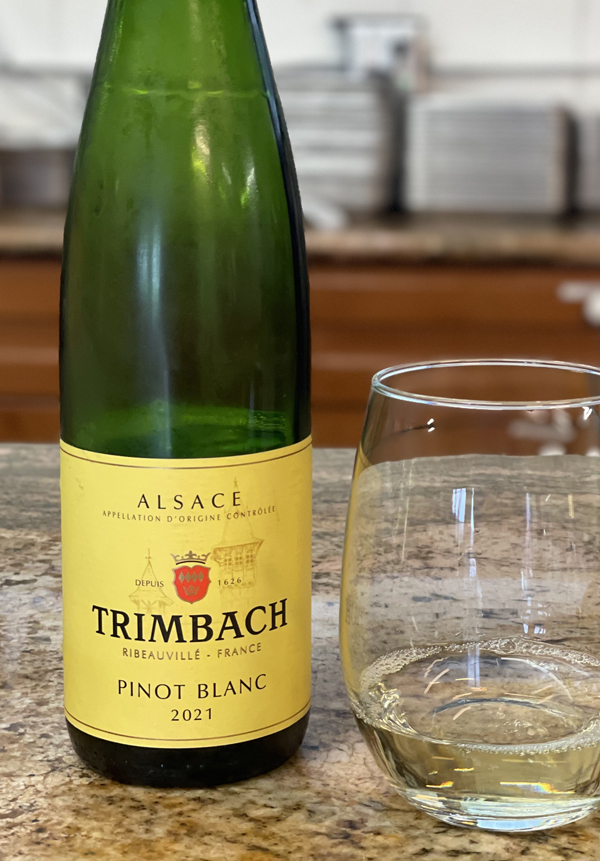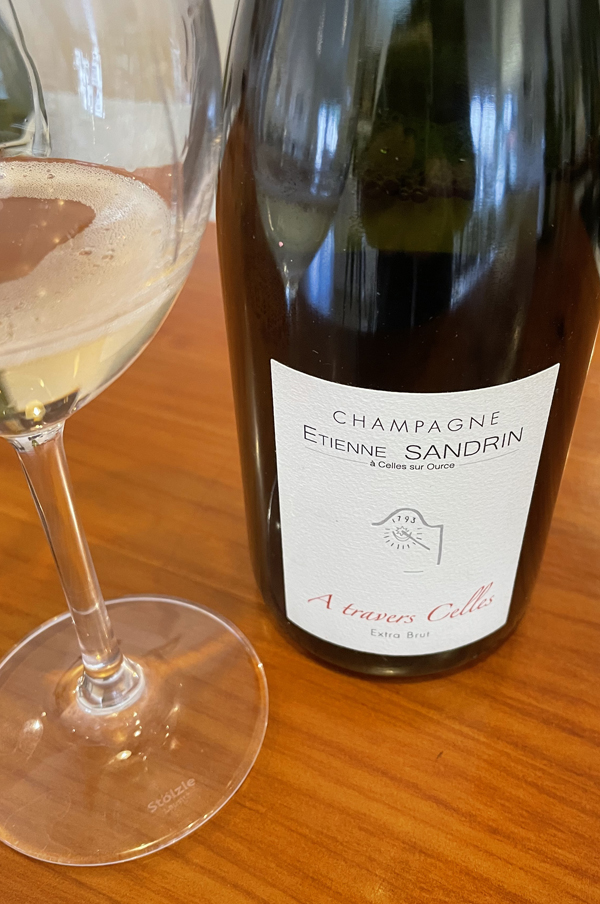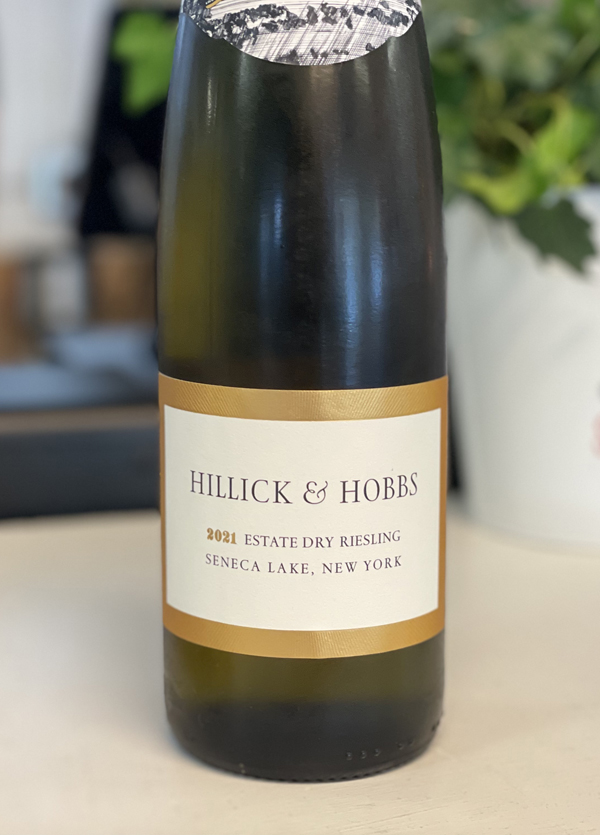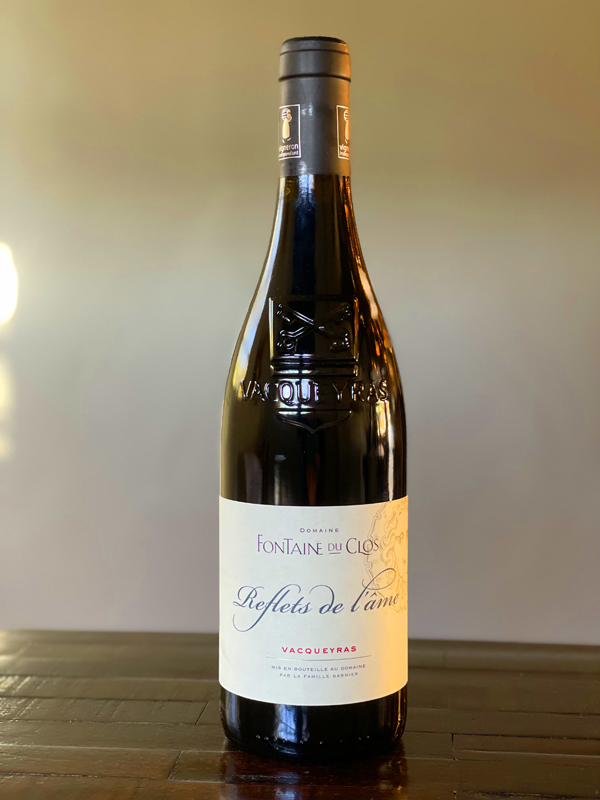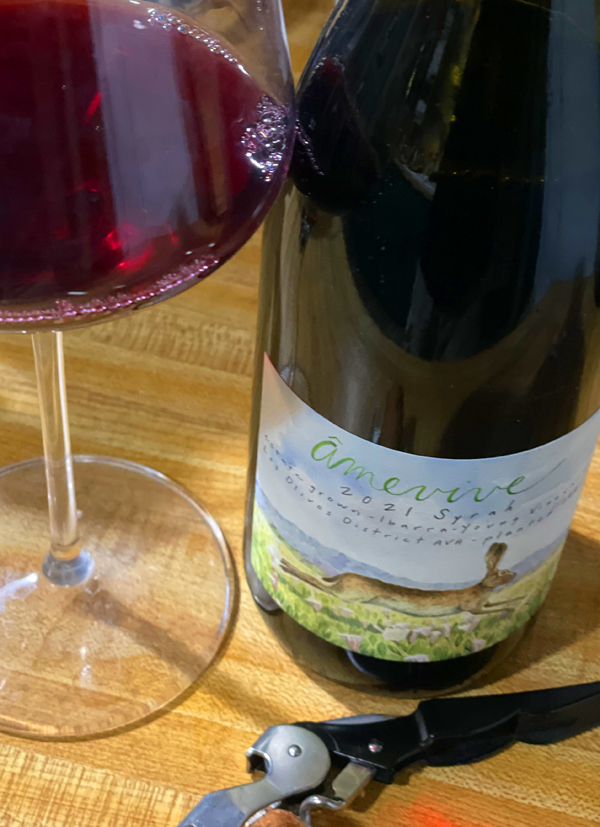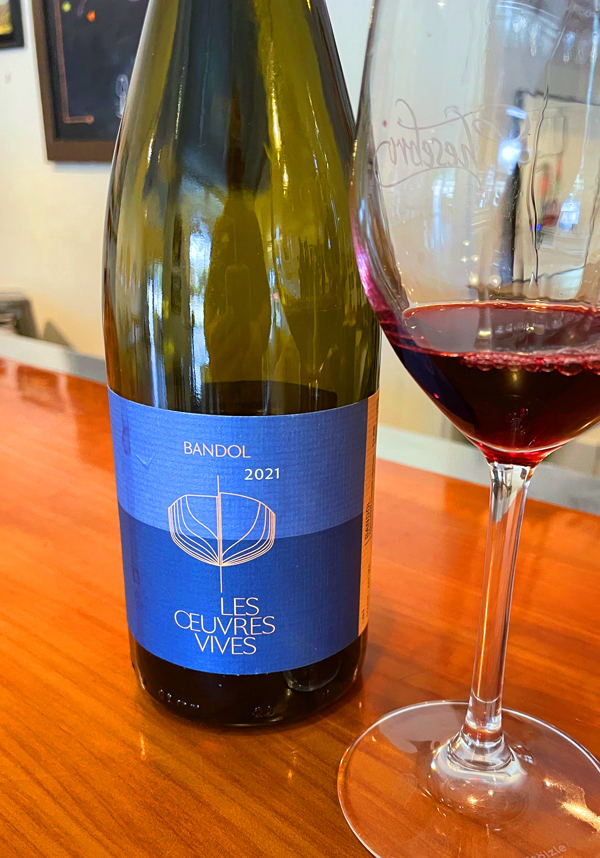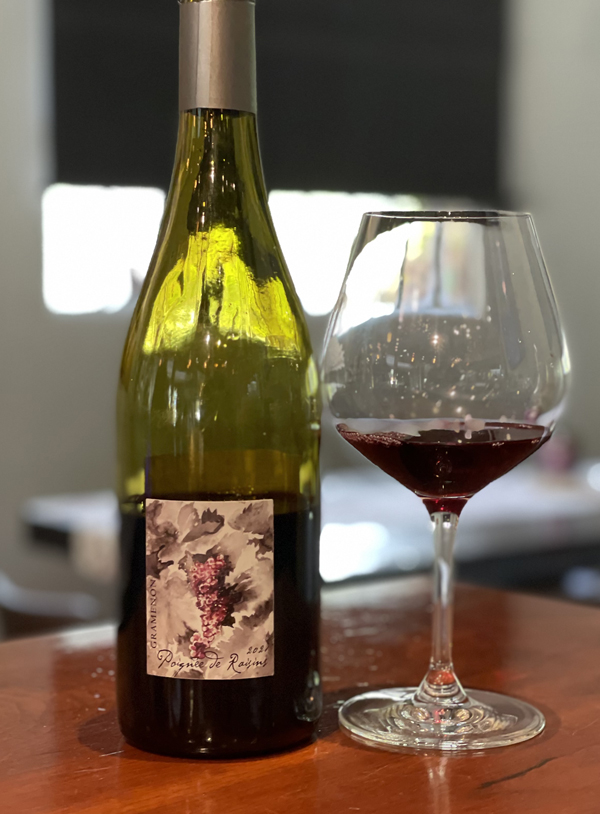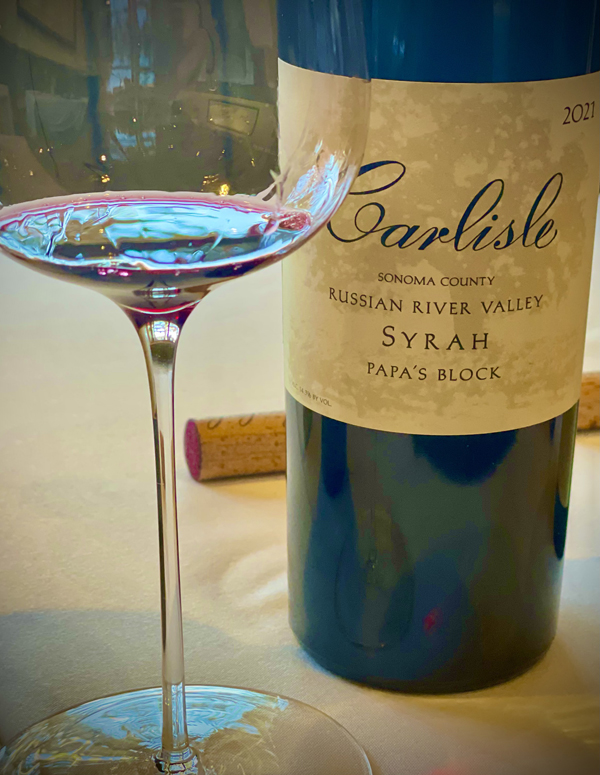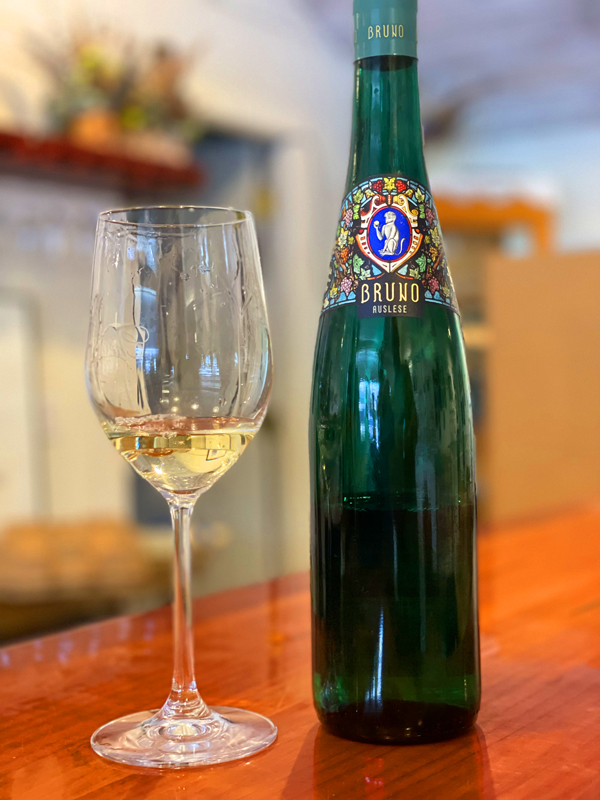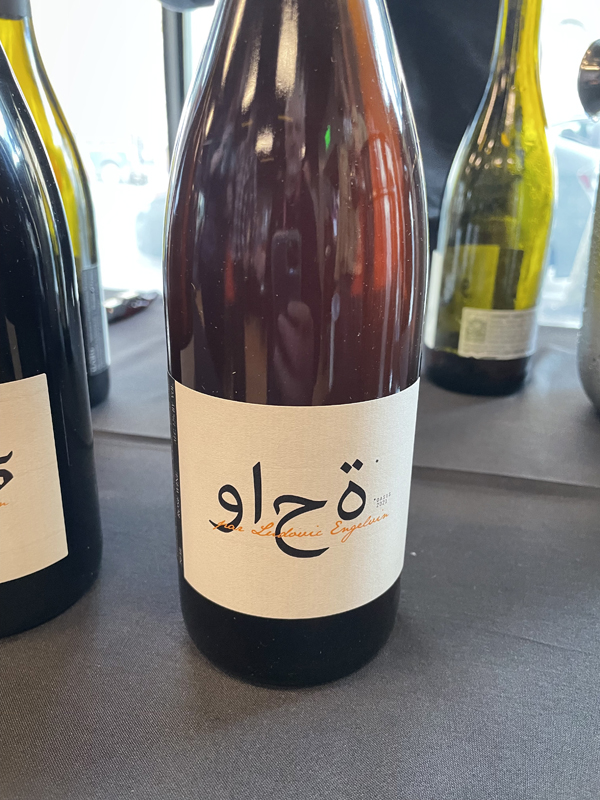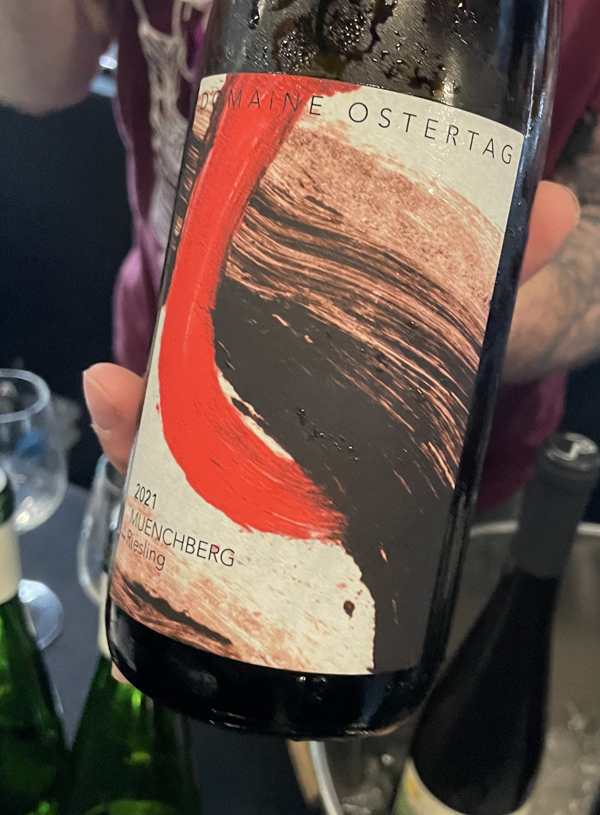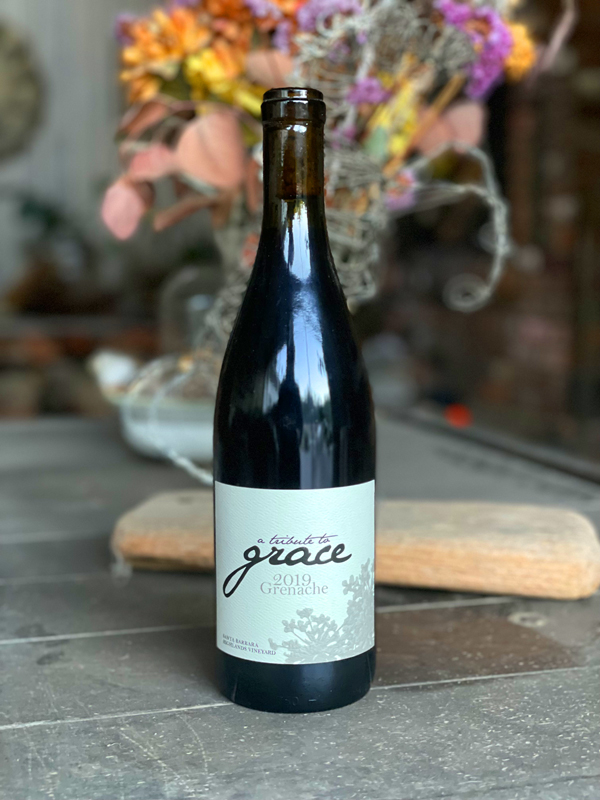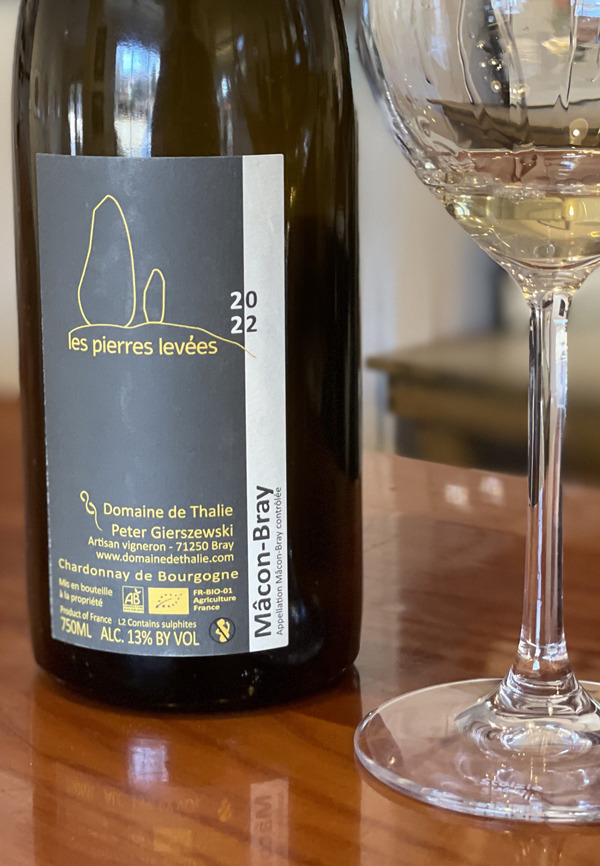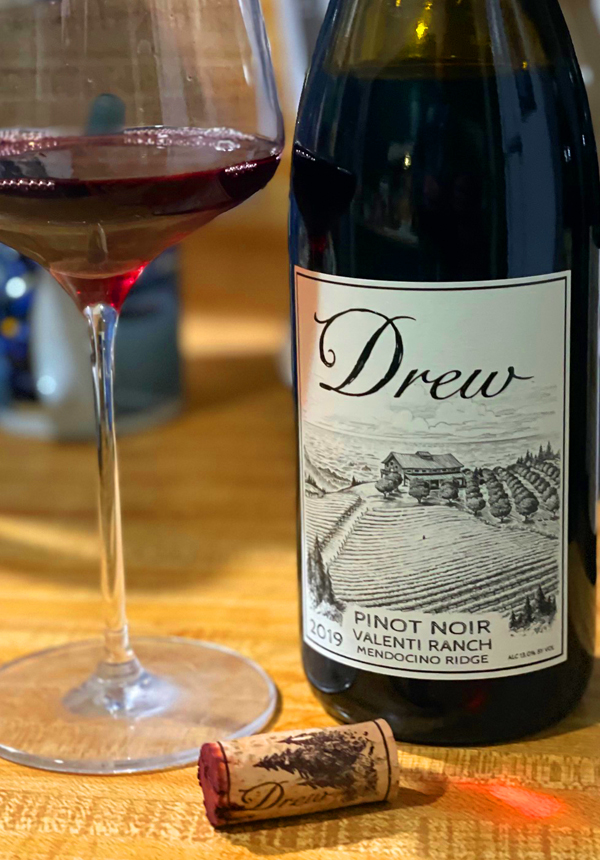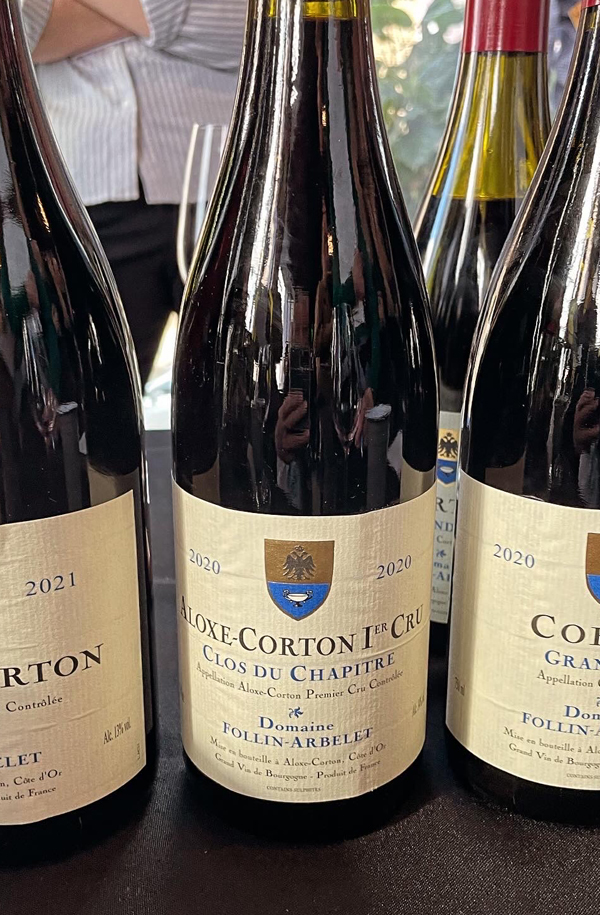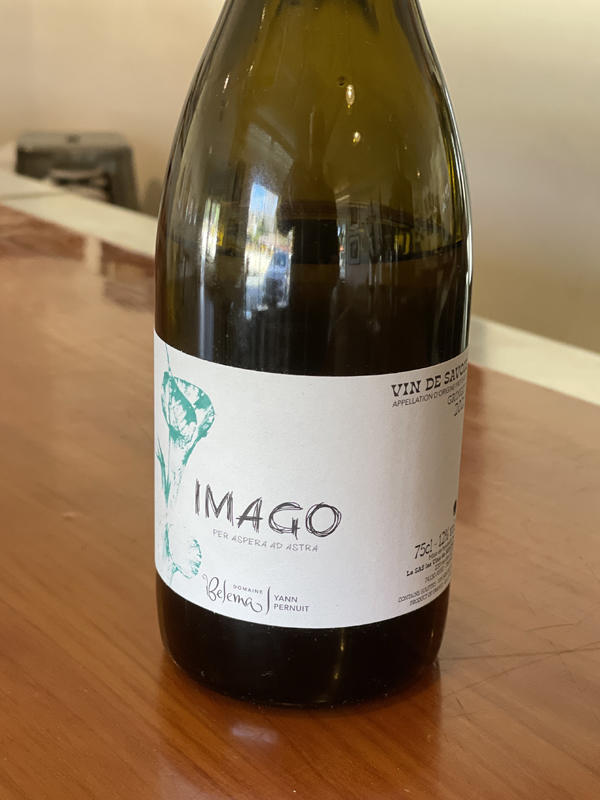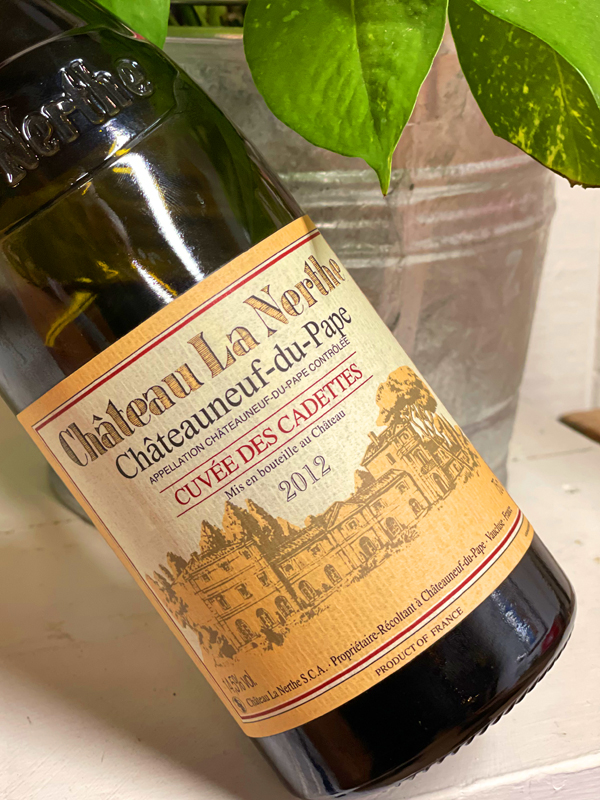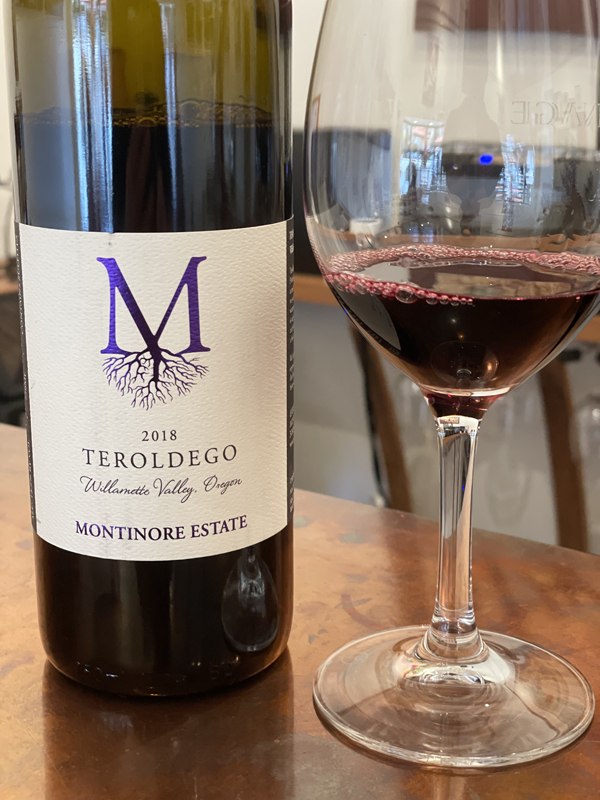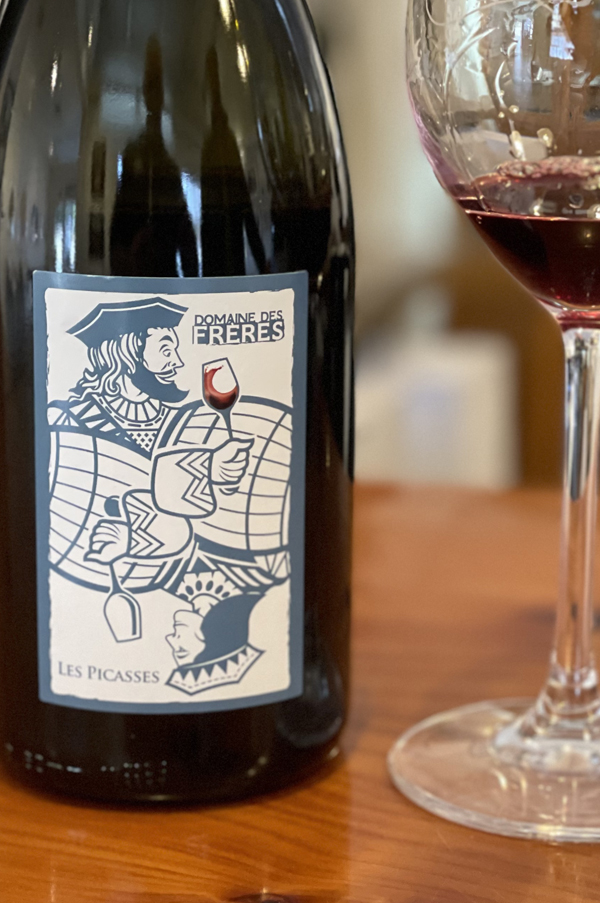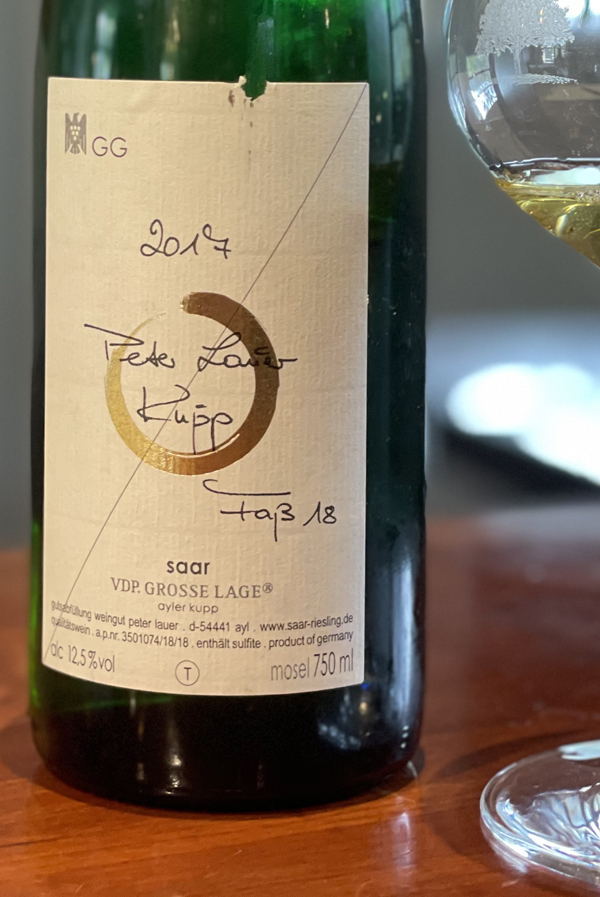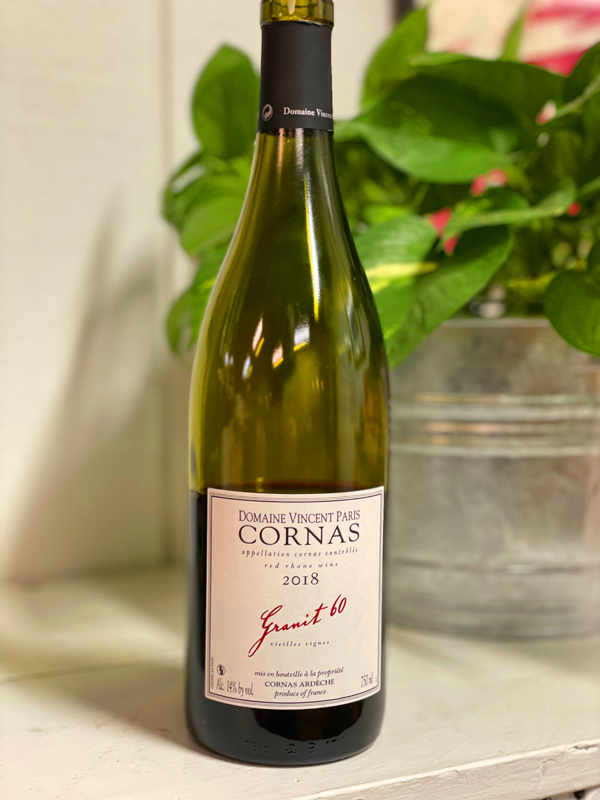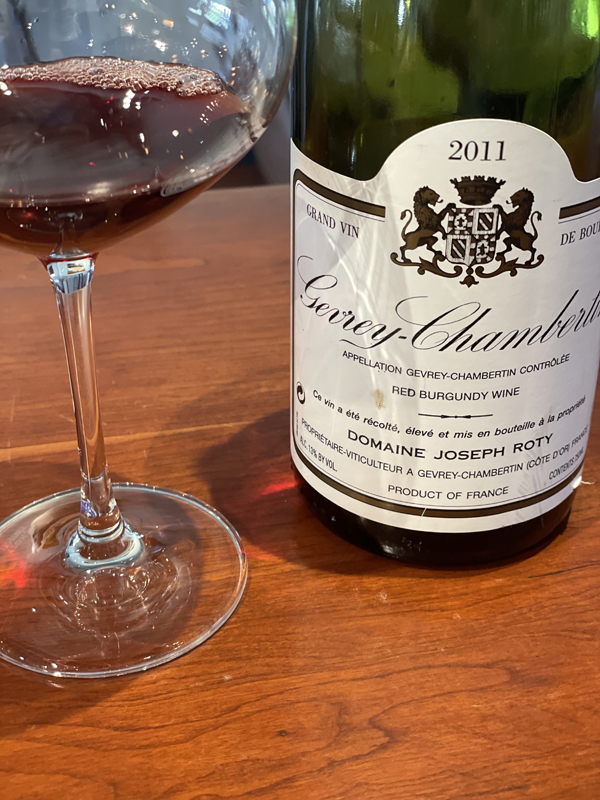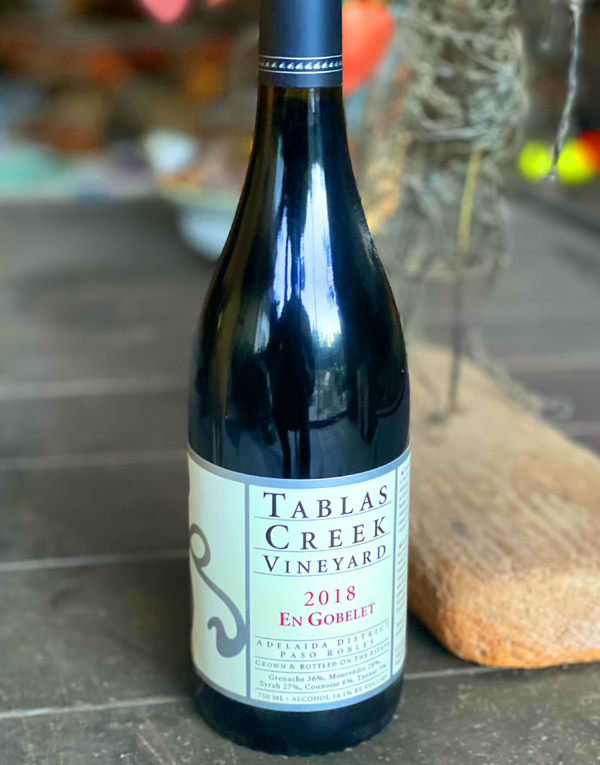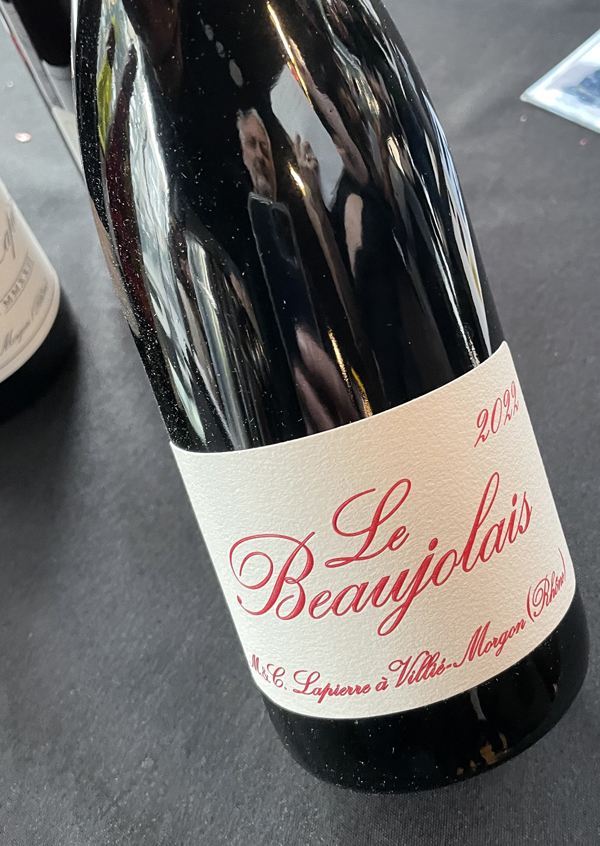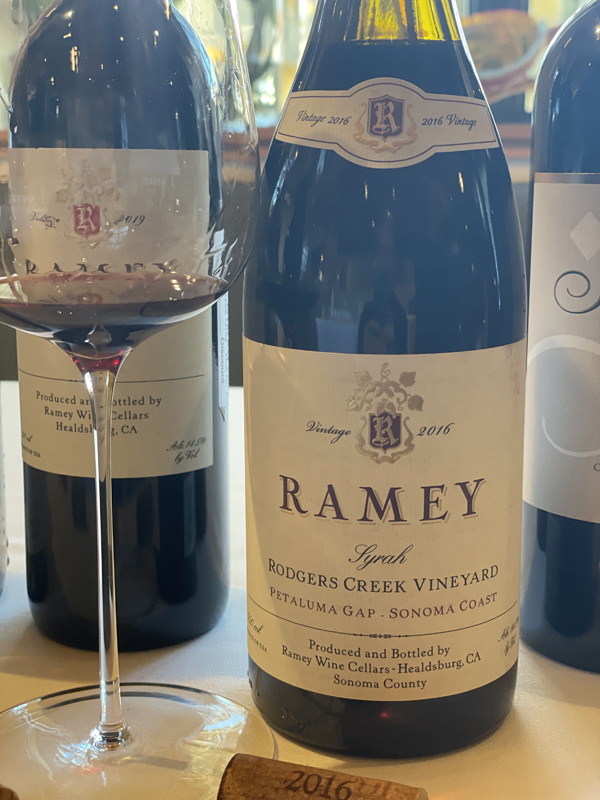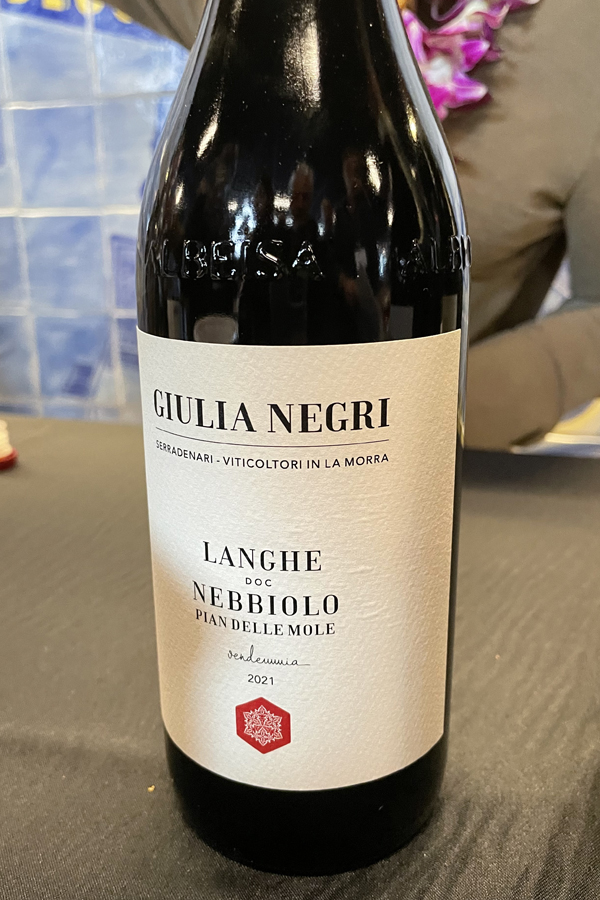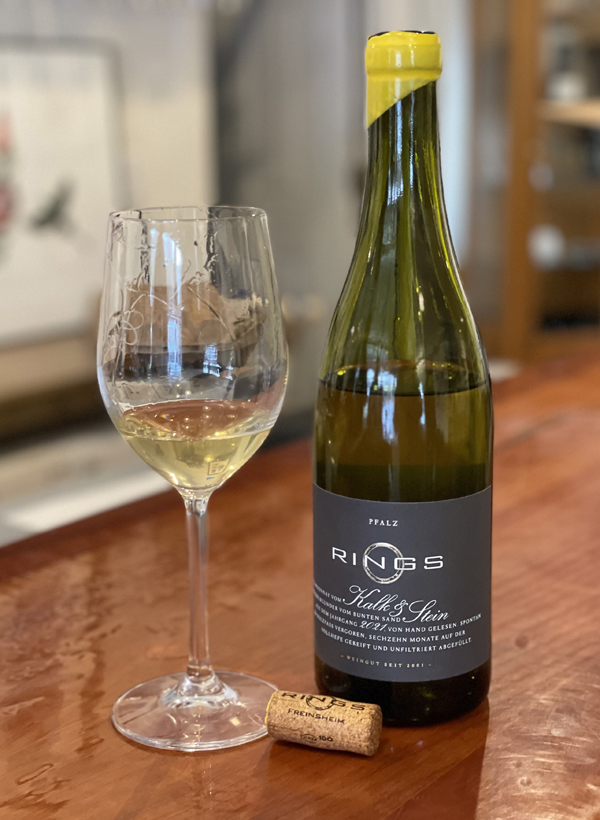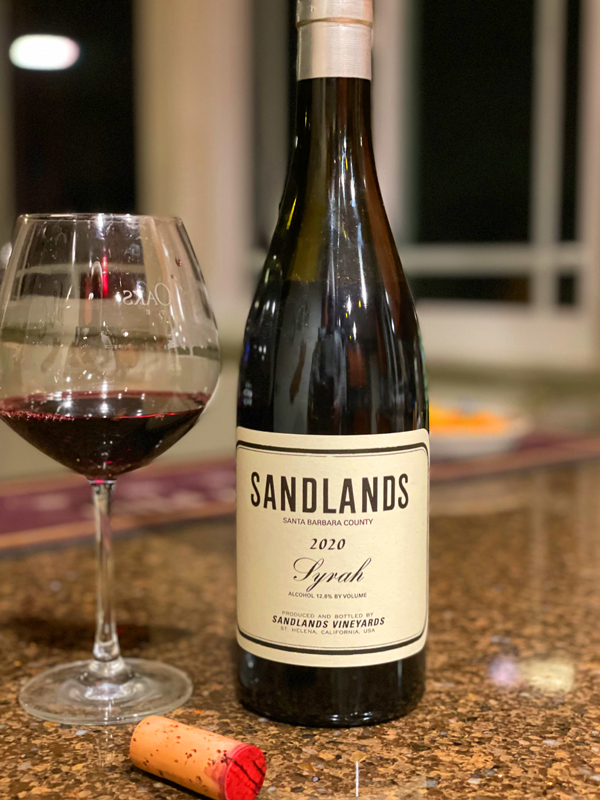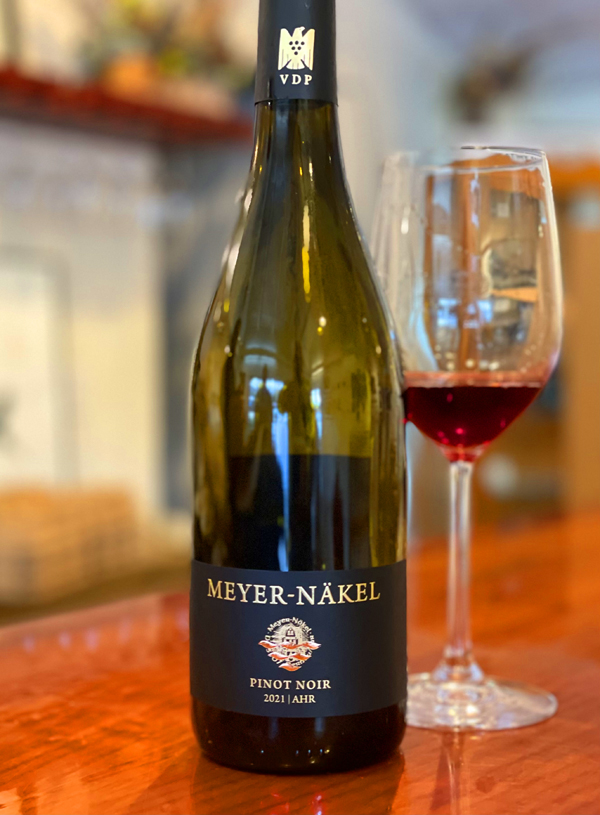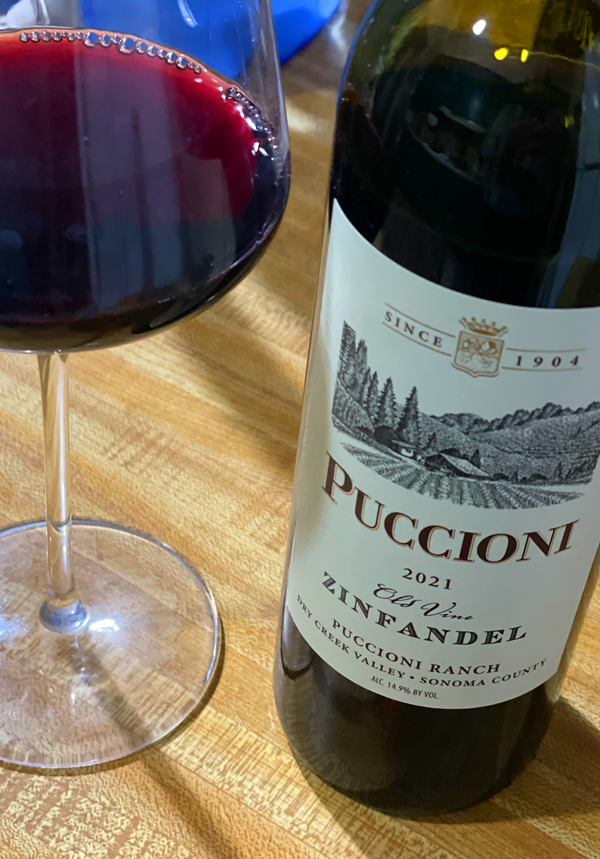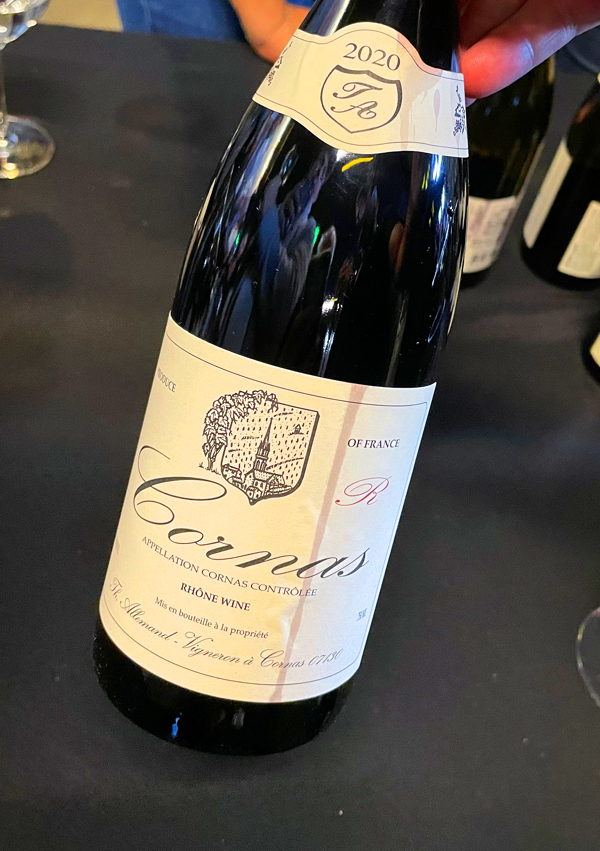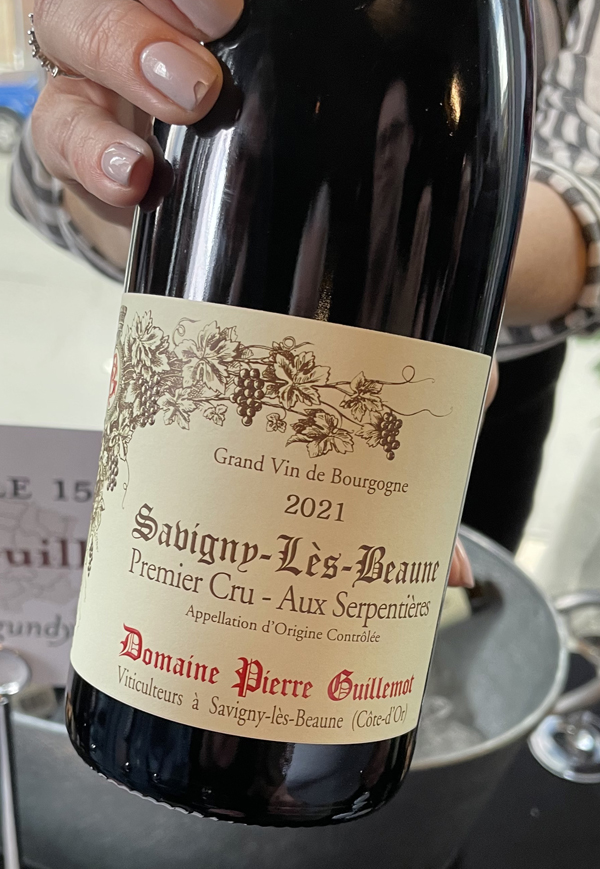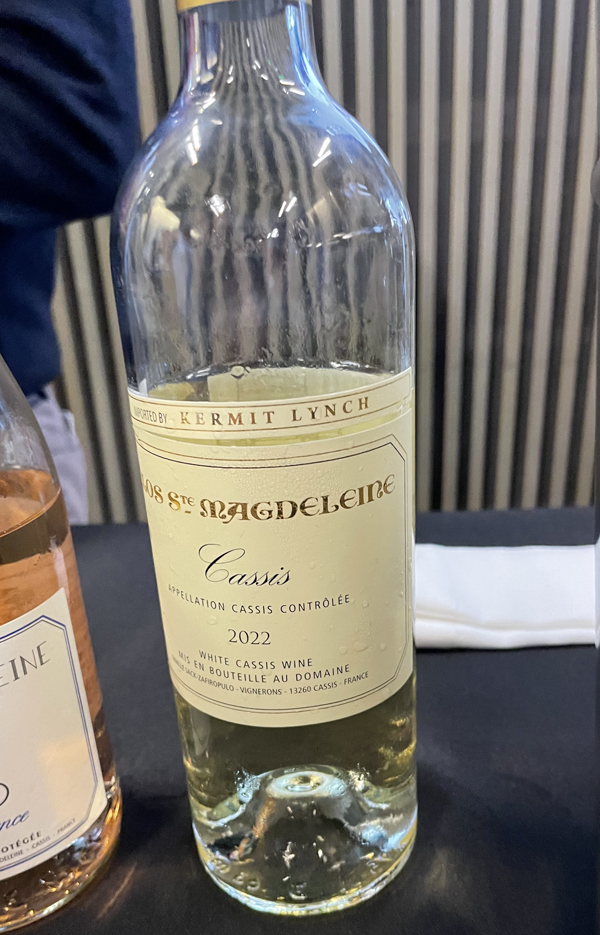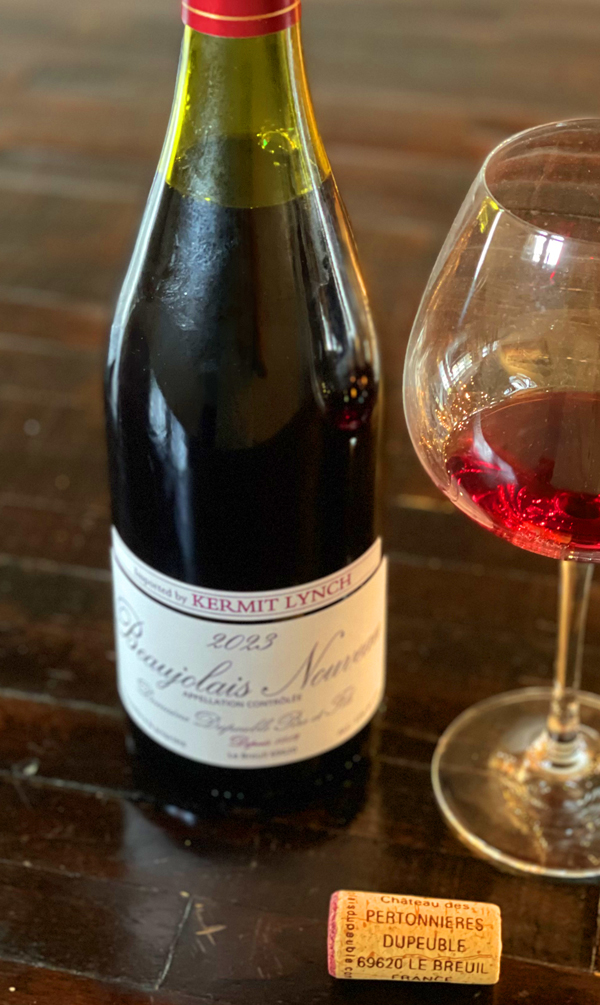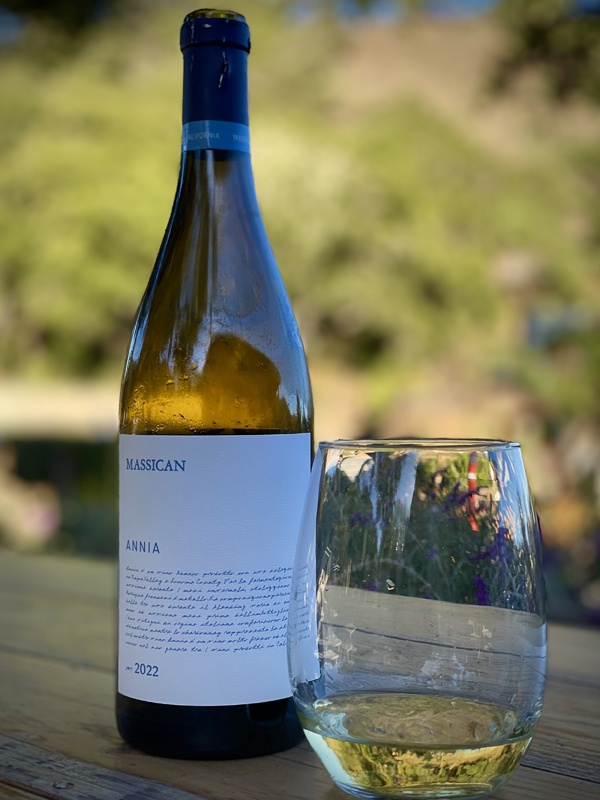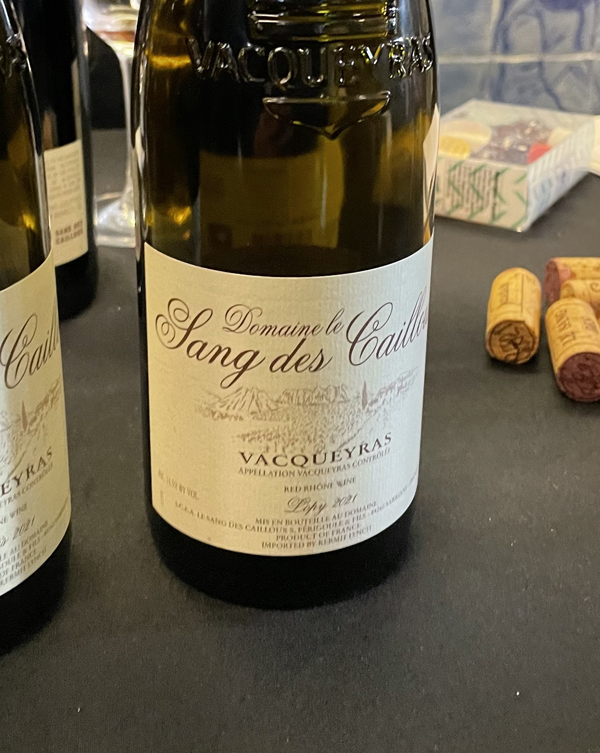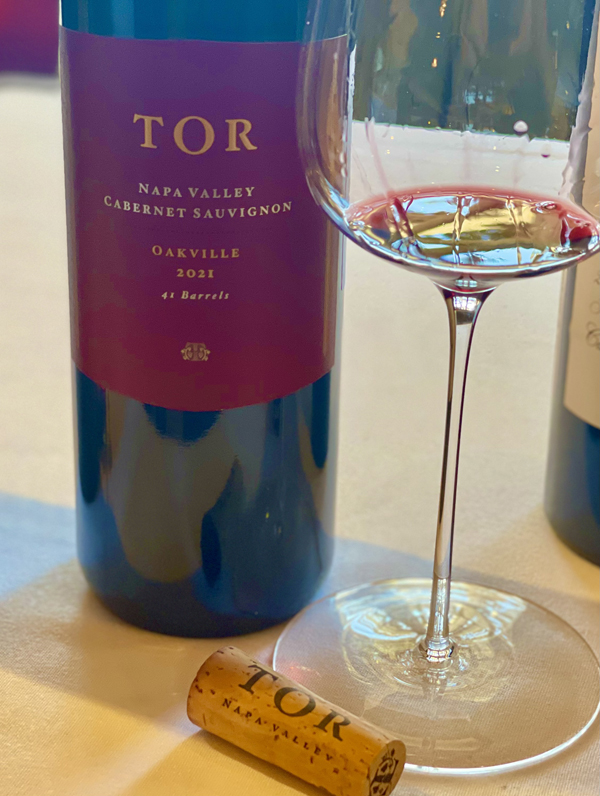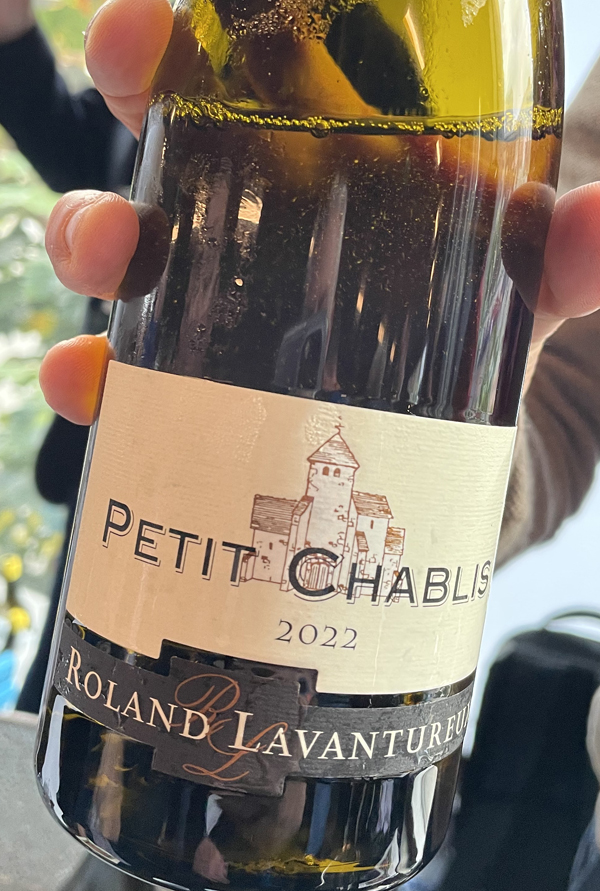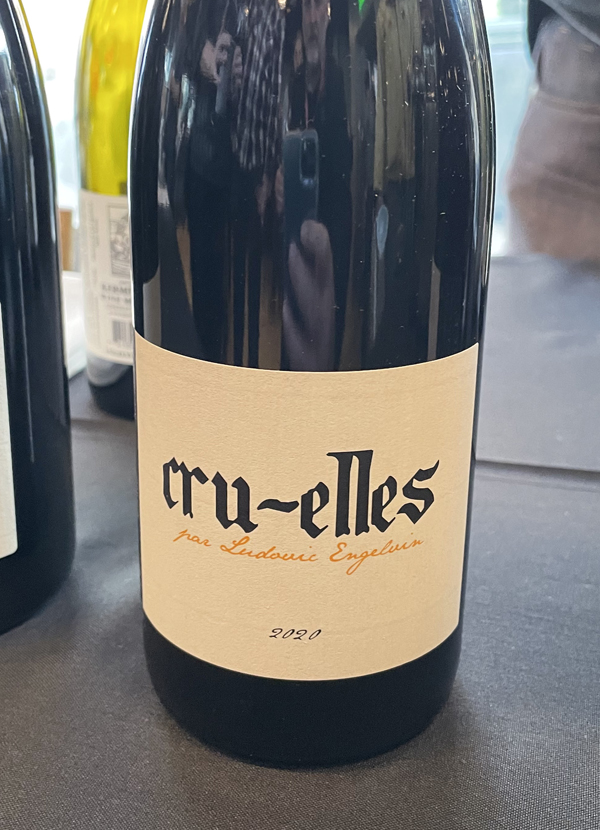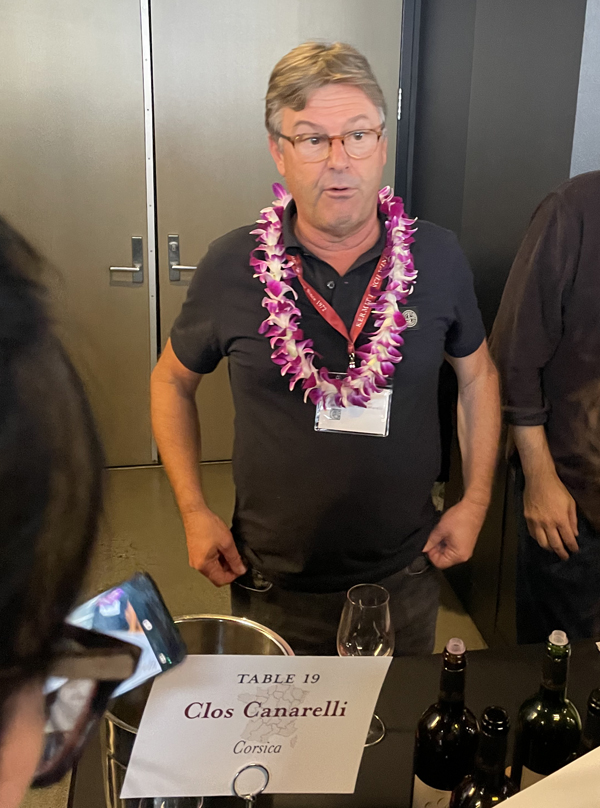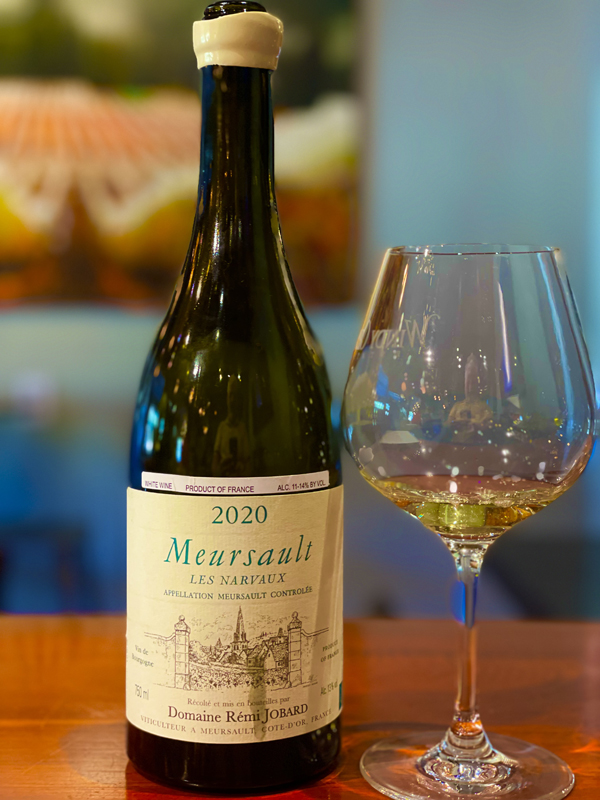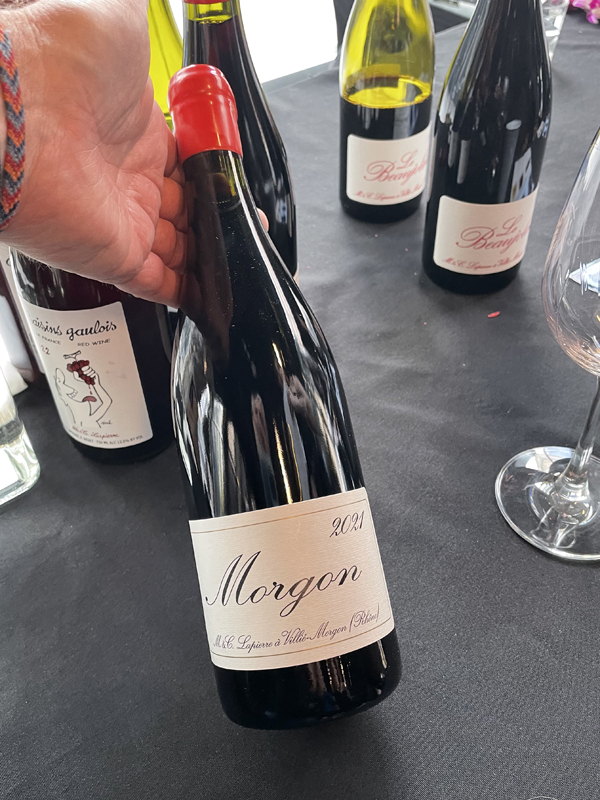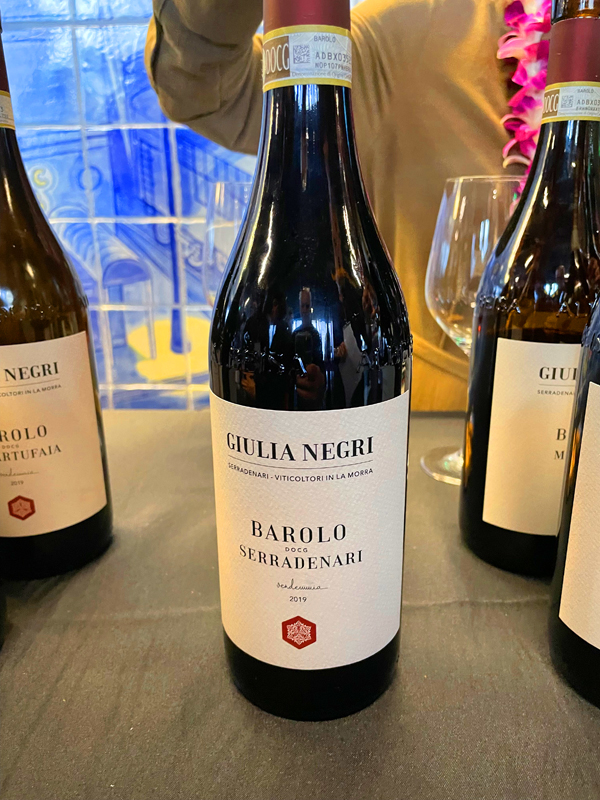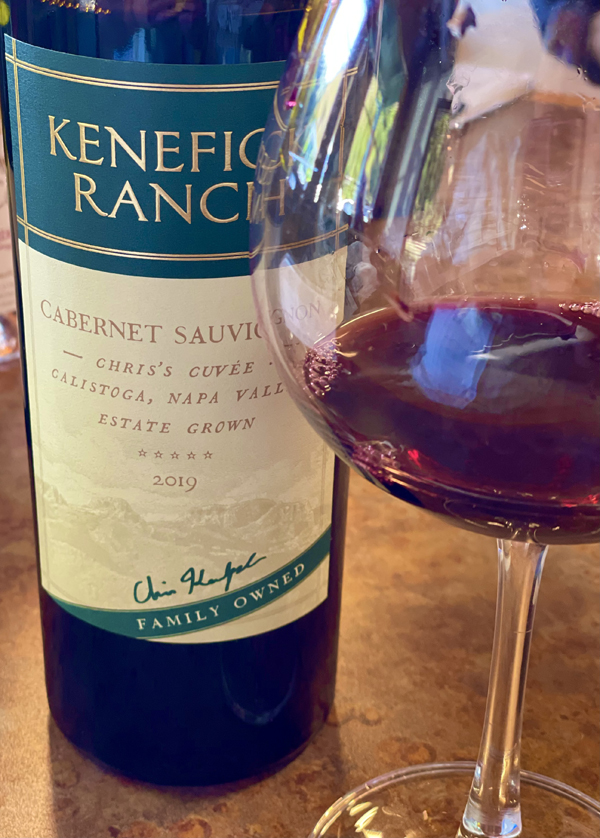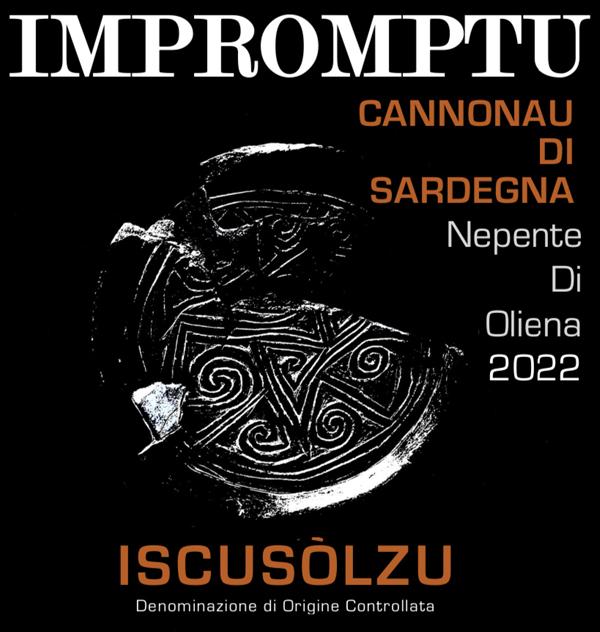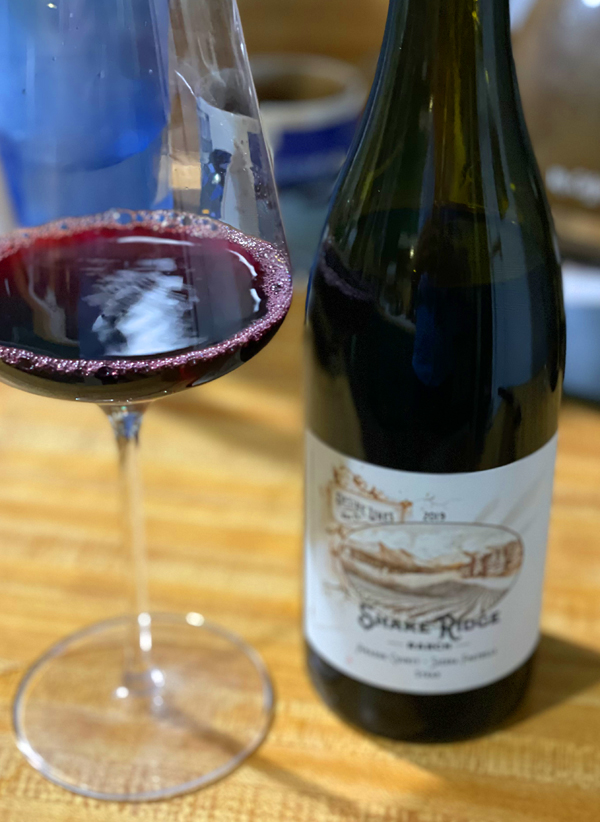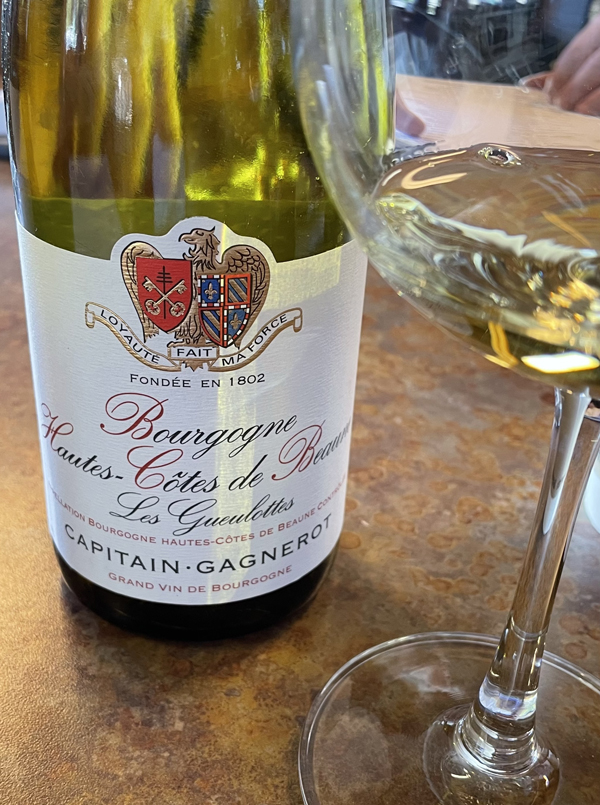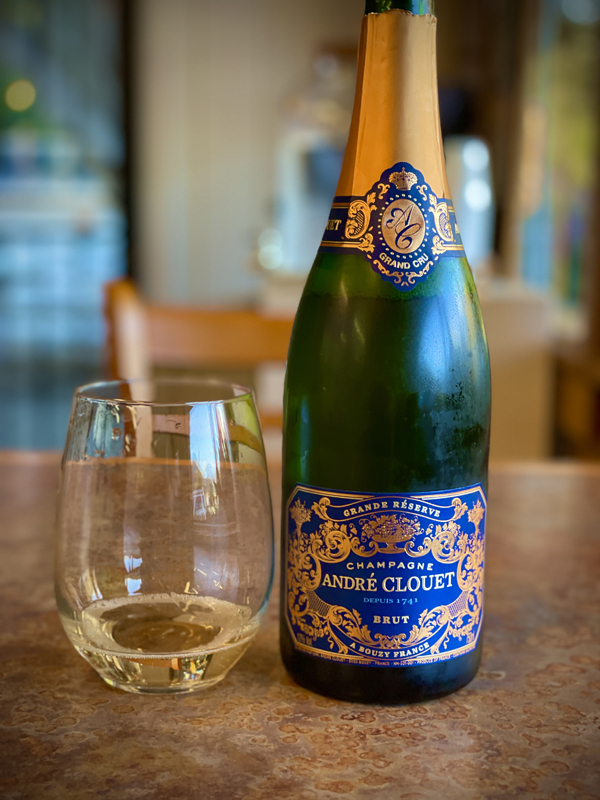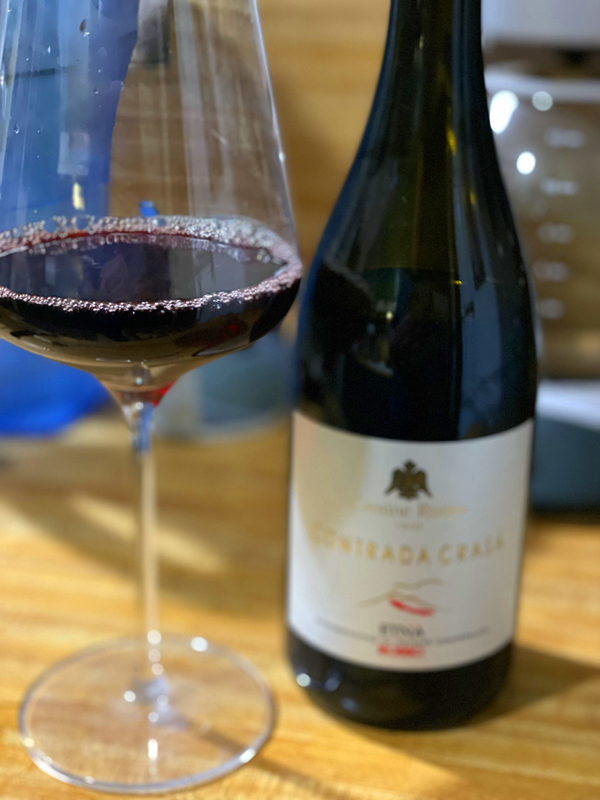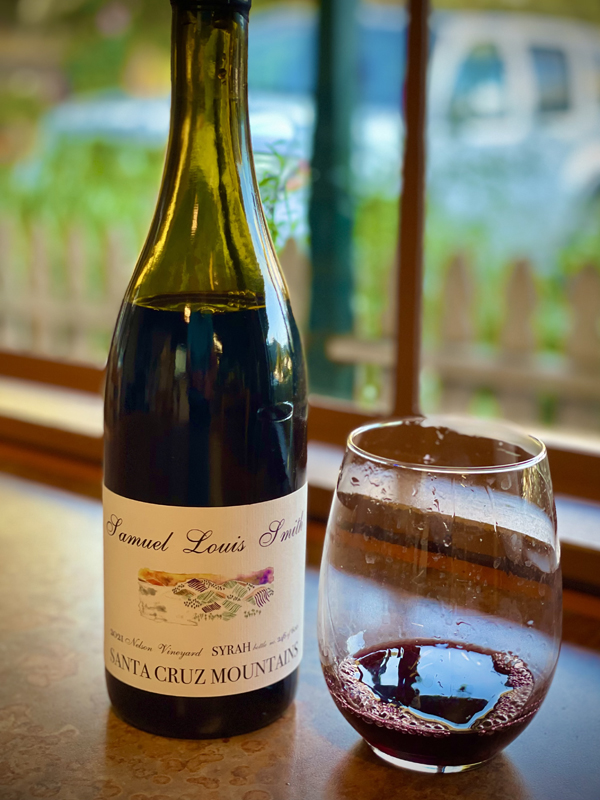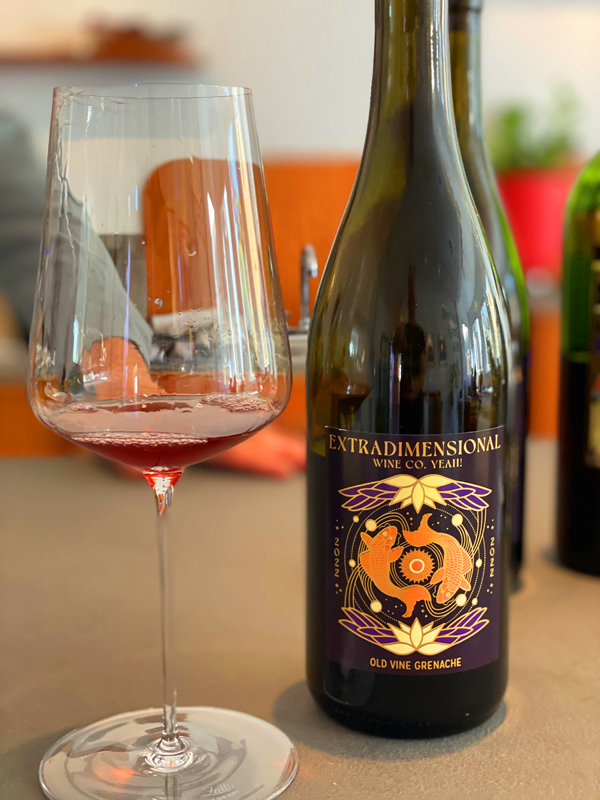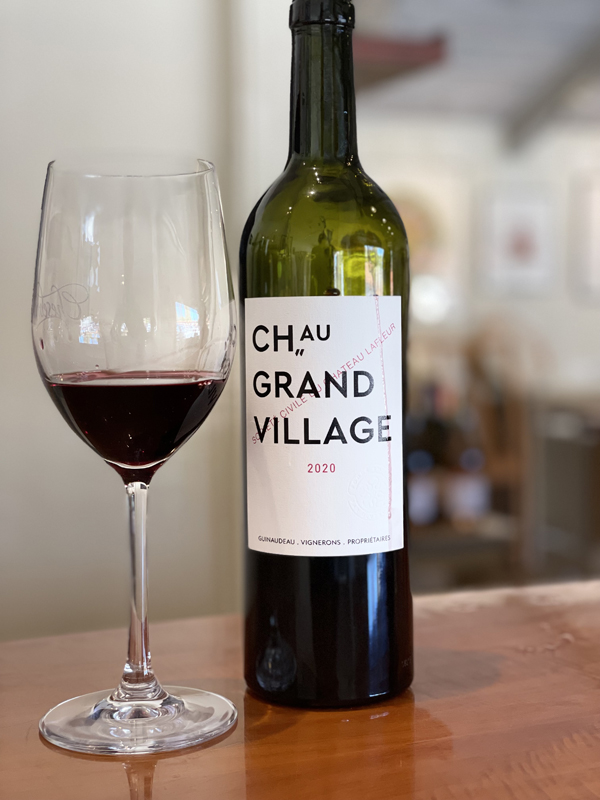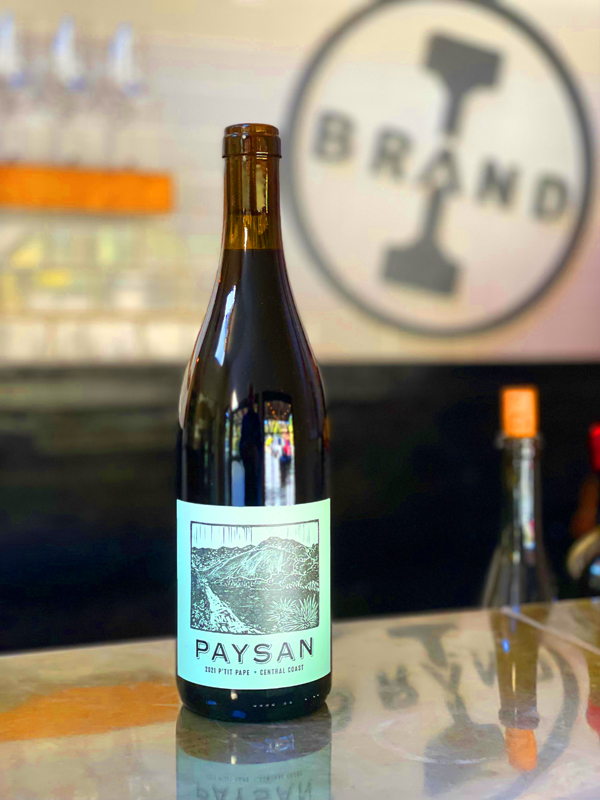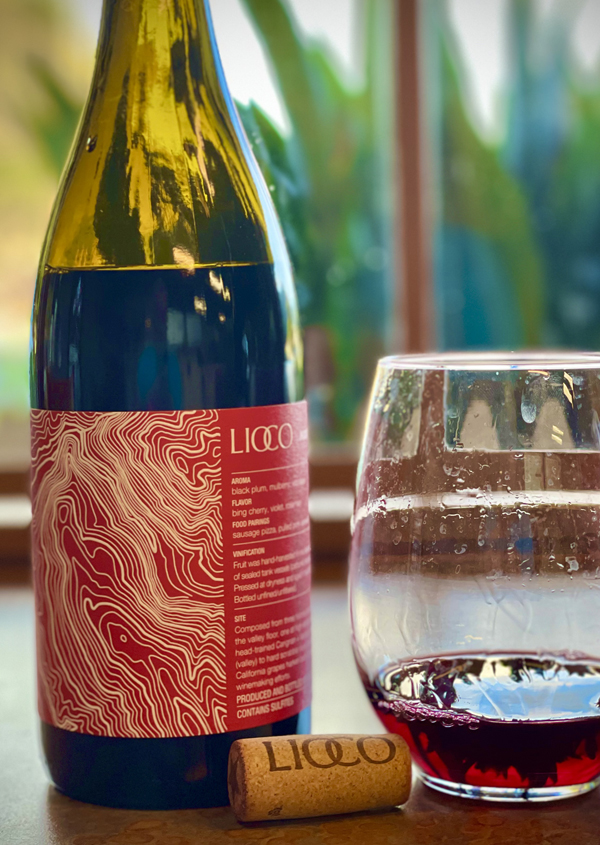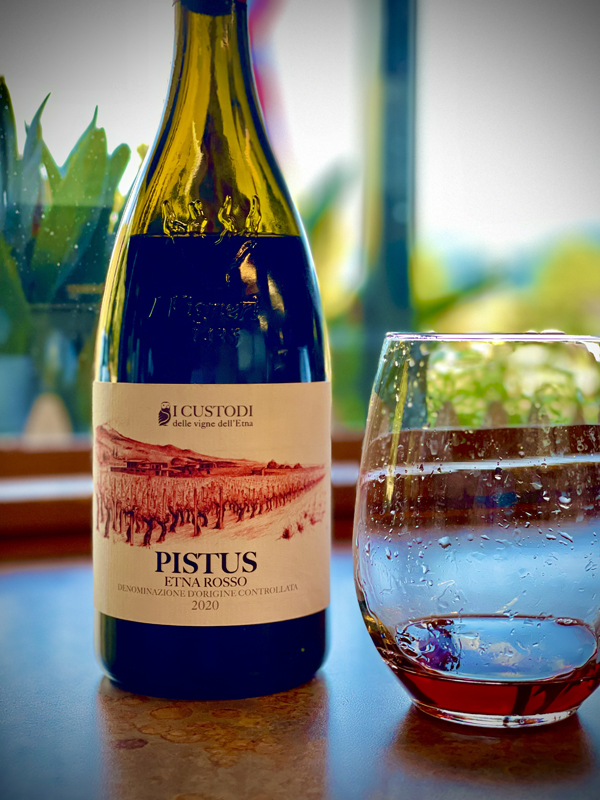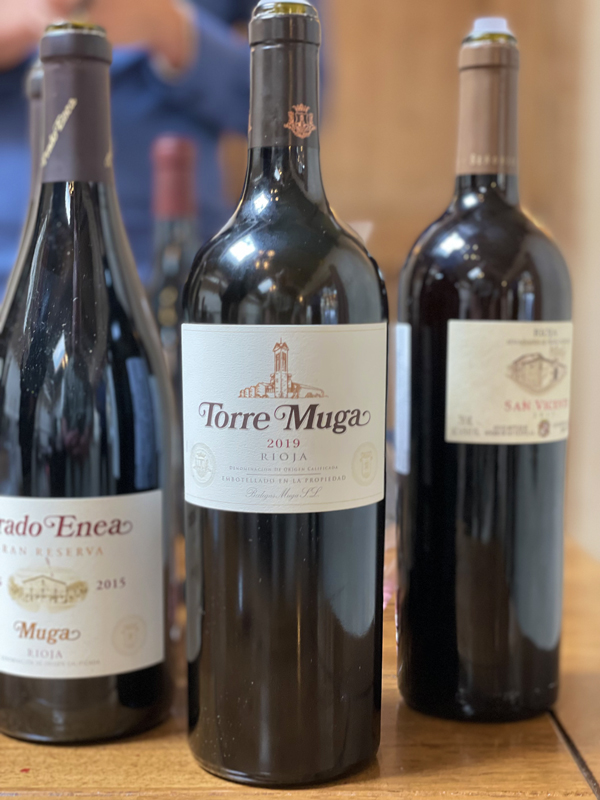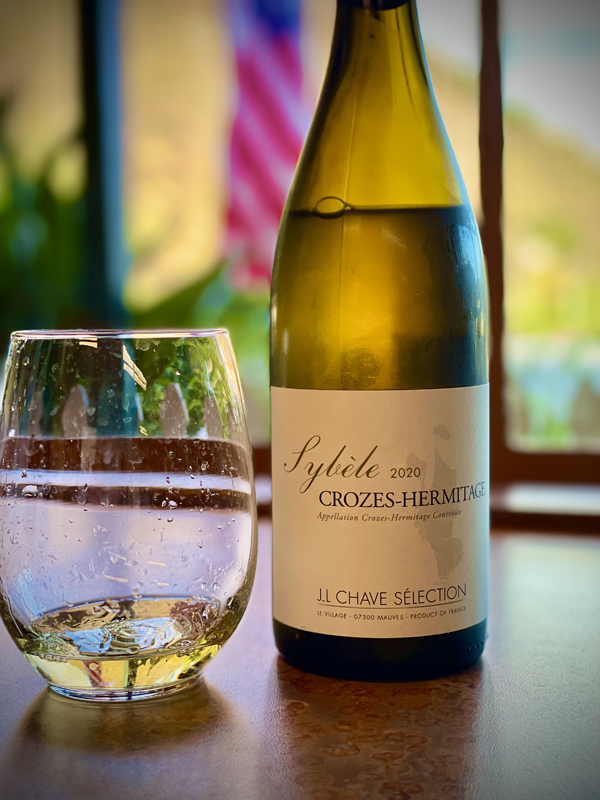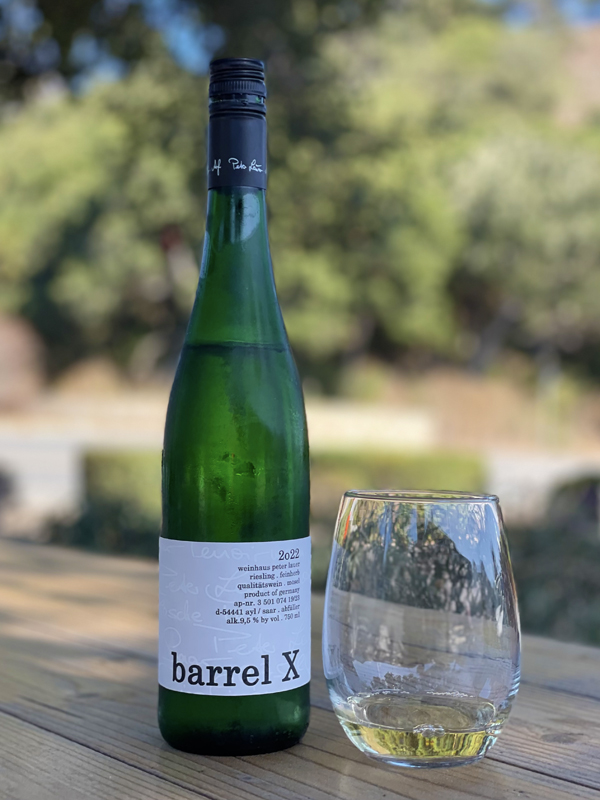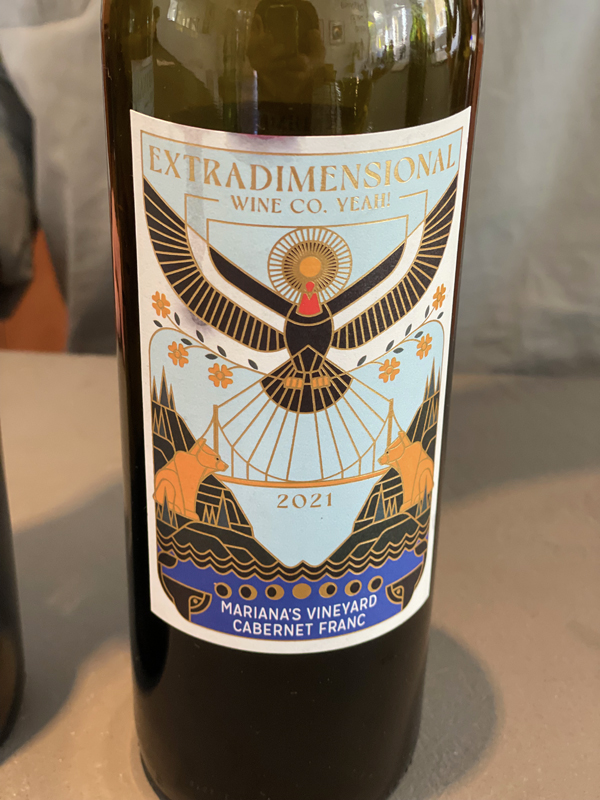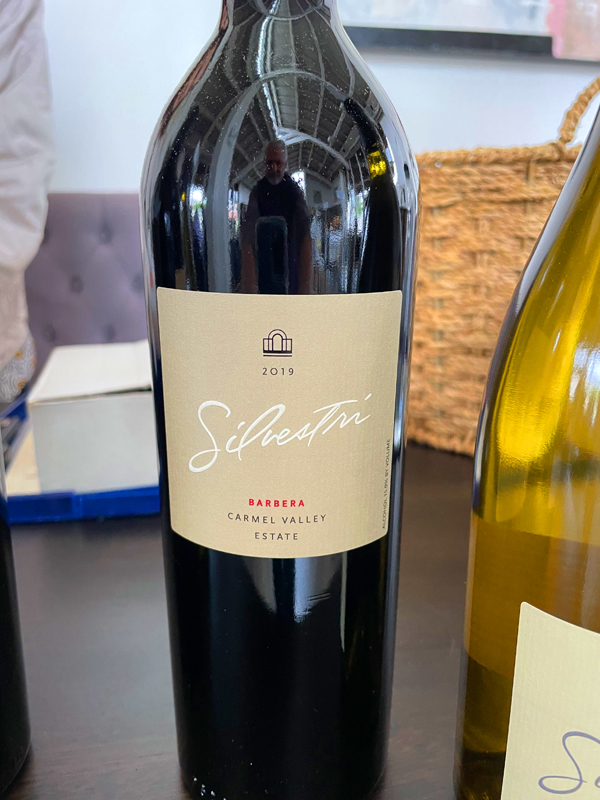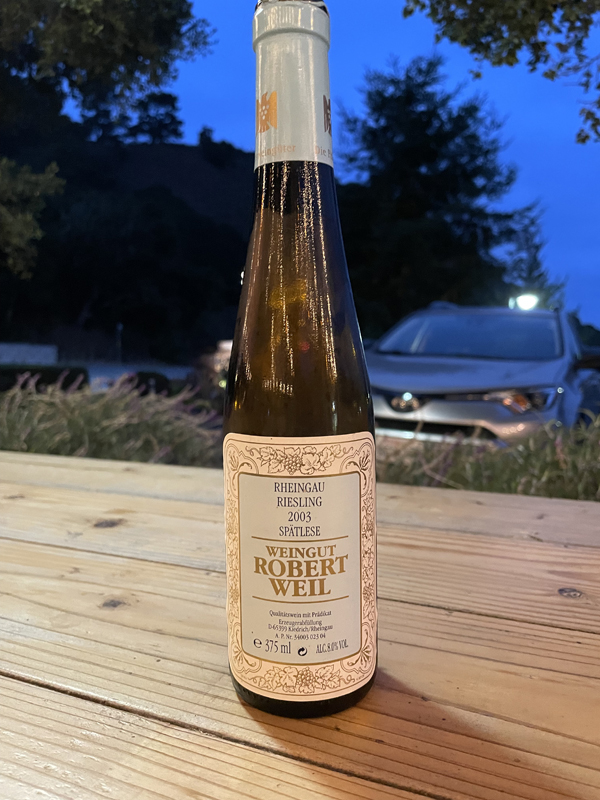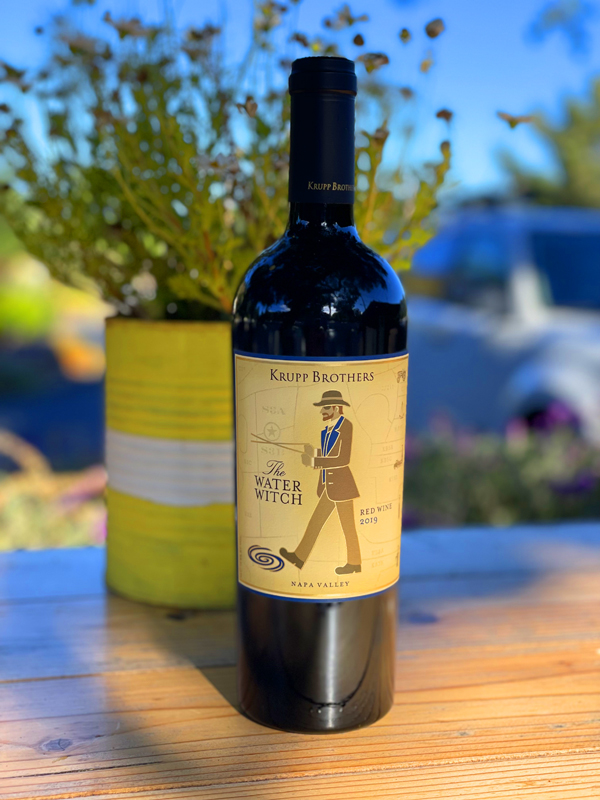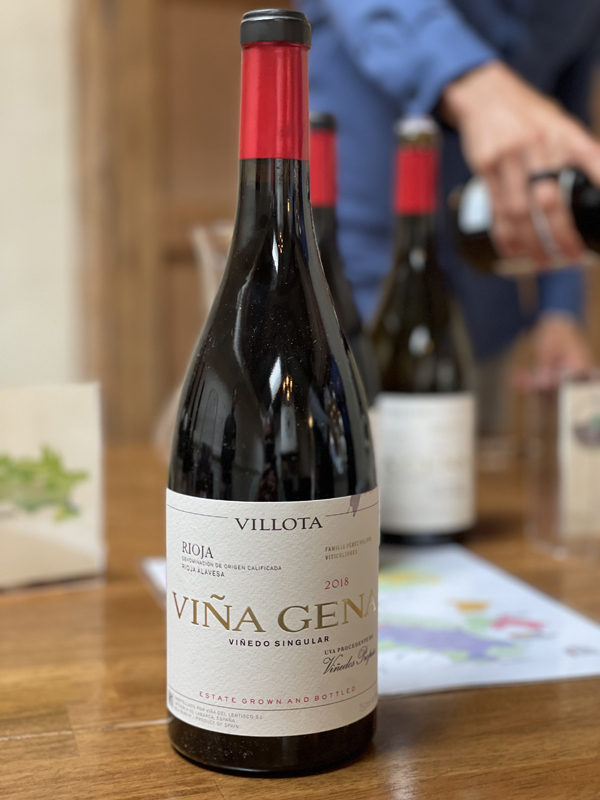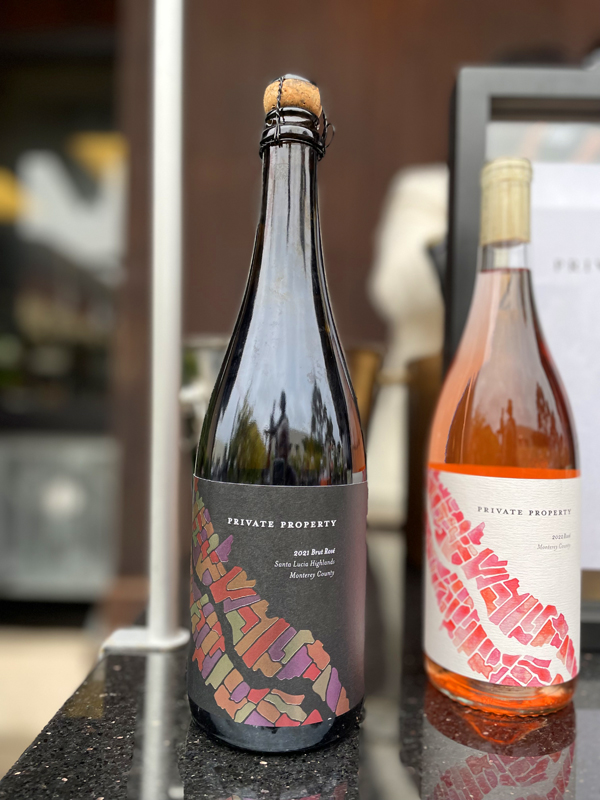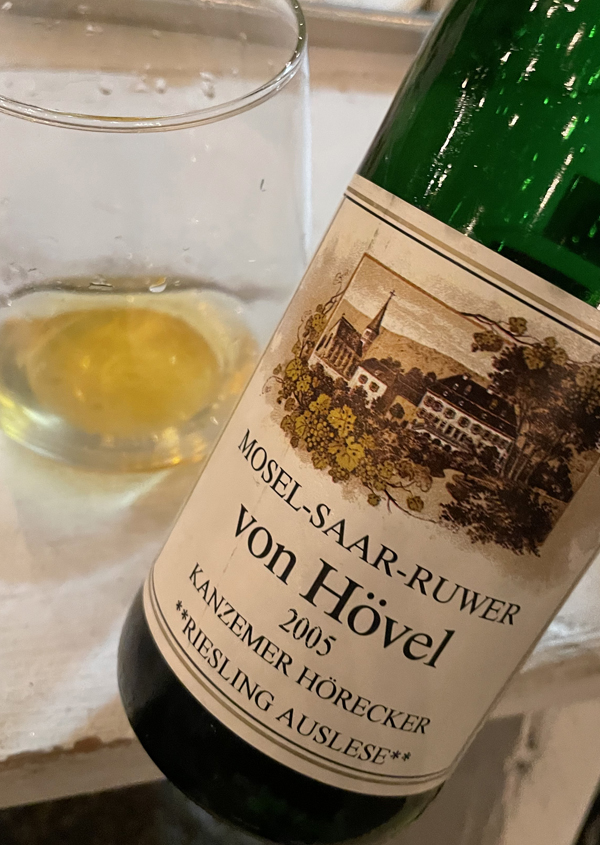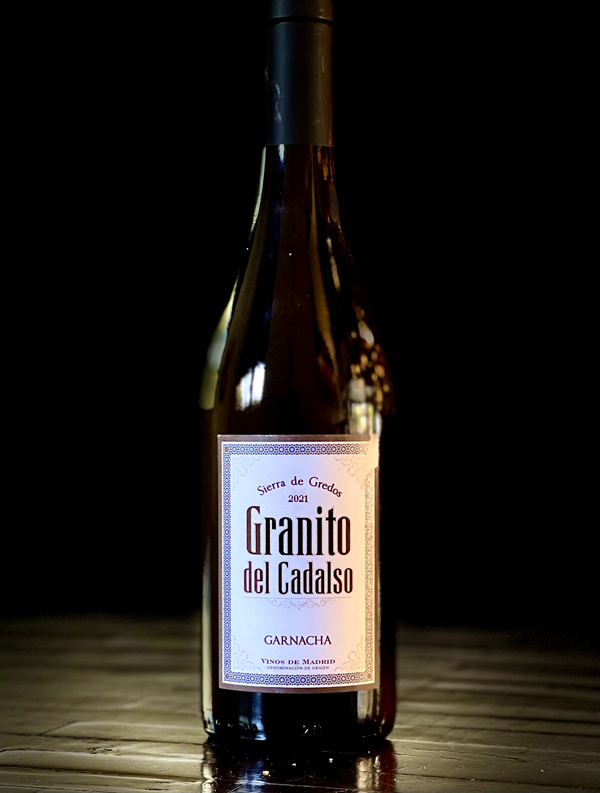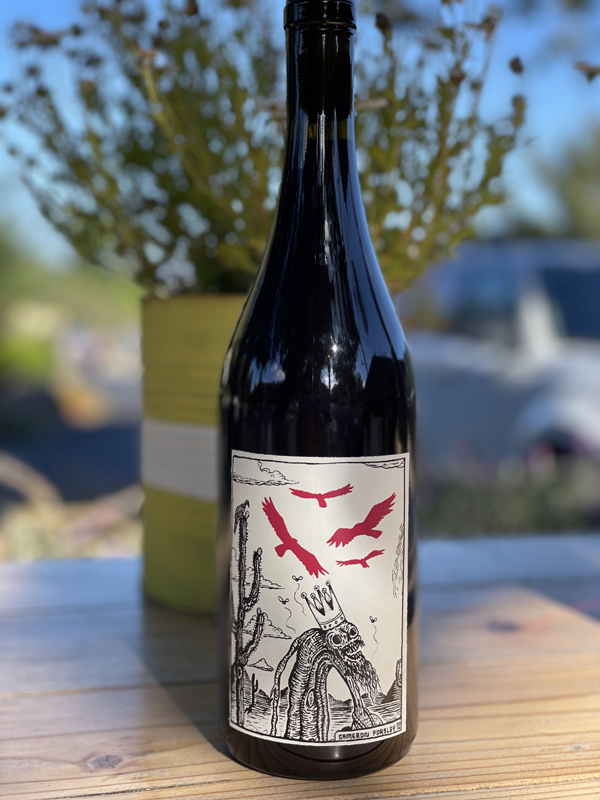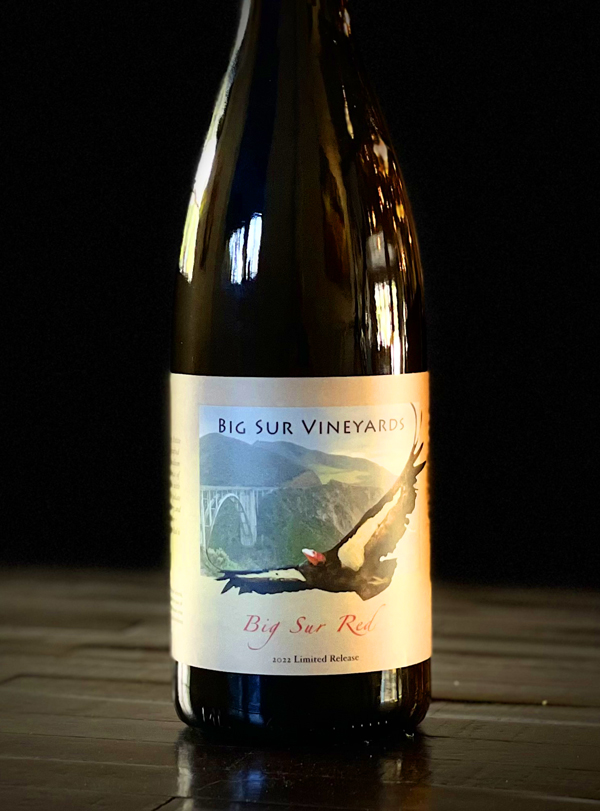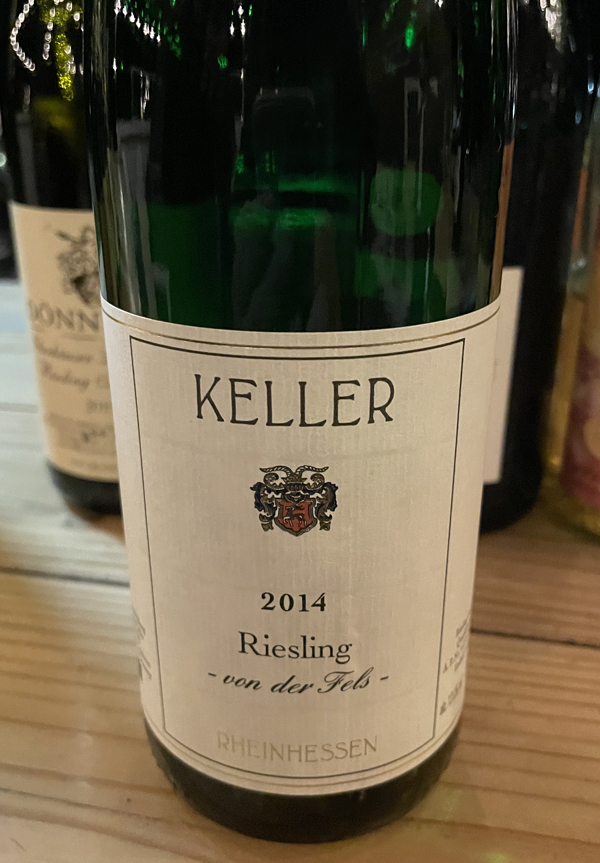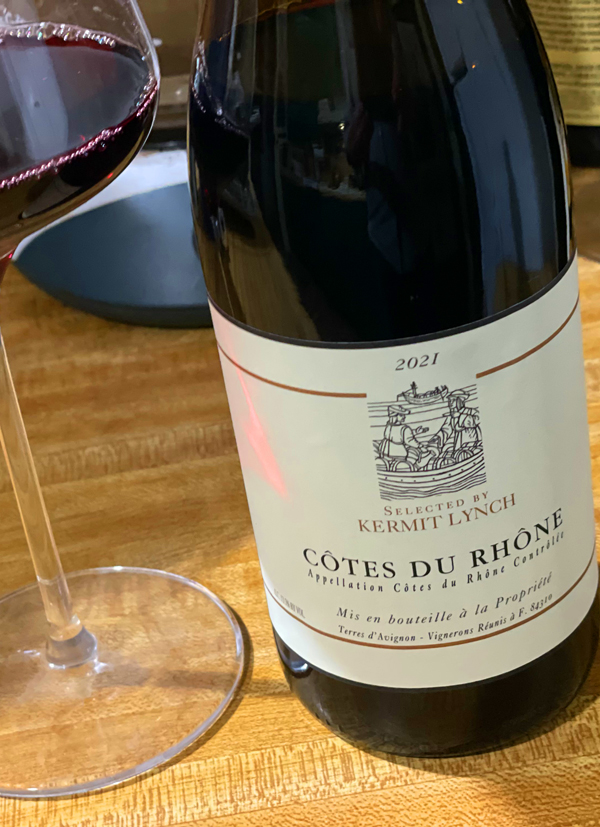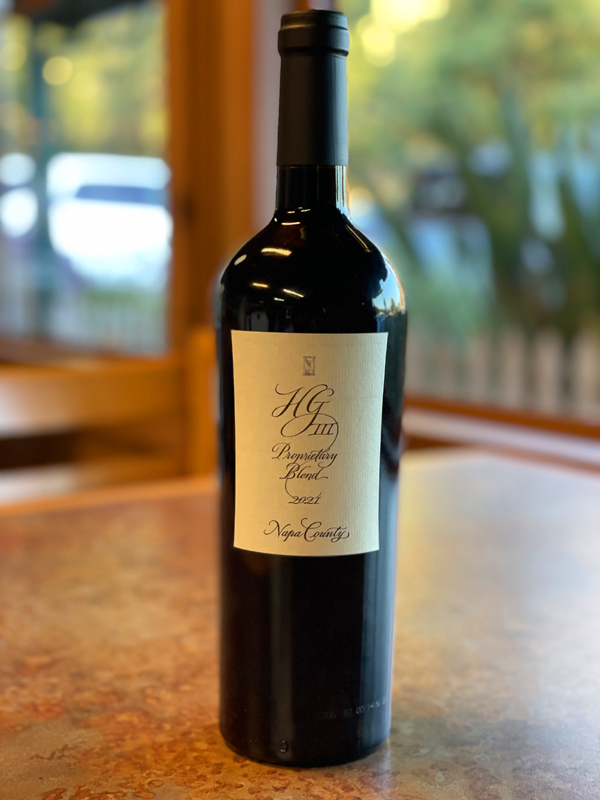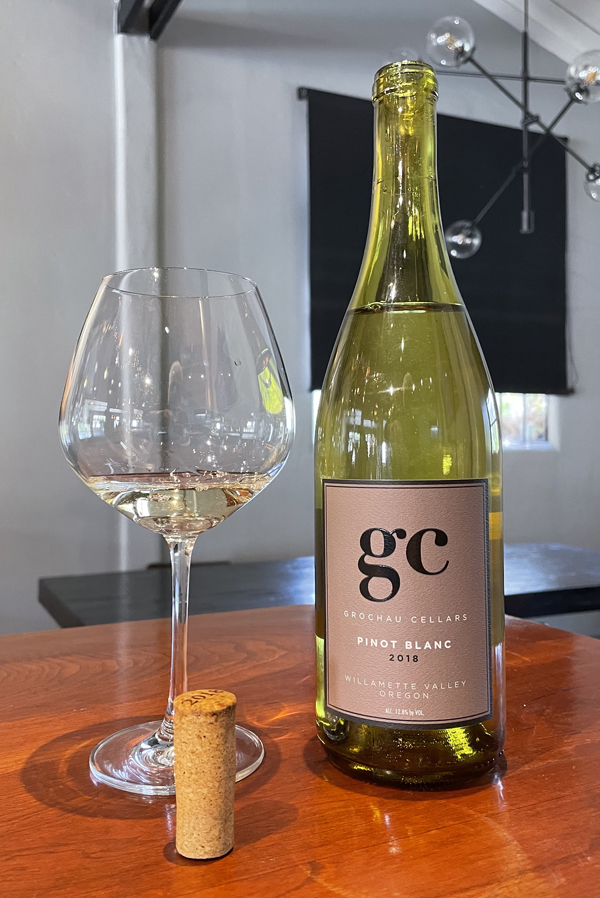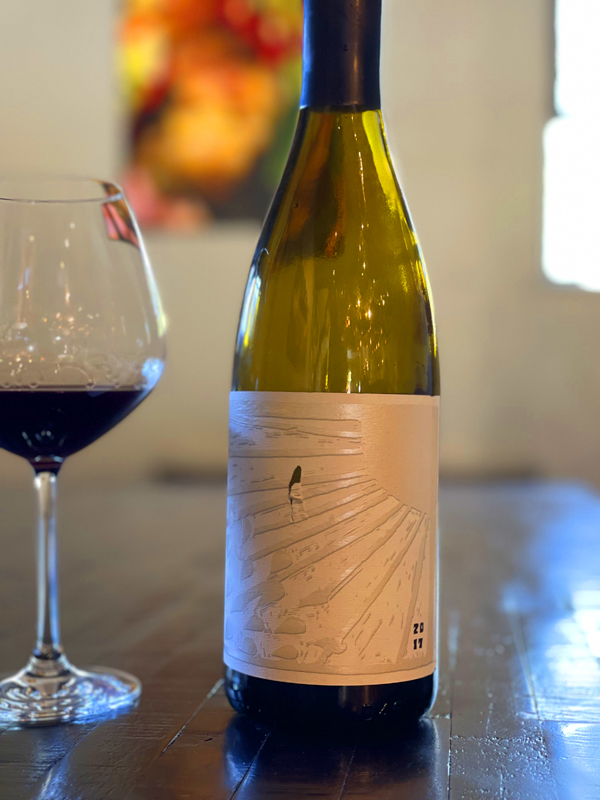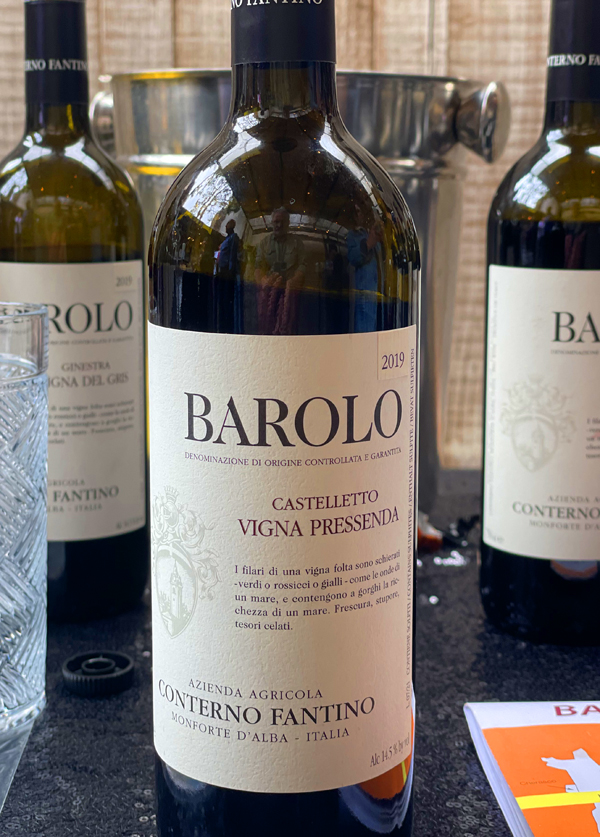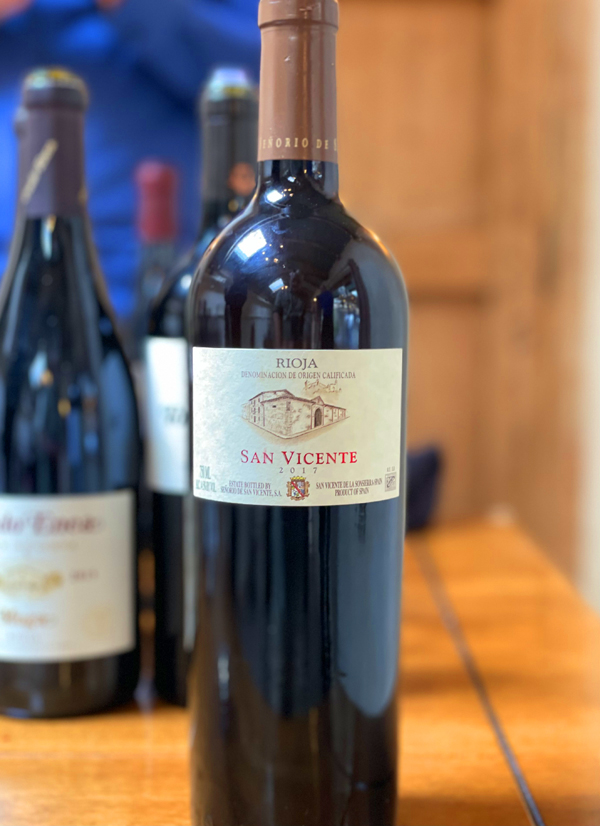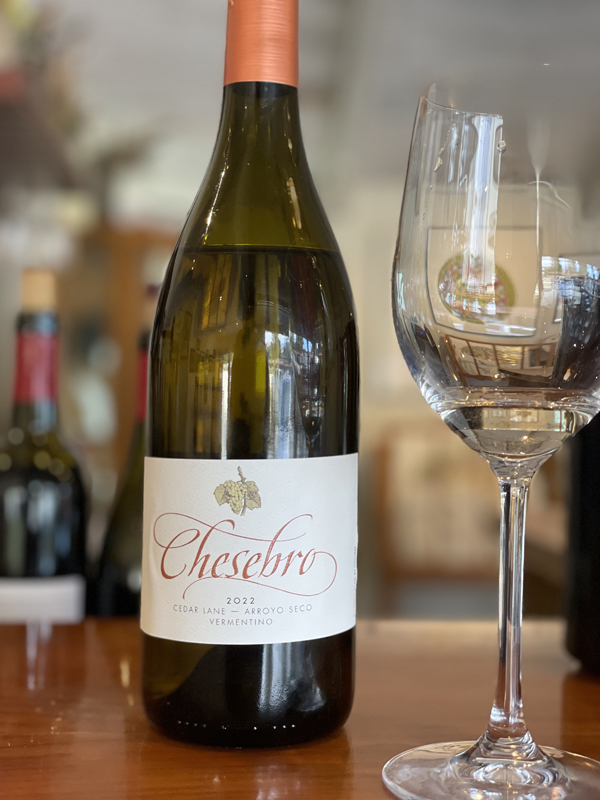Grapelive.com – Wine Reviews – December 2023
2020 J.L. Chave Selection, Côtes-du-Rhône “Mon Coeur” Rhône Valley, France.
The dark and complex 2020 J.L. Chave Sélection Côtes-du- Rhône “Mon Coeur” is crafted from a mix of varietals, with usually close to 60% Grenache, 30% Syrah, and 10% of Mourvèdre and Cinsault, all from a unique areas in the Vaucluse, including Visan, Vinsobres, Cairanne and Rasteau, all historic Rhône terroirs, with vines between 20 and 60 years old on mostly clay and limestone soils. This vintage is ultra deep and luxurious on the palate, with the Syrah clearly in evidence with loads of blueberry, violets and cassis on the full bodied palate, making for a wine that way over delivers for the price, as you’d expect from one the wold’s great vignerons. As it opened in the glass and accompanying the meal, there was more thick Grenache fruit, plum, boysenberry and cherry and the tannin melted away nicely and allowed fabulous concentration and pleasure to flow, as well as a subtle lift of acidity, savory notes, grilled herbs de Provence, licorice and peppery spices. Definitely a serious vintage for the Chave Mon Coeur, making it a savvy buy as always, it will appeal to those that are bargain hunters and those that typically grab Gigondas and Vacqueyras reds. I have been drinking Mon Coeur since the early 2000s, so it’s weird I hardly mention it, when it is such an excellent choice, my bad.
One of France’s most celebrated and respected winemakers, Jean-Louis Chave, famous for his iconic Hermitage Rouge and Hermitage Blanc masterpieces, took his family’s domaine in 1993 and rose to international fame in very short order and continues to be one of the Rhône’s leading lights. Chave, who’s family date back to 1481 in the Rhône is mostly known for his Hermitage offerings, does an estate Saint-Joseph and the J. L. Chave Selection series of négociant wines, as seen here, but all are organic and small yielding parcels used. The first of the Jean-Louis Chave Selection wines was from the 1995 vintage and it was from St. Joseph grapes, purchased from small growers there, starting a highly successful run of value packed offerings that now include this Côtes-du-Rhône Mon Coeur, the equally delicious Offerus from the mentioned Saint-Joseph, a Saint-Joseph Blanc, a Crozes-Hermitage Rouge, a Crozes Blanc, a Hermitage Blanc (purchased grapes) and the Farconnet Hermitage Rouge, as well as the single cru Clos Florentin Saint-Joseph, a really stunning pure Syrah that flies under the radar. The Mon Coeur Côtes-du-Rhône is fermented exclusively in stainless steel using de-stemmed grapes and then aged in a combination of wood, with old and new demi-muids and large foudres mostly, at Chave’s restored cellar at Le Clos in in Mauves, Saint-Joseph. What’s not to love here?
($27 Est.) 91 Points, grapelive
2020 Domaine Camus-Bruchon et Fils, Savigny-Les-Beaune “Aux Grands Liards” Vieilles Vignes, Red Burgundy, France.
Winemaker Guillaume Camus at Domain Camus-Bruchon has been on a roll and this wildly exotic, luxurious rich and deeply colored 2020 Aux Grands Liards Savigny-Les-Beaune old vine Burgundy is on another level with its concentration, depth, complexity and ripe hedonism! This wine thrills the senses with gorgeous aromatics, thick satiny layers of black cherry, plum, fig, forest berries and blood orange fruits, along with rose oil, cinnamon, tea leaf phenolics, subtle wood and delicate earthy/mineral tones. A totally different animal to the last three or so vintages, but wow, this heady stuff, without being over the top and I can imagine this aging fabulously well, it some ways it reminds me of 1990s or 2005s, wines of pleasure and soulfully authentic, though maybe not for the ultra traditionalists. That said, this what the vintage gave and Guillaume Camus put it all in the bottle, yes it is sexy and expressive, but in the best way possible and I wish I had bought lots more. As noted before, these Camus-Bruchon Premier Cru and single Lieu-dit wines are exceptional values and transmit each individual parcel’s personality, first and foremost they are grown in the vineyard, and as Guillaume says, you make wine as good as the grapes that you grow, and he does an excellent job. So it is clear he spends much more time with his vines that he does in the cellar, as it should be, especially when you have the parcels at your disposal like he does, especially this Aux Grand Liards, a favorite of mine, as I’ve said many times. Set on clay and limestone soils and over 90 year old vines, this Aux Grands Liards Vieilles Vignes just might be the best Pinot, in certain years, for the price in all of Burgundy.
Domaine Camus-Bruchon and neighbors Domaine Pierre Guillemot prove this region, Savigny-Les-Beaune has a wealth of quality, and both these houses are producers I try never to miss given the opportunity and you can’t spend your money any wiser when it comes to Burgundy than here. Guillaume, now a fully establish star in the Cote de Beaune, is making an outstanding set wines from his vineyard holdings, as mentioned, here in the Cote de Beaune, with many parcels in Premier Cru sites, especially in the Savigny-Les-Beaune area where he has some almost 100 year old vines, like this wine has. Like his father Lucien, Guillaume, of Domaine Camus-Bruchon, again as noted here, has a light touch and very much a winemaker that makes his wines in the vineyard, rather than in the cellar, everything he does is to showcase each vineyard site and produce wines of raw purity. He uses approximately 15% new oak in any given year, including in his top Premier Cru bottlings, preferring to follow the Domaine’s tradition of crafting transparent, balanced and graceful Pinots. The Camus-Bruchon wines see an extended maceration to fully extract the terroir and structure with about 18 days in total for the period of fermentation. The wines, all de-stemmed, are all done with indigenous yeasts in old school concrete vats before being racked of to the French oak for over a year and then they are bottled unfined and unfiltered to capture every nuance and the full sense of place. All the vineyard sites farmed by the Camus family are dome using sustainable methods and with great respect for the lands and to promote healthy soils, these wines really showcase each site’s distinct micro climates and are really respectful of history of this region. Camus-Bruchon, remarkably still flies under the radar, so the prices haven’t risen like other Burgundies in recent years so I recommend chasing them down!
($48 Est.) 95 Points, grapelive
2019 Chateau de Rouanne, Vinsobres AOC Rouge, Rhone Valley, France.
The very dark fruited and deeply hued Vinsobres Rouge by the sister property of Saint Cosme, Chateau de Rouanne, was crafted in this vintage from 50% Grenache, 40% Syrah and 10% Mourvedre grown on sandy, iron rich soils set on a limestone marl base with some clay and was, as noted above, all co-fermented mostly with whole cluster and all indigenous yeasts in concrete tanks, where it was also aged. The wine rested in the cement vat for 18 months, which allows the wine to show absolute purity in its final form and gave it time to fill out before bottling. The 2019 echos the 2018, I last tried, with a full bodied palate of black raspberry, damson plum, boysenberry compote, anise/licorice, creme de cassis and cherry fruit along with whole bunches influences highlighted with peppercorns, violets, earthiness and herbs de provence, along with a nice tannic structure, but beautiful textural quality. Anyone who’s had Louis Barruol’s wines will find the level of quality and comfort or pleasure here on par with the more famous Saint Cosme lineup, especially the Gigondas and Chateauneuf du Pape bottlings and I’m sure this Chateau de Rouanne Vinsobres will aged at least another 5 to 7 years if not 10! This deep purple/gsarnet wine definitely wants some protein rich cuisine to go with it, with lamb roast a natural pairing, but BBQ ribs, grilled steak, and or a winter meaty stew being good choices too.
The Chateau de Rouanne is another awesome project by Louis Barruol, owner of the famed Chateau de Saint Cosme in Gigondas, in Vinsobres, making a wine that is a classic Rhone red that is a co-fermentation of Barruol’s old vine Grenache, Syrah and Mourvèdre. Louis Barruol has long used fruit from this remote area far to the northwest of Chateauneuf du Pape and has recently added this estate to his lineup as a separate label within the Saint Cosme family, which makes sense as Vinsobres has been recognized as its own appellation, and an upgrade from a generic Cotes du Rhone. I would argue was long over due, to make this area its own AOC since this a cooler climate and high quality terroir that is unique and deserves to be more widely known, as this wine certainly proves. Louis Barruol has coveted this site for years, he notes that, like his famous Chateau de Saint Cosme, Chateau de Rouanne was first founded during Gallo-Roman times, probably dating back to the 1400s. Barruol adds that, most of Rouanne’s vineyards date from the 1960s and are massale selections (special old clones) that offer substantial genetic diversity and low yields that shows in the wine, giving it concentration and depth, while the elevation and soils allow for natural acidity and heightened aromatics. Bargain hunters should chase the Chateau de Rouanne Vinsobres 2018 and 2019 vintages down, as they can be found at exceptionally good prices, about 25 bucks, but I look forward to seeing the new vintages, and even at a few dollars more a bottle, they will certainly be worth it!
($35 Est.) 94 Points, grapelive
2021 Familie Friedrich Becker, Chardonnay, Pfalz, Germany.
The estate grown Family Friedrich Becker Chardonnay is wildly delicious stuff, drawing inspiration from Chablis and Puligny (white Burgundy) wines, this German Chardonnay is loaded with mineral intensity and shows off a brilliant array of bright flavors leaning on preserved lemon, white peach and classic apple and pear fruits, along with a leesy depth, white flowers, wet stone, clove spice and hazelnut. Dry and lively, with a reduction flinty essence, this chalky toned Pfalz Chardonnay has a lovely and graceful textural medium bodied palate and delivers quality way above its price point. This wine sits one place up from Becker’s base tier of wines, just below their “Mineral” and the VDP Cru Schweigen single vineyard wine, which considering how good this wine is, must be fantastic. I’m a big fan of the wines at Becker and am grateful to Tim Gaiser MS for first introducing me to them about the time that Fritz Becker Jr. took over here, and while it was obviously the Pinots that drew me in, this Chardonnay an outstanding effort that deserves wider attention. This Family Friedrich Becker Chardonnay was made from hand tended vines and was hand harvested with a careful and rigorous selection of the grapes in the vineyards and in the cellar, where this wine saw a barrel fermentation and was aged in a combination of large and small barrels, to promote clarity of detail and only a small a new wood is used.
The Weingut Friedrich Becker, a founding member of the VDP, is uniquely situated almost between the border of Germany and France, in Schweigen, in the southernmost part of the Pfalz region and is noted for some of Europe’s best Pinot Noir wines, as well as specializing in Chardonnay, as seen here, along with Pinot Blanc, Pinot Gris and even Meunier. In fact, they have vineyards on both the French and German side, with 30 hectares planted to vines at the edge of the Palatinate forest, with as the winery notes, actually with 50 percent of their land situated on the French side in Alsace, though they are bottled as Pfalz wines. The limestone based soils and deep marls, with various topsoils here really favors the Burgundian grapes and the terroir allows for ripe and complex mineral driven flavors, while retaining vigorous acidity, which provides excellent balance and elegance. In recent history, Fritz Becker Jr., who is the 7th Generation to make wine here, took over from his dad in 2005 and though trying to fill some big shoes has pushed the wines to the next level and collectors and Pinot enthusiasts eagerly await new releases and make it difficult to find these excellent wines, especially the Cru bottlings. I look forward to try the rest of the latest releases, which are imported by The German Wine Collection to the United States, and again the Pinots in particular, with the rare GG’s being of special interest, but also a few of the alternative varietals, like the mentioned Meunier, Pinot Blanc and the Becker Rosé, which I really enjoyed the last time I tried it.
($30 Est.) 92 Points, grapelive
2017 Cantina Produttori Nebbiolo di Carema, Carena Riserva DOC, Alto Piemonte, Italy.
Beautifully pure Nebbiolo, aromatic and slightly earthy on the nose with classic rustic flavors on the medium bodied palate with brandied cherries, dried raspberry, damson plum and tart red currant fruits, along with leather, loam, tarry truffle, rose petal, minty herbs, cedar and anise. This wine opens up nicely, with a fine grained dry tannin structure, becoming smoothly textured, but still fresh and briar spiced, adding savory balsamic elements, making it much better with food than by itself. The Cantina de Produttori Nebbiolo di Carema winery, which I had not had before until sampling this wine, was founded in 1960 by a group of local growers in the region in the northern most growing area of Piemonte in a picturesque mountain valley that has largely gone unnoticed for hundreds of years, even though the wines have been cherished by nobility and even a pope in the distant past, but now has become a hot spot for high quality Nebbiolo. The Alto Piemonte and Alta Langhe is producing some enchanting wines and this regional co-op is a good source to explore some exciting Nebbiolo, these wines are less polished and more authentic than the more well known Langhe area, but can be wonderfully complex and age worthy wines.
The Carema region is between Piedmont and the Aosta Valley and is remote and steep with mostly terraced or pergola trained vineyards, it is a historic wine region that was even noted in wine guides as far back as 1539. The rules changed in 2010, and now Carema DOC and Carema Riserva DOC wines are made exclusively of 100% Nebbiolo grapes, which puts this region alongside Barolo and Barbaresco and unique amounts its closest neighbors that allow a small percentage of ancient and local other varietals. For the Cantina Produttori Nebbiolo di Carema, Carena Riserva DOC, all hillside vines, the wine was fermented in stainless tank with 100% de-stemmed grapes with a two week or so maceration the extra color and allow for pure aromatics. The Carema Riserva DOC (white label) is aged for a minimum of 3 years, of which, the winery says is done with 18 months in used large oak or chestnut wood barrels, and rested in the cellar for another 18 months before release. The Nebbiolo here, which locals call Picotendro, grows on stony glacial soils with the rocks, which are piled up, holding the suns warmth to help ripen this late ripening grape. I am curious to try more of these wines, especially from top vintages, so I’ll be following Cantina Produttori Nebbiolo di Carema and recommend Nebbiolo fans do the same, especially their Carema Riserva DOC and their black label Carema DOC, that is next on my want list, as it what looks like a great value.
($38 Est.) 91 Points, grapelive
2016 Domaine Bernard Boisson-Vadot, Meursault “Les Chevalieres” White Burgundy, France.
The 2016 Les Chevalieres Meursault from winemakers Anne and Pierre Boisson is really hitting its stride and mature in character with a rich mouth feel and lots of stony and mineral intensity showing leesy layers of golden apple, peach, pear and dried pineapple fruits, along with brioche, hazelnut and light toast notes. There is plenty of lemony toned acidity to keep everything thrilling on the pretty full bodied palate, which the winery calls a racy here on the Chevalieres, which is now bottled under the Anne Boisson label, it is a lieu-dit that has vines that were replanted in 1982 on the chalky limestone and clay soils, that gives a bit extra in core mineral element. I was impressed how this Meursault kept getting better and better in the glass, and not ever having this winery’s efforts, it was a treat to experience this Les Chevalieres with food and friends, it doesn’t get much better than that. The aromatics do hint to a bit of age, but it still has a reductive flinty earthy edge and delicate white flower note, this Domaine Boisson Meursault has just the right amount of toasty oak sweetness, vanilla and smoke to compliment the steely, but dense fruit.
The Domaine Bernard Boisson-Vadot is creating a lot of buzz and is a must have label crafting some exceptional Meursault wines, with Bernard giving way to his son and daughter, Pierre Boisson and Anne Boisson who are now established stars in the region. The Boissons, with a long history in winemaking, have been vignerons in Meursault for more than two centuries and while not a household name in the States, Anne and Pierre Boisson, who is notably an old, school-age friend with Raphael Coche, son of Jean-François Coche of Domaine Coche-Dury, and the two often discuss winemaking and viticultural philosophies, which has sparked a lot of interest in their small lot wines that come mostly from top sites and old vines. The wines at Domaine Bernard Boisson-Vadot are all fermented with indigenous yeasts and, as the winery notes, go to barrel with little or no settling of the lees, and then after which they mature with a long élévage, with the Meursault seeing close to 19-22 months in the oak, with very little new oak being used, with this one usually seeing 25% new wood. This fine terroir driven, slightly reductive still, very serious Chardonnay should continue to please for another 3 to 5 years easily, and this is a winery to follow for Burgundy enthusiasts, with 2020 looking like vintage to buy.
($225 Est.) 94 Points, grapelive
2021 Sylvain Dittiere, Saumur-Champigny Rouge, La Porte Saint Jean, Loire Valley, France.
The 2021 La Porte Saint Jean, 100% Cabernet Franc, Saumur-Champigny Rouge shows pretty aromatics and dark fruit layers of currant, black cherry, plum and earthy blackberry fruits, on a lovely ripe, but fresh, medium/full palate that seduces the senses with spicy herbs, loam, violets, chalky elements, sandalwood and mineral notes. I last tried the 2016, which was earthier and dusty with raw tannin, while this one shows a graceful supple texture and crisper/cleaner detailing, all of which is very desirable in a more natural styled and transparent wine. This vintage has a charming pleasure with depth of fruit, but doesn’t feel as ripe as some, in fact it has plenty of life and lift, it is fabulous with food too, it went brilliantly with savory pork chops and even flash grilled Ahi tuna. As mentioned before, I have been a fan and follower of Sylvain Dittiere’s wines, a real established star now, for close to a decade now, especially this bottling, since his 2013 vintage, this 100% de-stemmed La Porte Saint Jean Saumur-Champigny (Cabernet Franc) comes from two different sites on a single slope, with the younger vines on a mid-slope, set on clay, and the more mature 40+ year old vines on sandy, silty clay over limestone closer to the the top of the hillside, providing excellent complexity and intensity of flavors.
One of the Loire’s rising natural stars, Sylvain Dittiere, works his 4 hectares all organic, and as his importer notes, comes armed with formal schooling and a remarkable “un-training” from some of the best natural winemakers in France, such as Marc Tempé in Alsace, Gérard Gauby in the Roussillon, Thierry Germain and Antoine Foucault in Saumur, of Clos Rougeard fame. Sylvain Dittière struck out on his own in 2010, at the youthful age of 25, when he acquired a 2.5 ha parcel of Cabernet Franc in Saumur-Champigny that had already been farmed organically and a gem of “Jurassic” cellar that was carved out of the rock. This environment enables him to work without temperature controlled tanks or or vats and it is all fed by gravity flow for ultra gentile handing of the grapes and wine. For his La Porte Saint Jean, Dittiere, the two parcels are fermented and aged separately and blended closer to bottling, with fermentation(s) done in concrete tank with indigenous yeasts. The juice is post primary is then racked by gravity into barrels where it is matured undisturbed for close to 18 months with a combination of new and old oak barrels, and then bottled unfined and unfiltered with low sulfur. The use of new oak in the mix is a newer choice, and one that adds to the overall refinement here, without taking away the nuance and terroir nature found in this exceptional Loire Valley Cab Franc, it is a wine that should really gain with age too, I see another decade of rewarding drinking easy!
($40 Est.) 94 Points, grapelive
2021 A.D. Beckham, Amphora Syrah, Red Mountain, Yakima Valley AVA, Washington State.
The Beckham Estate Vineyard winery, based in the Willamette Valley’s Chehalem Mountains, has been creating a buzz in wine geek circles and I was thrilled to try my first wine from them, with the wines produced under the A.D. Beckham label having been exclusively fermented and aged primarily in Andrew Beckham’s hand-made clay amphorae. He says it was a convergence of his life’s passions to do theses wines with farming, ceramics, and winemaking being his reason for being. This Syrah comes from the ancient sedimentary soils and terroir of the Red Mountain AVA in Washington State and shows the deep flavor profile you’d expect, but with no oak influence and a beautiful transparent nature with luxurious, ripe and supple blackberry, blueberry and damson plum fruits leading the way. The full bodied palate shows offers richness galore stopping just short of prune/fig, but because of the whole cluster fermentation, there’s a nice savory crunch, hints of chalky loam, minty (stems), anise, tobacco and violets, along with a long bitter coco and cassis finish. While unique and distinctively their own, there is also a real sense of place here, it was always going to be a Washington State wine and it as true as is gets. At just a tick over 14% natural alcohol, things are well balanced and this wine will be great with hearty Winter cuisine, especially lamb!
The now famous Red Mountain district in the Yakima Valley AVA and greater Columbia Valley, is a premier wine region in southeast Washington that is high regarded for world class Cabernet Sauvignon, Syrah, as seen here, along with Merlot and the other Bordeaux grapes, as well as some other rare varieties. The first vines in Red Mountain were originally planted back in 1975, and the AVA is celebrated for deep fruit density and a powerful, but luxurious tannic structure and is now home to many of Washington State’s finest vineyards. The Red Mountain, that officially became a full AVA in 2001, as I learned, was formed by the repeated ice-age flooding of the Glacial Lake Missoula over 10,000 years ago. The flood waters redesigned the landscape here, in what now seems like a hight desert, making soft mountain slopes and depositing nutrient rich top soils over sand, silt and gravel, which certainly the Cabernet and Merlot especially love, while the Syrah gets inky rich and voluminous. Beckham adds that occasionally he works with other vineyards, as seen here, that share his farming philosophies in order to explore the expression of different grape varietals in Andrew’s Novum (clay terracotta, like you see on the Greek Isle of Crete). All the wines are fermented with native yeasts, are un-fined, and as he continues, they contain minimal added sulfur. Now, I’m looking forward to tasting the rest of the A.D. Beckham lineup, which includes Pinot Noir, Gris, a mixed white, Gamay and a Oregon version of Syrah!
($50 Est.) 92 Points, grapelive
2019 Domaine Comte de Lauze, Châteauneuf du Pape AOC Rouge, Rhône Valley, France.
The rich and full bodied 2019 Comte de Lauze Châteauneuf Rouge, made from 80% Grenache and 20% Syrah, is very thick and chocolatey on the palate with oodles of ripe dark berry coulis, plum, candied cherry and balsamic dipped fig fruits, but still shows a nice array of peppery spice, lavender and herb, a light suggestion of black olive, loam and lingering creme de cassis. Winemaker Anne Fourcher, who joins a list of traditional winemaking women making exceptional wines in Châteauneuf du Pape, took over the role at Comte De Lauze, named for a resistance fighter during WWII, who was a friend of the Fourcher family, and has gained quite the reputation in the last decade. This silken Châteauneuf Rouge comes from 40 plus year old vines in the northern zone of the appellation, near the famous Mont-Redon, with north facing exposure, which leads to later picks and more moderate alcohol, and set on pure rocks with no visible dirt or topsoil, that add to the intensity here. A few rumors have Comte de Lauze using a small percentage of Cinsault in this Rouge, depending on the year, which I can see adding a bit more bright focus, spice and complexity, but it is not listed , so I can’t confirm it!
The cellar at Domaine Comte de Lauze in an ancient underground affair and set in the heart of the region, where Fourcher ferments and ages her wines mostly in cement vats and without any new or newer oak employed with all native yeasts and no racking during the elevage. It’s said that her underground cave keeps the temps really low, close to 50F degrees and that promotes a longer maceration and primary fermentation that adds to the power and aromatic qualities here, with this wine showing fine detail, a touch of the Syrah’s feral earthiness and nice restraint. The 2019 is quite lush, especially after time in the glass and I can see the pretty florals coming alive with every sip as well as that fruit density that screams Châteauneuf. Anne who started winemaking here in 2004, makes just about 400 cases of the Rouge here at Comte de Lauze and with the price where it is, makes this a savvy choice, and her Châteauneuf Blanc, only 150 cases, is a non malo co-ferment of 45% Grenache Blanc, 35% Roussanne, 10% each Clairette and Bourbelenc that ages in old large 600L casks, has a cult like following. I didn’t know much about this estate until very recently and was happily surprised with what I tasted, it clearly shows Fourcher’s noted talent is well earned, with her more old school approach, and I look forward to following up on future vintages.
($44 Est.) 93 Points, grapelive
2021 Trimbach, Pinot Blanc, Alsace, France.
The lightly golden pale Trimbach Pinot Blanc is crisp, tangy and bone dry with tart citrus, white peach and bitter almond paste leading the way on the light to medium bodied palate which feels smoothly textural as it opens, giving way to a nicely framed white wine that is best suited to have with soft farm cheeses and easy or delicate flavored seafoods. Hints of cider apples, wet stone, apricot flesh, herbs and unsweetened honey add to the complexity, while not rising to the level of excitement of Trimbach’s Riesling and Pinot Gris bottlings, which are standard bearers in the Alsace region. That said, the Pinot Blanc is well made, transparent and does the job envisioned, I certainly wouldn’t mind a glass as an aperitif and for those that want a subtle dry, less aromatic and austere or restrained wine will find this wine perfectly capable and pleasing.
The Trimbach Pinot Blanc, interestingly is a cuvée of 80% Auxerrois, formerly know as Pinot Auxerrois, and just 20% of true Pinot Blanc and comes from all organically grown grapes in the Ribeauvillé area, near the winery and the surrounding villages. Trimbach, one of the world’s most famous wineries and one of France’s great family run domaines, continues to be a star in Alsace. This Pinot Blanc bottling, part of what Trimbach calls their Classic Line is fermented and aged exclusively in stainless steel tanks with a short lees elevage to preserve freshness and purity of form. The vineyards for this wine are set on a mix of soils, mostly clay and limestone along with gravel and alluvial material, which provides the wine with, along with climate, a terroir influence and in most vintages, a ripe sense of concentration, with this 2021 being a bit less dense and higher in natural acidity. In recent years I’ve thrilled with nicely cellared Trimbach Rieslings, and the mentioned, Pinot Gris, which is a sleeper in the lineup, and it is always a treat to enjoy the wines from this historic property.
($22 Est.) 87 Points, grapelive
n.v. Etienne Sandrin, Extra Brut Champagne “A Travers Celles” Celles-sur-Ource, France.
The vivid and beautiful A Travers Celles Extra Brut Champagne by Etienne Sandrin, a sublime hand crafted all biodynamic bubbly made from 80% Pinot Noir, great for structure, and 20% Pinot Blanc, is crisply dry, aromatic and extremely dry on the palate with lemon, white peach, apple and pear fruit, subtle leesy brioche and bread dough accents, hazelnut, chalky stones, clove spice and cool mineral tones. This Champagne is wonderfully focused and the mousse is small beading with electric vibrancy, making this a sparkling wine in the Agrapart Mineral style, with poise and floral delicacy. This wine gains texture and length in the glass, even though it is racy and high toned, it is best to enjoy this Champagne with a meal or small bites, of course oysters and or caviar would be good companions here. A new producer to me, Etienne Sandrin uses biodynamically-farmed old vines, with this wine “A Travers Celles” is from three different plots in the Celles-sur-Ource, Mouiile-Brant, Grille Besace and Vieux Moulin, with different soil types, exposition and micro-climates adding to the complexity. Fermented in stainless steel exclusively, It was then aged on the lees in bottle for 3 years, with excellent results, this is exceptional and distinctive grower fizz that will certainly appeal to enthusiasts.
The grower producer Champagne house of Etienne Sandrin is based in the Côte des Bar village of Celles-sur-Ource, and is new rising star in this part of the region hand crafting small lot Champagnes that highlight the elegant and stony terroir influence here. I’m told that Etienne and Anne Sandrin took over the family’s 10 hectares of vineyards in 2006 after his parents and grandparents had traditionally farmed it and sold grapes to the local coop for many years. To strike his own path, and make an impact, he focused on converting the vineyards to organic and biodynamic farming, finally getting certified by Demeter in 2018. The winery started making the A Travers Celles cuvée in 2014, as mentioned above, it is a blend of 80% Pinot Noir and uniquely 20% Pinot Blanc, sourced from different parcels across the village. This cuvée has become the signature wine of the winery, and with its very limited production it has also become a scarce treasure. The reputation is growing here and the minimalist style with zero to ultra low dosage and without the use of wood, these sparklers are steely fresh, vibrant and nuanced, which is very much right up my alley, I will be following this label closely. This producer is imported to in California by Pépite Wines, who’s bringing in mostly natural and organic Domaines from France, and I’ve been impressed by what I’ve tasted, especially this one.
($80 Est.) 95 Points, grapelive
2021 Hillock & Hobbs, Dry Riesling, Lake Seneca, Finger Lakes Region, New York.
I tasted this wine, not blind, but only knowing it was a Finger Lakes New York dry Riesling, and was really impressed with the quality and purity, before taking a real hard look at the label and winery name, after which I had a light bulb moment as I realized this was Paul Hobbs’ Lake Seneca project, that I had first heard about 10 years ago. Hobbs, who I met about 20 years ago, makes an elite set of Chardonnays, Pinot Noirs and Cabernet Sauvignon under his Paul Hobbs from vineyard sites in Carneros, Sonoma Coast, Russian River and Napa Valley, including the famed Beckstoffer Vineyard, all of which receive high critical acclaim. This was my first experience with his Hillock & Hobbs label, named for his parents Joan Hillock and Edward Hobbs, and I loved the stony nature of this Dry Riesling and its beautiful aromatics and crisp/steely details, it shows lively layers of zesty lime, white peach, subtle tropical notes, muskmelon and quince, along with bitter herbs, gun flint, verbena, rose petals and tart apple skin. The grapes come from vines set on the southeastern banks of Seneca Lake and the Hillock & Hobbs estate vineyards’ steep slopes, with a combination of blue slate, glacial till, limestone and glacial shale soils, all hand tended and picked to assure perfect quality. Hobbs whole cluster pressed the Riesling and fermented and aged it exclusively in stainless steel with about 9 months on the lees, which allows for loads of varietal character and a bit of texture.
Paul Hobbs, who was the first American winemaker at Opus One in Napa Valley, began his starred wine career when his family began selling grapes to nearby wineries in the Finger Lakes, and while attending college at Notre Dame, his father Edward Hobbs persuaded him to pursue wine, which led him to UC Davis, where Paul naturally developed an interest in Riesling, particularly those from Germany, which he considers his first love. So after making some of California’s best wines over the last few decades, Paul decided to return to his roots and get involved in making wines from New York’s Finger Lakes region, which was taking off as place to find great American dry Rieslings. There were rumors of a Hobbs interest in Lake Seneca over 10 years ago, with whispers he was consulting with famous Mosel winemaker Johannes Selbach of Selbach-Oster, on a joint project. Hobbs purchased a property there in 2013 and began the planting of 25 acres of vines, this process was not too easy, blasting holes into the slate proved difficult, only just now being completed. The estate is located right on the Lake and near the hamlet of Hector Falls, which Hobbs thought had similar features to the Mosel with intense mineral rich rocky soils, nice sloping hillsides and a climate that allows Riesling to thrive and produce ripe fruit with terroir influence and good acidity. This pale gold 2021, the second release from Hillock & Hobbs, is a very exciting wine, joining some of my favorites from the region, such as Hermann J. Weimar winery, Ravines and Red Newt, and I look forward to following this label!
($35 Est.) 92 Points, grapelive
2019 Domaine Fontaine du Clos, Vacqueyras AOC Rouge, Reflets de l’âme, Rhône Valley, France.
The beautifully concentrated, perfumed, spicy and delicious Domaine Fontaine du Clos cuvée Reflets de l’âme is made from 55% Grenache, 40% Syrah, and 5% Mourvèdre, from vines grown on the slopes in the Vacqueyras region. The vineyards are located on the guarriges of Sarrians, that benefit from clay, smooth pebbles, gravel and alluvial soils and the Mediterranean climate with its cold winters, hot summers and, as the winery notes, the famous cool Mistral winds, all coming together to provide a distinct terroir influence and fabulous wines. The pure and full bodied palate is warmly generous without being heavy with pleasure filled dark berry, plum and black cherry fruits along with crushed flowers, pepper, sticky lavender, subtle earthy/savory tones, anise and creme de cassis. I hadn’t had this multi-generational Vaucluse family run estate before, but after this wine, I will be looking to get more of their wines, especially as I’m a big Vacqueyras fan, a region that produces Chateauneuf du Pape quality wines with less pretense and at such a reasonable price, as this one does.
Céline and Jean-François Barnier’s Fontaine du Clos winery, proud independent vignerons, blends historic traditions with modern clean practices to make richly flavored and transparent wines, like their Vacqueyras Côtes du Rhône Village, with hand sorted sustainable 100% de-stemming grapes. Each of the three varieties, Grenache, Mourvèdre and Syrah, are vinified separately with the mentioned traditional and ancestral vinification, with 21 days on the skins, under controlled temperature with two daily pumping over. Then the wine is pressed and saw aging in concrete tanks, for just under a year, for freshness and to preserve, what the winery calls, the wines terroir authenticity. Fontaine du Clos makes more than 14 different wines, in IGP Vaucluse, in the AOC Vacqueyras and Côtes du Rhône and grow more than 40 different varietals, in fact they maintain their own vine nursery to preserve their unique genetic clones. The dark garnet and purple Fontaine du Clos Vacqueyras is a savvy buy and delivers an expressive, balanced and deep performance, making it an excellent companion with any hearty meal, but easily flexible to go with pizza and hard sleep cheeses, it’s a no brainer for Rhône lovers.
($22 Est.) 92 Points, grapelive
2021 Âmevive, Syrah, Estate Grown, Ibarra-Young Vineyard, Los Olivos District AVA, Santa Barbara County.
The all organic, naturally fermented and partial whole cluster Ibarra-Young Syrah from Âmevive is a brightly fresh and savory medium bodied effort that charms for its quaffable personality and savory background with a core of tangy and zesty black raspberry, plum, bramble berry and Bing cherry fruits, tapenade, saline stoniness, tarry licorice and forrest floor notes. Briery and tart to start, this wine, appeals in the glass with a lovely magenta/purple hue and floral dimension, but gets much better with food, in fact in was much, much better day two, reminding me more and more of a pure Croze-Hermitage, when the fruit fully opened up and it became more generous. The cool vintage and low alcohol are hiding the Âmevive Syrah’s true personality and its firm restraint will most definitely evolve into a richer expression with time, best to give a few years and be patient, the rewards look promising indeed.
Winegrower and winemaker Alice Anderson says the Syrah block is part of the original planting at Ibarra-Young Vineyard, which was planted back in 1971 and that It is own-rooted, also noting that it’s been farmed organically since 1993. She goes on to explain that this Syrah parcel is possibly her favorite and that it is certainly is the soul of the property. This Syrah block is located on a sandy loam slope in the most fertile section of the vineyard, according to Anderson, who notes gleefully, that these vines produce tight and dense clusters averaging the size of your palm and are bursting with intensity. Anderson, since taking over the farming here, employs regenerative organic grape growing that is managed holistically, and the wines very minimal effective sulfites, making for vibrant, energy filled, crunchy and transparent wines, like this one. With hand crafted gentle ferments, maceration and lots of foot power, the Syrah, aged in neutral French oak delivers exactly what Alice was intending here and is loads of fun, even in its youth. From Marsanne to Graciano and from Gamay to Syrah, these Âmevive wines are all wonderfully delicious offerings.
($36 Est.) 90 Points, grapelive
2021 Domaine Les Oeuvres Vives, Bandol Rouge, Provence, France.
A new and brilliant discovery for me recently was Domaine Les Oeuvres Vives in Provence’s famous Bandol and their outstanding Bandol Rouge, made uniquely from about 80% Mourvèdre, plus 10% Carignan, rather than the usual Grenache, and 10% of Cinsault, which adds a bright zesty spicy kick, with the 2021 vintage showing extremely well and amazingly elegant and graceful with lovely floral notes, dark fruit, supple tannins, an array of spice, stony and savory elements and a lifted boost of fresh acidity, making for a well rounded wine, but with subtle grip and lovely length. Coming from a small estate almost across from the famed Domaine Tempier, this Bandol is less about raw power and more about purity and pleasure on the palate with black cherry, plum, mulberry and crushed blackberry fruits, a touch of lilac, lavender, minty herbs, a hint of cedar, anise and mineral tones. There must be a unique synergy between the Carignan and the Mourvèdre, because everything is heightened on the palate and there’s just something utterly seductive about how this wine hits the senses, especially texturally and its complexity without heaviness or aggressive tannins, it just makes you go Oh là là! I am a fan of Provence wines, from Cassis Blanc, Côtes de Provence Rosé to these Bandol wines, white, pink and reds, there’s a lot to enjoy here near the Côte d’Azur, obviously one of the most scenic places earth, and a long and historic presence in the world of wine that continues to the our time.
The Domaine Les Oeuvres Vives, based in Provence’s Le Castellet, was founded by Marc Van Peteghem, a noted architect, Marie Laroze, The maître de chai du at the famous old school Château de Pibarnon and Nicolas Trégoat, who has experience at Les Vignes de La Nartette, with a mission to make uniquely distinct Bandol and from tasting this beautiful and textured 2021, I’d say they’ve certainly achieved that and their path looks to be on firm ground for the future. While most young Bandol reds are rustic, hearty and oh so gripping, usually requiring years if not decades to fully come into their prime, this Domaine Les Oeuvres Vives is an outlier with loads of charm and generosity even it its youth, but don’t think of this wine as lighter or lesser, it is certainly not, and its got the underlying stuffing to age, which I think means it will get even better with time in the bottle. The color is a deep purple/garnet and its perfumed bouquet are compelling starters, to the mentioned above of joy in the mouth, I wish I could tell you more about this wine and the winery, but most all I’ve been able to out is noted here, though I gather the mission here is to make as natural expression of terroir as possible with organic farming, low impact from vines to cellar, with mostly neutral aging vessels, and allowing for a fresher style in the bottle. Coming from old vines set on the region’s clay and limestone soils only a stones throw from the Mediterranean Sea this wine captures the allure of the place with total harmony, this is a winery to watch! Being new and getting attention at home, means not much, of their wine, is here yet, but Petite Wines in California brought some over, so chase some down!
($45 Est.) 93 Points, grapelive
2021 Domaine Gramenon, Côtes-du-Rhône Rouge “Poignée de Raisins” Rhône Valley, France.
Maxime François Laurent’s gorgeous 2021 Côtes-du-Rhône Rouge “Poignée de Raisins” is brilliant deeply flavored and complex 100% Grenache with beautiful aromatics, wild savory notes, exotic spices and crisp detailing, all the while providing rich and pleasure filled fruit density and racy intensity. This vintage is one of my favorite versions of this cuvée with its energy, moderate alcohol and finesse showing dark sultry earthiness and perfumed violet/lilac florals, almost Syrah like, but with satiny expressive black raspberry, candied cherry, plum and pomegranate fruits, along with shaved cinnamon, fresh cracked pepper, licorice, graphite/mineral, dried sage/lavender, crushed stones and a hint of framboise. Gramenon is all organic and biodynamic and this wine is naturally fresh and has a thrilling energy or lifting tension, highlighting the transparent winemaking done here, with this Côtes-du-Rhône Rouge “Poignée de Raisins” seeing partial whole cluster fermentation and a short 15 day maceration in cement tank, after which the wine was aged just 6 months in tank before bottling to promote freshness and purity. All the Gramenon wines are fermented using only indigenous yeasts with the reds bottled unfined and unfiltered, and with no additional sulfur added during fermentation. For Gramenon the wine is truly made in the vineyards, and this one is no different, coming from small yielding vines, some close to 30 years old, set on a combination of clay and limestone, along with gravel, galets roulés, round river stones, that are similar to what is found in the famous Châteaneuf du Pape, and some sandy areas. Importer Kermit Lynch, who knows a lot about great Rhône producers, says The Laurents are committed to their passion, they use gravity-fed tanks and age their wines in oak demi-muids, tank, cement vats and foudres, adding that they take gutsy risks (like) bottling old-vine wine with almost no little sulfur, without fining or filtration. While absolutely delicious now, I have a sneaky feeling the best is yet to come here with this Côtes-du-Rhône Rouge “Poignée de Raisins”, especially with another couple of years of bottle age.
The Domaine Gramenon, as noted here before, made its first vintage in 1990 by the late Philippe Laurent, does a vast array of unique bottlings, most are focused around their main grape Grenache, but they also do a couple of single varietal Syrah(s) with this Sierra du Sud being one. This wine is labeled as a Côtes du Rhône, similar to what Chateau de Saint Cosme does, the famous Gigondas producer that has vineyard holdings in Vinsobres too, and who’s basic Côtes du Rhône is also 100% Syrah. The winemaking at Gramenon is very old school and the wines are more made in the vineyard, rather than the rustic cellar with a minimalist approach and with low SO2 additions, in some cases without any sulfur being added at all, even in their most prized bottlings. Philippe Laurent, as mentioned in prior reviews, was sadly killed in a car accident tragically in the late 1990s, he was survived by his wife Michèle Aubèry-Laurent who has done a brilliant job of lifting this small organic and natural winery up since then, and Gramenon has gained even more notoriety in recent years with Michele’s talented son Maxime François Laurent making the wines here. The Domaine Gramenon, based in the northern zone of the southern Rhone near Vinsobres, which is proving to be an exciting hot spot for Syrah, and compelling cool toned, but deep Grenache too, as seen in this wine, is leading the way here and I highly recommend searching these incredible wines out! There’s close to 20 small batch offerings crafted at Gramenon, with a Rosé and a Blanc joining the mainly red bottlings, with my favorites traditionally including the Côtes-du-Rhône Rouge “Sierra du Sud”, that is 100% Syrah, Côtes-du-Rhône Rouge “Ceps Centenaires La Mémé ” from 100 year old Grenache vines, Vinsobres Rouge “La Papesse”, an older vine version of this wine, and the Côtes-du-Rhône Rouge “Il Fait Soif” that is bottled under Maxime François Laurent’s personal label. In recent years I have had the opportunity to taste 20 plus year old wines from Gramenon, from 1998, 2000 and 2001, and all of them were still alive and kicking, in fact they were incredible, proving to me they can age too!
($33 Est.) 94 Points, grapelive
2021 Carlisle Winery, Syrah, Papa’s Block, Russian River Valley AVA, Sonoma County.
Brilliant purple/violet and darkly opaque in the glass, the 2021 Carlisle Papa’s Block Syrah is powerful and lively in the glass with a core of opulent black and blue fruits, snappy spices, crushed violets, graphite and sandalwood leading the way on the full bodied, but energetic palate, making for a bold and delicious expression of California Syrah that is highly entertaining and rewarding. With swirls and air you get the full picture, with boysenberry, damson plum, berry coulis, blueberry and fig fruits coming through in seamless fashion along with a nice contrasting savory element, showing some black olive, feral meaty notes and umami, as well as hints of anise, vanilla and lingering cassis. Most people gravitate to Carlisle’s famous Zinfandels, but I’ve always really admired winemaker Mike Officer’s Syrah and this one is just awesome, it will thrill almost every Syrah fan and will age well to, such is the structure and balance. This impressive and gripping effort will provide lots of pleasure in the coming years, especially with with hearty cuisine choices, like lamb chops, wild mushroom dishes, country style meat stews and or steaks. People that know Carlisle, will probably know their exotic Northern Rhône inspired Santa Lucia Highlands Syrah bottlings from the Rosella’s and Sierra Mar vineyards, which I am a huge fan of, but this one is a rarity with only 489 cases made.
Mike Officer’s Carlisle Winery, based in Sonoma County, focuses on old-vine, vineyard designated Zinfandels mostly, as well as red Rhône varieties, including Syrah, as seen here, Grenache, Mourvèdre and Petite Sirah. Officer also produce three white wines, two of which, as he says, are blends from historic, old-vine vineyards plus Sonoma County’s first ever Grüner Veltliner, which is already a geeky treat. Carlisle, while widely admired for the Zinfandels, which are right up there with the best in the state, does a fabulous set of Syrah offerings, with this Papa’s Block holding a special place in the lineup, named after Mike’s dad, who is called Papa by the grandkids, and planted to Officer’s favorite Syrah clone, 470, that obviously does great here in the cooler side of the Russian River Valley and on its Huichica Loam soils, which give luxurious depth, complexity and richness to the wine. This vintage saw a bit more whole cluster and stem inclusion with close to 30% while bunches and it got 24 days on the skins for full extraction during maceration and fermentation, after which the wine was pressed to exclusively French oak barrels. The Papa’s Block, which was 100% Syrah, was aged over a year in the wood, with about 20% new used and the wine was bottled unfined and unfiltered. While it is hard not wanting to open this beauty now, I suggest some patience, as I would bet it will get even better with another 3 to 5 years in bottle. Carlisle is at the top of their game and the 2021 vintage, with slightly lower natural alcohols really is fantastic with classic fruit density and the bonus of absolute clarity and finesse!
($48 Est.) 95 Points, grapelive
2018 Karthäuserhof “Bruno” Riesling Auslese, Mosel, Germany.
The sweet fruited, tropical, mineral toned and wonderfully pure Bruno Auslese from Karthauserhof is 100% Karthäuserhofberg Grand Cru fruit, but de-classified for this Bruno bottling, making for a fabulous deal on high end Auslese, especially in a vintage like this with its fine acidity and crisp detail, while opulent and generous, it can easily fit the role of Spatlese at the table, going particularly well with hot and spicy Asian cuisine. A joy on the medium/full palate with apricot, pineapple, kiwi, green apple and lemon curd fruits leading the way along with wet stones, gun flint, clove spice, crystallized ginger, peach pit bitterness, orange zest and a touch of honey. Everything flows smoothly and seamless with delicate rosewater and quince aromas coming up from the glass in this youthful and pale gold Mosel Riesling, it would go brilliantly with Vietnam style BBQ pork buns, Chinese hot pot and or chili crab, as well as Thai curries. Karthäuserhof, one of the top ten oldest wineries in the world, a founding member of the VDP, also does some monumental dry Grosses Gewachs, which are highly coveted, slate intense and age worthy collectors items. While almost entirely known for Riesling, Karthäuserhof does a few other varietals, including Pinot Blanc, a grape that is showing a lot of promise throughout the Mosel region. The off dry, fruity and nobly sweet Prädikat wines, show off the many facets of the rich history and terroir influence here and I’ve always enjoyed the Kabinett and Spalese level wines here.
Originally founded in 1335 and run by Carthusian monks, Karthäuserhof has close to 700 years of history making wine from a small estate on the Ruwer, an offshoot of the Mosel and is one of the most iconic wines of the region, with the same family running the winery since Napoleon’s time and the secularization of Europe’s vineyards. The 19 hectare vineyard of Karthäuserhofberg, long recognized for its outstanding quality, is a Grand Cru site and has different exposures that allows Karthäuserhof the flexibility to make both outstanding dry and sweet wines, all set on iron-rich grey and blue slate, very typical of the Ruwer Valley, giving the wines here their distinctive terroir character, The Ruwer Valley which is one of Germany’s smallest winemaking regions, doesn’t get much attention, but these Karthäuserhof wines are ones to search out, especially these Bruno bottlings that are fantastic and savvy values. The rumor is, these Bruno wines were lots that were originally destined to go to the Russian market, but after their horrific invasion of Ukraine and the war crimes committed by Putin’s army, there was no chance of doing business there, so these were label under the Bruno label and offered out to the rest of the world. All sustainable and traditionally made from hand picked grapes, Karthäuserhof uses a hands off approach in the cellar with a combination of stainless steel and old fuder (oak) being used for fermentation and aging with the Auslese seeing close to 9 months of lees contact and being around 8.5% natural alcohol, which explains the touch drier feeling finesse here, it is excellent stuff and one to keep an eye out for.
($49 Est.) 93 Points, grapelive
2021 Ludovic Engelvin, Oasis, Vin de France Rosé, Languedoc, France.
The 100% Mourvèdre Rosé “Oasis” from Ludovic Engelvin, who’s wines are just being imported to the States, is a lovely and authentic dry style wine with bright intensity, but with surprising depth, especially considering it was direct press and 100% stainless steel fermented and aged and quickly bottled, with an exotic range of flavors and aromas, including ruby citrus, guava, sour cherry, red peach and strawberry, along with lavender, rose oil, mineral notes and a crisp finish. This wine, which looks darker in the glass bottle has an orange/salmon lighter hue in the glass and a touch of spice and herbs on the nose, adding a fine zesty saline, stony loamy note with air and I wish I had a few more bottles tucked away to enjoy on a Summer day, alas we will have to wait until the next release to arrive, hopefully in the late Spring of 2024. As I said in my prior review, I was captivated with Engelvin’s unique no sulfur 100% Mourvèdre “Oasis” Rosé, his Cru-Elles Rhône style blend and his 100% Grenache “Clausus” red, a wine that has the depth, but with delicacy and finesse of some of the modern Sierra de Gredos Garnachas. To make his all organic wines, which are fermented with all natural or native yeasts and gently crushed without de-stemming, Ludovic does not do rigorous macerations, he has a light touch with his wine looking for nuance and allowing the terroir to lead the flavor in bottle. This Cru-elles saw just 15 days of skin maceration and fermentation before lightly pressed to a combination of tank and glass fibre vat for an aging period of only 6 months before bottling, with excellent and quaffable results, if you love Cinsault, you’ll want to chase the Cru-Elles, which is available down, while we again wait for the new Oasis to come over! The Languedoc has lots of history in wine, but as Kermit explains, it has been a viticultural treasure since the Romans were here centuries ago.
While at the Kermit Lynch 50th Anniversary Portfolio Tasting in San Francisco recently, as I’ve mentioned, while fighting through the crowds to get a chance to taste some of the world’s most cherished and sought after wines, like those of Raveneau and Vieux Telegraphe. I was surprised to find this quiet, but clearly talented young winemaker, who shyly was presenting his wines at a tucked away table, but who’s wines shown brightly and with inner grace not often found in the Languedoc, these were impressive wines. My French is a non starter, so I wasn’t able to express my admiration to the fullest, but I really loved Ludovic Engelvin’s offerings, with his Cru-Elles Rouge, which I already reviewed here, and his Oasis Rosé being two standouts. Ludovic was mentored by Didier Barral, one of the regions biggest and most admired stars, also imported by Kermit Lynch, whom he befriended during his sommelier days, according to Kermit, and remains close to still, and that time cemented his belief in low-impact farming and natural winemaking, which he has obviously put to good use. Engelvin is working towards biodynamics and zero additives, except for a very minimal amount of sulfur, he uses, as he notes, no mechanical intervention in vineyards so as not to compact soils and lets sheep do the grass and weed trimming. Young vigneron Ludovic Engelvin, who has traveled far and wide even at such a young age and even worked with the legendary Didier Dagueneau in Pouilly-Fume, makes his wines in the village of Vic-le-Fesq, an almost unknown place between the Pic Saint Loup and Tavel regions, an area known as the Languedoc Gardois. Discovered by Kermit Lynch Imports, who are some of the world’s best talent scouts, Engelvin has just released his first set of wines, all made with organic grapes and crafted to promote purity and terroir, he doesn’t yet use any oak, preferring to use stainless steel and fiberglass vats, which as I experienced is hugely successful so far, this is a producer to follow!
($28 Est.) 93 Points, grapelive
2021 Domaine Ostertag, Riesling, Muenchberg Grand Cru, Vin d’Alsace, France.
One of the most delicate and pure dry Rieslings I’ve had from Alsace the 2021 Ostertag Muenchberg Grand Cru is an almost hauntingly beautiful crisp, stony and mineral rich white wine that seduces through subtlety and finesse, it is a wine that speaks quietly, but holds you in rapt attention. Ostertag clearly understands its terroirs and vintages to near perfection and doesn’t feel the need to try to bolster or put any make up on the wines, preferring to allow the drinkers to listen a bit extra carefully to fully appreciate the class and nuance to be found in the wines, especially this heavenly Riesling. The Muenchberg, set on complex soils with volcanic sediment and pink sandstone, which heighten the aromatics and gives loads of mineral intensity, all of which show fabulously here with pretty white blossoms, rose oil and wet stones to start and the lighter medium bodied palate shines with tangerine/lime citrus, white peach, quince and tart apple fruits, along with a steely focus, a touch of tropical essences, clove spice, citron, salty seashore and minty herbs. Look for this one to age nicely, but its thrill isn’t from concentration or power, but from the weightless grace it shows and the precision, restraint and detail here.
Led by André Ostertag, Domaine Ostertag, which was founded in 1966, has been a leader in Alsace’s move towards organic farming and focusing on environmental health in the vineyards, crafting wines that show purity and transparency. Imported by Kermit Lynch, Ostertag has gained a fanatic and loyal following in the States, with a collection of stellar offerings that includes dry Sylvaner, Pinot Gris and Riesling mostly. André, who trained in Burgundy, is looked at as a pioneer, with Kermit noted that he brought biodynamic viticulture to his fourteen hectares of vineyards, including his flagship parcel in the Muenchberg Grand Cru. This vintage was crafted without any oak, with Ostertag chasing to express his Muenchberg through the exclusive use of stainless steel vat with spontaneous fermentation in tank and then aging it sur lie (on the lees) for 12 months before bottling to capture freshness and acidity, but allowing for its subtle depth. I am lucky enough to have met André a few years back and have been a fan ever since, these are really exceptional and soulful wines, especially the Rieslings, though I really like the Ostertag Pinot Noir for its distinctive quality. Alsace is seeing a lot of change and a whole new world of wines are coming from this region that had been getting stale in the world’s eyes, and the quality levels are going up as well, all of which is good and creating excitement here, we are even seeing orange wines, and Ostertag does one of the most interesting. It’s a great time to explore Alsace and Ostertag is an estate that you should put on your list.
($88 Est.) 94 Points, grapelive
2019 A Tribute to Grace, Grenache Noir, Santa Barbara Highlands Vineyard, Santa Barbara County.
Deeper and more savory than the regular Santa Barbara County bottling, the A Tribute to Grace 2019 Santa Barbara Highlands Vineyard is heavenly light ruby in the glass and beautifully balanced with a pretty mix of florals and generous red fruits, along with crunchy spices, umami, a faint loamy earthiness. This wine got better and better with air, opening up a lovely textural layering and filling out to a medium/full palate with strawberry, raspberry, plum and Italian cherry fruits leading the way, along with cinnamon, pepper, anise and crushed lilacs. There’s subtle wood and supple tannins here, but it feels taut and structured, making me think there’s more to come in the following 3 to 5 years and it certainly was better still with food, becoming more hedonistic and sweeter in the fruit, especially with meat dishes. The Santa Barbara Highlands Vineyard, a sandy high-desert vineyard perched above the Pacific Ocean, in the Sierra Madre Mountains, located 33 miles inland set of granite and clay loam with lots of rocks, is the source of high quality Grenache Noir (Tablas Clone) and was the place where this winery got its start and continues to be a star in the lineup here. A Tribute to Grace, is one of the most distinctive producers of Grenache and have pushed biodynamic methods in the vineyards they use, bringing out a thrill of energy and intensity in the wines.
The incredibly hard to come by Grenache bottlings, by A Tribute to Grace have become quite an obsession for this grape’s fans, as I’ve noted before, making them extremely coveted bottles, are very nuanced examples and are transparent and silky wines. The A Tribute to Grace winery is led by Angela Osborne, a New Zealand born winemaker, who moved to California in 2006 with the dream of making Grenache, has quietly become one of the state’s best producers. The Kiwi has a truly gifted touch, and a fixture in the Santa Barbara area, after exploring northern Spain, southern France, southern Australia. Osborne, who’s label, A Tribute To Grace, was named after two cherished elements of hers, her beloved Grandmother Grace, first and secondly, the intention to capture the essence of grace itself in the wine, which you can definitely taste, and lastly a desire to be closely connected to nature as possible. Osborne, pretty much is all about Grenache with this label, from Rosé, a Grenache Blanc, to multiple 100% Grenache Noir bottlings, like this one, and even a sparkling version, she also has the Land of Saints label for other varietals and blends, both of which I highly recommend. This 2019, made from organic grapes, saw close to 50% whole cluster and native yeast fermentation with a gentle handling to achieve its purity and elegance. The wine, under 300 cases made, was aged in exclusively in neutral wood with close to 11 months in the used French oak, again to allow full transparency and capture the sense of place, which was highly successful here.
($49 Est.) 93 Points, grapelive
2022 Domaine de Thalie, Mâcon-Bray “Les Pierres Levées” White Burgundy, France.
Another new and delicious discovery, is Domaine de Thalie’s brilliant Mâcon-Bray, made from all Chardonnay that was fermented all natural with indigenous yeasts and lees aged for close to 12 months, making for expressive old vine white Burgundy. Handcrafted by Peter Gierszewski, an exciting and rising talent in the Mâcconias, this pale golden Les Pierres Levées, which comes from western facing slopes, up at 350 meters, on marnes soils, shows off pretty white flowers, lemony toned citrus, a touch of peach and pear, plus saline infused stones, mineral notes, clove spice and hazel with an elegant and transparent medium bodied palate. Using most stainless vats, for the whites, usually, Gierszewski has been exploring some combination of amphora and larger demi-muid, with this vintage seeing stainless steel and clay amphora, to promote the wine’s freshness and sense of place, with the cooler exposure capturing depth and retaining brisk acidity. I really enjoyed this wine and its chalky/steely elements giving a thrill, much like a Chablis, and it will go great with seafoods and or soft farm creamy cheeses.
The Domaine de Thalie, all new to me, founded by Peter Gierszewski in 2009, is located in the hills close to Cluny, and its famous Abbey, in the northwest of the Mâcconias region close to the point where Pinot Noir gives way to Gamay, or Burgundy fades to Beaujolais. Winegrower, Peter Gierszewski was originally a wine merchant in France for close to a decade before switching from behind the counter to the cellar, making the unlikely move into winemaking, bringing his belief in natural wines and organic farming with him to his tiny vineyard area which sees a mix of the classic clay and limestone soils with some granite, that’s common in the Gamay zones of Beaujolais. In 2014, Gierszewski started the conversation to biodynamics and it looks like the results have been hugely beneficial to the wines, as this brilliant Chardonnay bottling shows with its energy and concentration. Imported to California by Pepite Wines, who have a real interesting collection of artisan producers, with a focus on the more natural of winemakers like Gierszewski. Intriguingly Domaine de Thalie also does Pinot Noir, Gamay and uniquely for the region a Syrah wine, plus a small batch of sparkling wine, all of which I look forward to trying!
($36 Est.) 92 Points, grapelive
2019 Drew, Pinot Noir, Valenti Ranch Vineyard, Mendocino Ridge.
The 2019 Valenti Pinot Noir from Jason Drew is just starting to awaken, but is still super fresh, with a touch of Burgundy like reduction and has a tight form which needs time in the glass to open up, starting slowly this 2019 reveals a stony personality, a deep and dark fruited profile and a subtle earthy sultry dimension, all of which hints at this wine’s true potential. After this dark ruby and garnet cored Pinot full opens things get really exciting with a cool climate array of mineral toned fruit, including black cherry, cranberry, wild plum, currant and raspberry, as well as spicy accents, touches of woodsy mushroom, orange peel, delicate florals and tea notes. The structure is firm and there’s more tension and savory elements than would be expected of the vintage, again it bodes well for aging and I look forward to seeing this one again in 5 to 7 years, though that said, this is very rewarding Pinot and gets much better with food. I’ve said more than a few times that Drew is one of California’s best producers, making an incredible collection of Pinot Noirs from the western part of the Anderson Valley, mostly within the extreme coastal area now known as the Mendocino Ridge zone, that is up over 1,200 feet up and within 6 miles of the Pacific Ocean. This Valenti Ranch Pinot, per normal, is delivering all the complexity, pop and depth you’d expect from Drew, who makes a very distinctive style of wine. Jason uses 100% native yeasts and partial whole cluster, between 10% to 25% typically in the fermentation, finishing around 13% natural alcohol, and he ages Pinots mostly in used wood. The neutral French oak elevage provides balance and allows for beautiful purity here, especially in this 2019 that really reminds me of a Gevrey-Chambertin. Drew gently handled this one, as he does with all his Pinots, typically he does two gravity rackings during the 11 months his Pinot is in barrel and bottles unfined and unfiltered. The Valenti Pinot is one of the more limited Drew offerings, with just about 3 barrels made in a given vintage and I highly recommend it, especially for serious Pinot Noir lovers that celebrate transparency and umami laced wines.
The Drew Valenti Ranch Pinot Noir, according to its winemaker Jason Drew, includes Dijon 667, 828, Pommard and the newer grafting section of Rochioli clone, as I’ve noted in my prior reviews. Situated just six miles from the Pacific Ocean on an east facing ridge at 1,400 feet above sea level, the Valenti Ranch, which supplies Drew with Pinot Noir, Syrah, Viognier and Chardonnay, is located along the Greenwood Ridge and the vineyard lies in both the Mendocino Ridge and Anderson Valley AVA’s, but produces the distinctive ultra cool climate profile from the Mendocino Ridge. The constant maritime winds coupled with thin marginal Ornbaun and Zeni series soils of oceanic sedimentary origins, which Drew says lends itself to naturally lower yields and gives the wines their character, concentration and depth with vibrant energy coming from the refreshing acidity. This translates, as Jason adds, into greater intensity at lower sugar levels, with natural alcohols well under 14% and balanced structures. Drew have been working with this vineyard for 13 years now, and he took over the farming lease in 2013, making it almost an extension of his estate and he continues to farm Valenti with organic methods. Jason Drew, who along with his wife Molly started Drew Family Cellars in 2000, again as I’ve mentioned before, has years of experience with cool climate sites and as he puts it honed his skills in vineyard farming and winemaking, having studied in both the northern and southern hemispheres, in Agroecology, Viticulture achieving his Graduate Degree in Enology from the University of Adelaide, in Australia. His attention to detail and work ethic has seen him work for and with some industry icons and wineries in California including at St. Supery alongside Kirk Grace as well as at Joseph Phelps with Craig Williams, at Luna with John Kongsgaard, at Carmenet with Jeff Baker, along with one of my all time favorites Corison with Cathy Corison and at Babcock Vineyards with Brian Babcock, which makes a total of more than 28 years in the business. Drew has focused on his estate and in recent years has offered lots of new and exciting Pinot Noir and Chardonnay bottlings, which are sublime efforts, elevating an already exceptional collection to new heights, don’t miss any of them!
($70 Est.) 95 Points, grapelive
2020 Domaine Follin-Arbelet, Aloxe-Corton “Clos du Chapitre” Premier Cru, Red Burgundy, France.
One of my favorite wines from the Kermit Lynch 50th Anniversary Portfolio Tasting in San Francisco was Domaine Follin-Arbelet’s gorgeous 2020 Aloxe-Corton Premier Cru Clos du Chapitre red Burgundy and a bottle I really recommend for collectors and savvy Pinot Noir fans, there’s few bargains in premium Burgundy these days, but this wine is, without question. The dark ruby 2020 Clos du Chapitre shines beautifully in the glass and the chalky, lightly floral nose, with a hint of flinty reduction leads to a surprisingly generous and silken palate that reveals black cherry, raspberry, red currant and candied orange fruits, along with subtle wood accents, mineral notes, rose petal, apple skin, loamy earth and snappy spices. The depth and nuances here keep you on your toes, this wine fascinates the senses and the mind with a delicate tension and expanding dimension with every sip, I can only imagine how much better it will get with age! Going back almost ten years now, I’ve enjoyed the wines of Follin-Arbelet, which I’ve been lucky enough to sample on many occasions, thanks to Kermit Lynch, and I must say this vintage, a richer and deeper year than most, is fabulous for this Domaine, allowing for some profound wines, such as their Corton Grand Cru and this magnificent effort, two of the best I’ve tried from them. The reds, all de-stemmed, at Follin-Arbelet are done with indigenous yeasts, very gentle handling, gravity flow and ultra soft pressing, with the use of used and neutral wood mainly.
The Domaine Follin-Arbelet, run by Franck and Christine Follin-Arbelet since 1993, is focused mainly around the vineyards of Aloxe-Corton (their hometown) and the Côte de Beaune, but they also have a small parcel in the famous Romanée Saint Vivant Grand Cru, which is their unicorn bottling. With a great collection of plots, with lots of old vines, including in Aloxe-Corton, Pernand-Vergelesses, Corton Grand Cru, Corton Bressandes Grand Cru, Corton Charlemagne Grand Cru and the mentioned Romanée Saint Vivant Grand Cru, Follin-Arbelet makes a stellar set of wines, interestingly of which I previously mostly enjoyed their whites, especially the Pernand-Vergelesses offerings. The terroirs are classic with clay and limestone soils and all the vines are grown using sustainable methods and, as Kermit Lynch notes, without synthetic fertilizers or weed killers, working the soils regularly to aerate them and keep them healthy. Going on Berkeley’s famous importer and talent spotter says the vinifications, at Follin-Arbelet, are in the old-school style, fermenting slowly in open-top wooden vats, using only indigenous yeasts, and the wines are bottled in, he adds, all of their unadultered glory, unfined and unfiltered. Lynch continues that the wines here, and I agree from my decade of tasting them, are both pure and intense, they are deep with stony freshness, explosive with bright fruit, and framed with balanced structure, especially these latest releases. This wine, from organic vines, saw wood maceration and aging with just 20% new oak and was aged close to 23 months, all to highlight transparency and sense of place, it is utterly brilliant and with loads of sex appeal.
($110 Est.) 95 Points, grapelive
2021 Domaine de Belema – Yann Pernuit, Gringet “Imago – per aspera ad astra” Vin de Savoie, France.
One of the most interesting white wines I’ve tried in the last few years is vigernon Yann Pernuit’s Domaine de Belema Imago, made with 100% Gringet, an unbelievably rare white grape found in the higher elevation vineyards of France’s Alpine Savoie region, making for a mineral intense, stony and brightly focused offering that is very exciting in glass. A lovely core of citrusy fruit, crushed stones and light herbal tones lead the way here, adding a nice level of depth with air, the pale greenish/gold Gringet shows orange/tangerine, quince, kiwi and white peach fruits along with, clove, citron, green leaf tea, seashore and lip smacking saline notes. This lighter bodied white is really perky, bone dry crisp and will be great with oysters, clams and sushi, along with soft creamy cheeses. Winemaker Yann Perniut, the Paris born rising star of Savoie, is based in Ayse and has unique set of vineyards with parcels of Etraire de la Dhuy, another exceptionally rare varietal, Gringet, as seen here in this wine, along with Savoie classics, Mondeuse, Altesse, Jacquaire and Gamay. To compare Gringet to anything more widely known, I might say it is somewhat like Chenin Blanc meets Aligote, but it certainly has its own personality and is quite distinctive, so it has the cool factor and I recommend it to the most geeky of wine lovers, especially those that enjoy chalky and steely Loire Valley whites in the mode of Romain Guiberteau’s Brèze.
Yann Pernuit, who launched his Domaine de Belema label in 2019, is a winemaker who, as he notes, already has experience in handcrafted natural style wines in Savoie having worked at Château de Mérande, and with late Dominique Belluard who helped guide Pernuit along on his path. The Gringet, he says, does best on the limestone scree soils of the Mont Blanc valley and gives it an extra sense of complexity and dimension. Belluard also influenced Rajat Parr, the famous sommelier, and now winemaker at Phelan Farm, who actually planted Gringet variety last year at his property in Cambria, such is his fascination with the rare varieties of Savoie. Parr’s attention has also made these Domaine de Belema wines highly allocated in California and he says that Gringet is fantastic grape with its has somewhat aromatic nose, with waxy yellow fruit, adding that the texture is superb, with fresh acidity and not too austere like Jacquère or too creamy like Altesse, and it excites him to the point where it calls Gringet, a slightly better version of Chenin Blanc! While looking into the origins of Gringet, an autochthonous white wine grape native to the Haute-Savoie area with a distant relationship to Altesse, a more common varietal here, but with no DNA link to Savagnin, which people had thought or to any Traminer relative. Grown with organic and biodynamic farming Pernuit ferments his Gringet with indigenous yeasts in tank and some amphora and ultra low sulphur to promote transparency, terroir and the grape’s lively nature. Thanks to Pierre Lesbre, of Pepite Wines, the importer for Yann Pernuit, for showing me this thrilling wine, it’s definitely a grape to explore.
($36 Est.) 93 Points, grapelive
2012 Château La Nerthe, Châteauneuf du Pape “Cuvée des Cadettes” Rhône Valley, France.
The beautiful dark fruited 2012 Châteauneuf du Pape Cuvée des Cadettes, which was made from about 39% Syrah, 37% Grenache and 22% Mourvèdre, plus 2% other varietals, is really turning on the charm in the bottle at this stage and I imagine much better than most would have expected from the vintage with a cooler toned personality and fine detailing, it is really lovely and textural in the glass. Layers of blackberry, plum, currant and cherry fruits flow on the medium bodied palate with hints of graphite, incense, peppery spices, loamy earth, cedary wood notes and minty anise. Everything folds together nicely, supple tannin, and the oak has slipped perfectly into the background, allowing the wine’s purity to shine now, adding blueberry compote, chalky stones, mineral and subtle framboise as the La Nerthe Cuvée des Cadettes opens up, making it a very rewarding wine to enjoy now, if you’ve have this in your collection. I really appreciate the less hot feel, freshness and this one goes well with array of cuisine, especially Fall and Winter meat dishes. This old vine bottling has its fans and it was really a treat to try this dark garnet wine with its heady fruit density, but good balance, and maturity of form. The winery suggests pairing the Cadettes with beef, lamb and venison, as well as casseroles or a rich stew, or as I might recommend, a selection hard cheeses. It was great to see just how good these La Nerthe offerings are again, as I haven’t had many in recent years, with this 2012 being an impressive effort, I am grateful a friend brought this well cellared bottle to a recent blind Rhône tasting.
One of the classic of the region, Château La Nerthe, a property that dates back to the middle 1500s, is the only true château in Châteauneuf du Pape and has long been a blue chip winery to collect, with their Cuvée des Cadettes being their top bottling. The historic Château was built in 1736 and Château La Nerthe was one of the first estates in the Southern Rhône to bottle their own wines, the terroir has all of the favored elements within the vineyards, including sections with the iconic galet stones. There’s always been a more modern and hedonistic approach to the winemaking here at La Nerthe, being early converts to 100% de-stemming and in the use of new oak in their Châteauneufs, in fact at one time La Nerthe was the most expensive and sought out wines in the Southern Rhône. Le Nerthe has been certified organic since 1998 and the vines are set on sloping hillsides with sandy-clay and stony soils with a large mix of varietals that allows the estate to make complex and elegant wines. This Cuvée des Cadettes, the winery notes, is not a selection made in the cellar, but a wine crafted from a unique, 20 acre vineyard planted with 85 to 100 year old vines, with a bit more Syrah and Mourvèdre than is typical, but with a selection all of the allowed grapes, which along with the Grenache makes the Cadettes richly flavored and complex. The winemaking here saw a tank maceration and fermentation lasting close to three weeks and then wines are racked into concrete tanks to finish malolactic fermentation. Then wine is pressed and aged for 12 months in 100% small French oak barrels, which gives this wine is extra degree of luxuriousness. La Nerthe hired a new winemaker, Rémi Jean, in 2019,and I’ll be interested to see how the latest releases are looking.
($119 Est.) 94 Points, grapelive
2018 Montinore Estate, Teroldego, Willamette Valley, Oregon.
The 2018 Montinore Estate Teroldego is a dark, almost inky, red wine with loads of spice and mineral charm, along with a firm nature and a taut tannic core, it shows remarkable depth and tension, making for a very impactful wine, completely unexpected from the Willamette Valley. The Montinore Estate Teroldego vines were planted in the Willamette Valley’s Tualatin Hills area using cuttings from Italy’s leading Teroldego grower, Elizabetta Foradori (see below), a favorite of mine, who wines are the world’s best versions of this unique Dolomite grape. Like Foradori’s efforts, Montinore uses all organic and biodynamic methods to farm their grapes and their Teroldego is a quality effort that delivers a medium to full bodied palate of blackberry, plum, cherry and currant fruits along with dried herbs, cut tobacco leaf, a touch of meatiness and hints of incense and walnut wood. This briery wine needs food, much the same as its cusins in Alto Adige, to cut into its tannin and its fine natural acidity, only then does it allow its beautiful side and true complexity to reveal itself, which it does very nicely, this is impressive stuff. I would guess, a gentle extraction and cool maceration was used with de-stemed berries and a lengthy elevage in French oak was employed with maybe a touch of new wood, though I admire the purity and transparency shown in this 2018 vintage. Winemakers Stephen Webber and Chris Brack, mostly known for the winery’s highly regarded Pinots, have done a fabulous job here with their Teroldego and as a Foradori fan, I must say this very exciting, especially since I hadn’t known the grape had been introduced to Oregon!
The mysterious deeply colored Teroldego grape, as I’ve noted before in my writings, is an ancient varietal that seems to ideally suited to the picturesque landscape of Italy’s Dolomite region and is almost unknown outside of its native Alto Adige, though now found in Oregon, and was first mentioned in documents back in the 1300s, and like Lagrein, which Montinore Estate also has, and is again found almost entirely in this remote mountainous part of Italy’s Sud Tirol. In an effort to get the best of the Teroldego grape in its native land Elisabetta Foradori, the region’s most famous winemaker using the varietal, has created plantings that include fifteen diverse clones that provides Foradori with better genetic selections and has given more depth of flavors in this rare grape. The recent use of DNA mapping of grape varietals has shown that Teroldego has distant relationship to Syrah and Pinot Noir, though also maybe linked to old grapes from the far East, it is most likely it was a natural crossing of grapes, with some European wild vines and vines that came from as far away as Georgia and or as close as Croatia. When done right this grape can be truly profound and this Montinore Estate version is a fantastic effort and shows big potential, I am grateful for being shown this wine, which I had no idea existed, and I will be following their Dolomite inspired reds, and all of Montinore’s efforts closely in the coming years! Montinore Estate, who’s roots go way back with the vineyards first harvest coming in 1986, is owned by Rudy Marchesi, who first came here in 1998, converted to organic farming and led Montinore towards biodynamic certification which happened by Demeter in 2008 and the reputation, of this winery, has grown dramatically.
($50 Est.) 93 Points, grapelive
2020 Domaine des Frères, Chinon Rouge “Les Picasses” Loire Valley, France.
The perfumed and deeply hued Les Picasses, 100% Cabernet Franc, from the Chinon AOC, by Domaine des Frères is a gorgeous and authentic wine that absolutely thrills the senses and engages the palate with utter transparency and true terroir character with crushed violets, minty herbs, chalky stony essence and earthy red fruits filling the medium body with a joyous array of flavors, along with hints of bell pepper, nutmeg, cedar, saddle leather and anise. Within minutes I was completely seduced by this wine and sat back allowing a rotation of red currant, mulberry, raspberry and cherry to emerge, while the raw tannin gave way to a gracious supple texture, this Chinon is exactly what it is supposed to be and is youthfully fresh and lively, adding to the pleasure and keeping everything taut and focused. Domaine des Frères converted all their vines to organic and work all by hand, making each of their wines from individual parcel, which each getting the treatment to best showcase their distinctive qualities, but always employing natural yeast fermentation(s) and non intervention winemaking. You can taste the place here, and the underpinning of classic Tuffeau limestone and clay soils, as well as the traditional used large cask aging that this Les Picasses saw, making for an exceptional and what I think to be, an age worthy wine, though I would be hard pressed to keep from opening it, such is its gift of pleasure right now. Loire Cab Franc fans will want to take note of this tiny winery and its micro cuvées, it is a label to watch!
Very exciting new discovery from the Loire, Domaine des Frères, which was created in 2019 by two brothers, Henri and Valentin Bruenau, who grew up near Chinon and interestingly both went on to become engineers, before, recently, coming home to pursue the dream of making small lot hand rafted that spoke to their heart and of the land where the grapes are grown. And from what I tasted recently, especially this incredible pure, aromatic and outstanding single cru Chinon Les Picasses, the same vineyard area that the famed Olga Raffault estate uses in that legendary Chinon, things are going well indeed. Valentin and his wife Marie run the Domaine and Valentin, who has been mentored by some famous Loire names, including Tanguy Perrault, Philippe Chigard and one of favorites Bernard Baudry, and who went back to school, earning a degree in in viticulture and oenologie in the Mâcon, Burgundy is the winemaker. The estate, 11 ha in Beaumont en Véron (AOC Chinon), which had to be crowd funded, includes old vines (30 to 60 years old) which are planted on hillsides with 6 different terroirs and is 70% of historic massal selections and a beautiful original cellar that is cut to the Tuffeau limestone. Valentin says, as mentioned, that he bottles the wine by parcel, each cuvée bearing the name of its unique terroir, like Le Pérou, Les Moulins de Beau Puy, and in this case, Les Picasses, adding that he endeavors to produce vibrant, artisanal, and precise wines with the characteristics of each specific site (terroir). The Domaine only makes single varietal wines, either 100% Chenin Blanc, which I haven’t yet tried and 100% Cab Franc, which I highly recommend, in particular this one!
($60 ESt.) 94 Points, grapelive
2017 Weinhaus Peter Lauer, Riesling Trocken, Fass 18, Ayler Kupp, Grosses Gewachs, Saar, Germany.
The Peter Lauer estate in the Saar, with winemaker Florian Lauer is one of best in this region just off the Mosel and the wines all show a terroir dominant profile with crystalline purity, mineral intensity with lots of dry extract, but with a divine sense of lightness to them, as this 2017 Ayler Kupp GG shows to perfection. Florian Lauer, as mentioned in prior reviews, head of Weinhaus Peter Lauer and famous for this Kupp Fass 18 Grosses Gewachs, and his drier wines that are in stark contrast to his famous Saar neighbors Egon Müller and Hanno Zilliken. At Lauer, as noted by their importer Vom Boden, the focus here is on the dry-tasting Rieslings, as opposed to the higher residual sugar wines of the mentioned more traditional Egon Mueller and Zillken. The palate now has a sense of maturity, a generous depth and the color has a deepened gold/yellow hue in the glass, all making for a beauty of a dry Riesling with yellow peach, lime, green apple and candied, but tangy quince fruits, along with a rich leesy note, spicy clove, rose oil, saline, earth and wet flint. The crisp and steely Fass 18 GG is also very aromatic with orange blossom, rose petal and a faint tropical note, which really adds to the pleasure here, this really is an exceptional and rewarding Lauer wine and one that will compliment a meal, it will go great with a full ranch of cuisine choices.
The vines are old here, at Peter Lauer, are well over 70-years-old with mostly slate intense soils with subtle changes in soil composition, exposition, altitude, and micro-climate as well as vine age all play influential roles, giving each wine their own soulful expression. Coming into the winery the golden Riesling grapes are whole-cluster pressed directly in a gentle pneumatic press, with the juice occasionally pumped back in for a short maceration with the skins. Florian Lauer does his Riesling fermentations with native yeasts and is committed to very natural style with no fining agents or any other additions are ever added, except a touch of SO2. The Lauer wines see a fairly short aging period with elevage in a combination of vessels, with the majority done in stainless steel, but also fiberglass vats and with most of the Cru trockens, like this Grosses Gewachs, going into traditional Fuder oak casks for 1-6 months. There’s so much to love here at Lauer, with the Grosses Gewachs leading Lauer’s lineup, which includes the Barrel X, a fresh off dry Riesling that has its own cult like following and it is the appellation-level or regional expression that is Lauer’s Platonic ideal of what a Saar Riesling should be. I must say, that I was very impressed by this 2017 Fass 18, Ayler Kupp GG, it has all the right stuff and never puts a foot wrong and should just get better and better over the next 3 to 5 years, and again I recommend it very highly and in particular with food, with robust flavors, I can see it going fabulous with subtle spiced Asian cuisine and well as poultry and seafoods.
($49 to $55 Est) 95 Points, grapelive
2018 Domaine Vincent Paris, Cornas “Granit 60” Northern Rhone, France.
Vincent Paris, as I’ve noted here in prior reviews, is a Cornas native whose first vintage was 1997, and while known to be a bit media shy, is the co-president of the Cornas AOC appellation and puts his total heart and soul into this region, not only making fantastic wines, such as this gorgeous Granit 60 Cornas, but also help save the region’s traditions, honor the history to keep Cornas one of the most prestigious growing areas in the Northern Rhone. I’m a big fan of these wines, and this 2018 Garnet 60, named for the steep angle of sloping vines, is an outrageously brilliant wine with chiseled detailing, mineral charm and a generous core of black fruits, spice and exceptional purity, highlighting the vintage and the essence of place in the glass. Tasted blind in a recent Rhône panel of wines, I was instantly captivated by this Paris 60, it started with crushed violets, graphite, peppercorns and cool toned boysenberry, tangy blueberry, damson plum and currant fruits, along with chalky stones, minty herbs, black olive skin, fig and anise. There was such an authentic transparency, I was immediately convinced it was an old world Northern Rhone, but was leaning towards Saint-Joseph and or Crozes-Hermitage, thinking it was maybe Graillot, though I was happy surprised when it was revealed to be a Cornas and by Vincent Paris, who’s really become a favorite of mine. There’s the natural tension, deep purply hue and intensity you’d expect from a fine Cornas, but an elegance and less aggressive stemmy or crunchy personality here and the structure and length make it highly seductive now, though it should aged graciously for another decade.
In recent years, Vincent Paris, who’s proven himself be in the same league as the iconic producers in Cornas, and surely has made his own uncle the famous Robert Michael proud with a stellar collection of wines from the region, like this Granit 60, his signature La Geynole, which has some of the fabled Reynard fruit from vines planted in 1910, the Granit 30, plus a lovely Saint-Joseph and a bargain Syrah bottling that is an incredible and savvy buy for Rhône lovers. Paris owns and farms 6 hectares of vineyards, all farmed using organic methods, and produces mostly all of his wines from the Cornas region, though he did, as mentioned, add a small plot of vines in Saint-Joseph, which is also a fabulous wine. In cellar, Paris makes his wines pretty much inline with classic methods with fermentation at low temps, and with small lots being vinfied in a combination of barrel and in tank with this one getting two thirds in wood and one third in vat/tank with the finished blend seeing about a year in mostly neutral French oak. These Vincent Paris wines are thrilling without being showy or blockbusters and provide loads of pleasure, with wonderful balance, freshness and the aromatics are so pretty you’ll not want the glass to empty. It should be noted too, that Paris uses about 15 to 20% whole cluster on this Syrah offerings with minimal stem inclusion, but enough to add some pop to the wine, as they do here in this 2018 Granit 60 to perfection, helping adding texture, heightened the mentioned floral aromatics and giving just the right amount of umami notes. While Hermitage and Côte-Rotie are getting pricer these days, it’s nice to have such appealing Syrahs (from Cornas) available at reasonable prices, which is especially true with the Vincent Paris wines, which are fantastic values, I highly recommend them and I buy them for myself.
($55 Est.) 94 Points, grapelive
Grapelive.com – Wine Reviews – November 2023
2011 Domaine Joseph Roty, Gevrey-Chambertin AOC, Red Burgundy, France.
The 2011 Joseph Roty Gevrey-Chambertin is still drinking very well and is a rewarding wine with a dark garnet hue in the glass and a bit of dried flowers, loamy earth and brandied cherries on the nose which leads to a silken medium bodied palate of black cherry, currant, fig and red berry fruits, along with touches of leather, wild mushroom, chamomile tea and a light sense of cedary wood. I usually go for Roty’s Marsannay Rouge, a wine that is almost on this level, but much less expensive, so it was nice to try this nicely aged and mature Gevrey, thanks to a friend who saved a glass for me, after he found it to be surprisingly delicious. It had been open for a bit longer than I would have liked, but it gave a very fine performance as I savored my glass and I could see its inner beauty shining through and I noted it would have been even better with food. Beggers can’t be choosers, particularly when it comes to Burgundy these days, so I can’t complain that this wine started to fade a little in the 12 hours it had been open. It is well known, that the Roty family is one the oldest winemaking families in Gevrey-Chambertin, where’s they are based, and the family estate dates back to 1710, and they remain faithful to crafting rustically charming wines, such as this one.
Domaine Joseph Roty, now led by Pierre-Jean Roty, is a traditional producer, not moved by modern trends and are mostly focused on their admirable collection of old vine parcels, which average 65 years old, though they even have vines well over a hundred years old. The village Gevrey-Chambertin shows the terroir with its dark profile and pretty aromatics, it was 100% de-stemmed and cool fermented, lasting 30 days, gaining extraction and intensity before being racked to about 50% new oak. For those looking for a great example of old school, old world Burgundy charm at a modest price, will find Domaine Joseph Roty a good fix, especially considering the skyrocketing price of well crafted wine from the Côte d’Or. There has been hail, frost and tiny crops in recent years which has been driving up the price, so as I’ve mentioned before, this is a producer, imported by Atherton Wine Imports (on west coast) and Skurnik Wines, is one to search out, along with Drouhin-Laroze, Pierre Guillemot, Camus-Bruchon and Frederic Esmonin. Domaine Joseph Roty has about 15 hectares of vines, and winemaker Pierre-Jean is the 11th generation of Rotys in Gevrey-Chambertin, so there’s a lot of history here and drinking a bottle or glass of Roty Gevrey is pretty special. Again, the entry level priced Marsannay is a serious bargain and I always recommend it for value, but once in a while there’s a case to be made for grabbing the Gevrey-Chambertin, which ages very well.
($76 Est.) 92 Points, grapelive
2018 Tablas Creek, En Gobelet, Red Rhône Blend, Adelaida District, Paso Robles.
The youthful, tight and cool mineral toned 2018 Tablas Creek En Gobelet, with a slight earthy hint of earthy reduction is a stylish and authentic Rhône blend of Grenache Noir 36%, Mourvedre 28%, Syrah 27%, Counoise 6% and the French Basque grape Tannat 3% that shows off a layering of blackberry, plum, cherry and currant fruits, along with accents of lavender, minty herbs, orange peel, stony notes and peppery spices. This dark, purple vintage is seriously structured and quite savory with subtle oak influence and dry gripping tannins, all of which can’t hide the elegant and fruit, but there way more to come here and if you plan on opening a bottle of this 2018 En Gobelet, be best aware that it needs time to full open and decanting will be needed for years to come. There’s a huge potential here for greatness here, as witness by its development in the glass after the better part of an hour and with a protein rich meat dish, where the En Gobelet filled out, without getting heavy, keeping its lively acidity, tension and freshness, it is an impactful wine, with the nature of a fine Gigondas. This wine was tasted blind and against some healthy competition, which included a couple of very well made and delicious Chateauneuf du Pape, that gave insight into just how distinctive and rewarding this wine really is.
The “gobelet” in Tablas Creek’s En Goblet, means an ancestral method of vine training, it was used by the Romans, and before, it allows the vine to grow up and more suited for hand harvesting and works best in warmer and breezy climates such as the Southern Rhone and of course Paso Robles, where you find many old bush vine vineyards. Interesting, the “gobelet” pruning method, which has been replaced mostly in favor of trellised vines which produces more fruit and is easier to harvest, but is perfect for the conditions in Talbas Creek’s Adelaida District vineyards, by allowing air through the vine while providing an umbrella like canopy of leaves/vegetation to shade there grapes, this works best with strong spur varietals like Grenache and Mourvedre that are used here to great effect. The En Gobelet Rouge uses Tablas’ original Chateau de Beaucastel clones for the the Chateauneuf du Pape grapes, as well as Tannat that was also brought over by the Haas (owners of Vineyard Brands wine imports) and Perrin (owners of Chateau de Beaucastel, one of the most prestigious wineries in France) families, the owners of Tablas Creek. Neil Collins, wine director at Tablas Creek, an English transplant who has been with the winery since it’s beginning has over the years, quietly become one of California’s most respected winemakers. The 2016 version of this En Gobelet might be one of my favorite wines from Tablas Creek and makes me want to it year after year, and this 2018 could get even better with some more patience that I possess, I recommend to hold it for another 3 to 5 years.
($50 Est.) 92-95 Points, grapelive
2022 Domaine M. & C. Lapierre, Le Beaujolais, France.
The pure and deep ruby red Le Beaujolais from Lapierre is beautifully textured and expressive Gamay, made from old vines, that shows off dark berry, plum, cherry and cranberry fruits, along with crushed flowers, cinnamon, wild herbs, chalky stones and a touch of loamy earth. Lots of bright intensity adds lots of life and zest to this silken and forward Beaujolais, it will be a joyous quaffer for the next few years. I’ve been a fan of Lapierre for close to 20 years now and I couldn’t pass up the opportunity to celebrate Kermit Lynch, at his 50th Anniversary portfolio tasting in San Francisco, who really discovered and brought top Beaujolais to America, and to meet Mathieu, who was very amused by all the attention he and his wines were getting. I also got to sample Lapierre’s newest Le Beaujolais, which is sourced from 70 year old organic vines, on sandy granite based soils, and three parcels that, as Kermit Lynch explains, are just across the village line of Morgon in Lancié, a neighboring commune of Villié Morgon. This no oak Beaujolais sees a semi-carbonic maceration without SO2, as well, much like this Morgon, for 10-21 days, and spends six months in “cuve” (vat), all of which make it highly quaffable and seriously compelling too!
Continuing the work of their late father and legend Marcel Lapierre’s traditions and faithfully following the teachings of Jules Chauvet’s natural wine practices, Mathieu and Camille Lapierre, as mentioned in prior reviews, make some of the best Gamay wines on the planet. Domaine Lapierre is arguably one of, if not the top quality natural wine producer and an inspiration to thousands around the world including famed importer Kermit Lynch, one of the late Marcel Lapierre’s early admirers, and while the domaine was always organic the sister and brother team of Mathieu and Camille have converted to biodynamic. Marcel Lapierre took over the family domaine from his father in 1973, and according to Kermit, he was already on the road to becoming a legend, but In 1981, his path would be forever changed by Jules Chauvet, a man whom many now call his spiritual godfather (and the godfather of natural wine). Chauvet was a winemaker, a researcher, a chemist, and a viticultural prophet, in much the same way Nicholas Joly was with biodynamics in the Loire Valley. It was he who, upon the advent of chemical fertilizers and pesticides in the 1950s, first spoke out for “natural wine,” inspired most of generation of Beaujolais winemakers to follow the old traditional methods of the Beaujolais. While not quite as impactful as Lapierre’s top Morgon bottlings, this lively and fresh Le Beaujolais is a really addictive wine and a savvy buy, providing loads of vinous fun.
($32 Est.) 91 Points, grapelive
2016 Ramey Wine Cellars, Syrah, Rodgers Creek Vineyard, Petaluma Gap – Sonoma Coast.
I was great to catch up on Dave Ramey’s wines and see the direction he is now going in, focusing exclusively on Sonoma County fruit sources going forward and tightening his fabulous collection of stylish wines, with his latest Fort Ross – Seaview Chardonnay and this awesome 2016 Northern Rhône inspired Rodgers Creek Syrah from his Library, which was my favorite. Still incredibly fresh, powerful and un-evolved, this dark purple, inky and deep meaty Syrah takes its time to unfold in the glass, but wow, does it ever impress on the palate with very Hermitage like presence, it shows off crushed violets, graphite, bacon oil and concentrated boysenberry, blueberry, damson plum and black currant fruits, all hold firm by fine grained tannin and accented by hints of smoky mineral, cedar, dried lavender, anise, black olive and creme de cassis. I’ve been a fan of this bottling for well over a decade and it remains a sleeper in the Ramey lineup, but one I highly recommend, especially in vintages like this, it has a long way to go and reward Syrah lovers with some excellent drinking for years to come, and I suggest some hearty cuisine, like lamb, to go with this one. Ramey made just 440 cases of this wildly delicious Rodgers Creek Syrah and while not the current offering, it is still readily available direct from the winery and can be found at fine wine shops, mainly obviously within California, this is a wine that compares well with classics like Chapoutier, Jaboulet and Giugal.
Famous for his set of Bordeaux and Burgundy varietal offerings, Dave Ramey, one of the nicest people you’ll ever meet is also one of California’s hall of fame winemakers with a stellar history of top notch Napa Valley Cabernets, along with his beautifully crafted Carneros and Sonoma Coast Chardonnays. For his Syrahs, Ramey employs old school and traditional winemaking from intense fruit, like the grapes coming from this Rodgers Creek Vineyard which is from the Petaluma Gap, on the cooler side of Sonoma Mountain, that Ramey says, provides the savory character that defines his Syrah style. This particular block was planted to Ramey’s own specifications back in 2002, and is really coming into full maturity, and is positioned 800 feet up the southwest face of the mountain, allowing for deep fruit density and tension in this wine, that is clearly present here in this remarkable 2016 version. The Rodgers Creek vines are set on ancient rocky volcanic soils and is planted to Syrah Clone 877, along with with three rows of Viognier that usually gets co-fermented, very like Côte-Rotie, depending in the vintage. For the 2016, the blend was 92% Syrah and 8% Viognier, which was harvested at the same time and as mentioned was a co-ferment. The fermentation, all native yeast, was done in tank and was 75% de-stemmed, but with whole berries, along with 25% whole cluster with stems. Such was the intensity in the 2016 fruit, Ramey chose to age this wine on the lees with stirring monthly for 25 months in 100% new French oak barrels, which doesn’t intrude on the transparency and purity of this gorgeous Syrah.
($70 Est.) 95 Points, grapelive
2021 Giulia Nergi, Langhe Nebbiolo DOC, Pian delle Mole, Piemonte, Italy.
I was a thrill to meet and taste with rising Barolo superstar Giulia Negri, who importer Lynch Lynch says is the latest in a 150-year line of grape growers in the Langhe commune of La Morra, where Nebbiolo is the one passion. I found her wines to be all gorgeous examples of terroir, intensity and still exquisitely elegant, even her basic and or entry level Langhe Nebbiolo, a wine that I instantly fell in love with for its aromatics, excellent purity, subtle earthy/savory elements and surprising substance. The Pian delle Mole Langhe Nebbiolo comes from younger vines set on very sandy soils with an underpinning of mainly clay, and marl that allows for a more generous layering of fruit and makes it perfect for early drinking as this wine shows with exceptional precision, pretty florals and structural grace with a medium bodied taut palate of racy red berries, brandied cherries, tangy plum and bright currant fruits leading the way with hints of mineral spice, rose oil, minty herbs, orange peel and anise. There a sense of coolness and a serious undercurrent here, this wine has much to admire for the depth of flavors, with vines that see a Northern exposure and, as the winery notes, up at 500 meters (1,640 feet) above sea level, which gets some extra hang time adding to the full Nebbiolo expression and complexity. The fermentation, as Giulia notes, is done in stainless steel tank and lasts for 15 days with gentle extraction techniques used, after which the Langhe Nebbiolo is allowed to mature for close to 14 months in a combination of stainless steel vat and large 500L oak tonneaux.
I sampled the latest lineup of Giulia Negri’s Nebbiolo offerings at Kermit Lynch’s 50th Anniversary Portfolio Tasting in San Francisco and reviewed one of her signature bottlings, the Serradenari cru Barolo, which absolutely seduced me, but this Pian delle Mole Langhe Nebbiolo is much more in my budget and sincerely it is not far off the quality of Giulia’s Barolo efforts, even though I certainly wish I had the money to put some off her Barolo in my cellar! After going through the wines, I can see why Kermit Lynch jumped at the chance to bring these wines to the States, they are remarkable and inline with the quality you’d expect from Kermit’s incredible selection of Burgundy, Rhône and Loire producers! Kermit says of Giulia, or Barologirl, as she has become known, that she may still be the new kid on the block in La Morra, but tasting her wines, he gushes, reveals a fine touch and devout respect for tradition, that already places her wines among the region’s classics. I was a little star struck myself, I really have to agree that these wines are something special, they remind me of when I first tried Giuseppe Vaira’s G.D. Vajra 2008 Barolo, you just knew that there was that spark of greatness and that there was much more to come, so I am excited to follow Giulia’s efforts and see what the future brings. Negri also does a limited batch of both Chardonnay and Pinot Nero (Noir), which I’ve not tried, though I hope to in the coming year, but I without question highly recommend searching out the Nebbiolo offerings, with the top Marassio, Barolo, that comes from a single block of Giulia’s Serradenari cru, the mentioned Serradenari Barolo and the Barolo ”La Tartufaia“ being first choices, as well as this fabulous Langhe Nebbiolo “Pian delle Mole” that very savvy buy for Nebbiolo junkies like me.
($35 Est.) 93 Points, grapelive
2021 Weingut Rings, Chardonnay/Pinot Blanc “Kalk & Stein” Platz, Germany.
I was really thrilled to try the latest release from winemakers Steffen and Andreas Rings, who have Weingut Rings in the Pfalz, because they are now one of the superstars of Germany and are doing some innovative wines that are on the cutting edge, like this fantastic “Kalk & Stein” a unique Chardonnay and Pinot Blanc blend, it’s wine that marries the best qualities of the Pfalz and the reductive and minerally character of top notch white Burgundy! Quite reductive and Meursault like, the Rings Kalk & Stein starts with lemony citrus, hazelnut and wet stones with an impressively deep medium bodied palate of green apple, white peach, repeating lemon and tangy quince fruits, along with white blossoms, clove spice, brioche and chalky/minerally essence. The steely dry and pale yellow/gold Kalk & Stein is riveting stuff that keeps impressing in the glass, this very serious and brilliantly focus stuff with wonderful tension and release, making it wine that invites cuisine to show off its best qualities and it should age awesomely well too. Though actually founded in 2001, things really came together in 2008, when Steffen and his brother Andreas got together here at their Freinsheim winery, these mostly self taught winegrowers have now become rockstars within their region and in Germany, as well as building a following here in the States!
Weingut Rings’s “Kalk & Stein” is made from 85% Chardonnay, 15% Weissburgunder (Pinot Blanc) with the Chardonnay coming from the cool-climate vines, on limestone soils, in the village of Kallstadt, while the Pinot Blanc is from the warm, sandstone soils of Ungstein, also home to some of the best Riesling vines in Germany. The winery employs certified organic methods in the vineyards, using things like buckwheat, radish and clover as cover crops to help aerate the soil and attract useful animals, along with using horse dung to fertilize the soil naturally. They also do rigorous sorting during take off leaves selectively and work with low yields. The winery says the vinification is done with a natural ‘Sponti” fermentation with native yeasts in wooden barrels, then the wine is aged for 16 months on the lees, plus, what they say is a minimal and late use of sulphur and then bottled unfiltered. I really loved this wine and I am now even more intrigued by what Steffen and Andreas Rings are doing and look forward to tasting through all of their wines, especially their terroir-driven VDP Grosse Lage Rieslings and Spätburgunders (Pinot Noir), along with their Sauvignon Blanc, which, after having Von Winnings outstanding version, looks to be exciting and even their Muskateller, Rosé and Syrah! They also have parcels planted to Bordeaux varietals, which could be something to watch for in the future, but this fantastic white is something to appreciate in the here and now, and this is a winery to follow. Importer German Wine Collection in California is getting a small allocation of Rings, so while not easy to get, I suggest searching for their wines.
($40 Est.) 94 Points, grapelive
2020 Sandlands Vineyards, Syrah, Santa Barbara County.
The Sandlands Santa Barbara Syrah, which was sourced from the historic Bien Nacido Vineyard, with 75% coming off the coveted X Block, and 25% from the Z Block, both excellent sites for purity, intensity, richness and cool climate climate character, as this gorgeous 100% Syrah shows in the glass with its start of dark florals, earthy black fruits and low alcohol freshness. Tegan Passalacqua, winemaker, who’s Sandlands Vineyards label had to search out a new selection of sites in 2020 due to the devastating fires and smoke, and with the helps of some well connected friends secures some fantastic grapes from Bien Nacido so he could be able to produce this wine, as an alternative to his Soberanes Santa Lucia Highlands Syrah. And while the Sandlands Soberanes Syrah is one of my favorites in his lineup, Passalacqua has done a brilliant job here and with every sip this wine got better and more compelling, perfect for my chilly night needs and great with a rustic pizza. On palate, which is ripe and supple with fine tannins, the Sandlands Santa Barbara Syrah flows beautifully with clear transparent flavors lead by bright boysenberry, tangy blueberry, damson plum and currant jelly, along with peppery Asian spices, loamy earth, tarry licorice, crushed violets, saline infused stones, sandalwood, camphor and briery herbs. This medium bodied wine is easy to love, nicely quaffable at only 12.8% natural alcohol, but serious enough in structure to potentially age for another decade or more, I knew I should have bought an extra few bottles! The Bien Nacido Vineyard, in Santa Maria Valley, was one of the first places in California to really take Syrah seriously and one of the sites that inspired the Rhône Rangers with its sandy loam soils and cold Pacific Ocean influences make it a prime spot for this grape.
The Sandlands label, as mentioned many here at grapelive.com, made by Tegan Passalacqua, offers a range authentic wines, focused on promoting California best old vines, like this one, and are exceptional values too. These stellar offerings, which I believe are produced mainly with all native yeasts, some whole bunches, and mainly neutral wood to allow purity to shine through. Sandlands, as noted many times here, is the personal wine project of Tegan Passalacqua, who is head winemaker and vineyard manager for the famed Larry Turley. He is focused on primarily head-trained, dry-farmed and own rooted vines from historic sites and grapes that might have been overlooked for years. Again as noted before, Passalacqua’s day job of running the winemaking and vineyards for Turley is clearly on display with this Zinfandel and his whole Sandlands collection of wines are direct, terroir driven and transparent offerings. While a Zinfandel specialist, Tegan does great stuff with Carignane, one I try never to miss, as well as Trousseau, Cinsault, Chenin Blanc, Mataro (Mourvedre), Grenache, Syrah, as proven here, and the Mission grape, all of which are fabulous authentic efforts. Passalacqua, who got his start by working in the lab in Napa Valley, has many talents, in the cellar and in vines, and he has an impressive CV, having done stints in the cellars of Craggy Range in New Zealand, with Eben Sadie in South Africa and with the late great Alain Graillot in the Northern Rhone Valley, which seemingly provided inspiration on his Syrah wines. Passalacqua, as I’ve said, has total commitment in his wines (both here and at Turley) and had to make serve choices in 2020, only making wines that had absolutely no smoke taint, and that shows in the brilliance of his 2020s, which I highly recommend. Getting on the list here at Sandlands is very good idea, with the direct to consumer price being remarkably value savvy for enthusiasts.
($48 Est.) 93 Points, grapelive
2021 Weingut Meyer-Näkel, Pinot Noir, Estate, Ahr, Germany.
Absolutely gorgeous in the glass, with a bright ruby/garnet hue and smoky mineral, rose petals and red fruits on the nose, this Estate Pinot Noir from Meyer-Näkel shows off its distinctive steep Ahr River and slate soil terroir perfectly and with total seduction on the silken and complex palate. To think after what this region and Meyer-Näkel suffered in this vintage, with a devastating flood that actually swept away hundreds of homes and the winery was completely turned outside down with the waters so fierce that many barrels filled with the year’s wines were taken miles away! It’s a happy miracle that this wine still exists and that it is drinking so delicious with layers of spiced raspberry, black cherry, cranberry and strawberry fruits all folding together seamlessly along with briar, flinty mineral, saline, delicate earthiness and orange tea. I love German Pinot, or Spatburgunder as they call it, and Meyer-Näkel is without question one of my favorites, it is always a treat to drink this winery’s wines, especially the estate bottlings. I really enjoy the thrill of the ripe fruit and slate(y) tension, a combination that makes these wines special and rewarding, especially with food, from blackened salmon to wild mushroom dishes and or Holiday meals. The modern winery was founded in1950 when the wedding of Paula Meyer and Willibald Näkel created Meyer-Näkel as an estate, but it was their son Werner that brought international fame to the property and the region itself, especially since the early 2000s. I have often bought these wines, with this one and the Blue Slate offering being the two that I most certainly look for, as well as the Rosé of Pinot Noir, which is a sublime Summer wine.
Sisters Dörte and Meike Näkel have continued the family traditions here at Meyer-Näkel, since taking over from their legendary father Werner Näkel, who set the world on fire with his Pinots, earning the nickname “Red Baron” for the quality of his Pinots, some of which were named the best Pinot Noirs in the world in Decanter. Dörte & Meike have stamped their own signature to the collection ere at Meyer-Näkel, using much less new oak and adding a more natural and transparent quality to the wines, which seem to be getting even better and better under their talented guidance. As mentioned before, based in Dernau, the Meyer-Näkel estate is blessed with some amazing vineyards, some of which are VDP Grand Cru or Grosses Lage, set on pure slate looking down on the Ahr River, a region which lies in the rain shadow of the Eifel Mountains, meaning it is usually drier climate and with perfect southern exposures that draws in the warmth of the sun. Even though this region is one of the most northerly area of German wine production, it is mostly known for its red wines, with Pinot Noir being the star grape, as these Meyer-Näkel offerings prove to great effect. The winery notes, that the name “Ahr“ goes back to the Celtic word “aha”, meaning water and the river, which has always been cherished here, even in ancient times by the Romans, has carved out a deep, steep-sided valley of craggy rocks and chasms on its way through the Ahr Hills and the vines cling bravely to these hyper steep sites. This Estate Pinot comes from handed tended, sustainably farmed, vines set on the weathered slate and Greywacke soils with the grapes, 100% de-stemmed, gently macerated and then aged exclusively in used lager format oak barrels to promote purity. Dörte and Meike have heroically renovated and rebounded after the floods, and I recommend searching out their authentic and gracefully elegant wines!
($46 Est.) 93 Points, grapelive
2021 Puccioni, Old Vine Zinfandel, Puccioni Ranch, Dry Creek Valley AVA, Sonoma County.
I was thrilled by the latest release of Old Vine Zinfandel from winemaker Glenn Proctor at Puccioni Vineyards, a tiny estate producer based in the Dry Creek Valley, with its dark fruited full bodied mouth feel, the vintage’s cooler tones, floral aromatics and supple tannins providing wonderful drinking pleasure, along with subtle cedary oak, grilled herbs and a dusting of brambly spices. For Zin fans, I highly recommend discovering this vintage and this wine with its layers of black raspberry, plum, candied cherry and currant fruits, smooth texture and a nice cut of acidity keeping things clearly detailed and well balanced. As it opens it gets better and better with pretty seeped flowers, faint vanilla, anise and a light sense of savoriness, mineral and briar notes, finishing with good length and lingering framboise. Heady and ripe at 14.9% natural alcohol, this opulent wine never feels flabby or hot and it was brilliant with food, it was tasty with a range of flavors, and I think it especially will be great with BBQ and or roasts, which is perfect for the season. Just 150 cases were made of the traditionally fermented and aged Puccioni Old Vine Zinfandel with de-stemmed grapes that were carefully sorted and cold macerated to extract the dark inky color with the wine seeing about a year in mostly used oak with a small percentage of new barrels giving the wine a touch of sweet toastiness.
As a big fan of the Dry Creek Valley, I was grateful that Glenn reached out to me, as I’d not heard of Puccioni Vineyards before and I’m very excited with the quality of his Zinfandel and I look forward to trying his Petite Sirah soon, its definitely a winery to follow. Fourth generation winegrower Glenn Proctor says Puccioni Vineyards, one of the original family vineyards in Dry Creek, not far from Healdsburg, is committed to sustainable farming and hand crafting small lots of Zinfandel and Petite Sirah. Proctor’s great grandfather came from Italy in the late 1800s and founded the Puccioni Ranch in the Dry Creek Valley of Sonoma County in 1904, employing the traditions of the old world and planting Zinfandel on his hillside property. The Puccioni wines are made using their all estate grown grapes coming from their 100-year-old plus vines and made to show off the distinctive terroir and allow some of the rustic charm and character to shine through, with this 2021 perfectly capturing the year and place in the bottle. Proctor himself sports an impressive resume, he attended C.S.U. Fresno for his Bachelors in Viticulture and then U.C. Davis for his Master’s Degree in Viticulture, he went on to work at Glen Ellen Winery and Benziger Family Winery in the late 80’s, before going on to Napa’s famous BV and Sterling, where he became Vice President of Winegrowing. The wines here are well priced for the price and structured to reward some cellaring as well, with the Zinfandel looking to reward some patience here, though no waiting is necessary, enjoy this delicious 2021 over the next 5 to 7 years.
($38 Est.) 93 Points, grapelive
2020 Thierry Allemand, Cornas “R” Northern Rhone, France.
Almost as hard to try as some famous and rare Grand Cru Burgundy, I was grateful of the chance to taste the latest wines from Thierry Allemand, maker of some of the most sought after Syrah wines on earth, and this inky purple 2020 cuvée “R”, formerly known as the Reynard, was absolutely stunning and even in its youth let you know that it is very serious stuff with a heady mix of black fruits, sweet florals, earth, mineral tones and crunchy herbs. The medium bodied palate is as pure as it gets with a taut core of tannins, fresh acidity and exceptional length, it delivers everything I remembered from the east time I had earlier vintages, with crushed violets, subtle meaty notes, berry fruits and graphite on the nose leading to a mouth of boysenberry, blueberry, damson plum and creme de cassis, accented by raw peppercorns, anise, cedar and tapenade/umami. The finish goes on and on here, people that love Syrah, especially old school Domaine Jamet style Côte-Rotie will love this wine. This Allemand Cornas “R” comes from, as importer Kermit Lynch notes, Thierry’s steep parcels in the Reynard lieu-dit, that lie predominately upon sturdy, granite subsoil with some clay with good ripening exposure with all organic vines that range from 34 to 90 years old, which all adds up to fabulous depth and intensity, as seen in this wine. The grapes coming from these terraced plots that are hand tended and come into the cellar and fermented with whole clusters in a combination of stainless steel and old open top wooden vats with foot trodding and manual punch-downs. After primary fermentation the Syrah sees 24 months in a combination of used barriques and large foudres before bottling, with ultra low doses of sulfur and unfined and unfiltered, all done with the idea of allowing transparency, rustic charm and terroir to shine through.
Cult hero Thierry Allemand, founded his label in 1982, who’s Syrahs are now unicorn wines and almost impossible to get, began his unlikely rise to international stardom started humbly earned his living as an electrician and working at Domaine Robert Michel, one of the region’s legends, where he was mentored through hard work learning old school terrace farming, pruning, grafting techniques, and non-interventionist winemaking. Over a fifteen year period, according to Kermit Lynch, he was able to piece together some micro parcels, but prime locations of vines, within Cornas, and now has enough estate owned vineyards to produce about 650 cases annually. That, again, means there is not much wine available to the world and each bottle of Allemand is a special prize, so I was thrilled to get a chance to taste through the Allemand lineup recently poured by Thierry’s son Théo at the celebration of importer Kermit Lynch’s 50 years in the business of finding some of the greatest wines in the world and bringing them to the States. This was a treat, as I haven’t had the chance to taste a current vintage lineup since the 2011 and 2012 were released, though I’ve been lucky enough to have had various bottles randomly due to the kindness of friends. The personality of the 2020 “C” Chaillot and ‘R” Reynard bottlings are remarkably different, with the cuvée “C” being extremely shy, bright, tight and bitter edged at this stage, while this cuvée “R” is more generous and shows off more of its potential and was absolutely thrilling in the glass, hinting at its greatest already. This wine, one of my favorites of Kermit Lynch’s 50th Anniversary portfolio tasting, lived up to the hype and did not disappoint, sadly I am not expecting to have much chance of following its evolution, which I’m sure will be fascinating over the next couple of decades with its striking combination of beauty and savory elements, this is profound stuff, on par with similarly priced Chave Hermitage!
($399/449 Est.) 97 Points, grapelive
2021 Domaine Pierre Guillemot, Savigny-Lès-Beaune, Premier Cru “Aux Serpentières” Red Burgundy, France.
The delicious 2021 Guillemot wines are again pure and true Côte de Beaune expressions and show the nature of the place very well with red fruits, spice and earthy tones, with slightly fresher and brighter elements than the last couple of releases, but no less compelling and easy to love, especially this Savigny-Lès-Beaune, Premier Cru Aux Serpentières. The Guillemot family, as famous talent scout and famous importer Kermit Lynch notes, has worked Savigny-Lès-Beaune vines for eight generations now and produces wines with classic Burgundian finesse, balance, and with Savigny’s rustic character, which still is very much a focus here. This vintage shows off its lightness of being without losing its complexity and depth of nuance with spiced cherry, dusty plum, tart cranberry and grilled orange fruits leading the way with hints of chalky stones, flinty mineral, chamomile tea, nutmeg and very faint earthy reduction that blows off quickly and allows the rose petal and berry notes on the nose to allure the senses. This is youthful win, but the texture is satiny when it gets air and it shows way better when had with food, which I highly recommend, after which everything folds into place beautifully. These 21s are really growing on me as I appreciate the delicacy, after being a bigger fan of the richer and more exotic 2020 Burgundies, and Jean-Pierre Guillemot has done a fabulous job here and I look forward to follow them, as I think they have potential to drink nicely for another decade.
The Domaine Pierre Guillemot, originally founded in 1947, a favorite of mine since the 2012 vintage, is one of many traditional producers in Kermit Lynch’s import portfolio, and it was great to check in on the wines recently at Kermit Lynch’s 50th Anniversary tasting in San Francisco, the consistency and quality across the lineup was very noticeable. The collection here, as mentioned in my prior reviews, includes a white Savigny and three main Savigny-Lès-Beaune Rouge offerings that form the core wines, along with an outstanding Corton Grand Cru, but of the main wines I always gravitate to their value savvy Savigny-Lès-Beaune Rouge bottlings. This Savigny-Lès-Beaune Aux Serpentières Premier Cru is the one I always first go for at Guillemot, and this latest vintage is no exception, it as it normally has done, over deliver in this price point, in particular with skyrocketing cost of Burgundies in the last few years, as small crops and difficult vintages have created huge demand for an ever lessening supply of stocks. The Guillemot Savigny-Serpentières 1er Cru plot is set on marl soils and the vines are over 55 years old now, adding to the concentration and terroir expressive character found in the offering. The maceration and fermentation, with primarily de-stemmed grapes, lasts for 15 to 16 days and the must is fermented in wooden cuves with rigorous punch-downs during the entire fermentation process usually 2-3 times a day. After the wine is finished going through primary fermentation it is then racked to barrel where it is aged with just about 10% new oak for close to 18 months before bottling. Guillemot, who practice sustainable farming, only makes about 2,500 cases annually and is a no pretense producer, should definitely be on your radar.
($60 Est.) 93 Points, grapelive
2022 Clos Sainte Magdeleine, Cassis AOC Blanc, Provence, France.
France’s historic and ancient Mediterranean fishing village Cassis in Provence is well known for its natural beauty, but maybe lesser known is that it is home to one of the world’s most iconic white wines and Clos Sainte Magdeleine makes one of the best. The 2022 vintage is wonderfully layered, rounded, but with spicy mineral, saline and fresh acidity with bright citrusy lemon/lime, white peach, apple and passionfruit, along with wet stone, bitter almond, orange blossom and verbena. The all organic Clos Sainte Magdeleine Cassis Blanc is all de-stemmed and gravity pressed and then the juice is fermented and aged in 100% temperature-controlled stainless steel tank with some lees contact and with most vintages seeing full malos. The regular Cassis Blanc is, as noted before, aged in total for between 14 to 18 months in tank before bottling and release. Everything is done to allow the terroir to shine through and make a wine that goes beautifully with the local cuisine, which luckily mirrors the local food foods I get here on California’s Central Coast. The Clos Sainte Magdeleine’s Cassis Blanc, as importer Kermit Lynch adds, success lies in an uncanny ability to capture a dichotomous nerve and sun-kissed unctuousness, making it both incredibly food-friendly and delicious entirely on its own, of which I complete agree with. I’ve long admired and followed this wine, I enjoy it with sea foods and Middle-eastern dishes, like lemon chicken and couscous.
Clos Saint Magdeleine, As I’ve mentioned in my prior reviews, now run by Fancois Sack was originally founded by Jules Savon, who won the Gold Medal for the domaine at the World’s Fair in 1900 and put this estate on the map and the Sack family who have been in charge for four generations continue to make awesome wines in this picturesque village on the Mediterranean sea, not far from both Bandol and Marseille, where Cassis is a favorite at the best bistros and cafes. The village (AOC) which allows only White and Rosé is an ancient fishing village, and as Kermit Lynch notes, Cassis has seen its fair share of visitors over the millennia. Greek colonists from Phocaea first arrived in the sixth century B.C., and with them came the timeless Ugni Blanc grape and viticultural savvy. The Romans later made their way here, as well as their Barbarian successors, followed by the medieval Counts of Les Baux, all the way to tourists of the modern era looking to escape the cold, dark cities. Cassis is not only an active port, but what Kermit calls “an earthly paradise…”, with the vineyards of Clos Sainte Magdeleine being particularly stunning, and, as I’ve dreamed of, it is a place I hope to visit in person someday sooner v. later. These vineyards jut out on to a private cape to meet majestic shoreline and spectacular limestone cliffs, poised above gorgeously beauty of the sparkling, azure Mediterranean, it is as I’ve joked, a perfect place for grape vines to retire to! This Clos Sainte Magdeleine Cassis AOC Blanc possesses a sense of grace, depth and class that makes it a real treat and I highly recommend it.
($45 Est.) 94 Points, grapelive
2023 Chateau des Pertonnieres – Domaine Dupeuble, Beaujolais Nouveau, France.
The dark but vivid ruby hued 2023 Dupeuble Nouveau is pure and spicy Gamay, bursting from the glass with strawberry, plum and candied cherry fruits, nicely without the cotton candy, banana and bubblegum usually associated with mass produced Beaujolais Nouveau, instead there’s wild pepper, cinnamon and orange peel notes, making for a stylish lighter framed red that you’ll enjoy quaffing during the Holidays. I’ve always had good results with these Dupeuble Nouveau wines, with their juicy acidity and subtle concentration, in fact I’ve even lost a few bottles in the cellar that still drank delightfully well with many years of age on them, pretty impressive for a wine that is supposed to be polished off before the new year. As noted before in my prior reviews, Ghislaine and Stéphane Dupeuble manage this old property, which since 1919 has been called Domaine Dupeuble, but its history goes much further back, dating all the way to 1512, that is in the hamlet of Le Breuil, deep in the southern Beaujolais, set on mostly classic granite soils and perched above a narrow creek. Famous Berkeley importer Kermit Lynch first met Ghislaine and Stéphane’s father, Damien, for lunch in Paris in the late 1980s, where he enjoyed the fresh Dupeuble Gamay, and thus began the annual tradition of blending a special Kermit only Beaujolais Nouveau, a celebration (in the bottle) of the new vintage we all get to enjoy.
The Dupeuble Beaujolais Nouveau, as mentioned many times here in my reviews, is consistently one of the best Nouveau bottlings and a bit more serious, coming from hand tended and harvested old vines vines, all well over 50 years old and some closer to 100 years old that see small yields and high quality fruit. The grapes are fermented naturally with native yeasts and no SO2, seeing a full carbonic maceration and a fermentation that lasts just about a week, before a short two month aging period in tank, after which the Nouveau gets bottled unfined and unfiltered. It’s a simple recipe and regime, but the results are because of the commitment to quality here and the extra attention that the grape saw in the vineyard, where the Dupeuble crew uses natural composting, as well as never using synthetic chemicals, and severe cluster selections at picking time to ensure concentration and flavor intensity. The soils are primarily a combination of hardened clay, limestone and granite, adding depth of fruit, a touch of earthiness, floral dimension and mineral tones to the wines, even the Nouveau, as seen here. These Dupeuble Nouveau wines, which are from vines farmed close to organic, without the use of any chemicals or synthetic fertilizers and the Dupeuble’s don’t use any extra SO2 during fermentation, they are without question some of the best vintage indicators giving insight into the year, with the 2023 showcasing, in a difficult vintage, the rewards of great farming and terroir! Viva la Gamay! Interestingly, the Dupeuble Nouveau is usually a pre-sale offering and its limited nature makes it harder than most to find and insiders and industry types tend to snatch it up quickly, so don’t wait to get yours.
($22 Est.) 88 Points, grapelive
2022 Massican Winery, Annia, White Wine, Napa Valley.
The beautiful and aromatic Massican Annia white from the talented Dan Petroski is a unique blend of Ribolla Gialla 41%, 33% Tocai Friulano, both grapes found in Northeast Italy, and 26% Chardonnay. The ’22 starts with a bouquet of white blossoms, peach and lemon peel before a medium bodied palate emerges with steely mineral, lemon/lime, white peach and apple fruits, along with clove spice, bread dough, wet stones and a hint of hazelnut in a wine that stays vibrant and energetic, but fills out with pleasing generosity and richness. This bottling is Petroski’s flagship wine and, as he notes, is sourced from small vineyards around the Napa Valley and explains that these three grape varietals, Tocai Friulano, Ribolla Gialla and Chardonnay, are harvested separately and fermented independently in French Oak and stainless steel tanks until blending six weeks before bottling. According to Petroski the Tocai (or just Friulano) and the Ribolla build the aromas and primary flavors in this delicious wine, while, as he says, the Chardonnay adds to the wine’s structure, which I feel plays a key role in the palate impact and presence in this vintage. Dan adds that his Annia is supposed to be fresh and subtle wine and should also reward the patient, continuing that it fulfills the promise that he had hoped when he set forth years ago to bottle memorable white wines, that would be unique among the wines of California, which looks accomplished with his latest set. I look forward to seeing what other wines come along from Massican, the upcoming offerings looks to expand and it is very exciting times for Italian white grapes!
Dan Petroski, who is the winemaker at Napa’s historic Larkmead Winery, is also well known for his own Massican label, which focuses on the bright style of Mediterranean white wines and Italian varietals, using an intriguing selection of grapes like Friulano, Ribolla Gialla, Pinot Grigio, Falanghina and Greco di Trufo, along with Sauvignon Blanc and Chardonnay, as seen in this Annia. His work has many fans, especially Gallo, who have invested in a big way here to build the Massican Winery into a leader in producing a new future of California, in particular Napa Valley, white wines. This will allow Petroski to focus on what he does best, make wine and give him a solid base from which to succeed with his plans to create a consistent elevated set of wines, as well as help secure top vineyard sites to up the quality. The kick on effect with help growers that have these unique varietals planted to keep them and even add more acreage, giving everyone more confidence for the future here. The Massican lineup includes some really interesting stuff, along with this Annia, there’s the Gemina which reaches beyond the Napa Valley and is made from Southern Italian varietals, including Greco di Tufo andFalanghina. Petroski explains that Gemina is the name of an ancient Roman grape planted in the region around the Massican hills of southern Italy, hence the name he chose for the winery. The Greco grape, who’s history originates in Greece, and according to Dan, dates back to the first century when it was first called Aminea Gemina. I also tried the 2022 Gemina and loved its mouth watering crispness, mineral tones, salinity, bitter almond and verbena notes, full review to follow. I really loved these impressive Massican wines, they are serious food wines and I highly recommend them!
($32 Est.) 94 Points, grapelive
2021 Domaine le Sang des Cailloux, Vacqueyras AOC Rouge “Lopy”, Rhone Valley, France.
It was a thrill for me to meet and taste with Serge Férigoule of Le Sang des Cailloux, a legend in the Southern Rhône region and synonymous with the Vacqueyras region, these wines are incredible and soulful efforts that sit somewhere between the famous Chateauneuf du Pape and, the higher in the Dentelles, Gigondas, but with their own distinction and sultry depth. Férigoule, who is almost as well known for his barbell mustache as his fantastic wines recent held court at importer Kermit Lynch’s 50th Anniversary Portfolio Tasting in San Francisco and showed off his latest releases, which was a huge highlight for me, as I’ve long admired his wines. The stunning deep garnet 2021 Vacqueyras Rouge “Cuvée Lopy” or Vieilles Vignes, named after Férigoule’s tiny home village, is the signature wine of Domaine le Sang des Cailloux and this vintage is absolutely thrilling in the glass with loads of earthy and spicy dark fruits, chalky and flinty mineral and wild garrigue or roasted herbs. The full bodied old vine Cuvée Lopy is a blend of 75% Grenache and 25% Syrah coming from vines about 65 years old and from the Plateau des Garrigues, that Férigoule explains, where there is red clay, limestone, and the famous galets roulés, or rounded stones, found in Chateauneuf most notably, which imparts a terrific intensity and depth to the wines. The leathery and powerful Lopy opens slowly with dusty black raspberry, sweet plum, red currant and reduced strawberry fruits, cracked pepper, tarry licorice and dried flowers, all with a taut structure with fine youthful tannins and natural acidity at this stage, best to decant and have with a heart country style meal. There’s a ton to savor in these Domaine le Sang des Cailloux bottlings and it’s a great way to truly understand the Vacqueyras region at its very best and these wines are savvy choices for old school Rhône enthusiasts, these are wines to covet selfishly!
Serge Férigoule, Mr. Vacqueyras, and his Domaine le Sang des Cailloux, which means “the blood of the stones” are legends of the Southern hone and the wines are as authentic as is Serge’s exquisite mustache and wry smile, this is a man who lives and breathes the terroir here and all of his being and soul go into these wines. Serge left winemaking school, as importer Kermit Lynch notes, back in 1974 with a dream to put his life into the land and reward the world with the results, and happily it all came together. First he went to work for Monsieur Ricard’s family in 1979 to oversee their vineyards in region. Though, as Kermit goes on, without anyone in his family to succeed him, Ricard decided to gamble by partnering with Serge in 1982 and this helped secure the best possible outcome for the hardworking Férigoule, who had not inheritance to look forward to. In 1990, after Monsieur Ricard’s retirement, Serge launched Le Sang des Cailloux, and that timing must have been in stars, as Vacqueyras had just been awarded its full A.O.C. that same year, and the rest, as they say, is history with Domaine le Sang des Cailloux becoming one of the region’s most iconic wineries. This 2021 feels brighter than some editions I’ve had of Le Sand des Cailloux and while quite robust, I can see it aging for two decades easily and I certainly would encourage patience with it, it should gain width, generosity and develop nicely, like a Burgundy would, in the bottle. I was very impressed with Serge Férigoule’s Vacqueyras Blanc as well, it is actually his most rare and expensive offering, made from Clairette Blanche, Grenache Blanc, Bourboulenc, Roussanne, plus uniquely some Viognier and Marsanne too, which is not allowed in Chateauneuf whites. For the Lopy, all organic de-stemmed grapes used, was fermented naturally with indigenous yeasts in concrete vat with daily pump-overs before being racked to used 450L puncheons and aged about a year. Everything done here is to promote terroir and allow for the wine’s rustic charm to shine through, which results in exceptional stuff, as seen here, which I highly recommend.
($59 Est.) 95 Points, grapelive
2021 Tor Wines, Cabernet Sauvignon, Oakville AVA, Napa Valley.
Tor Kenward’s Tor Wines label is one of Napa’s best and this 2021 Tor Cabernet Sauvignon Oakville bottling is an amazing bottle of wine that captures the place and vintage to near perfection, going beyond what you’d usually expect with some real Bordeaux like elements and grace and the potential to age 25 to 30 years! Young, lively and tannic as you’d expect, but with a sense of grace and complexity already very much in evidence with impressive layering, restraint and length on the full bodied palate showing blackberry, blueberry, dark currant, dusty plum and fig fruits. While obviously dense and concentrated, even opulent, there’s a subtle earthiness, loam/graphite and a hint of black olive that reminds me of Pontet-Canet and or Montrose, which is the sort of complexity I love in a Cabernet, as well as having sandalwood, acacia flowers, sage/mint, vanilla, cigar wrapper and lingering violets and creme de cassis. There’s a bit more polish and generosity than what you’d call a throwback wine, but there’s a classic feel about this Tor that takes it above some of the more over the top modern Napa Valley offerings, which can feel hot, jammy and overtly chocolatey, which this wine clearly avoids to its benefit. Look for this one to go a long way in the cellar, though I’d be hard pressed to wait too long, there’s so much to enjoy here, patience certainly will be rewarded for those luck enough to get this seductive beauty. The vines used on this wine range from the western to the eastern sides of the valley, including some iron rich and rocky soils with sites that close to both Screaming Eagle and Dalla Valle. I love these ’21s, they remind me of the best of 2014, but look to be even more long-lived and the slightly lower natural alcohol is very welcome.
Jeff Ames, winemaker at Tor and one of the hottest consultants in Napa I first met about a dozen years ago when he started his own label Rudius (with an old school Cote-Rotie like Alder Springs Syrah), has scored many successes here and produced what looks like a stunning, if not legendary set of 2021s, if this gorgeous Oakville Cabernet is anything to go by. Tor Kenward and Ames, who’ve be together since the early 2000s, are as they say, focused on single-vineyard Cabernet Sauvignon and Chardonnay wines, mainly, but also do some interesting cuvées, and each wine is handmade and bottled in a very small lots, with this one being a slightly bigger offering at 41 barrels made. This Oakville highlights the AVA’s elegance and supple structure that has made it one of the finest regions for Bordeaux varietals in the world, along with clarity of terroir and fruit, there’s the stony/spiciness that emerges from the glass with air, along with faint leathery/savory tones and pretty florals, all complimenting the core of dark sultry fruit. This vintage of Tor Oakville Cabernet Sauvignon was sourced from three vineyards in the Oakville, theTench Vineyard, the Double H Ranch Vineyard and the Renteria 360 Vineyard. Each of these captures unique elements to bring to the table and Ames fermented them separately and blended them later to put a masterpiece together, the grapes were crushed and saw almost three weeks on the skins in small tanks and then the wine was racked to exclusively high end French oak, with a combination of Taransaud and Darnajou barrels, where it stayed for close to 20 months. This Tor Oakville Cabernet Sauvignon saw almost no intervention was bottled without filtration to preserve nuance and purity, making it even more distinct and compelling. I don’t always get a chance to preview wines with the kind of limited allocation, so thanks very much to Chambers & Chambers for the opportunity, and I highly recommend these Tor wines!
($120 Est.) 96 Points, grapelive
2022 Domaine Roland Lavantureaux, Petit Chablis AOC, White Burgundy, France.
This wine, the Domaine Roland Lavantureaux Petit Chablis, always over performs, with a classic terroir driven nose of wet stones, citrus blossoms and lime leaf, leading to a surprisingly deep palate of citrus/lime essence, green apple, white peach fruits along with its steely core of chalky mineral, as well as hints of clove spice, saline/sea spray, hazelnut and zesty lemon oil. This greenish pale gold 2022 has plenty of personality and thrills in the glass, it drinks beautifully already, and performs more like a Premier Cru, which should make Chablis fans very happy, making this bottling, per normal for my taste, a very savvy buy. I’ve been lucky to enjoy these Lavantureaux many times and have marveled on how they have stayed a bit under the radar in the states and the quality to price ratio remains outstanding, in particular I recommend their Fourchaume and Vau de Vey premier Crus, along with the basic Chablis AOC and this Petit Chablis, with this new vintage being one to stock up on. The Lavantureaux Petit Chablis vines are mature, averaging over 25 years old, and set on chalky clay and Limestone of the Portlandian type, which gives this wine its personalty and character, this wine is sublime with food and goes deliciously with sea foods.
Kermit Lynch has been the long time importer of Domaine Roland Lavantureaux, a winery I have enjoyed for more than a decade, and they have been a steady performer for decades making a solid and correct lineup of Chardonnay with pure regional character, but the latest lineup here is a big step up, these wines have a wow factor and especially good is their iconic Petit Chablis. While known for its Kimmeridgian soils, Importer Kermit Lynch notes, a highly prized terroir of limestone and clay infused with tiny, fossilized oysters, which intensely showcases chalky sea-shell minerality lends deep complexity to whites, making this region an ideal home for the Chardonnay grape. Going on, he explains that the Portlandian soils in the extension of the Chablis appellation, known as Petit Chablis, may not enjoy the same reputation as the Kimmeridgian, yet they imbue the wines with a crisp, lively freshness and zesty, citrusy aromas that speak to the deep mineral component of northern Burgundy and of which I can attest to here. The grapes here are all organic and special care is done in the vines with a rigorous sorting to only bring in the best fruit, all of which come in with plenty of verve and electric acidity. The Petit Chablis is fermented and aged in stainless steel, all to promote that crisp and zesty quality, with the wine being aged on the lees for between 5-10 months, depending, as the winery notes, on the vintage, keeping everything exciting.
($38 Est.) 93 Points, grapelive
2020 Ludovic Engelvin, Cru-elles, Cinsault/Grenache, Vin de France Rouge, Languedoc, France.
While at the Kermit Lynch 50th Anniversary Portfolio Tasting in San Francisco recently, while fighting through the crowds to get a chance to taste some of the world’s most cherished and sought after wines, like those of Raveneau and Vieux Telegraphe. I was surprised to find a quiet young winemaker, who shyly was presenting his wines at a tucked away table, but who’s wines shown brightly and with inner grace not often found in the Languedoc, these were impressive wines. My French is a non starter, so I wasn’t able to express my admiration to the fullest, but I really loved Ludovic Engelvin’s offerings, in particular his ruby hued Cinsault based “Cru-elles” Vin de France Rouge with energy filled personality, lighter framed, red fruited palate and spicy fresh detailing, absolutely delicious. The bouquet is lightly floral and stony on this Cru-elles with a mouth of crushed strawberries, tangy plums, red currants and cherries, along with mineral tones, a hint of savory earth, sagey/lavender and a touch of anise, all delivered with a lift of acidity and satiny tannins. This wine comes from 40 year old vines, 70% Cinsault and 30% Grenache, grown on clay, limestone and sandstone soils which are all lovingly hand tended with holistic methods. Ludovic was mentored by Didier Barral, one of the regions stars, also imported by Kermit Lynch, whom he befriended during his sommelier days, according to Kermit, and remains close to still, and that time cemented his belief in low-impact farming and natural winemaking, which he has obviously put to good use. Engelvin is working towards biodynamics and zero additives, except for a very minimal amount of sulfur, he uses, as he notes, no mechanical intervention in vineyards so as not to compact soils and lets sheep do the grass and weed trimming. I understand, Ludovic is going to release a more powerful 50% Mourvèdre and 50% Grenache, aged in wood, which I look forward to trying in the future, as well.
Young vigneron Ludovic Engelvin, who has traveled far and wide even at such a young age and even worked with the legendary Didier Dagueneau in Pouilly-Fume, makes his wines in the village of Vic-le-Fesq, an almost unknown place between the Pic Saint Loup and Tavel regions, an area known as the Languedoc Gardois. Discovered by Kermit Lynch Imports, who are some of the world’s best talent scouts, Engelvin has just released his first set of wines, all made with organic grapes and crafted to promote purity and terroir, he doesn’t yet use any oak, preferring to use stainless steel and fiberglass vats, as employed here in his Cru-elles Vin de France Rouge. This part of the Languedoc has lots of history in wine, though mostly forgotten in modern times, but as Kermit explains, the Languedoc Gardois has long been a viticultural hotspot: the Romans, who made the nearby city of Nîmes an important hub, established a thriving winemaking industry here centuries ago. It’s these new generation winegrowers, like Ludovic, who are bringing these places back to the attention of the wine world, and this new set of wines he’s crafted are beauties, I was captivated with this one, as well as Engelvin’s unique no sulfur 100% Mourvèdre “Oasis” Rosé and his 100% Grenache “Clausus” red, a wine that has the depth, but with delicacy and finesse of some of the modern Sierra de Gredos Garnachas. To make his wines, which are fermented with all natural or native yeasts and gently crushed without de-stemming, Ludovic does not do rigorous macerations, he has a light touch with his wine looking for nuance and allowing the terroir to lead the flavor in bottle. This Cru-elles saw just 15 days of skin maceration and fermentation before lightly pressed to a combination of tank and glass fibre vat for an aging period of only 6 months before bottling, with excellent and quaffable results, if you love Cinsault, you’ll want to chase this one down! The Kermit Lynch celebration was a huge event and I was grateful to get an invite, especially after getting the chance to discover some lesser known gems, and Ludovic’s label is one to follow.
($35 Est.) 92 Points, grapelive
2021 Clos Canarelli, Corse Figari Rouge “Amphora” Corsica, France.
It was a great pleasure to see and taste with Yves Canarelli again of Corsica’s Clos Canarelli winery in the Figari region of the French island in the Mediterranean, who makes some of most brilliant wines you’ll find here, especially this stunning latest Figari Rouge Amphora, a wine that blew me away at famous importer Kermit Lynch’s 50th Anniversary Portfolio Tasting in San Francisco. This beautifully pure and detailed medium bodied dark garnet and bright ruby edged red blend is gorgeous in texture, aromatics, mineral charm and incredible length with a palate that revolves around crushed black raspberry, dusty plum, currant and a bright youthful pop of red peach fruit, along with an array of spices and grilled herbs, stony elements, saline, tobacco leaf and anise. Everything is crystal clear and crisply fresh with satiny tannins and taut acidity, from this unique cooler zone on Corsica, with this wine benefiting from the complexities of the varietals included here, with all local and indigenous grapes, though led by the classic Niellucciu and Sciaccarellu, along with the addition of Minustellu, Carcaghjolu and Moresconu, which Canarelli has planted more recently. The Amphora use is limited to the fermentation, but certainly adds to the exotic nature of this special bottling here, allowing for a bit more extraction without any harshness and preserving lots of energy, this is a wine that can be enjoyed now, but should age nicely for another decade or more. The whole lineup at Clos Canarelli is delicious and I whole heartedly recommend the Rosé and Vermentinu bottlings here, but these reds are next level treasures!
Coming from the small village of Tarabucetta, a little outside of Figari on the southern tip of Corsica, Yves Canarelli has become one of the greatest winemakers on Corsica and is widely admired, along with the flamboyant Jean-Charles Abbatucci have led the island’s wines to world wide acclaim. According to importer Kermit Lynch, Yves Canarelli, since 1993, after taking over the family domaine, which dates back to 1968, has championed the restoration of native Corsican varietals and he in fact ripped out entire vineyards of foreign varietals. The appellation Corse Figari lies along a plateau just inland from the coast, where grapes have been farmed since the 5th century B.C. Though Figari is regarded as the most ancient growing region on Corsica it is a tough area to grow grapes and that makes the wines of Clos Canarelli that much more special, and this wine is spectacular proof in the bottle.The grapes used for Clos Canarelli’s Amphora, inlude about 80% Niellucciu and Sciaccarellu, plus rare native varietals, 20% Minustellu, Carcaghjolu and Moresconu, making it a very unique blend. They are 100% de-stemmed, vinified in amphora, as the winery notes, for 4 to 7 weeks, and then aged in a combination of stainless tanks and neutral barrel for 7 to 9 months, all to promote the wine’s exceptional purity. Yves used absolutely no sulfur in the vinification here, nor at bottling either. The bottom of each amphora is lined with beeswax before being used, very much like what is done in the ancient wines of Georgia, which may have been part of the inspiration here, but Yves has made this process his own and this wine is transcendent, put it on your bucket list.
($98 Est.) 95 Points, grapelive
2020 Domaine Remi Jobard, Meursault “Les Narvaux” White Burgundy, France.
What an impressive treat this 2020 Remi Jobard Meursault Les Narvaux is, which I’m thrilled to have tried through some more kindness from my friend Alex Lallos who brought this one to me to sample, it is a stunning wine of depth and class that couldn’t be from any place else. This delicately floral and aromatic pale greenish/gold Meursault starts stony and mineral toned with classic matchstick, lemon and apple leading before opening up to hints of tropical fruit, peach and hazelnut, as well as taking on more concentration and dimension with air. Never wavering from its purity, there’s so much to enjoy here in this fine effort that gains some beautiful textural elegance, almost creaminess, without its laser focus, again this is why traditional and historic Burgundy still is so good. There’s an A list of white Burgundies and I have to think, from what I’ve tasted that Remi Jobard, who has flown under the radar, is now firmly part of that elite club. These sexy 2020s are maybe too expressive for some, but there’s no doubt they are very seductive and alluring wines, will this one leaning on the more restrained side, of the ones I’ve tried and certainly shows off its terroir.
Winemaker and winegrower Remi Jobard, who converted to organic and was certified in 2011, crafts unique expressions of Meursault, while he is going towards more mineral driven, brisk wines as is the movement here in Meursault. Interestedly in recent years he’s gone further by using large tight grained Austrian oak casks that seem to enhance vitality and the mineral tones, which I have mentioned in my prior reviews. I was thrilled to try an older vintage of Remi’s wines, thanks to a Dutch friend and huge Burgundy collector that gets these Jobard wines directly from the domaine, like the 2001 Genevrieres he shared with me! The son of Charles Jobard and nephew of Francis, who’s own son (Antoine) has famously taken over his winery, Remi has more quietly made a serious name for himself and these latest wines are truly stunning efforts. Remi ferments his wines a bit cooler and longer than most, sometimes even moving his barrels outside into the cold wintery weather to slow things down, in a two month process that he feels gives the wine a more lively feel and crisp details, and from what I have tasted so far here, I agree, this is a heightened and exceptionally pure Chardonnay. Narvaux, a non Premier Lieu-Dit, set on clay and limestone, doesn’t always get a lot of love or attention, but here it shines and it makes, in Remi Jobard’s hands, a very savvy buy.
($125 Est.) 94 Points, grapelive
2021 Domaine M. & C. Lapierre, Morgon, Cru Beaujolais, France.
Tasted at Kermit Lynch’s 50th Anniversary Portfolio Tasting in San Francisco and with Mathieu Lapierre himself, the Morgon, sometimes or once called “Cuvée N” or Sans Soufre, an exclusive version to importer Kermit Lynch, by Domaine Lapierre, was as always gorgeous in the glass, with its deep garnet/purple color, expressive fruit, floral tones and spicy notes it is a Gamay lovers Holy Grail. As I’ve noted before, Mathieu’s no sulphur added estate Cru Morgon shows a fresher profile than the lightly sulphured “Cuvée S”, standard bottling, with again what feels a bit more heightened and juicy fresh and less restrained in character, which in a young Gamay feels perfect. The medium bodied, but full flavored palate is very seductive with strawberry, wild plum, black raspberry and pomegranate fruits along with whole cluster tension and exotic spices, including cinnamon and peppery notes, as well as dark walnut and crushed violets. I’ve been a fan of Lapierre for close to 20 years now and I couldn’t pass up the opportunity to celebrate Kermit Lynch, who really discovered and brought top Beaujolais to America, and to meet Mathieu, who was very amused by all the attention he and his wines were getting. I also got to sample Lapierre’s newest Le Beaujolais, which is sourced from 70 year old vines and three parcels that, as Kermit Lynch explains, are just across the village line of Morgon in Lancié, a neighboring commune of Villié Morgon. It sees a semi-carbonic maceration without SO2, as well, much like this Morgon, for 10-21 days, and spends six months in “cuve” (vat), all of which make it highly quaffable and seriously compelling too! As a bonus, I got to sample the up coming 2022 Morgon “Cuvée Marcel Lapierre”, one of Beaujolais’ most sought after wines, produced only in exceptional vintages, with grapes coming from Lapierre’s oldest vines (100+ years) in the Côte du Py and lieu-dit “Le Douby” near to Fleurie, notes to follow on those two soon.
Continuing this late father and legend Marcel Lapierre’s traditions and faithfully following the teachings of Jules Chauvet’s natural wine practices, Mathieu Lapierre makes some of the best Gamay wines on the planet and this 2021 Morgon does not disappoint with its ripe fruit and beautiful textural quality, while still having a fine mimerality and raw earthy sex appeal. Domaine Lapierre, as mentioned in my prior reviews, is arguably one of, if not the top quality natural wine producer and an inspiration to thousands around the world including famed importer Kermit Lynch, one of the late Marcel Lapierre’s early admirers, and while the domaine was always organic the sister and brother team of Mathieu and Camille have converted to biodynamic. Marcel Lapierre took over the family domaine from his father in 1973, and according to Kermit, he was already on the road to becoming a legend, but In 1981, his path would be forever changed by Jules Chauvet, a man whom many now call his spiritual godfather (and the godfather of natural wine). Chauvet was a winemaker, a researcher, a chemist, and a viticultural prophet, in much the same way Nicholas Joly was with biodynamics in the Loire Valley. It was he who, upon the advent of chemical fertilizers and pesticides in the 1950s, first spoke out for “natural wine,” harkening back to the traditional methods of the Beaujolais. This wine, coming from mature 70 plus year old vines in sandy decomposed granite soils was made with 100% whole cluster fermentation, as Kermit puts it, à l’ancienne, with only native yeasts, mostly in conical wood tanks, with what the Lapierre’s call careful low temperature maintenance, and then age their wines on fine lees for at least nine months in old used oak, which are a combination of ex-Burgundy barrels, and neutral foudres and fûts, all ranging from three to thirteen years old, to promote transparency. The Domaine M. & C. Lapierre wines are all about hedonism and pleasure, they are incredibly well crafted, but still has a raw playful quality, impossible to resist.
($40 Est.) 94 Points, grapelive
2019 Giulia Nergi, Barolo DOCG “Serradenari” Piemonte, Italy.
I was great to meet Giulia Negri and taste her wines at the Kermit Lynch 50th Anniversary Portfolio tasting in San Francisco, with her talents really showing in her set of Nebbiolo wines, especially her gorgeous 2019 Serradenari cru Barolo, a wine that was one of my favorites of the Kermit celebration and clearly a very serious effort that possesses beautiful aromatics, terroir driven character and stunning depth. The medium/full palate is obviously taut and youthful at this stage, highlighting its aging potential, but it is still generous and like Grand Cru Burgundy in class and style with crushed red berry, damson plum, black cherry and burnt orange fruits leading the way, plus subtle earthiness, perfumed rose petal, cedar, anise and a fine sense of mineral and stony details. There’s a lot going on here and it made me wish I had to pleasure to enjoy this fabulous dark ruby hued wine with a long hearty meal to get every nuance of Giulia’s Signature Serradenari Barolo, even so I can tell this is going to mature fantastically well and think it should go another decade plus with ease. I look forward to following this outstanding winery in the years to come, I was incredibly impressed with the set of new releases from Negri from her Langhe Nebbiolo to her single parcel Marassio Barolo, and I highly recommend this very gifted winegrower.
Giulia Negri, who took over her family’s winery at just 24, is a rising star in the Langhe and deserves some healthy respect for what she’s achieved so far, but she’s far from done yet and the potential is off the charts for her label, especially after tasting her latest set of Barolo bottlings. Practicing organic since 2014, Negri puts a lot attention to her vines, which are mostly at high elevation, like here at her Serradenari vineyard that is up at about 1,700 feet, which is now certified organic and set on clay, loam and marl (limestone) soils. The Serradenari cru, facing Southwest, is all hand tended and hand harvested and this Barolo’s grapes saw a long, 40 day maceration and fermentation in large conical wood vats. After fermentation, the wine was pressed off and racked to big Slavonian oak barrels where it was matured for 30 months, after which it was bottled unfiltered and rested in cellar before release. Giulia, who is according to Kermit Lynch, Berkeley’s famous importer, is known as Barologirl, as she has become known, is the new kid on the block in La Morra, but tasting her wines reveals a fine touch and devout respect for tradition that already places her wines among the region’s classics, which is high praise indeed. Negri, who started with the use of French barriques, quickly learned that her best expression of Barolo were ones aged in the old school Slavonian Botti and we are greatly rewarded by that change with her authentic and transparent wines.
($113 Est.) 96 Points, grapelive
2019 Kenefick Ranch Winery, Cabernet Sauvignon, Chris’s Cuvée, Calistoga AVA, Napa Valley.
A knock out for the price and deeply hued the latest 2019 Kenefick Ranch Chris’s Cuvée Cabernet Sauvignon has loads of fruit density with blackberries, currant and plum fruits on the full bodied palate along with wild sage, mocha, sweet toasted cedar, shaved vanilla, hints of lilac flowers, minty notes and a touch of anise. The 2019, which is just out now, promises and delivers a fuller body, is more chocolately in style than the 2018, and with velvety lush ripe tannins, making for a winery that can be enjoyed now, but certainly has the underlying stuffing (or power) to age a few decades in the cellar. I’ve really enjoyed the Bordeaux varietal lineup here, with the Merlot, the Cab franc and this Cabernet Sauvignon all being worthy efforts and savvy buys for the quality and the region. Winemaker Chris Kenefick used 87% Cabernet Sauvignon (a good percentage of Clone 6), 7% Malbec and 6% Petit Verdot in the final blend and aged it for a full 18 months in exclusively French oak with 75% new wood in this vintage, all of which suits this wine well and allows it to full express itself.
The Kenefick Ranch Vineyard is a fantastic 125 acre estate located beneath the Palisades of Mt. St. Helena on the east side of Calistoga and, as mentioned in my prior reviews, is widely known for the quality of their grapes, which they mostly sell to top end wineries, though they keep a small amount for their small label. Owned by the Kenefick family, with Chris running the show these days, the vineyard has been in operation since 1985 with hillside vines mainly planted to Bordeaux varietals. The Kenefick Ranch Winery started with their 2002 vintage wines and has now after 20 or so years has gained an enthusiast following, though keeping incredibly realistic pricing. Earlier this year I met up with Chris Kenefick and taste through his latest set of wines from his family’s vineyard close to Calistoga and I especially loved his 2018 Cabernet Franc Caitlin’s Select, which combines the power and depth of its Napa valley fruit with the cool elegance and the perfect balance of the vintage, so it was nice follow with this gorgeous and opulent 2019 signature Cuvée Cabernet Sauvignon, which also impresses. There are a few more rare upper end Bordeaux blends that merit attention too, but this one is an outstanding bottle and value.
($65 Est.) 94 Points, grapelive
2022 Impromptu, Cannonau di Sardegna, Iscusòlzu, Nepente di Oliena, Sardinia, Italy.
The second wine from Impromptu collection, called Iscusòlzu, 100% Cannonau (Grenache), is more old world and gripping than its sister wine that I reviewed already with a more raw and savory personality, showing a bit more tannin and deeper more earthy dark fruits. This purple/garnet Cannonau di Sardegna from the hillside Nepente di Oliena region on Sardinia has a medium bodied palate with black raspberry, plum and red currant fruit, along with bay leaf, leather, stemmy herbal notes, dried flowers and anise. Cannonau is his main focus of Giuséppi Còssu, who is working with a few small family vineyards, again as noted in my previous review, in the cooler higher elevation hillsides of the Nepente di Oliena, where bold flavors develop from mature head trained and dry farmed vines, which are set on sandy granite based soils. The wines here are noted for their deep concentration, a generous nature, but with good acidity and balance, as seen in Còssu’s 2022 wines, including this Iscusòlzu, a wine that is in particular a good food companion, which is how I enjoyed it. The origin of Cannonau’s name, as Còssu tells it, is because of a peculiar characteristic of the grape, which: can have a reluctance to release it color into the must. So to achieve its deep purple/ruby color, the ancient Sardinian winemakers stirred the must with a large wood cane that looked somewhat like a big wooden spoon, stopping when they had achieved the right hue. It is well documented that In the local dialect, this somewhat unique tool was called a cannonau, hence the name.
Winemaker Giuséppi Còssu, with the help of Gostolai, a well respected local producer based in the Nepenti di Oliena appellation, has had access to sustainable old vine hillside grapes, to craft his Impromptu wines, named after his love of jazz improvisation, following his micro test lot in 2019 and is an impressive effort. As mentioned in my prior review, Còssu a jazz drummer, a native of Sardinia and now living on the central coast in Monterey is an admirer the natural wine movement, especially with what he has tasted from Beaujolais, like the wines of Dutraive and Foillard and some of the Loire Valley legends, but is without a fanatical dogma in his own wines. Giuséppi has long history in wine both in his homeland where he was a sommelier and bistro owner that also helped his grandfather make homemade wines as a kid to being a Italian wine specialist from many importers over the years, who currently is finishing up his extension enology degree in winemaking at UC Davis. His itch to make wine in his native land led him to find vineyard sources close to where he grew up and to craft a wine in the old world traditions with Cannonau being his chosen grape. This 2022 vintage saw almost 100% whole bunches, a foot trod crush, native yeast fermentation and hand punch downs durning maceration in ancient wood vats before being pressed to neutral, very old, French barriques for close to 9 months, all done to promote purity and transparency, very much evident in Giuséppi Còssu’s Iscusòlzu. I was thrilled with all three of the Impromptu wines I’ve tried to date, one a 2019 and two 2022s, all of which are two or three barrel small lot offerings and I’m excited that these wines look to be imported to California in the new year.
($60 Est.) 93 Points, grapelive
2019 Desire Lines Wine Co., Syrah, Shake Ridge Ranch, Amador County – Sierra Foothills.
The exotic and richly layered 2019 Desire Lines Shake Ridge Ranch Syrah is a fabulous effort, in line with some top notch Northern Rhône bottlings, with this vintage having real Hermitage like presence in the glass, but with velvety tannins not unlike the Jim Barry Armah Shiraz, making for a wine to enjoy now, but that has the stuffing to age decades! The dense palate shows off a quiet mineral intensity and plush black and blue fruits with boysenberry, damson plum, Italian cherry, Mission fig and blueberry compote filling the mouth, while hints of pepper, crushed stone, camphor, violets, anise and mountain sage play backing roles. Tasting this Syrah, makes understand why it is one of the jewels in the Desire Lines lineup and one of winemaker Cody Rasmussen’s signature offerings, along with his Cornas like Griffin’s Lair Syrah, it is one of the best wines for the money I’ve tasted in recent years. Rasmussen, who is also a winemaker at Morgan Twain-Peterson’s Bedrock Wine Co, is inspired by old world wines and techniques, like here he used plenty of whole-cluster, native yeasts and ages in larger used wood, preferring Puncheons of 400L and 500L (sizes) for his Syrahs and his Mourvèdre wines. The maceration, for the Shake Ridge Syrah, included lots of punch downs and full extraction that shows in the depth and intensity of flavors and the umami background with subtle briny/meaty notes adds to the thrills and wow factor here, in this beauty. The sexy purple/inky 2019, which I waited to open is just now really melding together nicely and my only complaint is that I didn’t buy more, along with Rasmussen’s stellar lineup of Rieslings!
The vines at Shake Ridge, as I noted in prior reviews, are planted in the once gold-rich soils that birthed the modern state of California, and are cared for by one of the finest farmers in California with the help of her whole family. Ann Kraemer, who is legend in her field, continues a long tradition of pioneering, scientifically-minded viticulturalists in Amador County, and she supplies grapes to some of California’s most exciting winemakers. The wines from here are rich and ripe, but also sublimely balanced due to the chilly nights here, as Desire Lines winemaker Cordy Rasmussen explains the hot daytime temperatures are moderated by upslope breezes, and once the sun sets temperatures fall dramatically, by as much as 50F, giving the vines loads of refreshment, as colder temperatures cascade down from the Sierras.There is a distinct terroir here and Kraemer farms to enhance its influence, as Rasmussen goes on, the rich geological history of the Sierra Foothills is evident at every road-cut revealing schist, Mariposa slate, greenstone, and marble, and in the vineyard rows at Shake Ridge, all of this plays a part, and where sizable chunks of quartz just litter the ground. I followed this wine throughout an evening, constantly marveling at its every changing charm and allure with the whole cluster edginess never intruding on the hedonistic pleasure and it was fantastic with food, playing a supporting part and taking center stage when the fork was down, this is exceptional Syrah that is more about place and vineyard than varietal alone. Those that love Chave, Chapoutier and Guigal will be blown away by the quality you’ll find here with this Shake Ridge bottling by Rasmussen, and the price is insane.
($36 Est.) 95 Points, grapelive
2020 Domaine Capitain-Gagnerot, Hautes-Côtes de Beaune Blanc, Les Gueulottes, White Burgundy, France.
Just to the north of Corton hill, the Les Gueulottes parcel in the Hautes-Côtes de Beaune zone is prime Chardonnay country and Capitain-Gagnerot has made a beautifully mineral driven chalky white Burgundy that is full vintage expressive, but with energy and purity, making for a lovely bottle and a solid value. That is especially true when you consider that this winery has been awarded Winegrowers of the Year in the prestigious Hachette guide and know that the vines are all hand tended and are certified biodynamic! This Chardonnay has classic wet stone, white flowers, lemony fruit and hazelnut on the graceful medium bodied palate adding apple, pear and golden fig notes and just a touch of clove spice, oyster shell and leesy roundness. The 2020 was an opulent year and while there is a pleasing fruit density, there is plenty of acidity to cut into any perceived flabby lushness, making for an excellent and well craft wine that will go great with a wide range of foods, from soft triple cream cheeses to decedent lobster dishes.
The Domaine Capitain-Gagnerot goes back to 1802 and is on the ninth generation owner and winemakers, with Pierre-François Capitain making the fine Pinot Noir and Chardonnay wines here, in an old cellar, that was occupied by the Germans in WWII, just 6 km north of the city of Beaune along the eastern flank of the famed Corton hill. Capitain, who’s family were originally wine merchants dating back to 1620 here in Burgundy, has 16 hectares of estate owned vines, all organic and now, as noted above, fully certified biodynamic, set on clay and marl limestone soils with a set of special Lieu-Dits, like this one, plus some Premier Cru and Grand Cru parcels in the collection. The wines are all about transparency and made to show a sense of place with 100% hand harvesting, careful selections in the vineyards and minimal intervention winemaking in the cellar, with all wines seeing gentle macerations and native yeast fermentation with cool temperatures employed to highlight aromatics. The Chardonnays are whole cluster pressed and settled, after which they go through barrel fermentation and aging, again with care taken to maintain a cool temperature throughout the process and with only about 10% new oak on this bottling. There’s a lot to like here, I recommend this one if you can find it.
($42 Est.) 91 Points, grapelive
n.v. André Clouet, Grande Réserve Brut, Grand Cru Champagne, A Bouzy, France.
The Pinot Noir based Grande Réserve Brut non-vintage by The André Clouet Champagne house is a gem with a sense of maturity and nobility in the glass with loads of brioche, hazelnut and clove notes along with baked apple, preserved lemon and quince fruit on the creamy, but energetic palate. There’s a lot to love in the current disgorgement, with its secondary tertiary background and fine structure, as well as the dry feel here, it is showing excellent and is a rewarding bubbly. Clouet’s Grande Réserve is crafted using 70% of younger wine that sees 36 months on the lees, along with a high dose, 30% of Reserve wine from good years and extra aged in mostly tank, though with about 5% seeing wood, just for an added sense of rich luxuriousness. Jean-François Clouet winegrower and cellar master has specialized in mainly Pinot Noir led cuvées and has a combination of Grand Cru sites to draw from to produce his elegant and age worthy Champagne, even in his non-vintage bottlings like this one.
The Andre Clouet Champagne house, founded back in 1741, is run by the noted Jean-François Clouet, who was born and raised in a Bouzy and still lives in the family’s 18th century village house built by his ancestors and, as mentioned before, this house is a grower producer that strives to continue the regions tradition, but still is driven to elevate the quality levels here. The Clouet family farms some incredible Grand Cru plots around their home village of a Bouzy, as well as in the famous and very coveted middle slopes of Ambonnay, with vines in the very best lieux-dits in the Champagne region. While great for celebrating events and special occasions, this Andre Clouet Grande Réserve, with its high percentage of aged base feels like a perfectly mature vintage bottle, but with beautiful and vivid mouse, making for a lovely bubbly goes sublimely well with food and is a noble companion with any meal. I have always been impressed by Clouet’s lineup of Champagne(s), but especially so, when it comes to this stylish zero dosage Silver label Blanc de Noirs, as well as the fresher Brut Rosé and this Grande Réserve, all of which which I highly recommend!
($70 Est.) 93 Points, grapelive
2014 Cantine Russo, Etna Rosso DOC “Contrada Crasá” Sicily, Italy.
All new to me, Cantine Russo and their outstanding single cru, or Contrada, dark ruby/garnet Etna Rosso really hit the spot with my hot and spicy pepper pasta on a cool Fall evening and kept entertaining throughout the evening with pretty array of medium bodied red fruits, silky tannin, flinty mineral and saline infused licorice. This Contrada Crasá, from the 2014 vintage opens up gracefully and is generous in the mouth gaining depth and length in the glass, while keeping its natural edginess, acidity and its earthy/savory/stony elements, which adds a sultry tension and a pleasure response, making for a very compelling wine. There’s additional spiced and dusty plum, brandied cherry, grilled orange and dried raspberry notes, along with rose petals, cinnamon and red pepper flakes to be found in this complex Nerello Mascalese based Etna Rosso, everything has really come together very nicely here and it should continue to a rewarding wine for another 5 to 10 years. The native Nerello Mascalese grape, which is named after the Mascali area in Catania where the grape is thought to have originated and looks to have been, thanks to recent DNA testing, a natural crossing between Sangiovese and an unknown varietal. While Nerello Mascalse is the star here, Nerello Cappuccio It is widely used in the Etna DOC, mainly as a blending grape, as seen here, it helps add color and provides a kick of alcohol with its riper sugars. The Etna Rosso Contrada Crasá by Cantine Russo impressed me and I look forward to following this winery in future vintages as well as checking out their Carricante based Etna Bianco and their unique Brut sparkling wine!
The Cantine Russo’s family-run winery dates back to 1860, when it was founded by Francesco Russo, though It only started bottling its own wines in 1956, it is one of the oldest on Etna and is considered one of the most beautiful too, focusing on the high elevation plots of vines set on the volcanic soils that give these wines their terroir distinction. The flagship vineyard of Cantine Russo, the Contrada Crasá site, with 30 to 40 year old vines, is located up at close to 700 meters above sea level on Mount Etna, Europe’s tallest active volcano, which has a cooling influence and has stony lava based mineral rich volcanic soils. The winery and vineyards of Cantine Russo are located on the prime northeast side of Mt.Etna, which is where the most balanced and deep wines are produced. For this wine, a blend of indigenous Nerello Mascalese, 80%, and Nerello Cappuccio, 20%, the grapes are de-stemmed, crushed, macerated and fermented in vats and the wine, according to the winery, is then aged 18 months in stainless steel tanks, after which the Etna Rosso matures a further 10 to 12 months in mostly used French oak before bottling and resting another six months in the cellar. Etna Rosso wines are still some of the most sought out wines of Sicily and enthusiasts love the nuanced flavors, these wines are sometimes compared to Burgundy for the delicacy and transparency, though distinctly their own animals with that smoky mineral driven terroir character. The sense of lightness and satiny feel make them very sexy wines and the touches of leather and balsamic notes make them delicious, as mentioned, with a wide range of foods, and this one is well worth searching out.
($35 Est.) 93 Points, grapelive
2021 Samuel Louis Smith, Syrah, Nelson Vineyard, Santa Cruz Mountains.
One of my favorite Samuel Louis Smith wines to date is this brilliant 2021 Nelson Vineyard Syrah, it’s a Northern Rhône styled cool climate beauty with gorgeous crushed violets, earthy black fruits, wild spice and mineral tones unfolding from the glass. Winemaker Sam Smith is maestro with Syrah and produces an outstanding set of them, with this one being standout, its complex layering includes Marionberry, damson plum, loamy blueberry compote and kirsch fruits, along with cracked peppercorn, olive tapenade, umami, bacon, camphor, sandalwood and cassis. This wine thrills the palate with retrained tannins, stem inclusion pop and a low alcohol, while still enjoying an expansive generosity of fruit. The growing season commenced with bud break in mid-March after a cold, dry winter. Very windy conditions during flowering led to below-average fruit set. Classically cool Central Coast temperatures continued throughout the growing season, punctuated by brief heat waves that moved ripening along. The 2021s are characterized by low alcohol, bright acidity, and structure making for cellar-worthy wine. Sam continues, that somewhat reminiscent of ’18 and ’19, the 2021 vintage is certainly one of the best so far for these Samuel Louis Smith wines, which after tasting this wine, I tend to agree. The organic Nelson Vineyard, which is located in the Summit district of the Santa Cruz Mountains appellation, and as Smith notes, was planted to Chardonnay, Pinot Noir and Syrah in 1999, up at around 1700 ft of elevation with the vines growing in sandy loam and chunky sandstone soils, and are surrounded by redwoods and firs. The climate here is nicely suited to Syrah, and those in know with see a likeness to Big Basin’s iconic Rattlesnake Rock Syrah bottling, with cold, wet winters and cool to warm summers with deep diurnal shifts, allowing for ripe flavors, dark color and still retaining acidity, as this ’21 Nelson Syrah shows sublimely.
As noted here in my prior reviews, these Samuel Louis Smith wines are small lot handcrafted gems which have now been fully discovered by the critics and wine lovers, especially Syrah enthusiasts that usually go for the coveted Northern Rhône producers that employ lots of whole cluster, like Jamet, Clape and Allemand. Smith, who is the head winemaker at Monterey’s Morgan Winery, is a huge talent with cool climate varietals, focusing on Pinot, Gamay and Syrah mainly, he has roots in the Santa Barbara wine scene and does a couple of Sta. Rita Hills bottlings that are also very impressive, with his Spear Chardonnay being a stellar wine. For the Syrah, Sam has employed a mostly natural style winemaking approach borrowing some old world traditions including mostly whole cluster fermentation with, as he says, a native fermentation started by a pied de cuve (crushed grapes in a bucket) from the vineyard and a lengthy maceration with hand punch-downs to extract a deep color and savory structural elements. Sam loves to bring out what he calls the wild and rustic, almost meaty, or as the French say sauvage character in his Syrah, as this wine shows, but there’s also an elegance to be found here, making for very compelling and alluring wine. After primary fermentation in vat, Smith presses the Syrah and racks it to wood with an élévage of close to seven months in used oak, with Smith noting he went with about 25% second-fill and 75% neutral French oak barrels. Typically, this bottling sees a tiny bit of sulfur addition, but the 2022 will be completely sans soufre (no sulfur added), like some of the cuvées made by the likes of Franck Balthazar and Thierry Allemand in Cornas, and Jean-Michel Stephan in Côte-Rôtie, which provided a bit of inspiration to Smith. Regardless of vintage, these SLS Syrah wines are well worth searching out, I recommend them all, along with, as mentioned, Smith’s Chardonnay offerings, Pinots and the tasty Escolle Gamay Noir. The best way to secure these wines is to join the mailing list, though they do go quickly, lucky for me a couple of my local wine merchants have secured an allocation of them!
($47 Est.) 95 Points, grapelive
2022 Extradimensional Wine Co. Yeah!, Old Vine Grenache, Mendocino County.
Finally catching up with Hardy Wallace, the madman behind Extradimensional Wine Co. Yeah! winery and formerly of Dirty & Rowdy, in person was one of years highlights in wine and his latest set, as mentioned in my most recent review of his wine, are a fabulous collection, with this 2022 Old Vine Grenache being my personal favorite, its a sublime effort that melds raw intensity, savory elements and energy with generosity, texture and inner beauty! Don’t be fooled by its lighter ruby pigment and remarkably low alcohol, at 12.5%, this Grenache has incredible concentration, depth of fruit and length for days! The youthfully taut medium bodied palate unfolds with spice, dark florals, candied cherries and a rush of red fruits, including briery and brambly boysenberry, pomegranate, strawberry preserves, tart red currant, and a hint orange marmalade along with sage, minty anise and peppercorns. There’s a heightened crunch of whole cluster that intensifies the contrast between lush fruit and umami elements, and secondary notes of mineral, framboise and wild flowers are seductive. Wallace, who is a Mourvèdre freak, has really done genius work here on this Grenache, considering the difficult nature of the vintage for this organic and dry farmed vineyard that saw severe heat spikes, its simply amazing. When trying to compare this wine, I may say it reminds me of some excellent Sierra de Gredos Garnacha versions I’ve had, like those of Dani Landi, as well as some Sardinian Cannonau (the local Grenache) bottlings, but still remains its own animal, fans of Grenache should check it out.
As I’ve said before, Hardy Wallace is one of the most gentle, flamboyant and intriguing personalities in the world of California wine and his Extradimensional Wine Co. Yeah! is an awesome label that marries old world traditions with way out there experimentation, as seen in his crazy blends, like his Family Band red that has Zinfandel, Grenache and Skin fermented Chardonnay! Then there is Wallace’s deep dive into orange wines, with his 2021 Close Encounters being a phenomenon all its own, skin contact Chenin, Chardonnay and Viognier, that rivals anything I’ve ever had in the weird and wacky world of orange wines. The more standard stuff now includes a set of Bordeaux varietals, of which I was the most in impressed with his Santa Cruz Mountains Cabernet Franc, that I wrote about last month, but the quality of the Merlot and Cabernet Sauvignon will surprise fans of these grapes as well! The all new Carignan was another personal fav, again I loved its soulful transparency, lively nature and its pleasure on the palate. Getting this far into talking about Hardy and not gush about his Mourvèdre bottlings, all of which come from outstanding and historic sources. This Grenache, Hardy told me, struggled through the growing season and almost shut down, the berries were tiny and had almost no juice, in fact Wallace had to basically use small buckets to wet the cap, because he could get enough to flow through the hoses! Hence the grip and complexity here and after pressing he put it into neutral wood for close to 8 months, preferring to bottle fresh and preserve vibrant clarity. Maybe not sadly for Wallace, this wine has already caused a stir and is selling out fast, I got mine, but I recommend not waiting to secure yours and visiting the tasting room in downtown Sonoma!
($50 Est.) 94 Points, grapelive
2020 Chateau Grand Village – Societé Civile du Chateau Lafleur, Bordeaux Superieur, France.
I was excited to try the Chateau Grand Village Bordeaux, made by Jacques Guinaudeau, his wife Sylvie, their son Baptiste Guinaudeau, who has taken on a large role in elevating this property, and his wife Julie, who have brought the same approach they use with their exceptional Chateau Lafleur to this estate in the Fronsac, and I was not let down, this 2020 vintage is a gem and a fabulous value! Aromatic, velvety and stylish with a rich full bodied palate that leans on the opulent Merlot component, showing off blackberry, currant, black cherry and mulberry coulis, along with hints of mineral, graphite, shaved vanilla, lilac florals, a bit of allspice and cedar. Very impressive for a quality Bordeaux under $30, the balance and underlying tannin add to the overall quality here, it is definitely an effort that merits case purchases. The grapes are all hand harvested with, as the winery notes, (a) double sorting in the vineyard and an extra sorting in the cellar, where the grapes are gently 100% de-stemmed and crushed. Fermentation happens in a combination stainless steel and concrete tanks with a soft maceration, lasting from 15 to 25 days, with careful tannin extraction. The mainly Merlot, about 80% and the rest Cab Franc, sees close to 12 months of barrel aging, with 30% new oak used, plus 40% one year old barrels and 30% two time filled old barrels, which seems just about perfect for its soft mouth feel, luxurious impression, without taking away from the natural fruit quality, transparency and terroir influence.
The 2020 Chateau Grand Village is a blend of 79% Merlot and 21% Cabernet Franc and pretty matches the overall estate planting of 81% Merlot and 19% Franc, sometimes called Bouchet by the locals here, and it was aged in about 30% new French oak, which has suited this vintage well, allowing for the opulence of the fruit to shine through more so than the wood, while still being velvety and luxurious. Again, nicely put together by an estate with a long family history in the region as well as having a top Pomerol, Chateau Lafleur, to draw inspiration from. Going back to the beginning I’m told Jacques Verdery, a remote ancestor of the Guinaudeau family, who make the wine here, founded the Château Grand Village back in 1650, it what has become a well known and respected Merlot terroir. This vineyard, as the story goes on, is in fact the birthplace of this family of vignerons and it is situated in the hamlet of Mouillac, which is a part of the canton of Fronsac, and includes about 50 hectares of land. The Guinaudeaus have 20 hectares of vineyards set on mainly clay based soils with some rock, that the Merlot favors, classified as Bordeaux Superieur, that are positioned on a plateau and gentle slopes, and 30 hectares of nature, including quiet woods and lush meadows. This Chateau Grand Village is not a second, third or fourth wine of Chateau Lafleur, it holds its on to its own sense of place, but you can see maybe a family resemblance if you want, and because it is not largely known, the price has stayed remarkably low, considering the rise in status this property has achieved under Baptiste in more recent years. This is a wine, no one, almost, would pass on if tasted blind and my first impression was one of pleasant surprise, I’ll certainly be enjoying more of this stuff!
($25 Est.) 92 Points, grapelive
2021 Paysan by Ian Brand, P’Tit Pape, Rhône Style Red Wine, Central Coast.
This 2021 vintage is by far my favorite of Ian Brand’s tasty Paysan P’Tit Pape and it way over delivers in the quality to price ratio, as it always does, but this year’s version is next level stuff competing with wines that sell for 3 to 5 times more! Made from top vineyard sites, in Monterey, Santa Clara and San Benito counties and set mainly on decomposed sandy soils with some shales, limestone/calcaeous rock and loam, this Chateauneuf du Pape meets California red blend is made up of 47% Grenache, 32% Syrah, 15% Mourvèdre and 6% Counoise. Lush and generous on the palate, but still finely detailed and in no way overtly fruity or heavy, this 2021 P’Tit Pape shows off what these Rhône varietals can do together, providing harmony and complexity with beautiful purity. This excellent and deftly crafted wine delivers a sultry layering of black raspberry, plum, pomegranate, candied cherry and tangy currant fruits, along with sage, anise, lavender, crushed violets, cracked peppercorns and a hint of umami and leathery earthiness. The aromatics, its almost Mediterranean warmth, a chalky/stony element and natural acidity really combine here to push this wine up a level and make it faithful to its inspiration! There’s an old world charm here, as I love Gigondas and Vacqueyras, this one with its good dose of Syrah, definitely hits all the right spots, adding a touch of black olive and mineral. There’s a lot to like about the latest releases at I. Brand and Family Winery, with Ian’s signature series, that includes some impressive Cabernets, along with this one, being standouts.
Ian Brand, as I’ve said or stated for years now, is a vineyard whisperer that has raised the game in sites that had maybe gone unnoticed or were not appreciated at times, as seen here with his Paysan P’Tit Pape where he has strung together all sustainable and or organic certified vines ranging from 15 to 100 years old on a mix of terroirs and soils to make a gem of a wine. For his little Chateauneuf themed red, Brand, as per normal, picked for freshness and moderate sugars, fermenting each varietal in separate small lots using indigenous yeasts and employing partial whole cluster to achieve just the right amount of crunchiness and lift, while maintaining the wine’s ease of use and pleasure. Once dry the wines are pressed and racked to a variety of vessels, mostly concrete vats, but with some neutral, once used and twice used barrels, along with a few larger Puncheons where the P’Tit Pape aged for 10 months. Afterwhich, Brand and team carefully selected the component make up, rack the wines off the lees and blended the chosen lots and let it settle in the vessels for another 5 or so months before bottling unfined and unfiltered. There’s a sense of coolness and grace that comes with lower alcohol wines that I admire, with this one coming in at a tick over 13%, which feels right on the medium bodied palate, making it also a wine that deepens with food. I was lucky enough to try some of the lots, before the final blend was done and those really showed off the quality of the vintage and had very different personalities, making it a tough decision of percentages, but in the end result, all turned out fabulously well and Brand captured the essence of the year to near perfection, I highly recommend stocking up on this one.
($25 Est.) 93 Points, grapelive
2022 Lioco, Carignan “Indica” Mendocino County.
Made by the husband and wife team of Matt & Sara Licklider, Loco’s delicious Indica Red, 100% Carignan, is a wonderfully expressive California wine the screams of authenticity, pleasure and fun in the glass with bright layers of red fruits, spice and delicate florals, much in the same vein as a Cru Beaujolais, though inspired by traditional Corbieres, one of the spiritual homes of the grape in the Southwestern part of France. This 2022 Indica is youthful and full of personality and concentration, even its lighter frame, with crushed raspberry, plum, strawberry and Italian cherry fruits leading the way, along with Provencal herbs, anise, candied orange peel, a touch of earthy loam, mineral and a hint of walnut. The palate is ripe, with a medium bodied feel and is about Barbera like in tannic structure by comparison, making it a flexible food wine, which I recommend, going great with everything from BBQ, Korean spicy pork to pasta dishes. Over the years I have become very fond of this Lioco wine, it is now one I search out, but they do have some more serious stuff to check out, and I also gravitate to their crystalline Chardonnay as well, this is always a label not to pass up checking out.
As per normal with the Indica Red, Lioco sourced the Carignan grapes from a few historic Mendocino County ranches, with some vineyards on the valley floor, though some sites were at high elevation, but all were what the winery calls “Heritage” dry-farmed and head-trained vines, set on a combination of soils ranging from red clay to hard rocky soils. Some years have had a small percentage of other varietals, including Valdigue, but this wine is dominated by its Carignan and all the better for it, making for lovely California version of this grape with historic roots in the Languedoc, as seen in some fabulous Corbieres wines, noted above, though it is also one of the famed Chateauneuf grapes, where it plays a very minor role. The Lioco Indica, mostly old vine, is fermented in a mix of open-top tanks with (a) light cap management and gentle maceration as to not get too tannic, as the mission here was to make a highly enjoyable quaffer. After primary, the Indica was aged about 10 months in a mix of neutral oak barriques, puncheons and stainless steel, again to highlight drinkability, transparency and preserve freshness, as this release does very nicely. The Lioco Indica Carignan offers up a lot of value for the money and is always an appreciated option on a wine list, as mentioned, it is great with food and a savvy low alcohol choice.
($25 Est.) 91 Points, grapelive
2020 I Custodi delle Vigne dell’ Etna, Pistus, Enta Rosso DOC, Sicily, Italy.
Coming from intense volcanic sites on Mount Etna, the Pistus by I Custodi, with vineyards that are up at close to 2,000 feet with sandy and mineral charged soils that is full expressed in the wine with loads of spice, mineral and smoky elements to go with beautifully seamless red fruits, making for fantastically pure terroir driven ruby hued Etna Rosso. I have always found a nice tension and a medium bodied palate here in this wine, showing an exciting intensity in the glass, with brandied cherries, dried flowers, iron mineral tones and red spices leading the way, with this vintage being no exception. This is pretty and authentic Nerello Mascalese based Etna at its best, that adds plum, candied orange peel, anise, clove, flint, sanguine and lavender accents as it opens up. The silken textural experience is joyous, and its natural feel is compelling to say the least, and while sincerely structured it has always supple quality, no wonder many say the best of Etna Rosso(s) have the class of Burgundy. This wine sees about 20% whole clusters with partial stem inclusion, depending on vintage, that are in some years included. The fermentation, maceration and aging done exclusively in the stainless steel tanks, which lasts, as the winery notes, about 22 months in total before bottling, no wood is used on this offering, everything you taste is the transmission of place.
I Custodi is run by Mario Paoluzi and relies on I Vigneri, led by Salvo Foti, and his team of Etnean winegrowers, plus Ciccio the mule to tend the vines and make the wines in the ancient way of Etna, as it has always been on Mt. Etna for centuries, without synthetic chemicals, as Paoluzi puts it, in respect of the people, the classic stone terraces, the landscape and the nature. This dark ruby Pistus Etna Rosso, mainly organic and young bush vine Nerello Mascalese, around 80% or so, and typically close to 20% of Nerello Cappuccio, from grapes that are grown in a steep terraced parcels with the classic lava black soils, making for a wine that transmits a real or true sense of place. The Salvo Foti inspired I Vigneri I Custodi delle Vigne dell’ Etna wines, both red and white, are all outstanding efforts and what I tasted of their latest collection of releases were some of my favorites at the last Slow Wine tasting in San Francisco that I attended a few years back now. As mentioned many times here, Salvo Foti, the godfather of Etna wines, has influenced a generation of wineries and winemakers in this region, which has led to a remarkable rise in quality and sex appeal in these Etna wines, everything he and his team does seems utterly brilliant and I Custodi is a producer to follow, again both the reds and whites are stellar here, and I do recommend getting a few of each if you get the chance, especially the Carricante based Etna Bianco DOC “Ante” Mount Etna, which is excellent and exotic stuff, as well as this Pistus Etna Rosso, and the cellared aged Sæculare, Etna Rosso DOC Riserva.
($35 Est.) 93 Points, grapelive
2019 Bodegas Muga, Rioja, Torre Muga, Rioja Alta, Spain.
The 2019 Muga “Torre Muga” is a powerful and Bordeaux like wine, made from about 75% Tempranillo, 15% Mazuelo and 10% Graciano, offering dense black fruits and structured complexity, revealing opulent layers of blackberry, mulberry, plum, currant and cherry fruits, as well as smoky cedar, vanilla, anise, sweet tobacco leaf, loam and mineral notes that fold in nicely, making for an impressive vintage. As this deeply hued Torre Muga, sourced from high elevation sites within the Rioja Alta zone, including Muga’s El Estepal, La Loma, Baltracones, La Loma Alta, and Sajazarra vineyards that are organic and see a combination of head trained and trellised old vines set on calcareous clay and alluvial soils, opens you begin to see the depth, an incense bouquet and its terroir come through. This area sees some Atlantic cooling influence and the more arid Continental climate allowing for a deep ripening, while maintaining a graceful balance and natural acidity, making for wines that can really age, and while this 2019 Torre Muga will thrill now, it has the potential to go 25 years in bottle, and as a side note I always suggest decanting these Muga Rioja offerings and be sure to take your time and have a hearty meal with them. With a warming planet, these vines planted in high altitude areas of Rioja Alta are incredibly precious sites that provide outstanding fruit to make world class Rioja(s) that have potential and promise for now and the future.
One of the noble family’s in Spanish wine, the Muga’s, who founded the winery in 1932, as I’ve mentioned in prior reviews and by Isaac Muga and Aurora Caño continue to be great ambassadors of the Rioja region and the heritage here, paying respect for traditions and taking great pleasure in preserving and protecting the environment and terroir. The lineup here is vast and delicious, every wine a treat, from their light white Rioja Blanco and Rosé (Rosado) to their Tempranillo based, powerful reds, of which, I love this Torre Muga, the Muga Selección Especial and maybe though their Prado Enea best of all. That said, this vintage of Torre Muga is wonderfully compelling and aromatic stuff with lots of sex appeal, I’ve really re-discovered my love for Rioja and Tempranillo this year and this wine has firm, but velvety tannins and a freshness, highlighting the best qualities of the region. Coming from mature vines planted between 1926 and 1976, the grapes are rigorously sorted, as the winery notes, and undergo an indigenous yeast fermentation in custom made open top oak fermenters that are produced here at the winery. The Torre Muga (Muga Tower) then is pressed and racked over to French oak barrels after the primary fermentation is complete, where the wine is aged for 24 months, before being blended and settled in large oak vats for another six months. This year has been good for Rioja appreciation and Muga has again made an exceptional set of wines, especially their Prado Enea and this Torre Muga, both of which offer distinct character and both of which I highly recommend!
($120 Est.) 96 Points, grapelive
2020 J.L. Chave Sélection, Crozes- Hermitage Blanc “Sybèle” Northern Rhone, France.
When I think of Jean-Louis Chave, one of the most famous winemakers in the world and a Rhone legend, I usually think of his Syrah wines, but I must say this 2020 Sybèle Crozes Blanc is a fabulous and impressive bottle of wine, it bursts from the glass with enough poise to make you think it is much more expensive wine! This 2020 Crozes-Hermitage Blanc is part of the J.L. Chave Sélection label, which Jean-Louis founded in the mid 1990s focusing first on Saint-Joseph and then Croze-Hermitage, and is made from 60% Marsanne and 40% Roussanne, sourced from traditionally sustainable vineyard sites set mostly on loose, stony, loess based soils. This vintage is classically ripe, golden in the glass and luxurious on the full bodied palate showing off expressive fleshy apricot, golden apple and lemony fruit along with rich honeycomb, mineral tones, almond paste, brown better and even a touch of bacon, all flowing seamless with subtle acidity and leesy notes. The textural pleasure certainly reminds me of Chave’s top Hermitage Blanc, especially with the good dose of Roussanne here and this stuff is fantastic with hearty cuisine, its slightly oily nature going well also with lobster and or swordfish dishes.
The Chave family has roots here in the Northern Rhone and have been involved with winegrowing, especially around the historic Hermitage hill since 1481, though their fame took off under Jean-Louis Chave’s dad Gerard, with Jean-Louis taking over himself in 1993 and building the Chave estate label into one of the most desirable in the wine collectors world. I’ve been lucky to have had the top cuvées of Chave, the Hermitage Rouge, Hermitage Blanc and the Saint-Joseph(s) on many occasions, enjoying many vintage bottlings, like 1985, which was drinking like a perfectly aged Burgundy, as well as current release stuff, and even since I got into the wine business I have sampled and bought these J.L. Chave Sélections, in particular the Offerus (Syrah), which is always a killer value. The Sybèle Crozes Blanc is fermented in varietal separated small lots with native yeasts in large French oaks and then blended and aged in well used Barriques, to enhance depth, richness and terroir influence. Throughout his range, Jean-Louis Chave’s wines deliver outstanding quality and showcase his passion to produce wines with a sense of place, these wines full of personality, precision and purity, with this latest release Sybèle, a sleeper in the collection, really showing well now, its a wine that shows what these grapes, Marsanne and Roussanne can do. There’s also a Saint-Joseph Blanc by Chave called “Circa” which is the verse blend, with 60% Roussanne and 40% Marsanne, which I also highly recommend too.
($35 Est.) 92 Points, grapelive
2022 Weinhaus Peter Lauer, Riesling Feinherb, Barrel X, Saar, Germany.
This 2022 version of the Peter Lauer Barrel X Feinherb drinks beautifully and crisply dry and pure with a steely focus and sublime generosity showcasing the vintage perfectly, making for a stylish Riesling that does not in anyway disappoint and is a stunning value. The electric palate revolved around citrusy lime and kumquat, as well as bright peach, quince and tart green apple fruits, plus some tropical notes, floral aromas and saline infused stone. Maybe not as complex or as seriously severe as the GG bottlings and special Trocken Fass series bottlings, this is still a stupidly good Riesling, an outstanding effort in this vintage, to drink any place or time, it is remarkably flexible, as I’ve said before, and can be sipped and quaffed on it’s own by the pool or great for a warm afternoon picnic or BBQ, as well as with a range of cuisine choices. In Lauer’s lineup, the Barrel X, which has its own cult like following, is the appellation-level or regional expression, it is Lauer’s Platonic ideal of what a Saar Riesling should be. Trying to make it easier to get an idea of what Florian is trying to do with this one, If we were in Burgundy this would be the equivalent of a Bourgogne Blanc and it is sourced from multiple vineyards in three different villages of the Saar. This is always a thrilling off-dry and steely version, lightly sweet, not overtly complicated , impossible to resist and a gateway wine to his more impressive Grand Crus. It should be noted, these modern Feinherbs, like Lauer’s, are serious efforts, they are really fabulous wines with depth, a gracious mouth feel and a poised structure with the classic zesty acidity keeping things lively and fresh, especially these Saar offerings.
Florian Lauer, as mentioned in prior reviews, head of Weinhaus Peter Lauer and famous for his the Kupp Fass 18 Grosses Gewachs, is currently one of the greatest winemakers in the Saar, and his drier wines are in stark contrast to his famous Saar neighbors Egon Müller and Hanno Zilliken. At Lauer, as noted by their importer Vom Boden, the focus here is on the dry-tasting Rieslings, as opposed to the higher residual sugar wines of the mentioned more traditional Egon Mueller and Zillken. Florian who employs natural-yeast fermentations, Vom Boden adds, that Lauer’s wines find their own balance, and they tend to be more textural, deeper and more masculine in style than others in the region. They have a natural vigor and a sense of balance that can be described as singular, while displaying all of the hallmarks of the Saar, purity, precision, rigor, mineral. As a reminder, though a Feinherb (technically not completely dry), this Barrel X by Weinhaus Peter Lauer, has loads of lively acidity and the wine is very energetic and nervy on the lighter framed palate that allows for balance and a dynamic tension, that tends to be what we are all looking for in Riesling, and this years edition delivers it perfectly and at a great price. The brilliantly pale gold Barrel X comes from mainly slate based soils and some vines over 70-years-old and the grapes are whole-cluster pressed directly in a gentle pneumatic press, with the juice occasionally pumped back in for a short maceration with the skins. Florian Lauer does his Riesling fermentations native yeasts and wines see a fairly short aging period with elevage in a combination of vessels, with the majority done in stainless steel, as this case here to highlight purity and transparency. If you get this Riesling, I highly recommend grabbing a few and drink over the next 3 to 5 years, though no real patience is required.
($28 Est.) 93 Points, grapelive
2021 Extradimensional Wine Co. Yeah!, Cabernet Franc, Mariana’s Vineyard, Santa Cruz Mountains.
The 2021 Extradimensional Wine Co. Yeah! Mariana’s Cab Franc, sourced from a small Santa Cruz Mountains vineyard site above Los Gatos, is fantastic and powerful wine with a deep sense of dark red berry fruit, seductive aromatics and firm structure, reminded me of a chiseled and savory toned Chinon, along with some generous Bordeaux like character baked in. It was great to visit the Extradimensional Wine Co. Yeah! tasting room and run into owner Hardy Wallace, who graciously spent some of busy harvest time to show off his latest wines, this one especially grabbing my attention, it maybe one of my top 5 Cabernet Francs made in California. The taut and complex palate flows with a layering of blackberry, currant, black cherry and plum fruit, along with a background of delicate baking spices, cedar, anise, earthy loam, bay leaf, cigar box, mineral notes and lingering floral tones. There’s serious tannin here, intense mountain fruit, restrained alcohol and subtle oak here in the Mariana’s Cabernet Franc that leads me to believe this wine has some incredible aging potential, in fact the sample I tried had been open for many days and was just beginning to rock and roll! The vines are all organically farmed at Mariana’s Vineyard, a small site that is situated atop a picturesque crest line in the Santa Cruz Mountains with redwood groves and sandstone soils, planted to mainly Cabernet Sauvignon and Merlot, plus the Cab Franc, that was put to good use here. Those that have had Ian Brand’s Bates Ranch Cab Franc, the Leo Steen Ascona Cab Franc and Ridge’s rare Perrone (Monte Bello) Cab Franc, all from the Santa Cruz Mountains, will absolutely love this wine.
One California’s most intriguing personalities in the wine business, winemaker Hardy Wallace, who was originally part of Dirty & Rowdy wines, has added to his exotic Extradimensional Wine Co. Yeah! collection of wines with some awesome new offerings, including this gripping Mariana’s Cab Franc, as well as its Bordeaux varietal sisters, Merlot and Cabernet Sauvignon. Along with those, I also tasted and loved his Rhone grapes set, with a gorgeous old vine Grenache and expressive old vine Carignan, being standouts, which I tried with Hardy recently at his new Sonoma tasting room, along with his Close Encounters orange wine and the Family Band red, a wildly good blend, that enjoys a slight chill, of Zinfandel, Grenache and Chardonnay! This new set of wines from Wallace, from the 2021 and 2022 vintages are brilliant bottlings, and all of them show off unique personalities and remarkably compelling wines, which I hope people get to sample and I recommend both getting on the mailing list and visiting the Extradimensional Wine Co. Yeah! Tasting room in beautiful downtown Sonoma, just off the historic main square. Wallace, who works as non interventional as possible, paying close attention to pick dates to achieve perfect ripeness, but with lower Brix (sugars) to achieve elegance and balance. The Cab Franc looks to have a pretty classic or old school lengthy native yeast fermentation and maceration with some rigorous punch-downs to allow for the full color and flavor extraction, after which it was aged using used French oak. As mentioned, there’s some fabulous wines in this winery’s lineup right now, all of which that I will review shortly, and this one gets better and better with each sip, I hope I get a chance to revisit it in a few years!
($85 Est.) 95 Points, grapelive
2019 Silvestri, Barbera, Estate Grown, Carmel Valley AVA, Monterey County.
I can’t believe Ive not reviewed Silvestri’s Estate Barbera since the 2013 vintage, as it is one of my personal home town favorites, but this 2019 maybe just be the best yet with a beautiful purply garnet, opaque color in the glass and its opulent mouthfeel, plus its luxurious palate of dark berry fruit, subtle spices, soft tannins and a light sweet toasty oak framing. The delicately floral 2019 Silvestri Barbera, grown at legendary composer Alan Silvestri’s Carmel Valley estate set in the remote rolling hills set on rocky soils are based on a soft shale and ancient sea bed, locally referred to as “chalk rock” which gives, along with the marine climate, a distinct terroir complexity to Piedmonte grape here, and making for an exotic and unique example. There’s crushed bramble berry, strawberry, red currant and macerate cherry fruit core here, along with hints of sandalwood, cinnamon, vanilla, sage and lilac with just a touch of bright acidity and an element of stoniness or loam that adds interest to this Barbera, that lingers well into the aftertaste. This Silvestri Barbera is full f flavor and has a strong personality, deserving of a meal and time to open up fully to truly be at its best, and this Fall season is the perfect time to enjoy a bottle.
Alan Silvestri, the Oscar winning composer, who is a Syrah lover, originally planted his vineyard to Syrah, but then bravely added Barbera, which has turned out to be an iconic offering in his quality lineup of wines, and his two Syrah bottlings are really delicious too, plus now there is his promising Pinot Noirs as well, including the tasty Rosé. While Silvestri does a nice selection of whites, like the Chardonnay, it’s the reds that really grab the attention, especially this Barbera, a rarity in the region. Silvestri’s small block of Barbera, which, as the winery reminds us, is the first planting of this varietal in Carmel Valley, it was added to the vineyard to honor the Silvestri family heritage, that is Italian and may have Piedmonte connections. It’s situated perfectly to catch the sun on a warm southern facing slope that allows this varietal to mature and ripen to its fullest potential before harvest, giving more richness and fruit density than you’d normally find in Alba or Asti. The winery continues that with the influence of its French oak barrel fermentation and maturation the Barbera shows off a deeper concentration and depth that they say helps balance the grape’s natural high acidity, as well as adding a more textural hedonism, a feature of winemaker Frank Melicia’s efforts across the board. Think of Silvestri’s Estate Barbera as a California Superiore or Cru version of this grape, it is a limited effort, with only 459 cases made.
($75 Est.) 93 Points, grapelive
2003 Weingut Robert Weil, Riesling Spatlese, Rheingau, Germany.
Another surprise success for the vintage, which I recently tasted blend, was this gorgeous 2003 Robert Weil Rheingau Spatlese, showing off loads of energy, mineral charm and mature character on the supple, but nicely detailed palate with apricot, peach, quince and orangey citrus fruits, a bit of apple butter, honeycomb and wet flint notes. After opening in the glass, some fine saline, earthy loam and rose petal elements rise into picture here and a certain lushness adds to the pleasure and complexity in Weil’s basic Rheingau Spatlese that comes from grapes sourced from around the estate near Kiedrich, and also in the Eltville area, set inland from the Rhein’s widest point, where you find a intriguing sloping landscape and a complex array of loess, loam, clay, slate and quartzite soils. This wine, about in its perfect drinking window, came in at about 8% natural alcohol and while it has loads of residual sugar, it still drinks fresh enough to enjoy with main dishes, which makes it good with some heat from Asian cuisine, though also great with Holiday meals, especially with the age on it. Thanks to one of my tasting group members for bringing this one from their personal cellar, it was very much enjoyed by a bunch of Riesling enthusiasts and especially those that usually avoid the water vintages!
The Weingut Robert Weil, as I’ve mentioned in my prior reviews, was established back in 1875, which for the Rheingau isn’t all that old, especially when you consider that its home village Kiedrich, according to the winery was first documented in 950 A.D. The winery sits right below the GG vineyards of Kiedrich Turmberg and Kiedrich Gräfenberg, which majestically rise up at about a 60 percent grade toward a wild and dense forest and set on a complex combination of stony phyllite partially mixed with loess and loam soils. This area of Rheingau is less humid and sees a bit less river influence, set up and away from the widest point of the Rhein with steep hillside vines that ripen a bit later. The wines here are complex, deep and lend themselves to a dry style mostly, though you see a full range produced by Robert Weil from classic Kabinett and Spatlese to their powerful set of Grosses Gewachs. Except for the GG’s, most all of the Weil regional wines, like this one, are fermented and aged exclusively in stainless steel with lees aging lasting about nine months or less before bottling to capture transparency and vitality, as this wine, from one of the more hot years, still impressively shows. I enjoyed driving around Kiedrich and the Weil estate in 2016 and recommend a visit if you get a chance to visit the picturesque Rheingau. The Weil wines are always pure and rewarding, I’m grateful to have tasted them and bought them for ages, a must have estate if you want to full grasp the Rheingau’s best features.
($43 Est.) 93 Points, grapelive
2019 Krupp Brothers Winery, The Water Witch, Red Wine, Napa Valley.
I highly recommend visiting the Krupp Brothers estate off the Silverado Trail, the Tuscan style villa and views are absolutely stunning, as well as are the wines, like this full bodied and darkly, almost inky hued The Water Witch red wine, made from 66% Cabernet Sauvignon, 16% Syrah, 12% Cabernet Franc and 6% Malbec, making for a seriously impressive and unique wine. This California hybrid Bordeaux blend, with a dose of Syrah, is ripe and luxurious on the palate with a dense layering of blackberry, blueberry pie filling, plum, black cherry and creme de cassis, along with an array of spicy elements, toasty sweet cedar, anise, cigar wrapper and mocha notes. This vintage is a classic opulent Napa vintage with loads of fruit and super smooth tannins, delivering incredible richness and hedonistic textures, it is a year that can be enjoyed young and still has the stuffing to age a few decades. This wine was sourced from elevated hillside sites, all over a thousand feet above the valley floor, including the Stagecoach Vineyard, which the Krupp’s founded, but have now sold, the newer Krupp Brothers Estate, J2 and the Sleeping Lady Vineyard, set on a combination of Gravelly Loam, Haire Loam, Hambright complex soils. This wine typically sees an elevage of 19 months in barrel, with recent vintages getting close to 25% new French oak, helping to soften the grip, but allowing for the fruit purity to shine through.
A new era has begun at the Krupp Brothers Winery, and I was excited to try the 2019s here, which are mostly still available, including this one, which I bought at the winery on my last visit. It should also be noted these wines, as I mentioned in my prior reviews, are now being made by the home grown and talented winemaker Desiree O’Donovan, who has been with the Krupps for a while now, and after working behind the scenes at a few notable wineries is taking her opportunity to show what she can do at the Krupp Brothers winery, with impressive results. There’s a real excitement here and these wines are expressive, authentic and pure, I highly recommend visiting this estate, as well as checking out their Napa tasting lounge and I really suggest not missing these latest offerings. Jan and Bart Krupp, who founded and planted the famous Stagecoach Vineyard in late 1990s, which is one of the premier sites in the eastern hills of the Napa Valley, nestled between Pritchard Hill and Howell Mountain, and widely acclaimed for the incredible quality of the grapes. This awesome vineyard, that the brothers Krupp sold recently to Gallo, yes that Gallo, still provides the fruit for some their collection of wines, though they now have multiple sources for high end grapes. This Water Witch, named for the actual water witch that found the well at Stagecoach Vineyard that helped the Krupp’s establish this legendary estate, is one of the limited bottlings Krupp Brothers offer, only about 500 cases made, and one I suggest to keep an eye out for, along with their Cabernet Sauvignon(s) and Syrah(s), especially the Black Bart.
($95 Est.) 94 Points, grapelive
2018 Villota, Rioja “Viña Gena” Viñedo Singular, Rioja Alavesa, Spain.
Brilliantly ruby/garnet in the glass with pure Tempranillo character, this single cru Viña Gena by Villota shows off the Rioja Alavesa, with its higher elevation cool climate character and energy, making it a wine of terroir and a very unique Rioja bottling and one of the most luxurious and silky versions in the region. The 2018 is filled with layers of blackberry, currant and black fruit, plus sweet sandalwood, vanilla, anise, lilac and pipe tobacco, in a medium bodied and sensual wine, a cross between the density of a Bordeaux and the transparency and nuance of Burgundy, but all Tempranillo in personality, impressive stuff. The Familia Peréz Villota Viticultores, as mentioned in prior reviews, makes a 100% estate grown, Rioja Alavesa Tinto, with a wealth of history in the region. Villota was, as the winery notes, established four generations ago on their San Rafael Estate, near the famous Ebro River where it flows through the village of Laserna in Rioja Alavesa, mostly known as suppliers of grapes to Contino, which they co-founded decades ago. The current bodega was founded not long ago in 2013, and they have set about making small production wines that are more distinctly terroir driven and modernly transparent and less oak driven than the traditional Rioja of the big bodegas. Villota now has some of Rioja’s most historic, interesting and important vineyard sites to express in their unique collection of wines, which are mostly all old vine Tempranillo plantings.
The Viña Gena Rioja comes from old school dry-farmed vines, without any use of systemic herbicides, fungicides, pesticides, or fertilizers, and they are cultivated primarily “en vaso” or goblet style head trained. This100% Tempranillo vineyard, Finca San Rafael, has been owned and cultivated by the Villota family since the 1930’s and the site is farmed on three terraces that slope gently towards the Ebro River which makes for a dramatic view, from what I gather. The hand-picked grapes are fully de-stemmed following a rigorous sorting process in the vineyard and continuing in the cellar where the wine ferments spontaneously with native yeasts. The Viña Gena macerates in stainless steel before being racked to French barrique for malolactic fermentation, which also begins without additional cultures. The wine is matured in these fine grained oak barrels for 16 months, then that is followed by 6 months in concrete vats before bottling. Again this distinctive Rioja comes from, what the winery calls, traditional dry-farmed bush vines, set on rocky limestone and clay soils, holistically cared for to provide low yields and intense concentration, that shows in the finished product! This vintage, 2018, and the following 2019s from Villota have attracted a lot of attention, and I can see why, and they might not be easy to find, but it is well worth taking time to look for. I also recommend their entry level Rioja Tinto bottling too, which I reviewed previously, but their single vineyard Viña Gene 2018 is exceptional wine on the next level.
($54 Est.) 95 Points, grapelive
2021 Private Property, Sparkling Brut Rosé, Santa Lucia Highlands.
The almost secret Private Property wines from Scott Caraccioli are all delicious, especially this Private Property Brut Rosé sparkler, which comes, mainly or exclusively in some vintages, from Chardonnay and Pinot Noir grapes from his family’s now famous 124-acre estate Escolle Vineyard in the Santa Lucia Highlands. Less serious than the Caraccioli Methode Champenoise bottlings, but delightfully retrained and vibrant, this 2021 is full of vintage purity and showcases this terroir with mineral tones and energy delivering brisk cherry, ruby citrus, crushed raspberry an strawberry fruits, a touch of spice, wet stone, a light sense of yeast and rosewater. The color is pretty and pale in the glass with a fine creamy, but vigorous mouse, all very stylish and attractive. I believe the final blend, in 2021, was about 57% Chardonnay and 43% Pinot Noir (1% still wine added for color), and is direct to press Chard and Pinot juice, no reserve wine (added) and a much shorter lees contact, all of which captures tons vibrancy and the zingy nature of the Santa Lucia Highlands. Scott uses the Champagne gentle show wine press that gives lighter extraction and elegance that he desires in his wines, preserving nuance and transparency.
The Private Property label is a secondary Caraccioli Family project that, they say, showcases the viticultural traditions of the Monterey County farming community and includes a selection of soulful and authentic cool climate wines. The full collection that Scott Caraccioli has put together is an impressive set of wines, including some intriguing bottlings, like this Brut Rosé, as well as a lovely Pinot Noir, Chardonnay, a tasty Pinot Gris, a dry Rosé (still wine) and even a Grenache, all from Santa Lucia Highlands grapes. I am really a huge fan of what Caraccioli does as a grower and as a producer, there is such a commitment to the environment, quality and to the history of the region, it is impressive what they’ve accomplished since planting this cru site. The Escolle Vineyard sits in the cool zone and has much the same characteristics as its legendary neighbors at Garys’ and Rosella’s Vineyards with a constant Ocean breeze, which howls at times and the areas sandy loamy soils with decomposed granite and veins of quartz, which really makes the steely essence pop in this wines. The top Caraccioli Brut Cuvée and Brut Rosé are some of the finest examples of California bubbly you can get, and I highly recommend them, but this Private Property line is a tasty treat and value!
($40 Est.) 92 Points, grapelive
2005 Weingut von Hövel, Riesling Auslese, Kanzemer Hörecker **, Mosel-Saar-Ruwer, Germany.
The gorgeous and mature, beautifully golden hued 2005 two star (not gold capsule) Kanzemer Hörecker Auslese, by von Hövel, has lost the baby fat and overt sweetness and is exceptionally delicious, well fruited and lush, but with a stony mineral sense and with some exotic tropical notes and spice, making for an awesome table, meal friendly wine that is just starting to add tertiary earthy elements, to go with its dense fruit and what seems like some botrytis sexiness. This 2005, from a warmer than normal vintage, still has a bright core of acidity, but radiant in its density with layers of apricot, lemon curd, honeyed apple and dried pineapple fruits, as well as crystalized ginger, lychee, hints of creme brûlée, flinty stones, seeped rose petal and a touch of earthiness that cuts into the sweetness nicely. This wine, now, would be very exciting with hot and spicy Asian cuisine, though it can go with Holiday meals and roast ham too. Great wines take great vineyards, and von Hövel has an impressive set of vineyards, it has ownership in the following Crus, all of which are planted exclusively to riesling, with select parcels in Oberemmeler Hütte, the famed Scharzhofberg. Kanzemer Hörecker, as seen here, Oberemmeler Rosenberg and Rosenkamm, Krettnach Silberberg and Niedermenniger Euchariusberg. The Hütte, Herrenberg and Hörecker sites are all in fact now monopoles of the von Hövel estate, making those even more unique and distinct wines within this stellar collection. All of the von Hövel wines, the winery explains, ferment spontaneously with indigenous yeasts, with the Riesling seeing a combination of stainless steel tanks or classic neutral wooden 1000 liter Mosel fuder casks used for fermentation and aging here.
Though historically solid, since taking over this historic estate in 2010 Max von Kunow has taken von Hövel, located in Oberemmel, in a side valley of the Saar, as mentioned to new heights, and into a new era with organic farming and a tweaking of the lineup and winemaking, especially noticeable with the efforts in the 2012 wines, which I really enjoyed young. Though really taking it to the next level with the monumental 2015 vintage, this has always a winery to follow, even if its recent years look like some of best, I recommend their older wines too, such as this one. The winery has a long history and come into the von Kunow family hands back in 1806 when it was purchased by Emmerich Grach, who turned out be the great-great grandfather of current owner Max von Kunow. Von Hövel’s importer, Schatzi Wines, says Max has nearly doubled von Hövel’s vineyard holdings, converted the estate, as mentioned, to organic practices (including an intensive compost program) and he is in the process of transforming not only the viticulture, but also the style of the wines here, adding Trockens to the lineup. Max’s father, Eberhard, preferred swift pressing of the grapes.as was the way, while now Max is working with some skin maceration, especially for the drier range of Rieslings, and a slower, gentler crush for the fruity range. Weingut von Hövel wines highlight the Saar’s soulful and even earthy elements, rather than the vivid slate influences of the middle Mosel, not far away, as noted in prior notes, this estate provides a wonderful contrast in terroir characteristics. There is a lot of value in these Saar offerings, von Hovel especially is using this terroir not too far off the Mosel to produce classic style Rieslings of exceptional quality for the price, this is a great and underrated region to explore, in particular look for Maximin Grunhaus, Selbach’s Saar bottlings, Peter Lauer and von Hövel, to name a few excellent wineries to look for.
($100 Est.) 94 Points, grapelive
2021 Comando G, Garnacha, “Granito del Cadalso” Sierra de Gredos, Vinos de Madrid, Spain.
As per normal here, with winemakers Daniel Gómez Jiménez Landi and Fernando Garcia, the Granito del Cadalso Sierra de Gredos Garnacha is a lovely and beautifully pure and soulful example of place and varietal, with aromatic red fruits leading the way here. The 2021 Granito del Cadalso, as always, was fermented and aged in concrete, as I mentioned before, with a 15-20 day maceration with regular remontage, and it shows all the lovely layers that have set this region apart, giving fresh detail that highlights this vintage as well as the terroir with a medium full palate of red and black fruits, spice and stony elements. The granite based soils used on this wine brings a clarity and delicacy, reminding me a bit of the Sardinian versions (Cannonau), which can come from granite soils and at elevation as well, they have more Burgundy like nuance and translucent character, rather than the riper more dense Rhône versions of Grenache or the wines from the Priorat or other Spanish regions. The palate is medium bodied, generously silken, richly flavored without being heavy and with a fine sense of minerallity, showing off strawberry, juicy plum, red currant, dusty raspberry and black cherry fruits, wild herbs, roses and geraniums, plus snappy peppery spices and a touch of candied orange peel. The natural acidity, briar notes and a light savory/stony background adds good contrast to the fruity profile, making this a great way to spend an evening, especially with a Fall meal and it is a great way to start exploring the Sierra de Gredos region, high above Madrid, which is really becoming a star appellation with Grenache enthusiasts. This non-oaked, authentic, almost old school Garnacha is a wonderful gateway wine to this region, and it’s easy on the wallet, compared to the top cru wines here, it’s stylish too, maybe even enough to surprise a few palates.
The Granito de Cadalso was originally made at the local co-op, Bodega Cooperativa Cristo del Humilladero, which was founded by the vineyard owners and growers back in 1956, it is a historic town cellars in the Sierra de Gredos region, in the high plateau above Madrid, this area is one of the world’s hotspots for delicate Garnacha. The owner of the Co-Op, as I mentioned in prior reviews, is wine enthusiast Ricardo Moreno, who is a a partner in the now famous Comando G winery, with winemaker Fernando Garcia, which is literally a couple does down the street as well as friends with the talented Daniel Gómez Jiménez Landi, aka Dani Landi, who was maybe the first of this new generation to gain world wide acclaim for the Gredos zone, and Moreno unlisted these two stars to make a few wines to help up the image of the Co-op, an approach that has already paid dividends with critical acclaim and the distribution deal with Landi and Comando G’s importer, Eric Solomon of European Cellars. Having had both Comando G and Landi wines many times, along with my favorites, Alfredo Maestro and 4 Monos, I have been a huge fan of this area for more than a few vintages now. So I was excited to again get a bottle from the guys here, and it looks like now this bottling is sort of the entry level Comando G collection, which has some stellar single cru offerings that have a cult following. This wine is from mostly organic vines, some of which are between 20 and 70 years old set on sandy, granite soils, hence the name, at about 1,000 feet above sea level with a hybrid Atlantic and Continental climate, warm sunny days, arid, but with cool nightime temperatures that really helps these wines retain freshness and vitality. One of the reasons for this wine’s existence is to help farmers make enough to keep the vines, so they don’t sell up and convert the land to condos. Something, as mentioned before, which has threatened about 80% of the vineyard area here and has put the regions traditional history at risk, so there’s another good reason to buy this tasty wine.
($25 Est.) 92 Points, grapelive
2018 Los Chuchaquis, Rosa del Peru, Wirz Vineyard Cienega Valley, San Benito County.
The tiny production of Rosa del Peru, better known as the Mission grape, by Ryan Stirm and his Los Chuchaquis is an earthy/leathery light bodied red wine that has a kick of dusty spices and very quiet fruit with macerated strawberry, dried cherry, spiced plum and grilled orange in a natural styled stony and peppery wine that is best served slightly chilled. The Mission grape, also called Listan Prieto or Pais was the first European grape in California, coming with the Spanish missions in the late 1700s, which was the first wine in the state, with this Los Chuchaquis being a fun retro version. I had planned to drink this one a few years back, but I somehow forgot I had it and it was used in an educational tasting of California Mission grape wines, where it proved more interesting than pleasing with raw red chili flakes, dried raspberry and savory sous bois notes coming through at this stage. Coming from the old vines at the Wirz Vineyard planted in the Cienega Valley, according to the winery, this vineyard boasts some vines well over a century old, and has black limestone soils which help the grapes retain acid in the day time heat here, in fact they even have gnarly ancient head trained and dry farmed Riesling here. The Los Chuchaquis, Rosa del Peru wine was bottled without added sulfur, which may have lessened the freshness of this bottle that I probably didn’t store perfectly, since I had planned to drink it much earlier. For those looking for something less esoteric should definitely check out Ryan Stirm’s fine selection of Rieslings, including his crisply dry Kick-On vineyard bottling, as well as his Santa Cruz Mountains Pinot.
Los Chuchaquis (choo-CHA-keyz) is a small subsidiary label of Stirm Wine Co., known for dry Rieslings, and a joint project by winemaker Ryan Stirm, Andrew Paul Nelson and Jehan Hakimian. The group explain that “Chuchaqui” is a Quechua word that literally means “without legs” and used colloquially in Ecuador to refer to someone who is “perpetually hungover”. The three initially connected through their joint love of Riesling and California’s historic vineyards, hatching this experimental project and doing some wines very far from the norm, with a sparkling Pet-Nat and most recently a Negrette (sometimes called Pinot St. George) red from just down the road from where they got the grapes for this wine in the San Benito County, which has many old unique varietals not found too many other places. They brought the Los Chuchaqui dream of making natural wine from California’s historic varieties to life in 2016 and for five vintages have done some cool stuff. Stirm notes that, there has never, nor will there ever be, any commercial yeast used at the winery and to preserve clarity and freshness only a minimal amount of s02 is ever added to he wines and 100% made exclusively from organically farmed grapes. The Mission grapes that came to the new world back in the 1500s, first planted in Chile, consisted of mainly Listan Prieto, a little Listan Nero (both called Pais locally) and Listan Blanco, which is Palomino, a grape still found in Spain and the main grape of the Sherry region. Though its been in the state for a long time, it never really made great wine and had almost been forgotten until a small band of winemakers and famous sommelier Raj Parr basically incited a revival in the last 10 years, which is cool, and kept us from losing part of our history.
($38 Est.) 87 Points, grapelive
2022 Big Sur Vineyards, Big Sur Red, Limited Release, Central Coast, California.
The new Limited Release 2022 Big Sur Vineyards Big Sur Red is one of the tastiest of the Big Sur Vineyards wines, though certainly different than past make ups of this wine with a darker sense. Charm provided with a lower alcohol freshness and a polished silky body, showing off boysenberry, black raspberry, tart blueberry and kirsch fruits along with roasted herbs, sage, pepper, anise, cedar and coco powder notes. Richer than the 12.8% natural alcohol would suggest there is plenty of joy in the glass with aromas of crushed violets, berry coulis and loamy earth, you can see the Syrah and petite Sirah dominating the profile and the savory or umami background re-enforces that impression, making for a very food friendly wine, great for the Fall chill in the air. Big Sur’s Lenora Carey, who was an award winning documentary film maker, fell in love with Rhone wines while on a project and filming in the South of France, and she was hooked, which eventually led her to plant a vineyard featuring some of her favorite vines for this passion project, which has seen some tragic moments, like when the 2016 Soberanes Fire took out her vineyard and her home. Coming back from that and with the help of the wine community Lenora has picked herself up and put out some cool stuff, from her Grenache Blanc based Big Sur White, solo Viognier and Syrah bottlings to this flagship wine, as well as coastal cool climate Pinot and Chard.
Big Sur Vineyards, founded in 2013, is celebrating ten years of making Rhone inspired wines on the central coast with a tiny estate vineyard overlooking the Big Sur coast and purchasing grapes from mainly small family sustainable vineyards, owner Lenora Carey has put together a tight collection of offerings along with some intriguing collaborations. This Rhone blend, the Big Sur Red, is Carey’s signature effort, again put together by winemaker Ryan Kobza, who is the production manager at the I. Brand and Family Winery and who also does a collection of rarities under his own Kobza Wines label, with grapes grown in the Monterey County and San Benito County on a variety of soils and terroirs. This 2022 version was completely unique in make up, instead of the Grenache leading the way, Kobza went with primary Syrah and Petite Sirah with the addition of small parts of Mourvedre and Grenache, all of which was mostly de-stemmed and fermented completely separate and blended just before bottling, all to Lenora’s taste. Lenora, who designs all her labels, has a serious devotion to Grenache and was hoping to be able to find more to put into this blend, but the vintage ended up favoring the Syrah and Petite Sirah, which has always kind of been this wine’s secret sauce, hence the darker and more gripping sensibilities here in the 2022, but her fans will love this limited release version and I am 100% certain that for 2023 she will get her Grenache on, vintage permitting. Especially after this wine opens up allowing for its wings to spread, you’ll wish there was more available, and with grilled meats and or wild mushroom dishes things just get even better.
($46 Est.) 92 Points, grapelive
2014 Weingut Keller, Riesling “von der Fels” Rheinhessen, Germany.
The dry Keller von der Fels Riesling 2014 is perfectly mature and steely, almost Chablis like in the glass with racy lime, green apple, bitter white peach and muskmelon fruits leading the way on the lean light bodied palate that also displays a salty character, stony notes, a bit of lees and a bit of earthiness. While not ungenerous, this wine is more about freshness and clarity that makes it less showy in style, though impressive and excellent with things like oysters or cracked crab. With air you get more complexity, both aromatically and with depth, adding white flowers, verbena, tea spice and wet shale, plus a bit of tertiary and forest floor elements. The von der Fels name means “from the rocks” and the winery says this dry Riesling is a blend of young vines from the Grosses Gewächs’ vineyards that Keller has with a mix of limestone, slate and volcanic bedrock underpinning. Klaus Peter and Julia Keller, are superstars who along with a few others have brought fame to the Rheinhessen, an area that sometimes gets wrongly maligned, they do a set of GGs that have a cult following, while like wines like this von der Fels are a tasty way to start exploring Keller and the region.
Now famous and vastly admired German winemaker Klaus Peter Keller, as mentioned in my prior reviews and above, is a huge Burgundy fan, having worked with Hubert and Roman Lignier as well as Eric Rousseau in the Cote d’Or, brings that experience to his wines here in the Rheinhessen, and he has a star studded collection of Rieslings, which are all coveted by enthusiasts with savvy Riesling fans grabbing these value priced Estate versions. Klaus Peter Keller and Philippe Wittmann, again as noted before, have inspired an entire generation of young winemakers leading to a renaissance in the Rheinhessen, a region that includes historic vineyards, including Grand Cru sites, like Kirchspiel, Hubacker, Morstein and Abtserde, as well as the workman like vineyard of Hipping, where these superstars have made some of Germany’s most sought after wines, with Keller’s G-Max bottling being one of the world’s most expensive white wines. Klaus Peter and Julia Keller have made Keller an iconic label, focusing on dry wines and now have a cult like following for their GGs, but don’t miss the basic estate efforts, like this Riesling Trocken, which has seen a huge rise in quality, with Keller using older vines here. While I can only dream about Keller’s Grosses Gewachs, which get Montrachet like money, wines like this one, with a touch more age on it, are cherished and give just a hint of just how good the top single cru bottlings are.
($40 Est.) 92 Points, grapelive
2021 Kermit Lynch, Côtes du Rhône, Rhone Valley, France.
I had a craving for a simple lush Grenache based wine while waiting for a pizza and thought I might be out of luck at an out of the way Safeway grocery market, but there tucked on the shelves with industrial made and uninteresting supermarket wines was this Kermit Lynch Côtes du Rhône Rouge and it was a no brainer to grab a few bottles, especially as they were Club Card discounted and it proved to be the perfect fix. This dark purple/garnet wine, which I have long known about and even sold in my time in the wine business, is an authentic Rhône offering that is usually made up mostly older head trained and dry farmed Grenache, along with supporting amounts of Syrah, Cinsault, and Carignan, which add complexity and freshness and depth. This 2021 vintage is one of the best I’ve had, to be honest I have mainly talked about other Côtes du Rhônes here and even passed on this one, even though I knew it was a tasty choice, but this one even surprised me with its fabulous dark fruit character, spice, grilled herbs, earth and wild flowers on the satiny palate. The crushed boysenberry, plum, pomegranate and strawberry fruits lead the way on the medium to full bodied palate, with no wood used here, allowing the grapes to shine, along with lavender, lilac, rosemary, pepper, minty anise and a chalky stony element. Made with native yeasts, a 25 day maceration, and all fermented and aged in cement, the 2021 ended up being 48% Grenache, 39% Syrah, 6% Mourvèdre, 5% Carignan, 1% Marselan (a cross between Cabernet Sauvignon and Grenache) and 1% Cinsault.
The Kermit Lynch Côtes du Rhône red is now sourced from Demazet Vignobles, a cave co-op in Morières-lès-Avignon, with François Pasturel overseeing the winemaking, located just south of Avignon, in a top area for Grenache, with alluvial soils. Working a handful of growers in the nearby town of Châteauneuf-de-Gadagne, which boasts an excellent terroir of galets roulés, those large round stones, which Kermit says is not unlike the much more famous Châteauneuf (du Pape) which is actually only just a few miles away! Kermit, who loves this region and who has many collaborations with vignerons in the area works closely with winemaker Jean-François Pasturel to develop the blend for this signature value bottling of Côtes du Rhône Rouge each year. Pasturel, himself a purist says he is thrilled to have the chance to produce a Côtes du Rhône he can be proud of, especially one he does not have to filter to death. Kermit can tell there is a true commitment to quality for this one and It is François’ chance to make a tête de cuvée, and you can almost taste his pride and joy in the glass. Some of the other Kermit value Rhônes come from Domaine de Durban in the village of Beaumes-de-Venise, which are a bit riper in style, while Demazet Vignobles, who’s been bringing small independent farmers sustainable income and making wine from interesting outlying areas here since 1929, and it’s a great fit to make this bargain red for Kermit, a wine that sometimes gets overlooked in his great portfolio, but one that never disappoints. As noted, this wine may have less Grenache than per normal, it still shine through and gives the dominate performance, but this unique combination of varietals made it all the more intriguing and impressive considering the size of production here.
($16 Est.) 92 Points, grapelive
2021 Hourglass Winery “HGIII” Proprietary Red Blend, Napa Valley.
The dark, rich and full bodied HGIII is a blend of mainly Merlot, but with a good dose of Petit Sirah and Cabernet Sauvignon, all coming from the Hourglass Estate vines and made by the respected winemaker Tony Biagi, who I have followed since his early days. The final blend changes on this one each vintage, but you can see each component coming through here, even though the Merlot is fully in control here and the rich layering of the palate leans into a sense of a ripe Saint-Emillon with dark fruit, delicate florals, smooth tannin and sweet cedary wood accents leading the way. Better as it opens up in the glass this inky opaque HGIII hints at violets and acacia flowers, blueberry and creme de cassis with a core of blackberry, currant and kirsch, as well as having a touch of graphite, anise, sage and shaved vanilla. The year’s lengthy growing season and natural acidity really helps keep things fresh and nicely balanced, reminding me of the best from the 2014 vintage in Napa Valley, it helps make the flavors pop and the finish is very impressive too, lingering on and on with dark berry fruit, especially good with hard cheeses and or grilled steak.
Tony Biagi, has experience with prestigious wineries such as Plumpjack Estate, where I first knew his wines from, as well as CADE Estate on Howell Mountain, Duckhorn Vineyards, and Sinegal Estate Winery, before he took the helm at Hourglass in 2012, gaining the respect of Napa enthusiasts far and wide, making some top rated stuff, especially here under proprietors Jeff and Carolyn Smith, who fanatically pursue quality. The HGIII is the gateway wine of the Hourglass lineup and is fabulous value, great for drinking young while you wait for the elite bottlings here to mature fully, but still a very serious stand alone wine that very much impresses in this vintage with its depth and balance. The HGIII is crafted using 100 de-stemmed berries that are carefully sorted and macerated in separate small lots by varietal. After the fermentation is dry the wine is racked over to barrel for aging and blending, with this wine seeing 16 months, in a combination of toasty new and a bigger set of used and seasoned French oak. The whole set of Hourglass wines, Cabernet, Merlot and Petite Sirah, estate and Blueline offerings are luxurious and chocolatey dense, easy to enjoy young, but with the complexity and structure to age for 20 or 30 years, while this value priced HGIII is a savvy choice for this winery’s fans.
($50 Est.) 93 Points, grapelive
2018 Grochau Cellars, Pinot Blanc, Willamette Valley, Oregon.
Bright, sharply focused and mineral driven, this 2018 Grochau Cellar Willamette Valley Pinot Blanc is still tartly fresh on the palate with some underlying maturity just starting to show through with a classic array of Alsatian style flavors, including apple, peach, melon and lemon fruits along with a fine bitter quality, wet stone, clove spice and nervy acidity, keeping things taut. This medium bodied white highlights the quality and finesse this grape can achieve here in Oregon, making Pinot Blanc a varietal to keep your eye on with many excellent examples being produced in the Willamette Valley, like two of my favorites, Kelley Fox and Ken Wright. Grochau has done some good stuff too, and while I typically am hyper focused on John’s exciting and great priced Pinot Noirs, you definitely should check out his full selection of wines. John Grochau, winemaker, says that his latest Pinot Blancs are a blend of two Eola-Amity Vineyards, RPG and Bieze, which see cool breezes and are mostly set on marine sedimentary soils. The juice, he notes, was fermented in a used puncheon sized Acacia wood barrels, which he likes for some of the whites as they are almost completely neutral and still add texture. The wine then is rested on the lees for close to 7 months before being racked and settled in tank before bottling.
As mentioned a few times here, John Grochau founded his Grochau Cellars after retiring from a career in cycling, where he once toured vineyards in France and fell in love with wine, after which he pursued his way into wine through restaurant experiences in his native Portland, often helping out at harvest in the nearby Willamette Valley, going on to become a Pinot Noir producer of note in 2002 and still is making them today. Grochau credits Doug Tunnel as an inspiration and was mentored at Doug’s famous Brick House Vineyards and learned the benefits of sustainable viticulture with the use of biodynamic and organic farming, which he exploits in many of his vineyard sites that supply grapes for his label. Beyond the critically acclaimed Pinot Noir, Grochau hand crafts an interesting collection of alternative wines, and others more common here, including his Melon de Bourgogne, a fabulous set of Gamay offerings, even some Tempranillo, Albarino, an elegant Chardonnay and this Pinot Blanc. Pinot Blanc can be a family neutral wine, less aromatic and sometimes considered a bit dull overall, but it can produce wines that are elevated, and I tend to love this grape from certain areas, Oregon now impresses me and I love the Alto Adige versions, where Cantina Terlano does exceptional Pinot Blanc, especially their Vorberg bottling. Grochau’s efforts are solid and show potential, this one certainly appealed from the start and got better and more complex with some food, I look forward to trying the latest vintage.
($23 Est.) 90 Points, grapelive
2017 Saxum, James Berry Vineyard, Willow Creek District AVA, Paso Robles.
The gorgeous, opaque purply and exceptionally enticing 2017 Saxum James Berry Vineyard Red, a blend of 55% Grenache, 29% Mataro (Mourvèdre), 13% Syrah and a 3% touch of Carignan thrills the palate with a contrast of pretty aromatics, dense fruit coulis and savory/earthiness with a steady tension and a firm tannin structure that hides the heft and alcohol, matching some of the very best of Chateauneuf du Pape! There’s an almost endless array of complexity and purity here with a hedonistic layering of blackberry, plum, Italian cherry, Mission fig and blueberry compote fruit along with meaty and leathery notes, coming obviously from the Mataro and the heady violets from the Syrah, while the Grenache, in a way, plays the role of central midfielder here directing the play, but not taking the center stage, allowing the other grapes to show off their best qualities here. There’s no overt oak presence and a nice mineral, stony element to go along with loads of snappy herbs and spices and a long exciting finish with a touch of creme de cassis, sous bois and tarry/salty licorice. There’s plenty of opulence here, but I can tell you, there’s a class and raw elegance that make this wine outstanding and extremely compelling, it’s unapologetic in density and ripeness, but will an old world soul, even more impressive considering the warm vintage! There was an extra degree of care sorting clusters in 2017 and a riper profile in the finished wine, though the effort paid off, with an excellent depth and supple mouthfeel, though I do recommend focusing a meal around this deep and inky James Berry red, with meat dishes very much a compliment.
Winemaker Justin Smith, one of the state’s most acclaimed, says, the James Berry Vineyard is the family’s main estate vineyard, adding that it is located just about 10 miles inland from the Pacific Ocean with an average elevation of 1200 feet. This is the stuff of legend, being the site of many 100 point wines and producing incredible age worthy Rhone style offerings with soils, as Smith adds, consisting of a shallow clay loam topsoil over ancient seabed, complete with fossilized shells and even ancient sharks teeth! This site allows for intense ripe flavors and the cooling influence, especially at night gives a nice cut of natural acidity, so even at 15% natural alcohol there is still a finesse to these wines and a fine mineral tone. This cuvée, Smith explains, is always a red fruit driven, Grenache based wine, with a large portion of Mataro for texture, and Syrah as spicy support, which you can instantly identify. The James Berry Vineyard red wine typically is aged for 18-21 months in a variety of vessels with the Grenache portion seeing a combination of in concrete tank and larger set of new puncheons and foudres employed (close to 50% in this vintage), while the Mataro and Syrah ages in the smaller French barrels. These, which also get a high percentage of new wood, has ideally absorbed it well, leaving only the faintest of cedary and vanilla hints. I have been lucky enough to have enjoyed some of Justin’s earliest efforts, before he blew up, as well as some well aged, magnum bottlings, thanks to my ex-bosses, and the wines are spectacular and this wine, which a friend blind tasted me on gratefully, very much shows off its pedigree and place, these Saxum’s are truly are not to be missed wines.
($98 Release – $180 Est.) 96 Points, grapelive
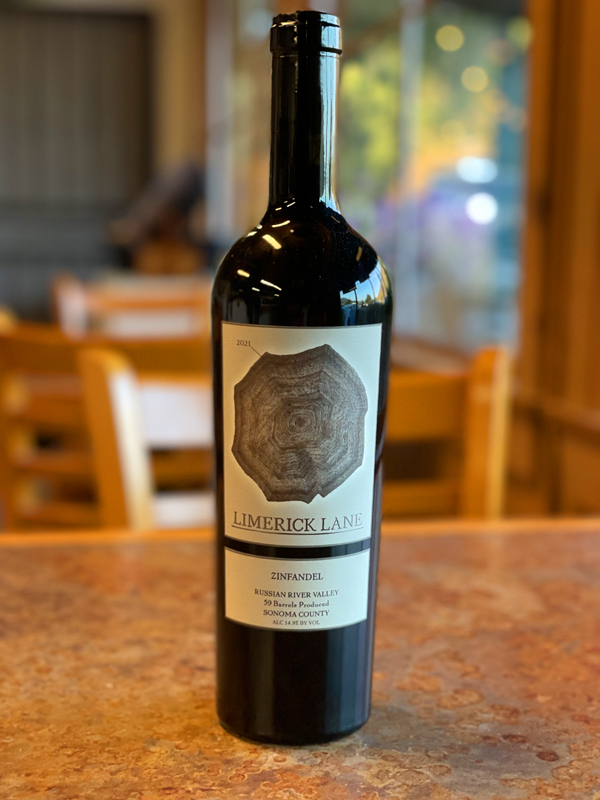
2021 Limerick Lane, Zinfandel, Russian River Valley AVA, Sonoma County.
Limerick Lane Winery winemaker Chris Pittenger says this wine, 100% Zinfandel, is a blend of estate-grown fruit and a handful of old vine sites from around the region, with the percentages of each site changing vintage to vintage to produce a wine of pleasure and balance, as this fine 2021 version shows off with deep and juicy fruit density, youthful freshness and underlying smooth tannic structure. This 2021 flagship wine from Limerick Lane is dark purple and garnet in the glass with dark berries and floral notes on the bouquet that leads to a full bodied palate of black raspberry, sweet plum, candied cherry and Mission fig fruits, as well as anise, sage, mocha, cedar and vanilla spice accents. Smoothly rich with almost creamy layering this wine avoids overt heaviness and the subtle grip makes it a good companion to hearty foods and especially meat dishes and hard cheeses, especially Basque versions. Karen Francis DeGolia, who has come back to be the owner again at Limerick Lane has made it her mission to push the winery forward and from what I’ve tasted things are looking good here and the current wines are an exciting set of offerings.
The Limerick Lane Winery is a 53-acre estate located in the northeast corner of Sonoma County’s Russian River Valley, that the winery says, could be its own sub-appellation as the topography and weather are so unique, making for distinctive wines and a great place to visit. In an appellation renowned for Pinot Noir and Chardonnay, Limerick Lane grows and produces a set of world-class Zinfandel and Rhone-style wines, comparing well with likes of Bedrock, Ridge, Carlisle Winery, Biale and Bucklin to name a few. The property sits west of Highway 101, as the winery continues, at the exact point within Sonoma County where soil, water levels, rocks, sunshine, wind, and fog meet, allowing deep concentration, ripe flavors and a nice balancing acidity and supple tannins. The wine, which is close to 100% de-stemmed and can see some native yeast fermentations, macerates and going through primary in large 4 ton open top fermenters, after which it is then aged in predominantly neutral French oak barrels, and matured anywhere between 12-16 months, depending on the vintage. This winery has been completely re-invented in the last decade and the wines have became big hits and this one is a great way to start exploring them.
($46 Est.) 92 Points, grapelive
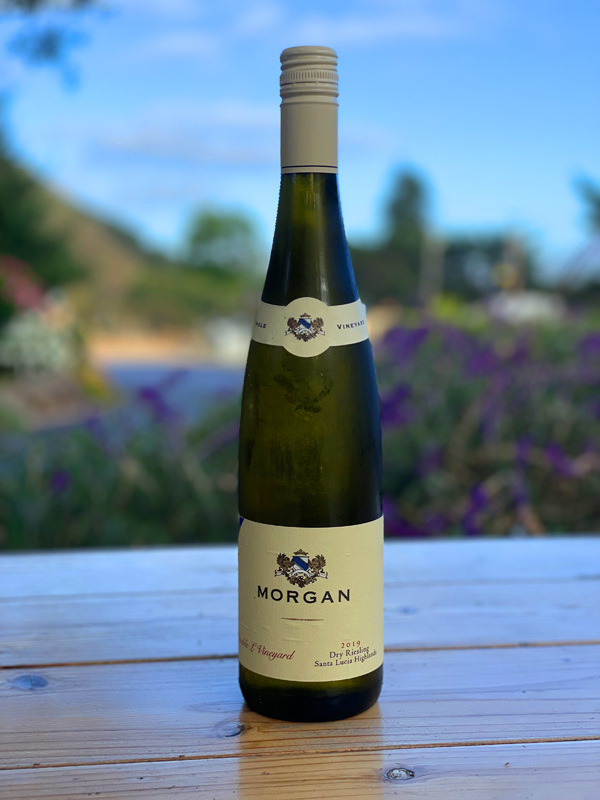
2019 Morgan Winery, Dry Riesling, Double L Vineyard, Santa Lucia Highlands.
Honestly I had planned on drinking this one ages ago, but I’m thrilled with how it has aged and it shines with true Riesling character and mineral intensity, as well as gaining an earthy and old school petrol fumes note that made this one a really hard guess at a recently blind tasting. Salty crisp and nicely aromatic, this lightly hued pale gold Riesling is bone dry and still pumps out tons of acidity, it is very much a Trocken style wine with zesty layers of tangerine, unripe peach, quince and mango fruits, along with wet stones, wild herbs, rosewater and verbena notes, in a tight lean package. Morgan Winery owner Dan Lee, his daughters, and winemaker Sam Smith, as mentioned in prior reviews, have raised their game here, with an outstanding lineup of wines and this very limited edition Dry Riesling Double L Vineyard is an absolutely gorgeous wine. The organic Double L Vineyard, as noted by the winery, is at the northern end of the Santa Lucia Highlands where the ultra-cool climate and porous, mountainside soils provide ideal conditions for growing world-class Riesling, as well as Chardonnay, Pinot Noir and even Northern Rhone style Syrah, which Smith has also taken to the next level.
This impressive 2019 vintage Dry Riesling bottling by Morgan Winery was from, as winemaker Sam Smith notes, grapes that were foot stomped and left on the skins for 18 hours, then whole-cluster pressed, which adds extract and intensity, preserving freshness and bright fruit character, with a cold fermentation in stainless steel tanks, after which Smith racked some of the juice to just two neutral French oak barrels to finish fermentation. That final bit in barrel lasted about a month, just getting the wine to dry, reducing any remaining residual sugar and then bottled before any malos, to retain bright and vivid acidity, while allowing the wine to gain a textural charm, and the results are amazing in glass. As mentioned, In recent years, California Riesling has truly come of age and competes well with any old world regions with many world class bottlings, as this Double L Estate Dry Riesling by Morgan shows. Examples by producers like Tatomer, Cobb, Reeve, Joyce, Desire Lines, Stirm, Union Sacre and Scribe to name a few as well as long time quality stalwarts Stony Hill, Casa Nuestra, Chateau Montelena and Smith-Madrone, are all very worthy wines to explore as well. This 2019 will be hard to impossible to find at this point, but in case anyone has some bottles put away, they will be happily rewarded when they twist the top here, I high recommend checking out the newer releases of Morgan’s Rieslings, both the dry version and the Kabinett level, slightly off dry classic.
($25 Est.) 93 Points, grapelive
2019 Conterno Fantino, Barolo DOCG “Castelletto Vigna Pressenda” Piedmonte, Italy.
The certified organic Vigna Pressenda Barolo 2019 by Conterno Fantino is beautiful pure Nebbiolo and a wine of significant power and length with gripping tannin and layers of macerated red berries, brandied cherry, damson plum and stony currant fruits, along with a chewy texture, savory and earthy elements, plus mountain herbs, orange peel and dried roses leading the way on the medium bodied palate. I hadn’t had these Conterno Fantino wines until recently, but am very impressed with the quality here, with the Barolo offerings, in the set of recently released 2019s, with the Vigna Del Gris, this Castelletto Vigna Pressenda and especially the Mosconi Vigna Ped being standouts. The nervy tension between the leathery earth and dense fruit core feels wonderfully controlled and connected throughout and the length seems to be endless, especially with air and food, I can see this Castelletto Vigna Pressenda aging extremely well for 10 to 15 years, even if 2019 doesn’t look like a collectors vintage, these Conterno Fantino wines are exceptions, I wish I could have tried the 2016s! According to the winery the Vigna Ped vineyard is located in Monforte d’Alba, and was planted in phases with some old vine blocks dating back to 1960, with others planted as late as1999, all with a southern exposure, set on a mixture of sand, silt and clay (over limestone bedrock), which explains the concentration of fruit and the elevation is close to 400 meters, allowing for cooling influences. The ruby/garnet Conterno Fantino Barolo Castelletto Vigna Pressenda does not disappoint, it has all the right stuff to seduce and reward the patient and in my case not so patient Nebbiolo fan, I look forward to following Conterno Fantino for years to come.
The Conterno Fantino winery, as noted in prior reviews, was founded in 1982 by Claudio Conterno and Guido Fantino, bringing two famous Piedmonte families together, creating a tour de force estate focusing primarily in crafting exclusive small lot Barolo bottlings that are made with the utmost respect for the land and nature. To those goals, the vineyards, as the winery explains, are all organically cultivated (as certified by CCPB) with holistic and green methods, to give each wine their own natural identity. Conterno Fantino has taken big steps to reduce their environmental impact, and they in 2008 the winery expansion utilized various technical improvements with the aim of energy conservation, such as solar panels, a geothermal system and finally, the use of wetland specifically set up for wastewater purification. To highlight this and traditions, the grapes are all hand tended and harvested with the team carefully sorting each cluster, after which the winery says they, to preserve the aromas of the vineyard, a spontaneous fermentation with indigenous yeasts is employed (no commercial yeast is used here), with each vineyard site done separately. For aging, Conterno Fantino carefully selects the wood for the maturing of the wines and uses a minimal amount of added sulfites. The Barolo wines, like this one are fermented and macerated exclusively in stainless steel horizontal fermenters for 12-15 days before being pressed to barrel, which is all French oak, where it was matured for two years in the wood and then another year plus in bottle before release. The 2019s are showing pretty nicely already and they are taut without being stark, opening up and revealing a generosity, floral dimension and lingering anise and cedar note, best decanted and served with some hearty proteins, but I love Nebbiolo, and this Conterno Fantino Vigna Pressenda (priced the best of the cru wines I tried), coming from a pedigreed cru, is the good stuff!
($85 Est.) 95 Points, grapelive
2017 Señorío de San Vicente “San Vicente” Rioja, San Vicente de la Sonsierra, Spain.
The San Vicente Rioja, one of the original rebels, is a single cru wine coming from La Canoca in the San Vicente de la Sonsierra of La Rioja with a special Tempranillo clonal selection (100% Tempranillo Peludo) that is extremely low yielding and terroir expressive. The palate is instantly recognizable as Rioja with pure Tempranillo character and lush mouthfeel showing off layers of blackberry, dark currant, plum and cherry fruits, sweet toasty cedary/vanilla scented oak, anise, tobacco leaf, dried flowers and earthy loam notes. The grapes, grown all practicing organic, sustainable and dry farmed with some certain selective biodynamic practices, and from spur-pruned goblet (trained) vines as well as high density trellises, for natural intensity. Calcareous clay soils are typical to the Sonsierra Riojana, these limestone rich clay soils are sandwiched between large slabs of lime-sandstone mother rock are great for the distinct terroir influence and flavors and the deep roots keep good acidity and balance in the wine. This higher elevation site sees a Continental climate with some heavy Atlantic influences that are moderated by the Sierra Cantabria range, making for ripe fruit concentration, but with exceptional balance and natural acidity, perfect for making serious age worthy wines. Lots of hand tending work goes on in the vineyard and care sorting for harvest, with no machines whatsoever. In the cellar, another rigorous sorting happens and 100% of the clusters are de-stemmed, but not crushed before going into the vats. The fermentation and cool maceration is carried out in 20,000L French oak vats (neutral) and is inoculated with a selected culture, that was isolated and captured from the family’s vineyards and cellars over the years. The powerful and concentrated San Vicente, that is best served with hearty food, is matured for close to 20 months in new barriques, which are a combination of 90% French and 10% American, with the wine, uniquely, being racked every four months, of which showcases the depth and luxurious richness in the wine.
The creation of the San Vicente Rioja, as the story goes, began In the early 1980’s, when Marcos and Miguel Angel Eguren, of Sierra Cantabria Rioja, requested that their father scour the family’s holdings of vineyards in San Vicente de la Sonsierra for the lowest yielding individual vines of Tempranillo. In 1985, the family planted the La Canoca single vineyard (Cru) in San Vicente to a massale (clonal) selection of these low yielding vines, which would be exclusively used for this Señorío de San Vicente label and this San Vicente bottling, as found here in this wine today. As the vineyard took shape, the vines all shared very similar ampelographic characteristics, including smaller berries, looser clusters, and a velvety bloom on the subsurface of the leaves, leading to its special identity as Tempranillo Peludo. The family was originally mocked for planting, what other farmers thought was a selection of their “worst vines.” But, when the first vintage of San Vicente was released to the public almost 10 years later they knew they had something really good. The family, which laughs now on reflection, endured more derision when the wine was priced above any Reserva(s) in the appellation, though many others have joined the party now. The wine was released without aging classification, thus becoming Rioja’s first single cru declassified wine. For lovers of the Eguren family’s wines, the San Vicente, they add, tends to elicit a special emotion, as it is one of Rioja’s first a premium cuvée that expresses a specific vineyard profile. Today, San Vicente is still an important modern classic, along with all (others) that it inspired within Rioja. This dark garnet 2017, which is current release in the States, very much expresses everything that is mentioned above and has loads of density, refined tannin and hints of Asian spices, making for stylish and age worthy Tempranillo. I had this one at a tasting of many fine Rioja efforts and it stood out, but as mentioned, it is much better with a full meal, especially lamb dishes. The San Vicente, along with Telmo Rodriguez’s Remelluri (Estate) Granja Nuestra and Muga’s Torre Muga are three Rioja’s I find impossible not to crave and I highly recommend them, all of them.
($60 Est.) 94 Points, grapelive
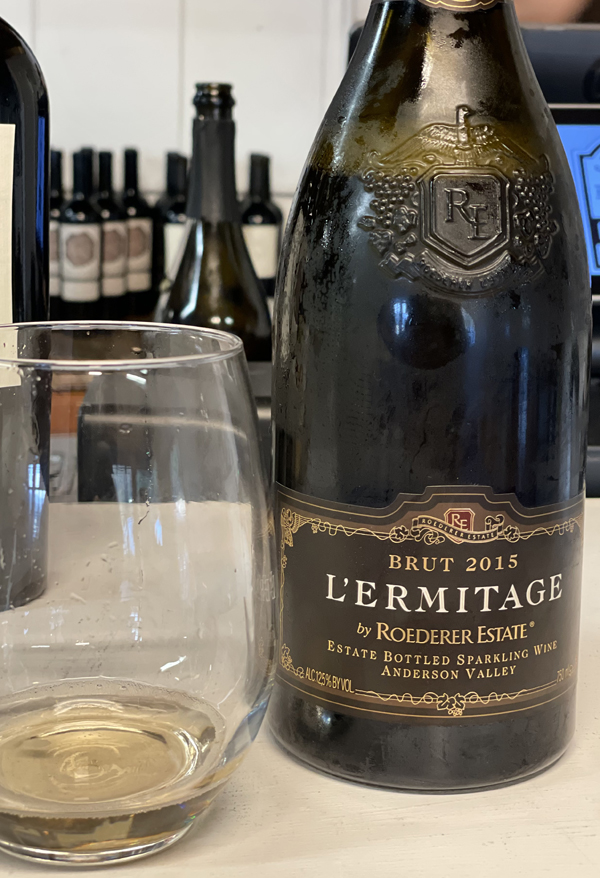
2015 Roederer Estate, L’Ermitage Brut, Vintage Sparkling Wine, Anderson Valley.
The 2015 L’Ermitage Brut vintage sparkling wine by Roederer Estate, which I recently enjoyed out of magnum, is drinking fabulously well and should age easily for another decade or more, this is an outstanding California Methode Champenoise wine with elegant and luxurious concentration, delicate energetic mousse and depth of flavor, on par with some of its highly acclaimed cousins in Reims! Beautiful layering of citrus, golden apple and pear fruits shines on the decedent palate along with clove spice, honey, mineral tones, wet stones, rosewater and toasty hazelnuts. The Roederer Estate employs an open lyre trellis system or high density plantation, that gives better ripening and fruit density, and they farm the vineyards organically and biodynamically to achieve high quality grapes and preserve the environment and promote soil heath. Roederer Estate produces its sparkling wines in the mentioned traditional French méthode traditionelle and adds some of their special oak-aged reserve wines to each blend, which adds to the complexity and richness here. For the wonderfully dry 2015 L’Ermitage Roederer Estate chose 52% Chardonnay and 48% Pinot Noir in this Cuvée, along with about 4.9% of aged reserve wine from the 2014, 2012 and 2010 vintages, all of which made for an almost perfect Tête de Cuvée, it will impress even the most jaded of Champagne lovers!
One of the first serious California bubbly, the L’Ermitage, has been made since 1989, it is Roederer Estate’s Tête de Cuvée and as the winery notes, comes to fruition only in exceptional years from pre-selected, estate-grown grapes. Roederer Estate, based in Anderson Valley dating back to 1982, says only the best lots are used to create a noble blend that allows for longer aging and produces a fine wine with elegance and finesse, which shows in this recent release of L’Ermitage. The winery says, the concept of the vintage L’Ermitage is the same one that is used in Champagne, like their famous Cristal bottlings at Louis Roederer, with only the best juice of the vintage is selected. These selections in the cellar are the most exceptional wines of the individual vintage, that allows Roederer Estate create a noble blend for the L’Ermitage Brut that allows for longer aging, and that produces a fine sparkling wine with elegance and finesse, as this 2015 shows. The wine for the dosage that was used or added to the L’Ermitage 2015 was a 2015 wine liquor that was itself aged for 6 years in a French oak cask. Following its disgorgement, L’Ermitage 2015 was aged an additional six months (minimum) on the cork prior to release, to be rewarding when it gets into the customers hands or glass. This 2015 is still the current release of L’Ermitage and easily found, making for a less pained search and I highly recommend this exceptional sparkler, it will bring plenty f pleasure and joy to the fast approaching Holiday season and will be great for any special or not so special occasion you might need it for.
($68 Est.) 95 Points, grapelive
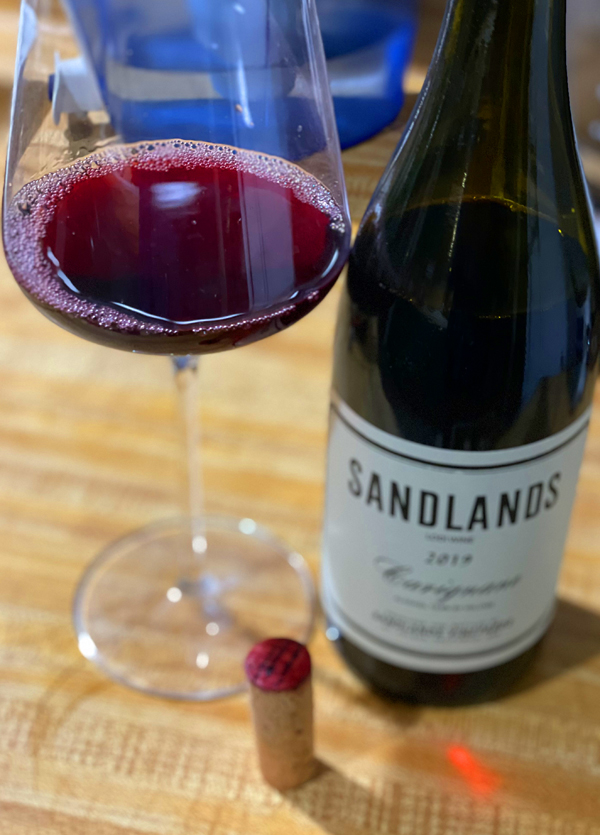
2019 Sandlands Vineyards, Carignane, Lodi, California.
The Lodi version of 100% Carignane from Tegan Passalacqua, winemaker at Sandlands Vineyards is a dark purply, but freshly styled wine with a profile that is not unlike a Zinfandel meets Cotes du Rhone that shows off a very quaffable personality and juicy ripe black fruits, spice, delicate earthiness and mineral tones. As I’ve said in my prior reviews, Carignane (or Carignan) is the main grape in the Corbieres region in France’s Languedoc, where you can find it in hearty reds and as a component in Rosé as well, it has a long history here in California, where it has long been part of field blends, usually picked and co-fermented with mixed blacks and as a part of heritage Zin blends. This medium bodied 2019 Lodi Carignane delivers supple tannins and is fully mature already with smooth layering of blackberry, currant, tangy plum, cranberry and cherry fruit, as well as hints of dark florals, cola bean, cedar, anise, sage and light savory elements, making for an easy wine to enjoy, especially with the low natural alcohol here, coming in at 12.9% and with its bright acidity. I have a few bottles of this value packed Carignane still, which I plan to enjoy in the near term as it is drinking beautifully right now and its heading into some secondary maturity with touches of tertiary notes emerging with time in the glass. Both this one and the Contra Costa version, which was a bit more flamboyant and maybe a bit more concentrated, comes from old vines, that are head-trained, dry-farmed and own rooted. I enjoyed this Lodi Carignane with a fresh basil topped pizza, but it will go with almost any dish you throw at it, and especially hard cheeses, wild mushrooms, pulled pork and or grilled meats.
Again as noted here in my reviews, and from the winery, Sandlands is the personal project of Turley Cellars head winemaker and vineyard manager Tegan and his wife Olivia Passalacqua. The line-up of Sandlands, as the Passalaqua’s add, encompasses many the forgotten classic California varieties, like this Carignane, plus Cinsault, Chenin Blanc, which is making a huge comeback and the extremely rare Mission grape, that are primarily grown on California’s decomposed granite (sand), from regions and vineyards that have been farmed for many generations, but have somehow, as Tegan puts it, remained the outliers of California viticulture. These vines are primarily old gnarly head-trained, dry-farmed and own rooted, with the vineyards Sandlands work with being sites that take us back to California’s roots. The wines here highlight the hardworking farmers of yesteryear and the honest and authentic wines of a different era, they pay tribute to the state’s fascinating history of rugged viticulture. Made using classic old school methods with lots of whole bunches, native yeast fermentation(s), with lots of gentle hands and feet being employed and aging or elevage being done in well seasoned (used) oak barrels. I know, these are unicorn wines and incredibly hard to get, but search them out, get on the mailing list and never miss a chance to enjoy them with friends, they are worth it! Carignane is a really compelling grape and I have been really thrilled by what this new generation of winemakers are doing with this grape here in California, especially in the wines of Ridge Vineyards, Broc Cellars, Liocco, Martha Stroumen, Desire Lines Wine Co., and in particularly here at Sandlands, keep an eye out for these tasty versions.
($28 Est.) 90 Points, grapelive
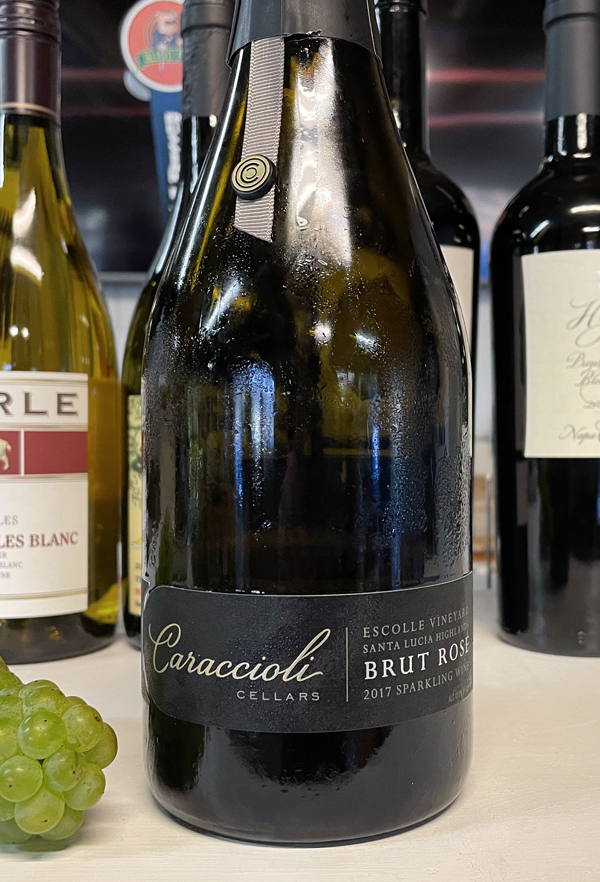
2017 Caraccioli Cellars, Sparkling Brut Rosé, Escolle Vineyard, Santa Lucia Highlands.
It’s hard not to love the Caraccioli Escolle Vineyard Sparkling wines, especially this divine recent release 2017 Brut Rosé that is absolutely delicious with plenty of verve and tension, showing off an elegancy and vibrant mousse, racy citrusy fruit, a touch of strawberry and a joyous yeasty character, making for an admirable minerally dry Champagne style bubbly that is thrilling in the glass. The Caraccioli family started planting the 124 acre Escolle Vineyard, named after the historic local legend Honoré Escolle, in 2008, while they sourced grapes to make their early wines, waiting patiently until the estate vineyard, planted mainly to Chardonnay and Pinot Noir with a dizzying number of blocks and clones, which have now came online here, plus some very exciting Gamay too. Located in the cool northern corner of the AVA , set on decomposed granite based sandy loams with cold wind always blowing down off the Monterey Bay, all making it a place that provides a long growing season and keeps vibrant acidity in the grapes that is the life’s blood of serious Sparkling wines, which is the main focus of the winery. With the help of the late Michel Salgues, who had worked for Champagne house Louis Roderer for most of his career, including the last nineteen at Roederer Estate in Anderson Valley, where he was the founding winemaker, Scott Caraccioli quickly gained a solid reputation for his grower producer style bubbly, with wines like this. He is now considered one of the best producers in California of Champagne method sparkling wines, which follow a very traditional regime from the vines to the bottle, with early picks to long lees aging on these elegant and lively wines.
The Caraccioli Champagne style sparkling wines first sees a light pressing of the cool and fresh juice in small lots, with the winery noted that they do 120 gallons (well below what the law in Champagne mandates: 150-180gl.) at a time. The Cuvée and Rosé, as mentioned before, see no skin contact and mostly gets some stainless, though some of the lots are fermented in barriques, with all of the primary fermentation(s) being spontaneous, done with ambient yeasts. The Caraccioli Brut Rosé undergoes the same processes and initial blend of 60% Chardonnay and 40% Pinot Noir, as their Brut Cuvée. The difference in the Rosé is that Scott hand picks of a barrel of Pinot Noir still wine to blend into the final Rosé to give this bottling its delicate pink hue. To enhance complexity and depth the young wine is barreled down-post fermentation for a few months, taking as Caraccioli explains, a little rest before blending, though in a few years there is some stainless aged juice. The Caraccioli bubbly sees a long élevage, as mentioned, with a full four years on the lees, and then they are held back after disgorgement, under cork, for about two more years before release. This fresh and steely 2017 vintage Brut Rosé, with its delicate and very subtle pinkish/salmon hue and whiff of rosewater, really is exceptional stuff, with vineyard driven terroir and class, it delivers on its promise and exceeds expectations and should not be overlooked when shopping for grower fizz, it is worth every penny and a very distinctive package for any and or special occasions. I recent years too, I have very much enjoyed the still wines at Caraccioli, with their Hilltop Pinot Noir and the Gamay based wines being particular favorites and cannot wait to what the future brings here.
($57 Est.) 94 Points, grapelive
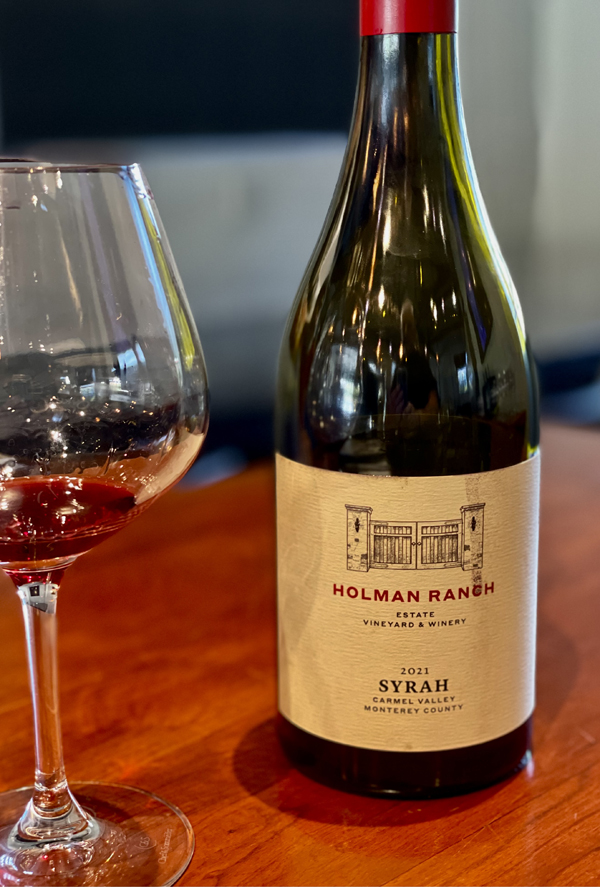
2021 Holman Ranch Vineyards & Winery, Syrah, Estate Grown, Carmel Valley AVA, Monterey County.
The wines here at Holman Ranch have really become compelling, especially with their 2018 and 2019 offerings, as well as the brand new release of Syrah, which is from the 2021 vintage, which is looking fantastic here already with classic Northern Rhone character showing through, much in the style of a fine aromatic and dark fruited Saint-Joseph. This wine, made by Greg and Chris Vita, from 100% estate grown grapes and partial whole bunches and stems soars in the glass with crushed violets, black plum and earthy spices leading the way on the medium bodied and supple palate that reveals blackberry, blueberry, the mentioned plum and kirsch as well as peppercorns, mocha, anise, black olive and tarry camphor notes. With a delicate savory crunch, meatiness and hints of porcini there is plenty of complexity to go with the ripe fruit personality and at just about 14% natural alcohol the Holman Syrah is nicely balanced and has elegant tannin structure, making it a lovely wine with food, impressive stuff. The collection here, which has really elevated in quality, is mainly available only to members and walk ins to the tasting room, but seriously worth checking out, if you get the chance.
As noted recently in my latest reviews of their Pinot Noir, The Holman Ranch Winery makes a very focused a range of wines, mainly Pinot Noirs, though including this very limited Estate Syrah, under the guidance of the father and son winemaking team Greg and Cris Vita, which demonstrate the unique characteristics of this hillside property in Carmel Valley, including its rocky soils and coastal climate. The root-stock(s) and the mix of California heritage and Dijon clones for the Pinots, and the combination of 471 and 174 clones for the Syrah, are carefully selected to make the most expressive and terroir distinct wines, with the Pinots seeing the full range of seven clones, including Calera, Pommard, 828, 667, 777, 115 and Swan. The Ranch employs organic and sustainable farming practices, avoiding the use of any pesticides or herbicides, to preserve the environment and nature of the site and encourage small yields to enhance richness and depth here. The Holman Ranch Pinots, and their Syrah, sees stainless steel maceration and fermentation, using 30% whole cluster, with carefully managed temperature control and extraction before being gently pressed, in this case, to well used, almost completely neutral, French oak 228L barriques to age, maturing for 11 months before bottling. I am thrilled with the lineup here, from the no skin contact Brut Rosé bubbly to this opulent, but focused Syrah, plus the prior mentioned Pinots, there’s a lot to admire here and it is exciting to see Carmel Valley wines taking it to the next level.
($62 Est.) 93 Points, grapelive
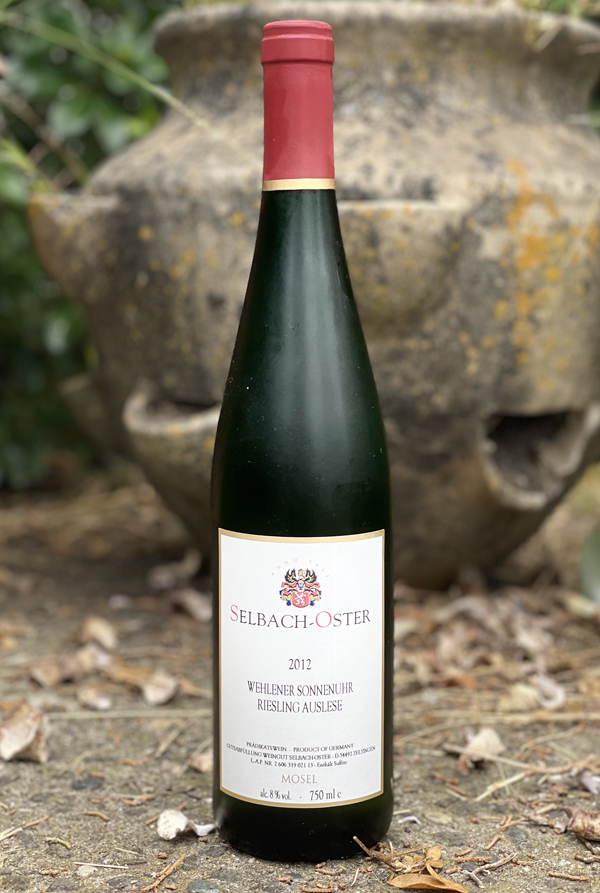
2012 Weingut Selbach-Oster, Riesling Auslese, Wehlener Sonnenuhr, Mosel Germany.
The lush deeply golden hued 2012 Wehlener Sonnenuhr Auslese by Selbach-Oster is at a great stage already with plenty of maturity and supple layering of fruit along with exceptional purity delivering a classic array of flavors, including ripe apricot, apple, dried pineapple, lemon and honeyed orange citrus. Selbach has long crafted some of the greatest Auslese wines from prime sites, especially the Zeltingen, and Wehlener Vineyards, such as Himmelreich, Schlossberg and Sonnenuhr, as seen here in this gorgeous version, all set on blue Devonian slate, on very steep slopes and these historic vineyards are considered some of the very best terroirs in Germany. They were classified in the highest categories of the 1868 vineyard classification, which was started by the French and finished and published by the Prussians, as well as now by the VDP, easily recognized as Grand Crus. Typically, for Selbach, the Auslese is selected by successive passes through the vineyard, as they pick fruit for Kabinett and Spätlese first and leaving the healthiest berries on the vine to concentrate, to be sure the highest quality standards apply for the Auslese. Selbach’s approach in winemaking is minimal, Johannes, who is one of Germany’s finest vignerons, and his Sebastian, now helping in the cellar, allow wines to ferment naturally, as slow or as complete as manifest, resulting in more dry wines in some vintages and more fruity wines in others. The lineup at Selbach-Oster is full of very compelling Rieslings, and I am in particular very much drawn to their Spatlese wines, as well as the old vine Feinherbs, which drink a bit drier in style and the set of single parcel wines, especially the Rotlay (in the Zeltingen Sonnenuhr, rich in iron ore), the Schmitt (in the Zeltingen Schlossberg), and the Anrecht (in the Zeltingen Himmelreich), which are picked at Auslese levels and fermented almost dry.
Today, Johannes Selbach and his wife Barbara, with the help of son Sebastian, manage their vineyards and this Mosel based winery with passion and respect for the estate’s long held traditions. A substantial portion their 24 hectares of vines are on their original ungrafted rootstocks, in the Zeltinger and the Wehlener, Schlossberg, and Sonnenuhr, including also Graacher and Bernkasteler too. These vineyards, especially where this wine came from, with the mentioned Devonian slate soils, they are on a steep, contiguous slope facing south-south west and represent some of the most prestigious sites in all of the Middle Mosel, in fact, as the winery notes, 85% of Selbach’s vines are on these incredible steep slopes that contributes the intensity and complexity of the wines. The Selbach family’s heritage in the wine business dates to the 1600s when Selbach’s ancestors used to ship wines down the Mosel in their own ships, with the wines being carried in oak barrels made by cooper Matthias Oster, the great-grandfather, as the winery adds, on the paternal side of the family. The family over time became both a top estate producer, crafting some of the region’s best wines, and also as a négociant that helped smaller growers in the local area. Johannes Selbach, like his late father Hans, as mentioned above, and now his son Sebastian, has continued the use of traditional 1000L oak fuders in the cellar, bringing in these new large casks every few years. Vinification is carried out in a combination of fuder and stainless steel, in the mentioned, hands-off manner with no fining, and with wild yeasts or Sponti. The focus is always on meticulous work in the vineyard, employing organic and sustainable farming, to bring in highest quality grapes, as this wine, coming from vines directly next to the sundial that gives this site its name, shows perfectly. In 2016 Christian Vogt, former winemaker at Karthauserhof for many years, was added even more talent to the cellar, and I highly recommend exploring the full range of wines here, all of which are outstanding, great with certain food choices, and fabulous values.
($40 Est.) 94 Points, grapelive
Grapelive.com – Wine Reviews – September 2023
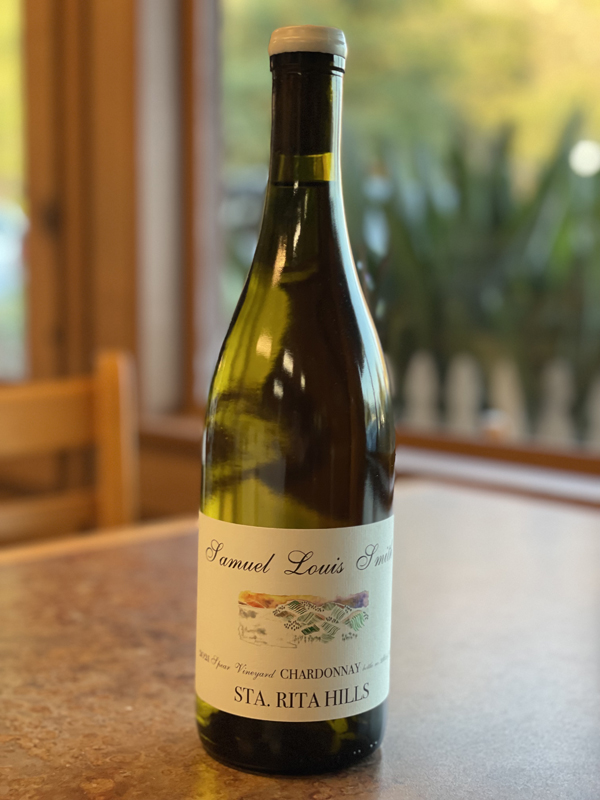
2021 Samuel Louis Smith, Chardonnay, Spear Vineyard, Sta. Rita Hills.
The crisply focused and pale gold 2021 version of Spear Vineyard Chardonnay from Samuel Louis Smith is a brilliant effort that combines elegant richness and exciting tension with beautiful aromatics, lifting acidity and gorgeous depth, perfectly capturing the vintage and place. The palate is nicely layered with apple, pear, peach and lemony citrus fruits along with clove spice and hazelnut accented, a light sense of oak and fine mineral tones, making for an exceptional stony Chardonnay. Sam Smith, who is also the head winemaker at Monterey’s Morgan Winery, is a very talented winemaker who is becoming a big star on the central coast, as I’ve said in prior reviews, with his 2020 and soon to be released 2021vintages already getting a lot of attention. California Chardonnay is now seeing a renaissance, with many stylish examples, like this Samuel Louis Smith Spear Vineyard, as well as other exciting Chards from Kutch, Arnot Roberts, Cerritas, Greg Brewer’s Diatom, Whitcraft, Beauregard’s Bald Mountain, The Hilt Estate, Tyler and Big Basin’s Coast View, to name just a few. The Samuel Louis Smith Chardonnays are 100% barrel fermented with native yeasts, with both primary and full malos allowed to go (through) naturally. Usually Smith gives the Chard nine months of elevage in a combination of new and used French oak with 15% to 20% new, 20% second-fill, and close to 65% neutral wood employed, making it an exceptionally pure, transparent and textured wine.
The Spear Vineyard, as noted here in prior reviews, is already highly regarded and the wines coming from here are wonderfully balanced, have great depth and lovely aromatics, making it one of the Sta. Rita Hill’s prime locations and Sam’s Chardonnay is proof positive of the greatness here and its future potential. Planted in 2014, Spear has Pinot Noir and Chardonnay primarily in the ground and it is farmed organically by Ofer Shepher, who deserves much praise for his efforts. Spear’s northern border, as Smith notes, and steep north-facing slopes hug Highway 246, giving the site a cooler tone and a long growing season that allows for complete ripeness with low sugars. Smith also notes that Spear’s varied elevation reaches 900 feet, getting some of the coldest blasts of Ocean air in the region and soils are mainly comprised of marine sedimentary clay and sand, meaning they are well drained, but provide a good defense to drought conditions, important for vine health and quality as this wine proves again. I highly recommend joining the mailing list here, to get these limited production and handcrafted wines, and while most people with be racing to get Smith’s Pinot Noir, Syrah and Gamay offerings, I suggest not missing out on the Chardonnays, they are thrilling efforts, especially this bottling, which continues to be my favorite in the lineup. Smith who’s travelled many times to France, is inspired by old world wines and has gained a lot of insight into the classics from northern Rhone, Burgundy and more recently Champagne and is working on a set of Sparkling wines, which I am excited about too.
($39 Est.) 95 Points, grapelive
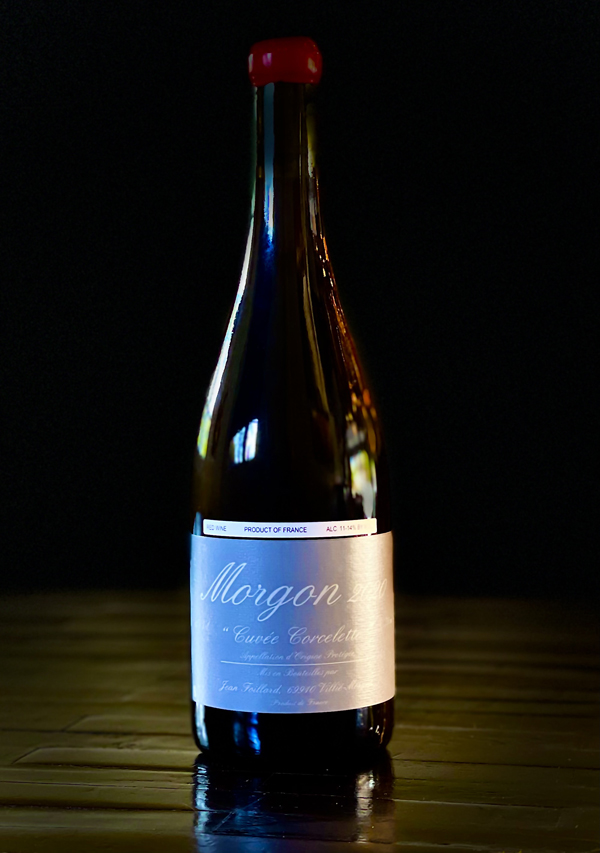
2020 Domaine Jean Foillard, Morgon “Cuvée Corcelette” Cru Beaujolais, France.
The 2020 vintage is turning out to be close in style to the legendary 2009 vintage, which as the time was one of the greatest for Cru Beaujolais in our generation with this exotic Foillard Cuvée Corcelette Morgon showing incredible opulence of fruit, perfume and length. The ripe flavors feel luxurious on the medium bodied palate with layers of blackberry, plum, pomegranate and sweet cherry fruits, along with pretty violets, walnut oil, anise, a light savory whole cluster and stem note and a sultry earthiness. The acidity is there, but well hidden in the background, as are the tannins which are satiny, making for a very textural Gamay. As I’ve stated many, many times here in my reviews of Cru Beaujolais, Foillard’s Morgon(s) are masterpieces and drink on par with much more expensive Burgundy wines, as this vintage of his Cuvée Corcelette does with a flamboyant air. This is wine takes the once unheralded and less loved Gamay grape to new heights of pleasure and pays a great tribute to the legendary Jules Chauvet, who influenced Foillard and many others, and who sought to bring traditional natural wine growing and winemaking back to this region generations ago. For this Cuvée Corcelette Foillard employs his traditional, whole cluster fermentation that usually lasts (on the skins) for close to three, sometimes four weeks before gentle pressing and racking to cask where the Gamay is matured for between 6-9 months, depending on the vintage, in a mix of used old oak barrels, ex-Burgundy and one big 30-hectoliter foudre.
Jean Foillard took over his family’s domaine in 1980 and quickly gained a reputation for making exotically beautiful Gamay, mostly from old vines higher up in the Morgon zone and especially in the Cote du Py with vines that are around 90 years old and have Schist, the classic Granite and Manganese, all of which make for a special terroir. Jean began, early on in his career, to follow the teachings of Jules Chauvet, a traditionalist who, as famed importer Kermit Lynch says, defied everything that the more commercial brands were touting in the region at the time. Foillard along with three other local vignerons, Marcel Lapierre, Jean-Paul Thévenet, and Guy Breton, also joined in on this natural wine movement, long before the modern evolution of the term. This Gang of Four, as famous importer Kermit Lynch christened them, set about a return to the old practices of organic viticulture and vinification, as the mentioned Jules Chauvet championed, which called whole cluster and indigenous yeast fermentation, though starting with the use of small yielding old vines, never using synthetic herbicides or pesticides, harvesting late with the healthiest grapes and adding only minimal doses of sulfur dioxide or none at all. Such was the success of these guys, that now that seems pretty normal and even better these wines age majestically and are highly coveted by collectors. In modern times, we are seeing the next generation emerge, with Foillard’s son Alex, already a star, making some fantastic wines, along with the likes of the Lapierre, Thevenet and Dutraive kids that have taken over responsibility of their family’s domaines, making for lots of excitement here in Beaujolais, and wines like this deep garnet pure Gamay sets a high bar.
($55 Est.) 95 Points, grapelive
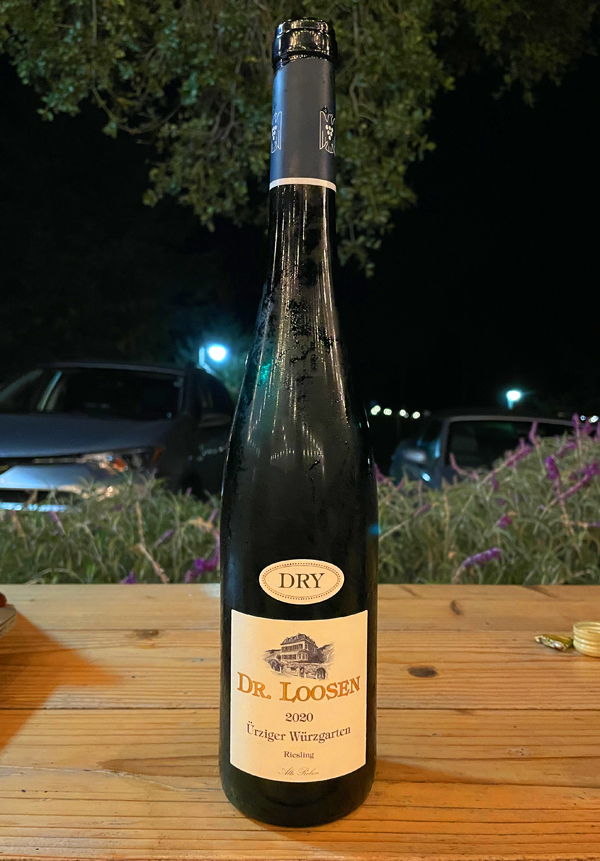
2020 Weingut Dr. Loosen, Riesling Trocken, Ürziger Würzgarten VDP Grosse Gewächs, Alte Reben, Mosel, Germany.
Following the outstanding 2015 Reserve Ürziger Würzgarten GG I had recently, this gorgeous 2020 Dr. Loosen Ürziger Würzgarten GG dry Riesling showed brilliantly in a Riesling tasting this month with lovely, distinctive and expressive terroir driven character shinning through from start to finish. Slatey mineral tones, crisp acidity and some exotic spices adds to the core of zesty citrus, white peach and tart green apple fruits, along with saline infused wet flint, rosewater, a touch of almond and tropical essences, that provides this wine with an extra degree of complexity. This GG is bone dry, but still wonderfully generous on the medium bodied palate and gains textural substance with air, having a presence in the glass that is very serious like a Grand Cru Chablis. Grosses Gewächs (GG) means “great growth” and is the designation for an estate’s best dry wine from a Grosse Lage (grand cru) vineyard. This Ürziger Würzgarten Riesling GG is, as the winery notes, from a special parcel of old vines (“Alte Reben”) that lies directly behind the village and is still referred to by its historical name, Urglück, these vines are about 120 years old and are sustainably farmed to allow for concentration, transparency and crystalline purity.
The Ürziger Würzgarten, the “Spice Garden” Grosses Gewachs wine sees the exclusive use of un-grafted historic old vines, from which Loosen produces this great Riesling, they are up to 120 years old and located in a plots which rise up from behind the Village in the heart of the Würzgarten and set on this vineyard’s famous red volcanic veined soils, sandstone and weathered slate, that gives this wine its distinctive delicate aromas, generous fruit and exotic spices. As mentioned often, legendary Ernst Loosen, who took control of his family’s over 200 hundred year old Mosel estate in 1988, with incredible steep slate vineyards of un-grafted old Riesling vines, makes an incredible collection of traditional wines from Kabinett to Auslese, as well as his Dry offerings, like this one, from some of the Mosel’s most coveted sites. The Grand Cru GG’s are fermented with indigenous yeasts in traditional 1,000-liter Fuder casks and are matured on the full lees for 12 months with no bâtonnage, making for expressive, stylish and profound wines, with this Dry Ürziger Würzgarten GG being one of my absolute favorites. Again, there is a lot to like here and these 2020s are brilliant wines and this wine in particular will be very rewarding for many years to come, I highly recommend exploring the whole set of offerings from Dr. Loosen, they are impeccably crafted and offer tons of personality and value across the board.
($50 Est.) 95 Points, grapelive
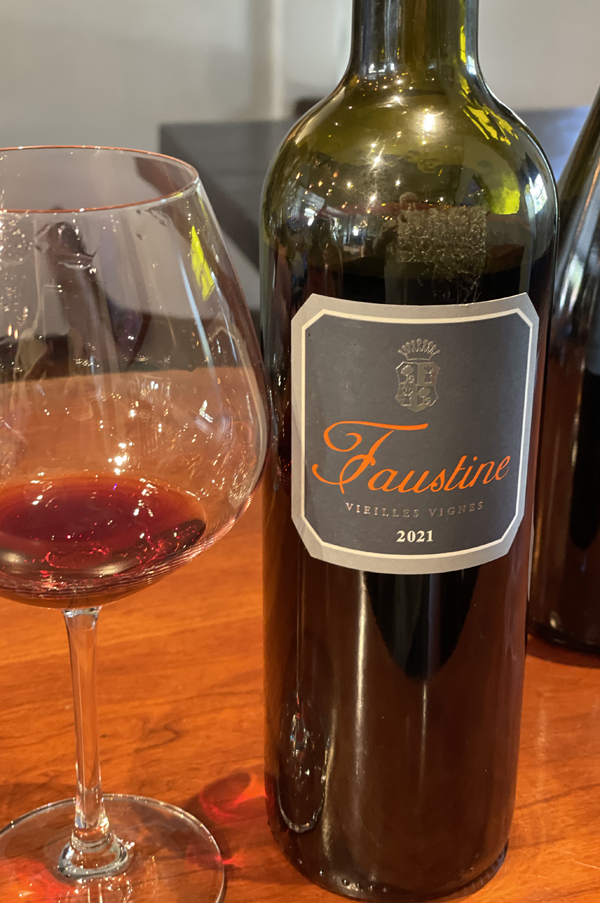
2021 Domaine Comte Abbatucci, Cuvée Faustine” Vin de France Rouge, Corsica, France.
The beautifully textured and aromatic Faustine Rouge, a blend of Corsica’s now native and most common grapes, 70% Sciaccarellu and 30% Niellucciu, is medium bodied, deep garnet hued and ultra clean wine with pretty layers of black cherry, red currant, plum and wild berry fruits, a touch of stony minerality, rose petals, orange tea, spicy cigar wrapper and warm earth. The Faustine lineup is Abbatucci’s fine entry level estate bottlings, with this wine, which has Vieilles Vignes on the label, comes from vines that range up to just shy of 65 years and are set on the Ajaccio region’s almost pure granite soils. The grapes, Sciaccarellu, originally Etruscan and the same as Mammolo, still found today in Tuscan and mostly in Montipulciano and is mostly a blending, has found a welcoming home here in Corsica, where it shines, even when a solo varietal, and Niellucciu, which is the same grape as Sangiovese, has also been on the Island a long time and has gone native. It is thought that centuries ago, pre-Roman times, that the Etruscans came to Corsica and Sardinia to learn ancient metal working and traded with the islands and may have brought both varietals to Corsica. This wine just gets silkier and more striking with air and especially with food, its transparent flavors going wonderfully with an array of hearty dishes. This wine was made using just stainless steel and cement tanks, no wood was needed, with gentle handling of the grapes, which were macerated and fermented separately, then aged for just 6 to 8 months usually before being blend in tank, settled and bottled, to preserve freshness. I’ve reviewed this Cuvée Faustine and its sister offerings that include an old vine 100% Vermentino or Vermentinu as they call it here, which is as brilliant as it gets, and a gorgeous steely crisp Rosé, which is made from 90% Sciaccarellu and 10% Barbarossa, another ancient grape found here.
Jean-Charles Abbatucci, one of the most eccentric and most praised vignerons on Corsica comes from Island nobility, he’s the ancestor of his namesake Jean-Charles Abbatucci, a famous general under Napoléon Bonaparte and a hero of the French revolution, runs an all biodynamic estate just south of Ajaccio, making some of the most intriguing wines you ever taste. Abbatucci’s almost equally famous importer Kermit Lynch explains that Jean-Charles farms, what he calls a pristine poly-culture ecosystem, that comes complete with herds of sheep foraging through his vines, groves of olive trees on ancient terraces, and large swaths of untouched forests, all of which along with precise winemaking imparts a true sense of terroir and varietal character, though most of the wines are unique blends, hence the Vin de France rather than regional labeling. His vines, Kermit adds, come from cuttings of indigenous grapes, sourced decades ago high up in the isolated and mountainous interior of the island and from elderly peasant farmers, which has effectively saved several native varieties (or clones) from extinction. To keep his vines happy, the mentioned eccentric Jean-Charles is known to drive his tractor out to his vineyards and play traditional Corsican polyphonic songs or native music over loudspeakers for their benefit, and the results in the wines makes me hope he continues this practice. The upper end bottlings at Abbatucci are outrageously good and uniquely stunning and wildly expressive because of the rarity of the production, as well as demand, they include white and red offerings with varietals you’ll probably only ever taste in these wines, including Carcajolu Biancu, Paga Debiti, Riminese, Rossola Brandica and Biancone in white grapes, as well as Carcajolu-Neru (from Sardinia), Montanaccia, Morescono, Morescola and Aleatico (from Greece) in red grapes. If you’ve not had Abbatucci and Corsican wines, I highly recommend you try them, this Cuvée Faustine is a great wine to start with!
($42 Est.) 93 Points, grapelive
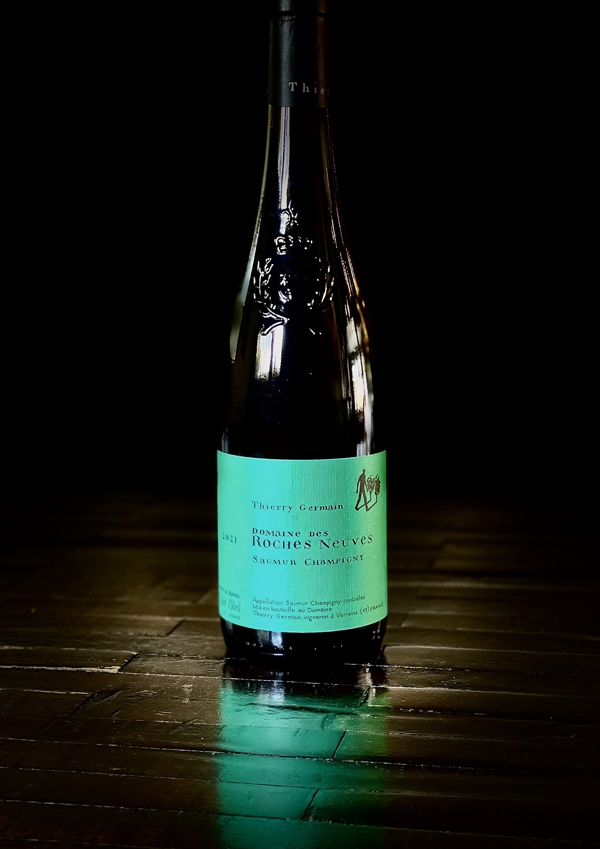
2021 Thierry Germain – Domaine des Roches Neuves, Saumur Champigny, Cuvée Domaine, Loire Valley, France.
The latest 2021 releases from Thierry Germain, one of the Loire Valley’s most exciting producers, are traditional and classic efforts, with this 2021 Cuvée Domaine Saumur Champigny Rouge, 100% organic Cabernet Franc, showing beautiful right away with lovely aromatics, fresh acidity, bright red fruits, mineral tones and savory spice. This wine comes from all estate vines, farmed using biodynamic methods, which range from 4 to 70 years old and are set on a mix of sand, clay and the famous chalky tuffeau limestone, which imparts a terroir influence on the wines. The palate is lean and crisp, but shows off red berry, plum, currant, cranberry and cherry fruits with a pretty lighter body, along with a hint of bell pepper, cinnamon, anise and earthy stony elements. This is a highly quaffable Cab Franc, with a ruby/purple and garnet color and a delicately floral bouquet, that is most rewarding with food, that allows for a richer feel and a bit more depth. This bottling from Domaine des Roches Neuves was made using 100% de-stemed grapes that see a stainless steel fermentation with a gentle maceration and light pump-overs lasting about 10 days before pressing to a combination of stainless vats and neutral large wood tanks where it ages a very short time on the fine lees, just about 4 months without any addition of sulfur, to preserve its natural freshness.
Thierry Germain, a Bordeaux native who relocated to the Loire about 30 years ago and soon fell under the spell of his spiritual father, the legendary Charly Foucault of Clos Rougeard, who influenced Germain’s wines and vines, converting his entire domaine, which he founded in 1992, to biodynamic viticulture, helping him to become one of the region’s super stars. Again, as mentioned in my prior reviews, Kermit Lynch, the famous importer, says that Thierry Germain’s Domaine Roches Neuves has vines, that are old, wise, and vibrantly healthy, thanks to Thierry’s biodynamic viticulture and fantastic attention to detail in the vineyards and in the cellar. Lynch goes on, adding that, Roches Neuves, whose vineyards are planted in the Saumur (Blanc) and Saumur-Champigny (Rouge) appellations, has rightfully become one of the greatest examples of high achievement in biodynamic vine growing in France. This puts him up there with the greats, that Kermit also imports, like Abbatucci in Corsica, Ganevat in the Jura and Domaine Ostertag in Alsace. Thierry Germain’s total dedication to site specific wines, some of the most distinctive Loire wines are hand-crafted from Cabernet Franc and Chenin Blanc grapes, which Kermit calls his “parcellaires,” they are very noteworthy offerings, some of the most exciting wines in the Loire Valley today, all of which I totally agree with. As I’ve said, I love these Germain wines, especially the Saumur-Champigny “Roche” (blue label) and this one, which are both exceptional values, along with Thierry’s top tier wines, with his profound Saumur-Champigny “Mémoires” and Saumur-Champigny “Marginale” being two that should not be missed.
($32 Est.) 91 Points, grapelive
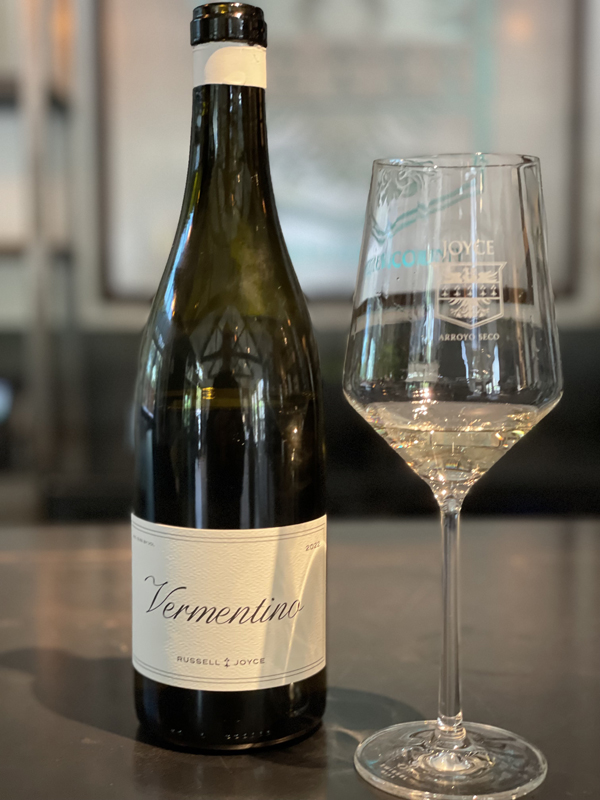
2022 Russell Joyce, Vermentino, Cedar Lane Vineyard, Arroyo Seco AVA, Monterey County.
The 2022 Russell Joyce personal collection Vermentino is an exceptionally crisp and stony white wine, that reminds me very much of Sancerre, with its edgy gooseberry, lemon/lime, wild tart peach and muskmelon fruits, as well as the wet rock, bitter almond, snappy herbs and salty character. This steely effort really shows some of range of this Mediterranean grape, which can be either opulently textural, though with good acidity or bright, racy and Riesling like, usually depending on its pick dates, sugar levels and how it’s made. Consisting of just over 18,000 acres the Arroyo Seco AVA is one of the smallest AVAs in California, but it has taken on a more important status in recent years, after being a very sleepy region since some of the vines were planted here by the famous Mirassou family in 1961, over two decades before the region received its AVA status. Named for its unique geographic features of an ancient waterway named “Arroyo Seco” which was a seasonal creek that brought rain water and snowmelt from what we now call the Santa Lucia Mountains and the Los Padres National Forrest to the Salinas Valley. Over the millenniums the pressure of this natural water-release created a diverse geography by dumping hundreds of thousands of rocks here and filling a deep subterranean aquifer with fresh water. The original appellation cited this unique terrain that formed the Arroyo Seco area as the distinct features that sets it apart and was the basis of the foundation of AVA’s boundaries. Joyce, known for his value priced Submarine Canyon Pinot Noir and Chardonnay, along with his Gamay offerings, does a nice set of alternative whites, like this Vermentino, as well as Chenin Blanc and Albarino
The Vermentino grapes for Joyce’s almost electric shock dry wine were harvested in idea cool temperatures from Mark Chesebro’s Cedar Lane Vineyard in the Arroyo Seco AVA, just south of the Santa Lucia Highlands bench. This AVA, one of Monterey’s oldest, was officially recognized in 1983, and is well known for having a lengthy growing season, giving ripe fruit, but with loads of energy, as the grapes retain lots of natural acidity. The strong daily winds that bring cool fog from the Monterey Bay, as seen in the SLH as well, as winemaker Russell Joyce explains, force the grapes to spend more time on the vine building flavor and complexity, for which his wines, like this one, are noted for. Extremely rocky well-drained alluvial soils are, as he continues, the base for creating wines processing a signature freshness and minerality. This terroir, at Cedar Lane in Arroyo Seco, with its combination of sand, granite, and shale loam soils, along with, as the winery adds, with the ever present marine influence, helps provide the perfect conditions for growing Vermentino, especially when, as I (or you) compare it to the similar conditions in the places that make for distinct versions of this grape, like Sardinia, Corsica and Liguria. This 2022 Vermentino, which was made to be zesty fresh and enjoyed in its youth, does open up with air gaining some light white flower and a bit of texture, but it stays on learner side and begs for lighter cuisine, with oysters, clams, sole and goat cheeses being ideal choices. Joyce prefers vibrancy and less oak on his white wines and this wine stays very faithful to that style, earlier picks help with that, and the lively personality, a laser like focus, plus the lower alcohol, increases the enjoyment with the food.
($30 Est.) 91 Points, grapelive
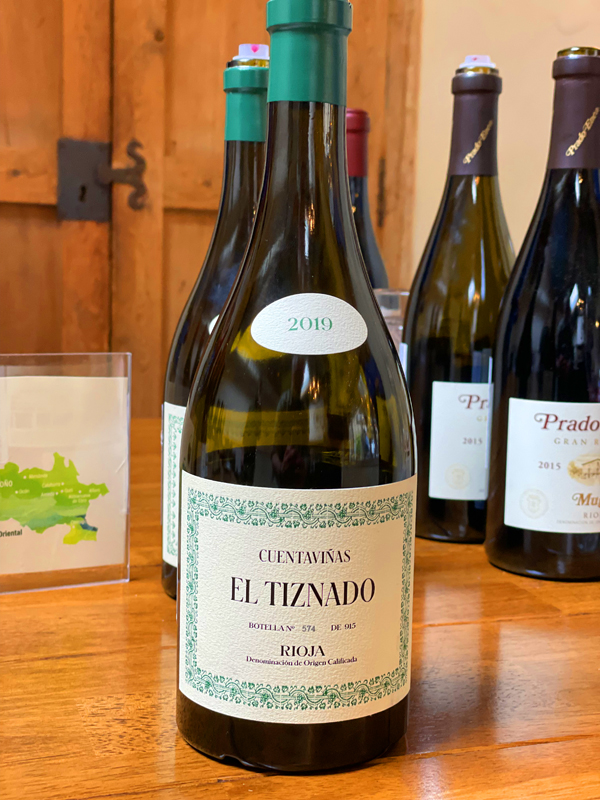
2019 Cuentaviñas, El Tiznado, Rioja, Spain.
Cuentaviñas by the famous Eguren family in Rioja is a new authentic, and expensive, collection of native varietal wines from unique old vine parcels, like this 100% Tempranillo El Tiznado bottling, the deepest and most perfumed of the wines I’ve tasted so far with black cherry, plum, briar accented marionberry and currant fruits, as well as savory tobacco leaf, allspice, sweet wood notes, subtle herbs de Provence and mineral tones. There’s luxurious toast oak feel, but held in check by good concentration of fruit and firm tannins, plus a cut natural acidity, making for a well rounded experience on the medium/full palate. All the wines of Cuentaviñas are from organic grapes and holistic farming practices with small yields and heightened acidity to make these gorgeous and finely balanced wines. most powerful and structured of the Cuentaviñas wines, El Tiznado, the winery says marries the power of classic Rioja with a line of fresh elegance and minerality inherent to Eduardo Eguren’s wines. These Goblet trained vines, set on uncommon sandy soils with a stained (“tiznados” in Spanish) color, by ferric oxides, hence the name of this wine. This poor soil, the winery explains, imbues the wine with a blacker fruit character and an imposing and balanced structure. The south-west orientation, works well to make for wines of depth and balance, with this El Hoyo Vineyard located in the quarry area of San Vicente de la Sonsierra at good high elevation where Atlantic and Continental climate influences meet. This El Tiznado is serious Tempranillo and while the all Grenache was wonderfully delicious, this might be the one to put away for a few extra years, as patience is likely to bring even more joy here.
Eguren family’s Cuentaviñas new high end label of single site, very limited, Rioja wines is well worth searching out, I’ve just tried a few so far, but they have been outstanding wines, and I’ve have had their excellent Sierra Cantabria Rioja many, many times and continue to love it. Cuentaviñas is located near the town of San Vicente de la Sonsierra where owner Eduardo Eguren grew up, which was the inspiration for this new label. Cuentaviñas, a name that means Storytelling of Wine in Spanish, is owned by Eduardo Eguren and his wife Carlota Gonzales, is small lot winery with wines crafted from three distinct terroir parcels planted to native varietals, mainly Tempranillo, as seen here, along with Graciano and Garnacha (Grenacho in this part of Rioja), which I already reviewed and absolutely loved. As I mentioned in the last review, these Cuentaviñas impressed me, and in particular this vintage that delivers almost Burgundy like class and style, I highly recommend them for serious wine enthusiasts that want to engage with some alternative versions of Rioja and Ribera del Duero. The Tempranillo grapes see a careful selection, double sorting of both the bunches and berries, with a spontaneous fermentation in small French oak vats and maceration-fermentation of 100% de-stemmed grapes that lasts for 21 days. The El Tiznado goes through a late malolactic fermentation (May-June) in new 228-litre French oak barrels, where it aged 18 months and then another 3 months in bottle in an 18th-century underground cave. So far it’s a close battle to decide on a favorite in the lineup here, with this dark garnet El Tiznado slightly ahead, especially after it opens up completely. The Eguren’s Cuentaviñas wines are true enthusiast wines and they will need some extra effort, and a thick wallet, in chasing them down, but it will certainly be a rewarding quest.
($299 Est.) 95 Points, grapelive
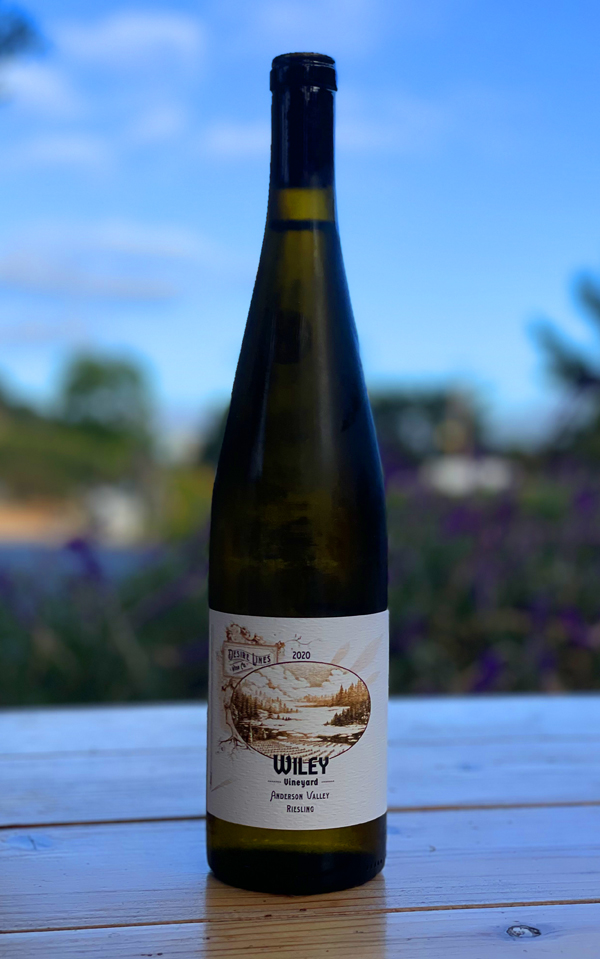
2020 Desire Lines Wine Co, Dry Riesling, Wiley Vineyard, Anderson Valley.
The bright gold, lively and brisk 2020 Desire Lines Wiley Vineyard dry Riesling from Cody Rasmussen is a quality effort with racy limeade, green apple and tart peach fruits and shows hints of seashore, chamomile, verbena and earthy stoniness, making for a beautiful fresh example of this varietal. Light to medium bodied, this wine, is deliciously crisp and goes wonderfully well with a wide range of cuisine choices, especially briny shellfish dishes, like raw oysters. As mentioned in my prior reviews, winemaker Cody Rasmussen, who is an assistant winemaker at Bedrock Wine Company under Morgan Twain-Peterson MW, has really made a splash with his and his wife Emily’s Desire Lines Wine Co label, this small micro winery that is certainly one of California’s breakout stars of the last few years. Mostly known for his stellar Syrah bottlings from Griffin’s Lair in the Petaluma Gap and the famous Shake Ridge Vineyard in the Sierra Foothills, Rasmussen is also a well studied student of wine and has a love for Riesling, and makes it in a precise way to capture its expressive and pure varietal character. Again, like his earlier version, this Wiley Riesling presents a nice textural feel and it has subtle paraffin or waxy element, like some of top Aussie producers, especially the Eden Valley versions, like Henschke and Pewsey Vale, as well as the Jim Barry’s set, that come the Clare Valley. I think, as I’ve said before, American Riesling is on a roll, there’s never been a better time to explore them, in particular the bone dry versions, like this one, along with the wines from Tatomer, Stony Hill, Cobb, Union Sacre, Joyce Wine Co, Morgan Winery and Casa Nuestra, as well as Oregon’s Brooks Winery, to name just a few of the best examples to try. Rasmussen is adding a few new versions of Riesling to his lineup, including an off dry or Kabinett style effort, which I am excited about and look forward to try soon.
The Wiley Vineyard, as winemaker Cody Rasmussen notes, was one of the first few vineyards to be planted in Anderson Valley following the repeal of Prohibition, with the block of Riesling he uses for this wine, being planted in 1976, making it wonderfully mature and producing grapes of dense concentration. This site rides on a sloping ridge that overlooks the the valley floor, set on ancient marine sedimentary soils and is, as Cody continues, fully encircled by a strand of beautiful old redwoods and Douglas fir trees. The Wiley Vineyard has seen lots of growth in the area with the addition of some prestigious neighboring vineyards coming online in more recent times, including the Bearwallow and Kiser vineyards. Rasmussen makes a fantastic other dry Riesling, sourced from the Cole Ranch Vineyard and AVA, which is quite different to this Wiley version, it is a colder terroir than Cole Ranch that is more perfumed and maybe more rounded, with this Wiley getting a prominent cooling marine influence from the nearby Pacific Ocean, that makes it a slightly more jazzy wine, though both are energy filled and outstanding. To make his Rieslings, Cody Rasmussen, uses traditional old world methods, with grapes seeing a whole cluster pressing with cold settling in tank, which bleeds out, or drops out the green phenolics, that, as Cody explains, is followed by fermentation in neutral barrels, where the wines are left on fine lees until bottling in the following summer, or about 9 months, much the same way many premium Trockens are done in Germany. Winemaker Cody Rasmussen, who is an assistant winemaker at Bedrock Wine Company under Morgan Twain-Peterson MW, has really made a splash with his and his wife Emily’s Desire Lines Wine Co label, this small micro winery that is certainly one of California’s breakout stars of the last few years. Mostly known for his stellar Syrah bottlings from Griffin’s Lair in the Petaluma Gap and the famous Shake Ridge Vineyard in the Sierra Foothills, Rasmussen is also a well studied student of wine and has a love for Riesling and his efforts should not be missed.
($25 Est.) 92 Points, grapelive
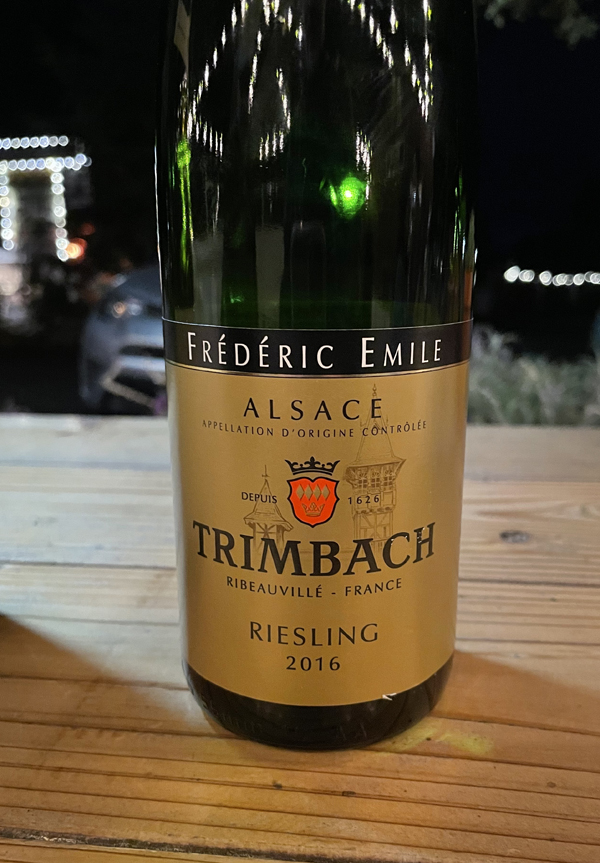
2016 Domaine Trimbach, Riesling “Cuvée Frédéric Emile” Vin d’Alsace, France.
One of Alsace’s most coveted wine, the Cuvée Frédéric Emile is always a treasured treat and this 2016 is incredibly delicate and quietly confident on the lighter medium bodied palate with subtle aromatics and core of apple, lime and white peach fruits, along with crystalline mineral intensity, wet stone, dried ginger, loam, tea spices and white florals. Trimbach’s lineup is full of quality, but certainly the two top wines, their legendary Clos Ste. Hune and this Cuvée Frédéric Emile are among the greatest dry Rieslings on earth. While I have had the pleasure of experiencing the rarity of the majestic Clos Ste. Hune and this Cuvée Frédéric Emile many times. This is brilliant wine and a savvy choice for Riesling lovers, especially when you compare it to top white Burgundies and or some famous GG’s from Germany. Trimbach’s glorious Cuvée Frédéric Emile Riesling, as mentioned is always a special treat, and pulling out a bottle like this is a great reason to celebrate life’s treasures and gives much to be grateful for. This vintage needs time to evolve in bottle, while beautiful in detail and very graceful, there’s a lot more to come here and I suggest another 5 to 10 years of cellaring to receive the full promise and depth here.
The Trimbach estate, as noted before, located near the village of Ribeauvillé, which dates back to 1626, has seen 12 generations with Hubert Trimbach being the patriarch of this wine growing family winery, with Pierre Trimbach currently running the cellar at this famous Alsace domaine. The Cuvée Frédéric Émile, which has been made and gathering awards since 1898, is hand crafted from two outstanding vineyards, the Grand Cru Geisberg and the Grand Cru Osterberg, both of which are set on Alsace’s limestone, sandstone and gravelly soils with some old vines on steep south facing slopes with small parcels that have ancient style terraces to capture sunshine, giving this Riesling its complexity and ripe density. The calcareous underpinning and the seashell fossils called “Muschelkalk” give the Emile its personality and the gentle winemaking, including a slow pneumatic pressing with the carefully selected grapes seeing fermentation in temperature-controlled stainless steel tanks, with the wine never seeing wood and getting bottled early to preserve its freshness. This bone dry Riesling is one of the world’s most iconic wines and should be part of every wine lovers journey into the classics, and if you can’t find this particular vintage, don’t be distressed, you’ll still be rewarded regardless of the year on the label, such is the exacting precision each release of Cuvée Frédéric Émile delivers. Trimbach’s Rieslings are signature efforts, but I also fully endorse exploring their compete collection, and in particular the Pinot Gris bottlings.
($75 Est.) 94 Points, grapelive
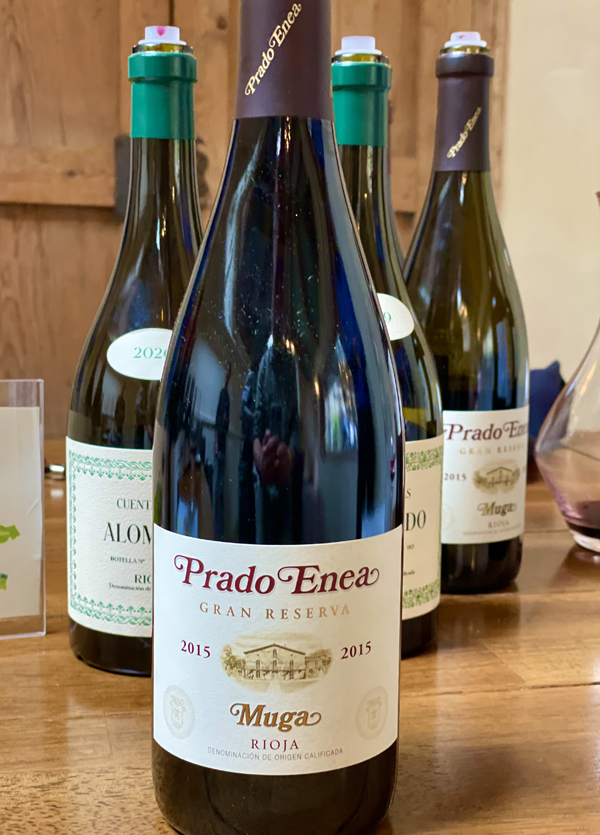
2015 Bodegas Muga, Prado Enea, Rioja Gran Reserva, Rioja Alta, Spain.
As a long time Rioja and Muga fan, it is always a pleasure to sample the majestic and luxurious Prado Enea Gran Reserva, which never disappoints and this 2015 with its mature and deep flavor profile easily makes for a spectacular experience, giving the same thrill as you get with a First Growth Bordeaux! The 2015 shows a dense array of fruit, wood, dried rose petal florals and subtle savory/earthy notes on the lush, smooth and opulent palate with blackberry, plum, creamy/candied dark cherry and mulberry fruits, along with mocha, vanilla, sage, cedar, anise, incense, stony loam and pipe tobacco accents. Made from sustainable and organic goblet-trained old vineyards, the Prado Enea is a traditional blend of 80% Tempranillo, plus 20% of other native varietals, including Garnacha, Mazuelo and Graciano, which adds to the complexity here, making for an age worthy and rewarding wine with velvety tannins and incredible length, all on display in this vintage. One of the noble family’s in Spanish wine, the Muga’s, who founded the winery in 1932, and by Isaac Muga and Aurora Caño, continue to be great ambassadors of Rioja and heritage, paying respect for traditions and taking great pleasure in preserving and protecting the environment and terroir. The lineup here is vast and delicious from their light white Rioja Blanco and Rosé (Rosado) to their Tempranillo based, powerful reds, of which, I love the Torre Muga, the Muga Selección Especial and this Prado Enea best of all.
The historic vineyards used for Muga’s flagship Prado Enea are always amongst the last to be harvested by winery, richly concentrated from vines set on Calcareous clay based soils at high elevation in the Rioja Alta zone, primarily located in Sajazarra and Villalba de Rioja, on the south-facing foothills of the Montes Obarenes. There a collision of Continental with Atlantic climates here that influences and balances the structure of these Muga wines, and exceptional care is done to produce wines that are profound, but elegant by nature. The grapes are all hand-harvested and transported to the winery cool in small crates to protect the grapes from heat, bruising and crushing. The berries are 100% de-stemmed and optically sorted, but not crushed, with fermentation started by using pied de cuve (vineyard yeast) and carried out in large neutral oak vats with Malolactic being delayed until late Spring by cooling the cellars with the ambient air. The Malolactic or secondary fermentation is all spontaneous and takes place in the fermentation vessels before going to smaller barrels for aging. All cooperage is done on the premises at Bodegas Muga and the Oak is a blend of French (80%) and American (20%), with the Prado Enea seeing a minimum of 48 months in barrel, with a combination of sizes, ranging from 225L barriques to 16,000L oak vats, and then another 36 months of bottle aging before release. For those wanting one of the world’s great wines, this Prado Enea remains a savvy choice and one I highly recommend, in particular with a hearty and meaty meal.
($99 Est.) 95 Points, grapelive
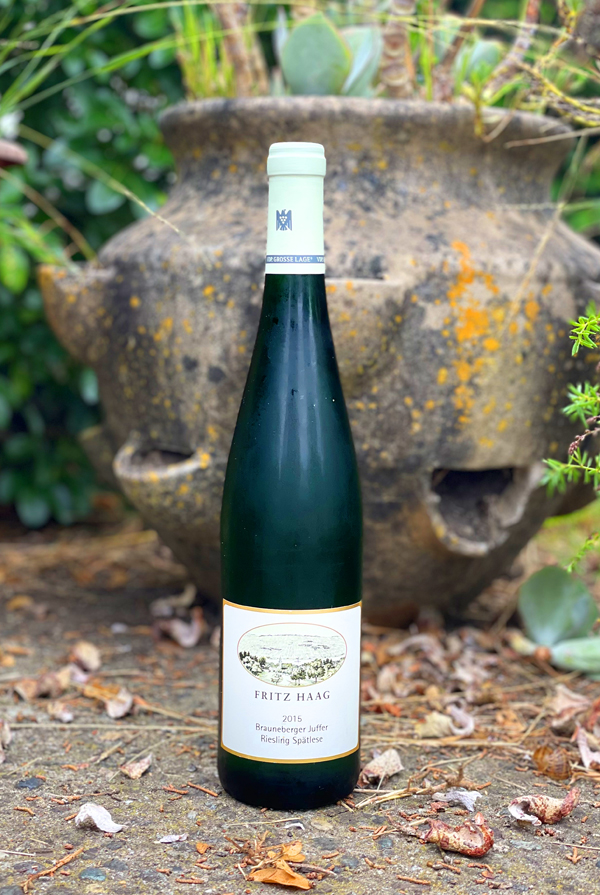
2015 Weingut Fritz Haag, Riesling Spatlese, Brauneberger Juffer, Mosel Germany.
This 2015 Brauneberger Juffer Spatlese, by Oliver Haag at the world renown Fritz Haag estate in the Mosel, is a classic example of slate driven Riesling with a gorgeous array of generous fruit, smoky mineral tones, heightened aromatics, smooth acidity and delicate spices, it is a wine that has that has all come together brilliantly. The deep palate includes layers of peach, apple, orange sorbet, mango, dried pineapple and sweet apricot fruits, wet flinty stones, candied ginger, clove and rosewater. Though dense with residual sugar this wine drinks much drier than expected and is wonderful with hot and spicy dishes, especially Asian cuisine. As mentioned in my prior reviews, the earliest documentation of the Haag estate dates back to 1605 and at that time, the village in which it is situated was known as Dusemond, but that changed In 1925, when the village was renamed Brauneberg in respect for the vineyards here. The Brauneberger refers to brown mountain, because of the color of the slate soil in this area of the Mosel, with the name change being, as the winery notes, an endeavor to further promote the reputation of its world class vineyards, like this “Brauneberger Juffer”. “Juffer,” which translates as “old maid” or “virgin,” in the local dialect, goes back to 1790, when the proprietor of these exceptional sites at the time, the aristocratic Kurpfälzische Kammerherr Wunderlich, who basically nicknamed it after his three daughters who all remained unmarried and lived the lives of spinsters. As a consequence, when they took over the vineyard management from their father, the name “Brauneberger Juffer” was cemented, and the wines soon became famed throughout the wine world. Wilhelm Haag was the first, from the winery to recognized, when he was named Gault Millau’s “Winemaker of the Year,” a highly coveted accolade introduced in 1994. Since 2005, his son Oliver has taken over the reins, and taken the wines to the next level with extra care going into the vines and cellar work, to produce wines such as this.
The historic Fritz Haag wine estate, as mentioned above and before in my prior reviews, is located in the heart of Germany’s middle Mosel River Valley, where it is known for its classic and traditional Riesling wines, mainly in Kabinett, Spatlese and Auslese levels, while more recently they added a dry GG from their top Grand Cru vineyard to the lineup, like Willi Schaefer has also done, to great effect. The Haag’s importer is the Loosen Brothers, with huge support from Ernest Loosen (Dr. Loosen) who has long loved the wines here, citing that the terroir is very distinct and the Loosen’s add, that this excellent micro-climate and the deep slate soils of the Brauneberg hillside yields some of the most intensely flavored and elegantly-structured Riesling wines of the whole Mosel region. Which after having this and many other of Haag’s wines over the years has convinced me of the greatness here, and this wine definitely highlights the quality found here. Having loved Fritz Haag wines in the past, with some 1970s stuff being incredibly delicious, and in modern times, especially since the 2005 vintage, when Oliver Haag fine examples came online. I had held this bottle back a few years and was thrilled with the results and know for sure it still is a baby, this wine has another 10 to 20 years to go, it was drinking wonderfully and was one of the wines of the night when poured against some serious Riesling company, including some outstanding Auslese and a few GGs. Going back to this 2015 Brauneberger Juffer Spatlese again and again over the course of the evening revealed more depth and nuance, and especially with the food, reminding me again that we shouldn’t fear Spatlese as a table wine, especially wine like this that have good natural acidity and low alcohol, giving palate cleansing or refreshment when paired with dishes that have heat. When I look for Mosel Rieslings, Fritz Haag continues to be high on the list, along with Dr. Loosen of course, and J. J. Prüm, Selbach-Oster, Carl Löwen, the mentioned Willi Schaefer and Mönchhof to name a few of my favorites. I highly recommend exploring the Haag collection, and especially their higher must weight wines, like the Spatlese and Auslese from this vineyard.
($40 Est.) 94 Points, grapelive
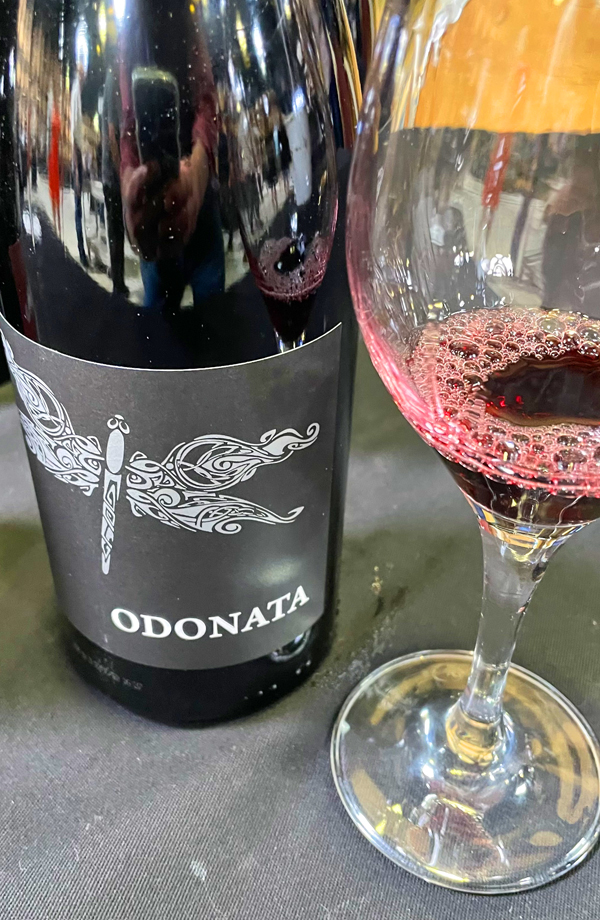
2018 Odonata, Syrah, Hook Vineyard, Santa Lucia Highlands.
This beautiful black fruited, spicy, floral and delicately earthy Odonata Syrah, coming from the Santa Lucia Highland’s sandy/loamy decomposed granite soils and see the Pacific Ocean’s cooling influences, saw a gentle and careful maceration with hand pilage and partial whole cluster to highlight similar characteristics as seen in the Northern Rhone to impressive effect, really capturing the best this vintage had to offer. 2018, a cool vintage with an even ripening period has to be consider one of the best in Monterey County in the last 20 years or so, especially for varietals like Syrah, Pinot Noir and Chardonnay and winemaker Denis Hoey really nailed it across his lineup with this one in particular showing great right now, and looks to have the potential to age nicely well into the future, though so delicious at the moment, no patience required. The medium to full bodied palate, of this dark garnet inky Syrah, has a taut frame, but a generous core of blackberry, brambly berry, blueberry, plum and cherry fruits along with hints of black olive, anise, dark coco, peppercorns and crushed violets, with some savory punch and lingering creme de cassis. The use of very well seasoned oak allows for purity and transparency here, which adds pop to this Syrah and the natural acidity provides a significant lift, taking away any sense of heaviness, making this a gem with food, especially hearty dishes. The Hook Vineyard, which has a selection of Rhone varietals, including a mature plot of Grenache and this Syrah parcel was one of the first places in the SLH to show the promise of the varietals in the region, which are historically very good in these soils, and has been proven to be case with some outstanding Syrahs found here.
The Odonata Hook Vineyard Syrah was made using 75% of de-stemmed grapes, while the additional 25% were left intact to allow for (a) partial whole cluster fermentation to take place, adding complexity, as noted above. The grape must underwent three days of cold soak and was punched down once daily. We inoculated with yeast to kick off the fermentation and continued to punch down the must once daily through the completion of primary fermentation. The wine spent a total of 14 days in the fermenter and underwent extended maceration to create a balanced wine. The Syrah was then pressed to 30% New Oak, with a combination of French and Hungarian barrels, the remaining 70% were neutral barrels. Winemaker Denis Hoey, based in the Santa Lucia Highlands on River Road, has been making some wonderful local focused sustainable and organic wines, as well as some interesting wines from the Santa Cruz Mountains, which has a special place in Hoey’s heart. Dennis Hoey, who mentored under Jeff Emery, a local legend and winemaker at Santa Cruz Mountain Vineyard, says he subscribes to the idea of blending of old world winemaking methods and attitudes with new techniques and he is in a continuous search of ways for improvement, adding he is always learning and hopes to keep things (in his wines) fresh, interesting and exciting. Tasted a few times now, this 2018 is a lovely effort and will really appeal to cool climate Syrah fans, and I see that it is still available directly through the winery, I recommend grabbing some of this stuff, which is a good value. As a side note, Hoey has added a couple of new wines to his collection, including an Aglianico, which I’m very excited to try!
($38 Est.) 93 Points, grapelive
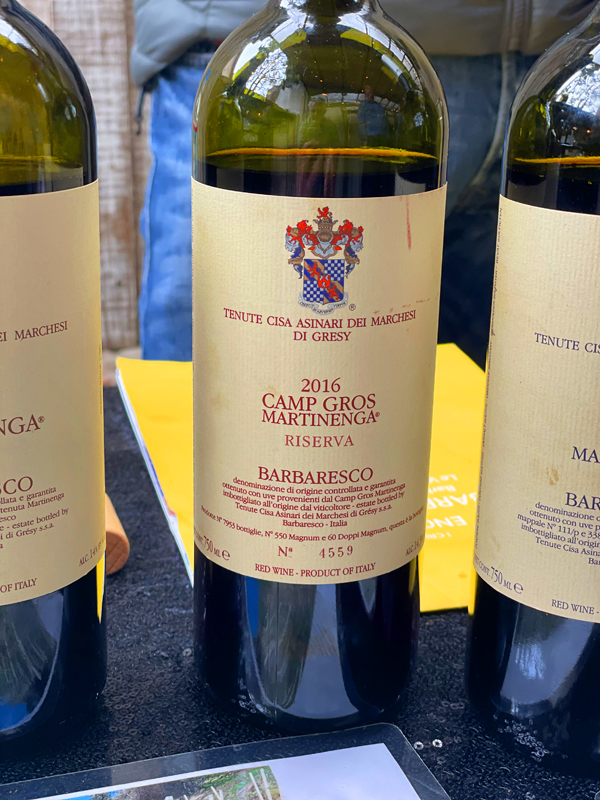
2016 Marchesi di Grésy, Barbaresco DOCG “Camp Gros” Martinenga Riserva, Piedmonte, Italy.
The 2016 Barbaresco DOCG “Camp Gros” Martinenga Riserva by Marchesi di Grésy is a powerful and dense Nebbiolo, more in kind with Barolo at this stage than the more feminine Barbaresco, but you can see the potential for greatness in this vintage, which headed toward legendary status with incredible depth, nobility and length. The raw core material here is already quite seducing, with wild plum, black cherry, huckleberry, strawberry compote and red currant fruits, along with iron ore, tarry licorice, leather, cedar and dried violets in supporting roles. The notable tannins are grippy and will require some patience, though perfectly suited to the texture and weight here, making me think that 10 to 15 years will bring some awesome pleasure to this exceptional bottling. With its favorable southern exposure, blue marl based limestone soils and high elevation, the Martinenga cru has the ideal conditions, making for iconic wines, it is a place that Nebbiolo thrives in even in the most difficult of years or stellar as the case here. The famed Camp Gros parcel of Martinenga, as mentioned before, is located on the eastern end of the amphitheater of Barbaresco, it is all organically farmed with severe and careful selections to produce wines such as this. Marchesi di Grésy and winemaker Matteo Sasso, after a 30 maceration on the skins and fermentation in vats, ages this Barbaresco Riserva for close to 15 months in French Allier barriques and then an additional year and a half in large Slavonian oak casks, before bottling, after which it is matured in the bottle for another two years before release.
The Marchesi di Grésy winery, as mentioned before, was one of the very first examples of Cru Barbaresco I ever tried, well over 20 years ago now, (is) officially known as Tenute Cisa Asinari dei Marchesi di Grésy now, has been in the di Grésy family since 1797. This estate has been a top Barbaresco producer since the early 1970s, when they started bottling wines under their own label, after hundreds of years of just selling their grapes. The Marchesi di Grésy estate includes four properties located in Langhe and Monferrato, notable areas of Piedmont that have long histories of excellence in making some of the region’s best wines. Before becoming a serious winery, in the 1960s, this property operated like a traditional sustainable farm, producing livestock, vegetables and fruits, as well as obviously tending grapevines, which included many clones of Nebbiolo and even some rare sub-varietals like, Lampia, Rosé and Michet. During that time period, the grapes were contracted to top wine producers and winemakers in the area, which was common practice in the Langhe, before the likes of Gaja, Giacosa and Marchesi di Grésy became house hold names in the wine world. In about 1973 Alberto di Grésy decided that potential of his vineyards were such that he decided to vinify his own grapes, which proved a good move and in time the Marchesi di Grésy’s efforts have made this estate a blue-chip label for collectors and enthusiasts, especially in vintages like this 2016, which is set to join the classics! I tasted this 2016 “Camp Gros” Martinenga Riserva along side the latest regular 2018 Martinenga cru Barbaresco, which was a pretty stunning wine itself and the Marchesi di Grésy 2016 Barbaresco Guian Martinenga, which also was showing remarkable purity and depth, all of which I highly recommend!
($120 Est.) 96 Points, grapelive
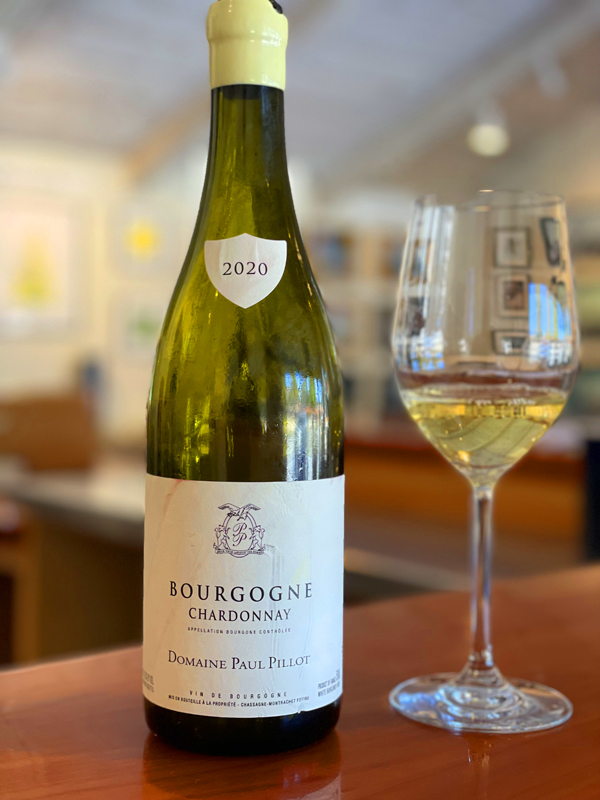
2020 Domaine Paul Pillot, Bourgogne Blanc, Burgundy, France.
Thierry Pillot’s wines are some of the most beautiful and authentic white Burgundies out there and this 2020 Bourgogne Blanc punches well above its humble label and price point in a similar vein to Pierre-Yves Colin-Morey’s wines, with reductive intensity, mineral focus and vitality, coming mainly from prime and organic Chassagne-Montrachet and Saint-Aubin vineyard sites.This is a vintage for expressive wines with a sense of deeper concentration and more exotic fruit with this Pillot Bourgogne Blanc showing off a richness and length that is more akin to a Prime Cru offering with expansive palate of apple, Bosc pear, white peach and lemon curd fruit, as well as hazelnut, brioche, clove spice, chalky wet stone, a hint of white blossoms and tropical essences. There’s a textural charm and mouth feel that gives a presence a luxurious (almost creamy) hedonism, but not heavy or ponderous with good brisk underlying acidity and very subtle wood, making for a very lovely wine that really speaks of place, impressive on its own and fabulous with food, this is truly a gem. I would stock up on this one and enjoy it over the next 3 to 5 years, if not a few more, it is already drinking so nicely that it seems a shame to wait, though it should prove entertaining to follow, and if this little Bourgogne Blanc is the good, I can only imagine how brilliant Thierry’s top Premier Cru single vineyard Chassagne and Saint-Aubin must be, if only my wallet allowed for more extravagant spending, alas it does not at this time or likely to in the near future.
The Domaine Paul Pillot, which was founded in 1900 by a local barrel maker, Jean-Baptiste Pillot, who decided he wanted to spend more time and effort growing grapes and tending vines in the Côte de Beaune, with a few holdings in the village of Chassagne-Montrachet, which later expanded significantly when his sons Alphonse and Henri took over following WWI. At that time the estate began to produce their own wines and sell them them, but the real step up came when Henri’s son Paul became the manager of the Domaine, and he bought up prime parcels in Chassagne and in Saint-Aubin, mostly in Premier Cru Vineyards and mainly Chardonnay, putting this label on the map. Now, as mentioned, Paul’s son Thierry, who joined his father in 1999, runs the property and has made the wines here since 2004, which has lifted this winery to the next level, with more focus being put into the vines and by converting them to sustainable and organic farming. For his whites, this Bourgogne Blanc included, Pillot employs a minimalistic approach, preferring native yeast fermentation(s) and aging in larger format 350L barrels with up to 10% new oak. The wine ferments naturally in barrel and sees lees aging of about 12 months without much if any stirring, after which the wine blended, then is rested/settled in stainless steel tank for a further 6 months before bottling. I am a big fan of this vintage and this particular offering and highly recommend it, though for purists and those wanting more subtle fruit/body, you’ll want to focus on the following 2021 vintage, both will certainly offer tons of personality and rewarding pleasure.
($45-55 Est.) 92 Points, grapelive
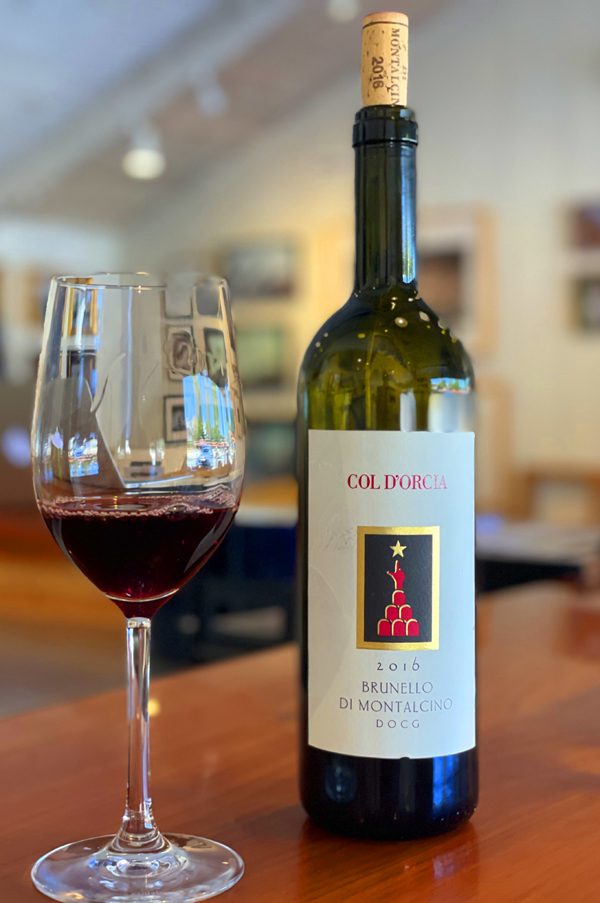
2016 Tenuta Col d’Orcia, Brunello di Montalcino DOCG, Tuscany, Italy.
One of the vintage’s best values and one you should try hard not to miss is Tenuta d’Orcia’s 2016 Brunello di Montalcino, it is proof that the hype was warranted, it is a lovely structured wine with classic Sangiovese layers of brambly blackberriy, plum, dark cherry and earthy mulberry fruits, along with cedar, mint, tobacco, bay leaf, loam and anise. This wine has a mineral note, dried floral tones and well rounded, elegant and ripe tannins with a supple full bodied palate and a long finish, all of which adds to immediate pleasure and will allow for some serious cellar, age worthy, evolution. I can imagine there’s some rewarding life ahead for this Col d’Orcia, which could impress Brunello fans for another two decades, not bad for wine that sells for just fifty bucks, or sometimes less. This deeply hued and lightly perfumed Brunello comes from all organic fruit, which is all hand tended and carefully sorted, both in the vineyard and it the cellar to ensure quality, concentration and true terroir character, which transmits in the finished wine exceptionally well with plenty of complexity and power, I only wish I had a few more bottles tucked away of this impressive Brunello.
Col d’Orcia, which translates to “the hill overlooking the Orcia River”, is one of the original Brunello properties and the largest organic estate in the region, well known for traditional or authentic wines. The Orcia River marks the Southwestren border of the Brunello di Montalcino zone, where there is some volcanic influence in the clay and limestone soils and with warm exposures that adds to the concentration and richness of the Sangiovese Grosso (Brunello Clone) grapes. Col d’Orcia ages their Brunello di Montalcino for a full 3 years in the large barrels, a combination of Slavonian and Allier (French), before bottling and keep the bottles in cellar at least 1 year before releasing it, in keeping with the DOCG rules. It is also interesting too, that through mostly Col d’Orcia’s efforts that in 1983 that Rosso di Montalcino became a full DOC, and their’s is an iconic example.The winery notes, as I’ve mentioned in my prior reviews, the Rosso is made with pure (100%) Sangiovese grapes, released one year after the harvest to retain all the freshness and fruitiness of a young wine, but the 2016 vintage gave an added dimension and density and it is also fabulous, especially good with hearty cuisine. This all, as I noted when I tried the 2016 Rosso, boded well for this 2016 Brunello, which didn’t disappoint, and should go on be a legendary vintage.
($50 Est.) 94 Points, grapelive
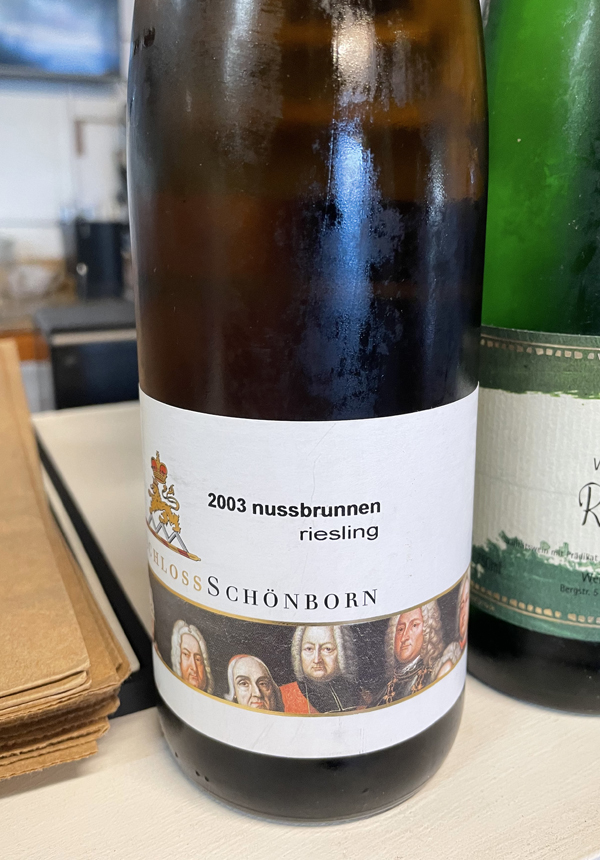
2003 Schloss Schönborn, Riesling Kabinett, Hattenheimer Nussbrunnen, Rheingau, Germany.
The golden hued 2003 Hattenheimer Nussbrunnen from Graf von Schönborn – Schloss Schönborn is really showing wonderfully well right now and was an unexpected surprise in a recent Rieslings of the World tasting, far fresher and balanced than would believe from such an extreme vintage and hot year with lively fruit and vitality from a 20 year old wine! The palate is minerally and barely hints at tertiary earthiness with green apple, lemony citrus, dried apricots, a tough of papaya and quince fruits, along with clove and crystalized ginger spice, chamomile tea and a touch of brown butter. Fairly dry in style, mainly because of the wine’s age and loss of baby fat, but still generous for a Kabinett level wine, nicely rounded in texture too. Schloss Schönborn, with about 650 years of history, is ultra traditional producer in the Rheingau and employs careful cluster selections and fuder aging in the cellar, for most of their wines, as expected and desired, it is wines like this that make you appreciate these old school styles. Not always easy to find, Schloss Schönborn, in America, they are well deserved treats when you find them, in particular when they have 10 to 15 years of age on them! The vines for this wine sit up above Eltville in Hattenheim with gentle slopes and with warm south to south-east facings, they are situated about 90 meters above sea level, just aways from the widest part of the Rhein River on deep loess soils with sandy loam and marl. All of which makes for concentrated flavors and beautiful ripe Rieslings that retain good acidity, as this wine shows, even with close to two decades in bottle. I’ve reviewed about a half a dozen of these Schönborn Rieslings in the last decade, all being delicious with most having a significant amount of age, with a mid 1990s and 2006 being the latest I’ve enjoyed, and I highly recommend them to savvy old school Riesling lovers looking for bargain bottles, and they seems to do well even in off years.
The winery was a founding member of the Verband Deutscher Prädikats or VDP and since Paul Graf von Schöborn took over from his father in 1998, and with winemaker Florian Franke, things really took off here and he has led the estate into the future while maintaining its traditional roots, with prime vineyards at Erbach, Hattenheim, Hochheim, Johannisberg, Rauenthal and even Grand Cru parcels at the Rüdesheimer Berg. One of the old school and historic producers in the Rheingau, Schloss Schönborn based in the Eltville/Hattenheim area, has been around since 1349 and still run by the noble for which it is named, with Paul Graf von Schönborn leading this classic estate that tends to get overlooked a bit these days, but once fully aged their Rieslings really shine and are outstanding values, as this 2003 Nussbrunnen shows. Schloss Schönborn now encompasses 50 hectares of vineyards, throughout the Rheingau, of which 91% is planted with Riesling, plus 9% Spätburgunder (Pinot Noir) and Weissburgunder (Pinot Blanc) with parcels in some of best vineyards, including blocks of vines at Erbach, Hattenheim, Hochheim, Johannisberg, Rauenthal and the Rüdesheimer Berg, as in this one. Even though Schloss Schönborn has joined the VDP and do GG’s, they are very much committed to their sweeter style wines and are more well known for the Spatlese and Auslese that really age well with their residual sugars, and it should be noted though densely packed with those sugars these wines are less cloying when aged and get lovely balanced and complex, adding secondary flavors, earthy tones and holding on to their natural acidity. The name, Nussbrunnen, a vineyard in Hattenheim has a south-southeast exposure, comes from a “Brunnen,” or spring, that was once surrounded by nut trees here, according to the Balthasar Ress estate, where my friend and winemaker Markus Roll (ex-Leitz) works, who also has vines here in the Hattenheim part of the Rheingau. I must say, as much as I love the cooler vintages and dynamic acidity, this 2003 was very impressive and I would say yes instantly if it was offered to me again anytime soon.
($25-40 Est.) 92 Points, grapelive
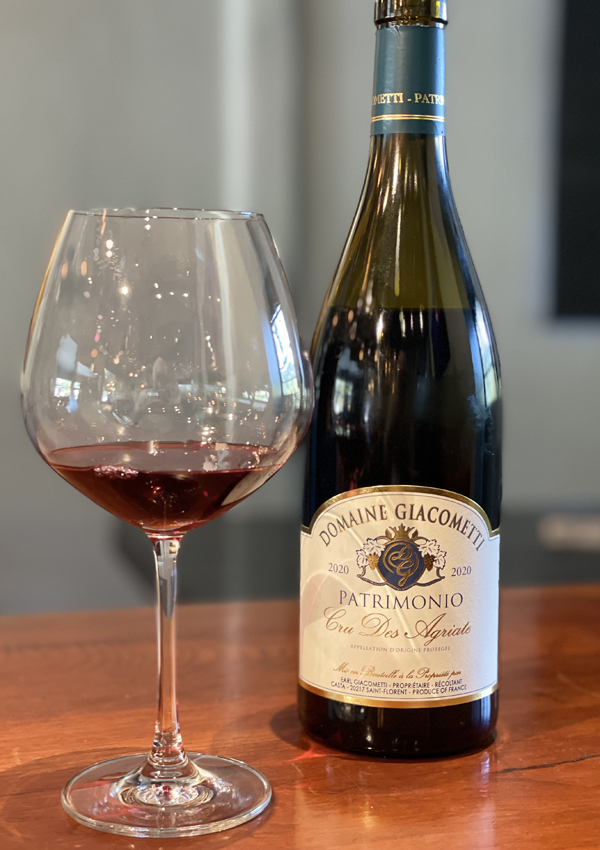
2020 Domaine Giacometti, Patrimonio Rouge “Cru des Agriate” Corsica, France.
This pure and expressive red from Giacometti is a blend of 97% Niellucciu (Sangiovese) and 3% Grenache that was fermented and aged exclusively in stainless steel tanks, with this vintage showing a bright array of red fruits with hints of spice, mineral and fresh acidity. The dark garnet and ruby 2020 has loads of personality and tangy character with vivid black raspberry, plum, cherry and blood orange fruits, plus a touch of snappy herbs, tobacco leaf, anise, a loamy stony element and delicate florals, all making this a delightful medium bodied wine that is great with a simple meal, pasta, hard cheeses and or rustic country meat dishes. Giacometti practices all organic farming and uses indigenous yeast fermentation, which allows for more terroir driven flavors here, with these vines ranging from 10 to 45 years old, set on granite and clay soils, and providing good concentration, smooth tannins and refreshing natural acidity.
Domaine Giacometti, located very remotely in the wilds of Corsica, has been a mainstay in Kermit Lynch imports portfolio for many years now, which has allowed me to taste these wines quite often and made this property a go to for quality and value, especially this delightful Cru des Agriate Rouge, which I always enjoy. The Giacomettis winery, founded by Christian Giacometti in 1987, as Kermit Lynch notes, have long made a generous, approachable style of Patrimonio, similar to what has traditionally been served by the pitcher at the Corsican dinner table. The terroir here provides, he continues, conditions that allow the Niellucciu vines to forage deep into the granite rock for nutrients and to ripen without excess. The estate is going through a generational change with Christian handing over to his daughter Sarah and son Simon, who look to carry on with an extra degree of energy and passion here and so far so good with a very stylish lineup of wines, including a lovely Rosé, which uses some Sciaccarellu, a crisp Vermentino (called Vermentinu on Corsica), along with a solid series of reds, with this one being a great place to start.
($26 Est.) 90 Points, grapelive
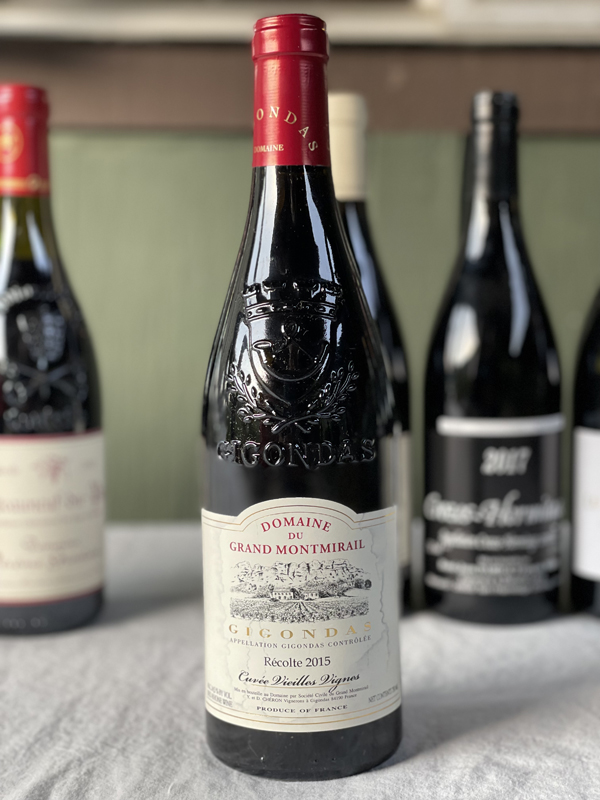
2015 Domaine du Grand Montirail, Gigondas, Cuvée Vieilles Vignes, Rhone Valley, France.
Now perfectly aged and evolved without losing any purity and or vitality, Domaine du Grand Montmirail’s Gigondas Cuvée Vieilles Vignes is drinking fabulously well, just a bit below the level of the 2016 version that was a spectacular vintage, though this isn’t too bad with a deep purple/garnet color and a full body, this 2015 has a rich core of dark berry fruit, spice and delicate florals. The winemaking at Domaine du Grand Montmirail is classically simple and guided by experience and traditions with Cheron concentrating his main efforts in the vineyards and carefully working the land, he is focused on quality fruit. The subsoils of Grand Montmirail’s parcels are composed of sedimentary clay from when the ancient seas covered this site, also the rise of the Alps created many rifts, including the emergence of the impressive rocky barriers that are the Dentelles, and this clay is littered with small pieces of limestone, its this that helps give Grand Montmirail its round, approachable texture and structure. The grapes are carefully sorted and 100% de-stemmed then the must is cooled and the pre-fermentation period lasts several days in order to extract pigment and primary aromas of the grapes. Only indigenous yeasts are used, and typically primary fermentation lasts close to two weeks, and the wine is handled extremely gently with it getting pressed in a bladder press. Cheron ages his wines in enamel-lined tanks in the temperature-controlled winery, with underground vats that naturally remain cool. As noted above, there is no oak is used during the wine’s élévage, again to promote freshness and clarity, to transmit the place and grapes directly into the wine without added wood accents.
Domaine du Grand Montmirail old vines Gigondas cuvée, which is typically a blend is 80-90% Grenache, plus 5%-10% Syrah and 5%-10% Mourvèdre, depending on the year’s best fruit, all coming from 30-65 year-old vines on the southern slope of the Dentelles de Montmirail. As noted in my prior reviews, most of the bottles I’ve had from Domaine du Grand Montmirail were imported by San Francisco’s Charles Neal (who’s got his own special bottlings) and while their are various importers for the estate, Charles has given me most of my knowledge about Yves Cheron, the vigneron at Domaine du Grand Montmirail, which was started originally by his father who moved to the southern Rhone from Burgundy. Denis Cheron, a Beaune native bought the Cave du Grand Comtadiné in Vacqueyras in the 1960’s where he vinified grapes for scores of local producers, as well as himself and created a negoçiant firm called Pascal. One of Denis’ first client suppliers was the owner of the Domaine du Grand Montmirail, a wonderfully situated property in the southeastern part of Gigondas, that he later acquired, as Neal notes, and the rest is history. Yves, a graduate in enological studies in Beaune, has the winery in league with the very best in the region, like the famous Saint Cosme, and his Grenache, Syrah and Mourvedre comes from vines planted exclusively on the hillsides and terraces, known locally as banquettes. The Domaine du Grand Montmirail, again as mentioned before, harvest starts with their Syrah, the quickest grape, interestingly to ripen here, then the Grenache starts coming in next from in the highest sites and last, but not least the latest picks are of Mourvèdre with its later ripening characteristic giving richness and refined tannin. Tasting these wines over the years, I just get more and more impressed with these Grand Montmirail offerings, with the Cotes du Rhone(s) as well as the Vacqueyras being a wonderful bargains.
($35 Est.) 92 Points, grapelive
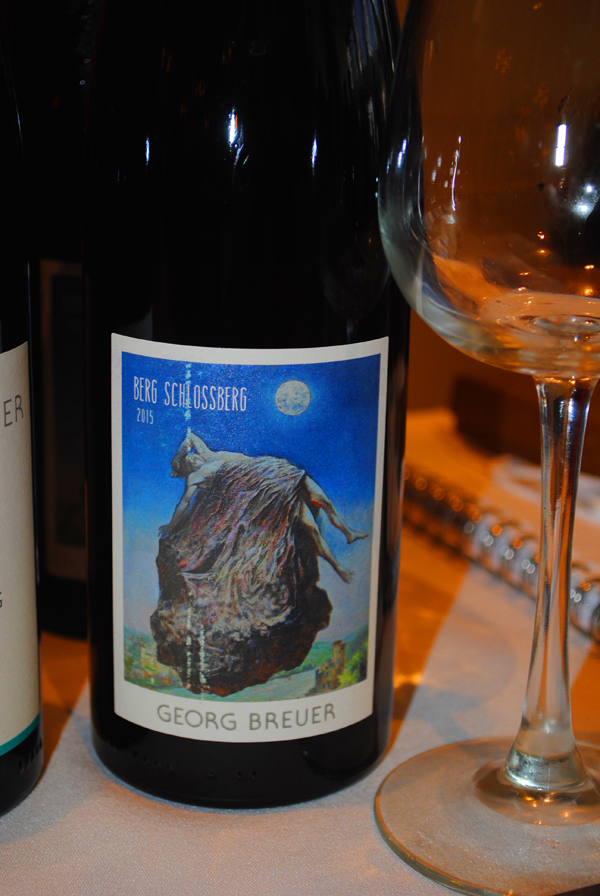
2015 Weingut Georg Breuer, Riesling Trocken, Artist Label, Rüdesheimer Berg Schlossberg, Rheingau, Germany.
The dry Grand Cru Schlossberg Riesling from Breuer, as mentioned here, is one of the most serious terroir driven wines in the world and its stony austere personality can only really be full understood with extended aging, it is why I hardly ever review them when they are young, and I’ve tasted this 2015 version a few times now and think it is ready and worthy of more attention, coming from one of my favorite vineyards in the world. The first time I hiked up to the castle in 2009, I was forever changed, and going back there again in 2016 cemented my admiration for this amazing vineyard on, as Johannes Leitz calls it, magic mountain at the Rudesheimer Berg overlooking the Rhein. Teresa Breuer’s 2015 Rudesheimer Berg Schlossberg Riesling is steely, stony and earthy, seductive and pure with racy citrus, with lime and kumquat, white peach, quince and verbena on the medium bodied crisply focused palate. Added elements of rosewater, muskmelon, wet flint, saline, almond and cloves add to the complexity, tension and depth in this very singular Rheingau classic. As mentioned, I have twice now spent time here, back in 2009 and more recently at harvest time in 2016 and both visits included tasting with the Breuer’s (at the old cellars) in downtown Rüdesheim, unforgettable experiences. Breuer’s Schlossberg parcel with its slatey and rich in quartzite soils, is farmed using organic methods and are certified by Fair N Green, it sees tiny yields to promote that depth and complexity, while retaining loads of natural acidity. Physiological and “aroma ripeness” are more key elements that Teresa looks for, more so than must weight and the grapes are picked when she feels the fruit is perfect, and the results have proved her great insight into this fantastic vineyard. Again, as I’ve said before, there is a raw sex appeal and natural force to Theresa’s wines and I seem to be more and more drawn to them, especially this extremely rare artist label Schlossberg bottling, which has a fanatical cult like following, not unlike Keller’s, and it’s terribly difficult to find.
The picturesque Schlossberg Grand Cru is located on the steeper western end of the Rüdesheimer Berg majestically overlooking the bend of the Rhiein, what the Breuer’s say is the so-called “Binger Loch”, west of the old town and opposite Bingen, the confluence of the Nahe River, and the Mäuseturm. Here, the Rhein changes direction and flows North again after its Rheingau East-West Intermezzo, when it has its widest point. This vineyard is very steep, surrounding the castle ruins and the rows of vines rise up from the Rhein here with an impossible 65 percent incline and soaks in the sun with a perfect Southwest exposure giving the wines, which are mostly dry here power and density. As noted before in my reviews, I have long been a fan of this historic winery, which was originally founded back in 1880 and I admire the direction Theresa Breuer has taken the Georg Breuer label with her more holistic approach in the vineyards and in the cellar, while continuing to be faithful to her late father’s vision. Bernhard Breuer, who, as the winery notes, was one of the key members of Charta, an organization formed to promote a drier style of Rheingau wine, sadly died way too young, but his legacy is alive and well with Theresa’s own talents honoring him. She has taken her dad’s ideas to heart (and next level) and has been raising the quality here with each vintage, through grit, hard work and natural practices in the vineyards and a gentle hand in the cellar. Bernhard was a huge proponent of this GG style of wine, and believed that the Rheingau was perfectly suited to producing very fine, single site, elegant and flavorful dry Reislings. The fermentation(s) are old school and natural or started with pied de cuve, basket ferments in the individual vineyards, with fermentation and élevage being done in large used barrels for the top wines such as the Monopole Nonnenberg, Rottland, Roseneck and this outrageously good Schlossberg bottling. I love visiting Rudesheim and the Rheigau, and I highly recommend putting it on your bucket list, along with this unicorn bottling, but don’t miss Breuer’s other Rieslings!
($175-275 Est.) 97 Points, grapelive
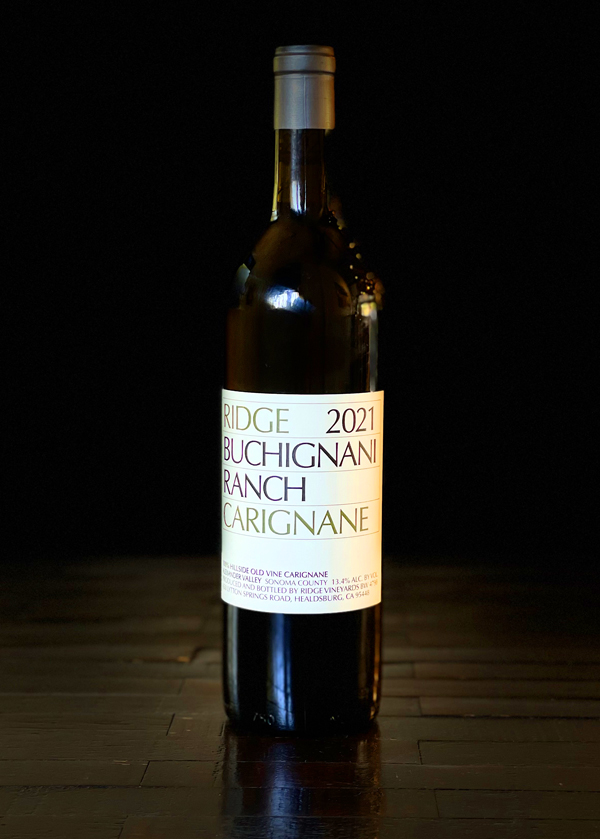
2021 Ridge Vineyards, Carignane, Buchignani Ranch, Alexander Valley, Sonoma County.
It’s remarkable how similar the 2021 Buchignani Ranch Carignane is to the 2018 version I last reviewed, where I compared in to a young Rioja, dark and luscious on the palate and somewhat unevolved at first, taking its time to open up and firm up with an almost carbonic like forward profile, before coming up to speed in the glass. There’s plenty of richness to enjoy, but you can’t help wishing you’d left it in the cellar for another few years! The full bodied palate finally comes good after almost an hour, revealing more grip, savory notes and pretty aromatics to go along with the layers of blackberry, currant, candied cherry and plum fruits, as well as letting an array of herbs and spices, plus a touch of coconut, vanilla, cedar and carmel popcorn. Everything settles down nicely and I can see a long life or pleasurable drinking ahead here, if given the opportunity, though this rare 100% Carignane is a Ridge rarity and mostly goes to their wine club, which usually drinks it up quickly! Carignane or Carignan is notably one of the Chateauneuf du Pape grapes and plays a minor rule there in the Rhone Valley, while it is more commonly the main varietal in Corbieres, a small lesser known region in the Languedoc area of Southern France, where it really shines! In California, it has been here almost as long as Zinfandel, but has stayed under the radar and found mostly in field blends, though can be very exciting as a solo varietal wine, like this Ridge!
The Buchignani Ranch, as I’ve mentioned in prior reviews, is located on Dutcher Creek Road, in the hills on the far western edge of the Alexander Valley appellation, very close to the border with Dry Creek. Stan Buchignani’s grandfather, Dominico Cerruti, first planted a five acre block way back in 1927, then his father, Dino, added another seven acres in the 1940s, with last of the property finally planted early 1950s, making for some seriously old vines. The vineyard’s climate, which bears a strong resemblance to that of upper Dry Creek Valley, has days that are quite warm, but seeing some fog, which tends to hang low in the valley, burns off sooner in the hills, and cool nights, perfect for grapes. Carignane from the Buchignani Ranch is complex, as I’ve noted before, its fine structure much like that of a field-blend Znfande based wine with good acidity, but darker in color. In keeping with Ridge’s Zins and Rhone varietals the Buchignani Ranch Carignane was 100% de-stemmed and fermented with native yeasts, then macerated for healthy extraction, pressed and then aged in used American oak that saw a long air dried seasoning that prevents the wood from being too overt, though still present and sweet. The maturing allows for creamy smooth texture, well integrated tannin and purity of fruit. In this wine most of the barrels used were at least three times filled with just 10% being one time used and the Carignane was aged a total of ten months before a gentile filtering before bottling. I have really become a fan of this bottling by Ridge, it joins their Lytton Springs and Pagani Ranch offerings as my go to fun reds, and this 2021 is delicious stuff, which I plan on re-visiting in 3 to 5 years.
($34 Est.) 93 Points, grapelive
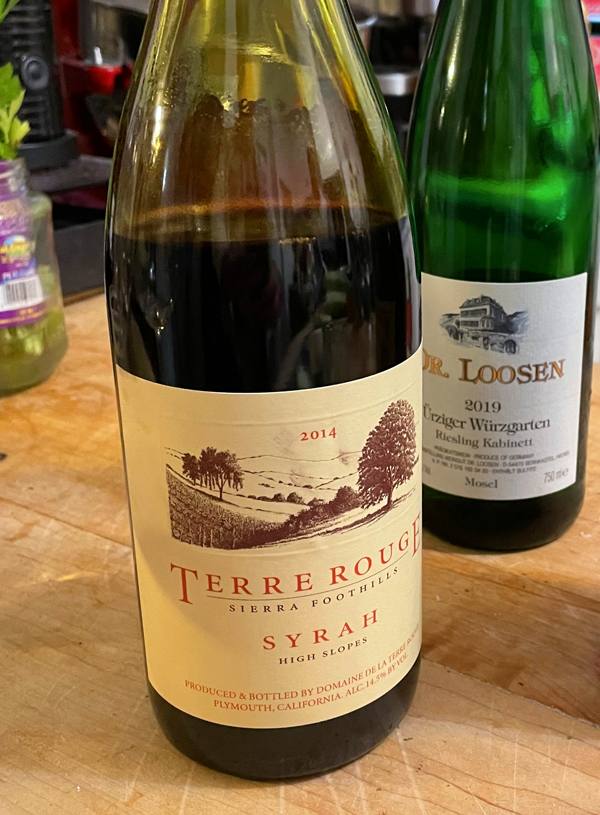
2014 Domaine de la Terre Rouge, Syrah, High Slopes, Sierra Foothills.
Bill Easton’s 2014 Domaine de la Terre Rouge High Slopes Syrah is a beauty with full evolved character and mature flavors with dried violets, black olive, tertiary earthy notes and smooth layers of Syrah fruit, spice, soft wood and mineral tones, absolutely delicious with grilled meats and sausages, and a reminder of how good these Sierra Foothills can be, especially with some age. The full bodied palate still has a nice burst of freshness to it, but has classic maturity on display with a peppery bramble bite behind the lush blackberry, damson plum, creme de cassis and dusty cherry fruit, all accented by touches of cedar, licorice, smoky graphite, leather, crushed gun flint and wild sage. It’s time to drink this fine effort up in the next 2 to 3 years before a stewy reduction takes over from the fresher fruit that is still holding on as of now. Bill Easton and Steve Edmonds, in the 1990s really pioneered the high elevation Rhone inspired Syrahs, grown on rock strewn hillsides in the Sierra Foothills, making some incredible wines, and this 2014 High Slopes brings back memories of those impressive efforts. This “High Slopes” Syrah is made from vineyard sites that are near or exceed the 3,000 foot elevation on granite, schist and quartz stony soils and it shows off that terroir in the glass.
A long time Rhone Ranger, Bill Easton, has an impressive lineup of wines, mostly under his Domaine de la Terre Rouge label, dedicated to Rhone varietals as well as his Easton label that has Zinfandel and Barbera as its major players, but his Syrahs are his signature wines and this High Slopes is one of his top bottlings. For bargain hunters I also suggest checking out Easton’s fabulous Rhone style red blend, the Tete a Tete, where he uses Syrah, Mourvedre and Grenache to good effect, making a Cotes du Rhone Village style wine that is dense, lively and easy to love. The Terre Rouge winery was founded in the late 80s by husband and wife team Bill Easton and Jane O’Riordan and is located on the West Slope of the Sierra Nevada mountain range in Amador County’s Shenandoah Valley. As mentioned, Bill was one of the original Rhône Rangers and helped pioneer the Rhône varietals in the Sierra Foothills and he received the Lifetime Achievement Award from the Rhône Rangers in 2016. It should also be noted that In the late 70’s Easton founded the famous Solano Cellars, a wine shop in Berkeley, California, that specialized in small artisan producers from around the world, which helped him gain insights and perspective that clearly still has a profound influence on his wines. The High Slopes Syrah is from a small of sites and is a very limited barrel selection and crafted with a mind to show off its sense of place and I highly recommend it for Syrah lovers.
($50 Est.) 93 Points, grapelive
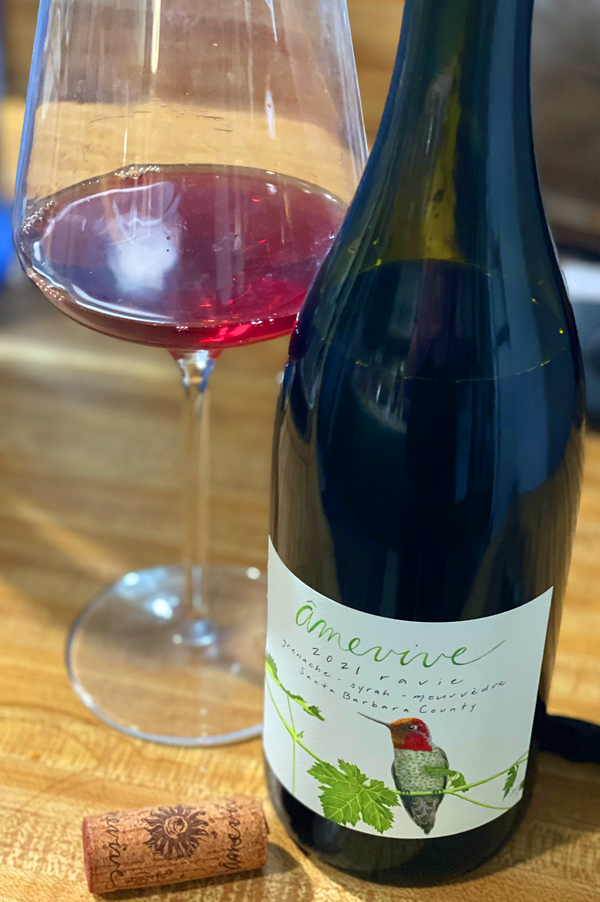
2021 Âmevive, Ravie, Grenache, Syrah and Mourvèdre, Santa Barbara County.
The 2021 Ravie by winemaker Alice Anderson, the youthful talent behind Âmevive label, is a bright and crunchy lighter style red wine with a core of cherry, strawberry and tangy plum fruits as well as having a spicy kick, natural acidity, sweet florals and silky tannins, making for a fun and easy wine to enjoy in its youthful form. This ruby/garnet Ravie is a Rhone blend of mainly Grenache, just over 50%, along with almost equal parts of Syrah and Mourvèdre that really speaks of Santa Barbara County with its ripe and expressive Grenache fruit, which Anderson kept in check with partial whole cluster savoriness and the natural earthy elements of the Syrah and Mourvèdre. As the wine opens it gains intensity and adds Pomegranate and a deeper sense of red currant fruit and exotic cinnamon and anise, putting some mineral and stoniness in the background, all smoothly and nicely rounded. This wine, very much impresses and its energy makes it feel pure and clean, making it excellent with a wide array of cuisine choices, in my case, it went great with a spicy sea food pasta that included Spanish sardines, red pepper flakes and racy tomato broth. That usually is a difficult for a lighter wine, but this wine rose to the occasion and provided good companionship, before and after. The packaging is beautiful and reflects the commitment to nature and the organic practices here at Âmevive.
Âmevive’s Ravie is a fresh blend of Grenache from Alisos Canyon, Syrah from a dry-farmed vineyard called Tres Hermanas, and Mourvèdre from Martian Ranch Vineyard in Alisos Canyon, all which make for a quality and concentration, without adding heaviness in this wine. Alice explains, the word ‘ravie’ translates to the feminine version of ‘delighted’ in French, which makes her giggle a little when she’s reminiscing on learning country or more rustic French during her time spent in France, which she hopes comes out in this wine. She smiles at memories of her cringy moments using her inappropriate French with friends parents, causing awkward smiles and a lot of laughter, which now she thinks broke down any pretense or barriers, and that seems to be the inspiration for her Ravie, a very delightful, wink, wink, GSM red. Anderson reveals that she made this wine from distinctly different sites with the Grenache, Syrah, and Mourvèdre all harvested and fermented separately with different percentages of whole cluster, ending up with close to 80%. All of the musts, after gentle macerations, were pressed in a classic basket press and aged separately in neutral French oak, close to 8 months, until about a month before bottling. At that time, Alice decided on the final blend, that was then made, after which the Ravie was rested or about a month in tank before being bottled unfined and unfiltered, to promote its natural nuances. There’s a lot to like in these Âmevive wines, and as I’ve mentioned and recommended in prior reviews, this is a label to watch.
($30 Est.) 92 Points, grapelive
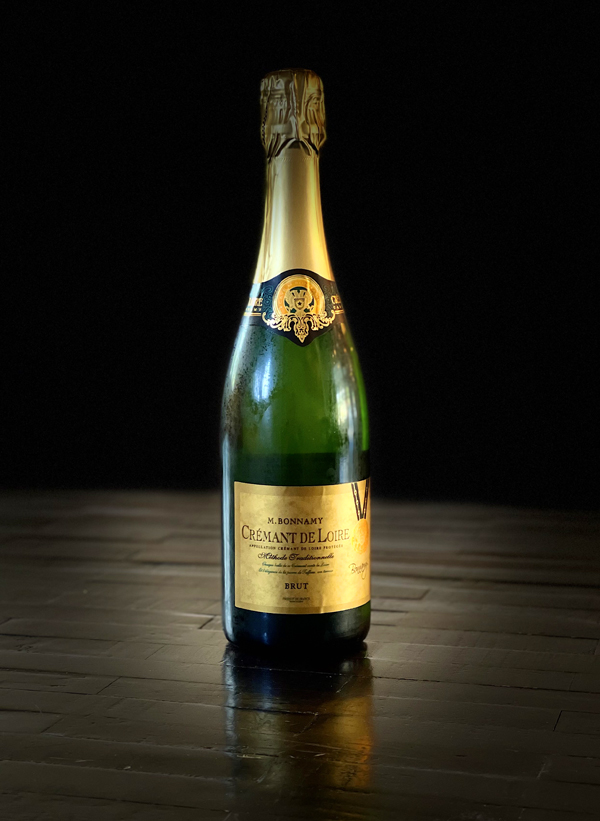
n.v. M. Bonnamy, Brut Crémant de Loire, Methode Traditionnelle, Sparkling Wine, Loire Valley, France.
I discovered the Bonnamy Crémants, imported by Sacred Thirst Imports, about a decade ago, and they have been my secret go to for value priced bubbly ever since, along with the Kermit Lynch imported Sommariva Prosecco, both of which are quality hand made products that way over deliver for the price. The crisply bone dry Bonnamy Brut is a cuvée bottling of Chenin Blanc, Chardonnay and even a small dose of non skin contact Cab Franc, which adds zip, complexity and structure to the slightly earthy/stony Chenin and the more plush Chardonnay here in this energy driven Crémant de Loire. The palate revolves around mixed citrus, stone fruit and yeasty notes, it is generous, but saline and steely dry, finishing clean, making for a flexible sparkler to enjoy anytime and anywhere.Two wines in the Crémant de Loire range of M. Bonnamy, this Brut and Brut Rosé are great examples of inexpensive yet delicious sparkling wines. The grapes are predominantly grown on various forms of limestone which include most significantly Tufa (meteogene tavertine), the material widely used in the building of many châteaux throughout the Loire Valley.
Made mainly from traditional Loire varietals, 65% Chenin Blanc, 25% Chardonnay and 15% Cabernet Franc, this Champagne style bubbly from M. Bonnamy comes from various plots in Saumur, Anjou and Touraine most and set on chalky limestone “Tufa” with some clay, which explains the striking mineral intensity and energy, but with enough fruit and less contact to please the palate. I’ve had this wine many times and it has never failed to deliver and I highly recommend it, it will provide good times and smiles each and every time in the glass.The grapes see hand harvesting, with early picks, a gentle pressing and low-temperature fermentation, which the winery says is to better preserve the aromas and clarity here. Second fermentation, they note, is in the bottle, employing the traditional method or Champagne style. This is after the selection of the best lots and the Brut Cuvée is aged the full 12 months, instead of the minimum 9 by the AOC rules and its aging is done completely sur lattes before disgorgement, allowing that extra dimension of yeasty character to develop. The results make this M. Bonnamy Brut one of the world’s greatest values in sparkling wine, it is a great choice for savvy budget buyers that are looking for quality over a name brand, it is perfect for party events, family gatherings and or receptions.
($17 Est.) 90 Points, grapelive
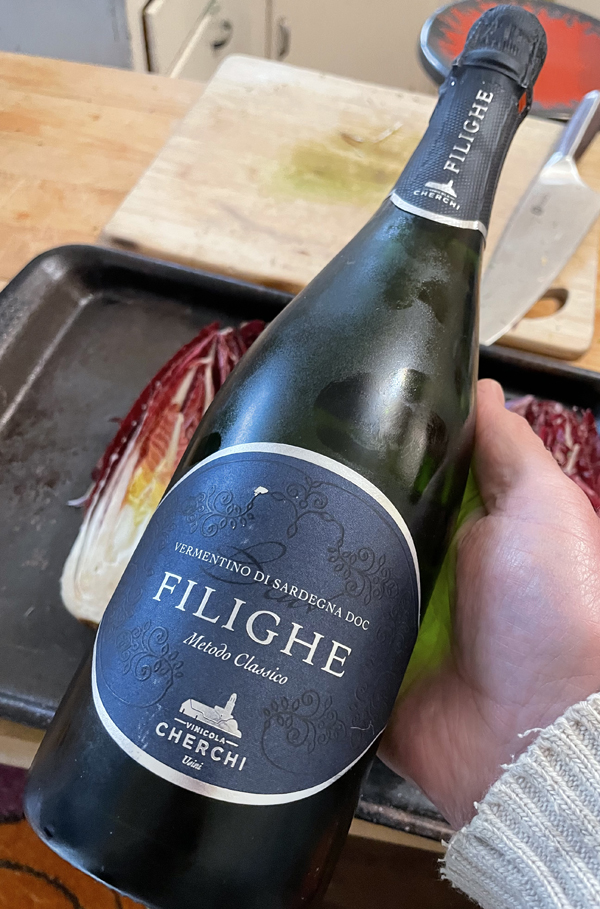
2019 Vinicola Cherchi, Sparkling Vermentino di Sardegna DOC, Usini, Sardinia, Italy.
Cherchi’s Sparkling Vermentino di Sardegna is luxurious and yeasty with citrus, white peach, mineral and brioche notes leading the way with a nice Brut dry mouthfeel, steely acidity and a touch of almond bitterness keeping things elegant and fresh in the glass, making for a tasty aperitif and a lovely wine for sea foods. The Vermentino here comes from the Usini zone, an area at about 200 meter up with hillside vineyard sites set on calcareous structured limestone soils with clay plus some sand and granite, which brings out a zesty personality and complexity. The crisp palate and energy driven small beading bubbles, which were developed in bottle like Champagne, make this an outstanding value, with additional elements of wet stone, orchard fruits and clove spice this pale straw colored Cherchi Vermentino di Sardegna DOC bubbly keeps your attention to the very last sip.
The grapes come from the Logudoro hills of the Sassari region on Sardinia, with the vines influenced by a mix of those chalky clay soils, the elevation, and the Mediterranean, are hand harvested and carefully sorted and once in the wine cellar, they are 100% de-stemmed, crushed and then gently bladder pressed, as slow and soft as possible. Fermentation is done in tank with selected yeasts at low temperatures, follow by an aging period of 6 months in the stainless steel. Then the wine, made in traditional (non charmat) Classic Method, is re-fermented in the bottle with a low dosage and it matures there for another full 18 months before disgorgement, providing Champagne style class, with a fine balance between fruit and yeasty character. This Mediterranean sparkling wine, something of a rarity, is usually almost only found on Sardinia, but is well worth searching out and trying to find, and if not, then checking out the other wines by Cherchi, a premier estate, founded in 1970, is a great idea, especially their Cannonau and still Vermentino.
($25 Est.) 92 Points, grapelive
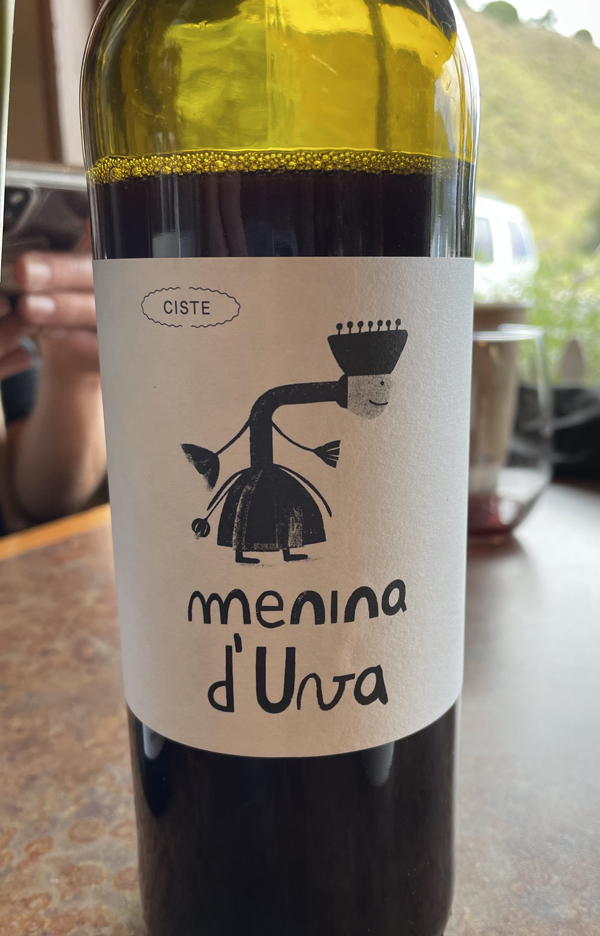
2021 Menina d’Uva “Ciste” Vinho Tinto,Trás-os-Montes, Portugal.
A light and juicy quaffable naturally styled red wine from Portugal’s Trás-os-Montes area made from some unique varietals, seeing a co-ferment of 70% red grapes with 30% white grapes, making for a brighter fresher dark ruby wine with a clean red fruited profile. Winemaker Aline Domingues, just 34 years old, a youthful talent and a trained scientist, based in Uva, not far from the Spanish border, spent seven years between the Universities of Paris Diderot, Dijon, Cergy, and Orléans. During that time, she accomplished three Masters degrees in Molecular Biology, Fermentation Science and Quality Health Safety Environment, all before turning her attention to wine. This Ciste Vinho Tinto shows off red currant, plum, cherry and strawberry fruits and a mix of spice, wild herbs and delicate florals, adding a bit of earth, red peach and blood orange, all in a zesty lean frame, it is a wine that enjoys a slight chill and best with a no pretense outdoor meal. This is a country wine that never tries to either serious or geeky cool, it is a wine that just makes you smile and is fun in the glass. After open, this tasty little wine gives more textural quality and plays beautifully with food, it definitely makes me more interested in the rest of the Menina d’Uva wines, which includes a few more reds and a white.
Uva, an ancient village, in Trás-os-Montes, which is very aptly named, meaning “The Lost Corner”, has largely gone unnoticed by the outside world from generations, but has a distinctive terroir that has had wine grapes for quite a while, on the Planalto Mirandês in Portugal’s northeast corner. This Ciste comes from grapes grown on igneous and metamorphic rock-derived clay soils which has an effect that delivers a fruit forward personality, while the Atlantic and continental climate influences add zippy acidity and ripe flavors. Aline Domingues decided, for this wine, to use a mixture of, as mentioned, 70% of the red grapes, Bastardo Preta, a grape that is genetically proven to be Trousseau Noir, native to the Jura region of France) and Negreda (Mouratón in Spanish), and 30% white varietals, including Malvasia, Bastardo Branco, Formosa, and, as Aline notes, some others, but only in minuscule amounts. The wine was completely done with whole bunches and co-fermented, with the gentle maceration and fermentation lasting for only four days and then it was aged exclusively in stainless steel, all to preserve vitality and allowing for a more nuanced delicacy to show off the sense of place. The short time on skins, Aline says, is intended to achieve good fruit and floral extraction, but not have too much carbonic bubble gum or candied elements here, which was successful, as seen here.
($28 Est.) 90 Points, grapelive
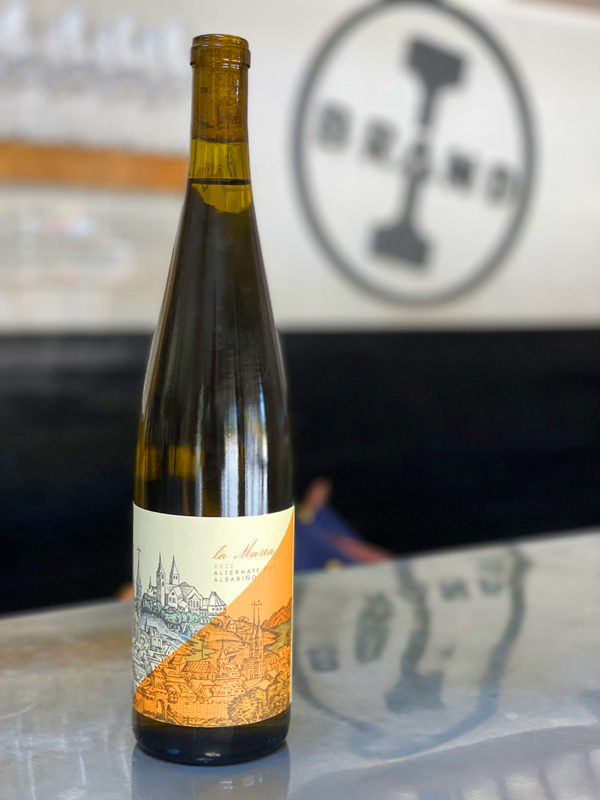
2022 La Marea by Ian Brand, Albarino “Alt Cut” Kristy Vineyard, Monterey County.
One of Monterey’s most satisfying and pure wines, the special edition of Ian Brand’s Albarino from the stony Kristy Vineyard called the Alt Cut sees a little skin contact and was originally done with a special batch of grapes that was vineyard yeast fermented or Pied de Cuve and was whole cluster pressed, giving more distinction and intensity of flavors. This vintage Alt Cut version is wonderfully stylish and, like I’ve mentioned before, is far more true in character with the Spanish Rias Baixas wines that inspired it, with electric acidity and green apple leading the way along with layers of citrus, melon and fleshy white peach, finishing with tangy notes, white blossoms and saline infused wet rock. The 2022 is medium bodied and generous, a tad more textural than is usually the case, but still bone dry and fabulously detailed throughout with a little touch of bitter almond and the natural acidity adding a nice tension. Soaked on the skins, the grapes are left for two days in cold vats, fermented cool and then aged with minimal lees contact, after which, it was bottled early to preserve its verve.
Ian Brand has fallen in love with white varietals and sees Monterey County and the central Coast as prime terroir to really create some magical stuff, with his Melon, Chenin Blanc, Arneis, skin contact Pinot Gris and the two versions of Albarino rally expressing that potential, not to mention his outstanding Sauvignon Blanc and unique Chardonnay offerings. Recently Ian told he was going to even out his lineup between red and white wines and was on the hunt for exotic white grapes and may help plant some himself, with the potential to add some more Italian varietals and even some Assyrtiko, the Greek white grape, most commonly found on the island of Santorini, which Ian so close up on a visit to the Greece this Summer. So it is exciting times for California wines and lots to look forward to, though there’s a lot to admire in the present and this new release of Brand’s Alt Cut, think extended disco mix, Albarino is tasty right now and goes great with oysters and mussels as well as going great with grilled Sardines and or squid. The La Marea line, as noted, is Brand’s Spanish inspired set of Garnacha (Grenache) and Albarino offerings, and are fantastic values for the quality in the bottle, I highly recommend checking them out.
($30 Est.) 92 Points, grapelive
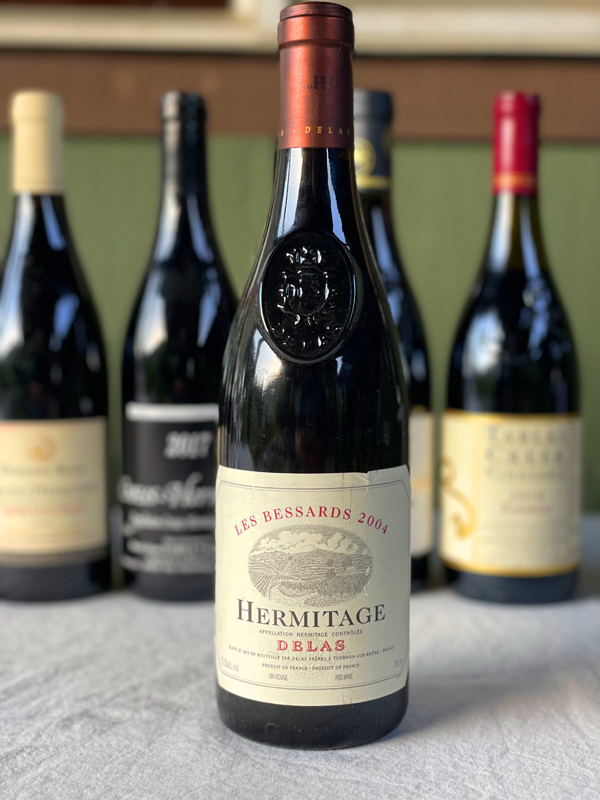
2004 Delas Freres, Hermitage Rouge “Les Bessards” Northern Rhone, France.
It’s always a great pleasure to enjoy, at a leisurely pace, a bottle of close to 20 year old Hermitage, and this 2004 Les Bessards Hermitage from Delas really shined on the night, which was spent casually celebrating the great wines of the Rhone Valley in an informal tasting that pitted the North v. South and Grenache v. Syrah, which saw this one regally edging out the competition. Fully developed in the bottle and still a deep garnet in the glass, this vintage seduces with its subtle restraint and length, rather than by force, it fills the mouth with brambly berries, dried blueberries, currants, plums and macerated cherries that are accented by wild herbs, damp earth, cedar, peppery all spice, violet florals and hints of tobacco, tapenade, licorice and charred embers. This wine continued to impress for hours and held court, in the way a Grand Cru Burgundy would against village wines, filling out nicely and showing off silken tannins, and again, providing heavenly length and delicacy. Maybe not on the level of Chave, Jaboulet La Chapelle or the Chapoutier ‘Ermitage cru bottlings, this still was an outstanding wine on the night for which I am grateful to have tried, thanks to a friend that had cellared this bottle since new. Up against younger and vividly expressive or fruit driven Chateauneufs, a particularly good Crozes-Hermitage-Hermitage and a Gigondas on the night, this finely aged wine held its own and was brilliant with a full range of cheeses and grilled meats, no small feat that!
The Hermitage “Les Bessards” one of the region’s most coveted areas for Syrah set on classic granite soils, but with some of what Delas Freres calls, alluvial quaternary delta deposits and Pliocene marl, and is named after a sub-zone of the Hermitage appellation, where, as the winery adds, the steeply terraced hillside vineyards have an excellent southwestern exposure. These cherished vineyard sites, including Chapoutier’s legendary Méal, produce some of the world’s greatest 100% Syrah offerings, with the Delas Les Bessards always being a solid effort, which is prized by savvy collectors. Delas owns 25 acres here, which seems huge by Rhône standards, but they note, that this cuvée is a special selection, with the grapes come exclusively from the oldest parcels of “Les Bessards” that sit in the prime Hermitage slopes. This wine, as the winery reminds me, is only made in the very best years and the Les Bessards is limited to just 6,000 bottles in any given vintage, with this 2004, a lighter more classic year, just making the cut, after two extreme years. To produce this Les Bessards, Delas did pretty much what they always do here, fermenting the Syrah grapes, mostly all de-stemmed, in traditional, open-topped concrete tanks, after they saw two days of cold soaking with skin contact at cool temperatures. During maceration and fermentation the must saw daily cap punching and pumping overs, lasting about 10 days, with a total maceration of up to 20 days. After pressing the evevage lasts between 12 and 14 months in mostly new oak barrels, which softens the wine and allows for a luxurious charm, as seen here to impressive effect.
($100-200 Est.) 94 Points, grapelive
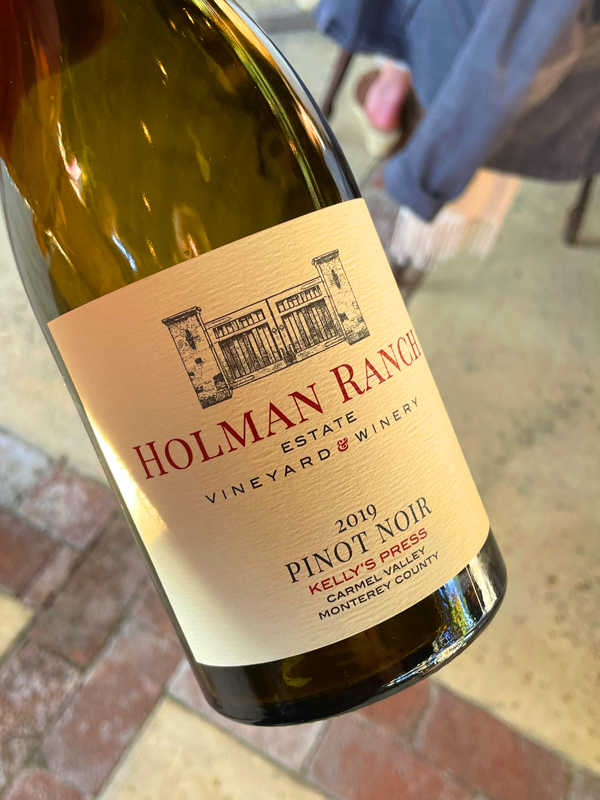
2019 Holman Ranch Estate Vineyards & Winery, Pinot Noir, Kelly’s Press, Carmel Valley AVA, Monterey County.
These Holman Ranch have really turned it on in the last two vintage releases, 2018 and 2019, as seen in their set of estate Pinot Noirs, like this beautiful Kelly’s Press bottling, which I have tasted twice now and that very really impressed me with its depth, mouth feel and structure on the fresh and expressive red fruited medium bodied palate. This multi clone and transparent Pinot shows a delicious array of black cherry, raspberry, pomegranate and blood orange fruits along with silky tannin and juicy acidity that holds things together, as well as pretty floral and mineral tones with subtle neutral oak notes. There’s a background of spice, sage, rose petals, delicate savory events from the use of partial whole cluster and cola bean accents that perfectly sets off the core flavors and adds complexity. The Kelly’s Press is Holman’s entry level Estate Pinot, but really delivers a lot of bang for the buck and is super with a wide range of cuisine choices and dishes, including grilled salmon and poultry.
The Holman Ranch Winery makes a very focused a range of wines, under the guidance of the father and son winemaking team Greg and Cris Vita, which demonstrate the unique characteristics of this hillside property in Carmel Valley, including its rocky soils and coastal climate. The rootstocks and the mix of California heritage and Dijon clones are carefully selected to make the most expressive and distinct wines, with this Kelly’s Press Pinot seeing the full range of seven clones, including Calera, Pommard, 828, 667, 777, 115 and Swan. The Ranch employs organic and sustainable farming practices, avoiding the use of any pesticides or herbicides, to preserve the environment and nature of the site and encourage small yields to enhance richness and depth here. The Holman Ranch Pinots sees stainless steel maceration and fermentation with carefully managed temperature control and extraction before being gently pressed, in this case with the Kelly’s Press, to well used French oak 228L barriques to age, maturing for 11 months before bottling. There’s a lot to like in the latest set of wines from Holman Ranch, with this one, an excellent value, being one to chase down!
($40 Est.) 93 Points, grapelive
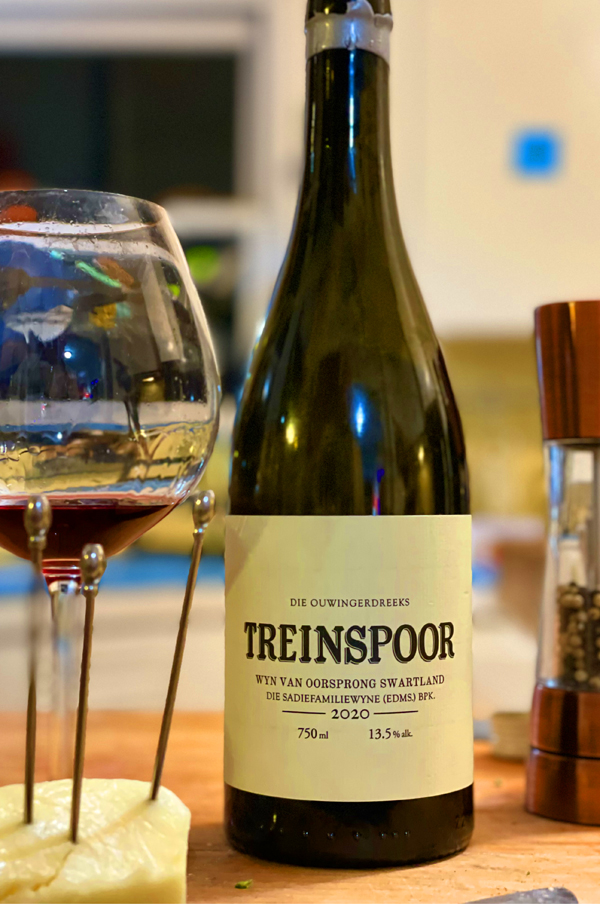
2020 Sadie Family – Die Ouwingerdreeks, Tinta Barroca “Treinspoor” Swartland, South Africa.
The latest Treinspoor Tinta Barocca, by Eben Sadie is, as the previous versions I’ve had, deep in flavors, lively by nature and full of complexities, dark garnet and ruby hued with floral lilac bouquet, a fresh mineral intensity on the palate, again showing concord grape, black currant, plum and kirsch fruits, plus an array of spices, dried snappy herbs, crushed stones, sticky lavender and lingering tart pomegranate. I am profoundly moved by these Sadie Family wines and they continue to impress me greatly and while sensuous efforts, they have a serious impact (grip) adding savory, partial whole cluster and stemmy/earthy notes and a seductive textural quality. Sadie notes that he feels Tinta Barroca has the personality of Nebbiolo and the aromatics of Syrah, with myself adding that it reminds a bit of old vine Carignan and or Mencia (think Raul Perez) too. Tinta Barroca is a thin skinned and fickle Portuguese red wine grape, with good acidity and loads of tannin, that is grown primarily in the Douro region with some plantings in South Africa, as seen here by the famous Eben Sadie, as well as Adi Badenhorst of AA Badenhorst, another version I love, and in the Riverland wine region of Australia, which I’ve never tasted. In Portugal, as well documented, it is most commonly used as blending grape in Port wines, while in the new world regions it often made into a mono-varietal wine, though sometimes blended. The vine was thought to have been introduced to the Douro region of Portugal back in the late 1800s and was employed in the cooler areas as it sunburns easily and can thrive in vineyards planted on north-facing slopes there. I must say, as much as I admire vintage Port, there is no question in my mind that the most compelling Tinta Barroca wines are these South African single varietal wines, and this one in particular is mind blowing and age worthy, I only wish I had been smart enough to buy a full case or at least 6 bottles to cellar another 5 to 10 years!
This unique old head trained vineyard is located next to the old railway line (treinspoor) hence the name of the wine here by Eben Sadie, who has really elevated the wines of South Africa over the last 15 years and who’s wines are mentioned in the same breath as the legends of Burgundy, like Rousseau, Pacalet and Mugnier, as well the Rhone greats like Jamet, Graillot, Rayas and Dard & Ribo, with his signature red blend Columella being one of world’s greatest wines. For his Treinspoor, which is 100% bush vines Tinta Barocca grown on, what Sadie says, is Alluvial stony soils with sandstone, granite and quartz, in Swartland’s Malmesbury area, which is influenced by proximity to the Southern sea, but sees plenty of harsh South African sun. These old vines vines have developed, as Sadie explains, a canopy framework to keep the bunches nicely sheltered from the intense Swartland sun, making for a wine of stunning purity and dynamic force, as this vintage shows off fantastically well. Sadie also, in his own words, translated, makes clear that Treinspoor 2020 is the result of 10 years of working the golden threads we could read in the makeup of this variety, or in my words, unlocking its very best expression to date. Going on he continues that the spicy, mineral, graphite and earthy characteristics in his Tinta Barroca are flowing into a river of tannins and textures, and his Treinspoor has almost no start nor any end. The winemaking is natural and the grapes were native yeast fermented with 50% whole clusters and 50% being de-stemmed and the maceration on the skins, in vat, lasts about a month, but with gentle bucket overs, with Sadie mentioning that it is very easy to over-extract Tinta Barocca, since the grapes hold an abundance of tannins. After being pressed, using an old basket press the wine is aged just about 11 months and in, what Sadie calls 28-year-old conical wooden casks that do not impart any overt wood flavor, before an extra month or so in cement tank, to promote transparency and terroir. As I’ve proclaimed and shouted loudly, these Sadie wines need to be on your bucket list, with high recommendation of this wine, the old vine white, and the mentioned Mourvedre and Syrah based Columella.
($69 Est.) 95+ Points, grapelive
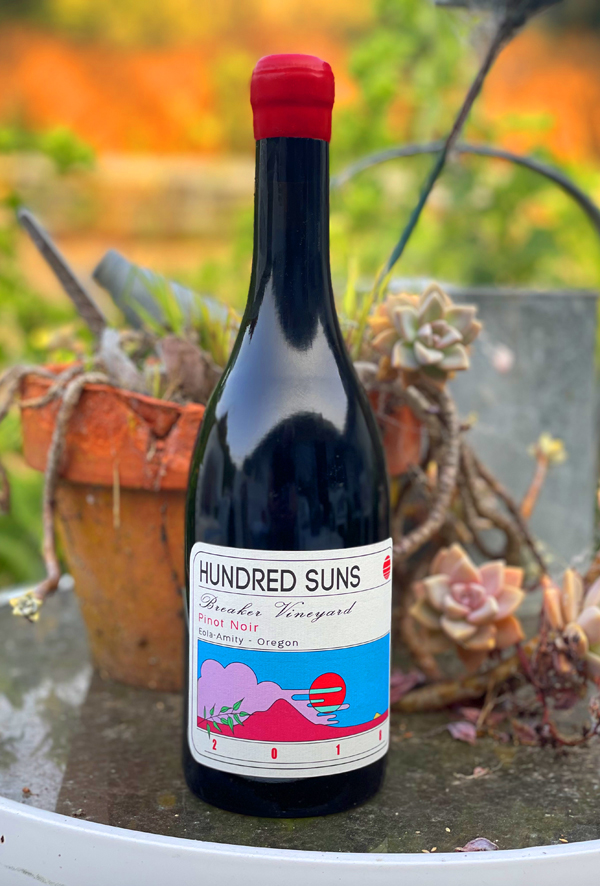
2018 Hundred Suns, Pinot Noir, Breaker Vineyard, Eola-Amity AVA, Willamette Valley, Oregon.
One of my my favorite wineries and one of the stars in Oregon, is without question Hundred Suns and Monterey raised winemaker Grant Coulter who’s Pinots are just spectacular, like this fabulously complex and opulent old vine Breaker Vineyard Pinot Noir from the 2018 vintage. I held on to this one as one as I could before I impatiently popped the cork, excitedly and expectantly, getting all the rewards, even though it still has another decade at least to develop! The concentrated medium bodied palate has lost the carbonic effect at this point and is pure Pinot hedonism in the glass with a dark ruby/garnet color and deeply floral nose, which adds spice and mineral notes to an array of red fruits before leading to a luxuriously silken core of black cherry, forest berry, plum and red currant fruits. This wine is exceptionally lovely and even got better with food and time out of the bottle adding snappy cinnamon, savory elements, grilled herbs and a delicate, but sultry, earthiness that perfectly lifted up the ripe/supple fruit here and providing some fine tension as well, which great wine have. Coming from about 550 feet up in the Eola-Amity area and with perfect Southeast exposure these grapes saw good hang time and made for an outstanding effort from Coulter. Made uniquely with an all native yeast fermentation in three distinct lots and then aged for 10 months in neutral, 5 year, air-dried French Burgundy style 228L barrels. These vines are dry farmed and organic, yielding, according to Grant, just over one ton per acre, hence the fruit density and depth here. One portion of the grapes was de-stemmed into a small, open-top fermenter, as a base in traditional fashion, while the second portion was placed 100% whole bunch in a 500-liter amphora and left untouched for 19 days, giving a carbonic and expressive fruit forward quality, with the last portion was left 100% whole bunch and foot crushed only for that umami and crunchy edginess.
As mentioned here in my prior reviews, winemaker, Grant Coulter, the ex Beaux Freres star, who along with his wife Renée Saint-Amour started their own label Hundred Suns in 2015, with a focus on small lot Pinots, like this one, of which, along with the Shea Vineyard, the Bednarik Vineyard, and the Sequitur Vineyard are some of their signature wines. The Pinots are all handcrafted to show transparency, lush fruit and terroir influence and Coulter has been experimenting with the use of Amphora, as seen here on the Breaker Pinot and always uses a significant amount of whole cluster. The wines are exceptional in their youth, having an almost Cru Beaujolais like personality, but cellaring looks like a good idea, especially if you want the flavors to fold more into traditional Pinot in profile, as this one has to near perfection. So I myself have, as mentioned, put a few bottles away for the long term, or semi, in this case, and with the natural acidity and backbone they have, they should provide rewarding drinking pleasure well into the future, though such patience is hard. I love how they taste young, especially with the right cuisine pairings, though I do look forward to holding on to my other bottles now.The Breaker Vineyard is where Coulter and Saint-Amour live and it was originally planted back in 1972 on its own roots, as Coulter notes, and it occupies a windswept rocky hill on the northern tip of the Eola-Amity Hills. The original cuttings came from Dick Erath and were farmed by Rich Zielinski for four decades, as he goes on to say, and saw some of the first Dijon clones in the area. To the north of the vineyard the soils are predominantly Nekia, moderately deep silty clay soils on top of basalt bedrock, while the southern portion is predominantly Gelderman soil series which has much thinner topsoils with rocks and cobbles strewn throughout the rows, which I believe adds loads of character here. The organic farming, was, in hope, to coax more years out of these old vines, but sadly, Coulter continues, that Phylloxera and viruses have taken hold in the vineyard, resulting in diminished yields and the 2019 vintage was the last year they produced a wine from the original vines, so cherish any you find!
($50 Est.) 96 Points, grapelive
Grapelive.com – Wine Reviews – August 2023
2022 Chesebro, Vermentino, Cedar Lane Vineyard, Arroyo Seco AVA, Monterey County.
This crisp and lively Chesebro Cedar Lane Vermentino pushes this varietal to its lightest, mineral toned and freshest edges with zesty lemon/lime, white peach and tart melon fruits leading the way with herb, spice and saline infused stones, making for a superb wine to enjoy with the days sea food harvest or catch, especially briny and or shellfish dishes. The 2022 Vermentino enjoys a bit more width than prior vintages, but still very steely, seashore infused and vibrant throughout with just the right amount of palate roundness and expansion to please texturally. Mark Chesebro, now with his son Will taking on a bigger role in the winemaking, really are the face of the Arroyo Seco AVA and have really helped raise the profile of this area just past the more famous Santa Lucia Highlands, but with a similar breezy cool marine influenced climate and a complex mix of stony granite laced soils with some large rocks, loams and alluvial deposits, which suits grapes like Vermentino, promoting acidity and ripe flavors. Mark’s Vermentino, might have been the Central Coast’s first 100% varietal version of this grape and has long been a local favorite in the Monterey region and great with the local cuisine.
Vermentino has found a happy home here in Monterey’s Arroyo Seco, with this grape also known as Rolle and mostly found close to the Mediterranean Sea, especially on the islands of Sardinia and Corsica, it has been championed by none other than ex Bonny Doon founder Randall Graham, who believes it is one of the best white varietals for California. In recent years you’ve seen tons of interesting efforts from this grape, notably Tablas Creek who brought a Chateauneuf du Pape clone over in the 1990s. I first tried all stainless steel fermented and aged Chesebro’s Vermentino in the mid 2000s and have always admired its electric zesty quality, it is always great with clams and oysters, as well as a nice picnic wine. Mark Chesebro, who was a winemaker at Bernardus Winery in Carmel Valley, studied chemistry and biology at UC Riverside and UC Santa Cruz, before going back to school at UC Davis to study enology and viticulture with an eye toward creating a sustainable farm and vineyard, as he puts it, to live off the land, based on a suggestion of some Europeans he met while at Davis. He and his family presently on a ranch in Carmel Valley, where they grow grapes, apples, near to the vines in Arroyo Seco, which he farms, with the help of his sons. It’s a great time to discover these Chesebro wines, especially these crisp Summer whites, with this ultra pale and pure Vermentino, the Cedar Lane Sauvignon Blanc and the Albarino being great ways to start.
($25 Est.) 91 Points, grapelive
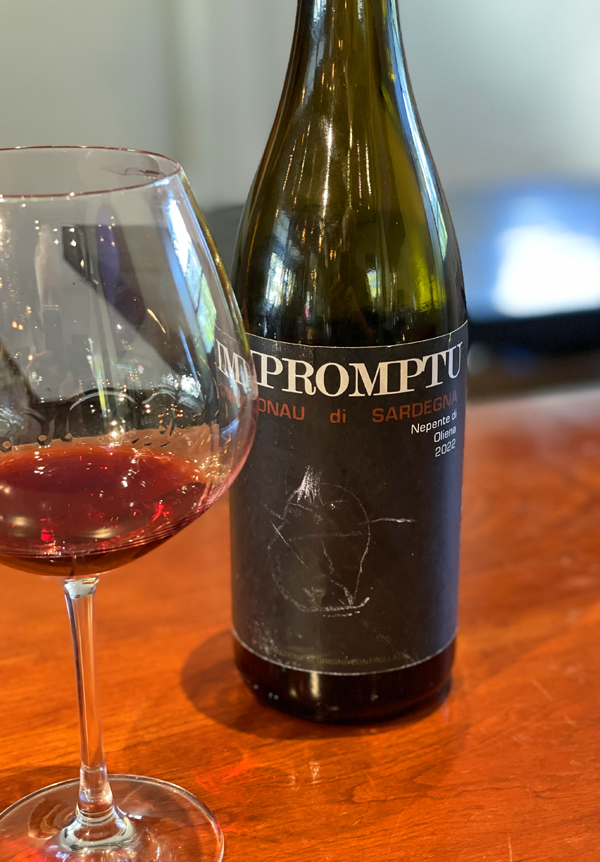
2022 Impromptu – Giuséppi Còssu, Cannonau di Sardegna DOC, Nepente di Oliena, Sardinia, Italy.
The hedonistically pure and youthful Impromptu Cannonau di Sardegna from budding winemaker Giuséppi Còssu with the help of Gostolai, a well respected local producer based in the Nepenti di Oliena appellation with access to sustainable old vine hillside grapes, is the second release of Impromptu, named after his love of jazz improvisation, following his micro test lot in 2019 and is an impressive effort. A jazz drummer, a native of Sardinia and now living on the central coast, Giuséppi has long history in wine both in his homeland where he was a sommelier and bistro owner that also helped his grandfather make homemade wines as a kid to being a Italian wine specialist from many importers over the years, who currently is finishing up his extension enology degree in winemaking at UC Davis. His itch to make wine in his native land led him to find vineyard sources close to where he grew up and to craft a wine in the old world traditions with Cannonau being his chosen grape and his 2022 is bright ruby in the glass, aromatic and wonderfully expressive on the palate with crushed red berries leading the way with some whole cluster pop, along with some stony elements and an array of spices without any traces of oak interference. I was instantly reminded of the Grenache (which is what Cannonau is) from the southern Rhône and close in style to Beaucastel’s Coudoulet and or wines from Cairanne or Rasteau, which is in my mind is pretty tasty stuff. Lush and clean on the palate, which full bodied, but with a youthful vitality and fresh detailing as to not feel heavy, giving supple array of raspberry, plum, candied cherry and strawberry compote along with sage, bay leaf, anise, a light hint of pepper and cinnamon accents. Interesting is that the origin of Cannonau’s name is because of a peculiar characteristic of the grape, which: can have a reluctance to release it color into the must. So to achieve its deep purple/ruby color, the ancient Sardinian winemakers stirred the must with a large wood cane that looked somewhat like a big wooden spoon, stopping when they had achieved the right hue. It is well documented that In the local dialect, this somewhat unique tool was called a cannonau, hence the name.
Giuséppi Còssu admires the natural wine movement, especially with what he has tasted from Beaujolais, like the wines of Dutraive and Foillard and some of the Loire Valley legends, but is without a fanatical dogma in his own wines, wanting to create wines of pleasure and place above all else. Though so far he’s been able to employ an ultra low sulfur regime and make non adjusted wines, that are also faithful to the traditions here. His passion for Cannonau is his main focus, working with a few small family vineyards, as noted, in the cooler higher elevation hillsides of the Nepente di Oliena, where bold flavors develop from mature head trained and dry farmed vines set on the sandy granite based soils that all allow for deep concentration and balance, as seen in Còssu’s 2022 vintage especially. Còssu believes, as do the latest science suggests, that Cannonau, which was originally thought to be of Spanish grape linage and that it had been brought to Sardinia in the 14th century, during Spain’s occupation of Sardinia, though recent studies have proven that it’s native to the island. Historic mention and carbon dating suggest it is a purely Sardinian variety from birth and it was from here that it spread to the Iberian Peninsula and then on to France, where it is home in and the main grape of Chateauneuf du Pape and the Southern Rhone Valley. Cannonau is also this, nuragic island’s most famous red grape variety and the pride of Sardinia’s inhabitants and in this case a proud ex-pat. Cannonau, as mentioned, is called Grenache in France and as Garnacha, Garnatxa, Garnacho (Rioja) and sometimes even Alicante in Spain and in parts of Italy, and has found a home in the new world and been in Australia and California since the mid to late 1800s, though it truly, as Còssu will tell you, expresses the soul of Sardinia. This vintage saw whole bunches, a foot trod crush, native yeast fermentation and hand punch downs durning maceration in ancient wood vats before being pressed to neutral, very old, French barriques for close to 9 months, which is as close to his ideal as it gets, making Giusèppi’s 2022 Cannonau transparent and vividly terroir driven. The 2019 version, now pretty all drunk, except for a few bottles, which I was lucky to try on a few occasions, is gaining tertiary, earthy and savory elements, while this soon to be released 2022*, only 2 barrels made, is all about joyous Cannonau (Grenache) fruit and a sly attractive youthful confidence. *Pre-Release Sample
($59 Est.) 94 Points, grapelive
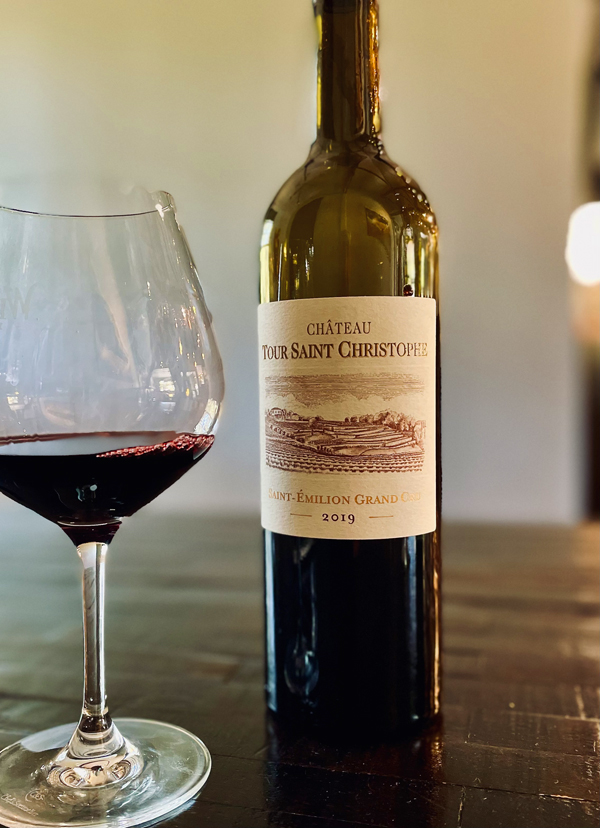
2019 Chateau Tour Saint Christophe, Saint-Emilion, Grand Cru Classé, Red Bordeaux, France.
The dark inky and lush 2019 Tour Saint Christophe is made from 80% Merlot and 20% Cabernet Franc grown partly planted on narrow terraces in Saint-Emilion’s clay and limestone soils, which in this case brings out chocolatey rich fruit, especially in the Merlot, which dominates the core of this wine with dark berry, plum, currant and cherry fruit with delicate pencil lead, earthy loam, spice, anise, liqueur and tobacco leaf accents along with smooth ripe tannins and lingering sweet cedar, hoisin, fig and vanilla oak nuances. The aromatics are much the same, adding florals of lilac, blueberry and incense as well as mulberry and a touch of mineral for an overall complex and opulent wine, something we’ve come to enjoy from Grand Cru Saint-Emilion Bordeaux offerings in the last 20 to 30 years. I have read that the soils are unique here with red clay mainly on top with broken Astéries limestone inter-mixed over a firmer bedrock of salty limestone, that maybe add a distinctive quality. I got to this bottle, after it had been open a while, like it had been decanted, and I was happy it wasn’t quite as ripe as some Saint-Emilion wines have become and I appreciated the subtle austere notes and light savory tones behind the fruit and could see it going great with duck breast, squab and or lamb. The Tour Saint Christophe is part of a seven winery collection with mainly properties in the right bank, including the well regarded Chateau Haut-Brisson, also in Saint-Emilion and Enclos Tourmaline in Pomerol, which is 100% Merlot.
Chateau Tour Saintt Christophe, a Saint-Emilion Grand Cru estate, is located between the two famous properties of Troplong Mondot and Tertre Roteboeuf, with a classic 20 hectare vineyard that is planted to about 80% Merlot and 20% Cabernet Franc, and is owned by the Vignobles K Group and Peter Kwok, who was born in Vietnam and his daughter. This Chateau, bought in 2012, is In a picturesque setting, on the hillside of Cassevert overlooking the Saint Laurent Valley, and has those intriguing terraces, and green forests behind it. Château Tour Saint Christophewas classified in 2022 as Grand Cru Classé.The wines are made by a notable team including Emmanuelle Fulchi, Thomas Duclos and world renown consultant Michel Rolland, who was helped Peter since 1997. The wine, which echos the vineyard make, 80% Merlot and 20% Cabernet Franc was cement vat fermented was aged in barrel for 14 months in 40% new French oak, 40% second fill barrels, and 20% third fill barrels, which shows on the full bodied palate and in the fine grained almost creamy tannin and luxurious structure. As I returned to sip again and again there was a vein of mixed spices and wild mint as some of the Cab Franc character emerged, which was welcomed and it proves entertaining throughout. I’m told this mature vineyard is located in Saint-Christophe-des-Bardes area of Saint-Emilion and the average age of vines is 30 years old, which shows here and there’s again a sense of restraint in the freshness of the wine, which is not overtly heavy at 14.3%. Not a bad value here, this looks to be a label to follow and this vintage looks to be very solid for mid term aging and a savvy buy on a wine list.
($42 Est.) 92 Points, grapelive
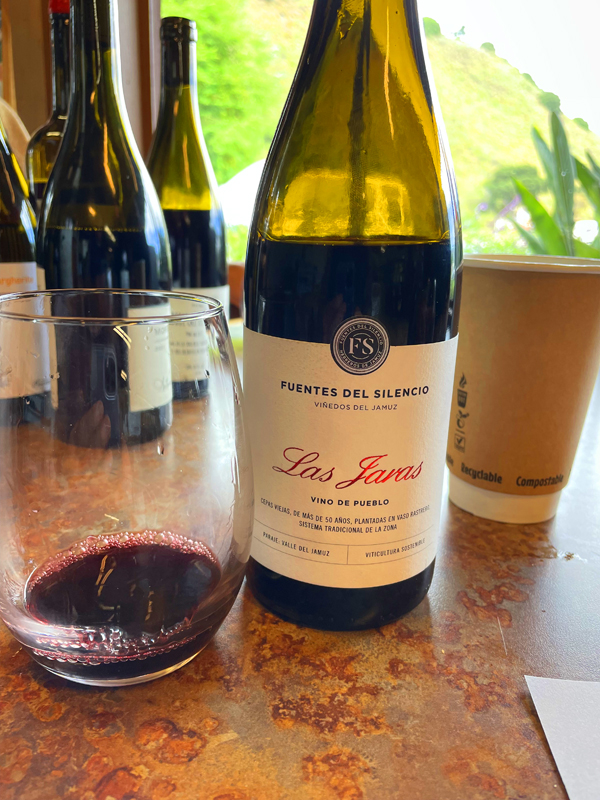
2021 Fuentes del Silencio, Las Jaras, Castilla y Leon, Spain.
The beautifully perfumed deep purple/garnet Fuentes del Silencio Las Jaras delivers an impressive performance in the glass, it is mostly a blend of old vine Mencia along with Alicante Bouschet and Prieto Picudo, of which are also used in the two top wines at this unique estate in Spain’s Castilla y Leon region and near the almost forgotten area of Jamuz, that was originally popular in Roman times, but had lost out in years after WWII and is making a remarkable comeback now. As mentioned in prior reviews, this winery is making some awesome wines and this one, for the price especially, is outrageously good with amazing concentration, natural acidity and a brilliant tension between juicy fruit density and savory tones, it shows off loads of personality with a blackberry, currant, cranberry and damson plum fruited core, along with zesty spices, cinnamon, peppercorns, star anise and clove, as well as delicate earthy loam, chalky stones, minerallity and a touch of saline or iodine. It’s hard to think of this Las Jaras as their entry level wine, such is the complexity and full joyous nature that comes through, let’s just say the gap to the more expensive bottlings here is tiny, though distinct. The high plains of Herreros de Jamuz, might be consider the undiscovered treasure like the Biers was 20 odd years ago and similar in character, with Mencia taking center stage and leading the way here with many plots well over 100 years old. Interesting, with an average of 2805 feet above sea level, this Jamuz area is likely the highest vineyards where Mencia is grown in all of Spain, making for an extreme terroir with an alpine like cool climate, slate driven soils and long grape hang time. The first wine from Fuentes del Silencio I tried and reviewed was the 2019 Las Quintas, which was a little more mature and generously vinous, capturing my attention, but this wine at just 25 dollars, is a must have!
The Fuentes del Silencio winery, located in northwestern Spain, part of greater Castilla y Leon region, almost a catch all from Galicia to almost Madrid, and set n the high eastern foothills of the Galician mountains, this is a label to watch for Spanish wine fans. The Las Jaras is a blend made from ungrafted mostly ancient and recently resurrected organic 80 to 150-year-old Prieto Picudo, Mencía and Alicante Bouschet vines, with typically a breakdown of about 60% Mencía, 30% Prieto Picudo, a super rare indigenous varietal and 10% Alicante Bouschet, also known as Garnacha Tintorera. The Mencia stars here, giving a dark floral dimension, richness on the medium bodied palate and still having vitality and brisk acidity, while the Prieto Picudo provides almost Nebbiolo like sense of grippy tannin and the Alicante Bouschet helps with fleshy juicy notes, spice and inky color. The grapes are harvested together and get an old school foot stomping with mostly full bunches and just over half stems included for this wine.The winery info notes that the Las Jaras saw about 60% whole cluster, spontaneous indigenous yeast fermentation and was made in 50-hectoliter vertical wooden tronconic tanks with an infusion style maceration, to extract color and fruit without too much tannin, lasting from 21 to 40 days. After primary fermentation the wine goes through natural malos and ages 10 months in the same 50-hectoliter vertical wooden tronconic tanks, which are definitely neutral and offer no new oak influence at all, making for a wine of exceptional purity and rustic charm. The Jamuz area has complex soils here which has quartzite and the mentioned slate, adding to the mineral personality of the wines, plus ancient stony alluvial deposits of the Villafrankian age, known locally as Rañas, along with some clay which hold moisture in this arid landscape. I’m becoming a huge fan of these Fuentes del Silencio wines, with their Las Quintas single parcel wine being the first one, as mentioned, to draw me in, and especially this one, which is inline with my beloved Ribeira Sacra (Mencia) bottlings by Laura Lorenzo at Daterra Viticultores and or Pedro Rodriguez’s Guimaro, I could drink this almost every week!
($25 Est.) 94 Points, grapelive
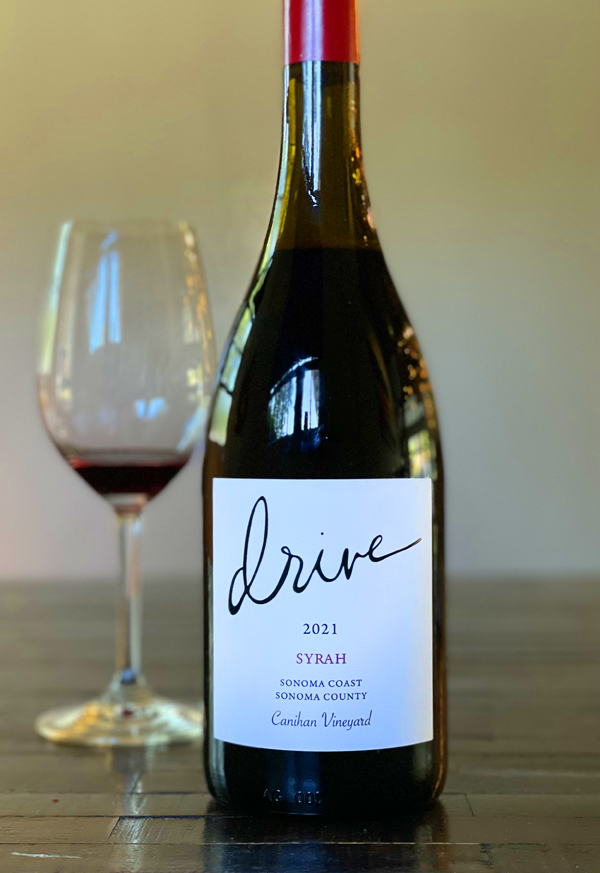
2021 Drive Wines, Syrah, Canihan Vineyard, Sonoma Coast.
After a successful start with Zinfandel and a Zin Rosé, Drive Wines has now released two new wines, a Carneros Pinot Noir and this dark purple/garnet deep and spicy Cote-Rotie inspired Sonoma Coast Syrah, which has a core of blackberry, blueberry compote and plum fruit, as well as a delicate earthiness, peppery spice, licorice and cedar accents that complete to cooler climate profile and making for a delicious effort. Cooled by the San Pablo Bay sea breezes, this Canihan Vineyard Syrah, only 11 barrels made, which came in at just 13.3 % natural alcohol, had a plenty of hang time to develop full flavors, sweet, but taut tannins and its color extraction. The Drive Syrah, sourced from organic vines, again leaning on Cote-Rotie, was 94% Syrah and 6% Viognier, which was traditionally co-fermented in, adding its own little bit of sunshine to the wine. The winemaking here, by John Musto, is direct and done to promote purity with about 15% whole clusters in the maceration and fermentation, which lasted about 10 days with hand punch downs, keeping the cap submerged as possible being pressing to barrel. The wood use here was 50% 2 year old barrels and 50% full neutral wood and the Syrah saw an elevage of about 15 months, all to allow the wine time to resolve its peaky nature and flow more seamlessly. Even though I loved the Zin by Drive, this one is certainly a level above and my favorite so far, it is best to enjoy this with hearty meaty foods, lamb kabobs and or grilled tri-tip steaks would go nicely here. This 2021 has enough grip to get your attention, so the food is essential in this youthful stage, but it really increases the sense of length and elevates the wine as a whole.
John Musto, founder and winemaker of Drive Wines based in Healdsburg, a wine industry insider that works for one of California’s greatest wineries, and who has, like me, a love and background in vintage cars and historic motor racing, began with some garage efforts and now does a tight collection of offerings from the Sonoma County. I reviewed some of Drive’s first releases with Musto’s 2017 Dry Creek Zinfandel from vines that were planted in 1904 at Puccioni Ranch being a particular favorite and was excited to try this new Syrah and wasn’t disappointed, it delivers everything you’d expect and more. Drive’s original label featured a little strip of bricks, famously the Wabash bricks, on the bottom of the label that pays tribute to the famed Brickyard, the Indianapolis Motor Speedway, hence the name Drive Wines, though the new wines have discrete and sleeker look to them, which I have warmed to. Musto’s connections have paid off in sourcing top grapes for his wines and the Canihan fruit, especially in a cool and almost perfect vintage like 2021, makes for an exceptional wine. The Canihan Vineyard, planted in 1998, includes a selection of Pinot Noir, Cabernet Franc and Syrah, Clone 1, that John got for this one, it is all organic and dry farmed and located in a breezy cool zone closer to Carneros in the Sonoma Valley in an area that is classified as Sonoma Coast. This pebbly site has predominately sandy loam over clay and delivers ripe flavors, but with vibrant acidity and moderate alcohol, perfect for capturing a more northern Rhone style wine, as Musto wanted and got here. I really enjoyed the aftertaste, of this 2021 Syrah, with lingering herbs de Provence, violets, contrasting savory notes and a bit bitter chocolate all adding to the delight here, and I suggest checking out these latest Drive wines.
($38 Est.) 93 Points, grapelive
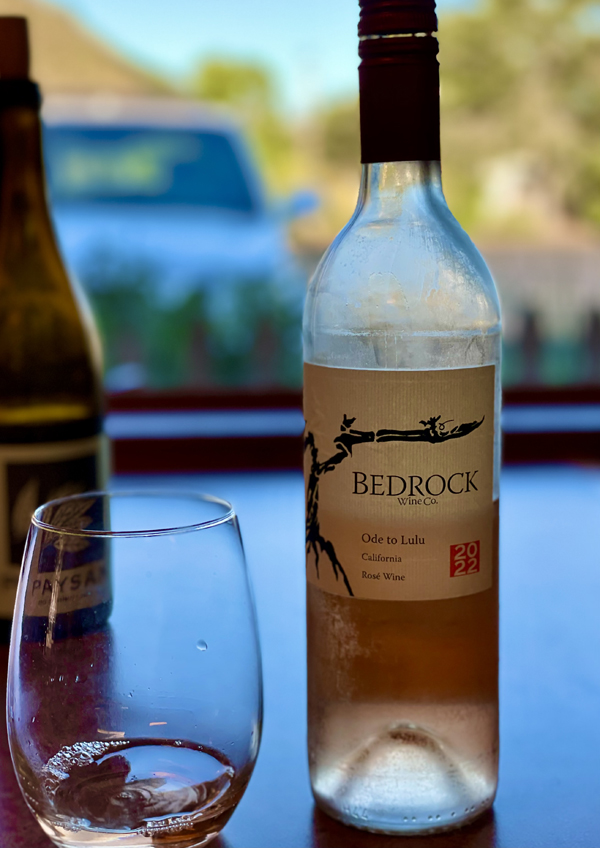
2022 Bedrock Wine Co, Rosé, Ode to Lulu, California.
Bright, steely/stony and crisp to start, the pale pinkish 2022 Ode to Lulu Rosé opens nicely to reveal ruby grapefruit, sour cherry, strawberry and subtle watermelon fruits, which feels nicely energetic, but pleasing on the medium bodied palate, making one of the best vintages to date here and one not to miss. I have somehow missed reviewing the last couple of years, which seems crazy, as this Provence styled Bedrock Rosé is now an almost must have wine Summer wine and one of the state’s most tasty versions. This vintage has enough ripe fruit to hold up to a wide array of cuisine choices from burgers to steamed mussels in a spicy broth, which is a delicious classic Mediterranean kind of pairing, that I highly recommend, plus it is great with any beach side meal. Bedrock has a fabulous latest set of wines, with their Heritage field blend Zin based bottlings leading the way, as expected, but there’s plenty of extras to explore with the Syrah offerings and this Rosé being ones to search out. The 2021 Bedrock Vineyard Heritage is their signature wine of the releases and it was absolutely brilliant recently, it is serious stuff for those who want to revel in California greatness, and then this one is a great warm up act.
Morgan Twain-Peterson’s Bedrock Ode to Lulu, as mentioned in my prior reviews, is a tribute wine to the legendary Lucie “Lulu” (Tempier) Peyraud, the matriarch of the famous Domaine Tempier, who’s wines are famous around the world, especially the Bandol Rosé, which this wine takes inspiration from. This dry pink is made from mainly Mourvèdre, like the Tempier, that gives serious structure and complexity with a touch of generous Grenache, adding a burst of fruit. Bedrock’s Ode to Lulu is typically crafted of 65% Mataro, aka Mourvèdre, mainly from old vines, set in sand in Oakley, some well over 80 years old and 35% Grenache from even older vines in Mendocino County that are grown on mix of ancient rocky soils. Made with traditional methods and picked with lower sugars, this seductive wine which some a cool fermentation and a short aging period with light lees, plus it was bottled quickly to preserve all the vibrancy. Morgan Twain-Peterson, who is now an MW, a master of wine, is one of the greatest voices in California wine as who has been a winemaker since a child, helping his dad, Joel Peterson of Ravenswood fame make wine, grew up appreciating these gnarly head trained vines. There’s a bunch of fun and well made stylishly crafted dry Rosé wines to discover in California with this Ode to Lulu being an easy choice for any occasion, it’s a good time to grab a few.
($22 Est.) 92 Points, grapelive
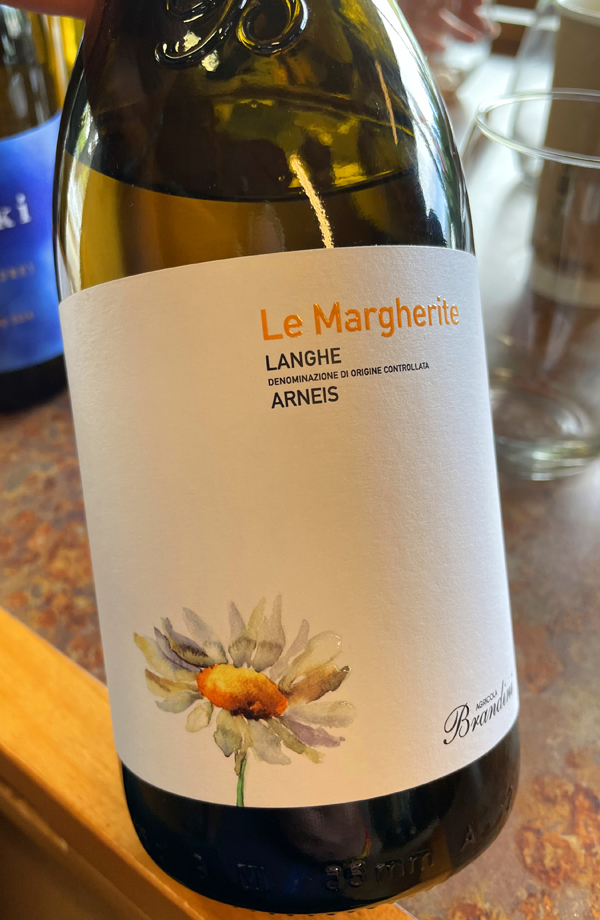
2021 Agricola Brandini, Langhe Arneis ‘Le Margherite’ Piedmonte White, Italy.
The impressive Brandini Arneis by the Bagnasco sisters, Serena and Giovanna, is bright and crisply focused, but with lingering length and expanding textural quality, making for a sublime varietal wine that shows off the best character of this native Piedmonte grape, that not too long ago almost went extinct before making an astonishing comeback. Local legends, Giacosa and Vietti were leaders in the Arneis revival and still craft fine versions of this grape, but many other producers are now doing fabulous things with Arneis, and I think Brandini’s is one of the best I’ve had in recent years. This vintage, which impresses me, has fresh intensity with lemon/lime, white peach and melon fruits along with almond, chalky stones, star anise and a faint herbal element in a fine tuned dry white wine with a salty zip on the finish, making it excellent with sea food and or creamy cheeses. A few sips in and things fill out and you get the sense of body, but without weight, and it is hard not to pour another glass and lean back in complete bliss of your choice in wine here.
The excellent draining calcareous sandy soils are, as the Brandini’s note, part of what part of the puzzle that allows their Arneis to do so well and showcase its best attributes, saying the grape actually struggles in heavy clay soils. So much attention is payed to small yields and organic methods in the vines, while in the cellar Brandini is intent on purity of form and terroir transmission, especially on the Arneis, which is fermented and aged exclusively in stainless steel. The perfectly ripened golden Arneis berries are whole cluster pressed and fermented with spontaneous yeasts with temperature control, starting cool, warmed slightly to finish primary and chilled down to prevent Malo (malolactic conversion) from happening, all to preserve vitality and verve in the wine. After that non malolactic fermentation, the Arneis is kept cold and the lees are stirred a few times, as they say, to bring a little more texture to the body and highlight the floral elements, then the wine is gently fined and filtered just prior to its bottling. I have been greatly, as mentioned, impressed by all these Brandini wines since meeting Giovanna at the San Francisco Slow Wine show almost two years ago now, especially their Barolo offerings, this Arneis and the latest Dolcetto.
($28 Est.) 93 Points, grapelive
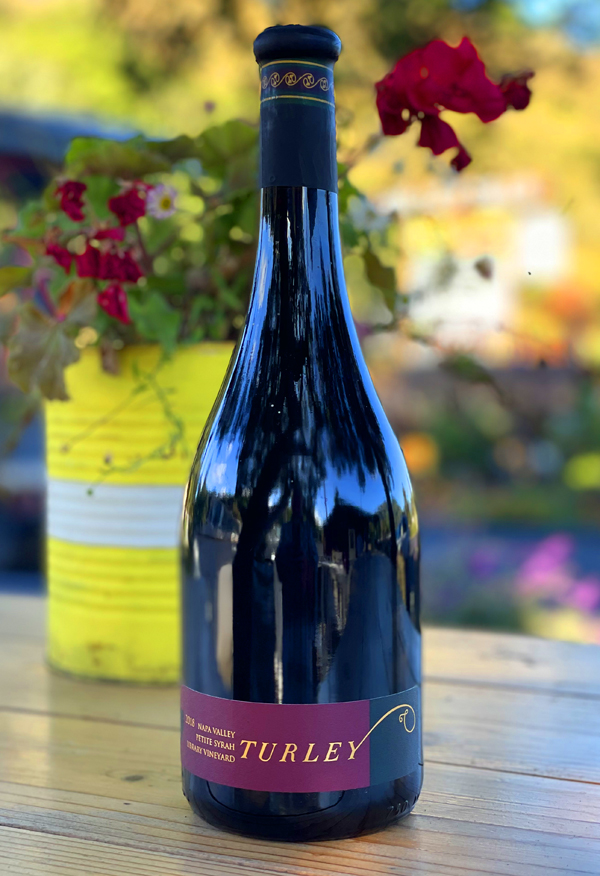
2018 Turley Wine Cellars, Petite Syrah, Library Vineyard, St. Helena, Napa Valley.
The inky purple/black Turley Library Vineyard 2018 Petite Syrah, from vines at least a hundred years old in the heart of St. Helena on gravelly loamy soils, is a massively appealing example of this grape and place with a intense rich core of black fruits, powerful structure and has a youthful and expressive full bodied palate that takes its time to unfold, but to great effect. This is incredible stuff that will certainly out live me, though still wonderfully enjoyable now, giving it time and air in the glass brings out a hugely delicious and rewarding wine with awesome fruit density, complex savory notes and stunning length. The teeth staining Library Vineyard Petite Syrah starts with blackberry, wild plum, creme de cassis, chocolate covered cherries and has hints of sandalwood, anise, a subtle stony earthy note, pipe tobacco, wild sage and vanilla, it begs for rack of lamb and or a steak to soften its tannin, but stays fresh with a nice touch of natural acidity. Wow, this is killer wine now and for the future when more secondary complexities with shine through, very impressive again from winemaker Tegan Passalacqua. As per normal at Turley, all organic grapes, native yeast fermentation, deep extraction during maceration and then aged 15 months in a combination of mostly 80% French and 20% American oak barrels with just 20% new wood employed to promote transparency, but give textural rich luxurious undertones.
Turley says that the Library Vineyard is one of the most unique vineyards in California, especially in the Napa, which has seen an almost monolithic mono-varietal movement since the 1990s to primarily Cabernet Sauvignon, sadly losing some of the most interesting and historic old school vineyards. Planted between 1880 and 1920, the Library Vineyard sits directly behind the St. Helena Public Library, and the vineyard is very varietally diverse, with many rarities, both red and white all inter-planted here. Turley notes it is mainly old vine (Durif) Petite Syrah, as Larry is want to call this grape, though these vines are mixed with a myriad of others goodies, Turley continues, including, Peloursin (one of the parent grapes of Petite Sirah aka Durif and or Petit Syrah), Cinsault, Syrah (the other parent grape of Petite Sirah), Mission, Alicante Bouschet, Grand Noir, Carignan, Grenache and a bit of Zinfandel, of course. There are also a number of white grapes here too, with Turley identifying, such as Muscat Alexandria, Muscadelle, Burger and even some almost forgotten Green Hungarian. Tegan’s team picks all the varietals together to make a wine truly expressive of the this amazing old heritage vineyard. With the price of most top quality Cabernets and or Bordeaux blends here in Napa getting closer to $300 a bottle, it is great to have offerings like this available for well under a hundred dollars, and even better if you are on their mailing list, where the 2021s are getting ready to ship. There’s a lot of fabulous stuff in Turley’s collection, and while most people gravitate to their remarkable Zinfandel offerings, I do love these Petite Syrahs, plus their Cinsault and Grenache, all of which I highly recommend.
($69 Est.) 95 Points, grapelive
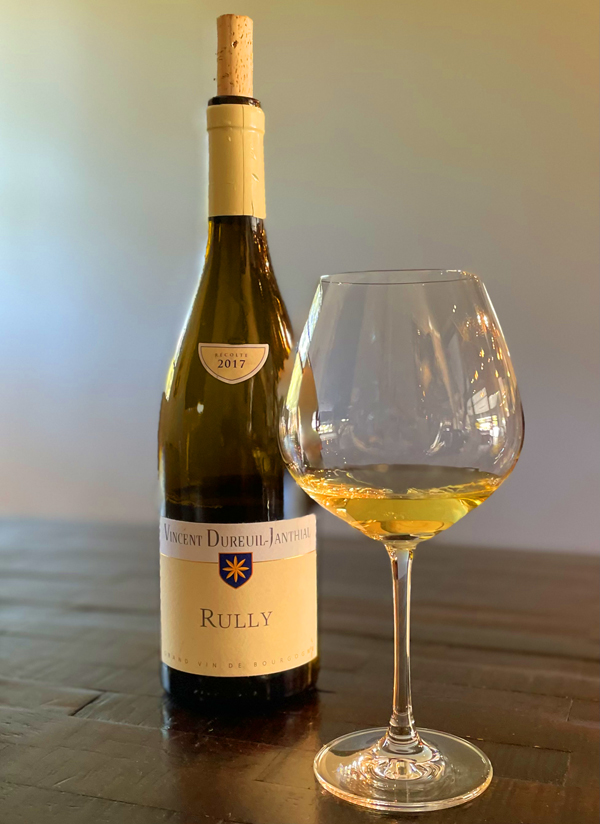
2017 Domaine Dureuil-Janthial, Rully, Bourgogne Blanc, France.
As I’ve mentioned, I’ve had a few wines by Vincent Dureuil, at Domaine Dureuil-Janthial recently, including his fabulous 2020 Côte Chalonnaise Aligoté, which my friend and wine enthusiast Lee Lightfoot shared with me and another wine insider Alex Lallos brought me this lovely and rewarding 2017 Rully to try, lucky me as this producer is making some fabulous whites these days. I know this small winery mainly for this Rully Blanc bottling, which is always an outstanding Burgundy value and this vintage is maturing well and delicious in the glass with a pale gold hue and fetching aromatics that include white flowers, wet stone and clove spice, leading to a lifted medium bodied palate of classic Burgundy goodies, with lemon preserves, quince, apple, pear and faint orange fruits, along with a strong mineral intensity, a rich leesy hazelnut note and a hint of brown butter or butterscotch decadence. The age has cut into the reduction and allowed a purity to shine through and the texture is elegant and rounded with losing its charming energy and mouth watering saline quality. White Burgundy enthusiasts would be smart and savvy to grab some of the current releases of Domaine Dureuil-Janthial, in particular the exotic and denser 2020s, though the lithe and steely 2021s are looking very attractive as well, depending or your mood and or preference of style.
I have also enjoyed Domaine Dureuil-Janthial’s regular Bourgogne Blanc in other vintages, and their Rully 1er Cru “Chapitre” as mentioned before, also, very much caught my attention, along with the Aligoté, which as I said above is very much worth chasing down. The winemaking at Domaine Dureuil-Janthial is pretty much a process of staying out of the way and allowing the vintage, the grapes and the vineyards do the work and the speaking in the bottle, rather than forcing anything in the cellar. Vincent Dureuil gives the grapes a soft and slow whole-cluster pressing and then racks the juice straight into exclusively used barriques where the Chardonnay ferments with only indigenous yeasts. And in most cases, the wine sees about 12 months on the lees in neutral barrel and then another 6 months in stainless steel tank before bottling, to promote transparency and keep loads of verve. Vincent who took over the Dureuil-Janthial domaine from his father Raymond in 1994, has passionately made it his mission in wine to up the game in this part of the Côte Chalonnaise, which sits just about five miles south of Chassagne-Montrachet, and especially Rully, which is a fine limestone and clays terroir. Though lesser known than some other places, like St. Aubin, Santenay or Saint Romain, Rully makes for some tasty Chardonnays that deliver some of the best bargains in White Burgundy, such as this one. There’s a lot to admire here, with Dureuil’s collection of Rully Blancs and Rouge, as well as a selection of Puligny-Montrachet bottlings and even a Mercurey Rouge to look out for.
($48 to 59 Est.) 92 Points, grapelive
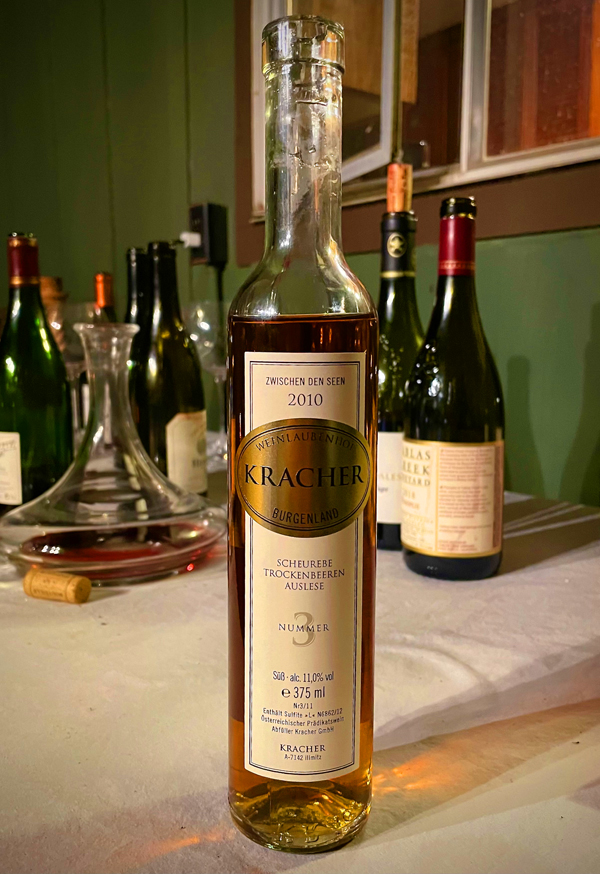
2010 Weinlaubenhof Kracher, Scheurebe Trockenbeerenauslese, Number 3, Dessert Wine, Zwischen den Seen, Burgenland, Austria.
The Kracher winery is one of Austria’s greatest estates, specializing in heavenly sweet wines of complexity, depth and structure and most famously their iconic Trockenbeerenauslese or TBAs, which are made from various grape varietals, including Scheurebe, as found in this gorgeous Number 3 version from the 2010 vintage. Sadly, founder Alois Kracher died in December 2007, he will always be remembered as one of the most influential Austrian vignerons and most notable personalities. Since his passing, his son Gerhard has emerged as a talent himself, keeping the Kracher wines in the top echelon of collector offerings, with this Scheurebe TBA showing beautifully with a rich layering of honeyed fruits, including candied citrus, dried pineapple, lemon curd and golden fleshy peach, as well as creme brûlée, crystallized ginger, clove spice and tertiary and delicately earthy elements. The flavors are lush, but still remarkably fresh and lifted, this golden/amber Kracher was a spectacular end of a recent wine dinner and a stunning reminder of use how good these wines are. This Scheurebe Trockenbeerenauslese was, as per normal with this grape, fermented and matured exclusively in stainless steel on the fine lees for close to 20 months to promote purity and retaining vitality. Shuerebe (Samling 88) is a rare varietal, mostly found in Germany, though some exists in Austria, it was created from a seed crossing of Riesling and a little known varietal called Bukettrbe back in 1916 by Doctor Georg Sheu, hence the name, which became official as tribute to its creator. Newly researched details by Anne Krebiehl MW, who presented these now known facts in her book “The Wines of Germany” notes, that for many years, it was thought Scheurebe was a crossing of Riesling and Silvaner, but conclusive studies has proved otherwise.
The legendary late Alois Kracher, with his Kracher Winery, located in the Seewinkel area of Austria´s Burgenland region, became one of the world’s most sought after sweet wine producers capable of rivaling the best of Chateau d’Yquem and or Tokaji in neighboring Hungary, featuring varietals such as Welschriesling, Chardonnay, Traminer, Scheurebe, Muskat-Ottonel and, from time to time even Zweigelt, the red grape. Close to Lake Neusiedl, the winery explains, the evening fog and the warm Pannonian climate, with the continuous warm-humid weather patterns there prime conditions for Botrytis (noble rot) which makes for these exceptional world class, luxuriously sweet and age worthy Beerenauslese,Trockenbeerenauslese and Eiswein wines that sets Kracher apart. Kracher learned to craft his wine based on individual terroirs with Zwischen den Seen (“in between the lakes”) being wines, which the winery says are matured, in large wooden barrels or steel tanks, and undergo long yeast contact in order to deliver freshness, fruit und primary grape aromas into the bottle. The wines of the Nouvelle Vague line, at Kracher, are marked by a barrique aging regime, with the winery saying that there is an air exchange during maturation, which promotes a vivid and lively palate, an added depth, spiciness and length, which gives notable characteristics. This wine performed outrageously well with a range of cheeses and fruit and cream, with the winery suggesting that aged Comte, a French alpine cheese and or Époisses de Bourgogne, an ultra decedent triple cream, to go with this one, which I recommend. I am a huge fan of Scheurebe, dry, off-dry and luxuriously sweet as this one is and suggest exploring the varietal, with my favorites being mainly the German versions, like those by the Nahe’s Kruger-Rumpf, who’s Spatlese is wildly good, exotic and tropical, and Mueller-Catoir’s Trocken from the Pfalz, which is chalky and elegant, as well as Kracher’s stunning TBA. If you are lucky enough to have someone offer you Kracher, any of the Weinlaubenhof Kracher collection, don’t miss this special opportunity, trust me!
($75 Est. – 375ml) 96 Points, grapelive
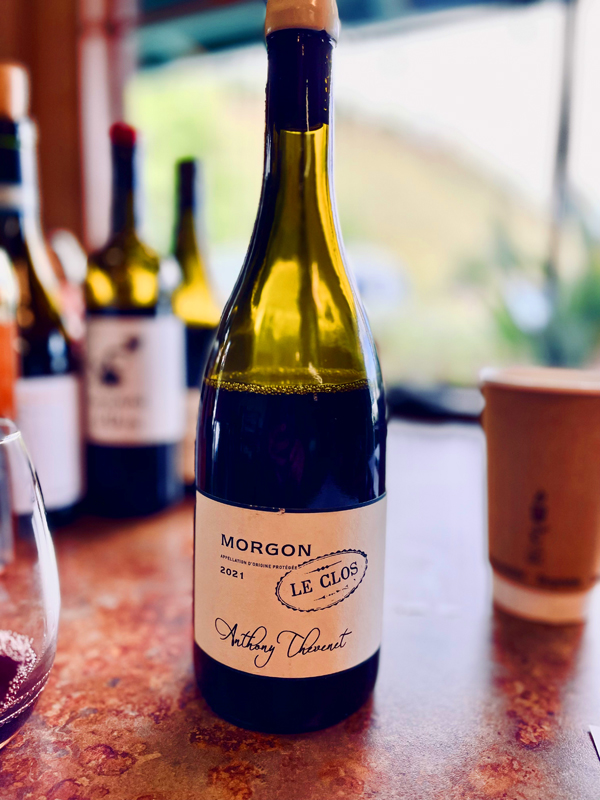
2021 Anthony Thevenet, Morgon “Le Clos” Cru Beaujolais, France.
The seriously structured, vividly ruby/purple hued and youthfully intense 2021 Morgon Le Clos from Anthony Thevenet really hits the spot and shows off a depth of fruit and taut tannins, making for an impressive, rewarding and age worthy effort. I’ve really enjoyed all of Anthony Thevenet’s Gamay offerings I’ve tried, but this one is by far my favorite to date with its gripping presence and classic whole cluster spicy pop and vitality, its a wine impossible not to admire, though best to have with food to soften the powerful sense this wine has. The medium bodied palate takes a few moments to uncoil in the glass, then it reveals a more pretty nature with dark berry, currant, plum and strawberry fruits with a light floral presence and lifted spicy array of flavors and accents including hints of violets, cracked peppercorns, licorice and walnut/cedary notes. With protein rich dishes, an extra dimension and supple vinous pleasure comes through here and it begs to sipped with reckless abandon. Morgon’s sandy and rocky granite soils make for chiseled wines, as this one shows, which are much more muscled, and savory, than the more elegant Fleurie versions, but still incredibly aromatic and lengthy, and this wine exploits those qualities to near perfection.
Winemaker Anthony Thevenet, began his career in the cellars of Georges Descombes, one of the local veterans of natural winemaking, then after, as his importer The Source notes, followed by five years as the right hand man of Jean Foillard, one of the true luminaries of Beaujolais. He went out on his own ten years ago, back in 2013, creating his own label and securing prime vineyards and impressive results came right away, making him one of the hottest names in the region. As per normal, the wines at Thevenet’s cellar are vinified by whole bunch carbonic fermentation using only native yeast and the wines are aged in a combination of neutral (old) oak casks, including 600L barrels, as well as used smaller 228L barriques, usually bought from quality Burgundy domaines, and the wines are bottled unfiltered and unfined. Thevenet’s family domaine vines are located in Morgon, which is just to the south of Fleurie and Chiroubles on granite based soils that brings out a fine mineral note in the wines and even though the climate is fairly warm, the elevation and the natural acidity of the Gamay grape makes for balanced and complex wines here. Of Anthony Thevenet’s wines, I recommend the Vieilles Vignes (Old Vine) Cuvée, his lovely Chénas, the Cuvée Julia Côte du Py Morgon, coming from 80 plus year old vines and this one, which is sourced from 20 year old vines, which are starting to come into their own, to great effect.
($44 Est.) 94 Points, grapelive
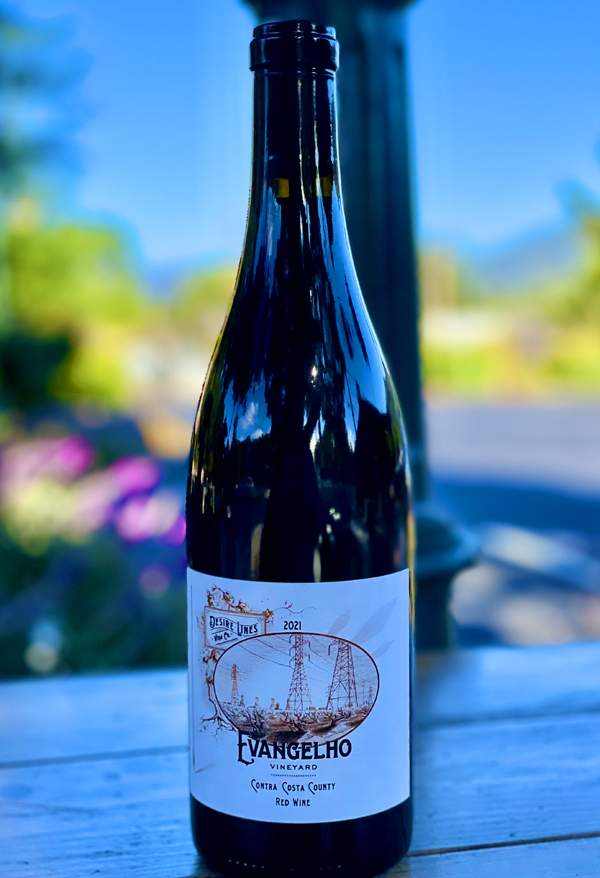
2021 Desire Lines Wine Co, Evangelho Red Wine, Contra Costa County.
Joining a lineup of historic California wines, this beautiful and lush 2021 Carignan and Mourvedre red blend from Desire Lines comes from the deep sandy soils in Contra Costa and the famed Evangehlo Vineyard, which dates back to the late 1800s Desire Lines is one of the best vintages made to date from this awesome small label based in Sonoma. Usually close to 90% Carignan and 10% Mourvedre the Evangehlo Red is purple/garnet in the glass and deeply fruited with crushed blackberries, succulent currants, plum and candied cherries on the full bodied palate, that doesn’t feel heavy with the year’s bright acidity, along with the wine’s natural savory crunch. Crisp accents of minty herbs, fennel, a sultry earthy notes, dusty stones and heady florals, making for a complex and exciting wine. Winemaker Cody Rasmussen says the heritage and historic Evangelho Vineyard is one of California’s greatest vineyards, and after many years of tasting wines from here, like this one, I’d have to agree. As mentioned in prior reviews, Cody Rasmussen, who is the assistant winemaker at Morgan Twain-Peterson MW’s Bedrock Wine Company, along with his wife Emily have carved out a niche for themselves with these Desire Lines wines, their Syrah is their signature grape with the Griffin’s Lair and Shake Ridge bottlings being some of the state’s best examples. Besides the stellar Syrahs, Rasmussen has made himself one of the best talents in dry Riesling in the country, especially his exceptional Cole Ranch, which I recently reviewed here. With this latest set of releases, Desire Lines have added some new things to the lineup, including a Viognier and a Sauvignon Blanc, both of which I am excited to try soon.
The 2021 Evangelho Red Wine is as Cody notes, like his 2020, is a touch silkier on the palate than the 2019 and 2018 editions, with a playful youthful exuberance that highlights both the vintage and the vineyard in a great year, making a very lovable and serious wine. There’s satiny tannins here, providing a backbone for solid aging potential, while allowing sex appeal and pleasure even now. As in previous vintages, Rasmussen fermented with 30% whole cluster under a submerged cap and aged the Evangelho Red for ten months in neutral 400L barrels. As he has said before, Cody loves the bigger 400L barrel size for Carignan, as it retains freshness and builds tension in the wine like all large format casks, but with a less reductive tendency than the 500L and 600L barrels that I prefer for Syrah and Mourvèdre. As I reported last time trying this wine, Rasmussen believes the Carignan gives the wine a singular juiciness and floral and red-fruit aromas, with a soft tannin profile and vibrant acidity. Going on he adds that the inclusion of cluster (partial stems) adds spice to the nose, while the small portion of carbonic maceration and Mourvèdre add flesh to the palate. Desire Lines, for this wine, models their winemaking after the great cru Beaujolais, like Dutraive and or Chateau Thivin, crafting wines that are delightful when young but should mature beautifully in the bottle as well. These old vines, at Evangelho, were planted on their own-roots back in the 1890s in the Oakley Sands, giving this wine a sense of place and a wealth of complexity and depth. These deep say soils form this site into one of California’s most distinctive terroirs with the delta breezes giving the wines freshness, elegance and fine aromatic character, elements which are clearly on display here, and I highly recommend this incredibly delicious wine. I also suggest getting on the mailing list for these Desire Lines Wine Co. wines and don’t miss this one, and Cody’s brilliant Syrahs and Rieslings!
($32 Est.) 94 Points, grapelive
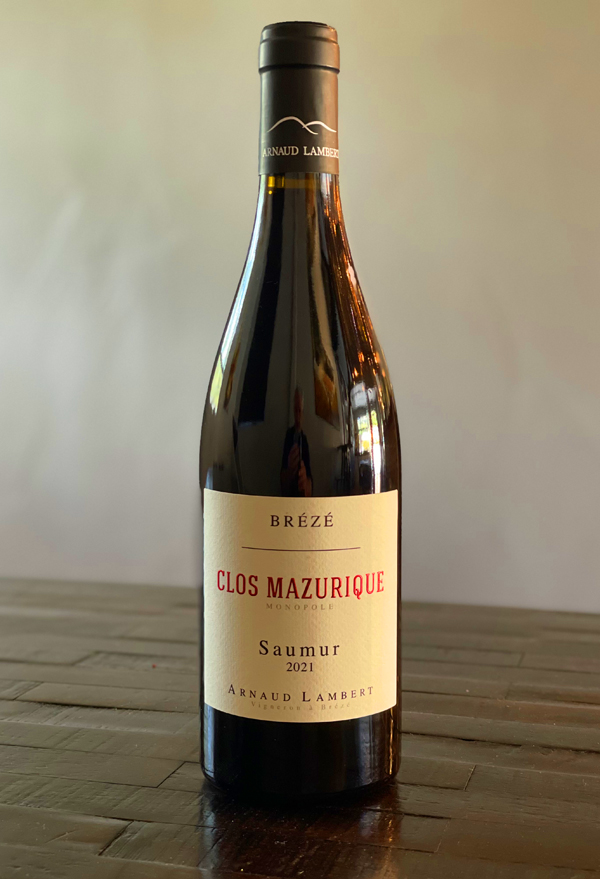
2021 Domaine Arnaud Lambert, Saumur Rouge ‘Clos Mazurique’ Monopole, Brézé, Loire Valley, France.
The brilliantly pure, dark ruby red and medium bodied Clos Mazurique by Arnaud Lambert is 100% Cabernet Franc that is vinified using carefully sorted and completely de-stemmed grapes in concrete tanks with a short maceration, starting with 2 punch-downs a day for the first few days then one for a week and then after fermentation the wine is racked and aged in concrete exclusively for about 8 months. Lambert’s exceptional entry level bottling shows off bright blackberry, plum, currant and wild cherry fruits, a light earthiness, juicy acidity, a hint of tapenade, green herbs and spice along with a fresh chalky element, framboise and lingering floral notes. As this wine opens, there’s no doubt about its varietal character, origins and terroir, it is a highly engaging and lovely example of Loire Franc that is fabulously priced and joyously quaffable, while still being serious and nicely structured. Coming from organic vines on the hill of Brézé with classic tuffeau limestone bedrock, with a topsoil composition of sedimentary and alluvial deposits that includes, as Lambert notes, varying levels of clay and sand, all of which along with the dry Continental climate with the rain shadow effect of the Massif Armorican, gives this wine its terroir distinction and balance.
The Domaine Arnaud Lambert based in Saint Cyr en Bourg – Brézé is making some of the finest Chenin Blancs in the region, but his Cab Francs are very desirable as well, as this one shows. Arnaud Lambert, as mentioned in my prior reviews, began as part of a father and son team with his dad Yves, made a name for himself when he took over at the historic estate of the Château de Brézé, one of France’s great properties and one that the French royals, as noted by the winery, used to exchange wines of Brézé annually for Château d’Yquem Sauternes. I have had a few outstanding wines from Château de Brézé over the years, so it was exciting to see Lambert’s personal offerings and get insight to his direction as a vigneron. I understand that Lambert is pushing the appellations of Saumur and Saumur-Champigny to invest in quality and focus on individual terroirs and lieu-dit sites, as he does, like in this wine. The goal is to re-discover the regions premier vineyards and exploit its full potential through organic viticulture and less-is-more, precise winemaking, which he himself adheres to. Brézé is a unique site due to its relatively high elevation and Tuffeau, the chalky limestone soils here that gives these wines, white and red their distinct stony, saline rich and oyster shell character. This latest set of offerings from Arnaud Lambert, especially the Brézé wines are must haves for Loire fans, and those who want a big bang for the buck, in particular this one and the Clos De Midi Saumur Blanc.
($26 Est.) 92 Points, grapelive
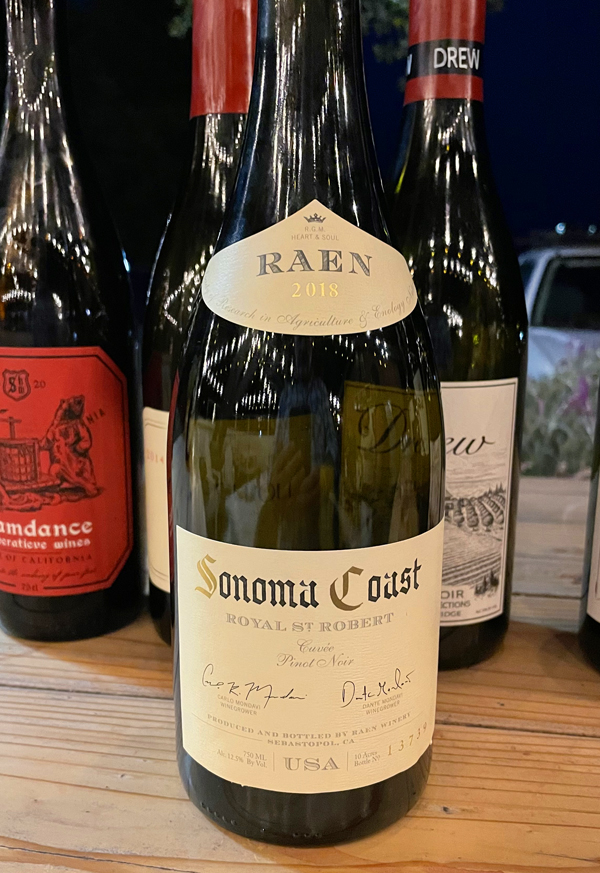
2018 RAEN, Pinot Noir, Royal St. Robert Cuvée, Sonoma Coast.
The sons of Tim Mondavi, and grandsons of the California legend Robert Mondavi, who helped put the Napa Valley and state on the map in the late 1960s, Carlo and Dante Mondavi created their own winery RAEN about ten years ago and have made it one of the top Pinot labels through hard work and crafting distinctive wines of finesse and beauty, with this 2018 being one of my favorites so far! The 2018 vintage Sonoma Coast Pinot shows off gorgeous aromatics with crushed rose petals, exotic spices and mineral tones leading to a bright medium bodied palate of cool climate influences with seamless layers of black cherry, red currant, cranberry, strawberry and blood orange fruits along with hints of earth, cinnamon, saline, snappy dried herbs, cola bean and very subtle wood accents. The silken texture, low 12.5% natural alcohol and zesty contrasting natural acidity, of RAEN’s 2018 Sonoma Coast St. Robert bottling, really lift the charm and the finish is fabulously lengthy, it is stunning stuff, joining the likes of Anthill Farms, Drew, Cobb, Peay and Radio Coteau, to name a few of Northern California’s most interesting Pinot producers. Carlo and Dante dedicated this special bottling dedicated to their grandfather, Robert, it contains a selection of their favorite barrels from the cool, rugged hills of the (true) West Sonoma Coast, and I found this wine a lovely tribute and an impressive effort in its own right.
Carlo and Dante Mondavi, grandsons of the famous Robert Mondavi, have continued the family legacy with their RAEN winery, which they says is a Pinot Noir focused domaine that make aromatic, lifted wines of finesse and elegance from what they consider to be three “Grand Cru” vineyards in the far west Sonoma Coast, adding that these sites are capable of sitting among the worlds finest, and this 2018 bottling has made me a believer. In the vineyards, Carlo and Dante note, the farming is reverting back to what we might have seen when their family began farming and working with Pinot Noir close to a 100 years ago, and (maybe) perhaps closer to the way the monks farmed it before that. The goal at RAEN, they explain, is not just to honor the fruit they grow but also the nature in which it is growing, by embracing it and highlighting its distinct character and influence. In the cellar the young Mondavi brothers strive to capture the delicate micro flora from the vineyard in their wines, this includes using whole cluster fermentations with indigenous yeasts, that they believe promotes a deeper connection to our vines. These RAEN wines are gently handled and transparency is key to showing off the nuances of the terroir and this 2018 is brilliant in every way. After fermentation the RAEN Pinots are pressed and aged in neutral French oak barrels allowing the wines to evolve in a gentle manner without the oak overpowering the delicate aromatic notes, perfectly displayed in this wine. The wines will age between 10 to 20 months depending on the vintage and site, with this one somewhere in the middle, then bottled without fining or filtration, again to keep these pure delicate notes intact.
($65 Est.) 95 Points, grapelive
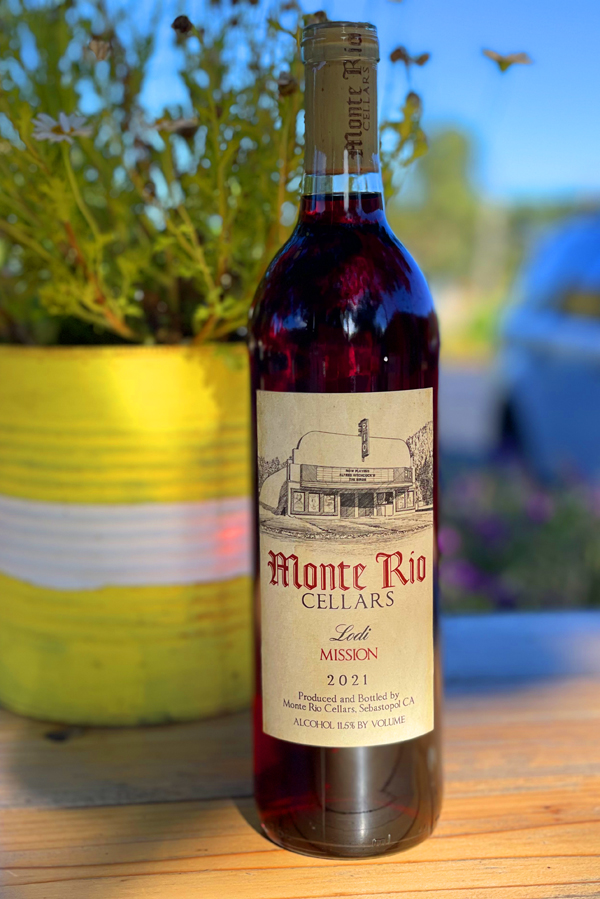
2021 Monte Rio Cellars, Mission, Somers Vineyard, Lodi, California.
Patrick Cappiello’s Monte Rio Mission, sourced from the 80 year old vines at the organic Somers Vineyard in Lodi, is a tasty lighter style red made from the historic Mission grape, in this case Listan Prieto, which is also known as Pais, it is a grape that is responsible for producing California’s very first wines made from European varietals, having come here along with the Spanish Missions in the 1700s, well before more popular grapes arrived after the California gold rush. The 2021 version, is a joy in the glass, and as prior efforts it was made at Pax Wine Cellars for Cappiello’s Monte Rio Cellars label, was fermented using 100% whole cluster and natural (native) yeasts in a full carbonic Maceration, which lasted for 10 days in stainless steel, after which the Mission was pressed into a combination of concrete and stainless steel tanks for 7 days to finish dry and then aged for 6 months in well seasoned old barrels. The ruby hued Mission is bright and spicy with a light to medium body that has tangy wild plum, pomegranate, bitter cherry and loads of peppery spices, red vine licorice, minty herbs, cinnamon, clove and a touch of leathery earth.
Mission grapes are a variety of Vitis vinifera in the Listan family, including Listan Prieto and Listan Negro, that was first introduced from Spain to the western coasts of North and South America by Catholic New World missionaries for use in making sacramental, table, and fortified wines. It is grown in South America, particularly in Chile, where they first planted these grapes, and Peru, under then names Rosa del Peru, Criolla and Pais, as well as being found in the Canary Islands, where it has become wildly successful on the volcanic slopes there. The Mission grape, most likely Listan Prieto, was introduced to present-day California in the late 18th century by Franciscan missionaries and it was originally believed that the first planting of the grape in present-day California was done by the controversially sainted, Junipero Serra at Mission San Diego de Alcalá in 1769, though according some documents, in fact it was first planted at Mission San Juan Capistrano in 1779 and it is thought in 1783, the first wine was produced in Alta California emerged from this mission’s winery. The 2021 vintage is the brightest and freshest Mission I’ve tried and is a delicious example of this historic grape, I love all of these quaffable Monte Rio wines, be sure to check them out as soon as possible!
($23 Est.) 91 Points, grapelive
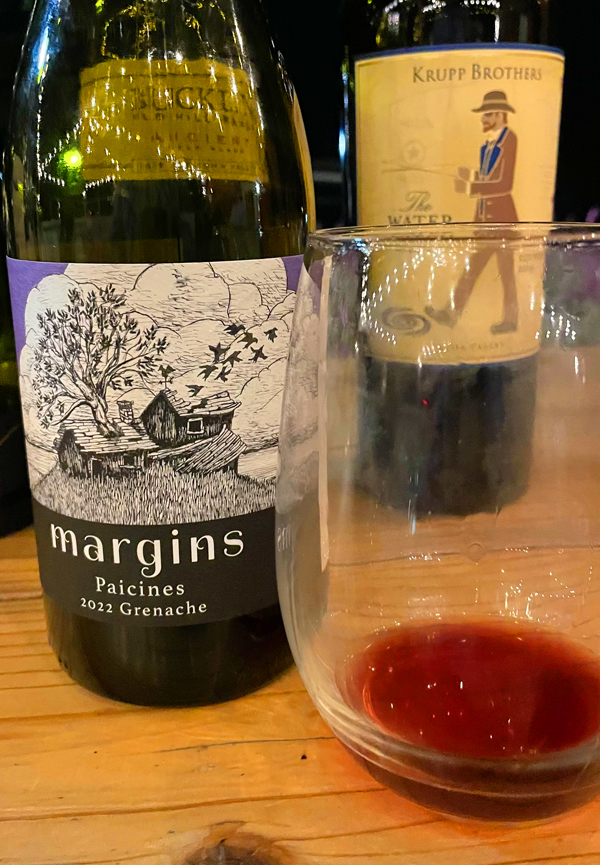
2022 Margins Wine, Grenache, Paicines AVA, San Benito County.
The brilliant bight ruby/magenta 2022 Margins Paicines Grenache is beautifully aromatic and juicy fresh with a succulent core of satiny dark berry fruit, along with sweet and sour herbs, peppery spice, a light earthy element and a youthful lift of acidity. This is fun stuff and gets richer and more vinous as it opens with layers of black raspberry, plum, strawberry and candied cherry fruits along with anise, sage and chalky stones, making this Grenache a stand out wine, reminding me of some delicious Corbieres and or Sablet, a Côtes du Rhone Villages, which I love. This Grenache was sourced from organic, regenerative and holistic vines at the Paicines Ranch Vineyard, which was originally planted in the 1960s in San Benito, set on sandy soils that contains a lot of limestone and decomposed granite. For her Grenache, Margins Wine(s)’ Megan Bell, used 100% de-stemmed grapes that were native yeast fermented on their skins for nine days with a gentle maceration. After which the Grenache was aged in neutral oak for just about 4 and a half months, before being bottled quickly with no fining or filtration, with only a small dose of sulfur, all to preserve purity and freshness. Just 120 cases were made of this naturally made of this low alcohol (12%) and medium bodied 100% Paicines Grenache bottling, which means you need to get on it before it sells out, it should be enjoyed in its youth, no patience required.
The Margins Wine is a small lot and mostly organic label of Megan Bell, a winemaker, who is focused on lesser known varietals, sustainable and hidden places, with many cool offerings available that I highly recommend searching out.
($30 Est.) 92 Points, grapelive
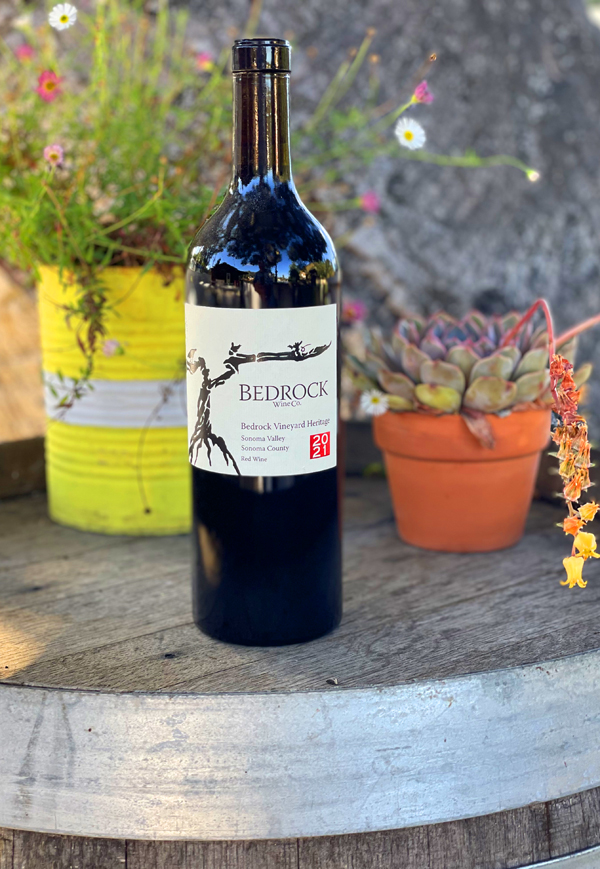
2021 Bedrock Wine Company, Bedrock Vineyard Heritage Red Wine, Sonoma Valley.
There’s so much going on here in Bedrock’s 2021 Heritage Red Zinfandel blend that it almost overwhelms the senses and you can tell this is something special, definitely one of my favorite versions to date, with a deep purple saturation of color, mineral tones and lovely aromatics that include floral and spicy elements along with incredible concentration of fruit, without heaviness or overt sweetness. This vintage has a thrill of energy to go with its fruit density with opulent and vinous layers of black raspberry, Italian cherry, wild plum, loamy mulberry and brambly huckleberry fruits along with perfectly judged wood accents, anise, sage, briar and incense. Morgan Twain-Peterson MW, winemaker and owner of Bedrock, uses only grapes that come from the original 1888 plantings at his Bedrock Vineyard, for this spectacular California wine from the heart the heart of the Sonoma Valley. This historic vineyard is set on well drained rocky soils in a climate that sees lots of sunshine and heat in the Summer, but that cools down dramatically at night with the valley pulling in cool air from the west and the Pacific as well as afternoon breezes. The Bedrock Vineyard includes a high percentage of Zinfandel, but there are dozens of other varietals interplanted here, including Mataro, Grenache, Petite Sirah and other rare old grapes, like Alicante Boushet and Carignan, all of which add to the complexity, balance, a touch of savoriness and very age worthy substance here. As reference points, I tend to try to compare and relate this wine to others in its class, but sometimes, in a vintage like this, that proves harder than you’d imagine, leaving me to just say this is one of California’s best wines with, as I’ve said before, a bounty of pleasure in the glass.
Bedrock Wine Co. was started in 2007, as mentioned here in my prior reviews, by winemaker and Master of Wine Morgan Twain-Peterson, son of the legendary Zin maker Joel Peterson of Ravenswood fame, and his partner Chris Cottrell, who also has his Under the Wire label, featuring unique sparkling wines. The winemaking here at Bedrock remains faithful to their beliefs, made with simple low intervention traditional methods that showcase the vineyards first and foremost with Morgan Twain-Peterson MW saying “overly sculpted by activist winemakers tend to be less satisfying and soulful gustatory experiences..” Of which I totally agree and is a reason why that this winery has been elevated to the top echelon of California wine and Bedrock is one of my favorites, especially these Heritage Reds. The latest releases from Bedrock are exceptional and have a sense of lightness and grace, traits not always found in Zinfandel based wines with this one and the Evangelho Vineyard Hermitage Red, also a site owned and farmed by Twain-Peterson, always being favorites in the collection, The Bedrock reds are produced in most cases with natural un-inoculated fermentation(s), native malo-lactic, and with the use of whole clusters in fermentation, the wine is left to do its thing with gentle attention along the way without additions. They take great care to use the best aging vessels as possible, preferring only to use quality oak in the aging process, using barriques and larger casks when the wine demands it. Really, Bedrock focuses on the individual vineyard and what it needs in each vintage, saying at the core of all of their wines is allowing these sites and grapes a stage to show ideal ripeness and individual personalities, which is very in evidence in this classic Bedrock Heritage. The extra pop, lively character and length of this 2021 really makes it a standout and I would bet it will be a 20 year plus wine!
($45 Est.) 97 Points, grapelive
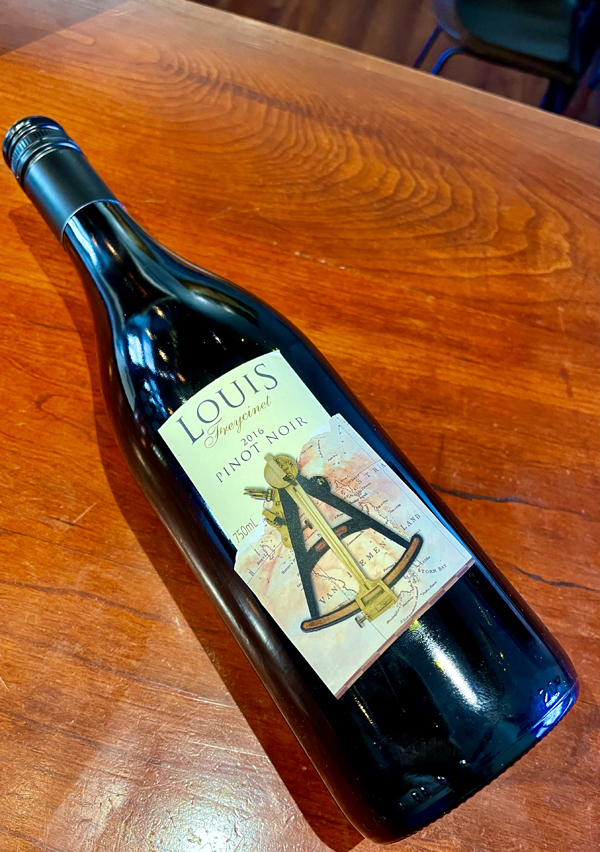
2016 Freycinet Vineyards, Pinot Noir “Louis” Tasmania, Australia.
The Australian Island of Tasmania, known mostly for sparkling wines is the most southerly wine growing region on the planet and it is always interesting to taste the wines from here, with this pure and nicely matured Louis Pinot from Freycinet being a delightful effort that impresses for its quality, balance and beautiful detailing. Tasmania has a cool climate influence, making it a good spot for Pinot Noir and Chardonnay, plus it has unique mineral rich red to brown, acid, strongly structured clay based soils, which is thought to bring out fruit density and an expressive personality. This smooth textured 2016 Louis Pinot Noir has an array of classic varietal flavors led by black cherry, spice red berries, cranberry and plum fruits along with orange tea, truffled earthiness, sweet herbs, forest floor, cinnamon and very restrained wood notes. There’s plenty to like here and it is a very reasonably priced wine, which allows a glimpse into this very distinct wine region. The soils of Tasmania, in a way reminds me of the Dundee Hills and the Jory, volcanic based soils, in what I’ve tasted so far. As, I learned from Andrew Pirie of Apogee wines, most of the top vineyard sites here are based on the geology of basalt or dolerite rocks with basalt-derived soil that is called a ferrosol because of its high iron content. These ferrosols have a high clay content, but unlike many clays the profile has a granular appearance, which is due to the modifying influence of iron oxide, which Pirie says, alters the clay structure and makes it more friable and porous, helping drainage, which is a great benefit.
For this Louis Pinot Noir, Freycinet Vineyards uses fully ripened fruit from their Louis vineyard site and is fermented over a 7 to 8 day period in a rotary fermenter with a selected yeast culture. After what the winery says, a gentle extracting color, flavor and soft tannins from the skins the wine is then pressed to barrel and aged in French oak barriques with just about 8 % new for close to 12 months before being bottled. Australians, with certain exceptions, tend to be all about precision and clean in style, making full flavored wines that can be enjoyed mainly in their youth, as this wine is, but it also has taken on some excellent secondary character and is more deep than expected. Tasmanian born winemaker Claudio Radenti’s interest in wine came about at an early age, helping his dad make wine when he was six, and has worked harvest in Bordeaux and traveled to various wine regions in France and Italy, before getting Aussie gigs including stints at Pipers Brook Vineyard, one of the most famous Tasmanian producers, as well as Tyrrells (NSW), and then followed by 6 years at Cassegrain Wines (NSW). He met his life partner Lindy Bull, in Western Australia while he was working as a senior winemaker, who’s family had little known Freycinet Vineyards here on Tas, and they came back to make wines of note. Lindy, no slouch herself, has a Bachelor degree of Applied Science in Oenology from Roseworthy Agricultural College and became the first Tasmanian female to graduate as a winemaker, working also in France, as well as in New Zealand and vintages in Clare Valley (SA). So it’s not luck that makes these wines what they are, I only wish they more readily available here in the States! A big thank you to Jim and Kim Brier, who shared this bottle with me they brought home from Tas and aged in their cellar.
($30 Est.) 91 Points, grapelive
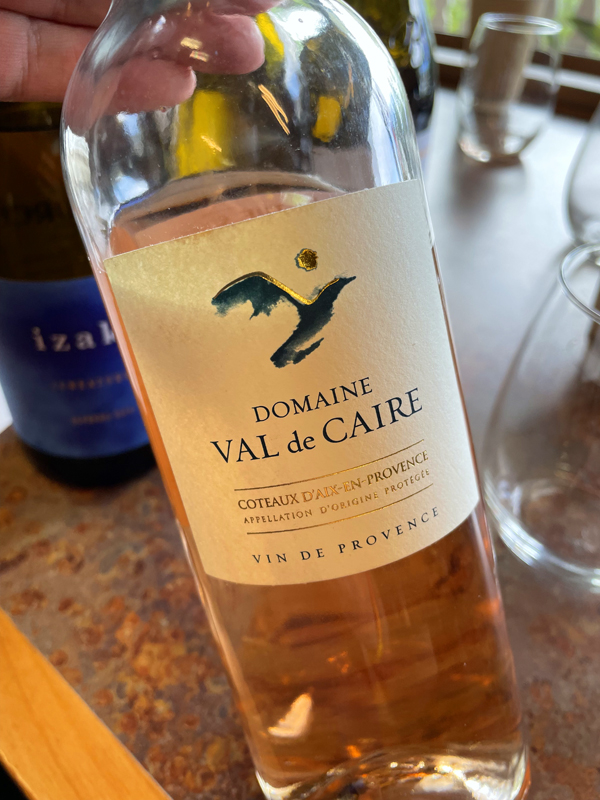
2022 Domaine Val de Caire, Rosé, Coteaux D’Aix-En-Provence AOP, France.
A sunny fresh and delicious Provence Rosé that offers up tons of fun for the price with a dry and mineral driven palate, showing ruby grapefruit, strawberry, sour cherry and retrained watermelon fruits and touches of wet stone, spice and rosewater. This mainly Grenache based, medium bodied, pure fruited and zesty Rosé is easy to enjoy all on its own, but is seriously good with any meal of day, from late brunch to late dinner, when you are doing everything outdoors on warm days. I’ve had some great dry pink wines recently, but I gotta says this Val de Caire was really delightful and was a crowd pleaser, be nice to grab a few more bottles for some more no pretense Summer fun. I bet this would be fabulous with steamed mussels in spice broth and or a sea food stews, but perfect with any beach day outing.
Guillaume Reynier, vigneron at Domaine Val de Caire, started this project in 2003 and is farming his vines organically in the Provence region, very close to the Parc Naturel Regional du Luberon to the north of the famous Aix-en-Provence. He is focusing on a set of easy to love wines, a Red, a White (his signature wine) and this Rosé. The vineyards are set on fossil laced limestone and iron rich clay soils, planted mainly to Vermentino (Rolle), Ugni Blanc, Grenache, Syrah and Cinsault all of which are surrounded by forest, with oaks, bramble and fields of wild herbs (garrigue) that play roles in the terroir influence along with the warm Mediterranean climate. The Rosé is made up of about 75% Grenache, 15% Syrah and 10% Cinsault with about 60% direct press, no skins and 40% seeing a few hours of maceration with fermentation and its short aging exclusively in stainless steel. I highly recommend this Val de Caire Rosé and suggest being earnest in your search for it.
($21 Est.) 91 Points, grapelive
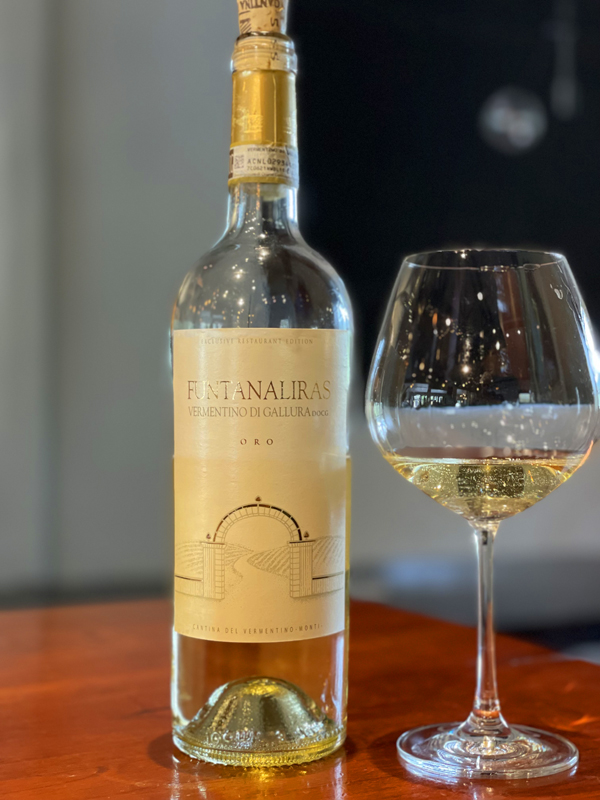
2022 Cantina del Vermentino-Monti “Funtanaliras” Oro, Vermentino di Gallura DOCG, Sardinia, Italy.
Brought over to the States by my Sardinian sommelier/winemaker friend Giuseppi Cossu, the 2022 ‘Funtanaliras’ Oro Vermentino di Gallura DOCG is a beauty, providing varietal purity and terroir driven character in an expressive and full flavored white wine, which was a perfect companion to a warm afternoon. This bright golden hued all stainless steel, crisply detailed and mineral focused Vermentino is generous in the mouth with apricot, lemon preserves, a touch of green apple and tangerine fruit on the steely medium bodied palate that adds tangy herbs, wet flint, oyster shell and a hint of tropical essences. With air, a fine sense of almond bitterness, sea influenced saline and zingy acidity plays a nice contrasting role to the youthful fruit and keeps an exciting tension in this very desirable wine. Like an Alsatian Riesling, Vermentino is vividly intense, but delivers a surprise in textural rewards, going great with a wide range of cuisine choices, though especially suited to the bounty of the sea. Tasting wines like this one, gives me hope domestic producers keep exploring Vermentino here in California and unlock its potential!
The Cantina (Sociale) del Vermentino-Monti, located in Gallura, Sardinia is a co-op producer that was established after WWII in1956 and now has about 350 members (growers) with winemaker Alberto Raccanelli over seeing the production here, which is one of the most notable quality cooperatives in all of Italy, with this Funtanaliras proving why with a flourish. The Vermentino di Gallura DOCG is the island’s only DOCG, such is the regard for the terroir and the grape here, which Sardinian’s claim as their own, making about 70% of all of Italy’s Vermentino, hence the name of this cooperative, named in honor of this classic varietal. Vermentino is found throughout the Mediterranean region, it is also one of the Chateauneuf du Pape grapes, aka Rolle, and is also planted in Piedmonte, where it is called Favorita, but mostly found in Liguria, Tuscany, Corsica and here in Sardinia. Born is sandy granite based soils, the Vermentino, a mix of early and late picks, is de-stemmed and fermented in temperature controlled vats with this wine seeing exclusively stainless steel aging and no malolactic conversion to hold on to its freshness of form. This wine really over performs, I highly recommend it to my European friends and hope some of it finds its way to the States, grazie Giuseppi for sharing this one with me.
($28 Est.) 93 Points, grapelive
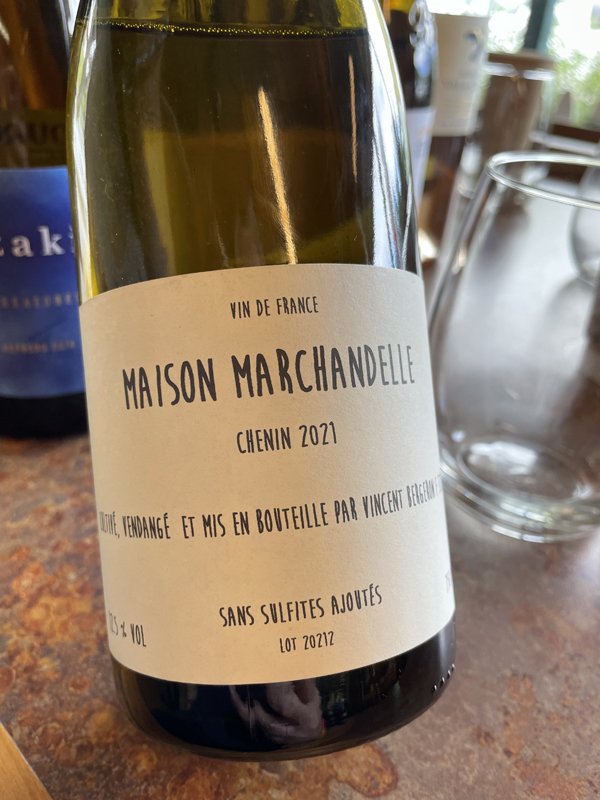
2021 Vincent Bergeron, Chenin Blanc “Maison Marchandelle” Vin de France, Loire Valley, France.
This is stunningly pure and generous Chenin, in the theme of Huet’s Vouvray and or Francois Chidaine’s cru Montlouis, with an almost white Burgundy class and grace, showing a beautiful array of white peach, lemon and melon fresh fruits, as well as a core of chalky, stony, and mineral driven elements, dried herbs, unsweetened honeycomb, yeasty lees, oyster shell and hazelnut. Even though labeled a Vin de France, this stuff is fabulously serious stuff that Loire Valley fans will want to get on it before Bergeron gets full discovered and takes on cult status. There’s a lot to love here, the mouth feel is full and vinous, but there is crisply dry detailing, vivid acidity and a saline quality that makes this wine excellent with a range of cuisine choices. Vincent Bergeron, based in Montlouis-sur-Loire, who came to wine later in life than many of his contemporaries is a rising star, who put his dues in working for old hands in the region and being mentored by a few vigorous that saw his passion and talents, to the point where they even gifted him a tractor and a small Pinot Noir vineyard to get started. He made his first commercial release in 2016, but his potential is off the charts, especially if he keeps making wines like this one! Vincent is well rounded and has, as his importer The Source notes, degrees in Art History, Literature, and Agriculture, had many different work experiences, including selling antiques, that was capped off by the viticultural mentorship of Jean-Daniel Kloeckle, Hervé Villemade, and Frantz Saumon.
The Maison Machandelle parcel, set on classic Tuffeau with sandy top soils and calcareous clay over the limestone with vines that are mature, all 50 plus years old and planted to Chenin Blanc exclusively, it is a wonderfully terroir influenced site that we’ll certainly be talking about for years to come. Vincent Bergeron’s vines are all hand tended, un-certified, but with organic and biodynamic methods, which helps these small yielding grape vines deliver amazing concentration, depth and complexity, as this vintage shows. Bergeron’s Pinot Noir is a lovely, spicy and old school effort that has created a lot of buzz too, but I first and foremost was spellbound by his Chenin Blanc, which hit me like a lightning strike! The 2021 vintage was cool in this region of the Loire and not all that giving, but this Maison Marchandelle really shines and proves the understated talents of this impressive vigneron, who was totally new to me until his brilliant Chenin, pale gold and crystalline, was in my glass. For Vincent, working with minimal sulfur and natural methods in the cellar is important to show off the vintage’s character and for his 2021 Maison Marchandelle Chenin Blanc he whole cluster pressed the grapes into mostly used neutral barrels where it went through a spontaneous indigenous yeast fermentation, slightly reductive, in cask. The wine then matured for 8 months on the lees in the oak, before being racked over to glass-fibre tanks to settle off the lees for about 4 months prior to being bottled unfined and unfiltered, all of which makes for a transparent and intriguing Chenin that should age nicely for another decade with ease.
($52 Est.) 94 Points, grapelive
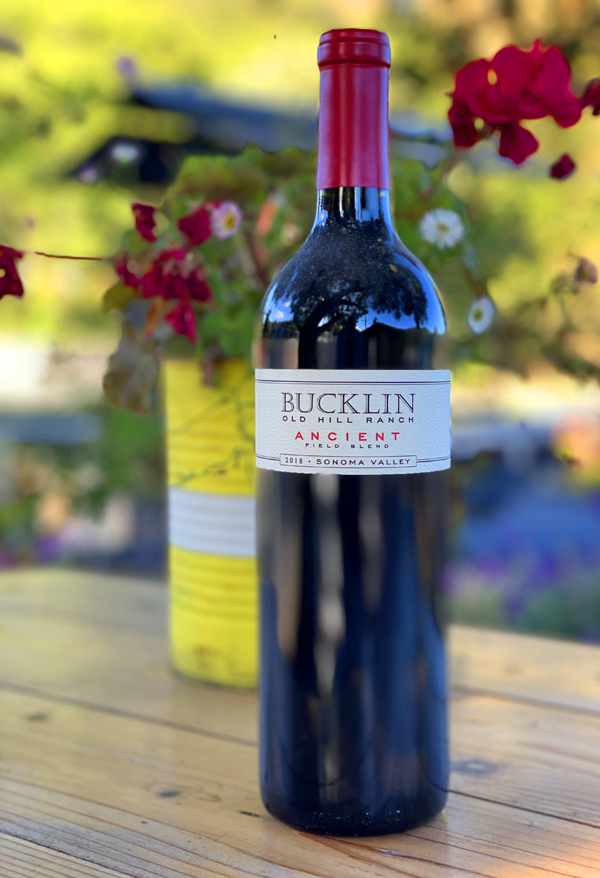
2018 Bucklin “Ancient Field Blend – Old Hill Ranch Red” Sonoma Valley.
The latest Ancient Zinfandel based field blend comes from the Old Hill Ranch’s Heritage old vines, the oldest Zinfandel site in California with 140 plus year old Zin, dating back to the 1880s by Will Bucklin, has more than two dozen different varietals in the mix, with close to 65% Zinfandel with the remaining balance co-fermented after being picked together. These other grapes, all inter-planted at Old Hill Ranch, includes small amounts of Grenache, Alicante Bouschet, Petite Sirah, Grand Noir, Syrah, Carignan, the rare Person red grape, originally from the Savoie region in the Alpine region of France close to the Swiss border and some Mataro (Mourvedre) as well as some white grape clusters. This 2018 is one of the best I’ve tried, this vintage of Ancient Field Blend, is a dark purple/garnet and ruby edged wine that is everything you’d want from an old vine Zin and more, I wouldn’t don’t miss it, with its deep supple core of black raspberry, currant, plum and cherry fruit and its brambly spices, grilled herbs de Provence, a touch of coco, cedary wood and anise. The full body is vinous, a bit Chateauneuf like, with velvety ripe structural tannin and it is rich on the palate, but this vintage also has tons of life and balancing fresh acidity to make it not feel overtly heavy or cloying. Like Bedrock’s Heritage bottlings, Ridge’s Lytton Springs, Sky and some of Turley’s old vine offerings, this Bucklin Ancient is one of the most historic, authentic and delicious California wine out there, better still, it is a fantastic value. Old Hill Ranch was the first vineyard in California not planted to the Mission grape and the first to get the best out of Zinfandel, and this wine, which transcends varietals and is all about terroir, pays tribute to that. As noted before, Bucklin says of his Ancient parcel, simply and humbly “12 Acres, 30 grape varieties, 1 wine”
The Old Hill Ranch, as mentioned in my prior Bucklin reviews, estate was originally founded by William McPherson Hill, the namesake of Old Hill Ranch, in 1852, just two years after California became a state, after he bought this property from the famous General Vallejo, who himself contributed to the planting of vineyards in the region expanding on what the Missions had established a century before. As Bucklin notes, the vineyards were planted to grape varieties that Hill had specially imported from Peru, and as mention these were the first non-mission grapes planted in Sonoma. In 1856, Bucklin adds, Hill was growing a grape variety called “Black St. Peters,” a variety prized for its fruit intensity, acidity and color, which was much more pleasing, rich and complex than the Mission grape(s), this Black St. Peters grape was actually “Zinfandel” and it started our love affair with this mysterious Croatian grape. Now known now to be Tribidrag, thanks to the incredible work of Dr. Carole Merideth at UC Davis, Zinfandel immigrated here in an unlikely trek from its homeland in Croatia through Austria, Paris and Boston, finally finding its way to a new home in the Sonoma Valley. The Bucklin’s, who have suffered greatly in the latest Napa/Sonoma fires, losing their family compound, bought this property in run down down condition in 1981 and to their great credit, instead of ripping up the old vines with so many almost un-sellable varietals, put in a heroic effort to bring the vineyard back into great health and keep its historic vines intact, we owe them a ton of gratitude for their efforts. On a shoe string budget in 2000, Bucklin started producing estate wines on their own label and now have a fine collection of offerings, which is led by this special wine, but also includes a great estate collection of small batch wines, including a Grenache, a Rosé and a Cabernet Sauvignon, and it is a really good time to discover and support the Bucklin family, and I look forward to trying the 2021s, that look set to be as gorgeous as this 2018.
($40 Est.) 96 Points, grapelive
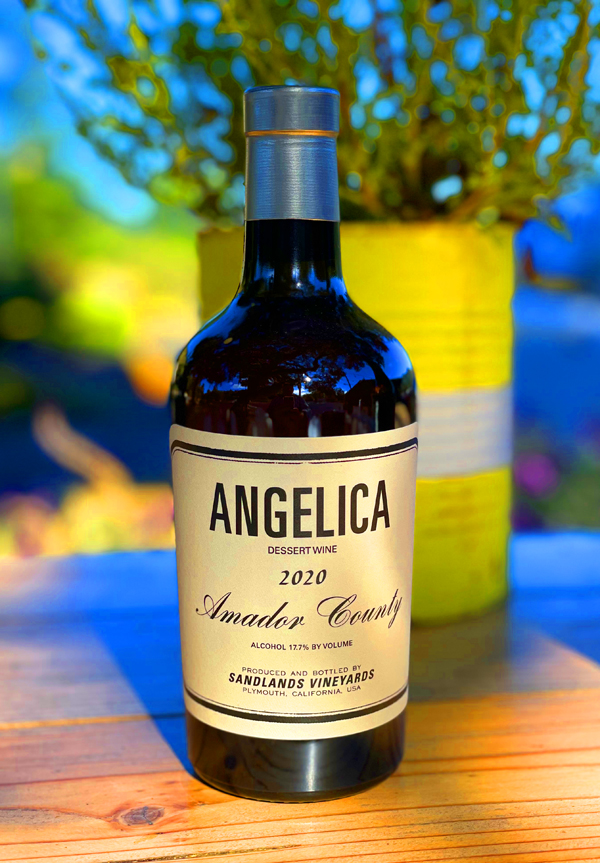
2020 Sandlands Vineyards, Angelica, Mission Grape Fortified Dessert Wine, Amador County, Sierra Foothills.
I don’t drink or review dessert wines that often, but I was really excited to try this Sandlands Vineyards Angelica, which is modern take on California’s first commercial wine from the late 1700s and I was not disappointed, winemaker Tegan Passalacqua has made an awesome version. There are hints of tawny port and sherry, but with a bright freshness, making it easy to love and great with a cheese plate or Creme Brulee. Made from Amador County old vine vines, originally planted in the 1850s at Deaver Ranch, this Angelica starts with a warm sweet nutty character, honeyed citrus and molasses notes in a smooth textured wine that adds subtle spice, a delicate fruitiness and wood elements. The historic Mission grape, in this case Listan Prieto, which is also known as Pais, it is a grape that is responsible for producing California’s very first wines made from European vines, having come to California along with the Spanish Missions in the 1700s. Mission grapes are a variety of vitis vinifera in the Listan family, including Listan Prieto and Listan Negro, that was first introduced from Spain to the western coasts of North and South America by the missionaries for use in making sacramental, table, and fortified wines. It is grown in South America, particularly in Chile, where they first planted these grapes, and Peru, under then names Rosa del Peru, Criolla and Pais, as well as being found in the Canary Islands, where it has become wildly successful on the volcanic slopes there. The Mission grape, most likely Listan Prieto, was introduced by the mentioned Franciscans and it was originally believed that the first plantings were at Mission San Diego de Alcalá in 1769, and it is thought in 1783, the first wine was most likely produced from vines near the Mission San Gabriel in Los Angeles, though some believe it was first done at the Mission at San Juan Capistrano.
Angelica, unlike Port, which is fermented about halfway and then fortified with neutral (spirit) brandy, it is fermented barely or not at all, depending on the recipe of the individual winemaker. Most believe the original versions were made by picking the grapes at full ripeness, crushing the bunches with not much skin maceration, using just the fresh grape juice, then adding the brandy to heighten the alcohol level to the desired amount and also preventing any further fermentation. This light gold/caramel colored Sandlands bottling saw over a year in used oak barrel, which allowed the wine to mature and round out. The results and quality varied back in the day, but because the regular Mission Grape red wines were often barely drinkable, Angelica became more popular. My first experience with the Mission grape and Angelica, came when I tasted Gypsy Canyon Winery’s Angelica, and who accidentally discovered three acres of Mission vines that had been hidden for decades, covered by California sage and scrub brushes, that dated back to 1887 making them some of California’s oldest known Mission vines. The Mission grape wines, and especially Angelica are being recreated in tiny amounts, as there has been some renewed interest in recent years in this varietal and Tegan Passalacqua, the head winemaker at Turley Wine Cellars, is making both Mission red and Angelica under his Sandlands label. These are excellent and faithful recreations, as this small production and handcrafted 2020 Angelica shows. This wine was a great way to finish off a panel of interesting Mission grape wines, including Pax, Monte Rio, Ryan Stirm’s Los Chuchaquis Rosa del Peru and Passalacqua’s Sandlands, all of which were worth chasing down to experience this grape. As mentioned in my prior reviews, Sandlands is the personal project of Tegan and Olivia Passalacqua and the line-up consists of some rarities including some almost forgotten classic California varieties, primarily grown in sandy soils, and I highly recommend getting on their mailing list!
($65 Est. 375ml.) 94 Points, grapelive
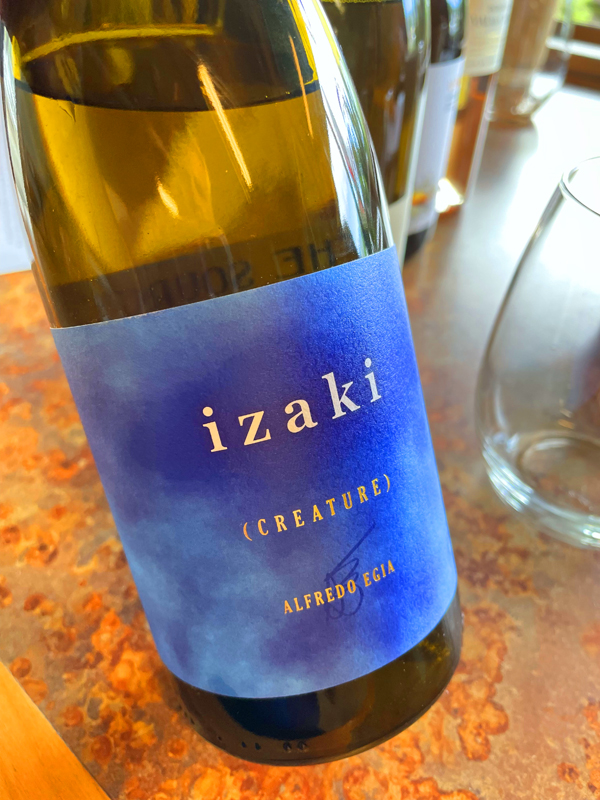
2021 Alfredo Egia, Izaki “Creature” Bizkaiko Txakolina, Basque White White, Spain.
The Alfredo Egia Izaki Creature is a very unique version of Bizkaiko Txakolina, not made from the classic, lighter and crisper 100% Hondarribi Zuri grape versions, but rather Petit Courbu and Gros Courbu grapes and mostly fermented and aged in old 400L puncheon style barrels, making for a more vinous and textural white that has an almost phenolic/tannic grip and a rustic personality in the glass. The 2021 Izaki is yellow/gold in hue and has a stony nose with hints of straw, quince and a waxy quality before a medium bodied and dusty dry palate of grilled lemon, muskmelon, apricot and bitter peach pit, along with almond, wet stones, saline (seashore), a whiff of old wood, verbena and snappy herbs. There’s a feel of skin contact and a vibrant sense of fresh acidity to add an inner brightness and this wine begs for food to show its best side, in particular goat cheese and or briny/salty sea food dishes. This white was allowed to go through natural Malo-lactic fermentation and the used French barrels were topped up to preserve vitality and more reductive style, but remains more firm than creamy.
Alfredo Egia sources the grapes, 80% Petit Courbu and 20% Gros Courbu, from mainly his biodynamic vineyard along with a smaller parcel of organic vines under conversion to biodynamics, in the Txacolí de Bizkaia DOP zone, which was created in 1994 and covers around 250 hectares of vineyards. This coastal area has an Atlantic influence and set on mainly acidic clay based soils with limestone and marls also present. Elia employed a whole cluster pressing with most of the juice being racked to barrel for fermentation, while a smaller percentage saw fermentation and aging in stainless steel, with the wine blended after about 9 months on the lees and the final blend is rested a further 6 months in tank before bottling. Petit Courbu is a Basque white wine grape originally from the Gascony region of France with a long history in the region, and is found in the Spanish Basque region, as seen here, making for a richer bodied wine. Gros Courbu, which is also is itself also thought to be from France, as it is found in Irouléguy, shares DNA with Hondarribi Zuri, which is super fresh and adds vivacious personality to the wine. This wine is quite different and distinct with a serious, slightly earthy rustic nature, made to age and I was quite impressed and look forward to trying the rest of Egia’s wines.
($39 Est.) 92 Points, grapelive
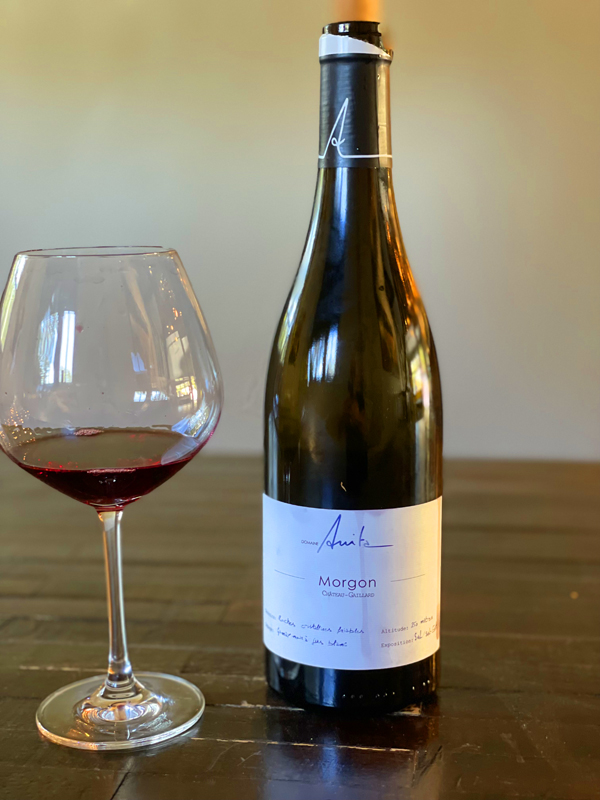
2021 Domaine Anita, Morgon “Chateau-Gaillard” Cru Beaujolais, France.
The Domaine Anita’s dark, earthy and well rounded Chateau-Gaillard Morgon old vine Gamay belies the lack luster 2021 vintage with an impressive depth, intensity and vinous fruit density, easily making for a rewarding effort to drink now. The palate possesses nice generous layers of raspberry, plum, strawberry and tart cranberry fruits along with stony elements, snappy herbs, spice, walnut and anise, framed by well judge wood and subtle floral notes. Anita Kuhnel, a former professional cyclist-turned winemaker with a reputation quickly rising in Beaujolais, has put out a set of delicious wines, which were all new to me until Stuart Pigott of James Suckling wrote about this winery that has joined Neal Rosenthal’s portfolio who’s star-studded import book includes mostly old world producers with a rustic charm. While still a bit behind that top producers in region, I can see why this winery is gaining a reputation for quality and I look forward to seeing what comes from Anita in the future.
Anita Kuhnel, based in Chénas does mainly cru bottlings from Moulin-a-Vent, but also has this plot of old vines in Morgon, a plot in Fleurie and another in Chénas, all of which feature in her lineup and are from vines that range from 40 to 100 years old on mainly the classic granite based soils here. Importer, Neal Rosenthal says that Anita is assisted in making the wines by Guy Marion, who he adds, oversaw no fewer than 52 harvests as cellarmaster for Georges Duboeuf, so there is solid foundation of experience to play off of here. Anita has a collection of small concrete vats to ferment each parcel separately and that she uses a different percentage of whole cluster in each wine and she uses ex-Burgundy barrels to age the Cru bottlings like this one. For this Chateau-Galliard Morgon Anita did a native yeast fermentation after maceration in cement with a combination of whole clusters, with some stem inclusion, and mostly de-stemmed berries, this cuvée was matured 80% in cement and 20% in used the mentioned Burgundy barrels, from a domaine in Aloxe-Corton that have seen at least three fills. This is an excellent value and a very likable wine to enjoy over the next 3 to 5 years.
($25 Est.) 90 Points, grapelive
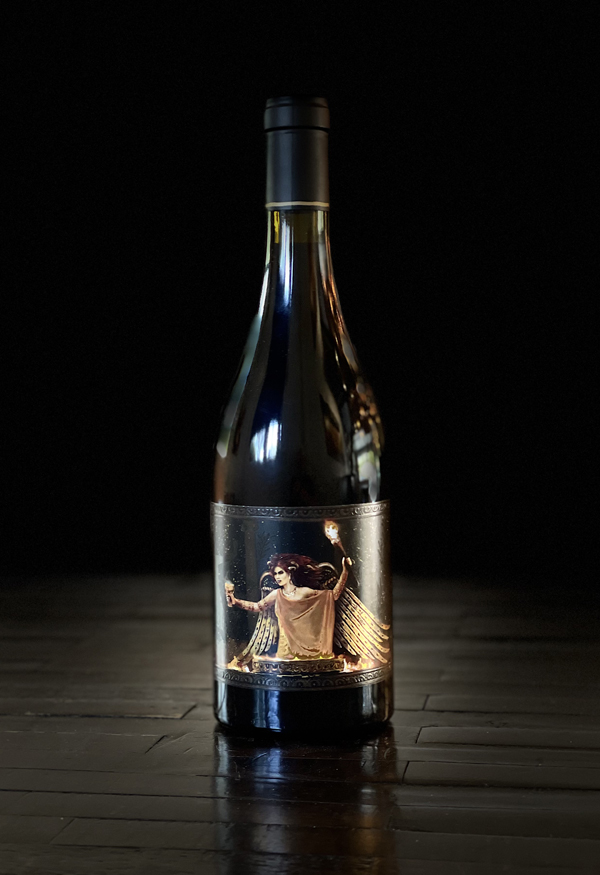
2019 Three Furies Wines, Pinot Noir “The Angry One” Santa Lucia Highlands.
I recently got a chance to meet up with and taste with Three Furies Wines Kiwi winemaker Martin Mackenzie who is crafting some beautiful wines, like this one from the Tondre Vineyard in the Santa Lucia Highlands with its silky elegance, textural richness and ripe depth of flavors impressing me. Martin says his wines are an extension of his curiosity and quest for truth, power, and beauty in wine, which definitely comes through from the SLH grapes, making for a dark and complex Pinot with black cherry, brambly raspberry, sweet plum and strawberry fruits as well as hints of mocha, cinnamon, tea spice, rose petal and a touch of sweet smoky toast. This ruby and garnet hued Pinot has presence on the plush palate and the mouth feel is already excellent, as are many of the 2019s and highlights both the vintage and the region very successfully, making for a distinct and compelling wine that is well worth searching out. Martin says he loves the hints of violets, sage, licorice and cedar that lurk beneath the cranberry, blueberry and the core of cherry fruit here, and I can agree, as this wine opens there’s a lot to admire, it is an extremely pleasing effort. This Three Furies Santa Lucia Highlands Pinot Noir will certainly appeal to those that like the classic wines of the region, like those by Roar, Lucia and Siduri, and I am looking forward to see how this label does going forward.
The personal project small label Three Furies Wines are all handmade by Mackenzie, a New Zealand native ex-pat, and who once crafted wines for the world-renowned Stonyridge Vineyard on the remote Waiheke Island for ten years before moving on in 2009 to California and head winemaking jobs here. With more than a decade of experience here and having explored many of California’s terroirs, Martin starting sourcing top sites to craft his Pinots, including a top notch site in the Sta. Rita Hills and Tondre Grapefield in the SLH, plus a soon to be released, secret as of now, location in the Sonoma area I believe. The Tondre, with its interesting selection of clones, including Pommard and Dijon clones makes for a richer and more powerful style Pinot, which Martin says has great cellar potential, vinous generosity and volume to rock you. Set on well draining sandy loams, Tondre always makes for forceful and expressive wines, with this one coming in at 14.5% natural alcohol and showing concentration of fruit, some grip with velvety tannins and an inner brightness that all these top Santa Lucia Highlands Pinots seem to possess. Aged in French oak, with a well judged percentage of new wood, this Angry One by Three Furies Wines looks set to reward those that like to put a few bottles away for 3 to 5 years. This Tondre 2019, the 2018 and the Sta. Rita Hills “Constant Vengeance” all are seriously good, with maybe the Tondre 2019 an edge ahead, getting my nod as the favorite, but not by much, such is the quality here!
($85 Est.) 94 Points, grapelive
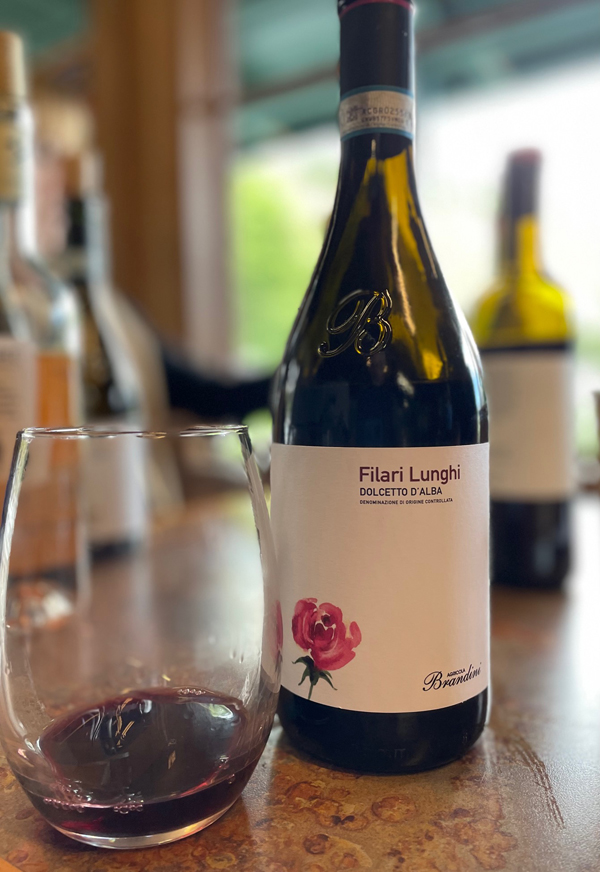
2021 Agricola Brandini, Dolcetto d’Alba DOC, Piedmonte, Italy.
Brandini’s seductively floral, nakedly transparent and dark fruited Dolcetto “Filari Lunghi” comes from a single high altitude, organic vineyard with vines a touch over 15 years old, which is located southeast of Monforte d’Alba on a steep, west-facing slope and cooler plot that is set on clay, limestone, and sandy soils. The results are absolutely delicious, and while mostly getting attention for their awesome and elegant Barolo wines, which I first reported on with the release of their 2017 vintage at the San Francisco Slow Wine tasting, the Brandini winery is doing fabulous full collection of stuff, as this little Dolcetto, with its vivid magenta color, shows. The lively and fresh medium bodied palate here is led by crushed blackberry, wild plum, Italian cherry and dark currant fruits, along with grilled herbs, heady violets (also on the nose), fennel and a hint of earth plus chalky stone accents. The winemaking here is simplicity and precision with no oak and a focus on clarity of form, they carefully pick grapes with moderate sugars, but with ripe tannins, retaining vibrant acidity and chasing to ferment and age the Dolcetto exclusively in stainless steel. I have a soft spot for Dolcetto d’Alba and this one is one of my new favorites, bravo to Agricola Brandiini, I seriously could drink this tasty wine every week!
The Brandini winery, rising stars here in the Piedmonte region, run by the dynamic and youthful Bagnasco sisters, Giovanna and Serena, has twenty-five hectares of estate-owned and organically farmed vineyards and they rent an additional ten, including prime parcels in the famous Annunziata and Cerretta Barolo Crus. Their estate Barolo vineyards are located at high elevation, therefore cooler sites, in the northwestern end of La Morra, their home village. Lots of Langhe Nebbiolo fruit is sourced from within La Morra, but also from plots from the far north of Barolo, right between Alba and the Ceretto winery, to just south of Monforte d’Alba, with this Dolcetto and their Barbera mostly coming from the south of Monforte d’Alba plus some close to the cantina itself. Their five hectares of Arneis are in Roero, and also makes for an excellent and desirable example, which I also tasted recently. They also do some Alta Langa Brut and Brut Rosé sparklers from the Rodello and Benevello area, which has become one of Italy’s best bubblies, more in line with Franciacorta, rather than Prosecco. The vines for Brandini’s Alta Langa, Roero Arneis, Dolcetto d’Alba, Barbera d’Alba, Langhe Nebbiolo, Barolo La Morra, and Barolo R56 are all certified organic, all others are practicing organic. Agricola Brandini should be on your radar, especially if you are fans of G.D. Vajra, Oddero and or Giulia Negri, to name a few.
($25 ESt.) 93 Points, grapelive
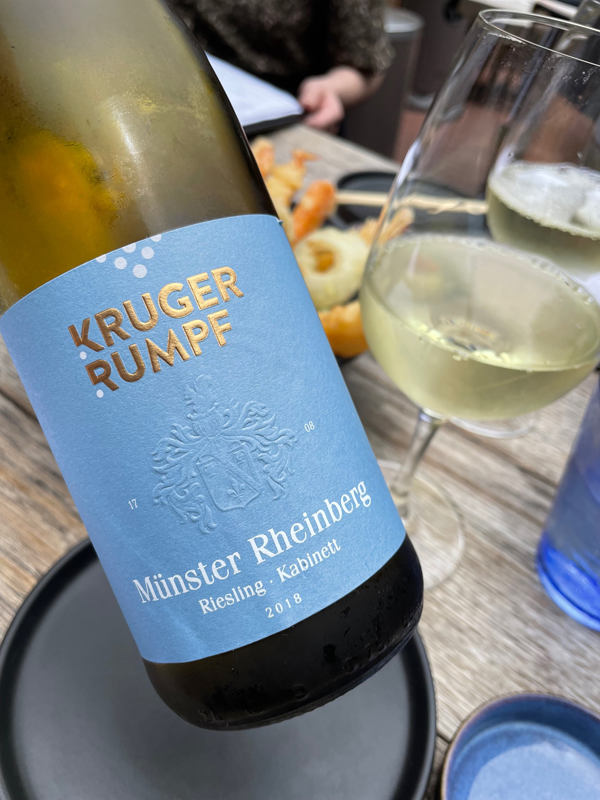
2018 Weingut Kruger-Rumpf, Riesling Kabinett, Münsterer Rheinberg, Nahe Germany.
One of my favorites, Kruger-Rumpf’s Münsterer Rheinberg Kabinett is an excellent value and offering with subtle fruit sweetness and loads of mineral driven personality, which is all here in this 2018 vintage that is developing nicely, showing flinty stony character, a hint of diesel and rounded white orchard fruits. This pale gold Kabinett starts with crisp citrus, peach and green apple on the lighter and brighter framed medium bodied palate with zesty acidity that helps hide overt sweetness and gives the impression of a drier style, while still having a certain fleshy mouth feel, making it refreshing and flexible with a range of cuisine choices, it goes nicely indeed with spicy and or briny dishes. I last visited Georg Rumpf and the winery at harvest time in 2016, when I was able to see most of his vineyard sites, that are farmed with sustainable and organic methods, including the area where this Münsterer Rheinberg comes from, it’s pretty close to where the Nahe flows into the mighty Rhein River. Georg has really done an amazing job with these Kruger-Rumpf wines and there’s sublime array of top notch Rieslings to chose from here, with his classic Kabinett and Spatlese being exceptional examples, as well as his set of GGs and Erste Lage single vineyard Trockens, that are outstanding, with the Dautenpflänzer Grosses Gewächs and the Abtei Erstes Gewächs being my absolute favorites.
The Münsterer Rheinberg area has weathered quartzite and sandy loam soils with mostly southeast facing vines on very steep slopes on the higher sections to gentle slopes with richer soils in the lower sections, which gives complexity, along with a good balance between ripe fruit concentration and electric acidity. Kruger-Rumpf’s Rheinberg Kabinett is sourced entirely from the quartz dominated higher sections of the Rheinberg hill and from mature vines that are close to 25 years old, making this slightly off dry Riesling a delight, easy to love, but still serious in style, as this 2018 version shows. The Kabinett grapes get whole bunch crushed directly, according to Rumpf, and fermented half in older Hösch stuckfass (oak casks) and half in stainless steel tanks. The fermentation is natural and spontaneous with no added yeasts, after which the Riesling is racked to the stainless steel and cooled to stop it from going dry. Then, after fine lees aging, in late April the Kabinett offerings are sorted out and bottled to preserve freshness, aromatics and clarity. This 2018 has gained poise and purpose and I enjoyed it with Sushi, especially with Saba and Spicy Tuna roll, where the faint residual sugar matched up nicely the saline and flavors of the sea and the heat. Kruger-Rumpf, based in Münster-Sarmsheim, a small village, near Bingen, on the western side of the Nahe River, as mentioned, and a stones throw from the Rhein, across from the famous Rudesheimer Berg on the northern bank, with vines overlooking three regions, Rheinhessen, Rheingau and the Nahe. If you are a Riesling fan, this is a winery to follow, plus they do an awesome Scheurebe, which I trie not to miss!
($22 Est.) 92 Points, grapelive
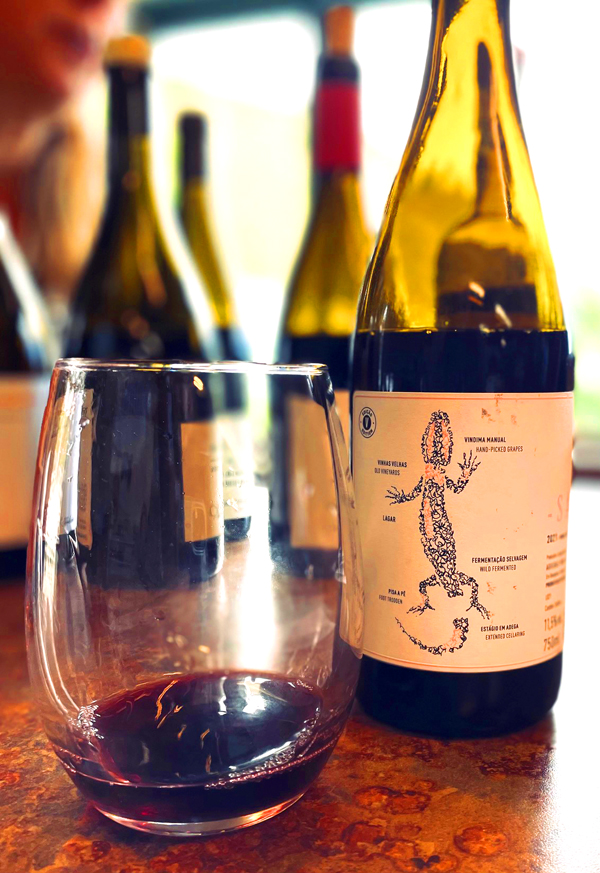
2021 Arribas Wine Company, Saroto Tinto, Trás-os-Montes, Portugal.
A beautifully aromatic, bright and spicy red wine from a remote high elevation region of Portugal, the 2021 Saroto Tinto is wildly delicious co-fermented field blend with about 70% red grapes and 30% white grapes, with many extremely rare varietals included, with some almost never heard of grapes that are only found here. I had never tried Arribas Wine Company before yesterday and was left impressed with what I tasted from Frederico Machado and Ricardo Alves, two young vignerons that recently created this winery in the Trás-os-Montes area of Portugal, which is located in the far northeastern corner of the country and is landlocked by mountains in the north, west and south, and high plains/desert to the east. The dark ruby hued wine is natural and as feral as the location, with bright brambly raspberry, cherry, cranberry and currant fruits, wild herbs, sage, cinnamon, anise and peppery notes on the medium bodied palate, along with mineral tones, sultry earthiness, fresh acidity and supple and dry tannins that linger on the finish. This old school effort reminds me of what the new generation of winemakers are doing everywhere, trying to create authentic and no pretense, quaffable, but serious terroir driven wines, with Arribas Wine Company being firmly in the natural wine camp. That said, they want to make quality wine, all the vineyard work done holistically by hand with no chemical or mechanized farming, with no synthetic treatments except the use of some sulfur and copper compound to keep mildew away.
The Arribas Wine Company Saroto Tinto is a non classified regional wine, since the rules in the appellation don’t allow for co-ferments and or lower than 11.5% natural alcohol, which in most cases would exclude what Arribas is doing here, especially this one which has a co-fermtation of about a dozen grapes! The varietal make of the 2021 version, according to the winery, includes Tinta Gorda, Tinta Serrana, Bastardo, Rufete, Alvarelhão, Rocheiro, Ocheiro, Verdelho, Malvasia, Bastardo Branco, Posto Branco, Formosa, and maybe a few more, some un-named, all of which come from old vines set on granite based soils with clayey, loamy and/or sandy soils. There are literally hundreds of unique indigenous grapes grown here, mostly head trained and dry farmed, lots that are unknown to anyone, but a few people outside of Portugal, and many of them have more than a dozen different local names and nicknames. Again the vines are old, 70 to 80 years old in this case with pretty steep slopes, promoting small yields and concentrated flavors.The handpicked grapes, picked with low sugars, came in whole cluster and were foot trodden in a traditional lagar (old stone or concrete fermentation vessels) and macerated for 4 days allowing the juice to start fermenting naturally with indigenous yeast and without temperature control, after which I understand they were pressed to used French Oak barrels to mature on the fine lees for about 9 months. This vintage came in at about 11.5% natural alcohol and is in a style that can be chilled slightly and enjoyed with picnics, rustic meals and enjoyed over the next couple of years.
($25 Est.) 92 Points, grapelive
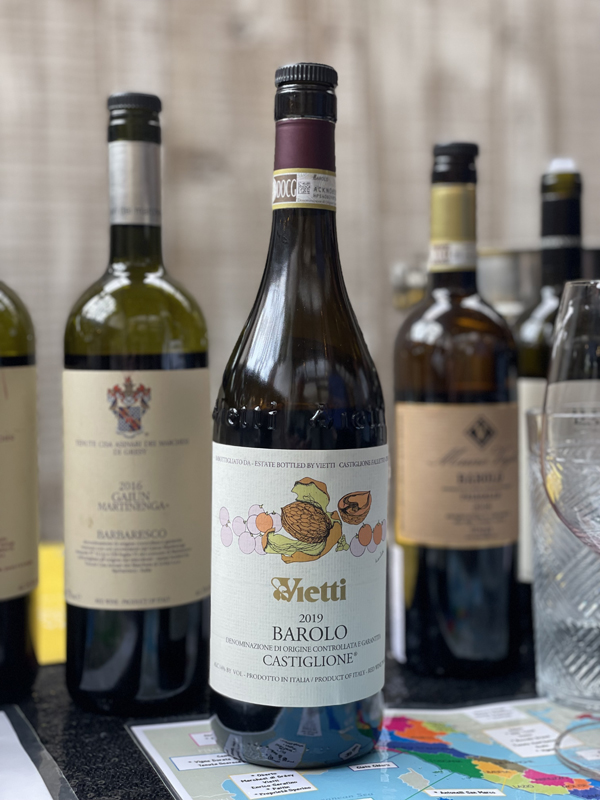
2019 Vietti, Barolo DOCG “Castiglione” Piedmonte, Italy.
It’s always a treat to drink Luca Currado’s Vietti wines and in particular his Nebbiolo offerings, and this 2019, while youthful and backward, gives plenty of promise for future rewards with heady fruit concentration and a serious sense of underlying structure, but enjoying ripe and sweet tannin, a plush palate and expressive aromatics. I was surprised by the vintage’s richness and depth of fruit in this version, though can see that things will calm down, tighten up and allow the more classic Nebbiolo character come through, as with air this Castiglione Barolo delivers dark berry, plum, brandied cherry and red currant fruits along with subtle savory notes, dried herbs, anise and cedary wood accents. I found a lot to like here, as per normal, and this dark ruby/garnet wine continues to evolve and fill out with time in the glass, adding a pleasing depth, delicate earthy tones and lingering florals. The Vietti winery, led by Luca and his wife Elena Currado, is located in Castiglione Falletto in the famous Barolo zone of the Cuneo province, it was founded in the late 1800’s by Carlo Vietti, who set it up for great success from day one.
The grapes for Vietti’s Barolo DOCG Castiglione, as mentioned in my prior reviews, are sourced from some serious lieu-dit vineyards in the Barolo region with a selection of vines between 10 and 43 years old and set on the famous clay and limestone soils. The Vietti parcels are farmed for quality with an average density of 4,500 vines per hectare that reduces the yields to maximize concentration. For this bottling, all the different single vineyard blocks are vinified and aged separately with slightly different processes, as the winery says, to highlight the typical characteristics of each “terroir”. The Vietti Barolo was aged for about 30 months in a mix of large oak casks and smaller barriques before all of the selections are finally chosen to be blended together. Vietti is one of the best wineries in Italy, and Luca Currado, who has contributed even more to the success of Vietti in recent years, is making outstanding stuff, and his set of Barolo wines are some of the most collectable and desirable wines in the world, especially his Lazzarito and Rocche di Castiglione Barolo(s), but, as I’ve said before, you find quality throughout his collection. While 2010, 2013 and 2016 are very desirable years for this bottling, this 2019 is not far off and it looks set to get even better with 3 to 5 years.
($70 Est.) 92 Points, grapelive
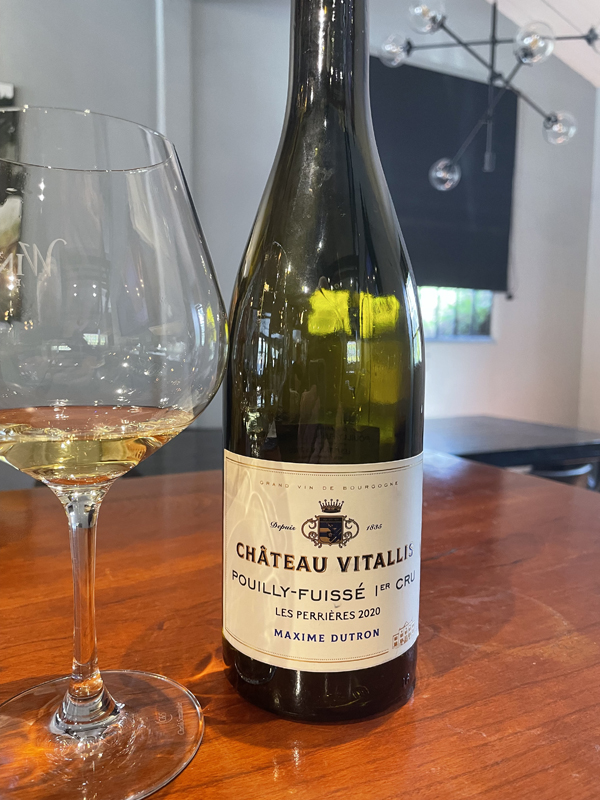
2020 Chateau Vitallis – Maxime Dutron, Pouilly-Fuissé, Premier Cru “Les Perrières” White Burgundy, France.
Maxime Dutron, winemaker at his dad Denis’ historic Chateau Vitallis, has made a gem here with his brilliant 2020 Premier Cru Les Perrières Pouilly-Fuissé white Burgundy that fulfills the promise and potential of the vintage capturing incredible concentration, complexity, vitality and stony elements, making for an exceptional and steely Chardonnay that shows off lime, green apple, white peach and quince fruit along with a touch of matchstick, hazelnut, white flowers, clove spice and leesy roundness. This vivid pale greenish/gold white Burgundy at first reminded me of a fine chalky Chablis with its hints of oyster shell, saline and wet rock details, but opens up gaining richness and providing a very rewarding feel and textural experience. I’ve not had this producer before, so this first impression was exciting and I look forward to exploring the full collection of wines here. This wine should excite those who love Côte de Beaune wines like those from Chassagne-Montrachet and Saint-Aubin, but maybe don’t want to fork out the $60 to $100 they are going for, with the quality found here.
Chateau Vitallis, originally founded back in1835 is located at the foot of the iconic Rock of Solutré and based in Fuissé, in Southern Burgundy’s Mâcon region and is blessed with some impressive holdings in Mâcon-Vinzelles, Mâcon-Fuissé, Saint-Véran, Pouilly-Fuissé and Pouilly-Fuissé 1er Cru appellations, that last of which is where this beautiful white comes from. The Chateau Vitallis, which was built in the 13th century, now has 17 hectares Chardonnay vines, according to the winery, that are set on prime terroirs, which classic limestone and clay based soils and ripe exposures. The Les Perrières is the newest bottling in the Chateau Vitallis in the lineup, with Denis and Maxime Dutron first deciding to honour one of the best climats in Fuissé in 2013, and they’ve made some impact with it already, getting some big acclaim with the 2015 version, and now with their 2020, which is a serious, vinous and delicious effort. Maxime employed a full native yeast barrel fermentation here, with a small percentage of new oak, allowing for malo-lactic to occur naturally and aging the Les Perrières on the lees for 11 months in barrel, after which it saw another 6 months in stainless steel tanks before bottling. Imported exclusively for K & L Wines, this wine is precise, terroir driven and attractive, making it one to search out.
($35 Est.) 93 Points, grapelive
Grapelive.com – July 2023
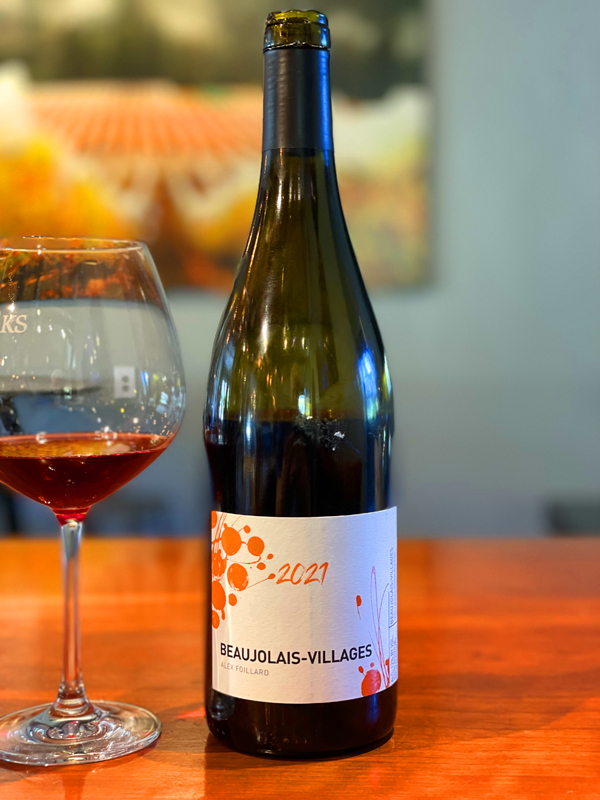
2021 Alex Foillard, Beaujolas-Villages, France.
Stepping out from behind his famous father’s shadow couldn’t have been easy, but Alex Foillard is now well on the way to be a star in the region in his own right, and wines like this 2021 Beaujolais-Villages from a unique 70 year old lieu-dit with sand and limestone soils is proof of the talent this young vigneron has! This wine, 100% old vine Gamay Noir starts with a smoky/stemmy intensity and builds on the medium bodied palate with a slow burn of unfolding layers of black plum, cherry and raspberry fruits along with roasted herbs, a mineral crunchiness, chalky stony notes, dark florals, ripe tannin(s) and dusty spices. Though old school, traditionally made with carbonic maceration and cement tank fermentation and aging, it is not overtly fruity or Gamay obvious at first, though with air and time in the glass this dark ruby hued and sultry beauty checks all the Gamay boxes and impresses for the thrill ride on offer, especially at this stage. For a humbly labeled Beaujolais-Villages, you are getting a very engaging, silky and complex wine that has a perfect balance between fruit density and whole cluster tension. This wine is sourced from an East-facing parcel located in the lieu-dit Saint Ennemond and saw its fermentation in a sealed concrete tank for 10 days, with a pump-over every couple of days, after which it was aged in the cement vats for just about 5 months and bottled unfined and unfiltered with only a micro dose of sulfur, preserving freshness of detail and loads of energy.
Alex Foillard, the son of importer Kermit Lynch’s “Gang of Four” Morgon producer Jean Foillard, Alex had early exposure to the world of wine, and as Kermit notes, more specifically, to the principles of sustainable farming and low-intervention winemaking that brought his father Jean to stardom in natural wine circles, along with like-minded neighbors such as Marcel Lapierre, Guy Breton, and Jean-Paul Thévenet. These producers followed the ideas of Jules Chauvet, a chemist, who brought home the passion to move away from industrial farming, chemicals and mass production short cuts, in the 1950s. He taught and spoke instead to do things the old organic way and hand craft wines with natural methods, including 100% whole cluster, carbonic maceration with indigenous yeasts and ultra low, or no sulphites. Alex himself, as Kermit again notes, studied agriculture at the Lycée Agricole in Montpellier, then earned a degree in viticulture and enology in Beaune, while simultaneously interning at a well-respected domaine in Nuits-Saint-Georges. He also, in his youth, did internships abroad, including a stint in Australia, which all added up to some great experiences to bring home to the family business, where he became more and more involved, and only twenty-four years old, he purchased his very own vineyards. He bought a hectare each in the crus of Brouilly and Côte-de-Brouilly, as well as following up with the parcel of old vine Gamay that forms the heart of this wine, making his own label bottlings first in 2016. I love all of the Foillard’s offerings and am excited that the new generation here is doing such exceptional stuff!
($32 Est.) 93 Points, grapelive
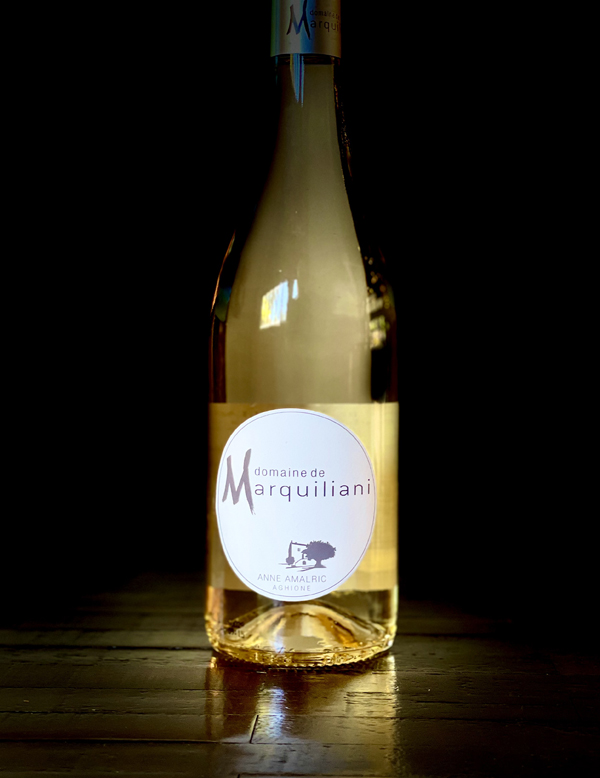
2022 Domaine de Marquiliani, Rosé “Gris de Marquiliani” Vin de Corse, Corsica, France.
Fresh, crisp, delicious and impossibly pale in the glass, the 2022 Domaine de Marquiliani Vin Gris de Marquiliani is absolutely one of the world’s finest Rosé wines, equally appealing to the more famous Provence versions and utterly compelling and distinctive with vibrant ruby grapefruit, a whisper of sour cherry, strawberry and melon fruits, as well as mineral spice, saline and peach pit. This Rosé saw a 72 hour cold soak and the clear juice was pulled from the vat and fermented in stainless steel with no malo-lactic allowed and bottled quickly to preserve an intense thrill of freshness and crystalline focus. As this wine opens up you get hints of rosewater, earthy flint and a fine textural grace, this is as perfect as it gets and is a personal favorite of mine. The sea breezes and constant ventilation, as the winery notes, provides the perfect situation between mountains and sea, and the rocky, well-draining soils help the grapes retain their acidity and allow for a slow, even ripening on the vine. The chilled air currents from nearby Monte Renosu—one of Corsica’s highest peaks at 7,716 feet—make this one of the cooler sites on the island’s east coast. The soils in Aghione, according to the winery, are a mix of alluvial debris composed primarily of schist and granite, along with silt that has descended from the mountains over the last tens of thousands of years, all of which makes for that striking stony character and mineral intensity. For the Rosé, Vin Gris de Marquiliani, the final blend is 95% Sciaccarellu, a grape thought to have been brought here from Tuscany by the Etruscans, and 5% Syrah, which maybe adds a bit of texture and spice.
Rosé is a huge category these days and with so much mediocre stuff out there, places like Corsica are gold mines for superior examples, with Comte Abbatucci, Clos Canarelli and Domaine de Marquiliani being wines not to miss, rivaling any dry pink wine made anywhere in the world. Importer Kermit Lynch, who’s properties on Corsica are some of the islands greatest estates, says the the Amalric family has farmed Domaine de Marquiliani, located in the town of Aghione, not far from the old Roman capital of Corsica, Aleria, on the eastern coast of the island, since the 1950s, nearly twenty years after the two hundred-year-old domaine was destroyed in a fire and abandoned. The Amalrics, led by first Daniel and now Anne, bought the property and replanted the vineyards and gained notoriety for the quality of the wines. Daniel was the first to plant Niellucciu (Sangiovese) and Syrah on this side of the island. In 1995, he was joined by his daughter, Anne, an agricultural chemist who had returned from mainland France to take her place at the family farm. Initially, Anne put her energy into planting olive and almond trees, which huge success, especially with the olive oil that Kermit Lynch says is almost as outstanding as the wines here. Continuing, Lynch repeats, that Anne’s determination has not been in vain, as Domaine de Marquiliani’s olive oils, made from local olive varieties, are widely regarded as the best in Corsica and maybe beyond. Anne, after that, then turned her focus back to the vineyards, replanting much of the land to Sciaccarellu to focus the production on this brilliant Rosé, which along with Clos Cibonne and Domaine Tempier, is always a must have Summer wine.
($32 Est.) 94 Points, grapelive
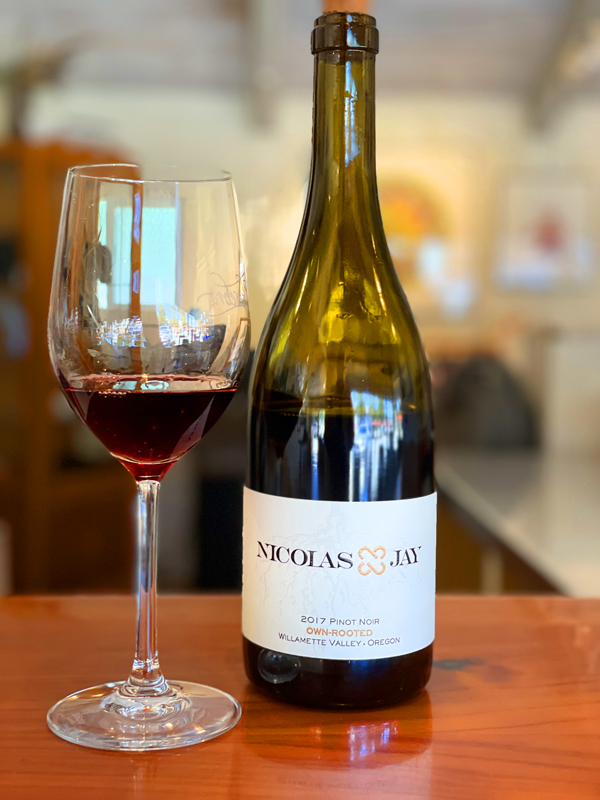
2017 Nicolas-Jay, Pinot Noir, Own-Rooted, Willamette Valley, Oregon.
I’ve been excited to follow the progress of Nicolas-Jay, the Nicolas stands for famous Burgundy producer Jean-Nicolas Méo-Camuzet, and their 53-acre Dundee Hills Estate, on classic volcanic Jory soils, which they planted and farm with biodynamic methods, plus Nicolas-Jay has some old and organic vineyards to work with at their Bishop Creek Vineyard, that is on the sedimentary soils of the Yamhill-Carlton AVA. That said, this gorgeous and deeply flavored Own-Rooted Pinot Noir is a special bottling that comes from three old un-grafted and own-rooted vineyards, which the winery calls legacy Willamette Valley sites that pedigree and local history with every harvest here, they include a range of the valley’s soils and exposures and each year provides a very different set of characteristics with this 2017 having loads of fruit intensity and heavenly aromatics. The palate is lush, satiny and luxurious, similar to how the Méo-Camuzet Burgs feel, with concentrated black cherry, plum, fig, raspberry and dried cranberry fruits, along with ripe tannin, cola bean, sweet cedar, mineral tones, rose petals, baking spices, including cinnamon and shaved vanilla and orange tea notes. The 2017 Own-Rooted Pinot saw a native yeast, all de-stemmed, fermentation with gentle traditional maceration and pilage before being pressed to barrel, with about 50% new French oak being used. The wine was matured in oak for about 18 months and then bottled unfiltered, making for a very impactful Pinot Noir that impresses for its purity and complexity, gaining a bit off sultry earthiness and light savory notes with air.
Meo-Camuzet’s Oregon project, Nicolas-Jay, which I first tried with their 2014, is a partnership between famed Burgundy vigneron Jean-Nicolas Meo, of Domaine Meo-Camuzet, one of my favorites, renowned for wines like his Clos de Vougeot and his Vosne-Romanee bottlings, and the music and media mogul Jay Boberg, who co-founded IRS Records, was president of MCA/Universal Music and now heads Isolation Networks-INgrooves. The Domaine Nicolas-Jay owns a vineyard, Bishop’s Creek and sources from top growers in the Willamette as they build this label, I would think after this first success they’ll be around a long time and have more of their own vines. The other part of this story that shouldn’t be overlooked, is the work and achievement of associate winemaker Tracy Kendall, a young winemaker on the rise, coming from a three year stint as enologist at Adelsheim Vineyard, where she really was making some great stuff before joining up with Jean-Nicolas, as well as working harvests at Vasse Felix in Western Australia, Serisin in New Zealand as well as Kiwi Pinot specialist Felton Road. As I said about the 2014, the Nicolas Jay wines have a Burgundian touch and feel, but are all Oregon in character close to what you’d expect from top producers like Beaux Freres, Domaine Drouhin, Brick House and others, don’t miss a chance to get a few bottles, and while this Pinot is lovely now, it should evolve nicely over the next 3 to 5 years. The Own-Rooted Pinot highlights that quality of the vineyards and the vintage, especially the Hyland Vineyard, the oldest in the McMinnville AVA, that sits atop a hillside looking over the Van Duzer Corridor, and its 45 year old vines, that the winery says supply’s a brilliant tension in this wine, while the other sites fill out the body here, it is a wine to look for.
($75 Est.) 95 Points, grapelive
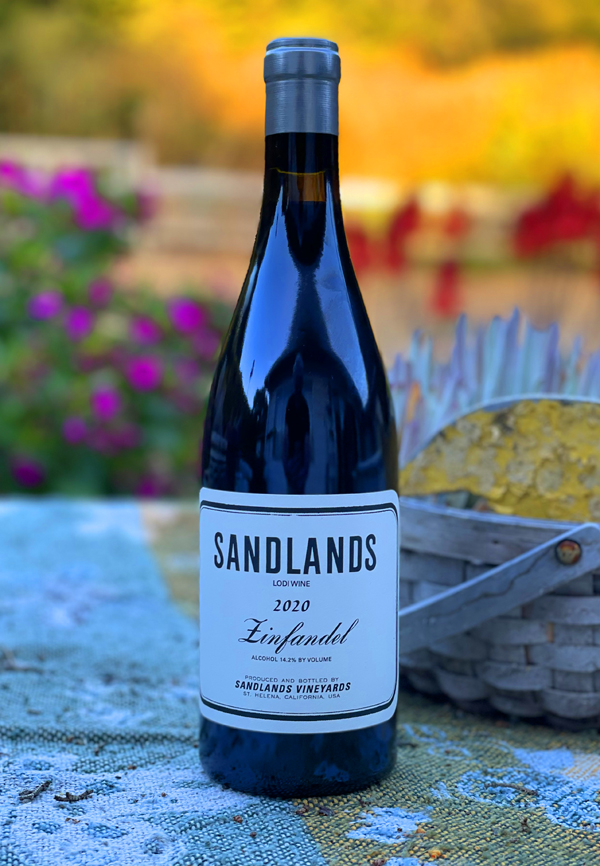
2020 Sandlands Vineyards, Zinfandel, Kirschenmann Vineyard, Lodi, California.
Tegan Passalacqua’s signature Sandlands Kirschenmann Vineyard Zinfandel comes from a hundred and eight year old vines on the East Side of Lodi’s Mokelumne River AVA, which was was originally planted back in 1915 and is set on silica rich, white sandy soils. This 2020, like the gorgeous 2018 and 2019 versions, is an all American rock star with a dark garnet and purple color in the glass and loads of deep black raspberry led fruit, subtle floral notes, a light dusting of spices and a sandalwood note. As noted in prior reviews, this own rooted site has mostly all Zinfandel, but there is some Carignane, Cinsault and Mondeuse scattered within the vineyard, adding an extra bit of complexity. The 2020 Sandlands Ldi Zin is satiny and plummy on the full bodied palate, it again delivers a very solid performance and it is beautifully poised and pleasing adding candied cherry, bramble berry framboise and grilled herbs de Provence, finishing with plenty of length and smooth underlying acidity. Passalacqua’s day job of running the winemaking and vineyards for Turley is clearly on display with this Zinfandel and his whole Sandlands collection of wines are direct, terroir driven and transparent offerings. While a Zin specialist, Tegan does great stuff with Carignane, one I try never to miss, as well as Trousseau, Cinsault, Chenin Blanc, Mataro (Mourvedre), Grenache, Syrah and the Mission grape, also known as Pais or Listan Prieto. There’s not a lot of the Sandlands made, so it is best to sign up for Tegan’s mailing list to get your fix of these wines, some of which are true California history captured in a bottle!
The Sandlands label, as mentioned, made by Passalacqua, offers a range authentic wines, focused on promoting California best old vines, like this one, and are exceptional values too. These stellar offerings, which I believe are produced mainly with all native yeasts and mainly neutral wood to allow purity to shine through. Sandlands, as noted many times here, is the personal wine project of Tegan Passalacqua, who is head winemaker and vineyard manager for the famed Larry Turley. He is focused on primarily head-trained, dry-farmed and own rooted vines from historic sites and grapes that might have been overlooked for years. Passalacqua, who got his start by working in the lab in Napa Valley, has many talents, in the cellar and in vines, and he has an impressive CV, having done stints in the cellars of Craggy Range in New Zealand, with Eben Sadie in South Africa and with the late great Alain Graillot in the Northern Rhone Valley. All of these experiences has helped shape his style and he continues to turn out some impressive bottlings, which this one is. The vineyards that Tegan uses, including his own family’s Kirschenmann, offer a taste of California’s past and future, they are set on primarily on sandy granite based based soils and are, as he says, lovingly cared for by generational family farmers using organic and or sustainable methods. Passalacqua has total commitment in his wines and had to make serve choices in 2020, only making wines that has absolutely no smoke taint, and that shows in the brilliance of his 2020s, like this one, so they is no worries with his efforts, here in the Sandlands wines and his Turley lineup.
($32 Est.) 94 Points, grapelive
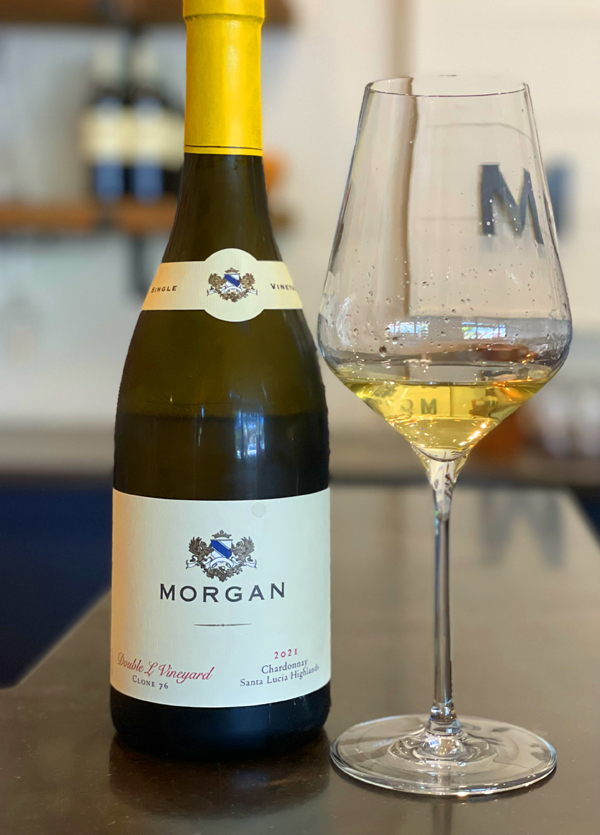
2021 Morgan Winery, Chardonnay “Clone 76” Double L Estate Vineyard, Santa Lucia Highlands.
The Morgan Winery, led by Dan Lee and his family, is on a roll with a top notch collection of estate and non estate wines in the lineup, but especially with their awesome organic estate bottlings of Pinot Noir and Chardonnay, with wines like this Double L Clone 76 Chardonnay giving world class performances. Winemaker Sam Smith, who has taken this label to new heights in recent vintages and has a truly gifted touch with Chardonnay and this new 2021 release highlights the talent here and captures the best of what the Santa Lucia Highlands can do with this grape. This brilliant pale golden Chardonnay is remarkably stony in personality and pulsates with a fine energy, its personality is like a perfect combination of California richness and Burgundy like elegance and mineral toned with the ability to shine by itself, but fabulous with food. The pure, delicately aromatic, vivid and almost steely medium to full bodied palate shows its depth with an array of white peach, apple, pear, lemon and restrained pineapple fruits that unfolds nicely with wet stone, clove spice, chalky oyster shell, a hint of yeasty hazelnut brioche, vinous creaminess, light vanilla (oak) notes and a touch of fig. The regular Double L bottling, which is a stunning wine too, feels a bit weightier and is more flamboyant and this one provides a cool contrast to that and will be absolutely great with a variety of cuisine, in particular local sea foods.
Morgan Winery founder Dan Lee’s Double L Estate Vineyard was originally planted back in 1997, today Morgan’s and is the only fully certified organic vineyard in the Santa Lucia Highlands, which has proven itself to be one of the top sites in the region with its cool climate and quality small yields producing exceptional grapes. This cru is located at the northern end of the Santa Lucia Highlands AVA, and as Lee notes, the vineyard’s north-south row orientation provides optimal wind and sun exposure here, with the sandy loamy soils giving good drainage and promotes deep roots for added concentration and complexity in the wines. This place is ideal for Pinot Noir, Syrah, plus Riesling, which is showing great promise under winemaker Sam Smith and especially Chardonnay, as this gorgeous 2021 vintage shows. The winery says, Clone 76 a “Dijon” clone of Chardonnay is valued for its early ripening, smaller yields, and fruity tropical notes, with the area’s nice natural acidity complimenting this genetic version of the grape. Lee has just over one acre of Clone 76 planted at Double L that is all hand-picked, then hand-sorted at the winery, after which they get gently pressed and settled before the juice is racked to barrel. This vintage of Clone 76 Chardonnay, which I highly recommend, was fermented and aged in 25% new French oak, where it matured for 9 months, seeing about 90% full malo-lactic conversion and lees stirring to help this racy vintage round out with just about perfect balance, with its impressive tension and texture.
($46 Est.) 95 Points, grapelive
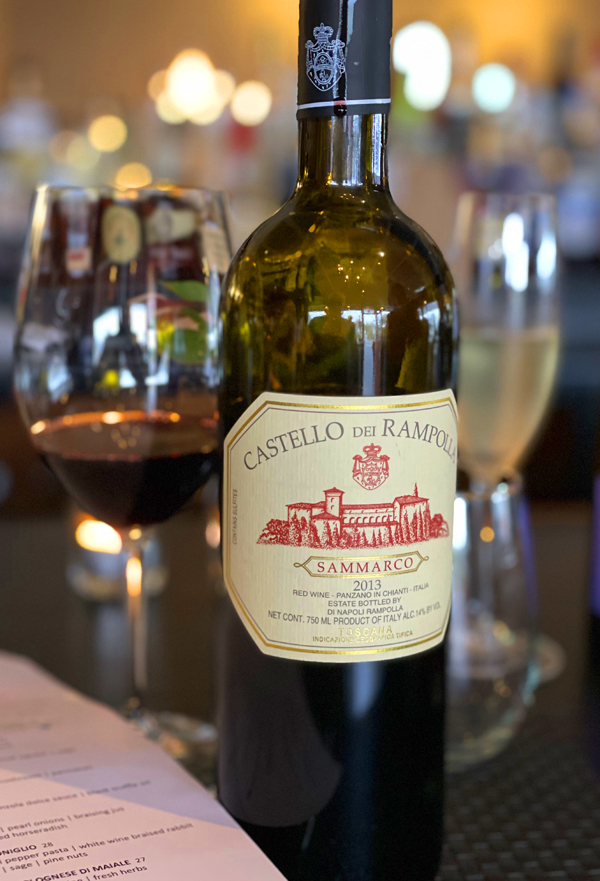
2013 Castello dei Rampolla, Sammarco, IGT Rosso, Tuscany, Italy.
One of the first Super Tuscan wines I really got to know early in my career in the wine business, Castello dei Rampolla’s Sammarco, mostly Cabernet Sauvignon and grown in the Chianti Classico zone of Tuscany, at almost the half way point between Florence and Siena in Panzano, which makes it special to me and I was thrilled to re-visit this deep and Bordeaux like 2013 vintage. I think the first impression of I had of Sammarco I had professionally was the rustic charm it displayed, it was the1996, which was not a remarkable year, but I loved that way and I was drawn in forever to these Castello dei Rampolla wines, and this 2013 re-ignited that flame with its uniquely italian feel, it was made from about 90% Cabernet Sauvignon, 5% Sangiovese, and 5% Merlot, making for a very dark and structured wine. The vinous, mature and evolved medium/full bodied palate of this Sammarco is neither heavy or flamboyant, but more elegant, earthy and poised, not trying to show off, it delivers blackberry, mulberry/currant, plum and dusty cherry fruits that are accented nicely with green spice, tobacco leaf, loamy dry earth, mineral tones, minty anise, a hint of smoky oak and dried dark flowers. I would never say this wine is shy or a wallflower, but this wine didn’t shine in its best light until matched with food, then it opened its arms wide and embraced the moment to the fullest and impressed with its brilliance. The Castello dei Rampolla is owned and run by the Di Napoli family, currently with Maurizia and Luca in charge and with Maurizia making the wines here, which have a cult following, especially for this Sammarco, and the ultra rare d’Alco, made from 85% Cabernet Sauvignon and 15% Petit Verdot. These are single vineyard wines set on the classic Galestro soils and on mainly South facing slopes that soak up the beautiful Tuscan sun and give these grapes wonderful fruit density, color and aromatics. This artisan nature of the wines, with hand tended vines and small yields here is compelling and the passion for sustainable production is very admirable, which adds to the pleasure in drinking these wines, they’ve never been cheap, but they are worth it.
Castello dei Rampolla, one of Tuscany’s most historic estates, owned by the Di Napoli family since 1964, is in Chianti Classico’s Panzano region and located in Conca d’Oro, a picturesque area with centuries of winemaking tradition. Interestingly, Castello dei Rampolla has only bottled their estate wines as such since 1975, but was one of a small number of famous wineries that led to the revival of the Chianti Classico wines, which had lost its way and had tarnished its prized reputation for quality, native authentic taste and regional distinction. It is then somewhat ironic that Castello dei Rampolla, who have been all biodynamic since 1994, are almost better known for their International varietal bottlings than their pure indigenous Sangiovese bottlings, like this Cabernet Sauvignon based Sammarco. Like most of the best towns in Chianti Classico, Panzano’s altitude and hill top exposure makes it the quality location it is, notably it is never really excessively hot even during August, allowing for perfect ripening conditions to make balanced wines. The dark feuding history between Florence and Siena led to the destruction of Panzano on many occasions durning the 1200s, 1300s and as late as the1500s, but thankfully now it is a wonderfully peaceful place, home to beautiful farms and estates that produce fine wine, olive oil and some of the best meats in Italy. The pedigreed Sammarco, the first biodynamic Super Tuscan, was originally made and predated Ornellaia in1980 and had the famous Giacomo Tachis, who consulted with Sassicaia, Solaia and the mentioned Ornellaia! The fermentation happens in concrete vats, 100% de-stewmmed, and macerated for 30 days before being racked to barrel, which are a combination of French barriques, large casks and 500L tonneaux, where the Sammarco ages between 14 to 16 months. After which the wine is rested in bottle for another 24 months before release, allowing all the flavors to meld together and tame the youthful tannins, as this vintage shows, having almost ten years to develop. In recent years, with the move towards native grapes only in Chianti Classico and Riserva(s), Castello dei Rampolla has risen to the occasion and I highly recommend them, as well as these exotic Cab led offerings of course.
($99 Est.) 94 Points, grapelive
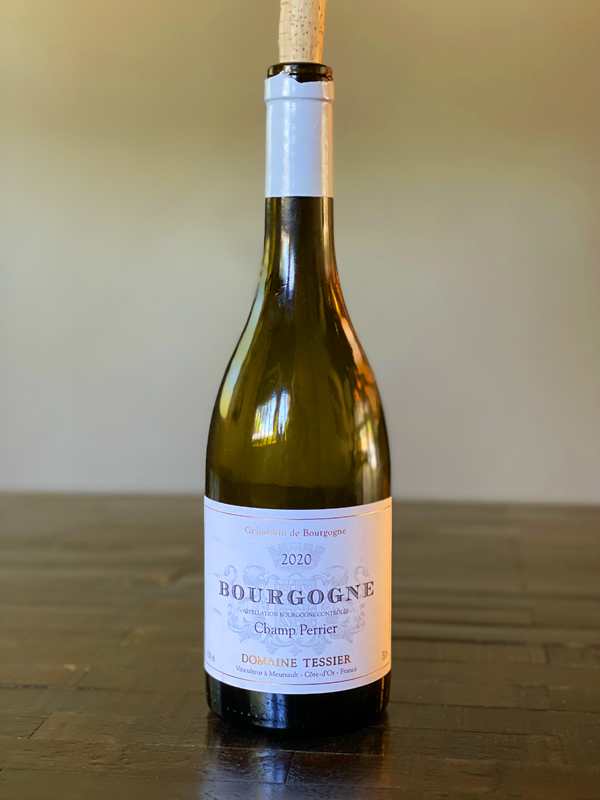
2020 Domaine Tessier, Bourgogne Blanc “Champ Perrier” Burgundy, France.
Arnaud Tessier, who after his father’s untimely death in around 2009 took over this little known domaine, is gaining some big notoriety as an outstanding producer in the Meursault region. This single parcel Bourgogne Blanc is a beautiful, pale gold and deep Chardonnay, punching way above its weight in terms of quality and depth with lovely vinous layering and steely mineral notes. The palate is textured and terroir driven beyond what you’d expect from regular Bourgogne Blanc bottling, showing off lemon, apple, peach and pear fruits along with leesy richness, matchstick, hazelnut, wet stone, clove spice and subtle wood influence. This wine comes from a single lieu-dit in the village of Puligny-Montrachet, on the Meursault border, with 45 plus year old vines set on the Côte de Beaune clay and chalky limestone soils, which gives this Champ Perrier its soulful and exciting personality. The vineyard work is done by hand with holistic methods and fully organic with, as the winery notes, careful ploughing by horse. I’m still just getting to know the wines here at Tessier, but I really would love to try their Meursault 1er ‘Les Genevrieres’, which I bet is a thrilling offering!
Meursault’s Arnaud and Catherine Tessier are running their small domaine, with prime parcels including holdings in Meursault Les Charmes-Dessus, Meursault Genevrieres-Dessus, along with some excellent plots in Meursault Poruzots and Meursault Casse Têtes, all farmed with an organic focus and they are committed to sustainable viticulture, preferring to spend most of their times in the vineyards. In the cellar, Arnaud, who starting winegrower at 14 years old and took over this estate at 21, is a no nonsense winemaker, using indigenous yeast for the fermentation and as the winery notes, he allows the wines a lengthy and slow elevage. This Champ Perrier Bourgogne Blanc, which was 100% barrel fermented and aged, with this vintage seeing a full 12 months in the oak, just 10% new, and then another half a year in stainless steel vats before being bottled. This wine is a killer bargain, especially in an exotic and expressive vintage like 2020, making this wine a no brainer and it should mature nicely in bottle for another 3 to 5 years, though super enjoyable now, no waiting required. I suggest stocking up on this engaging white Burgundy and enjoying it with soft creaming farm cheeses, fleshy fish, salmon and or swordfish, which will bring out the pedigree in this wine.
($35 Est.) 93 Points, grapelive
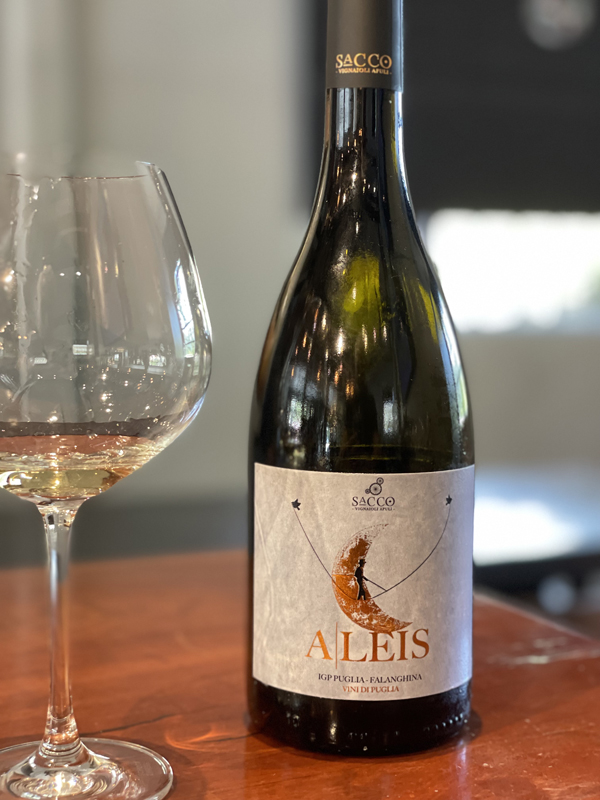
2021 Azienda Sacco, Falanghina IGP “Aleis” Apulia, Italy.
The Brilliant gold Alleis Falanghina by Sacco is an all organic and crisply dry white wine from an unlikely place, in the wilds of Apulia and is a mineral driven example of this grape, originally brought to Italy from Greek colonists centuries ago. The palate is tartly stone fruited with vibrant acidity and great purity of form with apricot, lemony citrus, quince and bitter peach pit leading the way here with stony notes, saline and almond accents. The grapes were all hand harvested and gently slow pressed, a process lasting 6 hours, into stainless steel, where the juice was fermented and lees aged for just about a few months before a quick bottling to promote freshness and transparency. This wine has a lot to admire and is outstanding with sea food dishes and coastal cuisine choices. The Apulia region is rustic and traditionally or generally not seen as a top wine area, but with great olive oil and an interesting array of varietals, like Nero di Troia, Bombino Bianco, Falanghina, Malvasia di Candia and of course the most famous Primitivo, aka Zinfandel.
The golden yellow Falanghina grape, most likely from Greece, had been almost been forgotten for over a hundred years, but since it is one of the grapes not really affected by the phylloxera plague(s), it has survived and now is a staple in Italy’s South, especially in Campania. The name Falanghina, translates to “vine supported by poles” and it is usually raised ungrafted and is grown mainly in hilly terrain. Doing well in hot and dry climates, the grape has found a happy home in the southern regions of Italy, which includes the mentioned Campania, as well as Apulia and the province of Foggia, as see here, along with the Molise and even in Lazio, not far from Rome. The Sacco family winery, which is run by Matteo and Alessandro, is committed to sustainable farming and terroir influenced wines. The vineyards are located in the Gargano mountains, on calcareous-clay soils, that brings out a certain chalky tone and the expressive mineral tones. This Aleis, single cru Falaghina, is sublime value and I highly recommend it for those looking for a lovely Summer wine, it is a great alternative to generic Sauvignon Blanc, Pinot Grigio and or stainless steel fermented and aged Chardonnays.
($18 Est.) 92 Points, grapelive
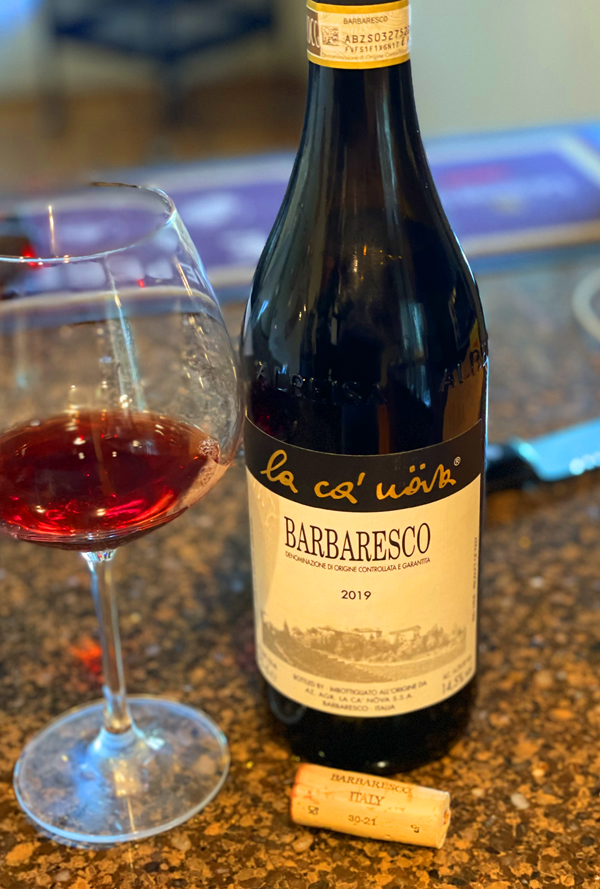
2019 La Ca’ Növa, Barbaresco DOCG, Piedmonte, Italy.
This 2019 La Ca’ Növa Barbaresco is an easy to love pure Nebbiolo that delivers a lovely and rustically charming palate of bright red fruits, spice, mineral tones and dried flowers that all fold together nicely, drinking fabulously well in its youth with no harsh bite, but with a stylish structure and complexity. This ruby/brick colored Barbaresco has a pretty nose with wilted roses, a hint of sultry earth and subtle cedar notes with macerated cherry, damson plum, mulberry and vine picked berry fruits, as well as roasted herbs, chalky stones, anise and orange rind. This wine, for the money is a no brainer and should drink well for 5 to 10 years, showing off fruit dimension and plush textural presence in this warm and ripe vintage, I highly recommend looking for this label. La Ca’ Növa really got my attention with their 2016s, and this 2019, while more fruit forward, is an attractive Nebbiolo that is very easy on the wallet. The La Ca’ Növa Barbaresco was fermented with indigenous yeasts and everything is done by hand using open top barrels, as was done in older and simpler times. The maceration is interestingly done with a large wooden spoon used to stir the musts, which the winery notes, is very difficult and time consuming work, but it worth it, as it helps extract a much richer color as well as more polyphenols. Interesting too, the Roccas, who were growers, sold their grapes to others (including Gaja) until they began bottling under their own label, chose to age their Barbaresco in Austrian, rather than Slavonian oak. The wines here are transparent and crafted without much in the way of technology, usually employing open top vats and used wood for maturing the Nebbiolo bottlings.
La Ca’ Nova, is a little family winery set in a farmhouse from 19th century, in the center of Barbaresco, was founded in the ’70s, it is run by the Rocca brothers who split between themselves the different roles among vineyards, cellar and public relations. This estate, as mentioned in my prior reviews, winemaker Marco Rocca’s La Ca’ Növa winery is located just outside of the historic village of Barbaresco and produces traditional styled wines that way over deliver for the price, especially this basic Barbaresco and the famed Montestefano cru. Marco’s main passion is his Nebbiolo parcels and his trio of Barbaresco wines, but as the winery notes, Marco also does Dolcetto, Barbera, as well as a entry level Langhe Nebbiolo, which I will now search out, because if his Barbaresco DOCG and Cru Montestefano are this good and low priced, they must be fantastic values as well. The winery has prized holdings in the Montefico and Montestefano crus, as well as nice sites within the Barbaresco DOCG zone from which they make this set of Barbarescos, with this one, I believe, being a cuvée of the various sites, chosen after fermentation and then blended. La Ca’ Nova is a little family winery set in a farmhouse from 19th century, in the center of Barbaresco. Founded in the ’70s, it is run by the Rocca brothers who split between themselves the different roles among vineyards, cellar and public relations, with Marco as the winemaker. They have some prime vineyards, which are treated in full respect of the environment and of the natural vegetative cycle of the vines, with those Montefico and Montestefano crus being their joint signature wines and most coveted vines. This latest offering is one that I like to stock up on for more casual meals, it goes well with a range of cuisine choices, even though it is best with meaty dishes with proteins.
($40 Est.) 92 Points, grapelive
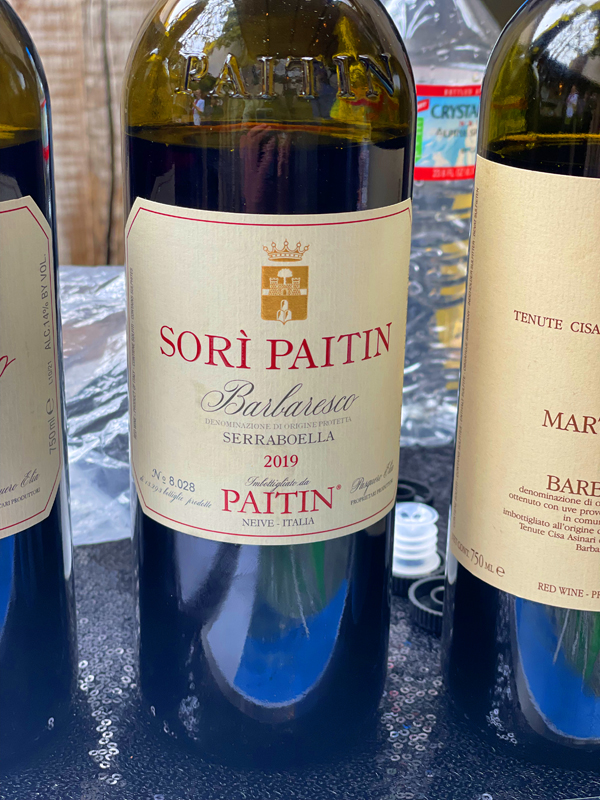
2019 Paitin, Barbaresco DOCG “Sorì Paitin” Serraboella, Piedmonte, Italy.
The extremely rare, aromatic and beautifully textured Sorì Paitin bottling of Serraboella Barbaresco is a gorgeous Nebbiolo wine with a range of depth, structure and complexity that is quite remarkable for the price, I mean that this wine drinks like a Grand Cru Burgundy for a fraction of the cost, and a huge standout in Paitin’s fine collection of 2019 Barbaresco(s). This wonderfully pure and elegant Barbaresco is slow to open, but that shy side fades away quickly revealing pretty florals, earthy red fruit, dried herbs and laurel before a taut palate of youthful and graceful layers of brandied cherry, damson plum, red currant and blood orange fruits, along with wild mint, a hint of leather, sandalwood, hoisin, baking spices and anise accenting. All of which fold together with excellent detail, nicely tame tannin and an impressive silken vinous feel. While the Paitin Barasin and regular Serraboella are extremely poised and rewarding wines, this one rises above, easily making it my first choice of these new releases and I wouldn’t say no to any of these, I highly recommend chasing this Sorì Paitin Barbaresco bottling down and while drinking very confidently now, I certainly believe it will gain in dramatic fashion over the next 5 to 10 years. The Sorì Paitin comes from mature Nebbiolo vines that, as the winery notes, were planted between 1953 and 1980 and guyot trained, grown on sand and marl stratification called Formazioni di Lequio, which adds to the terroir expression here and makes this Barbaresco very compelling vintage after vintage. This wine is a favorite of collectors and this garnet and ruby 2019 shows off this parcels charm to almost perfection, it deserves your full attention and a meal to do it justice, best to have with rustic and simple cuisine to see of of its nuances.
Barbaresco’s Paitin is based in Bricco di Neive, which is located very near the main Commune of Neive and set on ancient picturesque hillsides covered in vines, mostly Nebbiolo, and up nearly at a 1,000 feet above sea level. The notable Paitin winery was originally started back in 1796, when, as the winery notes, Benedetto Elia bought the estate, but things really got more serious after WWII when a later generation of the Elia family took over and rejuvenated and re-planted the vineyards, with a focus on quality and estate made wines. Paitin today has Giovanni and Silvano Pasquero Elia making the wines here, all sourced from sustainable vineyards farmed with organic and biodynamic methods in the Barbaresco zone. They produce a studied collection of wines, including Barbera, which is a sleeper in the lineup and one I also love and think highly of, plus a Freisa, which I haven’t yet tried, along with a Langhe Nebbiolo, which is a killer bargain, and these small lot Barbaresco offerings, as well as their prized Vecchie Vigne (old vine) Riserva. The Serraboella cru, one of the most prized sites in Barbaresco, is on the warmest slope, it is, as the winery explains, graced with unique soils, mentioned above, and is planted exclusively with Nebbiolo. The Sorì, which means the first place where the snow melts, is blessed with the first winter sun rays and allows for perfect ripening conditions. Paitin ferments and macerates the carefully sorted and de-stemmed Nebbiolo grapes, getting from 3 to 6 weeks in stainless steel, than, after which it finishes its maceration with what the winery calls the ancient technique of the submerged cap, which delivers full extraction of color and flavors. The Sorì Paitin Barbaresco is matured between 18 and 24 months in used wood, a combination of large casks, made of Slavonian and Austrian oak, with an average age of 15 years, to promote transparency, finesse and soften the tannin in the finished wines.
($68 Est.) 95 Points, grapelive
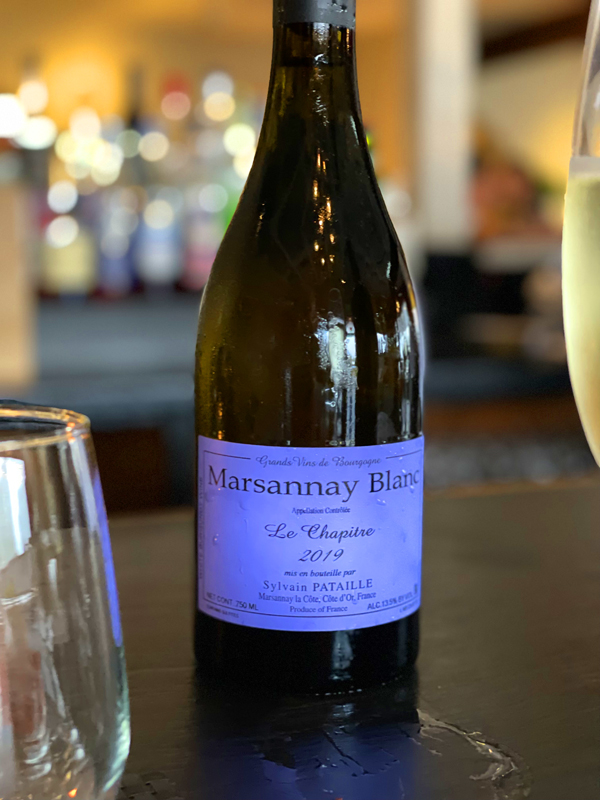
2019 Domaine Sylvain Pataille, Marsannay Blanc “Le Chapitre” White Burgundy, France.
I’ve long been a fan for these Sylvain Pataille wines, especially the red Marsannay offerings, but I don’t have much experience with the whites here, so it was great to enjoy his Marsannay Le Chapitre Blanc last night, it is a unique Chardonnay that has an almost Jura like nutty nose with a distinctive pecan, mineral and almond oil character showing through with interesting array of lemon, green apple, quince and Bosc pear fruits. The pale gold 2019 Pataille Marsannay Blanc Le Chapitre teases the senses, but the medium bodied palate has all you’d expect in terms of flavor and depth adding a beautiful textural quality with air and it was exceptional with both salmon and lobster dishes, with stony and crisp detail throughout, gaining personality and style as it came to life in the glass. There is a lively cut of natural acidity, a touch of reduction, and a fine salinity that refreshes, all of which helps hold things together here and leaves a lingering tart peach, burnt citrus and hazelnut, making for a very confident wine that has a prized contrast between fruit concentration and energetic tension. The village and AOC of Marsannay, is technically part of the Côte de Nuits, and has a solid wine history, became notable in 1783, when it is said that the village got its name, which it owes to its Gallo-Roman roots, mostly like derived from the name of Marcenus. These gentle rolling hillside vineyards enjoy good southern and eastern exposures and dark brown marl based soils that contains a chalky mixture of limestone, calcareous clay, clay and contains pebbles and gravel, which, along with a cooler climate, gives these wines their terroir influence.
Sylvain Pataille, who started his own label in 2001 and based in Chenôve, makes wines exclusively from the terroirs of Marsannay-la-Côte, and he has become one of the most coveted domaines in Marsannay region, working in a very natural way and using only sustainable and organic methods. Pataille, after studying in Bordeaux, worked as a (very successful) consulting enologist for many estates and has inspired a new generation of talents here. Sylvain does a set of about a dozen wines from Aligote, Passetoutgrain and regional Bourgogne offerings, both red and white to his signature efforts, Marsannay Blanc, Rosé andRouge, with many prized Lieu-Dits, including this Le Chapitre. Pataille uses all natural yeasts, in his fermentation with temperature control in a mix of stainless-steel tank and fibre-glass vats before the wines go to wood to mature. This wine, which saw a gentle pressing and was aged for 12 to 18 months in barrel with about 1/3 new oak being used, though it doesn’t really show overtly here in this vintage, making for a very balanced profile with just the right amount of richness and depth. The certified organic Le Chapitre plot was planted back in 1955 and is set up at about 300 meters above sea level with some steep slopes, it was once owned by the Chapter (Chapitre in French) of Autun Collegiate Church, hence the name. The vines and the woods that lie above them, the winery notes, were owned by the Archbishop of Autun himself, who also originally planted this selection of vines. Pataille rates Le Chapitre highly, saying it is one of the region’s finest sites, he has two parcels here, one inside the walls or Clos, and one just beyond, which is where this one usually comes from. Again, I manly buy Pataille’s reds and highly recommend them, especially his Clos de Roy bottling, though I wouldn’t miss the regular Bourgogne Rouge and Marsannay Rouge offerings, which are outstanding values and also the Rosé.
($48-75 Est.) 92 Points, grapelive
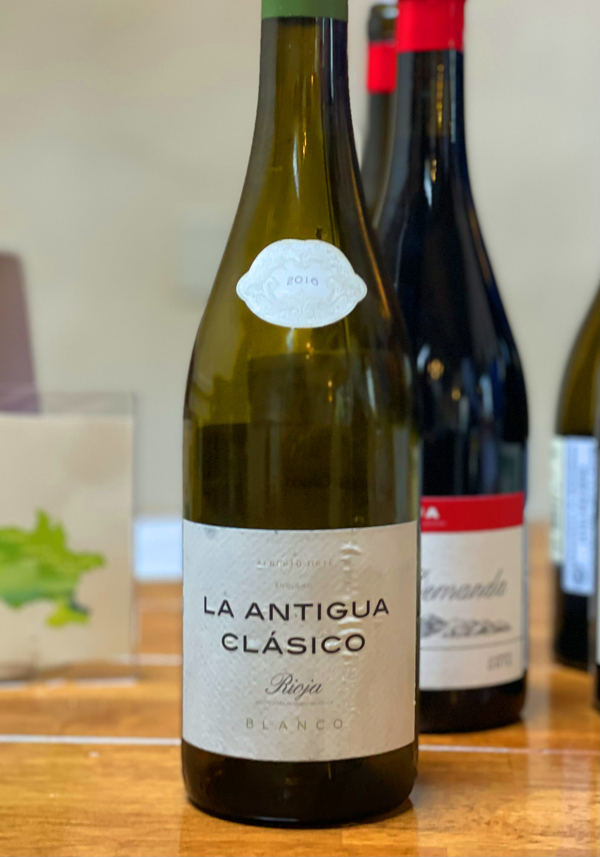
2016 Alberto Orte, Rioja Blanco “La Antigua Clásico” Rioja Alta, Spain.
The unique, golden hued and slightly oxidaive Alberto Orte Rioja Blanco is made mainly from heirloom clones of old-vine Viura, along with Garnacha Blanca and Tempranillo Blanco that was partially aged under flor, a protective yeast, commonly found in Sherry, making for a dry style of white wines geared for food with lemony citrus, apple, wild peach and fig fruits, along with a savory, saline and umami character. There’s hints of baked pear, nutty almond paste, dried herbs and yeasty notes in the background here and the medium bodied palate of this Rioja Blanco La Antigua Clásico that opens up easily in the glass adding a nice textural mouth feel, not unlike Lopez de Heredia, showing a mature personality, but with a good zippy burst of natural acidity. Alberto Orte, who makes wines under his on label and who now lives in El Puerto de Santa María (Cádiz) in southern Spain, uses a parcel of vines in Sierra de la Demanda with north facing exposure located in Rioja Alta, which sees cooler growing conditions, it’s a vineyard that can only be tended by hand and is 100% organic, getting small yields and balanced ripeness. This Rioja white, a category that is vastly underrated on the world wine stage, is best enjoyed with a meal and pairs well with grilled fish, especially Sardines, soft cheeses and or cured ham.
Winemaker Alberto Orte Espejo, who was born in Madrid, along with his partner Patrick Mata, created Vinos Atlántico, with a mission to find great vineyards planted to historic indigenous varietals from old vines in high elevation sites, to create distinctive terroir driven wines. The Alberto Orte Vinos is a small lot label, within the Vinos Atlántico portfolio that highlights wines farmed and hand crafted by Alberto himself from vine to bottle, that showcases his talent and passion, making him one of most interesting vintners in Spain. Exploring the riches of Spain and finding little known areas that have unique qualities, seems to be a thing with modern young winemakers in the country, with a nod towards traditional and natural winemaking methods, as Alberto shows here in his set of Rioja offerings. The subtle aromatic Rioja Blanco “La Antigua Clásico” with faint floral, earthy muskmelon and pecan elements was naturally fermented and aged in a combination of mostly used oak barrels with about 80% French and 20% American wood used here, aged for 14 months, which makes it quite distinctive and well rounded. It is definitely a white wine that goes its own way, and is a fun alternative choice that I recommend for those that are adventurous. The high elevation vines, at almost 2,500 feet above sea level, with Viura, Grenache Blanc and Tempranillo Blanco grapes, were planted back in 1965 and set on red silica soils, see warm dry days and chilly nights that gives this wine its soulful charm and age worthy concentration.
($35 Est.) 92 Points, grapelive
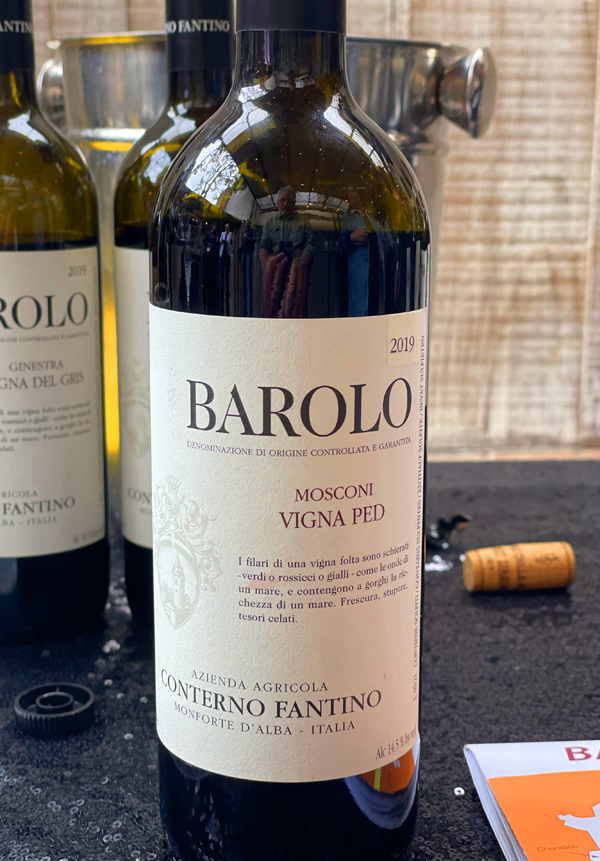
2019 Conterno Fantino, Barolo DOCG “Mosconi” Vigna Ped, Piedmonte, Italy.
The 2019 Mosconi Vigna Ped from Conterno Fantino is a brilliant young Barolo that is already showing its potential and has a gorgeous purity and depth, it was one of my personal favorites in a recent pre-sale tasting with some very serious Barolo and Barbaresco wines, it really was a standout Nebbiolo with classic flavors, depth and with a distinctive terroir driven character. I’d never had these Conterno Fantino wines before and was left very impressed, especially this one from the highly regarded Mosconi cru in the Monforte d’Alba area and from mature Nebbiolo vines that were planted between 1960 and 1999. The 2019 Mosconi Vigna Ped shows off a beautiful nose of dark roses, crushed berries, a touch of earth and spice, with a ripe, but structured, full bodied palate of black cherry, damson plum, bramble berry and currant fruits, accented nicely by tarry licorice, sandalwood, minty herbs, hoisin sauce, blood orange, mineral and sultry savory elements. There’s certainly a powerful force and grip in this Barolo just below the surface and the luxurious and concentrated mouth feel hides some of the serious tannin at this stage, making you want to enjoy this one right away, though I would advise allowing for 5 to 10 years of bottle age on this dark garnet and brick hued Mosconi Vigna Ped, that patience should pay off in rewarding fashion. The Mosconi cru’s organic Vigna Ped is a south facing parcel is close to 400 meters above sea level and set on sandy soils with depleted silt and clay marl, which sees a warm exposure, but gets cool nights, allowing for exceptional ripeness and balance, as this 2019 shows.
The Conterno Fantino winery was founded in 1982 by Claudio Conterno and Guido Fantino, bringing two famous Piedmonte families together, creating a tour de force estate focusing primarily in crafting exclusive small lot Barolo bottlings that are made with the utmost respect for the land and nature. To those goals, the vineyards, as the winery explains, are all organically cultivated (as certified by CCPB) with holistic and green methods, to give each wine their own natural identity. Conterno Fantino has taken big steps to reduce their environmental impact, and they in 2008 the winery expansion utilized various technical improvements with the aim of energy conservation, such as solar panels, a geothermal system and finally, the use of wetland specifically set up for wastewater purification. To highlight this and traditions, the grapes are all hand tended and harvested with the team carefully sorting each cluster, after which the winery says they, to preserve the aromas of the vineyard, a spontaneous fermentation with indigenous yeasts is employed (no commercial yeast is used here), with each vineyard site done separately. For aging, Conterno Fantino carefully selects the wood for the maturing of the wines and uses a minimal amount of added sulfites. This Mosconi Vigna Ped saw a maceration in stainless steel horizontal fermenters for 12-15 days before being pressed to barrel, all French oak, where it was rested for close to two years in wood and then another year or so in bottle. This impressive Barolo, that comes in at 14.5% natural alcohol, looks set for a long life ahead and I highly recommend it to Nebbiolo fans and those that can afford to put a few bottles away, this is stuff that will enjoy a long drinking window, maybe well into the 2030s!
($105 Est.) 95 Points, grapelive
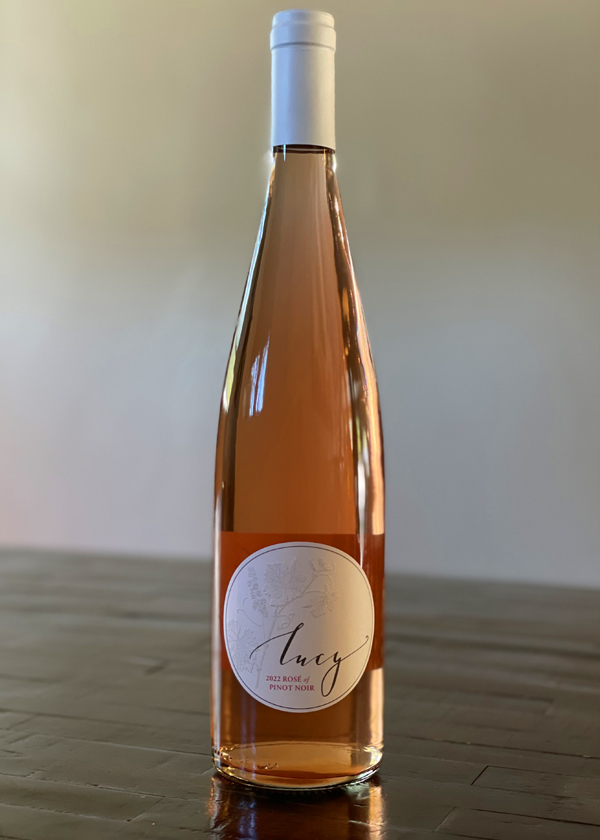
2022 Lucy Wines by Pisoni, Rosé of Pinot Noir, Santa Lucia Highlands.
The Lucy Wines, which were made to give back to the community and inspired by the Monterey Bay area are made by the famous Pisoni family and are supposed to be fresh, elegant, approachable, meaningful, and fun wines, especially this brightly flavored Lucy Rosé, crafted from Santa Lucia Highlands Pinot Noir. The Lucy Rosé of Pinot Noir started this whole venture and still gives partial proceeds to breast cancer research, it has always been a quality and expressive pink wine, but this latest release from the 2022 vintage is one of the best I can remember, and I’ve had these in most years since it was first conceived, with an inviting vivid pink/magenta hue, squeezed raspberry, sour cherry, tangy ruby grapefruit, watermelon, distilled strawberry fruits, along with a touch of spice, wet stones, wild herbs, rosewater and steely mineral notes. This vintage of Lucy Rosé of Pinot Noir, which comes from selected vines in the Santa Lucia Highlands on sand and loamy soils and with the cool blast of pacific air, is going to please anyone that pulls the cork, this is a rewarding regionally inspired treat that I highly recommend, and it is for a good cause.
Most Rosés are usually produced, as winemaker Jeff Pisoni says, either through whole cluster pressing or by Saignée (a practice in which a proportion of the juice from pressed grapes is bled away in order to concentrate color and tannins). He creates his Lucy Rosé using both methods, a bit like Domaine Tempier does in their famous Bandol Rosé, with separate lots of early picked grapes and then some fully ripe ones when they are picking for the main Pinots. Jeff continues, that he begins by sending the fruit directly to the press to be squeezed and take great care to retain only the most delicate and aromatic juice. Next, he drains off a small amount of juice from tanks of whole grape clusters, which he explains, gives the wine slightly more texture. Combining both practices allows the Pisoni’s to create this lovely and stylish version that stands out in a crowd. Finally, the Pisoni’s mature the Lucy Rosé in neutral barrels that lend more texture and roundness to the finished wine, but without much if any wood flavor, trying to transmit as much purity and energy as possible here. After three months in oak, The Lucy Rosé is bottled quickly to preserve freshness and in clear glass that, they say, sets off the wine’s vibrant color. Enjoy this one now and way into the Indian Summer and Fall season, it even will go great with Thanksgiving, if you were to have any patience!
($24 Est.) 92 Points, grapelive
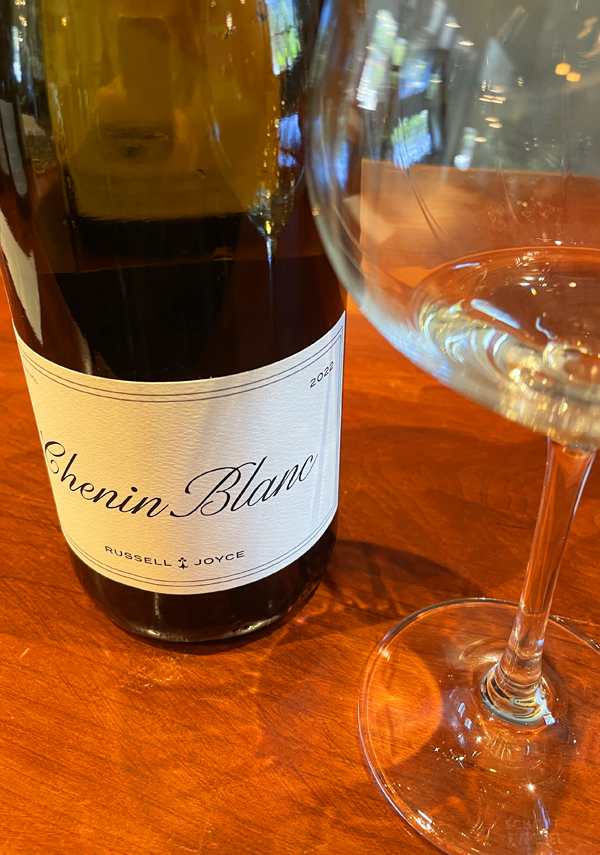
2022 Ruseell Joyce, Chenin Blanc, Rodnick Vineyard, Chalone AVA, Monterey County.
This brilliant new and upcoming release from winemaker Russell Joyce of Joyce Vineyards, made under his personal collection label, is pale golden pure Chenin Blanc that is going to be an absolute star of the vintage. With an almost white Burgundy sense of class and depth, even in its youth, this Chenin is an exceptional effort that will impress Chenin fans everywhere. This Brézé like wine seduces the palate in the same way that some of the drier, intense and steely Loire Valley Chenin Blancs do, including those made by legends such as Nicolas Joly, Romain Guiberteau, Clos Rougeard’s Foucault brothers and Thierry Germain, with crisp layering of citrus and stone fruit, vibrant acidity, liquid mineral and chalky notes. This 2022, which starts with a hint of reduction, matchstick and hazelnut, opens slowly to reveal a touch of white flowers, wild herbs, a gorgeous medium bodied and vinous mouth feel with layers of lemon, tangy peach, Bosc pear and quince fruits, along with leesy brioche and an awesome lengthy finish pushed along by that saline rich chalky charm. Joyce did his best to promote clarity and used a minimalist approach to his all organic Rodnick Chenin, barrel fermenting it, bone dry, in all neutral oak, well seasoned barriques, with some baronage and a short sur lie aging, bottling it after about 8 months, to preserve this wine’s purity and vibrancy. The 2022 Rodnick Chenin looks to have a very rewarding, age worthy, life ahead of it, with the potential to get even better, patience looks to the best option here, this 13% natural alcohol wine has the stuffing to go at least a decade or more!
What makes this wine, is the unique terroir and hillside fruit that captures the old world limestone character that you’d find in the Loire, in serious places like Saumur, married with the warmth of California for ripe fruit density and more immediate pleasures, though this one certainly has the energy and structure to age, as is often the case from this region. This Rodnick Vineyard is dirt with a sense of history and place, it is located high up on the east side of the Salinas Valley, somewhere between 1600 to 1900 feet of elevation, facing the Pacific Ocean in the Gabilan Range. There’s just 27 acres of vines which sees a combination of climate influences with what the vineyard owner calls a high desert that gets the refreshing cooling effect of Monterey Bay, creating what we know to be an ideal growing season with a big change in day to night temperatures. But, it’s the soils here that standout and what brought world attention to Chalone, with a combination of chalky limestone and decomposed granite that gives these wines their should, allowing for deep roots and a thrilling minerality that transmits into the finished wines from the Rodnick Farm, with many varietals originally planted by the late Richard Graff, who was the visionary of the Chalone Estate, as seen in this fabulous example of Chenin Blanc from Russel Joyce. Joyce has previously released a few Carmel Valley old vine Chenin(s), which are very solid efforts, but this one takes it to another level. The re-birth of Chenin in California has been riveting to witness, with a stunning array of offerings these days, and this wine joins some of the state’s best modern versions of this grape, I highly recommend keeping an eye for it, though it looks like a future winter release.
($36 Est.) 95 Points, grapelive
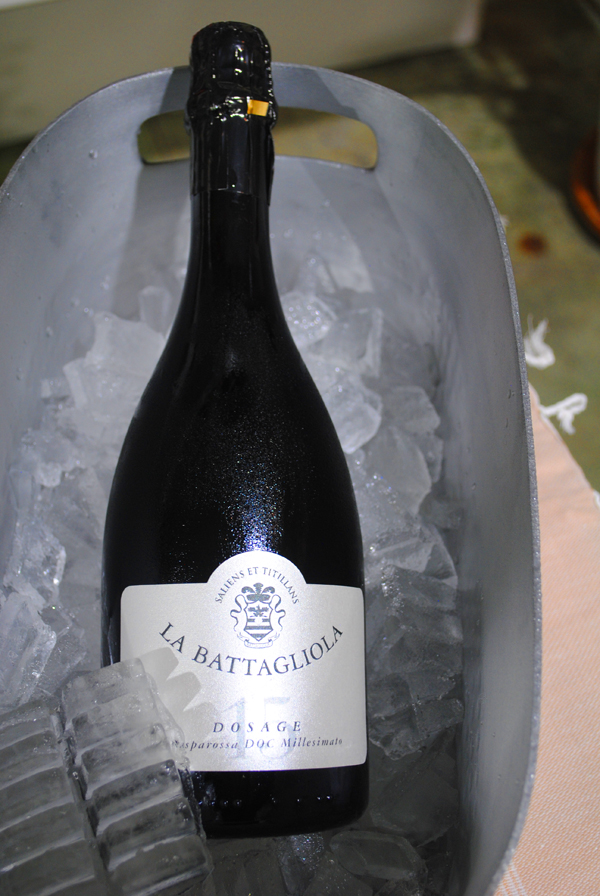
2021 La Battagliola, Lambrusco Grasparossa di Castelvetro DOC, Dosage Millesimato, Red Sparkling Wine, Emilia-Romagna, Italy.
The dark magenta, slighty off dry, like an Extra Dry Champagne, and fruity La Battagliola “Dosage Millesimato 15” Lambrusco is a quality version of this ancient sparkling Emilia-Romagna wine and is a perfect picnic, BBQ and outdoor quaffer with dark berry, cherry and currant fruits and an underlying savory tone, spice, dried herbs and lingering crushed violets. The slight amount of dosage here and residual sugar bright a hint of sweetness, but serves best as a fine balance here and makes this Grasparossa di Castelvetro zone Lambrusco easy to sip, giving nice refreshment, nice with warm weather, and still excellent with hearty and flavorful dishes. The mousse is lively, but has a velvet like creamy elegance, with small vigorous bubbles that keep pumping throughout and allowing for sense of crisp energy here in this stylish example of Lambrusco that goes beyond the normal and lifts the category to a new level quality, and I highly recommend this one, especially to be enjoyed on these warm Summer evenings with meaty dishes. Tommaso Salvadori leads La Battagliola these days after taking over from his father Alberto, who founded the company in 1999 and began planting the best clones Lambrusco Grasparossa grapes on his family’s country estate in Piumazzo, with an eye on producing some of the best Lambrusco in the region.
The La Battagliola winery is based in the City of Castelfranco dell’Emilia, in the Province of Modena, best known for incredible Balsamic vinegar and for the near by Ferrari factory, as well as this historic style of wine that has been loved by workers in the region for hundreds of years. In modern times, since around the mid 2000s, Lambrusco has a massive leap forward in quality and a range in styles, both in the more famous red, but also in white and Rosé versions and I’m been incredibly impressed what this new generation of vigorous and winemakers here in Emilia-Romagna has achieved, this not your Grandpa’s Lambrusco anymore, these are wines that you can proudly share with even your most snobby of wine enthusiast friends. For their Dosage Millesimato 15, La Battagliola uses 100% Lambrusco Grasparossa grapes, grown on classic gravelly clay and loam soils, that see a gentle crushing, a chilled 48 hours, then allowed to ferment with indigenous for around a week in temperature controlled stainless steel vats, after which it goes through a secondary or re-ferment in pressurized tank, with a further aging on its fine lees for close to 4 months, were the winery says, it acquires its typical bouquet. It has been intriguing to witness this category of wines raise up and be taken more seriously, and these days we having an awesome array of Lambruscos to explore and enjoy. These drier styles of Lambrusco are far removed from the rustic and meaty versions of old, and this La Battagliola is certainly one to look for.
($22 Est.) 90 Points, grapelive
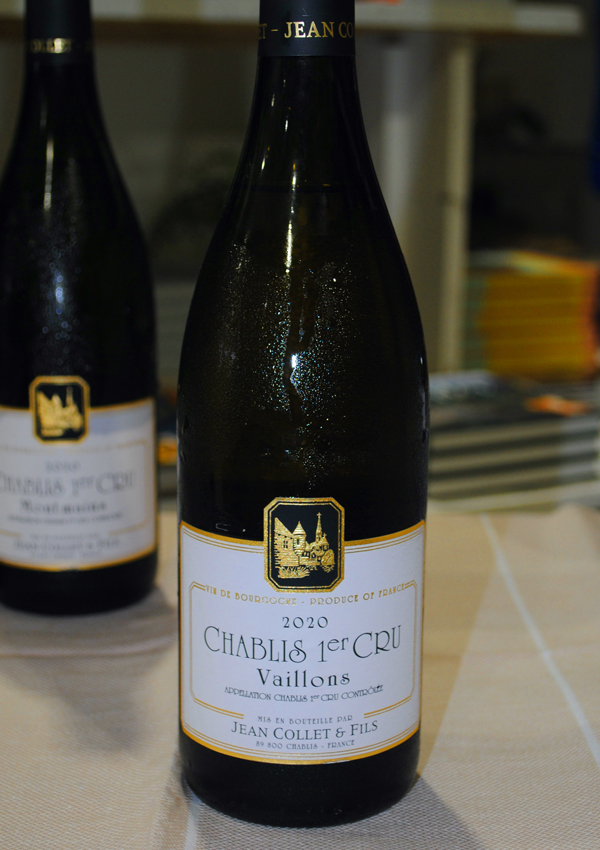
2020 Domaine Jean Collet, Chablis Premier Cru, Vaillons, White Burgundy, France.
The Collet family, as noted here at Grapelive.com, is a long time Chablis family and have some great sites, that were accumulated over hundreds of years, to work with and that pedigree shows in the latest set of wines, witch I was thrilled to try recently and in particular this very expressive and full flavored Vaillons Premier Cru that makes for an excellent way to celebrate Bastille Day! Romain Collet, who is growing into a real star, has converted the family’s historic plots to all organic and is crafting sublime terroir driven wines that perfectly transmits their mostly Kimmerigian marls (Les Marne) or limestone and clay soils, and capturing the depth and richness of the 2020 vintage here in his Vaillons. This impressive lightly golden Chablis shows off a dense palate of steely mineral and oyster shell intensity in the glass with apple, pear, lemony citrus and golden fig fruits on its medium body, along with a creamy rounded texture, clove spice, flinty notes, white flowers and a refreshing cut of natural acidity. It’s said that Vaillons and its many lieux-dits, which are in the prime fan shell of Chablis, is a bit higher up and near the forest that caps the hill and get good ripe sun and chilly nights that provide the balancing influences here, making Vaillons a place that can sometimes rivals the Grand Crus, with this vintage proving that. The dry-farmed Vaillon plot of the Collet family was planted in 1972 and was certified organic in 2008, adding to the concentration and deep complexity found here.
The Domaine Jean Collet, also as noted in prior reviews, started Domaine Collet in 1954 and led the family business, which dates back to about 1792, before turning over to his son Gilles, who turn handed it over to current vigneron and winemaker Romain, a star in the region and has raised the game at this once little known estate. Romain changed just about everything here, he brought completely fresh ideas to this historic winery including conversion to organic and biodynamic farming and all natural fermentation(s). There has been a huge jump in quality and expression here since 2008, when Gilles let Romain loose in the vines and the cellar and these 2020s and 2021s are some of the best yet that I’ve had. Collet has some quality parcels, Valmur and Les Clos Grand Crus being the big stars obviously, but their selection of the 1er Crus, Montée de Tonnerre, Vaillons, Montmains, Butteaux and Forêts are all fabulous and Romain treats each one with its own special care and winemaking techniques. Romain fermented his Vaillon with indigenous yeasts in 95% in stainless steel and 5% in wood, all temperature controlled throughout its fermentation period in the steel vats, but, as the winery notes, not in the small lot of wood. Full malo-lactic fermentation is completed and the wine matured for 14 months in a combination of vessels, including 1/3 in 228-liter used French oak barrels, 1/3 in large old foudres and 1/3 in the stainless steel tanks. All of which has made for a gorgeous Chardonnay that highlights Romain’s talents, sense place and vintage quality, I highly recommend these Collet offerings.
($48 Est.) 94 Points, grapelive
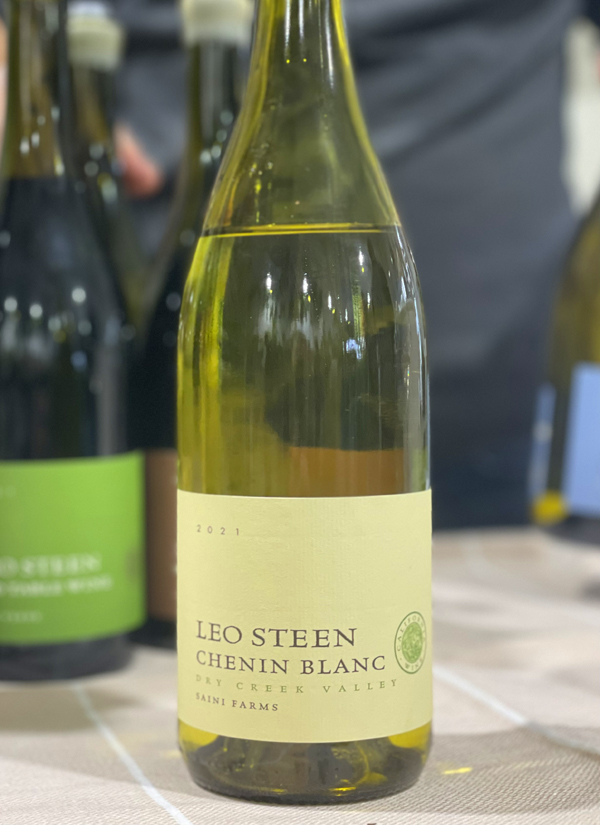
2021 Leo Steen, Chenin Blanc, Saini Farms Vineyard, Dry Creek Valley, Sonoma County.
These Leo Steen Chenins, by winemaker Leo Hansen, are some of the most pleasing California whites I’ve had this year, with this Dry Creek Valley version joining Hansen’s awesome Jurassic Vineyard Chenin in having a beautiful texture, oyster shell chalkiness and bright fruits, and as I mentioned in prior reviews, rivaling classic Loire versions of this grape. Leo Hansen, the Danish born ex Copenhagen sommelier, has crafted a stunning set of wines, with his latest releases, with this one being one of his signature offerings, it delivers fresh, crisply dry and vibrant detail and has a classic presentation of white peach, pear, lemon and firm green apple fruits, along with a crystalline purity, mineral tones, delicate white blossoms, tangy herbs, muskmelon fresh, almond and unsweetened honey. Not as vinous or complex as the Jurassic, this wine, ultra pale greenish gold in the glass, is clearly its own wine, with textural quality coming through with air and is very distinctive in its own way, slightly dusty, saline rich and more electric on the brilliantly judged lighter framed palate, making it a lovely Summer sipper and sublime with shell fish and sea foods. The Saini Farms vineyard in Sonoma’s Dry Creek Valley AVA has some of the oldest Chenin Blanc vines in the region with 41 year-old vines planted on, as Leo Hansen notes, Yolo sandy loam soils which was an ancient river bed, these dry-farmed vines see warm days and cool nights, making for ripe and balanced fruit. I am becoming a huge fan of these wonderfully crafted wines from Hansen, the Dane ex-pat, especially these Chenin Blanc offerings, but for sure his other single varietal and single vineyard wines are just as good and thrilling with his Cabernet Franc and Grenache reds also being stand outs in his collection of small lot goodies, all of which I highly recommend.
As I’ve reported, Chenin Blanc’s renaissance is in good hands these days with many fine examples been made from in California, including Justin Willett’s Lieu-Dit, Tegan Passalacqua’s Sandlands, Casa Nuestra in Napa Valley, Jaimee Motely, Raj Parr, Chappellet, Chalone, Ian Brand, who just released his old Durney (Massa Estate) old vine version as well as these Leo Steen bottlings. Hansen is very focused on this grape, historically connected to Vouvray, Saumur and Montlouis, as well as being in South Africa, does a full range of dry versions. Leo also does a sweet one and even a fortified Chenin made in the Angelica (California’s first commercial wine made originally from the Mission grape) style with a slightly oxidized element, which Hansen says has a Sherry like quality. Leo, who has a well rounded background, having done stints in Alsace, Loire, Champagne and Burgundy to Spain and Italy moved to California in 1999 to, as he notes, immerse himself in winemaking, finally landing at Alexander Valley’s Stuhlmuller Vineyards, where he became the winemaker. At that time, in 2004, Leo also started his own label, Leo Steen Wines, which allowed him to make wines more to his personal tastes, leaning on his old world palate. To achieve his goals, he uses a variety of fermentation methods and a combination of aging vessels in his wines to showcase each vineyard and terroir with transparency in his wines, with Hansen saying for this wine, the grapes, gently crushed, underwent 2 to 3 hours of skin contact prior to pressing. The wine was then fermented in stainless steel using indigenous yeast for approximately one month until complete dryness before the Saini Chenin was racked mainly to neutral French oak, with about 10% going to concrete egg. This wine, which came in at 13% natural alcohol, was lees aged for about 6 months and then bottled quickly to preserve its vibrancy, which was just apart perfect to capture the best qualities of this grape and place.
($22 Est.) 93 Points, grapelive
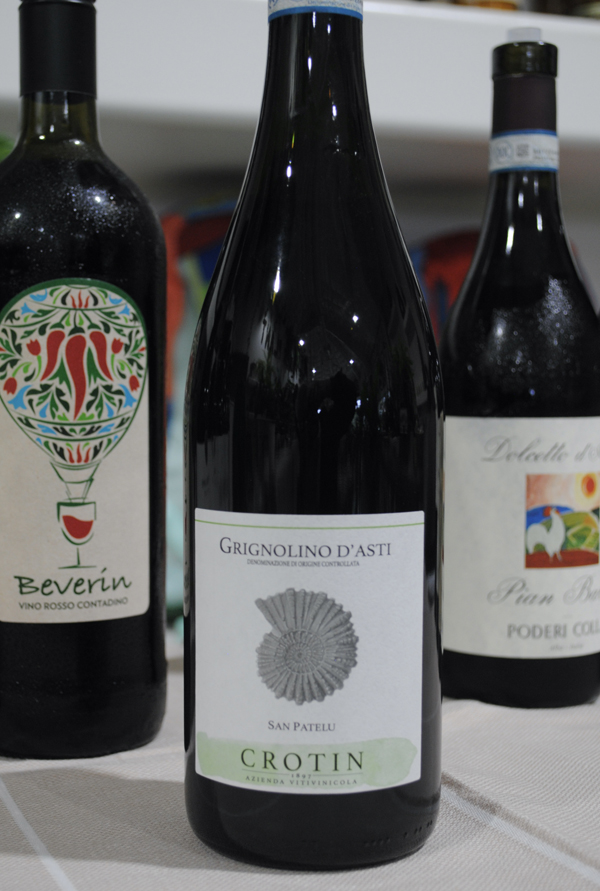
2021 Crotin, Grignolino d’Asti DOC, Piedmonte, Italy.
The easy to love and quaffable Crotin, which translates to a small cellar, Grignolino d’Asti is a delightful lighter framed, strawberry ruby hued, delicately floral Piedmonte red wine with a bright medium bodied palate of tart cherry, strawberry, red peach and blood orange, and is even better with a slight chill and simple food choices. This 100% Grignolino wine is juicy, but crisply dry and vibrant, allowing its refreshing nature to shine through, it is a perfect example of this varietal and a wine that can easily be enjoyed in the heat of Summer and a nice value too. I’ve not had many of the Crotin wines over the years, but what I’ve tried recently has convinced me that I should follow this small family winery more closely and explore the full range of wines here, and I highly recommend their Vino Rosso Contadino “Beverin” table wine and this vividly fresh and delicious Grignolino. Grown from all organic grapes and seeing mainly tank fermentation and aging, this absolutely pure Grignolino is one of the finest versions of this grape I’ve had, adding snappy herbs, spice, wild fennel and subtle earthiness with time in the glass.
The Russo’s, Federico, Marcello and Corrado, have an intriguing collection of vineyards for their Crotin winery that are in the far western communes of Asti, Maretto and Monale, where you can find lively red grapes like this Grignolino, Ruché and Freisa, as well as Barbera. The importers of Crotin, The Source Imports says, because of their proximity to the Alps, these sub regions are contenders for the coldest in the Asti commune, which makes for very balanced efforts and good natural acidity. The vineyard soils, they add, have varying levels of clay, limestone and sand, similar to the best found in the Langhe, with the Grignolino set on red, iron-rich clay, giving an extra degree of mineral tones and a deeper concentration that you normally find in this unique varietal. The Crotin brothers, named above, have the talents of young enologist, Cristiano Garella, making the lineup here and the wines continue to improve and impress for the quality and authentic nature of the offerings here. Not as perfumed as Ruché, or Freisa, nor as dense as Barbera, this Grignolino fits a niche for the Crotin offerings and will provide lots of simple pleasures over the next year or so, it is a good bottle to chase down.
($22 Est.) 90 Points, grapelive
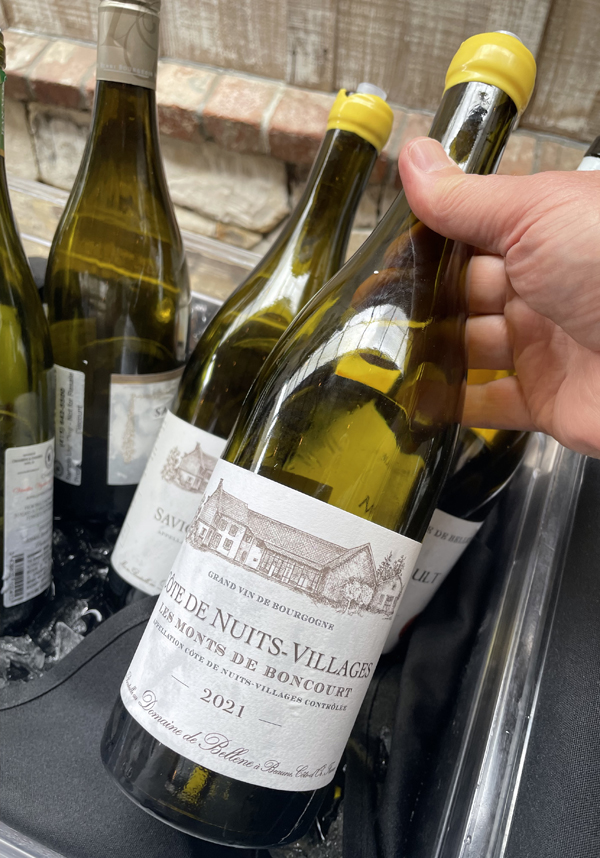
2021 Domaine de Bellene, Côte de Nuits-Villages Blanc “Les Monts de Boncourt” White Burgundy, France.
The Domaine de Bellene’s pretty and vibrant 2021 Les Monts de Boncourt white comes from the Côte de Nuits and gentle sloping mainly east facing hillsides set on silted Alluvial clay with limestone (marl) underneath with high density (vine) 1998 plantings of Chardonnay, making for a nuanced, mineral toned and complex light gold wine that impresses in the glass. The steely, but viscous medium bodied palate is racy and youthful at this stage, highlighting the best qualities of this vintage which is less dense and hedonistic than 2020 was, but no less exciting with a burst of lemony citrus, tangy peach, green apple and pear fruit(s), along with a touch of hazelnut, clove spice, bead dough, a touch of white flowers and a saline rich stony element. These’s a good cut of natural acidity here that easily balances out the textural presence in this lovely white Burgundy that was a pleasant surprise in a recent tasting of some of the latest releases from Nicolas Potel at Domaine de Bellene, impressing me a lot, as I’ve normally focused on the red wines at this label. This no new wood aged Chardonnay from Domaine de Bellene, who are best known for their red Burgundy, will be delightful and an eager companion with many types of dishes and flavors, including roast chicken, soft creamy farm cheeses and even fresh oysters, as well as other shell fish and sea foods.
Nicolas Potel’s newish Burgundy Domaine, the Domaine de Bellene, was born in 2005, after he sold his negociant self named operation, when some of the growers Nicolas Potel had been working with decided to stop their own production and proposed that he take over their vineyards, for de Bellene, which he did. Nicolas Potel who had made a name for himself during the late 1990s, like Vincent Girardin, took this as the perfect chance and way to realize his dream to a true vigneron, to create his own Burgundy that would full fill his vision, making wines, as he puts it, with the highest level of authenticity and quality. The Domaine de Bellene is based in cellars located in the old part, dating back to the 1600s, of the city center of Beaune, a Unesco world heritage site, and the capital of Burgundy, where it has good access to the vineyards of both the Côte de Beaune and the Côte de Nuits. For this Les Monts de Boncourt, Potel chose the ferment and age it solely in used large 600L casks, he employed an old slow screw press, taking as long as eight hours to finish the pressing of the juice before filling the Chardonnay to barrel where it stayed for about 12 months. After aging the de Bellene Côte de Nuits-Villages Blanc was blend into vats where it settled a further 6 months before bottling. The Les Monts de Boncourt is kind of a sleeper in the collection here and its transparent style is very much appreciated and I recommend it for white Burgundy fans that love a ore restrained and subtle style, it should prove rewarding for the next 3 to 5 years.
($65 Est.) 92 Points, grapelive
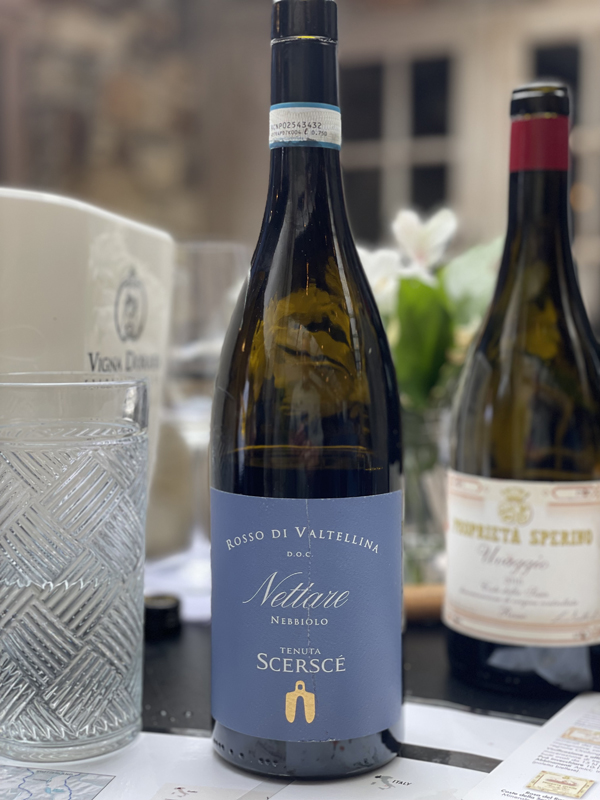
2021 Tenuta Scerscé, Chiavenasca (Nebbiolo) “Nettare” Rosso di Valtellina DOC, Lombardy, Italy.
The new vintage of Tenuta Scerscé’s “Nettare” Rosso di Valtellina DOC is brightly fresh and slightly lighter in form to their 2018 version that I first tried last year, but still is a delicious, easy to love red fruited, medium bodied and spicy Nebbiolo, or Chiavenasca as it is called locally, that I enjoyed very much recently. This juicy ruby/brick hued “Nettare” Rosso di Valtellina shows off pretty rose petals, mineral, brambly raspberry, strawberry, macerated cherry and tree picked tangy plum, along with baking spice, anise, grilled orange and delicate savory/earthy tones with a silky viscosity and soft tannin structure. Again, not as deep or with the concentration that the 2018 had, it still makes for a rewarding wine and it is wonderful and flexible with a good range of cuisine choices, this 2021 can be slightly chilled and used for picnics or outdoor dinning in warm Summer days. Made from 100% Chiavennasca (Nebbiolo), this wine is fermented and aged in stainless steel and cement tanks, with a short maceration and maturing period to promote clarity, it is a wine to be enjoyed young and is a great gateway example to introduce you to Lombardy’s Valtellina region. Valtellina, the northernmost sub-zone in the Lombardy region is home to steep terraced vineyards that are set against the backdrop of what they call the Rhaetian Alps, at altitudes of up to 700 meters above sea level, making it one of the most distinctive terroirs in all of Italy. These vines see a lot of sun, but also get very chilly nights, which all combines to give the Nebbiolo based wines here depth, complexity and balance, are they are uniquely different from their cousins in Piedmonte, there is also a version that sees an Amarone style winemaking method with the grapes getting dried on straw mats and extended barrel aging.
Tenuta Scerscé was founded by Cristina Scarpellini, a lawyer, who turned her dream of owning and running a Valtellina winery into reality when she agreed to rent an acre of vineyards from a viticolore client she had in this remote alpine area back in 2008. As noted before, at that time, according to her importer Dalla Terra, Cristina was an international business lawyer and the one acre of vines was only a hobby endeavor, but It didn’t take long for Cristina to understand the potential of this project and she transitioned out of her law practice and moved to Valtellina to make this adventure her full-time job. Tenuta Scerscé today with winemaker Attilio Pagli is producing a full range of offerings, including a Valtellina Superiore DOCG, Sforzato di Valtellina DOCG and this “Nettare” Rosso di Valtellina DOC, which is an exciting wine and a great value. As noted in my prior reviews, Valtellina, in Italy’s Lombardy region, is set on glacial formed sandy granitic soils with clay, loam and gravel, and located near the Swiss border where the Alps rise to staggering heights with tiny mountain villages, is Italy’s only valley to run east to west and was carved by the glaciers that moved down the granite mountain slopes during the last ice age to the valley floor where the Adda river now runs east into Lago di Como and eventually into the Po river. Valtellina is an exceptional terroir, which is unarguably one of the most dramatic landscapes in Italy and home to some of the most extreme vineyards in the country if not the whole world. In 2018 UNESCO, the winery adds, declared Valtellina, with its of tiny vineyards perched upon impossibly steep slopes and built into ancient terraces called muretti, a World Heritage Site. Some of these terraces date back to the middle ages, it seriously looks more like the steep Mosel than you can imagine, this is a seriously old wine region, though very isolated and off the beaten path. I am fast becoming a big fan of this winery and recommend searching out the Scerscé wines.
($33 Est.) 91 Points, grapelive
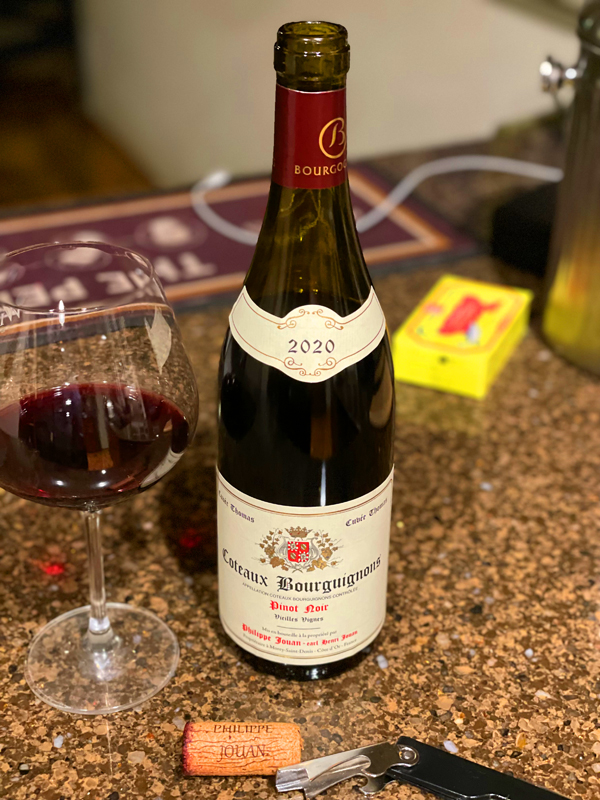
2020 Domaine Philippe Jouan, Coteaux Bourguignons “Cuvée Thomas” Pinot Noir, Vieilles Vignes, Red Burgundy, France.
As noted before, Philippe Jouan has really impressed me with his 2017s and I was excited to see what these 2020s were like, and I wasn’t disappointed, as this 2020 Coteaux Bourguignons “Cuvée Thomas” way over delivered, it is an excellent and richly flavored effort showing off the vintage’s lush and luxurious fruit density, dark fruit profile and exceptional length. The medium/full palate gives seamless layering of black cherry, plush red berry, plum, strawberry and fig fruits, along with baking spices, mineral tones, a hint of reduction (leathery) earthiness and very subtle wood accents. This is a winery, based in Morey-Saint-Denis and run by Phillipe Jouan, a fifth generation winemaker, to follow, and this aromatic, taut structured and textural Cuvée Thomas Pinot Noir is a fabulous, satiny and expressive Burgundy, which I’m glad I bought a few bottles of. I highly recommend chasing down Jouan’s wines, as they represent some true terroir driven and value priced Burgundy that are lovely and rewarding, especially good with food.
Philippe Jouan, who, as mentioned here in prior reviews, took over from his father Henri, has been in charge of this small high quality domaine since 2004 and has turned this some what under the radar winery into something of an enthusiasts cult label. The techniques in the cellar, from what I understand, are little changed since the domaine started, with Philippe using 100% de-stemmed (all sustainably grown) grapes, cool fermentation(s) and employing just a minimal amount of new wood across his range of wines. The Jouan wines are not as inexpensive as they once were, with prices now rising 10 to 20% with each of the last few vintages releases, but still are remarkable values for the price. Mainly it is the problem of having less wine available due to tighter yields in the region and that there is a much bigger demand for Jouan now. Jouan’s Passetoutgrain (Pinot Noir/Gamay) and especially this Coteaux Bourguignons (100% Pinot Noir), are my favorites for quality for the money. I fell in love with Jouan’s 2017s and these 2020s are a big step up in presence and concentration with incredible mouth feel, as this one certainly has, it opened up fantastically well, after that slightly truffled nose blew off and allowed a pretty floral dimension to come through, it was even better on day two, top notch stuff.
($45 ESt.) 93 Points, grapelive
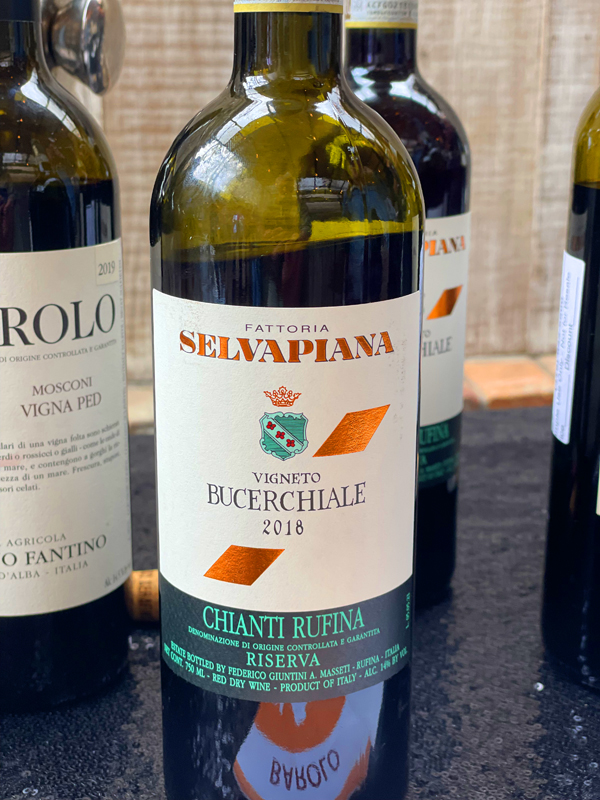
2018 Fattoria Selvapiana, Chianti Rufina Riserva DOCG “Vigneto Burcerchiale” Tuscany, Italy.
Notably livelier and more elegant, while not missed a beat or depth this dark garnet and ruby edged 2018 vintage of Bucerchiale Riserva from Selvapiana, an aromatic 100% Sangiovese, delivers everything the prior two outstanding releases did and in a stylish and graceful fashion with dark fruits, fresh acidity, subtle oak and interesting savory elements.The Chianti Rufina Riserva Vigneto Bucerchiale sees a spontaneous native yeast fermentation and a 30 day maceration period with manual punch-downs and pump-overs to extract color, flavor and its backbone of tannin. Once primary fermentation is finished in tank the Vigneto Bucerchiale is racked to barriques for close to 15 months, mostly used oak with just about 10% new wood used, which adds a subtle touch of sweet toast and gives this wine its sense of purity. Layers of blackberry, currant, plum and strawberry fruits lead the way with cigar wrapper, spicy cedar box, minty herb, coco powder, anise and dried rose petals all providing complex accents to this youthfully taut and nicely structured wine. Not as fruit dense as the 2017, but every bit as expressive and delicious this vinous Sangiovese is an excellent food wine, with richer dishes benefiting from this wine’s brilliance. I must say, Selvapiana is really on a roll these days and there is quality throughout the collection, even though I am pretty smitten with this Bucerchiale Chianti Rufina Riserva.
The highly regarded Fattoria Selvapiana, as mentioned in my prior review, is located in Chianti Rufina, in the foothills of the Apennines and close to Florence was among the first Tuscan producers to make the Riserva made only from 100% Sangiovese and to produce their flagship wine from a single vineyard, which is Selvapiana’s Vigneto Bucerchiale, which was debuted back in 1979 and continues to be a benchmark wine from this region, as this latest 2018 continues that run of form, that makes it so desirable for Sangiovese enthusiasts. Rufina, with its closeness to the mountains strongly influences the micro-climate here, has cooler summers and a big change in temperature between day and night, that climate and terror all makes these wines at Selvapiana elegantly balanced, concentrated and age worthy. Certainly, one of the wines of the region, Fattoria Selvapiana, has recently impressed me and it is a good time to try these wines, if you’ve not had them, especially this Chianti Rufina Riserva Vigneto Bucerchiale. I first discovered Selvapiana when I tried their amazing Vin Santo del Chianti Rufina, one of Tuscany’s most prized treats and wondrous with biscotti and or cheese plates, but now I am a huge fan of the reds here too. As mentioned before, Fattoria Selvapiana doesn’t make this bottling every year, so it only sees the best grapes, in the best vintages, and makes for a rewarding treat when it is available, I highly recommend chasing it down and make sure you get a few bottles, putting a few away would be a great idea, though after trying it, patience might be hard, though it should get even better and more rewarding with a few more years in bottle!
($39 Est.) 94 Points, grapelive
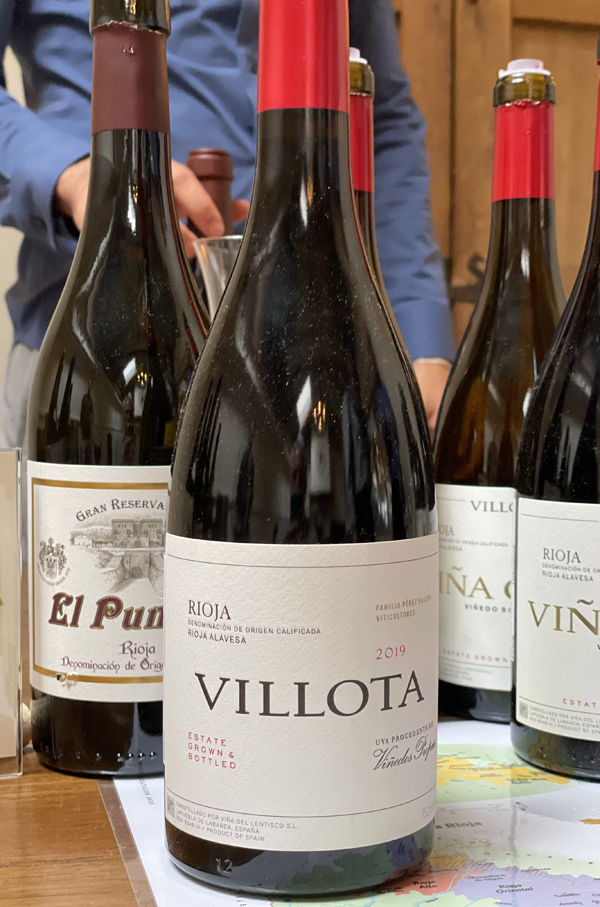
2019 Villota, Rioja Tinto, Rioja Alavesa, Spain.
The Villota wines, which I have tried for the first time recently, are beautifully balanced and shine with an elegant and slightly rustic charm, as this dark ruby/garnet 2019 Rioja Tinto shows in the glass with brambly dark berry, dusty plum and bright cherry fruits, that are backed up nicely with hints of spice, tobacco, anise, cedar and sultry earthy elements. This wine, mostly all pure Tempranillo, shows off the Rioja Alavesa, higher elevation cool climate character and energy, making for a wine of terroir personality and great with simple and hearty country cuisine, especially meaty dishes and or sheep hard cheeses. There is a fine sense of structure here in this 2019, but it is graceful and easy to love at this stage and it should continue to provide rewarding companionship and pleasure for many years to come, this is impressive stuff and a new label to explore. The Rioja Tinto, coming from, what the winery calls, traditional dry-farmed hand tended grapes, and old school bush vines (head trained), set on rocky limestone and clay soils, holistically grown without the use of systemic herbicides, fungicides, pesticides, or fertilizers. This vintage of Villota has attracted a lot of attention and it might not be easy to find, but it is well worth taking time to look for, but I also tried their single vineyard Viña Gene 2018, which is also exceptional and a little more luxurious, though a bit pricier.
The Familia Peréz Villota Viticultores makes a 100% estate grown, Rioja Alavesa Tinto, with a wealth of history in the region. Villota was, as the winery notes, established four generations ago on their San Rafael Estate, near the famous Ebro River where it flows through the village of Laserna in Rioja Alavesa, mostly known as suppliers of grapes to Contino, which they co-founded decades ago. The current bodega was founded not long ago in 2013, and they have set about making small production wines that are more distinctly terroir driven and modernly transparent and less oak driven than the traditional Rioja of the big bodegas. Villota now has some of Rioja’s most historic, interesting and important vineyard sites to express in their unique collection of wines, which are mostly all old vine Tempranillo, but with a small percentage of Graciano and Garnacha, usually picked separately and fermented separately and blended in after primary fermentation, to add subtle complexity to these lovely authentic and elegant wines. The Rioja Tinto saw a cool maceration and native yeast fermentation in stainless steel with all the grapes being 100% de-stemmed, after which it was raised in small French barriques, with mainly neutral barrels, for 18 months and then aged a further 6 months in concrete vat before bottling, all of which gives this wine its nice vinous texture and clarity. I will look forward to following Villota as they continue to expand their lineup and I recommend this bottling as a great way to start getting to know this winery.
($37 Est.) 93 Points, grapelive
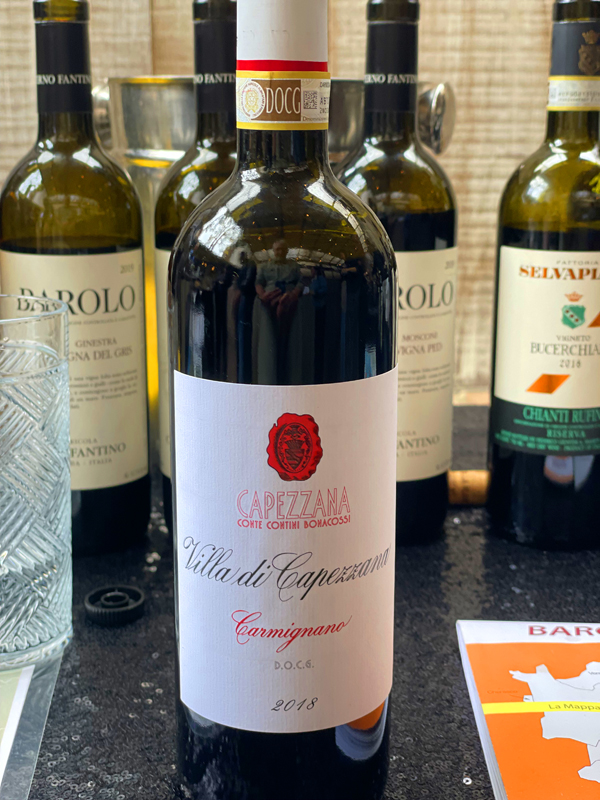
2018 Tenuta di Capezzana, Villa di Capezzana, Carmignano DOCG, Tuscany, Italy.
There’s a lot to admire here in Capezzana’s classic Villa di Capezzana Carmignano red wine, a blend of 80% Sangiovese and 20% Cabernet Sauvignon, it is a full bodied and powerful effort with a deep garnet hue in the glass and rich layers of blackberry, wild plum, red currant, black cherry and strawberry fruits, accented by cedar, tobacco, wilted roses, licorice, dusty spices and subtle earthiness. This vintage show a positive energy, with lively natural acidity and silky, almost feline tannin structure that feel velvety ripe, but provide underlying muscle that makes for a vinous and balanced wine that goes brilliantly with robust and meaty dishes. These Carmignano wines were some of the first wines in Tuscany to legally include Cabernet Sauvignon in the blend and while Chianti have turned away from the international varietals in the main Classico offerings, these wines proudly hail the addition here, and this wine marries the strength of Sangiovese and Cabernet to sublime effect. This wine, from 20 to 40 year old vines, made by Benedetta Contini Bonacossi, is a wine to look for, I’ve been a fan of this winery for a long time and highly recommend checking out this under the radar region of Tuscany.
The historic Contini Bonacossi family has cultivated and maintained vineyards and olive groves here for over five generations with their Tenuta di Capezzana estate, which is one of the best known properties, located just 12 miles to west of Florence in Carmignano. This Tuscan sub-zone, one of the oldest recognized wine producing areas in Tuscany, is uniquely situated in rolling hills with a sublime climate for deep and power red, Sangiovese based wines, which allow 20% Cabernet Sauvignon, and it was the first to include this Bordeaux grape in the region. The Carmignano wine region officially dates back at 1716, which the winery notes, when the famous Cosimo III de’ Medici granted the area special legal protections to recognize the quality the region possessed and Capezzana has Carmignano wines that date back to 1925 in the cellars, proving the longevity of their efforts and are a living history of the area. For this wine, the grapes are all organic, with vines set on clay, limestone, schist and marl hillside soils at an average elevation of 200 meters above sea level. Fermentation is with native yeasts in tank and the wine is aged12 months in a combination of French and Slavonian oak, in mixed sizes and with about 10% new, all to promote depth and transparency, as this wine shows. The Villa di Capezzana Carmignano DOCG 2018 is showing really well, it is a very fair value, and I bet it will get even more rewarding over the next 3 to 5 years.
($36 Est.) 93 Points, grapelive
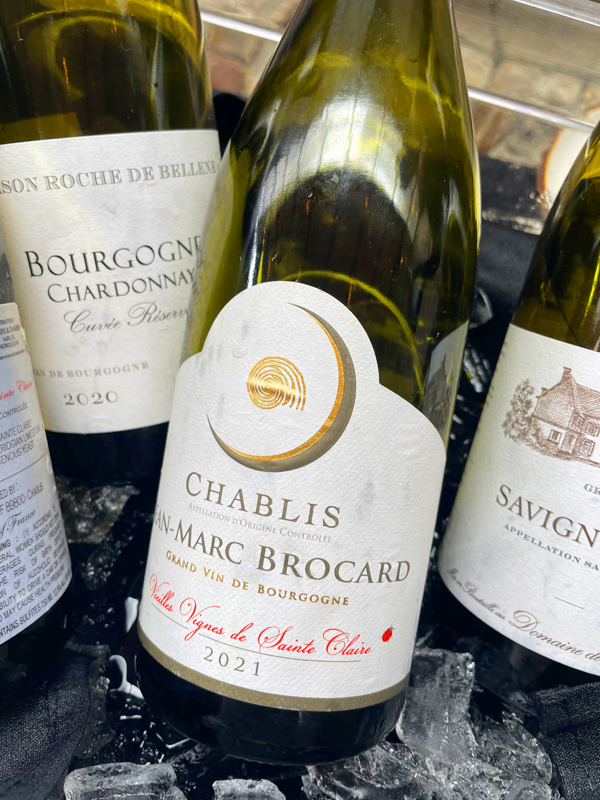
2021 Domaine Jean-Marc Brocard, Chablis “Les Vieilles Vignes de Saint Claire” White Burgundy, France.
The greenish pale gold colored 2021 Les Vieilles Vignes de Saint Claire Chablis by Brocard is bright and steely with quiet fruitiness, saline, oyster shell and light bodied, making it a lovely refreshing Summer wine that gains dimension and depth with air and time in the glass, rounding out and filling in textural pleasure with food especially. I hadn’t expected the total package to impress as much as this vintage does, after the hedonistic nature of 2020, which certainly over shadows these latest releases, but there is good thrills here and this wine for the money is a solid buy. The palate is zesty and energy packed with lime, green apple, tart peach and crisp pear fruits, accented by wet rock, clove spice, a touch of florals and finishes with lip smacking chalky notes. With warmth and a meal, there is a faint sense of creaminess and a touch of hazelnut, it is as pure as it gets and it’s terroir and Chablis identity never waiver for a second. Over the years I have been drawn to a select group of wines in the Brocard collection, with this one being one, along with their beautiful Montée de Tonnerre Premier Cru, plus the unique and rare Vat de Vey, this one typically way over delivers, along with the chiseled and powerful Valmur and Les Clos Grand Crus.
Domaine Jean Marc Brocard’s wines are filled with intensity and class, pure expressions of terroir and the house’s personality, which is humble and elegant. It was a great pleasure to meet the man and taste the wines back in 2013, and ten years later the wines still shine, his clear vision and the focus of the Chablis he crafts is near perfection and his wines are a great value for the quality on offer, especially with current pricing of Burgundy, and of Chablis. Brocard, which farms all organic since 1997, and now has converted to biodynamics in their own parcels, has some fabulous holdings in Petit Chablis, Chablis, Chablis Premier Cru and Chablis Grand Cru, with this Saint Claire plot being 100% biodynamic. This old vine vineyard was planted about 70 years ago and is set on the classic Kimmeridgian limestone soils, which gives this wine its intensity and concentration, and even in lighter vintages, the wines are expressive and offer quality a step above the norm, as this 2021 shows! Now with Jean-Marc’s son Julien in charge, who stepped in beside his father in 1997, the domaine has gone from strength to strength, employing more biodynamic practices and adding a extra degree of attention on transparency, which you can see and taste in the recent releases here. Most of the wines here are 100% stainless steel fermented and aged with no need of oak, except in a couple of the wines, but not here on the Les Vieilles Vignes de Saint Claire, which reveals in its clarity of form.
($39 Est.) 92 Points, grapelive
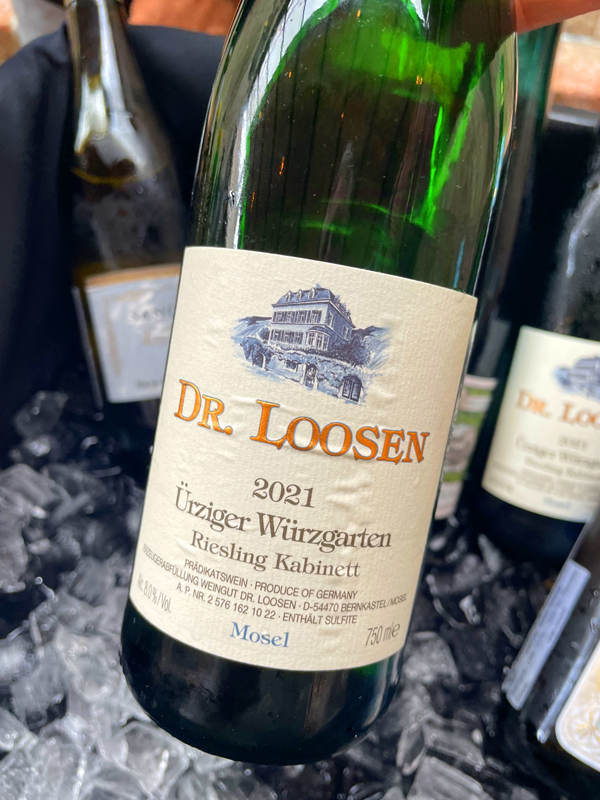
2021 Weingut Dr. Loosen, Riesling Kabinett, Ürziger Würzgarten, Mosel, Germany.
One of the world’s most iconic, traditional and terroir driven wines, the Dr. Loosen Ürziger Würzgarten dry drinking, spiced and fresh slightly off-dry Kabinett is always a pristine and easy to love Riesling, with this 2021 being a vintage to stock up on, it’s bright, mineral toned, has lovely fruit without weight or overt sweetness and lingering flinty spice. The palate, as per normal here, has crisp layers of ripe stone fruit, vivid citrus, green apple and pineapple along with hints of rose petal, mango, clove, lemon peel and Asian spices. There is a fine focus here and a tangy bitterness that nicely cuts into the presence of the subtle residual sugar, making for a refreshing Riesling to enjoy with any meal, this Kabinett is very flexible with food, though lovely with many Asian dishes. Dr. Loosen, one of the planet’s most widely recognized winery, has been in the same family for over 200 years and has a premier collection of vineyards, with mostly ungrafted old vines, that average around 50 years old, in some of the Mosel’s most coveted areas. This gives Ernst Loosen an awesome selection of grapes to work with, and it’s worth noting that Loosen always seems to produce stunningly intense, high quality and world-class wines, especially the collection of GGs, that not only show terroir, but also, these wines have a luxurious personality that appeal to a wide audience as well as to Riesling freaks, as I have noted before, like me. This pale and lightly smoky Dr. Loosen Ürziger Würzgarten Kabinett is a brilliant example of Mosel slate and iron rich soil influenced Riesling, it is a must have version, which I always grab for myself and recommend to new explorers and long time enthusiasts of German wines.
The majestic Ürziger Würzgarten Cru vineyard in the Mosel, as I have mentioned many times here, sits in a steep picturesque amphitheater formed by this dramatic bend in the river, forming a natural sun basket that helps ripen the Riesling grapes and gives these wines their signature profile, with some of Dr. Loosen’s oldest vines clinging to this famous hillside. This site is called the “Spice Garden” and is as Dr. Loosen notes, a blazing red outcropping, with a vain of iron rich volcanic soils over the classic weathered slate and Loosen’s parcel is an insanely steep sloping section with some of the winery’s old vines. Ürziger Würzgarten is one of the most iconic vineyards in the world, the red soils and slate underpinning give these Rieslings an exotic and spicy nature and Loosen’s bottlings offer a wide array of individual and distinct wines from this lively off dry Kabinett to their ultra rich and sweet Auslese, along with a stylish age worthy Spatlese and dry version’s including a GG, all of which highlight the prestigious terroir influence of this steep Mosel Grand Cru site. Employing old-fashioned cellar practices these wines deliver exceptional quality, as this Ürziger Würzgarten Kabinett shows. Loosen’s Ürziger Würzgarten Kabinett saw, as in most vintages, a cool fermentation in a combination of stainless steel tanks and traditional old Fuder oak casks with fermentation stopped by chilling to keep it going all the way dry, making it as noted, fruity and zippy with loads of natural acidity with grapes all being picked and sorted by hand to be sure no noble rot (Botrytis) had infected the healthy clusters to keep this one a more vibrant and fresh Riesling. I’ve really enjoyed the latest Loosen wines and this one offers loads of personality and charm, it is one I will enjoy greatly over the next few years.
($28 Est.) 92 Points, grapelive
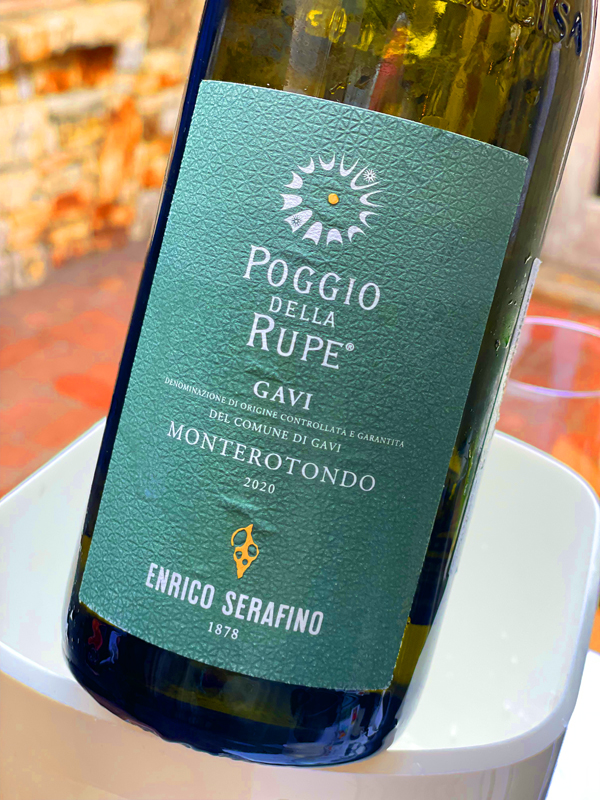
2020 Enrico Serafino – Poggio delle Rupe, Gavi DOCG, Monterotondo, Piedmonte, Italy.
The beautifully detailed crisp Gavi white from the Monterotondo zone, on unique white marls, one of the most recognized cru areas of the region, by the historic Enrico Serafino winery’s Poggio della Rupe tiny estate single vineyard, making for a distinctive and elegantly textured wine that drinks on the same level as a Premier Cru white Burgundy, but with pure Cortese character. Gavi, 100% Cortese, has seen a huge surge in popularity and quality in recent years, once a mere curiosity these wines now deliver depth, complexity and style not seen more before, except in rare exceptions, with some wines providing inspiration to raise the game here. The Enrico Serafino winery does two versions of Gavi, the Grifo del Quartaro DOCG and this Poggio delle Rupe, which I just had recently, and was very impressed with its bright citrus intensity, mineral tones, expanding viscosity, zesty acidity and bitter almond note all of which provides tension and balance. The medium bodied palate is pristinely clear with tart peach, lemon/lime, quince and green apple fruits, accented perfectly with chalky and saline rich stony elements, leesy like nuttiness and mouth feel and a with light herbal and floral notes.
The Enrico Serafino winery, famous for their Barolo, was originally founded back in 1878 in the peaceful hamlet of Canale d’Alba, one of the main towns in the Roero region of Piemonte, not far from Alba and on continuous marls and sandy soils that make for great and powerful Nebbiolo wines. The estate is not a one trick pony, as this fresh and distinctive white from the Gave zone proves, but also Enrico Serafino has been leaders in the production of Metodo Classico sparkling wines, which in no small way contributed to the formation and recognition of the Alta Langa DOCG, for these high quality bubblies. Since the Krause family, who purchased the winery in 2015, took over things have really turned around and the quality has risen to levels not seen seen here and the vines have realized their potential with the extra care and passion that has been put into this estate, which had fallen into disarray. You can see the progress, with the direction of President Nico Conta and Winemaker Paolo Giacosa really making an impact as they introduce innovation, renovation with sustainable farming methods and modern technology to the vineyards and the cellars. The Gavi offerings here are transparent and refreshing wines, with this Poggio delle Rupe, made with its terroir and special micro-climate in mind with stainless steel fermentation and aging with a short lees contact and a quick bottling to preserve vitality, it is a wine that loves fresh sea food cuisine and or soft farm cheeses.
($42 Est.) 91 Points, grapelive
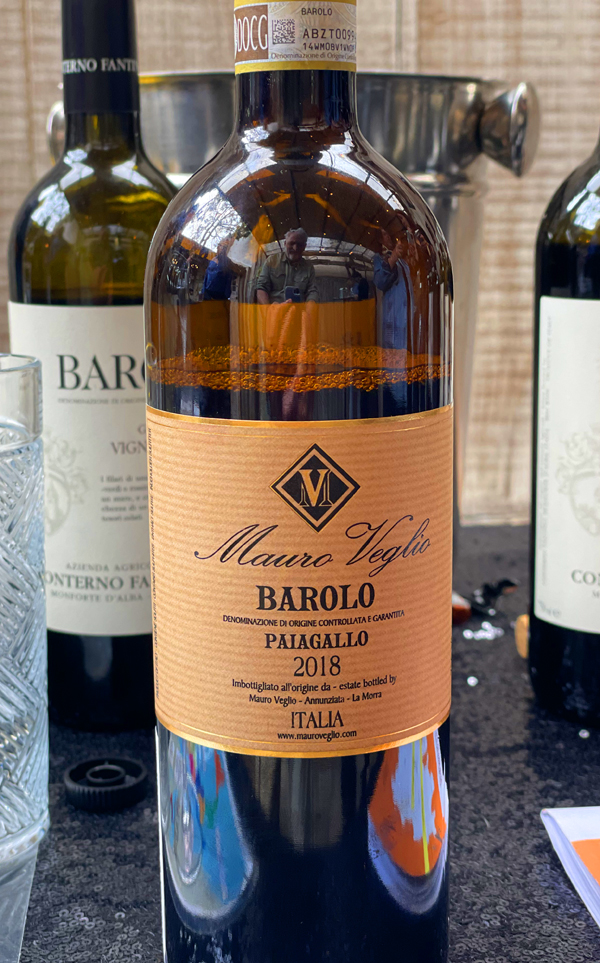
2018 Mauro Veglio, Barolo “Paiagallo” DOCG, Piedmonte, Italy.
So far everything I’ve tasted from Mauro Veglio has impressed me, especially this new set of releases and in particular this gorgeous 2018 Paiagallo Barolo with its inviting dark garnet/ruby color, its vinous, almost luxurious textural quality and pure Nebbiolo character all folding together in seamless elegance, much the same way you’d expect from a top Burgundy! I discovered fhe Mauro Veglio wines only in the 2017 vintage, they offer a studied series of Barolo wines, from many highly regarded Cru sites, as well as a terrific normal Barolo bottling from the younger vines that is an exceptional value, along with a very nice set of Barbera and Dolcetto wines. This Paiagallo is already drinking excellently with an underlying sense of power, youthful freshness, fruit concentration and well hidden tannin that forms a good backbone for this well put together Barolo. The full bodied palate reveals brandied cherry, damson plum, red currant, bramble berry and grilled orange fruits, all accented by a floral and spicy lavender and rose petal porporri, minty herb, tarry licorice, a touch of earth and cedar note. After reving up with air you get the full sense of this wine’s depth and its grip, which comes through on the long finish, begging for some meaty cuisine choices, this Paiagallo, with a ripe 14.5 % natural alcohol, looks to have real potential, even though I doubt I would have patience to let it have more than 4 or 5 years in the cellar, such is the immediate joy it delivers. I very much enjoyed this 2018, and I am hearing that the upcoming 2019 is even more exciting, so this is a label to keep an eye on.
The Barolo offerings here at Veglio, a traditional winery with a long family history going back generations in the Piedmonte region, typically get a maceration on the skins in stainless steel tanks for between 10-15 days, before the grapes are pressed with fermentation in stainless tanks as well, lasting about 20 days, with its malolactic fermentation also taking place in the tanks with cool controlled temperatures to preserve aromatics and fresh details. After fermentation the Barolo(s) are aged in a combination of oak casks with a small percentage of new barrels being employed to add a luxurious taste, with a touch of toast and vanilla. Additionally this enhances the texture to the wines, and allows for earlier drinking pleasure, as this Paiagallo cru Barolo shows. That said though, Veglio’s Paiagallo is all from a single 30hl Botte grande (used big oak cask), aged 24 months and then rested back in stainless steel vat for another lengthy period, after which it was then bottled unfined and unfiltered, to capture the true natural personality of the site. The tannins, here, like the 2017s I tried, are very supple, but still provide just about the right amount of solidity to let you this is in fact a true Barolo and while compliant in nature, as I mentioned in my prior reviews, there is a seriousness to this wine’s purpose, all of which I admire. The Paiagallo cru was added to the Mauro Veglio collection in 2016, when Alessandro Veglio took over the winery and brought this inheritance parcel with him. This unique and small set of vines is located, the winery notes, in the Eastern slopes of the township of Barolo and set on classic marls (clay and limestone) and sandy soils, it has proven itself capable of producing an outstanding wine and I highly recommend it for Nebbiolo enthusiasts.
($100 Est.) 95 Points, grapelive
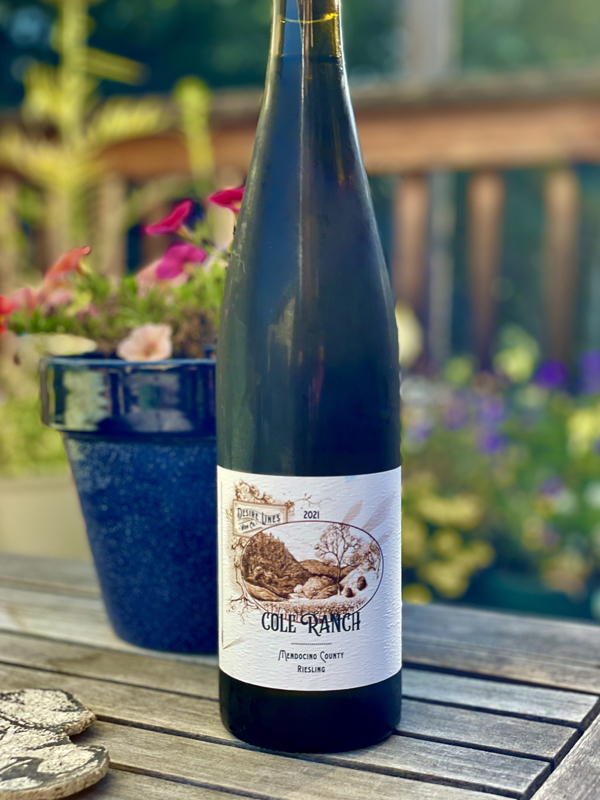
2021 Desire Lines Wine Co, Dry Riesling, Cole Ranch Vineyard & AVA, Mendocino County.
One of the most iconic single vineyard alternative white wines in California, the Cole Ranch Dry Riesling by Cody Rasmussen at Desire Lines Wine Co is an exceptional bottle of varietal wine with an amazing contrast between acidity and fruit concentration, on par with many top German (GGs) and Alsatian versions of this grape, showing preserved lemon, green apple, quince and tart muskmelon fruits that are accented by chamomile, white flowers, zesty herbs, wet stones, verbena and citrus oil. Brisk and saline, once open you get an impactful textural presence on the medium bodied and racy/intense palate, making for a thrill to the senses and a wine that has remarkable class and poise for the money. The Cole Ranch Vineyard, located in a remote area of Mendocino County, is in a narrow valley, as Rasmussen notes, in the mountains between Boonville and Ukiah, it is a rare monopole site being both a single-vineyard and an AVA. The incredible mature Riesling vines here, as Cody adds, were planted back in 1973 and are on St. George (American) rootstock, all old school head-trained and dry-farmed, which makes them some of the most interesting and historic Riesling vines in California. Cody and Emily Rasmussen started their own micro-winery and label, Desire Lines Wine Co. with a small batch of Syrah in 2014 and now has a wonderful collection of wines from which to chose, including his set of Rieslings, this one, along with the Wiley, Anderson Valley bottling and the Massa Estate old vine effort, and while he does mostly dry crisp versions, Cody has added a couple of very limited “Kabinett” off dry efforts to his lineup, which I hope to get a few of with this upcoming release.
Winemaker Cody Rasmussen, who is one of America’s top guns with Riesling, as well as with Syrah, says that the 2021 rendition of his Cole Ranch Dry Riesling practically crackles with energy, with tension and freshness that makes him recall his awesome 2018 vintage, which was similarly bracing in style. I too, agree and while I loved that 2018, this pale gold and shimmering wine really grabbed me and I think it might prove to be longer lived, though it really is in a great place now, especially with food and time in the glass. Like I mentioned it just gets better and more open with air, in a way very few domestic Rieslings can do, this is a wine that will even get old world fanatics turned on, don’t take my word for it, see what Riesling expert Stuart Piggot of James Suckling’s wine reviews says, and you see that the world has definitely taken notice of Rasmussen’s efforts. This wine, as always, transmits the combination of rocky soils, that includes some limestone, gravel and loam that are here at Cole Ranch with pristine clarity. The Cole Ranch AVA, as mentioned in my prior reviews, was originally established in 1983, but the vines date back to 1971 when former owner Joe Cole planted them, this area of vines, at about 60 acres, is the smallest AVA (appellation) in the United States. To make his Rieslings, Cody Rasmussen, also as noted before, uses traditional old world methods, with grapes seeing a whole cluster pressing with cold settling in tank, which bleeds out, or drops out the green phenolics, that, as Cody explains, is followed by fermentation in neutral barrels, where the wines are left on fine lees until bottling in the following summer, or about 9 months in total, which allows for a charming roundness, while focusing on absolute purity. There are very few wines out there that deliver the quality for the price like this one does, in fact all of these Desire Lines wines are ridiculous values, do not miss them, especially these 2021s!
($25 Est.) 96 Points, grapelive
Grapelive.com – June 2023
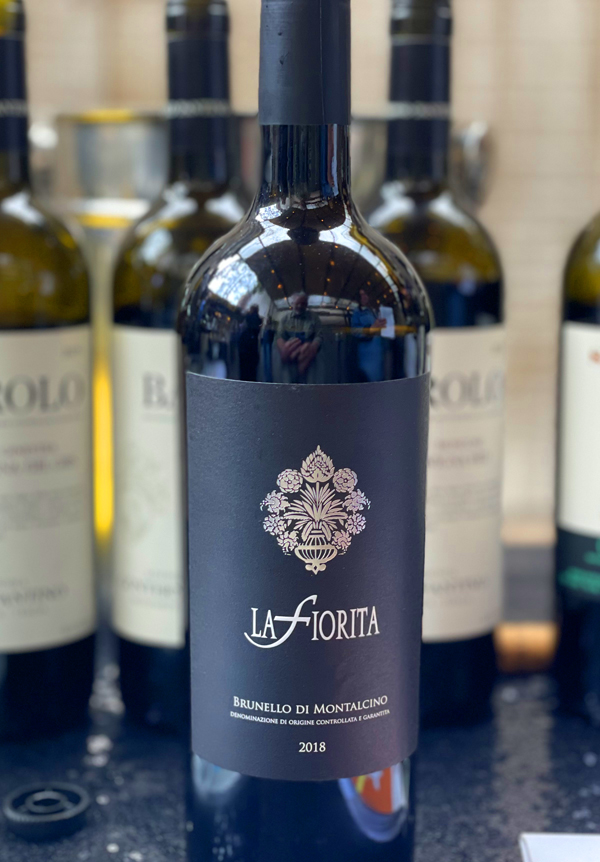
2018 La Fiorita, Brunello di Montalcino DOCG, Tuscany, Italy.
The deep garnet hued 2018 La Fiorita Brunello di Montalcino is beautifully floral, mineral toned and elegant in the glass, well portioned and vinous on the medium/full palate that displays classic Sangiovese flavors led by black cherry, plum, red currant, blood orange and raspberry fruits, sandalwood, pipe tobacco, bay leaf, anise, crushed flowers, roasted herbs and a touch of Mission fig. The seamless essence of this wine is faithful of the house style here with well integrated and satiny underlying tannins and a lengthy finish that is Brunello through and through, and for such a young wine, it really impresses and should fill out further still, an excellent pure pleasure effort from Natalie Oliveros and her exceptional team at La Fiorita. For this Brunello, the grapes are macerated for between 18 and 30 days for maximum color and flavor extraction with hand pilage and pump-overs, keeping the cap fully wet and with cool temps to capture all the deep fruit and perfume here. The American born Natalie Oliveros, is originally from northern New York, but with an Italian family, and her Calabrese “Nonna” or Grandma, according to Oliveros, made sure she knew her heritage and she was introduced to wine and winemaking at a young age, with her family making wine in her basement. After an interesting career in films, she now runs one of the best modern Brunello estates, making a beautiful collection of wines, with more grace than power, including her regular bottling of Brunello di Montalcino, that in years like this rival wines that sell for twice the price or more.
The La Fiorita Brunello is from three distinct vineyards, Collosorbo (South), Pian Bossolino (East) and Giardinello (West) that are set on the complex mineral rich soils here including calcarous-red and grey clay, clay loam-galestro, and sandy clay loams, all which, along with the warm climate and mix of exposures add to the whole, giving fruit intensity, stony/chalky character, balanced acidity and heightened aromatics. The normal Brunello here at La Fiorita is fermented with 100% de-stemmed and carefully sorted Sangiovese Grosso grapes with separate lot fermentation in Slavonian oak vats before being aged 3 years in a combination of traditional large French oak casks or “Botte” (26 and 37 HL), then typically matured an extra year, 2 months in concrete and 10 months in the bottle before being released, as per the DOCG requirements. La Fiorita is a relatively young winery and as the winery notes, in the early 2000s, parallel to her adult entertainment career, Natalie was introduced to Roberto Cipresso, a famous winemaking consultant and co-owner of La Fiorita, and they started to collaborate on a series of Italian wines, which she marketed and sold with some success. Now, Natalie is the main Owner of La Fiorita Brunello di Montalcino, and she has a top team around her, including Luigi Peroni, the Estate Manager, who has 20 years of experience here and Vincenzo Pirrone, a very talented young and upcoming winemaker that has really lived the fortunes here with a series of fabulous wines in recent years, including these 2018s! I highly recommend the La Fiorita Brunello bottlings, in particular this one and Oliveros’ Rosso di Montalcino, both, elegantly styled, offer big bang for the bucks.
($70 Est.) 95 Points, grapelive
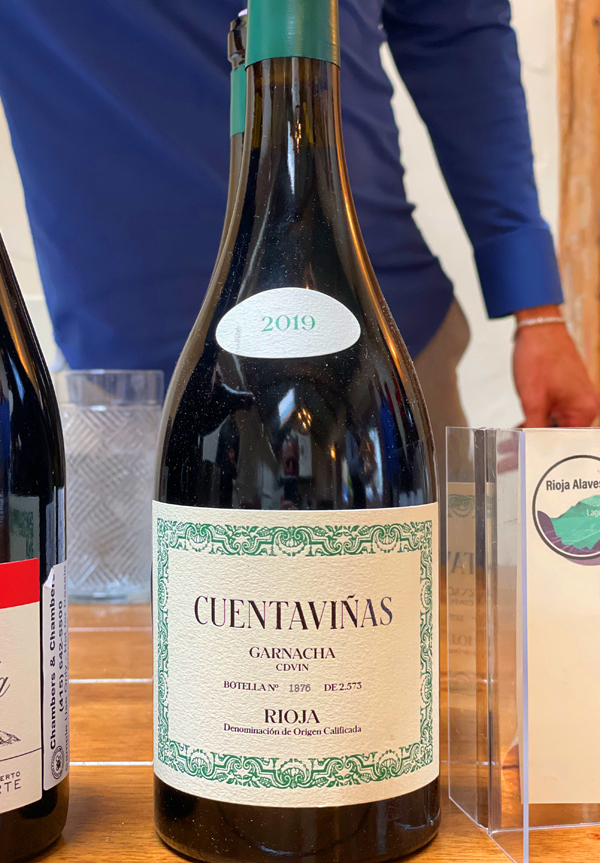
2019 Cuentaviñas, Garnacha “CDVIN” Rioja, Spain.
This beautiful and elegant 100% Garnacha shows pretty floral aromatics, mineral tones, delicate spices and an array of silky red fruits led by strawberry, black raspberry, dusty plum and cherry flavors that are unburdened by noticeable wood, making for a high quality effort that has surprising depth and complexity. The mouth feel is wonderfully vinous and ripe, but with a sense of weightlessness and the finish echos the medium bodied palate lingering on and on impressively. I had never had these unique, and pricy, Cuentaviñas offerings before, but I have heard of the Eguren family and have had their excellent Sierra Cantabria Rioja. Cuentaviñas is located near the town of San Vicente de la Sonsierra where owner Eduardo Eguren grew up, which was the inspiration for this high-end label. This dark garnet colored wine was sourced from their indigenous Garnacho (Grenache) vines from the upper Najerilla area, that has a cooler climate and clay-ferrous iron rich soils that have a reddish earthy hue. Interestingly, before these Cuentaviñas wines, the centenary Garnacha vineyards planted here had been undervalued, according to Eguren, and it was almost exclusively used for the production of Rosé, but now they are getting the love and attention they deserve, especially with this CDVIN Garnacha, with its dense core of fruit, along with its hints of rose petals, subtle savory notes and anise. These Cuentaviñas impressed me and in particular this vintage that delivers almost Burgundy like class and style, I highly recommend them for serious wine enthusiasts that want to engage with some alternative versions of Rioja.
Cuentaviñas, a name that means Storytelling of Wine in Spanish, is owned by Eduardo Eguren and his wife Carlota Gonzales, is small lot winery with wines crafted from three distinct terroir parcels planted to native varietals, mainly Tempranillo along with Graciano and Garnacha, as seen in this wine, located within the D.O. of Rioja. All the wines of Cuentaviñas are from organic grapes and holistic farming practices with small yields and heightened acidity to make these gorgeous and finely balanced wines. For these passion project wines, Eguren typically employs a spontaneous indigenous yeast fermentation in large 3,000L French oak vats, with very gentle extraction with daily pigeage. The wine’s maceration usually lasts around 20 days, after which the Garnacha gets a pressing in a vertical basket press. Then the Cuentaviñas wines are aged close to 18 months in neutral 500L French puncheons, that allows the true vineyard nuance to show through with a raw transparency. The Continental climate, in the higher elevations of Rioja, with strong its Atlantic influence and moderated by the Sierra Cantabria mountain range makes for a long growing season and perfectly ripe berries. These vines, for the Garnacha, were planted in 1923, are all old heead trained, dry farmed, goblet vines from the Tejares vineyard, in the upper Najerilla Valley, near the village of Cordovín, for which this wine CDVIN is named. Located in the foothills of the Sierra de la Demanda, with a northern exposure that helps keep things lively and freshens the finished wine’s profile in the glass as this one displays, making it a wonderful expression of place and a great food wine.
($79 Est.) 94 Points, grapelive
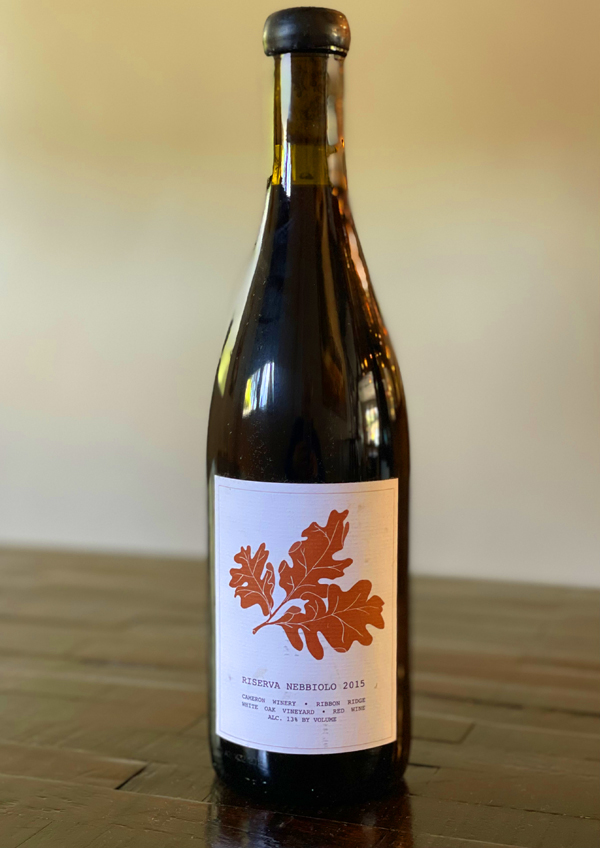
2015 Cameron Winery, Riserva Nebbiolo, White Oak Vineyard, Ribbon Ridge AVA, Willamette Valley, Oregon.
Eerily similar to its cousins in Barolo, this 2015 Riserva Nebbiolo shows off a powerful core of tarry red fruits, mineral tones, leather, licorice and cedary wood notes, blossoming in the glass with rustic charms and a garnet hue that has brickish red/orange edges and delicate florals on the nose, lingering on with reduced cherry, damson plum and lavender herbal notes. This wine makes a serious impression and its savory elements and drying tannins definitely make it impossible not to think of the old world and it is best to enjoy it with food. Cameron’s rare Willamette Valley Riserva Nebbiolo comes from this tiny White Oak Vineyard (less than 2 acres) in the Ribbon Ridge AVA that is lovingly farmed by famed cider apple grower Alan Foster, who does a small section of Nebbiolo and Pinot Noir that Cameron covets. Because the soil at this property is so reminiscent of Montforte in the Barolo, according to Carmeron, area of Piedmont, Italy, Alan planted Nebbiolo the here in 2006 and its has shown great promise and potential, so much so I would pay nearly a $100 for this incredibly rare and limited wine, when I can find it. Going on, winemaker and Oregon legend, John Paul, says that the fruit from Ribbon Ridge, in particular here at Foster’s White Oak Vineyard, is always intense with loads of structure, which I can confirm, having tasted many a wine from Cameron over the years and especially here in his Nebbiolo. The winemaking for the Nebbiolo is traditional with a gentle handling of the grapes, which are 100% de-stemmed and cold macerated with fermentations most often done in small bins and then aged in carefully selected and mainly used barriques with close to two years in wood and then two years rested in bottle before release, all to soften the blow of tannin and allow mature flavors to start developing, to capture the varietal’s gripping personality.
Famous for Burgundian Pinot Noir and Chardonnay, Carmeron is one of the top names to look for in Oregon wine, will their Dundee Hills bottlings being some of the most iconic wines of the last quarter of a century here in the state. John Paul, the Piedmonte and Italian wine lover and winemaker here at Cameron, says his Riserva Nebbiolo is a wine he produces only during the best years for Nebbiolo here in the Willamette Valley. The Csameron Riserva Nebbiolo, Paul conitues, emanates from the perfect site for growing Nebbiolo in Oregon, the marine sedimentary soil of the White Oak Vineyard, which unlike his Clos Electrique Vineyard is in Ribbon Ridge instead of the red hills of Dundee that has the Jory volcanic soils. John Paul explains, that in most years his Nebbiolos are reminiscent of Ghemme or Gattinara, in the Alto Piedmonte, but the 2015 is denser and more Barolo inspired, hence becoming a Riserva. Like the real deal, this Carmeron version, receives a minimum of four years total aging. The label represents the native to the Willamette Valley, Oregon White Oak, with an artist take of the leaves of this tree and captures the sense of this vineyard after which it is named. Cameron always strives to produce red and white wines of moderate alcohol content, with maybe the exception of the Nebbiolo, though this one came in at just 13%, even in a warmer vintage. The Cameroni (Italian inspired) white wines typically finish between 12.0 and 12.8% alcohol and the Pinot and Chards usually end up well under 14%, most years see just about 13%, as Cameron tries hard to find the perfect balance between ripe fruit and graceful acidity. You’ll notice the young wines show a touch of reductive funk, this does blow up, but decanting and time provides greater and greater rewards here, especially with the Dundee Pinots. Besides Nebbiolo, John Paul (Cameron) does an intriguing set of Italian inspired whites and two very different skin contact Pinot Gris (Grigio) offerings, all of which I highly recommend looking for and or get on the winery mailing list.
($100 Est.) 93 Points, grapelive
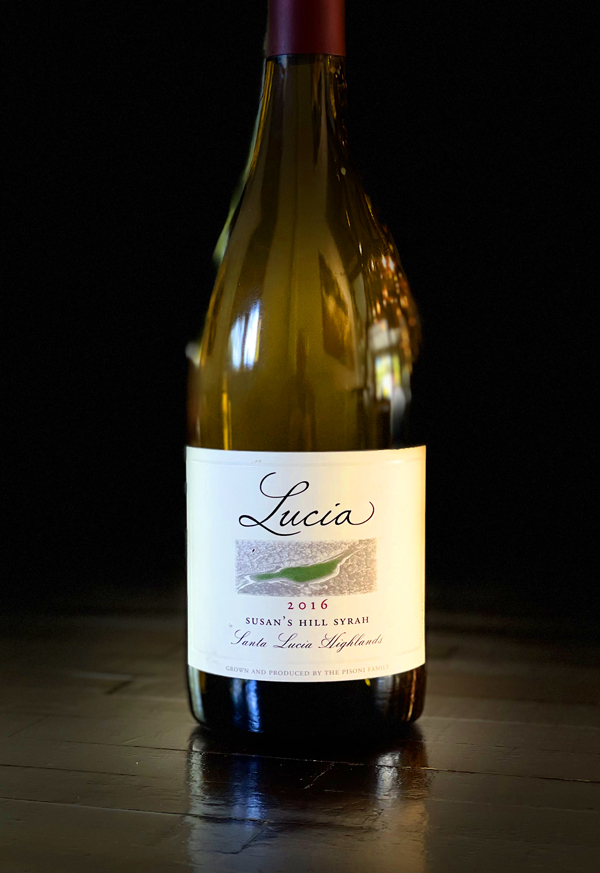
2016 Lucia Vineyards byPisoni, Syrah, Susan’s Hill, Pisoni Estate, Santa Lucia Highlands.
Aging beautifully, the Lucia Susan’s Hill Syrah, coming from the oldest vines at the Pisoni Estate, this wine is reaching its potential with deep flavors and layering that fooled me into thinking it was a top Cote-Rotie when I recently tasted it blind! This supple, vinous and dark purple/garnet 2016 shows classic Northern Rhone character and warm ripe California richness on the full bodied palate with nicely evolving boysenberry, damson plum, black currant and cherry fruits that are accented by crushed violets, espresso bean, burnt embers, grilled herbs, liquid mineral, subtle tapenade, earth, anise and well judged cedary/smoky wood. I honestly, first thought this was Giugal’s Chateau d’Ampuis or maybe a Rostaing La Landonne, so brilliant and complete this wine showed, I also found out it had been open for 24 hours, though didn’t lose any freshness of detail and highlighted the outstanding structural core here. The Pisoni’s have mature Estrella clone Syrah plantings at the Pisoni Vineyard, different from the selections at Soberanes and Garys’, but there’s no weakness in this version as grown here in this terroir and made by the hugely talented winemaker Jeff Pisoni, who along with his wife Bibiana (Cattleya Wines), really has a touch with this grape. The grip and savory elements are perfectly folded in and this wine is hitting its stride with an exceptional lengthy finish that echos the first impression of a fine Northern Rhone expression and lingers on with delicate creme de cassis.
Jeff Pisoni has a state-of-the-art winemaking facility in the Santa Rosa area and it exclusively uses gravity flow to move the wines, ensuring quality, with total control of the farming and winemaking process from start to finish. This wine, one of my absolute favorites, has lots more to offer and will evolve nicely for another three to five years with ease. As mentioned in prior reviews, Jeff Pisoni employs a very gentle regime with his wines, using carefully hand-picked and sorted grapes that are fermented with indigenous yeasts and with the Syrahs being aged in carefully selected French oak barrels, with typically about 30% new wood. Like I’ve said about other vintages and vineyards in the Highlands, these Syrahs, especially this wine, are pure class, and it certainly re-enforces my personal belief that Syrah here can be the equal or better than Pinot Noir in terms of quality, complexity and impact in the glass, as it loves the sandy decomposed granite soils and long growing season of the Santa Lucia Highlands. There’s so much to admire here, these modern SLH Syrahs are without question are some of Monterey’s absolute best wines, seductive from start to finish, as this one clearly demonstrates. Pisoni uses partial or 100% whole cluster depending on the year’s nuance, with more stems included when the vintage allows, with this 2016 seeing fabulous integration and there is less obvious inclusion in this lovely example. Thank you to my friend and wine professional Alex Lallos, of No Limits Fine Wines, for sneaking this wine to me from his personal collection, which includes a bunch of Pisoni’s most age worthy efforts.
($60+ Est.) 95 Points, grapelive
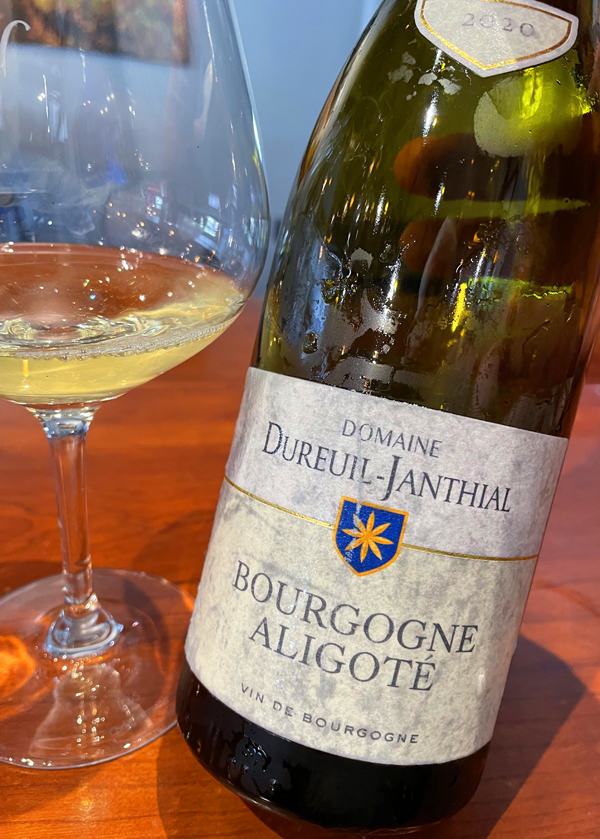
2020 Domaine Dureuil-Janthial, Bourgogne Aligoté, White Burgundy, France.
I’ve had a few wines by Vincent Dureuil, at Domaine Dureuil-Janthial, but not this fabulous Côte Chalonnaise Aligoté, which my friend and wine enthusiast Lee Lightfoot shared with me recently, and it was a wine that really elevates the varietal to new heights, showing a depth and class on par with wines that get far more money. I know this small winery mainly for it’s Rully Blanc, which is also a top value for white Burgundy, and its innovate holistic and organic farming in this particular region with Vincent taking a traditional and non manipulative approach to crafting his exceptional small lot offerings. The bright pale gold 2020 Bourgogne Aligoté starts with classic reductive matchstick, subtle aromatics, mineral tones and lemony citrus with a saline, stony and crisp medium bodied palate, showing hints of tart peach, green apple and more juicy citrus fruits, along with oyster shell, hazelnut and green herbs. This is lighter and racier than the Dureuil-Janthial Chardonnays, but in this vintage, this Aligoté is beautifully textured and absolutely brilliant and crystalline in the glass, out classing some Premier Cru Chablis that I’ve had recently! In prior vintages, I have also enjoyed Domaine Dureuil-Janthial’s regular Bourgogne Blanc and the Rully 1er Cru “Chapitre” that very much caught my attention, and for money I will definitely try to get more of this one.
The Dureuil-Janthial Bourgogne Aligoté comes from a tiny parcel, of organic vines that were planted in 1985, in the Rully appellation that is set on clay and limestones soils with a warm east facing exposure, all of which helps contribute to this wine’s concentration and depth, rising above the average Aligoté and makes for a savvy value, as this 2020 shows. Vincent who took over Dureuil-Janthial from his father Raymond in 1994, has passionately made it his mission to up the game in this part of the Côte Chalonnaise, which sits just about five miles south of Chassagne-Montrachet, especially Rully, which is a fine terroir, though lesser known, that delivers some of the best bargains in White Burgundy. For his Aligoté, like his other whites, gets a soft and slow whole-cluster pressing and racked straight into exclusively used barriques where it is fermented with indigenous yeasts. Unlike many producers, Vincent takes Aligoté seriously and it sees about 12 months on the lees in neutral barrel and then another 6 months in stainless steel tank before bottling, all of which brings out the best in this grape and makes for a thrilling example, which I highly recommend to any white Burgundy enthusiasts, and those looking for a quality alternative white wine. Beyond Aligoté, which is getting more attention these days, does a fantastic collection of Rully Blancs and Rouge, as well as a selection of Puligny-Montrachet bottlings and a Mercurey Rouge, all worth chasing down.
($28 Est.) 93 Points, grapelive
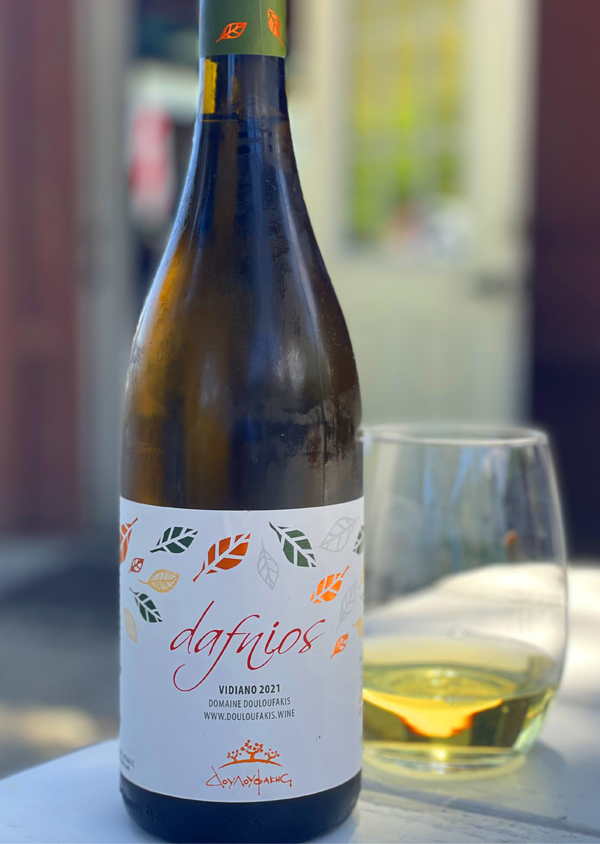
2021 Domaine Douloufakis “Dafnios” Vidiano, PGI Crete, Greece.
The light gold Domaine Douloufakis’ Dafnios 100% Vidiano white is dry and creamy with smooth acidity, with mineral and stone fruit leading the way on the medium bodied palate, making it an excellent alternative to the flood of generic Sauvignon Blancs and Pinot Grigios out there. Vidiano is a unique almost forgotten native grape to the Greek island of Crete, and its limestone based soils, that is making a big comeback and producing very pleasing wines in this new era of Greek wines. The fresh apple, peach, melon and lemony citrus all fold together gracefully and touches of white flowers, Spring herbs, wet stone, saline and verbena adds complexity here and this Douloufakis Dafnios Vidiano, grown inland in a remote valley, goes beautifully with a variety of simple foods, though especially well with Mediterranean and Middle Eastern dishes.
Vidiano, which I just discovered recently, is an ancient Cretan white grape, which was almost fading into extinction before being revived by a new generation of young winemakers and producers, including Nikolas “Nikos” Douloufakis, who brought back to Crete what he learned while working in the Alba region of Italy. Nikos’ winery is located in the town of Dafnes, where the vineyards are known to be one of Crete’s best-known appellations, but interesting it currently is only an official zone for the red wines that are made with the Liatiko grape, another native grape like Vidiano. For his Vidiano, Douloufakis goes for purity of form and is fermented and aged solely in stainless steel with a short lees contact and a quick bottling, which suits this ancient grape that is quite textural and graceful by nature, no wood is needed here. Greece’s new generation of winemakers and regions offer a huge range of quality efforts, in particular are the sublime wines made with indigenous varietals, which is very exciting to witness, and I suggest exploring them as soon as possible.
($17 Est.) 90 Points, grapelive
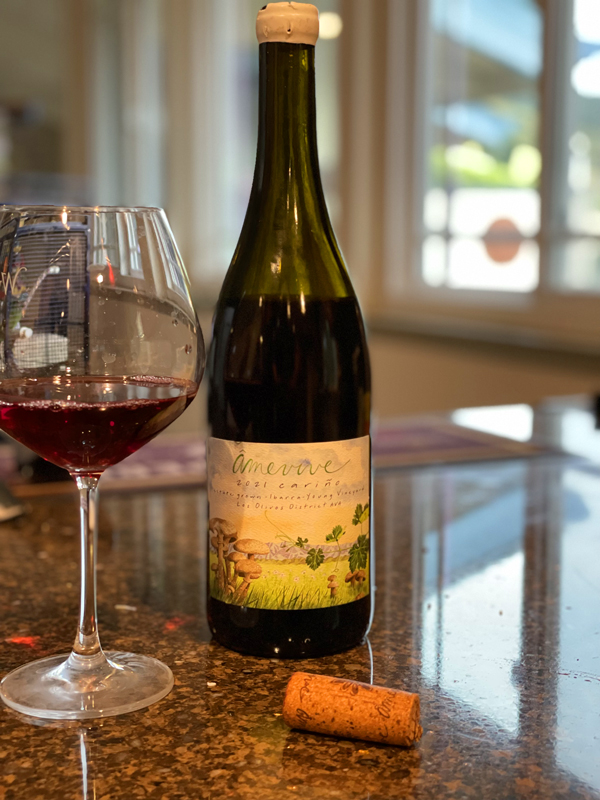
2021 Âmevive, Tempranillo/Graciano “Cariño” Iberra-Young Vineyard, Los Olivos District AVA, Santa Barbara County.
There’s a lot to admire and get excited about with these new Âmevive offerings, hand crafted by Alice Anderson, especially this Cariño Tinto, made from classic Rioja grapes, 77% Tempranillo and 23% Graciano that were co-fermented using indigenous yeasts and partial whole bunches and stems, making for a lively and spicy lighter framed red wine. This vivid ruby magenta hued 2021 version is highly aromatic with floral tones and showcases bright red fruits in the glass with layers of black cherry, tangy plum, raspberry and cranberry fruits leading the way on the silky, but energy filled palate, along with snappy herbs, anise, subtle wood notes, mineral tones and a peppery pop. The Iberra-Young Vineyard Vineyard was originally planted by Charlotte Young back in 1971 and is still owned by her three daughters and farmed by the youthful winemaker Alice Anderson, who employs regenerative organic and biodynamic practices. The vineyard was first planted to Syrah and Mourvèdre in 1971, then Young and Iberra added Marsanne in 1973, and later suitcase clones of Tempranillo and Graciano came in the late 90’s. Everything on the property is own-rooted, safely with the sandy soils, and has been farmed organically since 1993. The Âmevive name translates to soulful and or the living soul, as mentioned in my earlier reviews, and in winemaker Alice Anderson’s case it means to live soulfully with nature, with her wines, like this one, being an authentic and transparent extension of that. This Cariño was fabulous with a simple pizza and provided hours of fine sipping enjoyment, reminding me of some natural modern styled early drinking Riojas I’ve had recently.
Alice Anderson’s estate grown Tempranillo y Graciano Cariño red wine, coming from her organic Ibarra-Young Vineyard located in the Los Olivos District AVA, in the Santa Ynez Valley area of Santa Barbara County with its sandy loam soils and semi-cool climate that contributes to the ripe, but fresh flavor profile here. The Cariño is a co-ferment of the Pesquera clone Tempranillo and Graciano, which are from the late 90’s plantings at Ibarra-Young, that were added by Qupe’s Bob Lindquist. The Pesquera Tempranillo block at Ibarra-Young is an own-rooted suitcase clone originating from the famous Bodega Pesquera in the Ribera del Duero region of Spain. Alice started the Tempranillo fermentation using about 60% whole cluster, and jokes that she might be loony to do so, but it seriously works well in this wine, adding complexity and a spicy personality. After 10 days, after the Tempranillo harvest and maceration, Anderson picked a few rows of Graciano, that was de-stemmed and added on top of the Tempranillo ferment. Alice says the Graciano adds the acid backbone to her Cariño red, adding that Tempranillo doesn’t typically have this fresh acidity on its own. After pressing the must in the basket press, the Âmevive Cariño was then aged almost a year in neutral French oak barrels. This tank settled wine, only 93 cases made, was bottled totally unfined and unfiltered, all of the winemaking here was to allow the terroir to shine through with pure clarity. These Âmevive reds are very low in natural alcohol, with this one coming at just 11.3%, and are wonderfully quaffable, great with food, they enjoy having a slight chill on them too, making them lovely for warm days and these Summer evenings. Alice and her partner Topher are just getting started and I am looking forward to seeing what comes next from this label over the next 5 to 10 years after trying their impressive first two vintages.
($34 Est.) 92 Points, grapelive
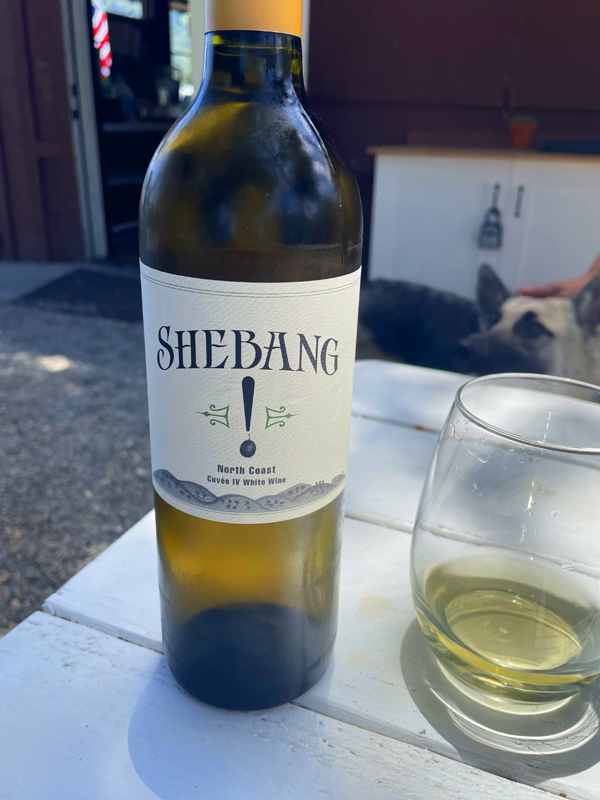
n.v. The Whole Shebang! by Bedrock Wine Co, Cuvée IV White, North Coast, California.
The non-vintage unique dry white wine, Shebang Cuvée IV, is sourced from some of Bedrock’s favorite and historic vineyards throughout the North Coast of California, making for an interesting alternative offering that is hard to put into any category, but reminds me a little of a Saint-Peray with an almost Marsanne like character with pear, apple and preserved lemon notes, bee’s wax, mineral tones, white flowers, tangy herbs, wet rock and honeycomb. This pale gold release is easy smooth and subtle on the medium bodied palate with soft acidity and a touch oily in nature, but still vibrant in the glass and comes to life with food, especially with creamy cheeses and light dishes. The Whole Shebang! is more famous for the mixed red blend, which has a bold personality and is a stellar value, like a California Côtes du Rhône, it maybe a bit more of a crowd pleaser than this white, but I still enjoy this and recommend it for outdoor parties, picnics and beach meals.
Bedrock Wine Company’s The Whole Shebang! North Coast White Cuvée IV is made from separate lots and years of an eclectic mix of varietals typically consisting of Riesling, Pinot Gris, Sauvignon Blanc, Albarino, Semillon and Muscadelle. The aromatics tend to be slightly floral and taste crisply dry, though this release is pretty generous in flavor and a bit muted on the nose with a hint white flowers and a touch of bitter almond. If I try to compare this Shebang white to anything, I return to the Northern Rhone (Marsanne and Roussanne) and or even Loire Valley Chenin Blanc. Mostly tank rested, you don’t really get any oak influence, even though there seems to be a well rounded, almost, creamy feel when open in the glass. Both the red and white versions of Shebang are highly quaffable and value priced wines that offer a lot of bang for the buck. The Sonoma based Bedrock, led by Morgan Twain-Peterson MW, is mainly famous for their fantastic Zinfandel based Heritage field blend bottlings from some of the oldest and most historic vineyards in the state, and I am a huge fan of the whole collection of pure California efforts.
($16 Est.) 87 points, grapelive
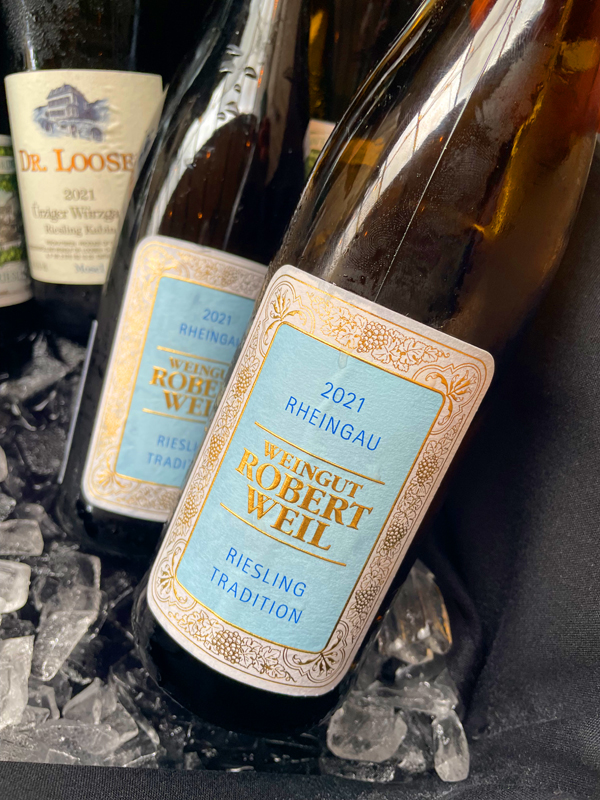
2021 Weingut Robert Weil, Riesling Feinherb, Estate Tradition, Rheingau, Germany.
The beautiful, aromatic and brightly generous 2021 Riesling Tradition by Weingut Robert Weil is a rewarding and pleasure filled wine that clearly and with some precision shows off its terroir and while slightly off dry, has a crisp, mineral toned personality that comes across more textural than sweet. I have long been a fan of this winery and have sat in on panels with Wilhelm Weil, the great-grandson of the estate’s founder and who oversees this classic Rheingau property, as well as visiting Kiedrich and taking in the views of the village’s name sake vineyards, which are Grosse Lage sites, that provides some of the grapes for this wine. The slightly floral and flinty Tradition shows off a mix of citrus, apple, subtle tropical and tart apricot fruits on the light to medium bodied and crystalline palate and is backed up nicely by the steely, spicy and saline notes, adding a hint of leesy richness and that balanced by the underlying tension. This wine is fine tuned and pure with juicy fruitiness and refreshment, perfect for Summer sipping with lighter foods, though also very capable of going with a touch of heat in the cuisine, matching up with Asian dishes very well.
The Weingut Robert Weil was established back in 1875, which for the Rheingau isn’t all that old, especially when you consider that its home village Kiedrich, according to the winery was first documented in 950 A.D. The winery sits right below the GG vineyards of Kiedrich Turmberg and Kiedrich Gräfenberg, which majestically rise up at about a 60 percent grade toward a wild and dense forest and set on a complex combination of stony phyllite partially mixed with loess and loam soils. This area of Rheingau is less humid and sees a bit less river influence, set up and away from the widest point of the Rhein with steep hillside vines that ripen a bit later. The wines here are complex, deep and lend themselves to a dry style mostly, though you see a full range produced by Robert Weil from classic Kabinett and Spatlese to their powerful set of Grosses Gewachs. The Estate bottlings, the Estate Trocken and this Riesling Tradition are great wines to get started here and are sublime wines for the price. Typically made from Weil’s sites in Kiedrich and lower down in Eltville the 2021Tradition, which feels drier than you’d expect, saw extra care in the vineyards with smaller yields than normal due to the harsh green harvest, which adds to the quality and class found here. This wine, which is made to be enjoyed young, sees stainless steel fermentation and aging, that promotes the utmost clarity of form, it is always a treat in the glass.
($30 Est.) 91 Points, grapelive
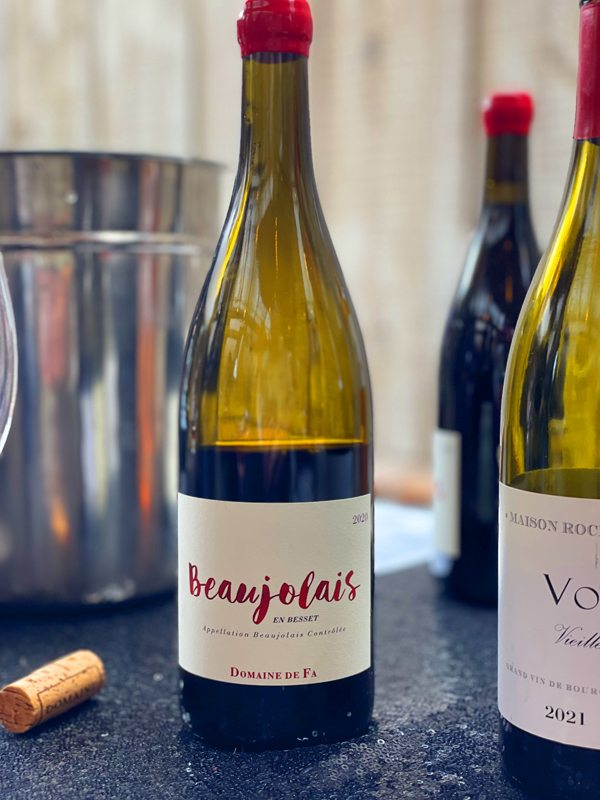
2020 Domaine de Fa, Beaujolais “En Besset” France.
The beautiful ruby/garnet and deeply flavored Beaujolais En Besset, by Antoine and Maxime Graillot at Domaine de Fa, is much more complex and intense than you’d think, while still being hedonistically pleasing in the glass with a ripe core of dark fruits, spice, mineral and savory elements all coming together brilliantly in this 2020 vintage. Coming from one of the highest elevation vineyards of the whole Beaujolais appellation, which is located near Saint-Amour and Juliénas crus, the En Besset has classic granite based soils that helps elevate this bottling into a dense and structured wine, that rivals many much more expensive Cru Beaujolais. This ripe year adds some exotic fruit and floral nuances with crushed blackberry, cherry, plum and strawberry fruits leading the way on the vinous and plush palate, along with subtle earthiness, flinty stones, lilac, cinnamon spice, anise and delicate hard wood notes. There’s a fine cut of natural acidity and supple tannins that give this Beaujolais an extra dimension and age worthiness that you don’t often get here, it has potential to go a decade, though very rewarding right now, so no patience needed. I highly recommend that Domaine de Fa be on your watch list of Gamay producers and this is one to stock up on.
The famous Graillot family of the northern Rhone, the owners and winemakers, Maxime and Antoine Graillot, son’s of the late Alain Graillot, for both Domaine des Lises and Domaine Alain Graillot, the fabled Crozes-Hermitage producer, have teamed up to produce these Domaine de Fa Beaujolais wines, mainly from quality parcels of organic vines set in Fleurie and Saint Amour crus. With Antoine leading the efforts here at de Fa, since the Graillot’s bought land here back in 2013, there’s a lot to get excited about with the wines so far, with these 2020 offerings being very serious Gamay wines, especially this value packed En Besset Beaujolais effort. For the Domaine de Fa En Besset Beaujolais Antoine Graillot employed a natural and traditional approach in the cellar, much the same way as some of the regional stars, like Foillard, Lapierre and Dutraive, using 100% whole cluster, semi carbonic maceration, and native yeast fermentation, with the wines seeing a combination of cement and old wood for aging. In this case, just under a year in the concrete vat and lager demi-muid(s), all to show off a sense of place with clarity and rustic charm. The Graillot’s Domaine de Fa should be on your radar, they a studied collection of reasonably priced wines, that include a Fleurie, a Saint-Amour, this one, and a Saint-Veran cru Chardonnay, which I can’t wait to try as well!
($27 Est.) 93 Points, grapelive
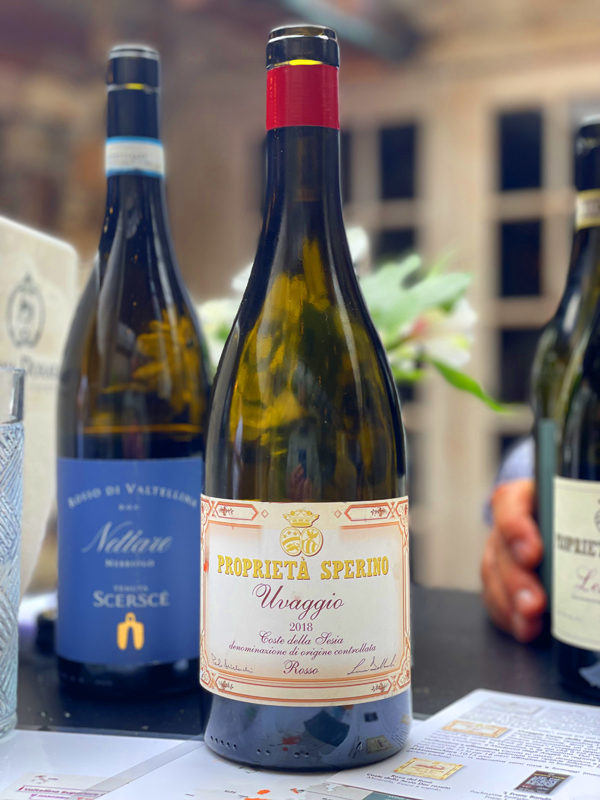
2018 Proprietà Sperino, Uvaggio, Coste delle Sesia Rosso DOC, Alta Langhe, Piedmonte, Italy.
The beautiful and delicious light ruby and garnet hued Uvaggio Coste delle Sesia Rosso, by Proprietà Sperino, is typically a blend of 80% Nebbiolo, called Spanna locally, plus about 5% Croatina and 15% Vespolina, both native varietals to this part of the Alta Langhe in northern Piedmonte, making for, especially this vintage, a great wine to enjoy in its youth and with food. This 2018 is a bit fresher and brighter than the 2017, which I also loved, with pretty floral and delicately earthy aromatics and a lifted medium bodied palate of Nebbiolo led flavors, including brandied cherry, Summer plum, red currant and grilled orange fruits, along with seeped roses, tarry licorice, mineral tones, roasted herbs, porcini and sandalwood accents. There’s a lot to like here and this 2018 Uvaggio Coste delle Sesia Rosso feels rewardingly viscous and satiny smooth, hiding the underlying tannins and allowing for pure pleasure to shine here, I again highly recommend this Proprietà Sperino bottling, which has really impressed me. Proprietà Sperino is on a mission to raise the profile of the Lessona region, and I think they are well on their way to accomplish that with a collection of stylish, complex and quality wines.
The Proprietà Sperino winery, run by Luca de Marchi, is located in the Lessona DOC appellation, in the Alta Langhe part of the greater Piedmonte region, and is one of the oldest and most historic wine-growing areas in Italy, with wine production records showing it was thriving as early as the 14th century. The terroir here has soils consisting of marine sand and Alpine granite that are perfectly suited for the Nebbiolo, and make for conditions to produce exceptional long lived wines, almost on par with the more famous Barbaresco and Barolo wines. The Nebbiolo here is very aromatic and complex, and can be lifted by the addition of small amounts of Vespolina and Croatina, that can add to the flowery bouquet, pigment and in this case gives some spicy notes to this Uvaggio Rosso. The Uvaggio Coste della Sesia DOC is made from sustainable farmed grapes, which are all de-stemmed and it is fermented in tank and used wood before being racked over to oak, where it was aged 22 months in mostly small tonneau/barriques then bottled unfined and unfiltered. I recently tasted this new vintage of the Uvaggio Coste delle Sesia, and got to re-vist the upper end Lessona from 2015, that I already reviewed last year, and it was everything I remembered it to be and really am excited to try the upcoming 2016 that should be out soon. The northern part of Piedmonte is really catching fire with Nebbiolo fans and Proprietà Sperino is a solid choice to get started with.
($45 Est.) 94 Points, grapelive
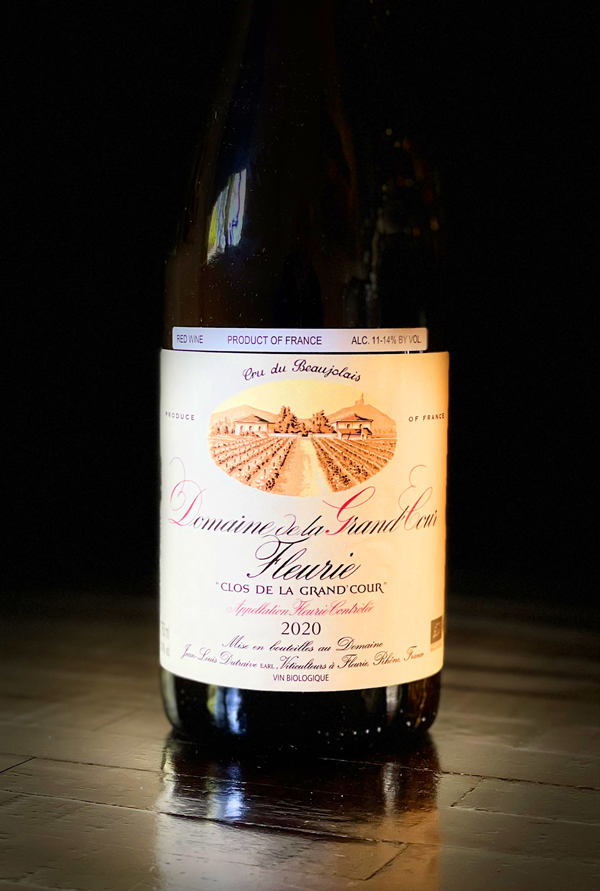
2020 Jean-Louis Dutraive – Domaine de la Grand”Cour, Fleurie “Clos de la Grand’Cour” Cru Beaujolais, France.
One of my favorite wines, when I get my hands on it, is this Domaine de la Grand’Cour Fleurie Cru Beaujolais from the Gamay maestros, Jean-Louis Dutraive, who like Jean Foillard and the late Marcel Lapierre employ 100% whole-cluster fermentation and natural winemaking methods, with Dutraive’s wines having incredible (perfumed) aromatics and length, as this brilliant 2020 shows. Brilliant clarity, inner brightness and pure Gamay quality, there’s dark almost violet like nose here and seamless layers of plum, strawberry and black cherry fruits, along with flinty mineral, red spices, tangy herbs and a hint of walnut and sweet framboise. Jean-Louis Dutraive is one of the legends of Beaujolais region and his Fleurie wines are some of the best Gamay you’ll ever taste, and this ripe 2020 Clos de la Grand’Cour is no exception! All of Jean-Louis’ wines are made with whole clusters, zero extraction and natural fermentations. They are made from a combination of nearly perfect farming and zen-like observation. The elevage (aging) of this wine is 40% in classic foudre and 60% in futs de chene or large cask. The commitment to perfection and passion put into the Dutraive wines starts in the vineyards and with the holistic, almost zen like approach to their vines, everything has been converted to organics and using many biodynamic practices that has paid off in the delicious and heightened flavors in the wines. The Dutraive family have adopted the approach espoused by Jules Chauvet, who railed against industrial farming and inspired the top Beaujolais producers to embrace old traditional and natural methods from the vines to bottle, which led to these wines being some of the most sought after in the world.
The Clos de la Grand’Cour (or Grand Coeur) parcel is part of Dutraive’s historic estate located on a true plateau in Fleurie with mineral rich acidic soil that is nearly 100% decomposed granite. The vines of Dutraive, as the winery notes, are just a short walk from the town center, which sits around 300 meters up, in a good spot to catch cooling breezes. The climate of Beaujolais is semi-continental and is warmer than the rest of Burgundy, In fact, it is notably one of the warmest places in France during the summer months, which suits the high acid Gamay grape. Though, again as the winery explains, thankfully, they are on the eastern foothills of the Massif Central which helps the vineyards cool down at night following those hot days, which allows for the remarkable elegance and pleasure in these wines. The Clos de la Grand’Cour is the largest bottling on from Dutraive’s famous estate, making up more than a third of the production here under the Grand’Cour label. Funny enough, even at over 40 years of average age, Jean-Louis considers these his young vines and bottles them separately from the really old parcels, like his Le Clos Vieilles Vignes. Dutraive’s importer, The Source says this Clos de la Grand’Cour Fleurie bottling is the only wine in the range that spends time in old large foudre in addition to concrete. This elevage, they add, slowly softens the piercing aromas into a wine that has a little more rustic and sauvage (but clean!) character, maybe a little more than the rest of the wines. I agree that It is a beauty and is always a bit underrated in Dutraive’s brilliantly expressive efforts, which is okay, as it is usually the one cuvée I can most easily find. Now with his talented son Justin working with him and doing his label too, Jean-Louis and the Family Dutraive are well prepared for the generational transition and there is the promise of great things to come in the future.
($48 ESt.) 94 Points, grapelive
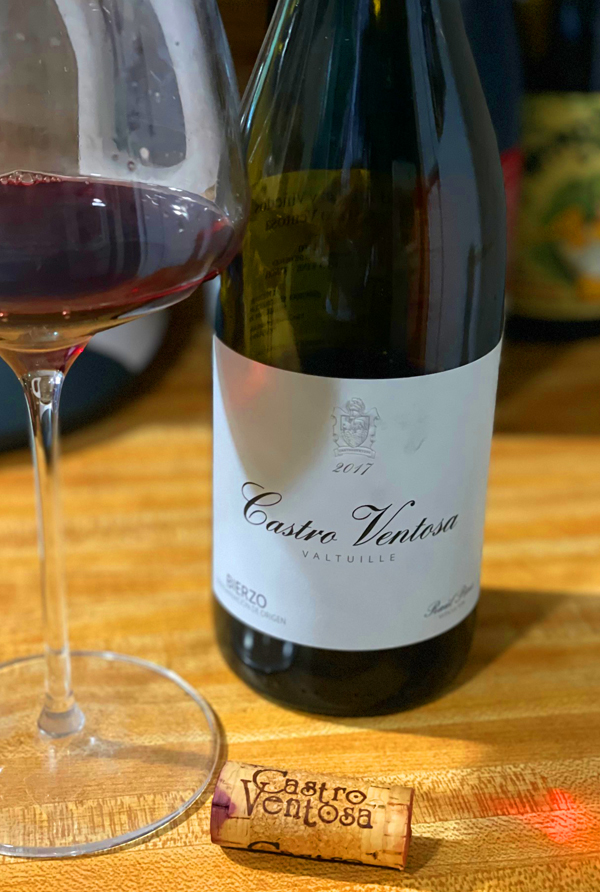
2017 Castro Ventosa – Raul Perez, Mencia, Valtuille, Bierzo D.O., Castilla y León, Spain.
Raul Perez’s brilliant and dark hued Castro Ventosa, 100% Mencia, from the 2017 is really showing well with deep fruit concentration, satiny tannins, a mineral note, delicate florals and a slightly earthy reductive element, that all folds nicely together, making for an intriguing and engaging, almost Burgundy like effort. Perez, one of Spain’s greatest winemakers and the Mencia maestro has crafted a very seductive and transparent estate wine here, that fits beautifully into his exceptional collection of Bierzo offerings, though different from some of his personal project wines. This garnet colored 2017 delivers a full range of flavors led by dark currant, black cherry and brambly berry fruits along with dusty spices, dried minty herbs, wild flowers, graphite, truffle and subtle cedery wood. The Castro Ventosa has a fine balance with natural acidity and a firm structural feel that makes this a wine that works best with food, where it really shines, especially some rustic country cuisine and meat dishes. Perez naturally fermented his Castro Ventosa Bierzo Tinto mainly in oak vats, though about 10-15% was done in stainless steel tanks, with about 40% full (whole) clusters and then matured it in a combination of used 225L and 500L French oak barrels, that perfectly showcases the region and the grape. This middle tier bottling is one one of the best values in Bierzo reds and showcases the talents of Raul Perez for a very reasonable price.
The Castro Ventosa (Windy Castle) was founded by the Perez family back in 1752 and the family has owned the estate ever since, now with the legendary Raul Perez, the godfather of Mencia, running the show here. The Perez family owns 75 hectares of Mencia vineyards in Bierzo, this makies them the biggest owners of vines of this grape within the Bierzo D.O. region. The Bierzo D.O. zone is located in the northwest of the Province of Castilla y León, just above Portugal with a more continental climate than the cooler and Atlantic Ocean influenced Ribeira Sacra D.O., where Mencia is also found. Bierzo is in a small valley surrounded by mountains, with an exceptional terroir and with a unique microclimate, its low altitude prevents frost in winter and the warm summer provides for perfectly ripe grapes. The soil here has a mixture of quartzite and slate, as well as clay and sand, all of which suits the Mencia, as well as Godello and others ancient local varietals. The Castro Ventosa winery is located in the village of Valtuille de Abajo at the foot of the slope of the Castro, the ruin of an ancient Roman fort that dominates the village. Mencia is an indigenous red varietal of Northwestern Spain, once thought to be a cousin of Cabernet Franc, though in modern times DNA testing has ruled out any relationship with Cab Franc, it has elements of flavors that reminds me of Gamay, Pinot Noir and Syrah with its dark fruit, good acidity and medium body. It’s always a treat to drink a bottle of Raul Perez’s wine and this one was delicious and rewarding over the course of evening with a hearty meal, and it reminded me that I definitely need to get a few more bottles and I can’t wait to try his latest releases!
($40 ESt.) 94 Points, grapelive
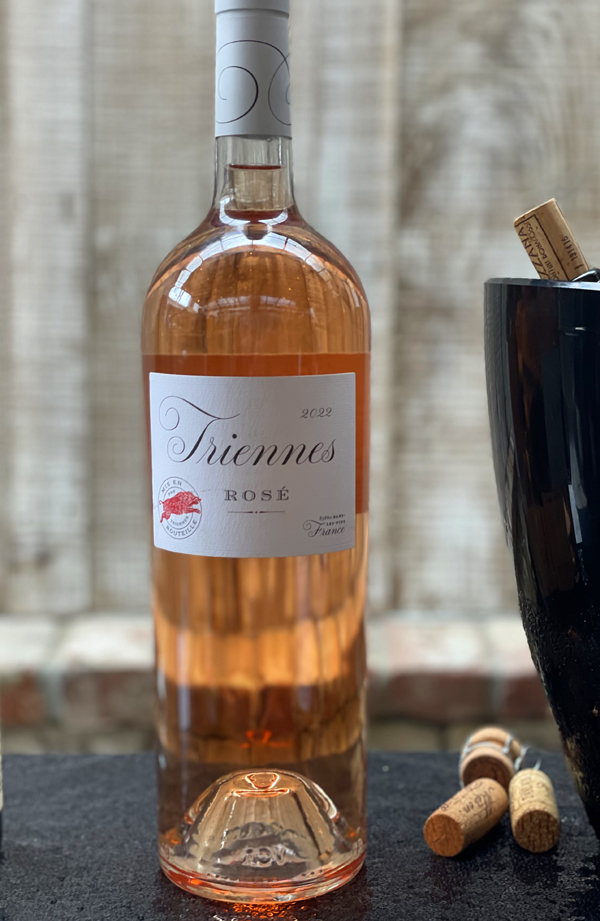
2022 Domaine de Triennes, Rosé, IGP Mediterranee, France.
Made from a blend of mostly Cinsault, plus Grenache, along with a small dose of Syrah and uniquely some Merlot, the 2022 Triennes Rosé is my favorite vintage so far from this label, which I first tried back in around 2000 or so. The 2022 is vibrantly crisp and precise, in keeping with the Provence style of pinks, with a zesty, mineral and delicately fruited focus on the medium bodied palate that shows ruby grapefruit, sour cherry, strawberry and watermelon along with a touch of rosewater, wet stones and light herbal tones. Cold harvested at night, the grapes see just a few hours on the skins and get a cool low temperature stainless steel fermentation, after which the Rosé is rested on the fine lees for a few months before bottling, all to capture all the nuance and energy with pure transparency foremost in mind. The pale color invites sip after sip and moderate alcohol allows for this Rosé to be enjoyed all day long! Winemaker, Rémy Laugier, who’s in charge these days at Triennes, has nailed in this vintage and the promise of this estate is fully on display and I can’t wait to enjoy a few more bottles of this one this Summer.
The Domaine de Triennes, which is located in Nans-les-Pins, in southeastern France, an undiscovered and rustic locale, just 30 kilometers from the Mediterranean, was originally founded in1990 by Jacques Seysses, from Domaine Dujac, Aubert de Villaines, from iconic Domaine de la Romanée Conti, and Michel Macaux, a Parisian, who helped acquire this unique 46-hectare Mediterranean estate. The name, Triennes is a reference to Triennia, the Roman festival for Bacchus, that was held each year to celebrate wine and good living. Very much keeping with their Burgundian principals, Triennes is committed to its terroir and nature, and in 2008 They began its organic conversion with Ecocert which, according to the winery, should lead to its certification soon, though they have used mainly holistic methods since the start. The cooler micro-climate here aids in the freshness of their whites and this Rosé, which they are most famous for. The popularity of these wines has grown steadily and now Triennes is much in demand world wide, making them expand the production and Triennes has state-of-the art facilities with big capacity temperature controlled stainless steel tanks, allowing them to keep things bright and fresh. Now Triennes has 46 hectares of Syrah, Viognier, Carignan, Cinsault, Grenache, Chardonnay, Cabernet Sauvignon, and Merlot from which to make their collection of wines, so it’s not just Rosé here, but it certainly is the one to draw you in.
($18 Est.) 92 Points, grapelive
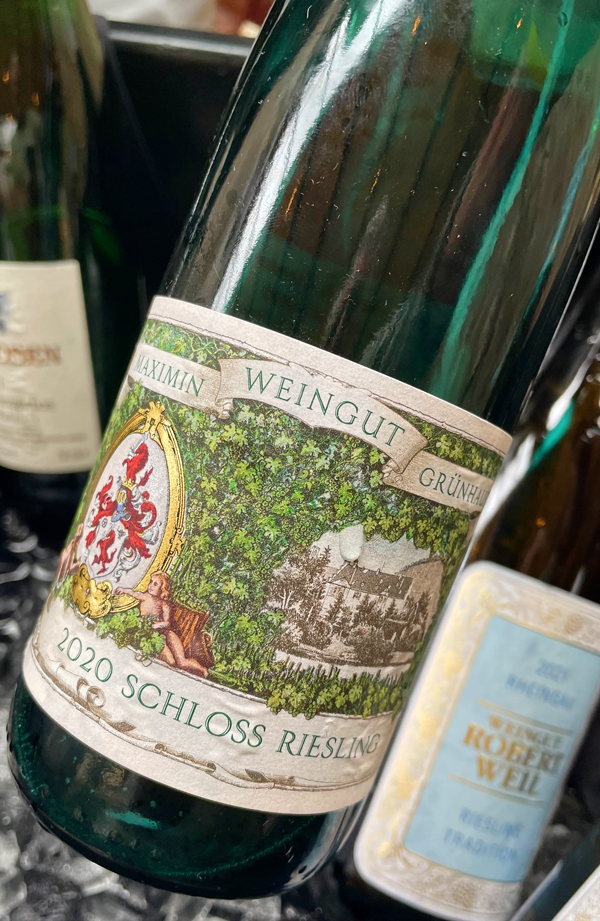
2020 Weingut Maximin Grünhaus – Von Schubert, Riesling Trocken, Schloss, VDP Gutswein, Ruwer-Mosel, Germany.
The new label “Schloss” replaces the “Monopol” Riesling and is produced with the same fruit as before, all harvested from the estate’s wholly owned and organically farmed Abtsberg, Herrenberg and Bruderberg Grand Cru vineyard sites that sit steeply set above the Ruwer, not far from the confluence of Mosel and offers a vividly dry, generously fruited and mineral laced character in the glass. Steely and electric at first, this 2020 adds depth as it opens and indices the palate with lime, white peach, green apple and zingy quince with flinty slate accents, saline, a touch of earth and herbs along with tropical notes. As with the Monopol or prior editions, this is an impeccable and crystalline wine that displays a graceful tension and is a sublime value, earning its place in Maximin Grünhaus’ dry Riesling line, just below the sensational trio of GGs. Since this bottling doesn’t require any serious aging, the screw cap or Stelvin closure is just perfect in function, making sure you get a fresh and pure wine every time. All the wines at Maximin Grünhaus are fermented naturally, with spontaneous yeasts in the deep and cool cellar, where they are matured in a combination of stainless steel tanks and neutral oak casks, to promote a sense of place and transparency, as this wine show with pristine clarity. This dry Riesling can easily be sipped with Sushi and or starter dishes, but can stand up to heartier cuisine as well, making it very flexible and a serious wine.
Maximin Grünhaus is one of the most historic wineries in the world, which looks to date back to February 6, 966, when the first document mentions the place, when Emperor Otto I, heir of Charlemagne, recognized, as the winery notes, a donation that had been made in the Seventh century by the Frankish King Dagobert! But it really started to make a name for itself as the Benedictine monastery of Saint Maximin, which farmed and produced wine here. The estate was bought by the current owner Carl von Schubert’s ancestors back in 1882 and five generations helped create the modern legend that is Maximin Grünhaus and its three amazing vineyards, mentioned above, Abtsberg, Herrenberg and Bruderberg, which are some of the most coveted sites in Germany. These vineyards are most known these days for their VDP Grosse Lagen status and the single vineyard dry wines made from these grapes which come from vines all set on classic Devonian slate soils, though the Herrenberg has mineral/iron rich red slate that adds an exotic quality and structures to age. The Bruderberg, though separate is almost a continuation of the famed Abtsberg, which has been planted with vines for over a thousand years, even though it is believed the Riesling didn’t came here until the 1800s, after it had gained success in the Rhein region, where it is from. Located on the left bank of the tiny Ruwer river, about two kilometers upstream from where it joins the Mosel, this property stands out as a place for distinctive terroir driven wines, an understatement maybe, as it is a winery that elevates the wine world. I am a fan of these wines and glad they are pretty easy to find in the states, especially this Schloss, which delivers big Riesling bang for the bucks.
($24 Est.) 92 Points, grapelive
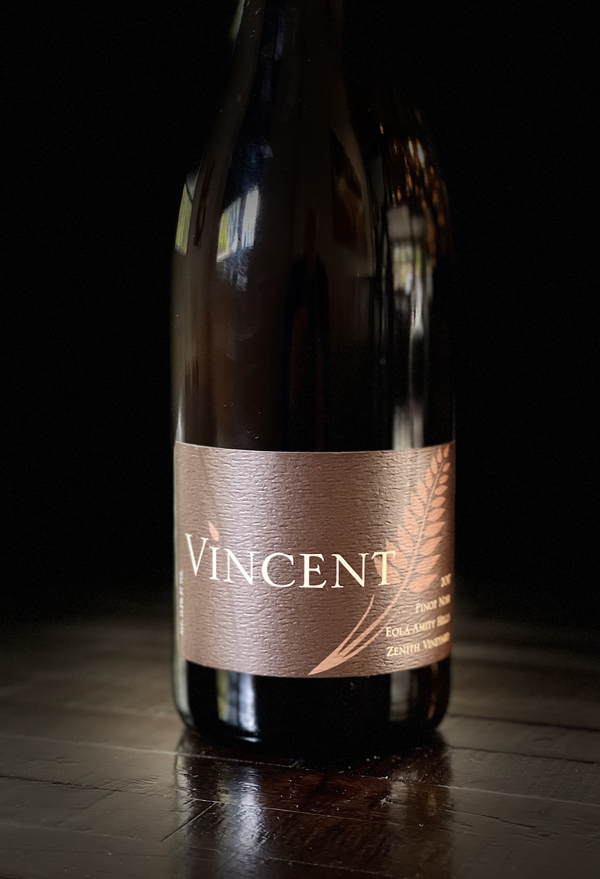
2017 Vincent, Pinot Noir, Zenith Vineyard, Eola-Amity AVA, Willamette Valley, Oregon.
The 2017 Zenith Pinot by Vincent is still full of life and energy with bright cherry and strawberry fruits, warm spices, mineral tones, wilted rose petals and light tea and herb notes that remind me of an earthy seductive Cote de Beaune or Volnay like Burgundy, with a smooth vinous texture and eager to please, especially with a good food pairing. Vincent Fritzsche, winemaker, says that he makes his wines in a low-input wine making style, borrowed from the old world, and sources his grapes from some incredible vineyards with several sustainably-farmed parcels from all around the Willamette Valley, with the Zenith Vineyard in the Eola-Amity Hills, being his main or elite source, maybe providing the structure and soul. This wine is from a 1.4 acre parcel of Pinot Noir here, that was planted in 2006, set on marine sedimentary soils and seeing a cool to moderate climate, the Zenith Vineyard provides top notch conditions for beautiful and age worthy Pinot Noir, as seen here in this 2017 single vineyard version by Vincent, who’s approach leads to transparency and nuanced complexity. Vincent, I’m told, does a unique regiment, where they do one punch down each day during the maceration and when fermentation peaks, then they gently wet the cap each day after just to keep things fresh. Depending on how fast the natural fermentations go, they typically drain and press their Pinots about three weeks after harvest. Each of the new wines here are settled separately, with the free juice run kept apart from the pressed wine, and racked gently into French oak barrels after a settling period usually a day or two. Vincent also uses ultra low SO2 or none when possible and they don’t use any new oak, with barrels that range in fills, averaging five to ten years old. Vincent, as told here before in my prior reviews, does also a basic regional Willamette Valley bottling, as well as a couple of unique AVA versions, like this Eola-Amity Hills bottling, and single vineyard wine such as this excellent Zenith Vineyard offering, these wines, as seen with this effort and the others rated here, offer tons of value for the price, and you should search these out and or join their mailing list.
Vincent founder, Vincent Fritzsche, started his small winery, located in the Eola-Amity Hills AVA of Oregon’s Willamette Valley, back in 2009 with a focus on transparent and elegant Pinot Noirs, which are lighter and more vibrant than was the trend of the times and after some success with his stylish examples. Vincent, now produces about 2,000 cases a year of mainly Pinot Noir and Chardonnay, but as added some very nice Pinot Blanc, Pinot Gris and a really exciting Gamay to his collection. Vincent’s Zenith, Armstrong, Redford-Wetle, Silvershot and Bjornson, along with the well known Temperance Hill, make for a strong lineup of single vineyard Pinots, offering distinct terroir character and individual charms, with this Zenith Vineyard maybe being the most compelling of the set. Vincent typically, but not always, crushes and de-stems the carefully sorted grapes and then put into small fermenters. Any whole cluster lots, if used, (depends on the vintage) Fritzsche notes, get a classic pigeage, or foot treading, to get things moving and minimize any large air pockets that might be in the fermenter. The winery explains as well, that the main lots of crushed grapes in bins are then left alone for a spontaneous fermentation with indigenous yeasts, usually this happens within a week or so. Only when enough CO2 is coming off the fermenter in earnest do the cellar team do the first punch downs, where they break up the forming cap of and push down grape matter at the top layer of the fermenter deeper into the juice to extract more flavor and color. The wine is aged in used French barriques and bottled unfiltered with very low SO2 to promote, the mentioned transparency, which this Pinot delivers nicely. As I have said before, Oregon has seen a few tough vintages, which made for a challenge for winemakers with a huge swing in climate conditions from hot and dry to cool and wet, like in 2019, and even fires, so it’s been a mixed bag in results from 2016 to 2020, but some producers have really raised to the occasion and made some very serious and delicious wines, Vincent being one them. The basic Vincent Pinots are aged for one year, while the single vineyard Pinot Noirs, like this Zenith, and the special “Tardive” labeled wines see an elevage of closer to 18 months in the barrel, with all bottled unfiltered. So far I’ve liked everything I’ve tried from Vincent, and this 2017 is one of best, making me excited to check out the 2021s, which I hear are exceptional.
($55 Est.) 94 Points, grapelive
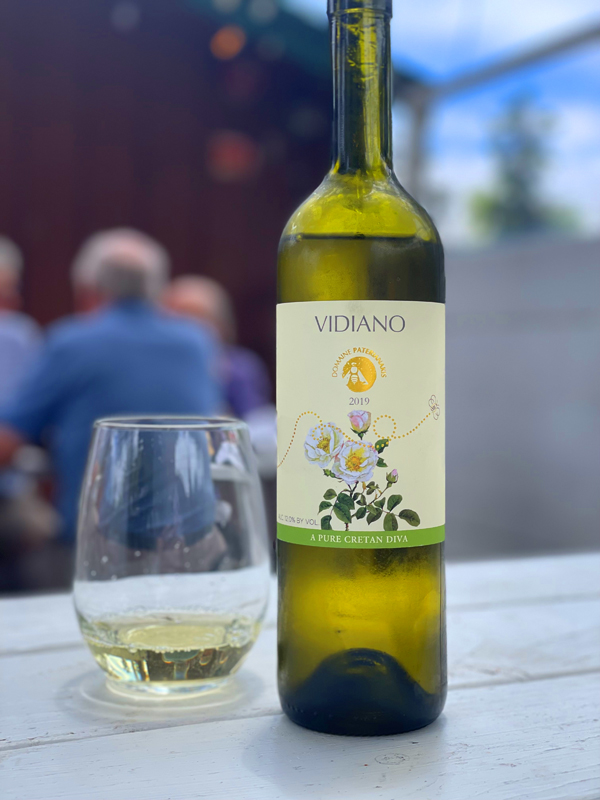
2019 Domaine Paterianakis, Vidiano, Protected Geographical Indication, White Wine, Island of Crete, Greece.
Brand new to me and delicious, Domaine Paterianakis from the Greek Island of Crete makes this crisp and dry white wine that shows off steely white peach, racy citrus and melon fruits along with a round mineral driven lighter body with delicate white flowers and snappy herbs. Big thank you to Parker Fisher, the wine director for Carmel Valley’s Bear and Flag Roadside for sharing this fresh and textured Geek wine with me, it was a perfect companion for a warm Valley afternoon and went nicely with my artichoke burger, a specialty of Chef Todd, and I can see why it is a local favorite of the locals on the Isle of Crete. There’s a lot to like here and you can see similar characteristics in Vidiano that you do with other Mediterranean varietals, though not as complex or intense as Vermentino or Greece’s star grape Assyrtiko. Weirdly, there are currently no geographic areas that are specified for Vidiano, or is there a controlled appellation, though the wines are labeled Protected Geographical Indication, Crete, as this one is. Crete itself, unlike Santorini, does not get much attention from the wine world, so largely its wines don’t as much love, which is probably why I haven’t heard anything about Vidiano before now. The third generation of the Paterianakis family run this winery, farming all organic and crafting their wines in pursuit of purity, mostly using stainless steel in the vinification of the wines in the gravity flow cellars. This wine saw 50% clear juice and 50% saw a few hours of skin contact and was aged for a few months on the lees before being bottled quickly to preserve vitality.
Vidiano, or Βιδιανό, is an ancient white-wine grape from the Greek island of Crete, and mainly only found there, in the eastern Mediterranean. According to Jancis Robinson, Julia Harding and José Vouillamoz, and their Wine Grapes book, the Vidiano grape is difficult to cultivate and is only grown in small scale, primarily in the Rethymno and Heraklion areas, thriving in the modest fertility, dry, calcareous and well-drained soils on Crete. The grape’s are said to have berries ripen early and have thick skins, which helps retain acidity, while having smooth ripe apricot and stone fruit flavors, which I can see in this version by Paterianakis. It’s hard to trace this grape’s heritage or origin, though Vidiano seems indigenous to Crete and related to other rare varietal, Thrapsathiri, which I don’t think I’ve ever tasted either. Interesting, the Vidiano grape, dates back to the 13th century, when it was documented, at a time when Crete was occupied by the Venetians, though it most likely to have been here much longer. Vidiano almost went extinct when the Crete wine business focused mostly on bulk wine production, but this small yielding grape has enough local fans to survive and in the last quarter of a century there has been a revival of its fortunes and it has seen new plantings, which has led to many quality small production offerings. I am a fan of dry Greek white wines, mainly from the mentioned Assyrtiko grape, as well as more widely available, Malagousia and Moscofilero, but I can now also recommend Vidiano based wines. This pale greenish gold Paterianakis 100% Vidiano is well worth searching out and it will go great with a range of cuisine, but maybe best with fleshy white fish and or pasta with shellfish, though it can be equally enjoyed as an aperitif.
($20 Est.) 90 Points, grapelive
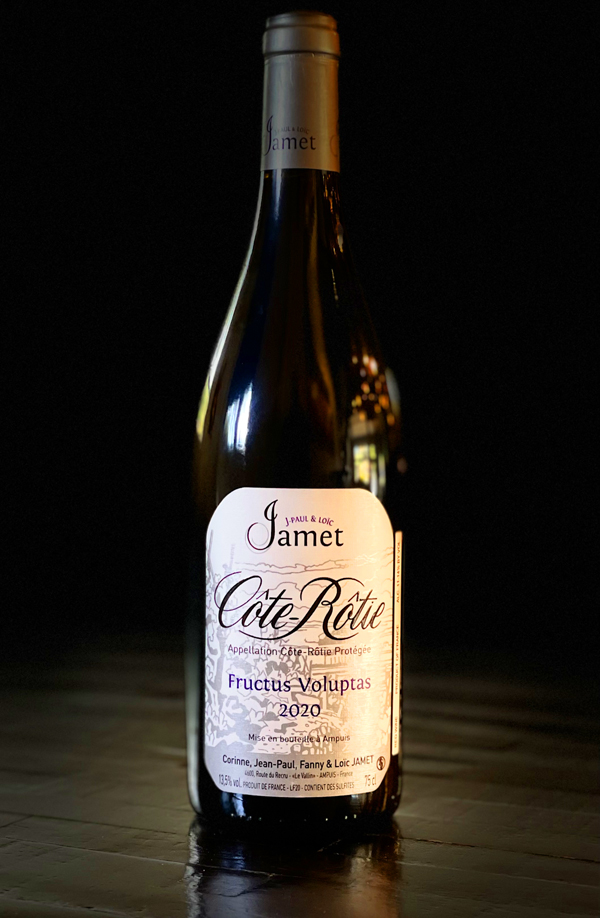
2020 Domaine Jean-Paul, Corinne & Loïc Jamet, Côte Rôtie “Fructus Voluptas” Northern Rhone, France.
Jean-Paul Jamet, who is joined today at Domaine Jamet, by both his wife, Corinne, and his son, Loïc, makes some of the world’s best Syrah wines and in particular his Côte Rôtie offerings, like this alternative version, for early drinking, called “Fructus Voluptas” (Fruit Pleasure) that I recently opened and loved. This 2020 Côte Rôtie “Fructus Voluptas” is 100% Syrah from schist soils and saw mostly de-stemmed grapes with just a tiny amount of whole-cluster to deliver, as the name suggests, a riper and more opulent palate without much of the stemmy edginess and savory crunch of the main estate Côte Rôtie, which gets closer to 90% whole bunches, making for an aromatic and richly layered wine of fabulous quality. Even though mostly de-stemmed, there is classic underlying Jamet character here with a good tension between plush fruit density and exciting savory feral notes with solid tannins and underlying structure which keeps things firmly in place. The nose starts with burnt embers, meaty notes, crushed dark berries and beautiful violets before a mouth filling array of blackberry, blueberry, damson plum and kirsch fruits, accented nicely by subtle cedar, tarry licorice, a hint of olive tapenade, grilled herbs and lingering creme de cassis, all in a tight and youthful frame that deserves a hearty and robust meal, to provide its (this wine’s) best rewards. This bottling, which saw 16 months in used barrels, though harder to find, is a great way to get your feet wet in Jamet and will certainly seduce the Syrah lovers out there!
The famed Domaine Jamet, founded in 1975, produces a hand full of coveted bottlings that are some of the most sought after wines in the world, especially their awesome old school Côte Rôtie, as well as their 100% Syrah Côtes du Rhône and the IPG Syrah, which is a stunning value. Domaine Jamet’s path, as noted by Kermit Lynch, has been one that has stayed true to tradition, even as the appellation has modernized around him, and despite its popularity, Jamet always eschewed the use of excessive new oak. Instead they chose to maintain a cellar mainly of traditional old demi-muid(s) and with just a few small barrels. Kermit Lynch continues to honor Jamet’s style, saying, as the fashion to de-stem Syrah accelerated, Jamet remained firmly opposed, continuing to vinify their Côte Rôtie using whole-cluster and stem inclusion, which averages 90% in most vintages. Perhaps most importantly, Lynch continues, Jamet remained committed to his extreme, impossibly steep and rocky, treacherously terraced parcels that could only be worked painstakingly by hand, with a collection of top notch lieu-dits, including Gerine, Lesardes, Fongeant, Chavaroche, Côte Bodin, Bonnivières, Le Plomb, Le Truchet, Les Moutonnes, La Landonne, Côte Blonde, Côte Rozier, Leyat, Côte Brune, Tartaras, and Rochins. All of which are some of the greatest Syrah vines in the world and possess terroir influences that are very distinct, highlighting the cooler climate here and the granite and schist based soils. Domaine Jamet, not far from Ampuis, Côte Rôtie’s main village, is a favorite for collectors and it is never easy or cheap getting bottle of their Côte Rôtie, but oh man, there are thrilling wines and even their lesser (price wise) wines, like this one, are really worth the money and effort too.
($90+ Est.) 94 Points, grapelive
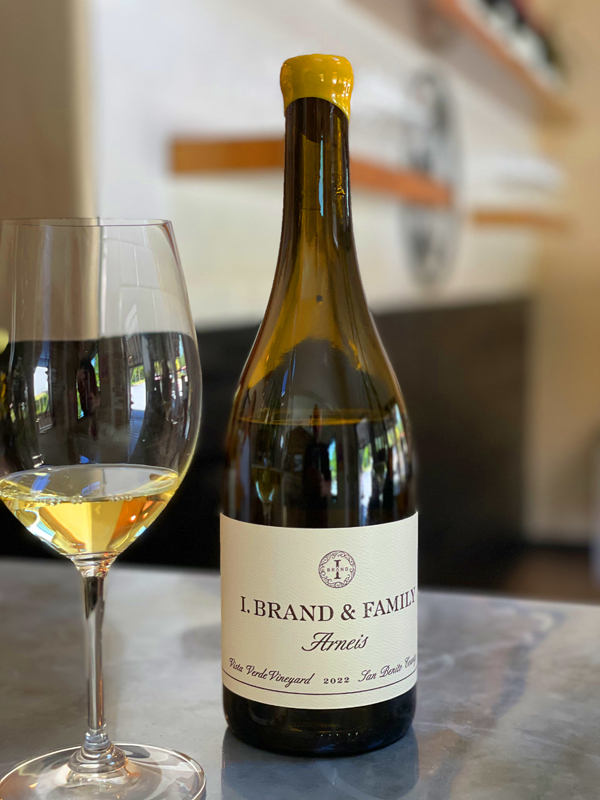
2022 I. Brand & Family Winery, Arneis, Vista Verde Vineyard, San Benito County.
The Arneis, which debuted in Ian Brand’s lineup in 2020, is a lighter bodied white wine that has added some excitement to the collection here and this 2022 is a beauty, with a similar personality to the prior releases, showing lemon/lime and melon fruit along with orange blossom, white licorice/fennel and light leesy almond note, adding some stone fruit fleshiness. The Arneis joins Brand’s lovely Melon de Bourgogne and his “Ramato” style skin contact Pinot Gris as a fun alternative white, more interesting than basic Sauvignon Blanc and Chardonnay offerings and is a great Summer wine. Typically Brand’s whites are fermented in stainless steel and aged between 6 to 8 months on the lees in neutral French oak barrels to promote fresh details and to let the varietal to present itself without distractions of newer wood and this Arneis thrives because of that lesser is more winemaking technique. As noted in my prior reviews, the Ian Brand Arneis, a pale straw/yellow hued wine, finishes smooth and lingering, but with a dry phenolic vitality, wonderful with soft cheeses and or white fish dishes, making it perfect for beach days and or picnics, as well as a great starter wine with any causal meal. Arneis, acnastive of Piedmonte, Italy, is known to be difficult to grow, with low acidity it needs to be picked at exactly the right time, and is susceptible to mildew, which is probably why it has its little rascal name, though it can be awesome, especially by the likes of Vietti, Ceretto and Bruno Giacosa.
The Vista Verde Vineyard, in the San Benito County, is most famous for supplying William Selyem with Pinot Noir for their Central Coast bottling and is set on gravel and pebbles, laced with calcium, it sees a cooling influence thanks to inflow breezes off the Pacific Ocean, allowing for a lengthy growing season, making for ripe and balanced grapes. Brand’s version, which is a pale straw/yellow finishes smooth and lingering, but with dry phenolic vitality, wonderful with soft cheeses and or white fish dishes, this wine and his Melon de Bourgogne are taking his white wines to the next level, both equally delicious and exciting. A rarity in California, the Arneis grape, which dates back most likely to the 14th century is first recorded by name in 1877, it’s name in local dialect means little rascal, has also been called Nebbiolo Bianco, though it has no genetic relationship to the notable Piedmontese red wine, but the two grapes do share a close historic relationship. It has been noted, that for centuries, Arneis was blended into Nebbiolo wines, being used to soften the tannins and harshness of powerful Nebbiolo grape, most historically in the wines of the Barolo region, before the practice was banned for the DOCG wines that must be 100% Nebbiolo. Arneis was often inter-planted in the Barolo vineyards to lure the birds away from the Nebbiolo, as it has a much sweeter scent than Nebbiolo, but now Arneis stars as a solo varietal wine, especially those that are found in the Roero DOC zone, not too far away from Barolo. These new small lot releases from Ian Brand continue to impress and offer a lot of value, I, in particular, recommend Ian’s set of signature Cab Franc(s), Cabernet Sauvignon(s), Grenache(s) and his Paysan Rosé.
($32 Est.) 91 Points, grapelive
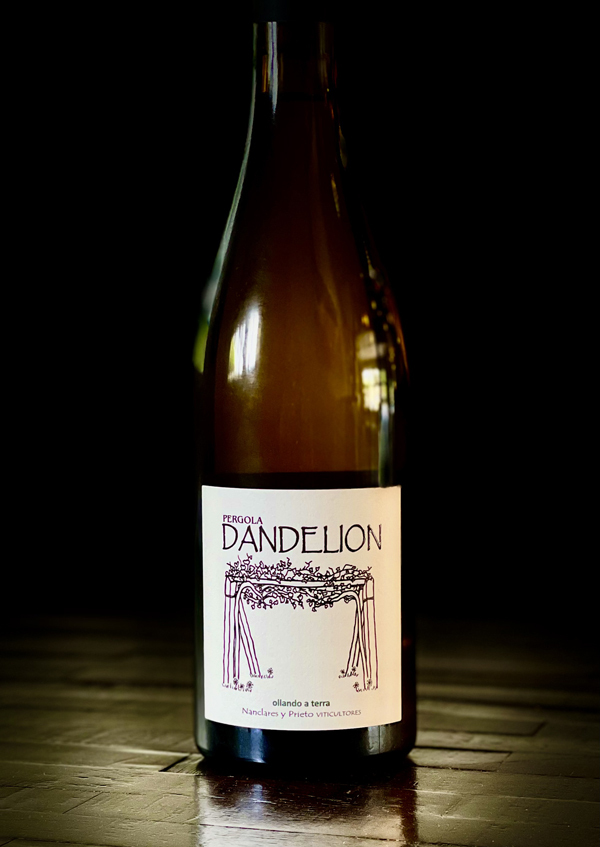
2020 Nanclares y Prieto, Albarino “Pergola Dandelion” Ollando a Terra, Salnés, Rias Baixas DO, Galicia, Spain.
The entry level, all stainless steel fermented and aged, Dandelion cuvée Albarino from Nanclares y Prieto is one of the great values in old world white wines and is a pure and terroir driven offering not to be missed, especially this 2020 that sports the new label. Still bright and salty on the light to medium bodied palate, the pale golden Dandelion Albarino is steely crisp and Chablis like with subtle fruitiness, with green apple, tart peach, muskmelon and racy lemony citrus, along with classic mineral, wet stones, hints of straw, verbena white flowers, tangy herb and subtle yeasty or almond notes. The Ocean is clearly captured with briny sea breeze always present here, good natural acidity keeps the energy up too, but there’s a vinous textural quality here, that all really appeals and gives these Nanclares y Prieto wines their signature personality. I have been seriously following Alberto Nanclares and his wines since they were first imported to the states and now with Silvia Prieto, who joined him in 2014 as a dynamic young winemaking talent, these are some of my favorite Spanish wines, mainly focused on Albarino, though they have added a couple of intriguing reds to the collection, including some excellent Mencia based wines. Coming from various exposures, unique plots and vines ranging from 20 to 45 years old, this Nanclares y Prieto Pergola Dandelion makes for a great Summer sipper and is more impressive with the native cuisine, going great to wash down steamed claims or mussels in white wine and scallion broth, fresh oysters and or rosemary accented grilled sardines.
This wine is typically sourced from 15 distinct parcels within 6 vineyards in the Salnés region around the village of Cambados, where Nanclares y Prieto is based, with old school traditional pergola trained vines that are influenced by the cool Atlantic Ocean and the decomposed granite sandy soils, which all highlights the mineral and saline character in the wine. Alberto Nanclares, who started this small winery, was convinced of and passion about holistic and organic farming, which with the closeness to the Ocean and the humid conditions make very difficult, but has been proven it can be done and that the wine is much better for it, even incorporating biodynamic methods in recent years, along with innovative natural seaweed composting. The winemaking, with the addition of the youthful talents of Silvia Prieto has taken on a highly detailed though low intervention style to promote transparency and a sense of place. For the Pergola Dandelion things are kept simple and precise with a slow whole cluster pressing of the grapes in a soft pneumatic press and fermented using native yeast in stainless tanks with temperature control with extremely low SO2 employed. The Albarino here, interestingly saw one month of batonage, the stirring of the lees, before resting on the lees for another 7 months before being bottled without cold stabilization and unfined and unfiltered, which allows for every nuance of the vintage to shine through. The upper end estate grown Albarinos here are absolutely awesome and each very unique, with some skin contact and various aging vessels, I have usually favored their Soverribas and Coccinella cru bottlings, as well as the Alberto Nanclares Estate bottling, which is a little step up on this one, though this always pleases and is a great way to start exploring the lineup here!
($26 Est.) 93 Points, grapelive
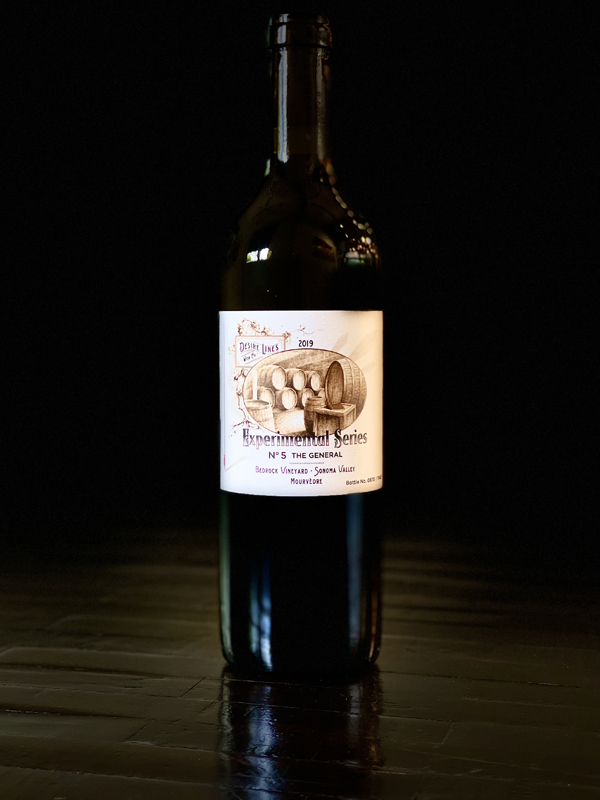
2019 Desire Lines Wine Co, Mourvèdre, Experimental Series #5 The General – Bedrock Vineyard, Sonoma Valley.
The truly outstanding Desire Lines Wine Co, Experimental Series #5 – Bedrock Vineyard Mourvèdre starts with some feral wildness, stem inclusion spice, dark florals and a tannic bite before opening up to a full bodied palate of dark berry, baked cherry, plum and lingering earthy currant fruits as well as dried sagey herbs de Provence, crushed violets, leather, minty licorice and tangy orange rind. This 100% Mourvèdre is traditionally style with a deft use of wood, favoring Cody’s Puncheons which allows mouth filling viscosity, the robust character and transparency, while also subduing the natural tannins here, a finely judged balance is his and our reward. In his day job, winemaker Cody Rasmussen, makes some of California’s best Zinfandel based reds at Bedrock Wine Company, with Morgan Twain-Peterson, and under his own label Desire Lines Wine Co, he does some fantastic Syrah and Rieslings, which I can’t seem to get enough of and I’ve wrote about at great length here, but he also has a great touch with Mourvèdre. Rasmussen has out done himself with this stunning 2019 Experimental Series #5 – Bedrock Vineyard Mourvèdre, which takes it up a notch from his outstanding Evangelho Vineyard versions, this deeply purple, spiced and dense fruited effort that has everything you’d ever want and then some more, very much a tribute to Bandol, like the famed Domaine Tempier, Gros Nore or Pradeaux, one of my favorites and to this historic vineyard in Sonoma Valley, planted in the 1880s. Cody also states, that for so many reasons, this was an especially satisfying wine for him to bottle, and he and his family are very grateful for the privilege and the opportunity to have worked with Bedrock Vineyard, for many vintages now. Coming off the old vines set on ancient soils in the northern section of Bedrock Vineyard, where it is primarily Tuscan cobbley loam(s) along with some mineral rich Sonoma volcanics, all of which adds to the special terroir nature of this remarkable wine.
Cody Rasmussen, who is a winemaker at Morgan Twain-Peterson MW’s Bedrock Wine Company, says that the Bedrock Vineyard is undoubtably (without question) the most important vineyard in his family’s life, and his favorite blocks there are the two small blocks of old-vine Mourvèdre, planted on a rocky, north-facing knoll that runs gently down to Hooker Creek to the north, and that’s what goes into this exceptional single varietal bottling. For background on the historic vines at the Heritage Bedrock Vineyard I pulled the following facts from owner Morgan Twain-Peterson, it was founded in 1854 by Generals William “Tecumseh” Sherman and General “Fightin’ Joe” Hooker, with Morgan adding that it has grown grapes for over 150 years. Following the first epidemic of phylloxera in the mid-1880s, the vineyard was replanted in 1888 by Senator George Hearst—a mining magnate, an early father of California, and the father of publisher William Randolph Hearst. Now it is about a 120 planted acres in the heart of the Sonoma Valley, mostly known for its 35 acres of old vines, pre-1890 Zinfandel, Carignan and its Mataro (Mourvèdre), most of which date back 120 years, but has 17 other varieties inter-planted on the property, including some rarities, like Alicante Bouschet. Going on, Cody reveals that, the 2019 Bedrock Vineyard Mourvèdre was fermented with 40% whole cluster and raised in barrel for fifteen months without racking, in a combination of 228L and 600L barrels. The stem inclusion adds a lovely bit of spice to the nose, the subtle carbonic adds a little flesh to the palate, and the combination of barrel sizes teases out both breadth and tension in the finished wine. Befitting Bedrock Vineyard, this is a powerful wine, perhaps the richest (gripping) wine that Rasmussen has made to date for his and his wife Emily’s Desire Lines Wine Co. label, which saying a lot considering how monumental his Shake Ridge Syrah and his super limited Lichau Hill Vineyard Cabernet Sauvignon are! To say this wine and the Bedrock Vineyard are special, is a crazy understatement and I suggest getting on the mailing list here first and then chase down all of this one, an exceptional value, you can find, and the other Desire Lines offerings!
($38 ESt.) 95 Points, grapelive
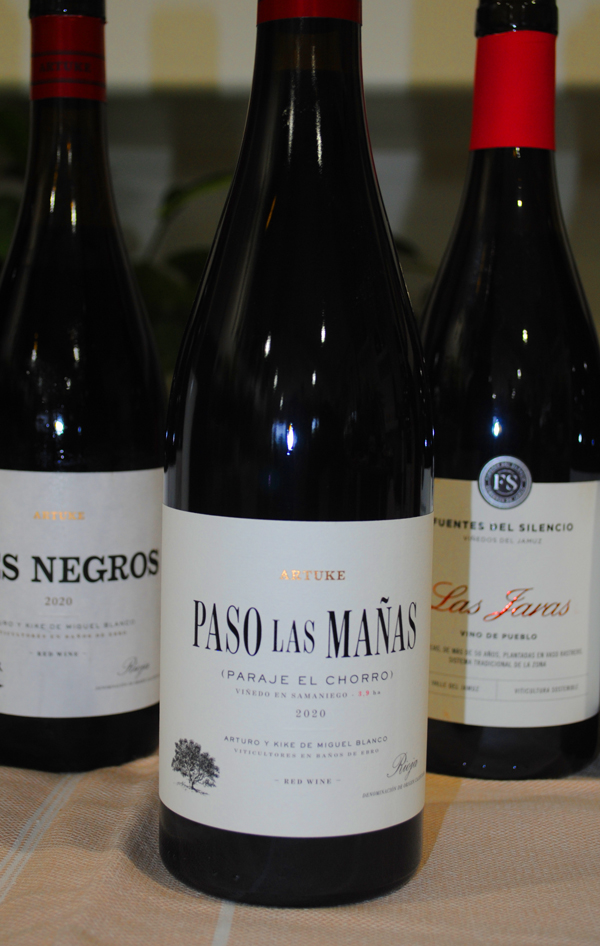
2020 Bodegas y Vinedos Artuke, Paso las Mañas, Rioja Tinto, Paraje el Chorro, Rioja, Spain.
The deep red/garnet 2020 Artuke Paso las Mañas Rioja Tinto is the most serious, rustic and tannic of the releases I’ve tried so far from the brothers Arturo and Kike Miguel and maybe the most rewarding to experience in glass. It needs to go with hearty country cuisine, with its firm layering and medium/full palate of blackberry, mulberry, plum and cherry fruits, which are supported nicely by savory/earthy tones and accented by mineral/graphite tones, minty herbs, delicate dark florals, anise, tobacco leaf, cedar and red spices. Give this wine air and space to unwind and the more graceful and pretty side comes alive, but there is always a sense of power and taut structure brooding in the background, is the case in a wine of this caliber. The Paso las Mañas brings its unique single parcel character into focus, which was enhanced by the small yields of holistically grown grapes, mainly from old school Tempranillo bush vines, and the low intervention winemaking, including traditional foot stomping and hand punch downs. All wines of Artuke, as the winery notes, come from calcareous sandstone (similar in structure and mineral makeup to sandstones from Barolo and Barbaresco) with varying degrees of sand and clay, that adds to the distinctive of each plot. A good portion of Graciano is co-fermented in these wines as well, adding complexity and freshness to this one from younger vines at more than 700 meters of elevation, its wind swept, pebble-covered clay slope is the highest in Samaniego area, giving intensity and energy, as seen here. I also hope to try their old vine Finca de los Locos, the terraced site overlooking the Ebro River, which Arturo and Kike’s grandfather bought in 1950, but it is very hard to come by.
Artuke is a small winery located in Baños de Ebro, a village in Rioja Alavesa on the banks of the river and was founded in 1991, making it a younger bodega in this historic old region. As mentioned in my prior reviews on this new generation producer, Artuke’s importer, The Source Imports, says vigneron Arturo Miguel is only the second generation of his family to grow and bottle their own wines since the end of the Franco dictatorship, and after he took control of the family’s vineyards, he converted them all to organic farming and applied techniques in the cellar that might be considered an old school style. Again as mentioned before, like Telmo Rodriguez of Remelluri, Artuke’s Arturo Miguel is changing the way the world thinks about Rioja, which was for hundreds of years controlled by the big Bodegas and that dictated the style and flavor, that was led by American oak influence. Now we are seeing a fuller range of the region’s character and winemakers like Miguel are producing terroir driven wines, from biodynamic vines in various Paraje (parcels) at high elevations. He uses exclusively older barrels, of different shapes and sizes, to promote transparency in each of the wines and highlight the differences between the specific vineyard wines, like his Pies Negros, which I reported on earlier, and this Paso las Mañas. Arturo uses mainly stainless steel for the wine’s fermentation, 100% indigenous yeast, with temperature controlled primary and malos with good tannic extraction and then matured in mainly a combination of used large and small format French oak casks. There’s a lot to admire here in these uniquely singular Rioja expressions, from the Miguel brothers at Artuke and I highly recommend their full range of wines, with the Beaujolais like ARTUKE carbonic Tempranillo, with its racy and appealing whole-cluster and cement vat aged purity, the elegant Pies Negros Rioja Tinto and this gripping Paso las Mañas being my favorites so far!
($54 Est.) 94 Points, grapelive
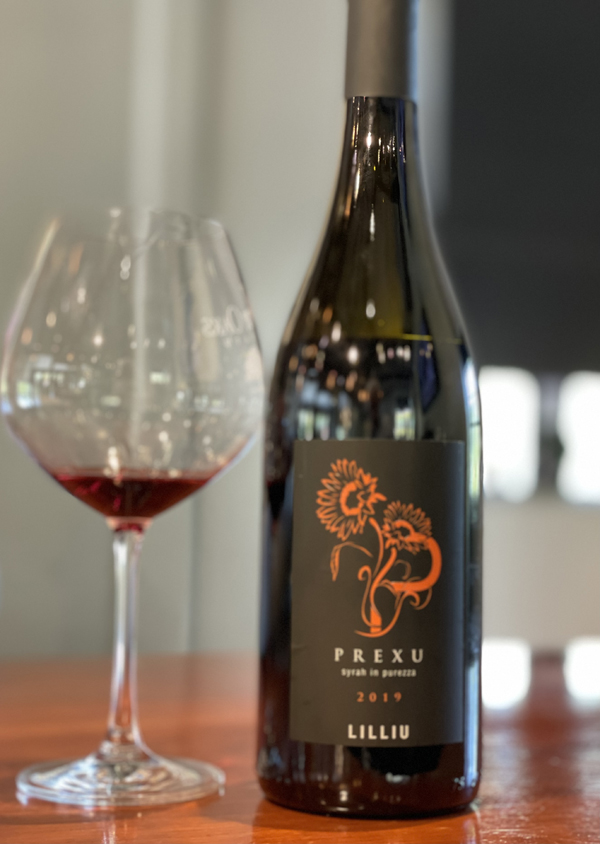
2019 Cantina Lilliu, Syrah, Prexu, Rosso IGT, Isola dei Nuraghi, Sardinina, Italy.
Cantina Lilliu, run by Pietro Lilliu, is a small family winery based in Marmilla, an area that isn’t widely known for wine, about 35 minutes north of Cagliari and is in the middle of the island without any much if any Mediterranean influence, but Pietro is making some beautiful wines from his naturally farmed tiny estate, including this super rare 100% Syrah Prexu bottling. While known locally for his distinctive offerings and mainly his work with native varietals, like his Cannonau and his blended red wine, not all the common here on Sardinia, this Syrah in Progress, as he calls it, delivers a lush and supple full bodied palate of dark wild berries, plum, black cherry and fig fruits, as well as mocha, anise, lilacs, delicate peppery spices, dusty stones, cola and cedar accents. The vinous mouth feel and the length are quite impressive and the ripe sweet tannin here make for a crowd pleasing red wine that really begs for a robust and meaty dish to thrive. Time in the glass allows this dark garnet and ruby edged Syrah “Prexu” to reveal more depth and savory complexity, but without any classic Northern Rhone (Cornas) edgy stemmy or feral funk, this wine is well rounded and smoothly polished from start to finish, more like a new world version. The terroir is hilly and with sandy granite based soils mainly, which does suit Syrah very well and there is lots of sunny ripeness in the wines, which are crafted with a minimalistic winemaking approach to capture the essence of place.
Pietro Lilliu, a talented young vigneron, believes firmly in organic and holistic winegrowing, says that being in sync with nature and creating an ecosystem of different trees and plants has allowed him to carve out his own slice of paradise in Sardegna’s unforgiving terrain, according to his importer. His two hectare vineyard, green and alive, stands out in an arid and barren landscape with the vines digging deep to get life giving moisture. Lilliu’s wines are mainly done indigenous yeast fermentation in tank with the Syrah seeing uniquely close to 16 months in bigger French oak barrels, while most only see stainless steel aging to preserve freshness and purity. All of the grapes are harvested by hand, most all de-stemmed, and the wines typically, according to the winery, will spend no more than 10 days in contact with the skins at low temperatures as not to extract too much tannin, which allows this Syrah to be so enjoyable in its youthful stage. Pietro also does some very interesting whites, which I hope to someday get a chance to try, especially his 36 hour skin contact Malvasia and his non malo-lactic Cannonau in Bianco (white wine made from the red grapes) that looks intriguing. The mentioned red blend here, called Chida is made from Cannonau (Grenache) 60%, Bovale (a rare native grape) 30% and 10% Syrah, which is not common here on Sardinia, but which shows promise, as seen in this Prexu. These wines are extremely hard to get in the states, and I’m grateful to my Sardinian friend Giussepi Cossu, who brought this one home with him after his last visit to his homeland, but I recommend keeping an eye out for them!
($35 Est.) 92 Points, grapelive
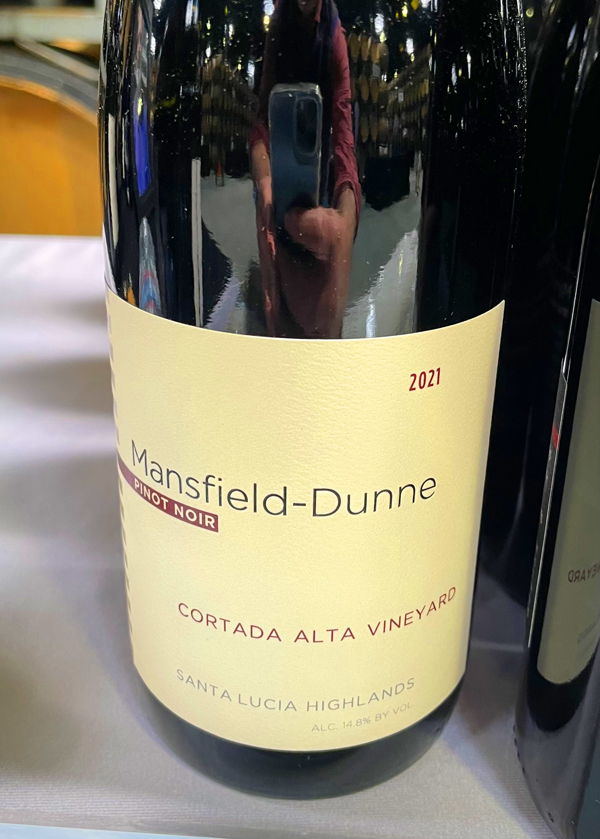
2021 Mansfield-Dunne, Pinot Noir, Cortada Alta Vineyard, Santa Lucia Highlands.
One of the sleepers at the Santa Lucia Highlands Sun, Wind & Wine event this May was the wines by Mansfield-Dunne winery, all of which impressed, but especially their Cortada Alta Pinot Noir from the 2021 vintage, with its deep inviting garnet/ruby hue in the glass and silky texture on the ripe medium bodied palate that delivers a pretty range of red fruit flavors, subtle wood notes and fresh energy. I have been following this small family winery for a few years now, really liking the 2018 and 2019 wines, but this 2021 Cortada Alta Pinot is a step up in all areas with beautiful lush black cherry, plum, bramble berry and Mission fig fruits, along with hints of earth, briar, rose petals, cola and shaved vanilla. The youthful nature and vivid acidity keeps the bold richness focused and teases its potential, which I would guess as being a wine that will reward some extra aging, somewhere down the road, maybe 3 to 5 years, this pleasing bottling will get even better. I think I prefer the high elevation Cortada Alta Pinots in the latest collection of Mansfield-Dunne, there seems a bit more elegance and structure versus the Peterson Vineyard, which offers a more satiny and plush profile in the wines I most recently tasted, though I still highly recommend them all, and the lush and vinous Chardonnays here are not to be overlooked either, offering up quality almost on par with the Pinots.
The Mansfield-Dunne winery, as noted here in my prior reviews, was started back in 2011 and has quietly gained in popularity and is producing a solid selection of wines from their two Santa Lucia Highlands estate vineyards, farmed organically, the lower Peterson Vineyard and the Cortada Alta Vineyard, planted in 2014, which is one of the most distinct in the region. The story of Cortada Alta, the highest vineyard site in the Santa Lucia Highlands, starts in 2009 with the Peterson family finding 300 acres of rugged scrub land that was a dream come true and this property would become one of the most unique in the region with plantings of Calera, Pommard, Swan, 2A, 23, 667, 828, and 943 Pinot clones. Again as mentioned before, Cortada Alta has some pretty steep slopes, with some at a 44% grade, at close to or above 1,500 feet up, and it’s set on the SLH’s sandy loams with clay and decomposed granite. This site gets a constant cold blast of sea air and loads of sun, making for intense conditions and lots of fruit density, while still enjoying natural acidity, making for balanced and compelling wines, such as this one. The winemaking here, led by Ed Kurtzman, ex-Roar and Freeman, is all about taming this wild site and allowing its true personality to shine through, so Mansfield-Dunne carefully sorted the Pinot grapes and gently cold macerated them in small bins and employed daily hand punch-downs before maturing the wine in French oak for 14 months, using about 60% new wood to tame the slightly more tannic mountain fruit. This is a winery ready to break through and these delicious 2021s are proof and should not be missed.
($48 Est.) 93 Points, grapelive
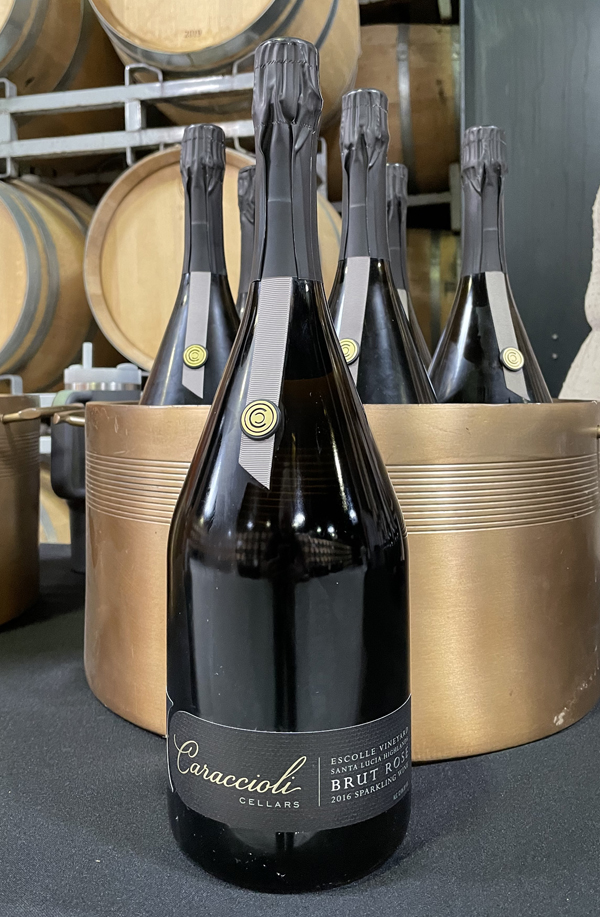
2016 Caraccioli Cellars, Sparkling Brut Rosé, Escolle Vineyard, Santa Lucia Highlands.
Tasted out of magnum(s) at the Santa Lucia Highlands Sun, Wind & Wine event, this 2016 Brut Rosé vintage sparkling wine by Caraccioli very much impressed, eclipsing previous releases with more depth and intensity on display, but with all the pleasure and luxuriousness you’d ever want from a true Champagne style bubbly. The total Caraccioli collection has really seen a step up with the selection of Pinots, Chards and Gamay all being fabulous bottles, joining in on the fun with the two main sparkling wines that are some of the best in California and are true grower producer offerings. Since making a slash with their no compromise Methode Champenoise almost a decade ago now, this label and vineyard has become one of the most acclaimed in the region and these latest releases are very rewarding treats, especially this exceptional Brut Rosé with its energy, mineral driven core and elegant complexity making utterly delicious. Delicately pale salmon/pink in the glass and with tiny effervescent bubbles this vintage Brut Rosé is very inviting and rewarding on the dry and crisp palate with a classic steely Champagne profile of lemony citrus, tart peach, quince and faint strawberry fruits, along with a subtle yeasty doughy brioche, hazelnut, wet stone, a light rose water essence and clove spice. Even with the long lees aging, creamy mouse and mature flavors the 2016 remains impeccably vital and fresh, making me think it will age well and it goes great with a wide range of cuisine, from briny oysters, caviar and or more substantial dishes. I most recently tried Caraccioli’s Gamay and Passtoutgrain (Gamay/Pinot blend), of which I thoroughly enjoyed and reviewed here at grapelive.com, and not long ago I celebrated with their regular Brut Cuvée, so it was notable that this Brut Rosé surpassed my expectations and I highly recommend chasing it down too. Thanks to Scott Caraccioli for sharing this and his very limited Passtoutgrain with me and graciously explaining in detail the wines and his excitement with some future vineyard developments, that includes a new clone of Cru Beaujolais Gamay Noir.
The Escolle Vineyard, planted in 2008, mainly to Chardonnay and Pinot Noir, as mentioned in my prior reviews, has a dizzying number of blocks and clones, with more caming online, including more Gamay, which is showing some real promise here. Located in the cool northern corner of the AVA , Escolle is set on decomposed granite based sandy loams with cold wind always blowing down off the Monterey Bay, all making for a long growing season and helping keep vibrant acidity in the grapes, that is the life’s blood of serious Sparkling wines. With the help of the late Michel Salgues, who had worked for Champagne house Louis Roderer for most of his career, including the last nineteen at Roederer Estate in Anderson Valley, where he was the founding winemaker, Scott Caraccioli quickly gained a solid reputation for his grower producer style bubbly and is now considered one of the best producers in California of Champagne method sparkling wines, which follow a very traditional regime from the vines to the bottle, with early picks to long lees aging on these elegant and lively wines. Scott first does a light pressing of the cool and fresh juice in small lots, with the winery noted that they do 120 gallons (well below what the law in Champagne mandates: 150-180gl.) at a time. The Cuvée and Rosé see no skin contact and mostly gets some stainless, though some of the lots are fermented in barrique, with all of the primary fermentations being spontaneous, done with ambient yeasts. The Caraccioli Brut Rosé undergoes the same processes and initial blend of 60% Chardonnay and 40% Pinot Noir, as their Brut Cuvée. The difference in the Rosé is that Scott hand picks of a barrel of Pinot Noir still wine to blend into the final Rosé to give this bottling its delicate pink hue. To enhance complexity and depth the young wine is barreled down-post fermentation for a few months, taking as Caraccioli explains, a little rest before blending, though in a few years there is some stainless aged juice. The Caraccioli bubbly sees a long élevage, as mentioned, with a full four years on the lees, and then they are held back after disgorgement, under cork, for about two more years before release, making for serious and desirable stuff indeed!
($57 Est.) 95 Points, grapelive
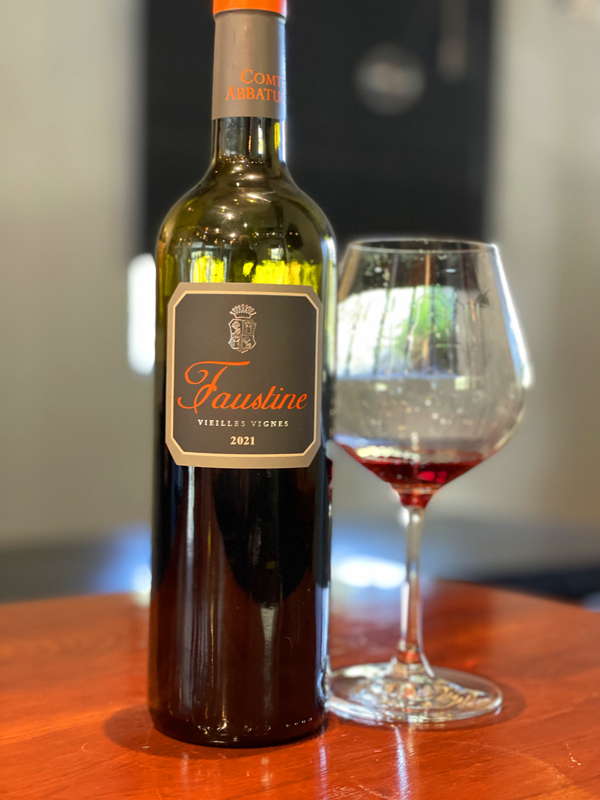
2021 Domaine Comte Abbatucci, Cuvée Faustine Rouge, Vin de France, Ajaccio, Corsica, France.
The beautifully pure and pristine ruby and garnet hued 2021 Cuvée Faustine Rouge, made from about 70% Sciaccarellu and 30% Niellucciu, Corsica’s indigenous grapes, which are both Tuscan (Etruscan) descendants where they go by the names Mammolo and Sangiovese respectively, is an outstanding wine. This tasty treat from the innovative and passionate Jean-Charles Abbatucci, who might be the most respected and admired vigneron on Corsica, makes for an excellent year round red that goes sublimely with rustic and simple cuisine. Grown, all biodynamic, on pure granite slopes in the Ajaccio region these grapes are from mature vines providing outstanding quality and depth, as this 2021 shows with its fabulous layering and balance that highlight the distinctive terroir and the deft touch employed in the Abbatucci cellars. This beauty was, as per normal, fermented and aged in a combination of stainless steel and cement tanks to promote ultra transparency and freshness with loads of vibrant strawberry, tangy currant, bramble berry and red plum fruits on the ripe medium bodied and silky tannin backed palate, along with seeped rose petals, anise, light earthy elements, herbs de Provence and a hint of orange peel. This crisply detailed red reminds me a bit of Freisa and or Ruche with the lovely aromatics, but its Mediterranean soul shines through in the supple and vinous texture, this vintage is very seductive stuff and a reasonable value for the exceptional, much in demand Comte Abbatucci. This elite winery does just about 5,000 cases a year and highly sought after, especially in the states where they have an almost cult like status, helped by the exploits of their famous importer Kermit Lynch, who has been a great advocate for Corsican wine and culture over the last two decades, and who definitely got me into these intriguing wines.
A visit, which I hope to do sooner versus later, to Ajaccio, capital of Corsica, is a must and once there I hear from famed importer Kermit Lynch, that you can’t get very far without seeing the name Abbatucci and the winery, founded in 1950, that now bares his name. There are streets, monuments and plazas that carry the name, which is normal given the fact that the historic General Jean-Charles Abbatucci, who was from Ajaccio was a hero of the French Revolution and comrade in arms of another local hero, Napoléon Bonaparte. While that in its self is worthy of a journey to Corsica, the Domaine Comte Abbatucci wold be a great bonus, this all biodyamic estate features some of the most ancient clones of indigenous grapes, which Abbatucci sourced cuttings from the remotest old vineyards on the mountainous interior of the island and planted them on old windy swept terraced plots that are surrounded by mature olive groves and untouched natural forests of which provide the perfect environment for organic and holistic grapes, which also get to hear traditional Corsican polyphonic songs, which Jean-Charles Abbatucci, a direct descendant of the General, plays over loudspeakers for the vines benefit. In the cellar, his musts get to continue to listen to the music as they ferment and age in the cave! While Sciaccarellu, Niellucciu and Vermentinu (Vermentino), all grapes that almost certainly were brought to Corisca in ancient times make up a large portion of the wines, Domaine Comte Abbatucci is now dedicated to true native only varietals, including rarities like Carcajolu-Neru, Barbarossa, Montanaccia, Morescono, Morescola, Biancu Gentile, Carcajolu Biancu, Paga Debiti, Riminese, Rossola Brandica and Biancone, some of which are only found here on Corsica as far as we know. The top small lot cuvées here are outstanding and pricey bottles, but this Faustine lineup, the Vermentino, the excellent dry Rosé and this delicious red are great ways to discover the unique character of Comte Abbatucci, and I highly recommend them!
($44 Est.) 93 Points, grapelive
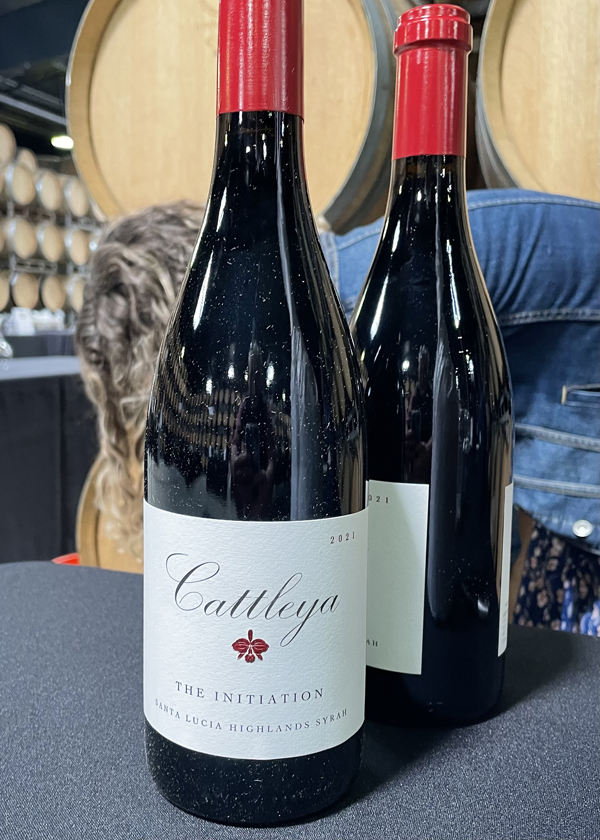
2021 Cattleya Wines, Syrah “The Initiation” Soberanes Vineyard, Santa Lucia Highlands.
The Cattleya “The Initiation” Soberanes Vineyard Syrah is without question one of California’s greatest wines and this 2021 edition maybe the best yet from the hugely talented Bibiana González Rave-Pisoni, who has crafted a masterpiece of a wine with wild and sensual personality, eclipsing some of legendary wines of the Northern Rhone where this wine got its inspiration! Few wines can match this wine’s exotic beauty, complexity, intensity and sultry pleasure on the palate, it delivers all of your Syrah desires in one fabulous package of heady floral aromatics, feral earthiness, hedonistic fruit concentration with an almost sexual tension between opulence and savory elements. The youthful and robust palate shows a full bodied attack of blackberry, blueberry, damson plum and cherry fruits, backed up with cracked peppercorns, crushed violets, graphite, cedary toasty oak, dried herbs, tarry licorice, mocha and cured meat accents. I tried Cattleya’s “The Reward” Pisoni Syrah made from a unique old clone (Serine) along side, and while both are thrilling wines, this wine goes the extra mile in all areas and will aged well, that I’m totally convinced of and I hope I get a chance to re-visit it in 5 to 10 years. There’s a purity and class here that is highly appealing, but also some partial whole cluster edginess and pop here that adds to that thrill. Bibiana gave this purple/black hued Soberanes Syrah a 10 day cold soak and a slow maceration and primary fermentation lasting about three weeks with gentle punch downs and pump overs daily until it was dry, then it was pressed to French oak, 67% new, where it matured for 16 months. The Initiation, Bibiana says, marks the true beginning of a quest, one she took, to Côte-Rôtie, home to some of the world’s most exquisite Syrahs, was where she worked her very first harvests and made her first wines. Now her goal with her Pisoni family vines is to create a Syrah of great beauty and finesse that shows this terroir, but honors where she’s been. The Soberanes Vineyard, on decomposed granite and sandy loams, in the Santa Lucia Highlands captures the essence of the region with its cool Pacific Ocean breezes and chilly nights allowing for long hang time for the grapes, giving deep ripe flavors and a lift of natural acidity.
Bibiana González Rave-Pisoni is an unlikely master of vine, coming from Colombia, a country almost without any grape vines, but, in her childhood she says, a few sips occasionally stolen from her father’s wine glass were enough to inspire an all-consuming dream—to become a winemaker and as soon as she could she packed her bags a went to France! While in France she quickly took to winemaking like a duck to water, ultimately earning a BTS degree in Viticulture and Enology from Cognac, which was followed by a degree in Enology from the University of Bordeaux, she adds, graduating with honors. After which she was well on her way to stardom, working the sheer granite slopes of Côte-Rôtie at Domaine Stéphane Ogier, then she helped at Domaine Clusel-Roch, before returning to Bordeaux and the famed estates of Château Haut-Brion and La Mission Haut-Brion. If this sounds amazing for a young Colombian winemaker, it was only the beginning of her incredible journey which has seen her excel in Burgundy, Alsace, Cognac and even in South Africa before turning her attention to California, where she is one of the state’s absolute best winemakers. While in California she met and married another rising star winemaker, Jeff Pisoni of the famous Pisoni Estate in the Santa Lucia Highlands and the two have become an awesome team, producing wines together under their Shared Notes label. In 2011 Bibiana’s Cattleya label was born and by 2014 she had become winemaker of the year, focused almost exclusively of Syrah vines at the Pisoni’s Soberanes Vineyard, though she had at that time helped Pahlmeyer’s Wayfarer become a world class producer of Chardonnay and Pinot Noir. The Soberanes Vineyard, planted last among the Pisoni crus, has proven to be one of the top sites in the highlands and while I love the Chardonnay and Pinot from here, I truly believe Syrah, which is mainly Alban (Cote-Rotie) clone, is the best grape here. The Orchid or Cattleya is Colombia’s national flower, hence the name for Bibiana’s solo project, which includes her heroic Syrahs as well as her regional bottlings of Chardonnay and Pinot Noir, plus her Alma de Cattleya line of outstanding value offerings of Pinot, Chard, Sauvignon Blanc and Cabernet. If you’ve some how missed Bibiana’s wines, now is a great time to discover these great wines and I highly recommend joining her mailing list, as these are exceptionally limited offerings, especially her Syrahs like this one that is totally mind blowing!
($70 Est.) 98 Points, grapelive
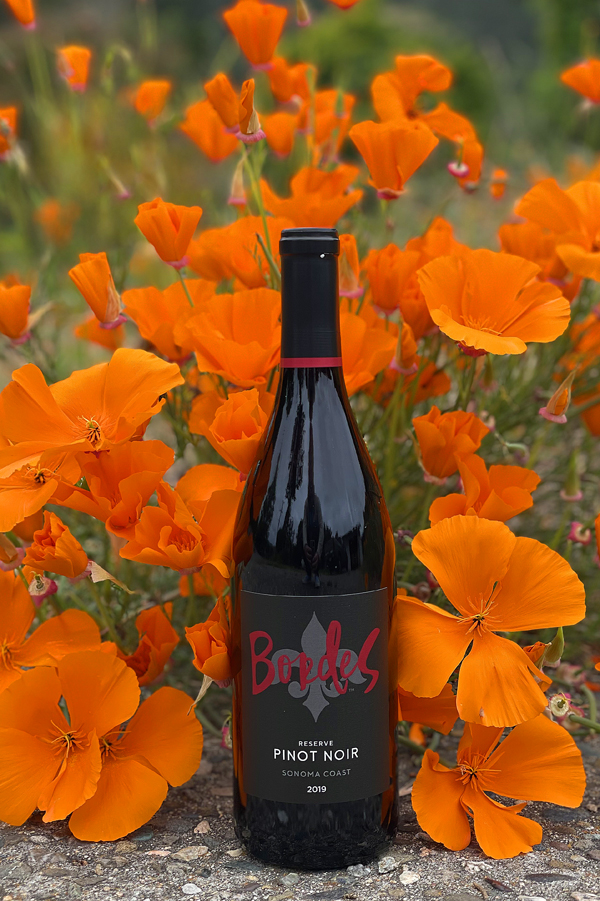
2019 Bordes, Pinot Noir, Estate Reserve, Champlin Creek Vineyard, Sonoma Coast.
I first tried the Bordes Pinot Noir a few vintages ago and enjoyed what Stephen and Carolyn Bodes had created with the help of a few friends at the very beginning of the label, and now they have the full family on board to run this small family winery. This 2019 vintage, which was made with the help of Bowdoin Pfeifer, shows a richer and silkier palate than past efforts with a full array of Pinot character and an extra dimension clearly on display. The Bordes with their daughter’s Megan and Rachel taking on bigger roles now, with Rachel (now making wine at Ram’s Gate in Carneros and doing a small personal project) having a hand in the winemaking and Megan doing the marketing and branding for this 500 case a year winery now, looks to have taken a step up and I look forward to trying Rachel’s solo efforts in the future releases. The 2019 Bordes Reserve Pinot starts with toasty hints, red berries and dark florals leading to its satiny smooth medium bodied palate that shows black cherry, raspberry, plum and candied orange fruits, along with soft wood notes, dried herbs, fennel, delicate earthiness, bright spicy cinnamon and shaved vanilla. This vintage is plush and vinous, but lifted by fresh acidity and feels divinely weightless on the lingering finish. I think this 2019, with its freshness and moderate alcohol, 13.7%, is going to continue to improve in bottle for the next 3 to 5 years, plus it’s a nice value considering there was only 200 cases made.
The Bordes family, who specialize in small lot Pinot Nor have a 23 acre ranch at Champlin Creek, which sits between Carneros and the Sonoma Valley AVAs, mostly planted to Pinot Noir, with 10 acres planted to Pommard clone 5 and 1 acre planted to Dijon clone 115, along with a selection of Chardonnay, with clones 76 and 15. The soils here are complex too, with ranch seeing the full range of loams, sandstone, Sonoma volcanics and California shales, along with marine sedimentary and clay elements that allows a deeper ripe fruit character to shine through. This site is breezy and gets cooling influences from the Petaluma Gap and lower night time temperature that really helps with acidity and color development in these Pinots, which is lovely and inviting. The wine was handcrafted from the Bordes’ private sustainably farmed estate at Champlin Creek and was done with traditional low intervention methods and restraint. Their Pinots all are fermented in small half ton bins, with daily punch downs and these gentle macerations extract a superb structural quality and a (Pommard clone?) dark ruby color, then they are aged in French oak barrels, mostly a couple times used, for 8 months. There’s a lot of potential here and I look forward to following these wines as the vines mature in ground and also watch to see how Rachel grows as a winemaker, it’s exciting times for the Bordes, I highly recommend checking them out, in particular their Rosé, Chardonnay and this tasty Pinot Noir Reserve.
($45 Est.) 93 Points, grapelive
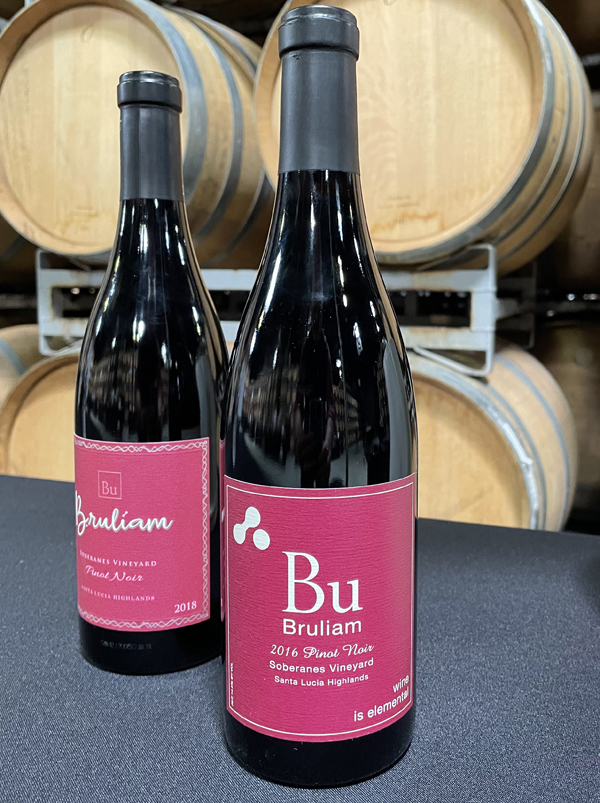
2016 Bruliam, Pinot Noir, Soberanes Vineyard, Santa Lucia Highlands.
The latest Bruliam Soberanes Pinot Noir fits perfectly into winemaker Kerith Overstreet’s mantra of it takes great grapes to make great wines, with this vintage proving excellent for her style of Pinot with a gorgeous array of satiny fruit, delicate spices, lovely aromatics and luxurious mouth feel, it is a wine the definitely rises above norm and looks set for top notch drinking for the next 5 to 7 years. This dark ruby/garnet hued Bruliam Pinot very much excites from the glass with black cherry leading the way, along with plum, crushed raspberry, tangy currant and candied orange fruits that are backed nicely with mocha, mineral tones, wild roses and baking spices. There’s a lot going on here, but everything folds together in a seamless, pleasure filled and rewarding wine that delivers exactly what these grapes from this Pisoni farmed vineyard are capable of doing, with rich depth, structure and intensity on the beautifully balanced medium to full bodied palate. This wine has turned out to be a very rewarding treat and I highly recommend these Bruliam wines and admire the ethics here, the passion and the humility, this is winery that deserves attention. Overstreet believes in giving back and at Bruliam Wines, they have always subscribed to a strong charitable mandate, with solid history of donations, which now total well over 80 unique charities and communities being supported by sales here. In recent years Bruliam has added a few new wines to the lineup, with Russian River and Petaluma Gap Pinots adding depth to the collection.
Dr. Kerith Overstreet, who’s series of Soberanes Pinot started with her 2010 vintage, says she is honored to be able to get the grapes from this vineyard, and she does her self proud, especially with her latest vintages with the 2018 and this 2016 being exceptional, paying tribute to the Pisoni and Franscioni families that have been farming in the Salinas Valley for three generations. According to Kerith, as she has mentioned to me many times, nobody does SLH better than the Pisoni-Franscioni collaboration, with Mark Pisoni’s team setting the standards for quality in the region, and who could argue, the grapes from their collection of Grand Cru vineyards, Rosella’s, Sierra Mar, Pisoni Estate, Garys’ and Soberanes are legendary. Overstreet, now with over a decade of making wine from this vineyard, adds that SLH Pinot Noirs are unapologetically Californian. Kerith’s Pinots see a small percentage of whole cluster, usually about 10% or so and her wines matured a bit longer that is the norm in barrel and bottle. As noted in my prior reviews, These Bruliam Pinots see a modest amount of new oak, which adds to the luxurious mouth feel and sweet toastiness, and I believe as she has done in the past she used a Rhone submerged cap technique. This process is to extract more pigment and not get any extra harsh tannins and the results show in the dark hue in glass of this still improving Pinot to shine seductively and impactfully in the glass. I gotta say, even though 2018, reviewed last year, and the 2019 are current here at Bruliam are outstanding, this 2016 is really hitting its stride and showing well and is still deliciously fresh and firm, it should keep providing joy for many years to come.
($53 Est.) 93 Points, grapelive
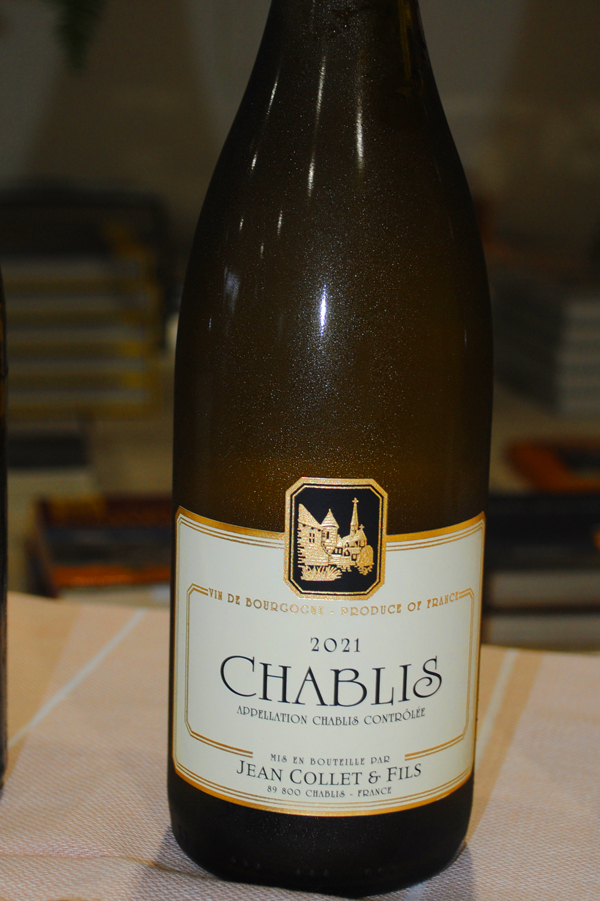
2021 Domaine Jean Collet, Chablis AC, White Burgundy, France.
Each one of the three Collet Chablis wines I tried recently were outstanding bottles, but totally different and distinct in character, with the 2020 Montmains Premier Cru, maybe my favorite, showing an appealing subtle profile and intense mineral core, while the Vaillons was more showy, concentrated or extroverted in the same vintage, and this regular Chablis AC from the 2021 vintage showing well, though it was a touch greener and less flamboyanet, but classic in the purist sense. The mineral driven, brisk and lime led 2021 Jean Collet Chablis AC by Romain Collet delivers a vibrant medium bodied palate with green apple, tart peach, lemon and pear fruits along with wet stone, saline, zesty herbs, chalky oyster shell and reductive match stick or hazelnut note. It’s widely known that Romain Collet, has turned this domaine into a star property, by putting new ideas to the test in the cellar and the vineyards, he employs now natural (indigenous) yeast fermentations, with his vines seeing exclusively organic and biodynamic farming practices, all of which has made huge improvements to the wines. The terroir influences come from the combination of Kimmeridgian limestone marls and Portlandian limestone scree with various topsoil mixtures of clay and rocks derived from the limestone bedrock, which Collet’s importer, The Source says is classically Burgundian in general bedrock type and topsoil constitution in their unique parcels, especially in this regular Chablis AC bottling. This wine is nicely tension filled, but has a rounded texture that makes for a wine of substance and it is a terrific bargain, as prices of quality small lot Chablis have been going up rapidly in recent years with all the hail and frost damage in the region, driving up demand.
Jean Collet started Domaine Collet in 1954, as I’ve noted in prior reviews, and led the family business, which dates back to about 1792, before turning over to his son Gilles, who turn handed it over to current vigneron and winemaker Romain, a star in the region and has raised the game at this once little known estate. Romain changed just about everything here, he brought completely fresh ideas to this historic winery including conversion to organic and biodynamic farming and all natural fermentations. There has been a huge jump in quality and expression here since 2008, when Gilles let Romain loose in the vines and the cellar and these 2020s and 2021s are some of the best yet that I’ve had. Collet has some quality parcels, Valmur and Les Clos Grand Crus being the big stars obviously, but their selection of the 1er Crus, Montée de Tonnerre, Vaillons, Montmains, Butteaux and Forêts are all fabulous and Romain treats each one with its own special care and winemaking techniques. The vineyards for this wine, according to the domaine, are principally come from Villy, located in the north of the appellation, followed by a north-facing section on the Montmains (1er Cru) hill facing the Vaillons main face, inside the Vallée du Valvent, Préhy and the Valley de Chigot, that all have kimmeridgian limestone marl bedrock and clay topsoil elements. The Chablis AC sees only stainless steel ferments, with cold temperature control, and aging with mainly native yeasts, though sometimes a selected culture is needed to finish some lots and there is no lees stirring, though the wine does complete malo-lactic, and is bottled with a light filteration. This value packed 2021 is a vibrant treat to enjoy over the coming 3 to 5 years and is especially good with creamy soft cheeses and or seafoods.
($32 Est.) 91 Points, grapelive
Grapelive.com – May 2023
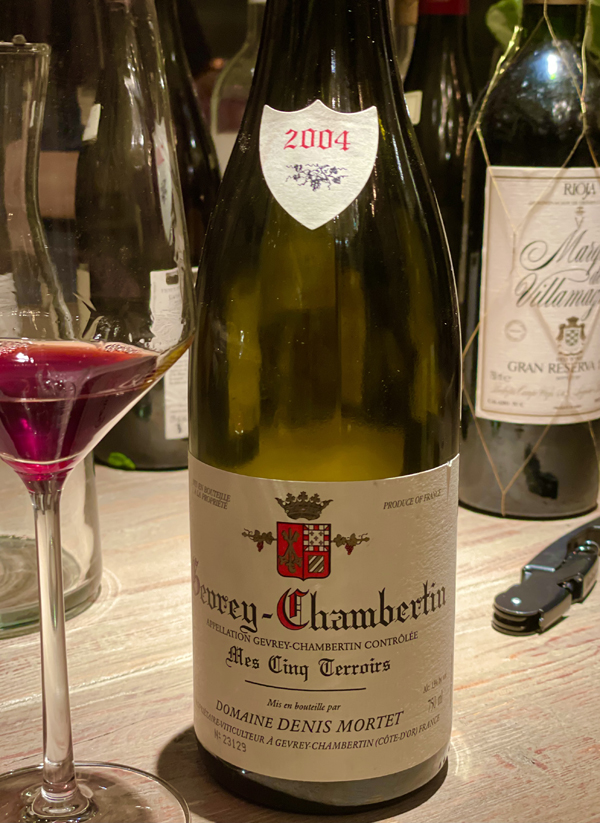
2004 Domaine Denis Mortet, Gevrey-Chambertin “Mes Cinq Terroirs” Red Burgundy, France.
In a week reviewing nicely aged and or mature French wines, the 2004 Denis Mortet Mes Cinq Terroirs” Gevrey-Chambertin seemed a perfect way to finish, its remarkably fresh and shows off a vivid array of pure red Pinot fruits and snappy herbal nuances, dried spices, floral notes, an earthy element and subtle mineral tones in a fine medium bodied food friendly Burgundy. Some secondary tertiary flavors are starting to emerge with hints of autumn leaves and Earl grey tea nicely playing background roles to black cherry, reduced strawberry and wilted rose petals, all of which are lifted by the vintage’s acidity that is still present and lively and the mountain herbs that is pretty striking, reminding me of some of my recent experiences with Domaine Dujac’s village offerings. Sadly we lost Denis Mortet in 2006 and it is amazing that his family, devastated by the loss, were able to keep things going here. I have found modern vintages, by the late Denis Mortet’s son Arnaud very faithful to his father’s wines, and he has even maybe raised the game with his passion and commitment. This wine, made before the untimely death of Denis, is a fitting tribute and time capsule of his style with a lovely silken, well mature example. As the name suggests, this Gevrey comes from tiny old vine parcels in five different terroirs with the appellation all with classic pebbly and compact soils with an underpinning of limestone and clay. A lot has been done here to improve concentration and there’s a big focus on small yields here with the idea to made ripe wines that have age worthy structure and are both seductive and soulful in style. This glowing ruby Burgundy will go a few more years and while I doubt much more of this vintage exists in the wild, I do recommend searching out Arnaud’s latest versions, especially from the 2020 vintage, which looks set to be a classic year.
The Domaine Mortet was originally founded back in 1956 by Arnaud’s grandfather, but made famous by his dad, who impressed famed importer Martine Saunier (who personally introduced me to these wines) that put his wines into her amazing portfolio of Burgundies that included Domaine Leroy. The Denis Mortet wines fast became fan favorites and offered a tremendous value, and from the mid nineties Mortet gained cult status and I remember being very excited to my first set of his wines from the 2001 and 2002 vintages, so this look back at his 2004 took on a little more meaning. The Mes Cinq Terroirs Gevrey-Chambertin, always a favorite, is sourced from, as importer Martine’s Wines notes, from six hectares of five terroirs: En Motrot (located between the church and Château de Gevrey-Chambertin, immediately after Clos Saint-Jacques and at the end of Lavaux Valley), Au Vellé (situated to the north of Château de Gevrey-Chambertin, this plot of old vines stands on a slope of gradual incline and is fully east-facing), La Combe du Dessus (on a gentle slope; it is at the end of Lavaux Valley, opposite En Motrot), En Champs (located on a gentle slope at the foot of the 1er Cru Les Champeaux and facing the rising sun) and En Dérée (located at the foot of the slope of the place named En Champs, this plot of very old vines). These five vine plots are situated on the northern slope of the Cote de Nuits’ Gevrey-Chambertin AOC called the “Côteau de Brochon” all of which are farmed without chemicals and provide excellent grapes for this elevated Village bottling. Arnaud Mortet, like his dad, uses traditional methods in the cellar and has a gentle touch as a winemaker, employing indigenous yeast, small lot partial whole cluster fermentation(s) and ages in mostly used wood with this one typically seeing 20% new French oak. The Mes Cinq Terroirs matures on the lees in barrel for 18 months and then rested in stainless steel for another six months to clarify it before bottling. A big thanks to Ben Edwards, who graciously pulled this bottle from his personal collection to share with friends.
($100-159 Est.) 92 Points, grapelive
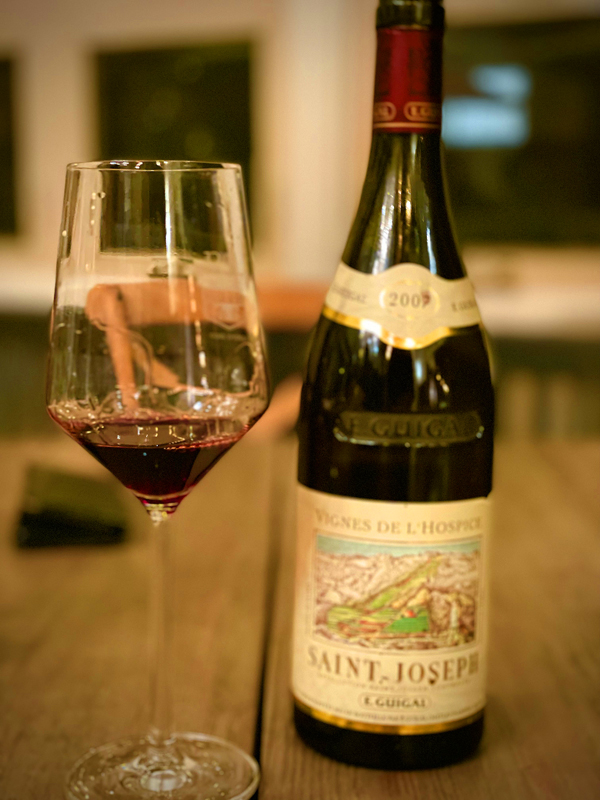
2007 E. Guigal, Saint-Joseph AOC Rouge, Vignes de L’Hospice, Northern Rhone, France.
A very elegant and seductive maturing Saint-Joseph by Giugal that is far from being peaked out and an excellent value for the quality on offer with pure Syrah and terroir character in the glass with fine aromatics, rewarding viscosity and depth on full display. The palate for this 2007 Vignes de L’Hospice is heading for a silken, ripe and Burgundy like gracefulness with secondary elements folding in nicely with Giugal’s signature fruit density, showing crushed blackberry, damson plum, fig, kirsch and creme de cassis along with subtle earthy/meaty tones, truffle, mocha, peppery spices, bay leaf and anise accents all playing supporting roles with typical Giugal polish and poise, this is very joyous stuff. There’s nothing much to complain about here and this bottle was a crowd pleaser and with its light violet perfume, touches of graphite, cola bean, sweet wood and grilled herbs performed beyond my own expectations, and I huge Northern Rhone Syrah enthusiast, so I was gratefully thrilled to try this wine, and I hope to try some of the more recent and or current versions soon.
One of the most famous producers in the world and a leader in their home region, noted for their awesome Cote-Rotie offerings, Giugal is noted for their luxurious style throughout the collection, which includes this beautiful and rare bottling of Saint-Joseph Vignes de L’Hospice, which Giugal says is cultivated on a unique geological formation close to the famous ‘Colline des Bessards’ in Hermitage, this Saint-Joseph having all the elegance of its appellation, but with the powerful structure of its more illustrious neighbor facing the Rhone River. The plots used for this wine are all steeply sloped vines, 100% Syrah, on meager granite based soils with a vine age range of 20 to 80 years old that provides this wine’s deep concentration and complexity. Giugal, never shy with wood aging, employs a 30 month elevage here and this Saint-Joseph saw exclusively new oak barrels, which adds to the smooth texture and gives a sweet toastiness, but fades beautifully as the wine ages in bottle, making it a seamless effort that has plenty of fans. The winery typically uses 100% de-stemed grapes and a temperature controlled fermentation taking place in stainless steel, after which it sees a gentle pressing to the barrels, with everything done to promote clean, less rustic nuances in Giugal’s top small lot Saint-Joesph, which I highly recommend, especially with age on them.
($80 Est.) 95 Points, grapelive
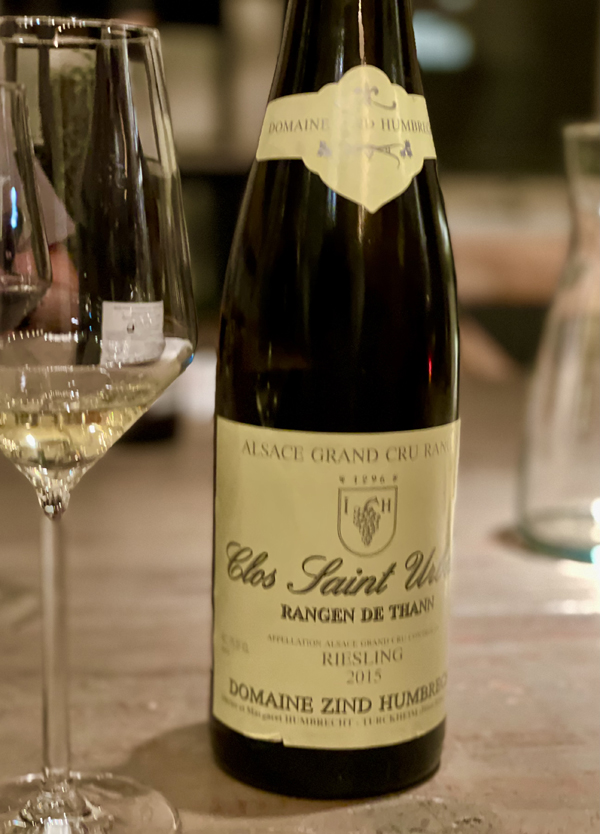
2015 Domaine Zind-Humbrecht, Riesling, Rangen De Thann “Clos Saint Urbain” Grand Cru d’Alsace, France.
Some age has really benefited Zind-Humbrecht’s 2015 “Clos Saint Urbain” Riesling adding complexity, secondary tertiary elements and losing the sweeter baby fat that these domaine’s wines show on release, with beautiful viscosity, depth of flavors and underlying mineral intensity. This vintage highlights the house style here with plush yellow fruits, including succulent apricot, lemon curd, baked apple and racy citrusy kumquat, as well as clove and ginger spices, earthy elements, chamomile and lingering roses, wet stones and golden fig notes revealing on the vinous medium bodied palate. The “Clos Saint Urbain” is sourced from small yielding biodynamic vines that are hand tended and carefully sorted grapes, the best of which are used here to make a dense and remarkably well balanced wine, as seen here. Interestingly most of the top cuvées here at Zind-Humbrecht could have been labeled as Vendange Tardive, but Olivier Humbrecht has elected not to do so, because of the house style, which promotes boldly fruit driven, impactful/rewarding and textural wines throughout his lineup. The cellar regiment here at Zind-Humbrecht leans heavily toward native yeasts and long fermentations, with the wines being rested on the lees in oak barrels, which is what this powerful Riesling saw. The winery says, the Rangen De Thann “Clos Saint Urbain” Grand Cru Riesling is aged 18 months in well used and seasoned 40-year-old French barrels to allow purity and transparent terroir character.
The famed Domaine Zind-Humbrecht is located in Turckheim, Alsace and was founded originally in 1959, following the marriage of Léonard Humbrecht to Geneviève Zind, with the flowing generation helping to make it one of the most desirable labels in Europe. The Humbrecht family though, has a much longer history of winegrowing, that goes back to about 1620 and while following traditions for centuries this winery is known for innovation and the wines have become luxurious stars in the region, with a focus on Riesling. The domaine is currently run by Léonard’s son Olivier Humbrecht MW, who was the first Frenchman to qualify as Master of Wine and who led Zind-Humbrecht to its modern elite status with a well documented push toward dry but ripe concentrated wines that can very rich, have some residual sugar, age worthy and flamboyant in style, as this wine shows clearly. It’s widely noted that, as a domaine, Zind-Humbrecht only produces wines from its own vineyards, with total vineyard holdings of accounting for around 100 acres, these include some incredible Grand Cru parcels, with Rangen, where this wine is from, Hengst and the legendary Brand, which normally is my favorite of all. This wine comes from incredibly steep slopes and volcanic based soils, with the Rangen De Thann vineyard having warm exposures that builds fruit intensity. A long pressing cycle and must settling helps remove bitter phenolics, with this Riesling going through natural malo-lactic conversion, which shows up as smoothness and vinous hedonism!
($108-200 Est.) 95 Points, grapelive
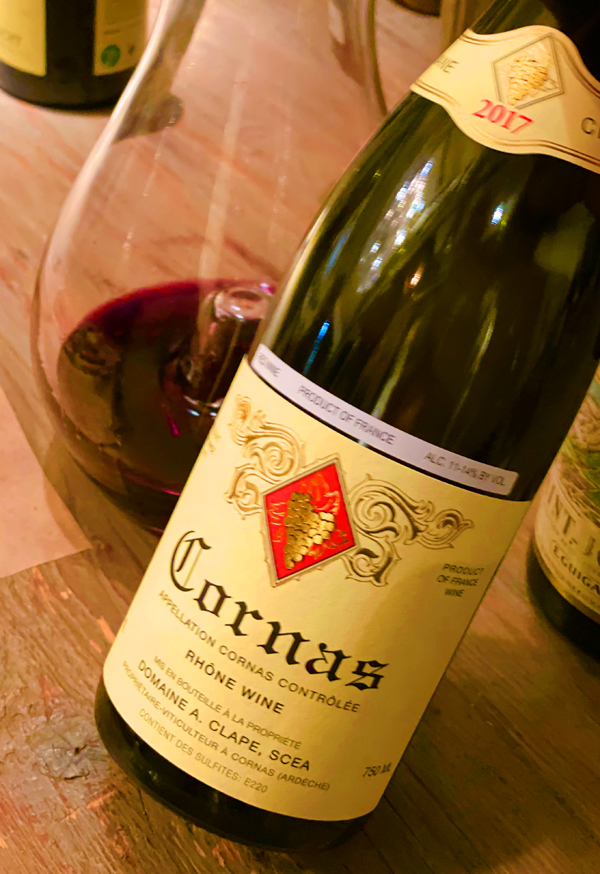
2017 Domaine A. Cape, Cornas, Northern Rhone, France.
These glorious Domaine A. Clape Cornas wines are gloriously alive and intense with classic palates and terroir influences, like this 2017 that has crushed blueberry, boysenberry, damson plum fruits and a touch kirsch, along with background complexities that include pretty violets, cinnamon, olive tapenade, saline, black licorice, camphor, iron/meaty tones and lingering cassis. There’s plenty of body and richness (here) to fill out in the mouth, as well as a nice cut of acidity (still pumping away) and grippy firm tannin holding this edgy and purple/garnet Syrah, this is serious stuff that should get even better in the next 3 to 5 years. To make this wine, the Clape’s use some special grapes, an ancient clone mainly, and Kermit Lynch, Clape’s long time importer, says the vineyards sit on granite subsoil, behind the village, with optimal sun exposure. Adding to that the Clap family farms a number of prime mature parcels, including Reynards, La Côte, Geynale, Tézier, Petite Côte, Les Mazards, Patou, Pied La Vigne, Chaillot, and Sabarotte, the latter purchased from Cornas legend Noël Verset. All of the wines here at Clape are well worth the effort to chase them down, and all are small lots bottlings from the St. Peray White, the de-classified Vin de Amis (VdF), and Cotes-du-Rhone (100% Syrah), young vine Cornas, to this outrageously good and age worthy Cornas.
The Clape old vine Syrah parcels, as mentioned, are some of the finest in the Cornas region, with these mature vines on steep slopes of granite, now with the two youngest generations of Clape’s in charge here, since Auguste sadly passed away in 2018, just after this wine was fermented and put to barrel. The late Auguste, who was 93 at his death was the first to bottle his own wine in Cornas for the family, and now with his son Pierre-Marie and grandson Olivier leading the way here things have kept going with a smooth transition. They run this tiny cellar and estate with the same passion, hard work and style, with the vinifications that are old school, all whole cluster with full stems, native yeast ferments done in cement cuves (vats) and extended elevage in very old large foudres. Everything is by hand and long hours in the vines to allow (for) extra hang time so the stem inclusion is ripe and not overtly green (herbal) and bitter, but still feral and structured. For this top cuvée the Clape’s use only the best old vine fruit and they age this one for just under two years, with this 2017 Cornas seeing a full 22 months, making for a transparent and rustic beauty that should reward Syrah lovers in the same way Domaine Jamet Cote-Rotie’s do!
($159+ Est.) 96 Points, grapelive
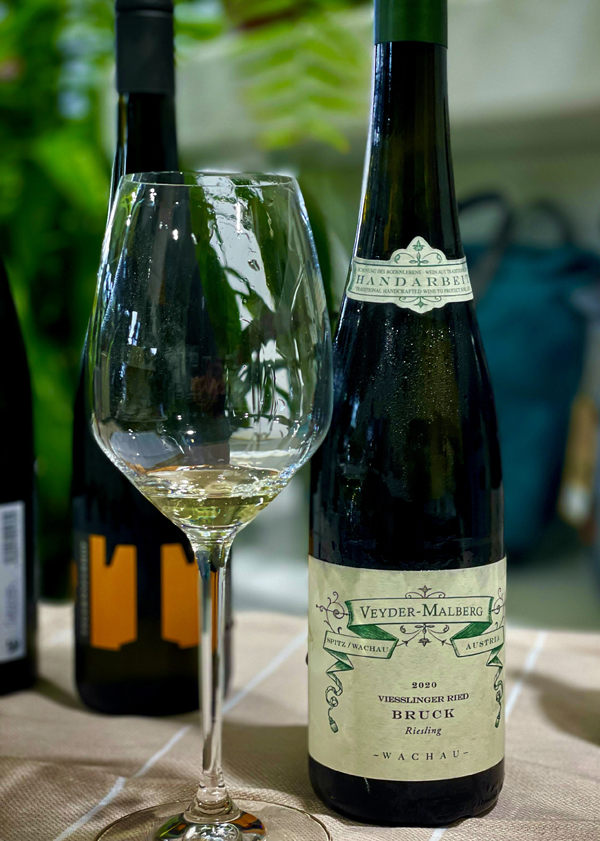
2020 Weingut Veyder Malberg, Riesling Trocken, Veisslinger Ried Bruck, Wachau, Austria.
Highly allocated and hard to find, the single cru 2020 Veisslinger Ried Bruck dry Riesling by Veyder Malberg, one of Austria’s most sought after and elite wineries, is an outstanding example of precision winemaking and Wachau terroir with hyper crystalline focus, mineral intensity and palate impact with a complex range of flavors, aromatic joy and driving acidity. I recently gushed about the Veyder Malberg Gruner Veltliner, but this stuff is the thing of legends and reminds me just how great these Austrian Riesling are with this one joining some famous names, like Knoll, Alzinger, Bründlmayer and Hirtzberger to name a few of my favorites, that have raised the game in this region just west of Vienna, along the sloping hillsides off the Danube River. This 2020 “Bruck” beams from the glass with a shinning ultra pale golden hue and is electric on the taut and vivid medium bodied palate, it is a thrill in the mouth, but excels for its delicate natural and elegance, slowly expanding and turning vinous with layers of green apple, lime, muskmelon, tart apricot and peachy fleshy fruits along with ginger, white pepper, almond and chamomile accents. This must be on any Riesling lovers bucket list of wines, somewhere near Trimbach’s Cuvée Frederic Emile and Schlossgut Diel’s Goldlock Grosses Gewachs! The winery explains, that while the grapes have full southern exposure to the sun and high peak summer temperatures, the valley quickly cools off at nightfall. This combination contributes, they continue, to the development of ripe phenolics with less sugar than zones of the Wachau further to the east, that also gives these wine their substance without the need of malos.
The famed Peter Veyder-Malberg, the Spitz based winemaker, uses holistic organic and biodynamic practices on his collection vines that are not too far from the mighty blue Danube and set on the region’s complex soils and steep terraces. A UNESCO World Heritage site, Austria’s picturesque and historic Wachau gorge is home to some the most prestigious producers in the country and is maybe the most prized winegrowing region in the country with its warm days and cold nights, making for dramatic day and nighttime temperatures swings that provide excellent conditions for Riesling and Gruner, providing ripe concentration and vivid acidity. Peter makes less than 1000 cases per year, so there’s never enough wine to satisfy demand, and getting your hands on any of these bottles is a treasure and this one is one of his most precious! Holistic farming is the regiment for this site, which is on mica schist bedrock and decomposed mica schist topsoil and located in the Spitzer Graben, a valley to the far western end of the Wachau with less River influence. The winemaking is all about expressing the vineyard and the Bruck saw no botrytis and was carefully picked to ensure clarity and quality with the grapes seeing a lengthy cold maceration and then the juice was tank settled up to 24 hours. The fermentation(s) are all natural and done in a mix (depending the wine) of stainless steel and 300l-1500l old barrels with the Riesling seeing absolutely no malo-lactic conversion and aged exclusively in stainless steel for about eight months with the wine going through a sterile filtration to prevent malo-lactic fermentation in bottle and keep things fresh and vibrant, these wines are built for the long haul. This vintage is riveting stuff and I am grate for the chance to taste it, I only wish I could re-vist it in 15 to 20 years!
($93 Est.) 95 Points, grapelive
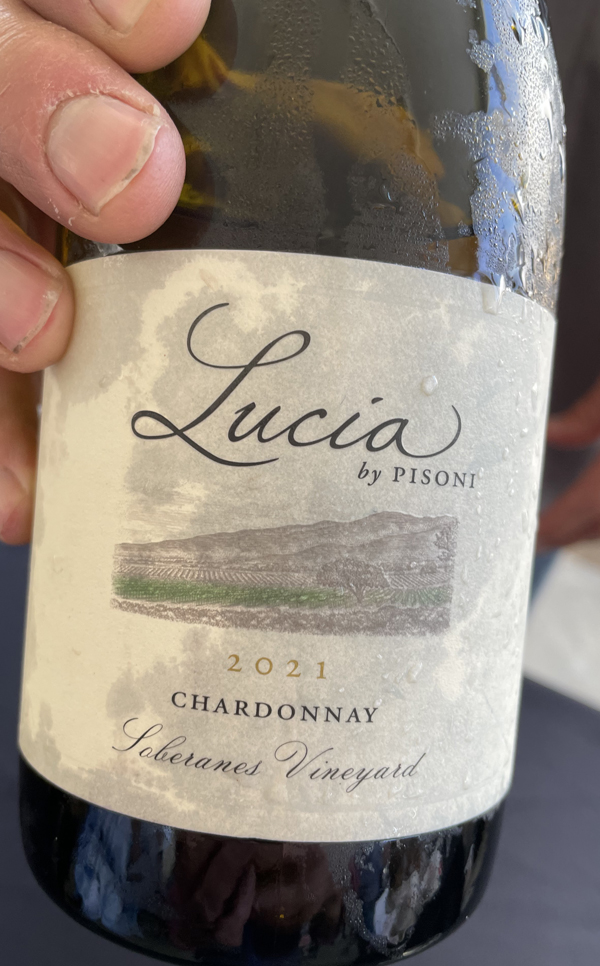
2021 Lucia by Pisoni, Chardonnay, Soberanes Vineyard, Santa Lucia Highlands.
The Pisoni’s say the 2021 growing season in the Santa Lucia Highlands was cool, calm, and collected – a trifecta of traits that is welcomed by any grape grower or winemaker. Which has made for some absolutely amazing wines, and especially winemaker Jeff Pisoni’s Lucia Soberanes Chardonnay here that is one of the best I’ve ever tasted from this prestigious winery, founded by his dad Gary, who first planed vines in the Santa Lucia Highlands around 1982, and while known for the Pinots, their Chardonnays are outstanding. The cool vintage and extra hang time has made this Soberanes Chardonnay brilliantly chiseled with Burgundy like elegance and a deep underlying concentration, this is on par with the very best in California, it has energy, depth and unbelievable length. The full bodied palate shows exceptional layering with lemon curd, white peach, classic apple and pear notes and golden fig fruits, as well as pretty white flowers, clove spice, delicate tropical essences, wet stones, hazelnut and restrained lees and wood accents, all making for a legendary bottle. This Soberanes Chardonnay was really shinning when I tasted it, poured for me by Gary Pisoni’s other son Mark, who oversees the farming for the family and who was very excited for this vintage, telling me everything just came in at close to perfection as it gets. The Soberanes Vineyard, which is the latest joint venture between the Pisoni and Franscioni (Roar) families, has a diverse selection of genetic material planted with an exciting collection of heritage and modern clones, these include a unique Montrachet clone along with a set Dijon selections, Old Wente and Hyde to name a few that are thriving here, and have helped make this wine so fabulously rewarding.
One of the SLH’s hottest properties and a stellar site, the Soberanes Vineyard, planted near the famed Garys’ Vineyard in 2007, bears, as the Pisoni family explains, the family name of José María Soberanes, who marched from Mexico to Monterey Bay with the famed Portolá expedition, and his son Feliciano, who acquired the 8,900-acre land grant (to most of the highlands here) as repayment for his loan of forty horses, fifty head of cattle, four oxen and some sheep. Sitting up where it gets a cooling blast of Ocean air almost all day long, and as mentioned adjacent to Garys’ Vineyard, it share a similar terroir with the sandy loam soils that boast a significant amount, as the Pisoni’s add, sub-soil boulders layered into the alluvial fan here that adds to the complexity and mineral driven personality. Jeff Pisoni, who studied under Vanessa Wong and made wines at Peter Michael, is wonderfully gifted and does some incredible Pinot Noir, Syrah and in particular Chardonnay, as this wine clearly shows. This vintage is stellar, for those that love Aubert, Marcassin, Mount Eden, Hazel, the mentioned Peter Michael and or Morlet, you’ll want to not miss this elite stuff. Jeff, who has a state of the art facility that uses gravity flow as part of a custom design feature that was, as he puts it, conceived to merge the estate vineyards and winery. This his says affords them complete control of the farming and winemaking process, ensuring consistently superior quality and the results have been nothing short of impressive across the range of wines done under both the Lucia and Pisoni Estate labels. The Lucia Soberanes Chardonnay, of which only 205 cases were made, saw a soft whole cluster pressing and a native yeast fermentation in carefully selected French oak barrels, where the wines was aged sur lie for 17 months with 35% new wood used. This is one of the best wines I’ve tried this year and is an outrageous value for the quality on display here, it easily bests wines twice or three times the price! So this wine had to be my #chardonnayday wine.
($65 ESt.) 97 Points, grapelive
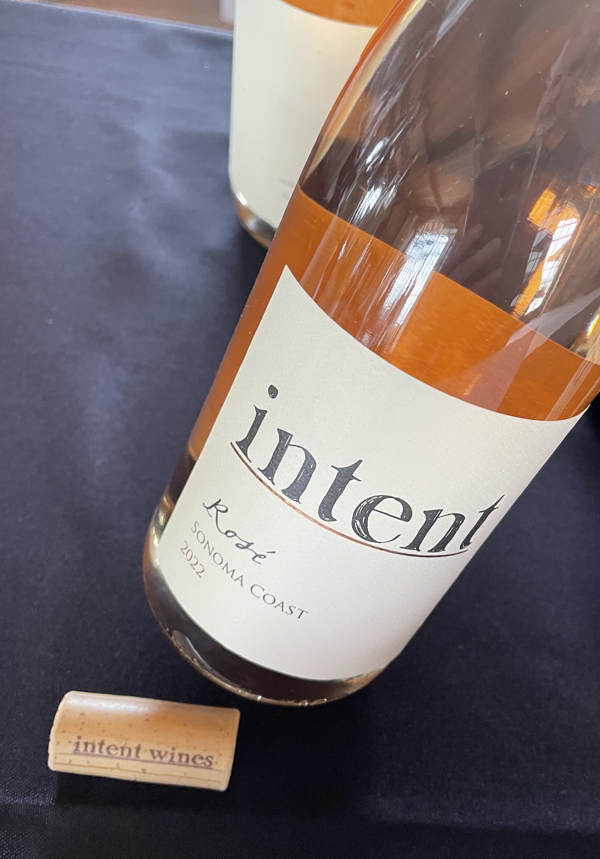
2022 Intent Wines, Rosé of Pinot Noir, Sonoma Coast.
The clear, crisp and elegant Intent Rosé makes for a lovely Summer wine and great for sunsets and beach enjoyment, as well as having enough complexity and substance to partner up a meal with bright strawberry, ruby grapefruit, sour cherry and watermelon fruits, along with wet stones, mild herbs saline, rosewater and zesty spices. Tasted twice with comparable results, meaning I was doubly rewarded here with winemaker Patrick Callagy’s latest dry pink wine, which was sourced from cool climate small vineyards that perfectly captured acidity, mineral tones and low sugars, but still had enough ripeness to please the palate and make a complete Rosé for the warm Summer ahead. This dry and pithy Rosé saw a gentle whole cluster pressing and quick skin soak, with a cool stainless steel fermentation, after which the Intent 100% Pinot Noir Rosé saw just 3 months in Neutral French Oak barrels. Everything was carefully done and very precise to capture vitality, energy and freshness, which was successful, as witnessed with the quality in the bottle, with only 140 cases produced, it should go fast.
This new label, started with the 2017 vintage, is led by Patrick Callagy, a California Culinary Academy trained chef and turned winemaker, who launched his personal project Intent Wines with a solid set of initial offerings including a Pinot Gris, a Syrah and this lovely Home Block Pommard Clone Pinot Noir, adding a new Pinot, Sangiovese and this Rosé to his small lot collection recently. Patrick, as noted here in prior reviews, met winemaker Eric Sussman in 2002, post graduation, when Sussman started his now famous Radio Coteau winery, helping out with that harvest. Completely hooked on the methods there and after a few years of extremely long hours, Callagy’s persistence paid off when he became Radio Coteau’s first employee, gaining loads of wine growing and winemaking experience, which has paid off in his Intent Wines adventure. Patrick says his intent is to work with small family farms who grow our grapes by being present in their vineyards, which are mostly fully organic, biodynamic and holistically farmed. Continuing on he adds that, for each of his wines to be a reflection of the vineyard or terroir he employs a non-interventionist approach to his winemaking and crafting each wine with our best intent, hence the name. So far so good with Callagy’s efforts and I highly recommend his pure and authentic wines, especially the Pinot Gris, the Golden Fleece Pinot Noir and this Rosé, all of which are delicious.
($30 Est.) 90 Points, grapelive
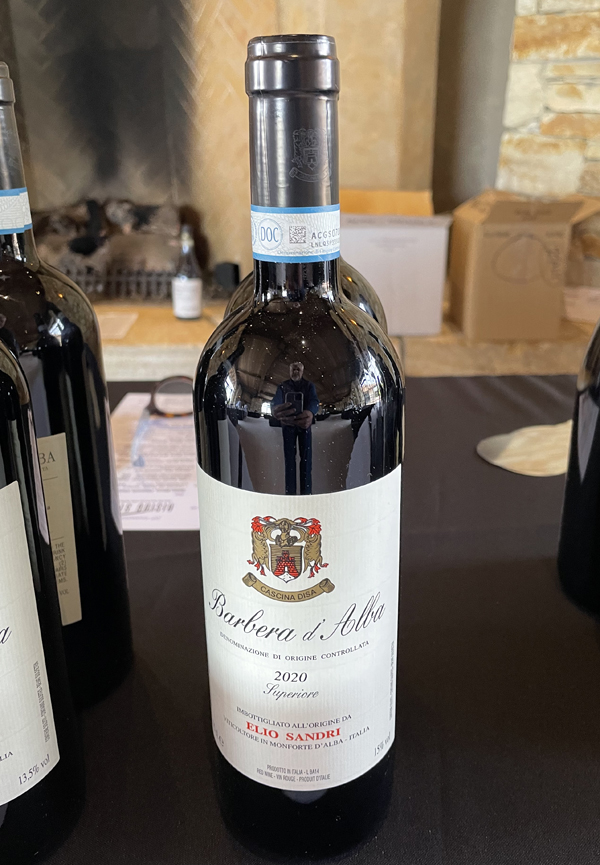
2020 Elio Sandri, Barbera d’Alba Superiore DOC, Piedmonte, Italy.
More lush and textural than the Sandri Dolcetto, the 2020 Barbera d’Alba Superiore with its lovely dark and inviting garnet color in the glass makes for a great value with a rewarding palate of classic flavors, lively acidity, mineral tones and smooth tannins. The core fruit including black raspberry, plum, black cherry and earthy currant feels ripe and rewarding in the mouth and is accented perfectly by crushed flowers, snappy mountain herbs, all spice and hints of hoisin and anise. As I have mentioned recently, Elio Sandri Barolo has a cult like following here in the states and especially with the Sommelier crowd, so you hardly see them, but lucky for us their beautiful Barbera and Dolcetto wines are somewhat are overlooked and bargain priced for the quality, as the 2020 wines show. Coming from organic vines in the Barolo zone, Elio Sandri’s cooler east facing, ultra steep parcels, of Barbera, gets all hand tending, as the tractor can’t operate here, and the grapes see an extended hang time that allows full ripening, heightened aromatics and concentration, but with core of vibrant acidity for balanced and elegant efforts.
The Barbera, as well as the mentioned Dolcetto, at Sandri is 100% de-stemmed and stainless steel tank fermented, after which it is aged in old Slovenian barrels to mature for just about a year, making it nicely transparent, pure and easy to love. Interestingly, Sandri uses whole cluster on his Barolo, which makes for a very gripping wine that needs plenty of bottle age to bring out its best, while the Dolcetto, and the Barbera are meant to drink young and fresh, especially with food of course. Elio Sandri, as noted in my prior review, based in Monforte, very close to the famed Serralunga zone of Barolo, is a traditionalist producer and makes his wines with minimal intervention and employs holistic, organic certified, methods in the vines focusing on the natural elements and purity of place. Giovanni Sandri, Elio’s father, founded the winery in the early sixties when he purchased Cascina Disa, where the modern Elio Sandri winery resides, it’s a property that sits up among some of the region’s highest hills, from where Elio crafts just 5 different bottlings. Sandri does two Barolo offerings, a normale and a Riserva, a Langhe Nebbiolo, a Barbera and this tasty little Dolcetto, all from estate grown vines in the Barolo appellation set on classic Marne (limestone) soils. I have been impressed by the rewarding nature of these latest Sandri wines and I highly suggest that Piedmonte fans check them out!
(25 Est.) 92 Points, grapelive
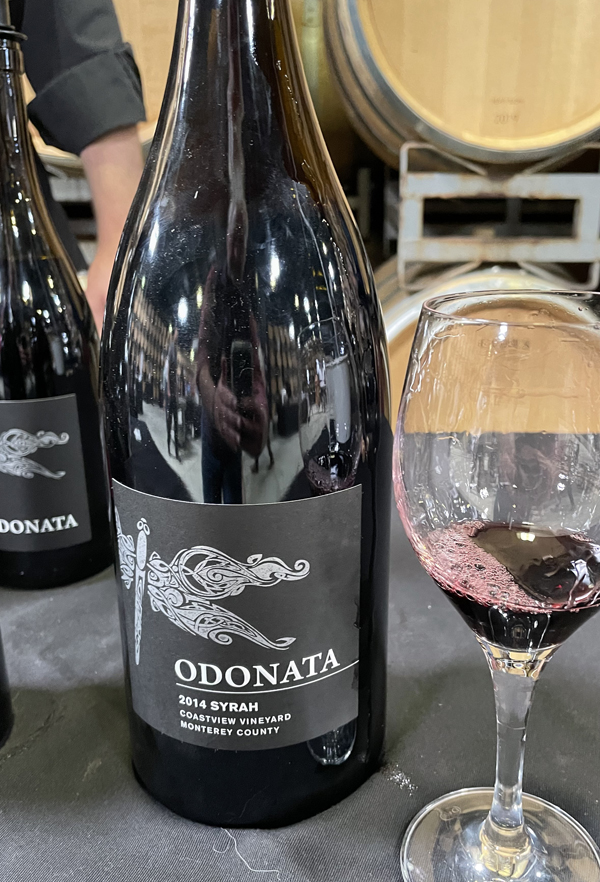
2014 Odonata, Syrah, Coastview Vineyard, Gabilan Mountains, Monterey County.
At almost a decade old the 2014 Coastview Syrah by Denis Hoey of Odonata is absolutely brilliant and maturing perfectly, much in line with what you’d want from an aging Cornas, with dark berry, earthy mulberry, plum and black cherry fruits along with an array of dried herbs and spices, truffle, tartare, anise and pretty violets ever present in a medium/full bodied vinous wine that has evolved nicely with subtle tannin and delicate cedary wood. This opulent purple/black and garnet colored wine just got better and better in the glass adding pleasing creme de cassis, graphite, black fig and contrasting leathery savory tones that keep things interesting and begs for some hearty cuisine to lift it even further, this is a very impressive showing from Hoey and proves, like the wines from Big Basin and Samuel Louis Smith, that this vineyard in the Gabilan Range is an elite site for Rhone varietals, especially Syrah, as well as Chardonnay. Odonata, located in the Santa Lucia Highlands, was founded by Hoey back in 2005, a year after graduating college at UC Santa Cruz and mentoring under Jeff Emery, a local legend and winemaker at Santa Cruz Mountain Vineyard, is one of the best wineries to visit on River Road with a exceptional set of authentic wines. Over the last decade Hoey has fine tuned his offerings and I always love tasting through his wines, especially his Syrahs, so tasting this one, a library selection from magnum was a real treat, and I highly recommend his current releases as well.
The Coastview Vineyard, which was planted in 1999, has an excellent set of conditions to make incredible wines with an elevation between 2200-2400 feet and set on a complex mix of decomposed granite and limestone soils, all of which along with warm exposures and a cooling influence from the Pacific Ocean makes for a happy home for Syrah, as this wine shows. An interesting set of varietals are planted here, these include the mentioned Chardonnay and Syrah, which is mainly Clone 1 or Alban Cote-Rotie, as well as a mix of Pinot Noir clones and Alban clone Grenache. Odonata’s Syrah typically sees a good deal of whole cluster with 25% being the sweet spot usually with the stems adding some crunchy pop to the wine and Hoey has a deft touch with this grape, always achieving mouth filling concentration and depth, but still having an inner brightness and impressive taut structures, which, as seen here, provides well judged framework. Denis, who uses only sustainable and or organic grapes, picked by and carefully sorted, does a cool maceration and did gentle pump overs for about 3 days for more fruit and color extraction, then he switched over to classic hand punch downs at least once daily for a total of three weeks, then it got basket pressed to barrel. The barrel aging period goes from a year to 18 for the Syrah offerings and is done in mainly used, well seasoned French and Hungarian oak, all of which is employed to capture varietal purity, terroir and feral complexity. As noted before, back In 2014 Hoey and his wife, Claire, bought the defunct Marilyn Remark Winery in the Santa Lucia Highlands, where they live and work, making wines from select vineyard sites in Monterey, Santa Clara and Santa Cruz counties highlighting each unique vineyard.
($38 Est.) 94 Points, grapelive
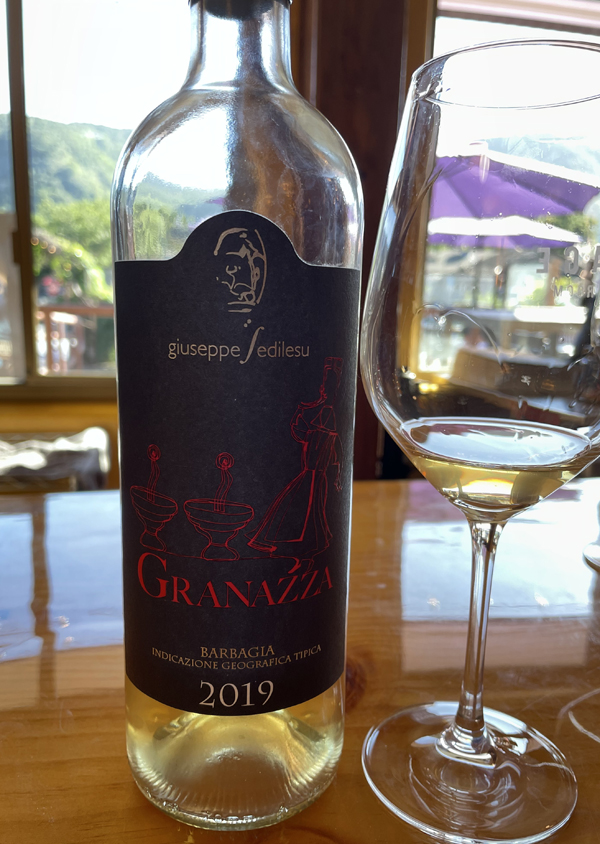
2019 Giuseppe Sedilesu, Granazza, Barbagia IGT Bianco, Mamoiada, Sardinia, Italy.
The exotic and uniquely made Giuseppe Sedilesu Granazza is an all biodynamically grown skin contact white wine that leans into the orange wine style with a dried fruit and savory character, making it a cool, geeky and complex wine that is not at all traditional and even uncommon in Sardinia. The long and mysterious history of this varietal, which shares some similarities to Vermentino, but might be more closely related to the islands famous Cannonau (Grenache), making it a fascinating grape to taste on its own, especially done in this natural way by Sedilesu, who is something of a cult hero on Sardinia, though sadly his wines rarely travel to the states. This Granazza, bright yellow gold in the glass seems older than the vintage would make you believe, but that said it is not a bad thing at all with a quality that reminds me of older Riesling with apricot, dehydrated orange, muskmelon, quince and tangy papaya fruits and with hint of almonds, wet stones, peach pit bitterness and dried rose petals, plus a kick of savory tannin and earthiness. Those that like some skin contact, but not funk, like the wines made from Vitovska in Venezia-Giulia, as a point of comparison, will enjoy this intriguing wine that takes just out of your comfort zone. The Sedilesu wines are made with low sulfites and offering up loads of transparency and earthy character, and while known for their excellent and nervy Cannonau (Grenache) based wines, the Granazza, mineral driven whites are delicacies that should not get overlooked!
The ancient Granazza grape, as mentioned above, is a very rare white varietal mainly found around the town of Mamoiada in the centre of Sardinia, with some people believing it to be a synonym of or related to Nuragus, though as always seems the case, early research by ampelographers had many believing that Granazza was likely introduced to the island by the Phoenicians. That now seems unlikely and the grape has a long history on the island that most likely predates that scenario and it is recently been linked with a mutation of Cannonau, Sardinia’s Grenache, though it doesn’t any connection to Grenache Blanc or Grenache Gris, which happened in southern France and parts of Spain much later. It is absolutely fascinating how much we don’t know about wine history and grapes on Sardinia, with 4,000 years of proven winemaking here! The more I learn, the more that I question and wonder about Sardinia and it really makes me what to go there! The vineyards of Mamoiada are up high and get great air flow through the vines, set between 700 to 900 meters on soil that is granitic based and the temperature range, according to Sedilesu is ideal to produce organic grapes of outstanding quality with concentration and high acidity. For this Granazza, Gianni Sedilesu, one of the area’s most respected wine producers went with a 7 day skin contact, which provides the phenolics and stability here, whole cluster pressing and fermented with indigenous yeasts, then it was aged in neutral cask for just under a year and then cellared for more than a year before release. This naturally crafted rarity is aging well and looks set to go another 5 to 7 years and should be enjoyed with rustic farm cheeses and or briny dishes.
($24 Est.) 93 Points, grapelive
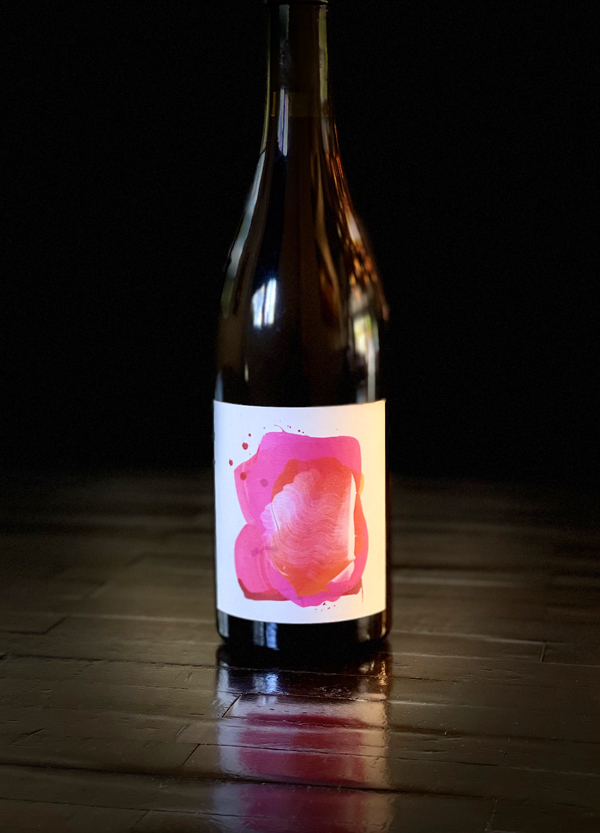
2020 Jolie-Laide, Gamay Noir, Barsotti Vineyard, El Dorado County.
As noted here, Jolie-Laide and winemaker Scott Schultz who based in Sebastopol, does a super nice collection of small batch naturally crafted wines, including his wonderful efforts with Syrah and this beautifully fresh dark magenta/ruby colored Barsotti Vineyard Gamay Noir with the grapes coming from this high elevation site giving both depth and vibrancy. To highlight the purity and quality of the grapes, Schultz did a fermentation started with carbonic maceration and whole cluster, which brought out an exceptional profile of Fluerie like flavors with a heightened floral and mineral tone, it shows juicy strawberry, wild plum and tangy cherry fruits, wild sage, minty herbs, a hint of walnut, crushed lilacs and flinty stones. After being removed from the sealed tank, the whole fermented bunches, stems included, were foot stomped and the juice and skins allowed to finish fermenting and was aged in neutral barrels, which also gave the wine a bit more grip or tannin, crunch and savory tones. The foothills give this wine its depth, deeper color and ripe flavors, but the natural acidity keeps things wonderfully balanced and there’s a very low alcohol feel here and just about 12%, making it an easy wine to quaff and enjoy with food, much like its cousins from Brouilly, Morgon and Fleuire. I’ve enjoyed many wines from Jolie-Laide and I was thrilled to see in the SF Chronicle recently that they are finally getting their own purpose built winery and will be moving in before harvest of 2023, it’s exciting times for this small winery and a great time to join their mailing list, for wines such as this one.
This Jolie-Laide displays all the best of Cru Beaujolais and marries it to a sense of California’s pioneering spirit, reminding me of Steve Edmunds, as I’ve said before in Gamay reviews, who might be the first in California to do a serious true Gamay Noir under his Edmonds St. John label in the 1990s. Prior to that must California Gamay was in fact not Gamay at all, but another grape called Valdiguié, from the southwest of France and is sometimes called “Napa Gamay”. Steve Edmonds and Ron Mansfield took the great risk of planting the first known true Gamay Noir in the state, high up in the Sierra Foothills where they found some granite and quartz soils, all of which paid off eventually as Gamay finally got the love it deserves, with Jolie-Laide doing one of the better examples, as seen here. Schultz does some other beauties, like his New Jemrose Vineyard Grenache and the Northern California red blend, uniquely composed of some very rare varieties, with about 44% Trousseau Noir, 22% Gamay, 18% Valdiguié, 13% Cabernet Pfeffer and 3% Poulsard typically. All of these components fermented separately, partially carbonic for brightness and all whole cluster, which as he says, adds to the complexity here and delivers spicy aromatics. Plus, there’s a new bottling of Gamay for 2022 from, what he calls, an exciting vineyard, Rancho Coda, in Sonoma County of heightened (cool) exposure to the elements and complex soils, and I look forward to trying it! Last year Jolie-Laide added a single varietal Freisa, the rare Piedmonte red grape, that I really liked, to the lineup and I see they are adding a Mondeuse, the main red grape of the Savoie region of France too, so there’s a lot distinctly different stuff, usually from organic vineyards, some new and some almost forgotten, and lesser known grapes to explore here!
($36 Est.) 93 Points, grapelive
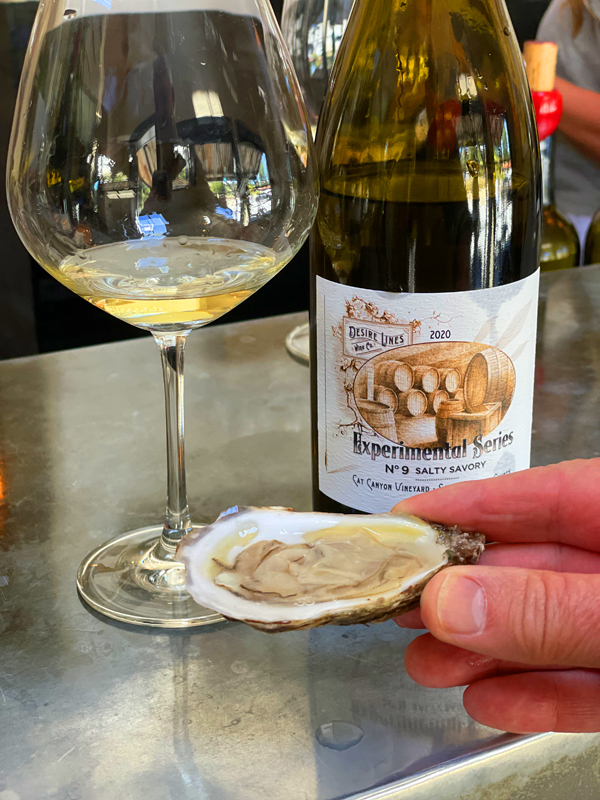
2020 Desire Lines Wine Co, Chenin Blanc, Experimental Series #9 – Salty Savory, Cat Canyon Vineyard, Santa Barbara County.
I had tucked this bottle of Chenin away and just found it, which was lucky as Will Larkin of Ian Brand’s I. Brand & Family Winery had just received his monthly New Oyster Cult shipment of fresh Prince Edward Island oysters and this mineral driven and saline infused white was as perfect as perfect gets with these briny gems. The Desire Lines Wine Co. wines label, as I’ve reviewing for about half a dozen years now is the personal project of Cody Rasmussen, the assistant winemaker at Morgan Twain-Peterson MW’s Bedrock Wine Company in Sonoma and who is one of California’s top guns in making Syrah and dry Riesling, and is a label you should without question check out as soon as possible. This 2020 vintage Cat Canyon, located in Los Alamos area, not far from the Santa Ynez Valley, Chenin Blanc was totally new for Rasmussen and he nailed it, delivering a gorgeous medium bodied, vinous, old world style white with a pale gold color and an earthy presence in the glass with wet stones, white peach, preserved lemon and a faint touch of herbs, verbena, apple butter and subtle leesy texture. I have discovered that the Cat Canyon vineyard, planted back in 1978, has classic California sandy loam soils and benefits from the Central Coast Pacific Ocean, with its cold water, influence and its cool climate, but sunny weather patterns. I also learned Cat Canyon is certified sustainable and is in the process of converting to organic, which I’m sure contributes to the quality and vibrant intensity here in Cody’s exceptional Chenin.
Being Desire Lines and winemaker Cody Rasmussen’s first foray into white wine from Santa Barbara County, he explains, this was both a challenging and exciting wine to make. Inspired by the Loire Valley versions, Rasmussen wanted to go traditional here with his new Chenin. He continues to say that the juice pressed out beautifully fresh and crisp, and after a short cold settle in tank he put it down to barrel for fermentation using an eclectic combination of second- and third-fill Stockinger Austrian oak 228L barrels, neutral 300L French puncheons, and neutral 320L cigar-shaped French puncheons. Ultimately, he ended up bottling just three of eight barrels, and the resulting wine is, as he puts it, absolutely fascinating “you can practically smell the brackish, salty sea breeze blowing in off the coast, landing gently on juicy green apples and salted lemon rinds.” all of which I found in there too! Rasmussen’s favorite French (Loire Valley) Chenin Blancs are those made from the hill of Breze (Saumur) by the likes of Thierry Germain, Romain Guiberteau, and Brendan Stater-West, and this wine he finishes, certainly speaks with the same vocabulary. I can’t recommend these Desire Lines wines highly enough, these are some of the best wines for the money in California and I wouldn’t wait long to get on their mailing list, especially for the fabulous Syrah bottlings and the Dry Rieslings in the collection, but also the Mourvedre and Carignan blend is a must try as well. This Chenin, which might not be a permanent wine for Desire Lines, is well worth looking for, it is right up there with some of the more interesting example of this grape, on par with some of my favorites, like Sandlands, Casa Nuestra, Jaimee Motely, Raj Parr, Leo Steen and Justin Willett’s Lieu-Dit to name a few.
($28 Est.) 93 Points, grapelive
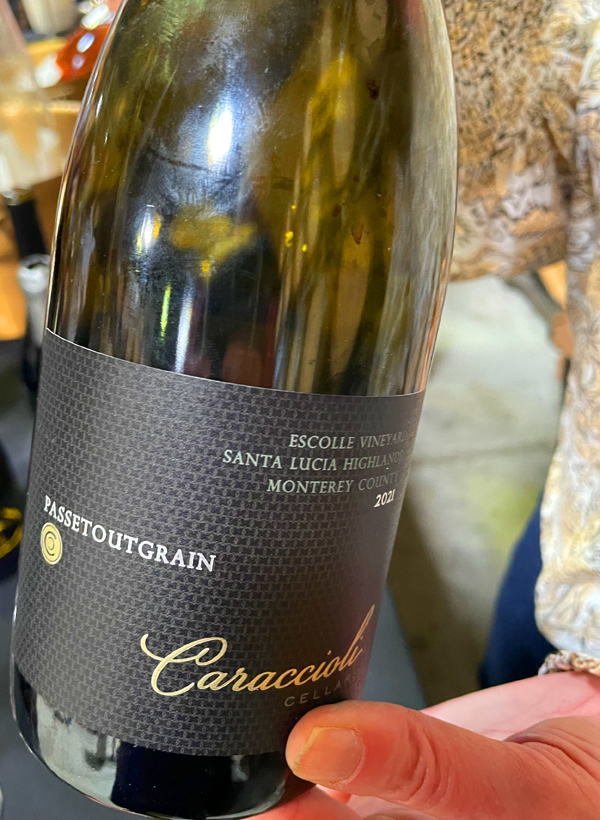
2021 Caraccioli Cellars, Gamay/Pinot Noir “Passtoutgrain” Escolle Vineyard, Santa Lucia Highlands.
I finally got a chance to try the beautiful and intriguing Caraccioli Passetoutgrain, a new star in their lineup, it is, as Scott Caraccioli tells me, a co-fermentation of his Escolle estate Pinot Noir and Gamay Noir. The grapes are all harvested on the same night and produced in a small batch, with this 2021 bottling being a very limited offering. The vibrant ruby color in the glass invites you in and the racy and floral Gamay fruit leads the way on the medium bodied palate, though once open the Passtoutgrain gains complexity with smooth layers of tangy black cherry, strawberry, plum and cranberry fruits along with snappy herbs, Asian spices, black tea, cola and mineral tones. Scott suggests that the depth and elegance of the Pinot Noir is contrasted very nicely with the bright complexity of the Gamay Noir here, and I can find no reason not to agree and overall the wine really impresses, I think I might prefer it to the 100% Gamay version, which I absolutely loved. The perfectly ripened fruit is less candied and the faint earthiness here is compelling, elevating it in my opinion, making it a wonderful wine with more serious food choices. I got my chance to try this wine at the Sun, Windy & Wine Santa Lucia Highlands event, May 13th and it was a rare treat, I had been almost begging to sample the Passtoutgrain ever since I tasted Caraccioli’s 100% Gamay. Caraccioli also told me he is grafting over more Escolle blocks to Gamay and a new Fleurie clone, rumored to be same as what Dutraive has, to join the four acres they already have of Gamay Noir clone 358, so the future of Gamay here looks very exciting. I highly recommend all of the Caraccioli wines, in particular their Pinots, Gamay based wines and their awesome Brut Rosé, definitely one of the best in the state.
Scott Caraccioli says, all of the Caraccioli Cellars wines are now 100% estate grown and produced from our Escolle Vineyard and have been since the 2015 harvest. He explains that they are made utilizing light-handed techniques and processed in small lots, like his Passtoutgrain, with each wine showcasing the unique expression of Escolle site. Continuing he adds that all of the production is done at the winery in Gonzales, a mere five miles from the vineyard itself and is set up to process the grapes in the freshest possible way, which you can see in the bright fruit intensity, energy and purity in these wines. True Passtoutgrain wines, from Burgundy, are typically between 50% and 60% Pinot Noir and 40% to 50% Gamay and remain just a curiosity to the wine world and fly under the radar, but have seen a huge jump in quality in the last 15 to 20 years and are now made from some of the top Cote d’Or domaines, like Domaine Robert Chevillon, which I reviewed here recently. Coming from the Santa Lucia Highland’s cool Ocean influenced and breezy zone and set on decomposed granite, which Gamay loves, sandy loams and with veins of quartz. The true Gamay Noir (Cru Beaujolais 358 clone) was fully de-stemmed in the this vintage and the Pinot Noir (all 777 clone) was mostly de-stemmed with 20% remaining whole cluster with some stems, which adds a subtle savory element. Caraccioli co-fermented this 50/50 blend in a small stainless steel tank and punched it down daily. Once dry, the wine was racked to a neutral French oak puncheon and aged for six months before bottling, all to preserve vibrancy and clarity. Caraccioli, who makes, as noted above, some of California’s greatest grower producer Methode Champenoise sparkling wines, also does a fine collection of still wines, including this one, as well as three exceptional micro bottlings of Pinot Noir, with their El Bec and Elevated versions being my favorites.
($45 Est.) 94 Points, grapelive
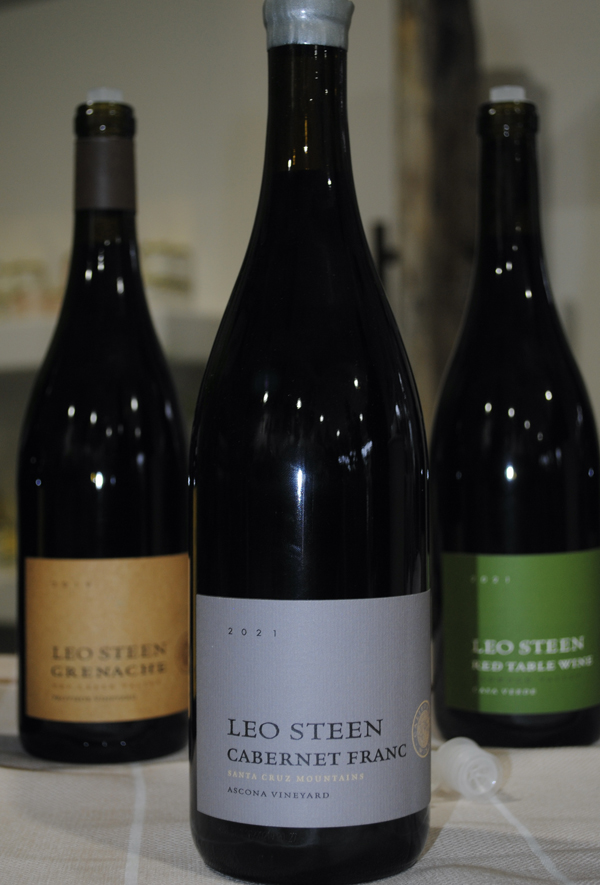
2021 Leo Steen, Cabernet Franc, Ascona Vineyard, Santa Cruz Mountains.
Cab Franc fans will want to chase down this new offering from Leo Steen Wines, made by Danish ex-pat winemaker Leo Hansen, who’s winery is located in Healdsburg and who is widely known for his Loire inspired Chenin Blanc, with this Ascona Vineyard 2021 Cabernet Franc being an exceptional California example of this varietal. This stuff blew me away and while I have reviewed a host of Hansen’s excellent wines, this one is a stand out offering with loads of personality and varietal purity showing a deep purple/garnet color in the glass with beautiful floral aromatics in the glass, leading to a medium/full palate of rich dark berry fruits, spice, a light earthiness and mineral notes. The bright energy and moderate alcohol, at 13.2%, make for a compelling low SO2 (sulfur) Cabernet Franc that has impactful fruit density with revolving layers of vine picked berry, black cherry, currant and plum fruits, as well as a hint of bell pepper, crushed violets, licorice, herbal sage and very subtle cedary wood. Hansen’s Ascona plot is just an acre and a half and he produced just 200 cases of this lovely and complex wine, making a rare catch, which I highly recommend checking out while it is still available. Hansel is an ex-sommelier from Copenhagen and he crafts his wines to be enjoyed with food with a nod to the old world, while allowing his wine’s California soul to shine through.
The Leo Steen Cabernet Franc comes from the Ascona Vineyard, which Hansen notes, is located on a sloping plateau at an elevation of 2,400 feet in the Santa Cruz Mountains (reminding us it is home to such famed wineries as Ridge and Mt. Eden). The reason he is so excited by this site is that though Ascona gets abundant sunshine, its elevation keeps it cool, which allows for a balanced wine with concentration and good natural acidity. This, and the site’s well-draining decomposed sandstone and shale soils, provide ideal conditions for growing Cabernet Franc, with ripe flavors, but with a profile that takes its inspiration, like Hansen’s awesome Chenin Blancs, from the mentioned Loire Valley and examples from Saumur-Champigny and or Chinon. This wine (grapes) was 100% de-stemmed and 100% Cab Franc, it fermented in open-top tanks using native yeast, as Hansen explains, to underscore varietal’s herbal, savory side. He adds that after 12 days on the skins he drained and pressed to a combination of concrete egg and neutral French oak barrels. The wine was then aged for 9 months in 1/3 concrete egg to preserve freshness and 2/3 in neutral French oak barrels, for what I believe to give it a pleasing vinous texture, before blending it all into tank where it saw additional 4 weeks in the stainless steel before bottling. Cabernet Franc, as a solo varietal wine, is really making strides here in California and this is one that really shows you why!
($42 Est.) 94 Points, grapelive
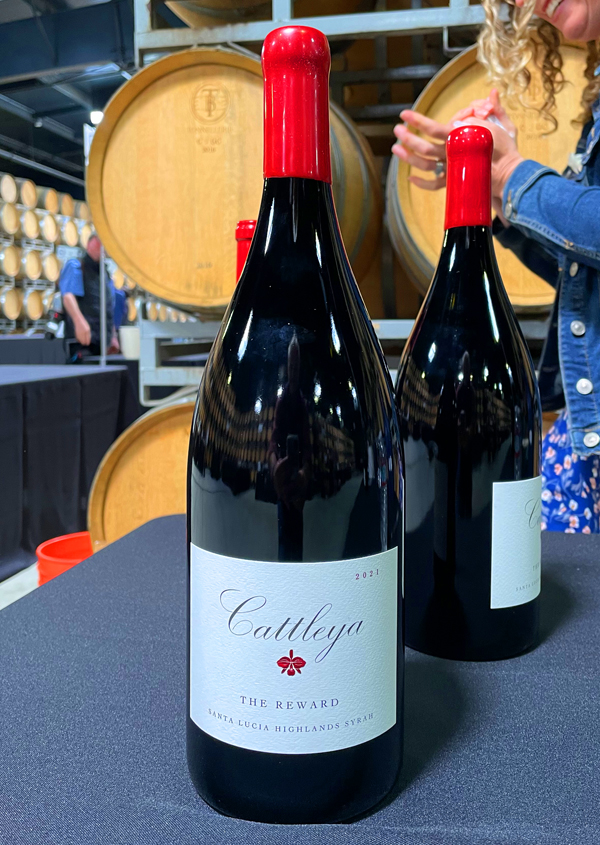
2021 Cattleya, Syrah “The Reward” Pisoni Estate Vineyard, Santa Lucia Highlands.
Tasted from magnum, the latest from Cattleya is a beauty with deep complexity and with a thrilling profile that captures the best of California and Northern Rhone quality, in a 100% Syrah that is next level stuff. This gorgeous and rare “The Reward” Santa Lucia Highlands Syrah by the hugely talented Bibiana González-Rave-Pisoni, wife of Jeff Pisoni comes from the Pisoni Family Ranch Vineyard and a special set of just 80 vines planted in 2015 from her own suitcase cuttings. Still obviously youthful and a bit shy, this 2021 “The Reward” looks set for legendary stars with tremendous potential already showing through on the full bodied and opulent palate that includes classic Syrah flavors highlighted by black currant, boysenberry, damson plum and cherry fruits along with earthy spices, peppercorns, sandalwood This tiny plot of Bibiana’s selection massale set on the property’s granite based sandy loams is hand farmed by Mark Pisoni and his crew with great care put in to deliver only the best grapes to the cellar. The latest offering from Cattleya, this “The Reward” Syrah is already sold out in 750ml bottlings, but there’s a few magnums and that is what I tasted it from at the recent SLH Sun, Wind & Wine event, which was the first I’ve heard of this special version of Syrah! Being a huge fan of Bibiana’s wines, as well as a usually well informed local to the goings ons this was a fabulous surprise and one I felt blessed to have tasted. Along with this and her current Soberanes Syrah, González also showed two library wines, both from Pisoni’s Soberanes Vineyard, mainly planted to Alban (Cote-Rotie) clone, one from 2012, which was just starting to show secondary and tertiary elements, polished black fruits and smoky/graphite mineral tones, and her 2016, which was actually my absolute favorite at this stage with incredible deep fruit and stunning length! So while this “The Reward” will be very difficult to find, I suggest grabbing the Soberanes, it will not disappoint in any way!
Winemaker Bibiana González-Rave-Pisoni tells the story of this remarkable wine this way, saying at the end of your quest, the Reward awaits, explaining that this new wine, was created from cuttings she carried over from France herself. Now after nearly a decade of nurturing these vines, which are ancient selection of Syrah clones, believed to be mainly the Serine clone, she is finally seeing the fruits of her labor bear the reward. Continuing she says that these unique vines produce very small bunches of jewel-like Syrah that yield an intense wine, but with exquisite finesse, as this 2021 shows to perfection. Bibiana, who as noted here in prior reviews, has an impressive resume, including stints at Chateau Lafite-Rothschild and at Ogier in Cote-Rotie, where she got hooked on Syrah and gained insight on how to make her own version when came to the states and especially after she got her hands on the Pisoni’s Soberanes Vineyard fruit. For this micro bottling, only about 15 cases released, González hand sorted each cluster, giving the grapes a 10 day cold soak and fermented the wine in a 132 gallon French oak puncheon with twice daily hand punch downs to extract color, aromas and tannin. Everything was done at cool (controlled) temperatures to maintain precision and purity in the wine, which was fed to barrel by gravity flow only and then allowed to mature, going through malos, in a neutral small French barrel for close to 16 months before being bottled unfined and unfiltered. At the Santa Lucia Highlands Sun, Wind & Wine tasting event, Cattleya showed off the wines of the region to spectacular effect and proves Syrah is well suited to this cool coastal terroir, which honesty can eclipse Pinot Noir here, especially these wines, as well as those made by Bibiana’s husband Jeff Pisoni under his family’s Lucia label, Morgan’s Double L Estate Syrah, Roar’s Rosella’s and Garys’ Syrah bottlings, to name a few exceptional and exciting examples. There is no question, Syrah does great here in the Santa Lucia Highlands, and there’s no question that these Cattleya wines are some of the best in California!
($N/A) 96 Points, grapelive
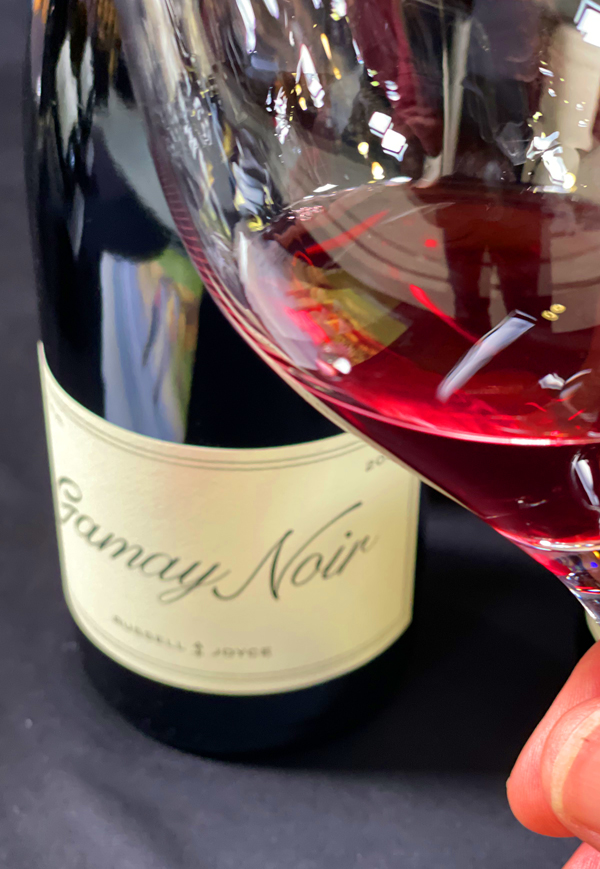
2022 Russell Joyce, Gamay Noir, Santa Lucia Highlands.
After trying the Arroyo Seco version recently I was thrilled to try this 2022 SLH Gamay by Russell Joyce of Joyce Vineyards, who is leading the way with this varietal on the central coast and this one shows off his confidence with this Beaujolais grape with a brilliantly pure example with Strawberry, raspberry and Italian cherry fruits, a light dusting of herbs and spice, mineral notes and pretty mixed florals. The light bodied, bright ruby hued and vibrant Santa Lucia Highlands Gamay Noir has a quaffable low alcohol presence in the glass that reminds you of some classic Fleurie wines and the smooth texture gives a pleasing mouth feel, making for an exciting Gamay to enjoy anytime, no patience required. With air, the 2022 Joyce SLH Gamay gets more elegant and lengthy with a extra degree of complexity coming through, while still having plenty of crisp detailing and energy, it should pair nicely with a wide range of dishes, especially with a slight chill. Joyce deserves a lot of credit for raising the Gamay flag locally and you are going to see a bunch more coming from in the future, such is the success this grape is currently enjoying.
The 2022 Santa Lucia Highlands Gamay has crated using traditional Cru Beaujolais methods with a carbonic whole cluster fermentation in tank and then a short term in neutral French oak puncheon before an early bottling to preserve freshness and vitality. Russell Joyce has tinkered with his Gamay fermentations and aging vessels for the last four or five vintages and I think he has really hit the sweet spot with his 2022s, a vintage that allowed for ripe flavors and subtle earthiness to shine through with stems adding a perfect amount of crunchy pop. Gamay is really showing promise in the Santa Lucia Highlands, it does wonderfully well in the granite based soils and the long cool growing season makes for some exciting wines, as witnessed here with Joyce’s latest, as well as the promise shown by the offerings from the Escolle Vineyard, like Caraccioli’s, Ian Brand’s and Samuel Louis Smith’s fine 2021 efforts, which I have already reviewed and wrote about here. This new release from Joyce, which he showed off at the Sun, Wind & Wine SLH tasting event to great applause, is sourced from selected young vine parcels that were recently grafted over, is certainly going to impress Gamay fans and is well worth chasing down.
($35 Est.) 92 Points, grapelive
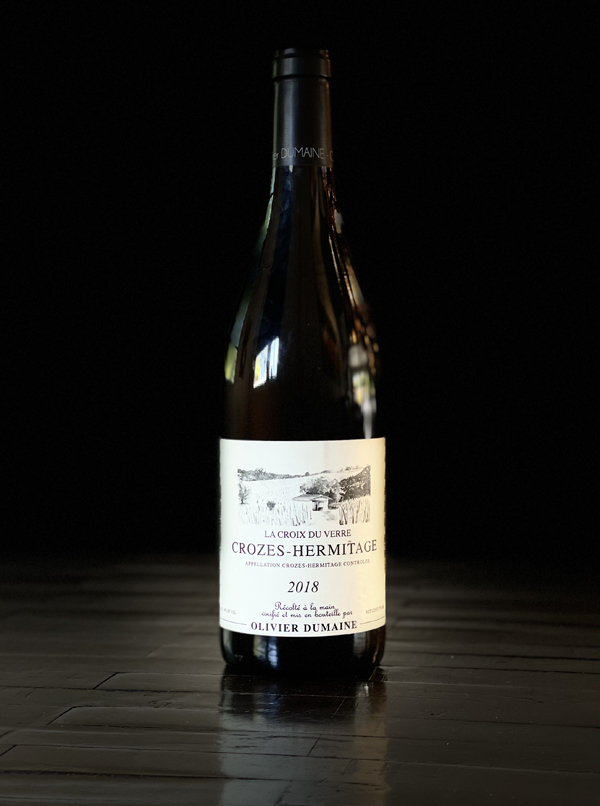
2018 Domaine Olivier Dumaine, Crozes-Hermitage “La Croix du Verre” Northern Rhone, France.
The Domaine Olivier Dumaine La Croix du Barre Crozes-Hermitage Rouge 2018 is beautifully balanced and aromatic with loads of black fruit, violets and subtle spices, making for a traditional and polished version of Nothrern Rhone Syrah, much less edgy than is the fashion these days, but a very rewarding wine. Blackberry, thick plum, currant and fig fruits lead the way along with delicate dried herbs and spices, black licorice and smooth cedary oak. Coming from three estate owned parcels set on hillsides within the Crozes-Hermitage appellation on granite and Kaolin clay soils the La Croix du Verre Crozes-Hermitage Rouge by Olivier and Maryline Dumaine. This small family estate, which has a local history here in the Northern Rhone since 1650, is located in the vllage of Larnage, the is just about 7 km north from the famous Tain-l’Hermitage and Hermitage hill. The Dumaine’s do both red and white Crozes-Hermitage and a tiny bit of Saint-Joseph, with a collection of old vines with ancient clones, including the Serine Syrah clone that many believe is the most distinctive and offers depth of flavors, structure and a wild feral edginess.
This old vine Syrah is sourced from vines averaging over 50 years old, including some 130 year old vines near the ruins of a castle, all of which is hand harvested, with 100% of crop being de-stemmed. In the cellar, Olivier Dumaine uses Indigenous yeast, and his Syrah sees a lengthy and cool 20-25 day vinification with classic twice daily pump overs to keep the cap wet and submerged for full extraction After primary fermentation is over the wine is then pressed to barrel, with the Crozes-Hermitage getting aged in 1, 2 and 3 year old 228-liter Burgundy style oak casks. Matured 10 months in oak, again without any no new oak, this pure Syrah comes out deeply colored, purple/black with dark ruby/magenta edges and is nicely perfumed, more in the style of Guigal with plush fruit and less feral qualities. This producer was new to me and I was excited to try this 2018 vintage Cross-Hermitage and it did not disappoint, it offers an authentic and elegant personality in the glass and will drink well for the next 3 to 5 years with ease. I suggest checking this producer out, with Domaine Olivier Dumaine being imported to the United States by Chloe Wines and having limited availability, as this is a small producer, but worth chasing down. I really enjoyed this one and have seen now that the 2019 version is out, and its well priced for the quality, so I’ll be looking for that as well!
($38 Est.) 92 Points, grapelive
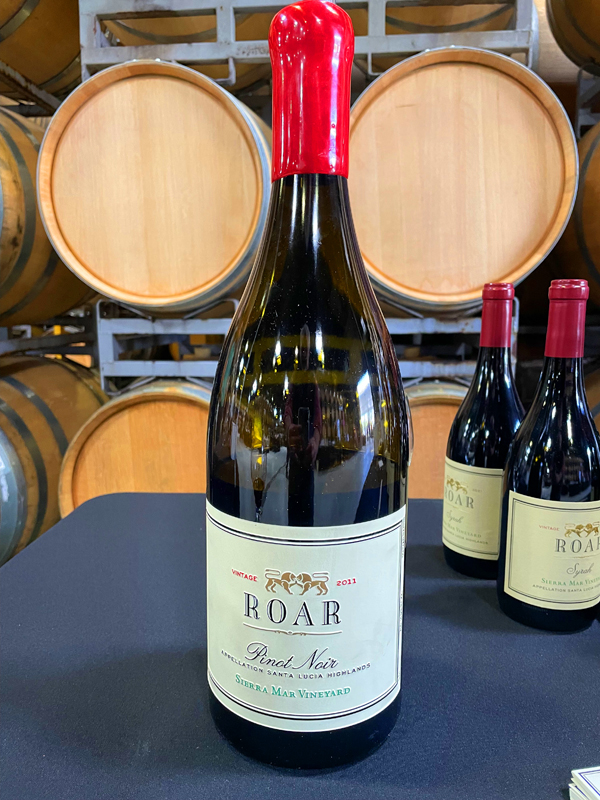
2011 Roar, Pinot Noir, Sierra Mar Vineyard, Santa Lucia Highlands.
The Roar Sierra Mar Pinot at 12 years old is still a beauty with a divine silken almost weightless texture and a host of secondary fruit and dried flowers, it reminds me of an aged Chambolle-Musigny with the cool climate influence really giving this wine an elegant profile and making for a remarkable treat from the Franscioni family. Tasted at the Santa Lucia Highlands “Sun, Wind & Wine” festival from a 3 liter library bottle, this 2011 put on a fabulous show of how well these wines can age, deliver terroir, and complexity, even in a tough vintage. The palate feels gorgeous with medium body and unfolds with black cherry, brambly red raspberry and balsamic dipped strawberry fruits along with mature tertiary elements, well integrated French oak, wilted rose petals, earthy truffle and orange peel. Usually a wine of this subtly and nuance would get lost in a room with big fruited young wines, but this one shined and was totally seductive.
Gary Franscioni started Roar around 2000 and helped raise the game for Santa Lucia Highlands, along with his partner and legend Gary Pisoni, after planting the Garys’ Vineyard and his own Rosella’s Vineyard, both of which have become part of what could be called some the region’s Grand Cru sites. Later Franscioni added this Sierra Mar Vineyard at the same time Pisoni added Soberanes, with these younger vines joining their elite place along side the famous Garys’, Rosella’s and the Pisoni estate at the top of the league. The Sierra Mar Vineyard planted 2007, Roar’s southernmost and highest plantings at 1,100 feet above sea level, benefits from the cool sea breezes, its sandy loam soils and a long growing season to produce some the most compelling grapes in the Santa Lucia Highlands AVA. Franscioni says the heavily sloped terrain and thin soils, gravelly decomposed granite, encourages deep root systems and excellent drainage, with complexity coming too through the site’s combination of 943, Calera, Pisoni and Swan clones found here at the Sierra Mar Vineyard. Moving on from this vintage selection, Roar’s current lineup or 2021 wines are outstanding, especially the set of Pinots, with the Rosella’s being my favorite!
($N/A) 94 Points, grapelive
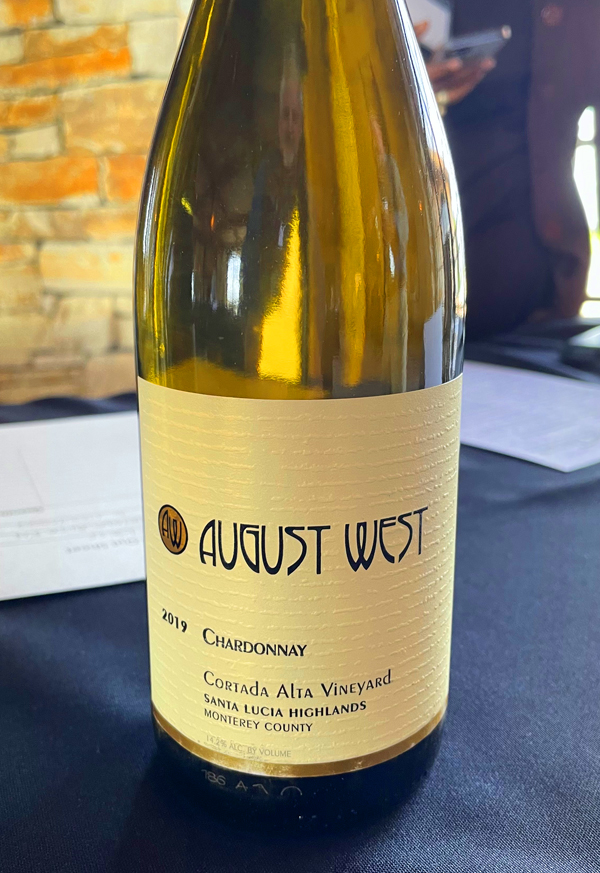
2019 August West, Chardonnay, Cortada Alta Vineyard, Santa Lucía Highlands.
The beautifully balanced and aromatic Cortada Alta Chardonnay by winemaker Ed Kurtzman of August West, ex Roar and ex Freeman, is full bodied and layered, but still lively with high elevation or mountain intensity showing lemon curd, apple, pear and white peach fruits as well as wet stone, Asian clove, hazelnut and toasty oak notes. Pale gold in glass this 2019 vintage wine is very impactful on the palate and lengthy on the finish, it reminds me that Kurtzman does great things with Chardonnay and is not only a Pinot Noir specialist, this also shows the quality of the grapes that comes from this Cortada Alta Vineyard, that was planted in 2014, which is the highest in the region and is farmed with holistic methods. With mainly Pinot Noir here, Cortada Alta also has Syrah, Viognier (to co-ferment like Cote-Rotie) and Chardonnay, which I hadn’t tasted before, but for which there is lots of potential, as this 2019 August West shows. The Chardonnay clones at Cortada Alta, a very cool Ocean influenced site with complex mineral infused loamy soils, include Hyde, Wente, Robert Young, Mt. Eden, Stony Hill and 76, all of which add to the complexity and texture found in the wines made by Kurtzman, here at August West and the offerings he does for Mansfield-Dunne.
The August West wines, which are all hand crafted in small lots, are produced in San Francisco in their urban winery with a focus on Russian River and Santa Lucia Highlands grapes with winemaker Ed Kurtzman having ties to both regions. Kurtzman, who got his start with Monterey’s Bernardus Winery under local legend Don Blackburn before moving over to Chalone to work with Michael Michaud getting tons of experience with grapes of the Monterey Bay durning the mid 1990s. After that, Kurtzman became a much in demand consulting winemaker for some top notch estates, like Testarossa, Fort Ross, Freeman, as noted above and the mentioned Roar, where Ed really excelled with the Santa Lucia Highland’s most prized vineyards. For his Chardonnay wines, like this one, Ed uses whole cluster pressed grapes and allows the wine to ferment in barrel naturally with indigenous yeasts and then the wine ages sur lie (on the lees) for between 12 and 15 months. The 2019 Cortada Alta Vineyard Chardonnay saw close to 40% new oak, though it feels less oaky in character than that suggests and there’s energy here that keeps things entertaining and brightly focused, though the mouth feel is luxurious (mature) and gives the wine a subtle creamy quality. I was impressed with the lineup at August West, with this one being a standout, though of course the set of Pinots were elegant and opulent efforts as well and well worth looking for!
($38 Est.) 92 Points, grapelive
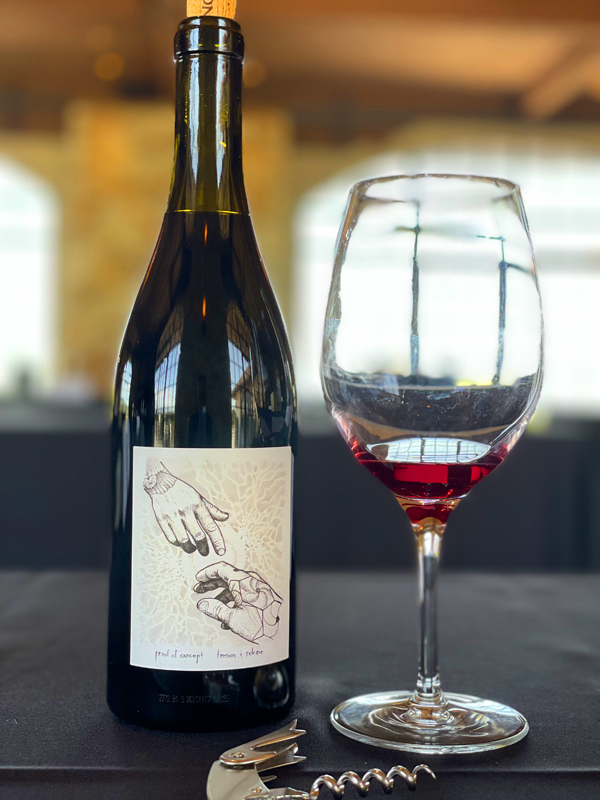
2021 Sheldon Wines, Proof of Concept, ~Tension & Release~ Red Wine, California.
The artist label Proof of Concept is a wildly delicious and unique red blend, made from 36% Graciano, 24% old vine Petite Sirah, 24% Sangiovese and 16% Syrah coming from two main sites that winemaker Dylan Sheldon has been working with over the last decade. Interestingly, though this is the first time he’s combined these tiny vineyard sites in Sonoma & Napa to make a wine, and it all came together beautifully with a lively dark fruited, floral and spicy profile. Quaffable and smooth, it plays on the lighter framed medium bodied palate with a nice balance between all the varietal elements on display with Bing cherry, wild plum, red currant, crushed brambly raspberry and strawberry fruits, as well as cigar box, minty herbs, wilted rose, cinnamon/pepper spice, cedar and anise. Remarkably, there’s depth here than you’d first think in a wine that comes in a 12.3% natural alcohol and the Sheldon Proof of Concept has a nice rotation of savory and fruit characteristics, along with a hidden sense of tannin giving the wine a delicate frame work. As it opens up in the glass, this pretty garnet and magenta edged Graciano, a lesser known Rioja grape, based wine rounds out and adds a blue fruit quality, staying engaging from start to finish. The latest releases at Sheldon Wines, which are mostly sourced from the Luc’s Vineyard in Sonoma County are easy to love, fresh and amusing efforts that I highly recommend, especially this Proof of Concept California red and the pure Grenache, which I recently reviewed here.
Sheldon Wines’ winemaker Dylan Sheldon says he’s been toying with this concept for nearly a decade, and Ii’s haunted the corners of his mind as an absurdly playful abstract notion. Continuing he explains that historically, each stand alone varietal represented a song in the larger playlist of the Sheldon line-up. Or so he thought. Dylan who is also a musician finds it easier to equate his wines with that influence, adds that upon closer inspection, that each varietal was a single instrument playing a solo piece in the greater song here in his Proof of Concept ~ Tension & Release ~ red wine. So this 2021 vintage allowed let them, sourced from vines in the Fountaingrove AVA and Calistoga, all play together. The sum of the parts, he felt, was greater than the individual pieces, and that is as he puts it, indeed a ‘proof of concept’ in action. Sheldon, who started his label with his wife Tobe, back in 2003 with his first releases, so it’s been 20 magical years in the books now and I have been lucky to have been following them since they started. Dylan’s wines have always been low alcohol and crafted with raw transparency in mind, he ferments his reds with native yeasts and whole cluster, depending on the year and varietal, with gentle macerations and using only used, well seasoned barrels for aging. He famously says, no new wood was harmed here in the making of his wines, and this wine is the better for it. Again I think it’s great time to discover or re-discover Sheldon’s wines, which are all small batch and reasonably priced efforts, and get on their micro-winery’s mailing list.
($40 Est.) 93 Points, grapelive
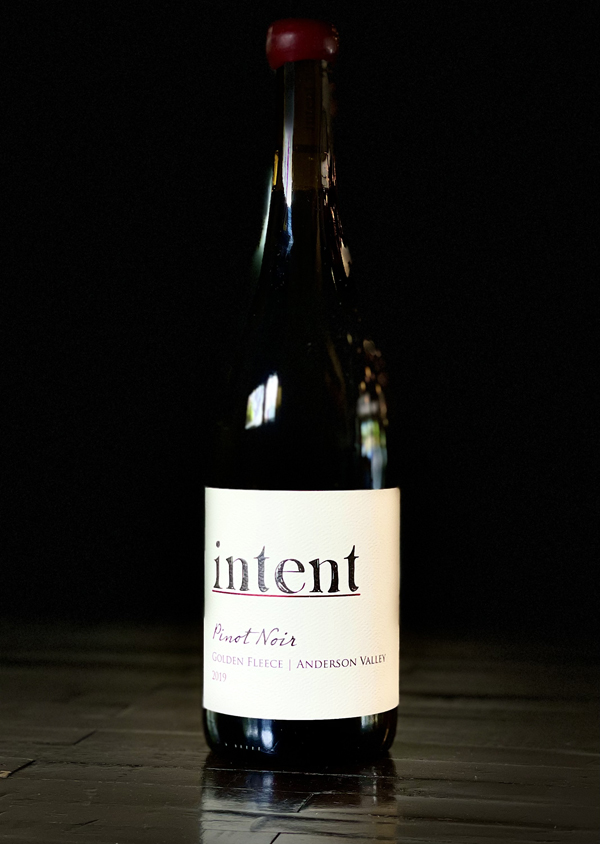
2019 Intent Wines, Pinot Noir, Golden Fleece, Anderson Valley.
A beautifully pure and vivid Pinot Noir from the Anderson Valley, the Intent Wines Golden Fleece 2019 is wonderfully balanced, aromatic and satiny on the palate with bright Italian cherry, plum, wild berry and strawberry fruits along with purring and pulsating acidity, mineral tones, a light earthy/savory element, tea spices, soft oak and lingering rose petals. I featured Intent’s earlier vintage of Pinot and their Pinot Gris and was impressed with the quality and this Golden Fleece lifts this label to the next and I highly recommend checking out these wines, all coming from organic, biodynamic and holistically farmed sites and made in hand crafted small lots. The dark ruby hued Golden Fleece comes from a mountain top, organically farmed vineyard on the east side of the Anderson Valley that sees cool Ocean breezes, good sun exposure and allows the grapes to show off terroir with clarity and small yielding concentration with moderate alcohol and energy in the glass. The marine sediment soils with sandstone from being an ancient sea give these grapes a perfect setting to made world class Pinot Noir, along the lines of Drew, Baxter and others that make Anderson Valley their home.
Intent’s winemaker/owner Patrick Callagy, a California Culinary Academy trained chef and turned winemaker, launched his personal project Intent Wines in 2017 with a focus on organic and sustainable vineyard, mainly in the cooler climate zones of Anderson Valley and the Sonoma Coast. Callagy has made a solid set of initial offerings including his tasty Alsatian style Pinot Gris, as well as savory Northern Rhone style Syrah, a stylish Rosé and a set of beautiful Pinot Noirs, like this Golden Fleece. As I noted in my last review of Intent Wines, Patrick met winemaker Eric Sussman in 2002, post graduation, when Sussman started his now famous Radio Coteau winery, after helping out with that harvest and after a few years of extremely long hours, Patrick’s curiosity, commitment and persistence paid off when he became Radio Coteau’s first employee. That experience has paid off and these Intent Wines are very deserving of your attention, especially this bottling, the wines are available at Patrick’s website and I suggest getting on the mailing list for future wines as well, these 2019s are exceptional and I expect the 2021s to be gems as well! The winemaking is restrained and Callagy employs native yeast fermentations, gentle macerations, some whole cluster and aging in mostly neutral and well used ranch oak barrels to promote transparency, as this exciting Golden Fleece Pinot shows!
($56 Est.) 93 Points, grapelive
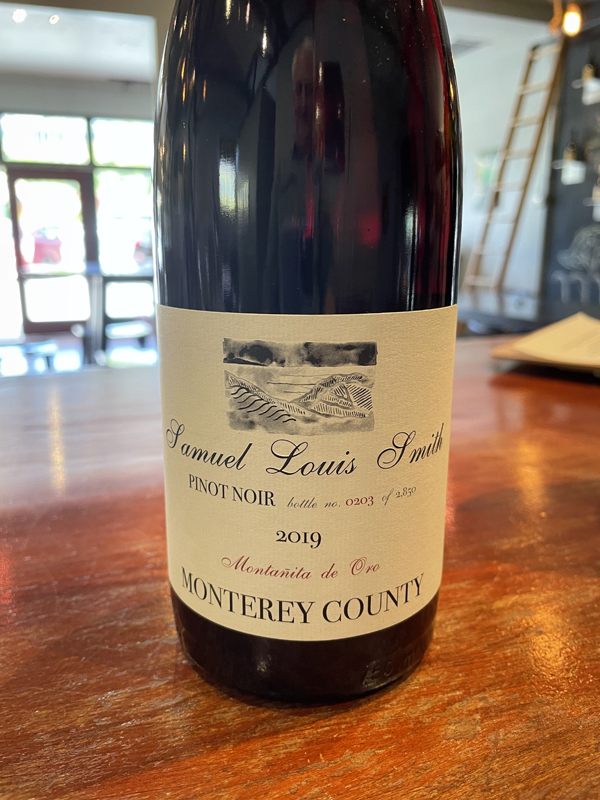
2019 Samuel Louis Smith, Pinot Noir “Montañita de Oro” Monterey County.
I have held this bottle for an extra few years, and love its purity and delicacy that it now shows with an array beautiful rose petal florals and silken red fruits flowing seamlessly on the weightless medium bodied palate, proving the talents of the winemaker Sam Smith and the quality of the sites used to make this wine. Smith, who’s also the head winemaker at Monterey’s Morgan Winery, sourced the grapes for his 2019 Montañita de Oro Pinot from organic or sustainable parcels at Carmel Valley’s Pelio Vineyard and the Coastview Vineyard in the Gabilan Mountain Range, which offers up a unique complexity of soils and mountain terroir influence with both sites seeing cool Pacific Ocean breezes that allows for a full ripening, but with low natural alcohol, making for a wine with Burgundy like class and balance. The mouth feel is light and dreamy with back cherry, strawberry and cranberry fruits leading the way along with partial whole cluster pop and hints of cinnamon and Asian spices, a touch of orange tea, dried herbs and subtle oak framing, this vintage is really hitting its stride, but still brightly fresh and it lingers a long time on aftertaste. Smith usually achieves just under 13% alcohol and relishes the acidity in his wines and this one in particular has delicious energy and tension, it is a graceful Pinot that will compliment a wide range of cuisine choices, from grilled salmon to spicy ginger beef, showing a very flexible character.
Sam Smith’s wines, under his own label, are exceptional offerings, which a collection of Pinot Noirs, like this one, a couple of Syrahs and maybe his best, a set of fabulous Chardonnays, with his Sta. Rita Hills Spear Vineyard being my favorite in his lineup. Smith, who I’ve mentioned here over the last five vintages, has now been fully discovered and these wines are getting fantastic critical acclaim and high ratings, so it is best to get on his mailing list asap to get a chance at these very limited bottlings. The vineyards used by Sam are some of the most exciting in their regions, Sta. Rita Hills, Monterey County, Coastal Carmel, Chalone, Santa Lucia Highlands and the Santa Cruz Mountains. This year’s “Montañita de Oro” saw a blend of Pelio, is located just west of Laureles Grade in Carmel Valley, in what will soon be the Carmel Coast AVA. Smith explains that this ultra cool climate vineyard is at 1,000 ft and just about six miles from Monterey Bay or Carmel Beach, once thought to be too extreme, is truly on the edge of viticulture. Continuing Sam adds that it is set on clay loam and is littered with diatomaceous shale, Carmel stones and fossils, evidence that this area was under the sea until about 12 million years ago. Coastview provides mature hillside vines to the mix, with deep flavors and concentration coming through, especially in this 2019 Montañita de Oro, which benefits from small yields and natural fruit intensity. Made with indigenous yeasts and close to 40% whole bunches, this Pinot was aged in a deft mix of mainly used barrels with just enough new to give this wine its polish and sex appeal, it should be rewarding for many years to come, and the 2021 version should be even better.
($39 Est.) 92 Points, grapelive
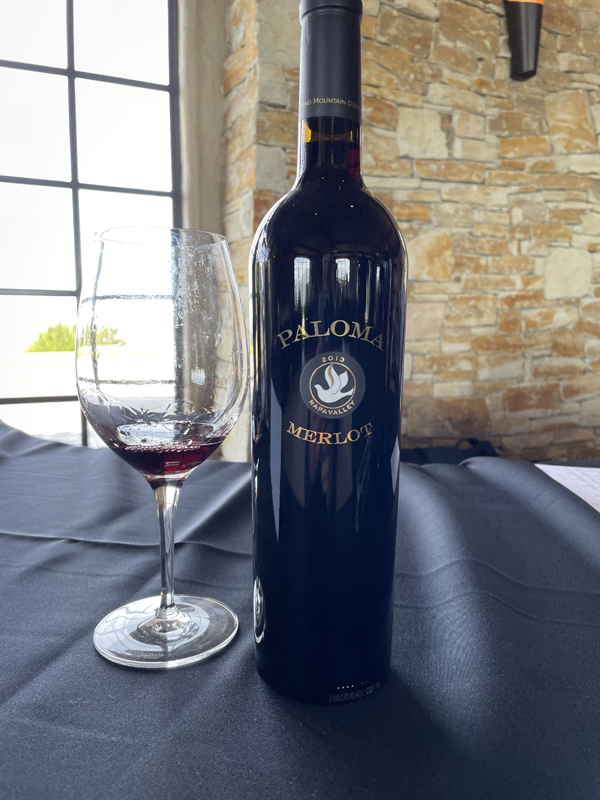
2013 Paloma Vineyard, Merlot, Spring Mountain District, Napa Napa.
Deeply flavored and colored, the 2013 Paloma Merlot, coming from high up on Spring Mountain, is beautifully structured with some Mountain tannins giving it an almost Cabernet Sauvignon like feel and presence, while the 10 years of age have brought a sense of regal grace and proportion. The full bodied palate of this vintage of Paloma Merlot unfolds with opulence and an expansion of dark fruit delivering blackberry, currant, black cherry and plum along with warm sandalwood, florals, sage, vanilla and mocha. Smooth and ripe tannins have folded in nice here with only a whisper of their presence appearing, just to keep things from getting boring and allowing this wine to be excellent with food and highlight the underlying power of this Spring Mountain terroir. For most vintages, the Paloma Merlot averages between 10% to 15% Cabernet Sauvignon in the final blend, which adds to the complexity here with the grapes getting separate picks and fermentations and then blended to taste by the winemaking team after some time in barrel. There’s plenty to admire here in Paloma’s classic Right Bank style Merlot and in the world of outrageously Napa wines, this remains one of the best values you’ll get in the region.
The Paloma Vineyard, founded by Jim and Barbara Richards back in 1994, is surely one of the best Merlot producers in California and Washington, along with Shafer, Ridge, and Leonetti to name a few and it is always a treat to taste their wine. Paloma, influenced by Duckhorn of old and of course neighbors Pride, which is not too far away on Spring Mountain, is still handed crafted by the Richards family, now led by Sheldon Richards and his mom Barbara, after the sad loss of Jim, who passed away a few years ago. Paloma which is Spanish for “dove” sits on a steep and tree-lined ridge at the very top of Spring Mountain, perched high up above the Napa Valley with tiny and unique clusters of mini climate parcels planted mainly to Merlot, but also with a percentage of Cabernet Sauvignon, both of which thrive here. The Paloma Vineyard is usually close to 10 degrees cooler on hot summer days than on the valley floor and the less hot temperatures, sun exposure, plus the volcanic soils all give these fabulous Merlots a unique character. The winemaker is all about not over shadowing the quality of the grapes with a traditional fermentation and aging regiment that includes 18 to 24 months in toasty French oak, with a high percentage of new Bordeaux style barrels to tame the natural tannin. I can see this wine aging well for another 5 to 7 years, and I look forward to trying the upcoming 2018 soon, which should be absolutely awesome!
($69 Est.) 94 Points, grapelive
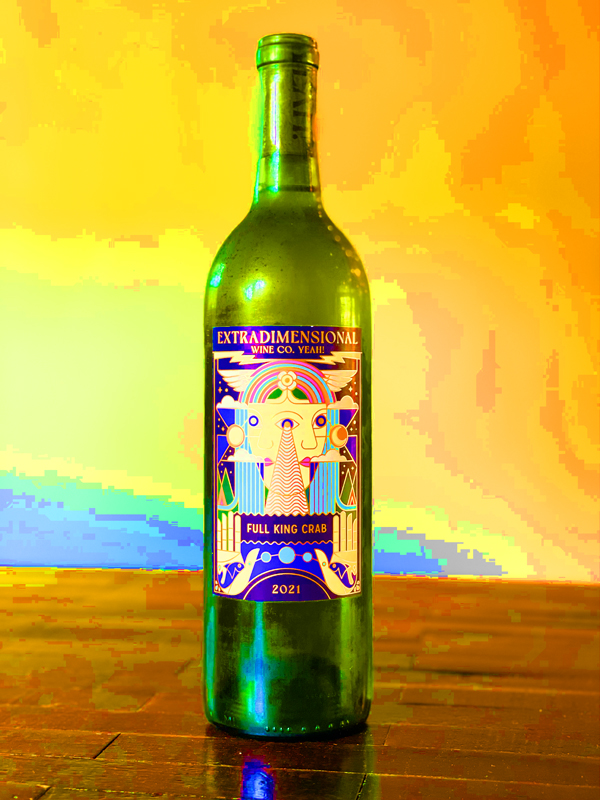
2021 Extradimensional Wine Co. Yeah!, Full King Crab White, Brosseau Vineyard, Chalone AVA, Monterey County.
The Full King Crab White Blend by Hardy Wallace at his Extradimensional Wine Co. Yeah! is a unique and tasty single vineyard blend of 40% Chardonnay, 30% Chenin Blanc, 15% Marsanne and 15% Viognier from chalky complex limestone based soils at the Brosseau Vineyard, in Chalone. If you’ve ever had the magical Mas de Daumas Gassac, a rare Languedoc white blend that sees between 5 to 7 days of skin contact, with 25% Viognier, 25% Chardonnay, 25% Petit Manseng, 15% Chenin Blanc and 10% other grape varieties including Marsanne, you’ll see the inspiration here! Coming from Brosseau’s organic vines in Chalone and set on chalky limestone, granite and volcanic soils the golden/yellow Full King Crab White shows plenty of pithy stone peachy fruit, quince, bright lemony citrus, green apple and stony/mineral notes along with a touch of yeastiness, tangy herbs, a hint of honeysuckle and lingering melon flesh textural element. There is a faint savory edginess from the skin contact, but it is perfectly balanced in this dry white that turns more generous with air and warm, mainly thanks to the opulent use of Chardonnay, while still having an invigorating sense of tension, impressive.
Winemaker Hardy Wallace tells (us) the reason this White Blend is called what it is, saying you can’t name a wine, “Full King Crab” unless it is both outrageously good and has a story to share. So he continues to share that not far from Big Sky, Montana, is the Corral Bar, which he calls a local’s spot ideal for a cold beer and a shot. On a recent visit with friends, he locked (eyes) in on some graffiti written on the bathroom wall. Instead of seeing the typical profane scribble, he read, “Otta Get The Full King Crab!!” The message struck me, and not because I craved the full king crab (it wasn’t on the menu). It went deeper. This is a message to always grab the full king crab in life – in whatever form it may appear. Hardy is known for his fanatic love of Mourvedre, but he is also deep into skin contact or fermented whites as well, and while this one isn’t as much of an orange wine in style, you’ll have to enjoy the funk to get through his offerings, which is not a bad thing. This lightly skin macerated Full King Crab is quite good and distinctive, almost old world in character with its mineral intensity and salty tones making it a brilliant food wine. Typically, Wallace does things with all natural methods, spontaneous fermentations, no new oak, and is very sustainably minded in his grape sources, preferring organic and or holistic farming to make his very unique wines, with this Full King Crab being no different as far as I know.
($45 Est.) 93 Points, grapelive
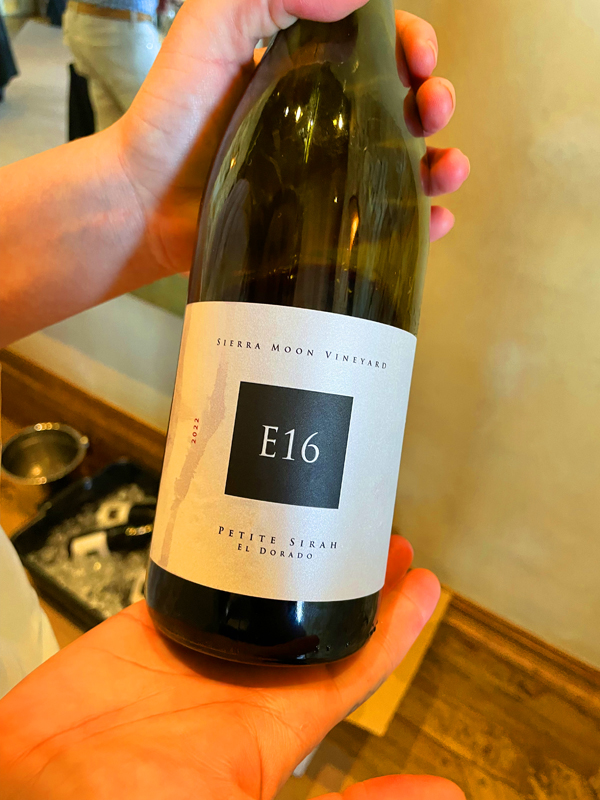
2022 E16 Winery, Carbonic Petite Sirah, Sierra Moon Vineyard, El Dorado County, Sierra Foothills.
The Sierra Foothills are alive with change and especially here at E16, with Adam Smith taking over from founder Robert Jones and bringing a new generation of wines to the region, with an upcoming set of wildly different offerings, including this beautiful Carbonic Maceration whole berry Petite Sirah, which I got to preview recently, along with a brilliant Grenache Blanc and a tasty Rosé of Barbera. Smith, who I believe was at Skinner, has a collection of wines made by the previous winemakers to move through through, and although they are quite delicious, it was his 2022 vintage that really excited me and this one in particular with its dark purple color and almost Cru Beaujolais quaffability and fresh fruit. The vibrant medium bodied palate starts with crushed blueberries, plum, watermelon and Italian cherry fruits, a pop of tangy herbs, liquid lilacs, flinty mineral notes and zesty spices all flowing in the mouth with a ripe and creamy vinous feel. This will be fabulous with warm Summer outdoor meals and BBQs and especially with a slight chill, you just can’t help but taking another sip, such is the fun nature in this re-imagined Petite Sirah.
The E16 Winery, located in Somerset, part of the Fairplay area, is set into a steep slope and naturally cool in the cellar and has what looks like an incredibly inviting setting with a tree lined creek, hillside vines and a shaded terrace. If you’ve followed E16 in recent years, you’ll need not worry about its fortunes, its future looks bright indeed with Smith showing his potential with the estate with these soon to be released gems. In the past the winery seemed focused on non estate, non region grown grapes with a nod to Pinot Noir and Chardonnay, but is now putting its energy into the local and especially the estate grapes, which is pretty exciting from what I tasted. There’s an interesting set of Rhone, Grenache Noir, Syrah, Viognier and Grenache Blanc and Italian varietals, Barbera, here as well as Petite Sirah, which gives a true taste California innovation. All the vines, on mineral rich soils, are sustainably farmed and carefully hand tended, which takes on a whole meaning in their Baby Rattlesnake parcel and with Smith making the wines, you’ll see an extra degree of handcrafted inspiration, like with this wine. Picked in the cool of night and with the whole bunches getting sealed in the fermenter for a short primary and then fully crushed and allowed to go fully dry, this carbonic Petite Sirah was then bottled early to preserve purity, vitality and juiciness. I am looking forward to following Adam’s efforts here at E16 and I highly recommend getting on their mailing list for the release of his first solo trio of wines!
($N/A) 91 Points, grapelive
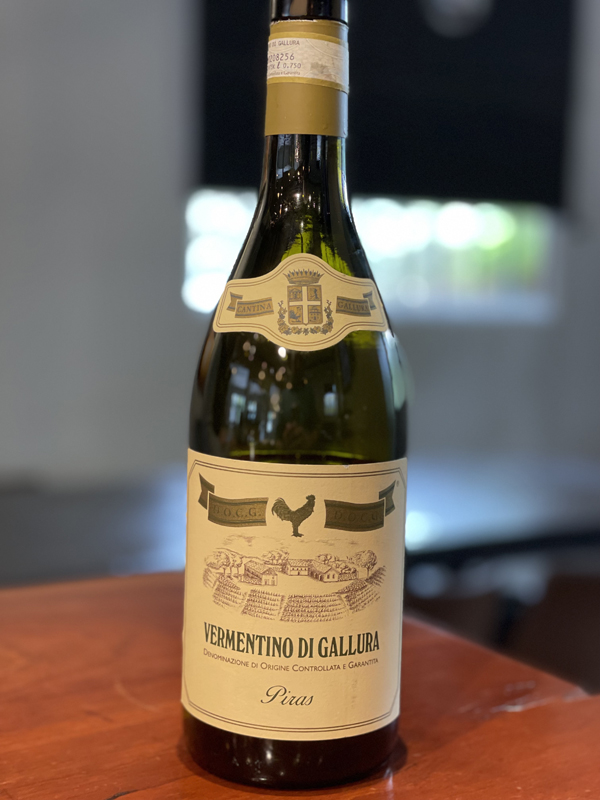
2020 Cantina Gallura, Vermentino di Gallura DOCG “Piras” Sardinia, Italy.
Coming from higher elevation vines and granite soils the Piras Vermentino di Gallura is an absolutely pure and stunning example of this Mediterranean Island’s best loved white wine with bright fruit intensity and mineral tones, showing apricot, citrusy tangerine, Kaffir lime and delicate tropical notes along with saline infused stone and orange blossoms. The clarity and precise detailing make this Piras wonderfully compelling and while it only saw a couple of months of aging and lees contact in the cellar it gains a pleasing viscosity and presence on the medium bodied palate making for a wine that can deliver flexibility in cuisine choices as well as being a confident Summer sipper. I’ve been enjoying a deep dive into Sardinian wine lately and have been blown away with the quality and diversity found here and learning the history and the debate on how it (winegrowing) all started here. It was commonly thought the Spanish brought the vines here in the 1300s, but now that is much in doubt with winemaking finds that way predate that, in fact there’s evidence suggesting there was wine production here before the Phoenicians were trading throughout the Mediterranean!
The Cantina Gallura, a co-op, founded in 1956, is located in Tempio Pausania, that currently has 160 producers contributing their grapes, at the foot of the Limbara Mountain in an area of Sardinia that has some conditions that feel like a continuation of the Dolomite Mountains with ancient granite based, sandy soils. While sunny here there are cool Mistral like breezes that give these wines an extra degree of complexity and balance, as this Piras Vermentino di Gallura shows. Cantina Gallura does quite a series of offerings, all terroir driven and made with traditional methods with stainless steel primary fermentations, in most cases, though some whites see a barrel fermentation, and mostly used barrel or cask aging to promote freshness and transparency. The wines of the Gallura have always been prized and now Vermentino di Gallura has a full DOCG, confirming to the world that this one of Italy’s top sites and guarantees an extra degree of quality. Interestingly Cantina Gallura does a sparkling version too, which I hope to try at some point, especially if I get a chance to visit this mysterious and historic island. The winery is mainly known for their 100% Vermentino bottlings, with this Piras being a single cru effort, expressing the nature of the place. Not a wine that we usually see in the states sadly, but one that deserves a search for!
($20 Est.) 93 Points, grapelive
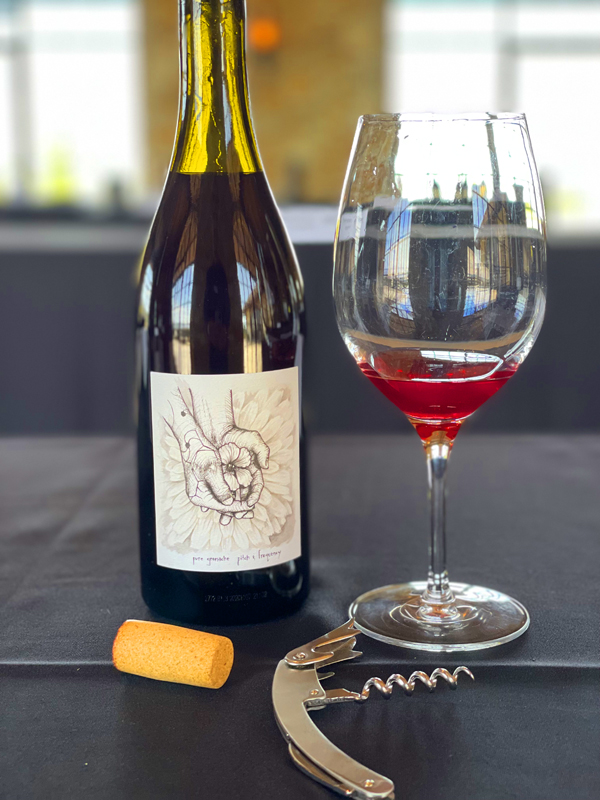
2021 Sheldon Wines, Grenache ”Pure Grenache – Pitch & Frequency” Sonoma County, California.
The 2021 Pure Grenache from Sheldon Wines is exceptional stuff with a gorgeous ruby and garnet hue in the glass with, as the name suggests, a stunning purity of profile with a fresh array of red fruits, including crushed raspberry, pomegranate, black cherry, strawberry and currant fruits along with cinnamon, liquid flowers, snappy herbs, white pepper and a hint of sandalwood in a wine with a heavenly, satiny Pinot Noir like, vinous medium bodied palate. The grapes from this wine, picked from two Sonoma County sites that are set in areas that get a lot of sunshine, but see cold night time temperatures which allow for ripe fruit density, smooth silky tannins and with lower Brix, with this vintage coming home with only 12.3% natural alcohol, making for a lovely quaffable Grenache, great for lighter cuisine, though (it) is complex and compelling from start to finish. The combination of sites, with varied soils from marine sedimentary to Sonoma volcanics adding fruit and mineral depth here, with Sheldon using a natural and minimalist or gentle winemaking methods to promote absolute transparency and varietal character. Usually made with a cool maceration and partial whole bunches, Sheldon’s divine, textural and translucent Grenache offerings get a soft handling and a slow pressing to neutral French oak where it ages just under a year.
Sheldon’s 2021 100% Grenache is a blend of two daily cooler sites with 63% coming from Luc’s hillside vineyard in the Fountaingrove AVA near Healdsburg and Chalk Hill, and with 37% sourced from the Ceja Farms Vineyard in the Sonoma Valley AVA, but closer to the Southwest or Carneros side, all of which helps make for an extremely low alcohol and elegantly fresh version of this grape, more like what you see from Spain Sierra de Gredos region. In recent years wines from that area, high up in the cool mountains above Madrid have been blowing minds around the world, like those of Dani Landi, Comando G and 4 Monos, and Dylan Sheldon, Grenache fanatic, has matched that kind of stylist beauty with his versions, which rarely exceed 13% natural alcohol and drink wonderfully uninfluenced by oak or numbing heat. These days we are seeing Grenache as a solo varietal in California more and more, but when Dylan started his program in 2003 he was one of only a handful of producers to so with such enthusiasm for a lighter and fresher style, while at the moment we are seeing some more versions like his, those from Angela Osborne of Tribute to Grace, Sandlands, Ian Brand and a few others are proof that it is not a passing fad, but a serious movement. The Luc’s Vineyard, which is planted mainly to Rioja varietals, has been a main source to Sheldon for many years now and provides Tempranillo, Grenache (Garnacha), Syrah and Graciano, which is a Sheldon specialty, for Dylan’s unique collection of wines that I highly recommend.
($40 Est.) 93 Points, grapelive
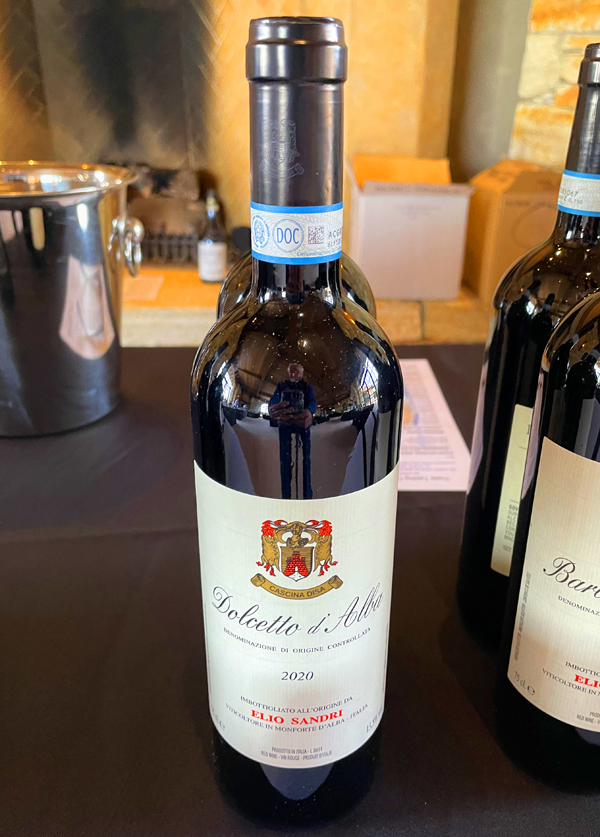
2020 Elio Sandri, Dolcetto d’Alba DOC, Piedmonte, Italy.
Elio Sandri Barolo has a cult like following here in the states and especially with the Sommelier crowd, so you hardly see them, but lucky for us their beautiful Barbera and Dolcetto wines are somewhat are overlooked and under the radar and this 2020 Dolcetto d’Alba is especially rewarding with beautifully structured dark fruits and subtle rusticity. I am quite fond of Dolcetto as a grape with its tannic frame and black fruit profile making it joyous with hearty cuisine, in fact the very first case of wine I ever bought was a 12 bottle box of early eighties Dolcetto d’Alba, after being first introduced to this varietal with a meal at a family Italian restaurant. The Sandri version, grown on Barolo terroir and is hillside fruit, is light years ahead of my first experiences with this grape and their organic farming and extra care in the cellar take this from an old school peasant wine to a level that will impress even the most snobbish of wine lovers and this 2020 vintage is definitely a year to look for. The medium weighted and firm palate of the Elio Sandri Dolcetto delivers a cascade of blackberry, plum, earthy currant and cherry fruits along with lilacs, wild mint, anise, all spice and stony mineral notes, finishing with a nice generous vinous feel, though remaining dusty dry and cleanly taut that sparks your appetite into gear.
Elio Sandri, based in Monforte, very close to the famed Serralunga zone of Barolo, is a traditionalist producer and makes his wines with minimal intervention and employs holistic, organic certified, methods in the vines focusing on the natural elements and purity of place. Giovanni Sandri, Elio’s father, founded the winery in the early sixties when he purchased Cascina Disa, where the modern Elio Sandri winery resides, it’s a property that sits up among some of the region’s highest hills, from where Elio crafts just 5 different bottlings. Sandri does two Barolo offerings, a normale and a Riserva, a Langhe Nebbiolo, a Barbera and this tasty little Dolcetto, all from estate grown vines in the Barolo appellation set on classic Marne (limestone) soils. Elio Sandri’s cooler east facing, ultra steep parcels, gets all hand tending, as the tractor can’t operate here, and the grapes see an extended hang time that allows full ripening, heightened aromatics and concentration, but with core of vibrant acidity for balanced and elegant efforts. The Dolcetto at Sandri is 100% de-stemmed and stainless steel tank fermented, after which it is aged in old Slovenian barrels to mature. Interestingly, Sandri uses whole cluster on his Barolo, which makes for a very gripping wine that needs plenty of bottle age to bring out its best, while the Dolcetto, and the Barbera, can be much more enjoyed in their youthful form, as this 2020 proves.
($21 Est.) 92 Points, grapelive
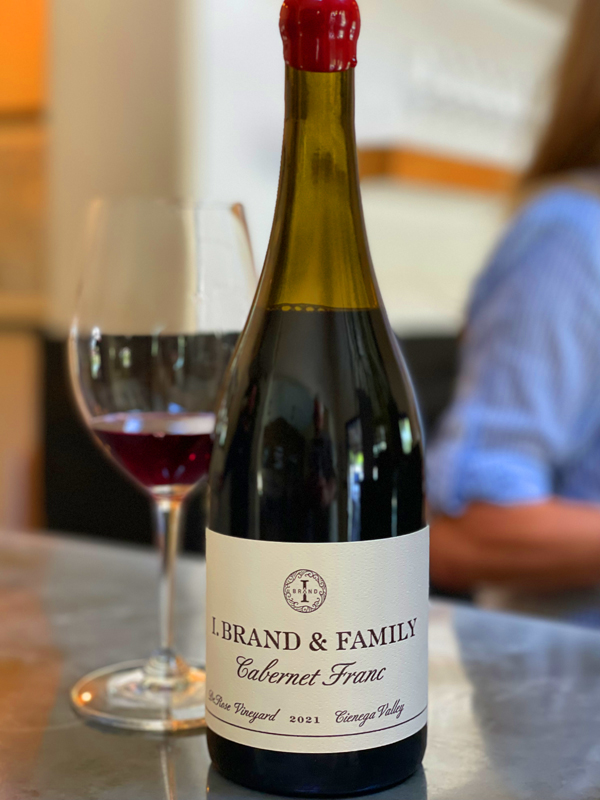
2021 I. Brand & Family Winery, Cabernet Franc, DeRose Vineyard, Cienega Valley AVA, San Benito County.
I’ve been obsessing on Cab Franc recently and this initial release of Ian Brand’s DeRose Vineyard version is a home run for lovers of this grape, combining old world Loire Valley character with sunny California fruit this is one of the best you can find. There’s an authentic and soulful nature to this 100% Cabernet Franc, which comes from the DeRose Vineyard in the Cienega Valley and set on unique “Dolomite” limestone and decomposed soils, it is a site that sees loads of sunshine and cool nights with a blast of cold air coming from the Pacific Ocean, all making for near perfect conditions for ripe fruit density, but with a lively form, especially in a vintage like 2021 that really has all the makings of being a legendary year. Highlighting that, this wine shows off a medium/full bodied and vinous palate of blackberry, plum, red currant and cherry fruits along with a classic touch of bell pepper, cedar, a mild earthiness, cigar wrapper and anise, as well as brisk natural acidity and a heightened sense of violets that goes from nose to finish. This Cab Franc captures varietal purity in the glass and is sublimely crafted to show off its Loire inspiration with poise, refined tannins and youthful vitality, it is a wine that will very rewarding with some good cuisine matchups and will continue to gain depth and complexity over the next 3 to 5 years.
This DeRose Vineyard Cabernet Franc replaces the Bayly Ranch version in Ian Brand’s signature series lineup, as the vines at Bayly were replanted and will no longer be available, but Ian is very excited by the quality here, and I’m in total agreement and incredibly impressed by this vintage. As I’ve said many times, Ian is something of a vineyard whisperer and has found some amazing sites from where he gets something extra special from, in particular his San Benito, Carmel Valley and Santa Cruz Mountains offerings, like this one. This wine joins his skin contact Pinot Gris and his rare Arneis white from this region in his latest collection of San Benito bottlings, all of which are beautifully crafted efforts, on par with his Massa Estate Cabernet and Chenin Blanc, which I have reviewed already here. Also, I loved Brand’s Cabernet Pfeffer that comes from the San Benito County as well, which has had vines since the mid 1800s. To make this DeRose Cab Franc, Brand and team used traditional methods with the grapes seeing a careful sorting and de-stemming with a cool maceration to preserve aromatics, with a gentle fermentation and the wine was aged over a year in a combination of well seasoned oak barrels. California’s Cab Franc offerings are reaching new heights and there are many fine examples from which to chose from, it is a category that is having its moment in the spotlight with Ian’s two distinct single vineyard wines, this one, that will be released soon, and his Bates Ranch, a more Bordeaux like bottle, being exceptional and well worth chasing down.
($42 Est.) 94 Points, grapelive
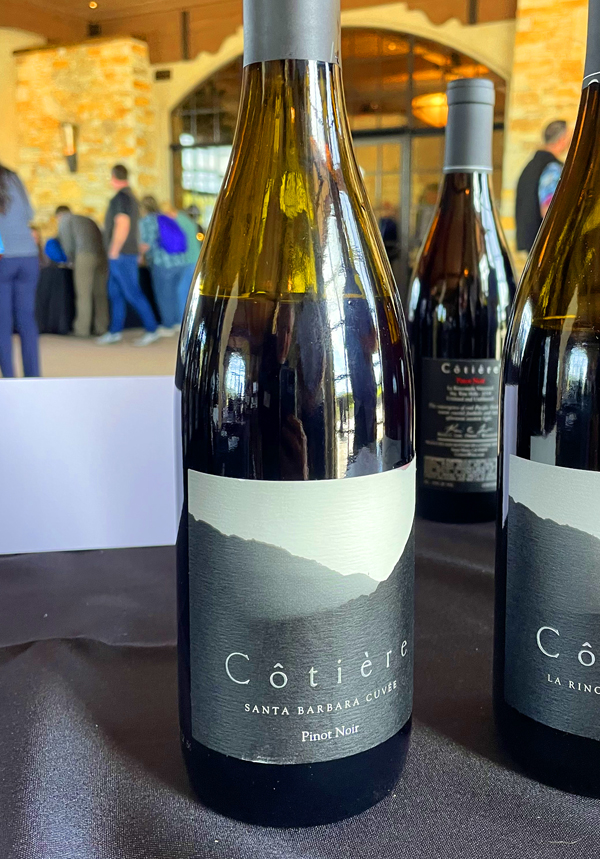
2021 Côtière Wines, Pinot Noir “Santa Barbara Cuvée” Santa Barbara County.
The beautifully balanced and aromatic Santa Barbara Cuvée Pinot Noir from Côtière is a top vineyard site blend from 70% Santa Maria Valley, 20% Los Alamos, and 10% Sta. Rita Hills, which puts together a seamless array of flavors on the vinous medium bodied palate. I was really impressed by the latest lineup from Côtière, which included some singular Chardonnays and Pinots from the Sta. Rita Hills, plus an exceptional Blanc de Noir (white Pinot Noir still wine), maybe my favorite dry white made from Pinot, and this bottling, which is absolutely gorgeous, even in its youth. This bright ruby hued wine is an excellent red fruited Pinot that shows off black cherry and crushed raspberry fruits, sweet and savory spices and floral dimension with a riveting partial whole cluster sultry tension. In this vintage Côtière, who are based in Santa Maria, used about 15% whole cluster and includes just the right amount of stem inclusion to give additional pop here, making for an exciting Pinot Noir to enjoy for the next 3 to 5 years.
For their 2021 Santa Barbara Cuvée, Côtière selected primarily grapes from the Rancho Ontiveros Vineyard is Santa Maria, making up the 70%, which with its deep loamy soils and cool conditions brings out fruit density and vibrancy with a subtle earthiness, while the Los Alamos and Sta. Rita Hills compliments the whole adding depth, bouquet and a bit of grip I think. This was a pretty deft job of reading the components and putting it all together, and in the end this wine really works and is an exceptional value too, if you are looking for something new that is light on the wallet for the quality in the bottle I highly recommend this one. Côtière which was founded by winemaker/proprietor Kevin Law in 2006, focuses on Pinot Noir, but also does Chard and some Bordeaux inspired wines as well with wines sourced from sites from the Central Coast to Napa Valley. Their Pinot and Chards come from premier vineyards including Talley Rincon Vineyard, Presqu’ile, Hilliard Bruce, La Encantada, Murmur Vineyard as well as La Rinconada and Sanford and Benedict, as well as the mentioned Rancho Ontiveros Vineyard. If you’ve not seen or tried these small lot Côtière Wines, now is a great time to check them out!
($33 Est.) 93 Points, grapelive
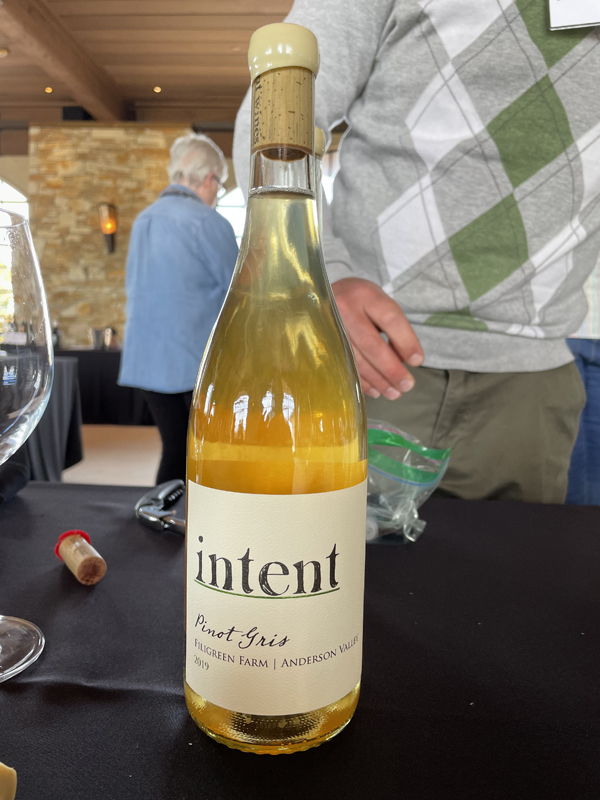
2019 Intent Wines, Pinot Gris, Filigreen Farm, Anderson Valley.
The 2019 Intent Pinot Gris is slightly cloudy with a golden straw hue in the glass and bursts to life in the glass with Alsatian intensity and class showing beautiful aromatics and a crisply dry palate that brings green apple, quince and kumquat fruits to the fore along with mineral tones, clove and ginger spices, orange blossoms and a hint of garden herbs. Air brings out a touch of apricot, brown butter, wet stone and zesty lemon marmalade as well as peachy or melon flesh viscosity. This quality or generous feel, while still being brisk and lively, is no mean feat with this grape and in a vintage as plush as 2019 was, impressive that. This vines for this lovely Pinot Gris come from the biodynamic gardens and vineyards at Filigreen Farm, in the Anderson Valley, that are devoted to the valley’s specialty, Pinot Noir and Pinot Gris grapes. Winemaker Patrick Callagy notes, that this unique estate is Demeter certified biodynamic, no mean feat in itself and this wine shows the quality and life from these carefully farmed vines that are set on marine sedimentary soils can do. The Intent collection, which just added a Sangiovese and a Rosé is a new and exciting project that should be on your radar, and after tasting their latest releases I highly recommend not waiting around, these are well worth checking out, especially the Golden Fleece Pinot Noir and this Pinot Gris.
It was great to meet up with Patrick Callagy, in person recently, a California Culinary Academy trained chef and turned winemaker, who has launched his personal project Intent Wines with a solid set of initial offerings including his tasty Pinot Gris, as well as Syrah and a set of beautiful Pinot Noirs. As I noted in my last review of Intent Wines, Patrick met winemaker Eric Sussman in 2002, post graduation, when Sussman started his now famous Radio Coteau winery, helping out with that harvest and after a few years of extremely long hours, Callagy’s curiosity/persistence paid off when he became Radio Coteau’s first employee. After gaining loads of wine growing and winemaking experience Patrick founded Intent Wines with the 2017 vintage, bravely starting his own label in 2020, considering the difficulty of getting stuff done in the middle of the COVID pandemic, which Callagy says was very challenging but he survived and we are now rewarded with his wines. The focus here is to source from organically grown, or as Patrick explains, correctly farmed sites, which is where his Intent name comes from. The Intent 2019 Pinot Gris was, as Callagy reveals, initially fermented in temperature controlled stainless steel tank to preserve freshness and natural acidity then it was barreled down into neutral (well used) French oak to add complexity and a bit of texture, all of which was successful and makes it a very compelling example.
($30 Est.) 92 Points, grapelive
Grapelive.com – April 2023
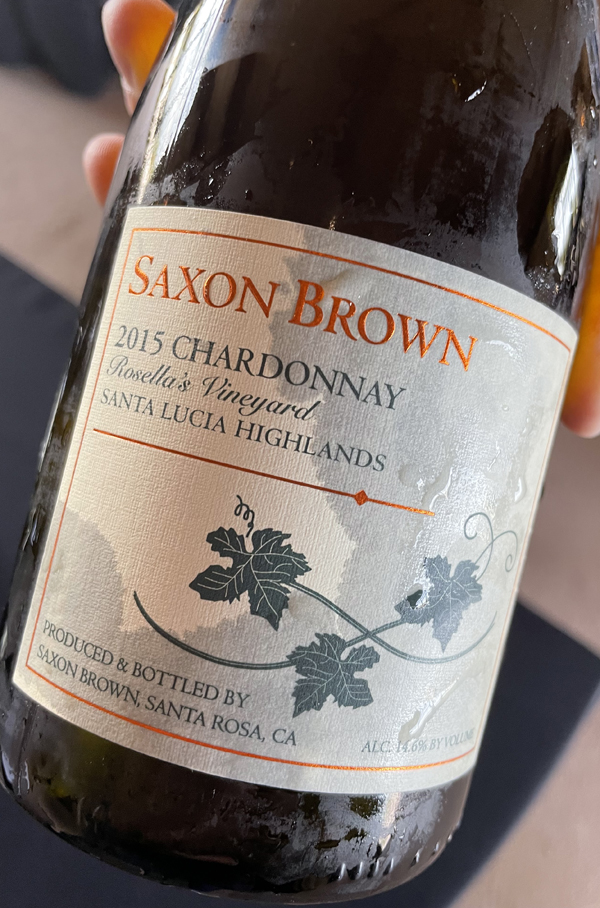
2015 Saxon Brown, Chardonnay, Rosella’s Vineyard, Santa Lucia Highlands.
Jeff Gaffners Saxon Brown winery based in Santa Rosa specializes in hand crafted small lot wines from outstanding vineyard sites throughout the north and central coast of California and well known for there Pinot Noir, Syrah, Zinfandel and Chardonnay, which should not be overlooked, in particular this absolutely fantastic 2015 Rosella’s Vineyard, which I was lucky to try recently at a small trade tasting. This is one of those rare experiences when you are totally blown away by a wine that maybe you weren’t expecting to shine as brightly as you’d think, and certainly this bottle was extraordinary, wiping away prejudices or notions of California Chardonnay can be when made to age! I shouldn’t have been surprised by Gaffner, who has a brilliant touch with Chard, and or Rosella’s, which is an awesome vineyard, but the combination does provide some magic here with this 2015! The first impression I came up with was that this was an old school Meursault and or a Premier Cru Chassagne-Montrachet with some maturity, clearly showing secondary fruit elements, though still pristine in detail and very lively with mineral tones, depth and just the right amount of reductive matchstick to go with the core of honeyed pear, apple, lemon curd and apricot fruits. In the glass, nicely golden, this excellent Chardonnay adds white flowers, clove spice, saline infused stones, hazelnut, leesy toast and a touch of creamy butterscotch. If have this bottle tucked away or can find it, you are in for an epic reward!
One of California’s premier sites, the Rosella’s Vineyard was planted in 1996 by Gary Franscioni, partner to Gary Pisoni in the Garys’ Vineyard and founder of Roar wines, and has many different parcels and rows of diverse clones of Pinot Noir, Syrah and Chardonnay, which loves the cool ocean breezes and the sandy loam soils here in Monterey’s famous Santa Lucia Highlands. The impeccably farmed Rosella’s, named for Gary’s wife, benefits from the region’s long hang time and the southeastern exposure that makes for ripe fruit, but with vibrant acidity that gives the wines from this vineyard their exceptional richness and balance, especially the Chardonnay, as proved here in Jeff Gaffner’s perfectly matured example. Gaffner says he focused on creating a wine that was built to age and have Burgundy like characteristics, going on he explains that the Rosella’s Vineyard Chardonnay was picked cold in the early morning hours and he transferred the grapes immediately to the winery where they were whole fruit pressed. The juice, he adds, was cold settled for three days at 40F before being racked to 40% new French oak barrels and inoculated with select Burgundian (Montrachet) yeast. Then after 90 days of cold fermentation, the Chardonnay saw sur lie (on the Lees) aging in the barrel for an additional 9 months with a delayed and lengthy 100% malolactic fermentation. To preserve purity and freshness the wine was soon there after bottled, unfined and unfiltered, with some cases being held in the library for a late release, which has paid off big time, such is the reward that this vintage is now delivering.
($52 Est.) 95 Points, grapelive
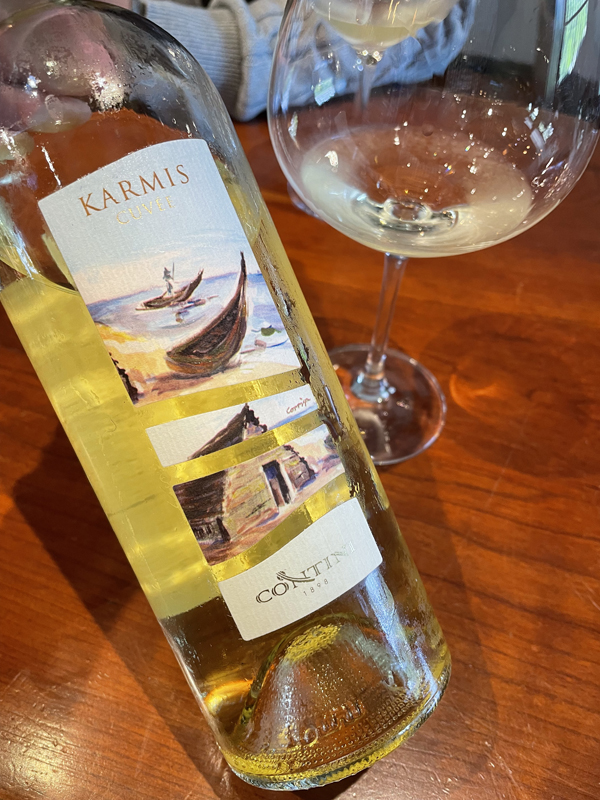
2022 Vini Contini, Karmis Cuvée, IGT White, Isola dei Nuraghi, Sardinia, Italy.
Fresh from Sardinia, the Karmis Cuvée from Contini is a bright, fresh, ultra dry and mineral driven white blend of native varietals Vermentino and the rare Vernaccia di Oristano, which is its own distinct grape that is used to make both dry and sweet wines on the island, and helps give this wine added complexity and verve. This new vintage is crisply detailed and perfect for the sunny Spring and Summer weather and will be fabulous with lighter cuisine and especially briny shellfish dishes and outdoor dinning with tangy citrus and stone fruit on the lively palate. As this pale golden white opens in the glass you get an almost white Rhone or Provence like character with tangerine, tart peach and melon fruits, a steely taut frame, saline, wet stone and hints of white flowers, tropical essences and snappy herbs, reminding me of Grenache Blanc and Clairette based wines. This all stainless steel fermented and aged white is lean and vibrant, but has enough vinous quality to impress and it should prove rewarding for short and midterm aging, though you’ll very much enjoy this right now and no patience is needed, it is a great alternative to the sea of generic offerings in its price point, in fact it is an exceptional value and a very unique taste of the Mediterranean! This wine comes from mostly bush trained vines set across three terroirs, Tirso valley, Sinis peninsula and Terre di Ossidiana, all about 200 meters up with a combination of soils, including, according to the winery, partly alluvial, sandy, slightly clayey and some volcanic in make up, which adds to the depth here.
In the last year or so I’ve been introduced to a few bottlings of Vernaccia di Oristano, an at least 3,000 year old local grape with no know relatives outside of Sardinia and unrelated to the famous Vernaccia di San Gimignano in Tuscany and native to the Tirso river valley that crosses the island of Sardinia before emptying into the Gulf of Oristano, hence the name. My friend and winemaker/sommelier Giuseppi Cossu, a native of Sardinia, who lives here in California most of the year, has now on a few occasions brought back from Sardinia some amazing wines to show me, sadly many of which don’t get exported to the states. Vernaccia di Oristano, which was first documented in 1327, was originally thought to have been introduced to the island of Sardinia by the Phoenicians, but grape seeds now have been found here that were over 3,000 years old, making it almost certainly a native grape that was here much earlier than previously thought. Vermentino, which retains loads of acidity, is more widely grown around the Mediterranean and known as Rolle in parts of France, it is commonly found in the Rhone Valley, has a long history here on Sardinia, though also very famous on Corsica as well in the Liguria region of Italy too. This was my first Contini wine, a winery that dates back to 1898, previously I had Gostolai with these grapes blended, and I was thrilled with the Karmis, which was made to highlight the Vernaccia di Oristano, with about 70% and backed up by the Vermentino 30% in the typical vintage. Soft, direct pressed to temperature controlled stainless steel vats where it saw about 3 or 4 months with some lees stirring, but no malos, before being bottled to preserve absolute purity and its refreshing character.
($20 Est.) 92 Points, grapelive

2018 Kenefick Ranch Winery, Cabernet Franc, Caitlin’s Select, Kenefick Ranch Vineyard, Estate Grown, Calistoga, Napa Valley.
It was a great pleasure to meet up with Chris Kenefick and taste through his latest set of wines from his family’s vineyard close to Calistoga and especially this 2018 Cabernet Franc Caitlin’s Select, which combines the power and depth of its Napa valley fruit with the cool elegance and perfect balance of the vintage, it’s a spectacular wine and one of the best values (in Napa wines) I’ve seen in recent years. This Bordeaux style Cab Franc, which typically includes some small percentage Cabernet Sauvignon and Malbec, is deep purple/garnet in the glass with exceptional aromatics of violets, creme de cassis, crushed berries, mixed spice and a fine sweet smoky note that leads to a opulent and still lively palate of blackberry, dark cherry, currant and plum fruits along with cedar, licorice, a faint hint of green pepper, dried sage, coco powder and a nice framing of vanilla toast from the French oak. While the 2019, which is just out now, promises a fuller body, more chocolately and with lush ripe tannin, this 2018 is singing a more seductive tune and has a structured, firmer sense to it and I love it, it reminds me of the best of 2014 Napa and it should age gloriously. In this style of Cabernet France, which combines the density of Napa and the grace of Saint-Emillon (Bordeaux), there are few that can rival this one for quality and price, notably Corison, Chappellet, Ridge Estate, Wm. Harrison and Ian Brand’s Bates Ranch, so Franc fans will want to track this one down as soon as possible!
Kenefick Ranch is a fantastic 125 acre vineyard located beneath the Palisades of Mt. St. Helena on the east side of Calistoga and is widely known for the quality of their grapes, which they mostly sell to top end wineries, though they keep a small amount for their small label. Owned by the Kenefick family, with Chris running the show these days, the vineyard has been in operation since 1985 with hillside vines mainly planted to Bordeaux varietals. The Kenefick Ranch Winery started with their 2002 vintage wines and has now after 20 or so years has gained an enthusiast following, though keeping incredibly realistic pricing, which is remarkably cool, and this wine is a top bargain in the lineup. For his Cabernet Franc, Chris went with a three day cold soak, extracting loads of color and flavor, and it went through a two week fermentation with two daily aerated pump-overs until the wine got below 1 Brix. The delistage process was employed twice during fermentation, meaning the wine was racked off and returned back to the tank, and the wine was then pressed to French oak barrels with close to 60% new oak with this vintage seeing a full eighteen months before bottling, after which it was rested in the cellar for another almost 24 months. I also tried Kenefick’s signature Cabernet Sauvignon as well, and while it was itself a fabulous wine, I couldn’t stop thinking about this brilliant and vinously pleasing Cabernet Franc, and I could imagine it with a variety of cuisine options, though I can see it going perfectly with duck breast with a berry reduction and or a flank steak.
($50 ESt.) 95 Points, grapelive
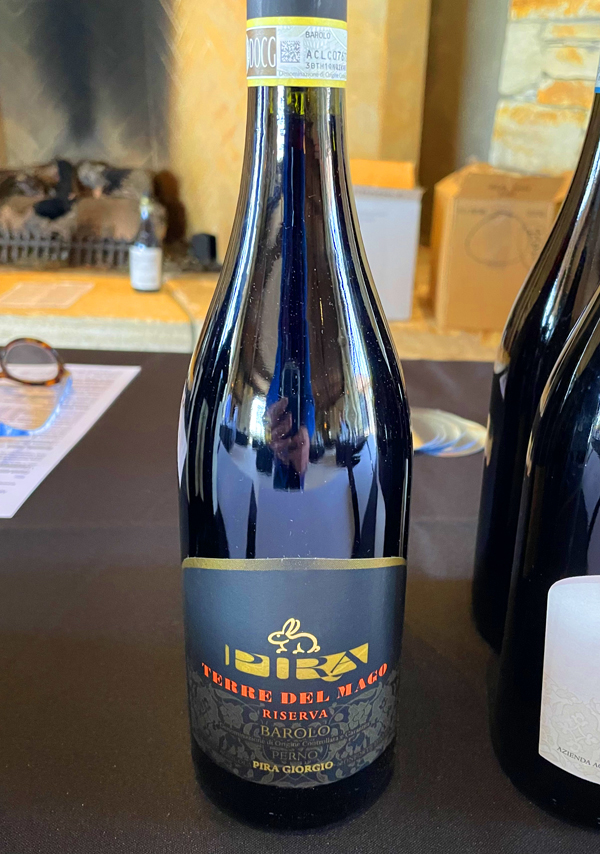
2016 Giorgio Pira, Barolo Riserva DOCG “Terre del Mago” Piedmonte, Italy.
I had never seen or tasted the wines of Giorgio Pira, who’s family has been growing grapes near the village of Perno for the better part of a hundred years before our declaration of independence and now farm steep north facing parcels in the Barolo zone, and I was impressed with the wines I tasted, which included a 2019 Langhe Nebbiolo and this gorgeous 2016 Barolo Riserva. With real stunning concentration and tannic backbone, this Barolo, which they call the “Terre del Mago” (Lands of the Wizard) comes from vines that were replanted in 1971, it delivers an attention grabbing impact on the full bodied palate with a traditional array of macerated cherry, plum and mulberry fruits along with dried rose petals, porcini, hoisin, anise, snappy herbs and cedar notes. This Barolo is dark garnet with brickish edges and while firm and structured still manages to be generous and lengthy, it opens nicely in the glass to reveal a deeper earthy/savory intensity and makes for a serious wine that truly needs a hearty meal to bring out its best features. I look forward to checking out Pira’s Barolo normale as well, which unfortunately, wasn’t at this tasting.
Giorgio Pira and family, focus exclusively on Nebbiolo and have two main clonal selections in their Laut (Lieu-Dit) with Michet and Lampia clones interplanted in their steep sloping vineyards, that are on what they say is iron (mineral) rich soils with an underpinning of Helvetian sandstone. Located near Monforte and with its cooler exposure these Giorgio Pira wines show off a distinct terroir character and balance, especially this limited Riserva bottling, which is absolutely a cracker of a wine. The farming here is sustainable and holster with many natural practices with these vines getting only hand tending and harvesting, with serve care and selections of only the finest Nebbiolo grapes. In the cellar the Pira’s go for a natural style, including some stem inclusion, with indigenous yeast fermentation that includes a lengthy 25 day maceration with hand cap punch downs before the wine put to cask, which is in large and old 20-year-old Slovenia Botti. The Riserva Terre del Mago matured in the wood for 48 months and then rested in bottle for another three years prior to its release, which was this Spring of 2023! Only 125 cases of this 2016 were made, and while not cheap offering, it is beautifully portioned wine that should age well for another 15 to 20 years.
($87 Est.) 94 Points, grapelive
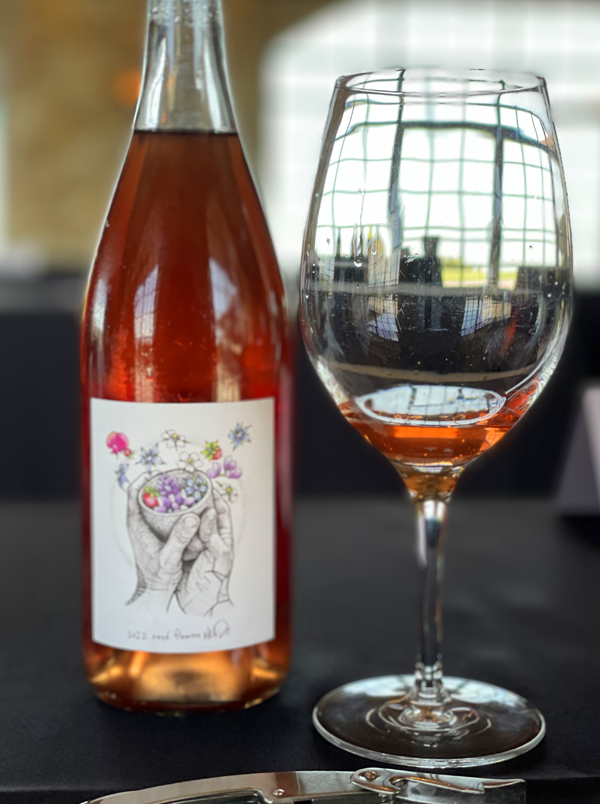
2022 Sheldon Wines, Rosé, Luc’s Vineyard, Fountaingrove AVA, Sonoma County.
The beautifully Summery 2022 Rosé from Dylan Sheldon at Sheldon Wines is an unoaked, low alcohol and bone dry pink made uniquely from Rioja varietals with 95% Tempranillo and 5% Graciano, a grape Sheldon has fallen in love with along with his signature Grenache, and is a wine that will slow the world down, making you smell the flowers and smile deeply. The palate of this pink/salmon and orange hued Rosé is refreshing with a nice cut of early picked acidity and mineral tones, it pleases the mouth with bright strawberry, ruby grapefruit, sour cherry and watermelon flavors as well as hints of dried herbs, wet flint, spice, subtle floral rose water and orange tea notes. This vintage feels ripe, vinous and smooth, but has plenty of zest and tang to keep things cleansing and vibrant, reminding me of some my favorite old world Rosés from those Rioja Rosados, like from Muga or Ostatu and some of the Provence Rosés that are just that a bit more feral in style. I know, there’s a lot of interesting dry Rosés out there these days, but this one, like Arnot-Robert’s Rosé of Touriga Nacional and Ryme’s Rosé of Aglianico are rare stand outs that are worthy of the chase to find them. Besides this new Rosé, Sheldon has two new reds, a solo varietal Grenache, a blend of Graciano, Syrah, Petite Sirah and Sangiovese, and a very limited sparkling Rosé that are delicious
For his Rosé, Dylan Sheldon chose, in 2022, to focus on Tempranillo and the small dose of Graciano, which was sourced from the small hillside Luc’s Vneyard, which Dylan has has working with for the better part of a decade now, that is in the recently formed AVA of Fountaingrove that is not too far away from Healdsburg and Chalk Hill. The terroir here is distinct with warm exposures and cool nights helped by the Ocean influence that comes up the Russian River and the volcanic, mineral rich soils that all combine to provide rich and complex fruit, with Sheldon taking full advantage of it for a beautifully balanced collection of wines from here. The Luc’s Vineyard is 100% organically farmed and the small yields give depth and concentration in his wines, with Dylan working to achieve textural, transparent and elegant wines, using no new oak and picking his grapes with over Brix to keep the wines lively and food friendly. The Rosé, coming in at 11.5%, was, as mentioned, early harvested as a field blend of the Tempranillo and Graciano grapes and saw a gentle whole cluster cold pressing with just an hour or so of skin contact to achieve this pretty color, after which the wine was fermented and aged exclusively in stainless steel. The Sheldon Rosé was bottled unfined and unfiltered and shows lovely purity of form with just a touch of sultry earthiness that adds to the enjoyment here. Those that have read my prior reviews, will note that these offerings from Sheldon are some of my personal favorites with the lighter touch and dynamic style really hitting the spot.
($27 Est.) 91 Points, grapelive
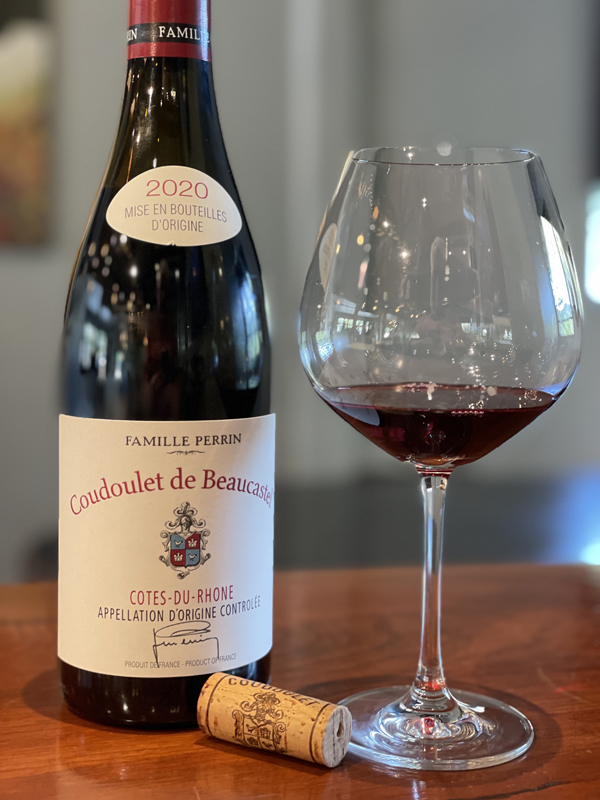
2020 Coudoulet de Beaucastel – Famille Perrin, Cotes-du-Rhone Rouge, Southern Rhone Valley, France.
The beautifully purple/garnet 2020 Coudoulet de Beaucastel is still youthful and bright in the glass, but regal and opulent with lush black and red fruits leading the way on the medium to full bodied palate. This wine (is) made from about 40% Grenache, 20% to 30% Syrah, depending on the years best fruit, 20% Mourvedre and up to 20% Cinsault, again the vintage will dictate the amount here, with 2020 having the full 20%, which adds to this wine’s juicy vibrancy and moderate alcohol. There’s boysenberry, chocolate covered cherries, plum and some creme de cassis along with touches of crushed lilacs, anise, warm rock, camphor and grilled herbs. The Coudoulet Cotes-du-Rhone red has long been a wine I have admired for the value and substance found here, while the Perrin empire is large, so is Guigal, Jaboulet and Chapoutier, and they all make some sublime wines, with this Coudoulet being not far off Chateauneuf-du-Pape. It comes from the same terroir with an underpinning of Molasse seabed, of the Miocene period, covered by diluvial alpine deposits (rolled pebbles), or Galets, identical to the vineyards of Châteauneuf-du-Pape. The Coudoulet de Beaucastel is often considered the “Baby Beaucastel” and it is literary concurrent to their historic Châteauneuf property! When in 1936, Châteauneuf-du-Pape gained notoriety becoming the very first French appellation or official AOC, which was boon for the area around Avignon, or the new home of the Pope. It was a messy process to decide what vineyards were in the new formed zone with some winners and some losers and the existing vineyards at Beaucastel were divided up and the 75 acres of Coudoulet vineyards were strangely not part of the official Châteauneuf-du-Pape AOC in the end. Even though the vineyards are located just east of the vineyard of Beaucastel and that it terroir has its similarities, it became just a Cotes-du-Rhone, but a really really good one. With the Coudoulet Cotes-du-Rhone the winery employs a classic maceration and fermentation that occurs in cement tanks for 12 days, before seeing a gentle pressing, in pneumatic presses, after which the wine is blended from the different varietals after malolactic fermentation and aged in large, mainly used, oak Foudres for close to six months.
Château de Beaucastel’s history dates back to 1549, when Pierre de Beaucastel purchased the original estate vineyards and built a manor house or chateau as the name suggests. In 1909, by chance another Pierre, Pierre Traminer, the winery notes, purchased the property, which he later transferred to his son-in-law Pierre Perrin, who started the dynasty here in the region that continues today, where the fourth and fifth generation of Perrins run this famed wine estate. I have been lucky enough to have sit in on amazing vertical tastings with and without some of the Perrins, including a memorable event with Francois and many vintages of their Hommage Jacques Perrin Châteauneuf, which was one of my all time great tastings! Throughout the generations the (Perrin) family’s values have remained, with an absolute respect for land and terroir that led them to be pioneers into biodynamics and the pursuit of authenticity, balance, and elegance in their wines. Beginning with all organic farming in 1950 and then full biodynamic farming by 1974 even earlier than some of the greats of Burgundy. There is deep conviction, with the Perrins, that the grapes must have ripe and concentrated flavors to make an outstanding wine and much has changed in the cellars over time to reflect this, going away from the meaty, rustic and Bret affected wines of the eighties to a cleaner and more fruit driven style. Most of the difference between the top Château de Beaucastel Rouge and this Coudoulet de Baucastel bottlings is actually is down to the percentage of the main grapes, with Coudoulet having more of an even mix of varietals, while its big brother Beaucastel has always had a Mourvedre focus, even though it always has some amount of all the13 classified grapes, like Vieux Telegraphe, and unlike the Grenache focused Rayas and Pegau, as well as having much more Cinsault in the final blend, which makes it more easy and fresh than the top wines at Beaucastel. The Coudoulet de Beaucastel Cotes-du-Rhone Rouge is a great way to enjoy the best of Châteauneuf, without paying the much higher price of the classified versions and I highly recommend it for Rhone enthusiasts on a budget, who want the best bang for the buck they can find.
($32 Est.) 92 Points, grapelive
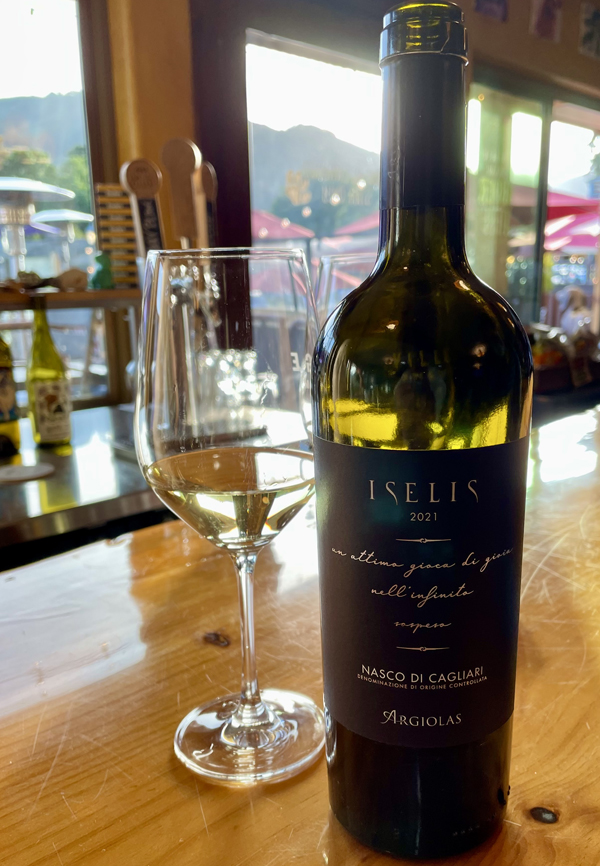
2021 Cantina Argiolas, Nasco di Cagliari IGT White, Iselis, Sardinia, Italy.
This beautifully aromatic, pale straw colored and crisply dry all stainless steel raised Iselis white is made from 100% Nasco di Nuraghi, a rare local grape that has no known relative and found only here near the Sardinian capital Cagliari, on the Marneo-calcareous soils and with hillside vines. There is a deep floral, white flower nose, mineral intensity and a bright citrus led lighter framed palate with peachy elements and subtle tropical notes here on the 2021 Nasco di Nuraghi, which has an almost Riesling like impact and vitality. To capture this grape in its purist sense and terroir nuance, Argiolas went all stainless and cold fermentation in tank with just 60 days on the lees to promote freshness and tight detailing, all of which make it a sublime choice with seafood, especially shellfish and white fish dishes. A huge thank you to my friend and Sardinian native Giuseppi Cossu for bringing this wine back from a recent visit to his homeland!
Most all of the vineyards that Argiolas owns or usess are located mainly in the areas of Trexenta and Sulcis where they control some 600 acres that are planted to indigenous Sardinian varietals, which is a long way from when founder Antonio Argiolas, who died in 2009 at the age of 102, inherited just seven acres of vines from his father in 1938 and was introduced the island to modern viticulture. The winery notes, His sons, Franco and Giuseppe, replanted many of the vineyards in the 1980s with the goal of reducing yields and focusing exclusively on the Sardinian grapes and more recently Argiolas brought in the hugely talented enologist Mariano Murru, who has made this winery one of the best in Italy. Mostly known for their mainstream offerings, Vermentino di Sardegna (Rolle) and Cannonau di Sardegna (Grenache), Argiolas also does lots of native rarities, like this Nasco di Nuraghi, along with Bovale Sardo, Isola, Monica and Nuragus to name just of few of the dozens of unique varietals that are found tucked away in remote parts of Sardinia. This one is almost impossible to find in the states, but I highly recommend exploring all of the Argiolas offerings!
($30 Est.) 93 Points, grapelive
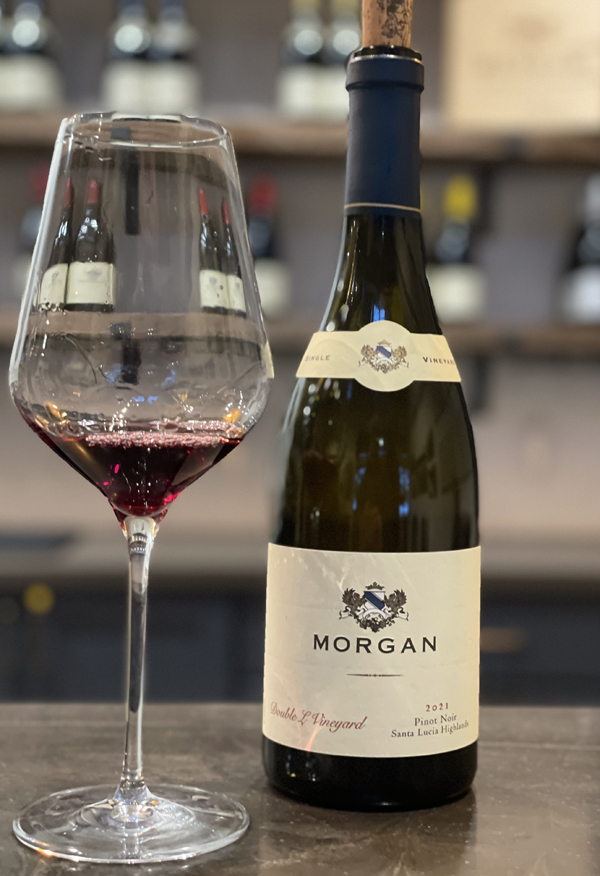
2021 Morgan Winery, Pinot Noir, Double L Estate Vineyard, Santa Lucia Highlands.
The latest Double L releases, Chardonnay and Syrah, are stunning wines, but especially Morgan’s flagship Pinot Noir, which shows off the vintage to near perfection. This is gorgeous stuff with a layering of silken Pinot fruits, black cherry, wild plum and bramble berry along with deft oak, mineral tones, delicate florals, smoky vanilla and orange tea notes all folding together on the medium bodied palate. The energy and lively acidity in the background lifts the bright ruby and garnet hued Double L up and gives this Pinot its elegant core, while still allowing for a rich and rewarding mouthfeel, this year’s version has classic potential and should get even better in the coming 3 to 5 years in bottle. I was more impressed with every sip and as it opened hints of rose petal, mocha, sweet and earthy chanterelle and Asian spices came out in the glass, this is easy to love and gains tremendously with time and benefits from a cuisine that matches its graces. The current set, again, up and down the range here at Dan Lee and family’s Morgan, led by winemaker Sam Smith are nothing short of extraordinary and as mentioned in recent reviews, this winery has it dialed in and is in want of nothing joining the elite wines in the region.
The sustainably farmed Double L Vineyard was originally planted back in 1997 and today Morgan’s Estate vines are the only officially certified organic site in the Santa Lucia Highlands. The Double L ranch, located at the northern end of the AVA has north-south row orientation and cool Ocean influences that provides optimal wind and sun exposure that helps makes for beautifully balanced wines, as this 2021 Pinot shows. This bottling has multiple clones of Pinot Noir that adds complexity and depth to this wine, with the region’s sandy loam soils and long hang time giving deep flavors and color to the these hand tended grapes. The winery uses a combination of native and cultured yeasts that began fermentation in open top tanks with a gentle maceration and hand done punch downs to extract all the color, flavor and structure in the wine. After fermentation in small separate lots, this young Pinot was transferred into barriques with toasty 40% new French oak, with this vintage seeing 10 months of aging in wood before being carefully blended and bottled. This outstanding vintage’s mix of LT (La Tache), 114, Swan, 943 and Clone 4 gives this release a unique personality with a heady mix of dense, ripe and satiny fruit and savory elements. I highly recommend securing some of this wine, as well as Morgan’s rare single clone Chardonnay (96) and Pinots (RC), which are very individual efforts that deliver exceptional quality and style.
($75 Est.) 95 Points, grapelive
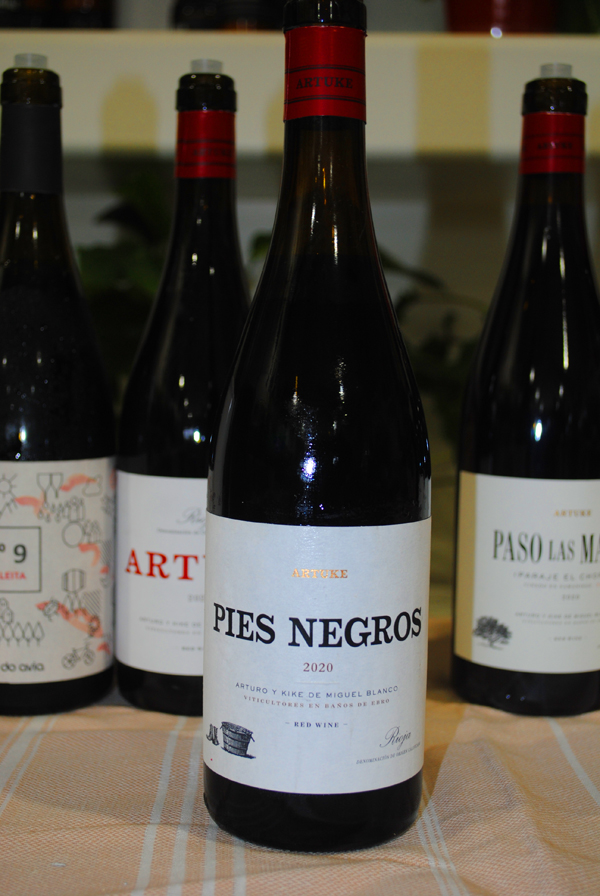
2020 Bodegas y Vinedos Artuke, Pies Negros, Red Rioja, Spain.
Artuke’s Arturo Miguel, like Telmo Rodriguez of Remelluri, is changing the way the world thinks about Rioja, which was for hundreds of years controlled by the big Bodegas and that dictated the style and flavor, that was led by American oak influence, while now we are seeing a fuller range of the region’s character and winemakers like Miguel are producing terroir driven wines, that this Artuke Pies Negros does. Miguel’s Pies Negros, which translates in Spanish to “black feet” that is a reference to the foot-stomping of the grapes here in this dark garnet hued small lot Rioja, that Arturo makes from a blend of many different parcels grown on calcareous sandstone, with differing amounts of sand and clay. The 2020 Artuke Pies Negros is beautifully aromatic, slightly earthy and is seamless on the richly dark fruited medium bodied palate with classic Tempranillo elements including black cherry, plum, currant and faint trace of orange peel along with cedar, anise, wilted flowers, mineral tones and a little bit of damp soil. This wine s an outstanding value and is an elegant offering that should age nicely in bottle for many years, it also shines with rustic or country style meals and meat dishes. For Spanish wine fans, the Artuke Crianza Pies Negros will be a great way to start exploring these newer pure expressions of Rioja.
According to Artuke’s importer, The Source, vigneron Arturo Miguel is only the second generation of his family to grow and bottle their own wines since the end of the Franco dictatorship, and after he took control of the family’s vineyards, he converted them all to organic farming and applied techniques in the cellar that might be considered an old school style. He uses exclusively older barrels, of different shapes and sizes, to promote transparency in each of the wines and highlight the differences between his estate’s four specific vineyard wines, like this Pies Negros. This vintage of Pies Negros is an all organic and fully de-stemmed blend of about 85% Tempranillo and 15% Graciano, but with with foot treaded grapes, plus some whole berry, sourced from Artuke’s 15 different plots in the village of Abalos in the higher elevation Rioja Alavesa zone, where some of Rioja’s most exciting wines come from. Arturo used stainless steel for this wine’s fermentation, 100% indigenous yeast, with temperature controlled primary and Malo with good extraction and then it was matured in mainly used large format French oak casks for 15 months. This Pies Negros was part of a selection of Artuke bottlings that I got to try recently and it was a stand out for me, along with the whole cluster fun carbonic ARTUKE, that I reviewed earlier, and the more tannic Paso las Mañas that also impressed, these are well worth chasing down.
($25 Est.) 94 Points, grapelive
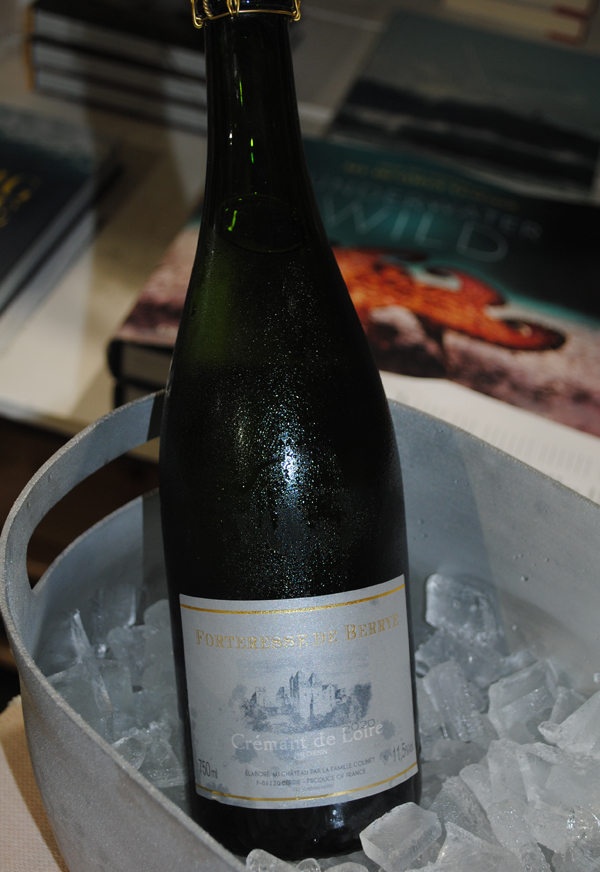
2020 Forteresse de Berrye, Crémant de Loire, Dry Sparkling Wine, Loire Valley, France.
With a talented enologist, Olivier Barbou, Forteresse de Berrye is becoming an interesting new Loire label to follow and what I’ve tried so far has impressed me, with their very limited Crémant de Loire offering, a 100% Chenin Blanc, very much a hit, with its complexity, terroir influence and elegant profile making it very compelling and worth the extra pennies it costs. Interesting their importer, The Source Imports, says that so far no one is really willing to make a Champagne-level investment in the Loire area to produce wines in the style of Champagne; they simply wouldn’t get the prices needed for the investment, even if the quality was there, with people, like myself looking for more modest sparkling wines to enjoy more often. And this one certainly hits the spot with a chalky mineral tone and yeasty depth showing off racy citrus, white peach and tangy quince fruit, steely/stony notes, brioche, dry honey and oyster shells. The mousse is quite delightful with a subtle tension of electric shock and creaminess, keeping things brightly focused and refined in the same act, even better when you enjoy this dry Brut style sparkler with a meal. I appreciate its generous feel, while the low dosage provides a stylish crisper nature that, again suit me, as I am more of an Extra Brut bubbly kind of person, given the choice. I recently had these Forteresse de Berrye, which are newly arrived in the states, and really enjoyed the ones I had, especially their Corps pour Corps Saumur Rouge, which is a tasty blend of Cab Franc mainly and some Cabernet Sauvignon, as well as this Crémant de Loire.
What makes Forteresse de Berrye special is their ancient castle fortress and limestone cut caves that dates back centuries, along with some incredible higher elevation and steep vineyards in the Saumur and Saumur-Champigny appellations with its unique Tuffeau soil, which is excellent terroir. Tuffeau, as Forteresse de Berrye’s importer again informs us, is similar to chalk, though it’s usually composed partially of sandy siliceous material eroded from the Armorican Massif millions of years ago, providing this region with some of the greatest underpinning in the wine world, it makes for crystalline Chenins and aromatic Cab Francs, as witnessed in some of the most coveted wines of Saumur and Saumur-Champigny, from the modestly priced Château du Hureau (a great way to start exploring Saumur) to cult heros like Thierry Germain and Clos Rougeard. For this Crémant de Loire, Forteresse de Berrye uses grapes exclusively from their own estate Chenin Blanc plots rather from cheaper regional vineyards, which are farmed all organic and have much smaller yields. These include Chenin with vines at the highest parts of the hill and set on yellowish Tuffeau with thin topsoil that consist of depleted silt, sand and hardened clay that adds the mineral influence and high acidity here. The fermentation was done naturally with indigenous yeasts and takes about 2 weeks, then the wine ages on the lees (yeast) entirely in concrete, with the base of this release being only from 2020, though later releases will include reserve wine held back from older vintages. This won’t be an easy find or get, but I think it is worth getting, within reason of course!
($30 Est.) 92 Points, grapelive
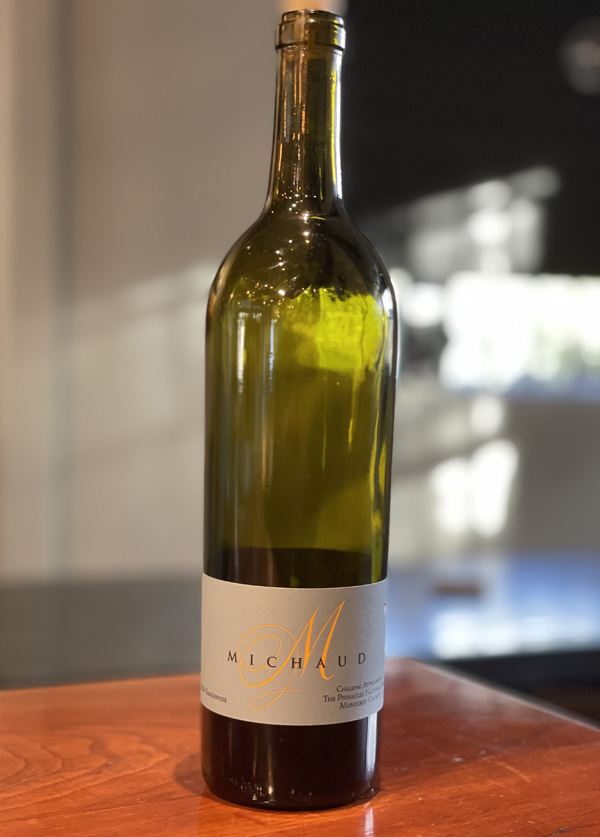
2016 Michaud, Sangiovese, The Pinnacles National Monument, Chalone AVA, Monterey County.
Michael Michaud’s rare Sangiovese offering from vines grown in Chalone’s chalky limestone soils is truly Italian in feel and flavor with brandied cherries, leather, bay leaf and cedary notes, making for a real rewarding effort that that begs for cured meats, olives and tangy tomato sauce pasta dishes. The warm days, cold nights and mineral intense underpinning of the vines gives this wine an authentic character and even this 2016 shows a freshness of acidity, even as it dives into its secondary phase with a nice Tuscan like appeal, gaining plum, strawberry and mulberry fruit, along with hints of anise, cigar wrapper, lavender, shaved vanilla and a touch of balsamic. If tasted blind, you’d really believe you were tasting a red from Italian, it has things about that might lead you to think Nebbiolo or Aglianico, but once on the palate the Sangiovese comes through pretty clearly in this dark garnet wine and its rustic tannins melt away with food, helped by the French oak aging one would suspect. Treated like his Pinots this Sangiovese was carefully sorted and 100% de-stemmed getting a cool maceration and hand punch downs before going into mostly used wood for close to 18 months and then rested further in bottle, over a year, before release. The Michaud Vineyard, with 28.5 acres currently planted, includes nine different clones of Pinot Noir along with some Chardonnay, Grenache, Syrah, Roussanne, Marsanne, Barbera and this Sangiovese to name some of what is grown well here.
Winemaker Michael Michaud, ex Chalone Estate, long known for his classic Chardonnay and Pinot Noirs, is based in Chalone’s mountainous wine-growing region, at the foot of the wild and beautiful Pinnacles National Monument, has his vines at about 1,500 feet up in the Gabilan Range. His own label’s journey started in 1997, after leaving Chalone, and he does a small lot lineup of hand-crated estate grown wines. Michaud says it is one of the few places where granite and limestone are co-located, providing a well-drained and mineral rich base, similar to Burgundy and responsible, for what he calls, the trademark “touch of stone” aromas and flavors found in the better wines here. There’s a lot of history here, as Michaud notes, going back to Curtis Tamm, a French immigrant, who has been credited with establishing the first vineyard on the Chalone bench back around 1919, when its believed he put in some Chenin Blanc, which I’m sure survives today. The Chalone AVA is home to seven different vineyards, including the original Chalone Estate, comprising of 360 acres of vinifera that includes the mentioned Chardonnay, Pinot Nor, and Chenin Blanc, as well as Melon de Bourgogne (thought to have been Pinot Blanc) and a mix of Rhone varietals, plus some other rarities like this Sangiovese. I hadn’t had any of these Michaud offerings in quite a while, so this was a good reminder of the quality here and I look forward to getting back up to speed with the full collection at some point soon, but for sure I’ll re-visiting this Sangiovese!
($42 Est.) 92 Points, grapelive
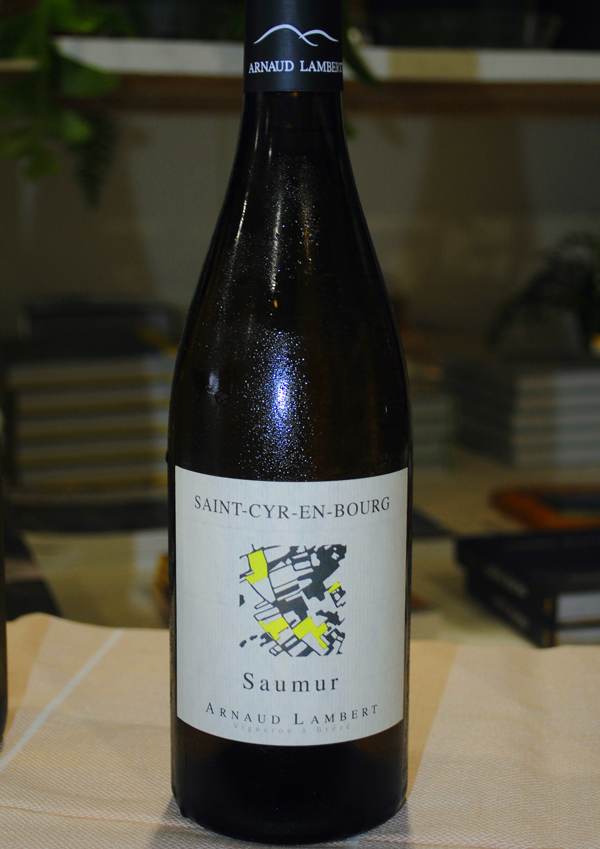
2021 Domaine Arnaud Lambert, Saumur Blanc “St. Cyr en Bourg” Loire Valley, France.
As mentioned, the Domaine Arnaud Lambert, based in Saint Cyr en Bourg – Brézé, is making some of the finest Chenin Blancs in the region and the latest Saumur Blanc St. Cyr en Bourg bottling is a ravishing effort with loads of energy, mineral tones and beautiful fruit detail with tart peach, citrus and quince coming through on the bone dry and crisp medium bodied palate. This vintage is especially lively and electric in the mouth and reveals delicate unsweetened honeycomb and herbs with subtle aromatics and tons of wet chalky stone and a steely framework. This St. Cyr en Bourg cuvée is 100% Chenin grown in two main sections of vines that include an upper portion that has calcareous sandy soils and a lower plot that has a higher percentage of clay, along with the classic tuffeau limestone that plays a huge part in the terroir driven character here, with both parts providing a nice ying and yang effect that gives an excellent overall balance and complexity. Arnaud uses a combination of concrete, stainless and various sized wood barrels to make his different offerings and in this case mostly stainless was employed, but he chose to use some lees stirring (Batonage) to give the desired textural quality and elegance to this exceptional white wine. This St. Cyr en Bourg Saumur Blanc will be sublime with soft goat cheeses and seafood dishes and it’s a stunning value, in particular against wines of this quality.
As noted in my prior reviews, Arnaud Lambert, who began as part of a father and son team with his dad Yves, made a name for himself when he took over at the historic estate of the Château de Brézé, one of France’s great properties and one that the French royals, as noted by the winery, used to exchange wines of Brézé annually for Château d’Yquem Sauternes. I have had a few outstanding wines from Château de Brézé over the years, so it was exciting to see Lambert’s personal offerings and get insight to his direction as a vigneron. With his own label now gaining notoriety Lambert is push the appellations of Saumur and Saumur-Champigny to invest in quality and focus on individual terroirs and lieu-dit sites, as he does, with the goal being to re-discover the regions premier vineyards and exploit its full potential through organic viticulture. The less-is-more, precise winemaking and attention to detail is what Arnaud does in his cellar and for this wine, farmed all biodynamic, he chose to do a full whole cluster, 100% stems, direct press to mainly stainless steel tank, with about 10% going into old French barrels for an all natural yeast fermentation with up to 30% malo and only a light filtration to capture all of the terroir nuances here. I loved the extra concentration of the 2020s by Lambert, especially the Brézé bottling, but the purity and precision in these pale gold and straw hued 2021s is something extraordinary and I highly recommend them too, look for this label when shopping for Chenin Blanc.
($27 Est.) 94 Points, grapelive
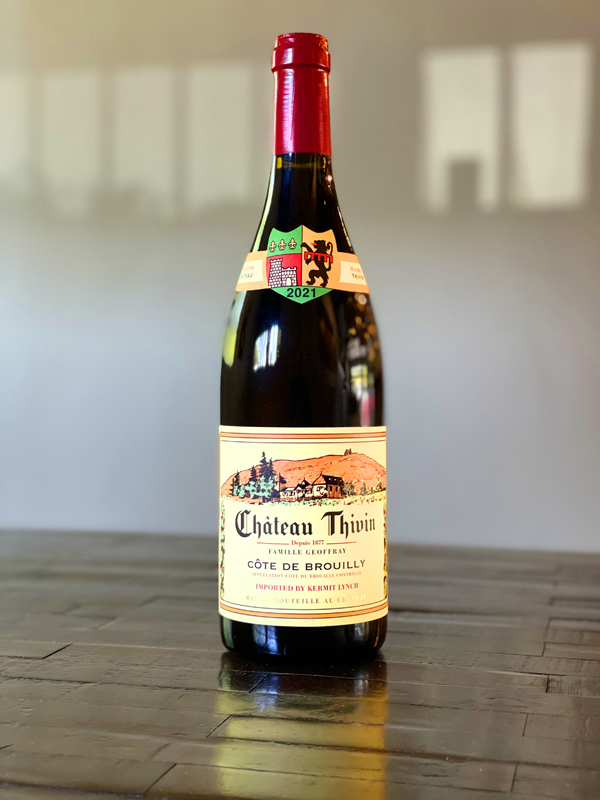
2021 Château Thivin, Côte de Brouilly, Cru Beaujolais, France.
Thivin’s latest Côte de Brouilly from the 2021 vintage is youthfully wound up still and almost comes across with a Chinon like character with a spicy and austere personality, far removed from the bubble gum and cotton candy flavors you would find in some Gamay offerings and is not as lush as the 2020 was with an array of taut red fruits, green and brown spices, vibrant acidity and rustic tannin. Things change as it opens in the glass, as this 2021 garnet and ruby hued Côte de Brouilly from mature vines moves from hyper intensity to a more textural wine with hints of stems, wild flowers, subtle wood and lingering strawberry coming through. With food, it especially does better in letting you in and seeing a core of plum, raspberry, tart currant and black cherry fruit, so best to have this Thivin with a hearty meal to enjoy its full range on its medium bodied palate. This is definitely one of my go to wineries in Kermit Lynch’s awesome Cru Beaujolais portfolio and I am never disappointed when popping a bottle of Château Thivin, wonderfully and authentically made by the Geoffray family, who’ve had their Brouilly area holdings since around 1877. The Geoffray’s were instrumental in the creation of the Côte de Brouilly appellation itself and continue to enhance the region’s reputation with every vintage they release.
The vines at Château Thivin’s Côte de Brouilly parcels are set on a combination of blue volcanic rock comprised of plagioclase and biotite, which is unique and a complex series of soils with predominantly south-facing slopes that are planted entirely to organically grown Gamay with the vines averaging close to 50 years of age. This bottling, from steep almost 48% grades, gets a short maceration and fermentation in vat, usually whole bunches, lasting just under two weeks before maturing in large neutral French oak foudres for six months before bottling. Even though this wine is meant to be enjoyed in its youth and fresh, it does have grip, density and an underlying energy that allows it to age well, even more than the recommended 3 to 8 years in bottle and I have been very happy with old bottles I discovered even over 10 years old, but patience isn’t required here. As Kermit Lynch notes, the Geoffray name continues to inspire, with today’s vigneron Claude, his wife Evelyne, and their son Claude-Edouard upholding their tradition as staunch and proud defenders of the terroir of the Côte de Brouilly and produce one of its top wines, they also do a rare Gamay Beaujolais Rosé and a delightful 100% Chardonnay Beaujolais Blanc, plus I recommend their cement raised Brouilly “Reverdon” that has a Fleurie like delicacy and pretty florals too.
($36 Est.) 90 Points, grapelive
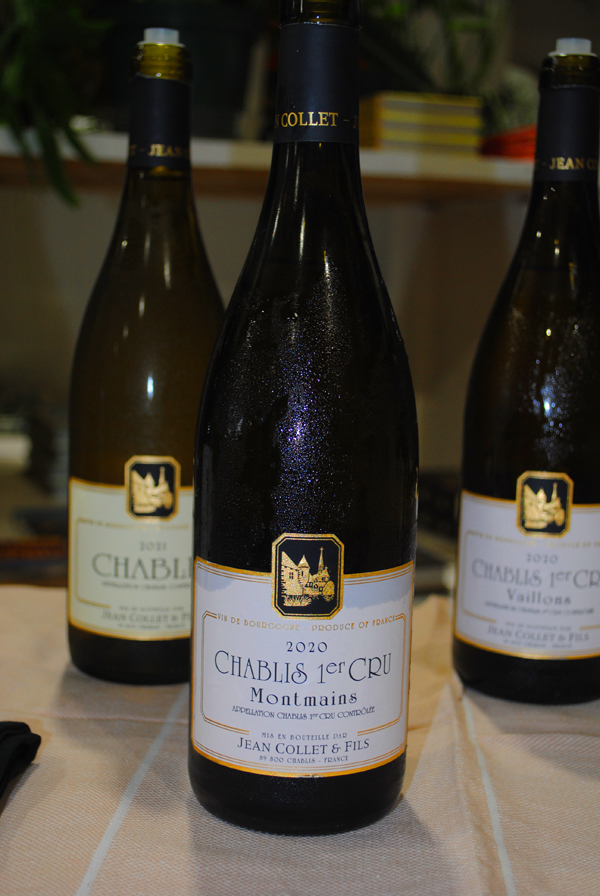
2020 Domaine Jean Collet, Chablis Premier Cru, Montmains, White Burgundy, France.
Each one of the three Collet Chablis wines I tried recently were outstanding bottles, but totally different and distinct in character, with this 2021 Montmains Premier Cru, maybe my favorite, showing an appealing subtle profile and intense mineral core, while the Vaillons was more showy or extroverted in the same vintage, and the regular Chablis AC from the 2021 vintage was greener and less concentrated, but classic in the purist sense. Enjoying this Montmains, which gave a real sense of vintage and place, I loved the slightly austere stony medium bodied palate that had an array of citrus, green apple and orchard pit fruits along with oyster shell, clove spice, wet chalky rock notes and a touch of lees richness. It will likely age well too, as the vintage looks set to be thrilling one for Burgundy and especially Chablis, from what I’ve tried so far and the Cru wines have been exceptional with an extra degree of depth, with this wine, with its full malo and delicately creaminess being one to look for. The Collet family is a long time Chablis family and have some great sites, that were accumulated over hundreds of years, to work with and that pedigree shows in the latest set of wines, with the Montmains being five separate organic plots that are picked and vinified to made one complex and delicious Chardonnay.
Jean Collet started Domaine Collet in 1954 and led the family business, which dates back to about 1792, before turning over to his son Gilles, who turn handed it over to current vigneron and winemaker Romain, a star in the region and has raised the game at this once little known estate. Romain changed just about everything here, he brought completely fresh ideas to this historic winery including conversion to organic and biodynamic farming and all natural fermentations. There has been a huge jump in quality and expression here since 2008, when Gilles let Romain loose in the vines and the cellar and these 2020s and 2021s are some of the best yet that I’ve had. Collet has some quality parcels, Valmur and Les Clos Grand Crus being the big stars obviously, but their selection of the 1er Crus, Montée de Tonnerre, Vaillons, Montmains, Butteaux and Forêts are all fabulous and Romain treats each one with its own special care and winemaking techniques. For this Montmains, located on the left bank of the Serein River which has parcels that are almost purely Kimmeridgian limestone marl rock and a thin topsoil with next to no clay content, Romain chose to use no wood at all, it is 100% stainless steel fermentation, with the native yeasts, and aging. This vintage saw 11 months on the lees in temperature controlled tank, and as mentioned it went through malo-lactic for texture, and bottled with a light fining and filtration to capture its best elements, as proved here.
($48 Est.) 93 Points, grapelive
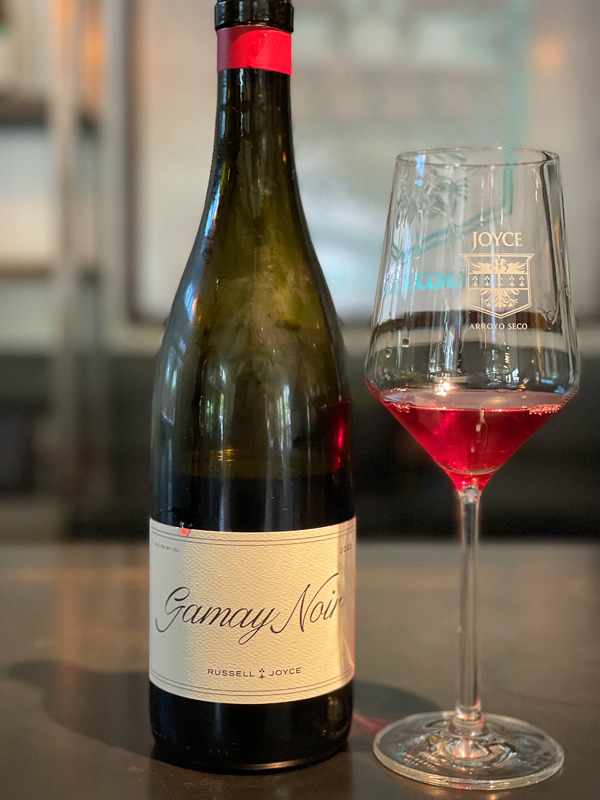
2022 Russell Joyce, Gamay Noir, Arroyo Seco AVA, Monterey County.
Having led the modern Gamay rush in the region, Russell Joyce’s true Gamay Noir offerings take a back seat to none in California and his brand new Arroyo Seco bottling from select sites within the AVA is a delight in the glass with a glowing ruby/magenta hue and true Cru Beaujolais charm with juicy carbonic dark fruits and whole cluster crunch, it is an ultra quaffable that enjoys a slight chill and no pretense drinking. The floral toned and tension filled taut youthful palate shows crushed berries, tart plum, cranberry, strawberry and pomegranate fruits with a nice herbal kick, cinnamon spice, anise and and an old walnut woodiness. A bit lighter framed that the San Benito version and less complex than the upcoming Santa Lucia Highlands bottling, this low alcohol Arroyo Seco Gamay is an eager to please style that will remind enthusiasts of a Juliénas with its stony soiled element, high toned, but fleshy mouth feel and electric vitality. Having taken over the old Ventana Vineyards and winery in Arroyo Seco itself, Joyce has adding some delicious regional wines to the lineup, including this Gamay, along with a Vermentino and even a fizzy Albariño & Sauvignon Blanc Piquette or baby Pet-Nat.
As Russell Joyce admits, what began as a passion project just a years ago has now taken on a life of its own and has made him a leader in Gamay with a new legion of fans from across the world from New York to Norway, which intriguingly almost bought up every bottle from last years vintage that was spoken for by Joyce’s club and mailing list customers. He’s had to bump up production and even plant Gamay himself to meet demand and this first release of Arroyo Gamay has helped prepare to satisfy the onrush of Gamay enthusiasts. Over the last few years now, Joyce has fine tuned his winemaking, settling on traditional Beaujolais methods with the mentioned carbonic maceration, whole cluster fermentation in tank and aging with large neutral puncheon for about 6 months to preserve the freshness. He has experimented with 100% concrete and mixed vessel aging, but has gone the route chosen by some of the finest Cru Beaujolais producers with names like Foillard, Lapierre and Dutraive coming to mind as influences here. There’s a little something for everyone in Joyce’s latest offerings with classic Pinot Noir, Chardonnay, Cabernet Sauvignon and Merlot to their Gamays, Chenin Blanc, Syrah and Grenache, plus the quickly selling Albarino and Rosé, so it is a good time to re-discover the ever evolving lineup here.
($38 ESt.) 91 Points, grapelive
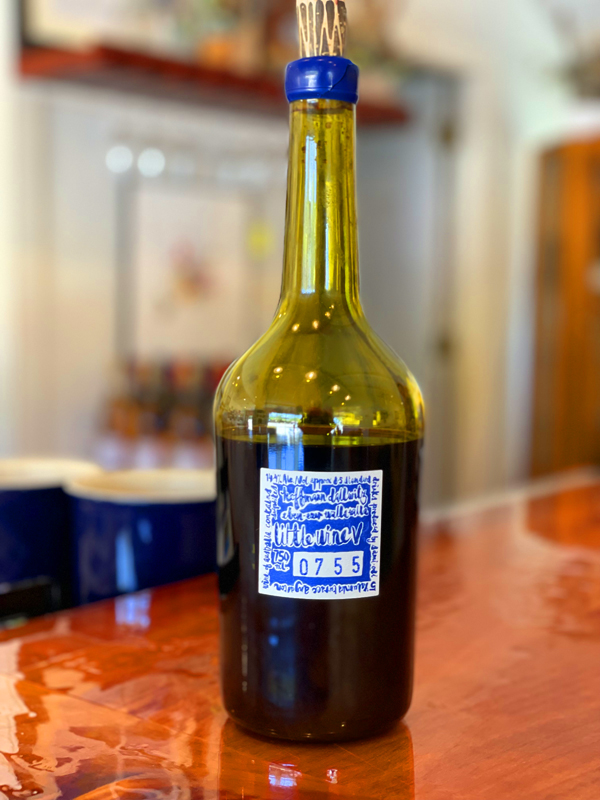
nv Sami-Odi Wines, Syrah “Little V” Barossa Valley, Australia.
The wildly rare Sami-Odi wines almost never get out of the country, so I was thrilled to get a chance to try this Australian cult wine, made by winemaker Fraser McKinley, which almost nothing is known, other than he does a limited series of vintage and non-vintage Syrah, they never use the word Shiraz here, and that the wines lively and more old school French in style with this Little Wine No.5 reminding me of natural wine hero(s) Dard et Ribo, who’s Cross-Hermitage is a favorite of mine. This spicy and herb scented Little Wine No. 5 is full of violets, coffee bean, black olive tapenade, raw beef, tarry licorice and black fruit with a burst of natural acidity and lingering creme de cassis without any oak presence that is obvious to me at this time. There was only a small sulfur addition in these Sami-Odi wines and McKinley picks early, usually basing his timing on PH which he focuses on so he doesn’t have to add acidity to his wines. Everything is done by hand and foot here with gentle pigeage, whole bunches and gravity flow to best express the quality of the grapes and promote transparency. There are not many Aussie offerings like this, especially here in the states, with Ochota Barrels, another unique favorite of mine, maybe being the exception. Almost no bottles exist outside of Oz, so I’m grateful to my friend Alex Lallos of No Limits Fine Wines who graciously shared his own personal bottle with me, as I certainly would be able to find one on my own!
The Sami-Odi Little Wine No. 5, is as the winery says, an unvintaged ‘assemblage’ composed of casks from 2012 (11%), 2013 (3%), 2014 (39%) and with 2015 (47%) being the main component year here. This one was exclusively sourced from our plots within the Hoffmann’s ‘Dallwitz’ vineyard, with plots chosen from vines that were planted in 1996, 1995, 1960, 1927 and the oldest from vines that were actually planted before 1912. Only 4955 bottles were filled of this version of “Little” and it was almost an instant sell out! Fraser has worked with the Standish Wine Company and Torbreck Vintners, both outstanding producers of top end “Shiraz” in the Barossa, but in 2006 he founded his own and unique new project. He started this small all biodynamic winery Sami-Odi with fruit coming from selected plots in some of the Barossa’s (or the Valley’s as they say) finest old vine vineyards and he vinifies (the individual parcels) separately with natural methods to create a cuvée, which Fraser believes combines their strengths to create a better and more complex wine. McKinley does about 1,000 cases a year for sale at Sami-Odi and is on a mission to make a more balanced and rustic style Syrah, taking his path, which is definitely headed away from the mainstream offerings we generally see coming from down under, with impressive results if this one is anything to go by. Since these wines, think Sine Quo Non, Sadie Family or Thierry Alemand, are almost impossible to get (here) the prices are absolutely wild to the point of ridiculousness, unless you are in Australia.
($249 Est.) 94 Points, grapelive
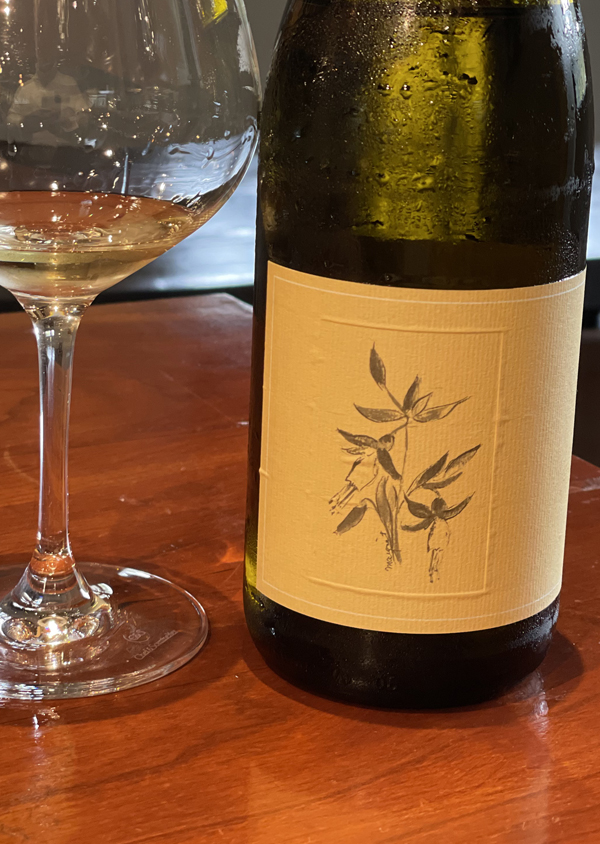
2021 Arnot-Roberts, Falanghina, Dry Creek Valley AVA, Sonoma County.
Arnot-Roberts’ Falanghina, which they have been doing since the 2016 vintage, is a beautiful version of this Southern Italian white grape with loads of character and unique charm, it shows pretty floral aromas, steely mineral, apricot and a mix of citrus fruits, along with an almost creamy textured medium body, but retaining bright intensity. Grown on Dry Creek’s Volcanic schist soils and at about 200 feet of elevation this wine takes advantage of the warm Mediterranean like climate here, though giving this grape its own personality, which the guys at Arnot-Roberts were very successful showcasing here. This lightly spiced rarity is a great alternative to Sauvignon Blanc and or Chardonnay, with a bit more subtlety than Viognier, it is great with a flexible range of cuisine, but best with sea foods, including fleshy white fish, mussels and or fresh seared scallops. This golden/yellow Falanghina looks and feel like it saw a touch of skin maceration and doesn’t show any obvious wood, though it looks to have done thorough at least some malo-lactic and aged on the lees for short time.
In Arnot-Roberts notes that go along with this wine, they say that Falanghina is an ancient white grape variety that traces its roots to the Campania region north of Naples in Southern Italy and according to the writings of Pliny the Elder, wines from the Falanghina grape were highly valued in Roman culture. This delicately aromatic varietal is commonly found in sites from the Amalfi Coast to Rome. The first plantings of Falaghina, as Arnot-Roberts continues, are thought to have been planted by Greek settlers as early as the 7th century BC. There is very little Falanghina is planted outside of Italy, and to best of the winery’s knowledge, this Handal-Denier vineyard is the only parcel of the grape in Sonoma area. The vines, which date back to 2011 when Mr. Handal planted them, were chiseled into the side of a steep volcanic hillside in the heart of the Dry Creek Valley just outside of the town of Healdsburg, which is none to different from some of the parts of Campania where it flourishes. Arnot-Roberts continues to craft an outstanding collection of wines, with their Chardonnay, Pinot Noir, Cabernet Sauvignon and Syrah forming a quality core of offerings that should not be missed, but their Trousseau, this Falanghina and their Rosé of Touring Nacional are also rewarding efforts I always look for.
($25 Est.) 92 Points, grapelive
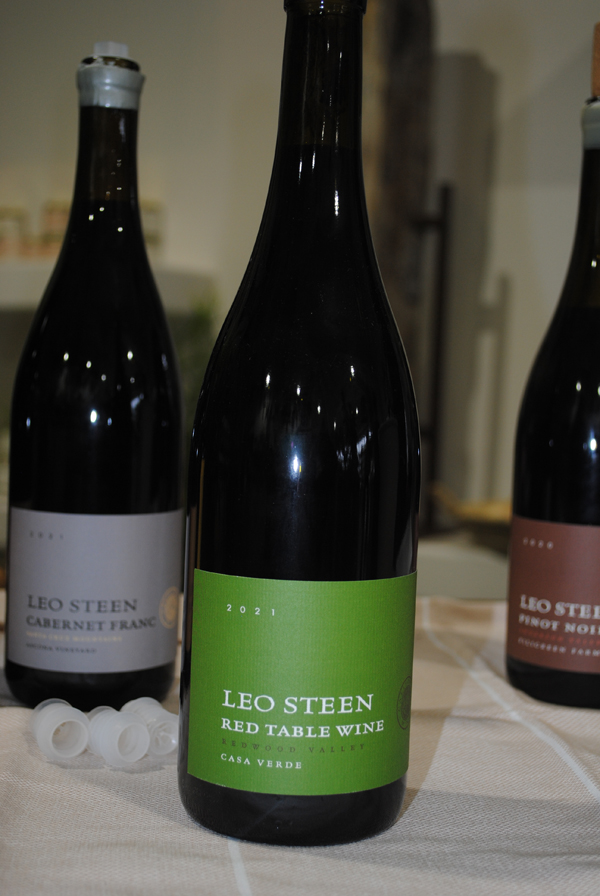
2021 Leo Steen, Casa Verde Red Wine, Redwood Valley.
The Casa Verde Red by Leo Hansen at Leo Steen wines is sort of like Cru Beaujolais meets Cotes du Rhone, it is a Redwood Valley sourced blend of mainly Grenache and Carignan, but with some Barbera, Cabernet Sauvignon and even some French Colombard white grapes, which is generous and delicious stuff that feels fresh, fruit forward and quaffable. The carbonic like style makes for a smooth medium bodied wine that comes from all organic and dry farmed 70 year old vines with sandy loams and clay based soils, which sees warm days and cool nights that delivers concentration and nice lively acidity. For this wine Hansen used native fermentation and a short maceration period with a very gentle extraction before racking it to a combination of stainless steel and used French oak barrels where the Casa Verde red wine saw 16 months. The palate is led my Italian cherry, plum, crushed raspberry and pomegranate fruits as well as spice, mineral and peony florals and silky tannin, making for a brightly focused wine that goes well with almost any cuisine and will be a great drinker for the next 3 to 5 years.
Leo Hansen, formerly a sommelier from Copenhagen Denmark, who has a well rounded background, having done stints in Alsace, Loire, Champagne and Burgundy to Spain and Italy moved to California in 1999 to, as he notes, immerse himself in winemaking, finally landing at Alexander Valley’s Stuhlmuller Vineyards, where he became the winemaker. At that time, in 2004, Leo also started his own label, Leo Steen wines, which allowed him to make wines more to his personal tastes, leaning on his old world palate. Hansen, to achieve his goals, uses a variety of fermentation methods and a combination of aging vessels in his wines to showcase each vineyard and terroir with transparency in his wines, this, he has done very successfully in his latest set of wines, especially in his Grenache, Cab Franc and the collection of Chenin Blanc offerings, which are his main focus. After meeting Leo Hansen recently, I have really become a big fan of his Leo Steen wines, which all impressed me, with this Casa Verde Red Wine, only 172 cases made, being one of the best value packed and fun new California wines I’ve tried this year so far, but without question his Chenin Blanc offerings are not to be missed.
($24 Est.) 91 Points, grapelive
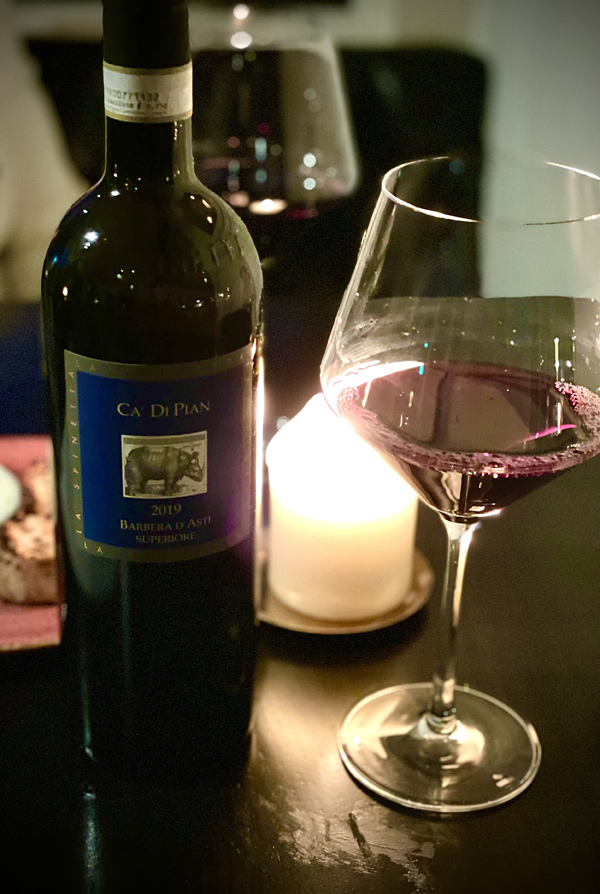
2019 La Spinetta, Barbera D’Asti Superiore DOCG “Ca’ Di Pian” Piedmonte, Italy.
Beautifully dark and compelling in the glass, the 2019 La Spinetta Ca’ Di Pian, Top of the Hill, Barbera Superiore is wonderfully balanced with a depth of fruit, spice, acidity and subtle earthiness, making it stand out for the price and making it a fabulous food wine. This vintage follows this wine’s historic profile and quality with loads of dark berry, black currant, plum and cherry fruits which lead the way of the round and full palate with hints of licorice, forest floor, crushed lilacs, sandalwood and bright wild herbs. The Ca’ Di Pian, as the winery notes, sees a short fermentation and maceration in tank, it lasts for 6 or 7 days, but still has plenty of extraction, as this wine shows, before being aged 12 months in a mix of new and old, medium toasted, French oak barriques, allowing for a clean, sleek and elegant style. That said the wood here is well hidden and much less obvious than you’d expect, though touches of vanilla are in evidence in the background.
The Ca’ Di Pian Barbera Superiore gets, as I’ve noted in past reviews, a treatment in the cellar that is close to what you’d expect from a known perfectionist like Giorgio Rivetti, it is crafted more like a Burgundy, or a California Pinot than the old school and rustic version of this grape, but that extra care is appreciated each time you open a bottle of the Ca’ Di Pian. The Rivetti family, Giorgio’s dad and two brothers, started humbly and were mainly growers and makers of Moscato d’Asti into the late eighties before Giorgio pushed La Spinetta into the wine world’s spotlight with a series of fabulous Cru Barbaresco and Barbera wines, like this one, in the nineties. After which Rivetti turned his attention to Piedmonte’s King of Wines, Barolo, first making a single cru version with his epic 2000 Campe Barolo. Even after Rivetti and La Spinetta’s fame grew, he never stopped loving his Barberas, which include a couple of limited single cru versions, like the Gallina, but I really love this bottling, it is one of my favorite go to wines. This more luxurious vintage of Ca’ Di Pian offers a ton of personality and value, and I recommend stocking up on this one.
($25 Est.) 93 Points, grapelive
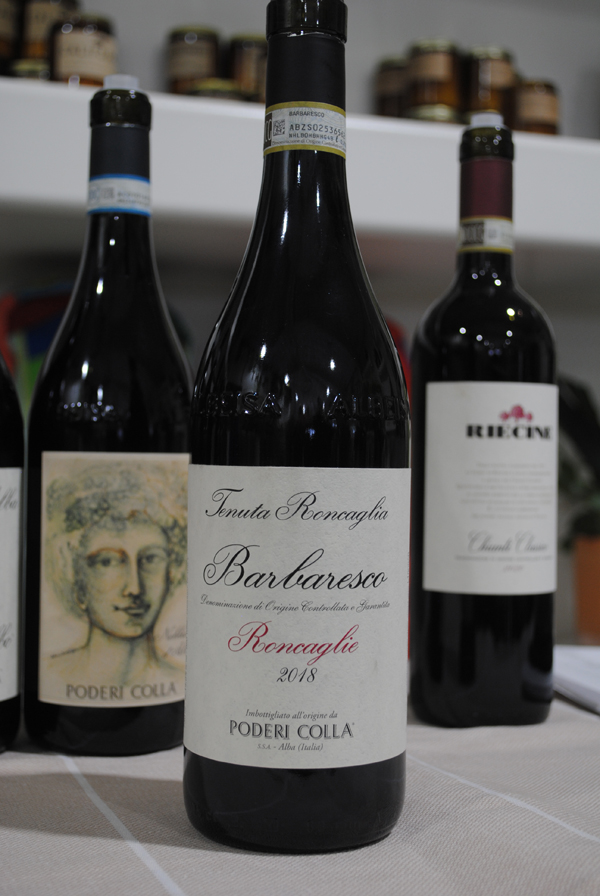
2018 Poderi Colla, Barbaresco DOCG, Tenuta Roncaglia, Piedmonte, Italy.
The heavenly Tenuta Roncaglia Barbaresco by Poderi Colla, still an under the radar producer, is showing lots of promise and even in its youth remarkably poised and gorgeously detailed with fine aromatics, complexity and exceptional purity of fruit with classic brandied cherry, damson plum, brambly raspberry and Moro orange fruits leading the way on the medium to full bodied palate. There’s accents of lilacs, sandalwood, tar, leather and black licorice adding to the pleasure and depth here in Colla’s single cru Barbaresco and the the tension between fruit and savory tones are perfectly judge with an exclamation point on elegance with a subtle mineral element and smooth underlying tannins along with a bright burst of natural acidity. The Roncaglia is potentially going to get better and it is much more complete when paired with cuisine, obviously, as with any Nebbiolo, but this one is a heightened example, which I highly recommend. The Roncaglia cru is really big and sometimes not rated as high as it deserves, though now a portion of the cru now belongs to Vietti, so I gotta think its fortunes are on the rise and more fame will follow, but the Collas own the Tenuata Roncaglia estate and vineyards in its entirety, which is a unique part that has always had admires.
The Colla family, led by the late Beppe Colla, sold their original winery, the famous Prunotto, which is now owned by the Antinori empire, and bought three small lesser known estates in the early 1990s and started to operate them under the single umbrella of Poderi Colla, these include Dardi le Rose in Monforte d’Alba’s Barolo Bussia cru, Tenuta Roncaglia of Barbaresco, where this wine comes from, and the Cascina Drago, just across the road from Barbaresco and near Gaja’s legendary Crus. All of which are now outstanding sites in their own right and now under Tino Colla make of the most beautiful and terroir distinct wines in the region, especially their Nebbiolo offerings, but I also love their their Barbera and Dolcetto bottlings as I’ve reported on here in prior reviews. Going back to Roncaglia, the Roncaglie is a steep hillside, almost an amphitheater, blessed with generous south to southwest exposure and set on fabulous calcareous marl soils and lots of sand, all of which makes for amazing conditions for top notch Nebbiolo, as witnessed here. Timo employs a traditional regime in his Nebbiolo wines with tank ferments and extended aging in well used large Botti (oak casks) to promote transparency and allow for the perfect maturing of his outstanding wines, these should be on your radar if you are Nebbiolo inclined!
($71 Est.) 95 Points,grapelive
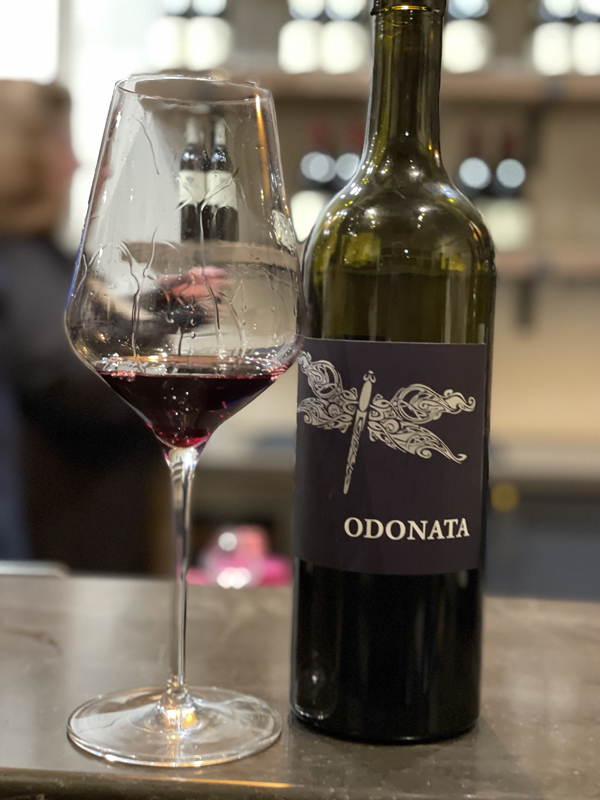
2019 Odonata Wines, Malbec, Pedregal Vineyard, Paicines AVA, San Benito County.
The beautiful and opulent blueberry and currant fruit laced dark garnet Malbec from Dennis Hoey at Odonata is a limited release wine of which just 320 cases were made from the Pedregal Vineyard, in the limestone and gravelly soils of the Paicines AVA in San Benito County, home of some old vines and unique and rare varietals. Odonata has a stellar collection of 2019 vintage reds from which to chose and this one is one of my favorites so far, along with their Cabs, Syrah and Grenache offerings, as well as a tidy lineup of whites and some very cool sparkling wines, that includes a red sparkling Grenache and a Tondre Riesling sparkler. The Malbec is nicely purple and structured on the full bodied palate and has an array of dark fruit, including the mentioned blueberry and currant, along with plum and cherry as well as vanilla, cedar and anise accents, making it a delicious more Bordeaux style red to go with meat dishes like steak and or Spring lamb.
The Malbec grape in France is widely planted from the mentioned Bordeaux region, where it is mainly a blending grape, especially in the Medoc, to the Loire Valley, where it is known as Côte, but it is the star in the Cahors region of Southwest France near the Pyrenees Mountains. The black Malbec wines of Cahors, sometimes mixed with tiny percentages of Merlot, Tannat and or Cabernet Franc are historic, pre-dating Bordeaux by hundreds if not thousands of years are rustic country wines that the Romans loved. The Malbec grapes for Odonata’s 2019 version were punched down gently throughout the cold soak, during primary fermentation, and saw an extended maceration totaling 14 days. Then the dark Malbec wine was pressed directly to barrel. Hoey then aged his creation for 12 months in 30% New French Oak and 70% in well seasoned and lightly spicy Hungarian Oak. The results are tasty and impressive, as with all of the latest stuff here at Odonata, this is a vintage for their reds no question and I highly recommend checking them out while they are still available! These wines are also wildly good values too.
($28 Est.) 92 Points, grapelive
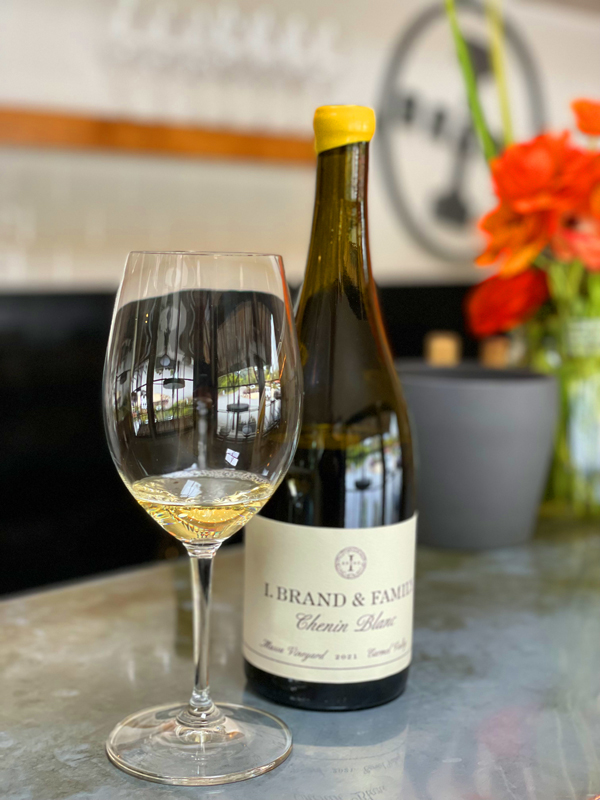
2021 I. Brand & Family Winery, Chenin Blanc, Massa Estate Vineyard, Carmel Valley AVA, Monterey County.
Chenin’s rebirth in California is rewarding to watch in real time, especially with these 2021 vintage offerings, and this brand new Ian Brand made old vine Chenin from the historic organic Durney Vineyard, now called the Massa Estate, which was planted back in the late 1960s, with its pure lemon and peachy fruits, mineral notes, herbs, dry honeycomb, delicate earthiness and leesy depth. The wine, which feels crisp, stony and youthful at first opens up to an impactful medium bodied white that will impress your Loire Valley enthusiast fiends, with those that love Saumur Blanc being happily surprised by this California example. As I’ve mentioned in prior reviews, Chenin Blanc is found in most of the New World wine regions, and in fact during the early 1980s, California actually had more acreage of Chenin Blanc planted than France! Though the number of Chenin plantings later steadily declined and the grape fell into obscurity until the last 10 years or so. The grape’s popularity in the state is still reserved for a select few but there are some absolutely awesome offerings, like this one that deserve wider attention. The Loire Valley still sets the standard worldwide, but interestingly, Chenin is the most widely planted variety in South Africa, where it is also known as Steen, and like California, there are some amazing versions there too, such as Sadie Family, Reyneke and Mullineux to name a few.
Ian Brand, with this Massa old vine Chenin Blanc, joins a newer generation of Chenin champions in California include some exciting new producers as well as some old hands, including talents like Leo Hansen of Leo Steen, Ted Lemon of Littorai, Pax Mahle, Chris Brockway of Broc Cellars, Justin Willett of Lieu-Dit, Andrew Jones of Field Recordings, Combe by Raj Parr and Stolpman Vineyards, Tegan Passalacqua of Sandlands, Russell Joyce of Joyce Wine Company, Jaimee Motley as well as the classics still made by Casa Nuestra, Chalone and Chappellet. The I. Brand & Family Massa Chenin Blanc, coming from rejuvenated vines originally own rooted back min about 1968, on a unique set of California shale soils was fermented and aged exclusively in neutral, well used, French oak for close to 18 months, making for textural wine that still retains a elegant and lively precision. There’s a lot admire and enjoy here and I’ve tasted it twice since its bottling and it is on track to get even better, this first time Chenin release from Brand is not to miss gem. Chenin has been on the west coast for a long time, it grows from the Baja Peninsula toOregon’s Willamette to great effect with some serious plantings in Santa Barbara County, the west side of Paso Robles, Monterey County, in particular Chalone, where it has been since 1919 and Carmel Valley as seen here, the Sierra Foothills, Lodi, Clarksberg, Sonoma, Napa Valley and Mendocino County, and there are a number of vineyards that date back to the middle of the last century, so it is a great time to explore this grape.
($36 Est.) 94 Points, grapelive
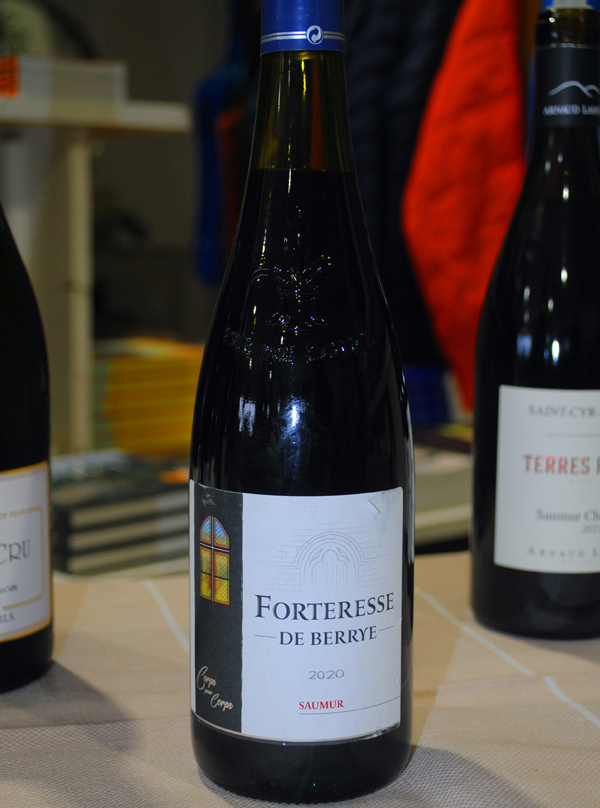
2020 Forteresse de Berrye, Saumur Rouge “Corps pour Corps” Loire Valley, France.
The Loire Valley is filled with undiscovered treasures and historically sites with unique vineyard areas still being found, like this newly resurrected estate in Saumur, which is just beginning to ship wines to the United States and of which I was able to taste recently at a low key mini portfolio tasting by The Source Imports, who bring in many cool under the radar producers from this ancient French wine growing area. The Forteresse de Berrye, near Berry (hence the name), in Saumur is set on a high elevation site with complex soils that includes silt, sandy and clay over classic yellowish tuffeau limestone, which is awesome for Chenin Blanc and Cab Franc, like in this wine. This bright garnet 2020 Saumur Rouge is ripe, concentrated and deep in color, but lively, earthy and transparent in style with a graceful medium bodied palate of crushed blackberries, red currants, plums and cherries that are accented by violets, bell peppers, a touch of leather, chalk dust and licorice. The (soft) tannins are easily to deal with and nice mineral elements add elegance along with the nice acidity that keeps things fresh and heightens the experience. The terroir really comes through here, and as The Source suggests, the tuffeau, which was formed about 90 million years ago, is one of the wine world’s great terroir enhancers with its chalky sandstone being naturally high in calcium carbonate content which keeps the vines cool during the heat and adds intensity to the wine’s aromatics, to name a few benefits. I also, must mention, Forteresse de Berrye does an excellent Crémant de Loire sparkler made from Chenin Blanc exclusively that sees cement vat fermentation, and I highly recommend it.
The Forteresse de Berrye winery, a historical French castle from the twelfth century, began organic viticulture in 2021 and they expect full certification by 2024, this along with planting better clones within their hillside vines look to really raise the quality here, which is already pretty damn good, especially this 2020 Saumur Rouge. It’s noted that Saumur is one of the driest areas of the Loire Valley with lower humidity overall due to the rain shadow of the Armorican Massif to the west, which makes the organic farming easier here. Forteresse de Berrye took over an old property with neglected vineyards and deeply quarried tuffeau limestone caves and are at an early stage as a label, but the potential and promise is looking good, especially for those Loire enthusiasts that like old school Cabernet Franc and Chenins with a more rustic character. Interestingly, the Saumur Rouge “Corps pour Corps” mainly Cabernet Franc also has a small percentage of Cabernet Sauvignon in the cuvée, though macerated and fermented separately as to not bring heavy tannin to this wine. All the grapes were 100% de-stemmed with the Cabernet Franc macerated on skins for close to 21 days, while the Cabernet Sauvignon saw only 8 days, which the winery says, (is) to add fruit, not grip. Just two pump overs were done in the first week and some gentle hand-pressing of the cap to keep it wet, again allowing for color and depth without harsh phenolics. The aging period is short and includes no overt wood influence (with some concrete and used oak I believe in this vintage) to preserve the Corps pour Corps’ freshness, it drinks nicely now, no patience required, though I think it will mature well for another 3 to 5 years, have it with food for best results.
($25 Est.) 91 Points, grapelive
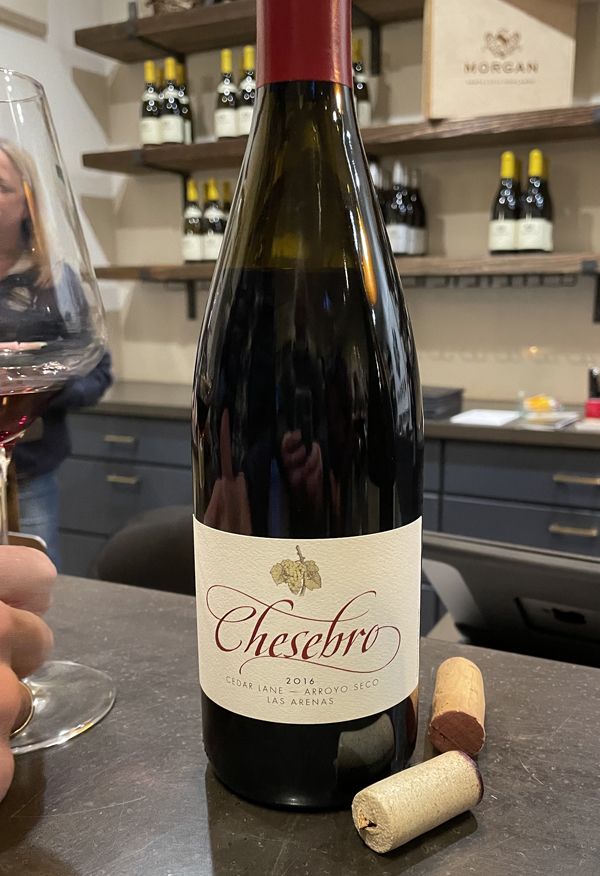
2016 Chesebro, Las Arenas, Rhone Red Blend, Arroyo Seco AVA, Monterey County.
Really coming into its own, the 2016 Las Arenas Grenache/Syrah blend, from Chesebro and their Cedar Lane Vineyard in Arroyo Seco, which is now beginning to reveal its Grenache led profile with dark berries, peppery spice, sweet and sour herbs, as well as plush satiny tannin(s) and very restrained cedary wood notes. With air everything gets rolling even more with floral aromatics, hints of feral gamey/leathery elements from the dose of Syrah here and a richer sense of dark fruits, including plum, Italian cherry and red currant, as well as snappy licorice. In recent years, Chesebro has raised their game and Mark Chesebro, along with his son Will, who’s joining the family business and will be taking more responsibility in the cellar, and the wines are grabbing more national attention, with the 2021 Albarino really impressing the critics and wine press. The current lineup here is full of fun and honest wines with some outstanding deals, like this late release 2016 Las Arenas, which has plenty of old world charm in the mold of a Sablet Cotes du Rhone Villages and or a Vacqueyras.
The Southern Rhone inspired Las Arenas red blend, which in 2016 was 65% Grenache Noir and 35% Syrah from the sandy soils in Cedar Lane Vineyard, which also sees some cool afternoon Ocean breezes and a long growing season allowing for low alcohol and ripe flavors that seem to benefit from 3 to 5 years of bottle age before showing off the true nature of the wine. Mark Chesebro, owner and winemaker, who was a winemaker at Bernardus, is a straight up and no nonsense winemaker, focuses most of his attention on the vines and employs traditional methods in his cellar.The Las Arenas saw 100% de-stemming and small lot fermentations with the Grenache and Syrah done separately with stainless and bin batches with hand punch downs and cool maceration before being aged more than a year in used French oak barrels after which the wine is blended and put into tank to rest for another few months before bottling. The wines are rawly transparent, zero pretense and authentic country style wines, they offer an excellent value and I highly recommend checking out this under the radar winery, in particular I love their Vermentino, the mentioned Albarino and this Las Arenas red.
($27 Est.) 92 Points, grapelive
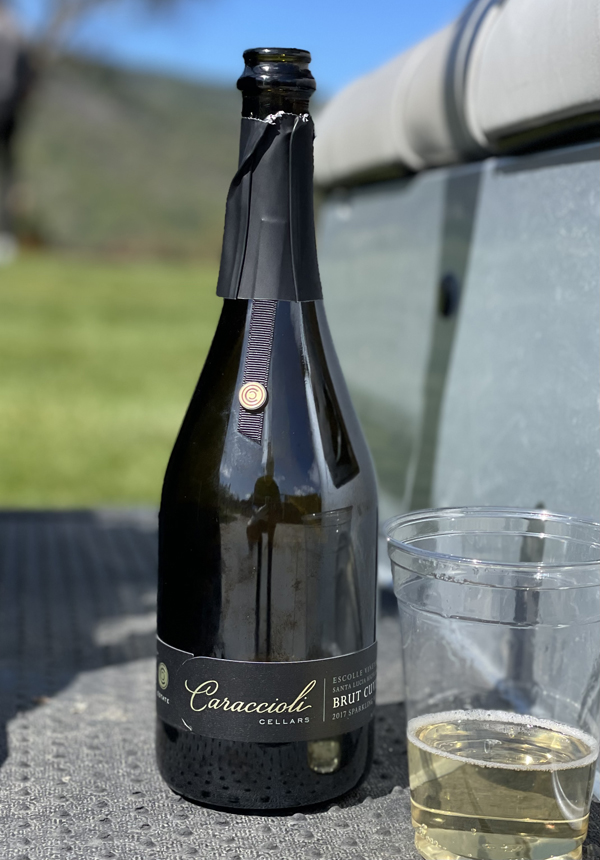
2017 Caraccioli Cellars, Brut Cuvée, Escolle Vineyard Sparkling Wine, Santa Lucia Highlands.
One of California’s top sparkling wines, Caraccioli’s Brut Cuvée was a perfect way to really celebrate Spring’s arrival, along with a perfect day on the golf course, in Monterey County with its bright energy, elegant beading mousse and complex leesy depth matching up perfectly. The palate is electric and racy with an Extra Brut feel and a steely pulse showing lemon preserves, quince, green apple and unripe peach fruits on the lean palate before hints of white blossoms, wet stone, delicate hazelnut brioche and clove spice. This is serious stuff, that maybe we didn’t give much of a chance to shine without proper glassware and without food, which would have really elevated the quality and thrill, but it sure was joyous and still managed to grab our attention. I promise, Scott Caraccioli, to focus more on the next bottle of your awesome new release! Caraccioli’s Escolle Vineyard, set on sandy loams and seeing a huge Ocean influence, first planted in 2008, is named after the historic local legend Honoré Escolle, one of Carmel’s founding fathers, who was very influential in many ways too the region. Escolle has become one of the most prized vineyards in the region and noted for the quality of the fruit, especially its Chardonnay and Pinot Noir. The farming here is quite exceptional making it, along with likes of Garys’, Rosella’s, Tondre, Pisoni, Soberanes to name a few, a top site in the Santa Lucia Highlands and the recently added Gamay Noir here is showing huge potential, as witnessed with their own efforts and others. The 2017 was difficult with a blistering late heat wave causing havoc, but for the sparkling wines, the grapes were picked early before hot weather impacted them and this wine shows the cool climate intensity and vitality it needs to such a beauty, it is a perfect companion with briny oysters and sushi as well as poultry dishes.
Few other wineries have put together such a fine collection of terroir driven wines in such a short time, especially their Sparkling wines, which is the main focus of the winery. It all started with the help of the late Michel Salgues, who had worked for famed Champagne house Louis Roderer for most of his career, including the last nineteen years at Roederer Estate in Anderson Valley, where he was the founding winemaker. Scott Caraccioli and his team have quickly gained a solid reputation for his grower producer style bubbly and is now considered one of the best producers in California of Champagne method sparkling wines. Caraccioli follows a very traditional regime from the vines to the bottle, with early picks to long lees aging on these elegant and extra lively wines. Caraccioli first does a light pressing of the cool and fresh juice in small lots, with the winery noting that they do 120 gallons (well below what the law in Champagne mandates: 150-180gl.) at a time. The Cuvée and Rosé see no skin contact and mostly gets some stainless, though some of the lots are fermented in barrique, with all of the primary fermentations being spontaneous, done with ambient yeasts. The Caraccioli Brut Rosé undergoes the same processes and initial blend of 60% Chardonnay and 40% Pinot Noir, as this Brut Cuvée. The difference in the Rosé is that Scott hand picks of a barrel of Pinot Noir still wine to blend into the final Rosé for color, while Brut Cuvée is all naturale. As mentioned in prior reviews, to enhance complexity and depth the young wine is barreled down-post fermentation for a few months, taking as Caraccioli explains, a little rest before blending, though in a few years there is some stainless aged juice and a long élevage in bottle, with a full four years on the lees, and then they are held back after disgorgement, under cork, for about two more years before release. Be sure to grab a few bottles of this excellent fizz and be sure to give it the respect it deserves!
($60 Est.) 94 Points, grapelive
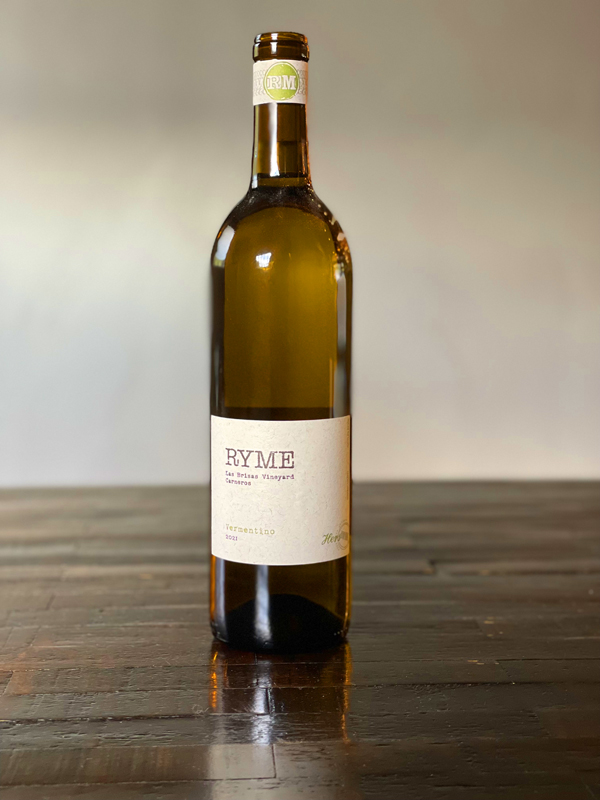
2021 Ryme Cellars, Vermentino “Hers” Las Brisas Vineyard, Carneros, Sonoma County.
Ryme does two distinct versions of Vermentino, “His” which is an orange style, skin contact example and “Hers” this one, a vibrant Vermentino that is stingingly crisp and bone dry, both of which are sourced from the Las Brisas Vineyard in Carneros, with its cool breezy climate. Megan Glabb (Her) took the lead here on this wine with, as her husband Ryan Glabb saying that she had her sights fixed on the bright, clean, aromatic examples from places like the Ligurian coast or Gallura in Sardegna to craft this “Hers” Vermintino, which is clearly on display in this 2021, which is bursting with energy and brilliant detail. This vintage is more electric on the light to medium bodied palate than the last couple of years with zingy citrus, kumquat and lime, some unripe peach, melon and tart apple fruits, a touch of flinty mineral, wet stones, verbena, green herbs and a fine dusting of spices. This brisk white drinks a bit like a salty Musdadet and is refreshing, making it a great wine with briny oysters and farm cheeses and is a super aperitif and Summer sipper. I’ve been very impressed with the last two or three years of Ryme releases, with this one being a favorite of the whites.
To maker her “Hers” Vermentino, winemaker Megan Glabb says the grapes, which were picked for maximum vitality, were whole cluster pressed, settled clean, and fermented without inoculation in a combination of old neutral barrels and stainless steel. She goes to explain that the wine underwent a spontaneous partial malolactic fermentation that allows for its racy nature to shine through and to provide some texture, that does come through with air and time in the glass. Ryme has built up a strong collection of Italian varietal offerings, including the “His” and “Hers” Vermentinos, along with Fiano, Greco de Tufo, the co-fermented Sangiovese/Friulano and an amazing set of Aglianicos, which I am really impressed with, especially the Camino Alto single vineyard bottling and the Rosé. Beyond their talents with these Cal Itals, Ryme does some outstanding Bordeaux varietal wines with a tasty set that includes a Merlot and Cabernet Sauvignon from the historic old Durney Vineyards, now called the Massa Estate in Carmel Valley and a pure Cabernet Franc from the Alegria Vineyard in the Russian River Valley. This 2021 “Hers” Vermentino is exciting stuff and, though hard to find and allocated, worth chasing down, plus I should note the 2022 is just about ready for release and I recommend getting on Ryme’s mailing list.
($25 Est.) 92 Points, grapelive
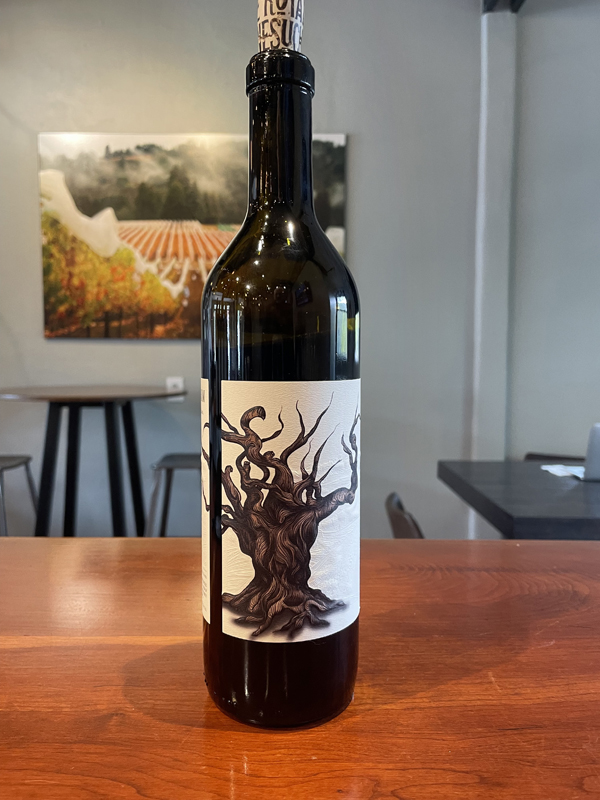
2018 The Royal Nonesuch Farm, Red Wine, York Mountain AVA, Paso Robles.
With loads of ripe fruit intensity and full of bright energy, capturing the best assets of the 2018 vintage this totally new wine to me is a thrill on the full bodied Grenache led palate with black raspberry, plum, pomegranate, candied cherry and spiced strawberry fruits, along with cinnamon, peppery notes, anise and cedary wood. The Royal Nonesuch Farm red is an intriguing Paso Rhone hybrid with 67% Grenache Noir, 18% Syrah, 14% Graciano, the rare Rioja varietal that is showing huge promise in the region, and 1% Clairette Blanche, the white grape that is the secret sauce of many stellar Chateauneuf du Pape Blancs and a component of Cassis Blanc in Provence. The Royal Nonesuch Farm estate does a very limited bottling of white too, 100% Clairette Blanche, that looks interesting and will be on my radar, along with this dark garnet and ruby hued red wine that grew on me while it was in the glass, gaining a touch of savory elements, floral tones and satiny tannin. Owners, Hillary and Anthony Yount, are new to the scene and started with their 2016 releases, but have followed the likes of Saxum, Linne Calodo, Epoch, Booker, Torrin and the Ledge in winemaking style.
The Royal Nonesuch Farm vineyard, founded by the Yount family, is 1,800 feet above the Pacific ocean between the towns of Cambria and Templeton, in the York Mountain AVA of Paso Robles and has, as the Yount’s say, an incredibly diverse set of soils, with an underpinning of limestone, clay, and sand, which very much flavors the own rooted bush vine Grenache that is their main planting here. For this singular estate wine they went with a mix of old world and modern winemaking with a focus on transparency and the hope of showing off the terroir and capturing the hedonism and textural richness of the Grenache. For this one, the Grenache, Syrah, Graciano and the tiny amount of Clairette Blanche is mostly co-fermentted and saw indigenous yeast primary after a seven day cold soak with close to 30% whole cluster in cement vats and large foude. The must got 13 days of maceration with rigorous punch downs and pump overs before being racked to a combination of big French oak 500L casks and Hungarian oak for a full 20 moths with just about 10% new wood. The Yount family has 7.5-acres planted to a mix of Grenache, Graciano, Syrah and Clairette at their estate which sees warm days and cool Ocean breezes that helps promote balance in the wines, with this 2018 being about 14.5% natural alcohol and making for a more food friendly wine.
($55 Est.) 92 Points, grapelive
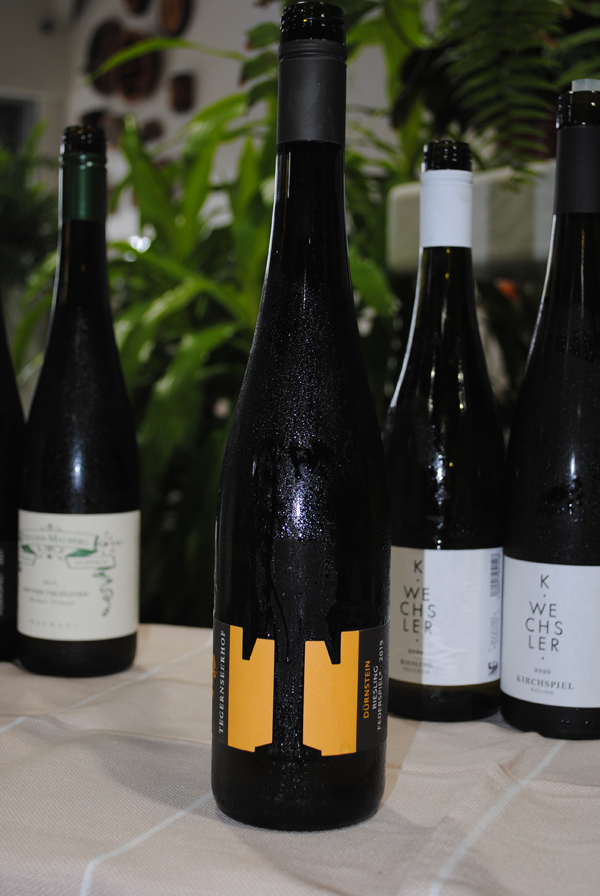
2021 Weingut Tegernseerhof, Gruner Veltliner, Durnstein, Federspiel, Austria.
This 2021 Tegernseerhof Federspiel Gruner Veltliner is pure, vibrant and crisp with a classic array of lemon/lime, tangy stone fruit, melon and unripe peach fruits as well as mineral, bitter almond, herbs and spice notes in a fine light bodied white wine that is great with Spring and Summer cuisine. Tegernseerhof can always be counted on for quality and stylish offerings, as this Gruner shows and I always enjoy both their Gruners and Rieslings, which are bone dry and energy filled efforts that never fail to deliver the goods. Martin Mittelbach, the 5th generation vigneron here at the historic Tegernseerhof, which has been an historic estate for close to a thousand years in the Wachau region of Austria and his latest wines are a stunning set of jewels that highlight his talents with crystalline clarity. Mittebach, who farms all organic, picks his Gruner grapes and rigorously sorts them with great care taken to weed out any botrytis grapes and then vinifies and raises them exclusively in stainless steel.
The Gruner Veltliner Federspiel comes from the town of Durnstein, where the Tegernseerhof estate is located and sites that have a complex mix of soils from loess to alluvial sands with vines in both hillside terraces and some flatland parcels, which gives the wine balance and with a nice tension between ripe and savory elements. In Tegernseerhof’s cellar Martin Mittelbach allows the wines to ferment naturally in tank and this Durnstein Gruner sees a short elevage on the lees and is reductive in style with a touch of captured CO2, making for a traditional racy Federspiel, which is typically about 12% natural alcohol. As this ultra pale greenish 2021 version opens up in the glass in gains more aromatic charms, lightly floral and adds a kiss of saline and a stony quality that makes it great with briny oysters and or mussels. This lip smacking white is very refreshing and a solid value, I highly recommend it and see it drinking well, as it does right now, over the next few years, it provides excellent refreshment on the palate and will be super with picnics and starter courses. The climate and or terroir here is influenced by the mighty Danube that flows past these exceptional vineyards and the Tegernseerhof wines very much express a sense of place, with this one being, an entry level estate wine, a great way to start exploring the collection.
($26 Est.) 91 Points, grapelive
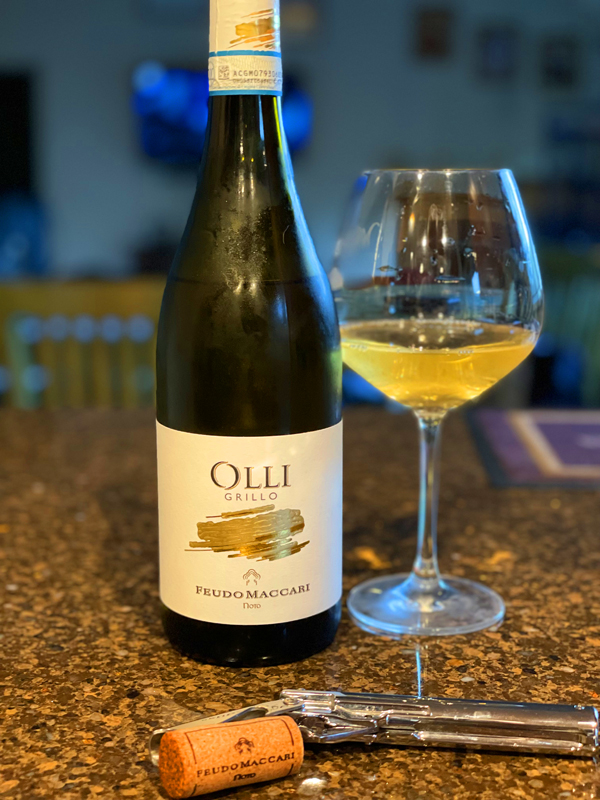
2021 Feudo Maccari, Grillo “Olli” Noto Valley, Sicilia DOC, Italy.
I was asked to do a dive into Grillo, a varietal that is one of the signature white grapes of Sicily and was thrilled by some of the recommendations I got and in particular this 2021 Feudo Maccari “Olli” version with its exceptional purity, racy fruit, mineral driven character and intense aromatic quality. As I have noted before, Grillo, thought to be a crossing of Catarratto and Moscato di Alessandria (called Zibibbo in Sicily) grapes, was once used exclusively in Marsala production, but has since started to gain traction as an alternative white wine throughout the southern part of the island with many fine producers doing excellent examples of solo varietal and or blended wines. This medium bodied, pale gold and zesty wine shows the grape’s best features, retaining acidity, while having a graceful textural feel and its fresh floral bouquet of jasmine and orange blossoms with a combination of tangerine, peach, quince and preserved lemon fruits along with salty stones, spearmint, bitter herbs and exotic spices. Grillo, which is also known as Riddu and Rossese Bianco in other regions of Italy, is a white grape variety that can withstand high temperatures and though Its origins are uncertain, but it may have been introduced into the island of Sicily from Apulia a good time ago. It was I believe first documented as being planted in the province of Trapani back in 1897, though again, there’s still a good bit of mystery as to its beginnings. Grillo, as seen like this Feudo Maccari, is a fabulous sea food wine and goes with a wide array of cuisine options, from native Sicilian dishes such as grilled octopus to Middlleastern dishes like lemon chicken and couscous.
The Feudo Maccari, located in Sicily’s Noto Valley, was born in 2000, the creation of Antonio Moretti Cuseri, who it is said started his Sicilian adventure in this remote region that has a mix of volcanic and calcareous soils and old school head trained vines that are at about 250 feet of elevation and within a mile or so of the sea. Feudo Maccari has both Nero d’Avola and Grillo here and both benefit from the climate and make for very elegant and aromatic examples of these native grapes, especially this beautifully perfumed and energy filled Grillo. The Grillo saw exclusively stainless steel tank fermentation and aging with just a short lees contact and was bottled quickly to preserve the wine’s lively nature and fresh details. Grillo, in modern times is grown throughout Sicily where it has achieved arguably its best results as a fine wine, and I have to agree, especially with the latest releases I’ve tried, like this Feudo Maccari, along with stuff I’ve sampled from Di Giovanna and the more unique COS Pithos, amphora raised white, by Giusto Occhipinti and his niece’s wines, with Arianna Occhipinti doing her Tami white with 100% Grillo and adding a little of it with Zibibbo for her 68 Bianco, all of which show the range of this grape. Not forgetting to mention the grape’s history in Marsala, expressed brilliantly by the late Marco De Bartoli’s versions, like the 100% Grillo Vigna La Miccia 5 year Riserva, made now by his children Renato, Sebio & Gipi. I am a fan of Sicily’s white wines from Carricante, found on Mount Etna, to Catarratto, Zibibbo and Grillo, I highly recommend taking a look at them and exploring the many different regions of this amazing island, which has so much to offer and searching out this outstanding value by Feudo Maccari.
($18 ESt.) 93 Points, grapelive
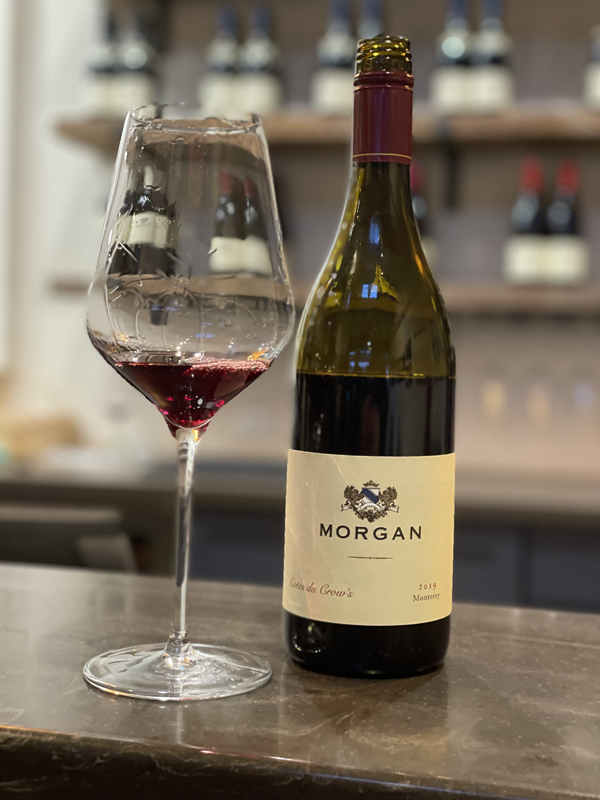
2019 Morgan Winery, Cotes du Crows, Red Wine, Monterey County.
Maybe the best value in Morgan’s stellar lineup is their richly flavored and spicy Cotes du Crows, a Cotes du Rhone inspired red that shows an impressive array of vinous red fruits, a touch of earthy savory elements, some snappy pepper, licorice and a hint of sweet oak in a very quaffable no pretense package. The concentrated dark berry, plum, strawberry and candied watermelon fruit and lush ripe tannins make this a perfect BBQ wine and is an easy to love fan favorite with a mouth filling plush body and floral detail, there’s nothing to fault here and to be honest, if this was twice the price it would be just as good. Morgan has really upped the game with their alternative bottlings, along with their exceptional Chardonnay and Pinot Noir, with this one in particular being a tasty and rewarding wine, along with their Albarino, Tempranillo and Syrah offerings, they all should not be missed.
The dark garnet Cotes du Crows is a proprietary blend of mainly Grenache and Syrah, but has a small percentage of Cinsault and uniquely some Tempranillo, a grape Dan Lee, owner of Morgan, has always loved and thought had huge potential in Monterey. Coming from a mix of vineyards, most in and around Arroyo Seco with sandy shale loam soils and with a slightly cooler Pacific Ocean influenced climate, the 2019 ended being a cepage of 62% Grenache Noir, 29% Syrah, 5% Tempranillo, the main grape in Rioja, and 4% Cinsault. Winemaker Sam Smith, who is gifted with Rhone varietals, has stamped his influence here and the winemaking is all about extracting purity and personality here, with tank fermentation and manual punch downs before going into mostly used French oak barrels for 10 months with just about 7% new wood employed. This is a vintage to stock up on, especially since there will not be a 2020, because of the fires in the region, it’s a flamboyant and delicious red to enjoy over the next 3 to 5 years and a great party wine. The latest collection of Morgan’s estate grown Double L stuff, from the 2021 vintage is some of the SLH’s best and very much worth your attention too.
($22 Est.) 93 Points, grapelive
Grapelive.com – March 2023
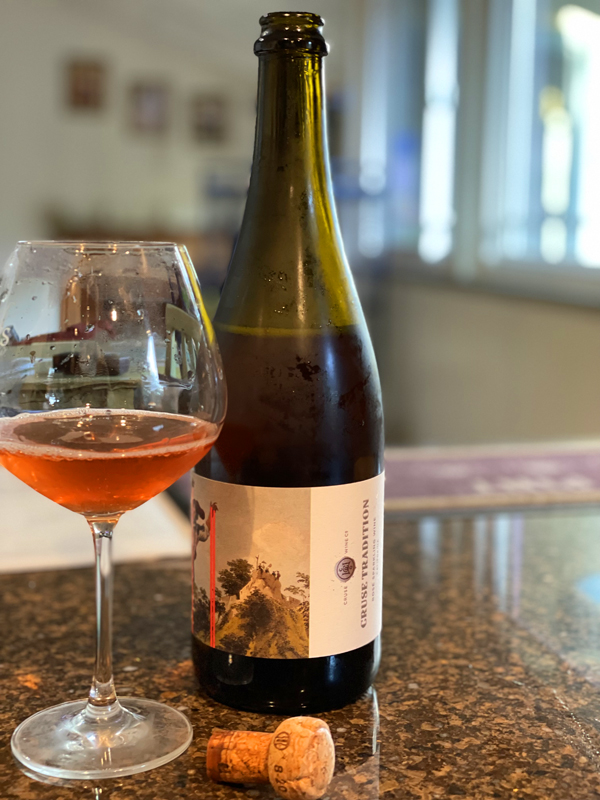
n.v. Cruse Wine Co, Rosé Tradition, Méthode Champenoise, Sparkling Wine, California.
The richly textured and nicely aromatic Rosé Tradition has an elegant mousse that beads beautifully with small creamy bubbles and has a pretty salmon pink hue in the glass, making it a savvy hand crafted sparkler that delivers tons of personality and old world charm. The palate is expressive with red apples, cherry, strawberry and candied citrus notes, all accented by leesy luxuriousness, brioche, wet stones, rosewater, mineral tones and baking spices. There’s a start of secondary elements beginning to emerge and a sultry earthiness that comes through with air and the Rosé Tradition is a fine food wine with structure and flavors that holds up to many cuisine options, including Asian spicy dishes and or grilled swordfish with relish. This bubbly gets better with every sip and reminds me of some unique grower producer Champagnes, even some of the most geeky Meunier stuff that is very popular with enthusiasts. The grapes for Michael Cruse’s bubblies are pressed using a traditional Champagne cycle and press cut, then goes through a native yeast primary and malolactic fermentation in barrel, which shows in the vinous quality here with this exciting Rosé Tradition California sparkling wine.
The low dosage, Brut level, Rosé Tradition comes from the 2019 vintage, base wine, which was naturally barrel fermented in wooden casks and tirage bottled and Michael Cruse says It was then aged in bottle 24 months on its lees, then at least another six months post disgorging. Cruse explains that the Tradition line of sparkling wines are typically are a base vintage, like this one being 2019, mainly, but with up to 30% perpetual cuvée, or aged reserve wine, added. The blend is Chardonnay and Pinot Noir, with this one obviously a Rosé gets a slash of red wine for the color. The primary vineyards used are an eclectic collection of prime site, included are Keefer Ranch, Alder Springs, Linda Vista, and Rorick Vineyard. The Brut cuvée or white bubbly Tradition is a non dosage and is bit more serious in style, while this Rosé version is more palate generous, or as Cruse says, fun and fruity, but still a dry effort with loads of complexity, as this one shows. Michael Cruse has really made a name for himself with these exceptional small production Champagne style wines that are highly coveted offerings. Known also for his cult Ultramarine sparkler, as well as his stylish Pet-Nats, especially the Valdiguie, and now a White Zinfandel Pet-Nat, along with some quality still wines, all of which are worth chasing down!
($45 Est.) 93 Points, grapelive
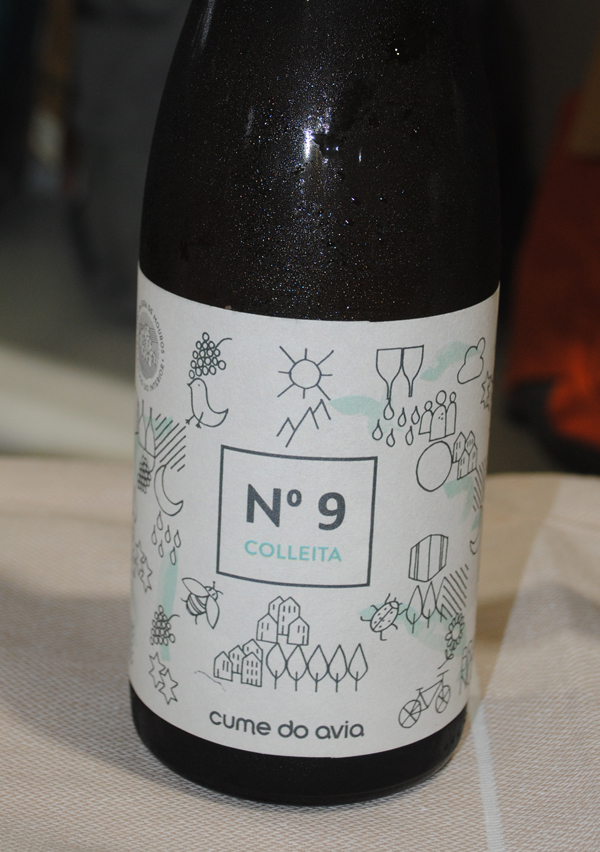
2021 Cume do Avia, Ribeiro Branco, Colleita 9, Galicia, Spain.
One of Spain’s most interesting newer producers and led by Diego Collarte and his brother Álvaro, who both grew up in Vigo, Cume do Avia makes some beautifully crafted terroir driven Galician wines from very close to the Portuguese border, made all from native varietals grown with organic methods. I have been following the wines of this region for more than 15 years and I’m still discovering so many intriguing new treasures that has been producing wines since pre-Roman times, and Cume do Avia is a great find, mostly known for their collection of reds, which include a mix of rare grapes such as Caiño Longo, Souson and Brancellao. That said, this Ribeiro Branco “Colleita 9” is a stunning mineral intense white with stony, saline and floral aromatics and a fine dry crisply detailed palate of racy citrus, white peach, green apple and tangy quince fruits along with wet rock, almond, delicate herbs, spice and sea shore notes. Light to medium bodied, this wine is somewhere between a Sancerre and Chablis in style, picking up depth with air and showing some texture, complexity and dimension as it opens, while staying taut and zesty throughout, thanks to the cool climate natural acidity.
The Cume do Avia “Colleita 9” Ribeiro Branco comes from organic vines set in local Atlantic influenced parcels that are set on rocky and sandy soils with clay, along with a combination of complex elements that include granodiorite, gneiss and flinty slate with a selection of Treixadura, Albarino, Loureira, Lado and Caiña Branco grapes. These interplanted indigenous grapes are co-fermented with native yeasts in stainless steel and only aged about 6 months in the tank on the lees, all to preserve the vitality and freshness here. These Cume do Avia wines are serious efforts that deserve your attention, though they have a friendly and easy to drink personalities they very much carry the essence and soul of the region in the bottle. This Colleita 9 should not be overlooked, it really impresses and will be a great alternative white for the warm days of summer ahead and is sublime with shellfish and briny sea foods, as well as soft cheeses, its salty brightness makes it compelling for those that like bone dry lighter framed wines. Cume do Avia’s lineup is filled with low alcohol and rawly transparent offerings that have a natural feel to them, those that like other new stars from Galicia, like Laura Lorenzo, Luis Rodriguez, Guimaro and Nanclares will instantly feel comfortable with these lovely wines. I recommend Cume do Avia’s Dos Canotos Tinto, their Colleita 9 Tinto (red) and this Colleita 9 Branco (white), they are not easy to find, but worth the chase.
($32 Est.) 92 Points, grapelive
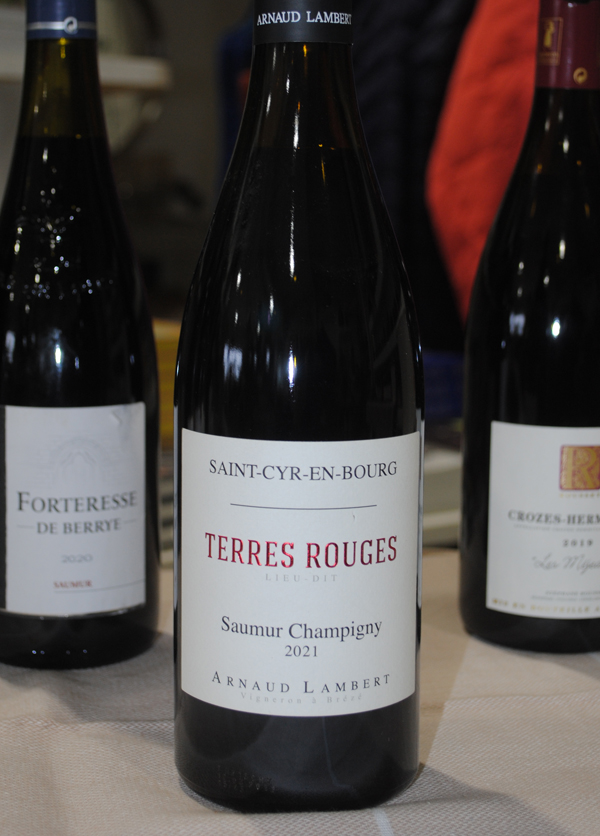
2021 Domaine Arnaud Lambert, Saumur-Champigny Rouge “Les Terres Rouges” Loire Valley, France.
Emerging as one of the most celebrated Cabernet Franc and Chenin Blanc producers in the Loire, Arnaud Lambert has put another set of beautiful wines from the Saumur-Champigny region, with this latest 2021 Les Terres Rouges being a pure and elegant Cab Franc that shows fine aromatics, mineral tones, pretty fruit layering and delicate earthiness. I have been a fan of these wines for a while now and Arnaud Lambert, who is based in Saint Cyr en Bourg – Brézé, as noted here, began as part of a father and son team with his dad Yves, made a name for himself when he took over at the historic estate of the Château de Brézé, one of France’s great properties and one that the French royals, as noted by the winery, used to exchange wines of Brézé annually for Château d’Yquem! This Les Terres Rouges, named for the soils in this plot, shows a dark garnet color and floral aromas in the glass with a bright medium bodied palate of blackberry, mulberry, plum and cherry fruits along with a touch of bell pepper, cinnamon, anise, chalky stones and lingering currants. There this a lot to like here and there’s a fresh cut of acidity and the tannins are very polished, making it a graceful Cab Franc that could be from nowhere but here, such is the terroir influence and it is a wine that really comes alive with food, where it gains an extra dimension and seduces the senses. This is a wine that will enhance almost any meal and can play well with simple rustic country cuisine and or more elevated dishes like seared duck breast.
Lambert’s personal offerings, after the end of Château de Brézé are giving an insight as to his direction as a vigneron, and you can see his transition to one of the region’s top producers and he continues to push quality levels upwards, he has raised the game of those around him as well, pushing the Saumur and Saumur-Champigny AOCs to highlight crus and individual terroirs and lieu-dit sites, as he does, like in this wines, again as I have mentioned here in prior reviews. The goal is to re-discover the regions premier vineyards and exploit its full potential through organic and biodynamic viticulture and less-is-more, precise winemaking, which he himself adheres to. The wines here are lifted and precise in style, but show complexity and deep concentration with structures to age and this Les Terres Rouges, while youthfully taut and slightly shy still, is no exception and I can imagine it impressing in 10 to 15 years, just as much as it does now. This parcel is set on iron rich clay, alluvial sand and tuffeau (limestone) soils and a cooler western exposure that gives this wine its personality, which Lambert, who wanted to allow to shine through here, fermented and aged this 100% Cab Franc in concrete. He used zero stems, de-stemmed grapes, indigenous yeasts and employed what he calls infusion extraction, a lengthy cool maceration, in temperature controlled vats with about a year of elevage in the concrete with up to 3 rackings to clarify with ultra low sulfur. This bottling is wildly delicious and a real value for Loire Valley Cabernet Franc lovers, I highly recommend searching out these Lambert wines, especially the fabulous set of Chenins and the reds, like this one, and the upper end Clos Moleton, Clos de L’Etoile and Montee Des Roches.
($30 Est.) 93 Points, grapelive
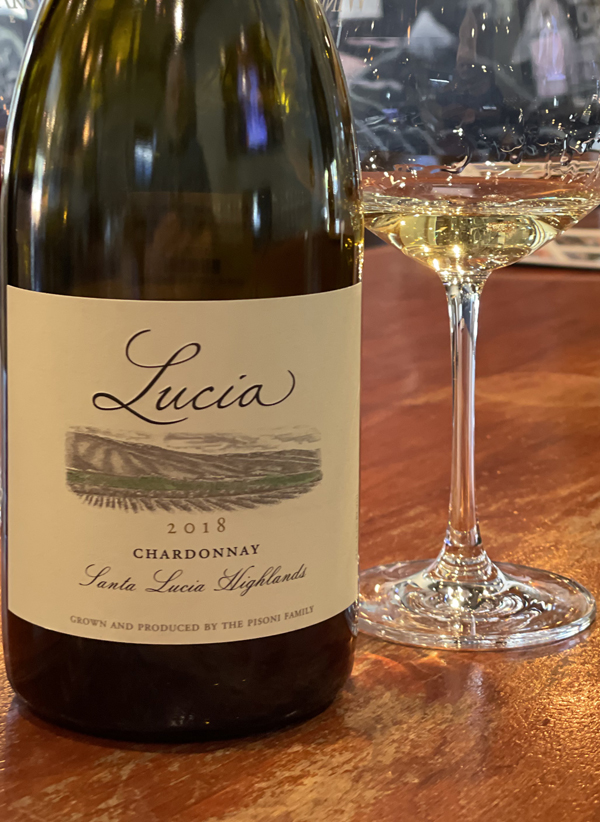
2018 Lucia by Pisoni, Chardonnay, Santa Lucia Highlands.
Really coming into its own, the 2018 Santa Lucia Highlands cuvee Chardonnay is drinking absolutely gorgeous right now with a layering of golden apples, Bosc pear, white peach, lemon curd and golden fig fruits along with a bright core of acidity, mineral tones, leesy and toasty wood notes as well as spicy clove, wet stones and subtle orange blossom accents. Everything is held in place with a nice tension, but still seamless and with the perfect amount of creamy full bodied roundness that reminds me of the great versions of California Chardonnay, making with think of Aubert, Peter Michael, Ramay and Peay along with classics such as Mount End and Hanzell. This pale gold and textured Santa Lucia Highlands Chardonnay, which is now called the Lucia Estate Cuvée, was sourced from vines grown exclusively in the Pisoni and Soberanes vineyards in Monterey’s cool coastal region that is set on sandy loams of decomposed granite and veins of quartz and ancient sea beds.
Winemaker Jeff Pisoni, who has become one of California’s top guns, has crafted some of the state’s most coveted Pinots, which were made famous by his father Gary, who of course pioneered quality grape growing in the Santa Lucia Highlands and who is a legend locally in the region, as well as around the world. While collectors snap up all the Pinot Noir from Pisoni with lightning speed, savvy wine lovers don’t pass up these excellent Chardonnay offerings either, and this bottling has become a stunning value, with this 2018 being a stunning wine that rivals wines that are twice the price. The Santa Lucia Highlands Chardonnay is expertly put together from various small lots from Soberanes Vineyard, which has unique and varied selection of clones, and from the famous Pisoni Estate Vineyard with its old vines, which were first planted in the early 1980s. Pisoni used a native yeast barrel fermentation with 100% French oak and 35% new wood, it saw 11 months in barrel on the lees and with full malolactic conversation, which was just the right touch here to make for such an impressive effort. It won’t be easy to find the 2018s, but oh yeah, they are worth searching for!
($50 Est.) 95 Points, grapelive
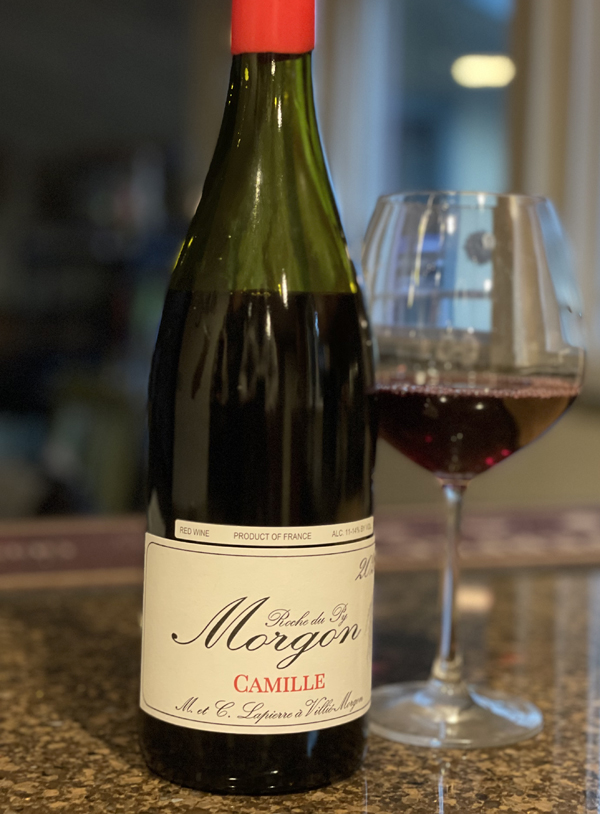
2020 Domaine M. et C. Lapierre, Morgon Roche du Py, Cuvee Camille, Cru Beaujolais, France.
Usually rich, dense and textured, the 2020 version of Lapierre’s Cuvee Camille is more poised and lighter on its feet than the last few vintages with sublime balance and fresh details, it delivers a full array of pure Gamay goodness on the bright red fruited medium bodied palate. This release has still has the Lapierre signature hedonistic ripeness, but it has a taut focus, mineral notes and it is very heightened example of Morgon and it is lovely with a range of food that helps bring out all sides of this pretty dark ruby hued Cuvee Camille. The nose is stony, raspberry laced and lightly floral before revealing a mix of red berry, plum, cherry and strawberry fruits, along with tangy herbs, crushed granite, walnut, peony/lilac and anise accents. The acidity is vibrant, with 13.5% natural alcohol, about a point less than the norm and the wine is youthful at this stage, but I suspect it will fill out in a few years, though it would be tough to keep from opening this stuff.
The late and legendary Marcel Lapierre, who was a champion of this style natural wine, proved that Gamay can be monumental, age worthy and thrilling wines and the domaine continues to be a leader of this category. The wines show an intense attention to detail and quality, as I’ve noted before, always are striving for elegance and terroir clarity, which these latest Lapierre Beaujolais, like this one deliver in spades. In the cellar, Mathieu, who took over from his father, employs 100% whole cluster and native yeast fermentation, or methode à l’ancienne, all of which is done at low temperatures with primary ferments lasting for between ten to twenty days, before racking the wine to well seasoned oak foudres and fûts (large casks) for aging, which usually is close to 9 months before bottling. What sets this Cuvee Camille, named after Mathieu’s sister, who helps run this famous estate, apart, is the Roche du Py plot with its 50 to 75 year old vines that are set on the classic granitic gravelly and mineral rich soils. These low sulphur Lapierre Morgons are some of the most coveted and sought after wines in the wine world and always are wonderful treats, I highly recommend exploring their collection, especially this rare offerings.
($40 Est.) 94 Points, grapelive
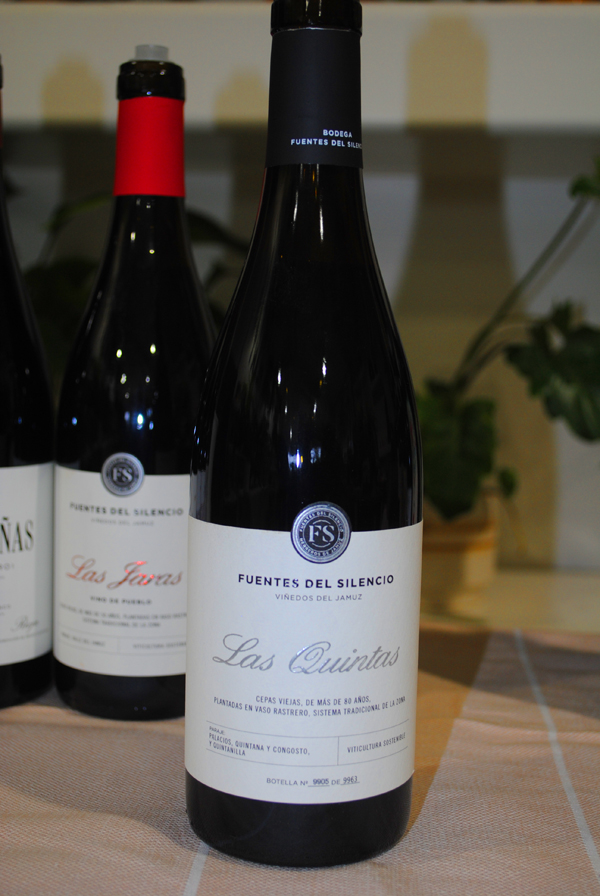
2019 Fuentes del Silencio, Videos del James “Las Quintas” Castilla y Leon, Spain.
This was my first experience with the Fuentes del Silencio wines and I was thrilled with the quality and brilliance of these Mencia based wines, with this beautiful Las Quintas being an exceptional highlight that delivers outstanding detail, depth and poise, making for a joyous, medium bodied and complex wine. Sourced from ancient old vines in high plains of Herreros de Jamuz, a remote, almost unknown region of Spain in the Castilla y Leon area, this Las Quintas is made from 85% Mencia, 13% Alicante Bouschet and 2% of white grapes including Palomino (the Sherry grape) and the native Doña Blanca, all of which is similar to what you might find in Beizo region, but with a unique set of quartzite cobbles, clay and crushed slate sandy soils. This 2019 shows an inviting dark garnet and ruby color in the glass and has mineral and floral aromatics that leads to lively mouth filling flavors of vine picked berry, tart blueberry, plum and cherry fruits that are accented by stony and earthy notes with a hint of stems, spice, dried herbs and anise. There is a sense of purity and transparency here without any noticeable wood influence and the wine shows a nice lift of acidity, while still gaining richness as it opens, quite impressive stuff here and this Las Quintas is gracefully raw and balanced, which makes it best with a hearty meal.
I tasted this wine at a small importer tasting, by The Source Imports, and it was a sleeper in the lineup, but clearly a standout, it was a great way to discover this new producer, which is a small winery led by Dr. Miguel Angel Alonso and his wife Dr. Maria José Galera, both medical doctors, who have rejuvenated some long forgotten 80 to 150 year old vines. The Source Imports says the couple discovered abandoned vineyards with many vines that predate phylloxera, or at least has plots without any grafting to modern American rootstocks. They also put together a talented team to farm and make the Fuentes del Silencio (which translates to Sources of Silence) wines with vignerons Marta Ramas, Miguel Fisac and Alberto Aldonza in the vineyards, and José Villar, who manages the cellar. The Jamuz was a considerable wine producing area dating back to Roman times, but almost disappeared in the last hundred years, before Alonso and Galera came here and gave the place a new lease on life. This area with its high plains, arid setting and continental climate gives small yields and more concentration than you’d see in the Mencia wines of the Ribeira Sacra and again, more like Beirzo in style, with fans of Raul Perez seeing comparable characteristics in these Fuentes del Silencio offerings, which is high praise. This soulful and 100% organic wine was made with about 80% whole cluster and stem inclusion, all indigenous yeast fermentation occurring in conical wood vats and aging, 12 to 14 months, in old 500L French oak barrels. I highly recommend chasing down these very limited offerings and I will certainly will be following this label.
($36 Est.) 94 Points, grapelive
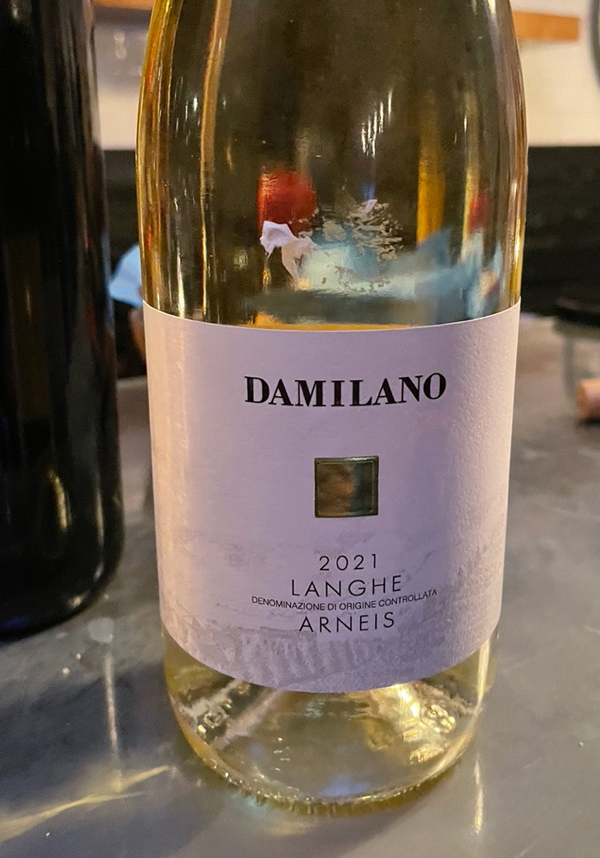
2021 Damilano, Langhe Arneis, Piedmonte, Italy.
The bright, fresh and crisply dry Langhe Arneis from Damilano is a tasty little white wine to enjoy over the next year or so with a light palate of lemon/lime, tart unripe peach, melon along with mineral tones, saline stony notes and zesty herbs. Arneis, almost lost durning the 1970s has had a renaissance and acreage has increased as its popularity grew and has now gained a reputation of quality, making for an interesting and unique white wine that can compare with Gruner Veltliner for cool on wine lists. Dry and with good mineral character Arneis is more fun than rather basic New Zealand Sauvignon Blancs and or mass produced Pinot Grigios. Damilano is a historic name in the Barolo area dating back to 1890, when Giuseppe Borgogno started cultivating grapes making wine, and carries with it more than 100 years of winemaking here, obviously most notably Nebbiolo and their Barolo cru bottlings. These Damilano crus include Cannubi, Brunate, Cerequio and Liste, all of which produce spectacular and singular wines, each having tons of individual charms. Current winemakers Guido Damilano and Alessandro Bonelli at Damilano are doing some very attractive wines and deserve the praise they are getting these days. The 100% stainless fermented and aged Damilano Arneis is sourced from vines in Roero, on the left bank of the Tanaro river between Langhe and Monferrato with deep sandy soils, with clay and limestone beneath that adds subtle complexity and aromatics.
Arneis saw a re-birth from almost extinction thanks to Vietti and Giacosa, the famous Barolo producers that saved this varietal in the Piedmonte region, where it is mostly planted, though America vintners have some to play with now in California where it has a tiny but faithful following. The first mention of Arneis in modern times dates back to 1877 when the grape adopted its current name, though it is widely believed to have been in Piedmonte since the 1400s using various names, in the last few hundred years it has mainly flourished in the Roero area, along with interplanting in Barolo. Even though Arneis has no genetic relationship to Nebbiolo, the two grapes have a intertwined historic relationship and it is well noted that for centuries Arneis grape was used to soften the tannins and harshness of Nebbiolo, in Barolo. So Arneis was sometimes called Nebbiolo Bianco and some growers planted a little bit of Arneis with Nebbiolo in a field blend hoping the sweet scent of ripe Arneis berries would attract the birds away from the more prized Nebbiolo clusters! Damilano’s Arneis is not maybe the most expressive or impactful version, but it is a good easy drinker and a great alternative to many generic whites out there and I recommend it for causal occasions and picnics. I have really enjoyed all of the Damilano wines I’ve tried from their mentioned Cru Barolo to this refreshing, slightly tropical, Arneis and I can easily see myself enjoying this Arneis with no pretense with friends this Summer and I will certainly be checking out their latest Barolo offerings too!
($24 Est.) 90 Points, grapelive
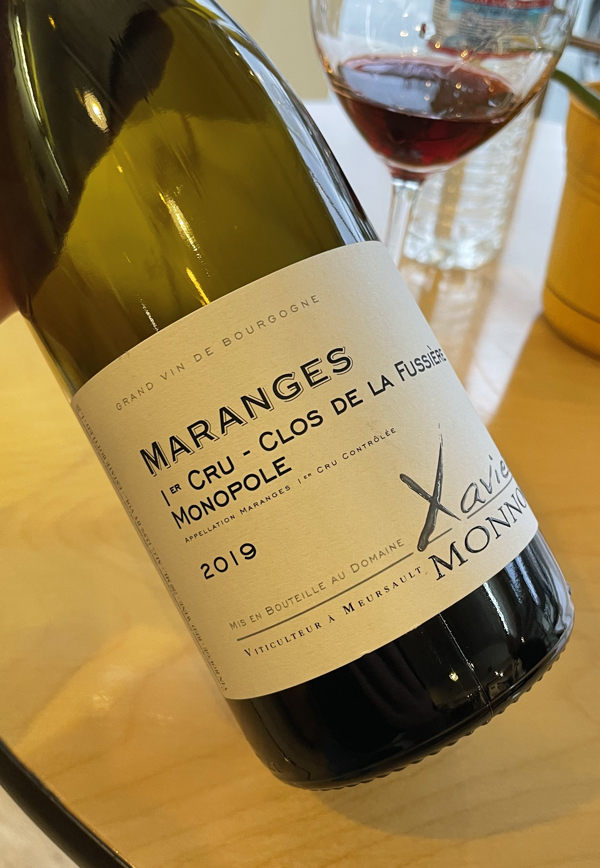
2019 Domaine Xavier Monnot, Maranges 1er Cru “Clos de la Fussière” Monopole, Red Burgundy, France.
The exceptional and clean focused 2019 Clos de la Fussière Monopole shows pure Pinot fruit and lovely silky texture with a flow of red fruits on the medium bodied palate, it impresses in all areas and makes for a very pleasing Burgundy to enjoy over the next 5 to 10 years. I have just discovered Xavier Monnot’s wines this year, first with his brilliant Monthelie Les Duresses Bourgogne Blanc and now with his exciting Premier Cru Maranges Clos de la Fussière that part of a blind tasting I attended recently, both of these quality efforts are wines to keep an eye out for, they are quite good values too, in a category that has seen skyrocketing prices in recent years. This ruby hued 2019 Maranges starts with a touch sweet toasty oak, rose petals and mineral red berries and rotates a seamless stream of cherry, plum and strawberry fruits along with a touch of spice, orange tea, chalky stones and smoky vanilla, without any overt oakiness to muddle the pretty fruit core. Best to enjoy this red Burgundy with a meal and watch it elevate with the food and air in the glass, it gains a subtle earthiness and complexity with time, but stays nicely balanced and holds your attention, again without being aggressive. Monnot’s wines are all small lot hand crafted efforts with the whites being reductive in style and the reds being made for more immediate gratification as this Maranges shows. This wine comes from the La Fussière site, which is just about three acres, that is set on clay and limestone soils with a slightly cooler exposure that allows for good natural acidity.
As a new producer to me, I was curious about Xavier Monnot’s lineup of wines and his collection of vineyard parcels, which I discovered was pretty impressive ranging from Beaune to Maranges in Burgundy’s Côte de Beaune, including prime plots in Pommard, Volnay and Beaune for red and Meursault, Chassagne-Montrachet and Puligny-Montrachet for his whites. Monnot, who starting producing under his own label and domaine back in 2005, has 60% white and 40% red, and crafts his wines from his small facility in Meusault after taking over his grandfather’s property, which was called Domaine René Monnier. Xavier’s family, the Monniers, go back to 1723 in the region, with six generations of winegrowing. Xavier took over his family concern in 1994, says his importer, after completing his oenological studies and he slowly started rejuvenating the vineyards, planting a series of massale selections and new clones where best suited. In the cellar, things really changed when he introduced his own label, going to native yeast fermentation and using clean stainless steel for the red primary maceration and ferments with gentle punch downs and pump overs before pressing to barrel. Xavier employs only a small amount of whole bunches, and maybe none at all in cooler or small yielding years, like this one, which was mostly all de-stemmed. This one saw close to 14 months in about 30% new oak, which matches up well with the concentration and adds to the lush satiny mouth feel, again there’s a lot to admire here. I look forward to digging deeper into Monnot’s collection, especially Xavier’s Meursault offerings, like the Les Charmes and his Volnay reds, with the Clos des Chênes being high on the list of wants.
($55 Est.) 92 Points, grapelive
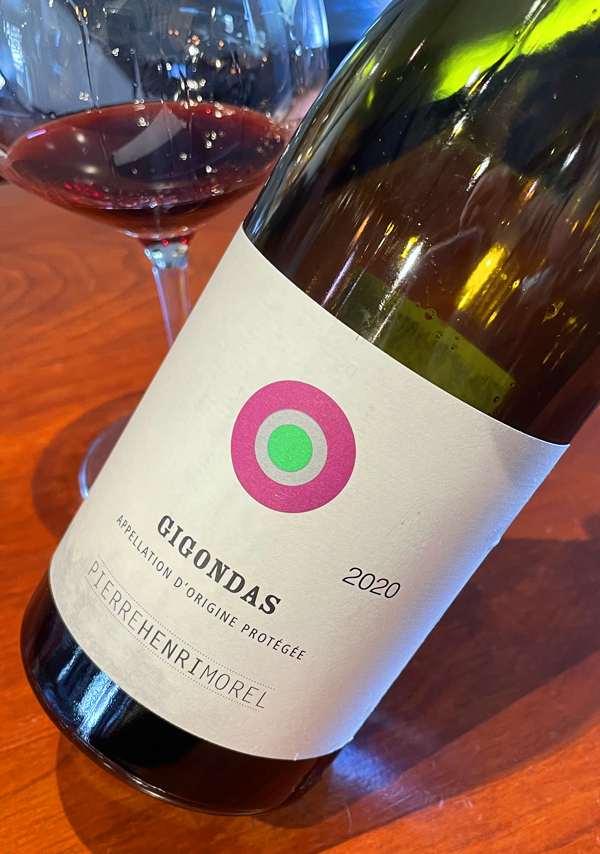
2020 Pierre-Henri Morel, Gigandas, Southern Rhone Valley, France.
I am a huge Gigondas fan and it was exciting to try this one, which I had not tried before and it did not disappoint with a serious meaty concentrated full bodied palate that comes across very Syrah led in character at first with blackberry, boysenberry, damson plum and cassis along with raw beef, anise, burnt embers and violets taking center stage before a nice mix of peppery spices, lavender and sweet pomegranate comes through with air. There’s a lot to unpack here and I should mention there’s some grip that is still firm, making this a wine that is best decanted and or allowed its own time to fully reveal itself, the structure and backbone leads me to believe that cellaring with bring even greater rewards in the coming years, even though I really enjoyed it now and how it evolved in the glass over the 15 to 20 minutes I was able to savor it. This certainly is impressive stuff and will be best enjoyed with a slow and robust meal, especially with lamb, steak and or wild mushroom dishes. The wines at Pierre-Henri Morel see mostly traditional methods in the cellar with fermentation and aging done primarily in concrete vats to allow for purity and transparency to shine through with the Gigondas and Chateauneuf bottlings getting between 12 to 15 months of elevage.
The Pierre-Henri Morel winery and label was created in 2008, and is a unique partnership between Pierre-Henri Morel and the legendary Michel Chapoutier, which saw the pair team up on some vineyard sites in the Southern Rhone with Pierre-Henri, who’s Chapoutier’s commercial director, overseeing the style and branding here, while the production and care being provided by Chapoutier and his team. The Pierre-Henri Morel Gigondas, is a very stylish effort and is made from plots, the winery says, that are located on high-altitude terraces with more alluvial soils, rather than the sandy soils in Chateauneuf that favor Grenache, that endow the wines, as the winery continues, with lovely freshness, balance and minerality. All of which is on display here here in the 2020 vintage, it is a classic Rhone blend of 60% Grenache Noir, 30% Syrah and 10% Mourvèdre from old vines and crafted to a powerful wine, but one that also speaks of place and is nicely balanced. Pierre-Henri Morel, who also works with Two Hands and Barr-Eden wineries in Australia, has a fine selection of vineyards from Chateauneuf, including a piece of the famous Pignan, to the Luberon, including this quality parcel of Gigondas and a plot in Vacqueyras, from which to chose from and his collection of Southern Rhone wines are well worth searching out. I am now very much interested in trying the full lineup here and I will be getting a few more bottles of this Gigondas in the near future!
($35 Est.) 93 Points, grapelive
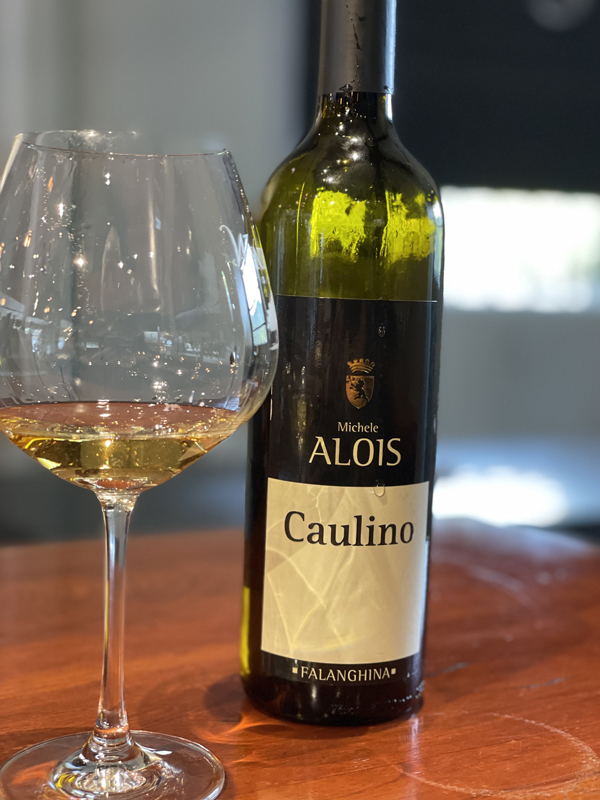
2020 Michele Alois, Falanghina “Caulino” Campania IGT, Italy.
The bright golden and bone dry, mineral laced Caulino Falanghina by Michele Alois is a very distinct version of this ancient grape varietal mainly found around the Campania region of southern Italy and goes well with the Mediterranean coastal flavors of the region with crisp lemony citrus, apricot and Summer melon fruits along with bitter almond, volcanic spiciness and subtle florals. This 2020 is dusty dry on the palate and feels more evolved in color and taste than the vintage would suggest, meaning there is no need for patience here and it has become all it can be already, so drink with abandon if you have or see this one, it is more than ready to please. Alois makes a great series of bargain priced authentic regional wines and makes for a quality label to look for when exploring the Campania region, I particularly enjoy their dark, meaty and gripping Aglianico “Campole” and rare Pallagrello (grapes) white and red wines, along with their top DOCG offerings under the Donna Paolina labeled wines. I was happy to recently taste this Alois wine, which was blind tasted, which was a difficult one to get indeed, but it allowed me to really analyze it without bias or pretense.
Located in the remote Caiatini Mountains in the province of Caserta, the Alois winery is committed to preserving the ancient ways and the family has a long history here, once producing highly sought after silk, some of which, dating back to the 1800s, is shown in the Louvre Museum. It’s noted, by the winery, that back In 1992, Michele and his son Massimo Alois partnered up with the University of Naples in a quest to rediscover the ancient (grape) varieties of the Romans and Bourbons popular during the Bourbon era of Southern Italy in the 1800s, which much to our benefit has been successful in capturing a part of history that might otherwise be lost. The Alois’ grafted pre-phylloxera cuttings of Casavecchia, Pallagrello Nero and Pallagrello Bianco onto the estate’s wild rootstocks and have brought back to life these almost unknown and forgotten varieties. The whites here, Fiano, Greco de Tufo and this Falanghina especially especially showcase the terroir and transparent winemaking, all stainless steel, brings out the essence of the place, which is highlighted by a complex series of volcanic, clay and calcareous soils. These wines are terrific bargains and display pure varietal character, I highly recommend exploring the Alois range, though as with most Italian wines the are best with food and laughter!
($17 Est.) 88 Points, grapelive
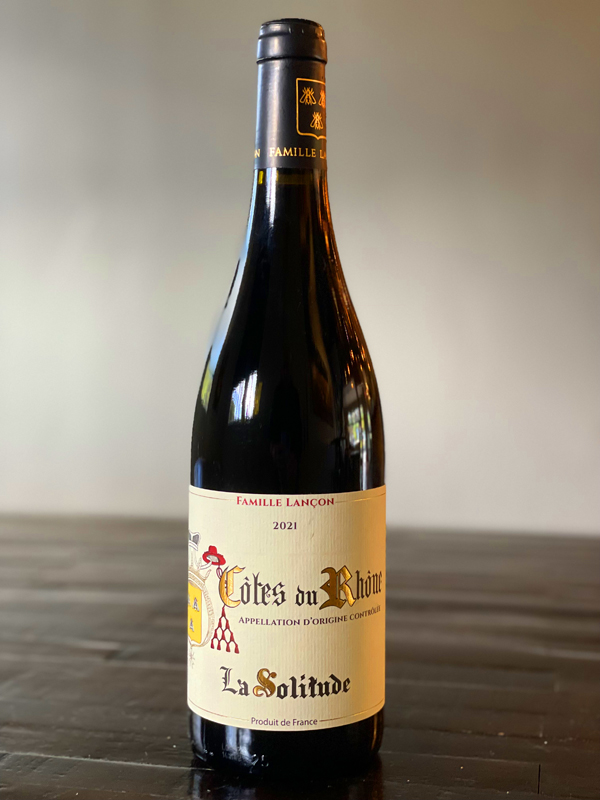
2021 La Solitude, Cotes du Rhone Rouge, Southern Rhone Valley, France.
I have had the Domaine Solitude Chateauneuf du Pape many times in the past and have always admired its rustic and traditional style, both youthful and matured bottles, proving that they age well, but I had not sampled their little Cotes du Rhone before and found it a worthy and easy drinking GSM that delivers a nice value, it’s a wine I will buy again, no question. The 2021 is very fresh and dark in the glass with a purple/garnet hue and a mix of dark berries, florals and spice on the nose that leads to a lively medium bodied, slightly lean and taut at this stage, with an array of boysenberry, sweet cherry, strawberry, plum and currant fruits along with peppery spices, raw meat, anise, dried herb/lavender and a touch of earth. The Grenache comes to the fore with air and a nice balance between lush fruit and savory notes makes this a tasty little wine that hints at what you can expect from the more serious Chateaneuf du Pape promises and is a wine that delivers what you’d want and expect from a Cotes du Rhone without pretense.
The Solitude Cotes du Rhone Rouge is a classic Grenache Noir led red, which also sees Syrah and Mourvèdre in the mix to help give complexity and depth. The grapes are de-stemmed and macerated and fermented, typically in separate varietal lots, in concrete vats and then the wine aged in a combination of concrete and stainless-steel tanks for a year. As per normal here, these Grenache, Syrah and Mourvèdre grapes are sourced from vines set on gravelly clay and limestone soils, which the winery says are typical of what is found here in southern Rhone Valley. In 2021, the La Solitude Cotes du Rhone Rouge saw a 50% Grenache Noir, 40% Syrah and 10% Mourvèdre, all of which gives this vintage its own personality with a bit more of a dark and sultry side showing up, even though the Grenache’s hedonism wins the day. Not overtly fruity or over ripe, this year’s La Solitude makes for a welcome, lightly tannic and eager to please red to enjoy with a variety of cuisine options and can be a crowd pleaser at BBQs, causal parties and or picnics. I will, as mentioned, be picking more bottles of this La Solitude Cotes du Rhone Rouge for personal use and recommend it for bargain hunters.
($17 Est.) 90 Points, grapelive
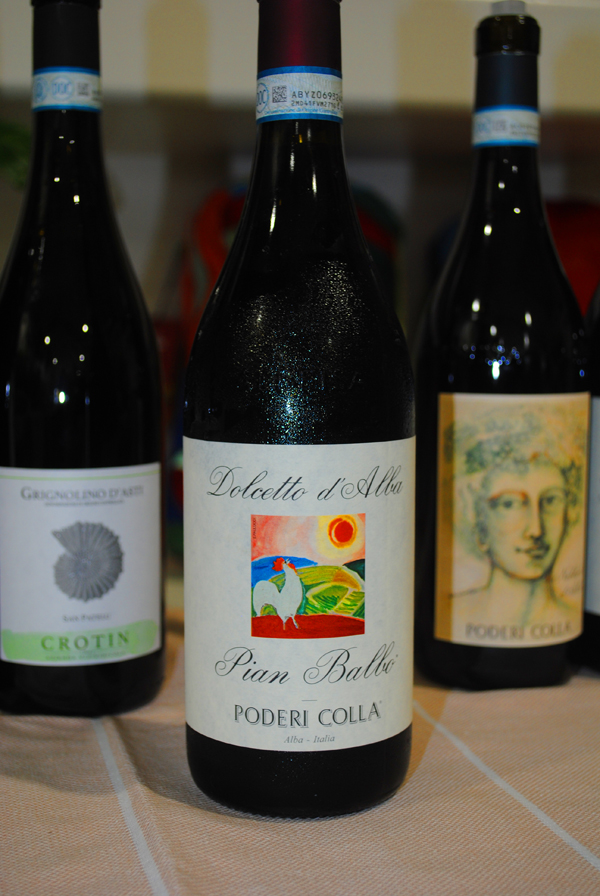
2021 Poderi Colla, Dolcetto d’Alba DOC “Pian Balbo” Piedmonte, Italy.
I love good Dolcetto and this Poderi Colla Pian Balbo really hits the spot with dark flavors and not so common depth showing crushed blackberry, plum and mulberry fruits along with a touch of spice, wild herbs, food friendly tannin, bright acidity and floral details, making it appealing and impressive stuff. Mostly known for their Nebbiolo offerings, Poderi Colla excels in crafting pure and terroir driven wines and this Dolcetto is a terrific little wine and a very nice value. This is all from estate vines on the Drago Estate, which is in the Alba zone, but actually a filet piece of land that cuts into the Barbaresco area and set on hilltop near San Rocco d’Elvio on calcareous marl and sandy soils. This elevated cru Dolcetto feels deeper and more structured than most, but is still generous and even without any oak, expanding nicely on the medium bodied palate, it does best though with simple and hearty cuisine. Colla’s Pian Balbo Dolcetto is a confident and studied effort with plenty of joyous old world rustic charms.
Poderi Colla’s Drago estate, as mentioned above, near San Rocco Seno d’Elvio, close to the Barbaresco zone is not far from Gaja’s legendary crus, sitting almost next door, is prime Piedmonte real estate and Tino Colla is making some fabulous and transparent wines, like this one and the basic Langhe Nebbiolo 2020 that I recently reviewed here. The traditional and sustainable Poderi Colla, as noted in that prior review, was established by the late Beppe Colla and his longtime local family in 1993, after they sold their famous Prunotto winery to the Antinori empire, who wanted to move beyond their Tuscan roots and gain a foothold in Piedmonte. The Poderi Colla estate has three exceptional vineyards that covers about 70 acres, these include this Cascina Drago vineyard, where the Dolcetto and Langhe Nebbiolo are sourced, along with the Tenuta Dardi Le Rase in Barolo and the Tenuta Roncaglie in Barbaresco, where their top bottlings come from. The 100% de-stemmed and stainless fermented and aged Dolcetto really delivers the charm and appeals for its inviting and bright nature, enjoy this for the next 3 to 5 years.
($22 Est.) 93 Points, grapelive
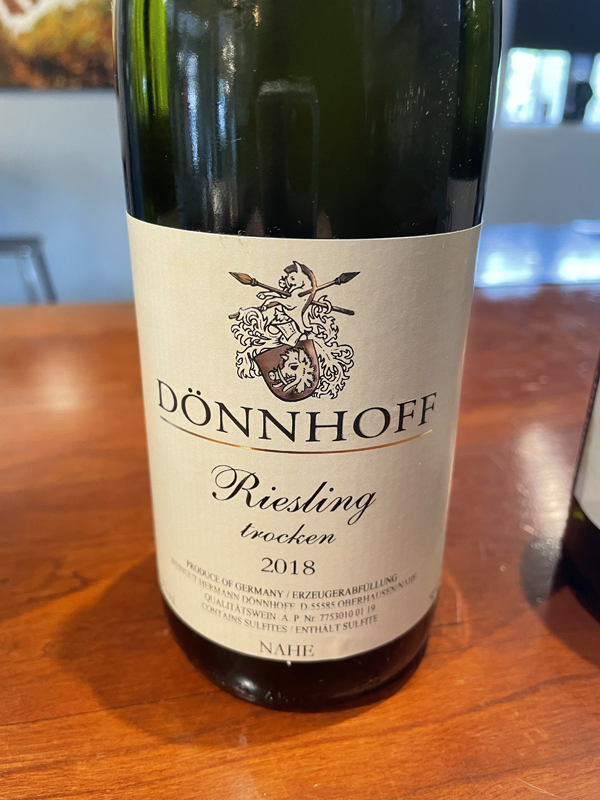
2018 Weingut Donnhoff, Riesling Trocken, Estate, Nahe, Germany.
Brilliant, mineral driven and crystalline, the 2018 Donnhoff Trocken is maturing nicely, but still shows its classic youthful citrus upfront and zesty peachy stone fruit, with lime, green apple, tart apricot and zippy quince on the laser sharp and crisply electric lighter palate. Everything is backed up by mouth watering saline, wet stone, flinty spices, bitter herbs, white flowers, light rose oil notes and lemony verbena. Made to be a gateway to Donnhoff’s awesome collection of GGs, this thrilling bargain estate Trocken Riesling over delivers in quality and highlights the diverse terroirs that the Donnhoff vineyard sites have, which are set a complex combination of soils that goes from classic slate to volcanic, with löss, quartzite, gravelly loams, limestone and sandstones. These soils, again as mentioned in prior reviews, give each wine their own personality and charm, with the Estate Trocken seeing a mix of sites to showcase the overall quality of the Donnhoff’s holdings. A few years of age here has brought some secondary elements and a maybe a slightly deeper hue in the glass, while again being full of vibracy, great with shellfish and briny foods.
The legendary Donnhoff estate, based in Oberhäusen on the Nahe, is, as mentioned many times here, one of my favorite wineries in the world and this basic Trocken is always impeccably made and pure in character and style. Helmut Dönnhoff, the figure head here, was the first to bring international fame to this prestigious winery and making wine since 1966, and now Cornelius, his son who is the 4th generation to run this historic property, is stamping his own signature on these exceptional offerings. They have an amazing set of VDP Grosse Lagen (Grand Cru) vineyards, including Hermannshohle, Felsenberg, Dellchen and Brucke. Cornelius is one of top vignerons in Europe and his wines, which range from briskly dry, like this bone dry Estate Trocken, all the way up to the Grosses Gewachs, to the heavenly luscious, from Spatlese, Aulese, and to Eiswein, which rivals the world’s great sweet wines. The Estate Trocken saw exclusively stainless steel and was done with spontaneous fermentation(s) and aged on the lees for a short time before being bottled quickly to preserve freshness and clarity, and while made to be enjoyed young, has superb midterm drinkability and can be cellared for a decade if desired, as proved here with this one.
($22 Est.) 92 Points, grapelive
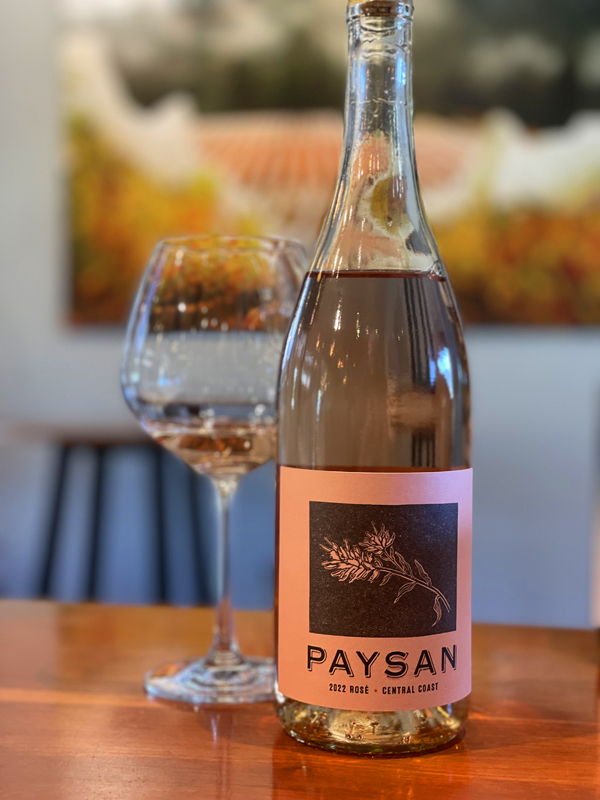
2022 Paysan, Rosé, Central Coast.
Just when you though this wine couldn’t get any better, along comes a new label and vintage to show you it can, with Ian Brand’s 2022 Pays Rosé delivering crisply dry and refreshingly delicious radiant fruit, spice and mineral tones in very confident and delicately pale salmon hued Provence style wine. Formerly know as Pierre’s Pirouette and with a playful cartoon label, the Paysan Rosé has joined the rest of Brand’s Paysan lineup with a new look with labels that better reflect the authentic nature and quality found in the bottle with an earthy feel and artist simplistic look, which I really like. The latest dry pink from Ian Brand and his team comes from selected vineyard sites to best produce this Bandol inspired wine with San Benito County and Monterey County forming the core here with Mourvedre again playing the key role here and giving this Rosé its soulful and structured profile with crushed raspberry, sour cherry, ruby grapefruit, watermelon and orange fruits along with steely wet stones, dried herbs, rosewater and saline notes. This is just what the doctor ordered with almost Spring like sunny days were are now having after a long cold and wet Winter here in the local region. As mentioned before, Brand, a noted geology (dirt) geek and vineyard whisperer has found some incredible vineyards to craft his collection of Paysan, La Marea and signature I. Brand & Family wines, with his latest Paysan Sauvignon Blanc and Rhone Blend Le P’Tit Pape, Le Marea Albarino and the I. Brand & Winery Grenache, Bay Franc and Cabernet Sauvignon bottlings being some of my personal favorites.
Much the same as last year’s 2021 Le P’Tit Paysan, Rosé, Pierre’s Pirouette, this 2022 Paysan Rosé by Ian Brand & Family Winery, based in Salinas California, is a blend of mainly the mentioned Mourvedre, along with a good dose of Grenache, that provides the joyous fruit element, along with with a small bit of Counoise and Cinsault that add complexity and vibrancy in a wine that is a tasty local favorite, as well as getting some nice national attention. The quality to price ratio here is outstanding and this Rosé joins a select set of California versions of dry pink wines that deliver an almost old world, Mediterranean influenced like character, including exceptional offerings by Arnot-Roberts, Bedrock, Randall Grahm’s Language of Yes, Tribute to Grace, Filomena (made from Cabernet Pfeffer) and Stars & Dust, all worth chasing down and enjoying this coming Summer. The direct press Rosé saw stainless steel fermentation, seeing only a few hours of skin contact, and tank aging with no malos, it was cold stabilized and sterile filtered and was bottled early to preserve intensity and vitality. The grapes are picked early and benefits from that fresh acidity and the stony elements that come from, what Brand calls, the calcium rich Aguajito Shale as well as the calcareous alluvial soils. There’s a tons to admire and like here with Ian’s current set of wines and some new varietals in the mix that are very intriguing, like the recently reviewed Cabernet Pfeffer and Escolle Vineyard Gamay Noir, along with Brand’s all new and exciting Flint Vineyard Pinot Noir, which comes from a limestone influenced site not far from the famous Calera and near Mount Harlan.
($19 Est.) 92 Points, grapelive
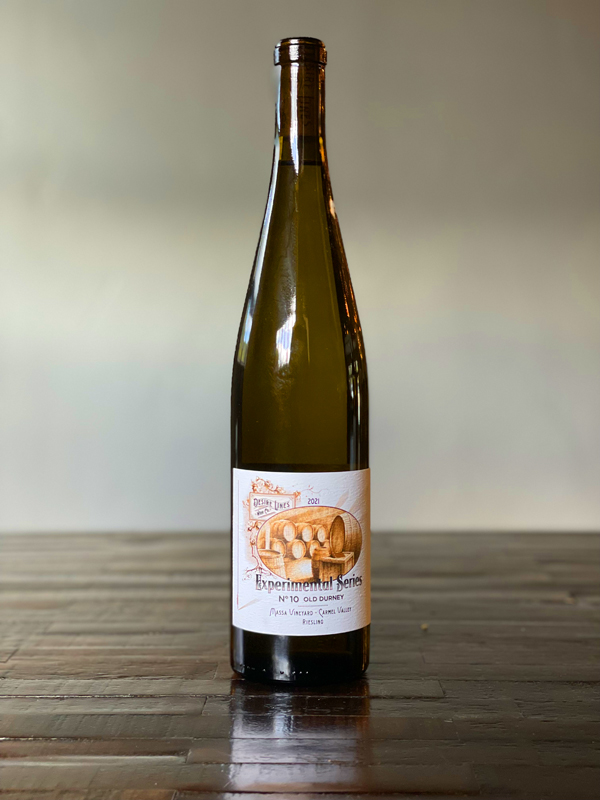
2021 Desire Lines Wine Co, Dry Riesling, Experimental Series #10 “Old Durney” Massa Estate Vineyard, Carmel Valley, Monterey County.
Cody Rasmussen’s wines are some of the most exciting new wines in California, especially his thrilling Syrahs and his exceptional Riesling expressions, like this fabulous Old Durney (Massa Estate Vineyard) from my home batch, and old vines in Carmel Valley, it is maybe the best white wine produced from the region, along with a few versions of Chenin Blanc from the same site! All organic vines set on California shales, this vineyard, planted in the late1960s is a local legend, known for long lived Cabernet and the original Durney family that pioneered the region. This greenish pale 2021 Desire Lines Riesling is mineral driven, complex and textural in nature with crisp and zesty lemon/lime citrus, along with green apple, unripe apricot and quince fruits, as well as a sense of spiciness, bitter herbs, wet rocks, loam and chamomile notes coming through on the medium bodied and racy palate. This wine really rounds out and smoothly fills out in serious fashion, making it wonderfully pleasing, brilliantly balanced and delicately aromatic, great with briny seafoods and lightly spiced dishes. Hints of rosewater, tangy lime and steely elements linger on and on here with soft verbena too, in this dry Riesling that Rasmussen absolutely nailed to near perfection! I have been enjoying these Desire Lines Riesling since I first discovered them and I have never doubted the quality here, so I was thrilled when world renowned Riesling guru Stuart Pigott of James Suckling reached out to get his hands on some, which he too loved, confirming my own thoughts that these are some of the best California Rieslings ever produced!
There’s a lot of reasons to get excited by these Desire Lines offerings, with my favorites being the mentioned Syrah bottlings, including Cody’s fantastic Shake Ridge and Griffin’s Lair examples that are his two signature wines, though I love all of the Rieslings almost as much, especially the Cole Ranch, Wiley Vineyard and this Massa Vineyard, which has a personal connection as I live so close to this famous site. Rasmussen says, In some mysterious way, he thinks the remarkable setting and unusual soil type stamps his Massa Vineyard Riesling with a personality distinct (and different) from the Mendocino County Rieslings (Cole Ranch and Wiley Vineyard) he does. Adding that he can’t quite put his finger on it, but there’s something singular to the austere phenolic mouthfeel, opulent orange citrus fruit profile, and herbal nuances that speak of California’s sunny Central Coast and this old set of vines. The wine, he continues, was fermented in a 1000-liter Stockinger oval and left on lees until bottling in July, or about 9 or so months, which helped build its mouth feel, in my own opinion, also gives the wine a German like feel. This wine, Cody explains, shows just a touch of matchstick reduction on the nose, which he adores in his almost flinty Rieslings, and it reminds him a little of the Rieslings from Hofgut Falkenstein, one of his favorites, and mine too. I say join this mailing list as soon as possible and while you may come for the Syrah, you’ll stay for these outstanding Rieslings! Rasmussen, who is the assistant winemaker at Morgan Twain-Peterson’s Bedrock Wine Company in Sonoma has a real gift with Riesling and is enthusiast of the grape in all of its forms and levels of sweetness, though I am mostly impressed with his touch for the dry suff!
($25 Est.) 95 Points, grapelive
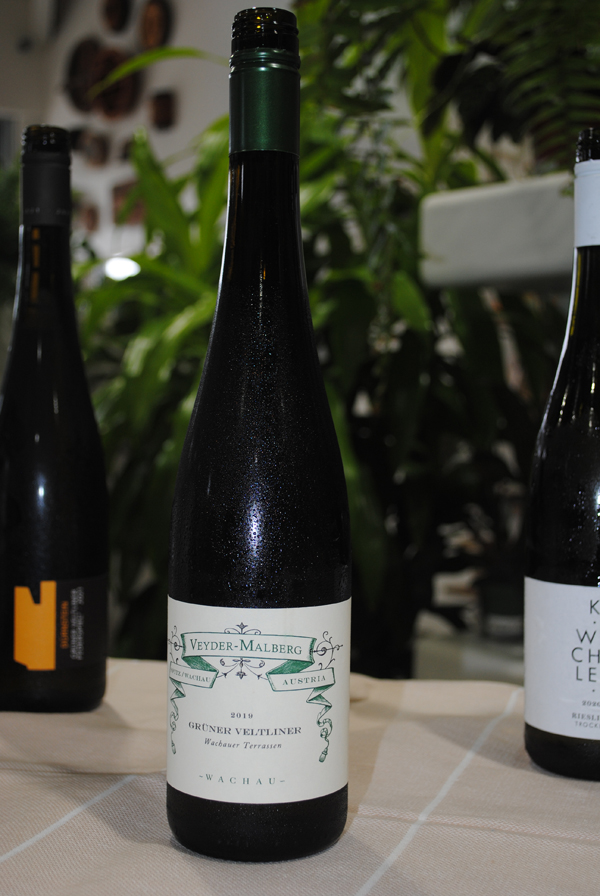
2019 Weingut Veyder Malberg, Gruner Veltliner, Wachauer Terrassen, Wachau, Austria.
One of Austria’s prime time time producers, Veyder Malberg makes some of the tastiest Gruner and Riesling you’ll ever try and I was thrilled with the few latest releases I got to sample recently, including their awesome Bruck single cru Riesling and this deliciously vibrant Wachauer Terrassen Gruner Veltliner, which is mineral toned and has pristine clarity of form. This exciting Gruner is ultra pale with a crystalline lighter framed palate that revolves around a core of lemon/lime citrus, white peach and quince fruits along with wet stones, bitter almond, verbena, herbal tea and a faint sense of peppery spices. As the wine gets going you also get a yeasty roundness that balances out the refreshing and bright natural acidity to near perfection in glass, making this racy Gruner great as an aperitif and or with a range of lighter cuisine, including shellfish and or soft farm cheeses.
When you think of Austrian greats in the Wachau and Kremstal area, you have Knoll, Alzinger, Hirtzberger, Nigl, Bründlmayer and Veyder Malberg, all of which should be on your bucket list of wineries to try and or visit. Peter Veyder-Malberg, the Spitz based winemaker, uses holistic organic and biodynamic practices on his collection vines that are not too far from the mighty Danube and set on the region’s complex soils, with his Gruner coming from various plots from the Wachau, Hochrain, Weitenberg to the Spitzer Graben area. The Veyder Malberg Terrassen Gruner is sourced from deep loess, gneiss and mica schist soils that helps with the seamless array of flavors and complexity found here in this wine. This Gruner sees a natural and indigenous yeast fermentation in exclusively stainless steel vats, after which the wine then rests on its lees for two years and goes through full malos to enhance the fine texture here. I am always grateful of the chance to sip on Veyder Malberg’s fabulous collection of wines and always am impressed by the stunning purity, and this wine was no exception!
($39 Est.) 93 Points, grapelive
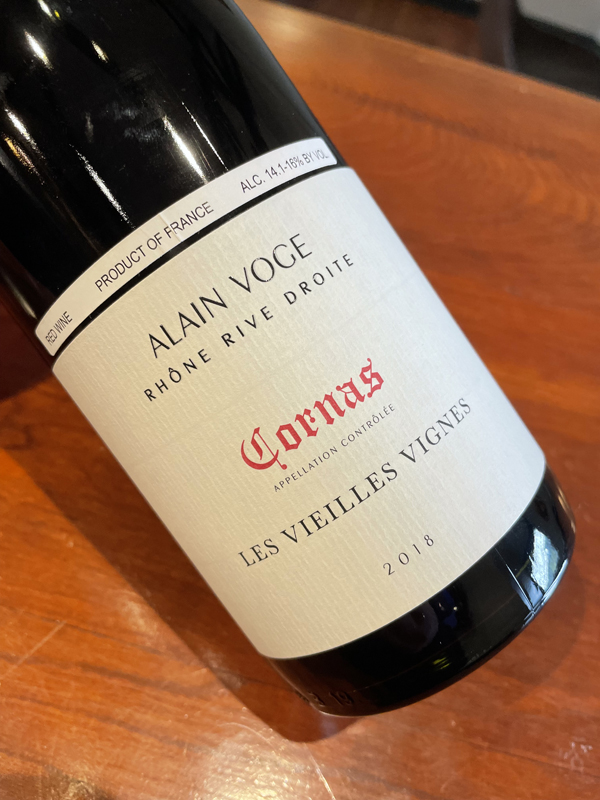
2018 Domaine Alain Voge, Cornas, Vieilles Vignes, Northern Rhone, France.
The stunningly pure and deep 2018 old vine Cornas from the late Alain Voge (who passed away recently) is a fitting tribute to the man and the legend with beautiful floral and fruit details and complex meaty/savory notes that perfectly capture the varietal and place. This brilliant Syrah absolutely thrills the palate with full bodied density, but with exceptional poise, this Cornas could and does charm with violets, dark boysenberry, damson plum, creme de cassis, wild lavender, minty anise, peppercorns and black olives, as well as very subtle wood smoke. Everything flows together and lingers on and on in this vintage of Voge’s flagship wine. This is an elevated wine that seduces completely, it is less aggressive and feral than Clape or Allemand, but still has a classic Cornas gamey element and easily compares with top Cote-Rotie and Hermitage bottlings by some of the old school stars of the region. I hadn’t had Voge in a long while, and this wine truly make my heart soar and makes me a little sad I wasn’t able to get more bottles! This 2018 is still very young and I suggest if you can’t be patient for another 5 to 7 years, decant it and have it with a hearty meal, that’s not say it isn’t appealing now, it is just there is so much on offer here it needs time to unfold.
Coming from the oldest of the Domain’s wines, Voge says the Les Vieilles Vignes was created during the 1970s to highlight the long-standing family vineyard parcel that is a the heart of the Cornas appellation and makes for a signature wine of great power and intensity. The Alain Voge vines here are now all organic and biodynamic and this vineyard is, as the winery notes, situated on slopes at about 200 meters up in elevation with South-South-East slopes and are on average just over 60 years old. The roots, again as the winery continues, go very deep down into the ancient granite rock soils, called gores locally, giving this wine its concentration and mineral tones. The Les Vieilles Vignes Cornas, 100% Syrah obviously, was hand picked and was partially de-stemmed with typically about 20% whole cluster with stems in any given vintage, with primary maceration all done in stainless steel. The fermentation starts with natural indigenous yeasts and the maceration lasts for several weeks in the vats, with cap-punching and pumping-over done twice a day, after which the wine is pressed to barrels for aging. The maturation is done, as I learned, in mainly used 228-litre Burgundy style barriques for 20 months, with just 15% new oak, all of which feels just about perfect, especially in a year like this one. I don’t think I could recommend a wine more highly and I look forward to seeing this vintage gain in another decade!
($90 ESt.) 96 Points, grapelive
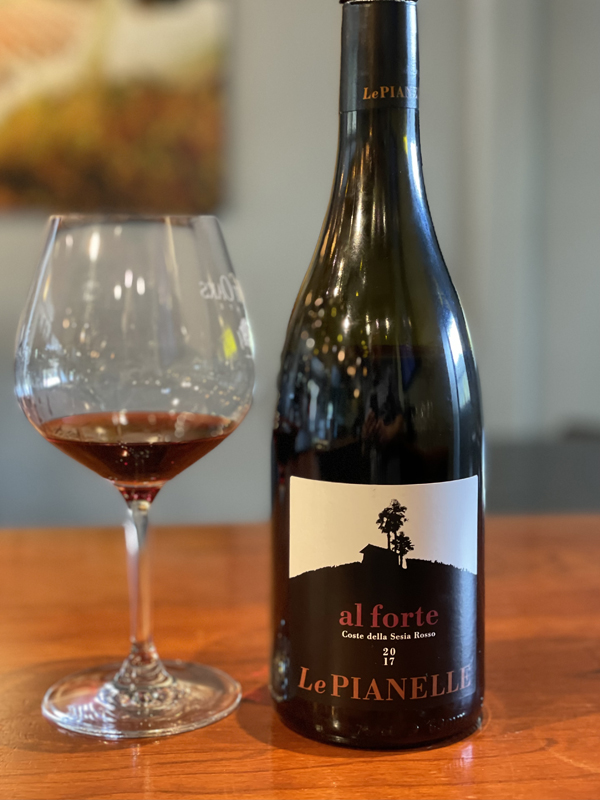
2017 Le Pianelle, Al Forte, Coste della Sesia Rosso DOC, Alto Piedmonte, Italy.
Fast becoming a good to producer in the Alto Piedmonte, Le Pianelle is making some fantastic wines, even with their basic Al Forte Coste della Sesia Rosso being highly impressive with a palate impact that could easily be mistaken for a serious Barolo. The Le Pianelle 2017 Al Forte Coste della Sesia Rosso, made mainly with Spanna (the local name for Nebbiolo) along with small amounts of Vespolina and Croatina, ancient local varietals, is deeply flavored and firmly structured with classic Nebbiolo character, showing earthy black cherry, damson plum, briar laced raspberry and red currant fruits, as well as mineral tones, leather, cedar, melted tar and licorice. This vintage has a powerful and tannic feel, but opens up nicely the reveal pretty floral elements along with sweet and tangy herbs and it expands into a thrilling wine that is best enjoyed with rustic and robust Winter cuisine. This wine from holistically farmed sites in the northern part of Piedmonte that is more alpine and set on complex soils, which has volcanic based Porphyritic sand and ancient glacial deposits with iron rich red/orange soils, along with a cooler climate, imparts a sense of place and energy in these Le Pianelle wines. Typically a blend of 75% Nebbiolo (Spanna), 20% Croatina and 5% Vespolina, the organic grapes in this Al Forte are from a mix of young and old vines and see about 24 hours of maceration and was fermented in conical wooden fermenters and exclusively with indigenous yeasts, all 100% de-stemmed. This vintage, a bit warmer than most, shows off a deep garnet/brick hue and expressive ripe fruit density that makes it very appealing now and it should go on pleasing Nebbiolo lovers for another decade.
The Le Pianelle winery was founded back in 2002 by the German national Dieter Heuskel, who, as I have mentioned in prior reviews, was a huge fan of Piedmonte area and its wines, he took the plunge and bought an old vineyard in the up and coming Alto Piedmonte region near Bramaterra and Gattinara. When this opportunity and challenge of rejuvenating a long-forgotten vineyard was presented to Heuskel and his partner, the well respected Alto Adige producer Peter Dipoli of Voglar, he just couldn’t help himself and jumped at the chance. Now with the youthful and gifted winemaker Cristiano Garella, a native to the region, who it is said has Nebbiolo in his blood, they have created, along with an impressive vineyard team, a truly world class wine estate that is impressing the wine world. Garella uses grapes that are harvested exclusively by hand, with each grape variety and vineyard parcels being fermented in separate small lots with maceration and fermentation in open top Grenier oak vats. After primary fermentation is complete the young wine is racked to wood and matured for up to 18 months in a combination of used small French barriques (barrels) as well as large Austrian oak made Stockinger oak barrels. Everything is done here to promote the natural terroir expression and the true charm of the grapes with Nebbiolo always playing the key role, as is the case with this exceptional 2017 “Al Forte” Coste della Sesia Rosso, it is a wine that way over delivers for the price and it is impossible not to admire its depth and brilliance. Not always an easy find, Le Pianelle is imported by Italian specialist Oliver McCrum, but is well worth searching for, especially Le Pianelle’s Bramaterra DOC, which I reviewed from the 2016 vintage and this Al Forte Costa della Sesia Rosso, with both the 2016 and 2017 versions being ones to look for!
($40 Est.) 94 Points, grapelive
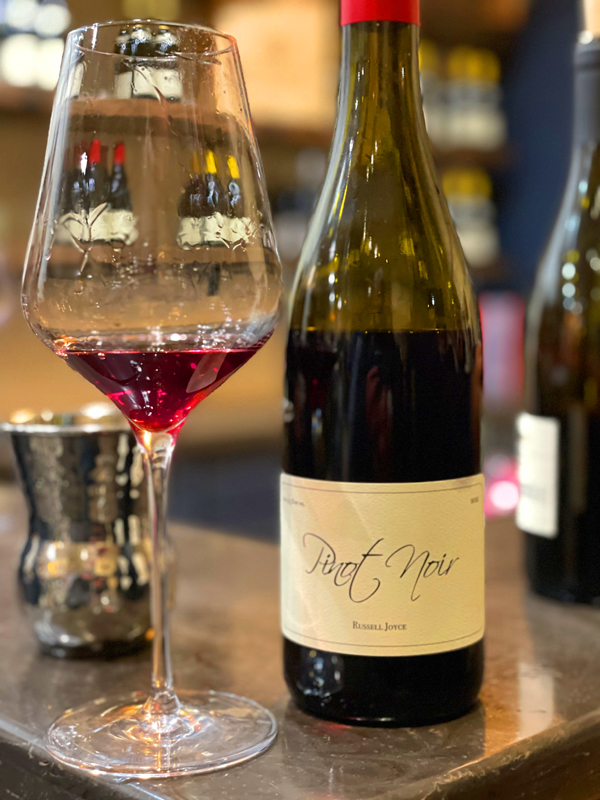
2021 Russell Joyce Wines, Pinot Noir, Santa Lucia Highlands.
Part of a series of small batch offerings from Joyce Wine Co. this silky red fruited Russell Joyce Pinot Noir is one of the top non estate bottlings with rich fruit concentration that you’d expect from the Santa Lucia Highlands and lively fresh acidity giving a nice tension and balance, making for a stylish wine that is showing exceptionally well even in its youthful form and in particular this 2021 is great with food. Bright raspberry, black cherry and cranberry fruits lead the way on the medium bodied palate along with an array of spice, mineral tones, light florals, a hint of loamy earth and subtle wood notes, all forming a compelling and delicious pure Pinot. As it opens it gains depth and complexity with a delicate chanterelles, cola bean and briar note, putting just the right amount of savory with the classic SLH core of dark fruit, best to enjoy this one with grilled salmon and or squab, as well as light meat dishes.
Winemaker Russell Joyce, who’s Gamay is getting tons of love and attention, reminds us here that he’s very good with Pinot Noir with this signature version that is from a couple of hand selected barrels from, what Russell calls, two distinct vineyards, the Tondre Grapefield and the Escolle Vineyard. These sites play a bit of ying and yang here with Tondre providing the riper elements and the higher toned Escolle giving the aromatics and vibrancy. Joyce continues that this wine was fermented in small separate lots and then blended together after being barreled down to create an elevated wine, which this 2021 certainly is.This grapes were traditionally de-stemmed and fermented in bins and rested in mainly used French oak for just about a year. It was cool to experience this Pinot Noir with a few other Santa Lucia Highlands wines, where this one showed its quality and distinction, impressing me and some others in the room, it was a big hit. Joyce is moving from strength to strength since moving into the old Ventana winery in Arroyo Seco and the wines have taken a good step up with these 2021s.
($55 Est.) 94 Points, grapelive
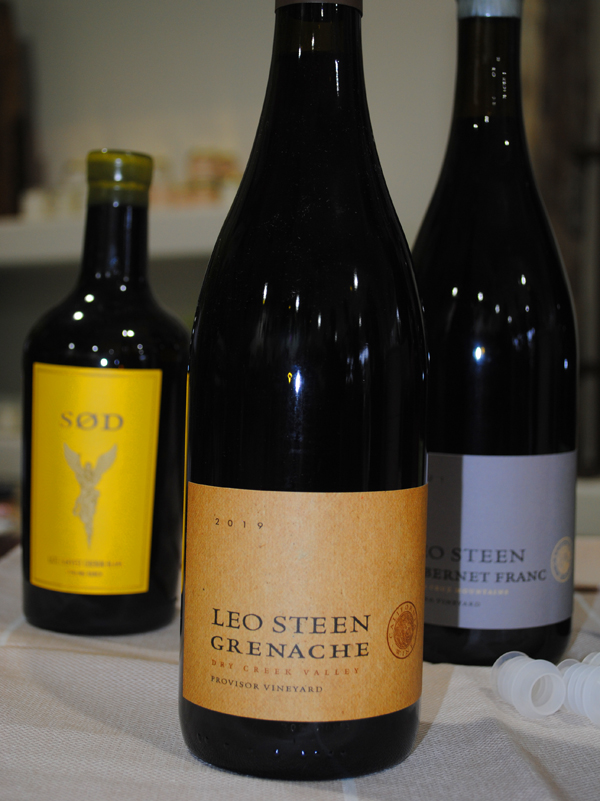
2019 Leo Steen, Grenache, Proviser Vineyard, Dry Creek Valley AVA, Sonoma County.
One of the best Rhone style wines I’ve had in the past year, the dark garnet/ruby 2019 Leo Steen Provider Vineyard Dry Creek Grenache by Danish ex-pat winemaker Leo Hansen is full of fruit intensity, depth, spice and tannic structure, very much in the vein of classic old school old vine Gigondas and or the high elevation Sierra de Gredos wines from Spain, this is exceptional stuff from this label that is mainly known for their amazing Chenin. I was thrilled to taste with Leo recently and go through his current releases, with his outstanding Santa Cruz Mountains Cabernet Franc and this stellar Grenache being two of my favorites of Hansen’s red wine offerings, this are wines you really need to discover if you’ve not tried them yet. This Grenache has a surprising amount of grip to go allow with its beautiful fruit density, easily making it a standout for this varietal and a wine that looks to have tons of aging potential, while still drinking impeccably well now, just be sure to have it with a robust meal. This 2019 comes it at just 13.3% natural alcohol and has a lively burst of freshness with layers of crushed bramble berry, strawberry, Summer plums and a hint of candied cherry and grilled orange fruits along with peony florals, dried lavender/sage, anise, crushed stones, herbal minty notes, peppery spices and lingering framboise. This wine is perfectly judged, mixing hedonistic fruit with savory elements to achieve spot on Grenache greatness, all in a nicely restrained and seductive wine that takes California Grenache to a new level of thrill!
Leo explains that his Grenache is terroir driven, coming from a site located in the famed Lytton Springs District of Dry Creek Valley, adding that the Provisor Vineyard’s prized red rock soils are planted to Tablas Creek Clone D Grenache, originally cuttings from Beaucastel’s Chateauneuf du Pape estate, in ideal north-south rows that run down a gently sloping hillside. This plot of Grenache grown in Provisor’s warm climate, with ideal dry conditions and cool nights, these organically farmed grapes achieve, what Hansen says, is beautiful (full) ripeness, while preserving wonderful natural acidity and tannins, which this 2019 shows to near perfection. To make this wine the best that it can be, Hansen employed 80% whole cluster fermentation using the traditional pigeage method to enhance the wine’s rustic charms. The remaining 20% undergo carbonic maceration for, as Hansen continues, the Grenache’s bright, sweet red fruit notes to shine through and balance the wine’s full bunch crunch and stemmy notes. After 18 days on the skins the wine was drained & pressed to an oak cask using a gentle basket press, with Leo preferring a large neutral 360 gallon French oak vat to mature this Grenache. The Proviser Grenache sees 14 Months in the wood and then another two months in a stainless steel tank, It was racked once and bottled unfiltered and unfined to preserve its complete set of flavors and every nuance of character. I was massively impressed by these Leo Steen wines and found them all very alluring and complex efforts that are wonderful values as well, being all hand crafted small lot wines from holistically and organically farmed vines, I highly recommend chasing them down!
($42 ESt.) 95 Points, grapelive
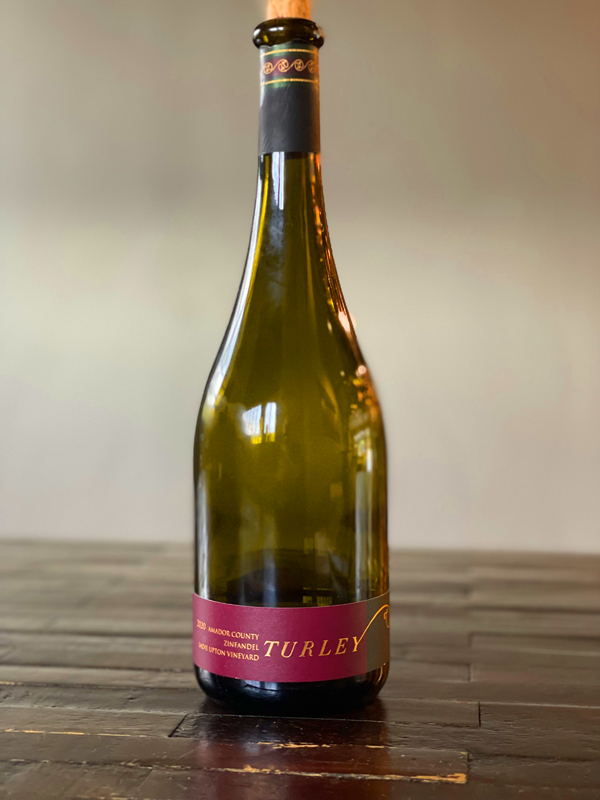
2020 Turley Wine Cellars, Zinfandel, Sadie Upton Vineyard, Amador County, Sierra Foothills.
Turley’s winemaker and vineyard manager Tegan Passalacqua made some tough decisions and only made small amounts of wine in 2020 that shows absolutely no traces of smoke taint, incredibly honest and moral in this world, and we are rewarded with a fine set of small batch offerings in what was a devastating vintage with the raging wild fires, with Turley’s Sadie Upton Zinfandel being a prime example. The mouth feel and ripe fruit are exceptional here, this 2020 shows off a dark intense purple color in the glass that is enhanced by beautiful floral aromas and crushed black raspberries that echo on the lush full bodied palate that adds sweet plum, bramble berry, blueberry and currant fruits along with baking spices, mocha, lavender and a touch of toasty wood. There’s opulent and smooth tannins that melt away in the mouth, but a lift from natural acidity really makes everything fit together and lingering briar savory notes help keep things from being heavy, even with a heady 15.3% alcohol this wine shows a graceful balance and is lovely with food. Impressive, this Sade Upton Vineyard is a sleeper in Turley’s star studded collection, it is firmly in my favorites (Zinfandel) column along with Ridge’s Lytton Springs, Bedrock’s Evangelho, Biale’s Black Chicken, Sky’s Mount Veeder and Bucklin’s Ancient Old Hill Ranch! I was truly in love with the 2018s by Turley, but I am digging all the wines from 2019 and 2020, which are like an American Chateauneuf du Pape in presence, impact and style, almost as much, with this one and the Durate being very pleasant surprises.
These old vine sites have amazing histories and legends, with Turley noting that, In 1922, smack-dab in the middle of Prohibition and while her husband was away working for the railroad, a then 21-year-old Sadie Upton decided she was going to plant herself a vineyard. This resulted in a mainly Zinfandel vineyard, named after her, near her original home at close to 1500 feet up near the town of Plymouth, that was still an area where gold nuggets were commonly found and had the foothills complex soils and cool nights that allow Zin to thrive here. Now after a hundred years, the vines are, as Turley says, still kicking in the gumption-riddled tradition of their creator Sadie and make for a positively delicious, full throttle, dense, dark and spicy wine. Turley uses, as mentioned here in prior reviews, a native yeast fermentation and a employs a cool maceration period to develop a deeply saturated hue and an extraction of complex of flavors and tannin. After fermentation the wines are aged 15 months in 80% used barrels with just 20% new. As per normal with these Turley Zins, they are a combination of American and French oak, with Passalacqua favoring the French oak, which makes up 80% of the total lots, of which I think allows for wonderful transparency as well as giving these wines a sense of pure California luxuriousness. I gotta say, I didn’t have high hopes for any 2020s, but Turley’s dedication to quality, rigorous selection and the fact that lots of Zins were picked before the smoke had a chance to set into the skins, has won me over! I hear 2021 is going to be next level stuff, for these Turley Zins, with some of the best features I loved in the 2018s, and I am looking for to seeing how they are when released as well as when they have time in bottle to mature fully, as mentioned before, Turley Zin and Petite Sirah are sold and rewarding agers too.
($45-60 Est.) 94 Points, grapelive
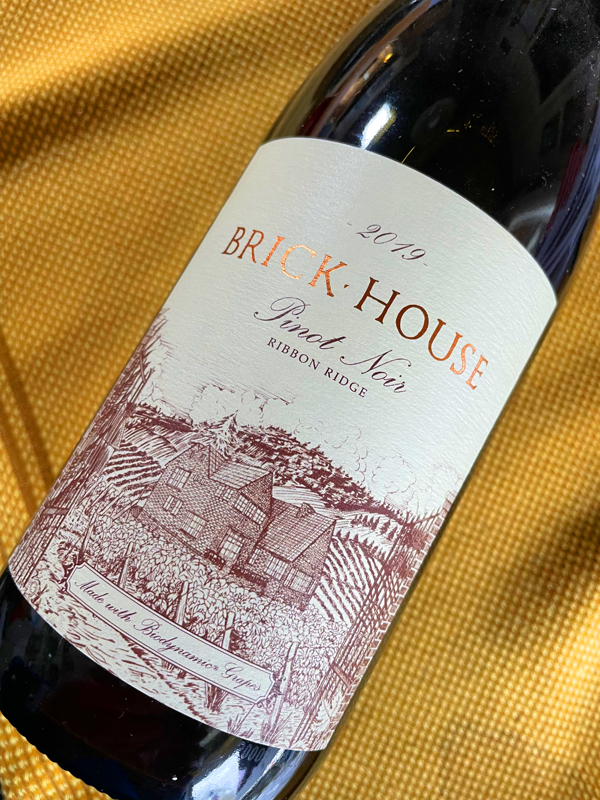
2019 Brick House, Pinot Noir, Ribbon Ridge AVA, Willamette Valley, Oregon.
The 2019 vintage was a difficult year for the Willamette, but Brick House has made a gem with this estate bottling, it comes through on the palate very much a true Burgundy style wine with silky layers, slightly earthy and slow to open, after which it gains a beautiful aromatic quality, length and richer elegant red fruits. This bottling, like Brick House’s Select typically sees a core of Pommard clone and a restraint in new oak that allows a more old world character to shine through, as this 2019 does, it delivers layers of black cherry, mulberry, brambly raspberry and plum fruits along with bright acidity, saline, potting soil, cola bean, blood orange, wild forest mushroom and a hint of wood. If blind tasted, those familiar with Nuits-St.-Georges and Vosne-Romanée will find many commonalities here, and I would be hard pressed to guess correctly, old world v. new world here, even though I’m very experienced with these fabulous Brick House wines. Brick House uses very gentle fermentation(s) and maceration methods and mostly indigenous yeasts, the wines are all about transparency and purity, and they see a lengthy elevage in French oak, always well judged in new barrel use, depending on the vintage, with this one seeing only neutral barriques, and concentration of the individual 100% estate grown Pinot Noir wines.
One of Oregon’s legendary estates, Brick House Vineyard, founded by Doug Tunnell, who planted the first vines around his old brick house in the spring of 1990. With Doug putting in Pinot Noir first, then Chardonnay and true Gamay Noir, which has been a cult favorite for many years. Tunnell says that every vine was planted with a commitment to holistic methods that was rare in the Willamette Valley at that time and Brick House became certified organic farm. After pioneering biodynamics in the Willamette Valley, Brick House in 2005 achieved its goal of a full Demeter Biodynamic certification. Today, Tunnell on his beautiful southeast facing slopes in Ribbon Ridge hosts close to 45,000 vines, densely planted to better produce elegant and intense wines, and in particular deep Burgundy inspired Pinot Noir. This area of the Willamette Valley is mainly ancient seabed and has marine sediment soils and home to some fantastic vineyards, like Brick House and Beaux Freres, and there is a distinct terroir here and you can see why Burgundy inspired winemakers love this place, in particular these wines, but also Ribbon Ridge bottlings by Cameron and more recently Hundred Suns, all of which are incredible and unique Pinots. It should be noted, this lighter framed, low alcohol and lively 2019 really turned on the charm and personality with food, providing exceptional companionship with a grilled fresh caught salmon BLT and a seared pork belly appetizer, showing poise and a underlying structure to excel with a meal.
($34 Est.) 92 Points, grapelive
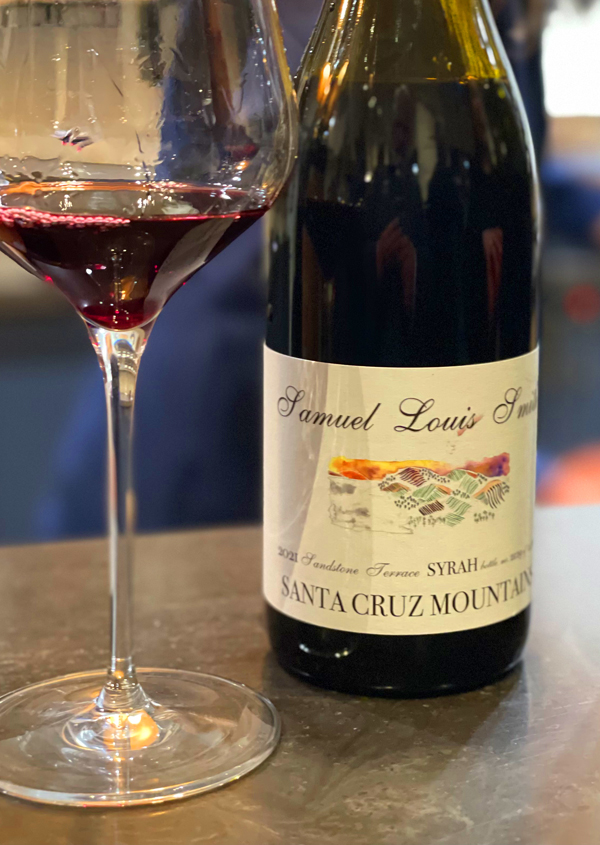
2021 Samuel Louis Smith, Syrah, Sandstone Terraces, Santa Cruz Mountains.
The Sandstone Terraces Syrah from Sam Smith is one of the best values in Syrah you’re going to find and especially this deeply saturated purple and complex 2021 version with its gorgeous aromatics and complexity of its flavors from ripe blue fruits to its savory crunch and delicate earthiness, this is an excellent cool climate, Northern Rhone stye wine that thrills the palate. Sam Smith, who’s the head winemaker at Monterey’s Morgan Winery, has been getting huge critical acclaim for both his latest Morgan efforts and these personal label wines and all of it is well deserved, he has an incredible touch with Chardonnay, Pinot Noir and Syrah, a grape that he has studied for years and has perfected, as this wine and his other bottlings have shown, having made a few trips to the Rhone along the way. This 2021 starts with a wild flower and liquid violets perfume, a ripe array of boysenberry, briar spiced raspberry, damson plum, Italian cherry and tangy blueberry fruits in a medium to full bodied and youthfully lively palate that is accented by a blast of early and herbal stem excitement, white pepper, anise, dried rosemary, creme de cassis and subtle wood notes. This finely balanced wine, which comes in at only 12.8% alcohol, is full of ripe character and drinks with clarity and poise even now, but there good reason to believe there’s more to come with age. I’m inclined to gravitate to Syrah, but even so, this wine is a standout effort and joins some of my favorite producers, like Drew, Pax, Ojai, Jolie-Laide, Desire Lines and Andrew Murray to name a few that craft cool coastal examples of California Syrah.
Sam, who sourced this wine from three vineyards in this vintage, went with about 80% whole cluster and native yeast fermentation for his Sandstone Terraces Syrah which saw daily punch downs and a length maceration to create depth, structure and color intensity, that is clearly successful here and then the wine saw 10 months élévage, as Smith notes, in 38% second-fill and 62% neutral French oak barrels. Just 8 barrels were made of this unfined & unfiltered Syrah, resulting in the 193 cases produced, which was just released into the wild and is also available on Smith’s website. Smith chose to get fruit from mainly sandstone based soils, hence the name, this included as he explains, the organically farmed Nelson Vineyard (44%) that is located near the summit of the Santa Cruz Mountains, and not far from the famous Big Basin Vineyards, which has as put a focus on Syrah in the region. It sits up at 1700 ft with the vines growing in sandy loam and chunky sandstone, surrounded by redwoods and firs, it makes up the core of this vintage. Also, the Gali Vineyard (42%) plays a big part here, which is located in the Corralitos zone in the southern most part of the region. Smith says this Galli Vineyard is just about six miles from the ocean and is one of the coldest sites in his whole lineup. Going on he says this site is In the conversion sage to organics and the soils are clay loams, that are weathered from sandstone and shale, which Sam adds were formed on ancient submarine terraces. It should be noted too, that in 2021, this wine has some fruit from the Tondré in the SLH, which was just enough to provide a plumb sense of richness, which I think just about fills this Syrah out to near perfection, this wine is a do not miss for Syrah lovers.
($36 Est.) 95 Points, grapelive
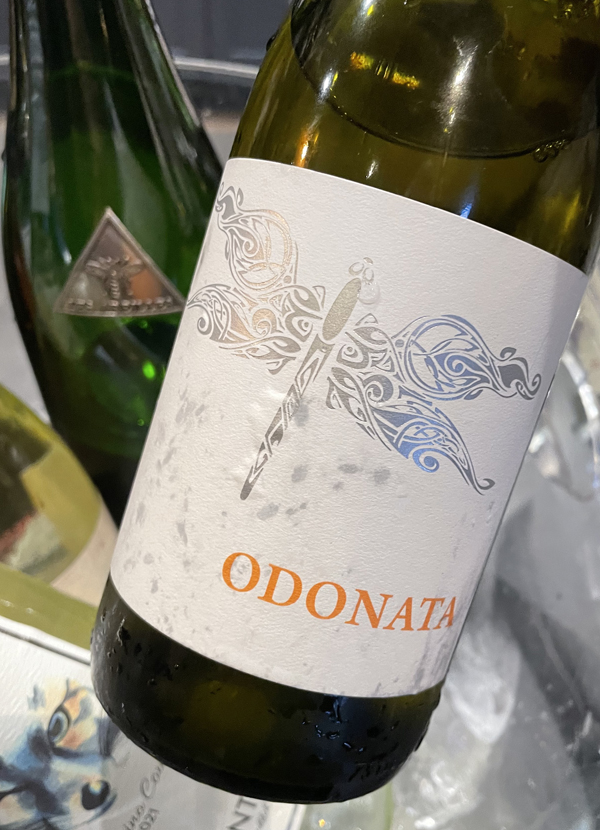
2021 Odonata, Viognier, Chiara, Estate Grown, Santa Lucia Highlands.
As long as I’ve enjoyed Odonata, I didn’t pay much attention to the Viognier, but the other night it was singing and it very much impressed me with it’s varietal purity, vitality and personality, it seriously had true Condrieu like class and charm, it shows remarkable clarity, depth of fruit and mineral tones. This 2021 has a crystalline medium bodied palate with a range of stone fruit and citrus fruits, there’s fleshy apricot, bright tangerine and lime notes that feel layered, rounded and lively, which is enhanced by the beautiful honeysuckle aromatics, salty wet stones, clove spice and a hint of creaminess on the finish. Made from vines set on sandy loams, loose stones with decomposed granite that see the coolest ocean effect with chilly breezes, this Viognier retains loads of natural acidity and the long growing season adds to the concentration and complexity. The Odonata whites typically see whole cluster pressing and native yeast fermentation(s) with aging done in mainly neutral French oak barrels with some lees maturing that allows for a pleasing mouth feel and textural quality, as seen here. Hoey’s Odonata Winery has really made a name for itself over the last few years with a tasty array of eclectic and stylish small lot bottlings, these are well crafted and authentic wines that deserve your attention.
I’ve been a fan of Dennis Hoey’s wines for awhile now and they seem to be getting better and better in recent years, especially his Cabernets, Syrahs and Sangiovese bottlings, but his whites, like this Viognier and his sparkling wines are also brilliant and delicious efforts. Hoey, who has said that only high quality grapes make high quality wines and is focused on organic and sustainable farming. Odonata with three estate vineyards, including Falcon Hill, in the Santa Cruz Mountains where Hoey grows Pinot Noir, Machado Creek near Morgan Hill in the southern Santa Clara Valley, is planted to 10 acres of Petite Syrah, Syrah, Grenache, Mourvedre and Sangiovese grapes, and his home Estate Vineyard in Santa Lucia Highlands, surrounding his home and winery where the Viognier thrives. There’s a lot to enjoy here at Odonata, some of my personal favorites are Hoey’s Hook Vineyard Syrah, the Santa Cruz Cabernet Sauvignons, the Sparkling Grenache Noir, the Brunello inspired Sangiovese and the new Malbec, which I just discovered when I had this Viognier. Odonata Wines, as mentioned a few times here, was founded in Santa Cruz back in 2005, but became a full fledged estate winery in 2014 when they moved into the old Marilyn Remark Winery property in the Santa Lucia Highlands, right on River Road, which has become one of the best places to visit on the whole SLH wine trail. I was thrilled by Odonata’s 2019s and now really excited by these 2021s, which are looking to eclipse anything produced here to date.
($32 Est.) 93 Points, grapelive
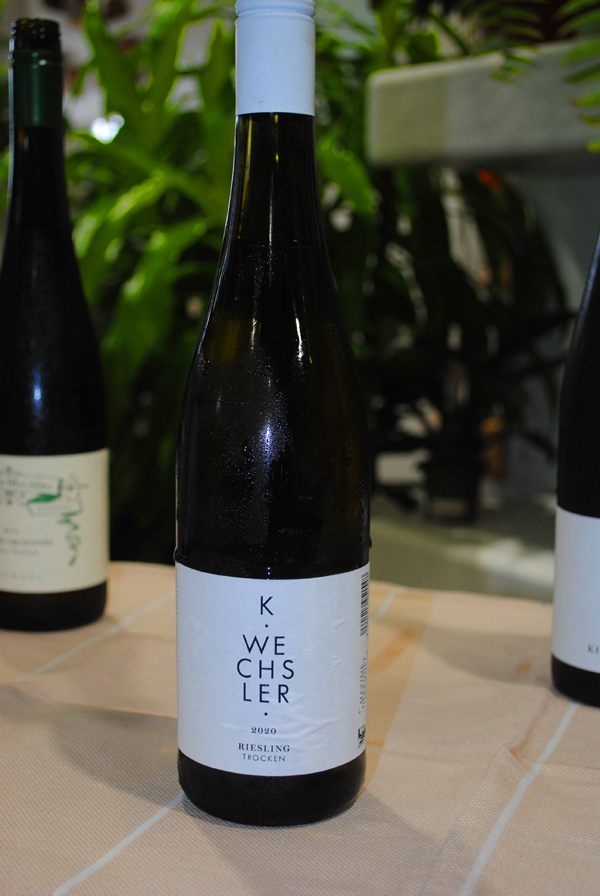
2020 Weingut Wechsler, Riesling Trocken, Rheinessen, Germany.
The Wechsler Trocken is a beautiful value priced dry Riesling with exceptional purity and energy, from a winery I had never trued before, this basic offering impressed for its distinction and quality in the glass, it provided plenty of enjoyment, refreshment and thrills with bright racy citrus, crystalline mineral tones, wet rock and subtle floral aromas. This light to medium bodied crisply detailed Riesling opens nicely and gains concentration, depth and mouth watering saline, adding tangy peach, quince and green apple fruit, as well as a touch of citron, green tea, light tropical essences and sour lime. Coming from highly regarded Rheinhessen cru sites, Wechlser’s Trocken is sourced from organic and biodynamic vines that are at good elevation that allows for this wine’s excellent intensity and tension on the palate, it drinks on par with many much more expensive Erste Lage (Premier Cru) bottlings and this vintage looks to be good for early enjoyment and has plenty of age worthy structure. I tasted this Trocken at a special trade tasting put on by Wechsler’s importer The Source, but I absolutely plan to explore these wines in the future with a full meal, where I think I will be even more excited by their full range of flavors.
The Weingut Wechlser, based in Westhofen, the same rarified area as made famous by Philippe Wittmann and Klaus-Peter Keller, is led by the youthful talent of Katharina Wechsler, who is crafting her exciting wines from highly regarded parcels in the Rheinhessen’s most legendary vineyards, including the VDP Grosse Lage Morstein and Kirchspiel crus, with this basic Trocken seeing some Kirchspiel and Benn grapes. I must say, after tasting Katharina’s 2020 Trocken and her Kirchspiel single cru bottling, I was left spellbound by her wines and look forward to following her efforts. Wechlser uses, as noted, biodynamic methods in the vineyards and employs a light touch in the cellar to allow terroir to shine through with all native yeast or sponti fermentation(s) and extended lees aging (about 9 months) without the use of much or any wood. This Trocken was 100% stainless steel fermented and aged without any stirring from vines that are set n a combination of different soils including clay marls, limestone and loess that adds to the personality of Wechlser’s wines. Katharina uses low SO2 and the wines don’t feel muted, they are expressive and rewarding, with this one being a great way to discover this producer. I believe this Trocken will be a new favorite of mine and I plan to try it with a complimentary food pairing, where I believe it will excel, especially with sushi.
($26 Est.) 92 Points, grapelive
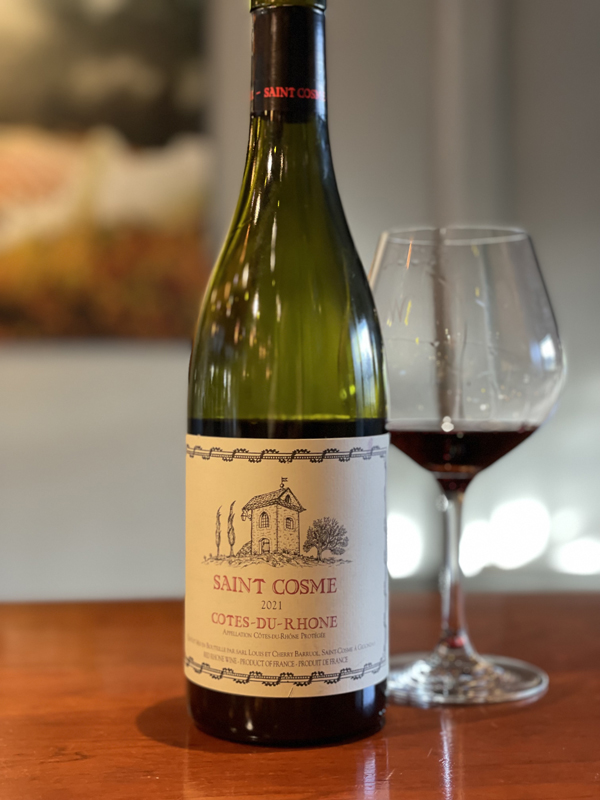
2021 Saint Cosme, Cotes du Rhone Rouge, Rhone Valley, France.
The Saint Cosme Cotes du Rhone, made from 100% Syrah, is one of my favorite wines, and when blind tasted on this new 2021 edition, I absolutely loved it, without bias or expectations, re-confirming my opinion on this beautiful dark fruited wine. This 2021 shows an extra degree of concentration and plush layering, almost making me think there was some Grenache in here, though there isn’t, with loads of boysenberry, damson plum, pomegranate and blueberry fruits that is accented by violet florals, lavender, peppery briar spice, anise, kirsch and a hint of black olive. There is an absolute purity in this deeply purple/garnet hued Rhone red that is fabulous and it is an outstanding value, this wine is as good as many wines that are three or four times the price. Usually Cotes du Rhone reds include a mix of varietals, but this one lacks for nothing, and has plenty to offer with a clean full bodied palate and excellent complexity, this baby Saint Cosme will not disappoint, I recommend buying this up by the case! The terroir here is set on mostly limestone sand, red clay and pebbles on what winemaker Louis Barruol calls Villafranchian terraces that gives this wine its personality and its stylistic charm.
Louis Barruol’s Chateau de Saint Cosme, located north to the village of Gigondas, which he is most famous for, is the oldest estate in the region being on the site of an ancient Gallo-Roman villa which dates back to 1416. It is very probable that it already had its own vineyard back then, as well as having cellars carved from the natural limestone walls, with the Barruol family acquiring it back in 1570, and who, in my opinion, have made it into one the Rhone’s greatest estates. The fabulous basic Saint Cosme Cotes du Rhone is made, as mentioned, from 100% Syrah, comes from what Barruol calls top vineyard parcels, saying he is no magician, knowing only great sites made great wines. Saint Cosme mostly sources grapes for this little beauty from plots in Vinsobres, now a full AOC, which is a special area of the southern Rhone that is sublimely suited to Syrah. This Cotes du Rhone saw a very short vatting period, in cement, a technique pioneered by Louis Barruol’s father, as he notes, in fact, in the 1970s and 1980s, typically this wine only gets about 15 days in vats! This is the allow really fresh details, fruitiness and freshness to express themselves here, as this 2021 shows nicely. This 2021 is Barruol’s 25th vintage of this wine and it is definitely one of the best I’ve had, drinking as good as it gets already!
($18 Est.) 93 Points, grapelive
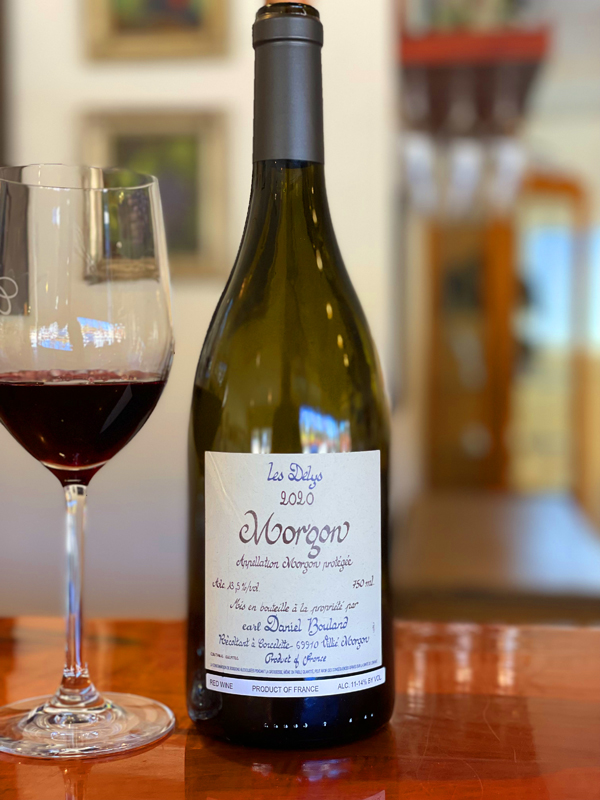
2020 Daniel Bouland, Morgon “Les Delys” Cru Beaujolais, France.
Daniel Bouland, who has emerged as one of the region’s superstars, sources his Les Delys Morgon, from vines planted back in 1926, and this 2020 is as pure as it gets and has incredible fruit concentration that fills the palate with dark fruit character and gives a heady perfume on the nose, while having plenty of acidity and savory contrast that provides a fine balance. At first expressive and Gamay juicy, this wine builds beautifully in the mouth with black cherry, strawberry, blueberry, currant and plum fruit leading the way along with mineral, spice, walnut, violet and a subtle earthy tone, all of which accents this lovely Cru Beaujolais very nicely. This dark purple/ruby hued Gamay is joyous and while plush, it delivers a taut structure that should give tons of rewards to those that have patience, this can easily age a decade or more.
My take away from Bouland’s wines, past and present, especially this one, is that terroir or (their) unique sense of place shines through, this essence most likely could not be achieved anywhere else, and his wines highlights that eternal truth, this is like drinking the land’s soul, it’s something you feel and respect with every sip. Like Lapierre and Foillard, Bouland employs the traditional natural method of winemaking in his small cellar with 100% whole cluster semi carbonic ferments, using native yeast and aging here is done in large neutral old casks to promote transparency and allow for rustic old world charm. There’s so much to like here in Bouland’s collection, but in particular this cuvée has always been a favorite, coming from those old hand trained vines set on the granite soils that influences profile here. The set of Morgon bottlings are maybe the most compelling, but Bouland’s Cote de Brouilly is also worthy of your attention too.
($35 Est.) 94 Points, grapelive
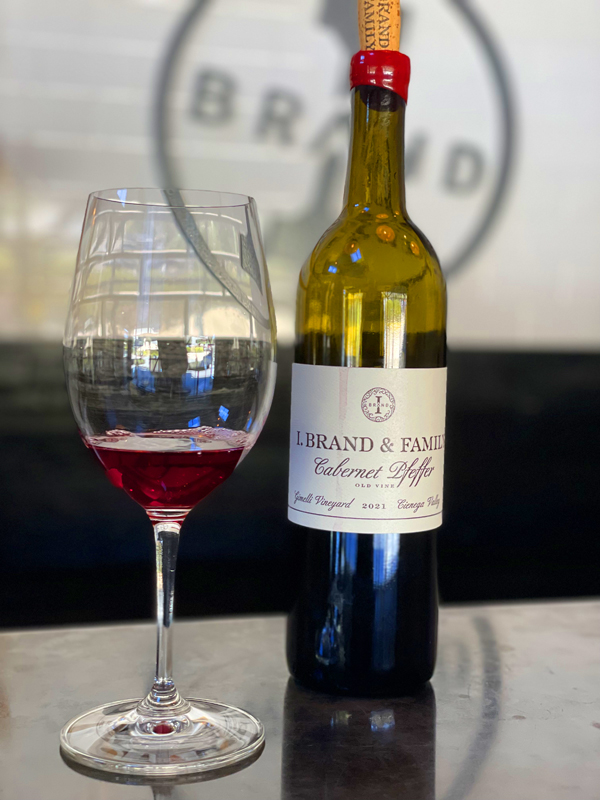
2021 I. Brand & Family Winery, Cabernet Pfeffer, Gimelli Vineyard, Cienega Valley AVA, San Benito County.
Made with gentle care and a lengthy elevage, Ian Brand’s new Cabernet Pfeffer has a very charming personality and even though it was just bottled it gets nicely expressive in the glass with a delicate array of red fruits, spice and mineral notes in an almost Pinot like weighted lighter bodied red wine. The Pfeffer grape, who’s origins remain murky, is unique and there is only around 10 or so acres in California, making it something you don’t see everyday, gives as found here layers of raspberry, plum and cherry fruits with soft tannins and subtle earthiness, tobacco leaf, sage and dried herb notes. Brand’s version sports good acidity and should fold together nicely for mid-term drinking, which I recommend a little bit of patience, though highly enjoyable and quaffable even now and it looks to be best with food. Dark ruby in the glass, this I. Brand & Family Winery 2021 Cabernet Pfeffer comes from old vines at the Gimelli Vineyard in the Cienega Valley, where it is planted alongside some ancient Zinfandel in rocky mixed loamy soils with granite and limestone where it sees warm to hot days and cool nights that have provided complexity and balance to this stylish effort. For the geeky wine enthusiast, this is going to be a must have wine, but Ian has lots of intriguing offerings about to come out and it is a great time to explore his full range of stuff, especially his Grenache and Cab Franc bottlings, as well as his single vineyard Cabernet Sauvignon(s).
The rare Cabernet Pfeffer, also known as Mourtou, found almost exclusively in San Benito County on the Central Coast, is a distinct varietal that was a late 19th-century crossing of Cabernet Sauvignon and an unknown vitis vinifera vine, sometimes thought to be Trousseau, and was or is often confused with Gros Verdot. Today Pfeffer is almost entirely found on the central coast, though a few vines exist in some heritage vineyards in the Sonoma and Napa valleys. In recent years Cabernet Pfeffer has made some headlines with some new generation winemakers exploring the grape to good effect, with Luke Nio’s Rosé of Pfeffer being a favorite, along with quality red wine and or blended examples by Ser, Jolie-Laide, Kobza all worth checking out as well. Regardless as to whether this grape was brought to the United States or bred in California, Pfeffer has a long history in the state and it is nice to see it get the attention it deserves. The name “Pfeffer” means “pepper” in German, which maybe, because of the peppery nature or grape, though it is still a mystery, but it could be that it was named after William Pfeffer, a Californian who it is believed to have brought this rare grape over to California in the 1870s. Pfeffer owned a plant nursery in the city of Saratoga in the Santa Cruz Mountains as is thought to have sold the first cuttings of Pfeffer. Ian Brand’s latest set of releases includes this first time Pfeffer along with his first old vine Chenin Blanc from the historic Massa Estate in the deep end of Carmel Valley, both of which have excellent potential and look to be fast sell outs! I was also impressed with Brand’s new label Paysan stuff with his Provence style 2022 Rosé and Sauvignon Blanc being remarkably delicious and value packed wines.
($32 Est.) 93 Points, grapelive
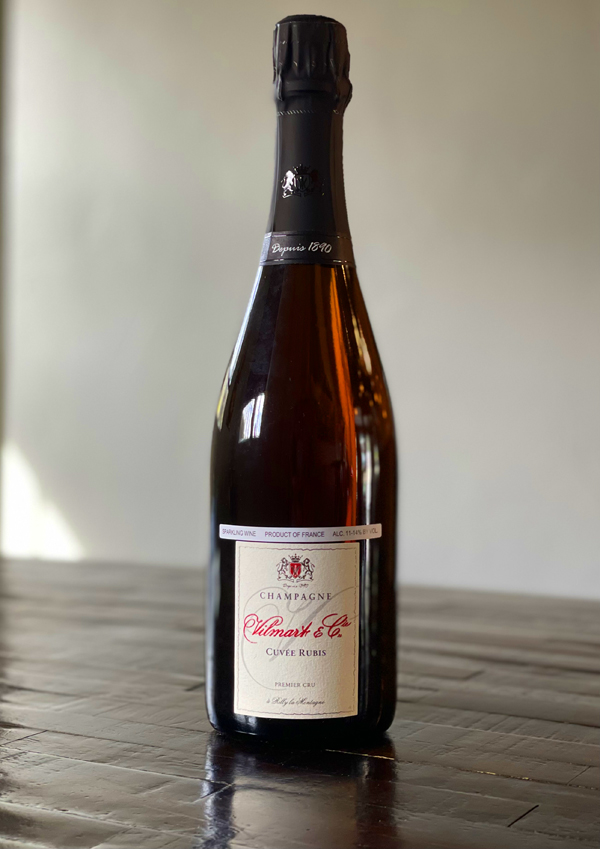
N.V. Vilmart & Cie, Cuvée Rubis, Brut Rosé, Premier Cru Champagne, à Rilly-la-Montagne France.
I’ve never been anything but blown away by Vilmart and what Laurent Champs, who is an absolute genius, produces here, and I especially love this non-vintage Cuvée Rubis Premier Cru Brut Rosé grower fizz, with this edition, disgorged in 2020, showing fantastic right now, its pure sex in the bottle! This delicately pinkish/samon Cuvée Rubis is heavenly from start to finish with small beading bubbles and a creamy elegant mousse that feels like tiny ballet dancers on the richly textured palate with smooth, but precise layers of yeasty goodness, delivering subtle cherry and strawberry notes, bread dough, light citrus, wet chalky stones and rosewater. This Champagne never puts a foot wrong and seduces completely, my only complaint is that there is never enough of this nectar in the bottle! Vilmart is on the west side of the Grand Montagne with most of their vines located in the Premier Cru area of Rilly-La-Montagne, along with a few small blocks in neighboring Villers-Allerand, all organic/biodynamic on clay and limestone soils, which adds to the concentration, mineral tones and ripe quality of fruit in these awesome Champagnes.
Grower and winemaker Laurent Champs, who is the fifth generation at Vilmart & Cie, which was founded by Desire Vilmart in 1890 as a recoltant-manipulant, uses old plantings, including 65 year old ungrafted Chardonnay and Pinot Noir vines to craft his masterpieces. These gorgeous Vilmart Champagnes are true grower producer wines and this one comes from all estate grown organic vines in the Premier Cru à Rilly-la-Montagne area. Champs ferments and ages his vintage and non-vintage bubbly in a combination of wood vessels including large foudre, demi muids and some barriques, usually without Malo-lactic to preserve intensity, tension and crisp details, while still showing off depth and luxurious richness, if you like Krug, you’ll love these distinctive Vilmart offerings. The cépage for the Vilmart Cuvée Rubis is 90% Pinot Noir and 10% Chardonnay, with about 15% vin rouge of Pinot Noir in the final blend to perfectly color this beauty and the assemblage saw some 2017, 2016 and 2015 vintages. The wines used in this Rubis saw no Malos and had an élevage 10 Months in large foudre before aging on the yeast in bottle for 30 months. This Vilmart Cuvée Rubis was as close to perfect for my celebration and drinks like a Champagne two or three times the price, making for a stunning value, I couldn’t ask for more and I highly recommend chasing this and all of Champs’ Vilmart fine efforts down.
($60 Est.) 94 Points, grapelive
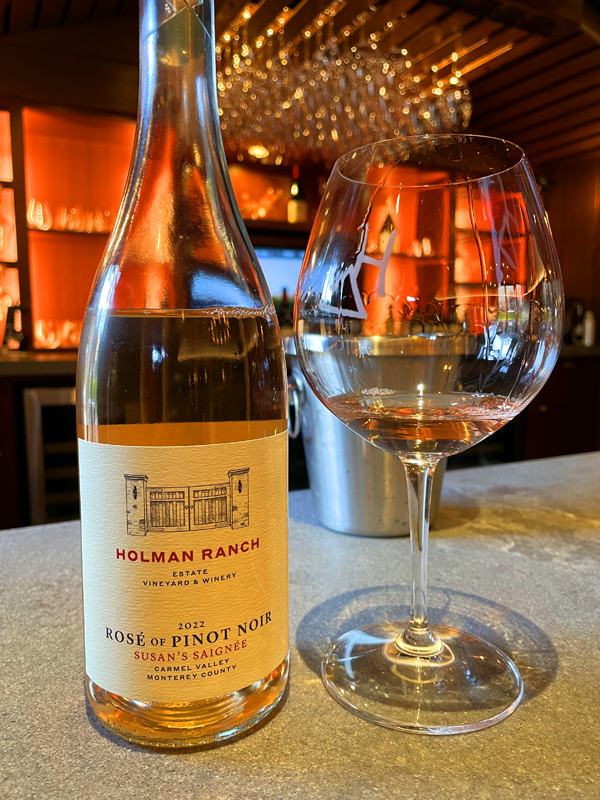
2022 Holman Ranch Estate, Rosé of Pinot Noir “Susan’s Saignée” Carmel Valley AVA, Monterey County.
The soon to be released 2022 Rosé of Pinot Noir from Carmel Valley’s Holman Ranch Estate Vineyard and Winery, made by the father and son team of Greg and Chris Vita, is as it was last year a fine effort and refreshingly delicious with a burst of citrus, peach and sour cherry fruit, mineral, saline, wet stone, rosewater and tangy herb notes. More in a Provence crisply dry style than expected, much to my pleasure and with no noticeable wood or Malo influences, making it vibrant and delightful on the expressive, but leaner and more taut on the palate, this is going to be fabulous as an early Spring treat and will be flexible with food options, as well as being excellent on its own. Just a touch of jolly rancher watermelon comes through as it warms in the glass, which will honestly not take away from the pleasure here and there will be no patience required, this 2022 is ready to go already, the only waiting needed with this Rosé will be on the winery release date. The historic Holman Ranch property was originally founded back in 1928, though the grape vines, mainly a selection of Pinot Noir parcels, that are named after family members, came much later, with wine production beginning in earnest with the 2011 and 2012 vintages, with the 2018 being a breakthrough for this lesser known winery.
As mentioned, in recent years Holman Ranch has turned on the charm and wines are gaining in personality and distinction, especially the three main Pinot Noirs here and I highly recommend grabbing their 2018 versions, all of which are incredible, the best yet from this property. I had a chance to sample some upcoming wines, including this fun and tasty Rosé, as well as a preview of their 2019 Pinots, one that had a high percentage of 828 clone, which I really dug and am convinced will be almost the equal of the 2018 collection. The Holman Rosé of Pinot Noir, known as the Susan’s Saignée, is crafted using some ripe juice bled off their Pinot Noir sourced from their picturesque Carmel Valley vines using mainly clones 777 and Pommard. It retains good acidity, popping up with some ruby grapefruit, and has good tension between the zesty nature and lush fruit elements. Greg and Chris Vita, who also consult for a number of Carmel Valley producers, use 100% estate grapes here at Holman Ranch and employ traditional and sustainable methods in the vineyard and in the cellar, with this wine seeing 100% stainless steel, a cool temperature fermentation and a short aging period which lasted just three months before bottling this Rosé. If you’ve not discovered Holman Ranch yet, now is a great time to do so! Not seen much in the wild, these wines are almost exclusively direct to the consumer offerings, there is also a small amounts of Brut sparkling wines and Chardonnay produced here, even tough it is the small lot Pinot Noir(s) that is the main focus.
($35 Est.) 91 Points, grapelive
Grapelive.com – February 2023
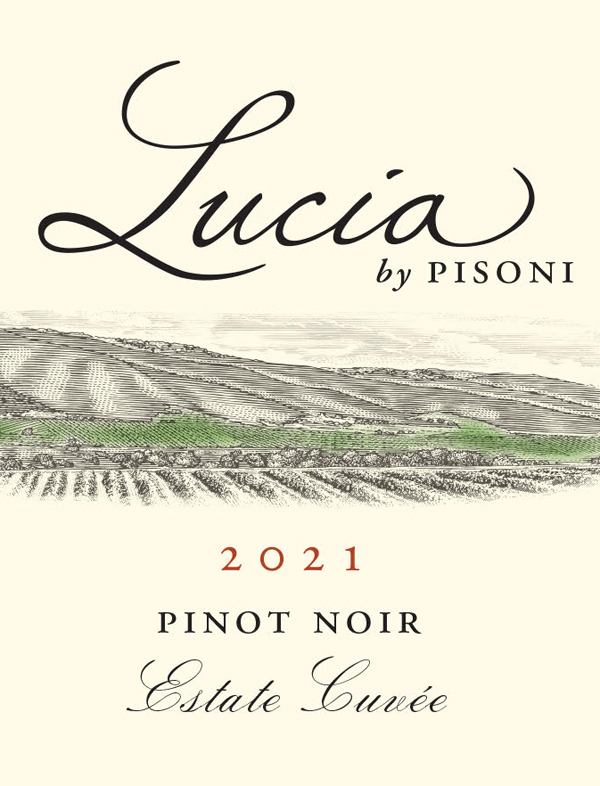
2021 Lucia by Pisoni, Pinot Noir, Estate Cuvée, Santa Lucia Highlands.
The latest release of Lucia Pinot, coming from the Pisoni, Garys’, and Soberanes estate vineyards, is the 2021 appellation-based Santa Lucia Highlands Estate Cuvée, which was formerly known as the SLH bottling, and it perfectly captures the vintage and place with rich stony layers of dark fruits, spice, energy and length, making it an absolutely delicious, especially satisfying while admiring the beautiful Big Sur coast from Nepenthe. Jeff Pisoni’s new Estate Cuvée reveals black cherry, bramble berry, plum and Mission fig fruits along with a mix of spices, subtle oak toastiness, sweet florals and hint of mocha. This lively and youthful Pinot just gets better and more vivid in the glass opening up to show off rose petal aromatics, burnt orange, dried herb and cinnamon in a full bodied expression of Pinot that feels both elegant and seamless on the palate with a burst of natural acidity, which sets this vintage apart. This is push and easy to love Pinot, but there is also a fine structure here and I can imagine it aging exceptionally well and I highly recommend keeping your eyes peeled for the single vineyard offerings, as they should be monumental wines, maybe the best yet from this legendary winery.
As noted here and by the winery, Lucia wines are handcrafted offerings, made by the talented Jeff Pisoni in his gravity flow cellar in the Santa Rosa area, he says he employs a gentle maceration and uses tried and true winemaking techniques. The Estate Cuvée uses all hand-picked and sorted grapes, mostly de-stemmed with about 15% whole cluster in this cool vintage. Small lots are fermented exclusively with native yeast and then matured for just under a year in carefully selected French oak barrels, with about 50% new wood. In 2021 the final blend was close to 60% Pisoni, 23% Garys’ and 17% Soberanes, with quite a lot of the fabled Pisoni clone, all of which adds to the deep saturated color, complexity and depth found here. As mentioned above, this is a sublime vintage for the region and in particular the Pisoni farmed vineyards, showcasing the terroir and climate of the sandy loamy soils and of the cold breezy Ocean influenced Santa Lucia Highlands bench, this is a year not too miss here. After the total devastation of the 2020 fire vintage, these 2021s are an awesome comeback set of Pinots, with this Lucia label leading the way. The pleasure in the bottle is well worth the price here and I highly recommend chasing some down, and or enjoying by the glass at Big Sur’s Nepenthe Restaurant, where they have it always by the glass!
($55 Est.) 94 Points, grapelive
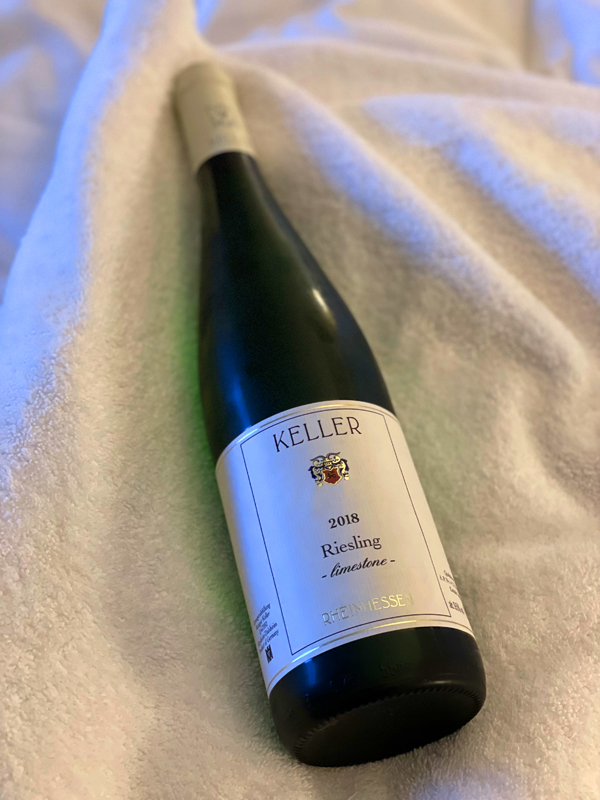
2018 Weingut Keller, Riesling Trocken, Limestone, Rheinhessen, Germany.
Keller’s chalky and mineral driven “Limestone” Riesling is crisply detailed and electric on the dry and light weight palate, it perfectly captures the terroir and is an exceptional value from one of Germany’s most acclaimed winemakers with brisk citrus and stone fruit leading the way, along with wet rock, verbena, quince and very subtle florals. This wine performed brilliant on an evening recently, drinking beyond expectations, perfect as an aperitif and it was fabulous with a wide range of foods from the starter course to main dishes that included a steak! Bright and zippy with tangy apricot, kumquat and green apple fruits this Keller Limestone charmed throughout the evening and was beautifully cleansing and delicious.
I have become a huge fan of Keller over the years and while it is hard to find his cru offerings, his basic bottlings are more available, with this one being a notable favorite of mine. As noted before, Klaus Peter Keller and Philippe Wittmann have inspired an entire generation of young winemakers and have helped lead a Renaissance in the Rheinhessen, a region that includes some historic and spectacular vineyards and wines. This includes awesome Grand Cru sites, like Kirchspiel, Hubacker, Morstein and Abtserde, as well as the workman like vineyards, such as of Hipping, where these two superstars have made some of Germany’s most sought after wines. It should also be noted that Keller’s G-Max Grosses Gewachs bottling is one of the world’s most expensive and coveted white wines! Keller makes a full collection of wines, not just Riesling with some tasty Scheurebes, Rieslaners and Sylvaners as well, these are wines I highly recommend chasing down, especially this one!
($35 Est.) 93 Points, grapelive

2017 Domaine Philippe Jouan, Coteaux Bourguignons “Cuvée Thomas” Pinot Noir, Vieilles Vignes, Red Burgundy, France.
I had high expectations for this one and it lived up to the hype, maybe even surpassing my hopes, with a classic Cote de Nuits profile and a silky smooth palate that delivered beautiful red fruits, pretty floral aromatics, delicate earthiness and an array of spice and mineral tones in a pure medium weight wine. There’s a expressive layering of black cherry, raspberry, currant and strawberry fruits, hints pf rose oil, truffle, baking spices, subtle oak influence and candied orange all of which feels seamless and complete, this exactly what you’d want from a youthful Burgundy. Philippe Jouan has really impressed me with his 2017s and I am excited to see what the 2020s are like, hopefully I’ll be able to track some bottles down. This is a winery, based in Morey-Saint-Denis and run by Phillipe Jouan, a fifth generation winemaker, to follow, and this Cuvée Thomas is a great way to start.
The talented Philippe Jouan, who, as mentioned here in prior reviews, took over from his father Henri, has been in charge of this small high quality domaine since 2004 and has turned this some what under the radar winery into something of an enthusiasts cult label. The techniques in the cellar, from what I understand, are little changed since the domaine started, with Philippe using 100% de-stemmed (all sustainably grown) grapes, cool fermentation(s) and employing just a minimal amount of new wood across his range of wines. The Jouan wines are not as inexpensive as they once were, with prices now rising 10 to 20% with each of the last few vintages releases, but still are remarkable values for the price. Mainly it is the problem of having less wine available due to tighter yields in the region and that there is a much bigger demand for Jouan now. I had been told that Jouan’s Passetoutgrain (Pinot Noir/Gamay) and this Coteaux Bourguignons (100% Pinot Noir) were the screaming deals, and as mentioned, I was not disappointed in any way here.
($38 Est.) 92 Points, grapelive
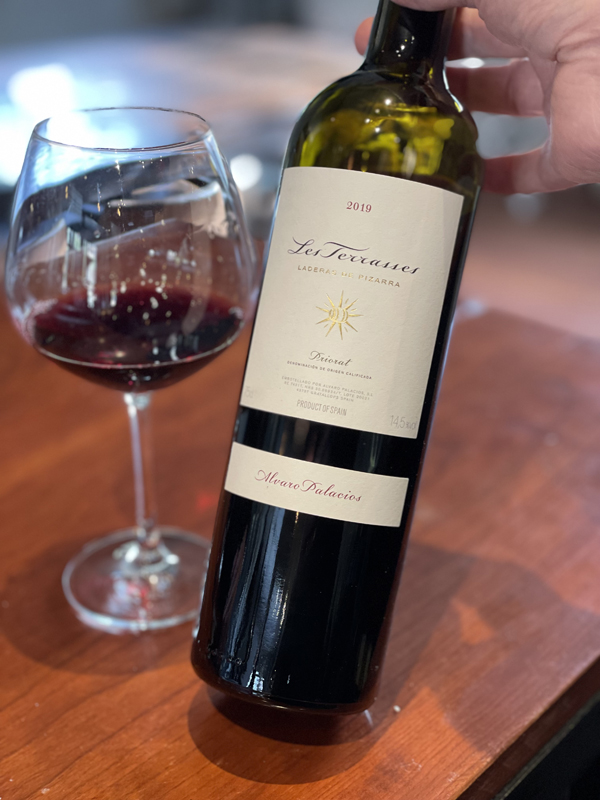
2019 Alvaro Palacios, Les Terrasses, Ladera de Pizarra, Priorat DO, Spain.
Alvaro Palacios is one off the Priorat region’s greatest producers and this Les Terrasses, made from old vine Garnacha and Cariñena, is one of the most delicious and value packed bottlings you can find, as this recently released 2019 proves. Dark purple in the glass and nicely aromatic the Les Terrasses shows off its high percentage of Grenache with rich and expressive layers of dense red berry, plum, strawberry and candied cherry fruits that are accented by hints of smoke, graphite, anise, creme de cassis, dried herbs and sandalwood. This vintage is lush and the tannins are sweet and supple, making this wine smooth in mouth feel and easy to love.
The Les Terrasses Priorat red comes from 80 plots of vines in eight different small villages in the Priorat region of Cataluna, and for this 2019 vintage Alvaro Palacios used 82% Garnacha, 17% Cariñena and 1% of native white grapes. For the vinification here, Palacios used 100% de-stemmed and gently crushed grapes and he fermented them in a combination of concrete and oak vats with indigenous yeasts. After primary fermentation ended the wine was racked to barrel and then it was raised in French oak barrels for about 12 months. Coming from stony llicorella soils that are Paleozoic bedrock with red and black slate primarily, there is also trace amounts of mica and quartzite that all add to the complexity of this wine and the arid conditions give small yields as well as the concentration, contributing to the hedonism of the region’s’ wines.
($42 Est.) 93 Points, grapelive
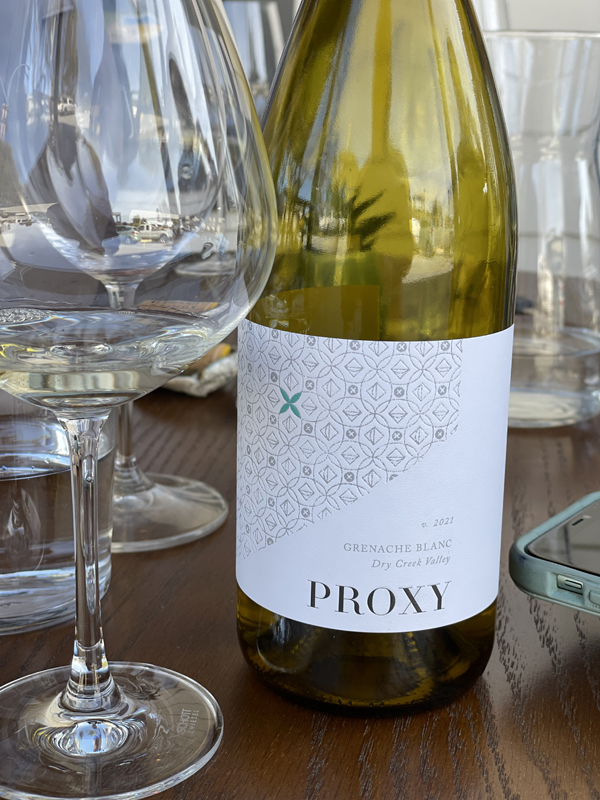
2021 Proxy Wines, Grenache Blanc, Dry Creek Valley, Sonoma County.
Highlighting the vintage’s cool nature, the Proxy 2021 Grenache Blanc shows a dynamic freshness with vibrant stone fruit, white blossoms, racy citrus and tart melon in a lush medium bodied wine. Proxy is a new small lot winery led by Molly Lippitt, an emerging talent based in Sonoma, who I got to meet with briefly recently and who shared this wine, which I was able to review here. This is a very tidy effort and really captures the varietal in transparent purity, it shows nice depth, ripe flavors, with some spice and tropical notes and good natural acidity that balances this white delightfully. The pale gold Proxy Grenache Blanc was sourced from the Mounts Family Vineyard which is located in the eastern edge of Dry Creek set on rocky soils. Lippitt says her Grenache Blanc vines are tucked in low-lying corner of the vineyard, adding that this block is perfectly situated to enjoy both the warm days of the Dry Creek Valley and the cooling influences of the nearby Russian River, all of which has led to a quality effort here, especially in this cooler year.
Proxy’s winemaker Molly Lippitt, who day job is head winemaker for Naps Valley’s Volker Eisele, has worked the better part of fifteen years in making wines and for some very notable estates, like one of my favorites Paradigm, who’s Cabernet Sauvignon is one of the valley’s best values for top end Cab. Molly has worked alongside some huge names in the business, such as Heidi Barrett, Philipe Melka, Julien Fayard, Mike Hirby, and Scott Rich, helping her gain experience and mentoring her, which is pretty awesome for a young winemaker. For herself, Lippitt focuses on small production single vineyard wines for her Proxy label, and as she says, she’ll be crafting varietals that she enjoys drinking on her days off, like her Dry Creek Valley Grenache Blanc. The Mounts having been farming this vineyard for the best part of 70 years and Lippitt enjoys the fact that this family run vineyard has long history here and really know their terroir and take pride in their hard work. Found in France and Spain mainly, Grenache Blanc is most notable a major player in the Châteauneuf-du-Pape Blanc and Côtes du Rhône whites, but it has also found a happy home here in California, as this wine proves!
($26 Est.) 92 Points, grapelive
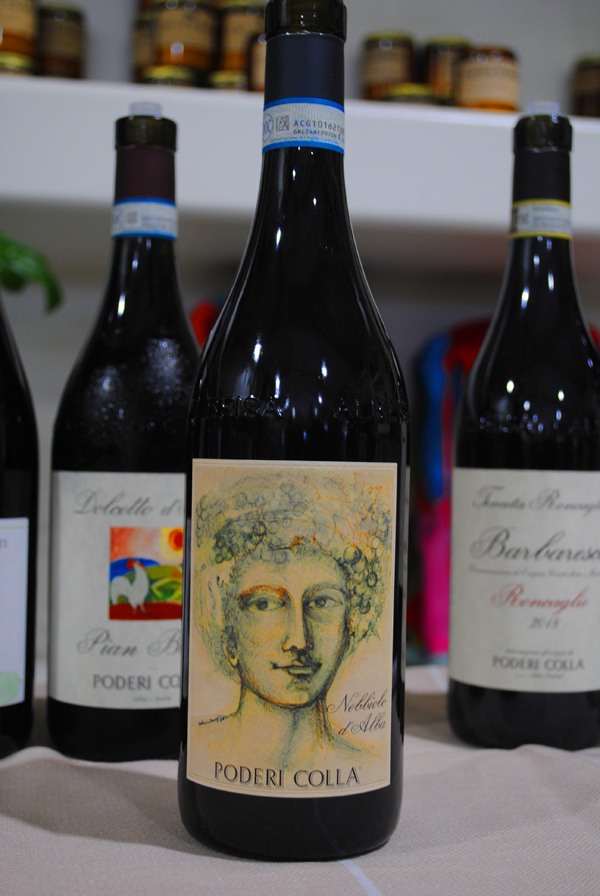
2020 Poderi Colla, Nebbiolo d’Alba DOC, Piedmonte, Italy.
The Poderi Colla label has really taken off and the latest set of wines, including this fabulously delicious and nicely structured Nebbiolo d’Alba, which I tasted recently were all beautiful and studied efforts that show classic varietal profiles and terroir distinct nuances. I loved each of them and plan to showcase more of them soon, but this 2018 Nebbiolo d’Alba, especially for the price, stands out with a quality level that is really not far off much more expensive Barbaresco and or Barolo offerings, but in a package that can be enjoyed in its youth, this is a vintage that lends itself to early pleasure, as this one shows with its ripe supple tannins and pretty fruit density. This dark garnet and amber/brick edged wine is feline like, satiny muscled, and energetic giving the impression of serious concentration, though alive with layers of red berries, damson plums, currants and blood oranges along with hoisin sauce, tar, mushroom, anise and dried flowers. This year’s Poderi Colla Nebbiolo is a big step up since I last tried this bottling and it looks to be a wine that can aged a few years as well, this one and Colla’s Pian Balbo Dolcetto are wines that I highly recommend for savvy bargain hunters and they are very confident food friendly reds that are full of old world charm, natural acidity and display a delicate earthy or sultry allure that will keep your attention long after the last sip.
The traditional and sustainable Poderi Colla was established by Beppe Colla and family in 1993, after they sold their famous Prunotto winery to the Antinori empire, who wanted to move beyond their Tuscan roots and gain a foothold in Piedmonte. The Poderi Colla estate has three exceptional vineyards that covers about 70 acres, these include the Cascina Drago, where this wine was sourced, along with the Tenuta Dardi Le Rase in Barolo and the Tenuta Roncaglie in Barbaresco. Tino Colla took over the reins here when Beppe passed away in 2019 and this new generation is stepping up and taking this winery to even greater heights, but have continued to hold true to their old school and historic values. The winemaking for Poderi Colla’s Nebbiolo d’Alba is done with mainly traditional techniques, but with one significant twist, which is that it saw a submerged cap maceration and primary fermentation which lasted between 12 and 15 days. The grapes, 100% de-Stemmed, came from upper hillside vines that are set on calcareous limestone and clay soils with lots sand in Colla’s Drago estate, as mentioned above, near San Rocco Seno d’Elvio, close to the Barbaresco zone and not far from Gaja’s legendary crus. After fermentation in stainless steel the wine is gently pressed and racked to old large Slavonian oak Botti where it was aged for between 12 to 18 months and then bottled unfiltered, which allows for clarity of form, freshness and poise in the glass. In the cellar, Poderi Colla treats this Nebbiolo the same way as they do their Bussia Barolo and Roncaglie Barbaresco, and this 2020 is very serious stuff indeed.
($32 Est.) 93 Points, grapelive
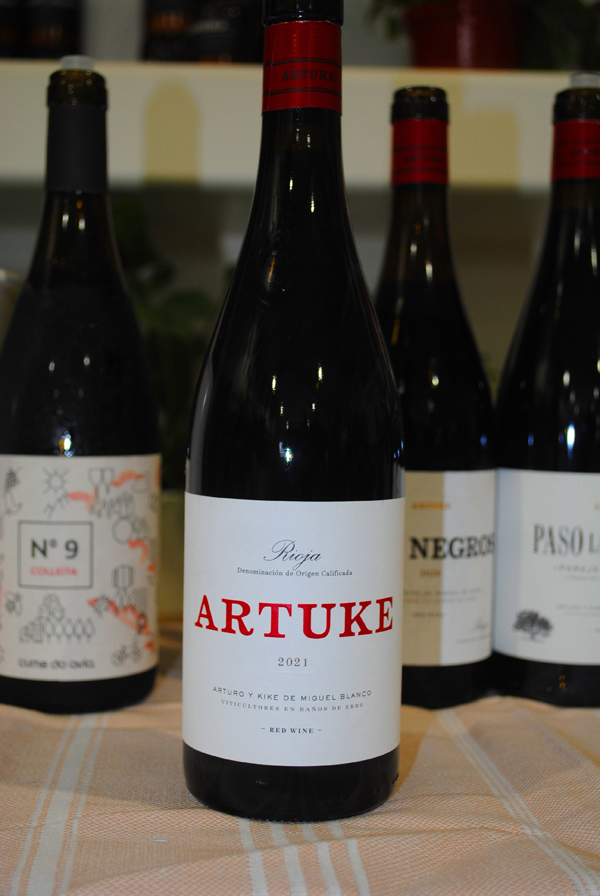
2021 Artuke, Rioja Tinto “Artuke” Spain.
Bright, juicy and expressive, the 95% Tempranillo and 5% Viura, a white Rioja grape, Artuke Tinto is 100% whole cluster, full stem inclusion and carbonic macerated, making it kind of like a Cru Beaujolais in the glass with crushed raspberry, black cherry, plum and Jolly Rancher watermelon fruits along with spring florals, wild herbs, anise and hint of chalky stoniness. This wine which was sourced from all organic vines was closed stainless steel tank fermented using the whole bunches of Tempranillo and Viura, after which it was pressed to a combination of neutral French oak barrels and larger casks for one year, allowing this fresh red Rioja to mature nicely and provide seamless textural quality. This was the first time having these Artuke wines and this one, dark ruby in the glass, especially caught my attention for the style, which is not too common in Rioja, though it is a throwback to the region’s past and is very pleasing for youthful drinking. This highly quaffable dry and medium bodied red is smooth and clean, making it great with no pretense meals, picnics and or tapas.
The Artuke Rioja wines come from calcareous sandstone soils with a combination of sand and clay in the higher elevation areas of this famous region that see some cool night time temperatures to go with an arid continental climate all of which contributes to the sublime balance found in these wines. Artuke’s winemaker Arturo Miguel is building a good reputation for his wines and is part of new generation of young Spanish vignerons in Rioja, the country’s most historic and best known region, that are changing things up here and focusing on individual terroirs rather than the Reserva and Gran Reserva Rioja of the past. Miguel is the second generation of his family to grow and bottle their own label wines since the end of the Franco dictatorship and he has pushed for all organic farming, as well as focusing on his four specific vineyard wines, which are the Pies Negros, Finca de los Locos, La Condenada and Paso las Mañas. There a lot like in Arturo’s lineup of wines and I look forward to following this label, this was a strong showing of offerings, with this one being a lovely and easy value.
($20 Est.) 91 Points, grapelive
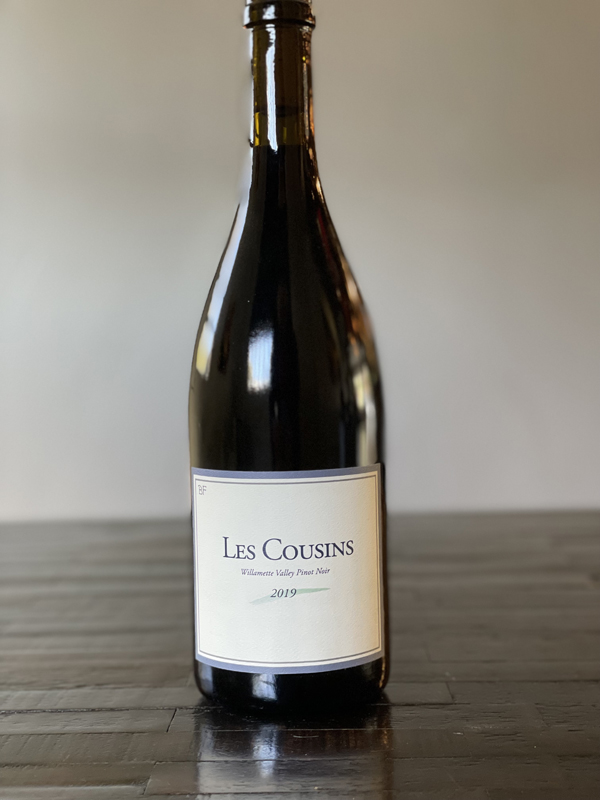
2019 Beaux Freres, Pinot Noir “Les Cousins” Willamette Valley, Oregon.
The Les Cousins Pinot by Oregon’s legendary Beaux Freres is an ultra small production bargain, with just 50 cases made in this vintage, and while 2019 was a difficult year, it is a lovely wine with dark berry and black cherry fruit, heady aromatics, mineral notes and silky texture along with spice and subtle toasty/smoky oak tones. I’ve been a fan of Beaux Freres for ages and have even made a pilgrimage to winery as ways back, an experience that provided insight and joy to this wine traveler, so any new bottles from them is a treat for me, with this budget priced Les Cousins being a rewarding go to wine. Beaux Freres’ story begins in the 1980s when Mike Etzel visited the Willamette Valley after getting excited about what he was hearing about Oregon Pinot Noir and discovered an ex pig farm in the Ribbon Ridge district, set on marine sediment soils and a picturesque hillside setting, that caught his imagination and would later become one of America’s greatest vineyards and wineries. Now the new generation of Etzels are running the show here with Mike the younger now making the wines and taking his dad’s estate to the next level after taking over in 2016, but carrying on with the traditions that took this label to the pinnacle of new world Pinot Noir. The smooth and generous Les Cousins, chosen from eclectic barrels, just 2 in 2019, in the cellar has pure Pinot fruit and can be enjoyed young, best to be paired with food to enhance the depth and delicate earthy complexity.
Beaux Freres, founded by Mike Etzel back in 1986, though their first bottling was released in 1991, is one of Oregon’s most admired wineries that is focused mainly on terroir driven Pinot Noirs made in traditional Burgundian methods and, like Brick House Vineyard just down the road here in Ribbon Ridge, is committed to following biodynamic principles in the vines and in the cellar. The fermentation is allowed to occur spontaneously, relying on “wild” indigenous yeast, and as the winery notes, the must is tended to the old-fashioned way with punch downs and pump overs by hand throughout the day and night in small lots with lengthy maceration(s) before being pressed to barrel. Every vintage dictates the oak regime here at Beaux Freres and the wines see a percentage of new oak depending on the strength and concentration of the year with most of the Pinots getting a good dose of neutral wood and get 30% to 50% new in the best selections. The wines resting in barrel see no racking and Beaux Freres believes in reductive winemaking throughout the process to save freshness and purity of aromatics in their beautiful Pinots which typically mature in the barriques 12 months with secondary fermentation happening naturally. Beaux Freres says the aging on lees in their cold cellar with moving the wine acts as a natural preservative and gives them the ability to use far less sulphur (sulfites) in the wines, which they thinks adds to terroir nuances, quality and vintage character of their bottlings, such as this one. While not in the league of the top estate offerings here at Beaux Freres, this Les Cousins provides a very peasant tease.
($36 Est.) 90 Points, grapelive
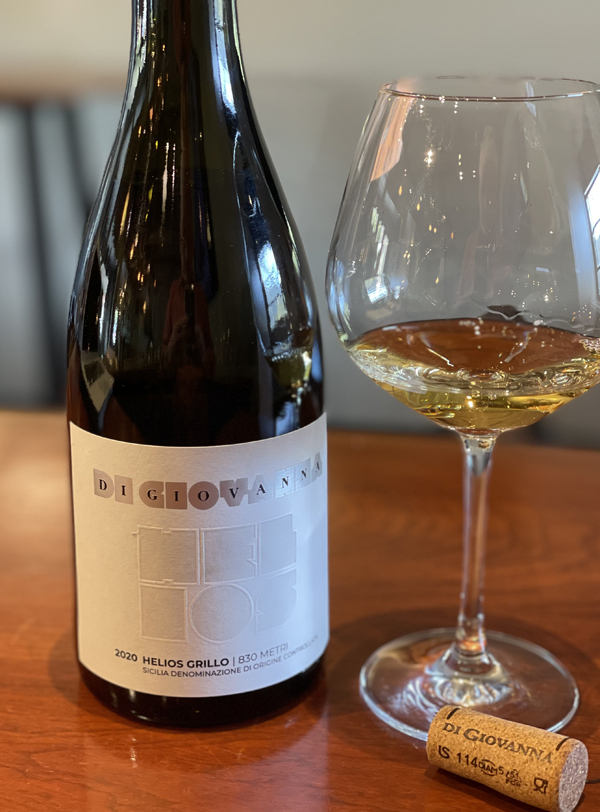
2020 Di Giovanna, Helios Grillo, Sicilia DOC Bianco, Sicily, Italy.
Grown not on volcanic, but instead on limestone soils, the mineral driven and aromatic golden colored Helios Grillo is a light to medium bodied white that captures its high elevation terroir in the glass with crisp green apple, lemon/lime, tart quince and kumquat fruits, wet chalky stones, saline, wild herbs and a phenolic, almost tannic dry finish, refreshing but firm in structure. Grillo, thought of as an indigenous or native varietal in Sicily has an unclear background, but has been getting the attention it deserves as a solo varietal and as a blender, it can even be found in the amphora raised skin macerated COS Pithos white by Giusto Occhipinti and in his niece’s wines, with Arianna Occhipinti doing her Tami white with 100% Grillo and adding a little of it with Zibibbo for her 68 Bianco, all showing the range of this grape. Grillo, thought to be a crossing of Catarratto and Moscato di Alessandria (called Zibibbo in Sicily) grapes, was once used exclusively in Marsala production, but has since started to gain traction as an alternative white wine throughout the southern, non volcanic zones of Sicily and along with Carricante, which enjoys the volcanic soils, have become highly desirable and make for very stylish if not brilliant wines. Interestingly, before DNA mapping, Grillo, which is also known as Riddu and Rossese bianco, is a white grape variety that can withstand high temperatures and though Its origins are uncertain, but it may have been introduced into the island of Sicily from Apulia and was documented as being planted in the province of Trapani by 1897. Today it is grown throughout Sicily where it has achieved maybe its best and most successful results and it is also in the Aeolian Islands, as well as growing around the commune of Riomaggiore in the province of La Spezia in Liguria, where Grillo is called Rossese bianco. As Di Giovanna’s 2020 Helios Grillo opens and warms it takes on a more creamy feel and picks up hints of white flowers and Summer melon, as well as a fine bitter peach pit element, it’s a serious version of the grape and best with food, with swordfish steaks coming to mind as a nice pairing for it.
Based in Agrigento, the Di Giovanna winery is one of Sicily’s oldest family estates with five generations making wine and exceptional olive oil here with vineyards set at elevation in the Monte Genuardo mountain range, an uplifting of marine sediments. The Di Giovanna’s property and wine cellar have been certified organic since 1997 and they proudly have been leaders in sustainability on this beautiful and diverse Mediterranean island which has both European and African climate influences. The winery also notes that they five family vineyards that are situated in the small DOC’s of Contessa Entellina and Sambuca di Sicilia, where this wine comes from, but it should be noted that Di Giovanna is most known for their Nero d’Avola reds, in particular the Helios Nero d’Avola. The Helios Grillo is the flagship white wine of the Di Giovanna family, it is sourced exclusively from a high mountainside single vineyard that sits at just over 830 meters (2723 FT) above sea level in the Fiuminello area of the Sabuca di Silicia zone. The conditions here are perfect to craft aromatic and zesty whites, like the Helios Grillo captures in the bottle. With a limited production of only 3000 bottles per vintage, this is a beautiful rarity that is a great alternative to many generic offerings that litter this price point. Additionally, as the winery notes, this wine is certified organic and vegan-friendly! Siblings Gunther and Klaus Di Giovanna have embraced organic farming many years ago, as have many of Sicilia DOC wineries, looking to made soulful and authentic wines and even the appellation or DOC authorities here actively support sustainable practices and (it) is playing a crucial role in organic wine production on the island. The Di Giovanna Grillo is made with 100% Grillo and is soft and slowly whole cluster pressed off the skins for 8 hours and then fermented mainly in stainless steel tank, but with about 10% seeing French oak fermentation and aging to add a bit of richness and roundness. The wine is rested on the fine lees for close to 9 months, both in the stainless tank and the wood Tonneaux, which adds to the mouth feel and complexity in this Helios Grillo and allows for this wine’s cuisine flexibility, though of course it goes best with fresh sea foods.
($25 Est.) 92 Points, grapelive
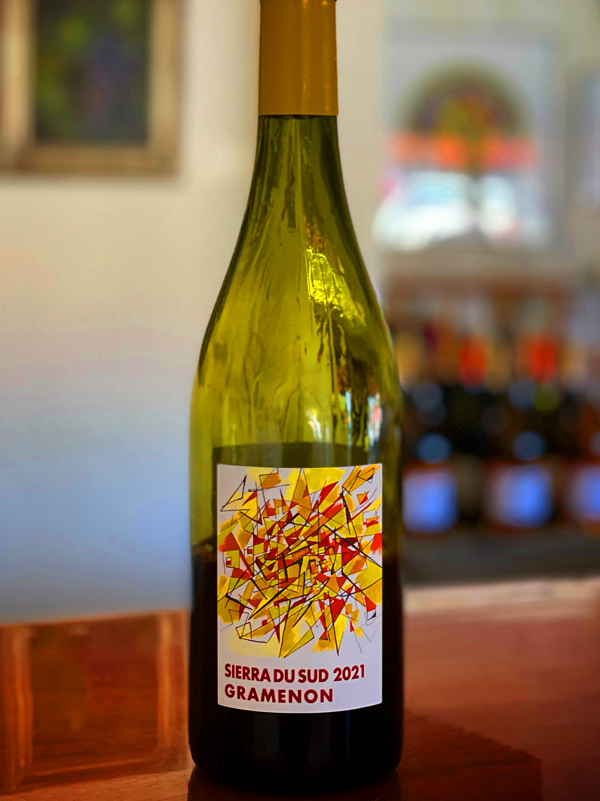
2021 Domaine Gramenon, Sierra du Sud, Cotes du Rhone Red, France.
I’ve always loved this bottling by Domaine Gramenon, the Sierra du Sud never disappoints with its distinctive pure Syrah profile and sense of place and this 2021 vintage has depth, balance and poise that makes it feel like a wine that should cost twice or three times the price with dark vine picked berries, spice, earth and sweet spring flowers all coming alive on the full bodied palate. There’s a vibrancy and tension that makes this all biodynamic Sierra du Sud purr with a delicious play between fruit density and savory tones with a lingering finish that has feral elements and satisfying creme de cassis, and while not quite at the level of a Cote Rotie, this is beautiful and plenty of thrill to it with boysenberry, violets, camphor, damson plum, minty herbs, anise and subtle meatiness. It is hard to call the Domaine Gramenon wines simply Cotes-du-Rhones, as I’ve said a few times before here, it just doesn’t fit, these, especially the Sierra du Sud, are iconic efforts. Maybe it is the distinct location, or the biodynamic farming that give these wines there own character, but regardless, these hand-crafted bottlings are loaded with fruit, intensity and depth that goes way beyond their merger classification, and it particularly is in evidence here with the Sierra du Sud from Gramenon. The vines here for the 100% Syrah Sierra du Sud are close to 35 years old and set on clay, limestone, gravel, galets roulés (stones) and sandy soils with a slightly cooler climate that suits the Syrah and promotes its deep flavors as found in this wine.
The Domaine Gramenon, imported by Kermit Lynch, as mentioned before made its first vintage in 1990 by the late Philippe Laurent, does a vast array of unique bottlings, most are focused around their main grape Grenache, but they also do a couple of single varietal Syrah(s) with this Sierra du Sud being one. This wine is labeled as a Cotes du Rhone, similar to what Chateau de Saint Cosme does, the famous Gigondas producer that has vineyard holdings in Vinsobres too, and who’s basic Cotes du Rhone is also 100% Syrah. The winemaking at Gramenon is very old school and the wines are more made in the vineyard, rather than the rustic cellar with a minimalist approach and with low SO2 additions, in some cases without any sulfur being added at all, even in their most prized bottlings. The Sierra du Sud was fermented with partial whole cluster and some stem inclusion with native yeasts in concrete vat with a gentle 10 to 12 day maceration before being aged in a combination of tank (cement) and old barriques for just under a year, usually about seven months. This wine, like all the wines at Gramenon was bottled unfined and unfiltered, to preserve its true personality and charm. Philippe Laurent, who was sadly killed in a car accident, has been survived by his wife Michèle Aubèry-Laurent who has done a brilliant job of lifting this small organic and natural winery up, that has gained even more notoriety in recent years with Michele’s talented son Maxime François Laurent making the wines here. The Domaine Gramenon, based in the northern zone of the southern Rhone near Vinsobres, which is proving to be an exciting hot spot for Syrah, and compelling Grenache too, is leading the way here and I highly recommend searching these incredible wines out!
($41 Est.) 95 Points, grapelive
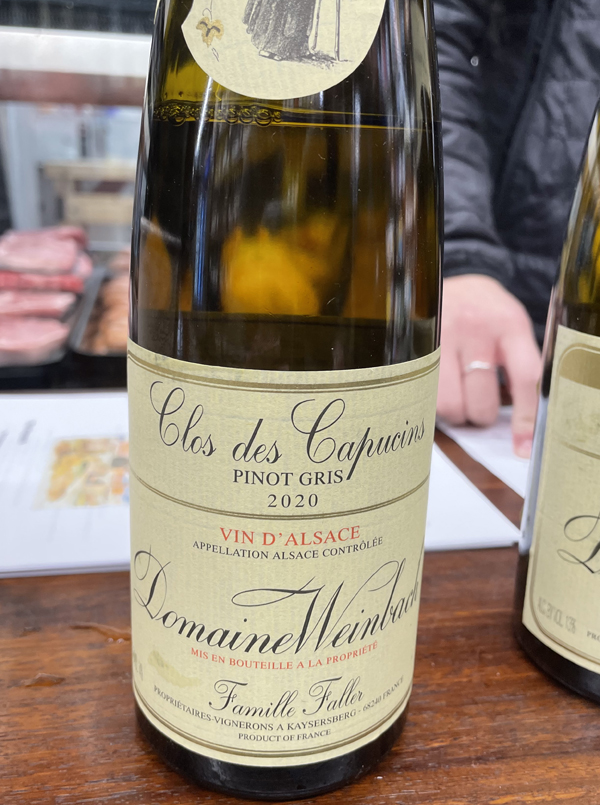
2020 Domaine Weinbach, Pinot Gris, Clos des Capucins, Vin d’Alsace, France.
The 2020 Clos des Capucins by Domaine Weinbach is intense, dry, complex and fully the equal of the estate’s Riesling with concentration, mineral tones and energy showing crisp green apple, a range of citrus and tangy tart quince fruits along with saline, wet stones, spice, a hint of honeycomb and loamy earth. Medium bodied the Clos des Capucins Pinot Gris has a very engaging tension, depth of flavors and vitality that make it very worthy example of the grape and region with enough stuffing to age too, Weinbach’s quality throughout the range is, as always, impressive and while sometimes the Pinot Gris and Sylvaner get overlooked, this is a vintage that you should not miss with this one offering good value too. The Weinbach monopole Clos des Capucins vineyard, where this Pinot Gris is sourced, is farmed all biodyanamic and is a unique and historic site which has soils that are sandy silt with a pebbly granite core with warm exposure, making for ripe and expressive wines, as this lovely effort shows.
Like their basic Riesling bottling, the Pinot Gris was gently whole cluster pressed in a Champagne style pneumatic press, then Weinbach employed a spontaneous fermentation with indigenous yeasts, that the Faller’s, the family behind this legendary domaine, believe these methods add an element of the terroir, enhancing the depth and complexity in their wines. After going dry the Pinot Gris sees eight months on the lees in the large neutral wood barrels, which is just about perfect to mature this outstanding Alsatian white, and like all of the Weinbach offerings, this is an all vegan bottling, it goes great with a wide array of cuisine. Catherine Faller took over the leadership of the winery a few years ago now maintaining if not lifting quality here at Weinbach, though made famous her late mother Collette, who brought this winery to the very top of wine world during the 1990s and early 2000s and her late sister Laurence, who was the winemaker for many years before tragically passing away at the young age of 41, with her sons Eddy and Théo, now taking on the torch here. This Pinot Gris is nicely balanced and rewarding, it deserves a place with a meal, going well with ham, poultry and fleshy fish dishes.
($39 Est.) 92 Points, grapelive
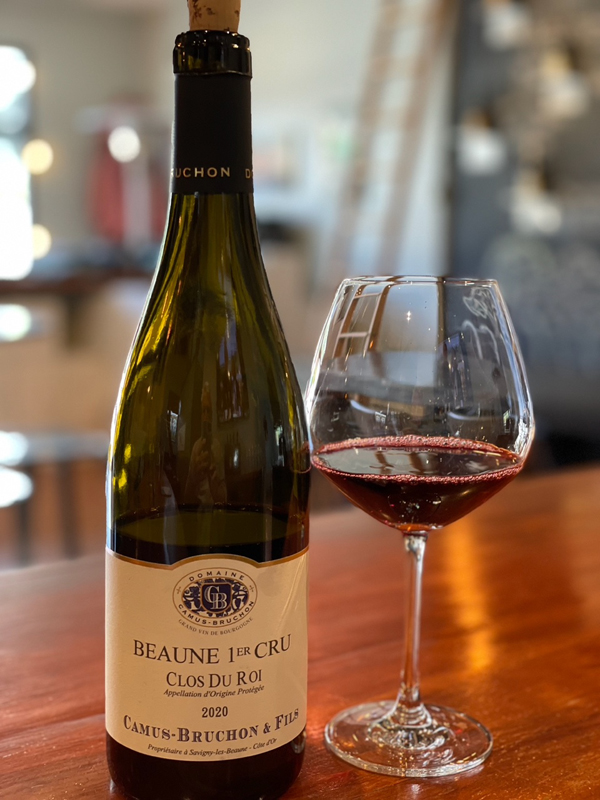
2020 Domaine Camus-Bruchon et Fils, Beaune Premier Cru “Clos du Roi” Red Burgundy, France.
Over the years, one of my favorite Burgundy producers has without question been Camus-Bruchon and in recent vintages I am loving these wines more and more with Guillaume Camus crafting some outstanding Pinots, like this exceptional incredibly dark Beaune 1er Cru Clos du Roi from the 2020 vintage, which is proving a must have year. In the past I have focused on Camus-Bruchon’s value packed Savigny-lès-Beaune offerings, in particular the fabulous Aux Grands Liards Vieilles Vignes single lieu-dit bottling, so it was good to get my palate on this Clos du Roi, one of the signature Premier Crus of the estate and one of the greats in the region not far from Pommard and Volnay, set on clay and limestone soils, “Clos du Roi” is a small 13 hectare vineyard situated to the north of the appellation, which Louis Latour calls one of the best parcels in all of Beaune. This historic site was owned by the dukes of Burgundy and was, as Latour adds, highly favored by the kings of France, and was regularly served at Versailles. The 2020 Camus-Bruchon is deeply garnet hued and wonderfully aromatic, especially after this young wine is allowed to open up, with dark florals, mineral and stony berry fruit that leads to a rich and silken full palate of black cherry, currant, plum and tangy blueberry fruits that are almost as expressive and overt as a top cru Beaujolais, maybe because of the percentage of whole cluster, though was the baby fat settles down, pure Pinot pleasure rises up and subtle spice, earth, orange peel and tea note emerge. This is a vintage to pair with richer foods and to enjoy over a full meal and evening so see its full range of pleasure.
As mentioned, Guillaume Camus is a super talent and these Domaine Camus-Bruchon are gorgeous and authentic wines that are made to charm and age, as a bonus they are stunning values for what you get in the bottle, especially with what kind of prices you are now seeing for very mediocre Burgundy wines these days. For his exceptional Clos du Roi Beaune 1er Cru, Camus as he does for all of the reds here, ferments in concrete vats using native yeasts and then ages the wines for between 12 and 18 months in a selection of French barrels with under 20% new wood being employed. As mentioned, to add complexity and pop to his wines, Guillaume uses upwards of 30% whole cluster, which shows up with an almost carbonic like feel on this ripe vintage and with the stems hardly noticeable at this point, though quietly giving a sultry earthiness and bramble note. Camus likes a extended maceration period and his primary fermentation on the skins usually goes close to 18 days, which gives the wines extraction of color, phenolics and structural tannin, though supple in years like this. Great care was given to the vines and the pruning allowed for slightly longer canes to set a bit more fruit with pick dates chosen to retain some freshness and keep natural alcohols down under 14%, which I hear wasn’t easy with the heat and tiny clusters found in the region. Everything looks set for a winning collection of wines from Camus-Bruchon, these 2020s will reward those that what to open them in their youth and will still provide excellent drinking for another decade or more. When first opening these Camus-Bruchon Burgs, it is advised to let the reductive elements blow off, which in this one took a few hours. I hear the 2021s are much more restrained and learner, so it is best to stock up on these exuberant and fruit filled 2020s, and I highly recommend, as per normal, chasing down Camus-Bruchon.
($48 Est.) 94 Points, grapelive
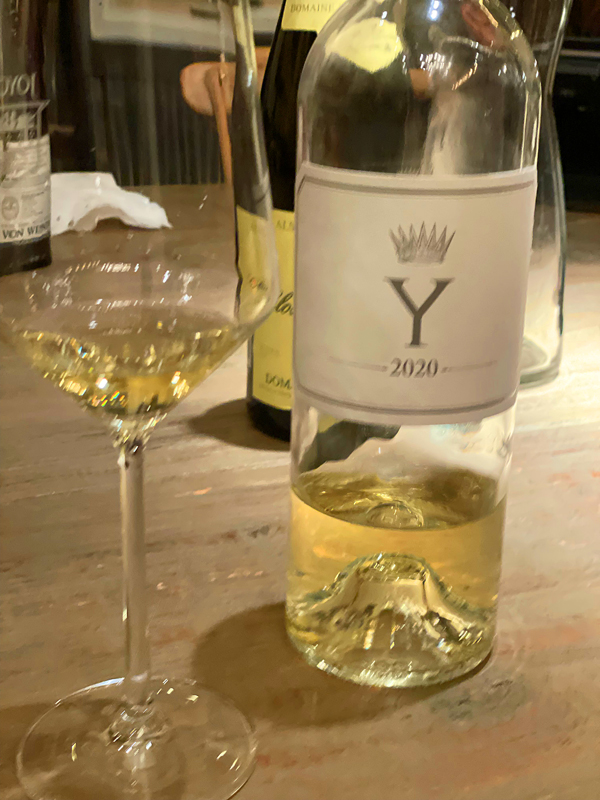
2020 Château d’Yquem “Y” Ygrec, Dry White Bordeaux, France.
The very expressive and tropical 2020 “Y” Dry White Bordeaux is very impressive stuff, way more interesting and delightful than I had imagined, especially after my first less than appealing experience with this somewhat rarity and really enjoyed the clarity, richness and freshness found in this vintage with its lovely peach and citrus led fruits, mineral notes and the mentioned exotic tropical essences on the medium bodied palate. Of course the main attraction at Yquem is their mystical sweet Sauternes, but I must say, after not paying much if any notice of this “Y” Dry Wine for over a decade, this wine almost blew me away with its energy, aromatics and charm in the glass. This pale gold 2020 shows lively peach, apricot, lemon and mango fruits, along with delicate vanilla, wet stones, clove spice, quince and unsweetened honey, making it a substantial wine that goes nicely with lighter cuisine and or soft farm cheeses. This not lean wine at 14% natural alcohol and has lush opulent textures while still being crisply detailed and having bright vibrant personality. This wine, with its prestigious pretense, will not come cheap, it is not a wine that delivers any quality for the money and is a luxurious treat for those lucky enough to try it. In recent years, this wine, grown on the clay rich soils in the Sauternes zone, has been elevated to the top echelon of white Bordeaux offerings, like Haut-Brion Blanc.
Château d’Yquem makes about 10,000 bottles a year of the Dry “Y” white wine (pronounced “ee-grek” in French) which maybe limited, but not as rare wine as they might suggest, though sourced from grapes that are picked from the same outstanding terroir and the same vines as their famous Sauternes, which is obviously legendary to all wine enthusiasts. Originally made from late harvest grapes, inferior grapes, after the best were picked for the sweet wine that “Y” was, what Yquem says was an irregular offering dating back to 1959, it only saw a re-invention in 1996 and is now made to much higher standards and saw a huge jump in quality after 2004, when they decided to make it every vintage and put high quality early picked Sauvignon Blanc grapes, while the Sémillon comes in a bit later with a touch of botrytis on them in certain years, adding depth and complexity. Yquem makes the final blend is made after tasting, after the wine is fermented in temperature-controlled vats and lees aged in mainly used barrels, only 30%, for ten months with a touch of stirring or baronage, with the winery saying that It usually predominantly of Sauvignon Blanc and small percentage of Sémillon. As this 2020 warmed and opened in the glass it took on an added dimension of mouth feel and lingered on the finish with a pineapple and crystallized ginger note, and I could not help being thrilled and seduced by this one, and I owe a big thanks to my friend Ben Edwards for sharing his own bottle.
($189 Est.) 93 Points, grapelive
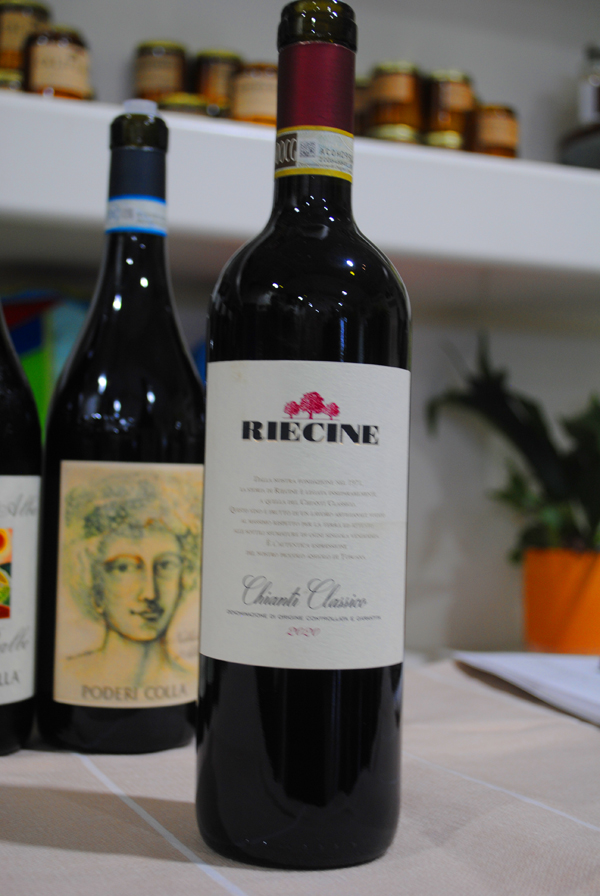
2020 Riecine, Chianti Classico DOCG, Tusacny, Italy.
The beautifully pure 2020 Riecine Chianti Classico really hits the spot, I’m an unabashed Chianti Classico lover and crave wines like this, especially the wines from Gaiole, like this one, Radda and Castelnuovo Berardenga, which show distinctive terroir nuances, and this one is completely dialed in, structured and fabulous delicious already. While not cheap, this fantastic Chianti Classic, 100% Sangiovese, is probably half again less than most Brunello offerings of this quality with lovely dark garnet color and a heady bouquet of dried flowers, red berries, loam and mineral that leads to this Riecine’s medium/full palate of blackberry, plum, strawberry and spiced cherry fruits that feel nicely supported by ripe tannins a fine smooth cut of acidity and background accents of tobacco, minty herbs, cedar, delicate earthiness and dried orange peel. While supple and opulent, this wine definitely is at its best with food and allows an inner beauty to shine through, this is a brilliant vintage for Riecine, a property that has seen a few patchy spells before becoming one of the region’s favorites and I highly recommend checking this one out and can see it drinking nicely over the next 5 to 10 years. Everything folds together in this Riecine with grace and heightened details and I look forward to enjoying a few more bottles of this vintage and following this label into the future, it is great to see an estate like this make such a comeback from obscurity or mediocrity and make such a seductive wine.
Riecine who’s first vintage was 1973, founded back in 1971, is located in the highest part of Gaiole and enjoys an amazing set of conditions that is perfect for an elite wine to be produced here and since 2015 when Alessandro Campatelli took the reins here things have significantly changed for the better and this 2020 shows off the talent of his winemaking and highlights the potential f this property. The vines are all organic here at Riecine, and may have been since before original owners John Dunkley and Palmina Abbagnano bought this historic vineyard site in the late 1960s, but certainly it was farmed 100% organic since the 1970s. The vineyards at Riecine, which are surrounded by an ancient forrest, sit up between 430 and 600 meters above sea level and are mostly on very stony alluvial limestone topsoil and limestone bedrock which the Sangiovese vines love and that bring out the best of this native varietal. This area benefits from good exposure during the day and sees chilly nights that retains freshness and adds to the balance found in the wines of the Gaiole zone, plus imparts a sultry and savory character that contrasts exceptionally well with the concentration f the mountain fruit, providing the wines with complexity and old world charm. The all Sangiovese Chianti Classico, was 100% de-stemmed and native yeast fermented in cement vat with hand punch-downs and pump overs and then was aged over a year, close to 14 months in large old (neutral) 900L French oak, making for a stunning and transparent wine, bravo Alessandro Campatelli for such an impressive effort!
($34 Est.) 94 Points, grapelive
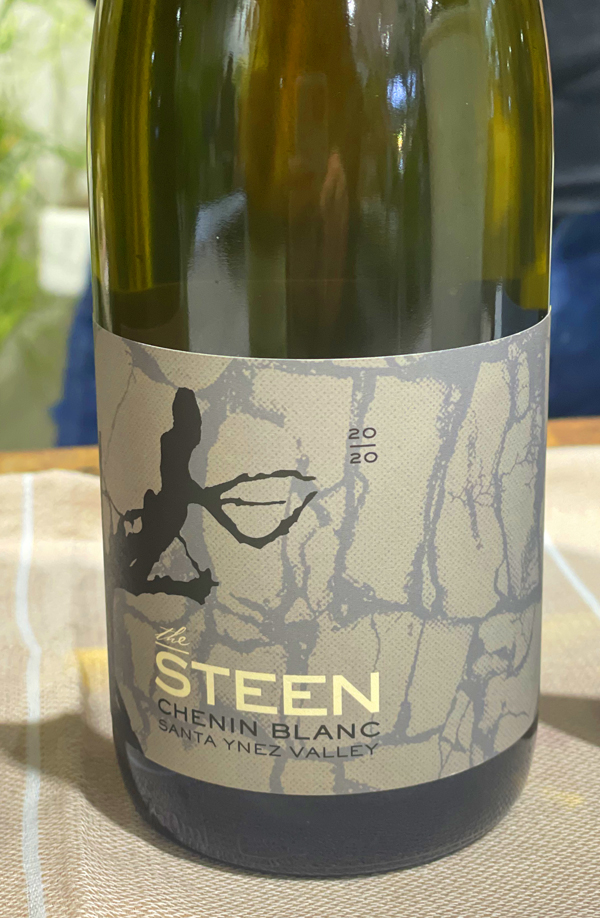
2020 Leo Steen, Chenin Blanc “The Steen” Jurassic Vineyard, Santa Ynez Valley.
The Leo Steen Jurassic Chenin is one of the best and pleasing whites I’ve had this year, it is a stunner with a beautiful texture, oyster shell chalkiness and bright fruits, rivaling classic Loire versions of this grape. Steen, the Danish born ex Copenhagen sommelier, has crafted a stunning set of wines, with this one being his signature offering, and I was thrilled to taste through them with him at a small trade tasting, where he was pouring his latest set of stylish releases. The palate here with his Jurassic Chenin is marvelously layered and shows loads of purity and concentration with lemon/lime, white peach, melon and apple fruits, subtle aromatics, a delicate earthiness, wet stones, clove spice, leesy notes and sweet and sour herbs. The Jurassic Vineyard, planted in 1982, is a legendary Chenin site, it joins Chalone and Casa Nuestra as my favorite vineyards for Chenin Blanc in California and with its own-rooted vines set on sandy, fossil rich marine sediment and limestone soils, makes for an excellent home for this varietal, as proven here in Leo’s outstanding effort. It is noteworthy to add that the sustainably farmed Jurassic Vineyard has tiny berries and clusters that shine though in the finished wine with a real intensity of flavors, which is obvious here in this 2020 wine, of which only 166 cases were made, I highly recommend searching this one out, as well as exploring Steen’s other bottlings, including his Redwood Valley Casa Verde red field blend, the Santa Cruz Mountains Cab Franc and his gripping 100% whole cluster Grenache.
Chenin Blanc’s renaissance is in good hands these days with many fine examples been made from in California, including Justin Willett’s Lieu-Dit, Tegan Passalacqua’s Sandlands, the mentioned Casa Nuestra in Napa Valley, as well as Leo Steen, who is very focused on the grape and does a full range of dry versions, along with a sweet one and even a fortified Chenin made in the Angelica (California’s first commercial wine made originally from the Mission grape) style with a slightly oxidized element, which Leo says has a Sherry like quality. Leo, who has a well rounded background, having done stints in Alsace, Loire, Champagne and Burgundy to Spain and Italy moved to California in 1999 to, as he notes, immerse himself in winemaking, finally landing at Alexander Valley’s Stuhlmuller Vineyards, where he became the winemaker. At that time, in 2004, Leo also started his own label, which allowed him to make wines more to his personal tastes, leaning on his old world palate. Steen, to achieve his goals, uses a variety of fermentation methods and a combination of aging vessels in his wines to showcase each vineyard and terroir with transparency in his wines, with this one seeing a unique set of techniques with this Jurassic Chenin seeing some skin contact, 30% with a short skin maceration, with the rest getting fully a whole cluster pressing, with a native yeast fermentation and aged mainly in concrete eggs mostly for 11 months, then aged another 5 months in large neutral French oak cask before bottling. This Jurassic Chenin, by Leo Steen, is drinking fantastic right now and should evolve nicely for another 3 to 5 years, it is exceptional stuff. You can find Steen’s wines on his website and whole sale in California through The Source, who want to thank for introduction to these wines and Leo himself.
($35 Est.) 95 Points, grapelive
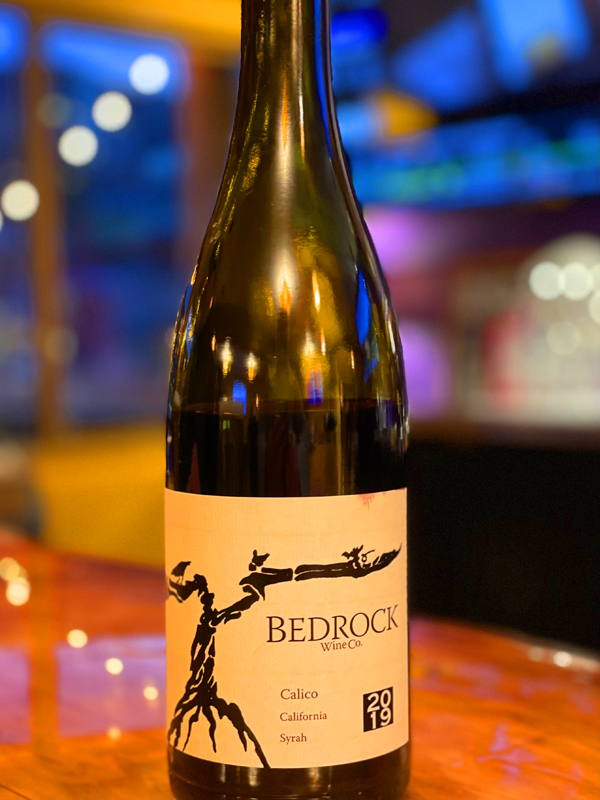
2019 Bedrock Wine Co, Syrah “Calico” California.
The beautifully dark purple/garnet Calico California Syrah from Bedrock is their version of Crozes-Hermitage in the Graillot mold, it is unmistakable, and as they say, distinctly Syrah at its cool climate style best with pretty aromatics, deep fruit concentration, spice and a supple mouth feel. This 2019 delivers plenty of classic details and richly layered with boysenberry, blueberry, wild plum and black cherry fruits, along with hints of crushed violets, minty herbs, cedar, meaty game and anise accents, plus lingering creme de cassis and delicate earthy tones. Everything folds together with compelling seamless transparency and it gets better and better in the glass and goes great with robust cuisine, this is delicious stuff that performed brilliantly when tasted alongside a true Cornas offering. Sourced from multiple vineyards across the state, this Calico is a sleeper in the Bedrock collection and a stylish 100% Syrah effort I thoroughly enjoy and recommend!
The “value” Syrah from winemaker Morgan Twain-Peterson MW is, as always, Bedrock’s blend of the several great Syrah sites around the state that Morgan and his team get to work. There’s some awesome places used here, including ultra-cool climate parcels at Bien Nacido, in the Santa Maria Valley, along with Northern California’s Hudson Vineyard, Griffin’s Lair, Weill and Walker Vine Hill Vineyards and, for the first time, this wine saw some Syrah from Twain-Peterson’s famous Bedrock Vineyard, in Sonoma Valley. The hope Bedrock has is that this wine will show off the potential of this great variety in California, which I believe it does, it makes for a savvy and pure varietal example of Syrah. Bedrock fermented the separate small lots with indigenous yeast with all lots seeing some whole cluster, with the percentage between 20 to 100% in this ripe and expressive vintage. Bedrock usually ages their Syrah close to 18 months or more in a combination of barrel sizes, including large puncheons and used barriques. While famous for their Zinfandel based bottlings, Bedrock does some thrilling Syrahs, and this one is a great way to start exploring them, along with the more rare single vineyard versions.
($42 Est.) 93 Points, grapelive
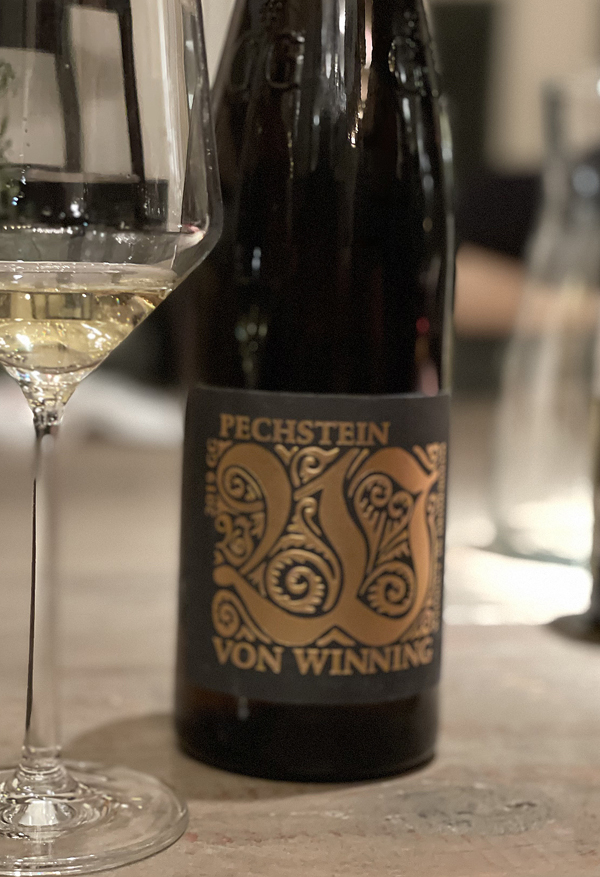
2019 Weingut Von Winning, Riesling Trocken, Forst Pechstein VDP Grosses Gewächs, Pfalz, Germany.
The gorgeous Grand Cru Pechstein by Von Winning is otherworldly and thrills in the same way as Ramonet’s Montrachet or Leflaive’s Batard-Montrachet do with unbelievable length and concentration, this is utterly decedent white wine that transcends varietal and norms. As I have noted in Von Winning’s outstanding set of 2019s, this vintage is ripe and hints at the exotic, but has chiseled detailing and Riesling purity with vibrant array of white peach, green apple, apricot, tart pear, kumquat, key lime, kiwi and bitter quince fruits as well as rosewater, orange blossoms, saline, crushed wet flint and verbena all elevated by the natural acidity and rounded by the leesy texture, hazelnut brioche and subtle wood influence. There’s a sense of beauty and precision here that may just be off the charts and this wine is wildly pleasing beyond what words on the page or screen could really express! The Pechstein name comes from the black basalt rubble that is found here in veins throughout the vineyard that is part of the Forst area, which also has weathered red sandstone, sandy loam and friable clay that was formed by the ancient and extinct volcano, Pechsteinkopf, which can be seen above the forest, that spread volcanic rock over the site long ago. Von Winning was founded in 1849, by Leopold Von Winning, but saw its most important evolution under Dr. Andreas Deinhard, with his commitment to excellence, the Deinhard’s were also a founding members of the VDP, which focused on single cru sites, like those in Von Winning’s holdings in Ruppertsberg, Deidesheim, and Forst, where Pechstein is.
The Pechstein Grand Cru (Grosse Lage), with its rolling slopes and ripe southern exposure, is set on a series of complex soils including sandy clay, löss, loam, over limestone, basalt, and sandstone all of which add to the wine’s glorious palate impact and regal presence. The winery explains that back in the 1800s, basalt from the nearby quarry was brought into the vineyard and then it was ploughed in the soil to improve it. Stephan Attmann’s approach to wine growing and winemaking have helped revolutionize the wines here, taking his inspiration for the Côte d’Or, with Attmann adopting the single cane trellising system, as his importer Skurnik Wines notes, is prevalent in Burgundy. The Von Winning Grosses Gewächs Rieslings are fermented and lees aged for close to 24 months in 500L French oak, which leads to the texture and depth in these stunning wines. To achieve this stunning level of quality and concentration the Von Winning estate practices organic and sustainable viticulture in all of their parcels of vines and they employ a minimalist approach in the cellar with Sponti or natural yeast fermentations and the wine is only moved with gravity flow, with only gentle handing of the grapes and wines. The Von Winning wines all deliver purity and tension, and while they are easy to love young these Riesling have tremendous aging potential and patience will certainly be greatly rewarded! This treatment doesn’t start and end with Von Winning’s GG Rieslings, as they also employ this regime with their fantastic Sauvignon Blanc 500, which is one of the world’s greatest version of the grape, if you’ve not had Von Winning’s wines it’s past time time to do so, I highly recommend the full collection from their basic estate bottlings to their majestic GGs!
($120 Est.) 96 Points, grapelive
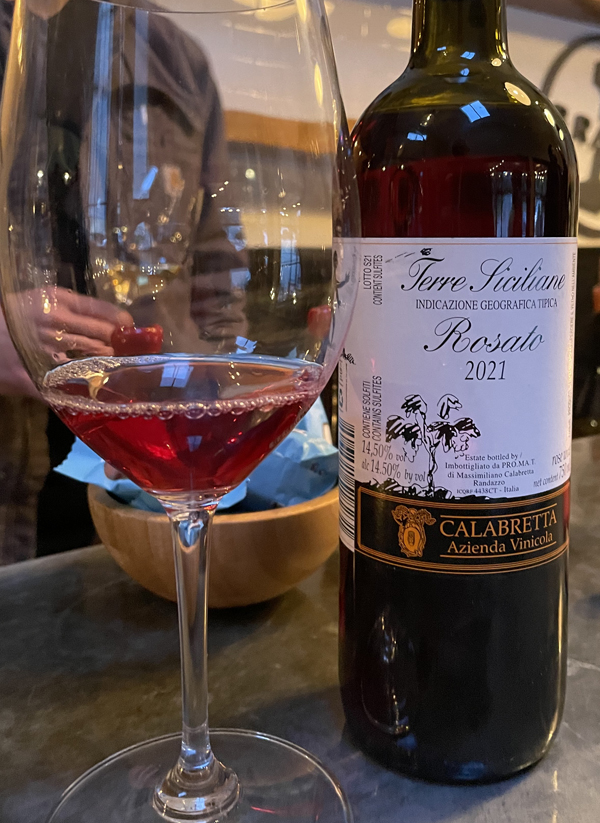
2021 Azienda Vinicola Calabretta, Rosato, Terre Siciliane IGT Rosé, Sicily, Italy.
Calabretta’s Mount Etna wines are a traditional collection of offerings leaning heavily on Nerello Mascalese, the main red grape of the volcano, and this bright deep ruby hued Rosato is one of my favorites with its spicy, smoky and mineral driven terroir character making it uniquely delicious. There is a to of personality and substance to enjoy here with a medium body and layered fruit including strawberry, grilled orange, sour cherry and plum water as well as the wet shale, roasted herbs, dried flowers and anise accents. More of a light red than a classic Rosé, this pink Nerello Mascalese by Calabretta has structure to hold up to robust cuisine and though, enough delicacy to be enjoyed with sea foods and is refreshing with a burst of energy and natural acidity, it goes great with grilled octopus, fish stews and or Moroccan dishes. Massimiliano Calabretta’s wines are distinctive and old school, interestingly he, as his importer Polaner Selections, notes, compared to other Etna producers, he releases his wines late, only after long aging in large casks (Botti) and again in the bottle, many of his releases are often six to eight years behind the other Etna vintners. Also his wines were once label Etna Rosso or Etna Bianco, but now are humbly labeled as Terre Siciliane or IGTs, because he likes to do things his way, often not following the norms of the appellation. For his Rosé, Calabretta uses grapes from younger vineyards, planted between 2005 and 2006, in Calderara and Randazzo, on rocky volcanics, it sees a soft de-stemmed pressing with a short maceration and is fermented and aged exclusively in stainless steel vats before bottling to preserve its vibrancy. This is a property that does things their own way and has produced some spectacular wines over the last decade or so, it is a label to search out, not always easy to find, though Rare Wine Co. usually has a good amount, the chase is worth it.
The Calabretta wines, mostly from 80+ year old vines scattered throughout many of Etna’s top sub-zones with lots of them on their original roots, all within he DOC of Etna Rosso in northeastern Sicily, with various terroir nuances with the northern facing plots being much cooler. The Nerello Mascalese,is as mentioned the main grape here, along with a bit Nerello Cappuccio interplanted in vineyard sites. It is also known and very unique that Massimiliano has a small vineyard of Pinot Noir too, which I didn’t know, is a grape that has been planted on Etna since the 1800’s. The vineyards of Calabretta are situated at between 300 and 900 meters up on the slopes of Mount Etna, which is Europe’s most active volcano, seen from almost the entirety of the island. The soils here are a combination of black volcanic ash and sand which are fine grained, well drained and almost silty, with lots of lava rocks, with the vines usually being steep and terraced in classic fashion. Massimiliano Calabretta, a part-time college professor at the University of Genova, says his wines are inspired by the wines of Barolo, and while most critics find Nerello Mascalese to be more Pinot Noir or Burgundy like in style, though with the heavy volcanic spiciness, Calabretta is more keen to make his in a more Nebbiolo like way, extracting more tannin and then maturing them longer. A rarity in the Calabretta lineup is the old vine Bianco made from mainly Carricante, that is interplanted with a tiny amount of Minella Bianca, a grape that helps for its acidity, which is aged in a combo of tank and neutral wood and is wildly good white that I try also not to miss. The signature wine, Calabretta’s Nerello Mascalese Vigne Vecchie or just VV, which I have been lucky enough to try a few times, is from 80 year old vines set on black lava soils and gets primary and secondary fermentation in stainless before being aged in large Slavonian oak casks for between 36-42 months, it is an awesome, iconic and monumental wine that should be on your bucket list, with this Rosé being a good tease to get you primed.
($20 Est.) 90 Points, grapelive

2015 Anthill Farms, Pinot Noir, Campbell Ranch Vineyard, Sonoma Coast.
The outstanding dark garnet 2015 Anthill Farms Campbell Ranch Pinot has really evolved well in bottle, and now in 2023 it is showing everything you’d want from a maturing wine with sultry array of flavors and aromatics, this is beautiful and transparent stuff that reminds me a lot of the recently tasted Domaine Dujac Chambolle-Musigny showing ripe fruit, savory elements and expressive wild herbs, woody earthiness and enchanting florals. Satiny and supple on the medium bodied palate, there’s still a vibrant freshness due to this vineyards cool climate location near Annapolis on the far west Sonoma Coast, which always retains natural acidity. A minimalist approach in the cellar and gentle handling of these exceptional grapes are an Anthill Farms signature, along with employing indigenous yeast and partial whole cluster fermentation(s), and the wines see lengthy maceration periods with a gentle handmade feel in small lots. The aging is done in mostly used French oak, all to promote terroir, elegance and Pinot purity, which is extremely evident here in this nicely maturing 2015 Campbell Ranch. The Campbell Ranch Vineyard, once farmed by the late Ulises Valdez, is true maritime site, much like Hirsch, one of the state’s best spots for Pinot, and McDougall Ranch, made famous by Jamie Kutch, elevation also helps, which is close to 750 feet up, rising just above the fog, while staying cool. Campbell Ranch was originally planted in 2000 with a selection of Dijon 667 and 777 clones on ancient low vigor marine sediment soils that reduce yields and add depth and concentration, making for taut dark wines that take time to develop fully, but well worth the wait as seen here!
As mentioned here, Anthill Farms got its start when Webster Marquez, Anthony Filiberti, and David Low crossed paths while working at Williams-Selyem, they kept in touch and a few years as cellar rats in California, Oregon, and Virginia they started the cult Pinot label Anthill Farms in 2004. They have made a name for themselves by focusing on mostly single site Pinots from cooler vineyards in California’s western Sonoma Coast as well as Mendocino, along with some Chardonnay and northern Rhone style Syrah, which I really love. Filiberti has grown into one of California’s best winemakers, with his gifted touch with Pinot, and he also has made in recent years, the wines at the famous Hirsch Vineyards. His work at Anthill Farms showcases his talent with much like his contemporaries Ross Cobb, John Raytek of Cerritas, Jamie Kutch and Jason Drew, and over the last decade his wines have been some of the most prized and sought after in the state. This Campbell Ranch, the Peters Vineyard and their Comptche Ridge, usually are my most favorites in the Anthill Farms collection, but I am as mentioned a big fan of the Syrah too, these are wines I cannot resist, thanks to my friend Alex Lallos for sharing his last bottle with me, especially as I have finished off all my 2014, 2015 and 2016s, which had been saving. Never easy to find, the Anthill Farms wines are coveted prizes and enthusiast offerings that really are distinctively different from each site they use, with this Campbell showing brambly spices and a touch of celery seed with a core of cherry, plum and strawberry fruits, and it opens up with wilted roses, saline, black tea, subtle oak and lingering cranberry. While absolutely seductive on its own, it will pair well with a variety of cuisine choices from blackened salmon and ahi to game birds, this 2015 is in a fabulous window, time to pop the corks on this one.
($54 Est.) 94 Points, grapelive
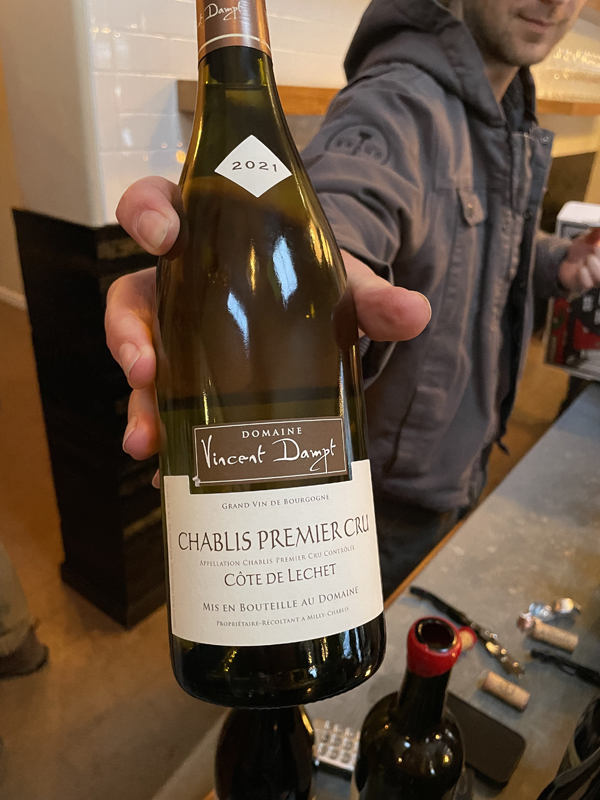
2021 Domaine Vincent Dampt, Chablis “Côte de Lechet’ Premier Cru, White Burgundy, France.
I was treated to a brand new producer from Chablis by the guys at the I. Brand and Family Winery, who are real enthusiasts themselves, and I was delighted by this Domaine Vincent Dampt Premier Cru Côte de Lechet and the vintage, it was also the first chance to taste a 2021 Chablis, and while not as dense and complex as 2020, it was really good and an exciting crisp mineral driven Chardonnay. Poured to me by Ryan Kobza, winemaker for his own Kobza Wines as well as at Ian Brand’s winery, this Dampt Côte de Lechet is ultra pale greenish/gold in the glass and full of bright acidity with flinty aromas and citrus led fruit with lemon/lime and subtle orchard fruits on the racy, stony, and medium bodied palate, it is fresh and transparent, showcasing its terroir as expected with wet rock and oyster shells lingering on the saline rich finish. This wine begs for sea food and or creamy farm cheeses, where its dynamic energy can be put to good use, I enjoyed this very much and found it to be an excellent value and I can’t wait to explore more of Vincent’s Chablis! For old world Chardonnay and Chablis fans, this is a label to search out and I suggest grabbing both 2020 and 2021 from this producer and in particular this Cru.
The Beaune trained Vincent Dampt, who got his start in around 2002, comes from a family with a long history in the region and a tradition of winemaking, with his importer Skurnik adding that in fact both Vincent’s father, Daniel Dampt, and grandfather, Jean Defaix, own highly-regarded estates in Chablis. In 2004 Dampt was gifted some small plot and began his own Domaine using these vineyard sites on the left side of the famous Serein River, which all on the classic Kimmeridgian soils, a mixture of clay, chalk and marine fossils that play such a huge role in these wines. Vincent’s vines are mature, averaging over 40 years old, and he farms them all sustainably to producer small natural yields that adds to the depth in his wines, which usually only stainless steel. For his Côte de Lechet, which enjoys a ripe southeast exposure and has mainly 55 year old vines, Dampt used all native yeasts for fermentation and was aged 80% in stainless and 20% in used wood, employing four year old 350L barrels for this lively Premier Cru that just barley shows the texture of the oak. The lesser known The Côte de Lechet vineyard, which dates back to the 1400s, with a total of 120 acres, sits in sunny spot, just above the small village of Milly, on a steep, southeast-facing slope backing up to a forest and is capable of some quality, as seen here. This site has an underground following and after tasting this one you can see why.
($36 Est.) 92 Points, grapelive
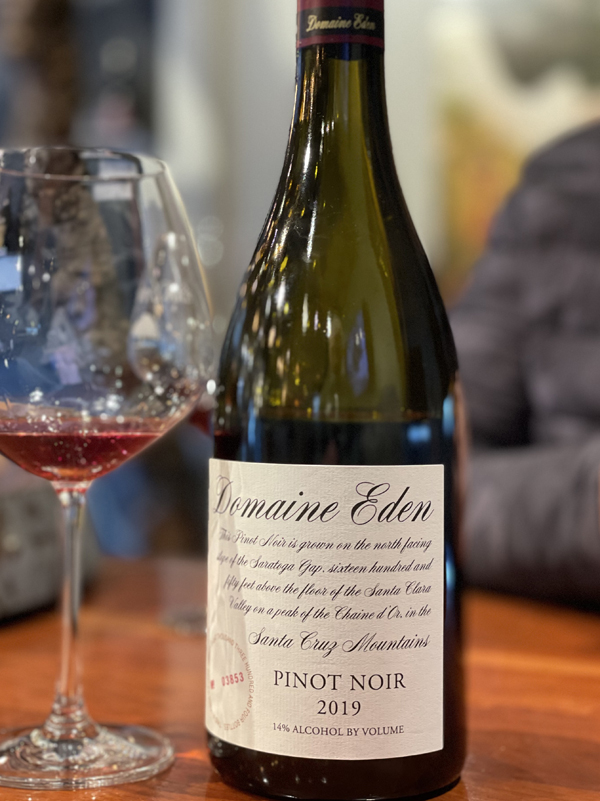
2019 Domaine Eden, Pinot Noir, Santa Cruz Mountains.
Tasted blind, I found this dark ruby hued wine to be beautiful, pure and silky, maybe obviously a California or new world wine, it showed a distinctive earthiness and complexity that you’d expect from a Burgundy with restrained oak use and a nice lift of acidity, making it a fabulous Pinot Noir, very enjoyable and complete now and in the short term, a very impressive showing for the “Baby” Mount Eden. Satiny layers of black cherry, spiced plum, red currant and grilled orange fruits unfold sublimely on the medium bodied and richly flavored palate along with baking spices, black tea, light savory elements, mineral tones and a pretty floral rose petal dimension, lingering on with a hint of wild mushroom and an echoing of kirsch. When in doubt, this wine is always the answer and a savvy bargain, it gives a lot for the asking price it satisfies the core desires of any Pinot lover, dollar for dollar it is one of the best wines for the money in California, and it hints at the greatness of the top Estate bottling here at the famous Mount Eden. The legendary winemaker Jeffery Patterson and family make their Domaine Eden Pinot just like the Mount Eden Estate wine with natural indigenous fermentation(s), gentle maceration(s) and employing French Burgundy barrels for aging, with as Patterson adds, no fining, filtration or any other manipulation, to allow terroir and the house style to shine thorough. Mount Eden is now part of Slow Wine that highlights organic and authentic wineries worldwide and second generation winemaker Reid Patterson has joined his father in the cellar setting up a smooth transition here to the future, certainly guaranteeing continued quality and tradition here.
This Domaine Eden Pinot Noir comes from, as the winery says, a mosaic of different selections and clones grown at the Domaine Eden property and includes modern Dijon clones 777, 667 and 828 that reside alongside the historic California selections planted here, with of course the Mount Eden clone, as well as Calera and Swan clones. Patterson notes that each of these parcels are farmed to Mount Eden’s strict standards of sustainability, dry farming and low yields, which make this wine so compelling and such an exceptional value, especially in vintages like 2018 and this delicious and supple 2019. As noted here and beyond, Mount Eden, originally founded by Martin Ray, is perched at 2000 feet overlooking Silicon Valley in the Santa Cruz Mountain Appellation, not far from Saratoga, about 50 miles south of San Francisco with Franciscan shale soils and set on a cool, exposed mountaintop. Originally founded back in 1945, the Mount Eden estate is recognized as one of the original “boutique” California winery properties, focusing on small lots of Pinot Noir, Chardonnay and Cabernet Sauvignon, which are all highly coveted and age worthy wines. Mount Eden’s fame really became a reality under Jeffery Patterson, who effectively took over the estate and winemaking in 1981, he and his wife Ellie rejuvenated the property and have produced some of California’s most iconic wines. In 2007 the Patterson’s purchased the former Cinnabar estate, a neighboring mountain side vineyard, which has become the source for the Domaine Eden bottlings like this one. Over the years I’ve grown more and more fond of Mount Eden and their set of wines, especially as mentioned, the Estate offerings, but these Domaine Eden wines, easier on the wallet, have definitely got better and better over the years and I highly recommend them.
($40 Est.) 92 Points, grapelive
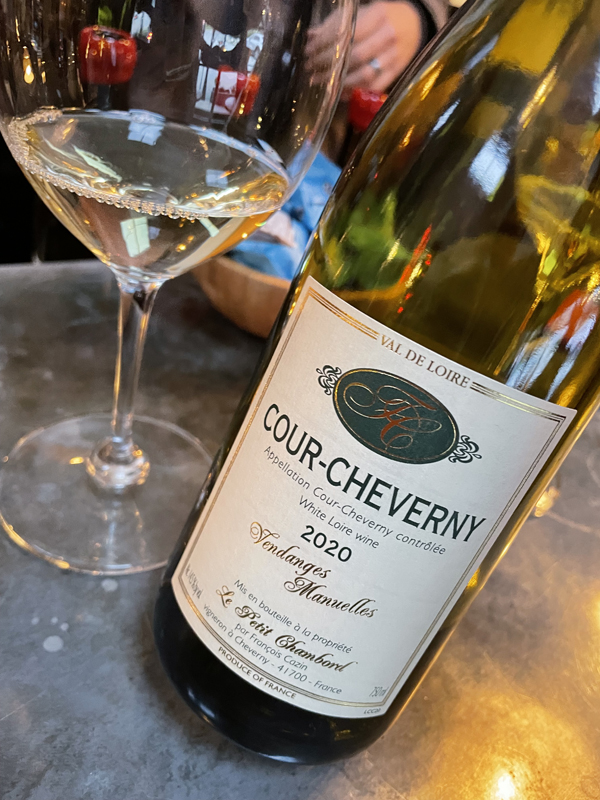
2020 François Cazin – Le Petit Chambord, Cour-Cheverny Blanc, Loire Valley, France.
The bright and crisp 100% Romorantin Cour-Cheverny from François Cazin – Le Petit Chambord is a lovely example of this unique Loire Valley varietal with fresh citrus, green apple, white peach and a touch of tropical fruit on the light, smoothly rounded and mineral driven palate. The lemon/lime and wet stones here make this white great with creamy goat cheese and or briny sea foods and with air a bit more texture appears allowing some cuisine flexibility, there is a lot to like here with delicate spicy elements adding complexity. Romorantin is a sibling of Chardonnay, and was once very widely grown in the Loire region, but it is now almost only seen in the Cour-Cheverny AOC, making it very much a rarity, it sometimes produces an intense wine, though always with a steely charm and with the limestone bedrock under soils composed of silica and clay there is some resemblance to Chablis in good vintages. This pale straw colored 2020 is maybe a touch riper than I’m used to with this grape and it has a pleasing mouth feel and a lingering tangerine note that I very much enjoyed, this is one for those that are looking to explore in unfamiliar areas of the Loire Valley, beyond Sauvignon Blanc and Chenin Blanc. Not that easy to find, François Cazin is imported by Louis/Dressner, and I recommend chasing down his wines, especially this one.
Most of my experience with Romorantin has been via the Cour-Cheverny La Porte Doree by Philippe Tessier, a natural wines vigneron, and his style is a bit more oxidative, while this Le Petit Chambord by François Cazin is more fresh and has beautiful clarity of fruit and flavors. Cazin uses vines that are between 40 to over 90 years old, hence the concentration and he ferments his Romorantin with a direct pressing of the juice in stainless steel. After primary fermentation the Cour-Cheverny sees an elevage is in used 300L barrels for six months, then racked over to underground vats until the following spring when it is bottled to preserve vibrancy. This cuvée does complete full malolactic and only sees a small dose of SO2 at bottling and is unfined and unfiltered to showcase every nuance of terroir and varietal purity in a wine that expresses its fruit and gives a nice textural quality, which is all evident in this pretty 2020 version. Created in 1993, Cheverny is one of the most recent appellations in the Loire Valley, but wine has been made here since the 6th century, it is not far from Touraine, where you find Pinot Noir, Gamay, Sauvignon Blanc, Chardonnay, Malbec (Cot), Cabernet(s) and Romorantin as well as a few other grapes. It is worth mentioning that this area has blended wines, especially with the reds, along with classic single varietal offerings, such as this one, making for some very interesting wines, all of which are mostly acid driven and quaffable in style, this is probably why it is such a hotbed for natural winemaking. I’ve only had Cazin’s wines a few times, but I look forward to trying a few more soon!
($30 Est.) 91 Points, grapelive
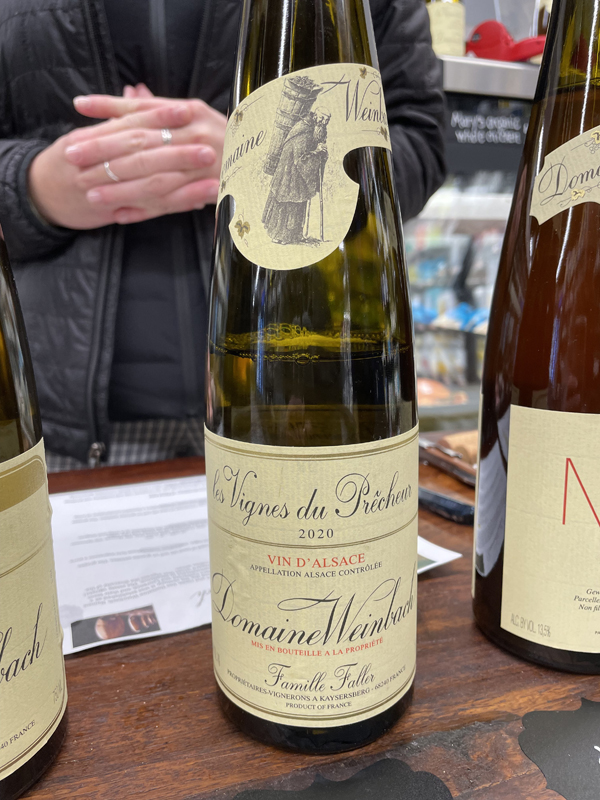
2020 Domaine Weinbach, Les Vignes du Prêcheur, White Field Blend, Vin d’Alsace AOC, France.
The latest vintage Les Vignes du Prêcheur, which is single vineyard co-fermented white field blend of 5 native Alsatian grape varietals, with about 40% Riesling, 30% Auxerrois, 20% Pinot Gris, 5% Muscat and 5% Sylvaner continues to really impress me after first tasting the 2019 last year, with this year’s being even more complex and expressive. This particular vineyard, as mentioned, is known as the Preacher’s Vineyard, hence the name, has mixed grape make up and sits just below the famous Grand Cru Kaefferkopf site that is set on sandy and clay based soils, which makes for expressive and ripe fruit. Like last year, you’ll find the Les Vignes du Prêcheur, with its fine floral and mineral aromatics, shows spiced jasmine flowers along with wet stones, peach on its crisp dry medium bodied palate that adds green apple, almonds, quince, spearmint, chalk and subtle tropical essences. Not as chiseled as the single varietal wines in the Weinbach lineup or as full bodied as the cru offerings, this wine fits nicely in the collection and allows for wonderful early and easy drinking, but with the grace and complexity you’d expect from this fabulous label. Field blends are still more of a rarity in Alsace, but were popular in ancient times, and while Weinbach is new to them there are some amazing versions, as I have noted before, like Marcel Deiss’ Grand Cru bottlings and Marc Tempe’s wines to name a few. Respected for their traditional wines, especially the Rieslings, Weinbach has surprised many with a new “Orange Wine” made from skin contact Gewürztraminer and Pinot Gris, which is very interesting as well.
The Les Vignes du Prêcheur vineyard, which is In the process of certification and has been converted to all organic and biodynamic farming methods, and they get a short pruning of the vines to keep yields low, to promote concentration and allow for aromatic intensity. To make this wine, Weinbach uses a gentle whole cluster pressing of the grapes in a soft pneumatic press, with the fermentation being done exclusively with indigenous yeasts and the aging done in large neutral oak casks. The Les Vignes du Prêcheur got an elevage on the lees of close to 8 months before bottling without fining, as Weinbach is all vegan, it saw just a light filtration for clarity and stabilization. Tasted with some other 2020s, this wine was a stand out for the quality and value, along with Weinbach’s Clos des Capucins Pinot Gris, which itself is a killer bottles, delivering Riesling like vigor and depth, it is a wine that I will given full notes on soon. The Domaine Weinbach, one of Alsace’s great estates, and a favorite of mine, was originally founded by the Order of Capuchin monks back in 1612, property was a walled in and a totally self contained site making some of the best wine in the region for the better part of a hundred years. The “Clos des Capuchins” is the vineyard that surrounds the domaine, it sits directly below the prestigious Schlossberg Cru (the first terroir in Alsace to receive the status of Grand Cru), along with the Grand Cru Furstentum (known for Gewürztraminer and as well as to the adjacent Altenbourg Cru (known for Pinot Gris) vineyard that rises above the Weinbach clos. The domaine is in the heart of Kayserberg’s hills and its valleys are some of the most picturesque places in Europe, and the wines here are, like this one, exceptionally well made and beautiful.
($30 Est.) 93 Points, grapelive
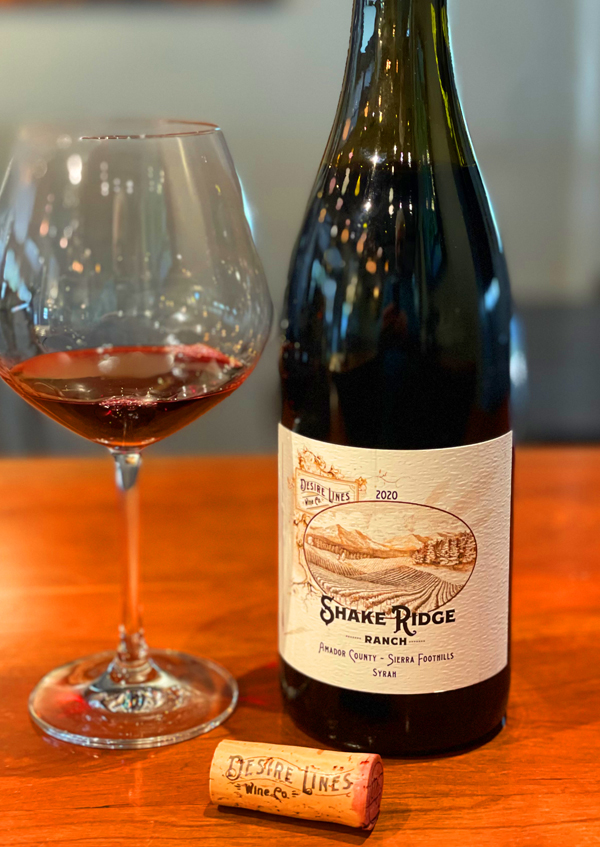
2020 Desire Lines Wine Co, Syrah, Shake Ridge Ranch, Amador County, Sierra Foothills.
The Shake Ridge Syrah from winemaker Cody Rasmussen is an ultra expressive California wine and this alluringly purple 2020 edition is wonderfully concentrated, supple and complex with a heightened perfume and a long beautiful finish. Rasmussen sourced the grapes from the Shake Ridge Ranch, in Amador County, which was first planted in 2003, and as he says, under the careful eye of Ann Kraemer, one of the state’s best vineyard managers. Kraemer worked for many years as a vineyard manager and consulting viticulturalist for the likes of Domaine Chandon, Swanson, Cain, Calera, Hobbs, and others, as well as putting time in the southern hemisphere too, where she has gained incredible expertise in growing outstanding grapes, as this wine demonstrates. Even though not an old site, the fruit from here is clearly spectacular and Cody has done a masterful job of putting into the bottle here with opulent black boysenberry, blueberry, damson plum, black cherry and Mission fig fruits on the full bodied palate, in this almost Guigal style Cote-Rotie like wine that also has crushed violets, anise, sandalwood, peppery spices and lingering creme de cassis. Tasting this Syrah, makes understand why it is one of the jewels in the Desire Lines lineup and one of Rasmussen’s signature offerings, along with his Cornas like Griffin’s Lair Syrah, it is one of the best wines for the money I’ve tasted in recent years. Rasmussen, who is also a winemaker at Morgan Twain-Peterson’s Bedrock Wine Co, is inspired by old world wines and techniques, like here he used plenty of whole-cluster, native yeasts and ages in larger used wood, preferring Puncheons of 400L and 500L (sizes) for his Syrahs and his Mourvèdre wines. The maceration included lots of punch downs and full extraction that shows in the depth and intensity of flavors and the umami background with subtle briny/meaty notes adds to the thrills and wow factor here, in this beauty.
Cody Rasmussen says, the 2020 vintage in the Sierra Foothills of Amador County was a warm one, and his thinks you actually can sense the warm August nights in the lush mouthfeel and extra dash of olive brine on the nose, here in his Shake Ridge Ranch Vineyard Syrah, which as I have also mentioned is his most exotic effort. Rasmussen goes on to say, the vines at Shake Ridge are planted in the once gold-rich soils that birthed the modern state of California, and are cared for by one of the finest farmers in California with the help of her whole family. Ann Kraemer, who is legend in her field, continues a long tradition of pioneering, scientifically-minded viticulturalists in Amador County, and she supplies grapes to some of California’s most exciting winemakers. The wines from here are rich and ripe, but also sublimely balanced due to the chilly nights here, Cordy explains the hot daytime temperatures are moderated by upslope breezes, and once the sun sets temperatures fall dramatically, by as much as 50F, giving the vines loads of refreshment, as colder temperatures cascade down from the Sierras.There is a distinct terroir here and Kraemer farms to enhance its influence, as Rasmussen goes on, the rich geological history of the Sierra Foothills is evident at every roadcut revealing schist, Mariposa slate, greenstone, and marble, and in the vineyard rows at Shake Ridge, all of this plays a part, and where sizable chunks of quartz just litter the ground. With air the Shake Ridge Syrah adds salty meaty notes and the florals burst from the glass, all folding together with the natural fruit density in the mouth, making for a gorgeous wine that lacks for nothing and is an outrageous value, super impressive, especially in this warm year and one that saw other regions suffer with smoke. This inky 2020 Shake Ridge has a burst of natural acidity and at about 14% it feels prestigious rather than big or porty, highlighting the quality of the grapes and the winemaker’s gift. Rasmussen as you will know by now, if you’ve read my grapelive.com reviews, also makes some of the greatest California Rieslings you’ll find and I highly recommend getting on the mailing list here!
($36 Est.) 96 Points, grapelive
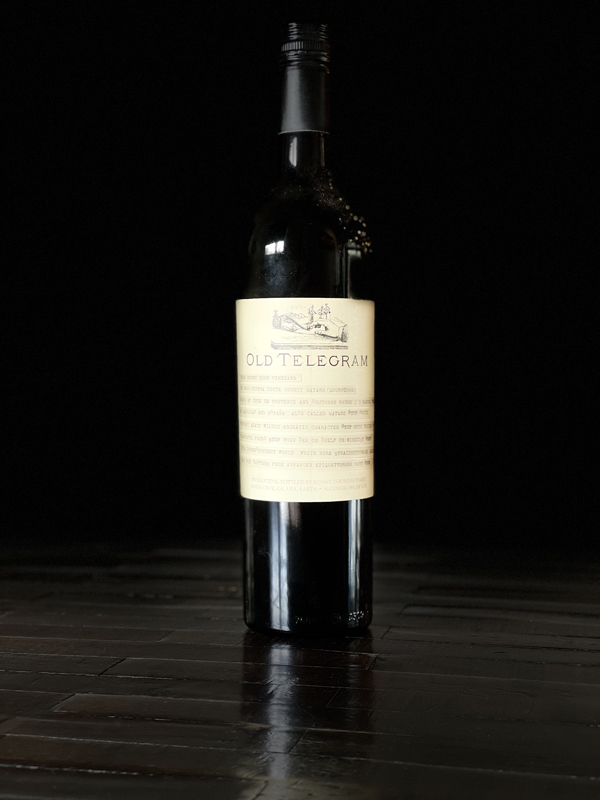
2016 Bonny Doon, Old Telegram, Mourvèdre, Contra Costa County.
This dark garnet and ruby edged 2016 Old Telegram is lovely aromatic and firmly structured, as Mourvèdre should be with crushed blackberries, violets, dark cherry, currant and savory elements leading the way and while California expressive there is some old world rustic charm present, making for a delicious solo varietal effort. Taking on more concentration and richness with air, adding a juicy plummy quality, some cedar wood, anise and grilled herbs, there is also nice contrast here with a meaty, spicy and sanguine edginess adding to the overall appeal. The Boony Doon Old Telegram, which was sadly discontinued after the 2018 vintage, is 100% old vine Mourvèdre from Contra Costa is an under the radar wine that is a tribute to the tannic and powerful Bandol reds, from the classic producers in the region which is on the Mediterranean sea in France’s picturesque Provence, a far cry from the deep sands, ancient decomposed granite soils, of the Delta in California’s out of the way Contra Costa, where incredible old head trained vines have flourished for well over a hundred years. In recent years we’ve seen a renewed interest in this region and the quality of the wines from here has reached new levels, especially after Bedrock’s Morgan Twain-Peterson MW took over the amazing Envagelho Vineyard after many years of working with the prior owner to rejuvenate it and its 130 plus year old vines. While Randall was one of the first to do a single varietal Mourvèdre in California and in particular from here, there are now a whole new legion of young winemakers doing it and his legacy will live on, even if he has ceased to make this Old Telegram, sadly it has even been scrubbed from history by the new owners of Bonny Doon, who it seems have taken down almost all mention of it on their website, which still has a huge collection of Randall’s blog posts and winemaking articles. While disappointed that this wine is done and dusted, Grahm’s pioneering legacy lives on in any or all bottles that are tucked away and for the passed touch, as the soul of this wine certainly lives on!
Over the years Randall has adjusted his winemaking, going from traditional to ultra modern and back again, sometimes on a whim, but for this wine he kept pretty true and almost old school, it was never a bottling to be drunk young and usually displayed the most fiercest of tannin of all of his wines. I always remember it being dark and blooding with more grip than was common in California at the time. Grahm was always railing against the high percentage of TCA found it natural cork, which produces the dreaded corkiness flaw in wine, and was one of the first premium producers in California to switch to screw caps, and his Old Telegram, from the most recent vintages, proudly sports its stelvin closure, guaranteeing its non spoiled state for anyone lucky enough to have this now rare bottle! The Old Telegram label identifies it as Mataro, an alias under which this thick-skinned, late-ripening Mourvedre sometimes goes under, as seen on Ridge’s versions. The Mourvèdre grape, as grown in California is in good hands though and we will see many exciting versions to be continuing for the foreseeable future with exceptional single varietal and blended wines coming from the likes of Ian Brand, who once worked in Randall’s lab, Hardy Wallace of Extradimensional Wine Co. Yeah!, Tablas Creek, who brought over their Beaucastel clone, the mentioned Bedrock Wine Co., below Rhone Ranger John Alban, Ridge Vineyards and Tegan Passalacqua’s Sandlands Vineyards to name just a few to look for. Randall Grahm first created the 100-percent Mourvèdre Old Telegram wine originally as en hommage to (or teasingly) the venerable Chateauneuf-du-Pape estate Domaine de Vieux Télégraphe, who used a high percentage of Mourvèdre in their classic bottlings, even though Grahm’s version is more Bandol like. Randall, never one to miss an exciting opportunity, long ago discovered the quality of these Contra Costa old vines, finding these sandy vineyards of Antioch and Oakley many years back when he began working with old-vine Mourvèdre for this almost cult wine bottling of Old Telegram, as well as using some for the iconic Cigare Volant, his classic California version of a Chateauneuf du Pape. Mostly known for exploration of Rhone style wines, so this Old Telegram is more based on the mentioned Bandol, the signature wine of Provence and maybe to the legendary Domaine Tempier as well.
A southern California native, Randall Grahm, was born in Los Angeles in 1953 and attended the University of California at Santa Cruz, where he was a permanent Liberal Arts major, and the place he fell in love with and located to after becoming a winemaker. After college he, as he says, found himself working at the Wine Merchant in Beverly Hills, where besides sweeping floors, he got the chance to try some of the world’s greatest wines, including a range of classic French offerings, which would influence his own wines later in life. While first and foremost a Burgundy lovers and wanting to make the great new world version, he became much more famous for his artistic Rhone style wines, most notably the mentioned Cigare Volant, an ode to Chateauneuf du Pape. Lesser discussed is Randall’s adventures and faith in almost unheard of grapes and his work with out of the way vineyard sites, including now widely known historic Besson and Enz Vineyards, as well as making Grenache before it was cool. Randall’s residual effect of the California wine scene, his visionary ideas that now have come to fruition, has been his influence on the current winemakers doing Rhone style wines and giving a push to seeing these varietals planted in the central coast, believing in the potential for them in Monterey County. He pioneered Picpoul and Vermentino, as well as cool climate Syrah, along with other Rhone Rangers, and has earned a place in the state’s winemaker hall of fame for his incredible body of work, which includes this Old Telegram Mourvèdre. In fact, as Grahm notes, he was inducted into the Vintner’s Hall of Fame in 2010 at the Culinary Institute of America in St. Helena, though he was not all that pleased at the time, since most of the inductees were already long dead and Randall has much more to do and give, including his 10,000 new grapes project and, as he continued, to finally produce a world class estate wine at his extraordinary property in San Juan Bautista, which he calls Popelouchum, (the Mutsun word for “paradise,”) where his final chapter is set to begin and most likely end. After tasting early samples and a few insightful conversations with Randall, I have total believe that he will be hugely successful here, and I look forward to watching this new adventure almost as much as I love his old wines, like this one!
($50 Est.) 93 Points, grapelive
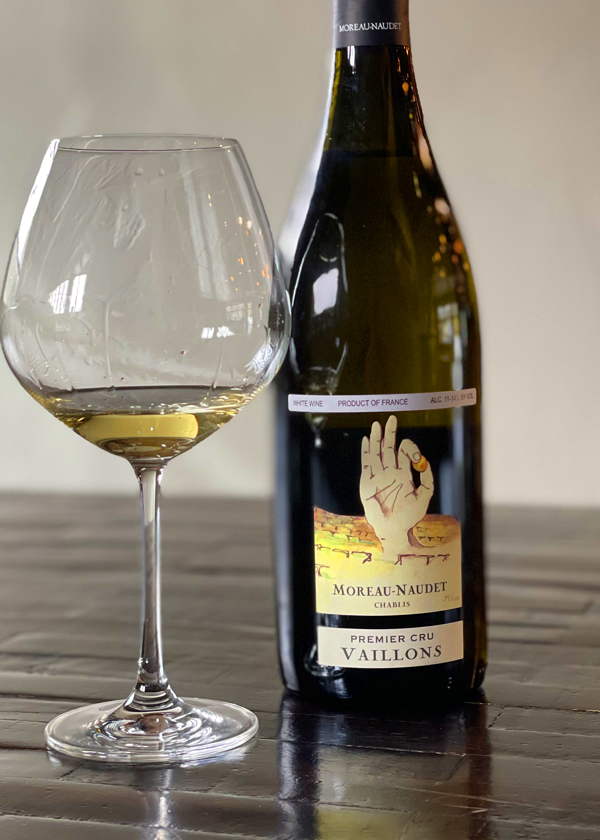
2020 Moreau-Naudet, Chablis, Vaillons Premier Cru, White Burgundy, France.
The 2020 looks like an exceptionally exciting vintage for Chablis and this Vaillons 1er Cru from Moreau-Naudet is a stunning and crystalline effort with chiseled details, mineral driven personality and surprising depth and concentration, more in line with a Grand Cru, making it an awesome value. The nose is flinty, with wet stones, hazelnut and citrus blossom with hints of orchard fruits, leading to a pretty expansive palate of lemon, apple, pear and tangy peach fruits with touches of clove spice, yeast, quince and golden fig. This is far richer and impactful that expected, but still is full of life and vibrant energy, thanks to its natural acidity, it’s unmistakably Chablis, lingering with oyster shell, exotic passionfruit, a faint wood note and bitter lime. The texture, in this Moreau-Naudet Vaillons, is just the right amount of creamy and the mouth feel is everything you’d want in a serious Premier Cru and while young, it delivers the goods and will be easily enjoyed, especially with sea foods and or soft cheeses, I can’t wait to try it with sushi like Toro and or Saba, raw Tuna and Mackerel respectively. Moreau-Naudet’s holdings in Vaillons are tiny, consisting of 35-50 year old vines set on the historic Kimmeridgian limestone and some rocky top soil that gives the terroir influence and class here. While Dauvissat and Raveneau are nose bleed priced these days, Moreau-Naudet continues to be an enthusiasts go to for a bargain in the region, and I suggest you grab as many of these 2020s that you can afford and find, especially this pale Vaillons, which I could not put down.
Things at this estate have not been easy and Virginie Moreau, as noted here, has bravely carried on after the tragic death of her husband Stéphane in 2016 and continues the excellence found at Moreau-Naudet with these 2020s even upping the game to the next level, an amazing achievement and act of courage. As mentioned in prior reviews, this is a winery that prides itself on transparency and old world charm, of the brilliant Moreau-Naudet lineup, the regular Chablis AC is the only wine in their cellar that sees any new oak, helping provide the seasoning for those barrels which end up in the Premier Cru program after the first fill, as was the case here with the Vaillons 1er Cru that saw no new wood. Even so, as Moreau-Naudet’s importer Grand Cru Selections notes, it is always just a few new barrels in that regular bottling and it is not overtly obvious in that wine. These pristine Chardonnays, that show a saline crispness, see a fermentation, at Moreau-Naudet, that is always natural and spontaneous with indigenous yeasts, followed by a long maceration and elevage on lees, which gives a fantastic result in the wine’s textural quality and richness. The Chablis are usually aged for an average of 18 months, depending on the vintage, in a combination of stainless steel and 600-liter French oak barrels and bottled largely unfiltered. The iconic chalky element is well integrated into these wines and this vintage highlights its sense of place to perfection. In the past I’ve noted that these sublime pale straw colored Moreau-Naudet Chablis are excellent as both an aperitif and main event wine, but really I wish I had bought more of this one and I am thrilled to try the basic Chablis too, bravo is well deserved for this captivating effort!
($60 Est.) 94 Points, grapelive
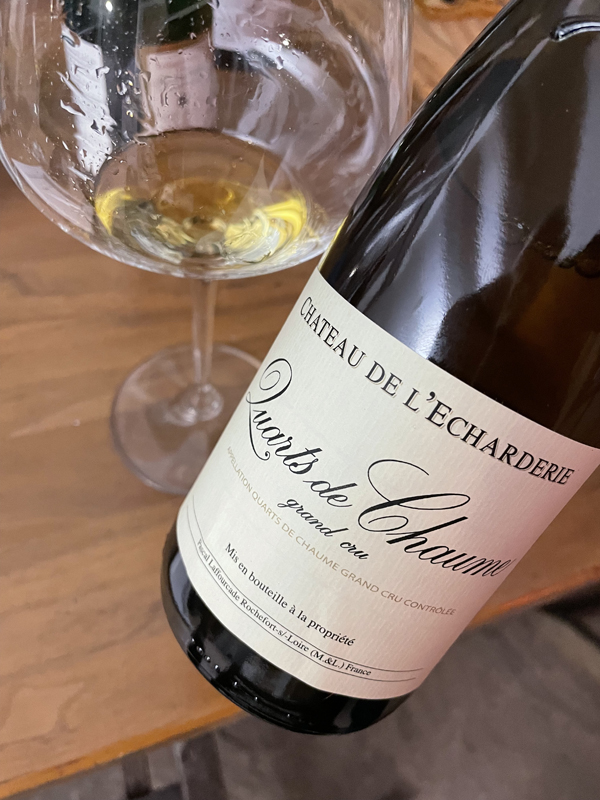
2014 Chateau de L’Echarderie, Quarts de Chaume, Grand Cru, Loire Valley, France.
The beautifully crafted Quarts de Chaume from Chateau de L ‘Echarderie and vigneron Pascal Laffourcade shows a perfectly proportioned sweet palate of lemon curd, peach, quince, dried pineapple and apricot preserves along with classic straw and honeycomb, making it a fabulous dessert wine with lovely concentration, complexity, an elegant round mouth feel and a nice cut of acidity that keeps things in balance. It’s a shame people are so afraid of sweet wines, because wines like this brilliant effort, when paired with the right dishes can be truly extraordinary as this one was with foie gras and a few other goodies, including farm cheese and even a caviar dish. Founded by André Laffourcade in 1958, Chateau de L’Echarderie, uniquely, focuses entirely on sweet wines. After which In 1970, his son Pascal succeeded him taking over the winemaking duties at their Quarts de Chaume estate, Chateau de l’Echarderie, where for almost half a century he has produced exceptional late harvest Chenin Blancs. The Loire’s Quarts de Chaume, Vouvray and Bonnezeaux produce wines that easily rival Sauternes, Barsac and Tokay for quality, though sometimes they get overlooked and they remain incredibly good values.
The Chateau de L’Echarderie sits on 10 hectares of brown schist and sandstone soils in the Quarts de Chaume Grand Cru region, which comprises terroirs on both banks of the Layon River, is owned by the Laffourcade family who have serious holdings here in the Anjou area, including Quarts de Chaume, Bonnezeaux, and Savennières. The Chateau’s Chenin Blanc vines are on slopes with a ripe south/southeast exposure and has optimal conditions for the growth of the noble rot, Botrytis Cinerea, which make these Quarts de Chaume wines some of the greatest sweet wines in the world. To make their Grand Cru Quarts de Chaume the winery hand picks their Chenin, from the schist and sandstone soils here, with grapes seeing passerillé, affected by Botrytis with the must having a minimum sugar content of 323 g/l. All per the rules of the AOC and only 11% alcohol is required here, leaving a good dose of residual sugar not fermented. The wine is soft pressed to barrel at low temperatures and is matured, usually these fermentations take up to six months and the aging goes on well over a year, after which it is cellared for many additional years before release. Just starting to evolve, the golden hued L‘Echarderie with just a hint of oxidation and with some subtle truffle, mineral tones and lingering vanilla oak notes. There’s a ton to admire here, and like Huet’s gorgeous Vouvray Cuvée Constance Moelleux, it deserves much more attention!
($50 Est.) 94 Points, grapelive
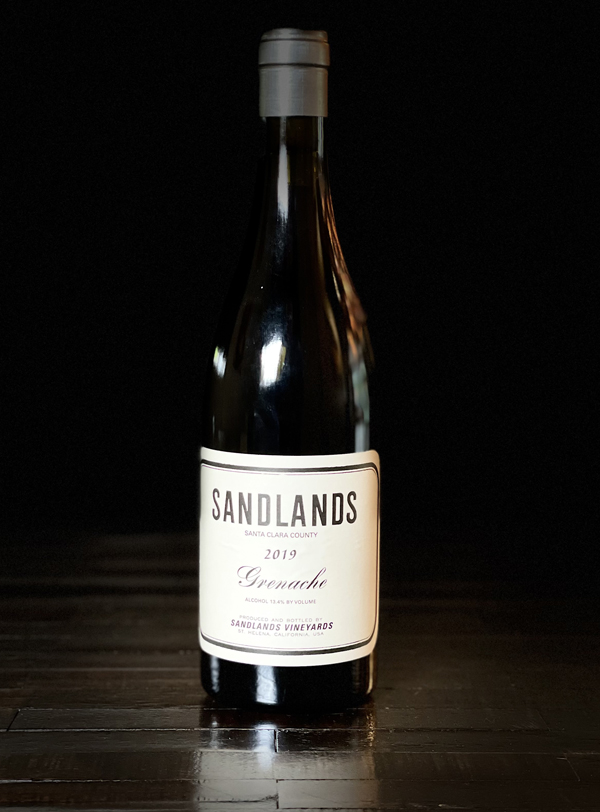
2019 Sandlands Vineyards, Grenache, Besson Vineyard, Santa Clara County.
The 2019 Grenache Besson Vineyard by Sandlands, made by Tegan Passalacqua, who is Turley’s head winemaker and vineyard manager, is bright fruited and aromatic with a medium body and feels a bit lighter and fresher than the prior vintage, but just is as delicious. Just 4 barrels were produced by Sandlands, coming from over a hundred years old vines planted in 1910 on the Besson Vineyard’s loamy deposits, which is influenced by the Uvas Creek. Passalacqua describes this 2019 as having crystalline cherry, dried flowers, plum flavors, which I easily found as well, along with raspberry, pomegranate and a hint of jolly ranger, along with lavender, anise and a dusting of spices. At just 13.4% natural alcohol, this Besson Grenache is an inviting vivid ruby magenta in the glass, it is supple and ripe, making it easy and quaffable in a very appealing style. This year’s version drinks with the elegance of a Pinot Noir and will go nicely with a variety of cuisines, it is more delightful than powerful, very much in the theme of Passalacqua’s effort to craft wines that reflect California’s history and not show any pretense. There’s a sense of youthful juiciness that makes this wine ready as is, but I can see it aging nicely for another 3 to 5 years, though no patience is required to enjoy this well made Grenache.
The historic Besson Vineyard, set in Santa Clara County, is owned and farmed by third generation farmer George Besson Jr, was first planted to the Mission grape in the 1800s, with its its Grenache, planted on its own roots, going in around 1910, and it is this varietal that gets the most attention here. It has been the source of some outstanding wines, with this Grenache vineyard transmitting pure transparent flavors and is a unique terroir, as it does in Tegan Passalacqua’s Sandlands version. Most of this vineyard, which is organic, is set on gravelly soils with clay and loam and is only a stones throw from the border with the Santa Cruz Mountains AVA and sees a nice cooling influence from the Pacific and gets some marine layer fog at night early mornings. In recent times it has had lovingly maintained vines with a focus on quality fruit and natural methods has been sustainably dry farmed ever since it was originally planted. This site, as I have noted in prior reviews of this and other wines from this vineyard, first came to the wine world’s attention when California icon Randall Grahm used these grapes in his Clos de Gilroy Grenache. The Sandlands wines are made with old school techniques using native yeasts and whole clusters with a very handmade approach and the wines see aging in, well seasoned, used barrels, again to promote clarity and a raw charm, as this fine Grenache shows. While pleasing on its own, this Grenache should be paired with food to show off its depth of character, going great with pork dishes and or meaty or mushroom pasta as well.
($35 Est.) 92 Points, grapelive
Grapelive.com – January 2023
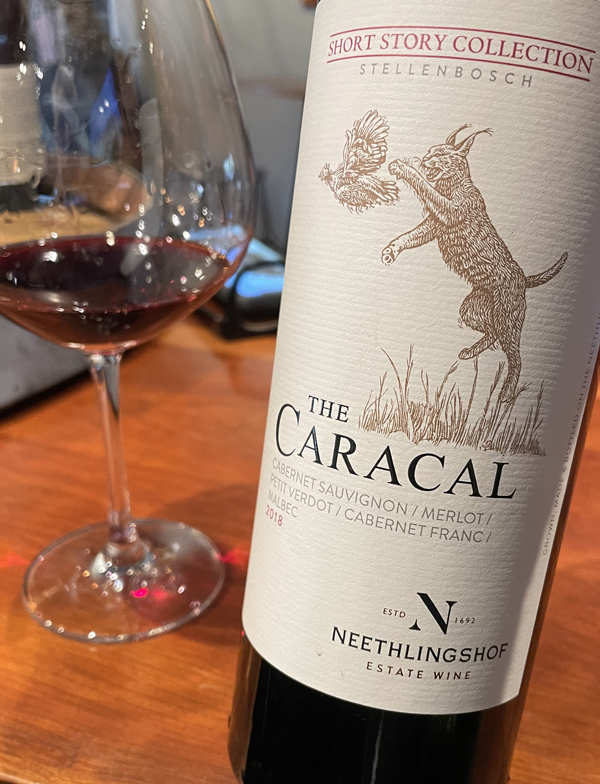
2018 Neethlingshof Estate Wine, The Caracal, Red Wine, Short Story Collection, Stellenbosch, South Africa.
The 2018 The Caracal Bordeaux style red blend from the Neethlingshof Wine Estate, a new winery for me, but one that has been around sine 1892 or so, is remarkably Medoc like, easily mistaken for an Haut-Medoc and or a Saint-Julien Bordeaux with hints of graphite, gravelly loam and black olive to go with some very elegant blackberry, plum, mulberry and kirsch on the medium/full palate. Not all that surprising, but tasted blind, I really guessed left bank here with this old world style effort, it is made up of Cabernet Sauvignon, Merlot, Petit Verdot, Cabernet Franc and Malbec that all play roles with fine grained tannins, a light earthiness, toffee/cedary wood, tobacco leaf, brown spices and dried dark flowers perfectly accenting the core fruit. Those that like Calon-Ségur, Gloria, Branaire-Ducru and Beychevelle will find this Stellenbosch region wine a hugely rewarding and generous bottle of wine and a great value, plus it should age another 5 to 10 years.
The Cabernet Sauvignon led The Caracal Red was picked by varietal and fermented separately using 100% de-stemmed grapes in tank where it saw a selected culture (yeast) for a quick primary and secondary fermentation before being are in toasty/smoky French oak for 12 months, with a selection of new and one time filled hogs head 300L barrels being employed here, after which the different components were blended. Each vintage is slightly different on the final percentages, but usually it sees 50% Cabernet Sauvignon, with this 2018 having a good dose of Merlot, Cabernet Franc (which doesn’t always make an appearance) and Petit Verdot, along with a very small splash of Malbec, all adding to the wine’s complexity. Neethlingshof’s winemaker De Wet Viljoen has produced a really good, ripe and nicely structured offering and it was made adhering to vegan guidelines, for those that search those out. The nose and profile of this The Caracal red again scream of classic Bordeaux and in the glass its deep garnet color is very inviting, it is a wine that will impress for quality and depth, especially with winter cuisine with the winery suggesting it being paired with brisket, casserole and or hard cheeses.
($25 Est.) 92 Points, grapelive
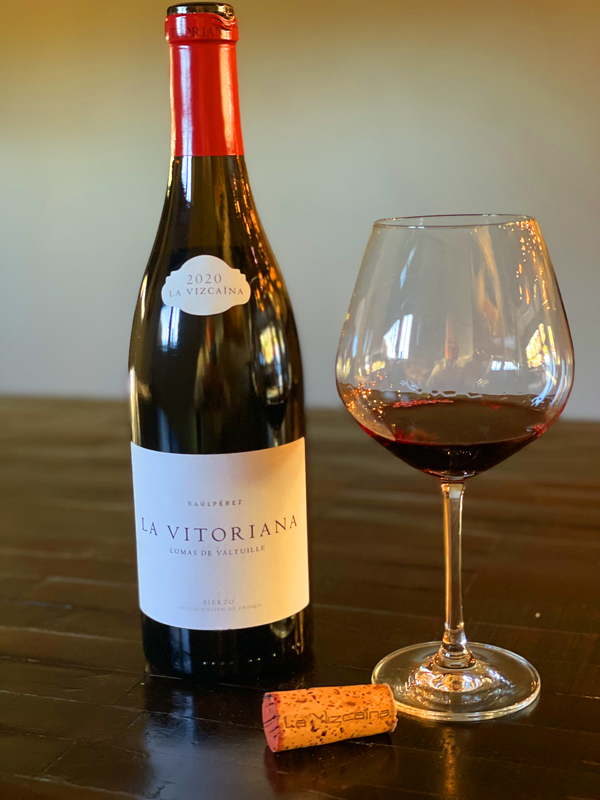
2020 Bodegas y Vinedos Raul Perez, Mencia, La Vitoriana Lomas de Valtuille, La Vizcaina, Bierzo, Spain.
I love this Bierzo La Vitoriana Lomas de Valtuille Mencia with its raw earthy character and complexity with this 2020 showing all of the elements that make it so compelling with a beautiful dark garnet hue in the glass, a dry medium bodied palate and pretty aromatics this vintage very much impresses me, it feels like a step up from the 2016 I last tried back in 2020. The core in this dark fruited and taut wine is black cherry, plum and red berry fruits and is nicely accented by subtle leather, sweet and sour herbs, cedar and dark floral notes with a touch of grainy stoniness and mineral tones. Coming from hardened clay and sandy granite soils in the Valtuille, the La Vitoriana is most all Mencía, but winemaker Raul Perez usually includes other grapes in a field blend, with maybe some Bastardo (Trousseau), Garnacha Tintorera (Alicante Bouschet), Doña Blanca and Palomino (both white grapes) being included. The grapes are all co-fermented using whole-cluster and indigenous yeasts with primary being done typically in large oak vats with two month macerations before elevage in well seasoned French oak barrels, then bottled unfined and unfiltered. Raul Perez, who I’ve been lucky enough to taste with on a few occasions, is the Godfather of Mencia and is regarded as one of Spain’s greatest winemakers, noted for his natural methods and traditional approach.
The iconic Spanish winemaker, Raúl Pérez, as noted here in prior reviews, is one of the world’s most admired vignerons known for his intuitive winemaking genius and natural focus crafting an amazing set of wines from his base in Valtuille de Abajo in Spain’s Bierzo region. Perez, as noted here at Grapelive, who made his first commercial wine at the age of 22, started his own Bodegas y Vinedos winery in 2005 and while producing his legendary wines he has also offered guidance and has been a great mentor to many rising talents throughout Spain, including Veronica Ortega and Pedro Rodriguez of Guimaro, as well as many others. He has also championed the native varietals found in Rias Baixas, Ribeira Sacra, Tierra de Leon and of course in his native Bierzo in the greater Castilla Y Leon zone, but is best known for his work with Mencia, a dark skinned grape usually found in Galicia, like the Ribeiro Sacra, here in Bierzo and in cooler parts of Portugal, it makes for a dark colored red wine with bright acidity and has been compared to Cab Franc, Gamay, Syrah and Pinot Noir depending on its terroir and vintage. This 2020, which is like blending Chinon and Gigondas, is tannic and structured, but pleasingly rounded in the mouth, with a bit of a bite to it, it gets better and better as it opens up and is other worldly with simple country style cuisine, think winter stews, goat shoulder and or lamb dishes, and or hard cheeses, drink it over the next 5 years. One note that should be made clear, is that this wine is a food wine, it folds together best with a meal, making a night and day difference to your experience, not something to forget with these Perez wines.
($40 Est.) 94 Points, grapelive
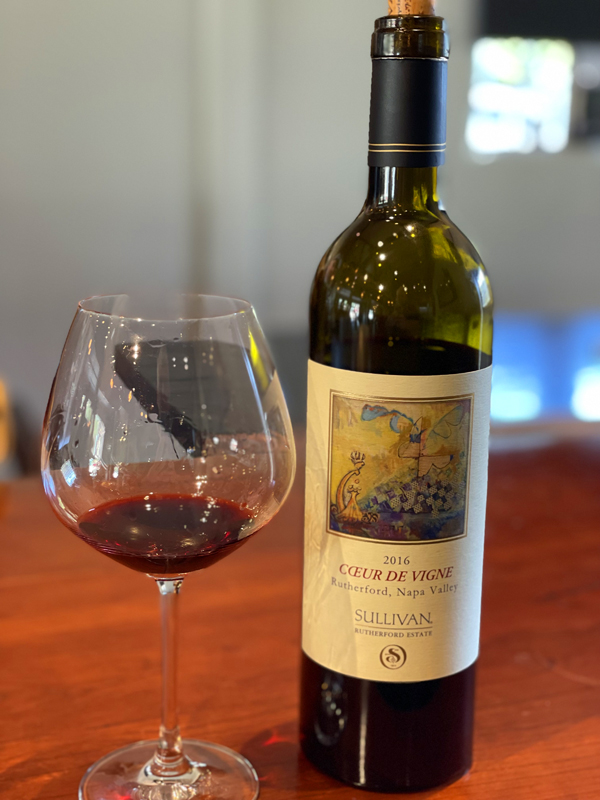
2016 Sullivan Vineyards, Estate Red “Coeur de Vigne” Rutherford, Napa Valley.
One of the most highly acclaimed vintages in recent memory and showing exactly what you’d expect from a top estate in Napa, the 2016 Sullivan Vineyards Coeur de Vigne is a rich and concentrated Cabernet Sauvignon led red blend that delivers a full bodied palate of black raspberry, plum, kirsch, mocha and creme e cassis in a wine with a supple underlying ripe tannic structure and displaying pretty floral, sweet oak and anise accents along with a little bite on the finish. This was the first time in many years, if not decades, of sampling the wines of Sullivan Vineyards and even though it is quite oak driven, I was happily impressed and enjoyed it for its sense of place and the added complexity of the blend its self which features a good dose of Cab Franc that shows up perfectly in the profile, with flashes of elements that reminds me somewhat of Dalla Valle’s legendary Maya, which is high praise for me. In most vintages they would usually be more Cabernet Sauvignon in the final blend, but I really like the dimension and nuance of this version and I don’t think it gives up anything in the overall quality here. I think to get the best here, you’ll want to enjoy this Sullivan Coeur de Vigne Red with a meaty meal, it will perform well with a prime-rib and or herb crusted rack of lamb.
The Coeur de Vigne, heart of the vine, is a beautiful Bordeaux blend of 50% Cabernet Sauvignon, 24% Merlot, 19% Cabernet Franc, 5% Malbec, and 2% Petite Verdot all grown on the highly regarded Sullivan Estate in the Rutherford AVA of Napa Valley, grown on the “Rutherford Dust” and gravelly loams on the famous bench between Oakville and St. Helena, where Cabernet is king for obvious reasons, it is one of the greatest spots on earth for this varietal, producing a very distinctive style, maybe Napa Valley’s version of Margaux. Heros of historic Napa Valley winemaking, namely Captain Niebaum (Inglenook) and Georges de Latour (BV), landed in Rutherford in the late 1800’s and turned this farming region into the center of America’s elite wines. The Sullivan Vineyards was purchased from the famous Galleron family by James O’Neil Sullivan, a visionary who with the encouragement of friend and legendary winemaker André Tchelistchef, also of BV fame, planted Merlot and Cabernet Sauvignon vines. These, plus the other Bordeaux varietals were planted in gravelly-sandy loams here that was the historic divide between the two original land grants that made up the old Napa Valley. Sullivan follows modern trends now with ripe grapes and lots of toasty new French oak, making for a wine of more immediate pleasure and chocolatey soft tannins, but there is nothing to be disappointed with here, drink over the next 3 to 5 years.
($90 Est.) 93 Points, grapelive
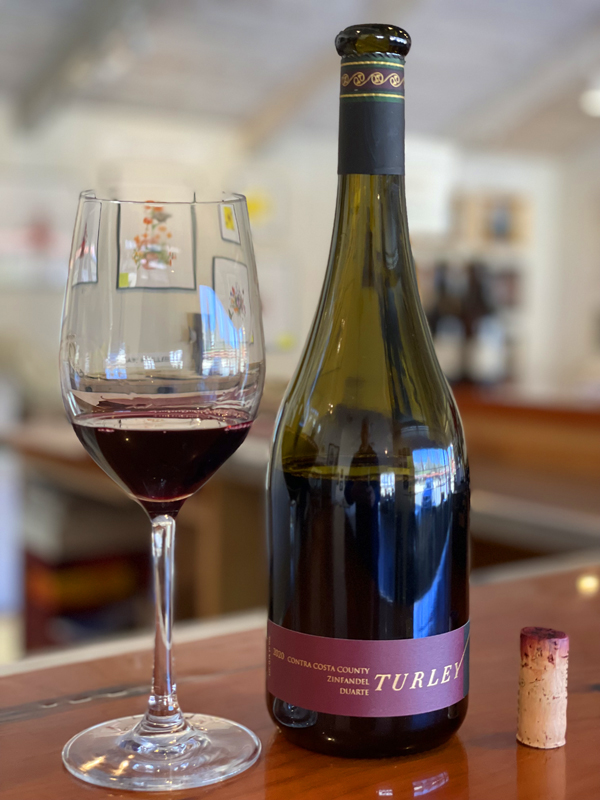
2020 Turley Wine Cellar, Zinfandel, Duarte, Contra Costa County.
There’s a lot to love in Turley’s latest set of wines, and these 2020 vintage offerings are some of my favorite Zins of the year and while lots of problems from smoke affected 2020s, Turley’s Zins, which were picked before any taint settled in and the fact that winemaker Tegan Passalacqua didn’t take any chances, were made from the most severe selections ever. This is great news for Turley fans, especially wines like this Duarte, which was crafted from only the best selections of old vine grapes and shows amazing purity, aromatics and a lush texture, but with a fine balance, spice, smooth wood and mineral accents. Loaded with black raspberry, currant and plum fruits, the Duarte Zinfandel, which comes from a collection of Contra Costa’s best vineyards set on the Delhi Blow Sand, deep decomposed granite soils, lingers on the palate with snappy briar, sandalwood and dark kirsch liqueur. This satiny dark purple bottling is moving up on my must have list in the Turley lineup, it is a stellar wine and has Tegan’s signature terroir driven character and classic Turley hedonism on the full bodied palate, this is absolutely delicious and impactful stuff.
The Duarte Zinfandel pays homage to Joe Duarte, who as a prominent grape grower in Contra Costa, was first person to introduce Larry Turley to the incredible vineyards of the Contra Costa. The wine, as Turley notes, is comprised of fruit from the turn-of-the-century vineyards, including Evangelo, Mori, Del Barba and Salvador, several are ungrafted and date back to the 1890s. Thanks to the windswept sandy soils and impressive age of the vines, this bottling delivers some of the softest, silkiest tannins Turley has ever seen in a Zinfandel, while still having structure and age worthiness. These Zin vines, with the oldest coming from an ungrafted 1890 parcel and the youngest being a plot planted in 1960, also include a few Carignane, Granache and Mataro plants interplanted here and are all traditionally head-trained, dry farmed and mostly organically farmed. For this Duarte the winemaking is the same as all of their Zinfandels with a native yeast fermentation and was aged 15 months in 80% used barrels with just 20% new and are a combination of American and French oak, with Passalacqua favoring the French oak, which was 80% of the lot, all of which allows for transparency as well as giving the wines a sense of luxurious mouth feel and clarity. Turley first made their Duarte in 1995 and continues today to be one of their most distinct examples, with 2018, 2019 and 2020 versions all being outstanding!
($45 Est.) 94 Points, grapelive
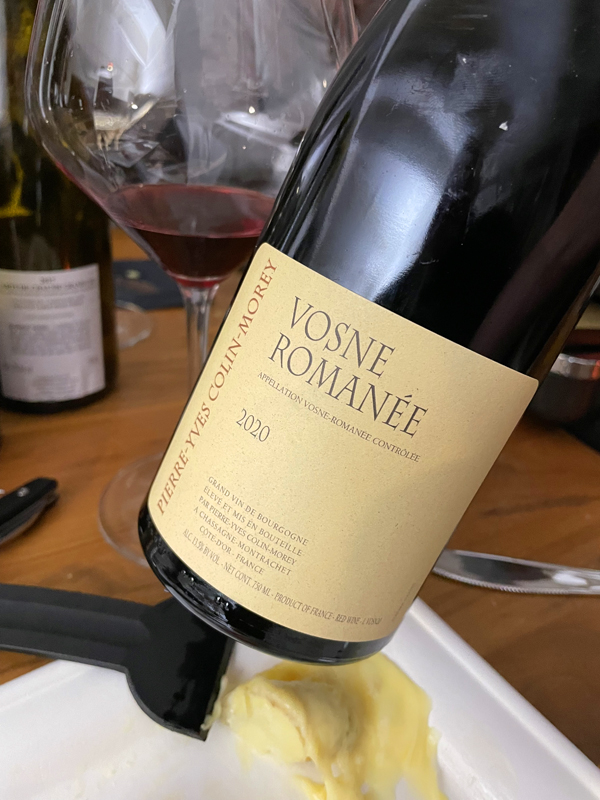
2020 Pierre-Yves Colin-Morey, Vosne-Romanée, Red Burgundy, France.
The new Vosne-Romanée from Pierre-Yves Colin-Morey is noticeably plush, rich on the palate and luxuriously, almost, forward with classic Pinot fruit at its core and lovely aromatics, it is bang on right out of the bottle without a hint of reduction, as found in the PYCM whites, and is very pleasurable in its youthful form. The medium bodied palate is nicely detailed and elegantly structured showing layers of silky black cherry, vine picked raspberry, red currant and Moro orange fruits along with deep floral element with rose petal and violets, as well as chalky mineral, smoky vanilla and tea spices. This round and supple red Burgundy, coming from limestone and clay soils, feels very open knit and expressive, even without decanting and hides some of the underlying earthy qualities that should come through with age, some would enjoy this and think it was maybe a new world wine, but I think over the next 5 to 10 years its pedigree will shine through and there will be not mistaking it for what it is, a pure Vosne-Romanée, I only hope I get a another chance to try it with some age. Typically, for his Pinots, Pierre-Yves Colin-Morey uses a good percentage of whole cluster, up to 50%, and ferments them with native indigenous yeasts and allows a long evevage, around 18 to 24 months, in used French oak. With his village level bottlings he ages the wine with between 10% to 20% new wood and prefers the standard 228L barriques, rather than the larger format demi-muids he favors in his crystalline whites. The wines are all and always bottled unfined and unfiltered to preserve every nuance of the vintage and of the place.
Part of a Burgundy dynasty, Pierre-Yves Colin, who is the eldest son of legendary Marc Colin, has built a huge reputation for outstanding wines all on his own. It’s well noted, that after working as the winemaker at his father’s domaine from 1994 to 2005, he established his own domaine alongside his wife Caroline Morey, also a talented winemaker and part of another historic family in the region, from vineyards they inherited from those well know families, that are part of the fabric of French wine royalty. It’s not new news, but Pierre-Yves has become an icon in the Cote de Beaune and is one of Burgundy’s best producers, especially well regarded for his intense whites. His fanatical attention to detail in both cellar practices and with the farming, has helped make his wines some of the most coveted by collectors, wine industry pros and by other producers. Colin-Morey’s unique use of larger demi-muids barrels, and long elevage, makes each of the wines distinct, pure and with a transparent expression of its terroir, most clearly showcased in his mineral-driven Chardonnays, but not as well know in his reds too, though I always find them impeccably made and elegant, like this luxurious and floral Vosne-Romanée. The Saint-Aubin whites are still some of the greatest values in white Burgundy, while the upper end Meursault, Chassagne and Puligny Montrachet(s) are almost impossible to acquire here in the states, without an in with the importers or a famous restaurant. The reds, again, that sometimes get overlooked, are excellent and are lovely when they are young as this one was recently. The Vosne-Romanée village vines are in between Echezeaux and Nuits-Saint-Georges and just below the famed Romanée-Conti, La Tâche, Romanée-Saint-Vivant and Grands Echezeaux Grand Crus, to name a few in the neighborhood, and offer up some of the Cote de Nuits best values, like this one!
($139 Est.) 93 Points, grapelive
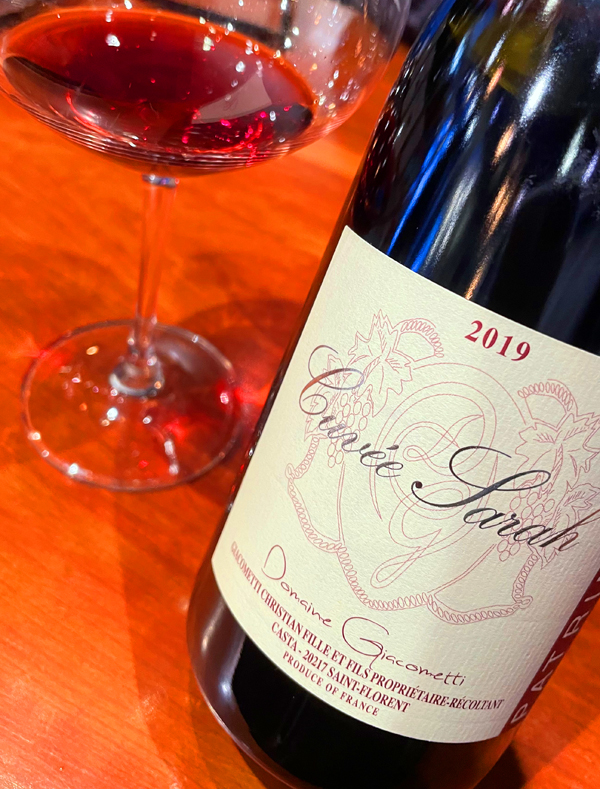
2019 Domaine Giacometti, Patrimonio Rouge, Cuvée Sarah, Corsica, France.
Christian Giacometti’s wines are getting better and better with each vintage I try and this 2019 Patrimonio Cuvée is another fantastic effort from this domaine with rounded supple tannins and exciting dark berry fruits, mineral tones, pretty floral aromatics and a mix of spice and savory dryness. The palate is just about full, showing black raspberry, plum and black cherry and strawberry fruits, along with brambly and briar laced accents, including a hint of earth, tobacco, anise and subtle cedary wood. This dark ruby/garnet wine is a blend of 90% Niellucciu, 7% Sciaccarellu and 3% Grenache, grown on clay and granite soils, which is wonderfully fresh and textural in the mouth and fills out more completely when enjoyed with a meal, especially simple winter stews and grilled meats, as well as being terrific with hard cheeses. Kermit Lynch, the famed Berkeley importer, has really invested time and attention to these Corsican wines with many gems in his collection and Giacometti is one of the most authentic and offering good value for the money. After spending years of constant and heroic labor to make wine in an inhospitable land, as Kermit notes, Christian and now his daughter Sarah and son Simon have continue to produce unique and eminently drinkable Patrimonio, like this one. While mostly working with Niellucciu, Corsican island Sangiovese, Giacometti are experimenting with Sciaccarellu, another Tuscan grape, which is also known as Mammolo, with expanded plantings (extremely rare for Patrimonio) now featuring in their wines, along with Grenache, which adds to fruit density and body in the wines.
The Giacometti Patrimonio Rouge “Cuvée Sarah” is named for Christian’s daughter and is sourced from mature, 45 year old vines that are all hand tended using organic farming and holistic methods in the vineyard and is fermented with 100% natural indigenous yeasts with all the grapes being de-stemmed and saw a gentle maceration period. While most of the Giacometti see some stainless steel aging, this one does not, it was aged in very old French oak barriques for 12 months before bottling, making it one of the most serious and age worthy wines made here at Giacometti, and this 2019 is exceptional stuff and totally alluring in the glass. While Giacometti is focused mainly on the reds, they also do a fine set of Vermentino wines, along with a tasty Rosé, which adds a nice range to the collection. When I first discovered Giacometti I also really enjoyed their special island rarity 100% Syrah Vin de France Rouge “Sempre Cuntentu” before exploring their full lineup of AOC Patrimonio offerings. I really love all of the wines and wineries in Kermit Lynch’s excellent portfolio, these are world class efforts that go way beyond the expectations, I recommend sampling all of them, especially Clos Canarelli, Yves Leccia and Domaine Comte Abbatucci, which are highly coveted producers, as well as Giacometti, which is more of a sleeper in this high quality set. To get started, I suggest getting a selection of the easy to drink Faustine bottlings from Domaine Comte Abbatucci as well as Giacometti’s Agriate cuvées, which are great values and impeccably made wines, along with the exotic amphora raised Clos Canarelli Corse Figari bottlings. Each of these three are on distinct soils and have their own terroirs, making them very individual wines.
($40 Est.) 93 Points, grapelive
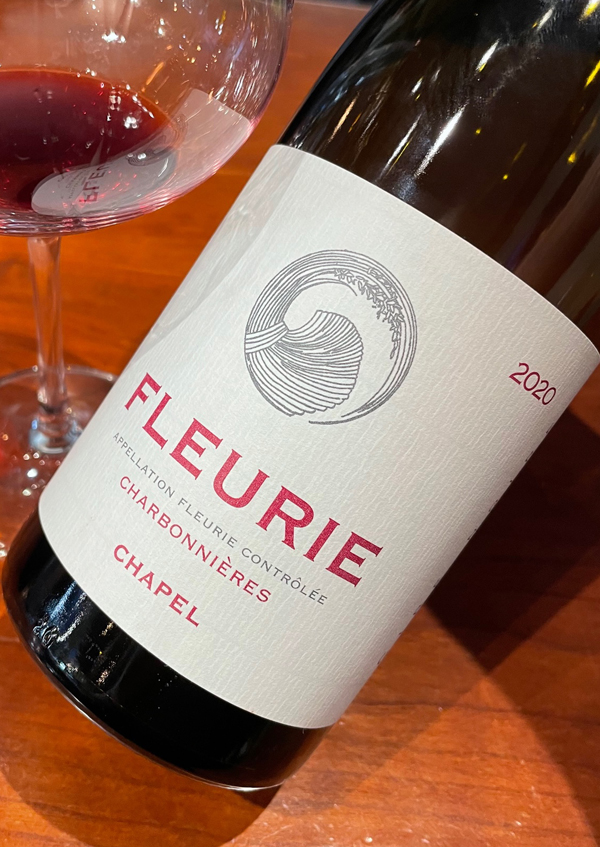
2020 Domaine Chapel, Fleurie, Charbonnières, Cru Beaujolais, France.
The Charbonnières Fleurie by Domaine Chapel, an all new wine for me, is beautifully aromatic and juicy on the medium bodied palate with clean fresh layers of red berry, plum, strawberry and cherry fruits along with vibrant acidity, mineral tones, peony florals and a very delicate earthiness, making for an elegant and refined Fleurie that lingers on the finish with dried herbs and subtle spices. This wine is sourced from the Charbonnières vineyard, which has mature vines over forty years old and at an elevation close to 400 meters up with a nice southwest exposure and set on Fleurie’s unique pink granite soils, along with a scattering of sand and stones. This vividly dark ruby colored Gamay was the result of terroir and transparency in the winemaking here, which saw 100% de-stemmed grapes, indigenous yeast whole berry fermentation, which feels carbonic and ultra smooth, all done in cement and aged in a combination of the cement, as well as different sized used French oak casks.
The Domaine Chapel was founded by David Chapel and Michele Smith-Chapel in the cru village of Régnié and have had the help of the famous Domaine Lapierre’s Mathieu and Camille with the two New Yorkers moving to Beaujolais to pursue their dreams of making naturally style Gamay wines. David Chapel, while working at Domaine Lapierre in 2013 met his future wife, Michele Smith, a well known Brooklyn wine director who along with David fell in love with the wines and the place. They were able to purchase some Gamay vines, with their Charbonnières flagship wine coming from an old vine plot in Fleurie, this along with plots in Juliénas and Beaujolais-Villages, which the Chapel’s making a set of wines that see meticulous attention to detail in their cellar. Domaine Chapel created a buzz with their very first wine, their 2016 Juliénas “Côte de Bessay” and now with a few more vintages under their belt things are looking good here and the 2020 Charbonnières Fleurie will impress Gamay fans with its purity and delicious nature. I very much enjoyed this year’s Domaine Chapel and can easily recommend this one for Beaujolais and Gamay fans.
($40 Est.) 91 Points, grapelive
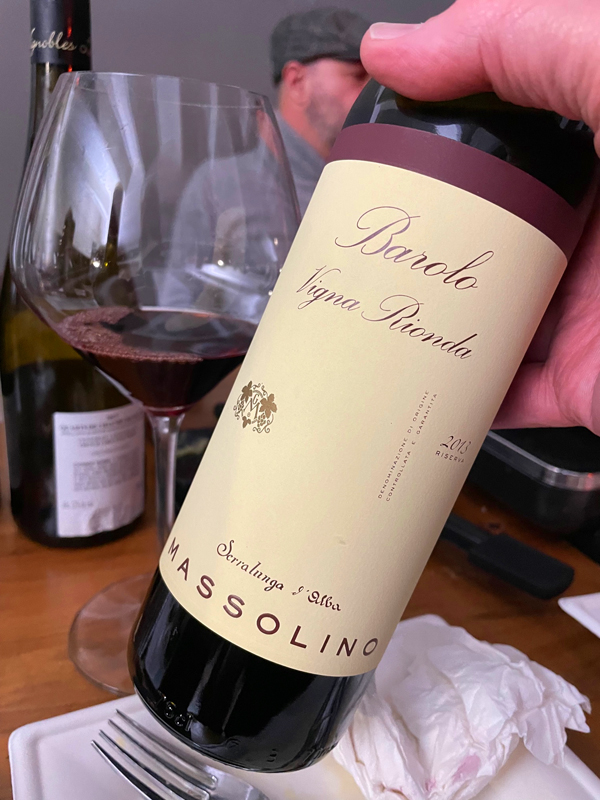
2013 Massolino, Barolo DOCG Riserva, Vigna Rionda, Serralunga d’Alba, Piedmonte, Italy.
Massolino’s Vigna Rionda Riserva 2013 is remarkably involved and tight as nails, more like a 2010, than what I expected from the more generous vintage, but that said this bottle is outstanding Barolo that will cellar another 25 years and will prove rewarding to those that have hit tucked away. So shy and austere to start, once opening up this pure Nebbiolo takes you on a journey in the same vein as a Grand Cru Burgundy in terms of class and depth, gaining in all areas from nose to finish and everywhere in between with a powerful structural presence in the glass to go with this wine’s dark garnet hue, this is very serious stuff. The mouth and full bodied impact are clearly terroir influences, with Vigna Rionda’s signature intensity, this vintage shows damson plum, black cherry, currant and mulberry fruits along with hints of tar, briar, anise, grilled orange, dried flowers, chalky earth and sandalwood. The tannins are drying and add a taut backbone, this Barolo is very classic and old school without the more modern luxurious smoothness that some Barolo show off these days. The 2013 Massolino Vigna Rionda Riserva is capable of greatness, best to give it another 3 to 5 years at least, but if you do pop the cork here I highly recommend an hour or so in the decanter and serve it with a robust meal and or meaty dishes to get the very best experience. Coming from 50 year old vines set up at over 300 meters above sea level the Vigna Rionda is a complex, ripe and concentrated wine, making it one of the region’s biggest and most coveted stars!
Sometimes overlooked, Massolino is one f the elite producers in the Langhe and have a long history, dating back to 1896, in making Alba’s famous Barolo and the family was instrumental in forming the establishment of the Consorzio di tutela Barolo e Barbaresco in 1934, as well as recognizing the quality of Dolcetto in Dogliani. In was also, according to the winery, that in 1934 that they started bottling small amounts of estate wines. Massolino first acquired their flagship parcel of Vigna Rionda back in 1956, with Giuseppe, the grandfather of the current Massolinos, falling in love with the cru Vigna Rionda, which at that time was lesser known. Massolino is all about the Serralunga d’Alba region and their holdings and wines represent this area to perfection. The first Barolo DOCG Vigna Rionda Riserva was back in 1982 and remains the most collectable wine in the Massolino collection, and not wanting to rest on their laurels they continued to buy up plots in the Vigna Rionda, adding more vines in 1985 and 1987. In recent years, Massolino have built new cellars and have purchased hillside vines in Barbaresco to expand their Nebbiolo offerings. The Vigna Rionda, which dales back 1340, got its name from the rounded shape of the hill where it is located, near Serralunga d’Alba and is set on clayey marl mainly with classic limestone and sand, being formed from ancient seabed and millions old year old marine sediment. The Vigna Rionda Riserva, a blue chip wine for collectors, was made with a long fermentation and maceration in oak vats and then aged in large Slavonian oak barrels for up to 42 months, as the winery notes, after which this Barolo saw a further 24 months in the bottle, allowing for a wine of awesome potential as this one certainly has.
($189 Est.) 95 Points, grapelive
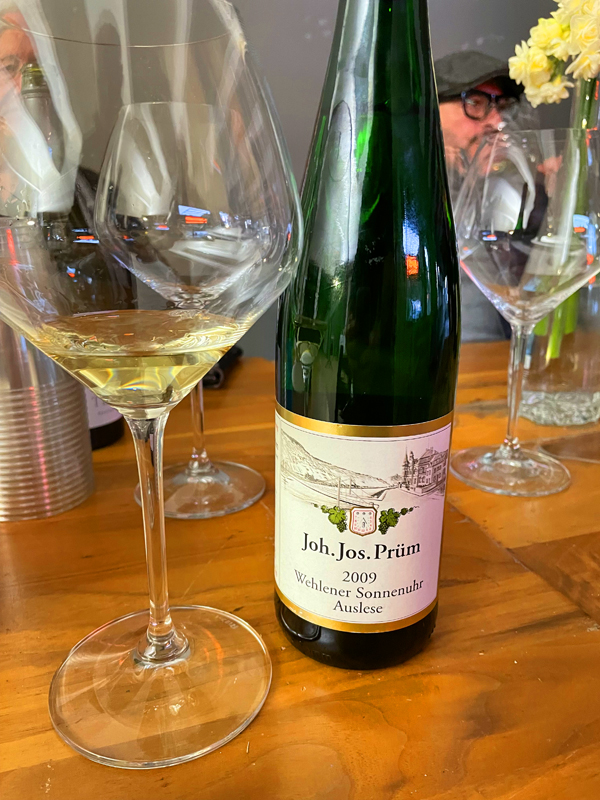
2009 Weingut Joh. Jos. Prüm, Riesling Auslese, Wehlener Sonnenuhr, Mosel, Germany.
In the world of wine, Katharina Prüm is a star and the J. J. Prüm winery is legendary, noted for traditional Mosel Riesling with incredible aging potential and this 2009 Wehlener Sonnenuhr Auslese is just beginning to show its quality and is remarkably fresh still, plus it doesn’t feel overly sweet on the palate and while pure class with Foie Gras when I tasted it, it certainly would have been just as awesome with either Vietnamese ginger beef or Korean BBQ pork! The Prüm’s are old school and prefer their Mosel Rieslings with significant residual sugar, Manfred, Katharina’s dad, who really brought fame and world attention to these wines makes no secret of his longstanding disinterest in legally dry wines, he and now his daughter make uncompromising and unapologetic sweet Rieslings, but that have fine balance, as this one has. This excellent wine shows an exotic nature with tropical notes from nose to palate and has lovely textural finesse and dense fruit concentration, but with a surprising burst of lively acidity, which is in a warm vintage very welcome, it shows apricot, lemon, non botrytis honey, clove spice, crystalized ginger, rosewater, flinty mineral and wet shale. The sugar is well integrated and as mentioned more creamy in essence, obviously not a dry wine, it drinks more like a Spatlese at this stage and being as fresh as it is I imagine it has two or three decades of life ahead of it. The Joh. Jos. Prüm winery, which was founded in 1911 in Wehlen, prefers 100% spontaneous fermentation with almost all being done in stainless tanks with usually about a year or more of lees aging in the upper end bottlings as this one. Thanks to Jerome Viel of Jerome’s Valley Market in Carmel Valley for sharing this stunning wine with a select group of wine lovers along with some other delicacies that he has available in his ever growing cellar there.
The Wehlener Sonnenuhr Vineyard, a top cru above the village of Wehlen, is named after the sundial erected in the vineyard in 1842 by Jodocus Prüm, an ancestor of J.J. Prüm and the current Prüm family, to give the workers a better time orientation as they work the awesomely steep slopes here above the Mosel River. This site is well known to Riesling enthusiasts and is maybe the signature expression of the Joh. Jos. Prüm estate along with the famous Graacher Himmelreich, it is set on classic deep, weather-beaten grey slate soils and old vines with an almost impossible 70% gradient, and its prime south-south-west exposure, making for intense and ripe Rieslings. The house style at Joh Jos Prüm has become the archetype Riesling of the Mosel region, along with Willi Schafer and Selbach-Oster these are wines of delicacy and restrained sweetness, though most wineries here now include excellent Trocken offerings and some very coveted GGs, without the Prüm’s as of yet. These J. J. Prüm wines can be very good young, but really are made for aging, with the Prüm’s themselves not wanting even their Kabinett bottlings to be opened for a dozen years or more and they would seriously question opening this 2009! Regardless, this Wehlener Sonnenuhr is magnificent and otherworldly, beyond even my high expectations, which I have because of my experience with many of Germany’s greatest wineries and a personal love J. J.Prüm, which dates back more than 20 years now. These noble efforts are typically fermented and aged in stainless steel to promote absolute clarity and precision here and have the benefit of low sulfur, capturing yeasty richness, as well as the terroir, they are nothing sort of brilliant, as I was once more shown here with this 2009 Wehlener Sonnenuhr Auslese! I highly recommend looking for wines by J. J. Prüm that have a few extra years on them, unless you are the patient Riesling fan that can hold your bottles, then buying the new releases can save you some money.
($125 Est.) 96 Points, grapelive
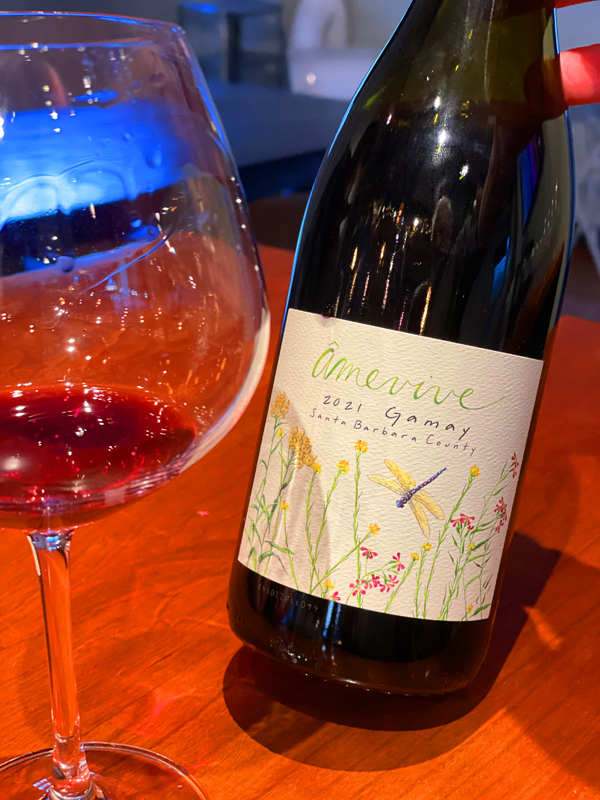
2021 Âmevive Wine, Gamay Noir, Santa Barbara County.
The intensely bright and crisp Gamay from Alice Anderson at Âmevive Wine is a light translucent ruby in the glass with an almost Jura like character and it is impeccably varietal at its core with pure Gamay flavors, led by dark berry, strawberry, sour cherry and wild plum fruits as well as zesty acidity, crunchy herbs and cut flowers. Light and lively, this fresh red enjoys a slight chill and goes nicely with a range of cuisine, but prefers simple and easy foods. Alice says, this wine is made entirely of Gamay clone 358 planted at Shokrian Vineyard in Los Alamos, a vineyard that is farmed all organic and set on clay based sandy loams that brings out fruit concentration, while the vintage brought plenty of energy as this wine shows. Anderson chose to pick with lower sugars and high acid for her Gamay after which she fermented it with whole cluster and indigenous yeast in open top barrels with pour overs durning a three week maceration. Once things were dry she pressed the wine and put it in used French oak, without sulfur, for about 6 months before bottling it unfiltered. This is pretty stuff, coming in at 12.8% natural alcohol and it is drinking very good, sadly only 80 cases were made and it is going to be a tough find at this point.
As noted in my prior reviews of this new label, the Âmevive name translates to soulful and or the living soul and in winemaker Alice Anderson’s case it means to live soulfully with nature, with her wines being an authentic and transparent extension of that. Alice is hands on in the vineyard and she is in tune with each and every vine and parcel, with this connection being her mission, and this wine is a direct of this relationship. Anderson is, as mentioned, focused on holistic and organic grape-growing with a nod towards full regenerative farming practices and certification. The journey is just beginning for Alice and her partner Topher, who have leased 10 acres, since 2020, the vintage of their first releases, at the Ibarra-Young Vineyard that they farm to make their signature Âmevive wines, which are all very limited offerings and only available on their mailing list, I recommend joining it to get a chance at trying these delightful wines. I have really liked what I’ve tasted so far from Âmevive, these are transparent and dynamic wines that don’t need any showy elements too be enjoyed and I am excited to see what they have in store for the future. Again this Gamay Noir is quaffable and has that Jura style lightness, but still complex enough to entertain the palate, it was even better on day two, gaining a bit of weight and concentration.
($34 Est.) 90 Points, grapelive
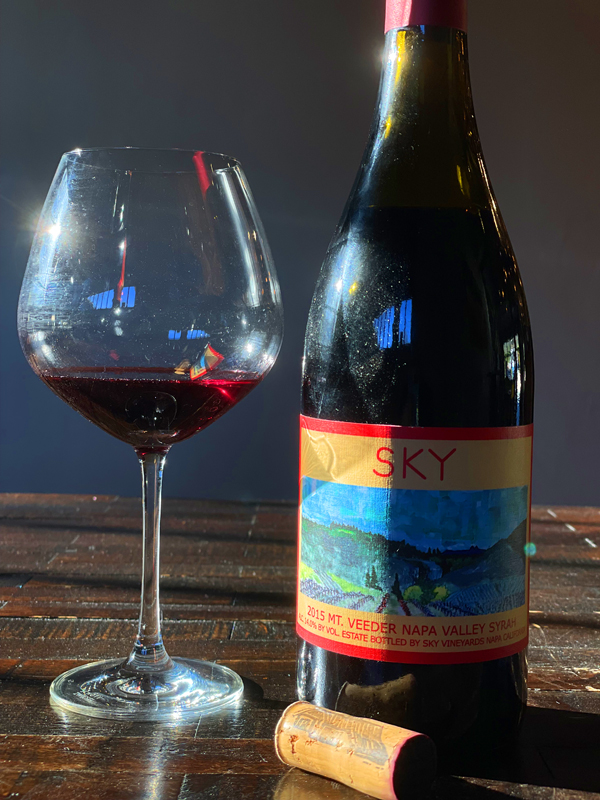
2015 Sky Vineyards, Syrah, Mt. Veeder, Napa Valley.
The beautifully evolved, inky dark and unique mountain Syrah by Sky is delicious and showing off its distinct and soulful personality with layers of crushed blackberry, plum, currant and blueberry fruits along with earthy mushrooms, leather, minty menthol, wild herbs, dried flowers, anise and cedar accents in a wine that starts with certain shyness, before slowly blossoming in the glass. The age has smoothed the raw and rough edges and the tannins are now modest, but there is still some drying grip and enough natural acidity to give this wine a crisp detail and the finish lingers with some sweet tobacco leaf and mocha note, making for a purely Californian version of this varietal and a wine best enjoyed with a hearty meal and plenty of protein richness. Sky, mostly known for their Zinfandel, does an interesting and entertaining Syrah and usually offers it with some nice cellar age, allowing the wine to be purchased with a nice mature profile, as this 2015 has, it is drinking in a near perfect spot right now. I see that Sky has some 2012 available as well as a new Zin release from the 2017 vintage up now, both should be very entertaining too, you can view the latest stuff on their website.
Sky sits up at over 2,000 feet and gets a lot of day sun with its eastern facing slopes, while the night bring a refreshing cooling influence up here and the terroir is flavored by the volcanic red soils, which provides complexity and a sense of mineral and spice to the wines. The intense mountain grapes here are all hand-harvested by family and friends and fermented in open top one-ton bins with indigenous yeasts naturally. Punch downs are, as expected, performed by hand three times per day to extract all the deep color and flavors. After fermentation, Sky notes, the wine is then pressed old school in a traditional small basket press and then aged in mainly well seasoned used French oak barrels. The vines are tended with holistic methods, all organic and the winery is totally off the grid, relying on solar panels and maybe the generator if needed, all to reduce the effect on the environment and be good friends of nature. These Sky wines, made by Lore Olds, are California classics and I always enjoy them with a huge smile on my face, they provide a raw pleasure that is not always easy to find these days. Bottled without filtration, there is plenty of sediment to be found, best to decant, especially the older wines, but it is worth your effort. These hand bottled and labeled wines are authentic and honest wines, sold direct, that are very fairly priced, I recommend checking them out as soon as possible.
($50 Est.) 91 Points, grapelive
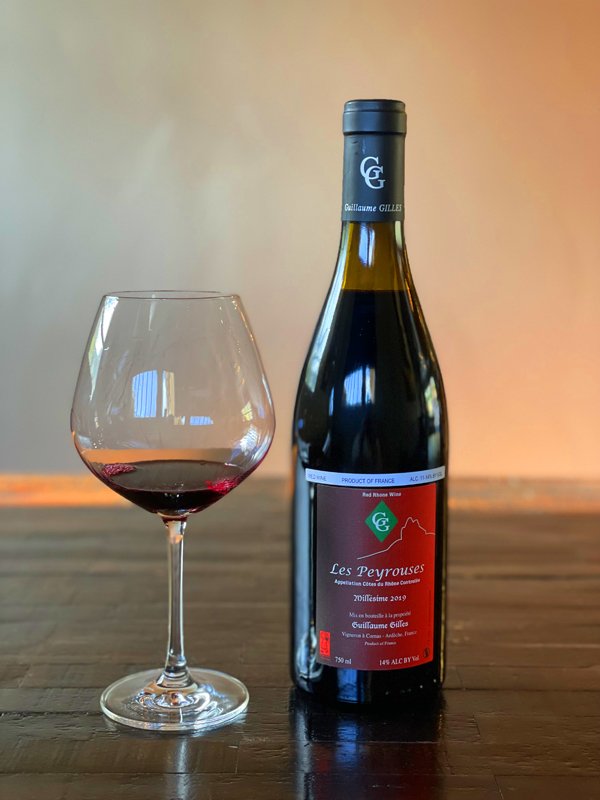
2019 Domaine Guillaume Gilles, Cotes du Rhone “Les Peyrouses” Northern Rhone, France.
The sexy, aromatic and Cote-Rotie like 2019 Les Peyrouses Syrah, now labeled as Cotes du Rhone, by the rising star and wildly talented Guillaume Gilles is actually a full on Cornas from mature vines and is exceptionally beautiful stuff, not far off the domaine’s notable and coveted top bottling with a heady perfume of crushed violets and expressive boysenberries on the nose which echo onto the opulent full bodied, but structured palate, adding damson plum, Italian cherry, briar laced raspberry compote and tart blueberry fruits as well as stemmy savory elements, peppercorns, black olive, anise, tobacco, cedar and faint smoky mineral notes. The finish is very impressive, persistent and dry with a taut grip, best to decant and have with sa serious meal, there is tons of purity to enjoy here, along with a nice cut of acidity, and the Les Peyrouses should continue to develop for another 5 to 10 years in bottle, this wine, in the old school, Jamet, Clape and Allemond style is worth every penny and the almost impossible task of finding it! Gilles, now almost 40, notably studied under the famed Jean-Louis Chave, of Hermitage and in his rustic old cellars he ferments his Syrah with 100% whole clusters and full stem inclusion with all native yeast in concrete vats with hand pilage and lengthy, 20 day, macerations before the wine is small vertical basket pressed to old 600L demi-mouds for aging, which is usually a minimum of 18 months. Guillaume works with ultra low SO2 and the is almost never racking during the elevage, only just prior off the gross lees, and his wines are all unfined and unfiltered as to show every terroir nuance and give transparency to each bottle.
The Guillaume Gilles Cotes du Rhone Les Peyrouses is from an old vines parcel on the flats in Cornas, instead of the high slopes where the main estate wines come from, though in some vintages, this bottling, 100% Syrah is every bit as alluring as the more prestigious Cornas and is a tremendous value, as this 2019 shows. The soil at this site is sandy and mainly clay, though it has large “galet” stones, which hold heat, scattered within and add to the wine’s depth, concentration and supple tannin. The vinification for the Les Peyrouses is almost exactly the same as is used for the elite full Cornas wines as made in this cellar and you can tell this is more than the label advertises. Guillaume came on the stage after being mentored by the legendary Robert Michel and who’s cellar he took over, along with some awesome vines here, with Gilles now boasting highly coveted vines that are situation on the higher slopes of the Chaillot vineyard, with the best exposures and more complex soils. Not done with that, Gilles now has his Les Rieux, a vineyard situated up above the main amphitheater of Cornas, up at 450 meters, this high altitude and cooler parcel is maybe the future of this winery with an intriguing potential, especially with climate change. Guillaume got the virgin Les Rieux in 2010 and immediately planted vines on its unique white granite soils, which had never before had grape vines. So things are very exciting here at Guillaume Gilles and the wines keep getting better and better, while still capturing the historic sense of place! Guillaume has also acquired a tiny plot of 40-year-old Gamay vines which are planted on pure granite at nose bleed heights in the Ardeche, it produces a micro amount of wine and might be one of the most rare and sought after Gamay wines in France, and I’m still begging to find a bottle! As you can tell, from this review and my past reviews here, Guillaume Gilles, who debuted in 2007, is a favorite and I love these wines.
($59 ESt.) 94 Points, grapelive
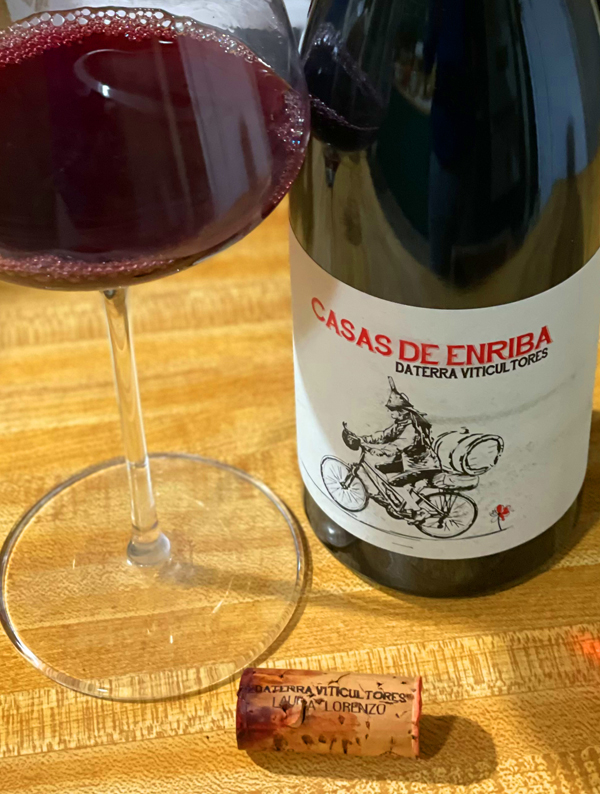
2019 Laura Lorenzo – Daterra Viticultores “Casas de Enriba” Vino Tinto, Valdeorras, Spain.
One of my favorite producers, Laura Lorenzo in Galicia, is continuing to put out brilliant and nuanced wines from the Ribeira Sacra, Val do Bibei and Valdorras regions and impossibly steep and remote vines, mostly Mencia, for her reds, as found in this Casas de Enriba Vino Tinto, as well as whites made of Godello and Palomino, all naturally pure and transparent in style with fresh acidity and unique charms. This ruby and garnet hued 2019 is bright and tangy with sharp red fruits, cherry, wild plum, dusty/spicy raspberry and tart strawberry leading the way on the light and lively palate that is accented by briar, woodsy earthiness, mineral tones, blood orange, peony florals and snappy herbs. The Casas de Enriba is, as I noted before, more like a Cru Beaujolais in presence, reminding me of Clos de la Roilette Fleurie a lot, but distinctly cool climate Mencia and terroir driven, it is a wine that is highly quaffable and more generous when enjoyed with a meal. Lorenzo’s winemaking for this one included a partially de-stemming of the grapes and it was fermented using wild yeasts in used 500L French oak barrels, with a short period of skin maceration and light extraction, for less tannin impact, as well as to highlight vibrancy here. The wine was then matured in the same neutral, well seasoned barrels for just under a year and after which it was bottled without fining or filtration, again to promote its vitality, as this 2019 version, which came in at just 12% natural alcohol, shows in raw clarity.
Coming from 20-25 year old vines in the Portomourisco region of Valdeorras, not far from the steep coastal river valleys of the Ribeiro Sacra, the new Laura Lorenzo Casas de Enriba is a blend mainly made of all hand farmed organic Mencia, the ancient native red varietal, and a small percentage of Godello, a local white grape. These vines are grown on a mix of granite, gravel, clay, gneiss and quartz soils at about 550 meters up in this cool climate Galician site in Valdeorras, which translates to “Valley of Gold” is the easternmost DO in Galicia. It’s an area of steep terraced vineyards along the Sil River, and it is influenced by the cool waters and marine climate of the Atlantic Ocean. According to Lorenzo’s importer, Jose Pastor Selections, Laura describes her farming as “agro-ecology with minimal impact.” She works with techniques that nurture life in the soils, helping to create a healthy and thriving ecosystem for her old goblet trained vines. All work is carried out manually, with these conditions and the wild remoteness here demands it and the vineyards are well cared for with some biodynamic preparations being used. As mentioned here in my prior reviews, Lorenzo, who’s wines I highly recommend, started winemaking young, at just 16 years old and has an interesting resume, including overseas stints with the famed Eben Sadie of Sadie Family Wines and Achaval Ferrer in Argentina. Laura took over the reins at Dominio do Bibei, a pioneering producer of fine wine in the Quiroga-Bibei subzone of Ribeira Sacra, taking the estate to worldwide notoriety, putting the little known Val do Bibei in Ribeira Sacra on the map, before venturing out on her with her Daterra Viticultores label back in 2014.
($35 Est.) 92 Points, grapelive
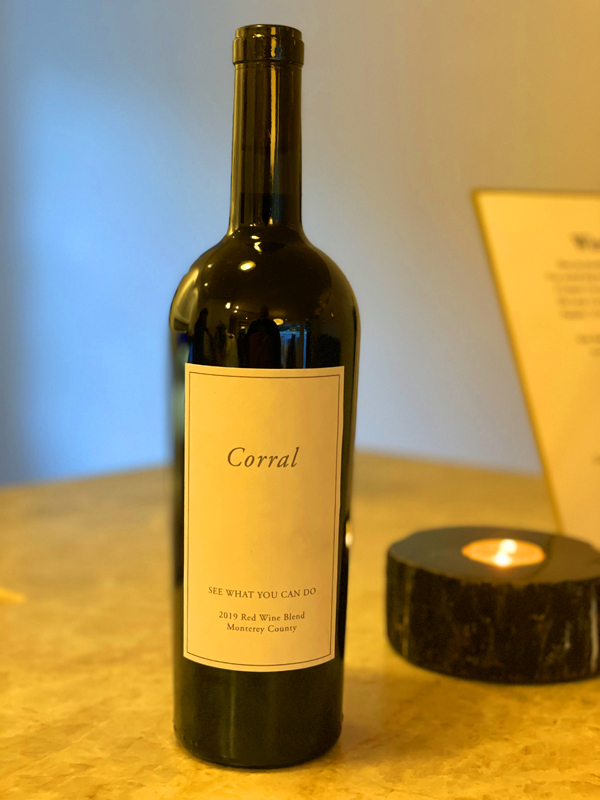
2019 Corral Wine Co, Cabernet Sauvignon/Syrah, Red Wine “See What You Can Do” Monterey County.
Starting humbly with their debut Sauvignon Blanc from the Zabala Vineyard, Corral Wine Co has really impressed with a series of beautifully crafted and compelling red wines, led by their Estate Pinot Noir offerings, their tasty Cienega Valley Zinfandel, the Paso Robles Petite Sirah and this outstanding deep and dark fruited “See What You Can Do” Red Wine, a blend of Cabernet Sauvignon and Syrah. It is not an easy thing to do, start a brand new label and vineyard from scratch, and made harder still by the global pandemic and with the lingering effects of labor and supply chain issues driving up the cost of everything, but Larry Bell and team have pulling it and we are being rewarded with these extraordinary efforts, Corral is one of the best new wineries in the Monterey region and currently have an excellent set of wines as proof. This wine, for me, in particular, is a hugely successful offering with exceptional depth, loaded with blue and black fruit concentration, beautiful opulent mouth feel and exciting detailing with floral notes, spice and balanced savory elements all seamlessly flowing across the full bodied and supple palate. The 2019 See What You Can Do red is 50% Cabernet Sauvignon from Carmel Valley and 50% Syrah from Arroyo Seco, making for an intriguing bottling, almost Aussie inspired, showing blackberry, plum, currant and cherry fruits, smooth ripe tannin, touches of graphite, anise, vilolets, cedar, lingering creme de cassis and smoky vanilla, it’s wine that drinks superbly now, but should also reward another few years tucked away, it goes fabulously well with grilled steak and or winter cuisine, as well as a delicious companion to hard cheeses.
The Corral Wine Co., started by Larry Bell, is a family run micro (craft) winery, with winemaker Adrien Valenzuela, in Corral de Tierra, set in between Carmel Valley and the Salinas Valley, that has a few acres of estate Pinot Noir vines and sources grapes from selected vineyards throughout Monterey and Paso Robles. As mentioned in prior reviews, Valenzuela, a Salinas and Monterey County native, is one of a hugely talented new set of home grown local winemakers in the region, was studying biology and nursing, before taking an internship at Estancia and caught the wine bug. His first solo wine that he made in his garage was a hit at the Mid-State Fair, taking a Gold Medal and then he joined Constellation, the giant wine and drinks behemoth, where he leaned winemaking along side an international group, gaining a ton of expirience. As I’ve said before, young winemakers, have a tough road to success and there are many roadblocks along the way, so it is great to see young people taking their chance and making it in this business, which clearly Adrien is doing here with Corral. The lineup at Corral is well worth checking out, from the Sauvignon Blanc to their set of Pinots, as well as a deeply colored and full bodied alternative reds, like this one, I highly recommend trying the full collection. The Cabernet Sauvignon grapes, all organic, came from the historic old vines at the Massa Estate, formerly known as the Durney Vineyard during the 70s and 80s, and the Syrah was sourced from the Zabala Vineyard in Arroyo Seco, both one ton lots that were 100% de-stemmed and macerated separately and blended post fermentation and aged in French oak for over a year, maybe closer to two, before bottling, sadly it maybe a one time wine, so best to grab it while you can, it gets better and better each time I try it.
($62 Est.) 93 Points, grapelive
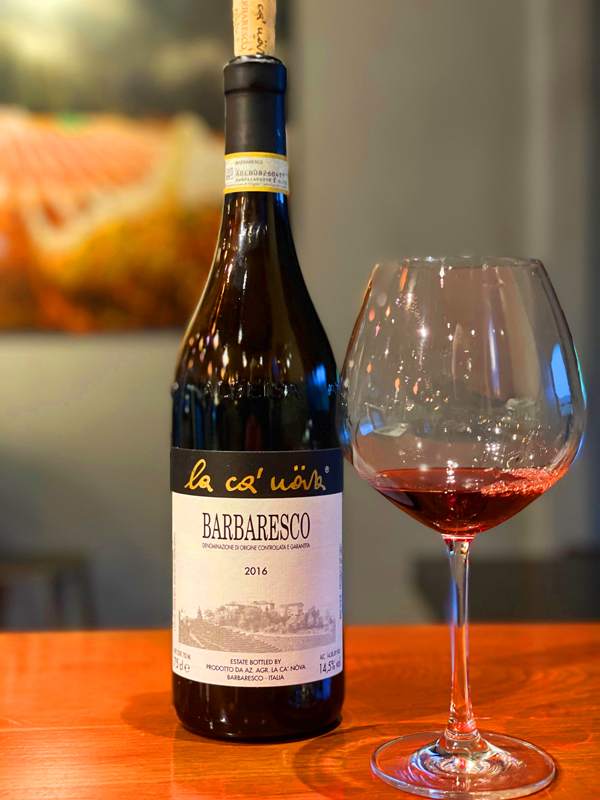
2016 La Ca’ Növa, Barbaresco DOCG, Piedmonte, Italy.
The 2016 normal Barbaresco from La Ca’ Növa is absolutely beautiful and everything you love about this terroir and Nebbiolo with pure floral aromatics and varietal flavors showing elegant layers of black cherry, damson plum, spiced raspberry and red currant fruits along with minty herbs, dried lavender, light earthy notes, a touch of cedar and well integrated tannic structural grip. I love everything I’ve tried from Marco and Ivan Rocca and his La Ca’ Növa winery in Barbaresco, especially this classic bottling and the 2016 vintage, one of my favorites in the last ten years, this are rustic and pure wines that really speak of place with this Barbaresco delivering everything a true Nebbiolo should do, but with subtly and without pretense. As noted before, Rocca is old school and shy by nature, he is not into modern technology and his wines are made in rustic fashion but with extreme care and love. He does his fermentation(s) without temperature control or with stainless tanks, he only employs indigenous yeasts and everything is done by hand using open barrels, as was done in older and simpler times. The maceration, interestingly is done with a large wooden spoon, which Marco uses to stir the musts, which he notes, is very difficult and time consuming work, but it worth it, as it helps extract a much richer color as well as more polyphenols. Interesting too, the Roccas, who were growers who sold grapes to others (including Gaja) until they began bottling under their own label, age their Barbaresco in Austrian, rather than Slavonian oak.
As mentioned in my prior reviews, Marco Rocca’s La Ca’ Növa winery is located just outside of the historic village of Barbaresco and is a small winery that produces traditional styled wines that way over deliver for the price, especially this basic Barbaresco and the famed Montestefano cru, which I reviewed earlier. Marco’s main passion is his Nebbiolo parcels and his trio of Barbaresco wines, but as the winery notes, Marco also does Dolcetto, Barbera, as well as a entry level Langhe Nebbiolo, which I will now search out, because if his Barbaresco DOCG and Cru Montestefano are this good and low priced, they must be fantastic values as well. The winery has prized holdings in the Montefico and Montestefano crus, as well as nice sites within the Barbaresco DOCG zone from which they make this set of Barbarescos, with this one, I believe, being a cuvée of the various sites, chosen after fermentation and then blended. La Ca’ Nova is a little family winery set in a farmhouse from 19th century, in the center of Barbaresco. Founded in the ’70s, it is run by the Rocca brothers who split between themselves the different roles among vineyards, cellar and public relations, with Marco as the winemaker. They have some prime vineyards, which are treated in full respect of the environment and of the natural vegetative cycle of the vines, with those Montefico and Montestefano crus being their pride and joy, making a total of 13,000 bottles of Barbaresco in any given vintage and of which I highly recommend! Look for this 2016 Barbaresco to shine for many years to come, though it can absolutely be enjoyed now, without any penalty at all, especially with a hearty meal.
($40 Est.) 94 Points, grapelive
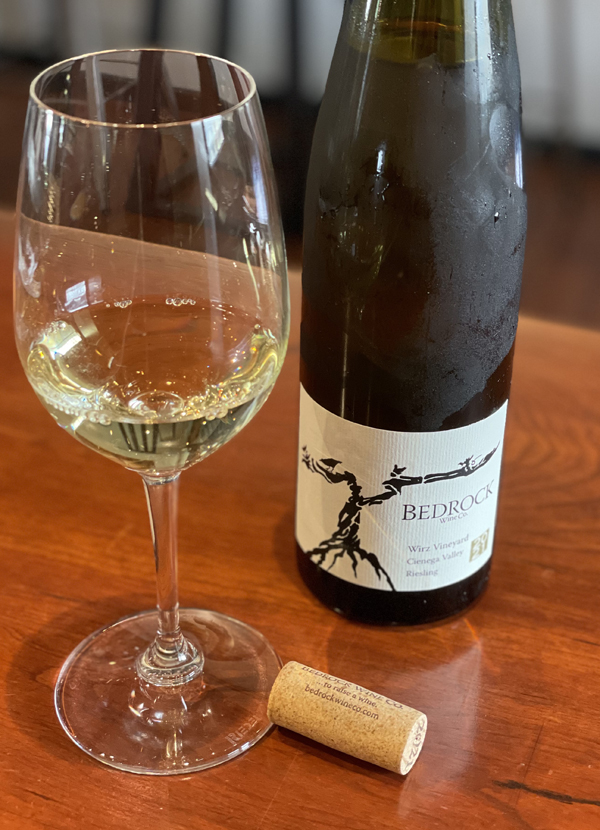
2021 Bedrock Wine Co., Dry Riesling, Wirz Vineyard, Cienega Valley AVA, San Benito County.
The 2021 Old Vine Wirz Riesling is a stunning wine with a heady perfume of white flowers, verbena, wet rock and vivid lemon/lime citrus which leads to a crisp palate of the same with bitter peach, green apple, melon and quince fruits along with lemon grass, chamomile, a hint of petrol and sage herbal notes. California is seeing a dry Riesling revival, it has has been building for about ten years or so, but the level of quality in recent years has taken a dramatic up turn, with efforts like this Bedrock Wirz Vineyard being world class examples of this grape more commonly associated with Alsace and the many regions of Germany. The Riesling was traditionally made with whole cluster pressing and aged in used wood to allow total clarity and personality, it is similar to some of my favorite Aussie versions, like Pikes, Jim Barry, Pewsey Vale and Rolf Binder. There’s so much to like here, Bedrock has truly nailed this one, it is one of the best values in alternative white wines you’ll find in the state with complex layers, crystalline detailing and a weightless sense of body as well as lively, but round mouth watering acidity. While Bedrock, and winemaker Morgan Twain-Peterson is renown for his historic vineyard Zinfandel field blends, it should also be known does an excellent set of white wines. Morgan’s partner, Chris Cottrell first discovered this vineyard when searching out grapes for his Under the Wire sparkling wines and they fast realized the quality here and added this Dry Riesling to their lineup. Bedrock’s Under The Wire, a partner label that focuses on single-vineyard, single-vintage sparkling wines was inspired by the grower champagne movement and continues to elevate California bubbly.
Morgan Twain-Peterson MW says of this Wirz Riesling, that he fermented the grapes using indigenous yeasts and aged it in neutral French oak barrels, all to promote freshness, terroir and natural transparency. The Wirz Vineyard, planted in 1963 in located in the Cienega Valley and is set on complex soils that include decomposed granite and dolomite limestone with vineyard owner Pat Wirz, who Twain-Peterson calls magnificently mustached, lovingly tending these old dry farmed bush vines by hand. The Bedrock guys, Morgan, Chris and assistant winemaker Cody Rasmussen are all Riesling fans and Rasmussen under his own label Desire Lines Wine Co. has become obsessed in a good way with this varietal and is making some of the best single site versions in California, especially his Cole Ranch and Wiley bottlings which are exceptional. Morgan himself has been making wine since he was eight years old or so legend has it, he is the son of Joel Peterson, a member of California’s hall of fame winemakers, who along with Paul Draper of Ridge Vineyards helped rediscover Zinfandel and was the founder of Ravenswood, who’s wines got me, and many others, into Zinfandel in the 1980s. The Bedrock Vineyard itself, owned now by Twain-Peterson, is a part of California history, being originally planted back in the middle 1800s. Following the first epidemic of phylloxera in the mid-1880s, Twain-Peterson notes, the Bedrock vineyard was replanted in 1888 by Senator George Hearst—a mining magnate, an early father of California, and the father of notorious publisher William Randolph Hearst, of Hearst Castle fame as well. It is from these 120-year-old vines that the Bedrock Heritage Wine is crafted, the signature wine of Bedrock Wine Co, and a modern classic, and the rest of the collection here is fabulous too, be sure to check them out.
($24 Est.) 94 Points, grapelive
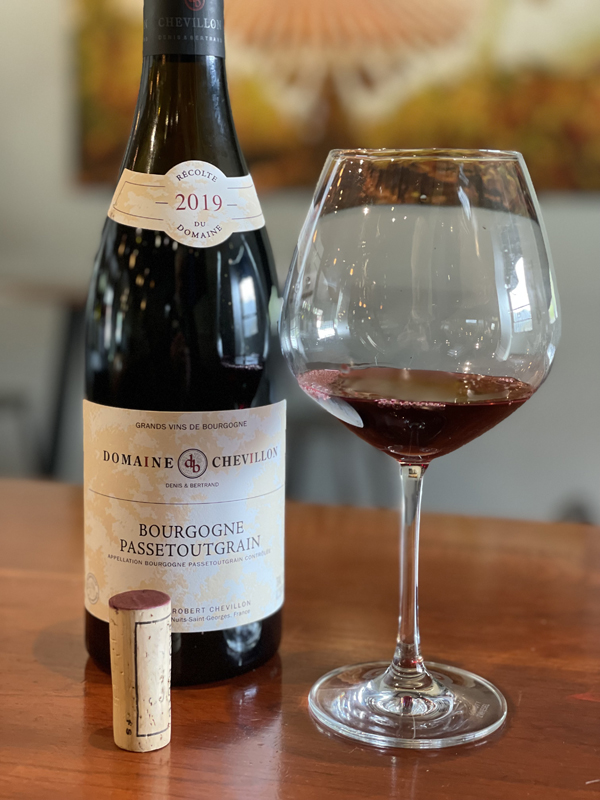
2019 Domaine Chevillon, Bourgogne Passetoutgrain, Nuits-Saint-Georges, Burgundy, France.
I have become a huge fan and a buyer of Passetoutgrain wines in recent years and a Gamay enthusiast, so it was with great joy I found this bottle of Domaine Chevillon, it did not disappoint either with real Chevillon character and earthy depth on the complex palate that shows dark cherry, currant and huckleberry fruits, hints of leather, anise, cedar and woody mushroom notes. There’s more to come with air, adding dried violets, minty herbs and tree picked plum, black tea and crushed stones. This delicious and rare Chevillon Passetoutgrain, which is as the winery notes 1/3 Pinot Noir and 2/3s Gamay Noir, comes from grapes sourced from three lieux-dits parcels with vines close to 45 years old or more, located very close to the village of Nuits-Saint-Georges itself, including Champs d’Argent, Croix Blanche and Petit Chaliot, which are set on sandy clay and limestone soils. I love the intensity, the high toned acidity in this 2019 and the raw, a touch reductive, style here as well as the long persistent finish, this is not far off the quality of their hugely more famous and expensive 100% Pinot Noir bottlings, especially for those that know the house style here and or love old school Burgundies, like those of Domaine Maume. Though obviously there is Gamay dominant profile that clearly shines through in the mouth, with the Pinot adding complexity, savory tones and a silky feel to this outstanding example of Passetoutgrain. While the 2019 vintage proved difficult and produced tiny yields, this wine, with its dark garnet and ruby color in the glass, is a success with a taut structure and good fruit concentration, making it more than an afterthought or light quaffer, this can age a few years at least and is sublime with hearty cuisine.The primary fermentation for the Passetoutgrain was in stainless steel cuves, 100% de-stemmed, and then wines, after a long cool maceration are racked into barrels, 20% new, and aged 16 months.
The Domaine Chevillon, once known as Domaine Robert Chevillon, is run by the two Chevillon brothers, Bertrand and Denis, who have one of the single greatest collections of Premier Cru old vine parcels in Nuits-Saint-George, rivaled only by maybe another favorite of mine, Domaine Henri Guoges, including Les Cailles, Les Chaignots, Les Vaucrains, always a superstar in my book, Les Perrières, Les Pruliers, Les Roncières, a real quality sleeper, Les Bousselots and their own little slice of the historic and coveted Les Saint-Georges, which could easily be a Grand Cru! Importer, Kermit Lynch says, Chevillon’s Passetoutgrain, a blend of Pinot and Gamay, is a worthy introduction (to the estate and to this unique blend) and their rare (two barrels made) Nuits-Saint-Georges Blanc made from the “Pinot Gouges” (a mutation of Pinot Noir or as I call it albino Pinot Noir) is an exotic treasure, with Kermit adding, that ages just as long as the domaine’s fabled reds. It seems incredible that Nuits-Saint-Georges hasn’t been awarded some Grand Crus, even Kermit is astonished, noting himself that the top-tier Chevillon premier crus are indeed worthy, explaining Nuits-Saint-Georges does not officially have any grand cru vineyards, but he’s convinced that Cailles, Vaucrains and Les Saint-Georges are firmly grand cru quality, which as mentioned I agree completely, though I’d add a few more. Denis and Bertrand Chevillon are now Burgundy elites, taking the legendary work of their dad to the next level since I’ve been drinking these domaine’s wines. Having personally sold these wines and pouring them at special tastings, I have become a huge admirer of Chevillon, even their lowly Bourgogne Rouge and village level Suits-Saint-Georges are absolute stellar bottles, in fact they are made the same way as the Premier Crus and have long drinking windows, I used to do my best to get those value bottlings for myself and they remain go to wines. It is hard to secure all of these Chevys, and in particular their Passetoutgrain and Aligoté, but it is a rewarding pursuit!
($44 Est.) 92 Points, grapelive
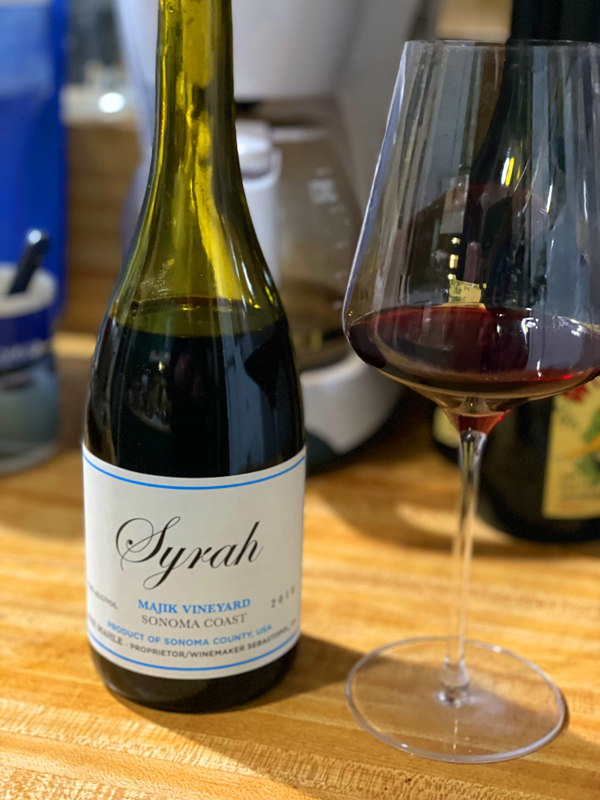
2018 Pax Wine Cellars, Syrah, Majik Vineyard, Sonoma Coast.
A thrilling svory and powerful, Northern Rhone, cool climate Syrah from the Syrah specialist Pax Mahle, sourced from the Majik Vineyard in the Sonoma Coast showing a full bodied palate, but with remarkably low natural alcohol, a highlight of the vintage and the natural winemaking here, fans of Clape, Jamet and or Allemand with love this purple/garnet colored wine. The nose and palate are totally in synch with boysenberry, blueberry, currant and plum fruits, crushed violets, salted black licorice, peppercorns, graphite and olive tapenade notes coming through in the mouth along with a faint bacon/meaty element and sweet kirsch. This is very serious stuff and a bit of a sleeper in Pax’s sublime collection of Syrah offerings, it has all the energy and whole cluster punch you could ever want and it gets better and better with time in the glass and I suggest decanting and having this Majik Vineyard Syrah with a robust meal and or Zuni roast Chicken with bitter greens. I had not had a bottle of this Majik before, as I usually opt for Pax’s Castelli-Knight and or the Sonoma Hillsides, but this ’18 is wonderfully expressive and it’s now a favorite.
Pax says that the Majik Vineyard is a tiny vineyard, just 1 acre of vines set on marine sediment soils and high up on a ridge in the Sebastopol Hills, due west of downtown Sebastopol. Mahle adds that this site was planted in 2000, so it is getting nicely mature now, and it has a selection of clone 7 Syrah, also he explains that this small planting has been a monumental vineyard in terms of relearning the limits of ripeness in Syrah grown here in the extreme west county. For his Majik Vineyard Syrah, Mahle employed a full native yeast and whole cluster fermentation with a cool lengthy maceration to express all of the heightened details here and the wine was pressed to well seasoned neutral French oak barrels where it rested for 10 months before bottling. The Pax label was founded in 2000 by Pax and Pamela Mahle, focusing mainly on Syrah, as well in recent years, some Gamay Noir, all from cool, coastal sites, along with as a selection of esoteric varieties, like Trousseau Gris, Charbono, the Mission Grape and Chenin Blanc, that Pax says, showcase the great diversity of California wine. Pax’s signature Syrahs, like this one with its Cornas like profile, are highly coveted and speak to their vineyards, which are all organic or biodynamic, making for raw and transparent wines with age worthy structures.
($45 Est.) 95 Points, grapelive
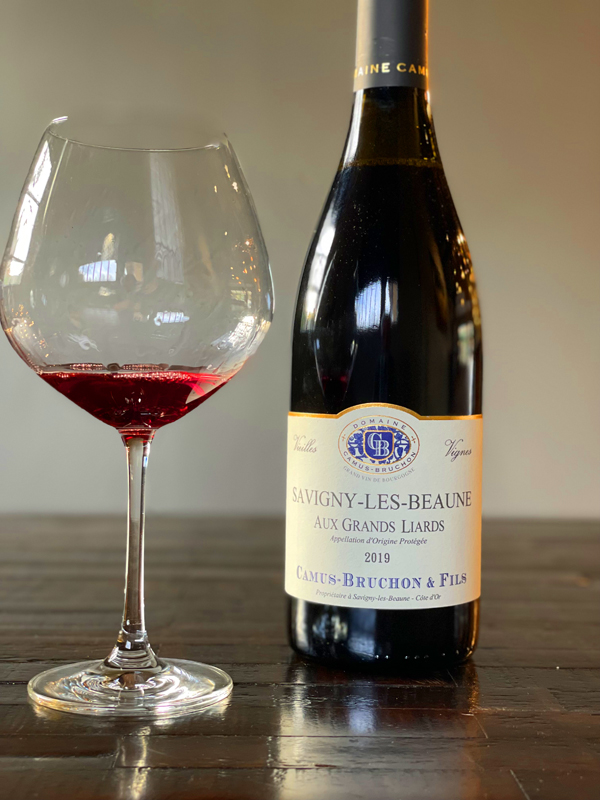
2019 Domaine Camus-Bruchon et Fils, Savigny-Les-Beaune “Aux Grands Liards” Vieilles Vignes, Red Burgundy, France.
Guillaume Camus at Domain Camus-Bruchon’s 2019 Aux Grand Liards from an old vine Lieu-Dit in Savigny-Les-Beaune surpasses the excellent 2018 version and drinks way above its price point, delivering a performance worthy of Premier Cru Volnay(s) and or Pommard(s)! This Liards, as per normal, is a dark ruby color and has a wonderfully silky in texture with classic black cherry, currant, plum and red berry fruits, along with rose petal florals, a chalky essence, bright spices and a smooth satiny palate. As mentioned, Guillaume’s vines are all mature averaging at least 35 years and in this case very old with 95 years old vines here in Aux Grands Liards. Camus-Bruchon wines have long shown remarkable quality and age worthiness, they also are terroir driven, showcasing the clay and limestone soils. They are Burgundies that are first and foremost grown in the vineyard, and as Guillaume says, you make wine as good as the grapes that you grow. So it is clear he spends much more time with his vines that he does in the cellar, as it should be, especially when you have the parcels at your disposal like he does. The Camus-Bruchon Savigny-Lès-Beaune 1er Crus are stunning values and this Aux Grand Liards, a favorite, as I’ve said, of mine, is one of many in his collection to stock up on, this Lieu-Dit many not be Premier Cru, but this Aux Grands Liards Vieilles Vignes just might be the best Pinot for the price in all of Burgundy, Camus-Bruchon and neighbors Domaine Pierre Guillemot prove this region has a wealth of quality.
One of the rising stars in the Côte de Beaune, Camus is making outstanding and elegant wines from his vineyard holdings in in the Cote de Beaune, with many parcels in Premier Cru sites, especially in the Savigny-Les-Beaune area. Like his father Lucien, Guillaume, of Domaine Camus-Bruchon, again as noted here, has a light touch and very much a winemaker that makes his wines in the vineyard, rather than in the cellar, everything he does is to showcase each vineyard site and produce transparent wines. He uses approximately 15% new oak in any given year, including in his top Premier Cru bottlings like this one, preferring to follow the Domaine’s tradition of crafting raw, balanced and graceful Pinots. The Camus-Bruchon wines see an extended maceration to fully extract the terroir and structure with about 18 days in total for the period of fermentation. The wines are all done with indigenous yeasts in old school concrete vats before being racked of to the French oak for over a year and then they are bottled unfined and unfiltered to capture every nuance and the full sense of place. All the vineyard sites farmed by the Camus family are dome using sustainable methods and with great respect for the lands and to promote healthy soils, these wines really showcase each site’s distinct micro climates and are really respectful of history of this region. As with most all of the Camus-Brochon wines, you can enjoy this 2019, like the 2018, Savigny-les-Beaune Aux Grand Liards now, though I know that these wines can age incredibly well, so you can put some bottles away and be rewarded for that patience, without question, this old vine Burgundy will be excellent for another decade at least. I look forward to the next 2020 releases from Camus-Brouchon, which I hear are even better, but in the meantime I’ll enjoy the 2018s and 2019s that I have.
($48 Est.) 94 Points, grapelive
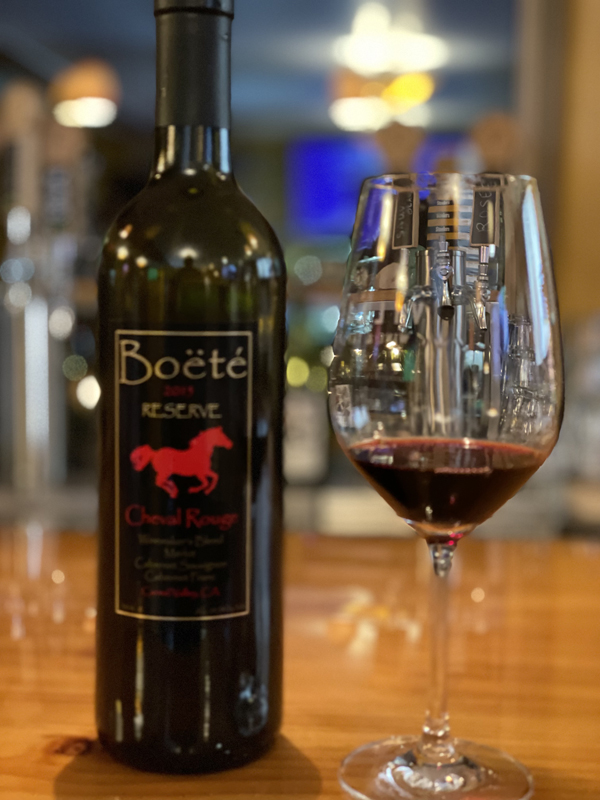
2015 Boëte, Cheval Rouge Reserve, Saunders Estate Vineyard, Carmel Valley AVA, Monterey County.
A blend of Merlot, Cabernet Sauvignon and Cabernet Franc this dark garnet 2015 Boëté Cheval Rouge Reserve is drinking beautifully and has entered a peak window with supple tannins and nicely maturing fruit on the full bodied palate. There’s plenty of depth to be found here and I enjoyed the layers of blackberry, plum, cherry and currant fruits along with touches of oak, spice and subtle floral aromatics, adding tobacco leaf, anise, leather and sandalwood as it opens. The Saunders family, who’s hillside vines, planted to Bordeaux varietals in 1997, are wonderfully situated high above the Carmel River, on stony ancient seabed soils, where they get plenty of warm sunshine to get the fruit nice and ripe, located just about a mile or so past the Carmel Valley Village with good southern facing slopes. The Merlot here is surprising powerful and structured, feeling more like Cabernet and provides a nice backbone to this wine, while still enjoying the plush mouth feel you’d want and expect, with the Franc and Cabernet Sauvignon helping deliver complexity.
John Saunders, who founded Boëté in the early 2000s, and his sons, Jesse (winemaker) and Dylan, continue to put out strong efforts here, with the winery specializing in 100% estate-grown Carmel Valley Cabernet Sauvignon, Cabernet Franc, a big local favorite and Merlot, as found here in this wine, plus they do a lovely claret style Bordeaux blend called the Cheval Rouge. The winemaking is simple and traditional with a priority to allow the vines to speak for themselves with 100% hand picked and de-stemmed grapes that are carefully selected and open top fermented and see a long elevage, between 18 and 24 months, in mostly used French oak barrels to promote a raw transparency in the wines. This blend is usually Merlot led, maybe 60% and then the rest almost equal parts Cab Sauvignon and Cab Franc, making it a bit Right Bank in style, modeled after Saint-Emillon, but decidedly Californian in concentration and opulence. Boëté, a micro winery is mainly a direct to consumer label, selling mostly to their mailing list and on the website, where I suggest going to, to explore the offerings, like this one, which is a great value, as well as the quality estate solo varietal expressions.
($42 Est.) 91 Points, grapelive
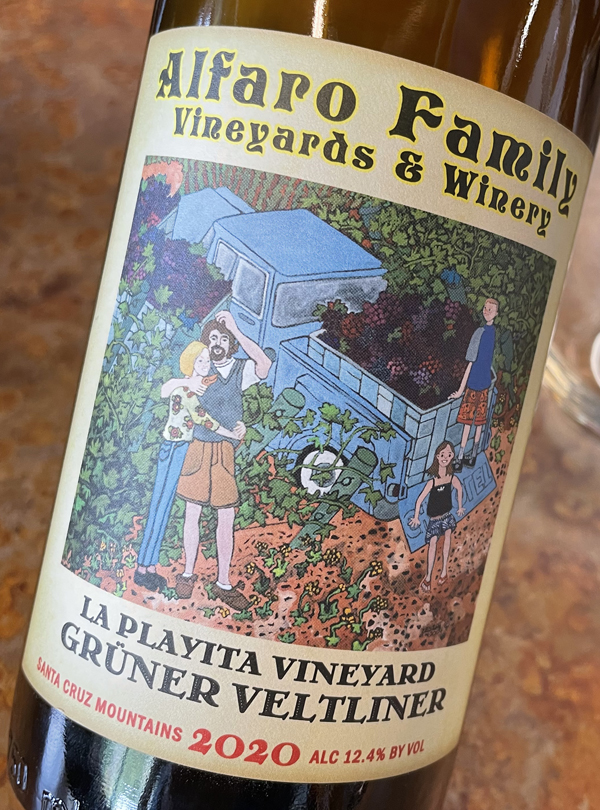
2020 Alfaro Family Vineyards & Winery, Grüner Veltliner, La Playita Vineyard, Santa Cruz Mountains.
The bright, nutty and tangy fresh 2020 Alfaro Family Grüner Veltliner is pale greenish gold in the glass and has a round mineral driven medium bodied palate with lemon/lime, peach and melon fruits leading the way, finishing crisply dry and with a touch of bitter almond and wet stones. This vintage, with its ripe citrus notes and low alcohol, coming in at just 12.4%, make it tasty with light cuisine, especially briny oysters, clams and delicate white fish, as well as soft cheeses and grilled veggies. The Alfaro’s have created a nice little niche for their Grüner and it remains a fun alternative to the much more widely planted Sauvignon Blanc in California, especially for those looking for a serious and interesting other dry white. There’s been a change in generation here at Alfaro, with Richard turning the cellar over to his son Ryan, who is emerging as a winemaker in his own right after spending time in New Zealand and under the legendary Adam Tolmach at Ojai Vineyards, so there is a lot of excitement here, especially as Ryan’s own label Farm Cottage has shown his potential with a series of fabulous offerings. The Alfaro’s have also have fully taken over the Trout Gulch Vineyard, a site that has historically produced some outstanding fruit and is one of the most coveted Chardonnay vineyards in the region, providing grapes to Cerritas, Kutch and Arnot-Roberts as well as to their own top notch bottling. While this 2020 is well worth getting if you see it, the 2021 looks to be even more thrilling and is now the current release at Alfaro and I can’t wait to get some myself!
One of the central coast’s most intriguing alternative whites, as noted, has to be the Alfaro’s estate grown Grüner Veltliner, the signature Austrian white grape famously grown along the Danube River to the west of Vienna in the Wachau region. Like here, Grüner makes for a mineral driven dry white wine with interesting stony fruit and bright acidity. This La Playita Vineyard edition GruVee is delicious stuff along the lines of some of, and inspired by the legends of Gruner, such as Hirtzberger, Pichler, Knoll, and Hirsch to name of few. The Alfaro Family Vineyards La Playita Grüner a direct press to stainless steel for fermentation and then was aged 6 months in neutral oak to preserve fresh details and vibrancy, while allowing some soft texture to develop. It comes from estate vines set in the unique terrior of Corralitos, at the southern end of the Santa Cruz Mountains appellation on loam and ancient sea bed soils. This area gives lots of fruit concentration and the cooling influence of the Pacific Ocean, less that 10 miles away, keeps a dynamic intensity in the wines. The South facing La Playrita (Little Beach in Spanish) Vineyard site, on sandy top soils, hence the name, sits at approximately 500 feet of elevation and next to a seasonal stream, this parcel is the coolest spot on the Alfaro estate. When planted in 2008, Richard Alfaro notes, there were only about 10 acres of Grüner Veltliner in all of California, and with the wine’s success, that acreage has grown dramatically and today there are approximately 170 acres more planted, and there is also sizable number in Oregon too. Alfaro has released some very limited offerings that look good, like a new 100% whole cluster Pinot and the “Kongsgaard Clone” 2021 Mary Katherine Vineyard Estate Chardonnay, which are must haves!
($30 Est.) 90 Points, grapelive
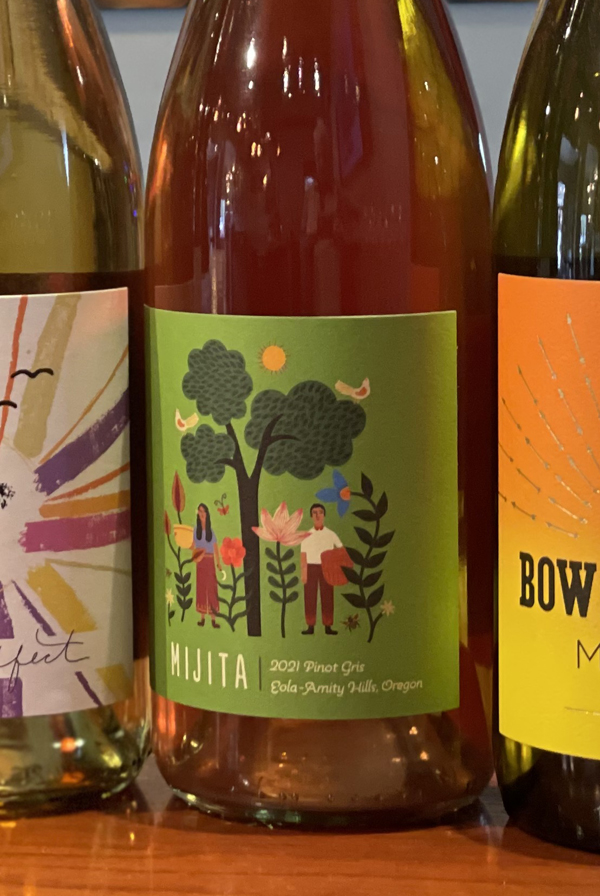
2021 Mijita, Pinot Gris, Zenith Vineyard, Eola-Amity Hills AVA, Willamette Valley, Oregon.
The bring and fresh, almost lighthearted skin contact Pinot Gris from Mijita is crisply focused on the palate and stays away from the funk and overtly savory elements sometimes found in orange wines, it is easy, delightful and ready to please with a mix of citrus, peach and apple fruits on the palate. The color is copper and amber in the glass and there is very delicate aromas of wet rock, fuji apple skins and fine herbs, it adds a hint of strawberry after it opens, but stays very a white wine in flavor and personality, making a nice dry example that goes nicely with picnic and or outdoor cuisine. Not overly serious and or vinous in the mouth at this stage, it is delightfully refreshing and weightless, perfect for the beach or by the pool with friends. The Mijita Zenith Vineyard Pinot Gris was skin fermented all naturally seeing hours of maceration to extract the pretty hue and was aged in used barrels for short period to preserve vibrancy and clarity of the flavors. I am excited to see what Mijita has coming in the next of releases, after trying this one, and the Gamay, which is an old world style, almost Moulin à Vent in character.
Winemaker Lizzy Esqueda’s first two wines are tiny micro releases under her Mijita Wine Co. label, featuring this skin contact Pinot Gris “orange wine” or Romato and her vibrant and charming Gamay Noir, which I really loved and reviewed back in November of 2022, both are from the 2021 vintage, which is starting to create a buzz with the Oregon natives. New on the Oregon wine scene, as noted here, Esqueda, who has been putting in the time in at Grochau Cellars, says her wines are “bright, textural wines made with grapes that are organically and sustainably farmed.” Her single vineyard Gamay comes from from young vines at Abbey Road Farm Vineyard in Yamhill-Carlton, set on marine sediment soils, similar to what is found at the famous Zenith site, and made in a transparent and open style. Pinot Gris, along with true Gamay Noir, are big hits in Oregon these days and the grapes thrives here with many outstanding examples from which to choose, and these skin contact versions are taking off. There’s a lot new stuff going on in Oregon, especially in the Willamette Valley, and a whole new generation of young women winemakers, like Lizzy Esqueda and Jessica Wilmes of Fair Moon Wine, who are creating fun and unique wines and who are exploring lesser known varietals and natural winemaking, and it is a great time to explore there latest stuff.
($28 Est.) 88 Points, grapelive
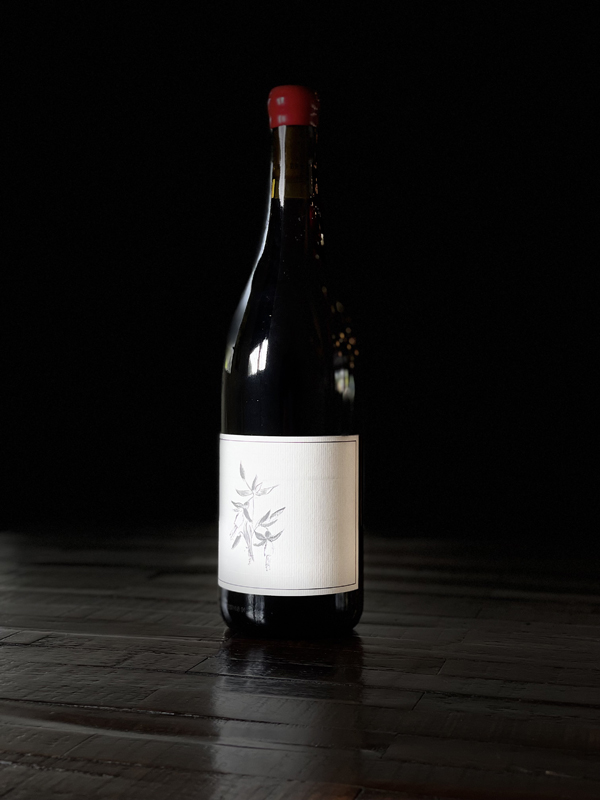
2021 Arnot-Roberts, Zinfandel, Kirschenmann Vineyard, Mokelumne River, Lodi, California.
The ruby gemstone hued 2021 Arnot-Roberts Kirschenmann Zinfandel is wildly aromatic and reminds me of Fleurie Cru Beaujolais with a carbonic like creaminess and has racy raspberry led medium bodied palate. This is not like your average Zin, unlike anything you’d expect made from Lodi and or old vine Zinfandel and more like the mentioned Gamay, though regardless it is very entertaining, cleanly detailed and wonderfully delicious with crushed berries, snappy herbs, mineral tones and liquid flowers! One of the a new generation of California producers that have been re-imagining the state’s wine and giving a modern throwback quality, Arnot-Roberts continues to make some of the most intriguing wines on the market, impeccable in clarity and quality, and this latest set of releases are as good as it gets, including this debut offering of Zinfandel from Tegan Passalacqua’s almost a hundred ten year old Kirschenmann Vineyard in Lodi. Part of California’s rich legacy of old vine vineyards Kirschenmann set on the silica-rich sandy soils of the east side of the Mokelumne River AVA enjoys hot sunny days, but thanks to the river’s cool waters and the delta breezes here, these organic, dry-farmed bush vines are constantly protected from extreme heat and offer ripe flavors, richness, but with good natural acidity. This is all highlighted here in this 13.5% wine that adds strawberry, pomegranate, sandalwood, peony, kirsch and Asian spices in the glass, this certainly challenges the Zinfandel paradigm and is a thrilling wine that will go with burgers, roast chicken and hard cheeses.
The Kirschenmann Vineyard is, as noted, a historic site originally planted back in 1915 on deep sandy soils made up of ancient granitic loams with mainly own rooted Zinfandel, along with small amounts of Carignane, Cinsault and even Mondeuse Noir, a rare Savoie grape, all interspersed throughout vineyard, which is all dry farmed and classically head trained. For their unique version of Zinfandel, Arnot-Roberts fermented this vintage using 100% whole cluster, with native yeasts and a cool maceration, then aged the Kirschenmann in neutral barrels for 10 months. Only 4 barrels were produced, making it one of the most limited of their bottlings. As mentioned here in prior reviews, Arnot-Roberts was founded in Healdsburg in 2001 by childhood friends from Napa Valley, Duncan Arnot Meyers and Nathan Lee Roberts, who have excelled in creating some cult like favorites made from alternative varietals, like Trousseau, one of my favorites, Falanghina, Ribolla Giallo, Gruner Veltliner and this Touriga Nacional based Rosé, as well as an awesome set of Syrah, Chardonnay, Pinot Noir, Cabernet and Gamay offerings, all of which are worthy of searching out! This Zin, which now I wish I had bought more of, will not appeal to traditionalists, will be a fabulous contrasting example of this varietal, also known as Tribidrag in its original homeland of Croatia and Primitivo in Italy. I can’t wait to amaze my friends with this, especially the ones that love old world wines like Lapierre, Thivin, Sunier, Dutraive and Foillard (elite Cru Beaujolais producers) and or put it in a blind Zin lineup and watch the reactions! Far from light or greenly lean, this vinous and smooth Kirschenmann feels heavenly weightless, best served with a slight chill, and it will be interesting to see how it ages over the next 5 to 10 years.
($40 Est.) 93 Points, grapelive
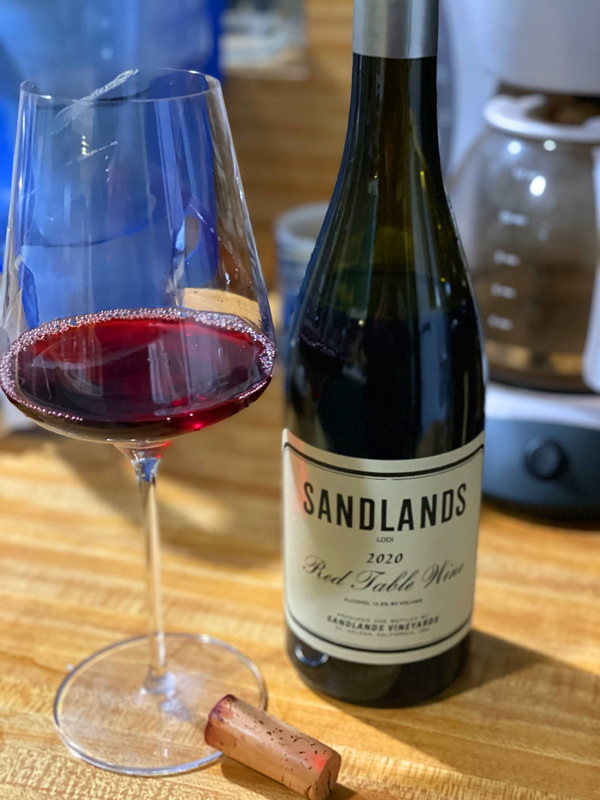
2020 Sandlands Vineyards, Red Table Wine, Lodi, California.
The dark colored and brightly fresh Lodi Red Table Wine from winemaker Tegan Passalacqua of Sandlands is all from seriously old vines and made from an all California cuvée of Carignane, Cinsault and Zinfandel, all picked ripe, but with low sugars to make for an old world country style wine, reminding me of a tasty Corbieres! This purple an d ruby hued Lodi red, coming in at just 12.6% natural alcohol, is lovely with food with vibrant red raspberry, plum, strawberry and tart red currant fruits on the medium bodied palate along with orange tea, dried sage, lavender, anise and a touch of beet root, with almost no sense of oak. It feels juicy and pure with supple tannins, I would guess some whole berry and native yeast fermentation, allowing for the smooth texture and divine quaffability, thinking it saw just well seasoned neutral wood. Sandlands does each of these varieties in solo efforts, all of which are absolutely must try new California gems, with all being excitingly distinct wines, I always gravitate to Passalacqua’s Carignane bottlings, sourced from Lodi, as in this one and his Contra Costa version. This blend unfolds in the glass and gains complexity with a subtle earthiness, with savory elements and spiciness that is welcome and rewarding, making this Lodi Red Table Wine fun and compelling stuff. There’s a lot to love in the latest set of releases from the Sandlands lineup, including an all new Santa Barbara Syrah and a Napa Valley white blend of Chenin Blanc and Semillon, which I will review soon.
The Sandlands Lodi Red Table Wine, which was just 12 barrels and two 500 liter puncheons in this vintage. Tegan says this wine, rather than a field blend, is an intentional blend of three varieties and three vineyards in three equal parts. He adds that his Lodi Red Table Wine is composed of Cinsault from the Bechthold Vineyard (1886), Carignane from Spenker Ranch (1900) and Zinfandel from Kirschenmann Vineyard (1915), from the Passalacqua home ranch in Victor. This 2020, which opens nicely, went fabulously with a rustic Paella and will be a sublime companion to your favorite winter dishes and or a cassoulet, the classic dish of the Languedoc, as well as a go to pizza wine. Tegan and Olivia Passalacqua’s Sandlands Vineyards is a side project, for when Tegan is busy managing all of the vineyard sites and overseeing the winemaking for Turley Wine Cellars, one of California’s super star wineries. Tegan, here under his own label, says he focuses on forgotten classic California varieties, primarily grown in decomposed granite (sand), from regions and vineyards that have been farmed for many generations but have remained the outliers of California viticulture. He works with historic and organic vineyards, most well over a 100 years old and makes a great effort to allow these unique terroirs to shine through with gentle, hand off, and transparent winemaking, all with stellar results, as shown here in this tasty little wine. I very much suggest getting on the mailing list here and exploring the Sandlands collection of quality and value packed wines, which includes everything from Chenin Blanc to Mataro and Zinfandel to the Mission grape.
($32 Est.) 91 Points, grapelive
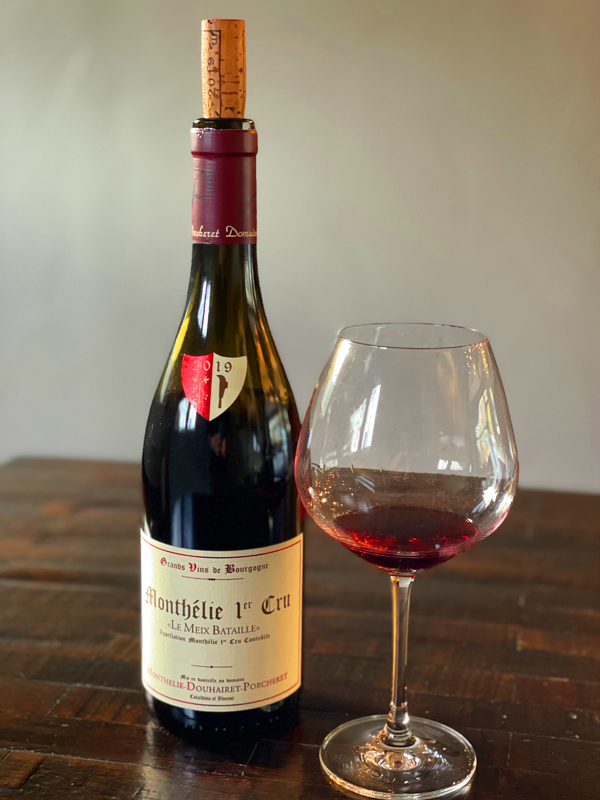
2019 Domaine Monthélie-Douhairet-Porcheret, Monthélie 1er Cru “Le Mieux Bataille” Côte de Beaune, Red Burgundy, France.
In recent years I’ve really grown fond of these Domaine Douhairet-Porcheret, made by Cataldina Lippo, André Porcheret’s granddaughter and her husband Vincent, who has taking these wines forward since she took over in 2004 and the latest releases are really lovely wines, including this beautiful 2019 Le Mieux Bataille Premier Cru Monthélie. This vintage, a bit lighter and high toned in style is perfectly matched between fruit and acidity with a medium bodied palate with black cherry, strawberry, red currant and blood orange fruits, a toasty oak smokiness, delicate mineral and earth tones, satiny tannins and a touch of rose petal florals. This cuvée comes from sustainable grapes all hand harvested and carefully sorted both in the vines, which are set on classic clay and limestone soils, and in the cellar. The Le Mieux Bataille is 100% de-stemmed, then is fermented with indigenous yeasts in open top wood vats for 12 to 20 days on the skins with daily pump overs and punch downs. The Pinot Noir is then aged in French oak barrels, with Tronçais barriques employed, using about 10% new wood, for 18 months. This pretty ruby colored Monthélie 1er Cru “Le Mieux Bataille” opens nicely and gains depth and detail with every sip and lingers nicely on the finish showing good balance, clarity and going great with a wide range of cuisine choice. This vineyard site used here is a tiny parcel in Monthélie, just a few miles south-west down the valley from the village, which is sandwiched between Auxey-Duresses and Volnay, not far from Pommard, is planted entirely to Pinot Noir.
The historic Domaine Douhairet-Porcheret located in Monthélie, also has vines in Pommard, Volnay, and Meursault and is over 300 years old and sits at heart of Monthélie in the center of the village. The founding Douhairet family ran Monthélie Douhairet (as it was called) for many years and generations, and then In 1989, Mademoiselle Douhairet asked renowned winemaker André Porcheret to take charge and added his name to the domaine, that now has his granddaughter and her husband running the winery here. It should not be overlooked at just how highly regarded André Porcheret was, considered a traditionalist by many, he also pushed quality forward in the region, leading the legendary Lalou Bize-Leroy to hire him to become the winemaker at the newly created Domaine Leroy, where he shined between 1988 and 1993. He never stopped making his own wines at his Domaine Douhairet-Porcheret and they have been a study in charm and quality ever since. Cataldina Lippo’s Burgundy offerings and especially her signature Monthélie 1er Crus are still wonderful values, compellingly transparent and luxurious wines. The Premier Cru lieu dit Le Mieux Bataille in the Côte de Beaune was first planted back in the 16th century and is situated only a few minutes away from the winery and, as their importer Martine’s Wines notes, on the edge of the first hillsides of Monthélie, with south-facing exposure, and includes a picturesque backdrop of Volnay. I am excited to try Domaine Monthélie-Douhairet-Porcheret’s 2020 vintage too, as I’ve heard they are looking to be even better than the 2017, 2018 and 2019s, which I really enjoyed and recommend.
($60 Est.) 92 Points, grapelive
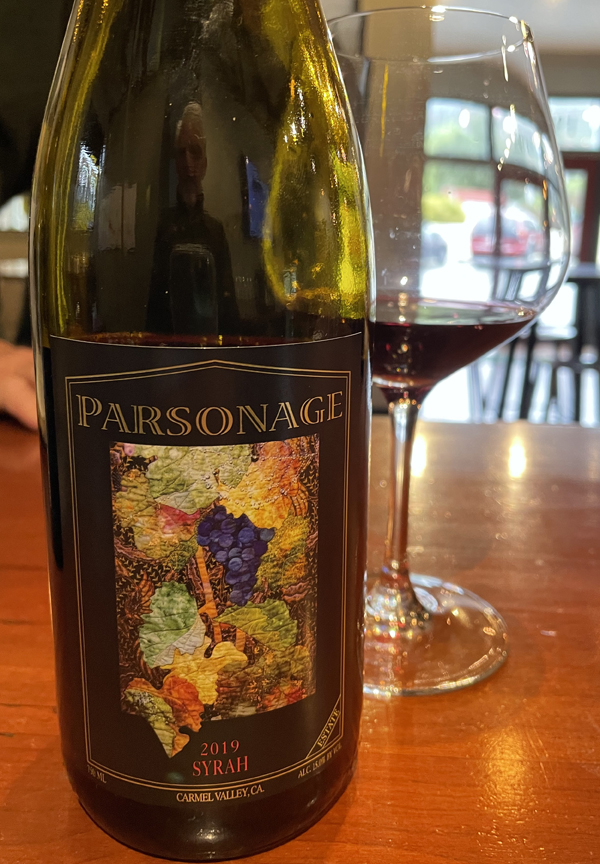
2019 Parsonage Village Vineyard, Estate Syrah, Carmel Valley AVA, Monterey County.
Coming from tiny yielding rocky hillside vines the Estate Syrah by Parsonage is an intense full bodied effort, as I’ve said before, these Parsonage wines show gorgeous fruit density, opulence and length, with this one following Guigal’s famous Cote Rotie in style and palate impact, dark berry depth and its luxurious mouth feel. The Parsonage wines are crafted by Frank Melicia, owner and founder Bill Parsons’ winemaker and son in law, who also makes the Silvestri wines, and that goes after richly flavored, ripe and textural wines that stand out, which has been a winning formula for this small label in Carmel Valley. This deep inky purple 2019 Estate Syrah is loaded with back fruits, leaning on olallieberry, boysenberry, black currant and sweet plum fruits along with hints of cigar box, peony florals, cinnamon, vanilla, coffee grounds, creme de cassis and licorice. The grapes are late picked and have high brix, but there’s still acidity from the cool nights and Ocean influence, and while hedonistic and supple in tannins, there is a remarkable balance, especially in this vintage, that looks to be one of the best yet for Parsonage, from what I’ve tried so far and it should age fantastically well. Syrah still remains a small if not micro planted varietal in the region, which now has seen a huge increase in Pinot Noir plantings in Carmel Valley, especially the western edges that see a cool windy climate. Parsonage has a warmer and drier exposure, catching lots more intense sunlight, that allows the concentration found here, making for wines that go great with a steak, lamb and or meaty winter dishes.
The Estate Syrah, not to be confused with the single parcel Reserve 100% Syrah “Rocco” bottling, is made with hand picked 100% de-stemmed and vigorously sorted grapes that see a lengthy maceration and daily punch-downs for full extraction and they basket pressed to French oak barriques, which usually is a good percentage of toasty new wood, but not in this vintage, it got just 1 and 2 times filled used oak. For California Syrah fans, this wine is more like Shafer’s Relentless and or Herman Story in feel, gaining complexity and a spiciness with air, adding blueberry compote, kirsch and mocha notes and it really should be decanted and had with hearty cuisine. The aging time in barrel differs slightly on the Estate Syrah, with this vintage spending close to two years in wood before bottling. Bill Parsons planted his estate with Syrah and Bordeaux varietals, with Cabernet Sauvignon, Merlot and the rare Petit Verdot blocks back in 1998 and hit the ground running with his 2000 debut bottlings that garnered eye brow raising critical acclaim. The wines have impressed for their lush fruit driven quality, something that not many people thought possible here until Parsons brought these wines out, up until then most of the Carmel Valley reds were austere and needed tons of bottle age to be their best, like the wines that came from the historic Durney label, now known as the Massa Estate. If you’ve not had the Parsonage wines, now is a good time to start, in particular the estate grown bottlings of Syrah, like this Estate, the Cabernet Sauvignon and especially the single varietal Dario Reserve Merlot, which is also absolutely stunning in this stellar 2019, and the delicious 2018, vintages.
($48 Est.) 94 Points, grapelive
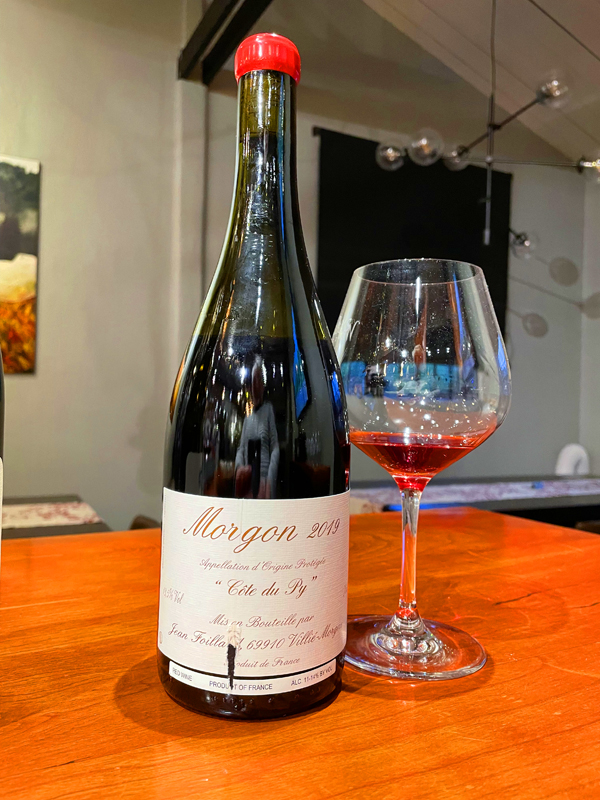
2019 Jean Foillard, Morgon “Cote du Py” Cru Beaujolais, France.
The 2019 vintage of Foillard’s legendary Cote du Py Moron is very perky and possesses absolute clarity of form with a striking burst of energy on the dark fruited and aromatic palate, it shows pretty violets, tangy black currant, wild plum, pomegranate and tarty fresh bing cherry along with a hint of hard wood, anise, blood orange, flinty stones, minty herb, subtle earthy tones and zesty dusty spices. This year is less concentrated and ripe, adding an extra degree of freshness and poise, so a more cool tone emerges in the glass in this more nuanced version. As always, this Foillard delivers outstanding quality, with a beautiful bright ruby hue, a heavenly nose and textural pleasure once fully open, this is, as per normal, one of my favorite wines with the grace and presence of a excellent Burgundy and while cheap, it is worth every penny. Coming from organic grapes and made with ultra low SO2, Foillard’s Cote du Py bottling is sourced from vines that range from 10 to 90 years old and that are set on the granite based soils, with some schist and veins of manganese that adds to this wine’s distinct complexity and personality. Jean Foillard is at the top of his game here, there are few better with Gamay than him, but it is nice that a new generation of Foillard making a name for himself now, with Jean’s son Alex now making some outstanding wines as well, it is a great time to discover these wines, they are wonderful expressions of terroir and absolutely delicious stuff. I look forward to the latest releases here too, as the 2020s have just come out, but I do like to age my Foillards for 3 to 5 years at least.
The much admired vigneron Jean Foillard, as mentioned here in many prior reviews, was greatly inspired by natural wine guru Jules Chauvet, a traditionalist who led the natural wine movement in the Beaujolais and redefined the wines of the region and who wanted to go back to pre-industrial style organic farming and not use chemical additives in the cellar. Jean and three other local vignerons, Marcel Lapierre, Jean-Paul Thévenet, and Guy Breton joined in on this movement, this became the Gang of Four, a nickname coined by the famed importer Kermit Lynch, who brought these masterpieces of Gamay to America, along with Dutraive and others brought critical acclaim to this region that had been badly maligned for generations. Foillard took over his father’s domaine in 1980, with stellar vineyard holdings mainly in the revered Côte du Py, as Kermit Lynch notes, the famed slope outside the town of Villié-Morgon and the pride of the Morgon cru. These granite and schist soils sit on an alluvial fan at the highest point above the town and impart great complexity on these wines. Jean Foillard, who hand crafts his wines using native yeasts and using traditional 100% whole cluster with a long gentle maceration that usually lasts just over 3 weeks and raises his wines in older barrels, always well seasoned and sourced from top estates in Burgundy, including the Domaine de la Romanee-Conti. This elevage of the Cote du Py in the used French barriques is between 6 to 9 months, normally, depending on the vintage and always to preserve energy, transparency and purity. Not always easy to find, these Foillard’s are always treats, I truly cherish every bottle I get and recommend them, especially this one, Jean’s unique Fleurie (Black Label) and the Cuvée Corcalette, wholeheartedly!
($50 Est.) 94 Points, grapelive

1998 E. Guigal – Chateau d’Ampuis, Cote Rotie, Northern Rhone, France.
I first tasted this Chateau d’Ampuis 1998 on its release, so it was interesting to see where it was now, after about 20 years since I last tried it and to my surprise it was drinking beautiful and more weightless and Pinot Noir or Burgundy like in textural quality, though purely Syrah in the profile with a subtle bacon/meaty character behind the layers or mature fruits and wood framing. The palate feels medium bodied in this garnet colored Cote Rotie showing red berry, plum, currant and fig fruits along with coffee grounds, earthy tertiary notes, pipe tobacco, cedar, dried lavender, tea and black licorice. I really enjoyed sitting with this wine as it kept fighting for life in the glass and watching it rally back from what I though was its last legs and the bouquet did the same going from fallen leaves and beef notes to pretty florals, with whiffs of wilted roses and delicate strawberries. This turned out to be a much more fascinating bottle than I had expected, even though I knew it would be interesting and complex and as I get older I have really come to enjoy very old Rhone wines. The Chateau d’Ampuis showcases seven single parcels, including Le Clos “Côte Blonde”, La Garde “Côte Blonde”, La Grande Plantée “Côte Blonde”, La Pommière “Côte Brune”, Le Pavillon Rouge “Côte Brune”, Le Moulin “Côte Brune” and La Viria “Côte Brune”, with the average age here being 50 years old, with usually a final blend of Syrah 93% and Viognier 7%. When young these wines are lush and concentrated with luxurious mouth feel and hedonistic fruit density, almost like dry Port, much more ripe in style that old school wines like Domaine Jamet, which are more rustic, feral and earthy in style, with both these domaines pushing the envelope in opposite directions.
Guigal makes modern ripe, opulent and luxurious wines, with their Chateau d’Ampuis Cote Rotie seeing a full 38 months in new wood, which delivers lots of texture, richness of fruit and sweet toasty notes. Dujac, since 1986, has had a viticultural regime that combines holistic practices from organic to full biodynamics in order to grow the absolutely best grapes as possible and to show off each sites terroir influence. The famous Guigal domaine, that zoomed to world attention under the legendary Marcel Guigal in the early sixties, was originally founded in 1946 by Etienne Guigal, marcel’s father, in Ampuis, the small historic village that is the heart of the Cote Rotie region. Today Marcel’s son Philippe runs the winemaking at this estate that has become one of the biggest family run wineries in the Rhone, joining Chapoutier and Jaboulet, who all make entry level wines all the way to some of the most coveted wines in the world, like Guigal’s La La’s, La Moulin, La Torque and my favorite La Landone, which are Cote Roties that thrill collectors almost as much as DRC. In 1995 the Guigal family acquired the historic Château d’Ampuis and this1998 was one of first under their direction to make its way to the States and it has become an important part of their star studded collection. The Chateau d’Ampuis includes Syrah vines, set on steep granite slopes, plus a tiny amount of Viognier, in both the Côte Brune and the Côte Blonde and marries their terroirs to produce an exceptional wine of powerful and opulence. To make this wine, Guigal employs a closed stainless steel tank fermentation with a temperature controlled primary fermentation with a four week maceration before being pressed to toasty new oak where it ages more than three years. Guigal, like Gaja in Barbaresco, and Louis Latour in Burgundy, do their own cooperage and their barrels are made exclusively for their own wines to enhance their distinctive character. I recommend more current vintages, especially years like 2005 and 2016, of Guigal’s Cote Roties, and having with lamb and or other meaty dishes.
($146 Est.) 92 Points, grapelive
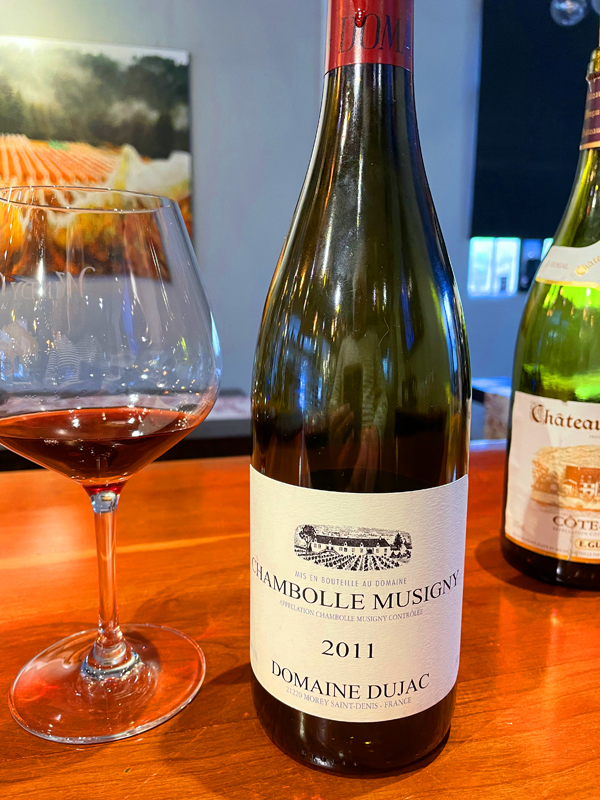
2011 Domaine Dujac, Chambolle-Musigny AOC, Cote de Nuits, Red Burgundy, France.
Already past its peak drinking window, the basic Chambolle-Musigny is still a little beauty with a distinctive personality and silky mouth feel, it shows a unique Alpine herbal/minty character to go with a smooth palate of black cherry, red berry and plum fruits along with a mineral and earthy array of flavors and accents, making for an easy to love wine. In Dujac’s lineup, and in particular the entry level village wines, I have usually preferred the basic Morey-St.-Denis, but this Chambolle is always a chaser and offers a ton of quality for the price. The 2011 vintage has turned out to be a really pleasing vintage for red Burgundies and I was excited to try this one, especially as I don’t get the chance to drink many Dujac wines these days, and it did not disappoint, though I dream about their Clos de la Roche and Clos Saint-Denis Grand Cru bottlings, which are some of my favorite of all time wines. Dujac and the Seysses family have always been a fan of whole cluster fermentation and plenty of stem inclusion, and that shows in their wines, with this wine looking to have benefited from this practice in at least a small way with the exotic Amaro like herbal note and the expressive nature of this wine that adds a spicy side as it opens up. Seysses believes was that the mature stems actually reduced the amount of hard tannins in the resulting wine, a novel theory that has been mostly proved correct with his efforts, adding that he wants to avoid bruising the grapes during the de-stemming process, again to allow the grapes to fully shine.
Domaine Dujac is a legendary winery, run by the Seysses family and was originally established in 1968 by founder, Jacques Seysses, who is still involved here, though sons, Jeremy and Alec, and Jeremy’s wife Diana (Snowden) have run the domaine for many years now, producing some of the regions most coveted wines. These days, Jeremy is doing the winemaking and marketing with Diana Snowden, of Napa Valley, who’s family has a winery focused on high end Cabernet Sauvignon, and a U. C. Davis graduate in enology, has taken over cellar management here, with Alec handling the day to day operation and administration of this well loved domaine. Dujac has a stellar collection of vines in prime spots, including in Bonnes Mares Grand Cru, Chambolle Musigny Les Gruenchers 1er Cru, Charmes Chambertin Grand Cru, Clos de la Roche Grand Cru, Clos Saint Denis Grand Cru, Echezeaux Grand Cru, Gevery-Chambertin aux Combottes 1er Cru, Gevery-Chambertin aux Combottes 1er Cru, Morey St. Denis Blanc, Morey St. Denis Monts Luisants 1er Cru Blanc, Morey St. Denis 1er Cru Rouge, Vosne Romanee Les Beaux Monts1 er Cru, and last but not least Vosne Romanee aux Malconsorts 1 er Cru! My favorites, Clos de la Roche Grand Cru and Clos St. Denis Grand Cru were the first two vineyard parcels that Jacques Seysses purchased in 1968 and they remain standard bearers of wine made from these vineyards. These are superstar Pinots and I am always grateful for the chance to try any of Dujac’s wines, so a big thank you to Alex Lallos, my friend, who shared his personal, well stored and cellared, Chambolle with me!
($70-110 Est.) 93 Points, grapelive
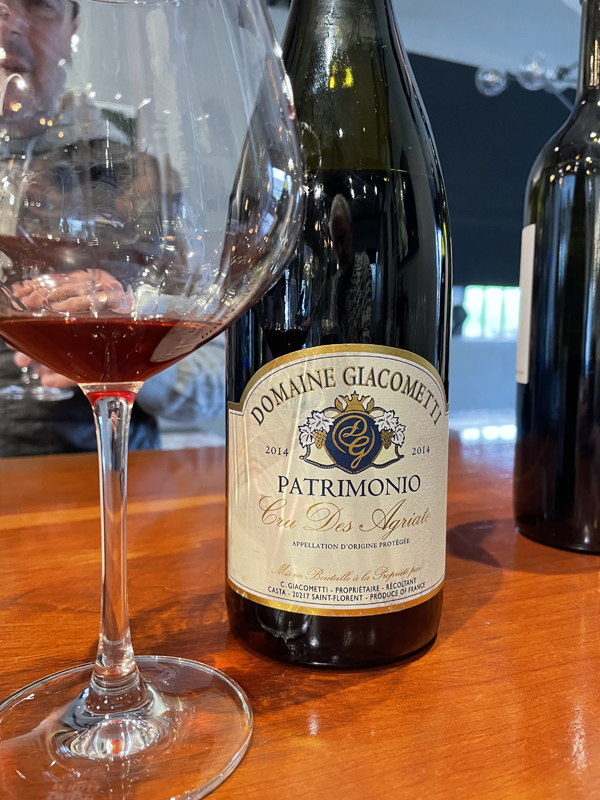
2014 Domaine Giacometti, Cru des Agriate, Patrimonio Rouge AOC, Corsica, France.
Starting to show its age and tertiary elements, the 2014 Domaine Giacometti Patrimonio Rouge, from the wilds of this French island, is tasting like a old Chianti (Sangiovese) meets an earthy Aglianico with a touch of stewed plum, along with reduced strawberry, raspberry and baked cherry fruits, nicely accented by loamy notes, tobacco leaf, leathery/meaty sous bois and both dried flowers and snappy herbs. The overall experience is quite impressive and the wine is still very enjoyable, though obviously a bit tired on the palate and it is starting to show a brickish hue in the glass, best to drink sooner v. later. The Corsican appellation authorities granted Patrimonio appellation status to these Agriate vines, even though the estate is several miles from the village of Patrimonio, with mostly Niellucciu planted in the vineyards here. Given the isolation of the domaine, word of the wines and the estate haven’t travelled far, until famous importer discovered Giacometti and started bringing their distinctive wines to the States. This rustic and old world cuvée, the Cru des Agriate, is made from 97% Niellucciu, which genetically is Sangiovese and 3% Grenache sourced from 10 to 45 year old vines and goes well with meaty country cuisine. It was nice to have Giacometti again, as I haven’t had their red for a while, they do a fine collection of wines, including this one, as well as a special 100% Sciaccarellu (also known as Mommelo, a rare Tuscan grape) Vin de France, as well as tasty Vermentinu (Vermentino) and Rosé offerings, all of which I recommend for their raw charm and drinkability.
The Patrimonio based Domaine Giacometti, a rising star of the region that makes finely crafted old school wines, producing a tasty set of blended wines that feature Grenache and Niellucciu (Sangiovese) and Sciaccarellu (Mammolo) sourced from vines set on a sandy patch of granite and clay based soils in this rugged isolated region on Corsica’s Northern side near Bastia. According to Kermit Lynch, a long time importer of Corsican wines, the Agriates Desert is a large, rugged, empty and arid swath of land between the Cap Corse and Calvi on the northern end of the island, with nasty winds and tough growing conditions, though it is a place that the Giacometti’s put to good use, making wines from vines first planted in 1966. The low key and unpretentious Domaine Giacometti wines are still solid values and are not as widely known as some of the elite producers like Abbatucci, Leccia, Arena and Clos Canarelli, who of which get some huge dollars for their bottlings, but that is good news for fans of the island’s wines, that are more budget friendly. The Domaine Giacometti winery and label, which was founded by Christian Giacometti in 1987, employs certified organic methods in the vineyards and used simple and transparent winemaking, with his son Simon and daughter Sarah doing most of the work here. Kermit adds, that the Giacomettis do a generous, approachable style of Patrimonio, and is like what has traditionally been served at the Corsican dinner table for generations. This Cru des Agriate Patrimonio Rouge saw a native yeast fermentation and was macerated and age exclusively in stainless steel, making for a wine that is made for early enjoyment, which I suggest for best results.
($26 Est.) 90 Points, grapelive
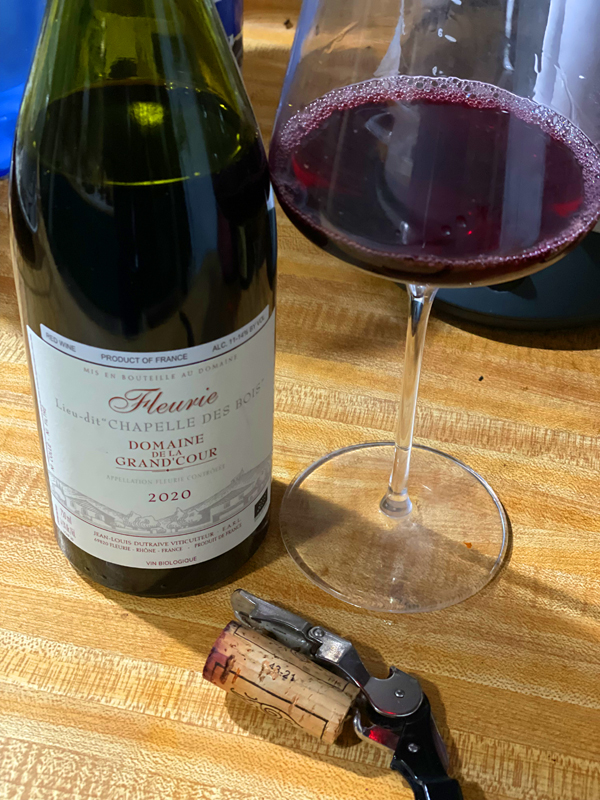
2020 Jean-Louis Dutraive – Domaine de la Grand’Cour, Fleurie, Lieu-Dix “Chapelle des Bois” Cru Beaujolais, France.
The magenta/ruby colored 2020 Chapelle des Bois is intensely vivid, crisply detailed and pure with tons of youthful energy and pretty florals with bright strawberry, racy plum and almost tart red currant fruits leading the way with hints of straw, walnut, cinnamon, cut violets and anise adding nice accents here along with whole cluster pop, smoky mineral tones, chalky stones and delicate earthy elements. Jean-Louis Dutraive, as mentioned here at Grapelive.com, ferments all naturally with indigenous yeasts, whole bunch, getting a semi carbonic effect and they see long maceration(s) on the skins, somewhere close to a month, which according to the winery, depends on what the vintage gives them. The wines are very gently handled from start to finish and moved only by gravity flow in the cellar, with the Crus being aged for 9 months to more than a year, depending on the individual cuvée. There is a combination of vessels for elevage, mostly though see time in used Burgundy barrels, though sometimes the wines are aged partially in stainless, old foudres, or even cement tanks. Jean-Louis’ motto in the cellar is what he calls “minimal intervention and maximum surveillance.” All of the efforts in the cellar are to highlight and promote transparency, and a true sense of place, with this wine being a classic example of that and an outstanding Gamay that provides pleasure in the glass now, but looks to be rewarding too, if given some extra time in the cellar. This Lieu-Dit typically sees cement fermentation and then is aged for just 6 months in neutral foudres to promote freshness and serves to preserve its vibrancy, as seen here.
The legendary Dutraive family, of Fleurie fame, is led by the famed Jean-Louis Dutraive, and, the emerging talent, son Justin, who has made quite a name for himself in recent years with his own signature lineup of offerings. While dad has built the cult like status here at Domaine de la Grand’Cour and still has superstar presence here, Justin Dutraive is part of a growing list of new generation winemakers here in Beaujolais that are leading the region to new levels of quality. Especially noteworthy are the likes of Yohan Lardy, Anne-Sophie Dubois, Julien Sunier, Mathieu & Camille Lapierre, Alex Foillard and Charly Thenevet, who like Justin is transitioning into the head winemaking role with his family’s property. This historic Domaine de la Grand’Cour does an excellent and world class set of Gamay wines from their legendary Fleurie and Brouilly parcels, including this flagship Chapelle des Bois, as well as their Clos and Champagne bottlings. The Domaine de la Grand’Cour was originally established in back in 1969, according to the winery, in the “Summer of love”, and the Domaine de la Grand’Cour’s best holdings are in the Cru Fleurie zone, in what can be considered Grand Cru sites, these consist of three special lieu-dits, the noted Clos de la Grand’Cour, a Monopole walled vineyard, the mentioned Champagne and this Chapelle des Bois, all distinct terroirs and capable of greatness! These granite soiled sites are some of the most coveted in the region, and Dutraive’s vines are holistically and organically farmed following methods inspired by the godfather of Beaujolais’ natural winemaking revolution, Jules Chauvet, who also inspired the likes of Marcel Lapierre, Jean Foillard, Jean-Paul Thevenet and Guy Breton. Most of Dutraive’s vines are between 50 and 70 years old, with Chapelle des Bois, a single vineyard, being located just north of the domaine and is known for its perfumed and textural wines, as this 2020 shows, I highly recommend Gamay enthusiasts searching it out, these wines never disappoint!
($45 Est.) 94 Points, grapelive
Grapelive.com – December 2022
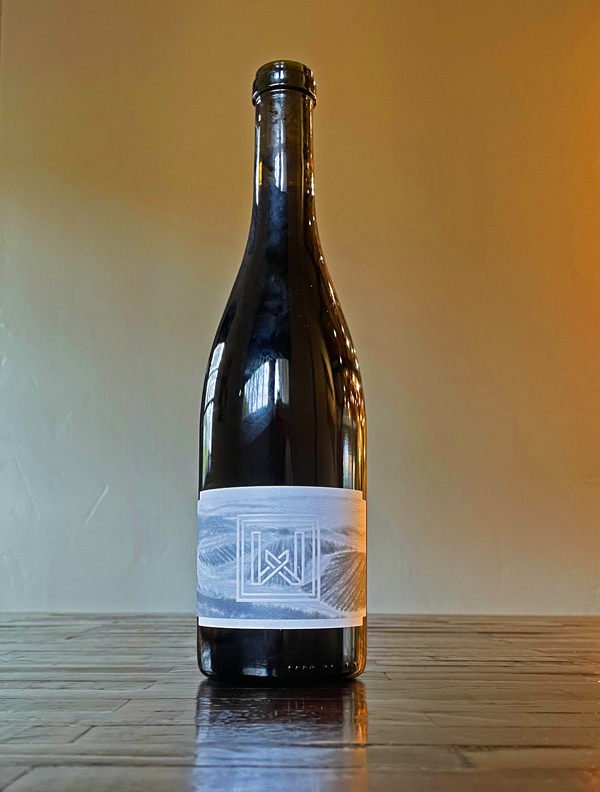
2020 Waylan Wine Co., Red Wine, Peake Ranch Vineyard, Sta. Rita Hills.
Finishing the year with something completely new, the Waylan Wine Co., from the Los Olivos area of Santa Barbara County, was recommended to me and I can report the first wine I’ve tried from them is absolutely delicious, sourced from the highly regarded Peake Ranch in the Sta. Rita Hills and made from a blend of Syrah and Grenache, it is fabulous fresh and brilliantly detailed with the Ganache’s personality really shining through at this stage with loads of red fruits, floral tones and snappy spices. This magenta/ruby red Peake Ranch wine from Waylan is full of youthful energy, dry extract and brightness with juicy red fruits leading the way on the medium to full palate that feels nicely lean with the natural acidity proving excellent lift here. The mouth flows seamlessly with dark cherry, plum, pomegranate and tangy red currant fruits along with lavender, pepper, peony, very subtle wood framing and a fine delicate earthiness that instead of taking away from the pleasure of the fruit, enhances it, this is a lovely Rhone effort that keeps impressing with every sip and gains textural joy with air, consider me a fan now, I can’t wait to try more of these Waylan wines! Peake Ranch has plantings that includes seven different clones of Pinot Noir, three clones of Chardonnay and two each of Syrah and Grenache, which are in this wine. The vines are all along a sloping hillside that covers most of the ranch, exposing the vines to the Pacific Ocean, making for a long hang time concentration and vibrant acidity that delivers exceptional balance.
The 2020 Peake Ranch Red, which I understand usually includes Mourvedre, was made with an undisclosed percentage of Syrah and Grenache with the Waylan guys saying that this wine is (all) about the place, not the specific grapes, they used and believe the terroir is the most important factor and its distinction sets this wine apart, which I can attest to. You will not be disappointed, Waylan continues, in this vintage, of which only a few barrels were made, again details of winemaking are a touch secret, though I’d imagine that there was a bit of whole cluster employed and that the grapes came in ripe, but with lower natural sugars with the final alcohol being about 13%, which again is a reflection of the cool climate site. Located on the eastern end of the Sta. Rita Hills AVA, the Peake Ranch has 50 acres of vines set on sandy soils and enjoys a breezy cool marine influence. Waylan, the name comes from blending of the two winemaker brothers’ middle names, produces small lot hand made wines from selected vineyard sites. Brad and Greg Saarloos founded their label back in 2015 and do quite a collection of wines, from solo varietal Grenache, Syrah, Gamay, Cinsault and Cab offerings to interesting blends, including this one, plus their own Passetoutgrain Pinot Noir and Gamay cuvée, along with a interesting set of whites and a skin contact Gris. So there’s a whole lot to explore here and I’ve thinking I will have to visit the Waylan tasting room at 2963 Grand Ave in downtown beautiful and rustic Los Olivos. Thanks to my colleague James Schultze for sharing this bottle with me, it was sensational and made for a cool discovery indeed.
($40 Est.) 93 Points, grapelive
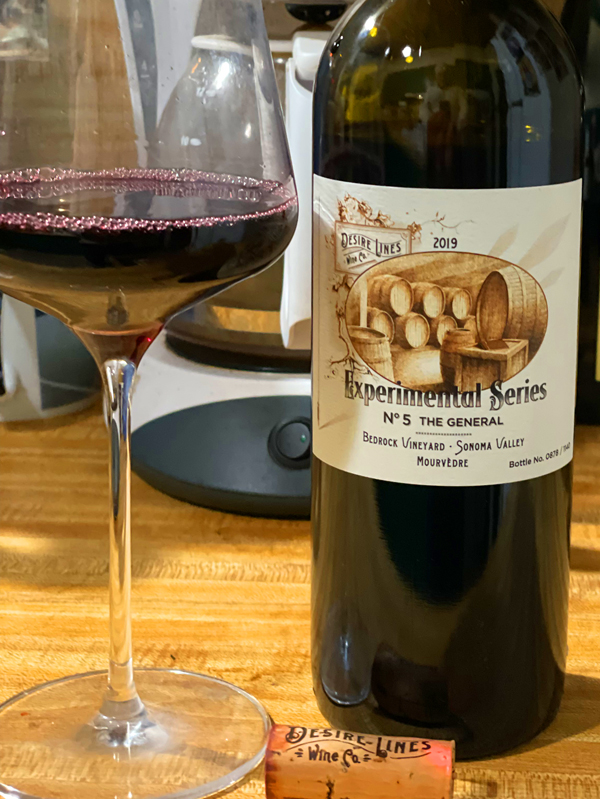
2019 Desire Lines, Mourvèdre, Experimental Series #5 – Bedrock Vineyard, Sonoma Valley.
This very rare Experimental small lot 100% Mourvèdre by winemaker Cody Rasmussen, the assistant winemaker at Morgan Twain-Peterson’s Bedrock Wine Company and owner of this vineyard, is one of my favorite wines of the year and an absolute stunner in the glass with powerful depth, vinous fruit and complexity that makes it a truly world class effort, rivaling some of the world’s best wines made rom this varietal! This Bandol inspired Mourvèdre is beautifully purple inky in the glass with heady aromatics and a densely packed full bodied palate with crushed blackberries, black cherries, plums and dark currants leading the way in the mouth along with dark florals, snappy spices, cedary wood and wild herbs providing complex background accents. The richness and structure here is fabulously compelling and this wine certainly has a raw sex appeal, from nose to finish it doesn’t put a foot wrong and there is tons of potential for long term aging, much like the wines that inspired it, like Bandol legends such as Domaine Tempier, Pradeaux, Gros Nore and Terrebrune to name a few. This Mourvèdre, with delicate earthiness and contrasting savory elements, showcases the vineyard and vintage to near perfection, delivering an awesome performance, hiding its serious tannins behind the year’s concentrated fruit, which is almost plush and nicely rounded in feel and it lingers on and on with violets, creme de cassis and peppercorns. Rasmussen, along with his wife Emily’s Desire Lines Wine Co. which was founded after the 2015 vintage, have put out a killer set of offerings, including some impressive old vine reds.
The Desire Lines Experimental Series #5 – Bedrock Vineyard Mourvèdre was sourced from two small blocks of old-vine Mourvèdre, planted on a rocky, north-facing knoll that runs gently down to Hooker Creek to the north here in this historic Heritage site that is well known for its 1880s planting of Zinfandel, these vines and the vineyard are obviously very important to Rasmussen, who has a huge love for this place and has almost unrivaled access to it! Rasmussen’s Bedrock Mourvèdre was fermented with 40% whole cluster and raised in barrel for fifteen months without racking, as he notes, in a combination of 228L and 600L barrels. The stem inclusion, he says, adds a lovely bit of spice to the nose, the subtle carbonic effect, due to the whole bunches, adds a little flesh to the palate, and the combination of barrel sizes, Cody continues, teases out both breadth and tension in the finished wine. As mentioned here, this stellar lineup of small lot and handcrafted wines by Cody Rasmussen, who, as explained above, is the assistant winemaker Bedrock Wine Company, along with his wife Emily have carved out a niche for themselves with these Desire Lines Wine Co. offerings, this is one of the best newer California wineries to emerge in recent times. While as also noted here, their Syrah bottlings are their signature wines with the Griffin’s Lair and Shake Ridge versions being some of the best modern expressions of this grape in California. I also am greatly impressed by their awesome Dry Rieslings, especially the Cole Ranch, the Wiley and organic Massa Estate versions. If you are lucky enough to have this bottle, be sure to decant it and enjoy it with robust cuisine to allow it to full open. I highly recommend getting on the Desire Lines mailing list to get access to these gorgeous wines, like this one!
($38 Est.) 95 Points, grapelive
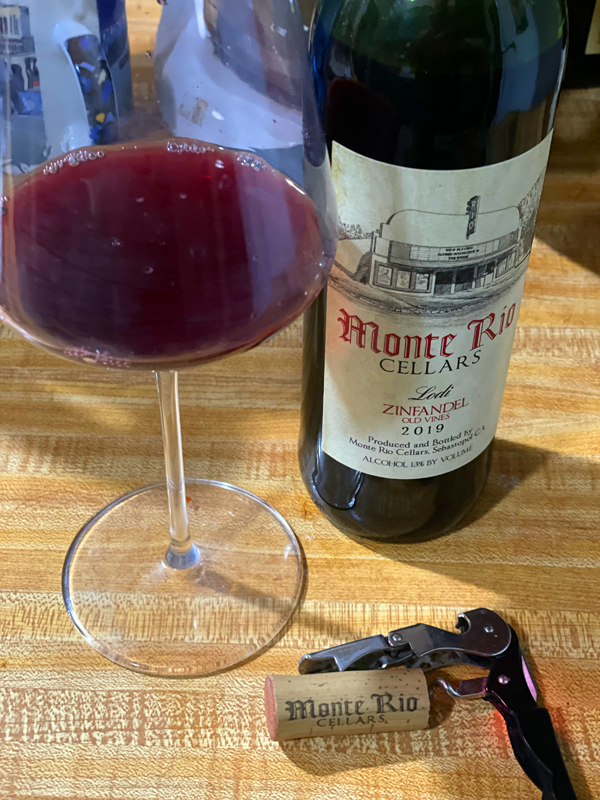
2019 Monte Rio Cellars, Zinfandel, Old Vines, Lodi, California.
The rustic, simple and crunchy the 2019 Monte Rio Old Vine Zinfandel is like a Lodi Chianti, going nicely with pasta and or hard cheeses, it has a bright core of crushed raspberry, plum, tart cherry fruits, along with dried spices, peony florals, aged cedar, bay leaf and tangy herbs. These Monte Rio Cellars wines are made all naturally and this 2019 Lodi Old Vines Zin comes from organic 95 year old Zinfandel vines at the Shergil Vineyard planted on the classic sandy soils of this historic region. The winemaking is old school with a 100% whole cluster and native yeast Carbonic Maceration for 4 days in stainless steel tanks, after which it was pressed off the skins and stems back into stainless steel for 12 days. No sulfur was used here and the wine was matured in very old barrels for 10 months before bottling and release, all to promote the wine’s raw character and it was picked to showcase freshness with just about 13% natural alcohol, making it less ripe, less concentrated and fruity than you’d expect from the region, that is known for dense and sweeter fruit, but welcome for those looking for a food friendly, reasonable priced and quaffable version of Zinfandel.
Monte Rio Cellars, as noted here at Grapelive.com, is owned by famous Sommelier Patrick Cappiello, who along with his friend and famed Syrah maker Pax Mahle produce a series of ultra small production, hand crafted and naturally made wines. Most of the offerings are Zinfandel bottlings, though they have started exploring rare varietals, including a bottling of Mission grape (also known as Pais or Listen) and a California hybrid known as Rubired, as well as doing Cappiello’s signature Skull red blend and a really good Sangiovese, with most all of the vines being organic. The Monte Rio collection is mostly sourced from the Lodi region, though Patrick does get some grapes from Mendocino, including some Chardonnay. As mentioned, the winemaking here is all about hands off and minimalist in style, everything is done to enhance transparency and intentional rawness for an authentic profile. I am finding these Monte Rio wines loads fun and dusty dry with just the right amount of fruit generosity, these are country style wines that get better when paired up with food, especially BBQ and or grilled meat dishes. The color is slightly lighter than some Zins, with this supple, medium bodied and balanced wine having a garnet and ruby hue in the glass, which is inviting and recommend checking out the latest releases here.
($23 Est.) 90 Points, grapelive
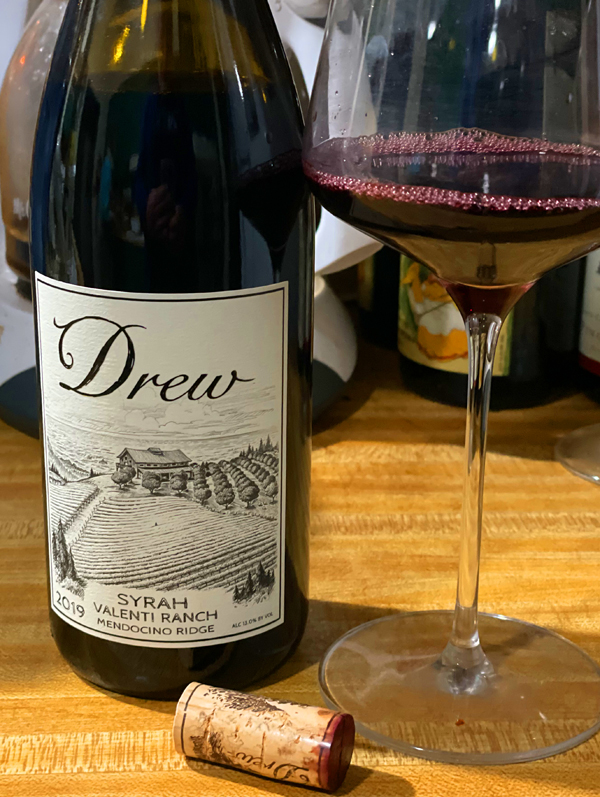
2019 Drew Family Cellars, Syrah, Valenti Ranch, Mendocino Ridge.
One of my very favorite California red wines, the Drew Valenti Syrah offers emended class and quality with its cool climate Northern Rhone personality and elegant, Cote-Rotie like presence in the glass and this slightly shy 2019, which is beautifully purple hued, does not disappoint after it enjoys time to breathe and awaken, it is a gorgeous and world class dark fruited and aromatic wine. This vintage, even with its supple tannins, is a wine that should reward the patient and looks like has an extended drinking window, while still being well mannered in its youth with this year’s version slowly opening after the cork was pulled, but it puts the throttle down after 20 minutes or so, enhancing the perfume and allowing the density of fruit to shine.The palate feels restrained with a medium body and classic layers of blackberry, boysenberry, plum and blue currant fruits along with savory cigar wrapper, camphor and subtle earthy tones, as well as the beautiful violets, cracked pepper, sandalwood/cedar and lingering kirsch. Drew’s Syrah offerings are exciting examples with low natural alcohol and lively acidity, and while known foremost as one of California’s best Pinot Noir producers, these Syrahs are not to be missed and offer a stunning value for what you get in the bottle, as this Valenti Ranch shows and will continue to do so for another decade.
The Valenti Ranch vineyard site sits up at just under 1,500ft and is a cold windy site that faces the East which gives it nice exposure to deliver ripe grapes to Jason Drew’s winery at the very Western end of the Anderson Valley, within the micro Mendocino Ridge AVA. Valenti, which is farmed all organic, is set on ancient seabed with meager marine sedimentary soils and sees huge Pacific Ocean influence with a selection of Chave (Hermitage) clone and Clone 1 (believed to be an old Cote-Rotie selection) planted here. This site, Drew explains, brings a leaner profile to this wine and that he co-ferments a small percentage of Viognier to add what, he calls, an aromatic lift in this fabulous Syrah. As to the winemaking here, Jason employs traditional old world methods with this wine seeing a 100% whole cluster fermentation with all natural native yeasts with long cool maceration before aging a full 18 months in all used, neutral French oak casks. Typically the elevage for the Syrah is done in a combination of barriques and larger puncheons, depending on the vintage and this 2019 Valenti finished up at a very refined 13% alcohol and it is brilliantly transparent and very focused, it goes fantastic with classic pairings, like herb crusted lamb, meat dishes and or wild mushrooms. With food, this Syrah fills out more fully and provides loads of entertainment and texture, delivering on its promise and reminds me a lot of its notable and revered French cousins, with this particular vintage leaning towards exceptional Saint-Joseph(s) offerings.
($55 Est.) 94+ Points, grapelive
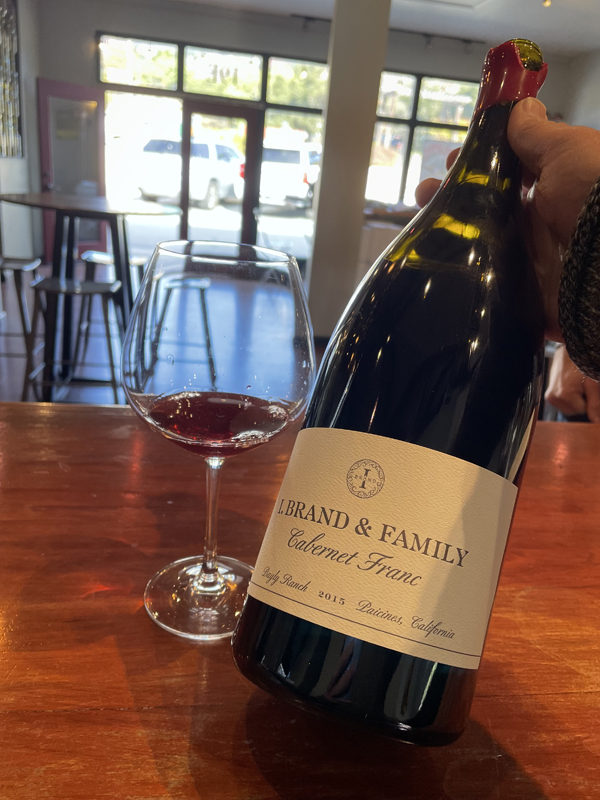
2015 I. Brand & Family, Cabernet Franc, Bayly Ranch, Paicines, San Benito County.
Ian Brand had opened up his magnum library and there’s some really fun things available and I got a preview with this lovely and nicely maturing Bayly Ranch Cabernet Franc being one of the treats that impressed out of the big bottle showing classic varietal character, very much in the Loire Valley style, delivering early red fruits, spice, mineral and well judged and restrained oak usage. This bottling has always intrigued me, Cab Franc fans should try this one while they can, as this vineyard saw it’s last Cabernet Franc harvest last year and was sadly re-planted to other varietals, though Ian, ever the vineyard whisperer has assured me that he has found another fabulous source and that his all new 2021 and 2022 Cab Francs will be hugely exciting versions. I love how much this Bayly Ranch tastes like Bourgueil, Saumur-Champigny and Chinon, with beautifully transparent layers of red currant, plum, mixed berry and dark cherry fruits, along with violets, minty herb, bell pepper, a touch of bay leaf, pipe tobacco, chalky stones and sandalwood. This 2015 is evolving and in the glass it adds tertiary elements, leather notes and dusty baking spices, plus its tannins have already have softened and the wine feels silky vinous on the medium bodied palate, making it very nuanced and lightly weighted and best with food, with subtle meat dishes and or duck breast being nice companions to this stylish almost strawberry juice and garnet hued effort.
As mentioned here, the Bayly Ranch Vineyard Cabernet Franc is sourced from vines in the San Benito County and within the Paicines AVA, which is near the Tres Pinos Creek and the notorious San Andreas fault. The soils here consist of a stony mix including ancient alluvial deposits with an array of geologic structure, set in a warm climate location that is refreshed by the cool nights, making it a sublime place for Cabernet Franc, as this wine shows. This Cab Franc, winemaker Ian Brand’s Loire inspired example joins the denser and more Bordeaux like Bates Ranch version in Brand’s exceptional latest collection, he really has a great touch with this varietal, with both of the Cab Francs being exciting wines with their own personality and they make a great pair of bookends! To enhance the classic charm of his Bayly Ranch Cabernet Franc, Brand and his team went with traditional methods with the grapes seeing careful sorting and de-stemming with a cool maceration to preserve aromatics and the wine was aged in a combination of well seasoned French oak that allows for its more raw or old world side to shine through. The 2017, 2018 and 2019 Bayly Ranch Cab Francs are all exceptional vintages and I highly recommend grabbing as many as you can while they are available, along with the few magnums of this 2015 and the 2016 as well, that are now offered at the I. Brand & Family Winery tasting room. It’s worth mentioning too, that along with the Bayly Cab Franc in magnum, Brand has also released some older vintages of his signature Grenache in the big bottles and they are just as stunning and should be overlooked!
($42 Est. In 750ml) 93 Points, grapelive
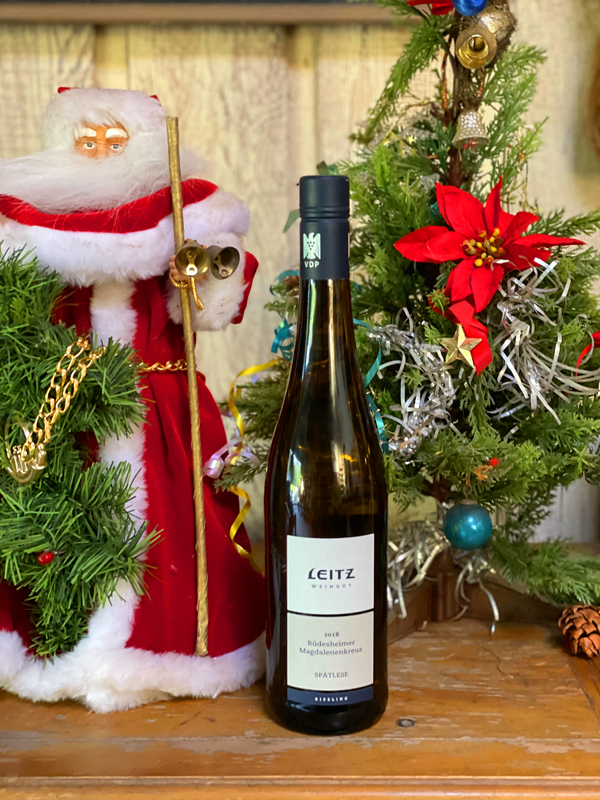
2018 Weingut Leitz, Riesling Spatlese, Rüdesheimer Magdalenenkreuz, Rheingau Germany.
The Leitz Magdalenenkreuz Spatlese, a happy place wine for me, is always expressive and pure, the name of this vineyard, translates to “the cross of Mary Magdalene,” named after a red sandstone cross that can be found amongst the vines here. Johannes Leitz nicknamed this wine his “Maggie” and it has always been a traditional favorite of his and mine and this beautiful 2018 was perfect with the array of Christmas dishes with its luscious off dry palate and racy acidity keeping things fine tuned with its natural sweetness and richness. This vintage is a bit restrained with subtle tropical and floral notes, with just a touch of pineapple and white flowers to go with the crisp apple, apricot, quince and juicy tangerine fruit that is well backed up by mineral tones, wet stones, tea spices, crystallized ginger, a hint of honey and candied lemon peel. Easy, refreshing and drier than expected in in the glass this pale golden Spatlese with just about 7.5% natural alcohol feels nicely textural, but is still light on its feet, playing well with food and just the right amount of joyous cheer. Rüdesheim is one of my special places and I love all of these Leitz wines, not just their signature GG’s, which are monumental dry Rieslings, especially the Schlossberg Grand Cru, with Leitz’s Dragon Stone Feinherb, Kabinett and this Spatlese being exceptional values.
The Rüdesheimer Magdalenenkreuz vineyard, a highly regarded VDP site, is located east of the village of Rüdesheim and is influenced by the wider part of the Rhein and the soils here are comprised of mainly sandy loam, loess, a touch of clay and with much less slate than down Rhein, in the Rüdesheimer Berg crus.The climate here makes for fatter less edgy hedonistic wines, I mean, as mentioned before in my reviews, it is better suited to producing richer Rieslings, that has more mouth feel and more fruity presence, and it is an ideal site, as Leitz notes, for a riper expression of Riesling that is perfect for Spatlese. To highlight the terroir and to express transparency, this Rüdesheimer Magdalenenkreuz is precision made with 100% stainless steel and it is wine of ultra clarity that is always rewarding, concentrated and complex even in its youth, though it should drink fantastical well for a decade or longer too. I am always so pleased with this wine and even though I usually drink Leitz’s Trockens, I do try not to miss this bottling that also goes fabulous with hotter Asian cuisine and spicy foods in general, as well as being a fine choice for the range of flavors of a holiday meal. I have twice visited Rüdesheim and spent a lot of that time hiking through the vineyards, including this one, and this wine always transports me there. Johannes Leitz is one of the Rheingau’s most recognized personalities and an award winning producer, that has helped this historic area maintain its legendary status.
($29 Est.) 93 Points, grapelive
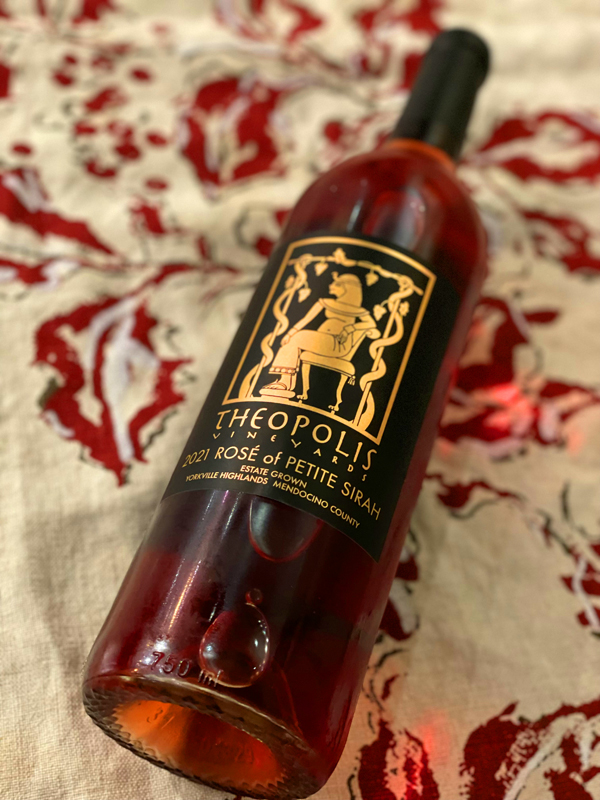
2021 Theopolis Vineyards, Rosé of Petite Sirah, Estate Grown, Yorkville Highlands, Mendocino County.
Sometimes overlooked for the Holidays, Rosé wines can be a real treat during the season and easy to enjoy both with the meal and or sipping while opening the presents and this latest Theopolis Rosé is a delicious vinous and spicy example, made from pure Petite Sirah, showing ripe crushed raspberry, strawberry, citrus, sour cherry and peach fruits on a fuller style palate. The dry Rosé of Petite Sirah has rounded mouth feel adding mineral tones, light rosewater florals, a soft wood note and hints of cinnamon, caramel and pepper. Everything folds together and flows smoothly here and with its rich texture it goes well with heavier and more flavorful food pairings, but still has a bright focus that makes it lively and refreshing. I like this vintage, with its dark ruby hue, it manages to be expressive and expansive while being dry and structured, it is a very pleasing year for this offering, one of the best so far.
Theodora Lee’s Theopolis Vineyards, as I have noted here, is one of the top vineyard sites for Petite Sirah in California, with vines hugging steep terraces in the Yorkville Highlands on schist and marine sediment soils. The Theopolis Vineyard has received amazing critical acclaim since it was established in 2003, with Theodoa’s success first coming from the wines made by Mike Officer at Carlisle, and more recently with Paul Gordon’s Halcon versions. Her own wines, which I first started tasting with her 2013 vintage have really started get dialed in as the vineyard matures, especially her signature estate Petite Sirah, which is a very unique and powerful example of this grape. Theodora has added a few new cuvées, both red and white made from sourced grapes, along with a set of Pinots, coming from near by vines as well as the SLH and this Rosé, which barrows Bandol style. For the Theopolis Rosé, like the great Domaine Tempier, Theodora went with 50% direct press (earlier picks) and 50% Saignée, a bleed off from the wine wine harvest to create more impactful version of pink wine and it was aged for a few months in well seasoned neutral French oak. This is drinking very nicely right now and there’s no reason to wait any further, this fun pink is still available at the Theopolis website!
($28 Est.) 90 Points, grapelive
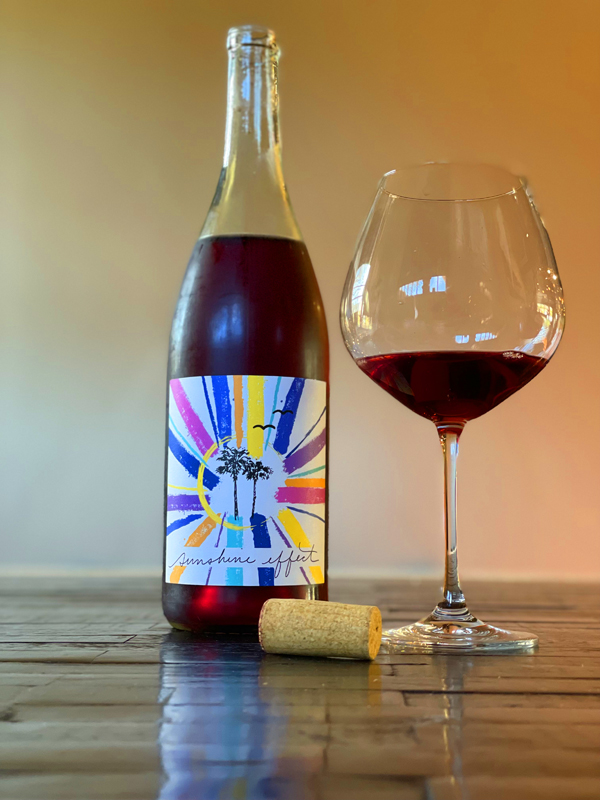
2021 Fair Moon Wine – Sunshine Effect, Skin Contact Pinot Gris, Holmes Gap Vineyard, Van Duzer Corridor, Willamette Valley, Oregon.
The second vintage of Jessica Wilmes’ Sunshine Effect “Gris Rouge” is an impressive wine, and a bit more textural and polished in form, made with extended skin contact and fermented Pinot Gris, from grapes sourced at the Holmes Gap Vineyard in cool and breezy Van Duzer Corridor and is beautifully ruby/strawberry colored in the glass and lightly tannic and crisply dry on the palate. I’m enjoying Wilmes latest set of wines very much, they include this one, her signature offering thus far, as well as her delightful and unique carbonic Tinta Caõ red and her bright golden skin contact Auxerrois, which I most recently reviewed, all of which are distinctly different Willamette Valley wines for this winemaker, who has certainly taken her own path. This 2021 is a highly quaffable and more rounded effort, but a similar profile to her first version, with red apple, orange rind, strawberry and sour cherry leading the way again here, though in this vintage you find some golden raisins, more of a vinous feel, much more subtle savory earthiness, mineral notes, a touch of herbal tea and a nice array of delicate spices that make this “Orange” wine a little more seamless and confident in style. You can more clearly a closer relationship to the inspiration Wilmes took from the likes of the legendary Radikon and Gravner wines of Northeastern Italy, though lighter and fresher than those much more serious examples, and Jessica is just fine with that, as she has no pretensions in her bones. This wine, which should be served only slightly chilled is a great picnic or campfire wine, becoming more generous with food and air, going well with simple cuisine choices rather than white table clothes!
As mentioned here, Fair Moon Wine is an ultra small-production micro winery, that looks to hand-craft unique tiny lot stuff with natural-driven winemaking, with low or no SO2, what Wilmes playfully adds, happy palates in mind. She is motivated by her own experiences, which have included years chasing harvest intern jobs, having to live out of her trusty Toyota Tundra truck and long hours for little pay, which has made her grateful for fleeting moments of calm. This has led her to make wines that are fun, quaffable and flavorful, for what she hopes will be enjoyed during everyday adventures or periods of total relaxation with friends, and with lots laughter. This Sunshine Effect Skin Contact Pinot Gris, somewhere between a dark Rosé and a light red, was on the skins for an exceptionally lengthy 21 days and was fermented completely with natural methods without any additions and was aged close to eight months in neutral, well seasoned, French oak barrels to mature and let the wine all meld together, while allowing fresh acidity and transparent flavors to shine through. The Holmes Gap Vineyard, where this wine’s grapes come from and mostly home to some lovely Pinot Noir, is nestled, as noted above, in the Van Duzer Corridor in the Willamette Valley with mainly marine sedimentary soils that give mineral tones and a nice stony element to the wine. Wilmes, who has interned at Troon and Grochau in recent years, has embraced natural winemaking and will be the first to tell you that she’s into rarities and funky stuff, but fully understands that wine should be al about pleasure and it takes a lot of skills to guide these kind of wines from vineyard to bottle, which she has done very well indeed! She sells mostly direct, via her Fair Moon Wine website, as these wines are very limited offerings.
($25 Est.) 90 Points, grapelive
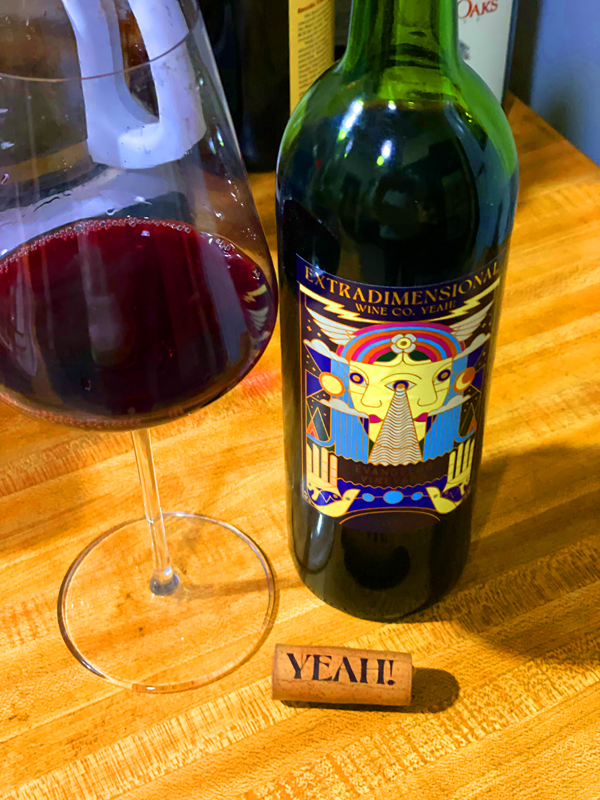
2020 Extradimensional Wine Co. Yeah!, Old Vine Mourvèdre, Evangehlo Vineyard, Contra Costa County.
As fires raged throughout California this ancient vineyard site, set remotely along the delta on deep Delphi sands, near a PG&E transformer, quietly produced some of California’s best grapes without the devastating smoke taint that affected almost 80% of the wine regions of the state. Taking full advantage of this blessing, winemaker Hardy Wallace at Extradimensional Wine Co. Yeah! has made a gorgeous Old Vine Mourvèdre from Morgan Twain-Peterson’s Evangelho Vineyard in the most raw and natural style possible, it shows his chops when working with this varietal, which is without a doubt his signature grape. One of the most gentle, flamboyant and intriguing personalities in the wine business Wallace, who was originally part of Dirty & Rowdy wines, has added to his legend here, with his 2020 Evangelho Mourvèdre, which shows remarkably fresh crushed blackberries, Provencal herbs and stunning violets and peony perfume on the nose and that echo on the expressive and supple palate with dark plums, raspberry, currant and the mentioned blackberry fruits leading the way along with peppery spice, hints of lavender, cinnamon, sandalwood and a touch of leather, which is a classic marker of this grape. There is a beautiful clarity in this ripe, but finely balanced vintage and at only 13% natural alcohol this wine is fabulously quaffable, while still providing a serious underlying structure and hidden depth, this wine with please and impress even the most snobbish of Bandol enthusiast! I highly suggest following Hardy on social media, which he has truly mastered to a new art form and searching out his latest wild collection of offerings.
Hardy Wallace always suggests loads of time decanting his Mourvèdre bottlings, recommending up to 75 minutes most times, but I just popped the cork and went for it and after a few minutes this wine blossomed and was pure seduction, getting better and better with every sip, it really didn’t show the grape’s normal funk, feral notes and edgy meaty elements, even though it teased it and the full experience here was one of vinous joy, with hedonistic old vine fruit concentration. Wallace is clean and passionate natural winemaker and his wines show his commitment to the details, even when he tries his best to only allow the vineyard to speak in his wines, using a very hands off approach with the Mourvèdre seeing native yeast fermentation(s) and no additions in most years and the wines are aged in neutral old ranch oak barrels. Hardy has been experimenting with his Extradimensional Wine Co. Yeah! wines, perfecting his Orange wines and even adding skin fermented white grapes to his red blends, while his Mourvèdre sees a more old school and traditional style in most cases and like here in his Evangelho version, from gnarly 100 year old plus vines, which was crafted with whole cluster and a lengthy maceration with hand punch-downs before the wine is pressed to oak casks where it was matured about a year before being bottled unfined and unfiltered. Obviously, this wine is what it is, because of the quality of the grapes and this historic vineyard plays the most significant role in the greatness here, hats off to Wallace for setting the stage for this Old Vine Mourvèdre’s glorious performance. This deep purple/garnet hued wine pays homage to some of the finest Bandol wines, like Château de Pibarnon, Pradeaux and Domaine de Terrebrune, and this Extradimensional Wine Co. Yeah! Mourvèdre is best enjoyed with hearty and or rustic country cuisine with leg of lamb and duck confit being a couple of nice pairings!
($50 Est.) 94 Points, grapelive
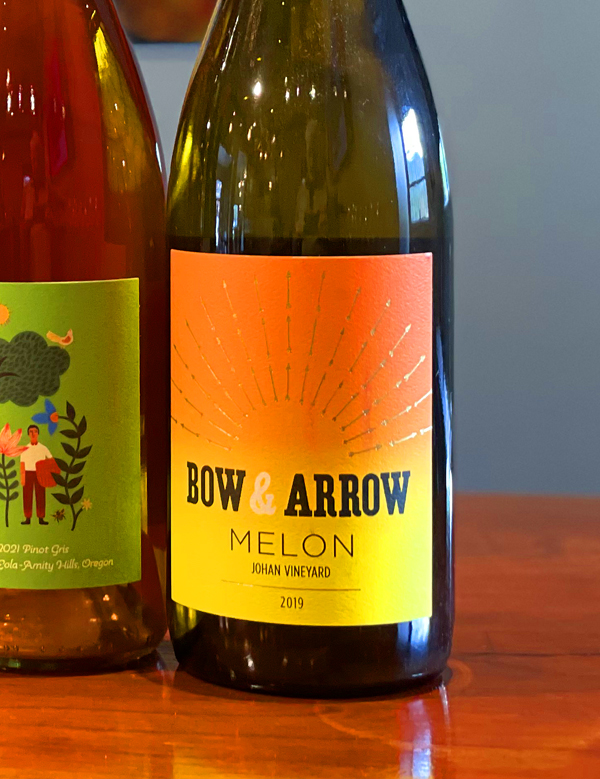
2019 Bow & Arrow, Melon de Bourgogne, Johan Vineyard, Willamette Valley, Oregon.
Back to exploring Oregon, I found this 2019 vintage of Bow & Arrow Melon, which I had tucked away and forgot about, and I was nicely surprised by this dry and leesy white that comes from the organic vines at the Johan Vineyard, it shows a touch of oxidative and evolved elements along with good acidity and crisp layers of lemony citrus, white peach and golden fig fruit along with a touch of wet stones, yeasty notes and mineral tones. The texture has developed too with this 2019 giving some round mouth feel and while still brisk and light framed it has a good expansion and allows this wine some flexibility with cuisine, though I might have drunk it a bit younger with oysters and as it is now I might enjoy it with soft farm cheeses and roast chicken. While Bow & Arrow is known for their Gamay and Pinot bottlings also does a fine series of whites too, with this Melon being one of their favorites along with winemaker Scott Frank’s Sauvignon Blancs and his Chenin. This pale golden wine is certainly a solid effort and those that like Muscat, which are aged as this one was on the lees, will enjoy this wine, especially in its just released form. Scott works with natural techniques in the cellar and his wines have very low SO2 and the wines here are charmingly raw and slightly rustic in personality.
Bow & Arrow, which was founded in 2010, by Scott Frank, is based in Portland and is a Loire Valley and old world “natural” inspired winery that sources grapes from organic vineyard sites throughout the Willamette Valley. They make a set of classics from Sauvignon Blanc, Chenin Blanc, Cabernet Franc and this Melon, as well as some unique rarities and some cool playful quaffers, but with serious intent. I am a longtime fan of Frank’s Bow & Arrow wines, especially his awesome Rhinestones cuvee, also sourced from the Johan Vineyard, that is close to an Oregon version of Cheverny (a Loire Valley appellation) with a blend of Pinot Noir and Gamay. Frank, who spent some time working under the legendary John Paul of Cameron Winery, has taken his own path and has created an underground following of counter culture wine drinkers that are looking for value priced artisan wines. The Johan Vineyard, a certified biodynamic site in Rickreall area of the Willamette Valley, is largest source of fruit for Bow & Arrow, farmed by Dag Sundby and Dan Rinke, who make their wines and provide grapes to some top notch producers, it is set on Helvatia and Santiam soils which were formed by glaciolacustrine deposits over silty loams and clayey alluvium with high acidity and is mineral rich. This is a beautiful site and is influenced by the Chehalem range and the cool nights that gives these wines from here a distinctive (terroir) personality. I recommend checking out the latest set of wines here at Bow & Arrow, especially the 2021s, which have loads of energy and substance.
($25 Est.) 90 Points, grapelive
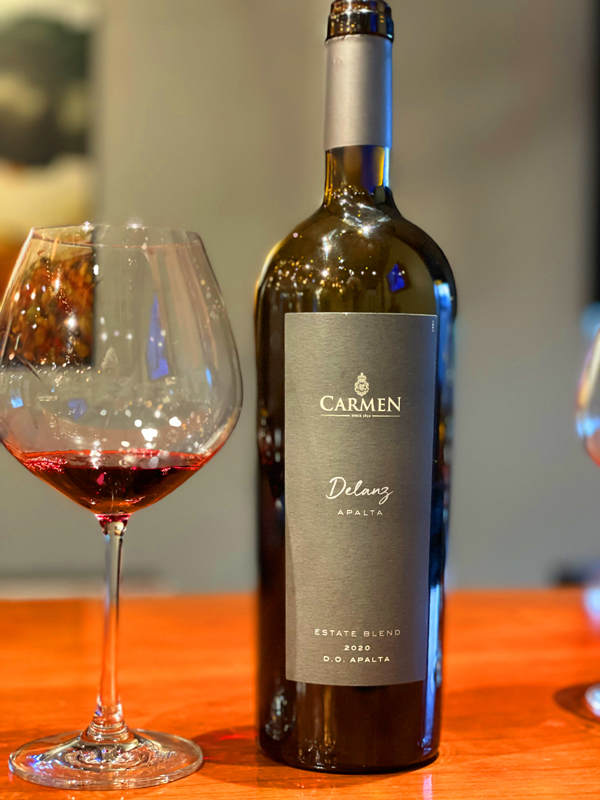
2020 Vína Carmen, Delanz Apalta, Red Estate Blend, D.O. Alpalta, Colchagua Valley, Chile.
Blind tasted and (I) was completely wrong, though I did think it had elements of both the Bordeaux and Loire regions, but I enjoyed this Carmen Delanz Apalta. This Carmenere based Chilean red very much impressed me and I thought it was very solid value with rich fruit density, classic spice and green herbal notes, along with a restrained use of oak that gave it an old world feel. Grown in the now prestigious Apalta Valley, well up in the Andes, best known for the wines of Lapostolle and their iconic Clos Apalta, this Carmen Delanz Apalta is crafted using a unique blend of 79% Carmenere, 15% Cabernet Franc and about 6% of Syrah, which is a savvy choice and gives an extra degree of complexity and allows for pretty floral and lightly earthy aromas to emerge from the glass.The full bodied palate flows nicely with black cherry, plum, currant and dark berries forming a core of fruit, going along with the hints of sandalwood, minty herbs, anise and a faint green bell pepper note in a supple wine with ripe polished tannins and good natural acidity. The vines are located in the Colchagua valley within the Alpalta zone with the Carmenere sourced from a dry farmed vineyard site originally planted in 1935 that are set on granite soils. The Winery notes that this 2020 vintage of Carmen’s Delanz Apalta cuvée is the first release of this wine, which saw the inclusion of some Cab Franc and Syrah from more recently planted.
For the winemaking here, the winery chose pretty traditional methods with each varietal macerated and fermented separately in small lots and blended later with primary done in stainless steel tanks with 24 days on the skins before the wine must was pressed using a vertical press using different pressure intensity to get full extraction, but a softer tannin profile. The Delanz Alpalta was aged in French oak barrels for 18 months and was naturally clarified without any fining agents, with a well judged percentage of new wood, which helps this wine show its true nature and it does a good job of showcasing the terroir. Emily Faulconer, the winemaker here at Carmen’s Apalta estate, has done a fabulous job capturing a sense of place, noting that Apalta is a magical small valley that is situated at the foot of a mountain range, with the mentioned deep granite based soils and an ancient wooded forest that she says adds its influence here in her new wine and brings out the best in the Carmenere, one of Bordeaux varietals that was almost completely extinct in France before being re-discovered here in Chile. Foulconer adds this is a special place for the Chilean viticulture and they have many years of experience and history here in Apalta. The 2020 vintage was a year in which draught caused extremely low yields and the winery carefully selected the grapes here to be sure of the best quality and concentration, which this Delanz Apalta clearly displays, but the cool nights here make for very balanced wines. Again, thank you to my friend Giussepi Cossu, who has visited this region and tasted me on this wine.
($20 Est.) 91 Points, grapelive
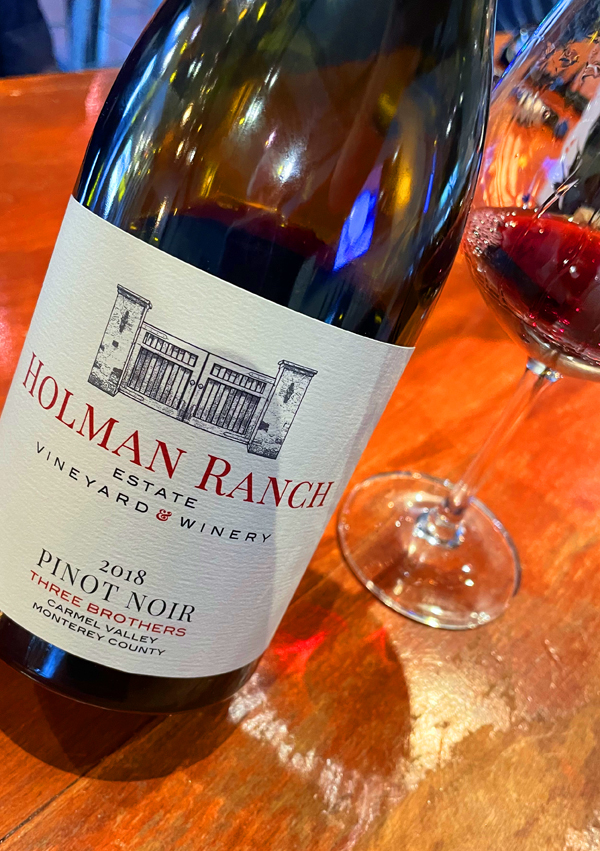
2018 Holman Ranch, Pinot Noir, Three Brothers, Carmel Valley AVA, Monterey County.
The Holman Ranch Estate Vineyard and Winery situated on the picturesque southern facing hillsides just east of the Carmel Valley Village is mainly known as a wedding venue, but their small parcels of vines are showing real potential and the 2018 Pinots, made by the father and son team of Greg Vita, a long time local winemaker who’s roots go back to the famous Spring Mountain Winery in Napa Valley, and the rising talent Chris Vita, who has brought some excitement these wines. This Three Brothers Pinot Noir is deep in color and beautifully aromatic with a bright array of red berries, mineral tones, floral dimension and subtle wood use, plus the added complexity of partial whole cluster fermentation. The texture is lush and satiny, but there’s personality and plenty of lively energy, with black cherry at the core and background layers of plum, sandalwood, currant, rose petals, delicate spices and a hint of sage tea. It’s a touch choice between the latest wines here, which are mainly just different percentages of the estate selection of clones, with this one a touch heavier in Dijon clones, though with some Calera and Pommard featuring as well, all of which, makes for a serious and delicious wine.
Having known Greg Vita for many years now, I was told by him, just after he was hired to consult with Holman Ranch, that he believed there was tremendous promise at this beautiful hillside vineyard and I’ve seen a real progression from the 2011 and 2012 vintages to now, and some of that I think has been the growth of Chris Vita’s influence here as well as the maturing of the vines here. Chris convinced his dad to go with more whole cluster in recent vintages and these 2018s, are for me, big steps up in quality and they show a less austere nature with expressive flavors and just the right amount of subtle crunch from the whole bunches and stems. The fermentation(s) are otherwise traditional with the grapes allowed to start fermenting with vineyard yeasts before being inoculated during the cool maceration period with a selected culture finishing primary ferments before the wines are free run racked to French oak where the Pinots age about a year in the barrel, after which they carefully blended into each cuvée. I was really impressed tasting through the latest Holman Ranch wines, with this one, the Heather’s Hill and their Kelly’s Press all showing fabulously well, a big thank you to Holman’s Giuseppi Cossu for guiding me through these well made small lot wines. Only a few barrels of each are made and they see mostly used wood, but enough new to add some polish and they are flexible and confident food wines as well, I recommend checking them all out.
($53 Est.) 93 Points, grapelive
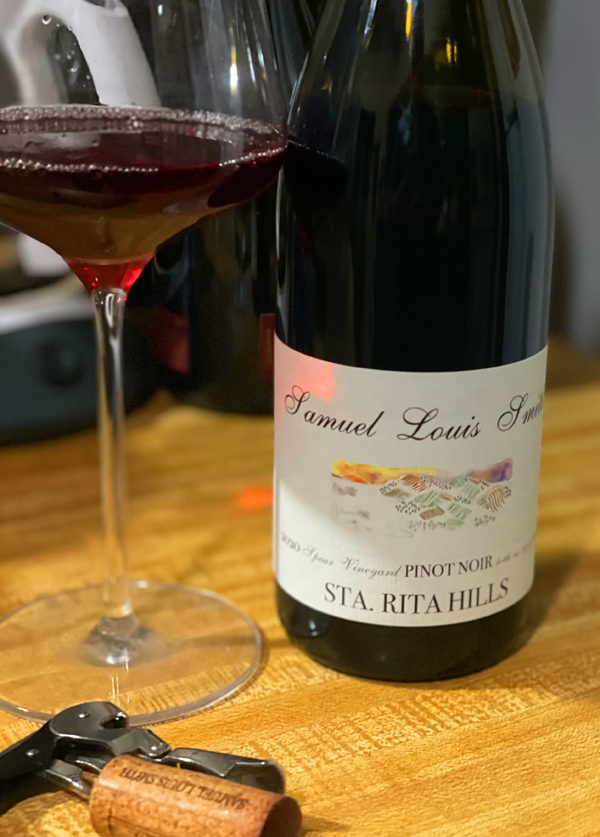
2020 Samuel Louis Smith, Pinot Noir, Spear Vineyard, Sta. Rita Hills.
The bright and delightful low alcohol Spear Pinot Noir from Sam Smith, who is the head winemaker at Monterey’s Morgan Winery, is a wine that was made in this vintage largely due to the devastating fires and smoke, with Smith trying to find grapes unaffected by these conditions and it offers lovely aromas, delicate flavors and quaffable drinking pleasures. Though, not up to his masterpiece Chard from this same vineyard, this Spear Pinot, which has less depth than some of his other wines, has plenty of personality with red cherry, cranberry, plum and raspberry fruits on the lighter framed, medium weight, silky palate along with refreshing acidity, a spicy pop, hints of blood orange, wild herbs, rose petal florals and subtle wood influence. Smith is a roll and his personal label wines are becoming highly coveted, especially his collection of Pinots, Syrahs and the mentioned, awesome, Chard, which should not be missed. Smith, who’s lively 2020 Spear Pinot came in at just 12%, uses partial whole cluster fermentation with native yeast primary and secondary fermentations with a gentle handling of the wine from start to finish, with his elegantly styled Pinots usually seeing a 10 months élévage in mainly used barrels, with up to 20 new French oak, though this one shows no overt oak influence.
The organic Spear Vineyard is already highly regarded and the wines coming from here are wonderfully balanced, have great depth and lovely aromatics, making it one of the Sta. Rita Hill’s prime locations and Sam’s Chardonnay is proof positive of the greatness here and its future potential. So it was interesting to try the Pinot from this site, which certainly has potential for some amazing wines made from this varietal, to match the quality already achieved with Chardonnay. Planted in 2014, Spear has Pinot Noir and Chardonnay primarily in the ground and it is farmed organically by Ofer Shepher, who deserves much praise for his efforts. Spear’s northern border, as Smith notes, and steep north-facing slopes hug Highway 246, giving the site a cooler tone and a long growing season that allows for complete ripeness with low sugars. Smith also notes that Spear’s varied elevation reaches 900 feet, getting some of the coldest blasts of Ocean air in the region and soils are mainly comprised of marine sedimentary clay and sand, meaning they are well drained, but provide a good defense to drought conditions, important for vine health and quality. Smith’s wines are best secured through his mailing list and his brand new set of 2021s have just been released, which look to be a very exciting set of small lot offerings, and I highly recommend checking them out, with the Gamay and Chards being wines not to overlook, while the Syrah and Pinot bottlings are the main focus.
($42 Est.) 90 Points, grapelive
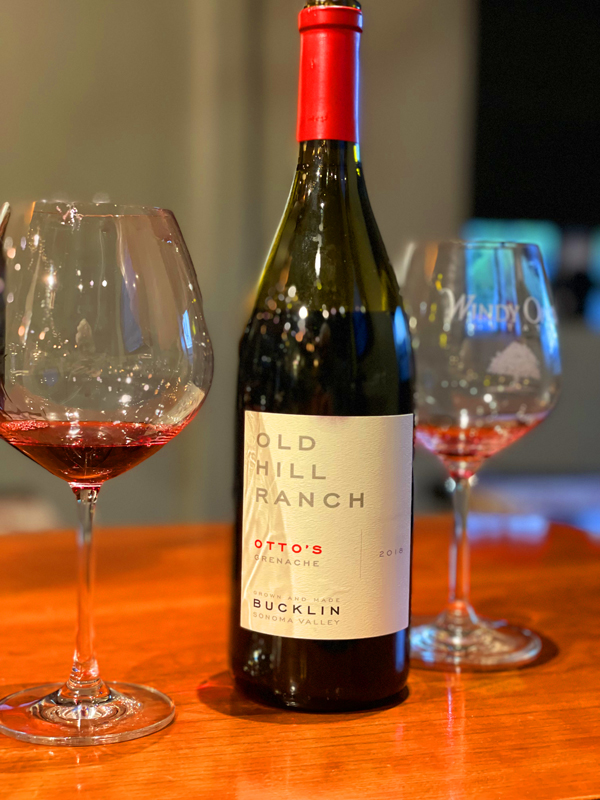
2018 Bucklin, Otto’s Grenache, Old Hill Ranch Vineyard, Sonoma Valley.
Bucklin produces only wines coming from their legendary Heritage family vineyard, the Old Hill Ranch planted in the middle of the 1800s, which is a total of 24 acres, broken up into seven different blocks from which Will Bucklin makes his nine different small lot wines, mainly Zinfandel of course, but also including this more recent Grenache Noir. This dark garnet and ruby 2018 Otto’s Grenache is still fresh and lively, bursting from the glass with expressive aromatic nose and a cool tone to the deep red fruits on display on the full bodied and dense palate, this is a unique and distinctly Californian version of the grape, showing its own sense of Sonoma Valley terroir. This rich and complex Grenache shows loads of black cherry, plum, red currant fruits along with peony, sage, bay leaf, minty herb and sweet strawberry reduction. Beautifully textured and with just the right amount of savory elements, refined tannins and the perfect amount of wood framing, this is excellent stuff. Will Bucklin’s stewardship of Old Hill Ranch, as he says, follows in the footsteps of his stepfather Otto Teller, a renowned conservationist who started farming in Sonoma Valley in the late 1950s. Bucklin adds that Otto was an ardent organic farmer decades before the notion caught hold, especially here in the Sonoma Valley. Going on Bucklin notes that Otto was a disciple of Rachel Carson’s “Silent Spring,” and he refused to use what he called the treadmill of agricultural chemicals on his vines. He believed in dry farming, as Will does, because he knew it produced better wine, with cellar techniques used now, that enhance the sense of place and to compliment the quality of the grapes grown here, which promote transparency and rustic charm naturally. After graduating from UC Davis in 1986, Bucklin interned at Château Lafite Rothschild in Pauillac (Bordeaux) before heading to Oregon to further his learning experience, after which his took over winemaking at Old Hill Ranch for his family’s efforts, turning it into very celebrated and coveted small production winery under his Bucklin label. Bucklin is trying to make his wines in the vineyard and is as hands off as possible in the cellar, as he notes he is very committed to low intervention, he does not add nutrients to the fermentations and only adds sulfur dioxide at very minimal levels to eliminate oxidation.
While known for their ancient vine Zinfandel, Bucklin also does small bottlings of field blended Grenache, like this beautiful Otto’s block planted in 2010, as well as a white and even some Cabernet Sauvignon, and I highly recommend checking them out along with their latest Zin releases. Only about 5 barrels were made of this Otto’s Grenache, coming from one of California’s most historic and oldest heritage sites, Old Hill Ranch, home to the state’s first official planting of Zinfandel, with this wine being a tribute to Otto Teller, who bought this old vineyard in 1980 and who, instead of ripping up the ancient mix of vines, decided to keep it as it is and for which we all can be grateful. The Bucklin’s have preserved the classic old block, as well as planted in the same method, newer parcels like this Otto’s, and the Bambino (young vine) Zinfandel block that sees many other black grapes inter-planted, including Petite Sirah, Alicante Bouschet, Grenache, Mourvedre, Syrah and Carignane. The elder 1880s vines include many others, as Bucklin explains, that through the use of DNA mapping he has documented three very rare varieties that otherwise only exist in the French Alps, most of which are found in the Savoie, Mollard, Persan, and Etraire de la Dui. There is also a small, but an important amount of white grapes too, such as Chardonnay, French Colombard, Chasselas, Muscat of Alexandria and Clairette Blanche that go into his white blend. There is also rarities here, like Aramon, usually only used in Rosé wines in France’s Languedoc, Catawba, Peloursin (one of Petite Sirah’s parent grapes), Charbono (Bonarda), Black Muscat and Tannat, the classic French Basque grape of Irouleguy, scattered throughout the vineyard. Also rumored, but not confirmed by Bucklin’s findings, there may be Merlot, Tempranillo, and Trousseau here as well, and interestingly, Will says, there is a significant amount of an “unknown spotted grape” named for the fact that it has no DNA marker that identifies it or where it might be originally from and the fact that the grapes have spots. I suggest, curious wine and California enthusiasts get on the mailing list to get these limited offerings, in particular their Ancient Heritage Field Blend and this Grenache! The Bucklin wines typically see native yeasts, fermented primarily in stainless steel and then aged a year or so in mainly used barrels, which is why you get to see varietal character and sense place all come together in the wines here. I advise looking for this Otto’s and the very rare Ancient Grenache, along with the Zins here, these are super wines, and authentic California treasures!
($36 Est.) 94 Points, grapelive
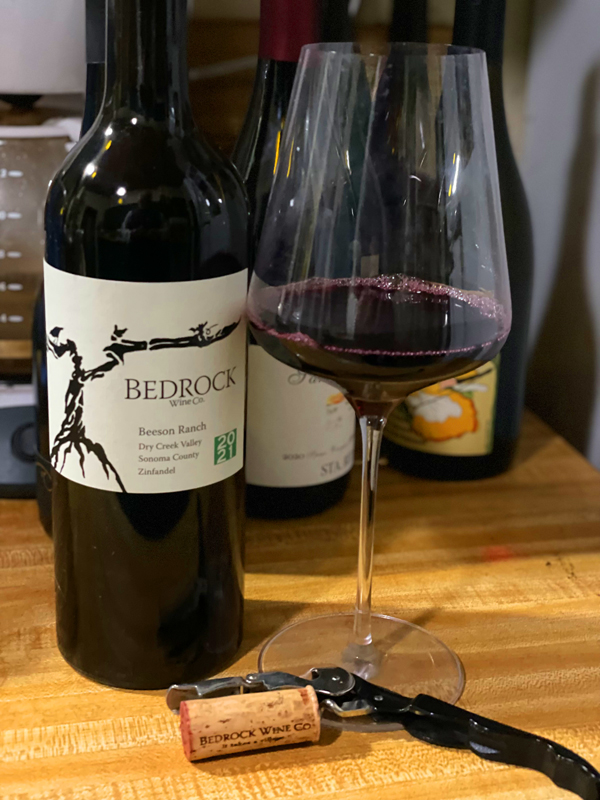
2021 Bedrock Wine Company, Zinfandel, Beeson Ranch Vineyard, Dry Creek Valley, Sonoma County.
The 2021 Beeson Ranch Zinfandel is outrageously delicious, with tons of charm, leading with pretty aromatics and incredible deep black fruits on the full bodied youthful palate that is bursting with energy, smooth layering and delightful length on the finish. I’ve just discovered this debut bottling here at Bedrock and I love the black raspberry, plum and currant fruits, as well as the delicate spice, mineral tones and elegant use of wood framing here that adds a bit of sweet toast and cedar notes that perfectly fit this wine. The Beeson Ranch, located in the Dry Creek Valley AVA, is a steep western site that was planted well over a century ago on the quartz laced marine sediment soils, it sees those hot Summer days, but gets a nice night time cooling influence that provides fabulous overall balance, as this vintage shows. This stony old vine vineyard, with its mix of igneous and metamorphic rock makes for a Zinfandel, that winemaker Morgan Twain-Peterson says, has both luscious and hedonistic weight and fine elegance, all of which, I find very compelling and seductive, especially this vintage, in the glass. I’ve thoroughly enjoyed the latest releases of Bedrock’s Zins from the 2019, 2020 and 2021 collections, including their signature Heritage field blends, like the estate bottlings of the Bedrock Vineyard from Sonoma Valley and the Evangelho Vineyard in Contra Costa County, as well as their basic multi-vineyard Old Vine Zinfandel. That said, this Beeson Ranch, with its hundred year old vines, is very impressive and really hits the spot for me, it is distinctive and pure Zinfandel that really shined on its own, but got even better with casual mushroom pizza dinner, it gave a confident performance and I will be sure to get this special Zin bottling every time its offered. This Beeson saw a combination of oak aging vessels, with Bedrock having favorite barrels for Zinfandel, as well as their Grenache and even lighter weight Syrahs, which see 500- and 600-liter puncheons and demi-muids, with the winery noting, that these larger barrels retain freshness with a limited oak and oxygen impact, feeling that this helps preserve the fingerprint of origin in the wine better.
The winemaking at Bedrock, and under Morgan Twain-Peterson, relies less on dogma and more about what the vintage and vineyard needs to best show itself and with Zinfandel, it was once thought you’d always de-stem the grapes, but Twain-Peterson has used some whole cluster to great effect here. Typically Bedrock have never used whole-cluster on Zinfandel, Morgan says, and that like most things thought to be verboten, it turns out that whole-cluster, used during fermentation, can be delicious and fun! As anyone who’s enjoyed these Bedrock wines can attest to, and when done well, as Morgan continues, whole-cluster can amplify perfume, increase structural complexity, lower alcohol in the finished wine (stems absorb some ethanol), improve fermentation health by controlling temps, and increasing a wine’s overall character, which I agree with, believing it heightens the pleasure and allows more personality. Twain-Peterson warns that this doesn’t always make sense and the drawbacks can include stem bittiness, leading to green flavors, adding too, if used for pure carbonic maceration, the whole cluster can potentially overwhelm the wine with the bubble gum/banana Runts character. Morgan, who is one of only a few winemakers to be a Master of Wine, notes however, one only has to look at some of the finest producers employing almost 100% while cluster—Dujac in Burgudy, Chateau Rayas or Henri Bonneau in Chateauneuf, and Allemand in Cornas and Domaine Jamet in Cote Rotie, as he mentions, come to mind— see the enormous complexity than can be imparted on the wine, by the practice. Outside of Zinfandel, though this is changing, Bedrock uses whole-cluster on virtually all red varieties that come into their winery, including most successfully Syrah, along with Carignan, Mataro, Grenache, Cinsault, even and interestingly Cabernet Sauvignon. The Zins, like this Beeson, which sees mostly neutral oak to promote transparency and fruit density are wonderfully expressive, as Bedrock continues to experiment with whole bunches and macerations to make the most thrilling wines as possible, these are wines I highly recommend, especially this exciting 2021 vintage. If you’ve not had Bedrock or tried the latest examples, I really hope you get a chance to, as they are some of the best California wines available!
($45 Est.) 95 Points, grapelive
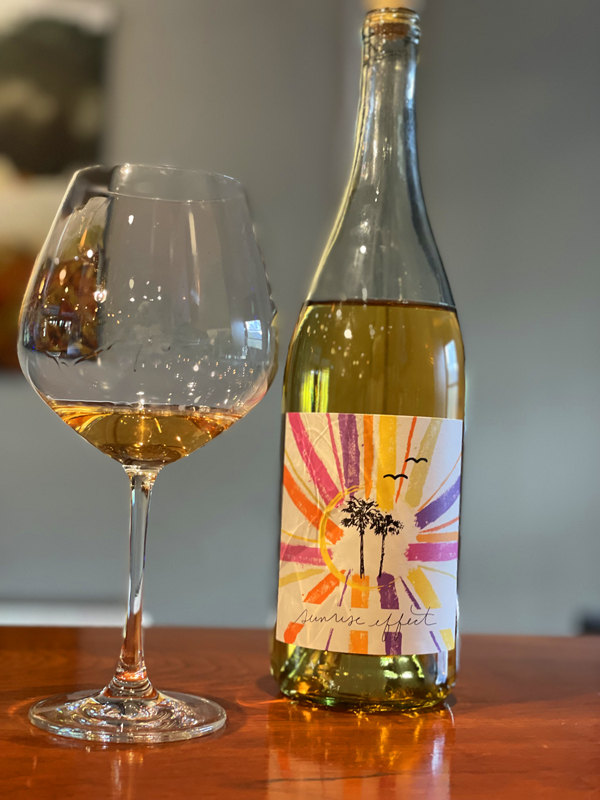
2021 Fair Moon Wine – Sunshine Effect, Skin Contact Auxerrois, Zenith Vineyard, Willamette Valley, Oregon.
Jessica Wilmes, winemaker at her Fair Moon Wine label, has made one of the only pure Auxerrois wines I’ve ever seen and or tried, a grape that rarely gets to be a solo act, and she made a distinct example with a long skin contact maceration and an all natural fermentation. This golden/yellow hued dry and cleanly crisp white is surprisingly delicate and brightly toned with fresh citrus, tart peach and mineral notes, showing much less pigment color, savory funk or tannin that most orange wines, making it beautifully refreshing, low alcohol and great for lighter cuisine, like ceviche or as Jessica suggests, it is nice with raw sushi. The grapes come from the exceptional, most organic, Zenith Vineyard in the Eola-Amity Hills AVA which is in the Chehalem range and set on sedimentary soils and mostly known for outstanding Pinot Noir, though there is also small parcels of Pinot Gris and a few other lesser known varietals, like this Auxerrois. This unfiltered Sunshine Effect 2021 Auxerrois reminds me a little of Sandi Skerk’s Vitovska or Malvasía bottlings, in terms of color and clarity, though less aromatic, but with a touch of spice, lemon peel and chamomile, that adds some complexity. (More on Jessica Wilmes – click here)
Auxerrois Blanc, once called Pinot Auxerrois, though not a member in the Pinot family, is also known as Auxerrois Blanc de Laquenexy, it is a white wine grape that is most commonly found in Alsace, France. It is a rather bland varietal without much that makes it interesting on its own, though Jessica has given this grape some complexity and life here with the skin contact. Auxerrois has not been widely traveled, though it also grown in Germany and Luxembourg, where it finds a home where it’s typically blended into generic whites, so it was interesting to find it here in Oregon. It should be noted that Auxerrois is a full sibling of Chardonnay, but doesn’t the body, depth and range of flavors, which is why that it is often blended with Pinot Blanc, in small percentages, both at home in Alsace and in the Willamette Valley. Jessica, who has interned at Troon Vineyard and Grochau Cellars, has just released her second vintage of wines that include her signature Gris Rouge, skin contact Pinot Gris, a fun carbonic Tinto Caõ red and this 11% natural alcohol Auxerrois, which saw a 12 day skin fermentation and absolutely zero additions, sans soufre, then aged in neutral barrel for a few months. Wilmes has been inspired by natural wines and was influence by her tastings of Gravner, Radikon and Foradori, as well as other orange wine producers in both the old and new world, and her wines, which are reasonably price, are well worth looking for.
($25 Est.) 90 Points, grapelive
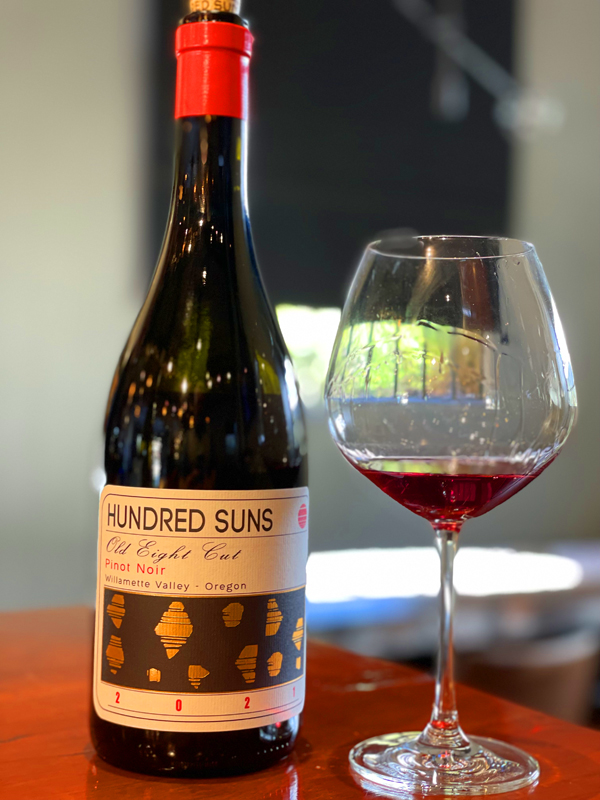
2021 Hundred Suns, Pinot Noir, Old Eight Cut, Willamette Valley, Oregon.
The bright ruby and garnet 2021 Hundred Suns Old Eight Cut Pinot Noir, by winemaker Grant Coulter, is loaded with personality and energy with an almost carbonic like expressively juicy medium bodied palate. This lively vintage shows Italian cherry, strawberry, pomegranate and tart red currant fruits, along with a heightened pop of spice, dark flowers and mineral tones, adding a silky texture with air and gaining some savory, earthy, wild herb and stony elements that gives a savvy balance here. As mentioned, I find this partial whole cluster Pinot thrilling in the same way I do (and love) the Cru Beaujolais wines from the legendary producers, like Dutraive, Thevenet, Breton, Lapierre and Foillard, rather than classic Pinot or Burgundy wines, it is very distinctive and Gamay like, Coulter makes very singular wines. The winemaking here is very much on the natural side of things with both ancient and more modern traditional methods is about using minimal intervention, almost no new wood and very low sulphites, which Coulter believes promotes purity and freshness in his wines. In his Old Eight Cut Pinot Noir, you get a lot for your money in terms of quality and it is a ridiculous good value, providing lots of drinking pleasure even while young.
The Hundred Suns Old Eight Cut Pinot, is, as Coulter puts it, a cellar selection (that) stitches together pieces from unique sites across the Willamette Valley, including some elite vineyard sites. The separate lots of 2021 Pinot Noir grapes were fermented with all native yeast, 30%whole cluster and with a variety of traditional and experimental techniques, sometimes including carbonic maceration and or amphora, after which the wine was aged mainly in well used French oak barrel. These cellar techniques were employed all to create a layered and transparent wine, and this vintage is wonderfully engaging and seriously delicious. Grant Coulter, the ex Beaux Freres winemaker, and his wife Renée Saint-Amour’s Hundred Suns label, which focuses on innovative hand crafted single vineyard Pinots, along with some exciting Gamay, Syrah and Chardonnay, is one of the most exceptional wineries in the Willamette Valley. The top set of Pinots at Hundred Suns come from unique parcels at Shea Vineyard, in the Yamhill-Carlton district, Mike Etzel’s Sequitur Vineyard in Ribbon Ridge, and the classic Bednarik Vineyard, with its selection of Pommard and Wadensvil clones on marine sedimentary soil. All the vineyards providing grapes for the Hundred Suns wines, including this Old Eight Cut bottling, are fully sustainable and or organically grown, making for some highly desirable wines, which I highly recommend.
($30 Est.) 93 Points, grapelive
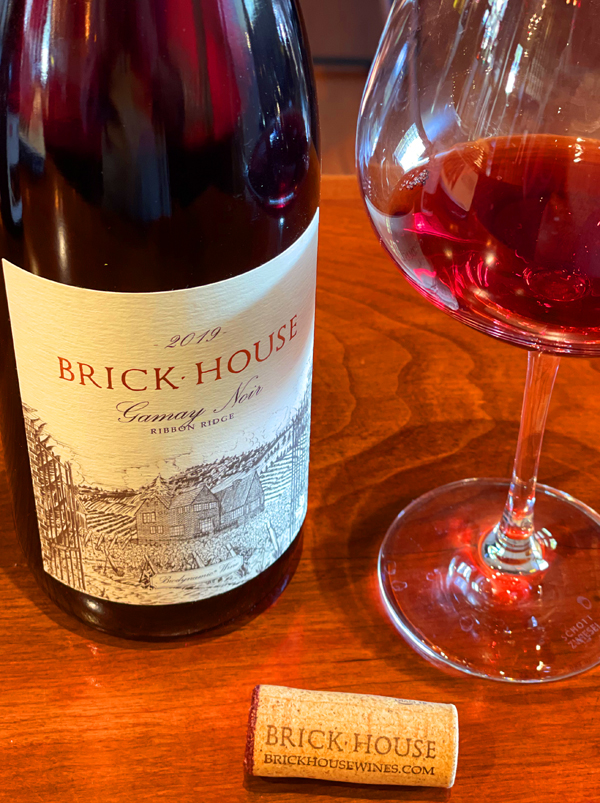
2019 Brick House, Gamay Noir, Ribbon Ridge AVA, Willamette Valley, Oregon.
One of Oregon’s great wineries, Brick House, best known for their classic Pinot Noirs, also does a delicious Gamay, sourced from vines on Willakenzie soils series between 440 and 500 feet in elevation, which gives this wine its fresh and crisp detailing and smooth texture.This year’s Gamay is light and lively with loads of spice and a delicate earthiness, showing bright red fruits, including strawberry, tart plum, cranberry and cherry, along with cinnamon, clove, wilted roses, a touch of cedar and mineral tones.The fruit, as per normal here, was fully de‐stemmed and moved into open top fermenting tanks where a native fermentation was encouraged, as is done with the Pinots. After 21 days, the 2019 vintage Gamay Noir was racked into neutral barrels where it remained until the summer of 2020, which meant it spent 12 months in used 100% French barrels, as the winery explains, then the wine was bottled. This Brick House Gamay is traditionally made and is less exotic and fruit driven than the whole cluster and or carbonic versions, but it is easy to love, has good complexity and is a confident effort in a difficult vintage.
Founder Doug Tunnell, winemaker, of Brick House planted his first estate vines around the old brick house on the property in the spring of 1990 with Pinot Noir first, as the winery notes, then Chardonnay and the Gamay Noir, one of the first true new world sites to have this varietal. Every vine Tunnell planted came with a commitment that was rare in the Willamette Valley at the time, to lead the way for biodynamics in Oregon, Brick House was to be a 100% certified organic farm. Then after years of success and great wines, influenced by the great domaines of Burgundy, in 2005, Tunnell and Brick House achieved full and coveted Demeter Biodynamic certification. The southeast facing slopes on Brick House’s Ribbon Ridge estate, set on ancient marine sediment soils, provides ripe and elegant cool climate fruit to make some of Oregon’s most distinctive wines, such as this lovely Gamay. Tunnell’s Gamay is made from registered Cru Beajolais clones, #282 and #284, these vines date back to 1992 and have been farmed organic since day one. Coming in at about 12% natural alcohol, this ruby/garnet Gamay is highly quaffable and is best with a slight chill, going great with simple cuisine. I enjoy all of Brick House wines and highly recommend them to anyone that hasn’t had a chance to try them.
($32 Est.) 90 Points, grapelive
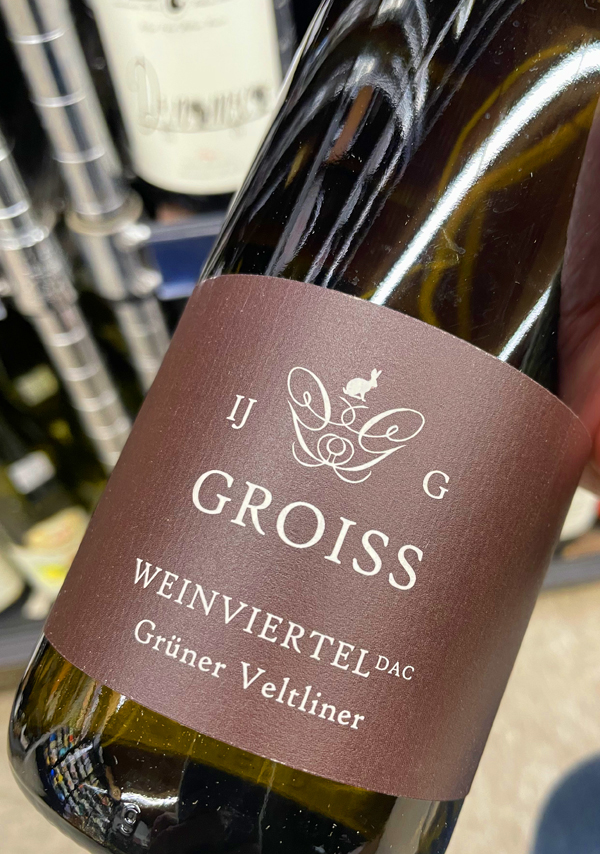
2021 Weingut Ingrid Groiss, Grüner Veltliner, Weinviertel DAC, Austria.
This vintage is wonderfully aromatic and cooly crisp on the palate with an effervescent spritz in this beautiful and lively offering with bright citrus and tropical fruits along with loads of mineral charm and a clean almond like bite, it is a wine that begs for oysters and or other briny or raw seafoods. The latest Groiss Grüner Veltliner, Austria’s signature varietal, comes from vines grown on loess, sand and gravel soils in the town of Zeirsdorf within DAC Weinviertel north of Vienna, not far from Groiss’ hometown of Breitenwaida, and was fermented and aged in stainless steel. Picked with lower sugars, this lighter framed, fresh and salty dry Grüner, made in the Federspiel style, comes in at just about 12.5% natural alcohol and saw natural yeasts ferments that while in tank captures a bit free CO2, like Spain’s Txakolina Basque whites. As this Grüner opens you get the classic white pepper, pithy and calcareous stony elements to go with its lemon/lime core. I have been a fan of Ingrid’s wines for about eight or so vintages now and they continue to impress me and are solid values in my book, in particular I love this Grüner, as well as her Rieslings, which are in a slightly richer style and her fabulous Gemischter Satz, a local traditional co-fermented white.
Interestingly, as I’ve noted here, the Groiss Gemischter Satz, the signature wine of Ingrid Groiss is her amazing Gemischter Satz, a field blend white made from Chardonnay, Frühroter Veltliner, Grauburgunder, Grauer Vöslauer, Grüner Veltliner, Hietl Rote, Müller Thurgau, Neuberger, Pinot Blanc, Riesling, Roter Veltliner, Rotgipfler, Sämling, Silberweisse, Welchriesling, Wiesse Vöslauer, Zierfandler. It’s all from a single parcel planted by her grandmother in Braitenpuechtorff, north of Vienna, in Austria’s Weinviertel region not far from the Czech border. In the hands of this talented winemaker, these organic 50 year old vines produce one of the world’s great traditional white wines. Totally unique and terroir driven with subtle depth and lively mineral character, Ingrid Groiss’ Gemischter Satz is an awesome, authentic wine and tremendous value! This zippy Grüner is transparent, tasty and an exciting wine on its own and merits attention, especially this exciting vintage, which is very expressive and compares well to much more expensive bottlings from the Wachau. It is also worth mentioning that Ingrid’s sensational wines have gone from an underground favorite to getting world wide recognition and now she is imported by Vineyard Brands that is a leader in organic, family owned and high quality offerings, with the benefit of making it easier to find her wines here in the States.
($20 Est.) 93 Points, grapelive
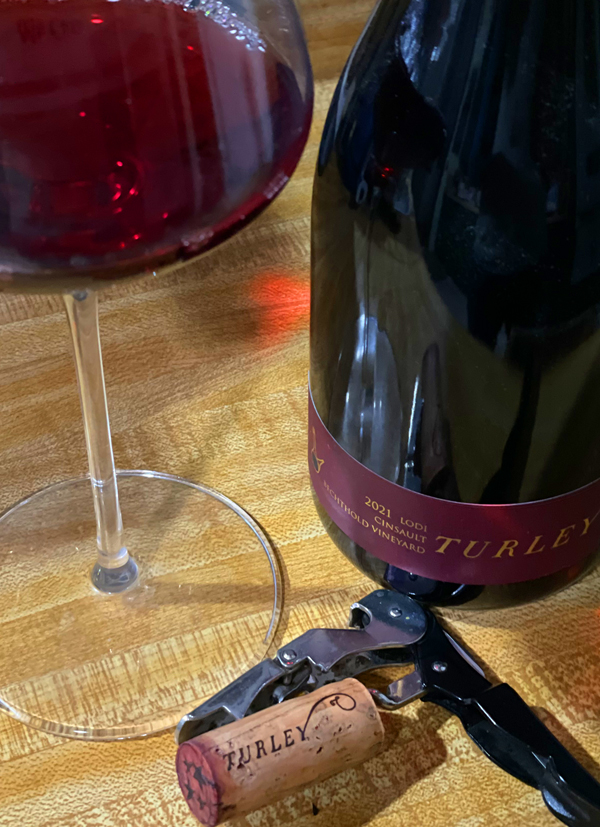
2021 Turley Wine Cellars, Cinsault, Bechthold Vineyard, Lodi, California.
This new 2021 edition of Turley’s Bechthold Cinsault is ultra vivid and delicious with racy red fruits, spice, mineral and floral tones, it is my favorite of my latest batch of Turley offerings, with its bright flavors and silky medium body making a perfect food wine and easily quaffable. Coming from historic vines in Lodi set on sandy soils this Turley Bechthold Vineyard shows vibrant crushed raspberries, strawberries and tree picked plums along with cinnamon, dusty pepper, lavender, umami, delicate sandalwood, Moro orange and lingering kirsch on the cooly crisp palate. To preserve their Cinsault’s vibrancy and show purity, this Turley Bechthold Vineyard was done in a semi carbonic (Gamay) like style and saw a natural yeast fermentation, then was aged, as per normal, exclusively in neutral 100% used French oak. Cinsault is enjoying a revival, and while mostly used in blends, it makes for a lovely solo varietal wines with many superb California efforts, like this one and as well as wines from the Languedoc region of France. While obviously known for their awesome Zins, Turley does everything well and this wine highlights winemaker Tegan Passalacqua’s talents in the vines and in the cellar.
Turley’s Bechthold Cinsault, as mentioned in my prior reviews, comes from one of the Lodi region’s oldest vineyards with Bechthold being planted in 1886, making this Cinsault vineyard maybe the oldest of its kind in the world, as Tegan Passalacqua suggests. The vines at Bechthold are gnarly, head-trained and planted on their own roots in the deep, sandy soils and are Lodi’s oldest continuously farmed vineyard site, one of California’s most unique and cherished sites. Cinsault, one of the Chateauneuf du Pape grapes, found in the Rhone, Provence and in the Languedoc regions of France mainly has found a happy home here in California, especially in warmer climate areas of California, as it retains natural acidity and holds up in the relentless heat, as witnessed here in Lodi. Cinsault has become the secret sauce in many blended wines and adds life and vitality in the classic Rosé wines of Bandol, on its own it can even provide a lighter and more, as mentioned above, Gamay like style, like it does here, and can be enjoyed with a slight chill too. These well over 100 year old vines continue to provide amazing grapes and this magenta/ruby hued 2021 vintage is a must have year with exceptional fruit quality and natural acidity, I wish I had bought more!
($30 Est.) 93 Points, grapelive
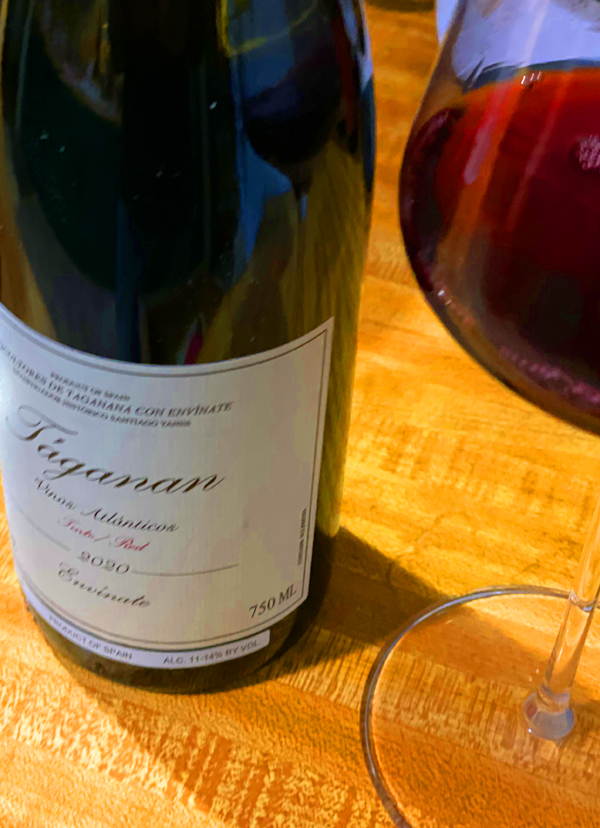
2020 Envínate, Táganan, Vinos Atlanticos, Tinto, Tenerife, Canary Islands, Spain.
The 2020 Táganan, a Listen Negro (one of the Mission Grapes) based wine grown on Tenerife’s volcanic soils, is a trilling wine with a smoky and flinty edginess and with spicy red fruits and a silky medium body that makes for a comparison with Sicily’s Nerello Mascalese (grown on Mt. Etna), which is not too hard to imagine, though the Envínate is a bit more feral and exotic. The palate has a touch of reductive funk that blows off and an array of briar laced raspberry, strawberry, tart cherry and plum fruits, along with red pepper flakes, camphor, anise, dried flowers and a subtle meaty or sanguine iron character. Best to take your time to enjoy this bottle, plenty of air, time and food make it a wonderful experience and he complexity will amaze you. To make this wine happen, as I’ve noted, Envínate, uses no chemicals in any of the vineyards, like this sites used here, which are on the volcano, with every parcel tended and picked by hand, all the grapes are foot-trodden old school style, and the wines are fermented exclusively with wild yeasts, with a varying proportion of whole grape clusters. As for aging, the Envínate wines are raised in old barrels and the absolute minimum amount of sulfur is used and only added at bottling, if needed. The results are some of the most exciting wines made in Spain, they are extraordinary and unique, as this Táganan proves, and I should mention these wines benefit from being served with a slight chill.
Envínate, as mentioned here many times, is a talented group of four friends, consisting of winemakers Roberto Santana, who is in charge here on Tenerife, Alfonso Torrente, Laura Ramos, and José Martínez. This gang of four formed back in 2005 while studying enology at the University of Miguel Hernandez in Alicante and decided that they all would make wine together, regardless of where they ended up. Then after their graduation, they formed a winemaking consultancy, which evolved into Envínate, a project, now based on Tenerife, that focuses on exploring distinctive parcels mainly in the Atlantic regions of Spain, including most famously the Ribeira Sacra in Galicia and the Canary Islands, as well as one site influenced by the Mediterranean sea in the Alicante region along with a plot in Extremadura. I’ve been following Envínate for many vintages now and every time I try their wines I find something new and exciting in them, and the current releases are thrilling, quite honestly there is nothing quite like them! This vintage of light ruby hued Táganan, which means slope in the local dialect, was made from mainly Listen Negro, but also saw a good bit of Negramoll, as well as small amounts of rarities like Mulata, Listan Gacho and Malvasia Rosada, with all parcels fermented separately in open top vats, about 30 to 50% de-stemmed, with a two-week maceration before the wines are blended and aged for about a year on the lees in neutral barriques without racking and bottled unfined and unfiltered. This wine is not made every vintage, so it is hard to find, but well worth it!
($48-54 Est.) 93 Points, grapelive
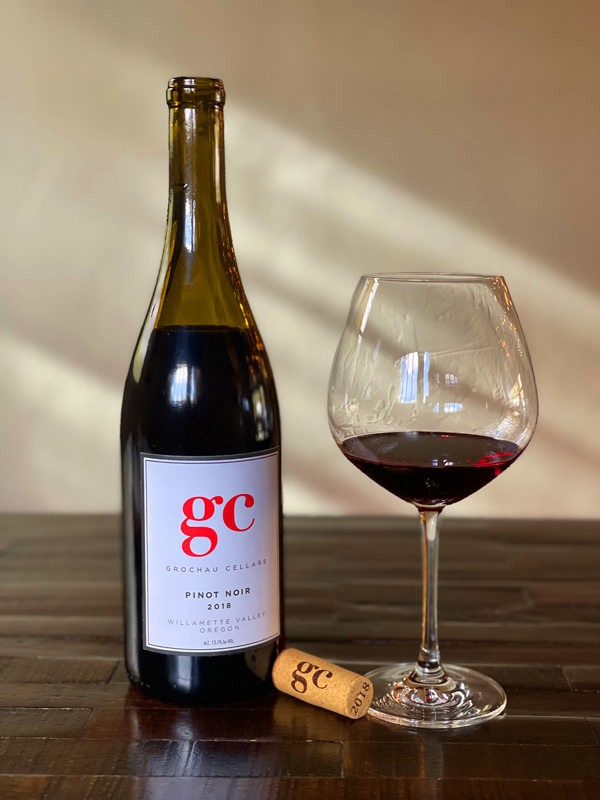
2018 Grochau Cellars, Pinot Noir, Willamette Valley, Oregon.
This aromatic and deep ruby/garnet Grochau 2018 Willamette Valley Pinot is ridiculously good and showing beautiful right now with exceptional purity and transcendent in flavors with silky layers of Italian cherry, plum, raspberry and pomegranate fruits that are wonderfully accented by an array of floral and spicy events and just the right amount of savory earthiness, lifted by cinnamon, rose petals, flinty stones and a restraint use of oak and its subtle toastiness. I’ve enjoyed the latest releases from John Grochau, but this is a sleeper and drinking fantastic, he is committed to sustainable, organic and sensible farming, and works growers with or without official certification. With this wine seeing some impressive sources that, as he puts it, span the northern Willamette Valley, including the Björnson Vineyard, Vivid Vineyard, Carlton Hill Vineyard, Zenith Vineyard, and some others that provide the pedigree here over the years, with this 2018 being made from hand picked barrels.
John Grochau, the ex-professional cyclist turned winemaker, has been turning out lovely and authentic Willamette Valley Pinots since 2002 and this cuvée in particular has been a huge hit and a favorite of mine, coming from a variety of sites and all grown sustainably with the goal of making a transparent and pure regional Pinot Noir. It’s hard to imagine a more enjoyable Pinot for the price, I only wish I had bought more of this vintage, though I’m sure the current 2020 and up coming 2021 release will be worthy of attention too. Most of Grochau’s Pinots are done with whole cluster and native yeasts and aged primary in used French oak barrels, with this Willamette Valley cuvée seeing an elevage of almost a year before bottling, everything is about allowing the fruit to expressive itself. Grochau also does a range of single vineyard wines and each have a more individual personality with his Zenith being another of my favorites in the lineup, plus their are a couple of tasty Gamay offerings, and even a Tempranillo that is fun curiosity, along with a fine selection of whites, that includes a Pinot Blanc and Melon de Bourgogne.
($25 Est.) 93 Points, grapelive
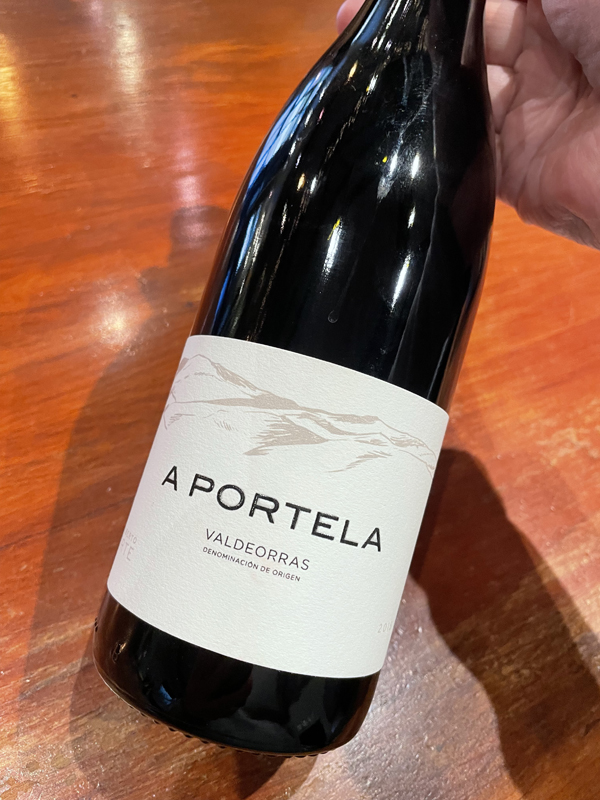
2015 Alberto Orte, Mencia “A Portela” Valdeorras D.O., Galicia, Spain.
Orte’s 2015 A Portela Mencia is getting pretty mature at this stage with some secondary tertiary elements coming through and folding of savory tones over the fruit, but it is still a very fine example of grape and place with racy acidity and mineral notes firmly in view here along with red currant, cranberry, black cherry and brambly spiced raspberry fruits along with dried flowers, wild herbs and subtle earthiness, making for a tasty effort. This wine comes from a single parcel in the Valdeorras zone, which is warmer than its neighbors to the west, Ribeira Sacra especially, being separated from the cold and wet Atlantic climate by a range of mountains and set on granite based soils. This region is noted for great Mencia reds and Godello whites, it is a unique terroir that is cooler than the Bierzo, which is just to the east, where the vines get a more Continental climate with warmer conditions that makes for more ripe flavors and concentration, though this one from Orte isn’t lacking for anything and a great value.
The winemaker Alberto Orte, as mentioned, produces his A Portela from a single vineyard, planted to high elevation, which has slate and granite soils, all of which makes for more flinty mineral in this Mencia based wine. This wine was crafted from 100% Mencia, from vines that were planted between 1976 and 1990, which are sustainable hand tended on a steep slope that rises up to almost 2,700 feet above sea level, which allows for the vibrant acidity. This wine is crafted from de-stemmed grapes with a week long cold soak before a 10 day maceration and fermentation in stainless steel vats, after going dry the wine is then racked off the heavy lees into stainless again for 12 months and then aged a further 8 months in used French oak barrels. Valdeorras kind of gets overlooked in Galicia, but these are serious and delicious wines which I really enjoy, so I was very happy to discover this A Portela and look forward to trying a more fresh vintage, as this 2015 started to fade just a bit after 20 minutes in the glass, even though it was still pleasing, especially with food. This bottling was done in a collaboration with the importer Olé Imports and is part of collection of wines under a series called Olé & Obrigado, that is promoting small growers in Spain and Portugal.
($24 Est.) 89 Points, grapelive
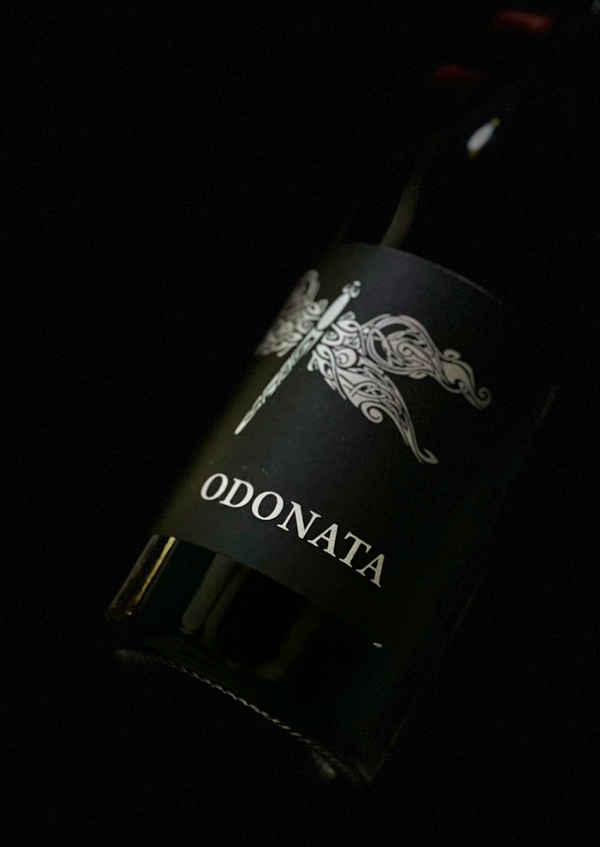
2019 Odonata Winery, Syrah, Hook Vineyard, Santa Lucia Highlands.
The upcoming release of 2009 Odonata Hook Vineyard Syrah is full on Northern Rhone style, Jamet Cote-Rotie inspired whole cluster fermented beauty with layers of black fruits, including black raspberry, damson plum, black currant and kirsch, along with black olive tapenade, feral earthiness, mocha, licorice, burnt embers, crushed violets, peppercorns and lingering creme de cassis. The body is full and delivers ripe tannin and an opulent mouth feel, but still is racy with the whole bunch crunch and nice cool climate acidity, plus a subtle wood element, making for a thrilling wine that is exceptional with rustic and robust cuisine, especially pork and lamb dishes. Owner/winemaker Denis Hoey, who as well as being a skilled winemaker, is one of the most real and nicest people you could meet, in this business, a quality that even makes his wines taste even better. Using traditional methods in the cellar and sustainable farming, Hoey’s Odonata has really made a name for itself with a tasty array of eclectic and standard small lot bottlings, from Riesling bubbly to classic Pinot Noir, with this SLH Syrah being one of my favorites. There’s a lot to admire with this terroir driven Hook Syrah, it delivers a ton of personality and complexity and is a great value for the price, old world Syrah fans will find some joy here and it should age well too, drink from 2022 to 2032.
Odonata is enjoying some exciting times with new releases of their Silacci Vineyard Pinot Noir, Hook Vineyard Grenache, a Brunello style Sangiovese, a Carbonic Carignan and brilliant set of Santa Cruz Mountains Cabernet Sauvignon(s), along with this Hook Vineyard Syrah and their unique collection of sparkling wines, which I reviewed earlier here at Grapelive.com. Odonata Wines, as mentioned, was founded in Santa Cruz back in 2005, but became a full fledged estate winery in 2014 when they moved into the old Marilyn Remark Winery property in the Santa Lucia Highlands on River Road, which is one of the best places to visit on the SLH wine trail. The Hook Vineyard, which is noteworthy for old vine Grenache, as well as Syrah, has some small yielding mature vines with the Santa Lucia Highlands under-pinning of decomposed granite and sandy loams with a cool breezy Pacific Ocean influenced climate that gives a long hang time and full concentrated flavors, as this terrific Syrah delivers perfectly. The Syrah sees a lengthy cool maceration and is fermented with native yeasts with Hoey employing hand punch-downs, making sure the cap stays wet and that full extraction is achieved before the wine is rested, for about a year, in mostly well used French barrels, all to promote authentic varietal character and transparency. I’m thrilled with these new Odonata wines, from the 2019 vintage, like this savory edged dark inky purple Syrah and can’t wait to see more, I highly recommend checking these wines out!
($38 Est.) 94 Points, grapelive
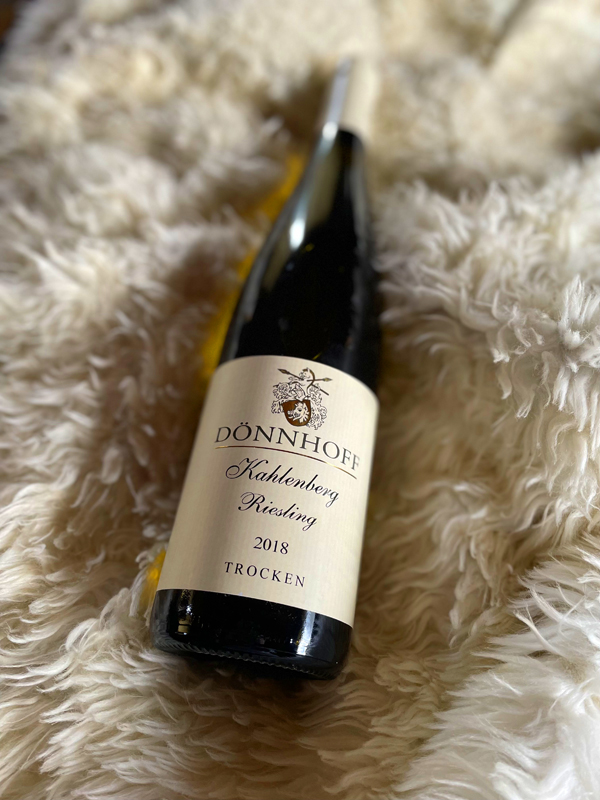
2018 Weingut Dönnhoff, Riesling Trocken, Kreuznacher Kahlenberg, Nahe, Germany.
The Kreuznacher Kahlenberg is one Dönnhoff’s Grand Cru sites, uniquely set on gravelly loams along the Nahe River and provides the grapes for this crystalline 1er Cru (Erste Lage) Trocken bottling, it is one of sleeper wines in the stellar collection of dry Rieslings by Cornelius Dönnhoff, with this 2018 drinking right up there with the GGs. The Kahlenberg Trocken, as this one is called, is electric and saline brisk in the glass with lime blossom and steely mineral driven, giving bright citrus, peach, hints of tropical fruit and spicy, adding stony details, a touch of chamomile and tart kumquat. Cornelius explains, to preserve laser-like focus and clarity in his wines, the grapes are pressed as soon as possible, almost always within 3 hours of picking. The Erste Lage and Grosses Gewachs dry wines, like this one, are typically fermented in Dönnhoff’s traditional German casks (1200 L stuck and 2400 L doppelstuck), with the lighter and or sweeter wines seeing mostly stainless steel, with both allowed to go through spontaneous fermentations. Though, interestingly, as Terry Theise, who introduced me to these wines, notes that Donnhoff’s cellar is unique in its capacity to hold all of its production entirely in stainless steel or in wood casks, allowing for the ideal élevage for any of wines at any point during a vintage, depending on the nature of the vintage or personality of each wine. This wine saw a combination of both stainless and old large cask to enhance balance and freshness here, with the wine resting on the fine lees for about 9 months which adds to the richness and textural quality here. This wine is sourced from mature vines with parts that are well sloped and with southern exposure with quartzite veins, which makes for concentrated and ripe Rieslings, like this top notch bone dry, but generous food friendly bottling, which is one of my favorites.
It’s well known, that the Dönnhoff family arrived in the Nahe region over 200 years ago, and their modest farm slowly evolved into one of Europe’s greatest wine estates, making some of most desirable dry, off-dry and sweet wines in the world. Helmut Dönnhoff, who is credited with bringing this property into the limelight had been making the wine since 1966, and now his son Cornelius, the 4th generation to run this historic winery and their 25ha of Grand Cru vineyards, has increased the fame of these wines as the winemaker. The Riesling vines here at Dönnhoff are old clones which according to the winery were sourced from sites in Niederhausen and Schloßböckelheim and the estate vines are farmed with holistic and mainly organic practices to preserve the soils here and produce the highest possible quality grapes, which are mostly Riesling, though Dönnhoff has some awesome Pinot Blanc, Pinot Gris, Chardonnay and Pinot Noir, which is used in their Sekt Sparkling wine. Dönnhoff, which is located in the village of Oberhäusen an der Nahe, is one of the Nahe superstars and the full range of wines here are exceptional and I cherish them across the board, from the entry level estate wines to their exotic Eiswein, which I must say was one of the greatest wines I’ve ever had, but the single vineyard dry Rieslings are maybe the most coveted, especially their Hermannshöhle GG. Dönnhoff’s importer Skurnik notes that this vineyard was first mentioned by name in 1499, and the history of the Kahlenberg vineyard is a long and venerable one, and while this part (and wine) is labeled Erste Lage, there is an exclusive Grosse Lage parcel that gets “Im Kahlenberg” and the VDP GG on the label. This Kahlenberg Trocken is an outrageously good value, with this 2018 absolutely delicious now, but with the depth and structure to go another decade or more with ease, and is set in the middle of some fabulous vintages from 2015 to 2021, all of which are well worth grabbing.
($36 Est.) 93 Points, grapelive
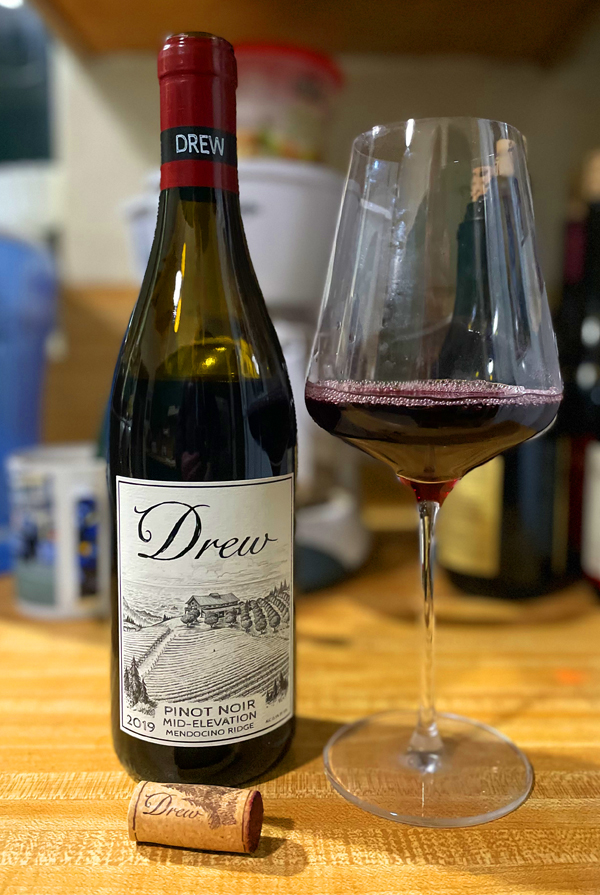
2019 Drew Family Cellars, Pinot Noir, Mid-Elevation, Mendocino Ridge.
The 2019 wines from Drew are immediately pleasing on the palate, feeling opulent and supple in texture and more dense in fruit than you’d expect, especially when compared with the 2018s which are very slowly opening up, but still have tons of inner energy and age worthy structures, as this 2019 Mid-Elevation Pinot shows with a fine layering of dark fruit and bright acidity. The medium bodied palate revolves around black cherry, huckleberry, red currants and cranberry fruits along with delicate floral aromas, saline, mineral tones, subtle wood notes and a array of tangy herbs and spice, the results of a native yeast and a partial whole cluster fermentation. The Mid-Elevation comes from vines set on sloping hillsides with deep sea bed marine sediment soils, with mainly decomposed sandstone, with all organic farming methods and saw a range of clones, including 943, Calera, Swan, Pommard and Dijon 115 selections. Typically, winemaker Jason Drew, employs about 20% Whole Cluster and is retrained in his oak use with this wine seeing about 12% new oak in the final blend, all of which is to promote transparency and purity of form and flavors. This beauty of a Pinot Noir, that was aged 11 months in mostly well seasoned barrels, feels and tastes nearly perfect with just about 13.3% natural alcohol delivering an excellent balance here in Drew’s Mid-Elevation Pinot, a wine that has the grace of a Burgundy, but that is expressively cool coastal Californian in personality.
The Drew Mid-Elevation Pinot Noir is Drew’s Mendocino Ridge appellation wine made with the aim to showcase the coastal ridge sites of western Mendocino County, all in the Mendocino Ridge AVA, rather than having a focus on any one vineyard. This bottling celebrates the importance of the regional character of the far western side of the Anderson Valley, where Drew calls home, and the unique profile this terroir imparts on the wines here. The Mid-Elevation, Drew explains, equates to the middle elevations in the AVA, 800 to 1400 ft up and within about six miles from the ocean, adding that, these elevations are closer to the fog line coming off the Pacific resulting in cooler maritime temps throughout the season allowing for a longer ripening period and proper acid structure. This 2019 Mid-Elevation Pinot, with its dark garnet/ruby color in the glass, really excites the senses and is fabulous and flexible with food, in particular dishes like blacken salmon, roast chicken and lighter meat dishes being very good choices to match up with the complexity of this wine. As mentioned, Jason Drew is crafting some of the state’s best Pinots, all of which I highly recommend, but he also has added a stellar Chardonnay to his lineup, along with two Syrah bottlings, a Valenti Ranch and Perli Vineyard, both being coveted Northern Rhone style wines. I suggest getting on the mailing list, but also I advise buying these Drew wines whenever you come across them, plus I am thrilled to see they have some 2021 vintage Pinots available, these are on my Xmas wish list!
($36 Est.) 93 Points, grapelive
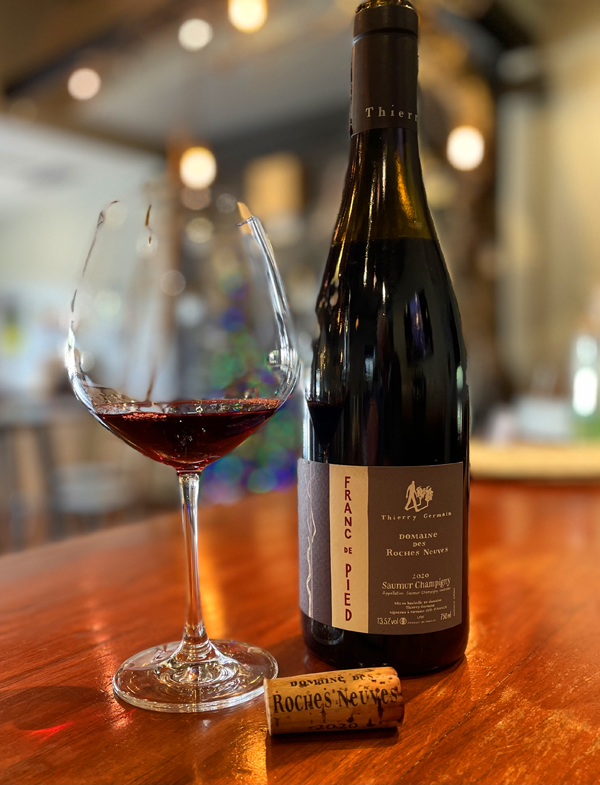
2020 Thierry Germain – Domaine des Roches Neuves, Saumur Champigny “Franc de Pied” Loire Valley, France.
As mentioned many times here, I am a huge fan, as are thousands of enthusiasts, of the Loire Valley’s Thierry Germain wines, and his outstanding collection of Saumur-Champigny Rouge bottlings, especially this rare cuvée Franc de Pied, which is drinking like a Grand Cru Burgundy with gorgeous violet aromas and opulent layers of red fruits, spice, mineral and seductive earthy notes. This 2020 is pure class and while absolutely stunning now, it will continue to reward as it gracefully ages, I think it will still be going strong two decades from now, such is the structure and depth here with expressive red currant, raspberry, plum and black cherry fruits, along with pretty floral tones, chalky stones, cinnamon spice, cedar and anise providing fine accents to the remarkably pure and elegant Cabernet Franc. Thierry Germain, a Bordeaux native relocated to the Loire about 30 years ago and soon fell under the spell of his spiritual father, the legendary Charly Foucault of Clos Rougeard, who influenced Germain’s wines and vines, converting his entire domaine, which he founded in 1992, to biodynamic viticulture, helping him to become one of the region’s super stars. The Saumur-Champigny “Franc de Pied” comes from special own rooted vines set on sand and limestone and is uniquely sees a 100% whole cluster fermentation in old Foudres with once a day punch downs, this lasts almost two weeks and then the Cab Franc is pressed to large 1200L foudre, where it was aged for 12 months. This deep garnet/magenta whole cluster Franc de Pied is really an exciting and naturally styled version of Saumur Champigny best enjoyed with Loire geeks and a meal.
Again, as mentioned, Kermit Lynch, the famous importer, says that Thierry Germain’s Domaine Roches Neuves has vines, that are old, wise, and vibrantly healthy, thanks to Thierry’s biodynamic viticulture and fantastic attention to detail in the vineyards and in the cellar. Lynch goes on, adding that, Roches Neuves, whose vineyards are planted in the Saumur (Blanc) and Saumur-Champigny (Rouge) appellations, has rightfully become one of the greatest examples of high achievement in biodynamic vine growing in France. This puts him up there with the greats, that Kermit also imports, like Abbatucci in Corsica, Ganevat in the Jura and Domaine Ostertag in Alsace. Thierry Germain’s total dedication to site specific wines, some of the most distinctive Loire wines are hand-crafted from Cabernet Franc and Chenin Blanc grapes, which Kermit calls his “parcellaires,” they are very noteworthy offerings, some of the most exciting wines in the Loire Valley today, all of which I totally agree with. I’ve enjoyed many vintages of Thierry Germain’s wines, but as noted, these 2020s are spectacular, especially this Franc de Pied, which actually comes from some of the youngest vines, as well as his Saumur-Champigny “Mémoires”, that I reviewed here recently. The entry level bottlings which see almost no oak or aging time are lovely wines as well and are great ways to start exploring this awesome producer, I always love pulling the cork on the fresh vintage of Thierry Germain’s blue label Domaine des Roches Neuves, which sells for about $25 and is an excellent value, while these upper end efforts are more special occasion wines. Germain also does an exceptionally rare no sulphur Amphora macerated and fermented 100% Cabernet Franc (Saumur Champigny) called the “Outre Terre” which I am very intrigued by and hope to try soon, it is definitely on my watch list!
($59 Est.) 94 Points, grapelive
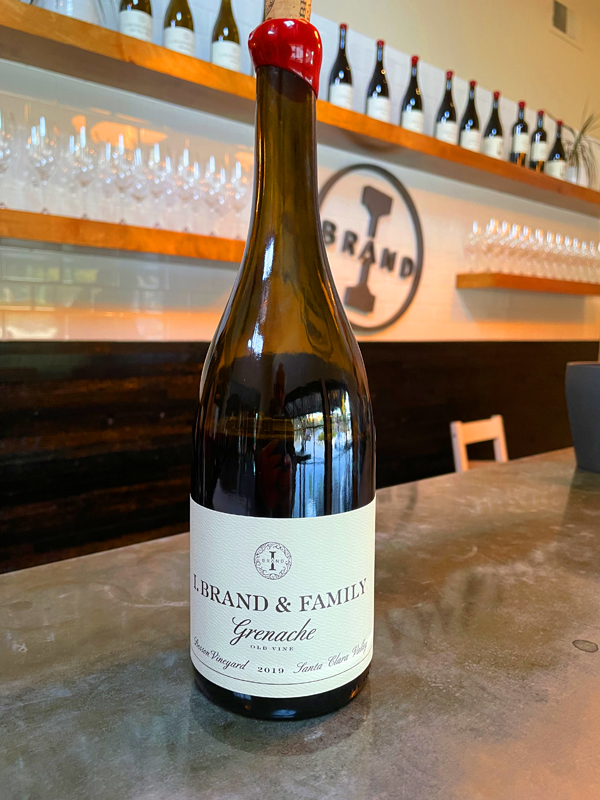
2019 I. Brand & Family Winery, Old Vine Grenache, Besson Vineyard, Santa Clara Valley.
This Besson Old Vine Grenache is one of Ian’s signature offerings and the 2019 vintage is one of the best yet, already a very serious effort in the glass with depth, spice and texture galore with layers of red berry, Strawberry and pomegranate fruits, along with a light herbal (stems) note, chalky stones, sandalwood, black licorice, pepper and lingering kirsch. Without question, after a few samples of this 2019, the I. Brand & Family Old Vine Besson Grenache, I have to put this wine into my top ten wines of the year and it is one of the top California Grenache bottlings currently available, especially for the price, it is as good as it gets and I’d put it up there pleasure wise with some of my favorite old world Grenache based wines, reminding me a lot of Dani Landi’s Sierra de Gredos Garnacha efforts. Ian does quite a few Grenache bottlings, all of which are tasty, from his La Marea Grenache, a blend of central coast sites to his Chalone AVA Brousseau Grenache, also under his I. Brand & Family label, like this one, but in this 2019 vintage the historic Besson Vineyard is my clear favorite. This dark ruby/garnet Old Vine Grenache is absolutely seductive now and there should no remorse in opening it now for guilty pleasure, but I can see it aging well and I will be putting a few bottles away, as I’ve done with Brand’s Mourvedre bottlings, that are fantastically structured wines that gain an extra dimension with a few years of age on them.
The Old Vine Grenache comes from the historic Besson Vineyard near the Hecker Pass and the town of Gilroy, which is about a hundred and twelve years old now, and provides some of the best Grenache grapes in California. The Besson Vineyard, planted on its own roots back in around 1910, is finally getting the acclaim and attention it deserves, it has been the source of some outstanding wines, it transmits transparent flavors and is a unique terroir. In recent times it has had lovingly maintained vines with a focus on quality fruit and natural methods has been sustainably dry farmed ever since it was originally planted. This site, as I have noted in prior reviews of this and other wines from this vineyard, first came to the wine world’s attention when California icon Randall Grahm used these grapes in his Clos de Gilroy Grenache, and more recently being used by Angela Osborne of Tribute to Grace, the Kiwi who is one of California’s top Grenache producers. Plus there’s a great Sandlands Besson out there, as well as one of Brand’s friends John Locke of Birichino, another label that is putting out a beautiful version of this Besson Vineyard. Ian’s example, with the little extra aging is turning on the charm and its whole bunches, textural density and old world character makes this vintage very seductive, as mentioned above, indeed, and it should only get better over the next 3 to 5 years and age another decade or more! Ian has a lot of hits in the lineup right now, this one included, along with his opulent 2019 Massa Cabernet Sauvignon, the exceptional 2020 Bates Cabernet Sauvignon and his crisply detailed Arneis, to name just a few.
($42 Est.) 95 Points, grapelive
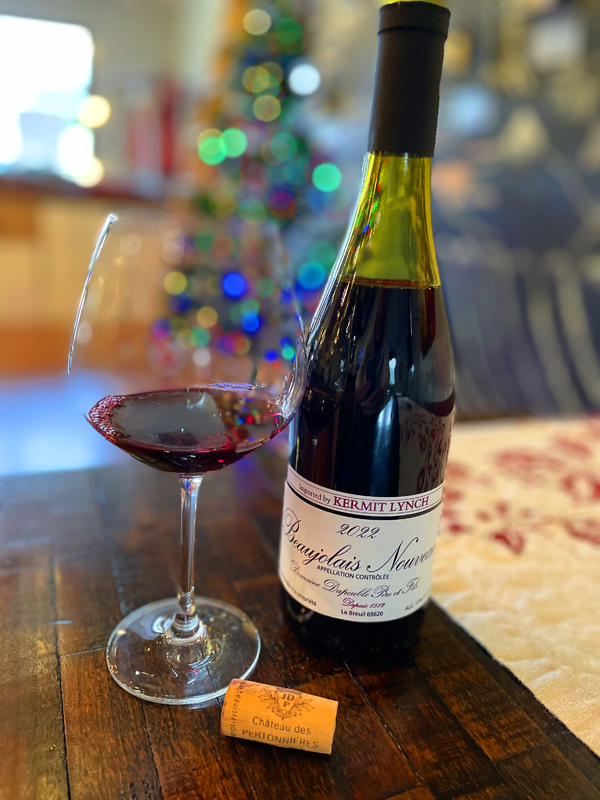
2022 Domaine Dupeuble, Beaujolais Nouveau, France.
The 2022 Dupeuble Beaujolais Nouveau is delightfully fresh and vibrant with tart cherry, raspberry, plum, strawberry and cranberry fruits without the candy or bubble gum you usually see with Nouveau and or carbonic wines, in fact there’s some depth here, floral notes, cinnamon/clove and some nice savory crunch. Light and lively on the palate this is super tasty stuff that far removed from the industrial and commercial scale bottlings you most commonly find. The Dupeuble Beaujolais Nouveau is consistently one of the best Nouveau bottlings and a bit more serious, coming from hand tended and harvested old vines vines, all well over 50 years old and some closer to 100 years old that see small yields and high quality fruit. The grapes are fermented naturally with native yeasts and no SO2, seeing a full carbonic maceration and a fermentation that lasts just about a week, before a short two month aging period in tank, after which the Nouveau gets bottled unfined and unfiltered. It’s a simple recipe and regime, but the results are because of the commitment to quality here and the extra attention that the grape saw in the vineyard, where the Dupeuble crew uses natural composting, as well as never using synthetic chemicals, and severe cluster selections at picking time to ensure concentration and flavor intensity. These Dupeuble Nouveau wines are without question some of the best vintage indicators giving insight into the year, with this vivid ruby 2022 boding well for the year in Beaujolais, as well as providing some juicy fun for the harvest and holiday season.
Ghislaine and Stéphane Dupeuble manage this old property, which since 1919 has been called Domaine Dupeuble, but its history goes much further back, dating all the way to 1512, that is in the hamlet of Le Breuil, deep in the southern Beaujolais, set on mostly classic granite soils and perched above a narrow creek. Famous Berkeley importer Kermit Lynch first met Ghislaine and Stéphane’s father, Damien, for lunch in Paris in the late 1980s, where he enjoyed the fresh Dupeuble Gamay, and thus began the annual tradition of blending a special Kermit only Beaujolais Nouveau. Kermit notes that Domaine Dupeuble has grown over the years and is now comprised of one hundred hectares, about forty percent of which is consecrated to vineyards. The Dupeuble family are, as Lynch adds, strong advocates of the lutte raisonnée (meaning as organic as possible, but within reason) approach to vineyard work, they tend their vines without the use of any chemicals or synthetic fertilizers and don’t use SO2 during fermentation. The vineyards, planted primarily to Gamay, face Southeast, South, and Southwest with plots of vines on a combination of primarily clay, limestone and granite that average between 50 and 100 years old, which helps ripen the Gamay and a small parcel of Chardonnay for their rare Beaujolais Blanc bottling. Over the years I’ve become a big fan of Dupeuble’s Nouveau, which is more interesting and soulful than you’d expect, gaining spice, darker fruits and umami with air, in fact, not on purpose, I aged a Dupeuble Nouveau for almost four years and it was still wonderfully delicious, as this 2022 is!
($21 Est.) 89 Points, grapelive

2019 G.D. Vajra, Langhe Rosso, Piedmonte, Italy.
G.D. Vajra’s delicous Langhe Rosso, typically a blend of primarily the classic Piedmonte red varietals, Nebbiolo, Dolcetto, and Barbera, but it also has an interesting addition of Albarossa, an extremely rare local grape, Freisa and even a touch of Pinot Noir, which like Riesling has found a home in the region. As I’ve mentioned in recent years, this combination of grapes under the direction of Giuseppe Vajra makes for a unique Langhe red that shows silky tannins, lively red fruits, including brandied cherries, plum, cranberry, grilled citrus (Moro orange) and tart red currant along with wild herbs, delicate rustic earthy notes, floral elements, mineral and savory spices. This tasty Langhe Rosso is touch lighter in style when compared to the last two vintages, but is still an excellent bottle and it was fabulous with pizza and it is an outstanding value from this famous Barolo winery. Vajra is not a one trick pony, and I love their alternative wines, almost as much as their top Barolos, like the absolutely awesome dry Riesling, which I enjoy almost as much as their Barolo offerings, as well as the Vajra single varietal Dolcetto, Barbera, Nebbiolo and the Kye Freisa, all of which are very enjoyable, as is this Langhe Rosso.
The Vajra family continues the traditions of their father Aldo, who was a big advocate for organic and holistic farming that he pioneered in Piedmonte and he promoted vineyard sites, once thought to be too cold and too high up to ripen, but as history shows he was proven right. Vajra’s high elevation Barolo crus are some of the most prized plots in Italy. The Vajra Langhe Rosso is usually all stainless steel fermented and aged with each lot and varietal done separately and blended before an early bottling to preserve fresh brightness, purity and energy, which the 2019 highlights with finesse and style. As this wine opens, the Nebbiolo makes its prince known with savory tones and a bit more complexity shows up with cigar wrapper, rose petals, black tea and balsamic dipped strawberries. Vajra, as well noted, does a stunning collection of Barolo crus, under his family’s G.D. Vajra label, especially their signature Bricco Delle Viole, along with the Ravera, Coste di Rose, their newest cru, as well as the Luigi Baudana line, these are some of the most thrilling Nebbiolo(s) available. I am looking forward to catching up the latest releases from Vajra that are coming out soon, I am a huge fan of these wines and always try to get a selection of Vajra’s offerings, in particular the value bottlings like this one.
($20 Est.) 91 Points, grapelive
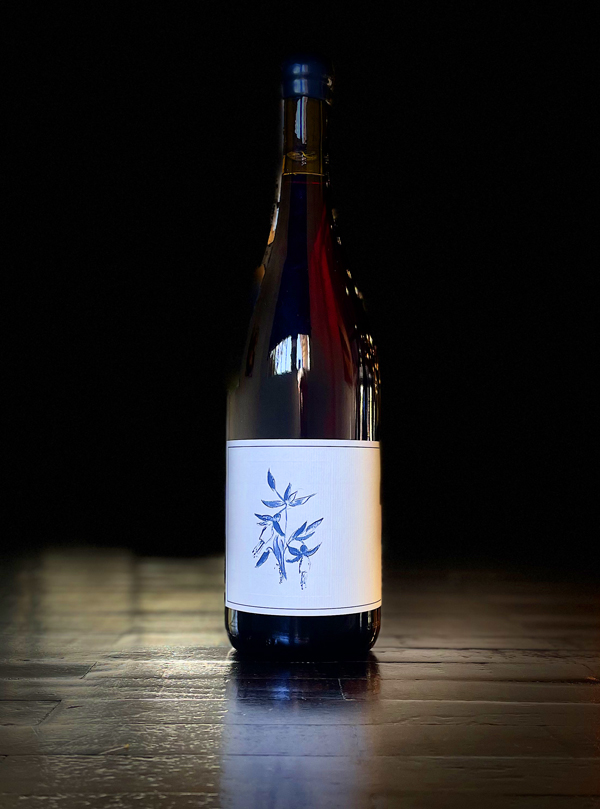
2021 Arnot-Roberts, Cabernet Franc, Watson Ranch Vineyard, Napa Valley.
Part of Arnot-Roberts latest release, the Watson Ranch Cabernet Franc is a fresh, juicy and vibrant example of the varietal with a personality that feels like a carbonic maceration with round soft tannin and exceptionally low alcohol, it easy quaffable and fun, more Loire in style, rather than Bordeaux. This vivid ruby/purple red shows a smooth layering of black cherry, red currant, plum and raspberry fruits along with a hint of bell pepper, anise and peony florals, it feels a touch lighter than it is, with its nice acidity and almost no oak is present, making this a fun, drink young wine that enjoys being paired with uncomplicated food and or hard cheeses. Pretty easy going, this wine delights the palate rather than making a serious impact, but I excited to see this in Arnot-Roberts varied collection of wines, joining rarities like their Trousseau and Falanghina, as well as their staples made from Syrah, Pinot Noir, Chardonnay and Cabernet Sauvignon. Duncan Meyers, the winemaker, thankfully kept things simple and allowed the grapes to express themselves, using neutral wood and a short aging period, which has paid off nicely.
The very unique Watson Ranch Vineyard, mostly planted to Chardonnay, benefits from calcareous clay over limestone soils that Cabernet Franc likes, this site is perched on a steep hillside overlooking the San Pablo Bay at the cold end of the Napa Valley. This soil type, as Arnot-Roberts points out, is extremely rare on the North Coast but shows itself in this narrow fin at the tail end of the Vaca Mountains in the most Southern part of Napa County. This fractured, well-drained calcareous soil, coupled with organic farming and cool windy conditions make for almost old world style wines, as shown in both Arnot-Roberts’ Chardonnay and this Cab Franc that show bright acidity, chalky and mineral details. Just seven barrels were made of this wine, making it one of the most limited of all the Arnot-Roberts wines and unfortunately it will be a very hard to get as most all of it was sold out on their mailing list within hours of it becoming available, but I do recommend giving chase as it is one f the most unique versions of this grape in California. I got a few bottles of this expressive Cab Franc and even though it might be best to drink young, I may hide one away for a few years to see what it ages like.
($40 Est.) 91 Points, grapelive
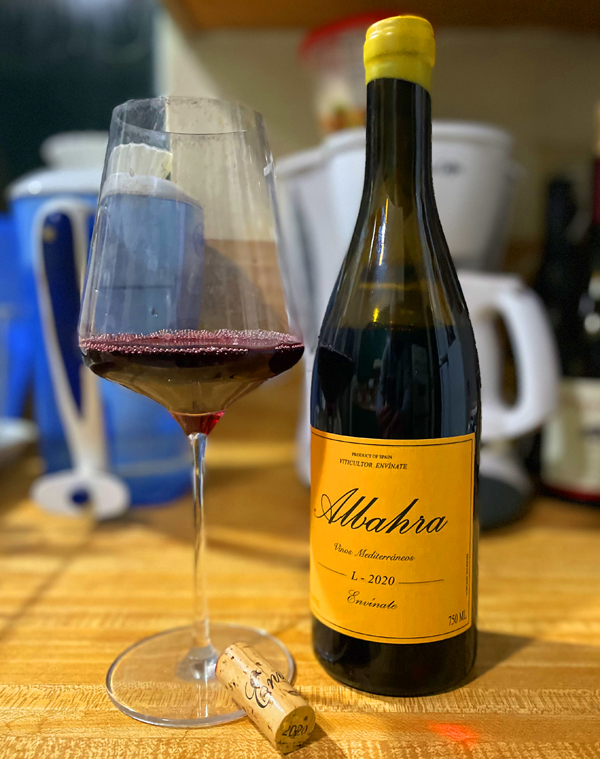
2020 Viticultor Envínate, Albahra, Vinos Mediterraneos, Almansa, Spain.
The 2020 Albahra is a purple and opaque hued wine that, like the prior version, starts with a pretty floral perfume, exotic spices, earthy notes and fresh crushed briar laced blackberries that leads to a medium to full bodied and rustic palate with black fruit coating the mouth, adding plum, orange rind, minty herbs, fennel, mineral tones. The Envínate Albahra (yellow label) is typically made from about 70% Alicante Bouschet, also known as Garnacha Tintorera in Spain and 30% of Moravia Agria, an even more rare varietal that is noted for its high-acid and low alcohol tartness. The Moravia Agria helps keep the warm climate ripeness in check, and adds freshness in this wine, with each grape getting fermented separately and then blended together after aging. The Alicante Bouschet sees partial whole cluster with close to half getting stem inclusion with the hand harvested grapes foot-trodded and macerated in concrete vats with the indigenous yeast primary fermentation. Then it is aged on the fine lees in the cement for eight months, while the Moravia Agria is 100% de-stemmed and matured in well used French barriques. The final blend of the Albahra is assembled with ultra low sulfur and bottled unfined and unfiltered to capture varietal purity and its soulful expression. The grapes for this wine come from vines set on sandy clay-calcareous soils with the main parcel being head trained 30 to 50 years old, up at 800 meters above sea level, that allows for cool night time temps that retains acidity as well as giving this wine its complexity, lovely aromatics, pushing floral tones and zesty details.
As expressed in prior reviews, Envínate, which translates to “wine yourself”, is one of the coolest and exciting labels in Spain with Roberto Santana, Alfonso Torrente, Laura Ramos, and Jose Martínez producing these artisan and authentic efforts, which I highly recommend, especially their volcanic island Listan (Mission grape) bottlings as well as the Mencia based Ribeira Sacra series of wines, along with this Albahra of course. One of the most interesting and satisfying natural style red wines costing around twenty bucks you can find. The beautiful dark Albahra from Envínate is a singular expression coming from a remote and unique place and from rare varietals, it always is delicious. Envínate, the gang of friends that met in college, is one of the world’s great wine success stories and known for their outstanding collection of offerings sourced from each of the friends’ region(s) of Spain, including the island of Tenerife in the Canary Islands, where their most famous wines come from, and the Ribeira Sacra in Galicia, along with Extremadura and this particular wine, made in the Almansa region close to the town of Albacete near Castilla-La Mancha, influenced by the near by Mediterranean Sea. Made in a simple traditional way and made to be enjoyed young. Alicante Bouschet, also known as Garnacha Tintorera, as noted above, is dark red-juiced (flesh) grape, can be found throughout Spain, though almost never used as a primary or solo varietal, it is also found in Tuscany and in California, used mainly in Zinfandel based field blends in the Sonoma Valley and Dry Creek Valley areas. This wine, with just 12.5% natural alcohol, is vibrant and with a faint earthiness that gives the Albahra a bit of serious nuance and makes this quaffable wine a fine companion with simple country dishes.
($20 Est.) 93 Points, grapelive
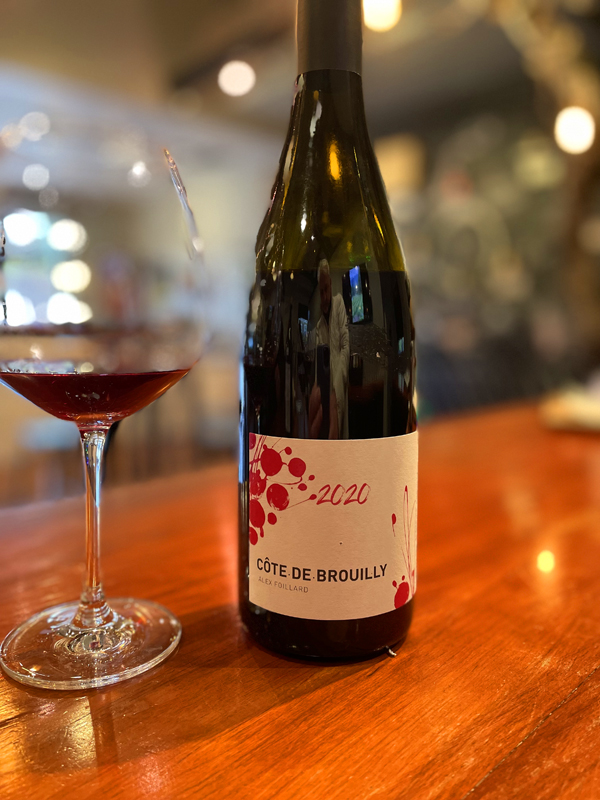
2020 Alex Foillard, Cote de Brouilly, Cru Beaujolais, France.
The gorgeous 2020 Côte-de-Brouilly by legendary Morgon producer Jean Foillard’s son Alex Foillard truly proves the new generation of winemakers in Beaujolais are more than up to the task and are making some fantastic wines as this one proves. This stunning stuff shows a family resemblance to some of Foillard senior’s most cherished bottlings, wines that are some of my personal favorites, which I covet and collect the best I can. The Cote de Brouilly, from a cooler north-facing lieu-dit Chavanne, with vines up to 60 years old on granite, schist and sandy soils, shows beautiful fruit density and purity with crushed red berries, incredible floral aromatics, stony elements, crisp acidity and delicate spices with lingering cinnamon and strawberries. The young Foillard did the fermentation, whole cluster and carbonic (maceration), in concrete tank, taking about 3 weeks with pump-overs taking place once a day for first three days. Unlike most of his father’s wines Alex chose to age, this Gamay, 100% in concrete tanks for five months, plus six extra months in bottle before release. Kermit Lynch, who imports all of the Foillard wines, says Alex’s solo cuvées are wines that have a seductive aromatic component, a silky texture, and a downright deliciousness that he exclaims is unmistakably Foillard. Adding that Alex uses tried-and-true techniques to craft his wines with whole-cluster fermentation with natural yeasts, no fining or filtration, and no additives of any kind except for a small dose of sulfur dose at bottling. There’s everything you’d want here in Alex Foillard’s lovely Cote de Brouilly and it should drink fabulously well for the next five years easily, though it is guilt free to open now, in fact, I dare you not too, it is that tasty right now!
Alex Foillard, who as mentioned, is the son of “Gang of Four” Morgon producer Jean Foillard, and who had early exposure to the world of wine, and more specifically, as Kermit Lynch explains, to the principles of sustainable and holistic farming and low-intervention winemaking. These are the methods that brought his father to stardom in natural wine circles, and even snobby Burgundy enthusiast circles, along with Jean’s like-minded neighbors such as the late Marcel Lapierre, Guy Breton, and Jean-Paul Thévenet, who were all inspired by Jules Chauvet, who pioneered these ideas in Beaujolais. Along with helping produce his family’s handcrafted Cru Beaujolais, Alex studied agriculture at the Lycée Agricole in Montpellier, then earned a degree in viticulture and enology in Beaune, that Lynch notes, while simultaneously interning at a well-respected domaine in Nuits-Saint-Georges. At only twenty-four years old, Alex Foillard bought his very own vineyards, these include about a hectare each in the crus of Brouilly and Côte-de-Brouilly, where this wine come from. Alex has successfully diversified the Foillard’s holdings, which until then, was almost exclusively in Morgon, along with the tiny plot of Fleurie. Though the vineyards were not originally certified organic, he farms them according to all organic principles, and in the 2016 vintage he made his own wines and celebrated his first harvest from those vineyards. This exceptional deep ruby and magenta/purple hued Cote de Brouilly gets better with each sip and is near perfection in its seduction of the palate, I highly recommend chasing down Alex’s wine as soon as possible.
($47 Est.) 95 Points, grapelive
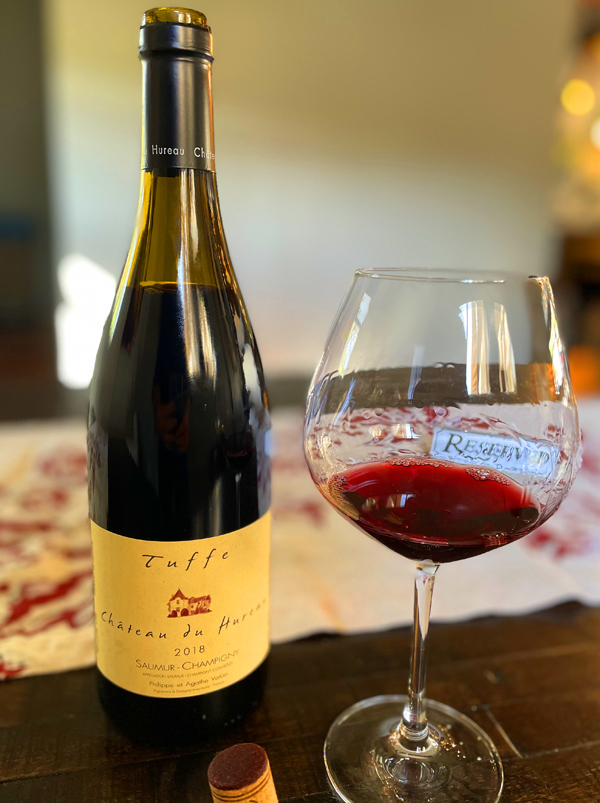
2018 Chateau du Hureau, Saumur-Champigny Rouge “Tuffe” Loire Valley, France.
The Chateau du Hureau Saumur-Champigny is a beautiful terroir inspired dark hued Cabernet Franc with layers of perfumed floral tones and soft spicy notes to go along with classic black raspberry, cherry, plum and red currants fruits. Hints of cinnamon, crushed violets, mineral, leather, bay leaf and very faint bell pepper complete the picture here of this Chateau du Hureau “Tuffe” cuvee. As noted in my last review of this wine, it comes from many small plots both with young and old vines grown on the local ancient limestone, a white chalky soil, that gives the wine it’s name and character. Chateau du Hureau is located in the small town of Dampierre-sur-Loire, about four miles east of Saumur and 15 miles west of Chinon. The Chateau, which is note worthy for its classic architecture, has its cellars carved into the limestone cliffs, it was built during the 13th century and overlooks the Loire River. For wine lovers, Charles Neal, their importer, says that the cave is even more impressive than the Chateau, with numerous paths leading to carved out caverns housing stainless steel vinification equipment and lines of barrels, which are used to good effect to produce lovely and elegant wines such as this one. I really started to take notice of Chateau du Hureau with their 2012 vintage releases, which I couldn’t get enough of and I loved the aromatics, the purity, sultry earthiness and the absolute quality on display, and this 2018 Tuffe is just as good and may even be a better wine with a shade more depth and complexity. In the cellar, the wines see a lengthy maceration and elevage, with the top bottlings being matured for close to 20 months, while this one sees a minimum of 10 months.
Imported on the west coast by Charles Neal, this historic Chateau, run by Philippe and Agathe Valan, located in Saumur-Champigny region on the Loire River is showing impressive form again, and this bottling in particular way over delivers for the price. Philippe Vatan, who has become one the most celebrated vignerons in Saumur-Champigny, was thrust into being the sole figurehead at Chateau du Hureau, as Neal notes, after the tragic and untimely death of his brother in 1987 and has turned this property into one the most desirable estates in the Loire, crafting a tidy collection of mainly Cab Franc wines, along with a special cuvée of pure Chenin Blanc. The Chateau du Hureau Saumur-Champigny Rouge “Tuffe” is Philippe Vatan’s most pure example of Cabernet Franc made from a wide variety of parcels, as mentioned above, spread across his limestone-rich vineyards. The Tuffe is exclusively fermented and aged in stainless-steel in his immaculate and cavernous cellar, this bottling always has classic Cabernet Franc varietal character and raw stony details, it impeccably shows of the grape in its most naked form, with this 2018 again being a very compelling wine to drink young and fresh. Hureau now has 17 hectares of vines with a wide range of age, including 21 separate vineyard plots that are spread around the towns of Dampierre-sur-Loire, Souzay, Champigny, and Saumur. The estate vineyards are planted almost entirely to Cabernet Franc and they are holistically cared for and farmed all organically, and though label makes no reference to it, they are all certified organic. I’m glad I grabbed this 2018, it reminded of just how good this wine and producer is, I highly recommend searching out these Chateau du Hureau offerings, especially this one that is an excellent and flexible food wine.
($20 Est.) 92 Points, grapelive
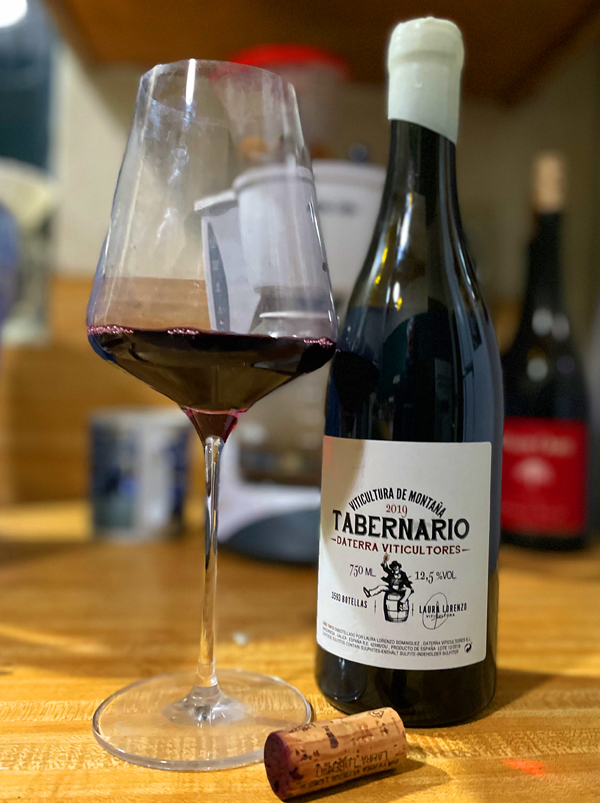
2019 Laura Lorenzo – Daterra Viticultores, Tabernario, Vino Tinto, VdT Val do Bibei, Spain.
The beautifully made and energetic, dark purple Tabernario Vino Tinto, by Laura Lorenzo of Daterra Viticultores, is made typically from about 60% Mencía, 30% Alicante Bouschet, both red grapes, along with 10% of Palomino, the white grape most commonly found in the Sherry region, which is co-fermented here, adding to complexity and vibrancy in the wine. The grapes for Tabernaria come from a variety of different vineyards that Laura works in Spain’s Ribeira Sacra region and mainly along the slopes of the Bibei River, though the blend changes depending on the vintage and conditions, with this 2019 showing well in what was a more favorable year than the last one with a ripe personality and charm. Mencia based wines from the Ribeira Sacra have the body and brightness of Pinot Noir, but with a profile that can be described as a mix of Cross-Hermitage (Syrah) and Cote de Brouilly (Gamay) with this Tabernario having those elements, showing blackberry, plum, cherry and tart blueberry fruits, wild herbs, spice, a light earthiness, savory elements and a hint of anise. The latest Tabernario opens up nicely to reveal floral and mineral tones, but stays crisply dry and loaded with fresh acidity in a wine with soft tannin and transparent detailing, making it best enjoyed with food, that helps build texture and roundness on the palate. Lorenzo, started winemaking young, at just 16 years old and has an interesting resume, including overseas stints with the famed Eben Sadie of Sadie Family Wines, who has made some of the greatest wines in South Africa, as well as Achaval Ferrer in Argentina. Laura took over the reins at Dominio do Bibei, a pioneering producer of fine wine in the Quiroga-Bibei subzone of Ribeira Sacra, taking the estate to worldwide notoriety, putting the little known Val do Bibei in Ribeira Sacra on the map, before venturing out on her with her Daterra Viticultores label.
Laura Lorenzo, one of the most talented winemakers of her generation in the Galicia region, has pieced together 4.5 hectares of rented and owned vineyards with the majority of these parcels, planted to mostly Mencia, are 80-120 years old. Lorenzo does a stellar and authentic collection of wines, from a variety of remote and back breaking sites in the Ribeira Sacra area, including her Portela do Vento, Erea, Gavela, and Azos de Vila, Azos de Pobo Soutipedre, Casas de Enriba, Camino de la Frontera and this Tabernario. In the winery, Laura’s winemaking, as her importer explains, is decidedly low tech and non-interventionist and is notably natural. Lorenzo’s fermentation(s) are done, as noted, with native yeasts and the wine is moved by gravity whenever possible, aged in neutral barrels and bottled unfined and unfiltered. The grapes for this Tabernario, coming from organic vines, were all harvested by hand and were 50% de-stemmed, skin-macerated for 10 days and spontaneously fermented with indigenous yeasts in 500L & 1000L chestnut barrels. The wine was then raised, as the winery notes, for close to 11 months and bottled without fining or filtration, and only with seriously small doses of SO2, with everything done to promote purity, terroir and freshness, as this 2019 vintage of Tabernario shows. The Ribeira Sacra Mencia based wines are more lithe and taut than the fleshier Beirzo versions, both regions are making awesome versions of this ancient varietal and I highly recommend getting to know this grape, especially by winemakers like Laura Lorenzo, who I have reviewed many times since her first wines came out in 2014, as well as the legendary Raul Perez and Pedro Rodriguez, who was mentored by Perez and makes the Guimaro wines. There’s a lot to love in Laura’s latest releases, and while no one should overlook her white wines, which amazing as well, these exceptional Mencia based offerings are some of my favorites to date, and great values, don’t miss them.
($30 Est.) 93+ Points, grapelive
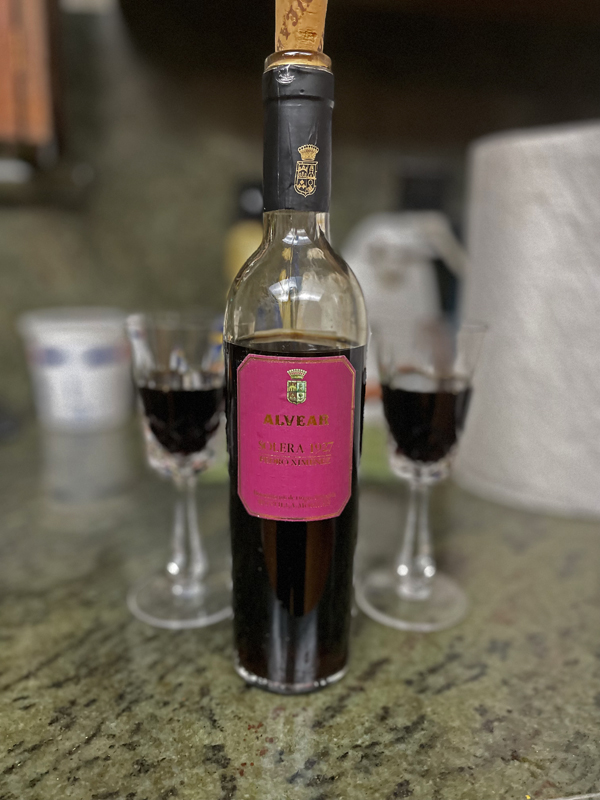
nv Alvear, Pedro Ximénez, Solera 1927, Sweet Sherry Style Wine, Montilla-Moriles, Spain.
The deeply brown/amber hued Solar 1927 Pedro Ximénez dessert Sherry style wine by Bodegas Alvear is one of the greatest sweet food wines in the world and was perfect with homemade pecan pie and hand whipping cream, and it is awesome dripped over vanilla bean ice cream as well, with its golden raisins, caramel, walnut liqueur, molasses and candied/caramelized orange rind layers. While intense and sticky rich in sweetness, this PX is wonderfully balanced and complex with fig and pecan coming through along with some light oxidative notes, burnt sugar or maple, coco powder and acidity making it perfect for after dinner sipping, a little goes a long way, especially with such a captivating finish and length. The winery is located in Montilla, in the D.O. Montilla-Moriles, and the vineyards are located on the hills of the Sierra de Montilla and on the classic Albariza, a calcium carbonate rich and chalky soil and underpinned by a soft marlstone, all adding to the terroir influence and concentration found here. I have long been a fan of these Alvear wines and have enjoyed many a bottle of their Pedro Ximénez, especially their fantastic Solera 1927, which never fails to impress, plus they have been experimenting with some still wines and sparkling wine collaborations in recent years.
The Alvear Pedro Ximénez Solera 1927 is non-vintage, built up over the years with the best reserves, but does have some 1927, which is referenced as the original selection to create this ever changing beauty, though the winery has perfected the selections and every time you get this bottling it is outstanding and maybe the best version of PX on the planet, consistently over delivering and a fabulous value. The Alvear Pedro Ximénez is made through drying the ripe Pedro Ximénez grapes on mats in the sun and then wine is aged in the traditional earthenware jars, “Tinajas”, where it is left for 12 months to mature, with fortification on the young wine done with grape spirit, before selections are made to be blended to various cuvées and or added to older solera casks, as was done here to great effect. The young wine adds freshness to the dark brown aged Pedro Ximénez, which brings historic depth and nutty complexity, with Alvear masterfully pulling lots and bottling excellent examples for hedonistic enjoyment. Alvear’s wines are all made exclusively from 100% Pedro Ximénez grapes and vines, whose historical origins, interestingly, almost certainly can be traced back to ancient vines that came from sites along the Rhein River in Germany, though almost only found here in Andalusia and in these famous pagos of la Sierra de Montilla, Moriles, and Las Puentes, where this wine was sourced. Sherry is often misunderstood or avoided, which is sad, especially a stellar example such as this, when you get a chance to experience them as they were meant to be enjoyed with the pairings that best suit them, as I did with this Alvear PX.
($30 Est. – 375ml – Half Bottle) 96 Points, grapelive
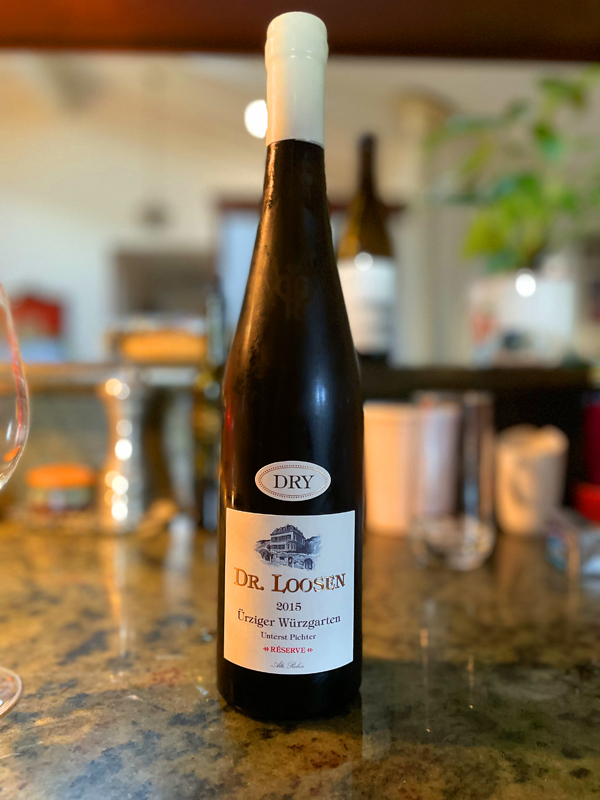
2015 Weingut Dr. Loosen, Riesling Trocken, Ürziger Würzgarten Réserve, Unrest Richter, VDP Grosse Gewächs, Alte Reben, Mosel, Germany.
Loosen’s Réserve Ürziger Würzgarten Grosses Gewachs is a stunningly graceful and nearly a perfectly proportioned Dry Riesling with smooth layering and with fabulous length, it delivers white peach, green apple, apricot, quince and tangerine fruits in a medium bodied wine that also reveals flinty stones, spice, leesy notes, light florals and chamomile. The original Ürziger Würzgarten Vineyard, according to the winery, is the only site on the Middle Mosel that is not characterized solely by slate soils. The soil here is called Rotliegendes, a red iron rich mix of weathered rock of volcanic origin. As the name suggests, Ürziger Würzgarten translates to Spice Garden, and Loosen’s Rieslings have very different set of aromas, that are different than in the purely slate sites with their stone fruit aromas. The Dry Réserve Ürziger Würzgarten, which was naturally or Sponti fermented and aged on the yeast for an extended period in used 1,000-liter Stückfass, German oak, which has given this wine its richness, white Burgundy like elegance, subtle perfume, and depth, but with Rieslings notable acidity, steely mineral tones and vigor. This pale golden hued wine adds dimension with every sip, with pristine and concentrated flavors, gaining impact and presence in the glass that is immensely regal, I’m thrilled that I have another bottle to age, which I believe will be even more rewarding in 5 to 10 years, I only hope I can resist this Ürziger Würzgarten Réserve’s alluring and seductive charms.
Since the 2011 vintage, DR. Loosen have been producing a unique, small lot, collection of GG Réserve wines, which have seen extended full lees aging, and that from the top Grosse Lage sites of Wehlener Sonnenuhr, Ürziger Würzgarten and Erdener Prälat. These wines are fermented spontaneously in old barrels, historic traditional fuder, and aged for 24 months on the full lees, without racking or stirring, and these special GG Réserve Rieslings are matured for another 36 months in the bottle before their release. I got a chance to first experience these wines with the 2012 vintage, which were debuted in San Francisco with Ernie Loosen introducing them in person, and I was immediately seduced by the remarkable depth and texture found in the GGR bottlings, without taken away the stunning terroir influence and mineral intensity, and this 2015 Ürziger Würzgarten has stunning palate impact. This wine sees the exclusive use of un-grafted historic old vines, from which Loosen produces this great Riesling, they are up to 120 years old and located in a plot called “Untrest Pichter”, which rises directly behind the Village in the heart of the Würzgarten and set on this vineyard’s famous red volcanic veined soils and weathered slate, that give this wine some very distinctive delicate aromas and exotic spices. The Dr. Loosen GGRs are under the radar offerings, they offer tremendous value, and rival some of Germany’s and Alsace’s greatest wines! As mentioned often, legendary Ernst Loosen, who took control of his family’s over 200 hundred year old Mosel estate in 1988, with incredible steep slate vineyards of un-grafted old Riesling vines, makes an incredible collection of traditional wines from Kabinett to Auslese, as well as his Dry offerings from some of the Mosel’s most coveted sites.
($80+ Est.) 96 Points, grapelive
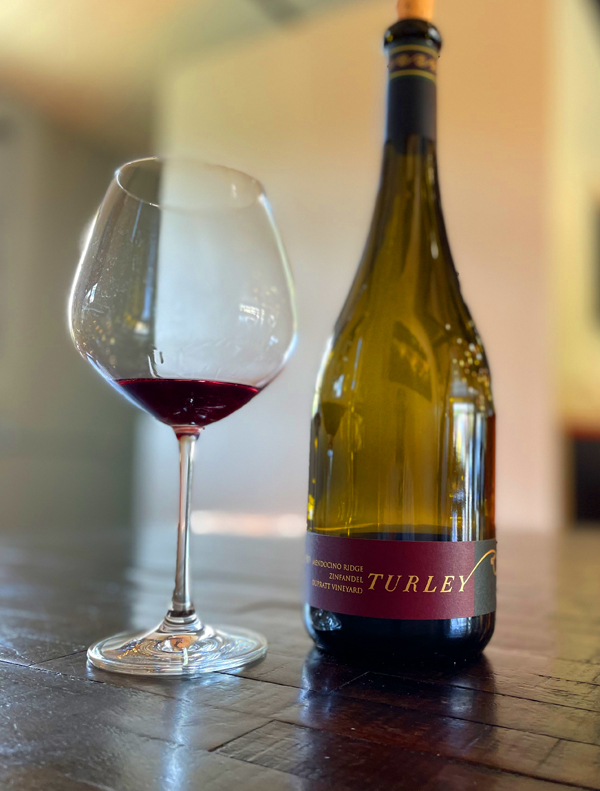
2019 Turley Wine Cellars, Zinfandel, DuPratt Vineyard, Mendocino Ridge, Mendocino County.
A totally different kind of animal, this Mendocino Ridge DuPratt Zinfandel from Turley, almost completely removed from their other bottlings tastes, in some ways like a Gamay, so distinctive and screaming in natural acidity, you’d never imagine it was well over 15% alcohol! There is loads of black fruits, heightened aromatic floral tones, polished and velvety tannins and an exciting array of spice and savory elements along with some stony mineral and dried herb elements. The bodied builds with air and food, both help flesh things out here a lot in this DuPratt Vineyard old vine Zinfandel from Mendocino with layers of blackberry, blueberry, crushed brambly raspberry and racy red cherry fruits along with briar, cedar, minty herbs and peony, all in a wine that feels crunchy and crisply detailed. This is not your typical Turley, but you got to admire the quality and soulful personality here, it was made following winemaker Tegan Passalacqua’s, who has an exceptional understanding of vineyards and the varietal, choice of methods with organic grapes, native yeast fermentation(s) and his use of 80% French oak and 20% American oak barrels with upward of 20% new used in any given vintage to promote transparency and allowing a sense of place. I suggest bracing your palate with a meal when you try this DuPratt Zinfandel and decanting would help too, enjoy it with rustic cuisine and give it time to show off its full sense of complexity and depth.
Planted in 1919, the DuPratt Vineyard, which sits at 1500 feet up on Mendocino Ridge, on the Western side of the Anderson Valley, this vineyard is surrounded by giant Redwood trees and is, as the winery notes, often called the “vineyard in the sky.” This uniquely cool climate site, that most people would think is more suited to Pinot Noir and Chardonnay, is so remote that the vines still survive on their own original root-stock(s), as Phylloxera has never got here. Located above the town of Philo and only a few miles from the Pacific Ocean, it is the northernmost, coolest site from which Turley ever made wine and though the’ve worked with Mendocino fruit for many years, DuPratt is now the only Mendocino County wine in the lineup. This makes the DuPratt a special bottle and it is very different from the warm site offerings under this label and while still clearly a Turley style Zin, it has its own set of followers, they and I marvel at how a 15% plus wine can have such cool high toned flavors and such perky acidity! This wine, reminds of the difference between higher elevation Gigondas and the warmer Chateauneuf du Pape wines can be, and I have to wonder what those early wines from DuPratt would have tasted like. Jed Steele and Mike Officer of Carlisle are the only two others I know of the have made Zin from here, so I might have to chase those down too, this 2019, only the 4th edition of DuPratt by Turley, it is a wonderful expression of Zin and I look forward to following this slightly wild and singular version of this grape, and I highly recommend it to the adventurous! The brightness of fruit here and unique nature and charm of this Turley DuPratt also make it a nice choice for your Thanksgiving meal.
($40 Est.) 93 Points, grapelive
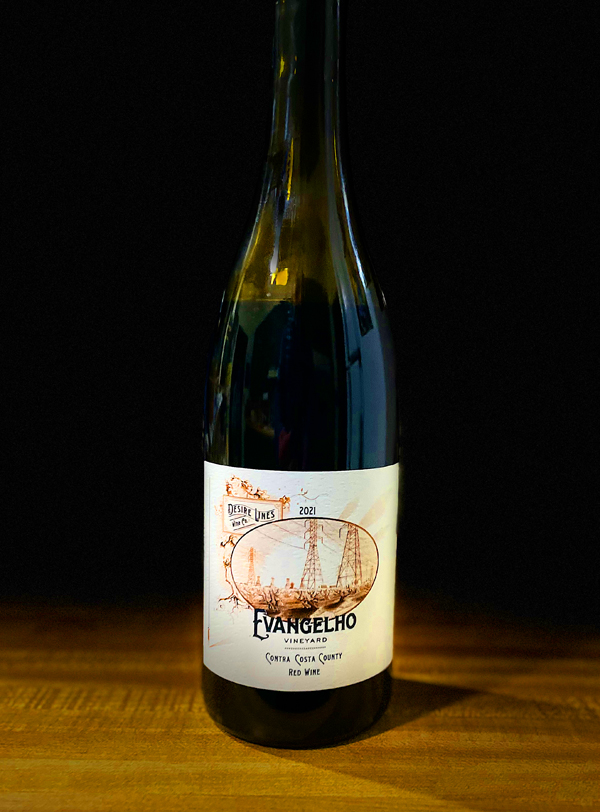
2021 Desire Lines Wine Co, Evangelho Vineyard Red, Contra Costa County.
The latest Evangelho Red from Cody Rasmussen at Desire Lines Wine Co is maybe the best yet for this spectacular Carignan based offering with dark fruit and spicy vitality in a sumptuous full bodied wine that is pure California in glass, this Evangelho Red 2021 is absolutely delicious and showcases the stellar quality of the grapes coming out of this old vine vineyard in Contra Costa County. This deep purple, almost inky, wine reveals, much like the last three vintages, rich layers of crushed blackberry, plum, Italian cherry and currant fruits in the mouth, along with a smooth texture, all accented nicely with a range of red and brown cinnamon(y) and peppery spices, plus hints pf earth, mineral, vibrant acidity and sweet sandalwood. This wine is easy to love, it is one of my favorites in this stellar lineup of small lot and handcrafted wines by Cody Rasmussen, who is the assistant winemaker at Morgan Twain-Peterson MW’s Bedrock Wine Company, along with his wife Emily have carved out a niche for themselves with these Desire Lines offerings. While as noted here, their Syrah bottlings are their signature wines with the Griffin’s Lair and Shake Ridge versions being some of the best modern expressions of this grape, I also am greatly impressed by their awesome Dry Rieslings, especially the Cole Ranch, and I’m not alone there. While Rasmussen says his inspiration was Cru Beaujolais, including Cote de Brouilly and Fleurie, but I also see elements that remind me of top Corbieres wines from the Languedoc region of France, where Carignan thrives, and find it fabulous with simple and rustic cuisine, as well as holiday meals.
The Evangelho Red Wine, a blend of primarily Carignan (90%) with a touch of Mourvèdre (10%), typically, has become, as Rasmussen notes, one of his most important wines. Cody goes on the say that his 2021 was characterized by extraordinarily light crops at Evangelho Vineyard, as a result of the extreme drought, giving this year an extra degree of concentration, in my opinion as well. Rasmussen thinks you can feel some of the intensity and richness in the wine, that likely is do with, what he calls, the tragically light crop yield he got. As in previous vintages, this Evangelho red wine was fermented with 30% whole cluster under a submerged cap, then gently pressed and aged for ten months in neutral 400L puncheons. The winery notes that Carignan from Evangelho, one of the most historic vineyards in California, which is set on deep sandy soils, gives a juicy wine that smells of flowers and red fruits, with a soft tannin profile and vibrant acidity, which I endorse completely. The inclusion of partial whole cluster and stems adds spice to the nose, while the small portion of carbonic maceration used here and Mourvèdre, that Cody continues, add flesh to the palate, as well as complexity. The winemaking style, he explains, is inspired by his love, as noted above, for the great Cru Beaujolais of France, with the wines of Clos de la Roilette and the old-vine single parcel wines of Château Thivin being ones that influenced him, I agree with him, that these are wines that are a joy to drink while young, but that can age gracefully as well, as I’m sure his own wines will do. I really love these latest Desire Lines releases and highly recommend checking them out as soon as possible!
($32 Est.) 94 Points, grapelive
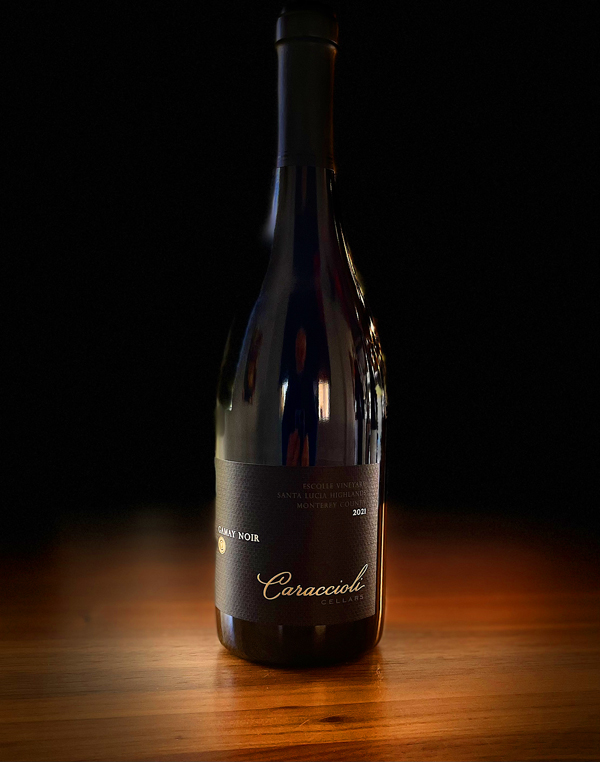
2021 Caraccioli Cellars, Gamay Noir, Escolle Vineyard, Santa Lucia Highlands.
The Caraccioli Gamay is bursting with bright fruit intensity and classic Beaujolais flavors along with the vintage’s zesty acidity, making for a delicious version of this grape with carbonic like creamy smooth tannin and layers of black cherry, strawberry, cranberry and juicy plum fruits. Medium weighted and expressive there is a lot to admire here and this debut release of true Gamay Noir from the Caraccioli’s shows there’s tons of potential in the Santa Lucia Highlands for this varietal. One of three wines to show off Escolle Gamay have been released now, including this tasty wine, along with exciting efforts from Samuel Louis Smith and Ian Brand, both of which I already reviewed here and loved, interestingly each has its own personality, while still highlighting the grape in a pure way. Some of that is thanks to the terroir here, with the highlands having a Granitic Metamorphic Schist underpinning, with Escolle, as the winery notes, being of a soil make up mix including Chualar Sandy Loam – 93%, Alluvial Sandy Loam – 5% and Parkfield Clay – 2%, all of which is wonderfully suited to Gamay, a grape at home in granite based soils. Modern California is thrilled with the Gamay revival and there is a real enthusiast following now that has become almost fanatical for them and I’m sure this one will sell out fast, along with the even more rare Gamay and Pinot, Burgundy inspired, blend that the Caraccioli’s call Passetoutgrain, just as it is known in the Cote d’Or!
The Caraccioli’s planted the Escolle Vineyard in the March of 2008, and as they say, it is 124 acres grounded in the northern Santa Lucia Highlands, where it enjoys a cool climate with plenty of cold air flowing down from the Monterey Bay. Escolle is obviously primarily planted to mainly to Pinot Noir and Chardonnay, with 46 rootstock and clone combinations throughout the vineyard, where the Caraccioli’s sourced their own grapes for both their famous Champagne style sparkling wines, as well as a selection of fine still wine offerings including this one, as a few special block Pinots that are almost impossible to get. The beautiful Escolle Vineyard is sustainably farmed, certified (SIP) and utilizes minimal intervention practices throughout the vineyard, making it a favorite with wineries that purchase fruit from here. No herbicides are used on Escolle, and as the winery notes, all or any weeds are removed manually with either a weed knife or by hand. Because water is always an issue in California only a minimal to no irrigation is utilized here, unless an extreme vintage or event takes place. In 2018 just under three acres of Syrah were grafted to the vineyard, that looks promising, then in 2020 and 2021the Caraccioli’s added four acres of Gamay and an additional two acres of Syrah. Scott Caraccioli, who leads the family’s efforts here, says that as the vineyard continues to mature and realize its full potential, they will experiment accordingly, which has led to this exciting wine’s existence. This Caraccioli Gamay with be a great companion to the Holiday meals ahead and will be a nice quaffer over the next year or so.
($45 Est.) 92 Points, grapelive
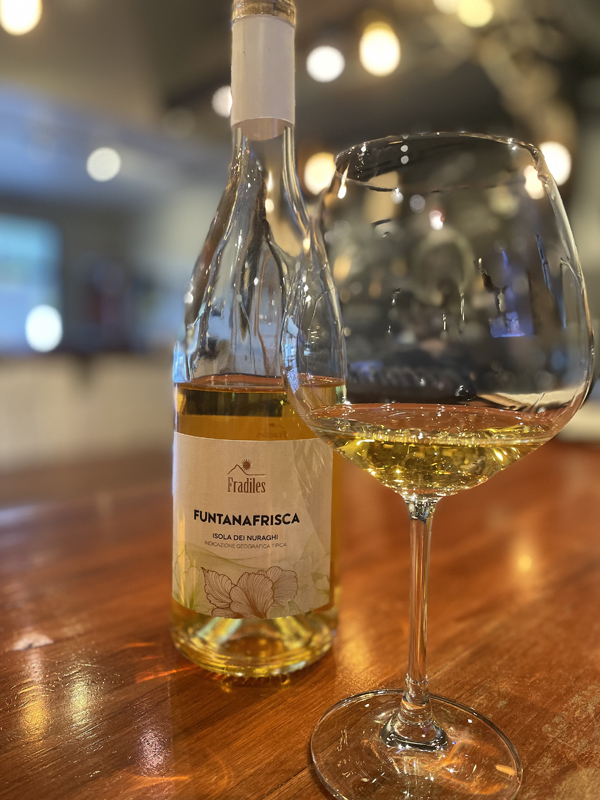
2016 Cantina Fradiles Vitivinicola, Funtanafrisca, White Wine, Isola dei Nuraghi IGT, Sardinia, Italy.
The brilliantly golden yellow Funtanafrisca IGT vino bianco is a white wine from Isola dei Nuraghi from rare native grapes almost exclusively found here in the southern part of Sardinia, with this vintage showing a beautiful maturity right now as it enters its peak drinking window with lovely orchard stone fruits, including apricot at its core, delicate spices, wet saline infused stones, dried tropical fruits, white flowers, golden fig and tangerine citrus notes. This white, made from local varietals, comes from vineyards in the municipal territory of Atzara, a hilly area, that rises steeply up to almost 500 meters above sea level, on the western of the Gennargentu mountains, which sees a nice alpine like cooling during the growing season, making for nicely balanced wines, like this Funtanafrisca, that shows lots of vibrant natural acidity and mineral tones. The all stainless steel fermented and aged Fradiles Funtanafrisco bianco is a blend of Nuragus and Vernaccia, both of which are distinctly and exclusively found on Sardinia, crafted almost in equal parts and it goes wonderfully well with sea foods, lighter cuisine and or soft cheeses.
The Fradiles winery on Sardinia is an all organic and traditional producer that works with many unique ancient indigenous grapes, like the ones used to make this Funtanafrisca white. Sardinia with its many different terroirs, and Mediterranean influence make it one of the most intriguing wine producing areas in the world, with the region of the island in this one being dominated by its decomposed granite and sandy red soils, located in the Southern part of the Island, not too far from Cagliari, the historic Capital. Again, I am grateful to my friend and Sardinian sommelier/winemaker Giuseppe Cossu has provided me with some incredible information on Sardinia and was kind enough to share this rare wine, that he brought back himself and had aged it a few years in his cellar. Fradiles, and winemaker Paolo Savoldo are committed to preserving traditional grapes and methods, using native yeast fermentations along with a combination of stainless steel and neutral barrels to promote individual characteristics of place and varietal, though he also does some blended cuvées as well. Mostly known for his red wines, some of which I’ve already have reviewed here, Savoldo has a great touch with his whites too, as this nicely aged Funtanafrisca shows to great effect. While most people will have had or have heard of Vermentino and or Cannonau (Grenache) from Sardinia, there’s so much more to discover and Fradiles is a winery to look for!
($25 Est.) 92 Points, grapelive
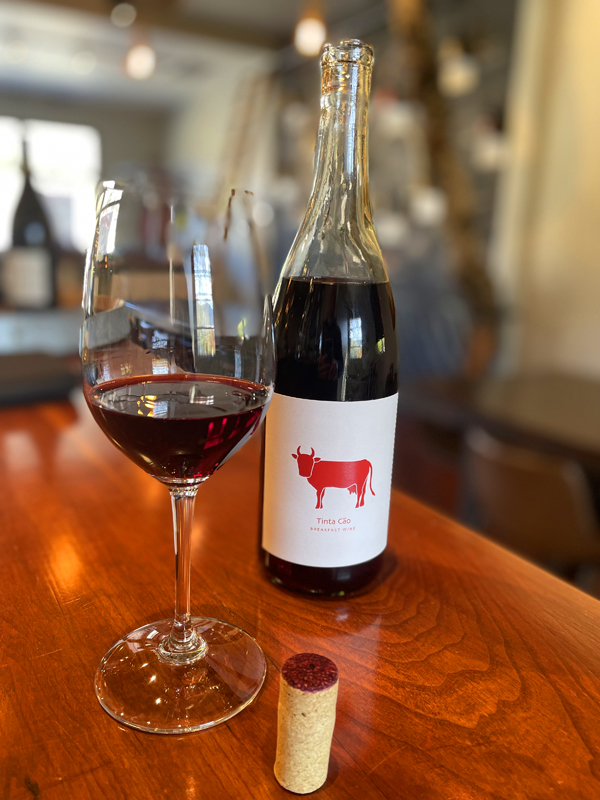
2021 Fair Moon Wine Co, Tinta Caõ “Breakfast Wine” Havlin Vineyard, Van Duzer Corridor AVA, Willamette Valley, Oregon.
Tinta Caõ, pronounced Teenta Cow, is one of the major varieties used in Port wines along with the more famous Touriga Nacional, Tinta Roriz (Tempranillo), Tinta Barroca and Touriga Franca, but is delicious all on its own, as it is here in winemaker Jessica Wilmes’ Fair Moon Wine Co version from the Willamette Valley in Oregon, where it is still a unique rarity. Wilmes, who inspired by the great women winemakers of the natural wine world like but not limited to Arianna Occhipinti, Elisabetta Foradori, Laura Lorenzo, Martha Stoumen and Elena Elena Pantaleoni of La Stoppa, as well as being a fan of orange wines, started out her own label last year when she released her Sunshine effect skin contact Pinot Gris or Gris Rouge and has just released her second set of wines, which includes this Tinta Caõ! Seriously dry and juicy the 2021 Fair Moon Wine Co Breakfast Wine, 100% carbonic maceration, native yeast fermented Tinta Caõ saw absolutely no additions, sans soufre and is all natural with just 11% natural alcohol, it shows racy red fruits, spice and zesty acidity, like Beaujolais it is tasty with a slight chill and perfect for beach sipping and or enjoying by a campfire. I really enjoy the zippy strawberry, plum and cherry fruits along with a stemmy/spicy peppery pop and light earthy tones in this lighter framed and playful red wine. The Tinta Caõ is sourced from the Havlin Vineyard set in the hills of the Van Duzer Corridor AVA, which is an anomaly, or wind gap in the Coast Range that lets oceanic winds funnel into the Valley, creating a cooling effect and helping retain bright acidity and the marine sediment soils add the stony saline notes in the wines, which s perfect for this grape, as well as Pinot Noir, Gamay, another grape destined to be in Jessica’s lineup, and Chardonnay. Though she admits to loving the funk, Wilmes’ Tinta Caõ is not overtly natty and nor is it fruity in style, with a crisp dry tartness that is more old world fresh in style and food friendly, this bright ruby hued no pretense quaffer was great with grilled shrimp and lightly seasoned pasta.
One of the five main Port varietals, Tinta Cão, is a red Portuguese wine grape variety found mainly in the Douro region, and has been grown there since the sixteenth century, it sees very limited new world plantings including small parcels in California and in Oregon, as seen here with Jessica’s version. The vine naturally produces very low yields, that does not make growers very happy, which has led Tinto Caõ to get close to extinction in its homeland, this is despite the high quality of wine that it can produce, and we are lucky that it is seeing a revival of sorts. While normally used in blended wines, Tinta Caõ shows real promise as a single or main varietal and I look forward to seeing more of them, especially after experiencing this fun and easy going wine. Interesting in California, Tinta Caõ, also know as Castellana Negra, research at Davis has led to Improvements in bilateral cordon training and these experiments have helped to sustain the variety in the state. The vine, it is noted as well, favors cooler climates and, like Cinsault does in Bandol or Alicante Bouschet does in the Ribeira Sacra, adds a certain finesse and complexity to a blended wine even in small doses. Jessica, who had never worked with Tinta Caõ before, was excited to give it a go and decided a hands off approach was the way to go, she teases that the wine’s nickname during crush was her “Half-Assed Carbonic” Tinta Caõ, as she just covered/sealed the bin at let nature run its course, before she pressed it to neutral barrel to age for 8 months, then bottled unfiltered. Jessica, who I profiled here on Grapelive.com, Click Here, has just released this wine along with the second edition of her signature Sunshine Effect skin contact Pinot Gris (Gris Rouge) and another all new bottling of skin contact (Pinot) Auxerrois, which might be the most unique single varietal, of this Alsatian grape, offering in America! After years as a harvest gypsy and just a few years in Oregon, working as an intern for Troon Vineyard in Applegate and here in the Willamette Valley with John Grochau at Grochau Cellars, Jessica has found a welcoming home and is new winemaker, taking her own path crafting wines made from the sun and meant only to bring smiles, to follow.
($25 Est.) 90 Points, grapelive
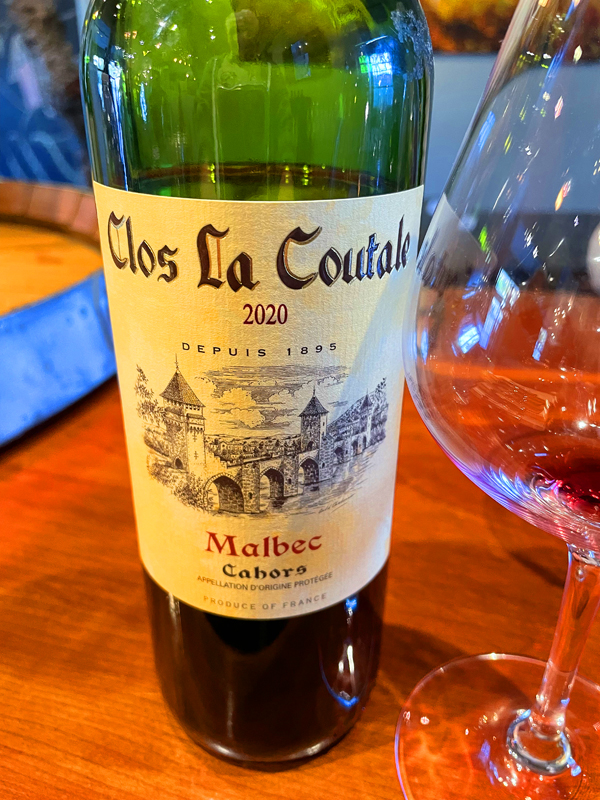
2020 Clos La Coutale, Malbec, Cahors AOC, Southwest, France.
The Clos La Coutale, founded in 1895, is one of the most solid bargains you can find and their 2020 Cahors is a superb Malbec red wine with smooth layers and a light earthy quality with black cherry, plum, currant and mulberry fruits along with hints of dusty spices, roasted coffee, violet laced florals as well as nice mineral tones. With air this vintage gains a rounded medium to full bodied palate and the tannins, while there are ripe and smooth, maybe thanks to an addition of Merlot here. Cahors, an ancient almost forgotten region in France’s almost feral Southwest, is seeing a Renaissance with many amazing new generation winemakers and wines that have taken this historic area to new levels of quality and excitement, with Emmanuel Rybinski’s Clos Troteligotte Malbecs, which have a cult following being some of the most beautiful and exotic in the old world, and Fabien Jouves, who is also making more natural style Cahors wines with his Mas del Perie label is one of the region’s brightest stars, rounding out a place more known for rustic and chewy wines. Clos La Coutale is maybe less polished, but they too have significantly raised the bar here and this wine is a ridiculous value and this latest release, 2020 vintage is one of the best regional, authentic and traditional reds, for the money, you’ll find in France. The dark purple/garnet Clos La Coutale is made from carefully sorted and 100% de-stemmed grapes with a traditional fermentation, in stainless steel vats, lasting just under three weeks and this Cahors saw about a year in used Bordeaux barrels, all to allow terroir nuance to shine through in the wine.
Cahors, a former Roman town, was a center of commerce during the Middle Ages, which is seen as a remote and hard edged country wine region, though as mentioned, actually has highly entertaining and serious (wine) history, the area dates back to Celtic times when it was known as Divona, but really became famous during Roman times, in fact it was one of the most import wine producing treasures of their empire. Cahors supplied the Roman armies with dark and powerful black wines, which legend has it aided in their conquest and was a reward for their many victories! Little known and remembered, is that it was the shipping of these Cahors wines, that made Bordeaux a thriving port and have have been instrumental in giving the locals there the idea of commercial wine production of their own, cutting out the long distance hauling of barrels overland to Bordeaux. Before Argentina’s rise and use of the Malbec grape, Cahors was synonyms with this varietal, which can also be known as Côt, and it is good to be reminded of that and to have wines such as this compelling Clos La Coutale. The Bernède family, owners of the Clos La Coutale, are keepers of tradition, watching over one of the region’s oldest domaines, that was originally established before the French Revolution. Kermit Lynch imports Clos La Coutale, is big fan of Philippe Bernède’s work here and the picturesque setting, along the alluvial terraces of the Lot Valley that are rich in siliceous, clay, and limestone soils. The micro-climate of the vineyards at Clos La Coutale is prime, for the 25 year old Malbec vines, with southwest sun exposure, giving this wine its depth and richness, I highly recommend enjoying them meat stews and casual family meals.
($18 Est.) 91 Points, grapelive
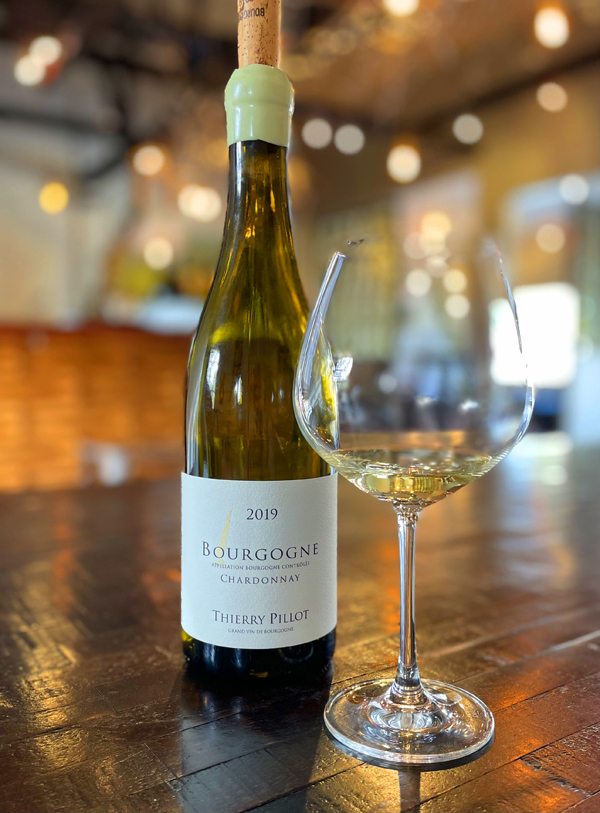
2019 Domaine Thierry Pillot, Bourgogne Blanc AC, White Burgundy, France.
While still of youth, Thierry Pillot is already among the best of the producers based in Chassagne-Montrachet, and is fast becoming as much a cult hero here as Pierre-Yves Colin-Morey, and this stunning Bourgogne Blanc 2019 is as aromatic, riveting and salty delicious as wines way over a hundred dollars, it sings with classic Cote de Beaune hillside intensity, be it Meursault, Puligny or Chassagne, this is brilliant stuff. Domaine Paul Pillot, originally founded by Jean-Baptiste Pillot, a barrel maker, in 1900, and now there’s Domaine Thierry Pillot, too, while the original estate, has also been directed by, since 2004 by the dynamic Thierry Pillot, who’s own label wines are more in the mode of crystalline purity and mineral driven, rather than weighty or oaky with tons of vibrancy and racy in personality. It should be noted that Thierry, who eventually began bottling wines under his own name, and for the time being, the fruit for these wines is sourced from land owned by other farmers, but farmed by Thierry himself to guarantee the grapes are of the highest quality. This excellent, lightly golden, little wine has lovely dimension and a classic array of flavors with citrus blossom, hazelnut and crisp orchard fruits on the nose that lead to a medium bodied palate of tart apple, Bosc pear, quince, peach and fig fruits along with clove spice, wet stones, mouth watering saline, a touch of flint and brioche and clarified creme. This wine comes from Chassagne-Montrachet and Remigny, with vines over 35 years old and saw a lengthy elevage for an entry level Chardonnay with twelve months in barrel, 10% new, then rested another six months in stainless tank before bottling.
Thierry’s dad, Paul took over the Domaine Pillot in 1968, acquiring more prestigious vineyards across Chassagne-Montrachet and Saint-Aubin, similar to his neighbors, like the Colin family and the wines saw a big jump in quality. Today, the domaine owns 13 hectares of vines (4.5 in red) and is run by Thierry, who began working here at the family winery in 1999, before taking over himself as mentioned in 2004. Thierry Pillot is now the 4th generation to take on the reins here and is again as noted above one of Burgundy’s brightest stars, he has put a lot of effort into the vines and has taken a minimalistic approach in the cellar with much less new wood being used here, and the retaining of natural acidity, making for wines of finesse and tension, as this regular bottling, under his Thierry Pillot label, of Bourgogne shows. There’s a lot to love in the way this basic Bourgogne Blanc performs and it is hard to beat to value here and 2019 was not a particularly easy or heralded vintage, so I am really excited to see what Thierry does with his 2020s, a year that is getting a ton of buzz for the whites. It’s been said that Thierry already had a recipe for success, at Domaine Paul Pillot, with the vineyard holdings spread among Chassagne-Montrachet, Volnay, Santenay, and St-Aubin that he inherited from his father, but he’s put the work in here and it really shows in the wines, putting his own stylish stamp on them, and his own label stuff is rightfully in high demand. Oh yeah, it is not only the whites here that demand attention, Thierry does a lot of whole cluster in his Pinots and has an interesting array of plots in Chassagne, Santenay and a prime Volnay Premier Cru from which to choose and I am certainly going to explore those!
($40 Est.) 92 Points, grapelive
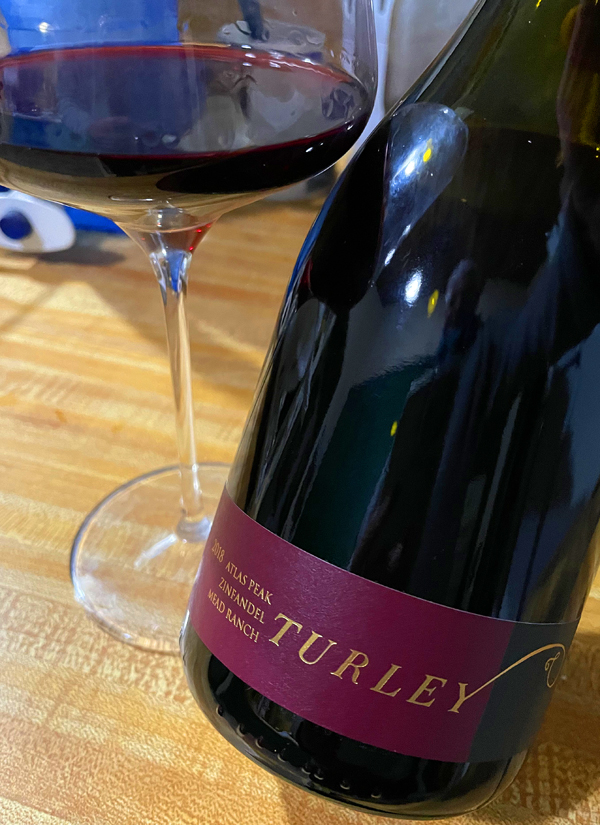
2018 Turley Wine Cellars, Zinfandel, Mead Ranch, Atlas Peak, Napa Valley.
One of my secret favorites in the Turley lineup is the lush, but seriously structured mountain Zinfandel from Turley’s Mead Ranch Vineyard on Atlas Peak, especially in vintages such as this 2018, which shows an inner energy, savory elements and gripping backbone to provide purpose and tension to this big fruited wine that delivers an amazing depth of dark fruit and spice. The full bodied palate opens nicely to reveal crushed black raspberry, dense plum, currant and sweet kirsch, along with hints of peony, sage, stony mineral tones, sandalwood and mocha notes. Turley loves this terroir and explains that the Mead Ranch, which is planted at about 1600 feet on Atlas Peak, on the south eastern side of Napa Valley was originally planted as far back as the 1880s, though Turley’s block is primarily from the 1970s. This vineyard, Turley adds, is classically head-trained and planted on distinct red volcanic soils and notes that this vineyard sees plenty of fog from the bay, all of which helps makes wines that are aromatic, complex, textured and with great acidity, as this inviting purple/garnet 2018 version shows to perfection. This maybe the last Mead Ranch Zin, as cryptically suggested in Turley’s notes, which would be a real shame for such an impactful example of Napa Zinfandel.
As noted here and by the winery itself, the legendary Turley Wine Cellars, founded by Larry Turley was established in 1993 and is one of California’s great family run wineries, producing an awesome collection of wines that represent the state’s historic grapes and vineyards in all their glory. In modern times these vineyard sites and wines are overseen by winemaker Tegan Passalacqua, who has become one of the state’s most respected figures and a keeper of the state’s history and he and Turley craft close to 50 different wines from over 50 vineyards across California, of course mainly focused on Zinfandel and Petite Syrah, with many vines dating back to the late 1800s. The farming is done organically and great care is applied to preserve these old vine vineyards and of these classic varieties, that Turley believes makes California unique in the wine world. These rich and authentic offerings are made to be expressive and hedonistic, but are made with a gentle hand using 100% natural yeast fermentation and employing just 20% new wood for aging, these barrels are 80% French and 20% American oak, with this Atlas Peak Zin seeing about 15 months of elevage. Coming in at just over 15% natural alcohol, the Mead Ranch Zinfandel has a similar personality and presence in the glass to a Chateauneuf du Pape and best enjoyed with a robust and hearty meal, this is an outstanding wine, I wish I had bought more!
($40 Est.) 95 Points, grapelive
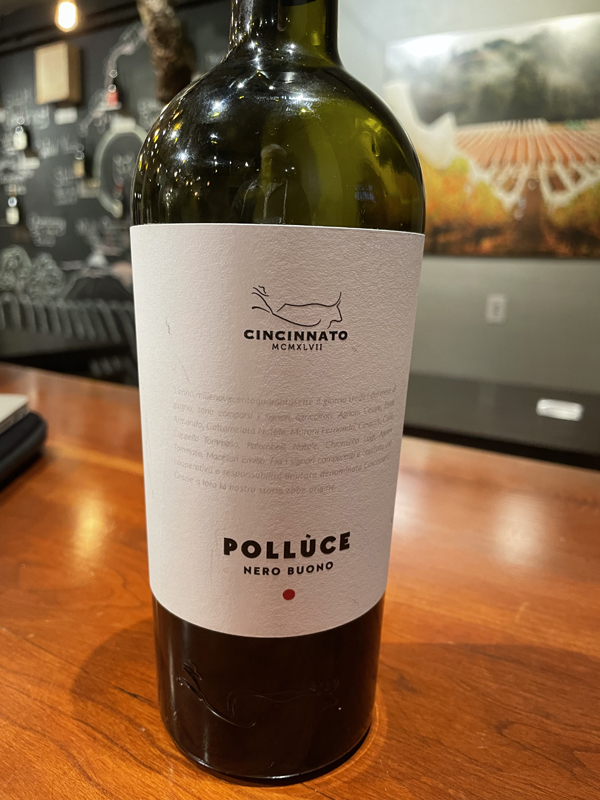
2017 Cincinnato Pollùce, Nero Buono, Lazio IGT Rosso, Italy.
Made from a rare varietal, Nero Buono, the Cincinnato Pollùce IGT Rosso comes from vines in the Latium area of the Lazio region, not far from Rome, it is an outstanding no pretense red that shows a fresh and balanced array of red fruits and has a nice snappy spiciness, mineral notes and a light floral note, in a medium bodied wine that is great with food. The Nero Buono, an ancient grape, is grown organically on the volcanic based clay soils in Cori, again just south of Rome in an area with a long history of winegrowing, though many of these old varietals, like Nero Buono, nearly went extinct over time as other regions became more important in modern times. The 2017 has brandied cherry and balsamic strawberry and dusty plum layers and zesty acidity with some juicy orange rind, mountain herbs and hints of savory/stony elements that adds complexity to this superb value priced wine. The Cincinnato Pollùce saw a 10 day maceration to bring out a good extraction of flavors here, but this Nero Buono has a refined tannic back bone and is a wine to enjoy with a wide range of cuisine options, including pasta dishes and or cheese plates.
Made from 100% Nero Buono that was de-stemmed and fermented in stainless vats, with no oak involved, after which the wine is aged in the stainless steel for close to a year before release, all to promote purity and terroir. Crisp and mouth wateringly dry at first, this vintage feels nicely old world in style, with moderate alcohol, coming in at just 13%, and has some tones that will please those that enjoy regional bistro wines. Imported by Oliver McCrum Wines, an importer that is acclaimed for finding unique and entertaining lesser known Italian regions and grapes, so my own interest was heightened to look into this almost unheard of varietal and small co-op producer. McCrum notes, the Cincinnato winery was originally founded back in 1947 and is named for the ancient Roman senator and farmer Cincinnatus, and champions these native varietals, like Bellone a fabulous white grape, as well as this Nero Buono, with value priced offerings. This grape, Nero Buono, which translates to “good black grape” is from unknown origins, though it may come from Greece, like many varietals in the Southern parts of Italy. The Pollùce name is a tribute to the mythical twins Castor and Pollux, as the archeological remains of their temple is located near by, bringing the past into the present, as this wine does.
($16 Est.) 91 Points, grapelive
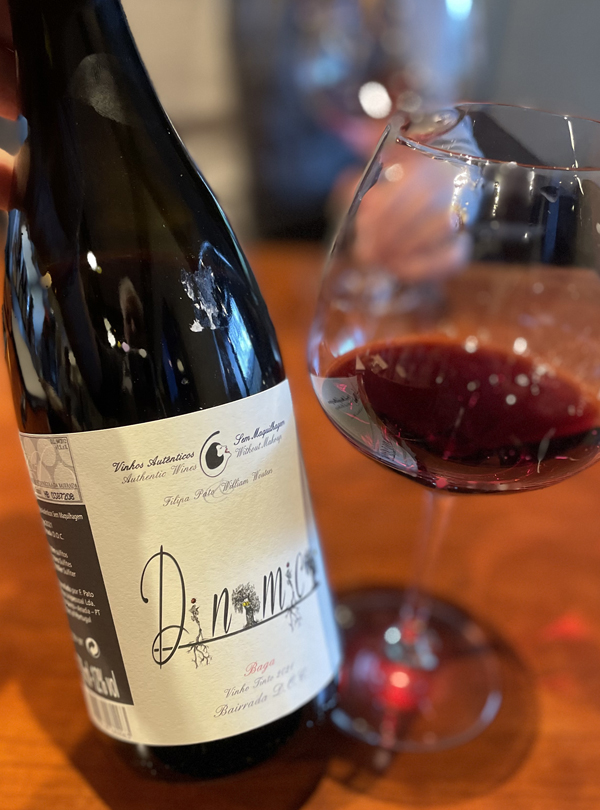
2021 Filipa Pato, Baga “Dinamico” Vinho, Bairrada D.O.C. Red Wine, Portugal.
The 2021 Dinamico Baga is electric shock fresh and spicy stuff, it is a lighter medium bodied red wine that excites the palate with pomegranate, strawberry, bramble berry and Brazilian Acai fruits, along with zingy cinnamon, pepper, mineral notes, a touch of earth and crushed flowers. This vintage shows a cool clarity of flavors and brisk details with racy acidity that keeps things bright and focused, it is one of the most compelling versions to date. To create her wines, Filipa Pato works her estate with biodynamic practices, and with very minimal-intervention or natural winemaking in the cellar and with a focus of local and historic grapes to the region. The use of different sites adds depth here with the clay and limestone soils producing Baga with lighter tannins and more depth of concentration, whereas the schist-based soils produce firmer tannins and some highlight the spice and mineral dimension. The 100% Baga “Dinamico” is sourced partially from Filipa and William’s estate vineyards in Ois do Bairro, and partially from other growers in various villages in the Bairrada zone. Only handpicked and fully de-stemmed all organic grapes are used, with a native yeast fermentation employed and then it is raised entirely in tank. Filipa, who is intensely passionate about her region and the local varietals here, like this Baga, is admired in the natural wine community and beyond for her talents.
As mentioned in my earlier reviews, this is one of my favorite producers in Portugal, Filipa Pato, along with her husband, Belgian sommelier and restaurateur William Wouters, make what they call vinhos autênticos sem maquilagem, which translates to ‘Authentic Wines Without Makeup.’ and use only ancient native varietals like Baga, the grape in this lovely little red wine wine from her home region of Bairrada. The, as noted, no wood and tank raised Dinamico Vinho red is deliciously fresh and a ridiculous bargain, it delivers a ripe and vibrant array of racy red fruits on the medium bodied palate, along with vibrant acidity, like a Gamay or Pinot Noir, spice and mineral notes, it way over performs for the price, making this wine even more attractive and an excellent choice for holiday meals. Filipa, who is intensely passionate about her region of the unique varietals here, like this Baga, as well as Bical, Cercial and Maria Gomes, the main local white grapes found in Bairrada. The Pato offerings highlight the Atlantic continental climate and region’s nature exceptionally well, they are raw, authentic and stylish wines, I especially love this one, with its vividly ruby/garnet Baga hue in the glass, it can be served with a slight chill too, and I really enjoy her sparkling Rosé 3D, as well as her white, made with the other rare local varietal Bical, I highly recommend searching these wines out!
($17 Est.) 92 Points, grapelive
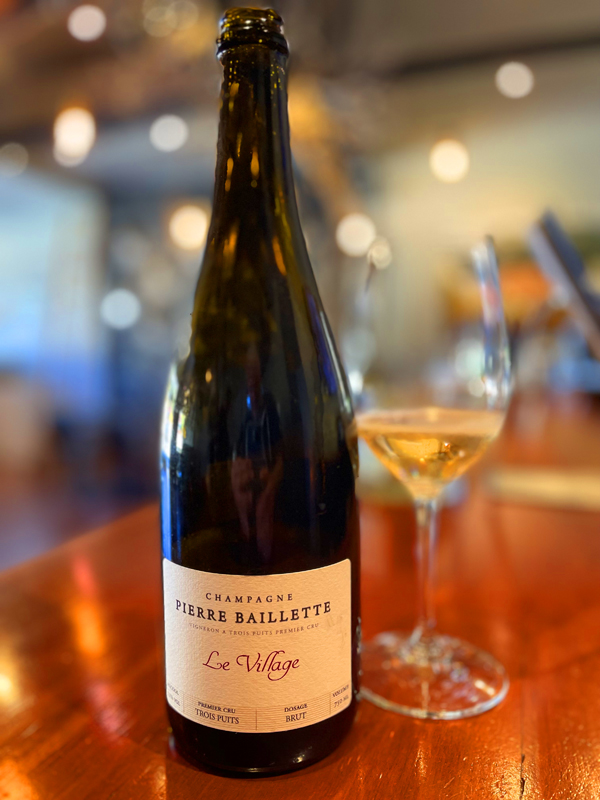
nv Pierre Baillette “Le Village” Premier Cru, Trois Puits, Brut Champagne, France.
The grower producer Champagne by Pierre Baillette is all new to me and this bubbly, made by Pérrine (Baillette) Chartogne, who follows the same farming methods as her husband Alexandre, at the famous Champagne Chartogne-Taillet, Le Village Brut was a brilliant and vibrant way to start the day and was a great introduction her wines, it is on the drier spectrum of Brut, almost Extra Brut in style with great tension and mineral tones, similar to some of my favorites by Agrapart and de Sousa. The palate feels electric with lean lemon, green apple, quince and Asian pear fruits, plus notes white flowers, bread dough and with a very lively mousse and a steely frame. This Premier Cru is a traditional cuvée made with a core of Chardonnay, Pinot Noir and some Meunier that come from Baillette’s own vines in Rilly la Montagne and Trois-Puis, along with Chardonnay from the Verzenay Grand Cru region. The Le Village is blend of the mentioned crus from the south of the Montagne de Reims, where the soils are classically chalky, which is clearly on display in this fine effort.
Périne Baillette, now Chartogne, and who is the daughter of Pierre Baillette, is now the owner and winemaker of the family Champagne house based in Trois-Puits, and certainly there will be a coming out party and a greater awareness of her talents sooner verses later, if the full collection of sparkling wines are as good as this one. Périne, I understand is led by passion to keep things natural and strives to make terroir driven grower fizz, she uses only natural or indigenous yeasts on her grapes that are holistically farmed. She is seeking to craft as pure a Champagne as possible, so the addition of dosage is very low in sugar, with this one at about 4.5 grams per liter, and the base wines see between 3 to 6 years of lees aging. This most recent disgorgement comes mainly from the 2018 vintage and the base was close to 40% Pinot Noir, 40% Chardonnay and 20% Meunier in make up, with close to 20% of reserve wines, to add complexity here. This is a label to watch for enthusiasts of these racy ultra dry Champagnes, with a soulful and authentic personality and are sparklers that go great with Sushi and or fresh raw oysters.
($55 Est.) 92 Points, grapelive
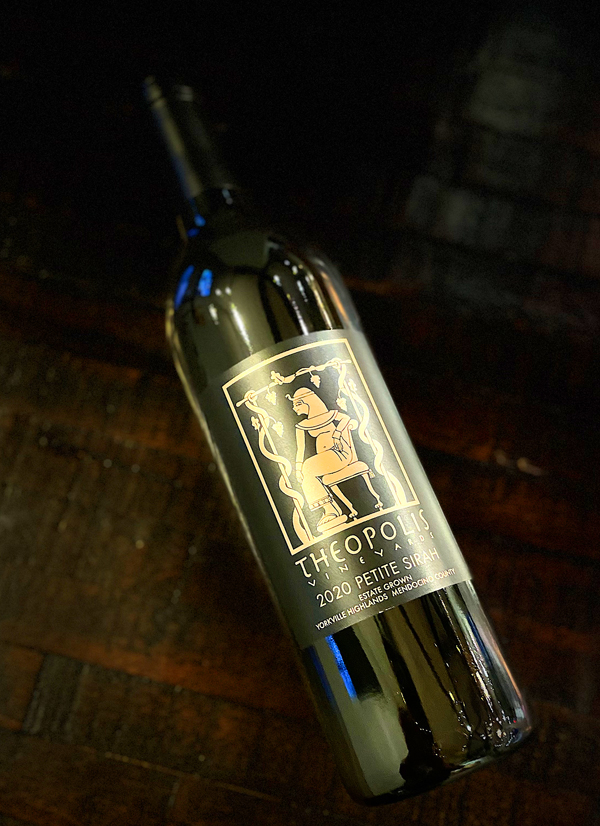
2020 Theopolis Vineyards, Petite Sirah, Estate Grown, Yorkville Highlands, Mendocino County.
Always an exciting wine and one I look forward to trying, the Theopolis Petite Sirah by Theodora Lee, who owns this amazing terraced vineyard in the Yorkville Highlands, which makes for one of California’s most unique and tasty versions of this grape, with this 2020 being another dark and powerful effort. As mentioned in prior reviews, this might be the best and most distinct site for Petite Sirah in California, and I have loved this wine since I first tried it, along with Halcon’s version from this hillside and schist soiled vineyard that gives an ultra deep purple/black color and a full bodied palate with classic dense blackberry, plum, bramble berry and chocolate dipped cherry fruits along with a racy spicy and savory character, as well as some grippy dusty tannins, dried herbs, sweet liqueur, mocha and toasty/smoky oak notes. It is tough to follow up vintages like 2018 and 2019, but this 2020 gives a good showing and will entertain Lee’s fans, though be sure to decant this youthful Petite Sirah and match it up with Theodora’s suggested cuisine choices, including smoked brisket, BBQ, grilled flank steak and or hearty Winter stews that will pull out a more lush fruit profile. There’s a lot to like in these Theopolis wine, especially this one, but their set of elegant and lush SLH and Yorkville Highlands Pinots, a rare and tasty dry Petite Sirah Rosé and the Cuvée Cerise red blend are all worth chasing down.
As noted here at Grapelive, Theodora Lee, originally from Texas and a well respected trial lawyer, fell in love with California wine after moving to the San Francisco area in 1987 and after seeing many of her colleagues invest in vineyards and wineries she founded Theopolis Vineyards back in 2003. Her passion for wine led her to the remote and steep hillsides of the Yorkville Highlands with Lee focusing on Petite Sirah grape believing it had the best potential here and would make for an iconic example, and very few not agree that this spot and wine are very special. Lee, who has taken UC Davis enology classes and is very hands on with her wines, along with winemaker and consultant Ed Kurtzman, known for his work with Roar, August West and his own Sandler Wines, which include this signature bottling, as well as doing a unique Rosé of Petite Sirah and a few tasty Pinot Noir offerings, plus she does fruity white wine made from a hybrid varietal, called Symphony, that was a crossing of Muscat and Grenache Gris. For her signature Petite Sirah, Theodora went with an open top stainless steel fermenter to do the primary fermentation and used 25% whole clusters, that gives this wine its extra pop, and then pressed to French oak barrel, with 25% new, where the wine is matured for 21 months before bottling. This vintage is warmly ripe, coming in at 14.9%, but still feels energetic and freshly balanced, drink this one over the next 3 to 5 years. For those that like aging their wines, the 2018 and 2019 vintages, which you can still find, look to have incredible aging potential.
($42 Est.) 91 Points, grapelive
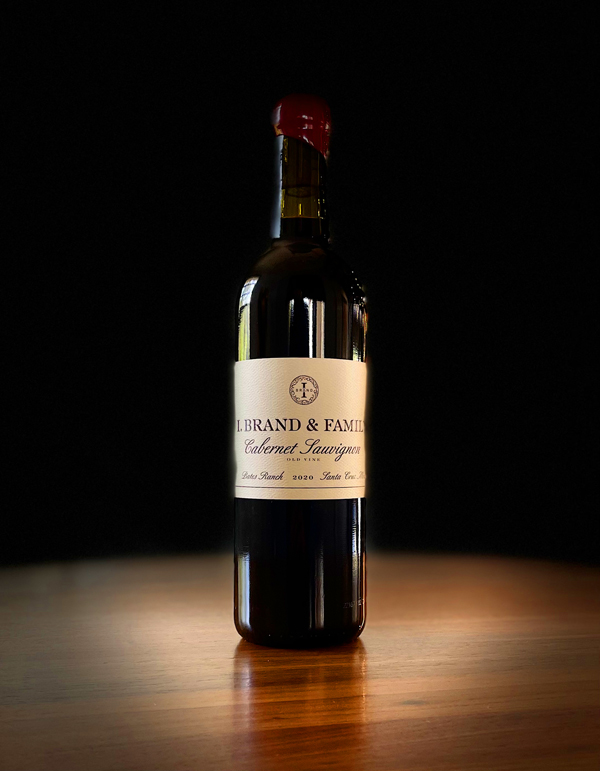
2020 I. Brand & Family Winery, Cabernet Sauvignon, Bates Ranch Vineyard, Old Vines, Santa Cruz Mountains.
Winemaker Ian Brand has been making a fine Bordeaux inspired Cabernet Franc from this Bates Ranch Vineyard for many years and he wasn’t sure he needed another Santa Cruz Mountain Cabernet Sauvignon, as he already had the prized Monte Bello Road version, but we are lucky he decided to bring the Bates Cab grapes in too, especially as this new 2020 is a spectacular wine that is going to blow some freaking minds, it may just be one of the sleepers of the vintage! When the world discovers that most of the 2020 Napa wines are seriously flawed by smoke taint and begin to look elsewhere, this is going to be a wine to have, as this site had a perfect, no smoke, harvest with incredible depth and concentration on offer with true varietal character from black currant, blackberry, plum and dark cherry fruit to its sweet tannin, cut tobacco, anise, acacia flower, sandalwood and spicy sage accent, it is a deep purple/garnet joy in the glass! While obviously a true California example and 100% Cabernet Sauvignon, there is the same pleasure and light loaminess that I get from classic Medoc Bordeaux wines, it is something that this terroir delivers. Located along the historic Redwood Retreat Road close to Gilroy, the Bates Ranch was settled near Mount Madonna in the Santa Cruz Mountains appellation, where the Bates Family has been growing top quality grapes for four generations now. The area is sees a generous climate for Bordeaux varietals, especially good for Cab Franc and Cabernet Sauvignon, highlighted by warm days and cool nights, resulting in fabulous wines like this one and notably Ian Brand’s outstanding Cab Franc, as well. The 2020 Old Vines Bates Cabernet Sauvignon truly shines with air and food, it has age worthy structure, but remarkably supple in its youthful freshness, I might suggest aging a few bottles, especially at this price!
The Bates Ranch Cabernet was planted back in 1978 and set is on red Franciscan series, iron rich and gravelly volcanic soils that delivers a striking mineral elegance and warm ripeness. It is crazy that Bates Ranch doesn’t get the headlines it deserves, but Brand has certainly made a wine here that makes a case for greatness, especially in this vintage, it is something he relishes, turning little known or under appreciated sites into stars. Ian Brand says he didn’t really set out to make these wines, it was just that he discovered some great vineyards at the very edge of what could be called sensible farming and felt the desire and the need to bring them into the light, the rest they say is history, and over the last 10 or so years he has been responsible for resurrecting some of the most treasured sites in the central coast. He adds that the farther he looked, the more he found – remote, challenging vineyards, with hard depleted soils, and intense sunlight tempered only by the cool coastal breezes. These unique vineyards are capable of producing only the most idiosyncratic of wines, soulful expressions of place and history. Brand highlights, that the goal as winemakers is to lightly polish the roughest edges, but to leave the idiosyncrasy of these wines and grapes intact, for which it is clear when you taste his wines, that he has done and with delicious success. For his Cabernet wines, like this old vine site in the southeastern zone of the Santa Cruz Mountains, Brand employed a traditional fermentation and maceration, with careful sorting and de-stemming of the grapes and an elevage in mostly used French barrels, though in recent years he’s used some larger Austrian oak too, with just enough new wood to do the job. I am very impressed with the latest set of wines here and I highly recommend getting this stunner, which is just now being released, and keep an eye out for the Bates Cab Franc and Brand’s latest Grenache, signature offerings, which are just delicious as well.
($48 Est.) 95 Points, grapelive
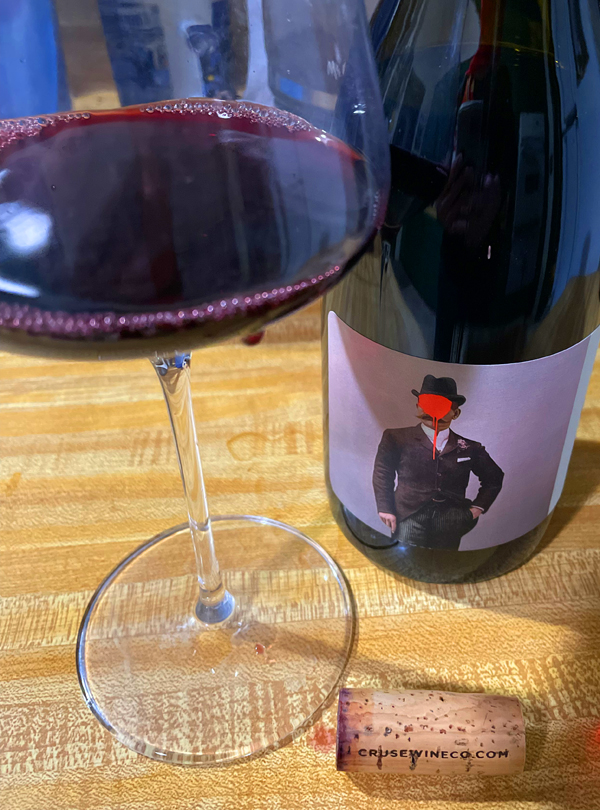
2019 Cruse Wine Co, Syrah, Charles Heintz Vineyard, Sonoma Coast.
Coming from the cool, western Sonoma Coast and coastal marine sandstone and loamy soils, mostly known for top notch Chardonnay, the 2019 Michael Cruse Charles Heintz Vineyard Syrah is an intense Northern Rhone, deeply purple and inky with earthy black fruits, spice and rustic savory elements. Capturing Syrah’s most feral side with loads of whole bunch and stemmy crunch and firm tannic structure, this wine is thrilling and impressive in the glass, reminding me of some of my favorite Cornas wines and as it opens, there layering of fruit becomes more opulent and shows off the vintage’s best qualities. The full bodied, but eclectic palate shows blackberry, boysenberry, damson plum, blueberry and cherry fruits, all framed by peppercorns, anise, black olive, mineral tones, crushed violet florals and a meatiness that perfectly plays against the dense fruit core here, this is exceptional and stylish stuff. Of course, I love the Cruse bubbly wines, but Michael Cruse has done a masterful job with this Syrah and he is just now releasing his new 2021 vintage, which I gotta think will be just as seductive as this version. Cruse notes, he has not filtered or fined the Charles Heintz Syrah and says this wine saw no additions or any manipulations in the cellar, with the exception of a small dose of SO2, that is stabilizing force to allow aging and long term enjoyment, as well as delivering remarkable freshness. This Syrah benefits from decanting and just gets better and more complex with time in the glass, but it especially is at its best with robust cuisine, like a rack of lamb, or wild mushroom dishes, and it shows off wonderfully with food.
Petaluma winemaker, Michael Cruse, as mentioned here, is a sparkling wine guru, known for his incredible sparkling wines from his leesy and sophisticated methode champenoise Ultramarine, that has a cult following, to his delightfully unique Pet-Nats, one that is made of St. Laurent, a rare Austrian grape and one made from Valdiguie, which is absurdly good too! That said, Cruse does a quality and intriguing set of still wines, like this one, with varietals ranging from Syrah to Tannat, that originally comes from close the Pyrenees in France’s southwest and most famous in the fiery tannic red wines of Madiran and Irouleguy, in the French Basque region, as well as a brand new Petite Sirah, a red blend called the Monkey Jacket and a delicious Beaujolais like Valdiguie. The still wines lean toward the natural or old world, but are as Cruse says, uniquely Californian and rawly transparent and made with indigenous yeast fermentation and as seen here in the Charles Heintz Syrah a bunch of whole cluster, with his wines being matured in mostly used, well seasoned French oak that only offer a hint of wood influence. Cruse’s main red wine, the Monkey Jacket, is a North Coast red blend that is about 51% Valdiguié, with the remainder being Carignan, Syrah and maybe a touch of other black grapes, depending on the year and is a great value quaffer. I really enjoyed Cruse’s Tannat, which comes from Alder Springs Vineyard, one of California’s jewels, and was delighted by the similar elements you see in the Basque Irouliguy wines, as well as the notable South-West French Madiran region, but this Syrah, with its restrained natural alcohol, only 13.5%, might now be my favorite now! This 2019 Syrah, only 11 barrels made, might be hard to find nowadays, but I recommend keeping an eye out for it, or get on Cruse’s list to get the latest release.
($45 Est.) 94 Points, grapelive
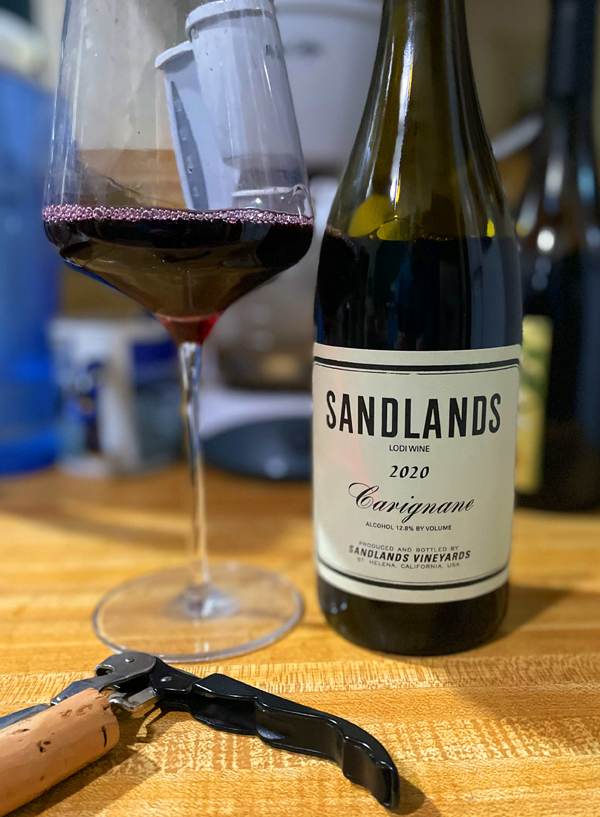
2020 Sandlands Vineyards, Carignane, Lodi Wine, California.
I couldn’t keep my hands off this new batch of Tegan Passalacqua’s Sandlands Vineyards wines and especially his brilliant Lodi Carignane, this is always one of my favorite wines in the Sandlands collection and this 2020 is wonderfully fresh and lively, but with comforting fruit density and dark flavors, it is perfect for simple country foods and no pretense quaffing. One of my friends just got back from a trip to France, where he explored Carcassonne and the Languedoc region, enjoying and learning to make their local historic dish of cassoulet, where it was paired with the native reds wines, like those of Corbieres, Minervois, Fitou, Maury, Saint-Cinian, Pic Saint Loup, and Faugères, and it got me thinking about some California wines that would be great with his new found recipe, bringing this delicious Lodi Carignane to mind. In fact this wine perfectly pairs with the rustic versions of cassoulet with its deep purply dark hue and medium to full bodied palate of blackberry, currant, plum and Italian cherry fruits that are balanced nicely by brambly spice, dusty stones, sprigs of wild herbs, earthy cedar and orange rind accents. This vintage of Passalacqua’s Lodi Carignane is smoothy textured and ripe in layering, but as always is restrained in alcohol coming in at just tick under 12% and is as easy to love as his Zinfandel, I highly recommend getting on the Sandlands mailing list and never passing up on his two Carignane bottlings, this one and his Contra Costa County version!
For these Sandlands wines, winemaker Tegan Passalaqua, who is the vineyard manager and head winemaker at the famous Turley Wine Cellars, uses restraint and employs a light touch in the cellar here with most bottlings being small wines made with indigenous yeasts and lots of whole cluster. Along with traditional old school maceration(s) with hand punch downs, basket pressing and with the aging being done in well used barrels, mostly French oak. California wine enthusiasts are re-discovery Lodi and the region’s historic old vines, with many vineyards being well over 100 years old, set on well draining sandy soils, which is what many of California’s best vineyards have, like this one, which produces small yields and fruit concentration. Passalacqua notes, that This own-rooted vineyard of Carignane, was planted in 1900, on Lodi’s Tokay fine sandy loam on the west side of Lodi’s Mokelumne River AVA, where it has thrived for well over a hundred years now. This combination makes for some great wines and Lodi offers tremendous value for the savvy wine lover and this latest Sandlands Lodi Carignane is proof positive of that, it delivers tons of personality, quality and complexity at a great price. Carignane or Carignan, is a Rhone varietal that has been in California a long time, and along with Cinsault, are mainly used in blends, but can make for stylish single varietal wines, both of which are tasty treats, especially these Sandlands versions. Carignane, maybe known best in the Languedoc and is usually found as a main player in Saint Chinian and Corbieres, but is also found in Spain’s Priorat and on the Italian isle of Sardinia, plus here in California where it is a minor part of classic Zinfandel field blends from Lodi, Contra Costa to Sonoma Valley and in the remote wilderness of Mendocino!
($28 Est.) 92 Points, grapelive
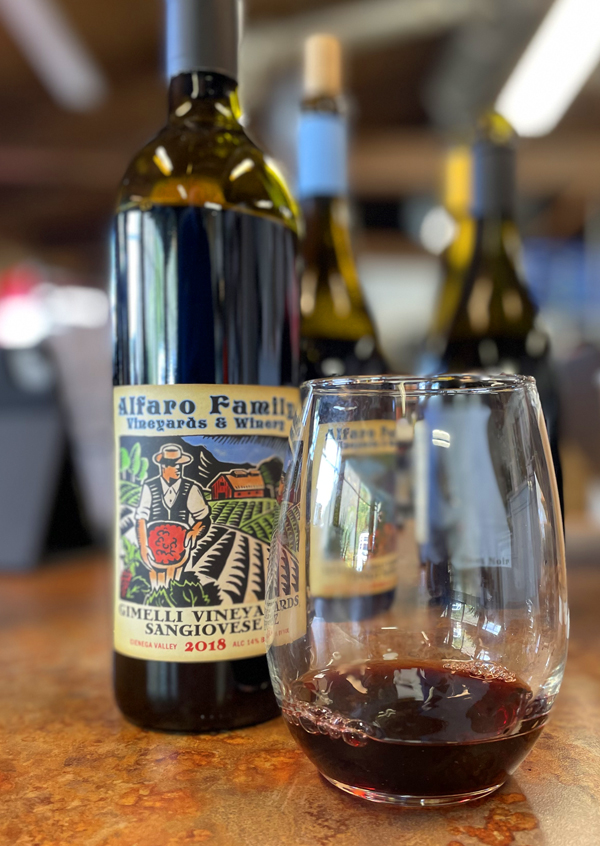
2018 Alfaro Family Vineyards, Sangiovese, Gimelli Vineyard, Cienega Valley, San Benito County.
While mainly, and rightly so, for their Chardonnay and Pinot Noir offerings, Alfaro Family Vineyards also does a few rarities, including their crisp Gruner Veltliner and this rustically charming Sangiovese from vines at the Gimelli Vineyard in the Cienega Valley, an area now getting its due for its historic old vines and unique terroir. Richard Alfaro has long been a fan of this vineyard and has done a few different offerings from here, with this 2018 Sangiovese proving to be an excellent wine and a very nice value, showing nice transparent varietal character with dark berries, savory tobacco leaf, cedar and dried flowers leading the way along with hints of strawberry, kirsch, minty herbs and saddle leather notes, making for an authentic, almost Chianti like, food wine. This deep garnet red Sangiovese has some juicy acidity and just the right amount of raw grip to provide good structure here, allowing for pleasure now and giving enough stuffing to age easily for another 3 to 5 years.
Alfaro Family Vineyard is seeing a change in generation with Richard’s son Ryan, who is a rising talent in the region, now taking over the cellar and handling the winemaking here, be sure to check in on the wines here as they transition to Ryan’s latest efforts, especially the Trout Gulch bottlings, they look to be very exciting stuff. Ryan also has his personal label, Farm Cottage Wines, and these are absolutely delicious offerings and have a bit more edgy personally with the reds seeing more whole cluster, with the Pinot being a star. Coming from limestone and granite soils the Sangiovese was traditionally fermented and matured with de-stemmed grapes and hand punchdowns before pressing to mostly neutral and used French oak barrels to promote this wine’s sense of place and deliver this Tuscan inspired wine’s best qualities from a vintage that is proving to be one of the best locally in decades. The long cool season made for well balanced wines and gives the wine long hang time depth of flavors, which is on display here in a wine that is divine with classic pasta and or easy meat dishes, look for this one before it’s gone.
($21 Est.) 90 Points, grapelive
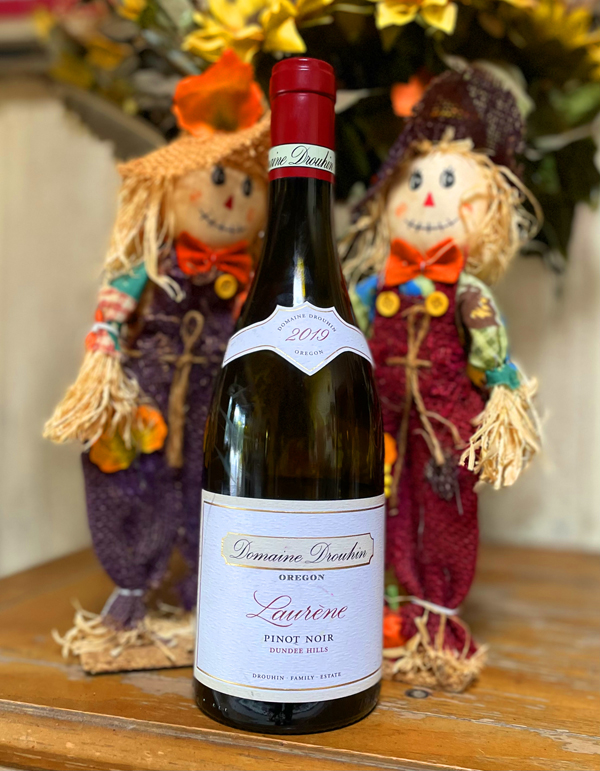
2019 Domaine Drouhin, Pinot Noir “Laurène” Dundee Hills AVA, Willamette Valley, Oregon.
Always one of the most consistently excellent wines in the Willamette Valley, Domaine Drouhin’s Laurène Pinot is a star selection and always graceful in style, the 2019 is a lighter and more subtle vintage, but captures the terroir and year with a beautiful nuanced performance in the glass with bright and earthy red fruits, spice, delicate florals and a satiny texture. I believe I started trying Domaine Drouhin’s Laurène, a Reserve wine, with the legendary 1998 vintage and have ben a fan ever since, even in the off years this has been a tasty treat and a wine that really is rewarding with this season’s cuisine. The 2019 Laurène came in a tick under 14% and has a concentrated, but elegant mouth feel and a lively medium bodied palate of sweet cherry, plum, raspberry and tangy red currant fruits, along with a range of red and brown baking spices, warm oak and mineral tones, with everything folding together nicely in this substantial ruby/garnet hued Pinot, with a fine balance of its tannin and acidity. That said, I recommend giving this lively and taut wine some time to express itself fully and enjoy it with a meal. I also love the fact that the Laurène comes in half bottles too, which sometimes just the perfect amount, especially when you have an aperitif before the main course.
The Domaine Drouhin’s Laurène Pinot, which is named after Véronique Boss-Drouhin’s oldest daughter, Laurène, and is the flagship wine of the American arm of the famous Joseph Drouhin Burgundy producer, it is produced entirely from Pinot Noir grown on the family’s estate in the Dundee Hills, which is set on the classic Jory red (volcanic) soils. The grapes are, as the winery notes, handpicked into small totes, 100% de-stemmed, and traditionally fermented with indigenous yeasts, gently macerated and then pressed into French Oak barrels, with some new toasty ones included. Once the vintage is safely resting in the cellar, Véronique, who is an ever present and admired figure in the valley, begins the process of selecting her favorite barrels. Her choices form the core of this French inspired Laurène cuvée, with this group of hand picked barrels, according to the estate, having an extra degree of complexity, length, and depth. Véronique notes, her choice of barrels must will work well together to become the Laurène and this 2019, a tough year weather wise has turned out luxurious and delicious, making for a Pinot that is worth every penny and one that should drink nicely for another decade with ease. While not a blockbuster in terms of fruit density, there is everything you could ask for (in a Pinot Noir) and there is a regal pedigree that shines through here, it is impressive stuff.
($75 Est.) 94 Points, grapelive
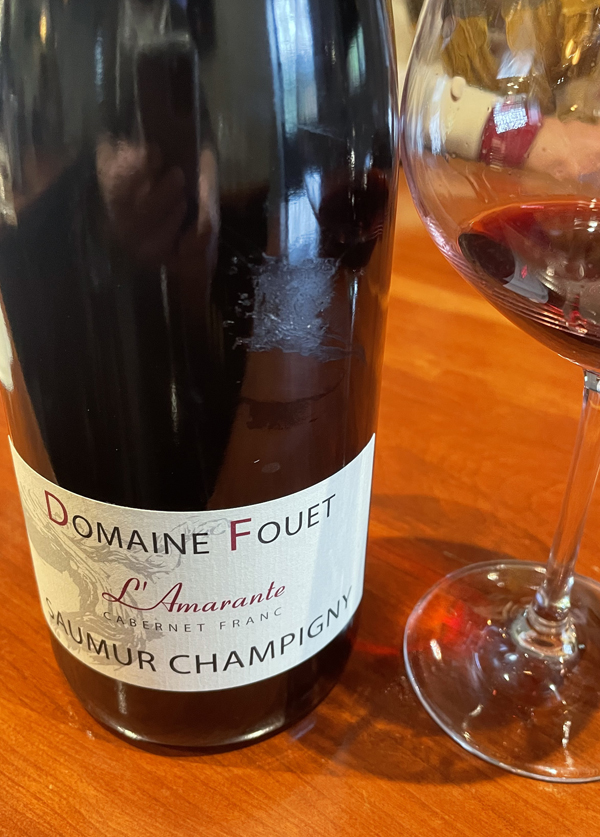
2018 Domaine Fouet, Saumur Champigny “L’Amarante” Loire Valley, France.
The authentic and pure Cabernet Franc L’Amarante by Julien Fouet, the sixth generation vigneron who runs his 15-hectare Fouet estate, is full of earth dense red fruits, along with spice, mineral and black licorice notes, making a for an excellent old world value and wine to enjoy with hearty Winter cuisine, especially rustic meat dishes. The palate, which is medium/full and gripping, opens up nicely with air, gaining some pretty floral elements, blackberries, kirsch and subtle green pepper, but there is plenty of acidity and raw tannin here in this Saumur Champigny Rouge that keeps things taut and with a dry and stony character. The dark garnet Fouet saw a classic 10 day maceration and vat aging for less than a year before bottling, making for a wine of varietal purity that has a real sense of place.
In recent years Domaine Fouet has employed organic methods, going fully certified in 2017, in the vines and keeps things clean and simple in the cellar with the wines seeing traditional winemaking to promote terroir transparency, which this cuvée L’Amanante showing true sense of place. The Saumur Champigny region is one of most important areas for Cabernet Franc in the world, it is set of calcareous and chalky soils and capable of producing incredible and age worthy wines, with some cult producers like Clos Rougeard getting Grand Cru Burgundy prices for their rare bottlings. Though, wines like this one by Domaine Fouet, give enthusiasts some top notch values and I highly recommend the L’Amarante for savvy Cab Franc fans. There’s a lot like here with Domaine Fouet’s wines, imported by Wine Wise here in California, especially this impressive effort, which is an outstanding bargain, drink it over the next 3 to 5 years.
($25 Est.) 91 Points, grapelive
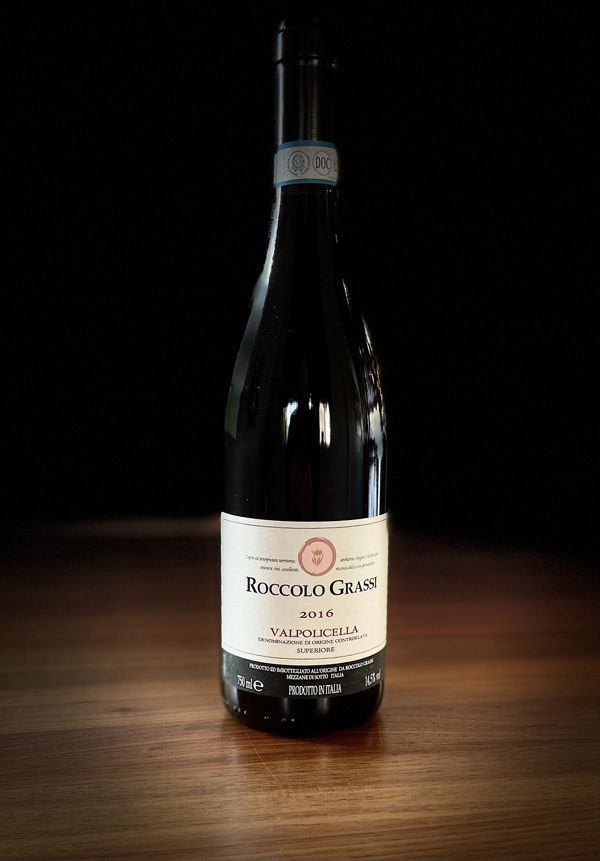
2016 Roccolo Grassi, Valpolicella Superiore DOC, Veneto, Italy.
Rare is the wine that has Valpolicella on label drink in the upper realms of the likes of Barolo or Brunello, but this Roccolo Grassi does just that and with stylist rustic charm that is not flashy at all, it shows an old world, unmistakable Italian presence in the glass and the depth and complexity is world class. Made with the classic varietals with some partially dried grapes to concentrate the flavors there is no sense of over ripe or raisiny notes, instead you get earthy and savory Corvina, rather than sweetness of a Ripasso or Amarone, with a bit of Nebbiolo like feel here with a deep range of berry and cherry fruits, spice, fresh cut tobacco, minty herbs, cedar, subtle florals and a leathery note. This is a stunning vintage with excellent richness and structure and the wine finished at 14.5% alcohol which allows the very best of the main grape here and terroir to express itself in its best light, this is a wine that way over delivers for the price and will be rewarding especially with hearty cuisine. I must say, as a fan of some the big names in the region and having had on many occasions the likes of Quintarelli and Dal Forno, this is the real deal and I recommend bargain hunters check this one out.
The Roccolo Grassi Valpolicella Superiore DOC is named for the historic vineyard here in the Veneto and comes from sites that sit on volcanic basalt soils at an elevation above 200 meters with a warm southeast exposure. The blend is Corvina 60%, Corvinone 15%, Rondinella 20% and Croatina 5% and the grapes were (after some were partial air dried) de-stemmed and fermented in stainless steel with about 15 days of skin maceration before being gently pressed to mostly used barrels, which typically is a combination of small French barrique and large traditional oval Slavoian oak casks. The highly rewarding and impressive Roccolo Grassi Valpolicella Superiore is then aged for 20 months in the wood and then rested in bottle in the cellar for another 10 full months before its is released and this 2016, a powerful vintage, is just now starting to reveal itself and should age fantastically well for decades, which is awesome for a wine in the price class. With air and food this Veneto red gains texture and added dimension with an impeccable full bodied palate, opening slowly and seductively throughout its time in your glass with hints of menthol, unsweetened coco, bay leaf and currant compote coming through, it has a beautiful tension between the fruit and umami elements and is in the end a very alluring and rewarding wine. Roccolo Grassi was founded in 1996 by Bruno Sartori and his two children Marco and Francesca, who have made the winery one of best in Veneto hills and they also do and very nice Soave, where they also have vines, as well.
($36 Est.) 94 Points, grapelive
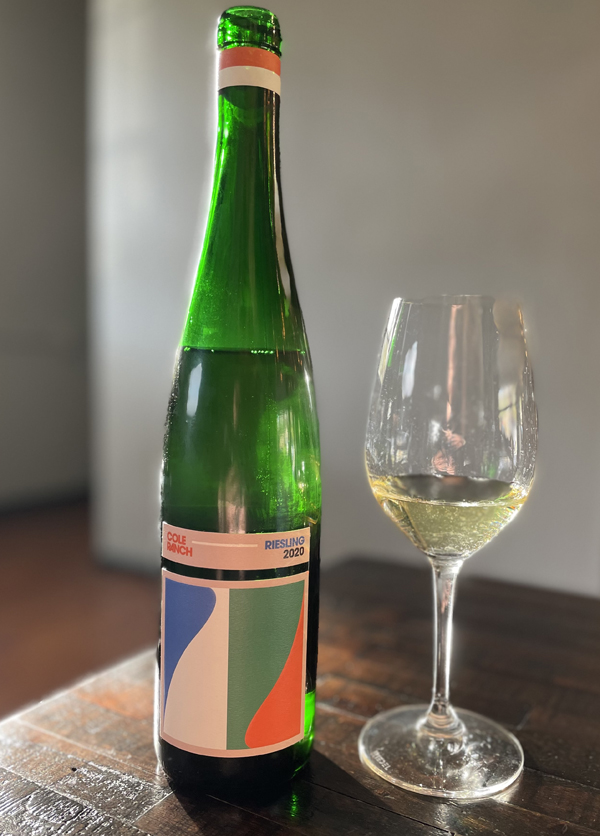
2020 Rootdown Wine Cellars, Dry Riesling “R1” Cole Ranch AVA, Mendocino County.
The brilliant and crisply detailed Root Down Cellars Cole Ranch Riesling is wonderfully aromatic and lively on the light framed palate with thrilling and electric layers of lime, lemon, green apple, pineapple and quince fruits, along with a bright spicy sensation, wet stones, delicate florals and wild herbs and shinning in the background, this is another excellent California dry Riesling with true varietal character. Rootdown Wine Cellars, based in Healdsburg, was started by winemaker/owner Mike Lucia in 2014, who was primarily focused on making quality California Rosé, but who has now filled out his collection of small batch wines, which includes this fabulous stuff, plus other Cole Ranch offerings like Pinot Noir, Chardonnay, Trousseau and a rare California version of Savagnin, the unique Jura white grape. Lucia says his goal is to allow the influence of the soil on wine, particularly with his organic winemaking, to shine trough here. Rootdown, he adds, focuses on varietal specific wines from single vineyards that lead with earth and texture, rather than only fruit, and this wine does this very successfully, this is a label to keep an eye on.
As noted here at Grapelive.com, the Cole Ranch AVA, originally established in 1983, but the vines date back to 1971 when former owner Joe Cole planted them here, is an American Viticultural Area, and a single vineyard, located in Mendocino County, California. This area of vines, at less than a quarter of a square mile, about 60 acres, makes it the smallest AVA (appellation) in the United States. This tiny AVA is located between the Russian River and Anderson Valley and is home to some of the state’s most prized Riesling, as well as having small parcels of Cabernet Sauvignon, Merlot and Pinot Noir, all of which is sold to just a few wineries. This vineyard is set on a series of high hills ranging from 1,400-1,600 feet in elevation, and is now owned by the Sterling family, proprietors of the Esterlina Winery, that is located in Philo, controlling the entire vineyard acreage of the appellation, suppling Desire Lines with a some Riesling, as well as Pinot Noir guru Ross Cobb, who’s own version of dry Riesling has a cult like following. Now we have this Rootdown version to admire, with this pale golden 2020 being an outstanding effort that gains dimension with air, adding papaya and kiwi, as well as round texture, but stays intensely vibrant throughout, making it an exceptional dry Riesling to enjoy with raw foods, such as briny oysters and or sushi.
($35 Est.) 93 Points, grapelive
